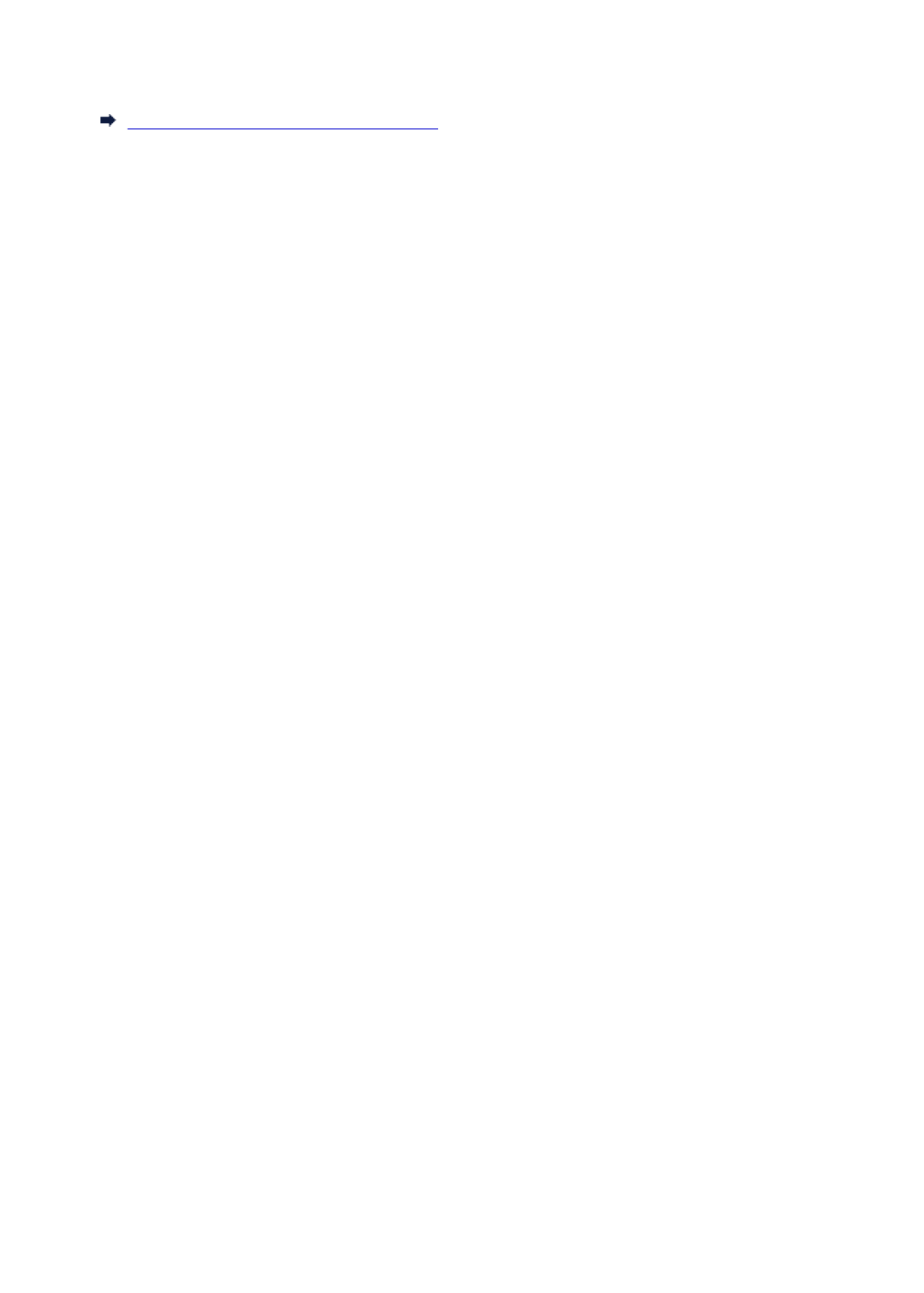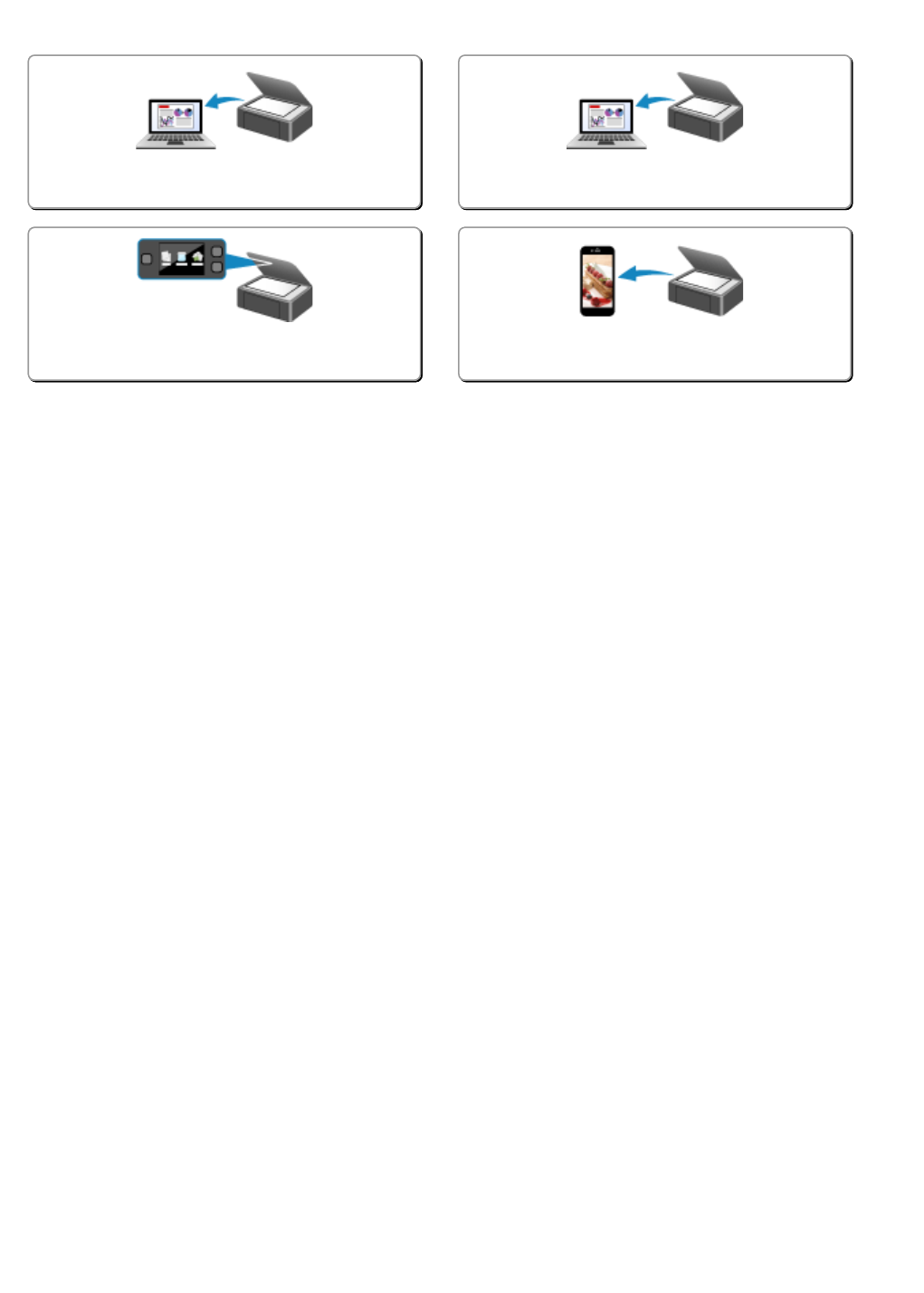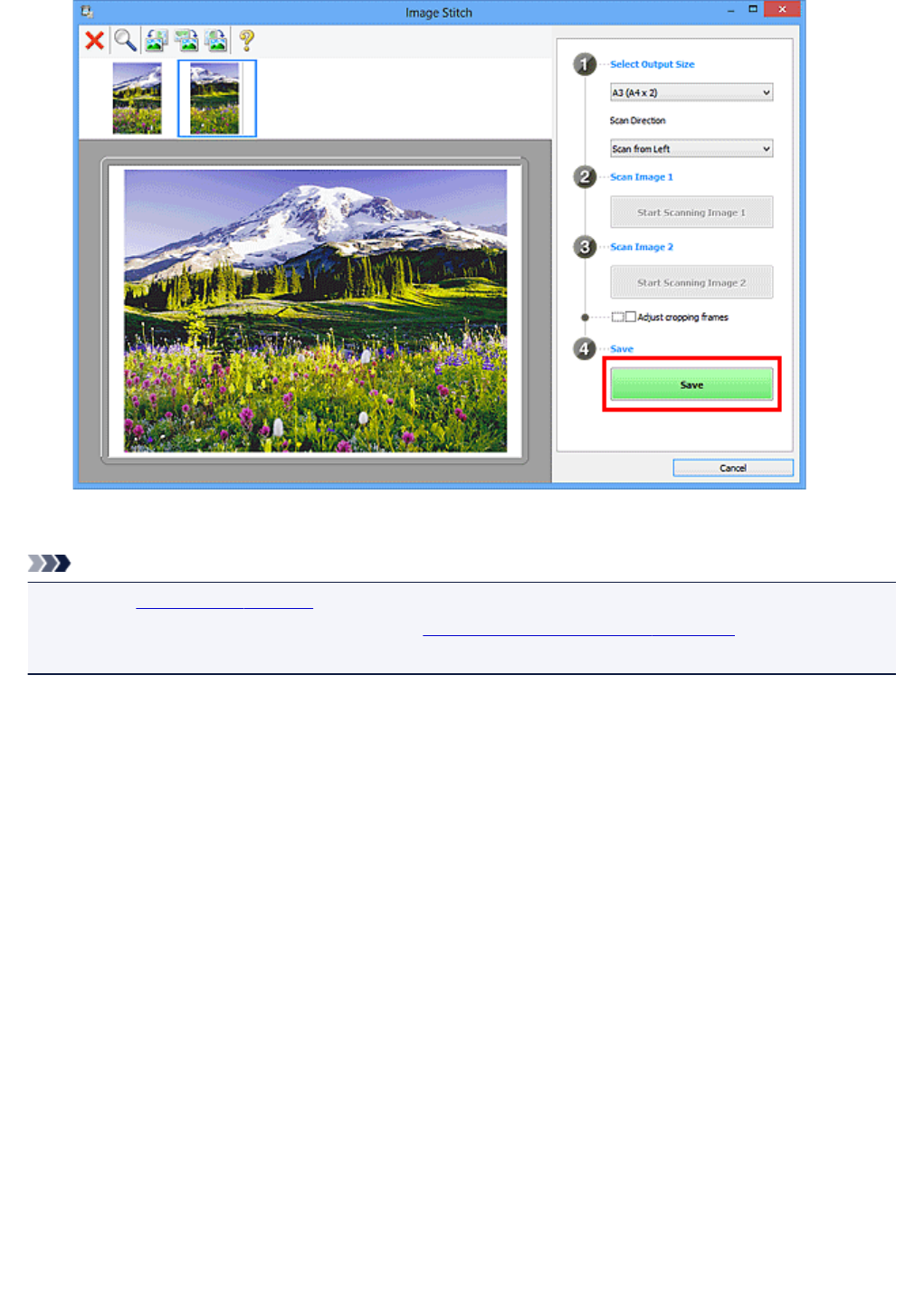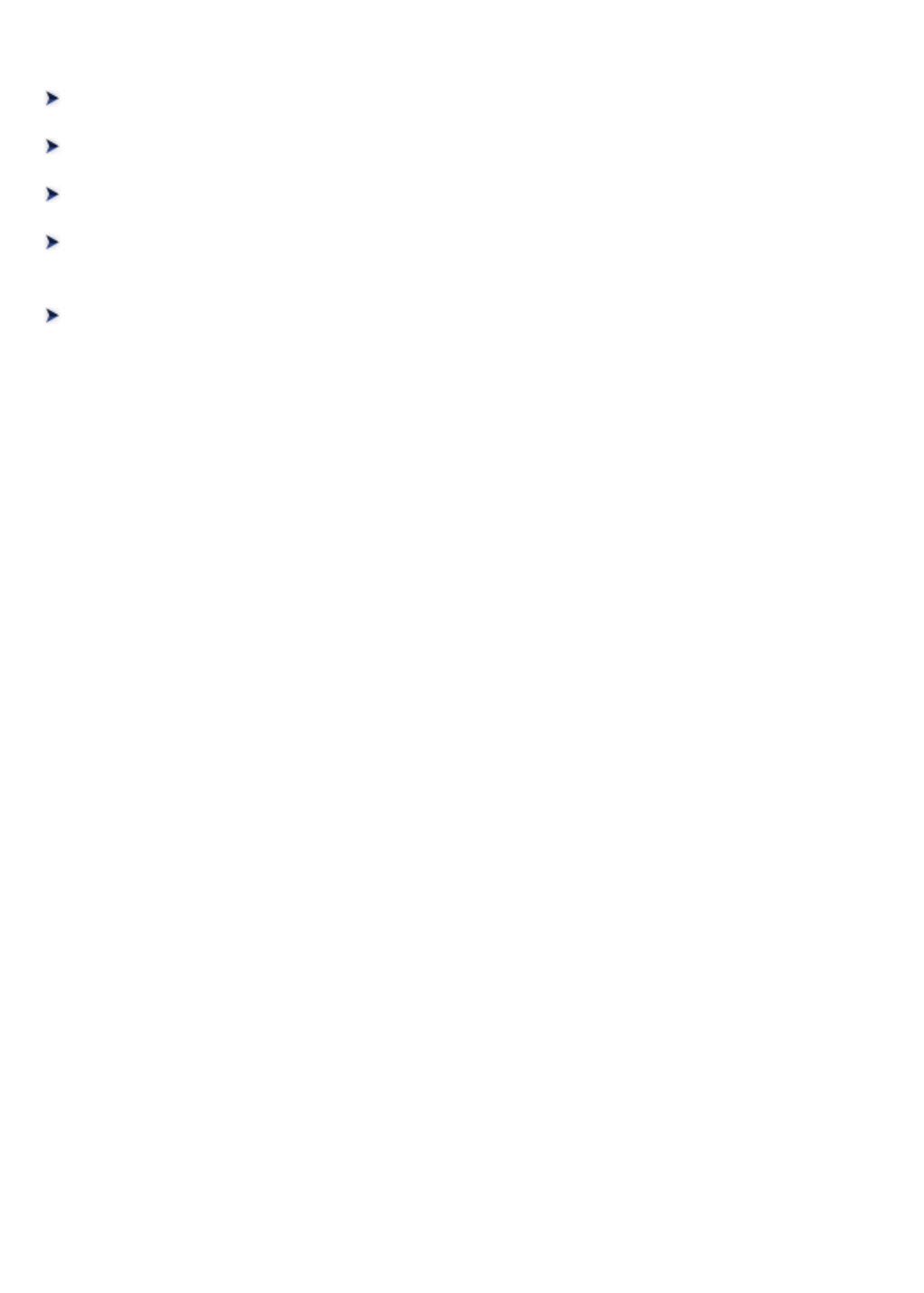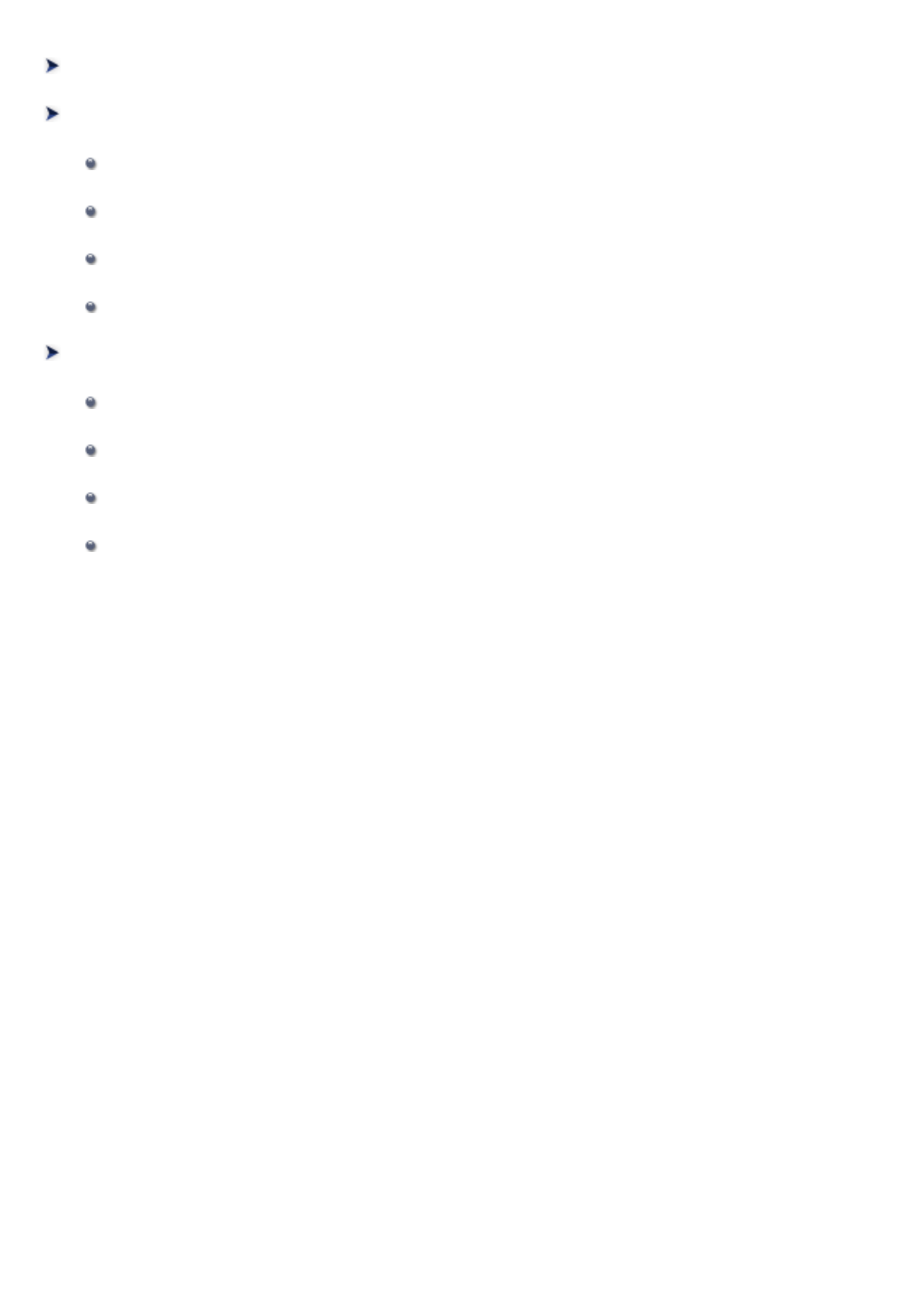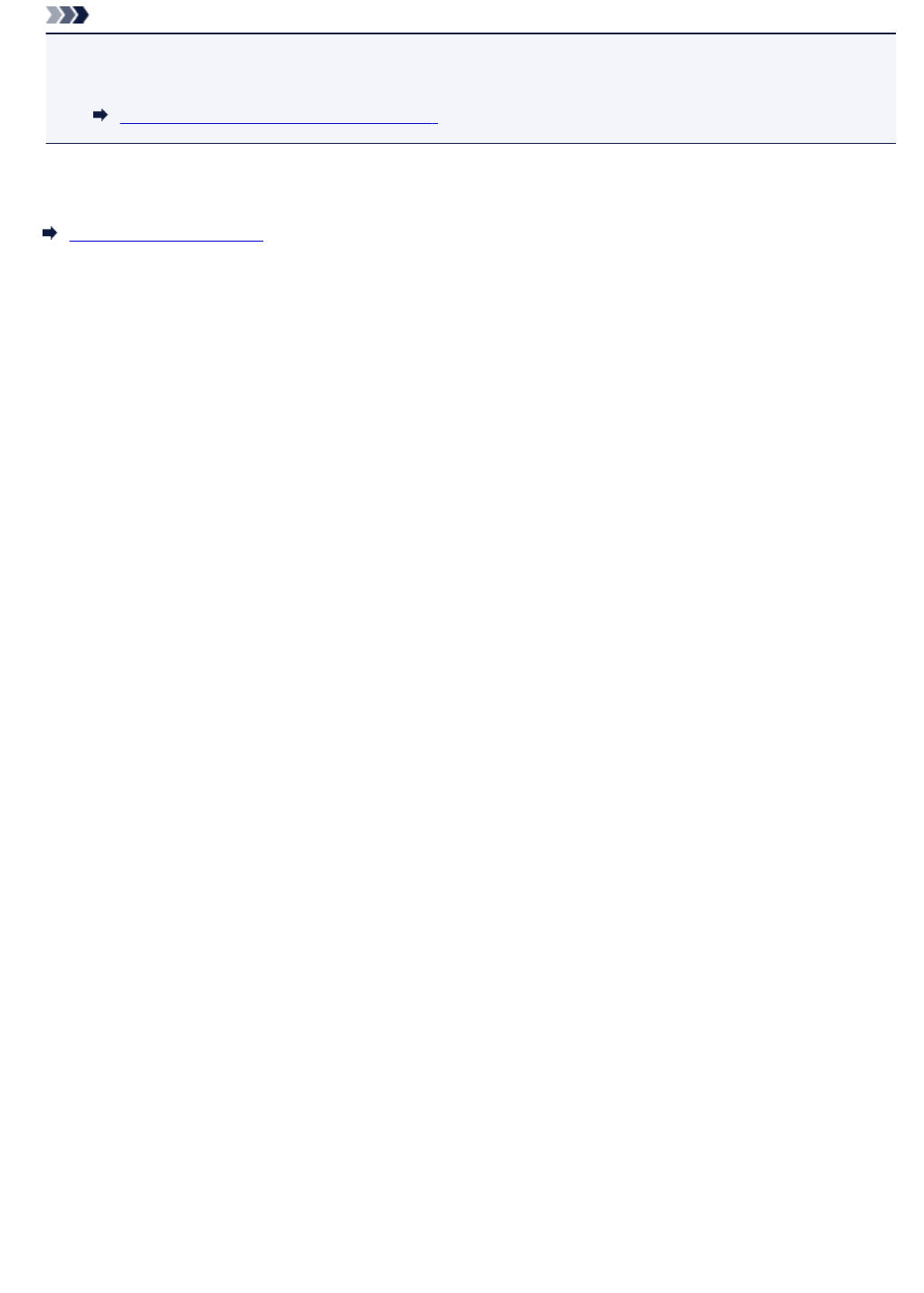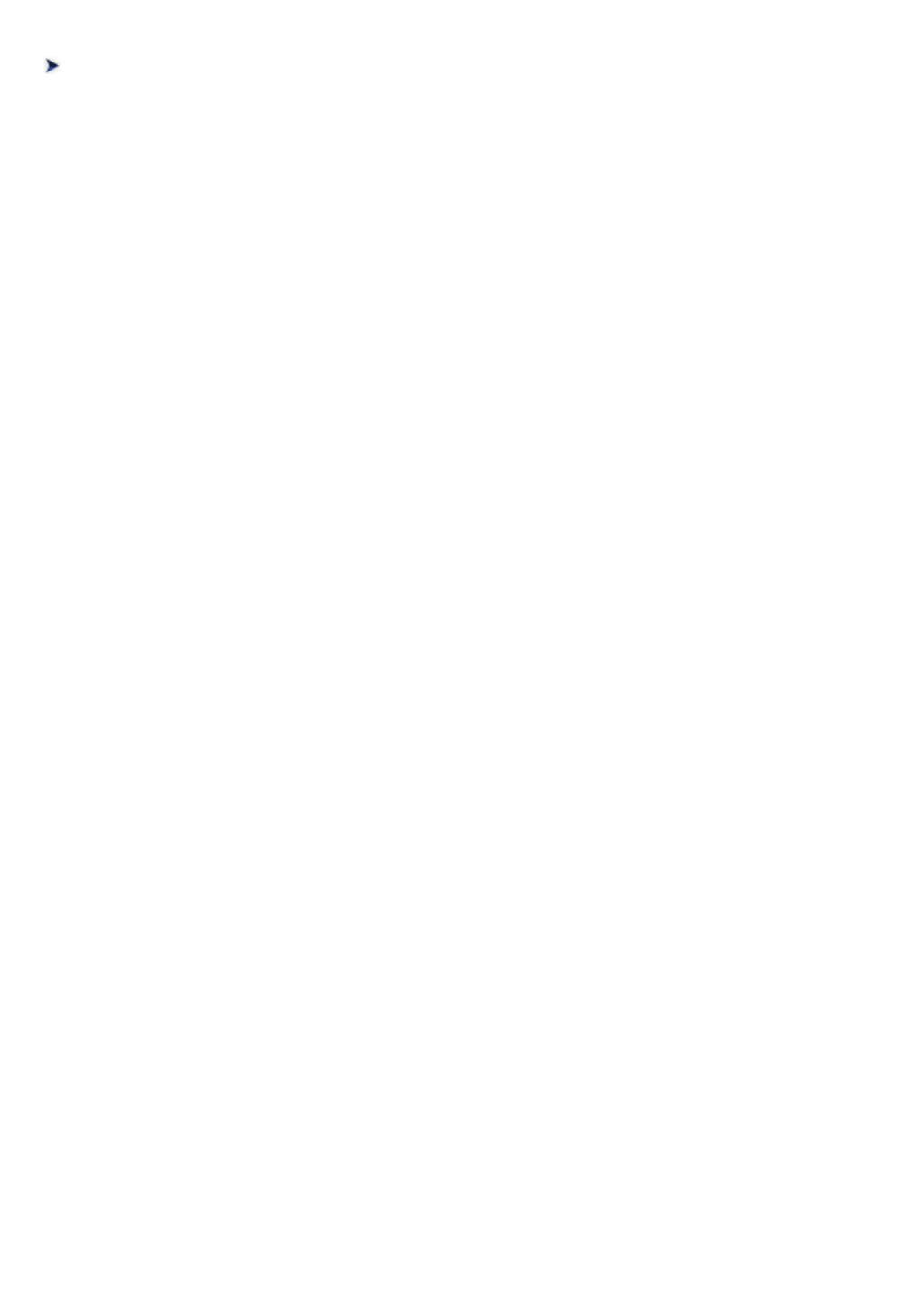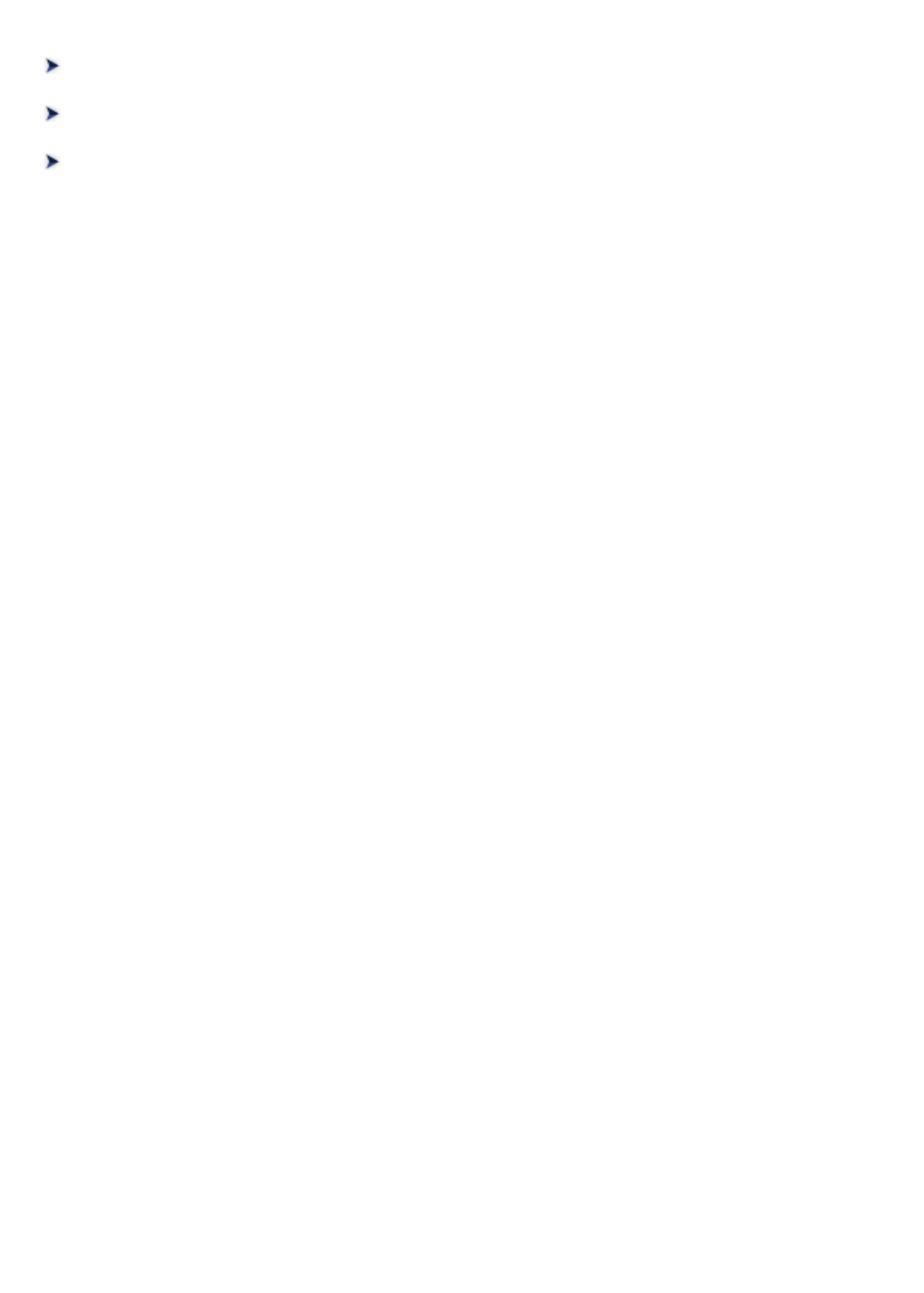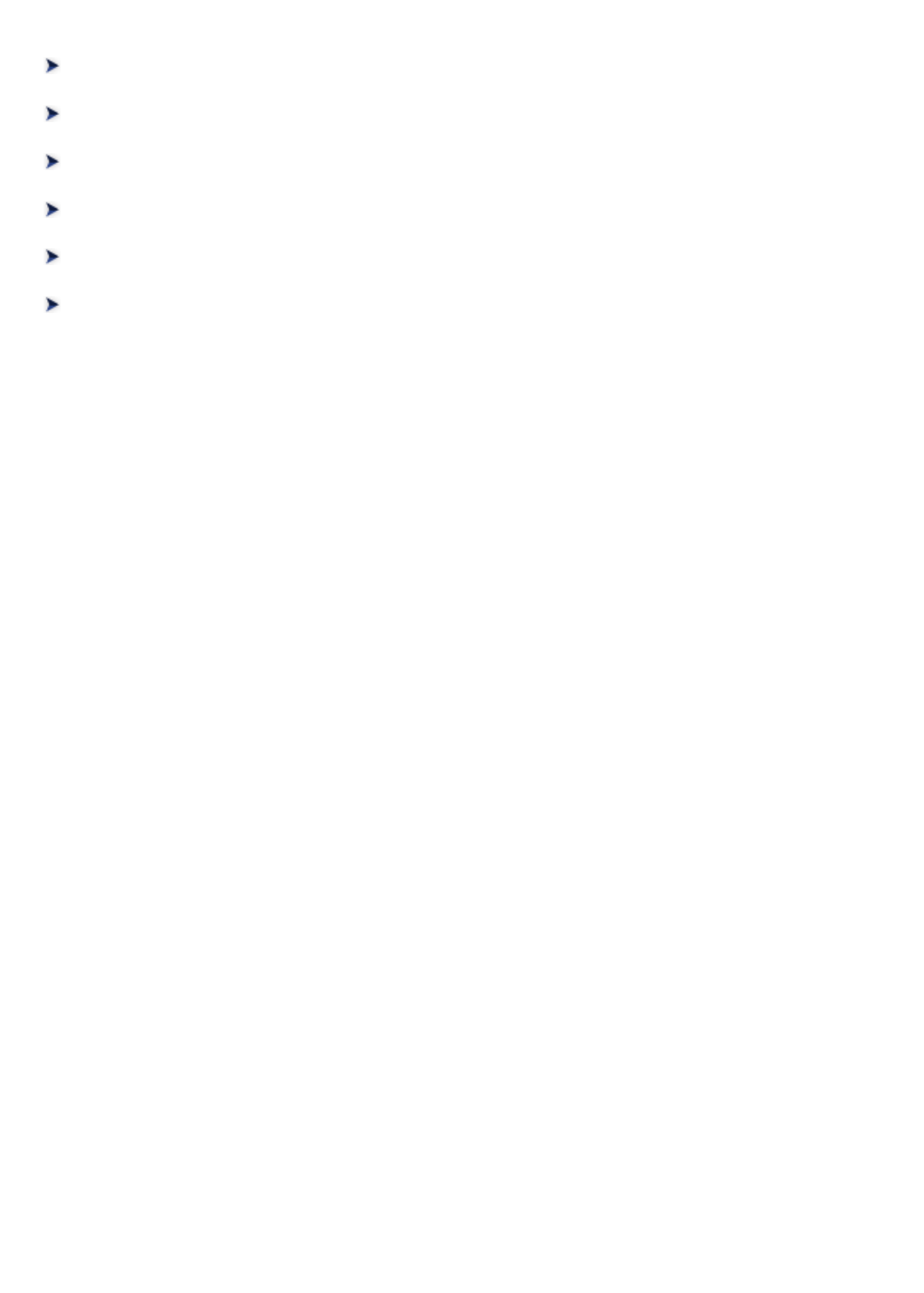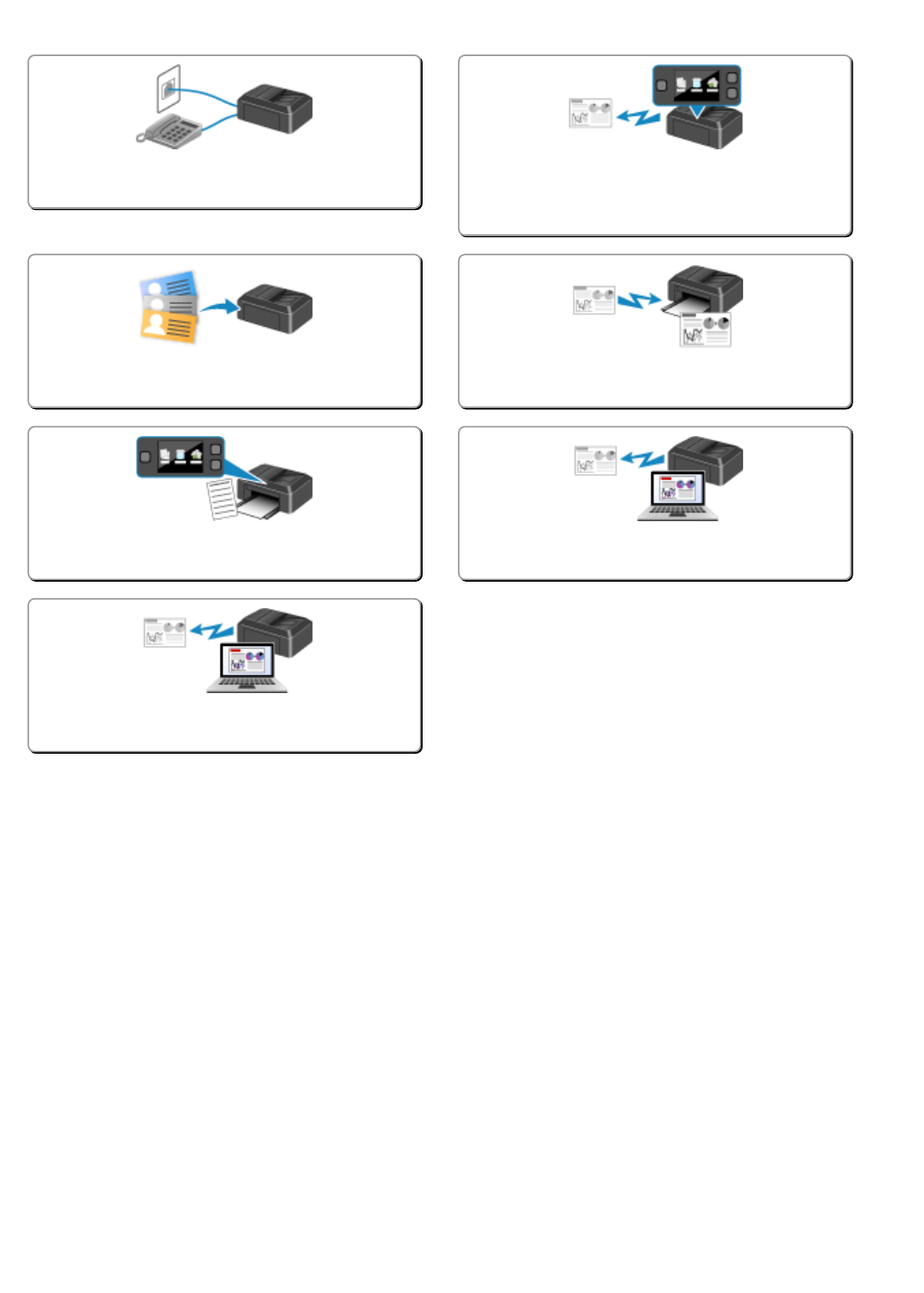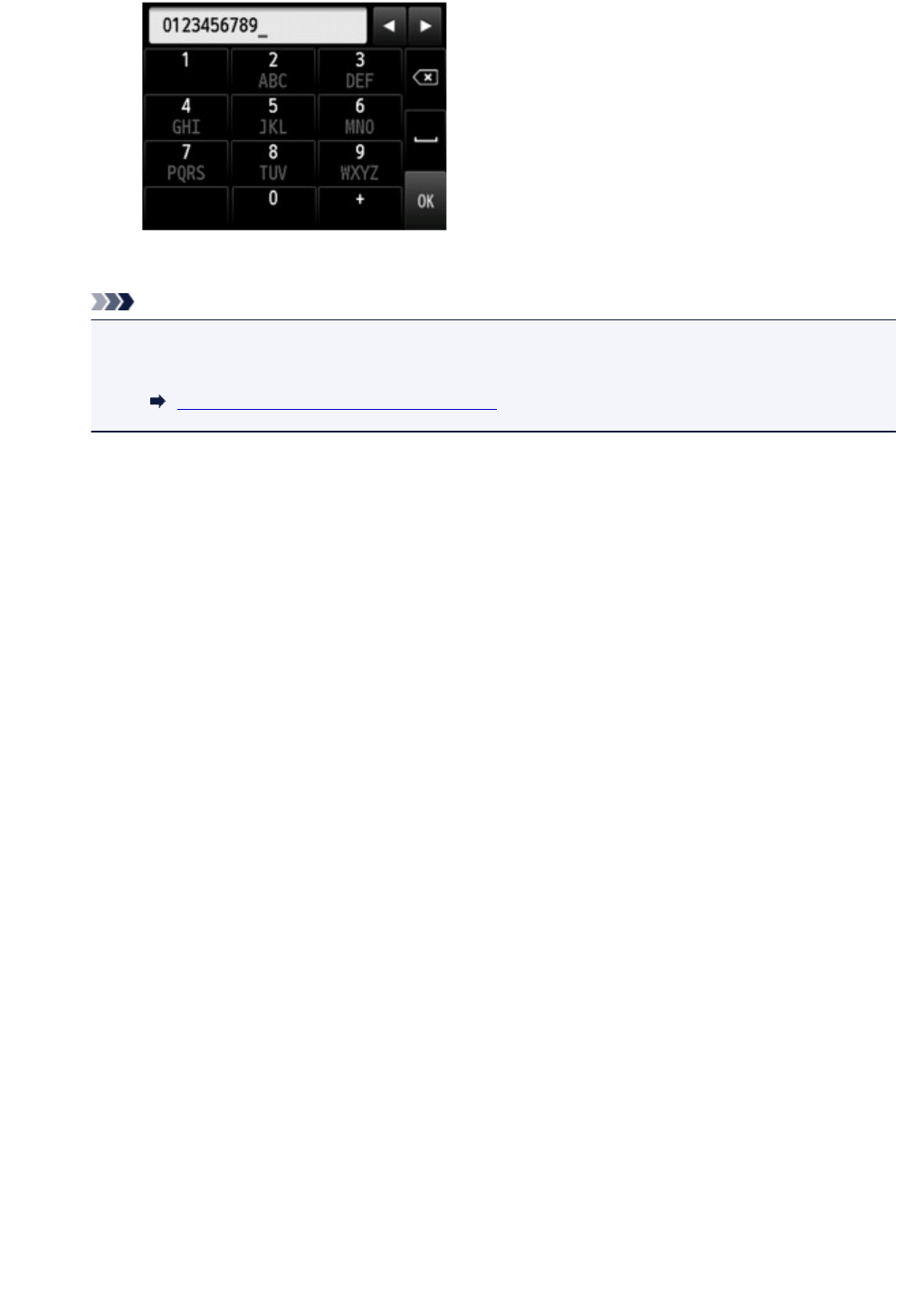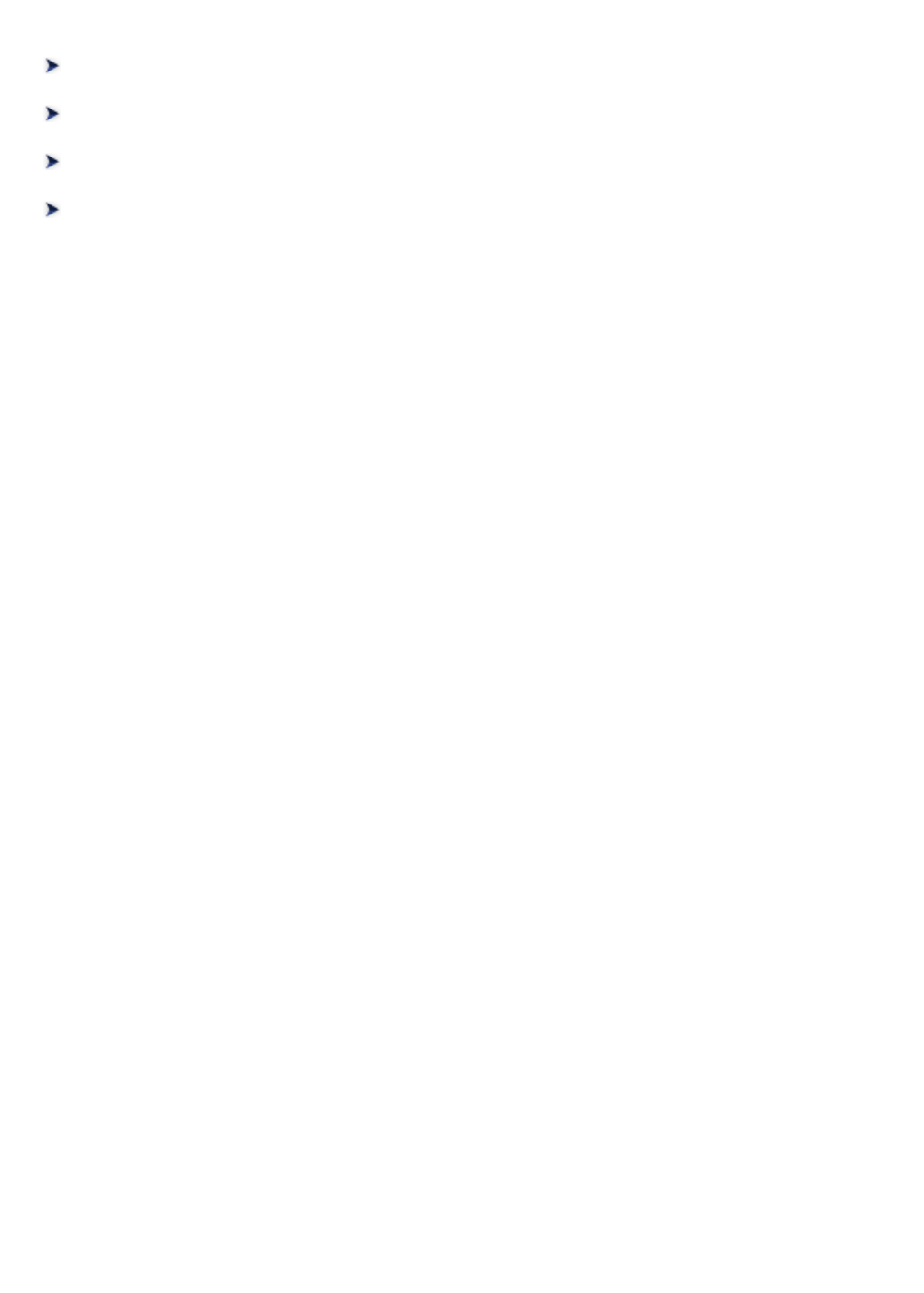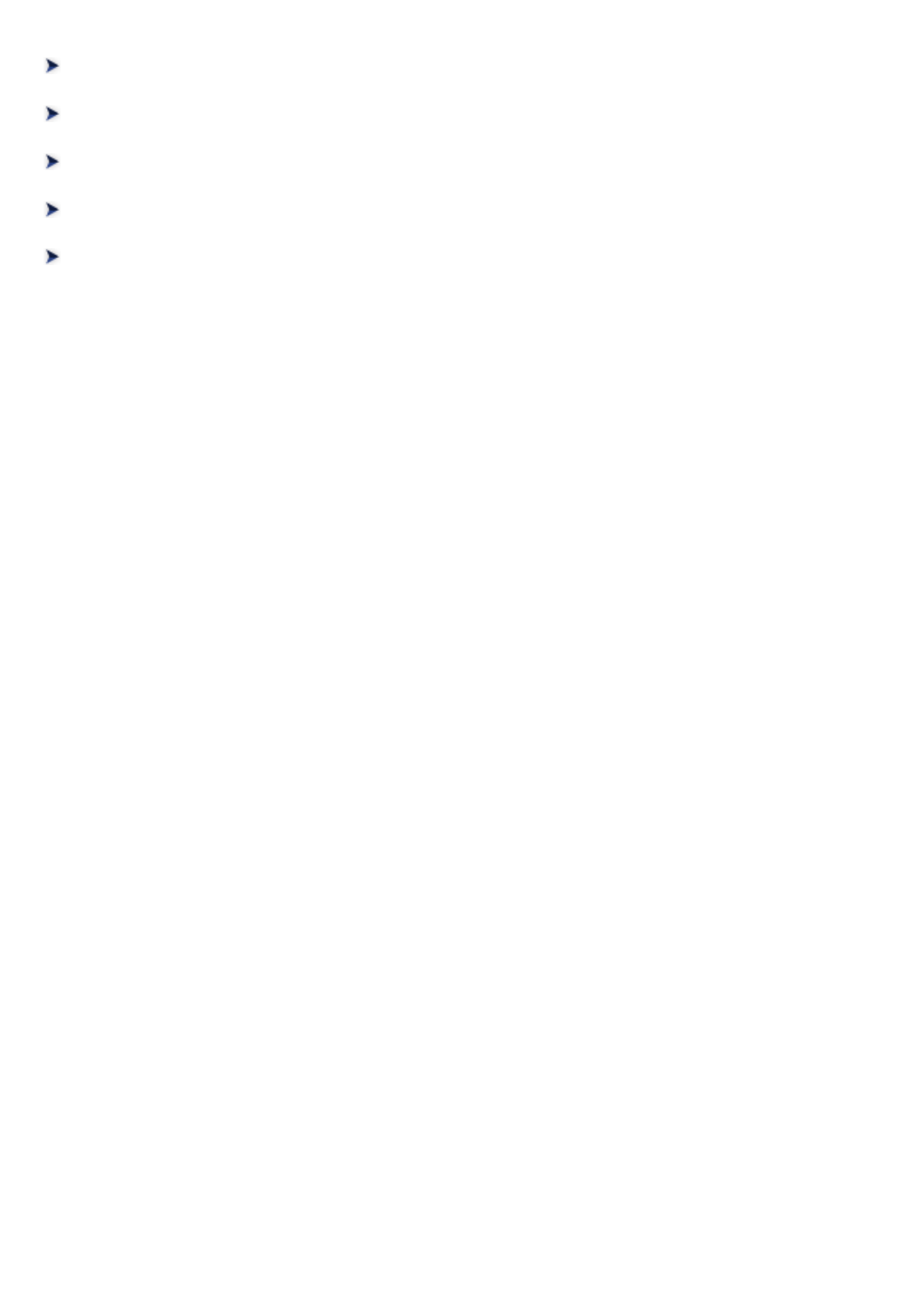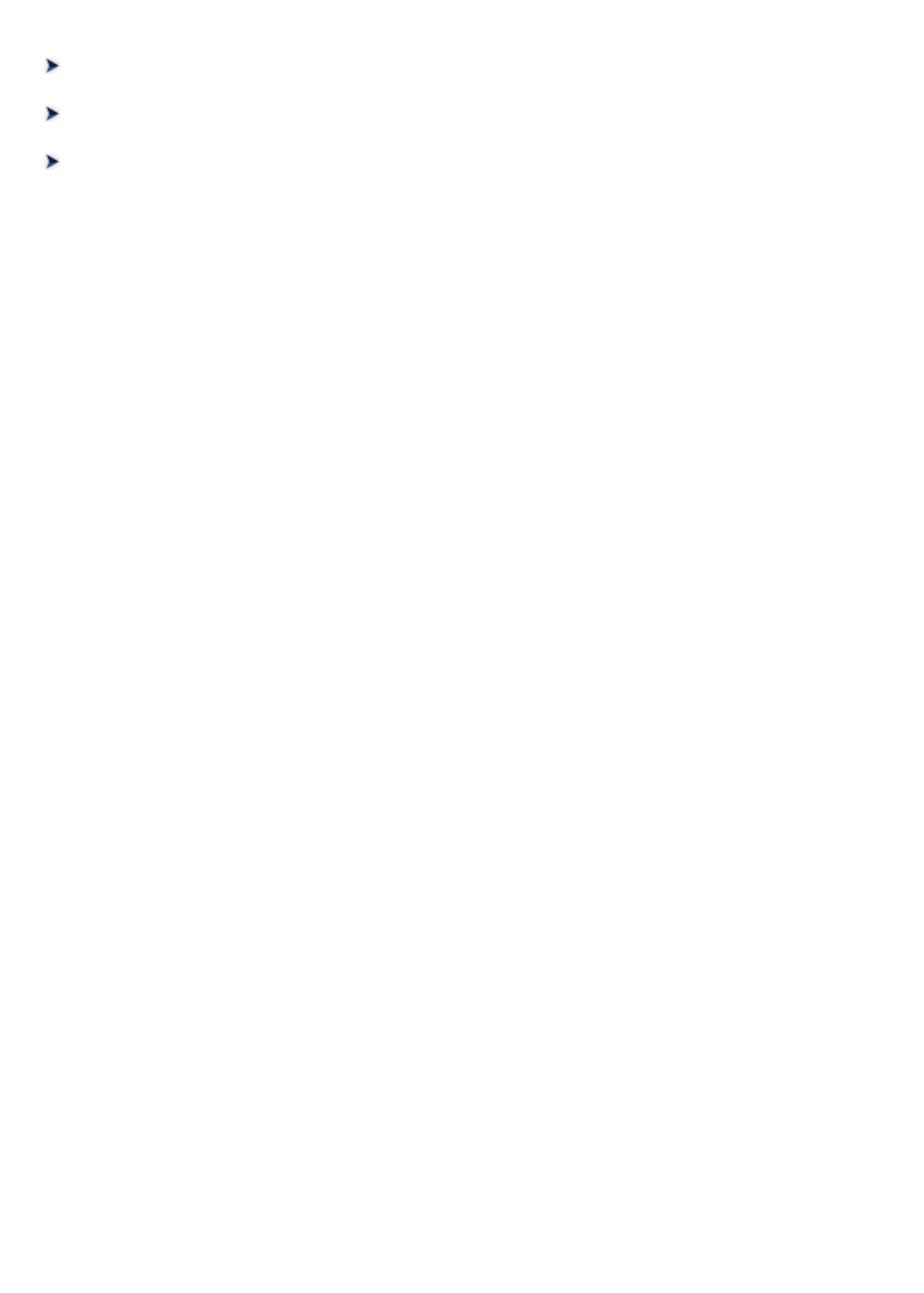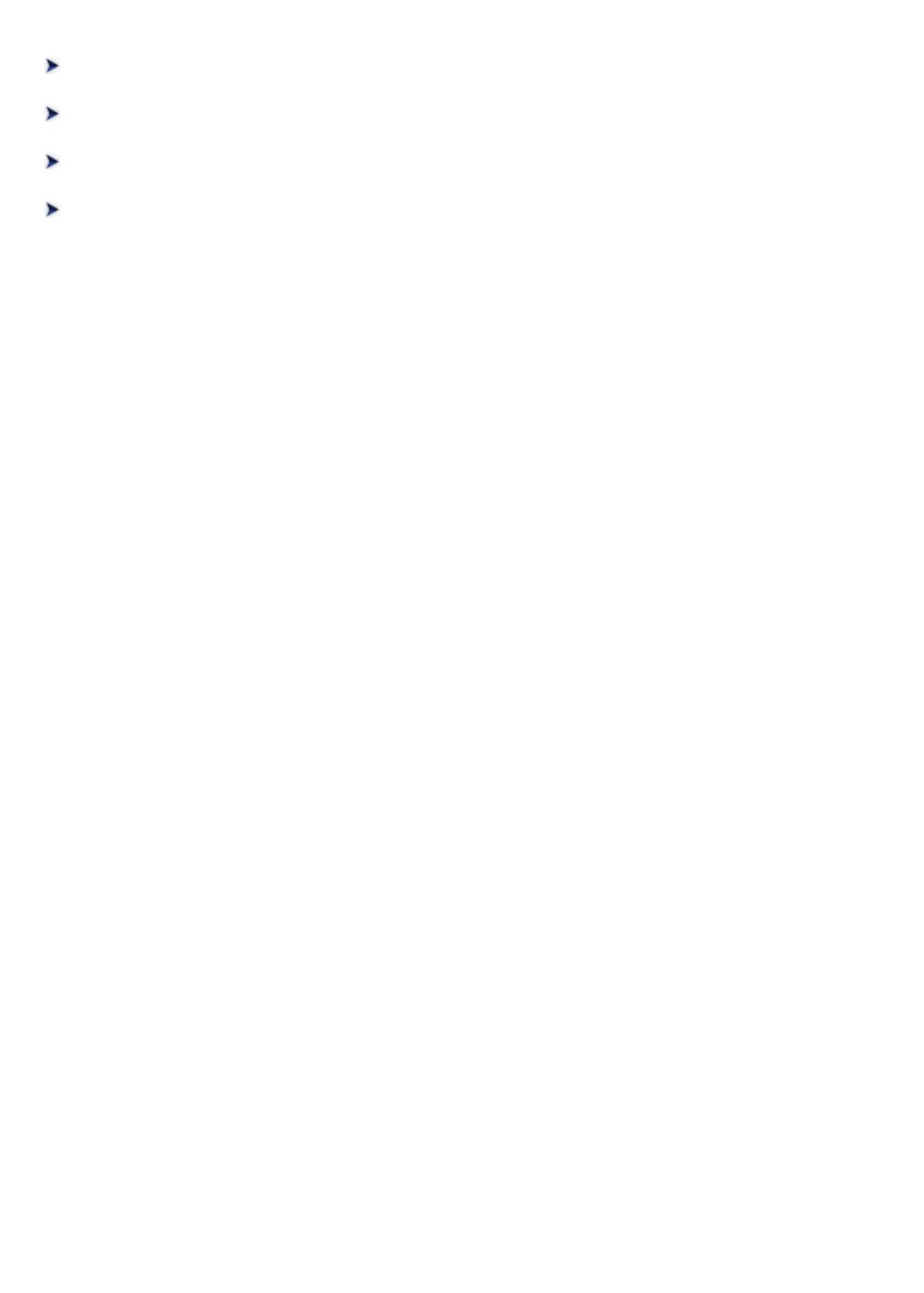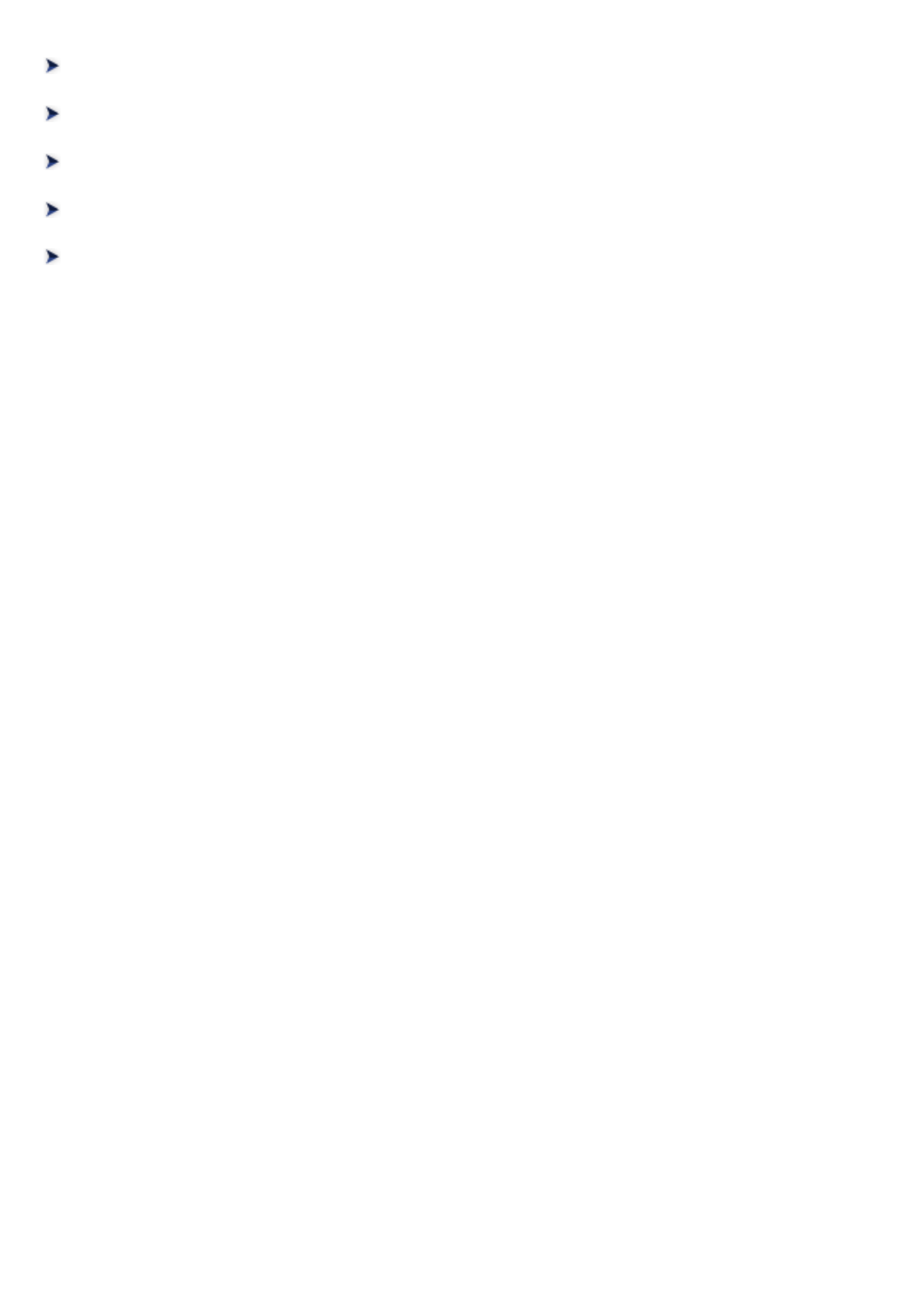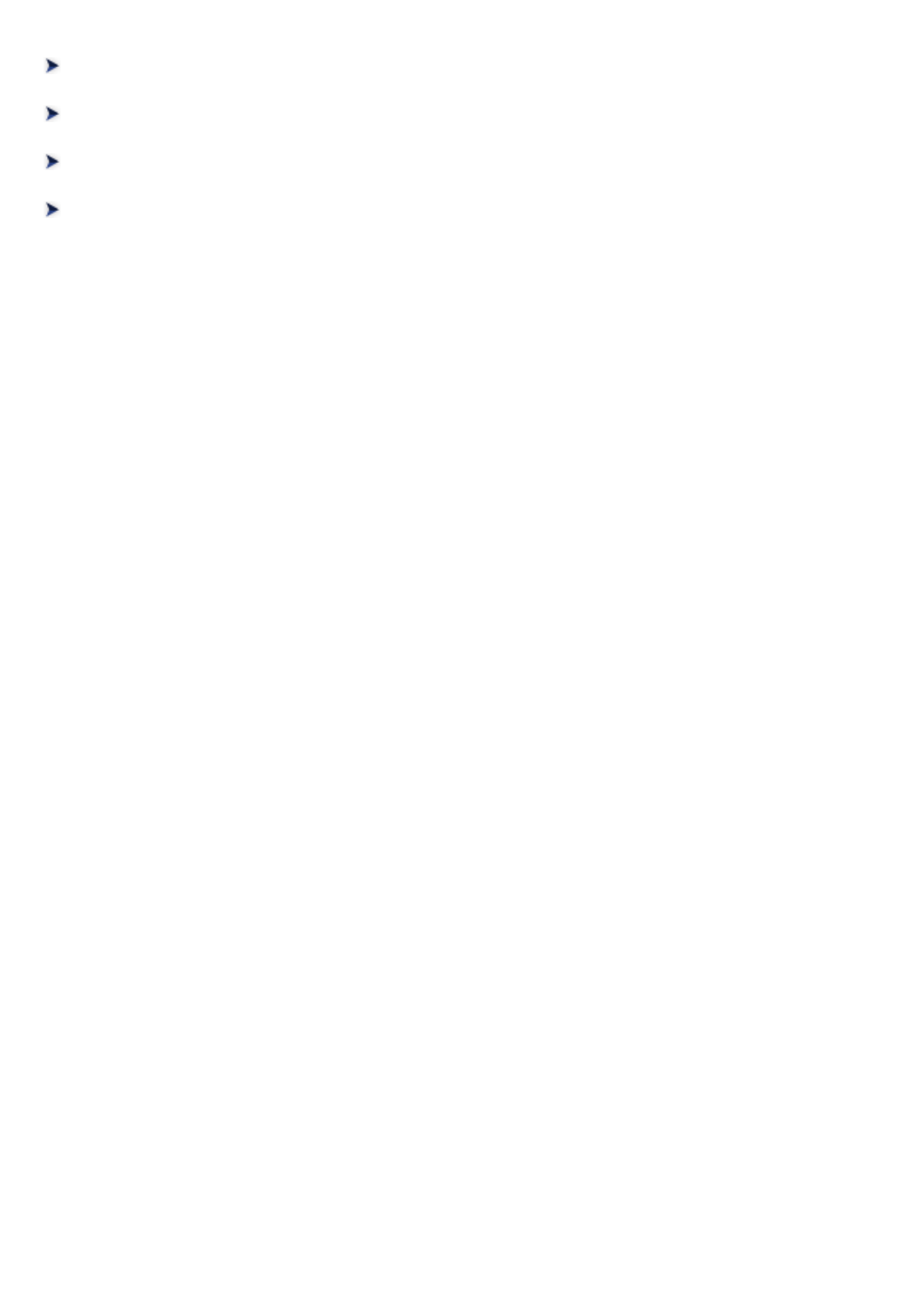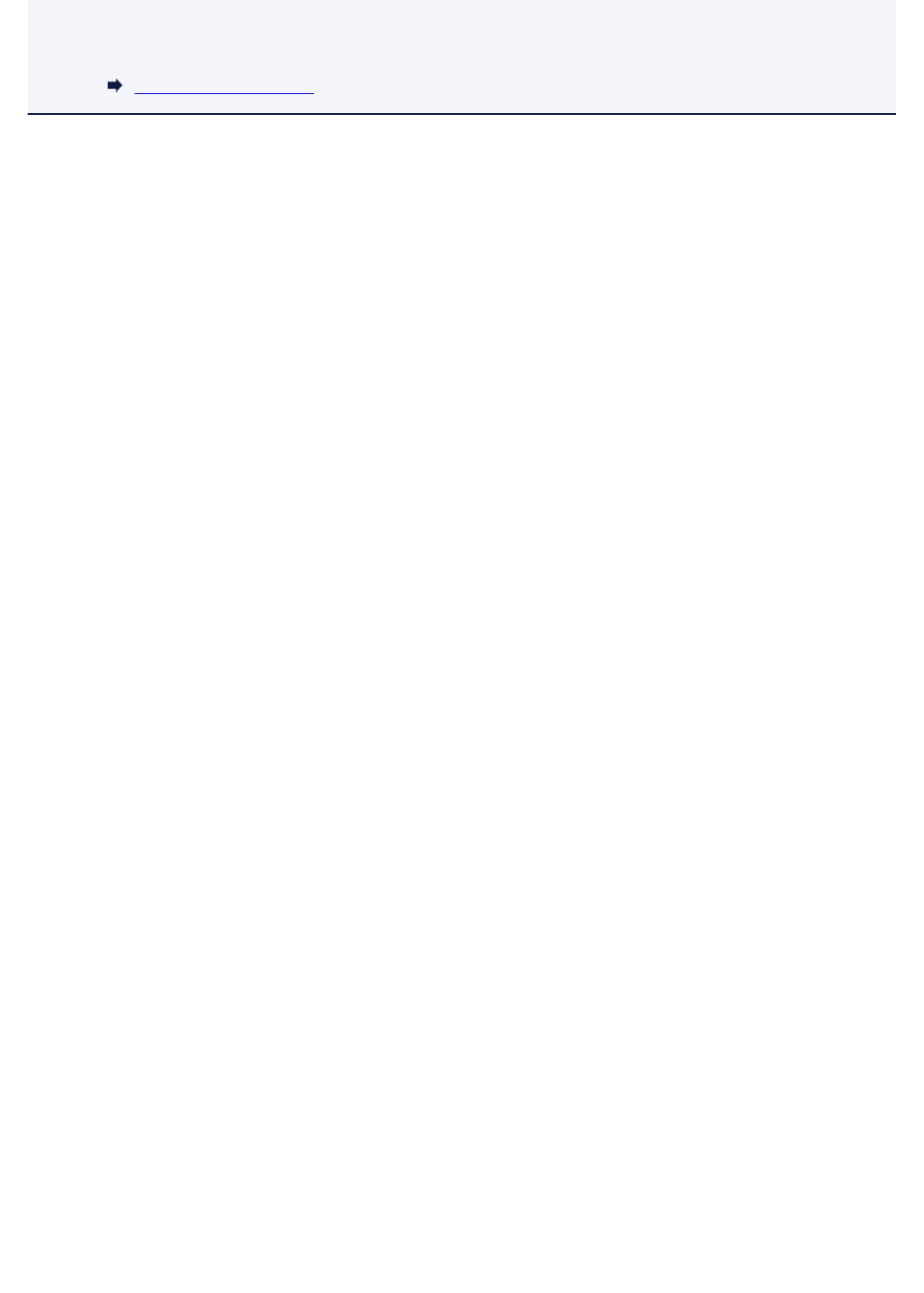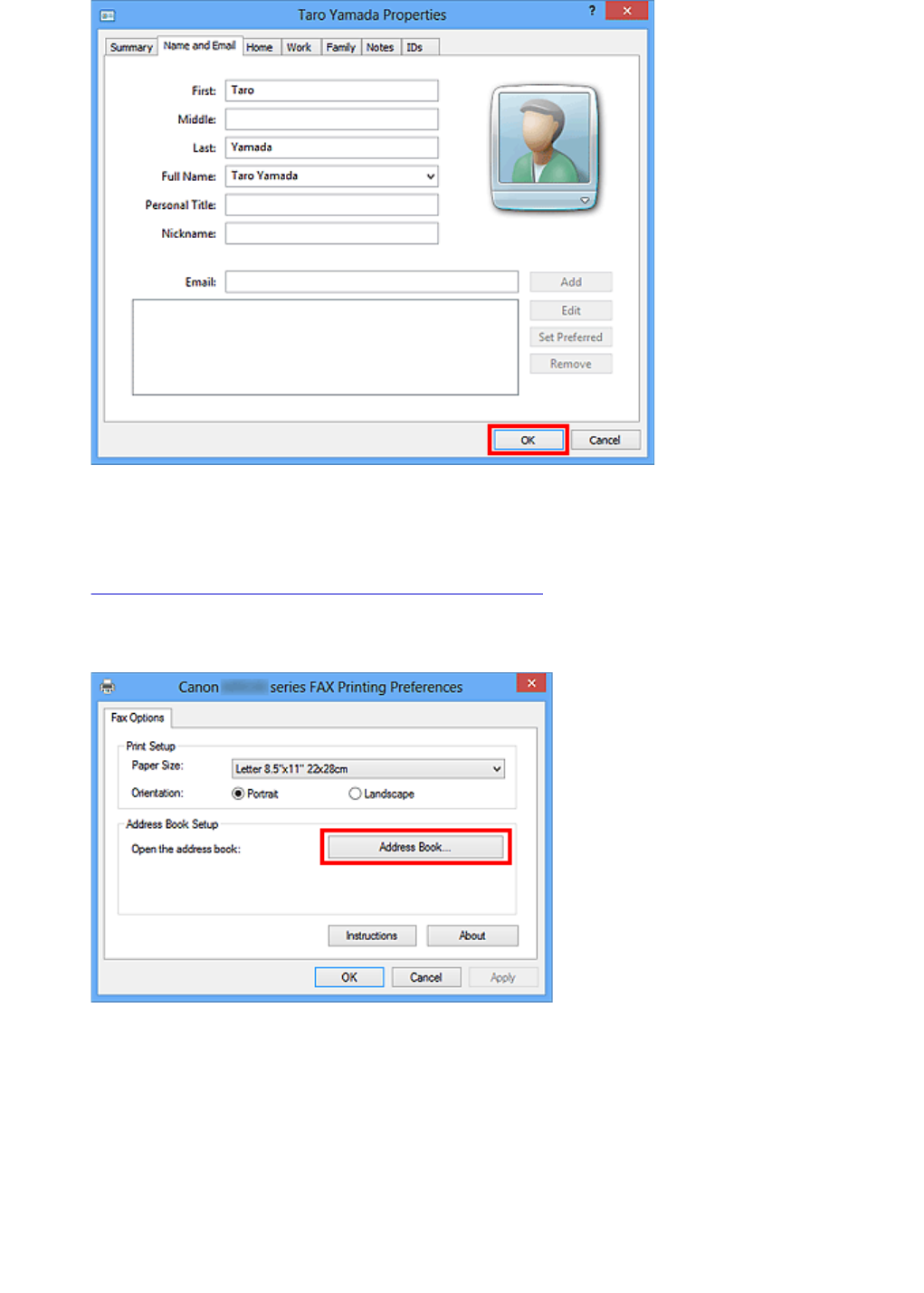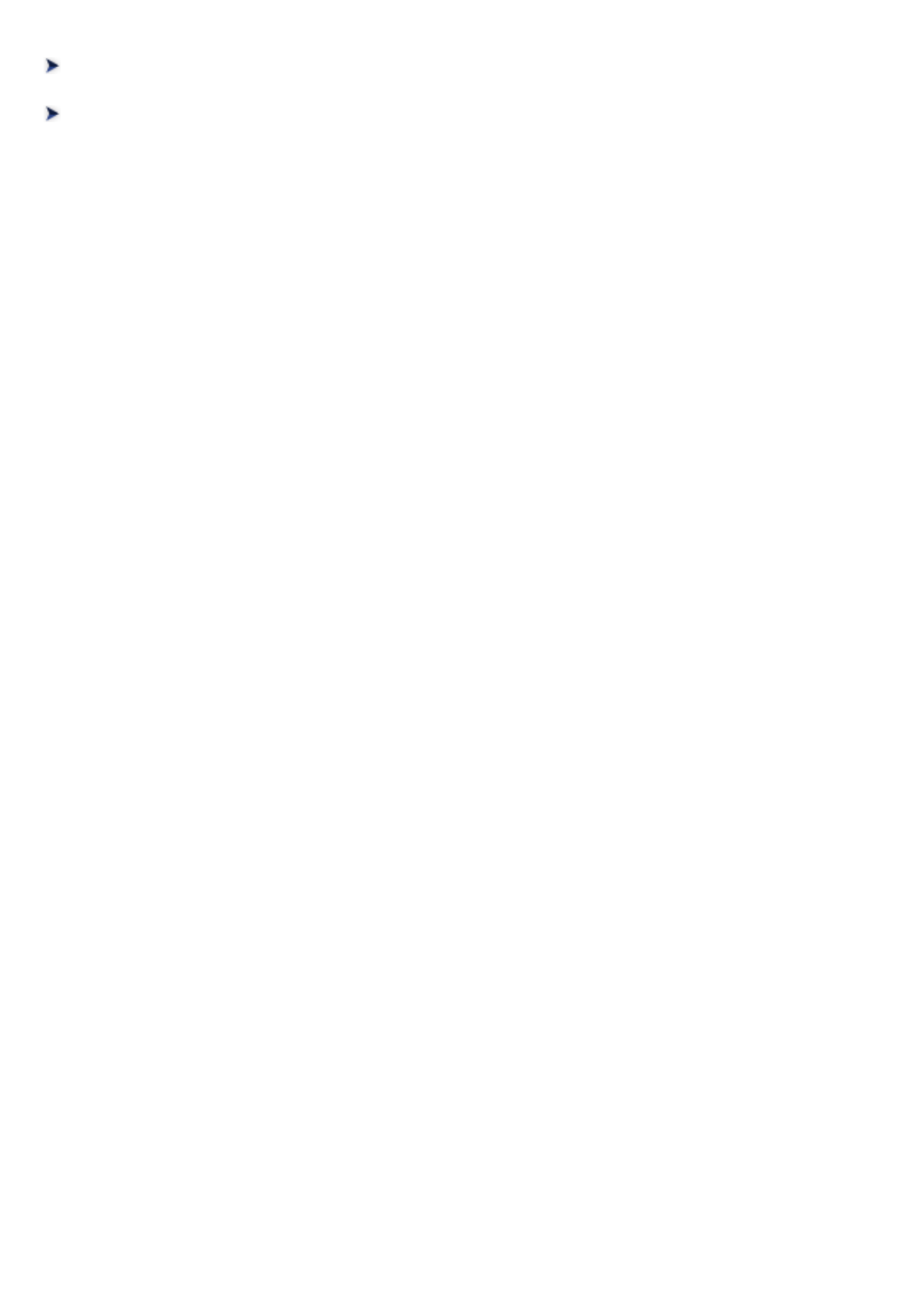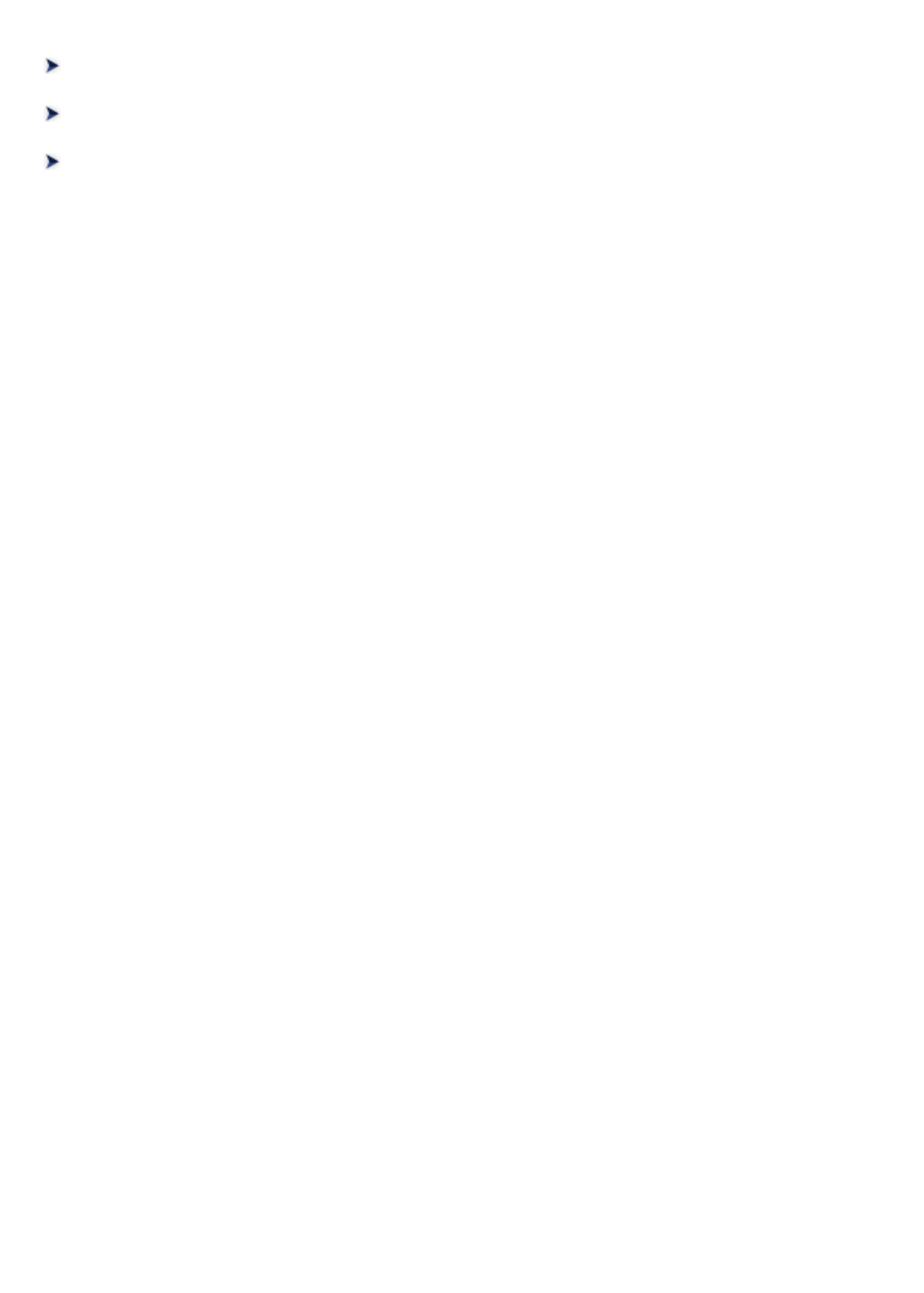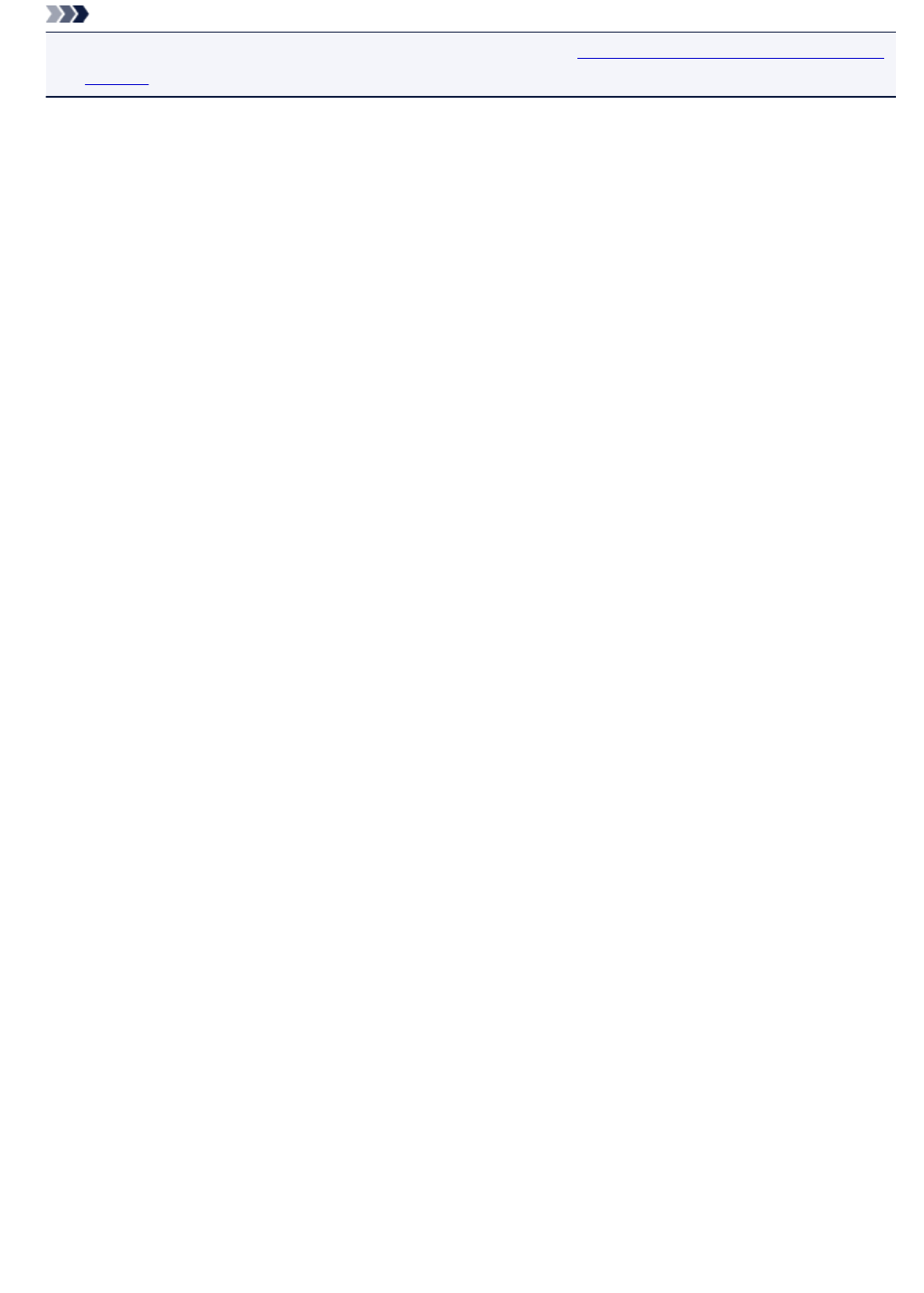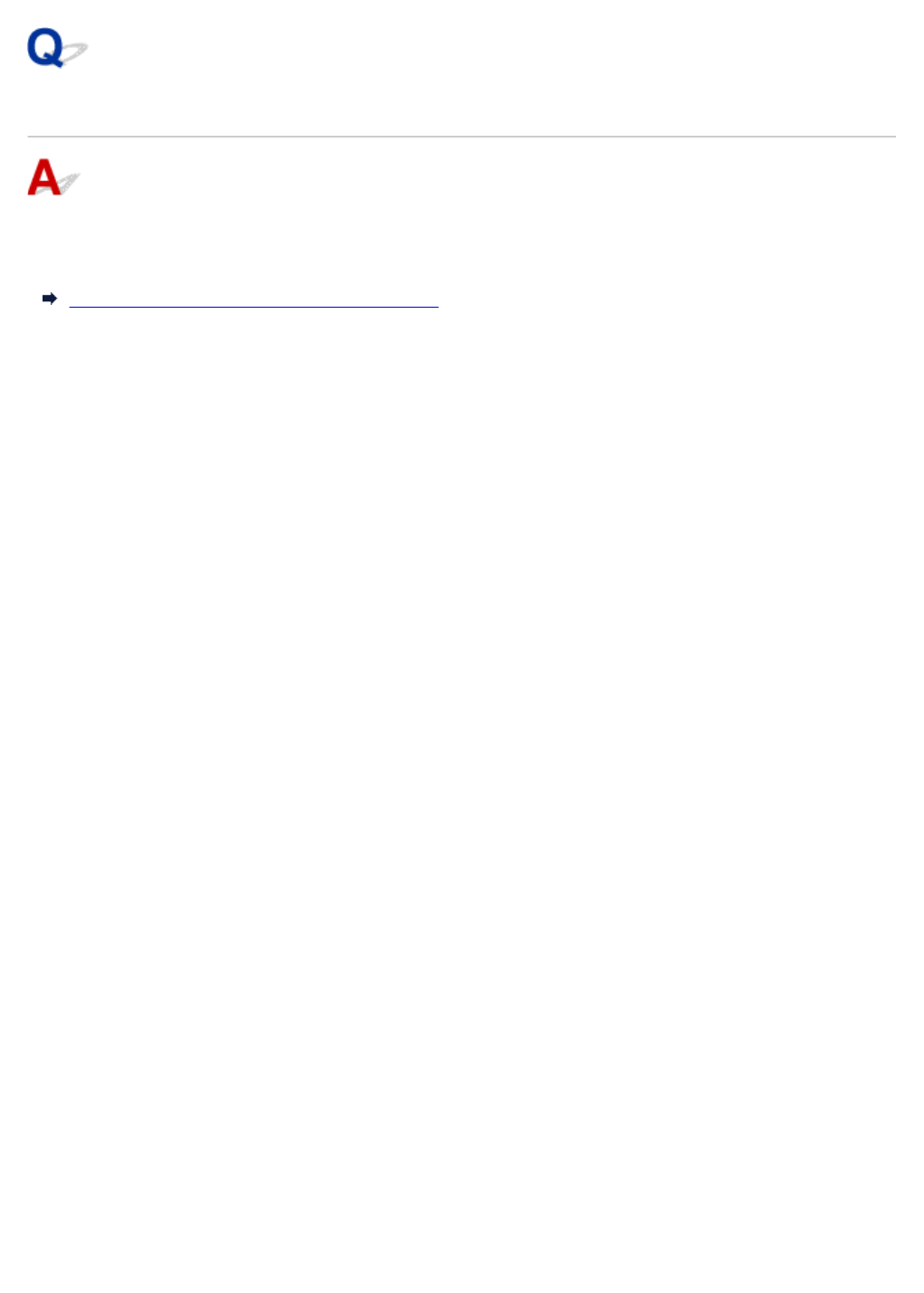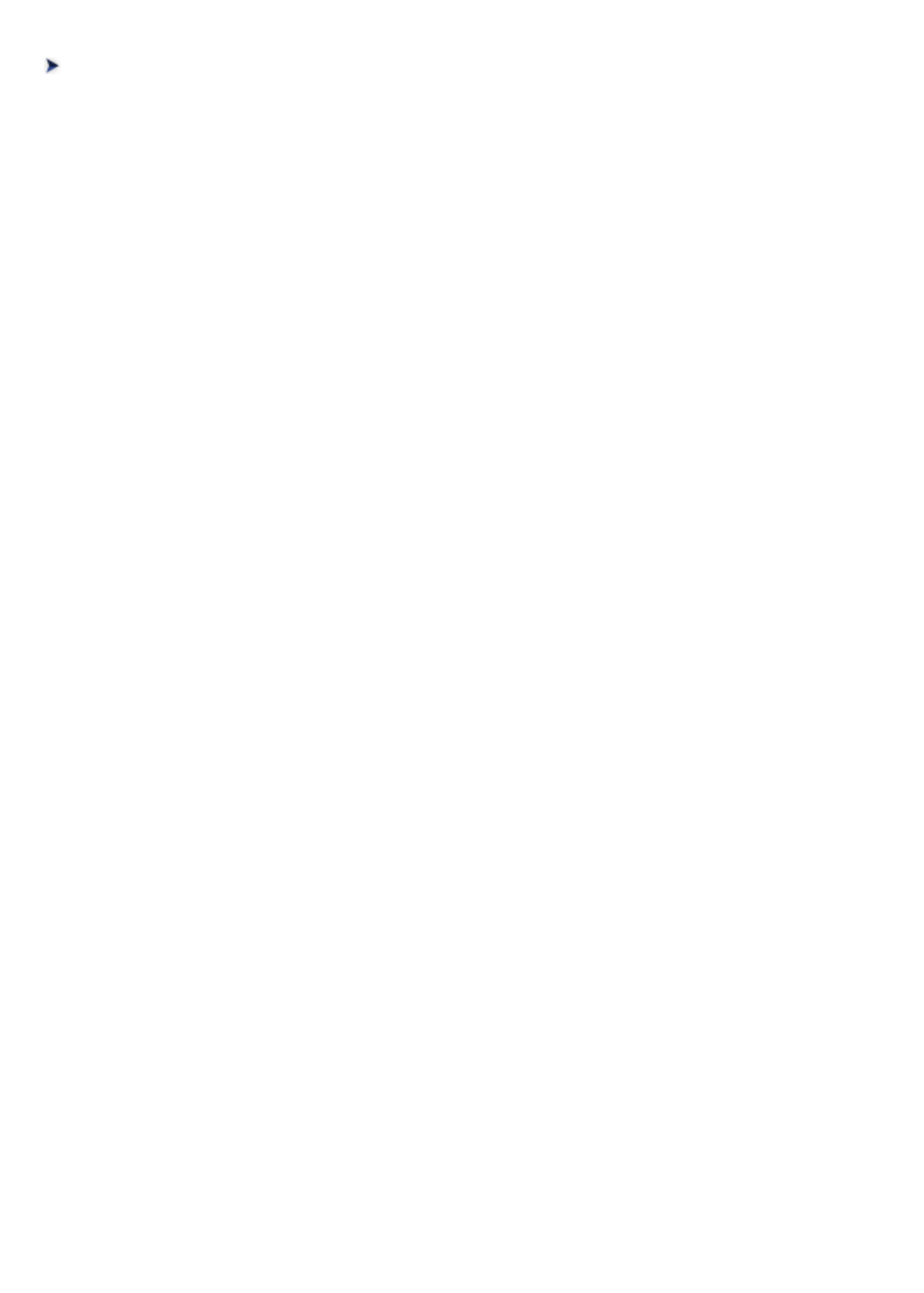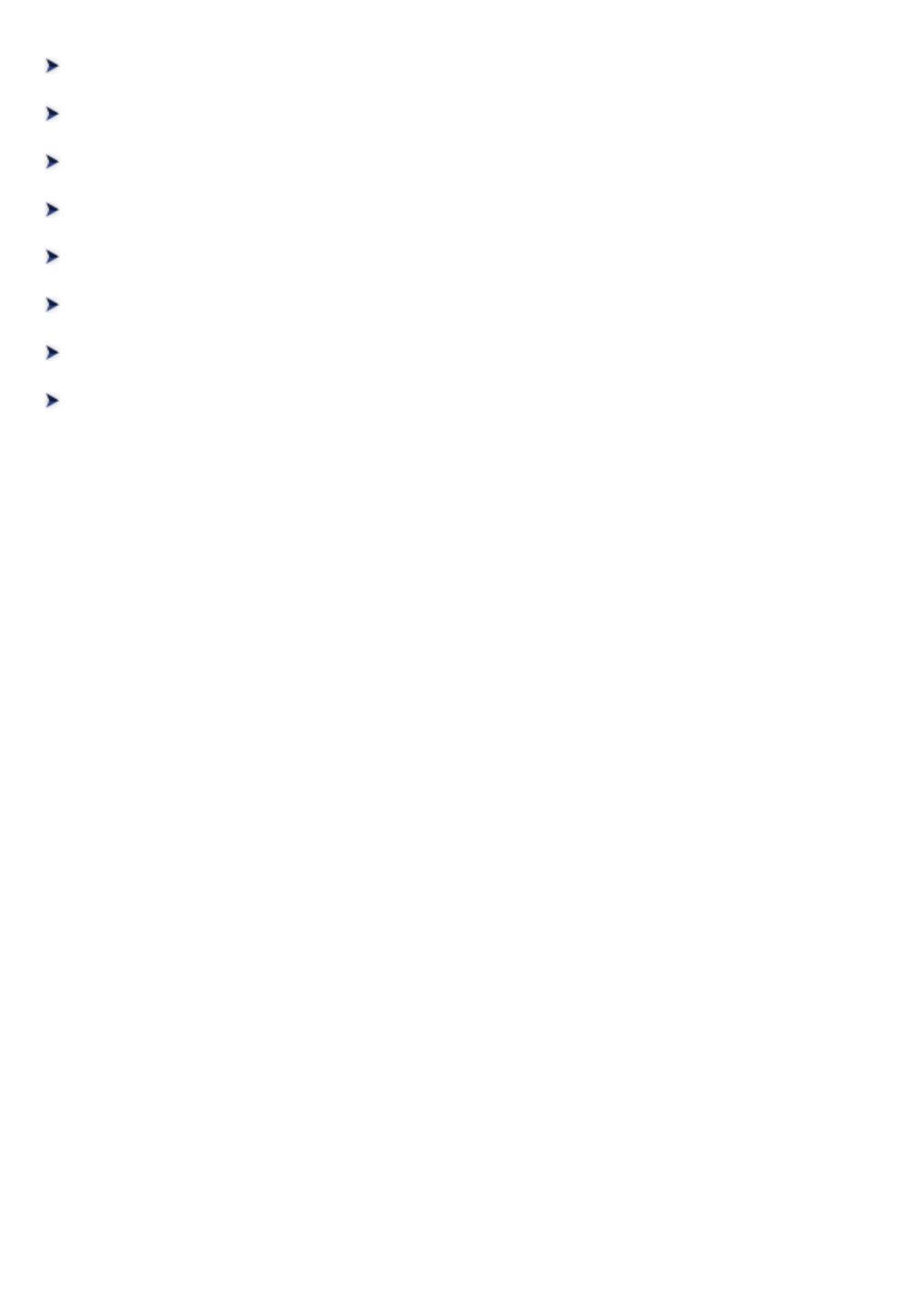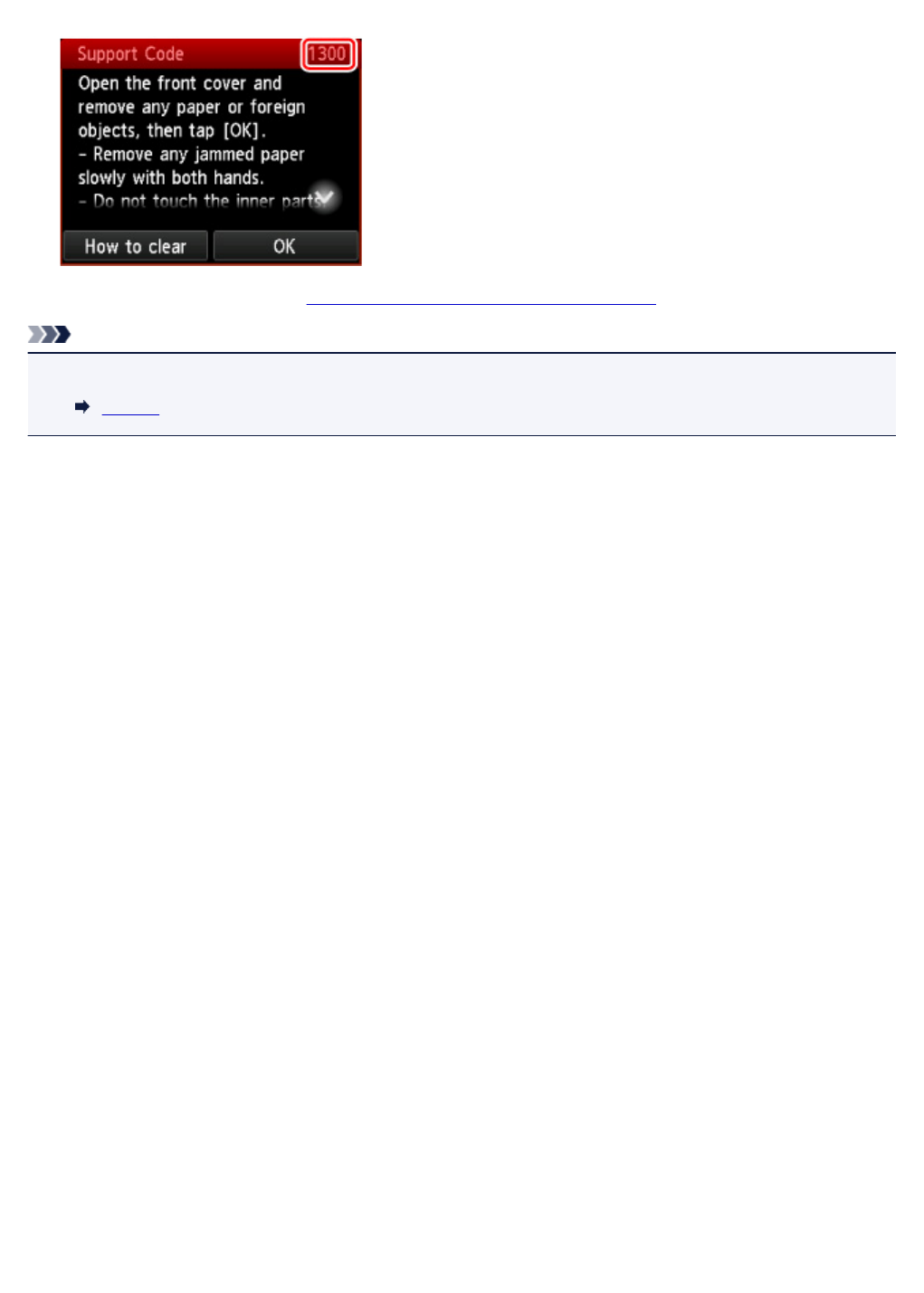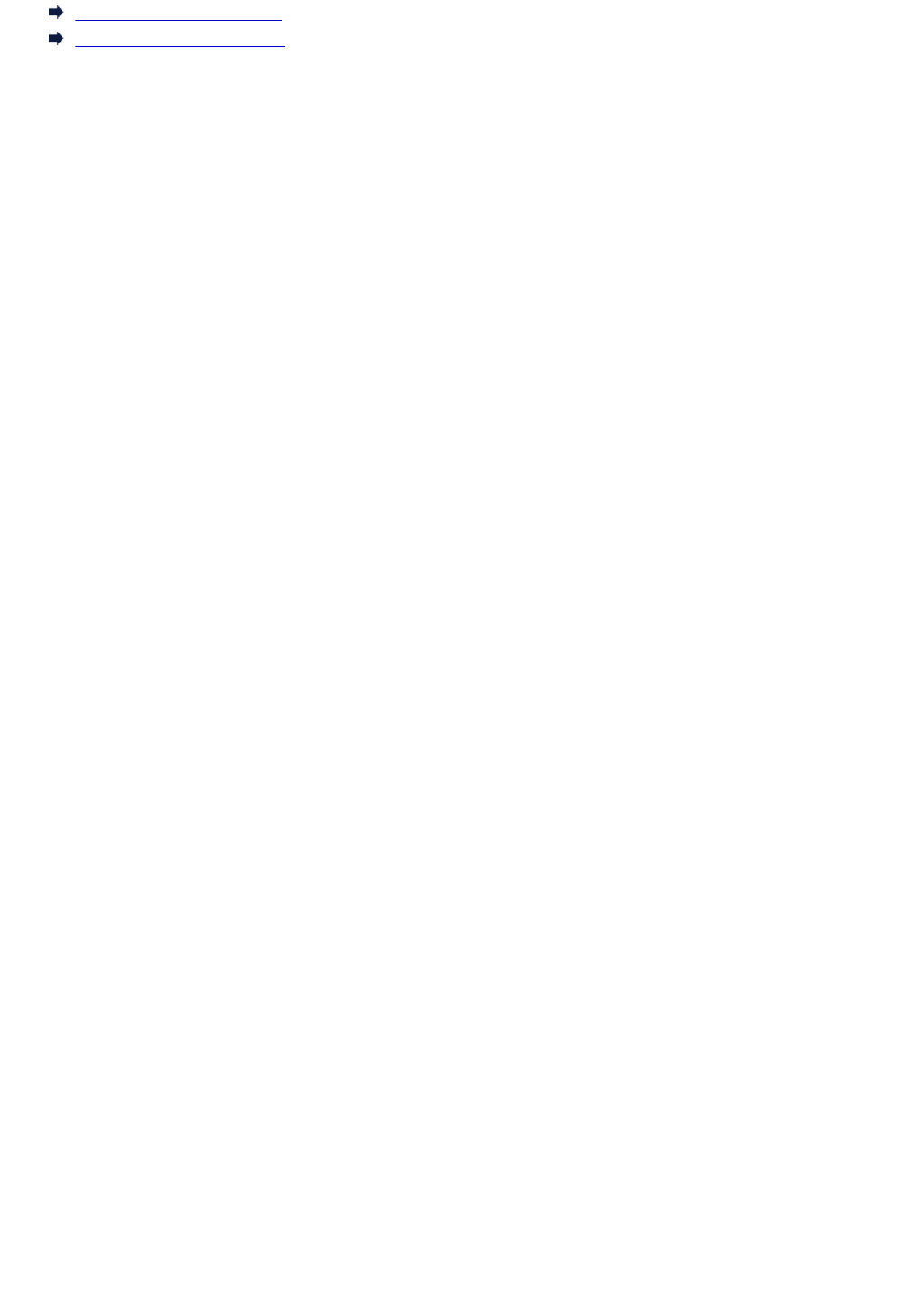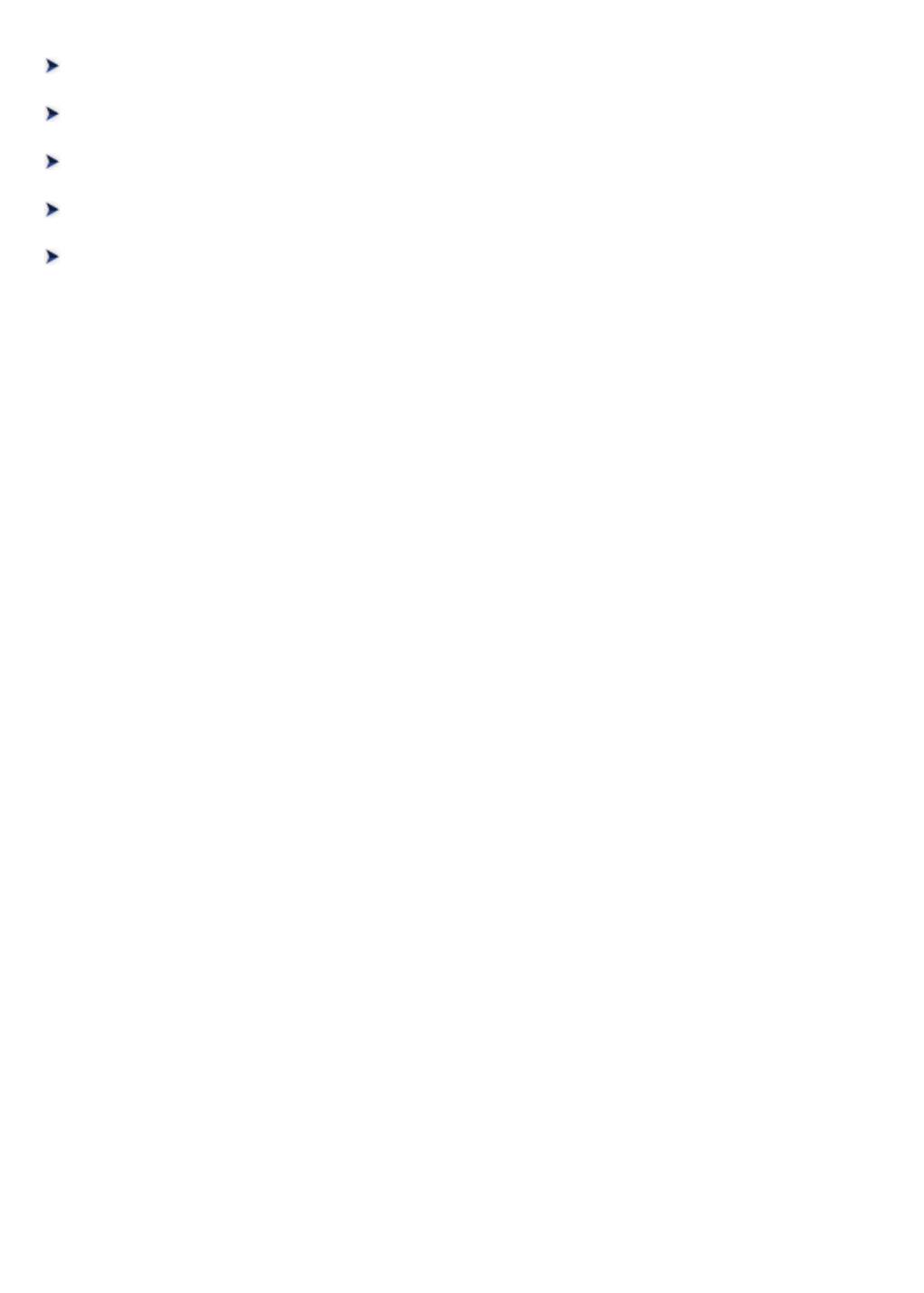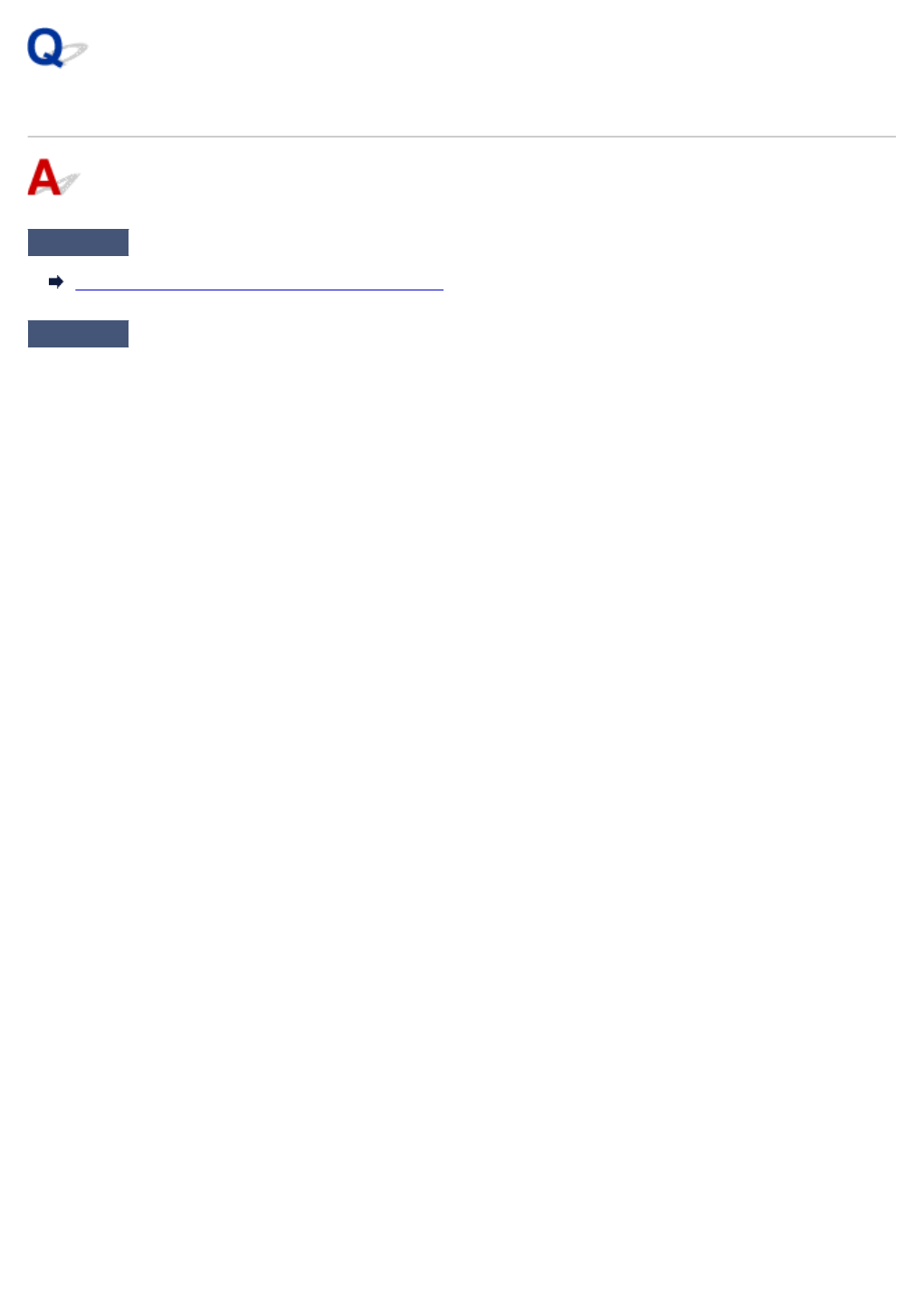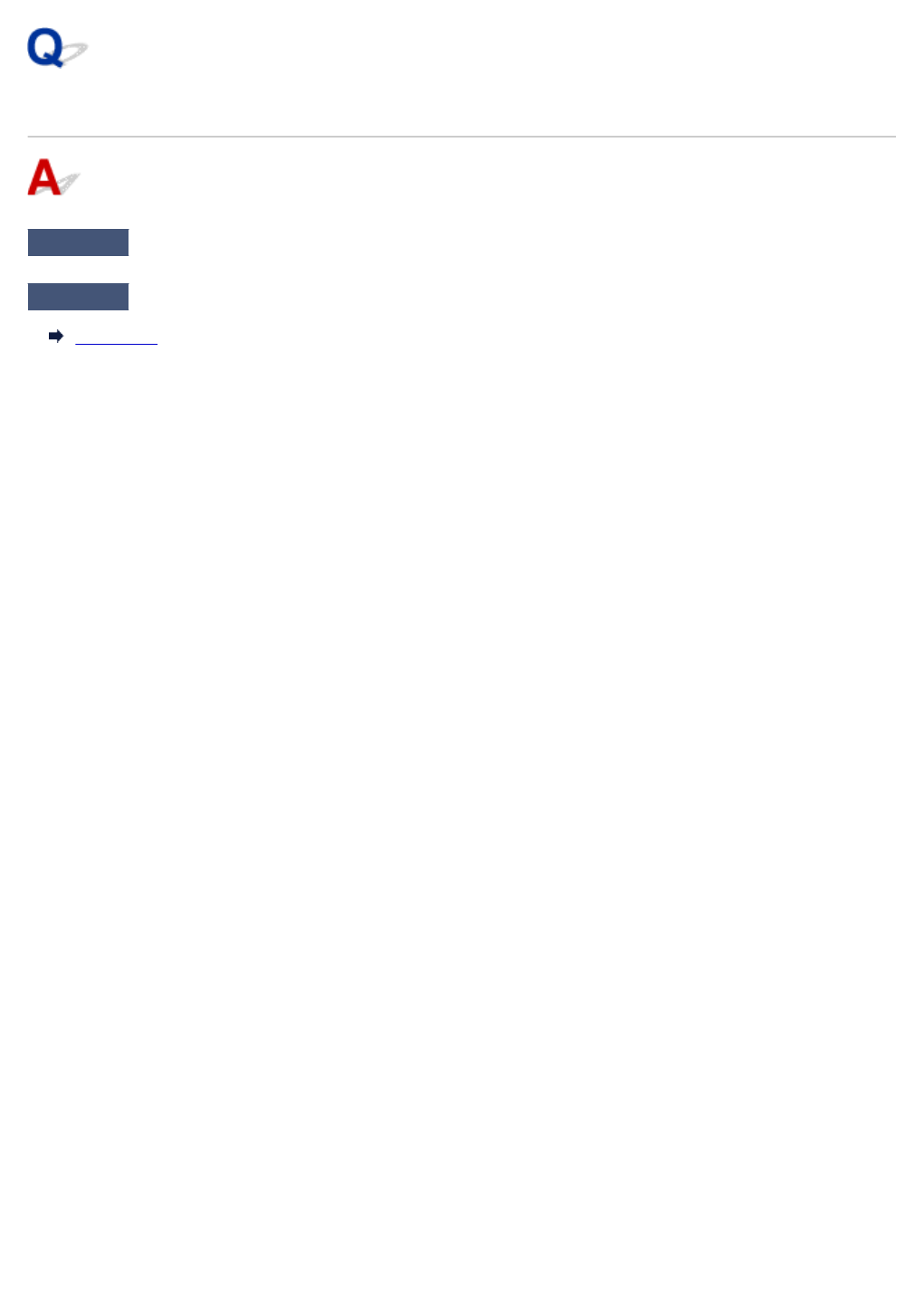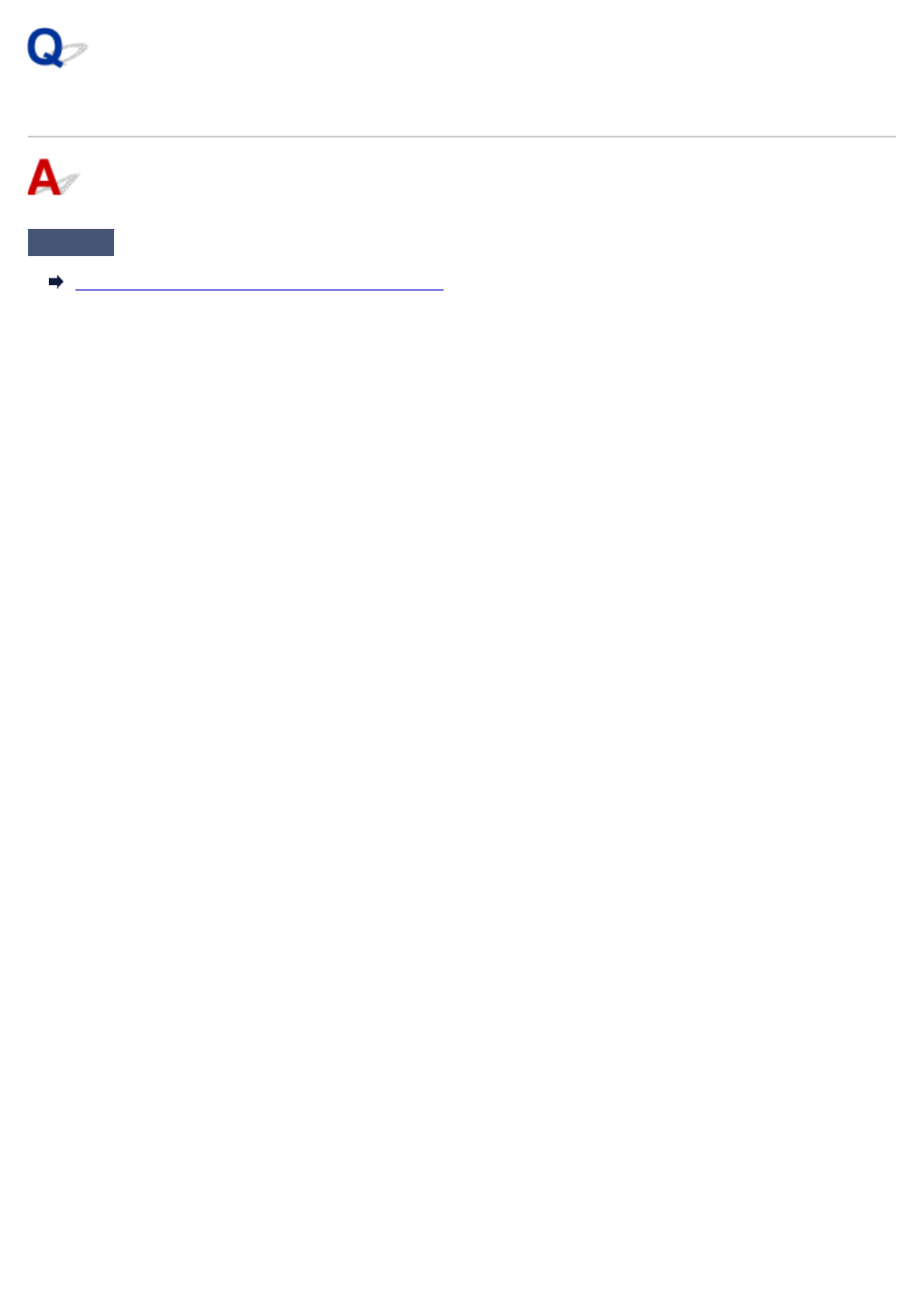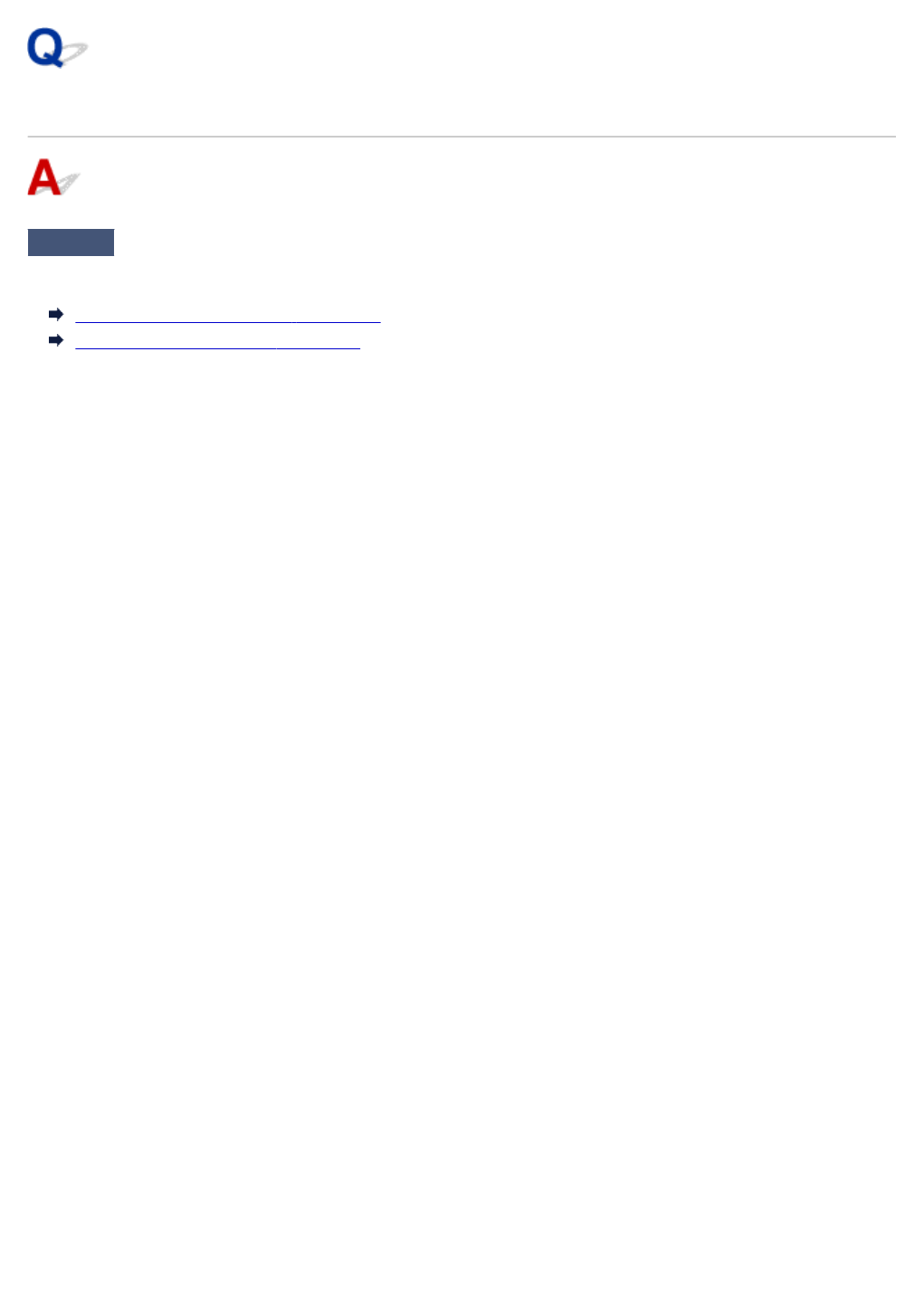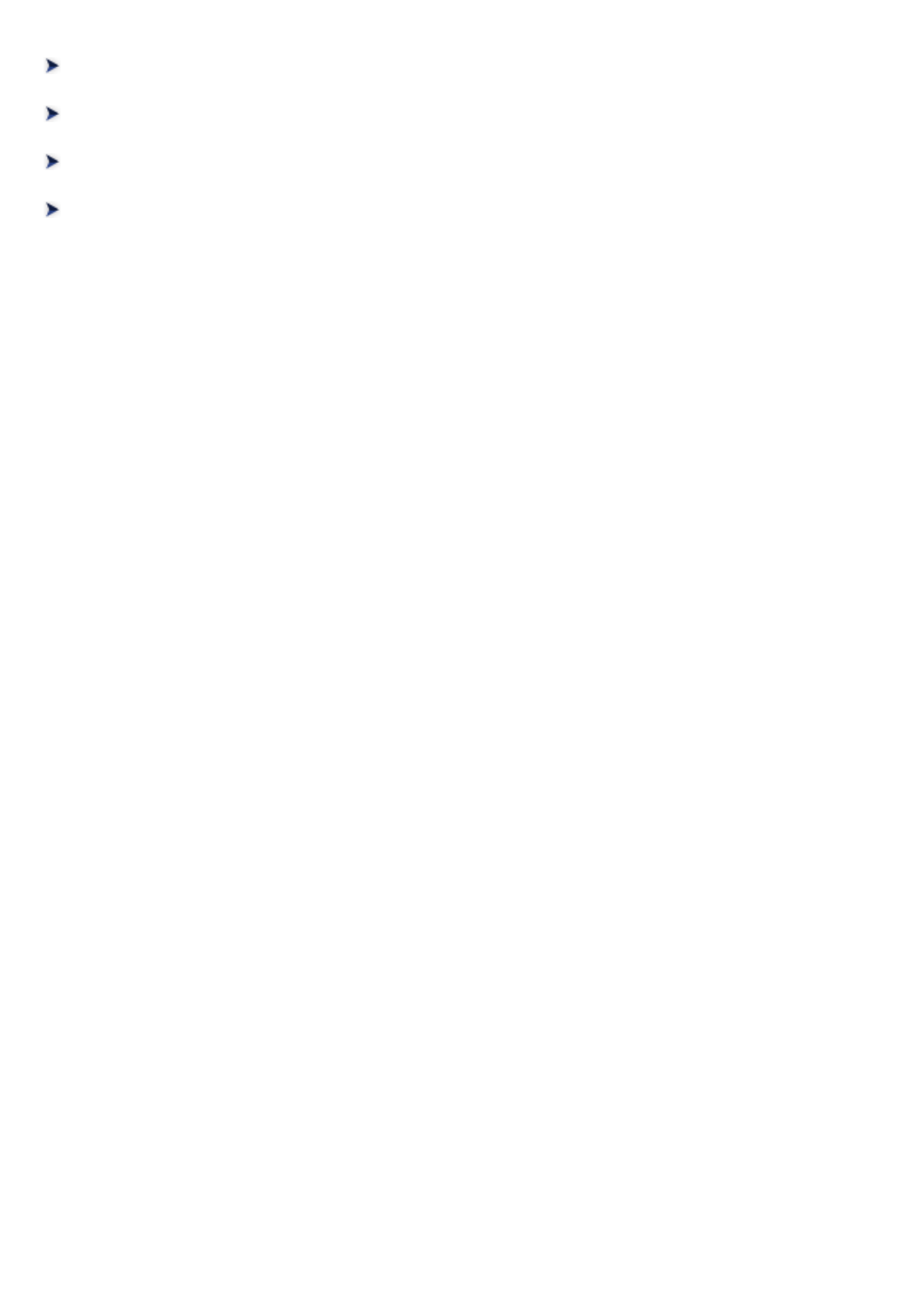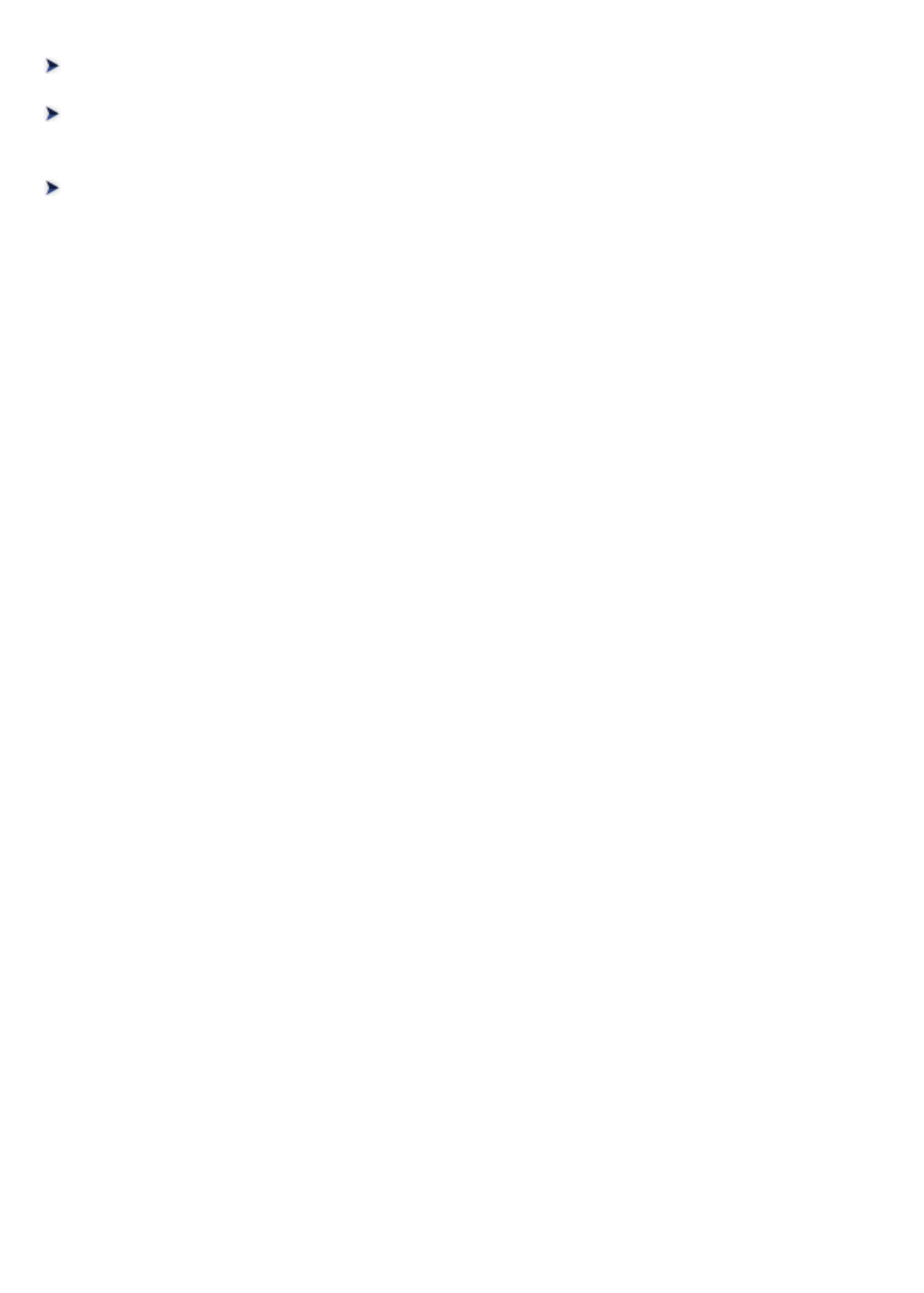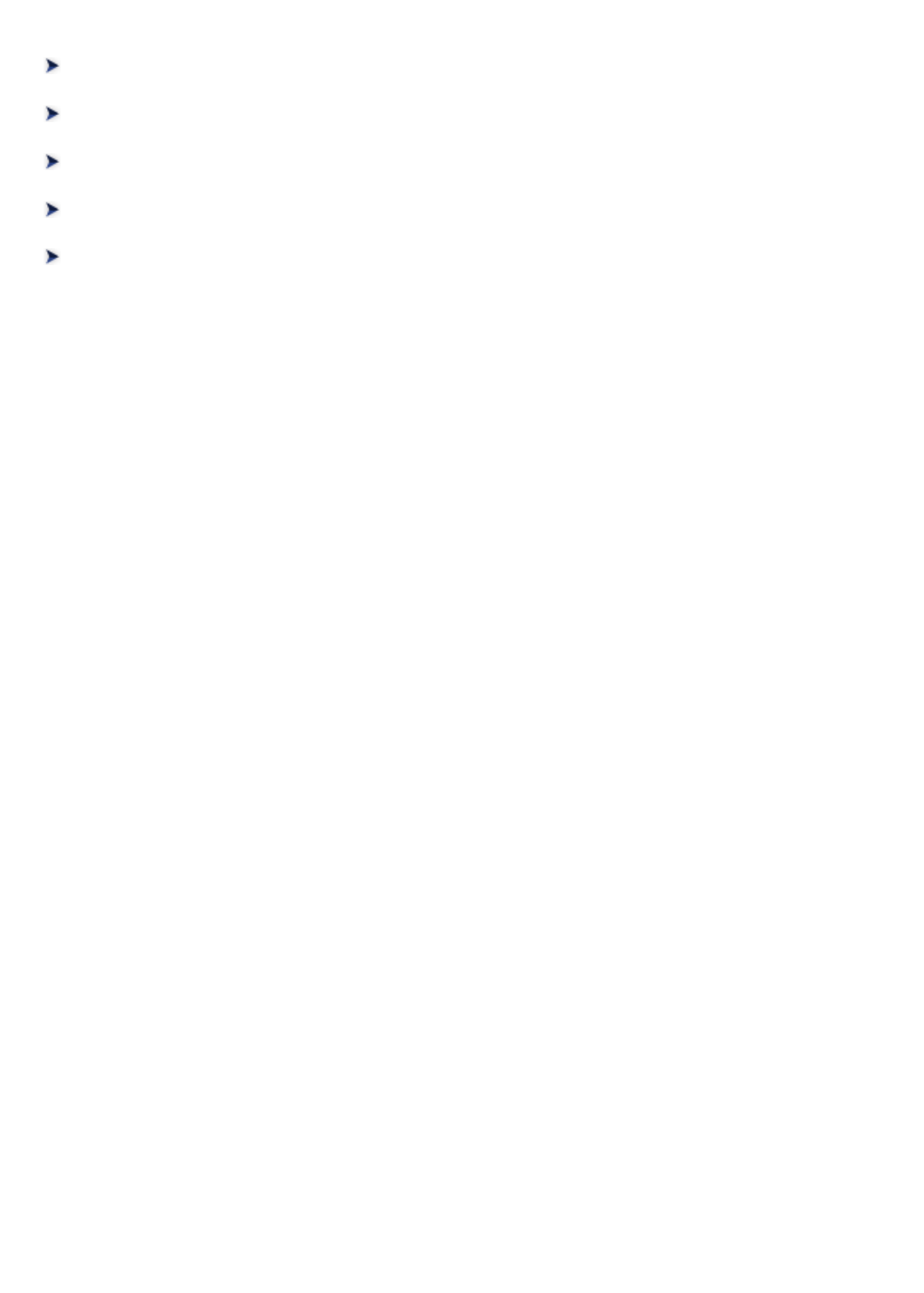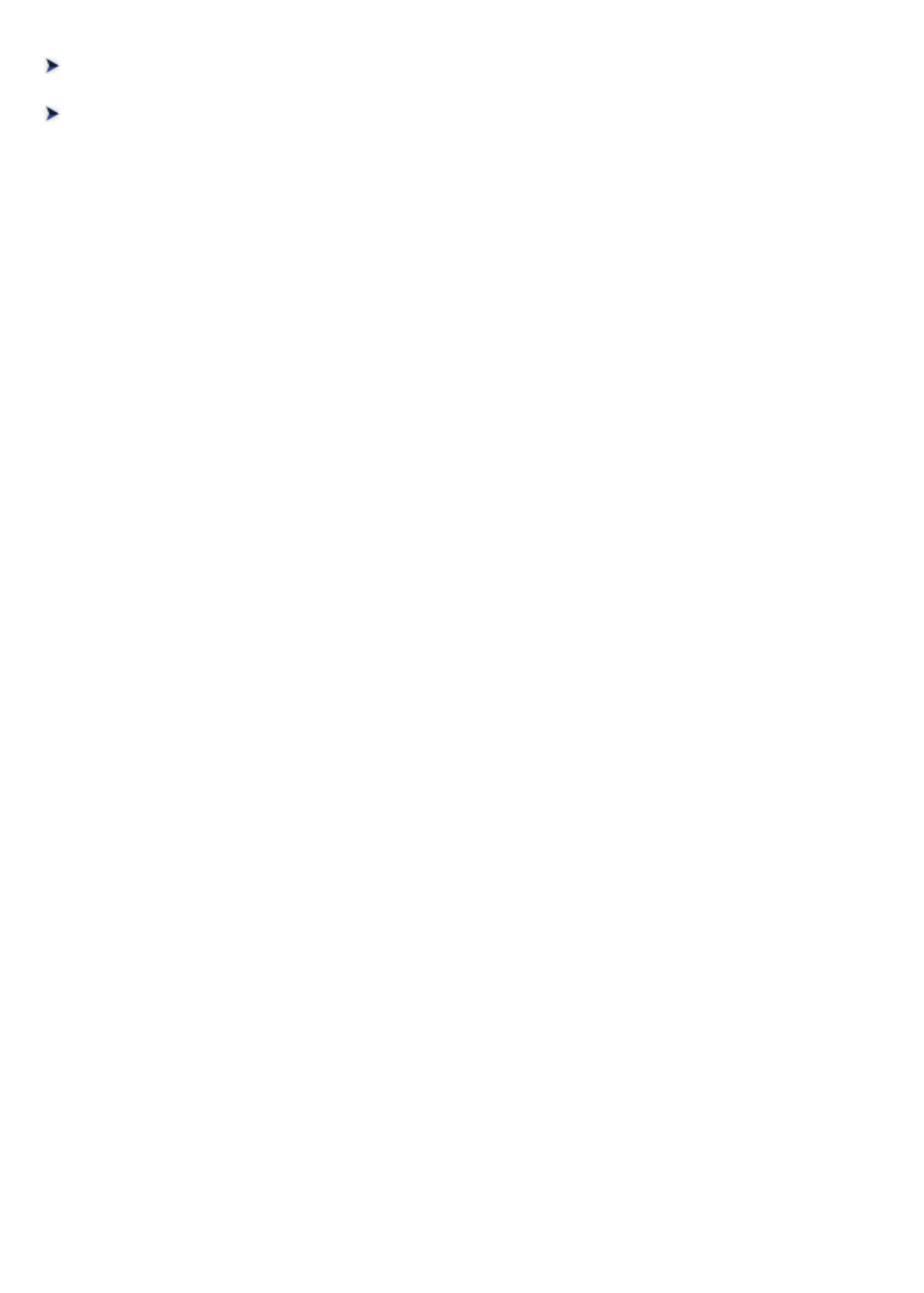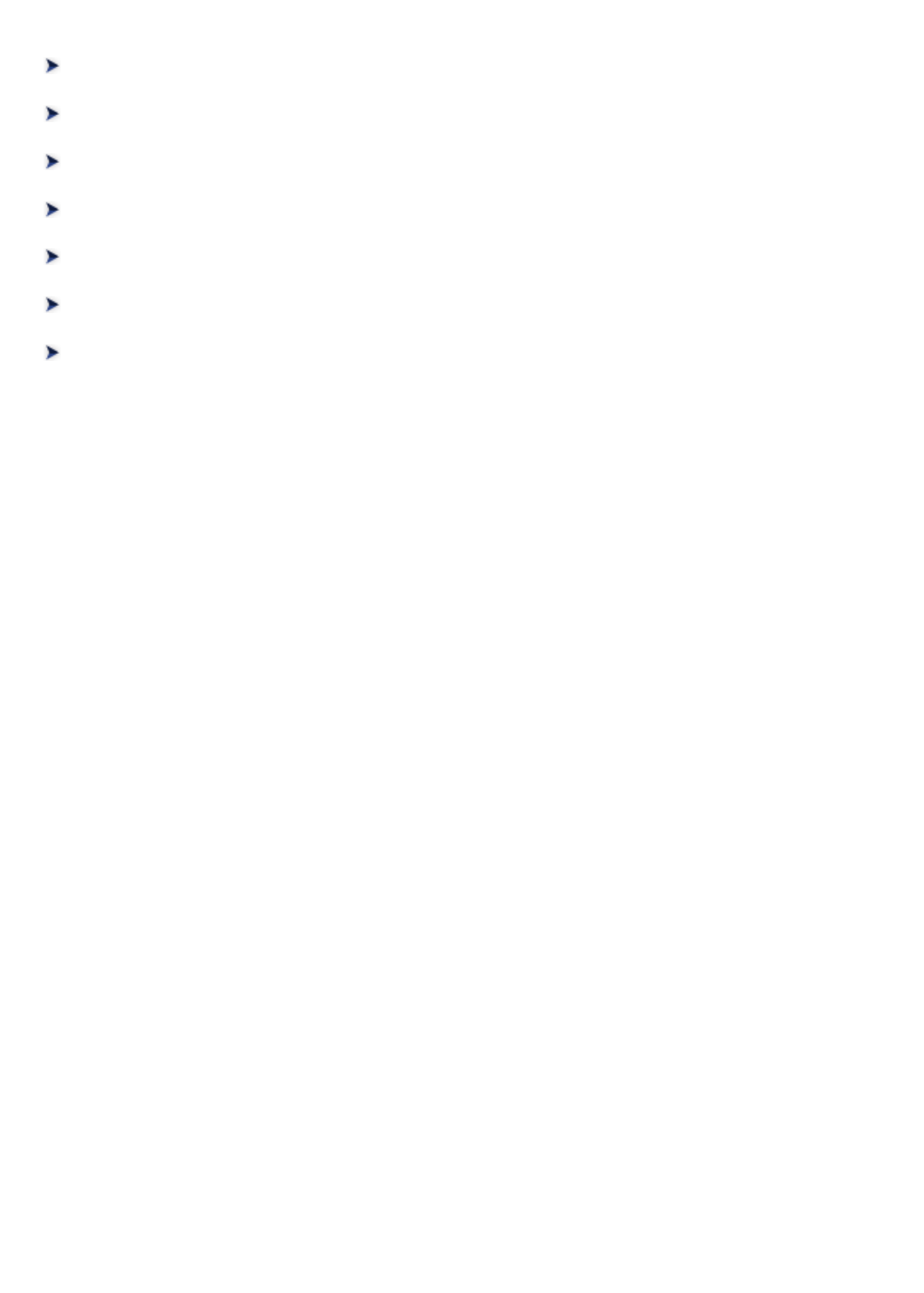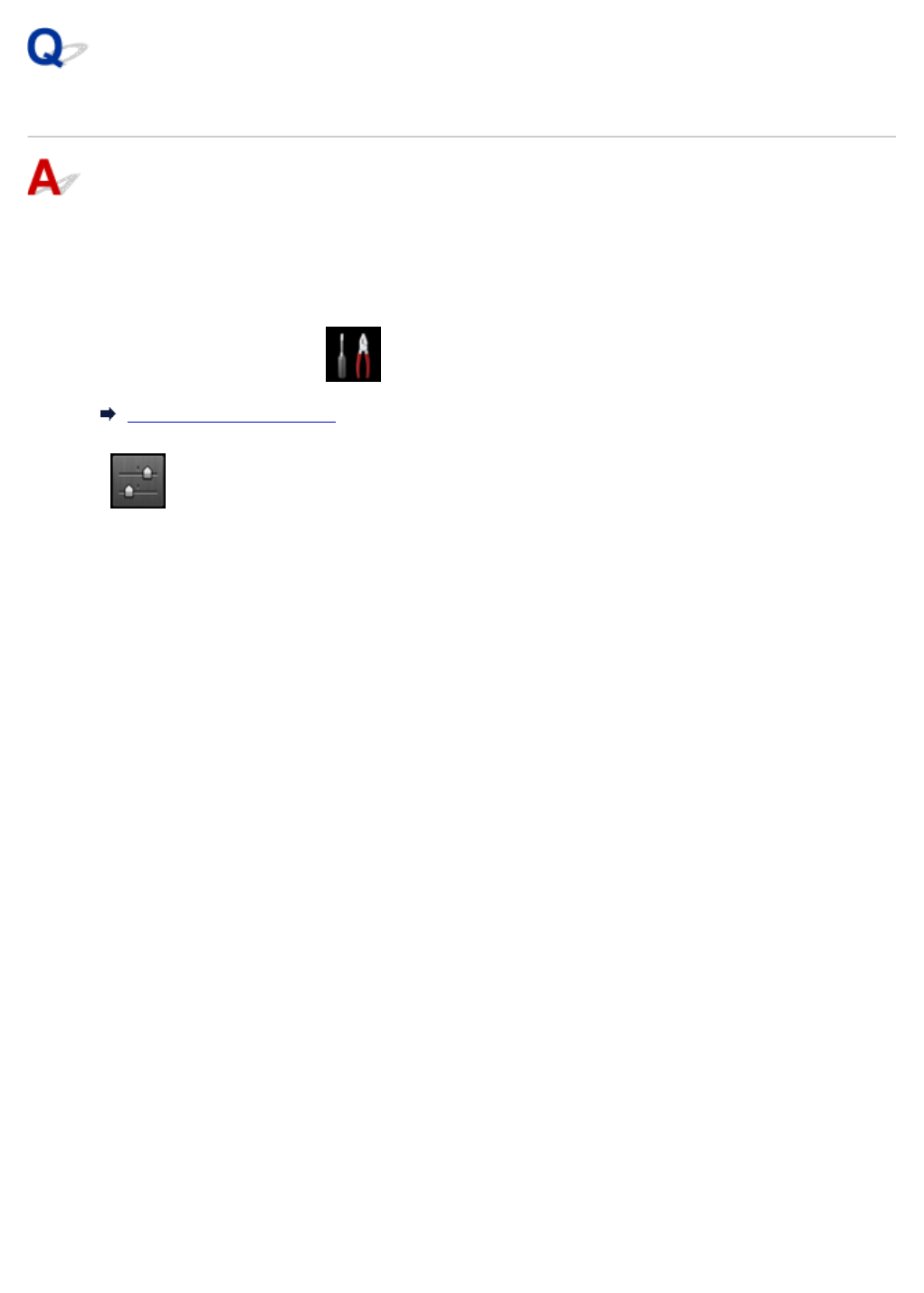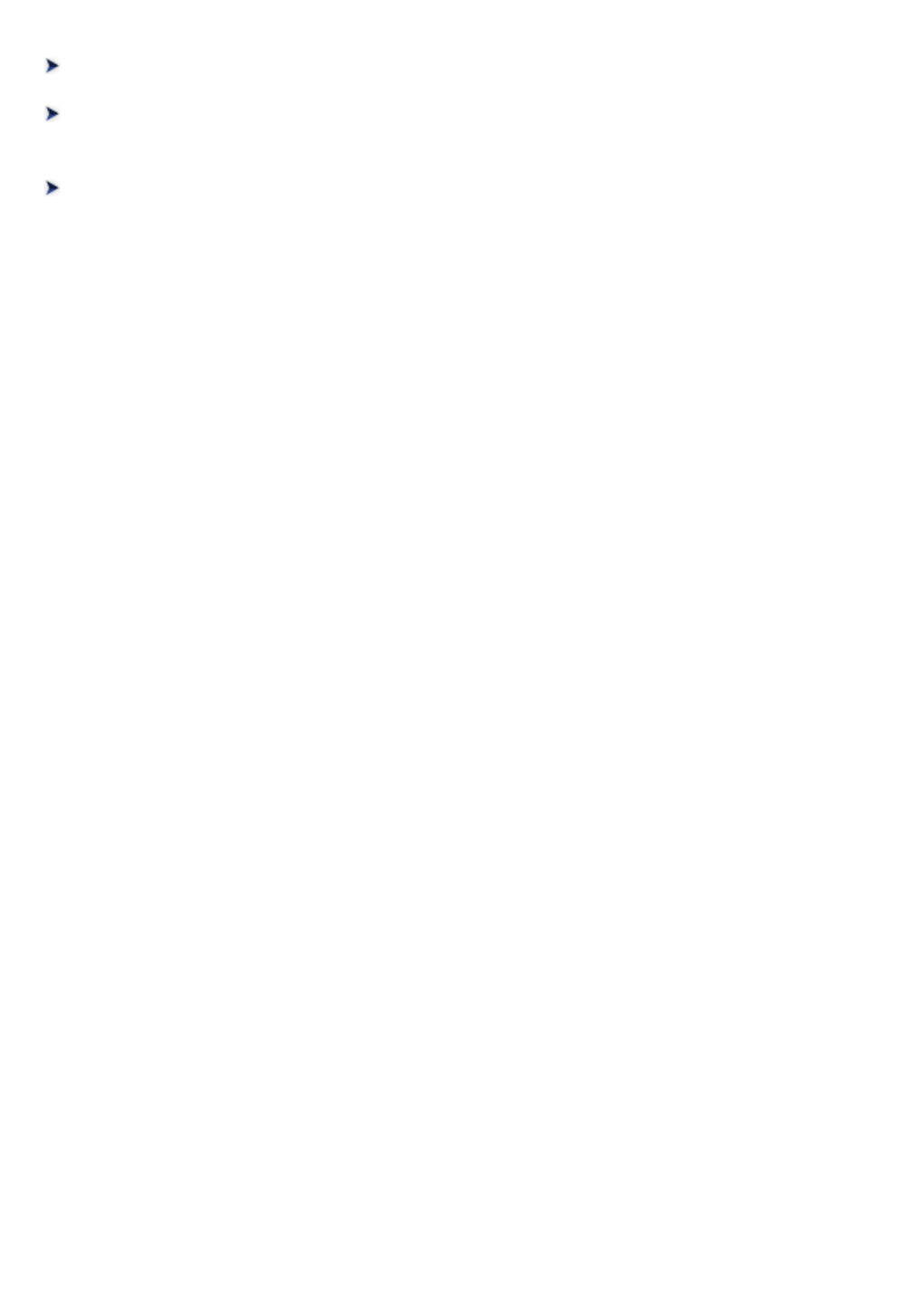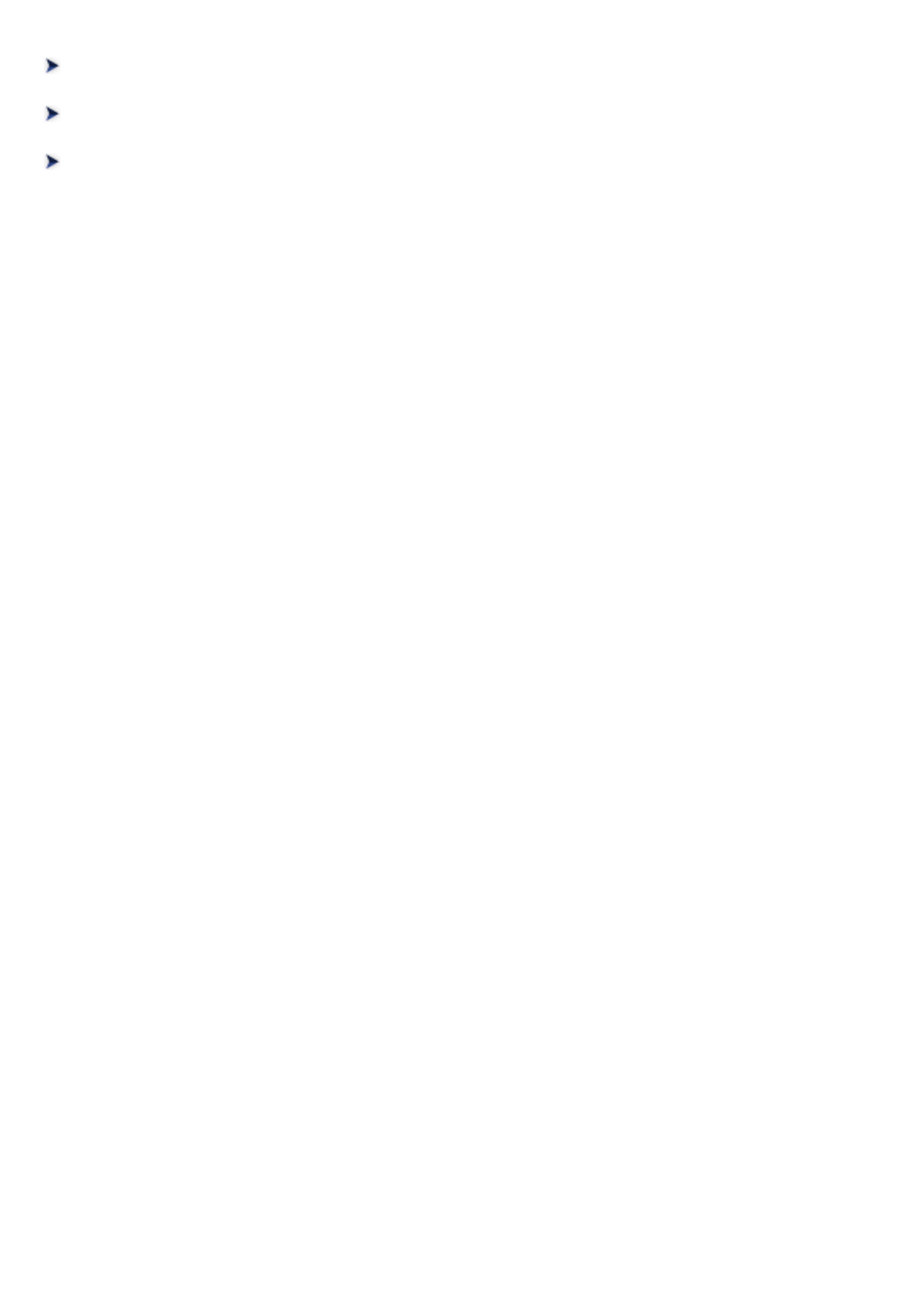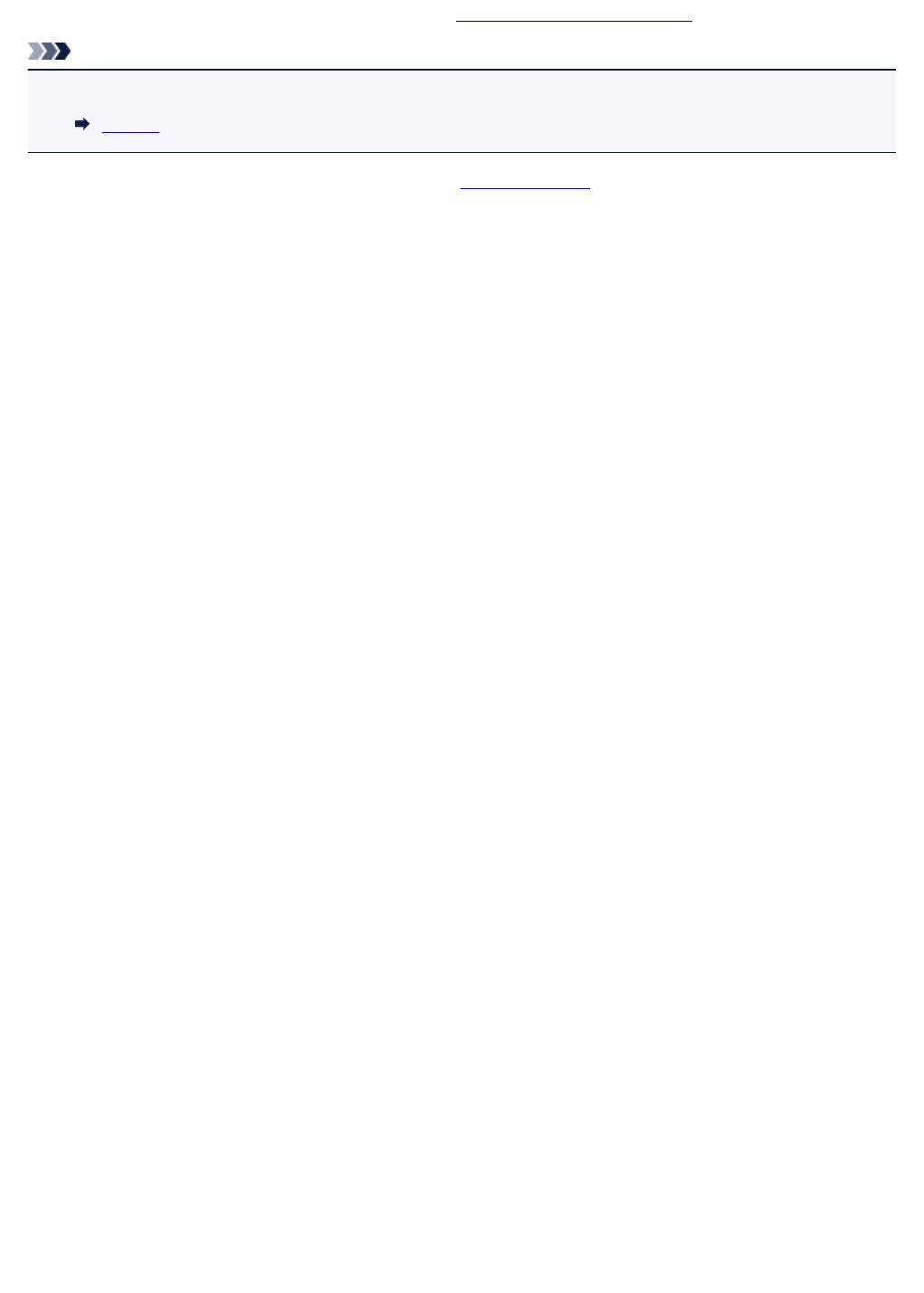MB5100 Series Online Manual MB5100ser Win EN V01
User Manual: Canon MAXIFY MB5120 User Manual Pdf | User Manual PDF
Open the PDF directly: View PDF ![]() .
.
Page Count: 1356 [warning: Documents this large are best viewed by clicking the View PDF Link!]

MB5100 series
Online Manual
Printer Functions
Overview
Printing
Scanning
Faxing
Troubleshooting
English

Contents
Using This Online Manual. . . . . . . . . . . . . . . . . . . . . . . . . . . . . . . . . . . . . . . . . . 23
Trademarks and Licenses. . . . . . . . . . . . . . . . . . . . . . . . . . . . . . . . . . . . . . . . . . 24
Search Tips. . . . . . . . . . . . . . . . . . . . . . . . . . . . . . . . . . . . . . . . . . . . . . . . . . . . . 33
Using the Machine. . . . . . . . . . . . . . . . . . . . . . . . . . . . . . . . . . . . . . . . . . . . . . . . 35
Printing Documents from Your Computer (Windows). . . . . . . . . . . . . . . . . . . . . . . . . . . . . 36
Printing Documents from Your Computer (Mac OS). . . . . . . . . . . . . . . . . . . . . . . . . . . . . . 39
Copying. . . . . . . . . . . . . . . . . . . . . . . . . . . . . . . . . . . . . . . . . . . . . . . . . . . . . . . . . . . . . . . . 43
Faxing. . . . . . . . . . . . . . . . . . . . . . . . . . . . . . . . . . . . . . . . . . . . . . . . . . . . . . . . . . . . . . . . . 46
Printer Functions. . . . . . . . . . . . . . . . . . . . . . . . . . . . . . . . . . . . . . . . . . . . . . . . . 48
Printing from an AirPrint-enabled Printer. . . . . . . . . . . . . . . . . . . . . . . . . . . . . . . . . . . . . . 49
Printing from an AirPrint-enabled Printer with Mac. . . . . . . . . . . . . . . . . . . . . . . . . . . . . . . . . . . . . . . . . 50
Printing from an AirPrint-enabled Printer with iOS Device. . . . . . . . . . . . . . . . . . . . . . . . . . . . . . . . . . . . 52
Connect Wirelessly in "Direct Connection". . . . . . . . . . . . . . . . . . . . . . . . . . . . . . . . . . . . . 56
Download a Variety of Content Materials. . . . . . . . . . . . . . . . . . . . . . . . . . . . . . . . . . . . . . 57
Print Items with Easy-PhotoPrint+ (Web Application). . . . . . . . . . . . . . . . . . . . . . . . . . . . . 58
Managing Printer Conveniently Using Quick Utility Toolbox. . . . . . . . . . . . . . . . . . . . . . . . 59
Available Connection Methods. . . . . . . . . . . . . . . . . . . . . . . . . . . . . . . . . . . . . . . . . . . . . . 60
Scan Originals Larger than the Platen. . . . . . . . . . . . . . . . . . . . . . . . . . . . . . . . . . . . . . . . 62
Scan Multiple Originals at One Time. . . . . . . . . . . . . . . . . . . . . . . . . . . . . . . . . . . . . . . . . 63
Using PIXMA/MAXIFY Cloud Link. . . . . . . . . . . . . . . . . . . . . . . . . . . . . . . . . . . . . . . . . . . 64
Notice for Web Service Printing. . . . . . . . . . . . . . . . . . . . . . . . . . . . . . . . . . . . . . . . . . . . . . . . . . . . . . . . 65
Using PIXMA/MAXIFY Cloud Link from Your Printer. . . . . . . . . . . . . . . . . . . . . . . . . . . . . . . . . . . . . . . . 66
Before Using PIXMA/MAXIFY Cloud Link. . . . . . . . . . . . . . . . . . . . . . . . . . . . . . . . . . . . . . . . . . . . 67
Registering Printer Information to PIXMA/MAXIFY Cloud Link. . . . . . . . . . . . . . . . . . . . . . . . . . . . 69
Application Management. . . . . . . . . . . . . . . . . . . . . . . . . . . . . . . . . . . . . . . . . . . . . . . . . . . . . 72
Using PIXMA/MAXIFY Cloud Link. . . . . . . . . . . . . . . . . . . . . . . . . . . . . . . . . . . . . . . . . . . . . . . . . . 77
Cloud Windows. . . . . . . . . . . . . . . . . . . . . . . . . . . . . . . . . . . . . . . . . . . . . . . . . . . . . . . . . . . . 80
Cloud Troubleshooting. . . . . . . . . . . . . . . . . . . . . . . . . . . . . . . . . . . . . . . . . . . . . . . . . . . . . . . . . . . 83
Using PIXMA/MAXIFY Cloud Link from Your Smartphone, Tablet, or Computer. . . . . . . . . . . . . . . . . . 84
Before Using Canon Inkjet Cloud Printing Center. . . . . . . . . . . . . . . . . . . . . . . . . . . . . . . . . . . . . . 85

Requirements for Canon Inkjet Cloud Printing Center operation. . . . . . . . . . . . . . . . . . . . . . . 86
Registering User Information to Canon Inkjet Cloud Printing Center. . . . . . . . . . . . . . . . . . . . . . . 88
Registering User Information to Canon Inkjet Cloud Printing Center (Color LCD Monitor). . . 89
Registering User Information to Canon Inkjet Cloud Printing Center (Monochrome LCD
Monitor). . . . . . . . . . . . . . . . . . . . . . . . . . . . . . . . . . . . . . . . . . . . . . . . . . . . . . . . . . . . . . . . . . 97
Registering User Information to Canon Inkjet Cloud Printing Center (No LCD Monitor/Using
PRO-1000 series or PRO-500 series). . . . . . . . . . . . . . . . . . . . . . . . . . . . . . . . . . . . . . . . . . 106
Using Canon Inkjet Cloud Printing Center. . . . . . . . . . . . . . . . . . . . . . . . . . . . . . . . . . . . . . . . . . . 113
Canon Inkjet Cloud Printing Center window. . . . . . . . . . . . . . . . . . . . . . . . . . . . . . . . . . . . . 117
Adding a Printer. . . . . . . . . . . . . . . . . . . . . . . . . . . . . . . . . . . . . . . . . . . . . . . . . . . . . . . . . . . . . . . 156
Adding a PIXMA/MAXIFY Cloud Link User. . . . . . . . . . . . . . . . . . . . . . . . . . . . . . . . . . . . . . . . . . 159
Troubleshooting Canon Inkjet Cloud Printing Center. . . . . . . . . . . . . . . . . . . . . . . . . . . . . . . . . . . 165
Print Easily from a Smartphone or Tablet with Canon PRINT Inkjet/SELPHY. . . . . . . . . 168
Printing with Windows RT. . . . . . . . . . . . . . . . . . . . . . . . . . . . . . . . . . . . . . . . . . . . . . . . . 169
Online Storage Integration Function. . . . . . . . . . . . . . . . . . . . . . . . . . . . . . . . . . . . . . . . . 170
Handling Paper, Originals, Ink Tanks, etc.. . . . . . . . . . . . . . . . . . . . . . . . . . . . . 171
Loading Paper. . . . . . . . . . . . . . . . . . . . . . . . . . . . . . . . . . . . . . . . . . . . . . . . . . . . . . . . . 172
Paper Sources. . . . . . . . . . . . . . . . . . . . . . . . . . . . . . . . . . . . . . . . . . . . . . . . . . . . . . . . . . . . . . . . . . . . 173
Loading Plain Paper / Photo Paper. . . . . . . . . . . . . . . . . . . . . . . . . . . . . . . . . . . . . . . . . . . . . . . . . . . . 175
Loading Envelopes. . . . . . . . . . . . . . . . . . . . . . . . . . . . . . . . . . . . . . . . . . . . . . . . . . . . . . . . . . . . . . . . 180
Loading Originals. . . . . . . . . . . . . . . . . . . . . . . . . . . . . . . . . . . . . . . . . . . . . . . . . . . . . . . 184
Where to Load Originals. . . . . . . . . . . . . . . . . . . . . . . . . . . . . . . . . . . . . . . . . . . . . . . . . . . . . . . . . . . . 185
Loading Originals on the Platen Glass. . . . . . . . . . . . . . . . . . . . . . . . . . . . . . . . . . . . . . . . . . . . . . . . . . 186
Loading Documents in the ADF (Auto Document Feeder). . . . . . . . . . . . . . . . . . . . . . . . . . . . . . . . . . 187
Loading Based on Use. . . . . . . . . . . . . . . . . . . . . . . . . . . . . . . . . . . . . . . . . . . . . . . . . . . . . . . . . . . . . . 188
Supported Originals. . . . . . . . . . . . . . . . . . . . . . . . . . . . . . . . . . . . . . . . . . . . . . . . . . . . . . . . . . . . . . . . 190
Inserting a USB Flash Drive. . . . . . . . . . . . . . . . . . . . . . . . . . . . . . . . . . . . . . . . . . . . . . . 192
Inserting a USB Flash Drive. . . . . . . . . . . . . . . . . . . . . . . . . . . . . . . . . . . . . . . . . . . . . . . . . . . . . . . . . . 193
Removing a USB Flash Drive. . . . . . . . . . . . . . . . . . . . . . . . . . . . . . . . . . . . . . . . . . . . . . . . . . . . . . . . 194
Replacing Ink Tanks. . . . . . . . . . . . . . . . . . . . . . . . . . . . . . . . . . . . . . . . . . . . . . . . . . . . . 195
Replacing Ink Tanks. . . . . . . . . . . . . . . . . . . . . . . . . . . . . . . . . . . . . . . . . . . . . . . . . . . . . . . . . . . . . . . . 196
Checking Ink Status on the Touch Screen. . . . . . . . . . . . . . . . . . . . . . . . . . . . . . . . . . . . . . . . . . . . . . . 201
Maintenance. . . . . . . . . . . . . . . . . . . . . . . . . . . . . . . . . . . . . . . . . . . . . . . . . . . 202

If Printing Is Faint or Uneven. . . . . . . . . . . . . . . . . . . . . . . . . . . . . . . . . . . . . . . . . . . . . . 203
Maintenance Procedure. . . . . . . . . . . . . . . . . . . . . . . . . . . . . . . . . . . . . . . . . . . . . . . . . . . . . . . . . . . . . 204
Printing the Nozzle Check Pattern. . . . . . . . . . . . . . . . . . . . . . . . . . . . . . . . . . . . . . . . . . . . . . . . . . . . . 206
Examining the Nozzle Check Pattern. . . . . . . . . . . . . . . . . . . . . . . . . . . . . . . . . . . . . . . . . . . . . . . . . . 208
Cleaning the Print Head. . . . . . . . . . . . . . . . . . . . . . . . . . . . . . . . . . . . . . . . . . . . . . . . . . . . . . . . . . . . . 210
Deep Print Head Cleaning. . . . . . . . . . . . . . . . . . . . . . . . . . . . . . . . . . . . . . . . . . . . . . . . . . . . . . . . . . . 212
Aligning the Print Head. . . . . . . . . . . . . . . . . . . . . . . . . . . . . . . . . . . . . . . . . . . . . . . . . . . . . . . . . . . . . 214
Aligning the Print Head Manually. . . . . . . . . . . . . . . . . . . . . . . . . . . . . . . . . . . . . . . . . . . . . . . . . . . . . . 216
Performing Maintenance Functions from Your Computer (Windows). . . . . . . . . . . . . . . . 220
Cleaning the Print Heads. . . . . . . . . . . . . . . . . . . . . . . . . . . . . . . . . . . . . . . . . . . . . . . . . . . . . . . . . . . . 221
Aligning the Print Head Position. . . . . . . . . . . . . . . . . . . . . . . . . . . . . . . . . . . . . . . . . . . . . . . . . . . . . . 223
Aligning the Print Head Position Manually. . . . . . . . . . . . . . . . . . . . . . . . . . . . . . . . . . . . . . . . . . . 224
Printing a Nozzle Check Pattern. . . . . . . . . . . . . . . . . . . . . . . . . . . . . . . . . . . . . . . . . . . . . . . . . . . . . . 227
Cleaning. . . . . . . . . . . . . . . . . . . . . . . . . . . . . . . . . . . . . . . . . . . . . . . . . . . . . . . . . . . . . . 228
Cleaning Exterior Surfaces. . . . . . . . . . . . . . . . . . . . . . . . . . . . . . . . . . . . . . . . . . . . . . . . . . . . . . . . . . 229
Cleaning the Platen Glass and Document Cover. . . . . . . . . . . . . . . . . . . . . . . . . . . . . . . . . . . . . . . . . 230
Cleaning the ADF (Auto Document Feeder). . . . . . . . . . . . . . . . . . . . . . . . . . . . . . . . . . . . . . . . . . . . . 231
Cleaning Paper Feed Rollers. . . . . . . . . . . . . . . . . . . . . . . . . . . . . . . . . . . . . . . . . . . . . . . . . . . . . . . . . 233
Cleaning Inside the Machine (Bottom Plate Cleaning). . . . . . . . . . . . . . . . . . . . . . . . . . . . . . . . . . . . . 235
Cleaning Cassette Pads. . . . . . . . . . . . . . . . . . . . . . . . . . . . . . . . . . . . . . . . . . . . . . . . . . . . . . . . . . . . 238
Overview. . . . . . . . . . . . . . . . . . . . . . . . . . . . . . . . . . . . . . . . . . . . . . . . . . . . . . 239
Safety. . . . . . . . . . . . . . . . . . . . . . . . . . . . . . . . . . . . . . . . . . . . . . . . . . . . . . . . . . . . . . . . 241
Safety Precautions. . . . . . . . . . . . . . . . . . . . . . . . . . . . . . . . . . . . . . . . . . . . . . . . . . . . . . . . . . . . . . . . . 242
Regulatory Information. . . . . . . . . . . . . . . . . . . . . . . . . . . . . . . . . . . . . . . . . . . . . . . . . . . . . . . . . . . . . . 243
WEEE (EU&EEA). . . . . . . . . . . . . . . . . . . . . . . . . . . . . . . . . . . . . . . . . . . . . . . . . . . . . . . . . . . . . . . . . 248
Main Components and Their Use. . . . . . . . . . . . . . . . . . . . . . . . . . . . . . . . . . . . . . . . . . . 260
Main Components. . . . . . . . . . . . . . . . . . . . . . . . . . . . . . . . . . . . . . . . . . . . . . . . . . . . . . . . . . . . . . . . . 261
Front View. . . . . . . . . . . . . . . . . . . . . . . . . . . . . . . . . . . . . . . . . . . . . . . . . . . . . . . . . . . . . . . . . . . 262
Rear View. . . . . . . . . . . . . . . . . . . . . . . . . . . . . . . . . . . . . . . . . . . . . . . . . . . . . . . . . . . . . . . . . . . 264
Inside View. . . . . . . . . . . . . . . . . . . . . . . . . . . . . . . . . . . . . . . . . . . . . . . . . . . . . . . . . . . . . . . . . . . 265
Operation Panel. . . . . . . . . . . . . . . . . . . . . . . . . . . . . . . . . . . . . . . . . . . . . . . . . . . . . . . . . . . . . . . 266
Power Supply. . . . . . . . . . . . . . . . . . . . . . . . . . . . . . . . . . . . . . . . . . . . . . . . . . . . . . . . . . . . . . . . . . . . . 268
Confirming that the Power Is On. . . . . . . . . . . . . . . . . . . . . . . . . . . . . . . . . . . . . . . . . . . . . . . . . . 269
Turning the Machine On and Off. . . . . . . . . . . . . . . . . . . . . . . . . . . . . . . . . . . . . . . . . . . . . . . . . . 270

Checking the Power Plug/Power Cord. . . . . . . . . . . . . . . . . . . . . . . . . . . . . . . . . . . . . . . . . . . . . 272
Unplugging the Machine. . . . . . . . . . . . . . . . . . . . . . . . . . . . . . . . . . . . . . . . . . . . . . . . . . . . . . . . 273
Using the Operation Panel. . . . . . . . . . . . . . . . . . . . . . . . . . . . . . . . . . . . . . . . . . . . . . . . . . . . . . . . . . . 274
Entering Numbers, Letters, and Symbols. . . . . . . . . . . . . . . . . . . . . . . . . . . . . . . . . . . . . . . . . . . . . . . 278
Changing Settings. . . . . . . . . . . . . . . . . . . . . . . . . . . . . . . . . . . . . . . . . . . . . . . . . . . . . . 280
Changing Printer Settings from Your Computer (Windows). . . . . . . . . . . . . . . . . . . . . . . . . . . . . . . . . . 281
Changing the Print Options. . . . . . . . . . . . . . . . . . . . . . . . . . . . . . . . . . . . . . . . . . . . . . . . . . . . . . 282
Registering a Frequently Used Printing Profile. . . . . . . . . . . . . . . . . . . . . . . . . . . . . . . . . . . . . . . 283
Managing the Printer Power. . . . . . . . . . . . . . . . . . . . . . . . . . . . . . . . . . . . . . . . . . . . . . . . . . . . . 285
Reducing the Printer Noise. . . . . . . . . . . . . . . . . . . . . . . . . . . . . . . . . . . . . . . . . . . . . . . . . . . . . . 286
Changing the Printer Operation Mode. . . . . . . . . . . . . . . . . . . . . . . . . . . . . . . . . . . . . . . . . . . . . . 288
Changing Settings from Operation Panel. . . . . . . . . . . . . . . . . . . . . . . . . . . . . . . . . . . . . . . . . . . . . . . 290
Changing Settings from Operation Panel. . . . . . . . . . . . . . . . . . . . . . . . . . . . . . . . . . . . . . . . . . . 291
Setting Items on Operation Panel. . . . . . . . . . . . . . . . . . . . . . . . . . . . . . . . . . . . . . . . . . . . . . . . . 293
FAX settings. . . . . . . . . . . . . . . . . . . . . . . . . . . . . . . . . . . . . . . . . . . . . . . . . . . . . . . . . . . . . . . . . . 294
Print settings. . . . . . . . . . . . . . . . . . . . . . . . . . . . . . . . . . . . . . . . . . . . . . . . . . . . . . . . . . . . . . . . . 298
LAN settings. . . . . . . . . . . . . . . . . . . . . . . . . . . . . . . . . . . . . . . . . . . . . . . . . . . . . . . . . . . . . . . . . 299
Device user settings. . . . . . . . . . . . . . . . . . . . . . . . . . . . . . . . . . . . . . . . . . . . . . . . . . . . . . . . . . . 304
Timezone List. . . . . . . . . . . . . . . . . . . . . . . . . . . . . . . . . . . . . . . . . . . . . . . . . . . . . . . . . . . . 307
Language selection. . . . . . . . . . . . . . . . . . . . . . . . . . . . . . . . . . . . . . . . . . . . . . . . . . . . . . . . . . . . 309
Firmware update. . . . . . . . . . . . . . . . . . . . . . . . . . . . . . . . . . . . . . . . . . . . . . . . . . . . . . . . . . . . . . 310
Cassette settings. . . . . . . . . . . . . . . . . . . . . . . . . . . . . . . . . . . . . . . . . . . . . . . . . . . . . . . . . . . . . . 312
Administrator password setting. . . . . . . . . . . . . . . . . . . . . . . . . . . . . . . . . . . . . . . . . . . . . . . . . . . 313
Setting Administrator Password on Operation Panel. . . . . . . . . . . . . . . . . . . . . . . . . . . . . . . 314
Operation restrictions. . . . . . . . . . . . . . . . . . . . . . . . . . . . . . . . . . . . . . . . . . . . . . . . . . . . . . . . . . . 316
Restricting Machine Operation. . . . . . . . . . . . . . . . . . . . . . . . . . . . . . . . . . . . . . . . . . . . . . . 317
Reset setting. . . . . . . . . . . . . . . . . . . . . . . . . . . . . . . . . . . . . . . . . . . . . . . . . . . . . . . . . . . . . . . . . 320
Web service setup. . . . . . . . . . . . . . . . . . . . . . . . . . . . . . . . . . . . . . . . . . . . . . . . . . . . . . . . . . . . . 322
System information. . . . . . . . . . . . . . . . . . . . . . . . . . . . . . . . . . . . . . . . . . . . . . . . . . . . . . . . . . . . 323
ECO settings. . . . . . . . . . . . . . . . . . . . . . . . . . . . . . . . . . . . . . . . . . . . . . . . . . . . . . . . . . . . . . . . . 324
Quiet setting. . . . . . . . . . . . . . . . . . . . . . . . . . . . . . . . . . . . . . . . . . . . . . . . . . . . . . . . . . . . . . . . . . 329
Registering Favorite Settings (Custom profiles). . . . . . . . . . . . . . . . . . . . . . . . . . . . . . . . . . . . . . 331
Checking the Total Number of Uses of Machine. . . . . . . . . . . . . . . . . . . . . . . . . . . . . . . . . . . . . . 333
Changing Printer's Setting Using Web Browser. . . . . . . . . . . . . . . . . . . . . . . . . . . . . . . . . . . . . . . . . . . 334
Changing Settings Using Web Browser. . . . . . . . . . . . . . . . . . . . . . . . . . . . . . . . . . . . . . . . . . . . . 335

Registering Printer's Root Certificate to Web Browser. . . . . . . . . . . . . . . . . . . . . . . . . . . . . 338
Changeable Setting Items Using Web Browser. . . . . . . . . . . . . . . . . . . . . . . . . . . . . . . . . . . . . . . 342
Setting Password. . . . . . . . . . . . . . . . . . . . . . . . . . . . . . . . . . . . . . . . . . . . . . . . . . . . . . . . . . . . . . 344
Setting Mail Server. . . . . . . . . . . . . . . . . . . . . . . . . . . . . . . . . . . . . . . . . . . . . . . . . . . . . . . . . . . . 346
Specifying Mail Setting for Sending Scanned Data. . . . . . . . . . . . . . . . . . . . . . . . . . . . . . . . . . . . 348
Receiving Printer Status by E-mail. . . . . . . . . . . . . . . . . . . . . . . . . . . . . . . . . . . . . . . . . . . . . . . . 349
Network Connection. . . . . . . . . . . . . . . . . . . . . . . . . . . . . . . . . . . . . . . . . . . . . . . . . . . . . 351
Network Connection Tips. . . . . . . . . . . . . . . . . . . . . . . . . . . . . . . . . . . . . . . . . . . . . . . . . . . . . . . . . . . . 352
Default Network Settings. . . . . . . . . . . . . . . . . . . . . . . . . . . . . . . . . . . . . . . . . . . . . . . . . . . . . . . . 353
Another Printer Found with Same Name. . . . . . . . . . . . . . . . . . . . . . . . . . . . . . . . . . . . . . . . . . . . 355
Connecting to Another Computer via LAN/Changing from USB to LAN Connection. . . . . . . . . . 356
Printing Network Settings. . . . . . . . . . . . . . . . . . . . . . . . . . . . . . . . . . . . . . . . . . . . . . . . . . . . . . . 357
Changing LAN Connection Method/Changing Wireless LAN Connection Method. . . . . . . . . . . . 363
Network Settings (IJ Network Device Setup Utility) (Windows). . . . . . . . . . . . . . . . . . . . 365
IJ Network Device Setup Utility. . . . . . . . . . . . . . . . . . . . . . . . . . . . . . . . . . . . . . . . . . . . . . . . . . . . . . . 366
Starting Up IJ Network Device Setup Utility. . . . . . . . . . . . . . . . . . . . . . . . . . . . . . . . . . . . . . . . . . . . . . 367
IJ Network Device Setup Utility Screen. . . . . . . . . . . . . . . . . . . . . . . . . . . . . . . . . . . . . . . . . . . . . . . . . 368
Performing Network Settings. . . . . . . . . . . . . . . . . . . . . . . . . . . . . . . . . . . . . . . . . . . . . . . . . . . . . . . . . 373
Performing/Changing Wired LAN Settings. . . . . . . . . . . . . . . . . . . . . . . . . . . . . . . . . . . . . . . . . . 374
Performing/Changing Wireless LAN Settings. . . . . . . . . . . . . . . . . . . . . . . . . . . . . . . . . . . . . . . . 377
Assigning Printer Information. . . . . . . . . . . . . . . . . . . . . . . . . . . . . . . . . . . . . . . . . . . . . . . . . . . . . 381
Initializing Network Settings. . . . . . . . . . . . . . . . . . . . . . . . . . . . . . . . . . . . . . . . . . . . . . . . . . . . . . 382
Changing Administrator Password. . . . . . . . . . . . . . . . . . . . . . . . . . . . . . . . . . . . . . . . . . . . . . . . 383
Setting Criteria for Printer Search/Searching Specific Printer. . . . . . . . . . . . . . . . . . . . . . . . . . . . 384
If WEP Details Screen Appears. . . . . . . . . . . . . . . . . . . . . . . . . . . . . . . . . . . . . . . . . . . . . . . . . . . 386
If WPA/WPA2 Details Screen Appears. . . . . . . . . . . . . . . . . . . . . . . . . . . . . . . . . . . . . . . . . . . . . 387
Checking Network Status. . . . . . . . . . . . . . . . . . . . . . . . . . . . . . . . . . . . . . . . . . . . . . . . . . . . . . . . . . . . 388
Checking Wireless Network Status. . . . . . . . . . . . . . . . . . . . . . . . . . . . . . . . . . . . . . . . . . . . . . . . 389
Displaying Computer Network Information. . . . . . . . . . . . . . . . . . . . . . . . . . . . . . . . . . . . . . . . . . 390
Displaying Printer Network Information. . . . . . . . . . . . . . . . . . . . . . . . . . . . . . . . . . . . . . . . . . . . . 391
Checking Connection Status between Printer and Wireless Router. . . . . . . . . . . . . . . . . . . . . . . 392
Checking Network Setting Difference. . . . . . . . . . . . . . . . . . . . . . . . . . . . . . . . . . . . . . . . . . . . . . 393
IJ Network Device Setup Utility Menus. . . . . . . . . . . . . . . . . . . . . . . . . . . . . . . . . . . . . . . . . . . . . . . . . 394
Printer Menu. . . . . . . . . . . . . . . . . . . . . . . . . . . . . . . . . . . . . . . . . . . . . . . . . . . . . . . . . . . . . . . . . 395
View Menu. . . . . . . . . . . . . . . . . . . . . . . . . . . . . . . . . . . . . . . . . . . . . . . . . . . . . . . . . . . . . . . . . . . 397

Option Menu. . . . . . . . . . . . . . . . . . . . . . . . . . . . . . . . . . . . . . . . . . . . . . . . . . . . . . . . . . . . . . . . . 399
Help Menu. . . . . . . . . . . . . . . . . . . . . . . . . . . . . . . . . . . . . . . . . . . . . . . . . . . . . . . . . . . . . . . . . . . 400
Other Network Information. . . . . . . . . . . . . . . . . . . . . . . . . . . . . . . . . . . . . . . . . . . . . . . . . . . . . . . . . . . 401
Technical Terms. . . . . . . . . . . . . . . . . . . . . . . . . . . . . . . . . . . . . . . . . . . . . . . . . . . . . . . . . . . . . . . 402
Restrictions. . . . . . . . . . . . . . . . . . . . . . . . . . . . . . . . . . . . . . . . . . . . . . . . . . . . . . . . . . . . . . . . . . 409
Firewall. . . . . . . . . . . . . . . . . . . . . . . . . . . . . . . . . . . . . . . . . . . . . . . . . . . . . . . . . . . . . . . . . . . . . 410
Ensuring Optimal Printing Results. . . . . . . . . . . . . . . . . . . . . . . . . . . . . . . . . . . . . . . . . . 411
Ink Tips. . . . . . . . . . . . . . . . . . . . . . . . . . . . . . . . . . . . . . . . . . . . . . . . . . . . . . . . . . . . . . . . . . . . . . . . . 412
Printing Tips. . . . . . . . . . . . . . . . . . . . . . . . . . . . . . . . . . . . . . . . . . . . . . . . . . . . . . . . . . . . . . . . . . . . . . 413
Check Paper Settings Before Printing. . . . . . . . . . . . . . . . . . . . . . . . . . . . . . . . . . . . . . . . . . . . . . . . . . 414
Set Cassette Paper Information After Loading Paper. . . . . . . . . . . . . . . . . . . . . . . . . . . . . . . . . . . . . . 415
Canceling Print Jobs. . . . . . . . . . . . . . . . . . . . . . . . . . . . . . . . . . . . . . . . . . . . . . . . . . . . . . . . . . . . . . . 416
Keeping Print Quality High. . . . . . . . . . . . . . . . . . . . . . . . . . . . . . . . . . . . . . . . . . . . . . . . . . . . . . . . . . . 417
Transporting Your Machine. . . . . . . . . . . . . . . . . . . . . . . . . . . . . . . . . . . . . . . . . . . . . . . . . . . . . . . . . . 418
Legal Restrictions on Scanning/Copying. . . . . . . . . . . . . . . . . . . . . . . . . . . . . . . . . . . . . 419
Specifications. . . . . . . . . . . . . . . . . . . . . . . . . . . . . . . . . . . . . . . . . . . . . . . . . . . . . . . . . . 420
Information about Paper. . . . . . . . . . . . . . . . . . . . . . . . . . . . . . . . . . . . . . . . . . 425
Supported Media Types. . . . . . . . . . . . . . . . . . . . . . . . . . . . . . . . . . . . . . . . . . . . . . . . . . 426
Paper Load Limit. . . . . . . . . . . . . . . . . . . . . . . . . . . . . . . . . . . . . . . . . . . . . . . . . . . . . . . . . . . . . . . . . . 428
Unsupported Media Types. . . . . . . . . . . . . . . . . . . . . . . . . . . . . . . . . . . . . . . . . . . . . . . . 430
Handling Paper. . . . . . . . . . . . . . . . . . . . . . . . . . . . . . . . . . . . . . . . . . . . . . . . . . . . . . . . . 431
Print Area. . . . . . . . . . . . . . . . . . . . . . . . . . . . . . . . . . . . . . . . . . . . . . . . . . . . . . . . . . . . . 432
Print Area. . . . . . . . . . . . . . . . . . . . . . . . . . . . . . . . . . . . . . . . . . . . . . . . . . . . . . . . . . . . . . . . . . . . . . . . 433
Standard Sizes. . . . . . . . . . . . . . . . . . . . . . . . . . . . . . . . . . . . . . . . . . . . . . . . . . . . . . . . . . . . . . . . . . . . 434
Envelopes. . . . . . . . . . . . . . . . . . . . . . . . . . . . . . . . . . . . . . . . . . . . . . . . . . . . . . . . . . . . . . . . . . . . . . . 436
Administrator Settings. . . . . . . . . . . . . . . . . . . . . . . . . . . . . . . . . . . . . . . . . . . . 437
Sharing the Printer on a Network. . . . . . . . . . . . . . . . . . . . . . . . . . . . . . . . . . . . . . . . . . . 438
Setting Up a Shared Printer. . . . . . . . . . . . . . . . . . . . . . . . . . . . . . . . . . . . . . . . . . . . . . . . . . . . . . . . . . 439
Restrictions on Printer Sharing. . . . . . . . . . . . . . . . . . . . . . . . . . . . . . . . . . . . . . . . . . . . . . . . . . . . . . . 441
Administrator Password. . . . . . . . . . . . . . . . . . . . . . . . . . . . . . . . . . . . . . . . . . . 443
Password and Cookie. . . . . . . . . . . . . . . . . . . . . . . . . . . . . . . . . . . . . . . . . . . . 445
How to locate your printer's serial number. . . . . . . . . . . . . . . . . . . . . . . . . . . . 447

Registering Root Certificate to Web Browser. . . . . . . . . . . . . . . . . . . . . . . . . . 448
Printing. . . . . . . . . . . . . . . . . . . . . . . . . . . . . . . . . . . . . . . . . . . . . . . . . . . . . . . 449
Printing from Computer. . . . . . . . . . . . . . . . . . . . . . . . . . . . . . . . . . . . . . . . . . . . . . . . . . . 450
Printing from Application Software (Windows Printer Driver). . . . . . . . . . . . . . . . . . . . . . . . . . . . . . . . . 451
Printing with Easy Setup. . . . . . . . . . . . . . . . . . . . . . . . . . . . . . . . . . . . . . . . . . . . . . . . . . . . . . . . 452
Paper Settings on the Printer Driver and the Printer (Media Type). . . . . . . . . . . . . . . . . . . . 455
Paper Settings on the Printer Driver and the Printer (Paper Size). . . . . . . . . . . . . . . . . . . . 456
Various Printing Methods. . . . . . . . . . . . . . . . . . . . . . . . . . . . . . . . . . . . . . . . . . . . . . . . . . . . . . . . 457
Setting a Page Size and Orientation. . . . . . . . . . . . . . . . . . . . . . . . . . . . . . . . . . . . . . . . . . . 458
Setting the Number of Copies and Printing Order. . . . . . . . . . . . . . . . . . . . . . . . . . . . . . . . . 459
Setting the Stapling Margin. . . . . . . . . . . . . . . . . . . . . . . . . . . . . . . . . . . . . . . . . . . . . . . . . . 461
Fit-to-Page Printing. . . . . . . . . . . . . . . . . . . . . . . . . . . . . . . . . . . . . . . . . . . . . . . . . . . . . . . . 463
Scaled Printing. . . . . . . . . . . . . . . . . . . . . . . . . . . . . . . . . . . . . . . . . . . . . . . . . . . . . . . . . . . . 465
Page Layout Printing. . . . . . . . . . . . . . . . . . . . . . . . . . . . . . . . . . . . . . . . . . . . . . . . . . . . . . . 468
Tiling/Poster Printing. . . . . . . . . . . . . . . . . . . . . . . . . . . . . . . . . . . . . . . . . . . . . . . . . . . . . . . 470
Booklet Printing. . . . . . . . . . . . . . . . . . . . . . . . . . . . . . . . . . . . . . . . . . . . . . . . . . . . . . . . . . . 473
Duplex Printing. . . . . . . . . . . . . . . . . . . . . . . . . . . . . . . . . . . . . . . . . . . . . . . . . . . . . . . . . . . 475
Stamp/Background Printing. . . . . . . . . . . . . . . . . . . . . . . . . . . . . . . . . . . . . . . . . . . . . . . . . . 479
Setting Up Envelope Printing. . . . . . . . . . . . . . . . . . . . . . . . . . . . . . . . . . . . . . . . . . . . . . . . . 488
Printing on Postcards. . . . . . . . . . . . . . . . . . . . . . . . . . . . . . . . . . . . . . . . . . . . . . . . . . . . . . . 490
Displaying the Print Results before Printing. . . . . . . . . . . . . . . . . . . . . . . . . . . . . . . . . . . . . 492
Setting Paper Dimensions (Custom Size). . . . . . . . . . . . . . . . . . . . . . . . . . . . . . . . . . . . . . . 493
Editing the Print Document or Reprinting from the Print History. . . . . . . . . . . . . . . . . . . . . . 495
Changing the Print Quality and Correcting Image Data. . . . . . . . . . . . . . . . . . . . . . . . . . . . . . . . . 499
Printing a Color Document in Monochrome. . . . . . . . . . . . . . . . . . . . . . . . . . . . . . . . . . . . . . 500
Specifying Color Correction. . . . . . . . . . . . . . . . . . . . . . . . . . . . . . . . . . . . . . . . . . . . . . . . . . 502
Adjusting Color Balance. . . . . . . . . . . . . . . . . . . . . . . . . . . . . . . . . . . . . . . . . . . . . . . . . . . . 510
Adjusting Color Balance Using Sample Patterns (Printer Driver). . . . . . . . . . . . . . . . . . . . . 512
Adjusting Brightness. . . . . . . . . . . . . . . . . . . . . . . . . . . . . . . . . . . . . . . . . . . . . . . . . . . . . . . 516
Adjusting Intensity. . . . . . . . . . . . . . . . . . . . . . . . . . . . . . . . . . . . . . . . . . . . . . . . . . . . . . . . . 518
Adjusting Contrast. . . . . . . . . . . . . . . . . . . . . . . . . . . . . . . . . . . . . . . . . . . . . . . . . . . . . . . . . 520
Adjusting Intensity/Contrast Using Sample Patterns (Printer Driver). . . . . . . . . . . . . . . . . . . 522
Overview of the Printer Driver. . . . . . . . . . . . . . . . . . . . . . . . . . . . . . . . . . . . . . . . . . . . . . . . . . . . 526
Canon IJ Printer Driver. . . . . . . . . . . . . . . . . . . . . . . . . . . . . . . . . . . . . . . . . . . . . . . . . . . . . 527
Canon IJ Status Monitor. . . . . . . . . . . . . . . . . . . . . . . . . . . . . . . . . . . . . . . . . . . . . . . . . . . . 529

Canon IJ Preview. . . . . . . . . . . . . . . . . . . . . . . . . . . . . . . . . . . . . . . . . . . . . . . . . . . . . . . . . . 531
Deleting the Undesired Print Job. . . . . . . . . . . . . . . . . . . . . . . . . . . . . . . . . . . . . . . . . . . . . . 532
Instructions for Use (Printer Driver). . . . . . . . . . . . . . . . . . . . . . . . . . . . . . . . . . . . . . . . . . . . 533
Printer Driver Description. . . . . . . . . . . . . . . . . . . . . . . . . . . . . . . . . . . . . . . . . . . . . . . . . . . . . . . . 535
Quick Setup tab Description. . . . . . . . . . . . . . . . . . . . . . . . . . . . . . . . . . . . . . . . . . . . . . . . . 536
Main tab Description. . . . . . . . . . . . . . . . . . . . . . . . . . . . . . . . . . . . . . . . . . . . . . . . . . . . . . . 542
Page Setup tab Description. . . . . . . . . . . . . . . . . . . . . . . . . . . . . . . . . . . . . . . . . . . . . . . . . . 547
Maintenance tab Description. . . . . . . . . . . . . . . . . . . . . . . . . . . . . . . . . . . . . . . . . . . . . . . . . 559
Canon IJ Preview Description. . . . . . . . . . . . . . . . . . . . . . . . . . . . . . . . . . . . . . . . . . . . . . . . 565
Canon IJ XPS Preview Description. . . . . . . . . . . . . . . . . . . . . . . . . . . . . . . . . . . . . . . . . . . . 568
Canon IJ Status Monitor Description. . . . . . . . . . . . . . . . . . . . . . . . . . . . . . . . . . . . . . . . . . . 577
Updating the MP Drivers. . . . . . . . . . . . . . . . . . . . . . . . . . . . . . . . . . . . . . . . . . . . . . . . . . . . . . . . 580
Obtaining the Latest MP Drivers. . . . . . . . . . . . . . . . . . . . . . . . . . . . . . . . . . . . . . . . . . . . . . 581
Deleting the Unnecessary MP Drivers. . . . . . . . . . . . . . . . . . . . . . . . . . . . . . . . . . . . . . . . . . 582
Before Installing the MP Drivers. . . . . . . . . . . . . . . . . . . . . . . . . . . . . . . . . . . . . . . . . . . . . . 583
Installing the MP Drivers. . . . . . . . . . . . . . . . . . . . . . . . . . . . . . . . . . . . . . . . . . . . . . . . . . . . 584
Printing Using a Web Service. . . . . . . . . . . . . . . . . . . . . . . . . . . . . . . . . . . . . . . . . . . . . . . . . . . . . . . . 585
Using PIXMA/MAXIFY Cloud Link. . . . . . . . . . . . . . . . . . . . . . . . . . . . . . . . . . . . . . . . . . . . . . . . . . 64
Printing with Google Cloud Print. . . . . . . . . . . . . . . . . . . . . . . . . . . . . . . . . . . . . . . . . . . . . . . . . . 587
Getting Google Account. . . . . . . . . . . . . . . . . . . . . . . . . . . . . . . . . . . . . . . . . . . . . . . . . . . . . 589
Registering Printer with Google Cloud Print. . . . . . . . . . . . . . . . . . . . . . . . . . . . . . . . . . . . . 590
Printing from Computer or Smartphone with Google Cloud Print. . . . . . . . . . . . . . . . . . . . . 593
Deleting Printer from Google Cloud Print. . . . . . . . . . . . . . . . . . . . . . . . . . . . . . . . . . . . . . . 597
Printing from an AirPrint-enabled Printer with Mac. . . . . . . . . . . . . . . . . . . . . . . . . . . . . . . . . . . . . . . . . 50
Printing from a Device Equipped with Windows 10 Mobile. . . . . . . . . . . . . . . . . . . . . . . . . . . . . . . . . . 601
Printing from Smartphone/Tablet. . . . . . . . . . . . . . . . . . . . . . . . . . . . . . . . . . . . . . . . . . . 602
Printing Directly from Smartphone/Tablet. . . . . . . . . . . . . . . . . . . . . . . . . . . . . . . . . . . . . . . . . . . . . . . 603
Android Print. . . . . . . . . . . . . . . . . . . . . . . . . . . . . . . . . . . . . . . . . . . . . . . . . . . . . . . . . . . . . . . . . 604
Printing from an AirPrint-enabled Printer with iOS Device. . . . . . . . . . . . . . . . . . . . . . . . . . . . . . . . 52
Using Machine with Direct Connection. . . . . . . . . . . . . . . . . . . . . . . . . . . . . . . . . . . . . . . . . . . . . 610
Printing Using a Web Service. . . . . . . . . . . . . . . . . . . . . . . . . . . . . . . . . . . . . . . . . . . . . . . . . . . . . . . . 615
Using PIXMA/MAXIFY Cloud Link. . . . . . . . . . . . . . . . . . . . . . . . . . . . . . . . . . . . . . . . . . . . . . . . . . 64
Printing with Google Cloud Print. . . . . . . . . . . . . . . . . . . . . . . . . . . . . . . . . . . . . . . . . . . . . . . . . . 587
Printing Using Operation Panel. . . . . . . . . . . . . . . . . . . . . . . . . . . . . . . . . . . . . . . . . . . . 619

Printing Photo Data. . . . . . . . . . . . . . . . . . . . . . . . . . . . . . . . . . . . . . . . . . . . . . . . . . . . . . . . . . . . . . . . 620
Printing Photographs Saved on USB Flash Drive. . . . . . . . . . . . . . . . . . . . . . . . . . . . . . . . . . . . . 621
Setting Items for Photo Printing Using Operation Panel. . . . . . . . . . . . . . . . . . . . . . . . . . . . . . . . 626
Using Useful Display Functions. . . . . . . . . . . . . . . . . . . . . . . . . . . . . . . . . . . . . . . . . . . . . . . . . . . 627
Printing Documents (PDF File) Saved on USB Flash Drive. . . . . . . . . . . . . . . . . . . . . . . . . . . . . . . . . 629
Paper Settings. . . . . . . . . . . . . . . . . . . . . . . . . . . . . . . . . . . . . . . . . . . . . . . . . . . . . . . . . 633
Copying. . . . . . . . . . . . . . . . . . . . . . . . . . . . . . . . . . . . . . . . . . . . . . . . . . . . . . . 637
Making Copies. . . . . . . . . . . . . . . . . . . . . . . . . . . . . . . . . . . . . . . . . . . . . . . . . . . . . . . . . 638
Displaying Preview Screen. . . . . . . . . . . . . . . . . . . . . . . . . . . . . . . . . . . . . . . . . . . . . . . . . . . . . . . . . . 641
Setting Items for Copying. . . . . . . . . . . . . . . . . . . . . . . . . . . . . . . . . . . . . . . . . . . . . . . . . . . . . . . . . . . . 643
Reducing/Enlarging Copies. . . . . . . . . . . . . . . . . . . . . . . . . . . . . . . . . . . . . . . . . . . . . . . 646
Two-Sided Copying. . . . . . . . . . . . . . . . . . . . . . . . . . . . . . . . . . . . . . . . . . . . . . . . . . . . . . 648
Special Copy Menu. . . . . . . . . . . . . . . . . . . . . . . . . . . . . . . . . . . . . . . . . . . . . . . . . . . . . . 652
Copying Two Pages onto Single Page. . . . . . . . . . . . . . . . . . . . . . . . . . . . . . . . . . . . . . . . . . . . . . . . . . 653
Copying Four Pages onto Single Page. . . . . . . . . . . . . . . . . . . . . . . . . . . . . . . . . . . . . . . . . . . . . . . . . 656
Copying Thick Originals Such as Books. . . . . . . . . . . . . . . . . . . . . . . . . . . . . . . . . . . . . . . . . . . . . . . . 659
Copying ID Card to Fit onto Single Page. . . . . . . . . . . . . . . . . . . . . . . . . . . . . . . . . . . . . . . . . . . . . . . . 660
Collated Copying. . . . . . . . . . . . . . . . . . . . . . . . . . . . . . . . . . . . . . . . . . . . . . . . . . . . . . . . . . . . . . . . . . 662
Copying from Smartphone/Tablet. . . . . . . . . . . . . . . . . . . . . . . . . . . . . . . . . . . . . . . . . . . 664
Scanning. . . . . . . . . . . . . . . . . . . . . . . . . . . . . . . . . . . . . . . . . . . . . . . . . . . . . . 666
Scanning from Computer (Windows). . . . . . . . . . . . . . . . . . . . . . . . . . . . . . . . . . . . . . . . 667
Using IJ Scan Utility. . . . . . . . . . . . . . . . . . . . . . . . . . . . . . . . . . . . . . . . . . . . . . . . . . . . . . . . . . . . . . . . 668
What Is IJ Scan Utility (Scanner Software)?. . . . . . . . . . . . . . . . . . . . . . . . . . . . . . . . . . . . . . . . . 669
Starting IJ Scan Utility. . . . . . . . . . . . . . . . . . . . . . . . . . . . . . . . . . . . . . . . . . . . . . . . . . . . . . . . . . 671
Scanning Documents. . . . . . . . . . . . . . . . . . . . . . . . . . . . . . . . . . . . . . . . . . . . . . . . . . . . . . . . . . . 672
Scanning Photos. . . . . . . . . . . . . . . . . . . . . . . . . . . . . . . . . . . . . . . . . . . . . . . . . . . . . . . . . . . . . . 673
Scanning with Favorite Settings. . . . . . . . . . . . . . . . . . . . . . . . . . . . . . . . . . . . . . . . . . . . . . . . . . 674
Scanning Originals Larger than the Platen (Image Stitch). . . . . . . . . . . . . . . . . . . . . . . . . . . . . . . 675
Adjusting Cropping Frames in the Image Stitch Window. . . . . . . . . . . . . . . . . . . . . . . . . . . . 680
Extracting Text from Scanned Images (OCR). . . . . . . . . . . . . . . . . . . . . . . . . . . . . . . . . . . . . . . . 681
Sending Scanned Images via E-mail. . . . . . . . . . . . . . . . . . . . . . . . . . . . . . . . . . . . . . . . . . . . . . . 683
Scanning Multiple Originals at One Time. . . . . . . . . . . . . . . . . . . . . . . . . . . . . . . . . . . . . . . . . . . . 684
Scanning Multiple Documents at One Time from the ADF (Auto Document Feeder). . . . . . . . . . 688

Scanning Both Sides of Each Document at One Time. . . . . . . . . . . . . . . . . . . . . . . . . . . . . . . . . 693
Saving after Checking Scan Results. . . . . . . . . . . . . . . . . . . . . . . . . . . . . . . . . . . . . . . . . . . . . . . 697
IJ Scan Utility Screens. . . . . . . . . . . . . . . . . . . . . . . . . . . . . . . . . . . . . . . . . . . . . . . . . . . . . . . . . . 700
IJ Scan Utility Main Screen. . . . . . . . . . . . . . . . . . . . . . . . . . . . . . . . . . . . . . . . . . . . . . . . . . 701
Settings Dialog Box. . . . . . . . . . . . . . . . . . . . . . . . . . . . . . . . . . . . . . . . . . . . . . . . . . . . . . . . 703
Save Settings Dialog Box. . . . . . . . . . . . . . . . . . . . . . . . . . . . . . . . . . . . . . . . . . . . . . . . . . . 760
Password Security Settings Dialog Box. . . . . . . . . . . . . . . . . . . . . . . . . . . . . . . . . . . . . . . . . 764
Image Stitch Window. . . . . . . . . . . . . . . . . . . . . . . . . . . . . . . . . . . . . . . . . . . . . . . . . . . . . . . 766
Scanning Using Application Software (ScanGear). . . . . . . . . . . . . . . . . . . . . . . . . . . . . . . . . . . . . . . . 771
What Is ScanGear (Scanner Driver)?. . . . . . . . . . . . . . . . . . . . . . . . . . . . . . . . . . . . . . . . . . . . . . 772
Scanning with Advanced Settings Using ScanGear (Scanner Driver). . . . . . . . . . . . . . . . . . . . . . 774
Starting ScanGear (Scanner Driver). . . . . . . . . . . . . . . . . . . . . . . . . . . . . . . . . . . . . . . . . . . 775
Scanning in Basic Mode. . . . . . . . . . . . . . . . . . . . . . . . . . . . . . . . . . . . . . . . . . . . . . . . . . . . 776
Scanning in Advanced Mode. . . . . . . . . . . . . . . . . . . . . . . . . . . . . . . . . . . . . . . . . . . . . . . . . 779
Scanning Multiple Documents from the ADF (Auto Document Feeder) in Advanced Mode. 781
Scanning Multiple Documents at One Time with ScanGear (Scanner Driver). . . . . . . . . . . 783
Correcting Images and Adjusting Colors with ScanGear (Scanner Driver). . . . . . . . . . . . . . . . . . 787
Correcting Images (Unsharp Mask, Reduce Dust and Scratches, Fading Correction, etc.). 788
Adjusting Colors Using a Color Pattern. . . . . . . . . . . . . . . . . . . . . . . . . . . . . . . . . . . . . . . . . 792
Adjusting Saturation and Color Balance. . . . . . . . . . . . . . . . . . . . . . . . . . . . . . . . . . . . . . . . 794
Adjusting Brightness and Contrast. . . . . . . . . . . . . . . . . . . . . . . . . . . . . . . . . . . . . . . . . . . . 796
Adjusting Histogram. . . . . . . . . . . . . . . . . . . . . . . . . . . . . . . . . . . . . . . . . . . . . . . . . . . . . . . . 799
Adjusting Tone Curve. . . . . . . . . . . . . . . . . . . . . . . . . . . . . . . . . . . . . . . . . . . . . . . . . . . . . . . 803
Setting Threshold. . . . . . . . . . . . . . . . . . . . . . . . . . . . . . . . . . . . . . . . . . . . . . . . . . . . . . . . . . 806
ScanGear (Scanner Driver) Screens. . . . . . . . . . . . . . . . . . . . . . . . . . . . . . . . . . . . . . . . . . . . . . . 807
Basic Mode Tab. . . . . . . . . . . . . . . . . . . . . . . . . . . . . . . . . . . . . . . . . . . . . . . . . . . . . . . . . . . 808
Advanced Mode Tab. . . . . . . . . . . . . . . . . . . . . . . . . . . . . . . . . . . . . . . . . . . . . . . . . . . . . . . 816
Input Settings. . . . . . . . . . . . . . . . . . . . . . . . . . . . . . . . . . . . . . . . . . . . . . . . . . . . . . . . . . . . . 822
Output Settings. . . . . . . . . . . . . . . . . . . . . . . . . . . . . . . . . . . . . . . . . . . . . . . . . . . . . . . . . . . 825
Image Settings. . . . . . . . . . . . . . . . . . . . . . . . . . . . . . . . . . . . . . . . . . . . . . . . . . . . . . . . . . . . 828
Color Adjustment Buttons. . . . . . . . . . . . . . . . . . . . . . . . . . . . . . . . . . . . . . . . . . . . . . . . . . . 833
Preferences Dialog Box. . . . . . . . . . . . . . . . . . . . . . . . . . . . . . . . . . . . . . . . . . . . . . . . . . . . . 836
Scanner Tab. . . . . . . . . . . . . . . . . . . . . . . . . . . . . . . . . . . . . . . . . . . . . . . . . . . . . . . . . . . . . . 837
Preview Tab. . . . . . . . . . . . . . . . . . . . . . . . . . . . . . . . . . . . . . . . . . . . . . . . . . . . . . . . . . . . . . 840
Scan Tab. . . . . . . . . . . . . . . . . . . . . . . . . . . . . . . . . . . . . . . . . . . . . . . . . . . . . . . . . . . . . . . . 842
Color Settings Tab. . . . . . . . . . . . . . . . . . . . . . . . . . . . . . . . . . . . . . . . . . . . . . . . . . . . . . . . . 843

Positioning Originals (Scanning from Computer). . . . . . . . . . . . . . . . . . . . . . . . . . . . . . . . . . . . . . 845
Adjusting Cropping Frames (ScanGear). . . . . . . . . . . . . . . . . . . . . . . . . . . . . . . . . . . . . . . . . . . . 848
General Notes (Scanner Driver). . . . . . . . . . . . . . . . . . . . . . . . . . . . . . . . . . . . . . . . . . . . . . . . . . 852
Other Scanning Methods. . . . . . . . . . . . . . . . . . . . . . . . . . . . . . . . . . . . . . . . . . . . . . . . . . . . . . . . . . . . 854
Scanning with WIA Driver. . . . . . . . . . . . . . . . . . . . . . . . . . . . . . . . . . . . . . . . . . . . . . . . . . . . . . . 855
IJ Network Scanner Selector EX2 Menu and Setting Screen. . . . . . . . . . . . . . . . . . . . . . . . . . . . . . . . 859
Uninstalling IJ Network Scanner Selector EX2. . . . . . . . . . . . . . . . . . . . . . . . . . . . . . . . . . . . . . . 862
Scanning Tips. . . . . . . . . . . . . . . . . . . . . . . . . . . . . . . . . . . . . . . . . . . . . . . . . . . . . . . . . . . . . . . . . . . . 863
Resolution. . . . . . . . . . . . . . . . . . . . . . . . . . . . . . . . . . . . . . . . . . . . . . . . . . . . . . . . . . . . . . . . . . . 864
Data Formats. . . . . . . . . . . . . . . . . . . . . . . . . . . . . . . . . . . . . . . . . . . . . . . . . . . . . . . . . . . . . . . . . 866
Color Matching. . . . . . . . . . . . . . . . . . . . . . . . . . . . . . . . . . . . . . . . . . . . . . . . . . . . . . . . . . . . . . . . 867
Positioning Originals (Scanning from Computer). . . . . . . . . . . . . . . . . . . . . . . . . . . . . . . . . . . . . . . . . . 868
Network Scan Settings. . . . . . . . . . . . . . . . . . . . . . . . . . . . . . . . . . . . . . . . . . . . . . . . . . . . . . . . . . . . . . 871
Scanning from Computer (Mac OS). . . . . . . . . . . . . . . . . . . . . . . . . . . . . . . . . . . . . . . . . 875
Scanning from Operation Panel. . . . . . . . . . . . . . . . . . . . . . . . . . . . . . . . . . . . . . . . . . . . 876
Forwarding Scanned Data to Computer Using Operation Panel. . . . . . . . . . . . . . . . . . . . . . . . . . . . . . 877
Sending Scanned Data as E-Mail from Computer. . . . . . . . . . . . . . . . . . . . . . . . . . . . . . . . . . . . . . . . . 881
Sending Scanned Data as E-Mail from Machine. . . . . . . . . . . . . . . . . . . . . . . . . . . . . . . . . . . . . . . . . . 885
Sending Scanned Data as E-Mail from Machine. . . . . . . . . . . . . . . . . . . . . . . . . . . . . . . . . . . . . . 886
Registering Recipients' E-Mail Address. . . . . . . . . . . . . . . . . . . . . . . . . . . . . . . . . . . . . . . . . . . . . 891
Registering Recipients in Group E-Mail. . . . . . . . . . . . . . . . . . . . . . . . . . . . . . . . . . . . . . . . . . . . . 894
Changing Registered Information. . . . . . . . . . . . . . . . . . . . . . . . . . . . . . . . . . . . . . . . . . . . . . . . . 898
Deleting Registered Information. . . . . . . . . . . . . . . . . . . . . . . . . . . . . . . . . . . . . . . . . . . . . . . . . . 900
Importing/Exporting E-Mail Address Book. . . . . . . . . . . . . . . . . . . . . . . . . . . . . . . . . . . . . . . . . . . 901
Saving Scanned Data on USB Flash Drive. . . . . . . . . . . . . . . . . . . . . . . . . . . . . . . . . . . . . . . . . . . . . . 903
Forwarding Scanned Data to Shared Folder on Computer. . . . . . . . . . . . . . . . . . . . . . . . . . . . . . . . . . 907
Deleting Scanned Data on USB Flash Drive. . . . . . . . . . . . . . . . . . . . . . . . . . . . . . . . . . . . . . . . . . . . . 910
Setting Items for Scanning Using Operation Panel. . . . . . . . . . . . . . . . . . . . . . . . . . . . . . . . . . . . . . . . 912
Setting Up Operation Panel with IJ Scan Utility (Windows). . . . . . . . . . . . . . . . . . . . . . . . . . . . . . . . . . 914
Scanning Using Smartphone/Tablet. . . . . . . . . . . . . . . . . . . . . . . . . . . . . . . . . . . . . . . . . 917
Using PIXMA/MAXIFY Cloud Link. . . . . . . . . . . . . . . . . . . . . . . . . . . . . . . . . . . . . . . . . . . . . . . . . . . . . . 64
Faxing. . . . . . . . . . . . . . . . . . . . . . . . . . . . . . . . . . . . . . . . . . . . . . . . . . . . . . . . 919
Preparing for Faxing. . . . . . . . . . . . . . . . . . . . . . . . . . . . . . . . . . . . . . . . . . . . . . . . . . . . . 920
Connecting Telephone Line. . . . . . . . . . . . . . . . . . . . . . . . . . . . . . . . . . . . . . . . . . . . . . . . . . . . . . . . . . 921

Setting Telephone Line Type. . . . . . . . . . . . . . . . . . . . . . . . . . . . . . . . . . . . . . . . . . . . . . . . . . . . . . . . . 924
Setting Receive Mode. . . . . . . . . . . . . . . . . . . . . . . . . . . . . . . . . . . . . . . . . . . . . . . . . . . . . . . . . . . . . . 927
Setting Sender Information. . . . . . . . . . . . . . . . . . . . . . . . . . . . . . . . . . . . . . . . . . . . . . . . . . . . . . . . . . 932
Sending Faxes Using Operation Panel of Printer. . . . . . . . . . . . . . . . . . . . . . . . . . . . . . . 939
Sending Faxes by Entering Fax/Telephone Number. . . . . . . . . . . . . . . . . . . . . . . . . . . . . . . . . . . . . . . 940
Resending Faxes (Redialing Busy Number). . . . . . . . . . . . . . . . . . . . . . . . . . . . . . . . . . . . . . . . . . . . . 944
Setting Items for Sending Faxes. . . . . . . . . . . . . . . . . . . . . . . . . . . . . . . . . . . . . . . . . . . . . . . . . . . . . . 946
Sending Faxes Using Useful Functions. . . . . . . . . . . . . . . . . . . . . . . . . . . . . . . . . . . . . . . . . . . . . . . . . 947
Sending Fax after Speaking on Telephone. . . . . . . . . . . . . . . . . . . . . . . . . . . . . . . . . . . . . . . . . . 948
Sending Fax to Registered Recipient. . . . . . . . . . . . . . . . . . . . . . . . . . . . . . . . . . . . . . . . . . . . . . 950
Sending Same Document to Several Recipients (Sequential Broadcasting). . . . . . . . . . . . . . . . 953
Preventing Mistransmission of Faxes. . . . . . . . . . . . . . . . . . . . . . . . . . . . . . . . . . . . . . . . . . . . . . 957
Using On Hook Dial Function. . . . . . . . . . . . . . . . . . . . . . . . . . . . . . . . . . . . . . . . . . . . . . . . . . . . 959
Registering Recipients. . . . . . . . . . . . . . . . . . . . . . . . . . . . . . . . . . . . . . . . . . . . . . . . . . . 961
Registering Recipients Using Operation Panel of Printer. . . . . . . . . . . . . . . . . . . . . . . . . . . . . . . . . . . 962
Registering Fax/Telephone Number of Recipients. . . . . . . . . . . . . . . . . . . . . . . . . . . . . . . . . . . . 963
Registering Recipients in Group Dial. . . . . . . . . . . . . . . . . . . . . . . . . . . . . . . . . . . . . . . . . . . . . . . 967
Changing Registered Information. . . . . . . . . . . . . . . . . . . . . . . . . . . . . . . . . . . . . . . . . . . . . . . . . 971
Deleting Registered Information. . . . . . . . . . . . . . . . . . . . . . . . . . . . . . . . . . . . . . . . . . . . . . . . . . 973
Printing List of Registered Destinations. . . . . . . . . . . . . . . . . . . . . . . . . . . . . . . . . . . . . . . . . . . . . 974
Registering Recipients Using Speed Dial Utility2 (Windows). . . . . . . . . . . . . . . . . . . . . . . . . . . . . . . . 975
Starting Up Speed Dial Utility2. . . . . . . . . . . . . . . . . . . . . . . . . . . . . . . . . . . . . . . . . . . . . . . . . . . 976
Speed Dial Utility2 Dialog box. . . . . . . . . . . . . . . . . . . . . . . . . . . . . . . . . . . . . . . . . . . . . . . . . . . . 977
Saving Registered Telephone Directory on Printer to Your Computer. . . . . . . . . . . . . . . . . . . . . . 979
Registering a Fax/telephone Number Using Speed Dial Utility2. . . . . . . . . . . . . . . . . . . . . . . . . . 980
Changing a Fax/telephone Number Using Speed Dial Utility2. . . . . . . . . . . . . . . . . . . . . . . . . . . 982
Deleting a Fax/telephone Number Using Speed Dial Utility2. . . . . . . . . . . . . . . . . . . . . . . . . . . . 984
Changing Sender Information Using Speed Dial Utility2. . . . . . . . . . . . . . . . . . . . . . . . . . . . . . . . 985
Registering/Changing Rejected Number Using Speed Dial Utility2. . . . . . . . . . . . . . . . . . . . . . . . 986
Registering Telephone Directory Has been Saved on Your Computer to Printer. . . . . . . . . . . . . 987
Receiving Faxes. . . . . . . . . . . . . . . . . . . . . . . . . . . . . . . . . . . . . . . . . . . . . . . . . . . . . . . . 988
Receiving Faxes. . . . . . . . . . . . . . . . . . . . . . . . . . . . . . . . . . . . . . . . . . . . . . . . . . . . . . . . . . . . . . . . . . 989
Changing Paper Settings. . . . . . . . . . . . . . . . . . . . . . . . . . . . . . . . . . . . . . . . . . . . . . . . . . . . . . . . . . . . 994
Memory Reception. . . . . . . . . . . . . . . . . . . . . . . . . . . . . . . . . . . . . . . . . . . . . . . . . . . . . . . . . . . . . . . . . 996
Receiving Faxes Using Useful Functions. . . . . . . . . . . . . . . . . . . . . . . . . . . . . . . . . . . . . . . . . . . . . . . 998

Saving Received Faxes Automatically on USB Flash Drive. . . . . . . . . . . . . . . . . . . . . . . . . . . . . 999
Forwarding Received Faxes Automatically to Shared Folder on Computer. . . . . . . . . . . . . . . . 1001
Remote Reception. . . . . . . . . . . . . . . . . . . . . . . . . . . . . . . . . . . . . . . . . . . . . . . . . . . . . . . . . . . . 1003
Rejecting Fax Reception. . . . . . . . . . . . . . . . . . . . . . . . . . . . . . . . . . . . . . . . . . . . . . . . . . . . . . . 1004
Using Caller ID Service to Reject Calls. . . . . . . . . . . . . . . . . . . . . . . . . . . . . . . . . . . . . . . . . . . . 1007
Other Useful Fax Functions. . . . . . . . . . . . . . . . . . . . . . . . . . . . . . . . . . . . . . . . . . . . . . 1009
Using Information Services. . . . . . . . . . . . . . . . . . . . . . . . . . . . . . . . . . . . . . . . . . . . . . . . . . . . . . . . . 1010
Transmission/Reception of Faxes Using ECM. . . . . . . . . . . . . . . . . . . . . . . . . . . . . . . . . . . . . . . . . . 1012
Document Stored in Printer's Memory. . . . . . . . . . . . . . . . . . . . . . . . . . . . . . . . . . . . . . . . . . . . . . . . . 1013
Printing Document in Printer's Memory. . . . . . . . . . . . . . . . . . . . . . . . . . . . . . . . . . . . . . . . . . . . 1014
Deleting Document in Printer's Memory. . . . . . . . . . . . . . . . . . . . . . . . . . . . . . . . . . . . . . . . . . . 1016
Saving Document in Printer's Memory to USB Flash Drive. . . . . . . . . . . . . . . . . . . . . . . . . . . . . 1018
Forwarding Document in Printer's Memory to Shared Folder on Computer. . . . . . . . . . . . . . . . 1021
Summary of Reports and Lists. . . . . . . . . . . . . . . . . . . . . . . . . . . . . . . . . . . . . . . . . . . . . . . . . . . . . . . 1024
Sending Faxes from Computer (Windows). . . . . . . . . . . . . . . . . . . . . . . . . . . . . . . . . . . 1029
Sending a FAX (Fax Driver). . . . . . . . . . . . . . . . . . . . . . . . . . . . . . . . . . . . . . . . . . . . . . . . . . . . . . . . . 1030
Creating an Address Book (Fax Driver). . . . . . . . . . . . . . . . . . . . . . . . . . . . . . . . . . . . . . . . . . . . . . . . 1033
Edit or Remove a Recipient from an Address Book (Fax Driver). . . . . . . . . . . . . . . . . . . . . . . . . . . . . 1037
Search for a Recipient in an Address Book (Fax Driver). . . . . . . . . . . . . . . . . . . . . . . . . . . . . . . . . . . 1040
Cannot Send Faxes from Computer. . . . . . . . . . . . . . . . . . . . . . . . . . . . . . . . . . . . . . . . . . . . . . . . . . 1042
How to Open the Setting Screen of the Fax Driver. . . . . . . . . . . . . . . . . . . . . . . . . . . . . . . . . . . . . . . 1044
General Notes (Fax Driver). . . . . . . . . . . . . . . . . . . . . . . . . . . . . . . . . . . . . . . . . . . . . . . . . . . . . . . . . 1046
Sending Faxes from Computer (Mac OS). . . . . . . . . . . . . . . . . . . . . . . . . . . . . . . . . . . 1047
Sending a Fax. . . . . . . . . . . . . . . . . . . . . . . . . . . . . . . . . . . . . . . . . . . . . . . . . . . . . . . . . . . . . . . . . . . 1048
General Notes. . . . . . . . . . . . . . . . . . . . . . . . . . . . . . . . . . . . . . . . . . . . . . . . . . . . . . . . . . . . . . . . . . . 1051
Troubleshooting. . . . . . . . . . . . . . . . . . . . . . . . . . . . . . . . . . . . . . . . . . . . . . . . 1052
Network Communication Problems. . . . . . . . . . . . . . . . . . . . . . . . . . . . . . . . . . . . . . . . 1054
Cannot Find Machine on Network. . . . . . . . . . . . . . . . . . . . . . . . . . . . . . . . . . . . . . . . . . . . . . . . . . . . 1055
Cannot Find Machine on Check Printer Settings Screen. . . . . . . . . . . . . . . . . . . . . . . . . . . . . . 1056
Check 1: Cannot Find Machine on Check Printer Settings Screen During Wireless LAN Setup.
. . . . . . . . . . . . . . . . . . . . . . . . . . . . . . . . . . . . . . . . . . . . . . . . . . . . . . . . . . . . . . . . . . . . . . . 1057
Check 2: Cannot Find Machine on Check Printer Settings Screen During Wireless LAN Setup.
. . . . . . . . . . . . . . . . . . . . . . . . . . . . . . . . . . . . . . . . . . . . . . . . . . . . . . . . . . . . . . . . . . . . . . . 1058
Check 3: Cannot Find Machine on Check Printer Settings Screen During Wireless LAN Setup.
. . . . . . . . . . . . . . . . . . . . . . . . . . . . . . . . . . . . . . . . . . . . . . . . . . . . . . . . . . . . . . . . . . . . . . . 1059

Check 4: Cannot Find Machine on Check Printer Settings Screen During Wireless LAN Setup.
. . . . . . . . . . . . . . . . . . . . . . . . . . . . . . . . . . . . . . . . . . . . . . . . . . . . . . . . . . . . . . . . . . . . . . . 1061
Check 5: Cannot Find Machine on Check Printer Settings Screen During Wireless LAN Setup.
. . . . . . . . . . . . . . . . . . . . . . . . . . . . . . . . . . . . . . . . . . . . . . . . . . . . . . . . . . . . . . . . . . . . . . . 1062
Check 6: Cannot Find Machine on Check Printer Settings Screen During Wireless LAN Setup.
. . . . . . . . . . . . . . . . . . . . . . . . . . . . . . . . . . . . . . . . . . . . . . . . . . . . . . . . . . . . . . . . . . . . . . . 1063
Check 1: Cannot Find Machine on Check Printer Settings Screen During Wired LAN Setup. .
. . . . . . . . . . . . . . . . . . . . . . . . . . . . . . . . . . . . . . . . . . . . . . . . . . . . . . . . . . . . . . . . . . . . . . . 1064
Check 2: Cannot Find Machine on Check Printer Settings Screen During Wired LAN Setup. .
. . . . . . . . . . . . . . . . . . . . . . . . . . . . . . . . . . . . . . . . . . . . . . . . . . . . . . . . . . . . . . . . . . . . . . . 1065
Check 3: Cannot Find Machine on Check Printer Settings Screen During Wired LAN Setup. .
. . . . . . . . . . . . . . . . . . . . . . . . . . . . . . . . . . . . . . . . . . . . . . . . . . . . . . . . . . . . . . . . . . . . . . . 1066
Check 4: Cannot Find Machine on Check Printer Settings Screen During Wired LAN Setup. .
. . . . . . . . . . . . . . . . . . . . . . . . . . . . . . . . . . . . . . . . . . . . . . . . . . . . . . . . . . . . . . . . . . . . . . . 1067
Check 5: Cannot Find Machine on Check Printer Settings Screen During Wired LAN Setup. .
. . . . . . . . . . . . . . . . . . . . . . . . . . . . . . . . . . . . . . . . . . . . . . . . . . . . . . . . . . . . . . . . . . . . . . . 1068
Check 6: Cannot Find Machine on Check Printer Settings Screen During Wired LAN Setup. .
. . . . . . . . . . . . . . . . . . . . . . . . . . . . . . . . . . . . . . . . . . . . . . . . . . . . . . . . . . . . . . . . . . . . . . . 1069
Cannot Find Machine after Searching it on Printer Detection Screen During Setup. . . . . . . . . . 1070
Searching Machine by IP Address or Host Name During Setup (Windows). . . . . . . . . . . . . . . . 1072
Cannot Proceed beyond Printer Connection Screen/Connect Cable Screen. . . . . . . . . . . . . . . 1075
Cannot Find Machine while Using Wireless LAN. . . . . . . . . . . . . . . . . . . . . . . . . . . . . . . . . . . . 1077
Cannot Find Machine while Using Wired LAN. . . . . . . . . . . . . . . . . . . . . . . . . . . . . . . . . . . . . . . 1079
Network Connection Problems. . . . . . . . . . . . . . . . . . . . . . . . . . . . . . . . . . . . . . . . . . . . . . . . . . . . . . 1080
Machine Suddenly Cannot Be Used. . . . . . . . . . . . . . . . . . . . . . . . . . . . . . . . . . . . . . . . . . . . . . 1081
Network Key Unknown. . . . . . . . . . . . . . . . . . . . . . . . . . . . . . . . . . . . . . . . . . . . . . . . . . . . . . . . 1086
Administrator Password Set for Machine Unknown. . . . . . . . . . . . . . . . . . . . . . . . . . . . . . . . . . . 1088
Machine Cannot Be Used After Replacing Wireless Router or Changing Its Settings. . . . . . . . 1089
Printing Is Slow. . . . . . . . . . . . . . . . . . . . . . . . . . . . . . . . . . . . . . . . . . . . . . . . . . . . . . . . . . . . . . 1091
Cannot Access to Internet on Wireless LAN from Communication Device. . . . . . . . . . . . . . . . . 1092
Ink Level Not Shown on Printer Status Monitor (Windows). . . . . . . . . . . . . . . . . . . . . . . . . . . . . 1093
Other Network Problems. . . . . . . . . . . . . . . . . . . . . . . . . . . . . . . . . . . . . . . . . . . . . . . . . . . . . . . . . . . 1094
Message Appears on Computer During Setup. . . . . . . . . . . . . . . . . . . . . . . . . . . . . . . . . . . . . . 1095
Packets Are Sent Constantly (Windows). . . . . . . . . . . . . . . . . . . . . . . . . . . . . . . . . . . . . . . . . . . 1097
Checking Network Information. . . . . . . . . . . . . . . . . . . . . . . . . . . . . . . . . . . . . . . . . . . . . . . . . . . 1098
Restoring to Factory Defaults. . . . . . . . . . . . . . . . . . . . . . . . . . . . . . . . . . . . . . . . . . . . . . . . . . . . 1101
Problems while Printing/Scanning from Smartphone/Tablet. . . . . . . . . . . . . . . . . . . . . . 1102
Cannot Print/Scan from Smartphone/Tablet. . . . . . . . . . . . . . . . . . . . . . . . . . . . . . . . . . . . . . . . . . . . . 1103
15

Printing Problems. . . . . . . . . . . . . . . . . . . . . . . . . . . . . . . . . . . . . . . . . . . . . . . . . . . . . . 1106
Printing Does Not Start. . . . . . . . . . . . . . . . . . . . . . . . . . . . . . . . . . . . . . . . . . . . . . . . . . . . . . . . . . . . 1107
Paper Jams. . . . . . . . . . . . . . . . . . . . . . . . . . . . . . . . . . . . . . . . . . . . . . . . . . . . . . . . . . . . . . . . . . . . . 1110
Print Results Are Unsatisfactory. . . . . . . . . . . . . . . . . . . . . . . . . . . . . . . . . . . . . . . . . . . . . . . . . . . . . . 1112
Cannot Complete Printing. . . . . . . . . . . . . . . . . . . . . . . . . . . . . . . . . . . . . . . . . . . . . . . . . . . . . . 1114
Part of Page Is Not Printed (Windows). . . . . . . . . . . . . . . . . . . . . . . . . . . . . . . . . . . . . . . . . . . . . 1115
Paper Is Blank/Printing Is Blurry/Colors Are Wrong/White Streaks Appear. . . . . . . . . . . . . . . . . 1116
Lines Are Misaligned. . . . . . . . . . . . . . . . . . . . . . . . . . . . . . . . . . . . . . . . . . . . . . . . . . . . . . . . . . 1119
Lines Incomplete or Missing (Windows). . . . . . . . . . . . . . . . . . . . . . . . . . . . . . . . . . . . . . . . . . . . 1120
Images Incomplete or Missing (Windows). . . . . . . . . . . . . . . . . . . . . . . . . . . . . . . . . . . . . . . . . . 1121
Ink Blots / Paper Curl. . . . . . . . . . . . . . . . . . . . . . . . . . . . . . . . . . . . . . . . . . . . . . . . . . . . . . . . . . 1122
Paper Is Smudged / Printed Surface Is Scratched. . . . . . . . . . . . . . . . . . . . . . . . . . . . . . . . . . . 1123
Back of Paper Is Smudged. . . . . . . . . . . . . . . . . . . . . . . . . . . . . . . . . . . . . . . . . . . . . . . . . . . . . 1127
Uneven or Streaked Colors. . . . . . . . . . . . . . . . . . . . . . . . . . . . . . . . . . . . . . . . . . . . . . . . . . . . . 1128
No Ink Comes Out. . . . . . . . . . . . . . . . . . . . . . . . . . . . . . . . . . . . . . . . . . . . . . . . . . . . . . . . . . . . . . . . 1130
Paper Does Not Feed Properly/"No Paper" Error. . . . . . . . . . . . . . . . . . . . . . . . . . . . . . . . . . . . . . . . 1131
Automatic Duplex Printing Problems. . . . . . . . . . . . . . . . . . . . . . . . . . . . . . . . . . . . . . . . . . . . . . . . . . 1133
Copying/Printing Stops. . . . . . . . . . . . . . . . . . . . . . . . . . . . . . . . . . . . . . . . . . . . . . . . . . . . . . . . . . . . . 1135
Cannot Print Using AirPrint. . . . . . . . . . . . . . . . . . . . . . . . . . . . . . . . . . . . . . . . . . . . . . . . . . . . . . . . . 1136
Scanning Problems (Windows). . . . . . . . . . . . . . . . . . . . . . . . . . . . . . . . . . . . . . . . . . . . 1137
Scanning Problems. . . . . . . . . . . . . . . . . . . . . . . . . . . . . . . . . . . . . . . . . . . . . . . . . . . . . . . . . . . . . . . 1138
Scanner Does Not Work. . . . . . . . . . . . . . . . . . . . . . . . . . . . . . . . . . . . . . . . . . . . . . . . . . . . . . . 1139
ScanGear (Scanner Driver) Does Not Start. . . . . . . . . . . . . . . . . . . . . . . . . . . . . . . . . . . . . . . . . 1140
Error Message Appears and the ScanGear (Scanner Driver) Screen Does Not Appear. . . . . . 1141
Cannot Scan Multiple Originals at One Time. . . . . . . . . . . . . . . . . . . . . . . . . . . . . . . . . . . . . . . . 1142
Slow Scanning Speed. . . . . . . . . . . . . . . . . . . . . . . . . . . . . . . . . . . . . . . . . . . . . . . . . . . . . . . . . 1143
"There is not enough memory." Message Is Displayed. . . . . . . . . . . . . . . . . . . . . . . . . . . . . . . . 1144
Computer Stops Operating during Scanning. . . . . . . . . . . . . . . . . . . . . . . . . . . . . . . . . . . . . . . . 1145
Scanner Does Not Work after Upgrading Windows. . . . . . . . . . . . . . . . . . . . . . . . . . . . . . . . . . . 1146
Scanned Image Does Not Open. . . . . . . . . . . . . . . . . . . . . . . . . . . . . . . . . . . . . . . . . . . . . . . . . 1147
Scan Results Are Unsatisfactory. . . . . . . . . . . . . . . . . . . . . . . . . . . . . . . . . . . . . . . . . . . . . . . . . . . . . 1148
Moire Appears in Scan Results. . . . . . . . . . . . . . . . . . . . . . . . . . . . . . . . . . . . . . . . . . . . . . . . . . 1149
Scan Quality (Image Displayed on the Monitor) Is Poor. . . . . . . . . . . . . . . . . . . . . . . . . . . . . . . 1150
Scanned Image Is Surrounded by Extra White Areas. . . . . . . . . . . . . . . . . . . . . . . . . . . . . . . . . 1152
Cannot Scan at the Correct Size. . . . . . . . . . . . . . . . . . . . . . . . . . . . . . . . . . . . . . . . . . . . . . . . . 1153

Position or Size of the Image Cannot be Detected Correctly When Scanning from the Operation
Panel. . . . . . . . . . . . . . . . . . . . . . . . . . . . . . . . . . . . . . . . . . . . . . . . . . . . . . . . . . . . . . . . . . . . . . 1154
Original Is Placed Correctly, but the Scanned Image Is Slanted. . . . . . . . . . . . . . . . . . . . . . . . . 1155
Scanned Image Is Enlarged (Reduced) on the Computer Monitor. . . . . . . . . . . . . . . . . . . . . . . 1156
Software Problems. . . . . . . . . . . . . . . . . . . . . . . . . . . . . . . . . . . . . . . . . . . . . . . . . . . . . . . . . . . . . . . . 1157
The E-mail Client You Want to Use Does Not Appear in the Screen for Selecting an E-mail Client. .
. . . . . . . . . . . . . . . . . . . . . . . . . . . . . . . . . . . . . . . . . . . . . . . . . . . . . . . . . . . . . . . . . . . . . . . . . . . 1158
IJ Scan Utility Error Messages. . . . . . . . . . . . . . . . . . . . . . . . . . . . . . . . . . . . . . . . . . . . . . . . . . . . . . . 1159
ScanGear (Scanner Driver) Error Messages. . . . . . . . . . . . . . . . . . . . . . . . . . . . . . . . . . . . . . . . . . . . 1161
Faxing Problems. . . . . . . . . . . . . . . . . . . . . . . . . . . . . . . . . . . . . . . . . . . . . . . . . . . . . . . 1164
Problems Sending Faxes. . . . . . . . . . . . . . . . . . . . . . . . . . . . . . . . . . . . . . . . . . . . . . . . . . . . . . . . . . . 1165
Cannot Send a Fax. . . . . . . . . . . . . . . . . . . . . . . . . . . . . . . . . . . . . . . . . . . . . . . . . . . . . . . . . . . 1166
Cannot Perform Sequential Broadcasting by Redialing, or Cannot Dial by Entering Numbers. . 1168
Errors Often Occur When You Send a Fax. . . . . . . . . . . . . . . . . . . . . . . . . . . . . . . . . . . . . . . . . 1169
Problems Receiving Faxes. . . . . . . . . . . . . . . . . . . . . . . . . . . . . . . . . . . . . . . . . . . . . . . . . . . . . . . . . 1170
Cannot Receive a Fax, Cannot Print a Fax. . . . . . . . . . . . . . . . . . . . . . . . . . . . . . . . . . . . . . . . . 1171
Printer Does Not Switch Automatically between Voice and Fax Calls. . . . . . . . . . . . . . . . . . . . . 1174
Quality of Received Fax is Poor. . . . . . . . . . . . . . . . . . . . . . . . . . . . . . . . . . . . . . . . . . . . . . . . . . 1175
Cannot Receive a Color Fax. . . . . . . . . . . . . . . . . . . . . . . . . . . . . . . . . . . . . . . . . . . . . . . . . . . . 1176
Errors Often Occur When You Receive a Fax. . . . . . . . . . . . . . . . . . . . . . . . . . . . . . . . . . . . . . . 1177
Cannot Send a Fax Clearly. . . . . . . . . . . . . . . . . . . . . . . . . . . . . . . . . . . . . . . . . . . . . . . . . . . . . . . . . 1178
Telephone Problems. . . . . . . . . . . . . . . . . . . . . . . . . . . . . . . . . . . . . . . . . . . . . . . . . . . . . . . . . . . . . . 1179
Cannot Dial. . . . . . . . . . . . . . . . . . . . . . . . . . . . . . . . . . . . . . . . . . . . . . . . . . . . . . . . . . . . . . . . . 1180
Telephone Disconnects During a Call. . . . . . . . . . . . . . . . . . . . . . . . . . . . . . . . . . . . . . . . . . . . . 1181
Mechanical Problems. . . . . . . . . . . . . . . . . . . . . . . . . . . . . . . . . . . . . . . . . . . . . . . . . . . 1182
Power Does Not Come On. . . . . . . . . . . . . . . . . . . . . . . . . . . . . . . . . . . . . . . . . . . . . . . . . . . . . . . . . . 1183
USB Connection Problems. . . . . . . . . . . . . . . . . . . . . . . . . . . . . . . . . . . . . . . . . . . . . . . . . . . . . . . . . 1184
Cannot Communicate with Machine via USB. . . . . . . . . . . . . . . . . . . . . . . . . . . . . . . . . . . . . . . . . . . 1185
Display on Touch Screen Is Off. . . . . . . . . . . . . . . . . . . . . . . . . . . . . . . . . . . . . . . . . . . . . . . . . . . . . . 1186
Touch Screen Shows Wrong Language. . . . . . . . . . . . . . . . . . . . . . . . . . . . . . . . . . . . . . . . . . . . . . . . 1187
Print Head Holder Does Not Move to Replacement Position. . . . . . . . . . . . . . . . . . . . . . . . . . . . . . . . 1188
Printer Status Monitor Not Displayed (Windows). . . . . . . . . . . . . . . . . . . . . . . . . . . . . . . . . . . . . . . . . 1189
Installation and Download Problems. . . . . . . . . . . . . . . . . . . . . . . . . . . . . . . . . . . . . . . . 1190
Cannot Install MP Drivers. . . . . . . . . . . . . . . . . . . . . . . . . . . . . . . . . . . . . . . . . . . . . . . . . . . . . . . . . . 1191
Easy-WebPrint EX Does Not Start or Easy-WebPrint EX Menu Does Not Appear (Windows). . . . . . 1193
17

Updating MP Drivers in Network Environment (Windows). . . . . . . . . . . . . . . . . . . . . . . . . . . . . . . . . . 1194
Errors and Messages. . . . . . . . . . . . . . . . . . . . . . . . . . . . . . . . . . . . . . . . . . . . . . . . . . . 1195
An Error Occurs. . . . . . . . . . . . . . . . . . . . . . . . . . . . . . . . . . . . . . . . . . . . . . . . . . . . . . . . . . . . . . . . . . 1196
A Message for Faxing Is Displayed on Fax Standby Screen. . . . . . . . . . . . . . . . . . . . . . . . . . . . . . . . 1198
Message Appears. . . . . . . . . . . . . . . . . . . . . . . . . . . . . . . . . . . . . . . . . . . . . . . . . . . . . . . . . . . . . . . . 1201
If You Cannot Solve a Problem. . . . . . . . . . . . . . . . . . . . . . . . . . . . . . . . . . . . . . . . . . . . 1210
List of Support Code for Error. . . . . . . . . . . . . . . . . . . . . . . . . . . . . . . . . . . . . 1211
List of Support Code for Error (Paper Jams). . . . . . . . . . . . . . . . . . . . . . . . . . . . . . . . . 1213
1300. . . . . . . . . . . . . . . . . . . . . . . . . . . . . . . . . . . . . . . . . . . . . . . . . . . . . . . . . . . . . . . . . . . . . . . . . . . 1214
1303. . . . . . . . . . . . . . . . . . . . . . . . . . . . . . . . . . . . . . . . . . . . . . . . . . . . . . . . . . . . . . . . . . . . . . . . . . . 1218
1313. . . . . . . . . . . . . . . . . . . . . . . . . . . . . . . . . . . . . . . . . . . . . . . . . . . . . . . . . . . . . . . . . . . . . . . . . . . 1221
1314. . . . . . . . . . . . . . . . . . . . . . . . . . . . . . . . . . . . . . . . . . . . . . . . . . . . . . . . . . . . . . . . . . . . . . . . . . . 1224
2801. . . . . . . . . . . . . . . . . . . . . . . . . . . . . . . . . . . . . . . . . . . . . . . . . . . . . . . . . . . . . . . . . . . . . . . . . . . 1227
Other Cases. . . . . . . . . . . . . . . . . . . . . . . . . . . . . . . . . . . . . . . . . . . . . . . . . . . . . . . . . . . . . . . . . . . . . 1229
1003. . . . . . . . . . . . . . . . . . . . . . . . . . . . . . . . . . . . . . . . . . . . . . . . . . . . . . . . . . . . . . . . 1230
1200. . . . . . . . . . . . . . . . . . . . . . . . . . . . . . . . . . . . . . . . . . . . . . . . . . . . . . . . . . . . . . . . 1231
1309. . . . . . . . . . . . . . . . . . . . . . . . . . . . . . . . . . . . . . . . . . . . . . . . . . . . . . . . . . . . . . . . 1232
1310. . . . . . . . . . . . . . . . . . . . . . . . . . . . . . . . . . . . . . . . . . . . . . . . . . . . . . . . . . . . . . . . 1233
1319. . . . . . . . . . . . . . . . . . . . . . . . . . . . . . . . . . . . . . . . . . . . . . . . . . . . . . . . . . . . . . . . 1234
1575. . . . . . . . . . . . . . . . . . . . . . . . . . . . . . . . . . . . . . . . . . . . . . . . . . . . . . . . . . . . . . . . 1235
1600. . . . . . . . . . . . . . . . . . . . . . . . . . . . . . . . . . . . . . . . . . . . . . . . . . . . . . . . . . . . . . . . 1236
1660. . . . . . . . . . . . . . . . . . . . . . . . . . . . . . . . . . . . . . . . . . . . . . . . . . . . . . . . . . . . . . . . 1237
1688. . . . . . . . . . . . . . . . . . . . . . . . . . . . . . . . . . . . . . . . . . . . . . . . . . . . . . . . . . . . . . . . 1238
1700. . . . . . . . . . . . . . . . . . . . . . . . . . . . . . . . . . . . . . . . . . . . . . . . . . . . . . . . . . . . . . . . 1239
1701. . . . . . . . . . . . . . . . . . . . . . . . . . . . . . . . . . . . . . . . . . . . . . . . . . . . . . . . . . . . . . . . 1240
1754. . . . . . . . . . . . . . . . . . . . . . . . . . . . . . . . . . . . . . . . . . . . . . . . . . . . . . . . . . . . . . . . 1241
1755. . . . . . . . . . . . . . . . . . . . . . . . . . . . . . . . . . . . . . . . . . . . . . . . . . . . . . . . . . . . . . . . 1242
1871. . . . . . . . . . . . . . . . . . . . . . . . . . . . . . . . . . . . . . . . . . . . . . . . . . . . . . . . . . . . . . . . 1243
1890. . . . . . . . . . . . . . . . . . . . . . . . . . . . . . . . . . . . . . . . . . . . . . . . . . . . . . . . . . . . . . . . 1244
2001. . . . . . . . . . . . . . . . . . . . . . . . . . . . . . . . . . . . . . . . . . . . . . . . . . . . . . . . . . . . . . . . 1245
2002. . . . . . . . . . . . . . . . . . . . . . . . . . . . . . . . . . . . . . . . . . . . . . . . . . . . . . . . . . . . . . . . 1246
2110. . . . . . . . . . . . . . . . . . . . . . . . . . . . . . . . . . . . . . . . . . . . . . . . . . . . . . . . . . . . . . . . 1247
2120. . . . . . . . . . . . . . . . . . . . . . . . . . . . . . . . . . . . . . . . . . . . . . . . . . . . . . . . . . . . . . . . 1250

2500. . . . . . . . . . . . . . . . . . . . . . . . . . . . . . . . . . . . . . . . . . . . . . . . . . . . . . . . . . . . . . . . 1251
2700. . . . . . . . . . . . . . . . . . . . . . . . . . . . . . . . . . . . . . . . . . . . . . . . . . . . . . . . . . . . . . . . 1252
2802. . . . . . . . . . . . . . . . . . . . . . . . . . . . . . . . . . . . . . . . . . . . . . . . . . . . . . . . . . . . . . . . 1253
2803. . . . . . . . . . . . . . . . . . . . . . . . . . . . . . . . . . . . . . . . . . . . . . . . . . . . . . . . . . . . . . . . 1254
2805. . . . . . . . . . . . . . . . . . . . . . . . . . . . . . . . . . . . . . . . . . . . . . . . . . . . . . . . . . . . . . . . 1256
3401. . . . . . . . . . . . . . . . . . . . . . . . . . . . . . . . . . . . . . . . . . . . . . . . . . . . . . . . . . . . . . . . 1257
3402. . . . . . . . . . . . . . . . . . . . . . . . . . . . . . . . . . . . . . . . . . . . . . . . . . . . . . . . . . . . . . . . 1258
3403. . . . . . . . . . . . . . . . . . . . . . . . . . . . . . . . . . . . . . . . . . . . . . . . . . . . . . . . . . . . . . . . 1259
3404. . . . . . . . . . . . . . . . . . . . . . . . . . . . . . . . . . . . . . . . . . . . . . . . . . . . . . . . . . . . . . . . 1260
3405. . . . . . . . . . . . . . . . . . . . . . . . . . . . . . . . . . . . . . . . . . . . . . . . . . . . . . . . . . . . . . . . 1261
3406. . . . . . . . . . . . . . . . . . . . . . . . . . . . . . . . . . . . . . . . . . . . . . . . . . . . . . . . . . . . . . . . 1262
3407. . . . . . . . . . . . . . . . . . . . . . . . . . . . . . . . . . . . . . . . . . . . . . . . . . . . . . . . . . . . . . . . 1263
3408. . . . . . . . . . . . . . . . . . . . . . . . . . . . . . . . . . . . . . . . . . . . . . . . . . . . . . . . . . . . . . . . 1264
3410. . . . . . . . . . . . . . . . . . . . . . . . . . . . . . . . . . . . . . . . . . . . . . . . . . . . . . . . . . . . . . . . 1265
3411. . . . . . . . . . . . . . . . . . . . . . . . . . . . . . . . . . . . . . . . . . . . . . . . . . . . . . . . . . . . . . . . 1266
3412. . . . . . . . . . . . . . . . . . . . . . . . . . . . . . . . . . . . . . . . . . . . . . . . . . . . . . . . . . . . . . . . 1267
3413. . . . . . . . . . . . . . . . . . . . . . . . . . . . . . . . . . . . . . . . . . . . . . . . . . . . . . . . . . . . . . . . 1268
3414. . . . . . . . . . . . . . . . . . . . . . . . . . . . . . . . . . . . . . . . . . . . . . . . . . . . . . . . . . . . . . . . 1269
3415. . . . . . . . . . . . . . . . . . . . . . . . . . . . . . . . . . . . . . . . . . . . . . . . . . . . . . . . . . . . . . . . 1270
3416. . . . . . . . . . . . . . . . . . . . . . . . . . . . . . . . . . . . . . . . . . . . . . . . . . . . . . . . . . . . . . . . 1271
3417. . . . . . . . . . . . . . . . . . . . . . . . . . . . . . . . . . . . . . . . . . . . . . . . . . . . . . . . . . . . . . . . 1272
3418. . . . . . . . . . . . . . . . . . . . . . . . . . . . . . . . . . . . . . . . . . . . . . . . . . . . . . . . . . . . . . . . 1273
3419. . . . . . . . . . . . . . . . . . . . . . . . . . . . . . . . . . . . . . . . . . . . . . . . . . . . . . . . . . . . . . . . 1274
3420. . . . . . . . . . . . . . . . . . . . . . . . . . . . . . . . . . . . . . . . . . . . . . . . . . . . . . . . . . . . . . . . 1275
3421. . . . . . . . . . . . . . . . . . . . . . . . . . . . . . . . . . . . . . . . . . . . . . . . . . . . . . . . . . . . . . . . 1276
3422. . . . . . . . . . . . . . . . . . . . . . . . . . . . . . . . . . . . . . . . . . . . . . . . . . . . . . . . . . . . . . . . 1277
3423. . . . . . . . . . . . . . . . . . . . . . . . . . . . . . . . . . . . . . . . . . . . . . . . . . . . . . . . . . . . . . . . 1278
3424. . . . . . . . . . . . . . . . . . . . . . . . . . . . . . . . . . . . . . . . . . . . . . . . . . . . . . . . . . . . . . . . 1279
3425. . . . . . . . . . . . . . . . . . . . . . . . . . . . . . . . . . . . . . . . . . . . . . . . . . . . . . . . . . . . . . . . 1280
3434. . . . . . . . . . . . . . . . . . . . . . . . . . . . . . . . . . . . . . . . . . . . . . . . . . . . . . . . . . . . . . . . 1281
3435. . . . . . . . . . . . . . . . . . . . . . . . . . . . . . . . . . . . . . . . . . . . . . . . . . . . . . . . . . . . . . . . 1282
3436. . . . . . . . . . . . . . . . . . . . . . . . . . . . . . . . . . . . . . . . . . . . . . . . . . . . . . . . . . . . . . . . 1283
3437. . . . . . . . . . . . . . . . . . . . . . . . . . . . . . . . . . . . . . . . . . . . . . . . . . . . . . . . . . . . . . . . 1284

4100. . . . . . . . . . . . . . . . . . . . . . . . . . . . . . . . . . . . . . . . . . . . . . . . . . . . . . . . . . . . . . . . 1285
4103. . . . . . . . . . . . . . . . . . . . . . . . . . . . . . . . . . . . . . . . . . . . . . . . . . . . . . . . . . . . . . . . 1286
5011. . . . . . . . . . . . . . . . . . . . . . . . . . . . . . . . . . . . . . . . . . . . . . . . . . . . . . . . . . . . . . . . 1287
5012. . . . . . . . . . . . . . . . . . . . . . . . . . . . . . . . . . . . . . . . . . . . . . . . . . . . . . . . . . . . . . . . 1288
5040. . . . . . . . . . . . . . . . . . . . . . . . . . . . . . . . . . . . . . . . . . . . . . . . . . . . . . . . . . . . . . . . 1289
5050. . . . . . . . . . . . . . . . . . . . . . . . . . . . . . . . . . . . . . . . . . . . . . . . . . . . . . . . . . . . . . . . 1290
5051. . . . . . . . . . . . . . . . . . . . . . . . . . . . . . . . . . . . . . . . . . . . . . . . . . . . . . . . . . . . . . . . 1291
5100. . . . . . . . . . . . . . . . . . . . . . . . . . . . . . . . . . . . . . . . . . . . . . . . . . . . . . . . . . . . . . . . 1292
5102. . . . . . . . . . . . . . . . . . . . . . . . . . . . . . . . . . . . . . . . . . . . . . . . . . . . . . . . . . . . . . . . 1293
5103. . . . . . . . . . . . . . . . . . . . . . . . . . . . . . . . . . . . . . . . . . . . . . . . . . . . . . . . . . . . . . . . 1294
5104. . . . . . . . . . . . . . . . . . . . . . . . . . . . . . . . . . . . . . . . . . . . . . . . . . . . . . . . . . . . . . . . 1295
5105. . . . . . . . . . . . . . . . . . . . . . . . . . . . . . . . . . . . . . . . . . . . . . . . . . . . . . . . . . . . . . . . 1296
5200. . . . . . . . . . . . . . . . . . . . . . . . . . . . . . . . . . . . . . . . . . . . . . . . . . . . . . . . . . . . . . . . 1297
5203. . . . . . . . . . . . . . . . . . . . . . . . . . . . . . . . . . . . . . . . . . . . . . . . . . . . . . . . . . . . . . . . 1298
5204. . . . . . . . . . . . . . . . . . . . . . . . . . . . . . . . . . . . . . . . . . . . . . . . . . . . . . . . . . . . . . . . 1299
5205. . . . . . . . . . . . . . . . . . . . . . . . . . . . . . . . . . . . . . . . . . . . . . . . . . . . . . . . . . . . . . . . 1300
5206. . . . . . . . . . . . . . . . . . . . . . . . . . . . . . . . . . . . . . . . . . . . . . . . . . . . . . . . . . . . . . . . 1301
5207. . . . . . . . . . . . . . . . . . . . . . . . . . . . . . . . . . . . . . . . . . . . . . . . . . . . . . . . . . . . . . . . 1302
5208. . . . . . . . . . . . . . . . . . . . . . . . . . . . . . . . . . . . . . . . . . . . . . . . . . . . . . . . . . . . . . . . 1303
5209. . . . . . . . . . . . . . . . . . . . . . . . . . . . . . . . . . . . . . . . . . . . . . . . . . . . . . . . . . . . . . . . 1304
5400. . . . . . . . . . . . . . . . . . . . . . . . . . . . . . . . . . . . . . . . . . . . . . . . . . . . . . . . . . . . . . . . 1305
5500. . . . . . . . . . . . . . . . . . . . . . . . . . . . . . . . . . . . . . . . . . . . . . . . . . . . . . . . . . . . . . . . 1306
5501. . . . . . . . . . . . . . . . . . . . . . . . . . . . . . . . . . . . . . . . . . . . . . . . . . . . . . . . . . . . . . . . 1307
5B00. . . . . . . . . . . . . . . . . . . . . . . . . . . . . . . . . . . . . . . . . . . . . . . . . . . . . . . . . . . . . . . . 1308
5B01. . . . . . . . . . . . . . . . . . . . . . . . . . . . . . . . . . . . . . . . . . . . . . . . . . . . . . . . . . . . . . . . 1309
5C01. . . . . . . . . . . . . . . . . . . . . . . . . . . . . . . . . . . . . . . . . . . . . . . . . . . . . . . . . . . . . . . . 1310
6000. . . . . . . . . . . . . . . . . . . . . . . . . . . . . . . . . . . . . . . . . . . . . . . . . . . . . . . . . . . . . . . . 1311
6500. . . . . . . . . . . . . . . . . . . . . . . . . . . . . . . . . . . . . . . . . . . . . . . . . . . . . . . . . . . . . . . . 1312
6502. . . . . . . . . . . . . . . . . . . . . . . . . . . . . . . . . . . . . . . . . . . . . . . . . . . . . . . . . . . . . . . . 1313
6700. . . . . . . . . . . . . . . . . . . . . . . . . . . . . . . . . . . . . . . . . . . . . . . . . . . . . . . . . . . . . . . . 1314
6701. . . . . . . . . . . . . . . . . . . . . . . . . . . . . . . . . . . . . . . . . . . . . . . . . . . . . . . . . . . . . . . . 1315
6800. . . . . . . . . . . . . . . . . . . . . . . . . . . . . . . . . . . . . . . . . . . . . . . . . . . . . . . . . . . . . . . . 1316
6801. . . . . . . . . . . . . . . . . . . . . . . . . . . . . . . . . . . . . . . . . . . . . . . . . . . . . . . . . . . . . . . . 1317

6900. . . . . . . . . . . . . . . . . . . . . . . . . . . . . . . . . . . . . . . . . . . . . . . . . . . . . . . . . . . . . . . . 1318
6901. . . . . . . . . . . . . . . . . . . . . . . . . . . . . . . . . . . . . . . . . . . . . . . . . . . . . . . . . . . . . . . . 1319
6902. . . . . . . . . . . . . . . . . . . . . . . . . . . . . . . . . . . . . . . . . . . . . . . . . . . . . . . . . . . . . . . . 1320
6910. . . . . . . . . . . . . . . . . . . . . . . . . . . . . . . . . . . . . . . . . . . . . . . . . . . . . . . . . . . . . . . . 1321
6911. . . . . . . . . . . . . . . . . . . . . . . . . . . . . . . . . . . . . . . . . . . . . . . . . . . . . . . . . . . . . . . . 1322
6920. . . . . . . . . . . . . . . . . . . . . . . . . . . . . . . . . . . . . . . . . . . . . . . . . . . . . . . . . . . . . . . . 1323
6921. . . . . . . . . . . . . . . . . . . . . . . . . . . . . . . . . . . . . . . . . . . . . . . . . . . . . . . . . . . . . . . . 1324
6930. . . . . . . . . . . . . . . . . . . . . . . . . . . . . . . . . . . . . . . . . . . . . . . . . . . . . . . . . . . . . . . . 1325
6931. . . . . . . . . . . . . . . . . . . . . . . . . . . . . . . . . . . . . . . . . . . . . . . . . . . . . . . . . . . . . . . . 1326
6932. . . . . . . . . . . . . . . . . . . . . . . . . . . . . . . . . . . . . . . . . . . . . . . . . . . . . . . . . . . . . . . . 1327
6933. . . . . . . . . . . . . . . . . . . . . . . . . . . . . . . . . . . . . . . . . . . . . . . . . . . . . . . . . . . . . . . . 1328
6936. . . . . . . . . . . . . . . . . . . . . . . . . . . . . . . . . . . . . . . . . . . . . . . . . . . . . . . . . . . . . . . . 1329
6937. . . . . . . . . . . . . . . . . . . . . . . . . . . . . . . . . . . . . . . . . . . . . . . . . . . . . . . . . . . . . . . . 1330
6938. . . . . . . . . . . . . . . . . . . . . . . . . . . . . . . . . . . . . . . . . . . . . . . . . . . . . . . . . . . . . . . . 1331
6939. . . . . . . . . . . . . . . . . . . . . . . . . . . . . . . . . . . . . . . . . . . . . . . . . . . . . . . . . . . . . . . . 1332
693A. . . . . . . . . . . . . . . . . . . . . . . . . . . . . . . . . . . . . . . . . . . . . . . . . . . . . . . . . . . . . . . . 1333
6940. . . . . . . . . . . . . . . . . . . . . . . . . . . . . . . . . . . . . . . . . . . . . . . . . . . . . . . . . . . . . . . . 1334
6941. . . . . . . . . . . . . . . . . . . . . . . . . . . . . . . . . . . . . . . . . . . . . . . . . . . . . . . . . . . . . . . . 1335
6942. . . . . . . . . . . . . . . . . . . . . . . . . . . . . . . . . . . . . . . . . . . . . . . . . . . . . . . . . . . . . . . . 1336
6943. . . . . . . . . . . . . . . . . . . . . . . . . . . . . . . . . . . . . . . . . . . . . . . . . . . . . . . . . . . . . . . . 1337
6944. . . . . . . . . . . . . . . . . . . . . . . . . . . . . . . . . . . . . . . . . . . . . . . . . . . . . . . . . . . . . . . . 1338
6945. . . . . . . . . . . . . . . . . . . . . . . . . . . . . . . . . . . . . . . . . . . . . . . . . . . . . . . . . . . . . . . . 1339
6946. . . . . . . . . . . . . . . . . . . . . . . . . . . . . . . . . . . . . . . . . . . . . . . . . . . . . . . . . . . . . . . . 1340
7100. . . . . . . . . . . . . . . . . . . . . . . . . . . . . . . . . . . . . . . . . . . . . . . . . . . . . . . . . . . . . . . . 1341
7200. . . . . . . . . . . . . . . . . . . . . . . . . . . . . . . . . . . . . . . . . . . . . . . . . . . . . . . . . . . . . . . . 1342
7201. . . . . . . . . . . . . . . . . . . . . . . . . . . . . . . . . . . . . . . . . . . . . . . . . . . . . . . . . . . . . . . . 1343
7203. . . . . . . . . . . . . . . . . . . . . . . . . . . . . . . . . . . . . . . . . . . . . . . . . . . . . . . . . . . . . . . . 1344
7204. . . . . . . . . . . . . . . . . . . . . . . . . . . . . . . . . . . . . . . . . . . . . . . . . . . . . . . . . . . . . . . . 1345
7205. . . . . . . . . . . . . . . . . . . . . . . . . . . . . . . . . . . . . . . . . . . . . . . . . . . . . . . . . . . . . . . . 1346
9000. . . . . . . . . . . . . . . . . . . . . . . . . . . . . . . . . . . . . . . . . . . . . . . . . . . . . . . . . . . . . . . . 1347
9500. . . . . . . . . . . . . . . . . . . . . . . . . . . . . . . . . . . . . . . . . . . . . . . . . . . . . . . . . . . . . . . . 1348
B202. . . . . . . . . . . . . . . . . . . . . . . . . . . . . . . . . . . . . . . . . . . . . . . . . . . . . . . . . . . . . . . . 1349
B203. . . . . . . . . . . . . . . . . . . . . . . . . . . . . . . . . . . . . . . . . . . . . . . . . . . . . . . . . . . . . . . . 1350

B204. . . . . . . . . . . . . . . . . . . . . . . . . . . . . . . . . . . . . . . . . . . . . . . . . . . . . . . . . . . . . . . . 1351
B205. . . . . . . . . . . . . . . . . . . . . . . . . . . . . . . . . . . . . . . . . . . . . . . . . . . . . . . . . . . . . . . . 1352
B502. . . . . . . . . . . . . . . . . . . . . . . . . . . . . . . . . . . . . . . . . . . . . . . . . . . . . . . . . . . . . . . . 1353
B503. . . . . . . . . . . . . . . . . . . . . . . . . . . . . . . . . . . . . . . . . . . . . . . . . . . . . . . . . . . . . . . . 1354
B504. . . . . . . . . . . . . . . . . . . . . . . . . . . . . . . . . . . . . . . . . . . . . . . . . . . . . . . . . . . . . . . . 1355
C000. . . . . . . . . . . . . . . . . . . . . . . . . . . . . . . . . . . . . . . . . . . . . . . . . . . . . . . . . . . . . . . . 1356

Using This Online Manual
Symbols Used in This Document
Touch-enabled Device Users (Windows)
Symbols Used in This Document
Warning
Instructions that, if ignored, could result in death or serious personal injury caused by incorrect
operation of the equipment. These must be observed for safe operation.
Caution
Instructions that, if ignored, could result in personal injury or material damage caused by incorrect
operation of the equipment. These must be observed for safe operation.
Important
Instructions including important information. To avoid damage and injury or improper use of the
product, be sure to read these indications.
Note
Instructions including notes for operation and additional explanations.
Basics
Instructions explaining basic operations of your product.
Note
• Icons may vary depending on your product.
Touch-enabled Device Users (Windows)
For touch actions, you need to replace "right-click" in this document with the action set on the operating
system. For example, if the action is set to "press and hold" on your operating system, replace "right-click"
with "press and hold."
23

Trademarks and Licenses
• Microsoft is a registered trademark of Microsoft Corporation.
• Windows is a trademark or registered trademark of Microsoft Corporation in the U.S. and/or other
countries.
• Windows Vista is a trademark or registered trademark of Microsoft Corporation in the U.S. and/or other
countries.
• Internet Explorer is a trademark or registered trademark of Microsoft Corporation in the U.S. and/or
other countries.
• Mac, Mac OS, AirPort, Safari, Bonjour, iPad, iPhone and iPod touch are trademarks of Apple Inc.,
registered in the U.S. and other countries. App Store, AirPrint and the AirPrint logo are trademarks of
Apple Inc.
• IOS is a trademark or registered trademark of Cisco in the U.S. and other countries and is used under
license.
• Google Cloud Print, Google Chrome, Chrome OS, Chromebook, Android, Google Play, Google Drive,
Google Apps and Picasa are either registered trademarks or trademarks of Google Inc.
• Adobe, Flash, Photoshop, Photoshop Elements, Lightroom, Adobe RGB and Adobe RGB (1998) are
either registered trademarks or trademarks of Adobe Systems Incorporated in the United States and/or
other countries.
• Bluetooth is a trademark of Bluetooth SIG, Inc., U.S.A. and licensed to Canon Inc.
• Autodesk and AutoCAD are registered trademarks or trademarks of Autodesk, Inc., and/or its
subsidiaries and/or affiliates in the USA and/or other countries.
Note
• The formal name of Windows Vista is Microsoft Windows Vista operating system.
Copyright (c) 2003-2004, Apple Computer, Inc. All rights reserved.
Redistribution and use in source and binary forms, with or without modification, are permitted provided
that the following conditions are met:
1. Redistributions of source code must retain the above copyright notice, this list of conditions and the
following disclaimer.
2. Redistributions in binary form must reproduce the above copyright notice, this list of conditions and
the following disclaimer in the documentation and/or other materials provided with the distribution.
3. Neither the name of Apple Computer, Inc. ("Apple") nor the names of its contributors may be used to
endorse or promote products derived from this software without specific prior written permission.
THIS SOFTWARE IS PROVIDED BY APPLE AND ITS CONTRIBUTORS "AS IS" AND ANY EXPRESS
OR IMPLIED WARRANTIES, INCLUDING, BUT NOT LIMITED TO, THE IMPLIED WARRANTIES OF
MERCHANTABILITY AND FITNESS FOR A PARTICULAR PURPOSE ARE DISCLAIMED. IN NO EVENT
SHALL APPLE OR ITS CONTRIBUTORS BE LIABLE FOR ANY DIRECT, INDIRECT, INCIDENTAL,
SPECIAL, EXEMPLARY, OR CONSEQUENTIAL DAMAGES (INCLUDING, BUT NOT LIMITED TO,
PROCUREMENT OF SUBSTITUTE GOODS OR SERVICES; LOSS OF USE, DATA, OR PROFITS; OR
BUSINESS INTERRUPTION) HOWEVER CAUSED AND ON ANY THEORY OF LIABILITY, WHETHER
IN CONTRACT, STRICT LIABILITY, OR TORT INCLUDING NEGLIGENCE OR OTHERWISE) ARISING
IN ANY WAY OUT OF THE USE OF THIS SOFTWARE, EVEN IF ADVISED OF THE POSSIBILITY OF
SUCH DAMAGE.
24

Apache License
Version 2.0, January 2004
http://www.apache.org/licenses/
TERMS AND CONDITIONS FOR USE, REPRODUCTION, AND DISTRIBUTION
1. Definitions.
"License" shall mean the terms and conditions for use, reproduction, and distribution as defined by
Sections 1 through 9 of this document.
"Licensor" shall mean the copyright owner or entity authorized by the copyright owner that is granting
the License.
"Legal Entity" shall mean the union of the acting entity and all other entities that control, are controlled
by, or are under common control with that entity. For the purposes of this definition, "control" means
(i) the power, direct or indirect, to cause the direction or management of such entity, whether by
contract or otherwise, or (ii) ownership of fifty percent (50%) or more of the outstanding shares, or (iii)
beneficial ownership of such entity.
"You" (or "Your") shall mean an individual or Legal Entity exercising permissions granted by this
License.
"Source" form shall mean the preferred form for making modifications, including but not limited to
software source code, documentation source, and configuration files.
"Object" form shall mean any form resulting from mechanical transformation or translation of a Source
form, including but not limited to compiled object code, generated documentation, and conversions to
other media types.
"Work" shall mean the work of authorship, whether in Source or Object form, made available under
the License, as indicated by a copyright notice that is included in or attached to the work (an example
is provided in the Appendix below).
"Derivative Works" shall mean any work, whether in Source or Object form, that is based on (or
derived from) the Work and for which the editorial revisions, annotations, elaborations, or other
modifications represent, as a whole, an original work of authorship. For the purposes of this License,
Derivative Works shall not include works that remain separable from, or merely link (or bind by name)
to the interfaces of, the Work and Derivative Works thereof.
"Contribution" shall mean any work of authorship, including the original version of the Work and any
modifications or additions to that Work or Derivative Works thereof, that is intentionally submitted to
Licensor for inclusion in the Work by the copyright owner or by an individual or Legal Entity
authorized to submit on behalf of the copyright owner. For the purposes of this definition, "submitted"
means any form of electronic, verbal, or written communication sent to the Licensor or its
representatives, including but not limited to communication on electronic mailing lists, source code
control systems, and issue tracking systems that are managed by, or on behalf of, the Licensor for the
purpose of discussing and improving the Work, but excluding communication that is conspicuously
marked or otherwise designated in writing by the copyright owner as "Not a Contribution."
"Contributor" shall mean Licensor and any individual or Legal Entity on behalf of whom a Contribution
has been received by Licensor and subsequently incorporated within the Work.
2. Grant of Copyright License. Subject to the terms and conditions of this License, each Contributor
hereby grants to You a perpetual, worldwide, non-exclusive, no-charge, royalty-free, irrevocable
25

copyright license to reproduce, prepare Derivative Works of, publicly display, publicly perform,
sublicense, and distribute the Work and such Derivative Works in Source or Object form.
3. Grant of Patent License. Subject to the terms and conditions of this License, each Contributor hereby
grants to You a perpetual, worldwide, non-exclusive, no-charge, royalty-free, irrevocable (except as
stated in this section) patent license to make, have made, use, offer to sell, sell, import, and otherwise
transfer the Work, where such license applies only to those patent claims licensable by such
Contributor that are necessarily infringed by their Contribution(s) alone or by combination of their
Contribution(s) with the Work to which such Contribution(s) was submitted. If You institute patent
litigation against any entity (including a cross-claim or counterclaim in a lawsuit) alleging that the
Work or a Contribution incorporated within the Work constitutes direct or contributory patent
infringement, then any patent licenses granted to You under this License for that Work shall terminate
as of the date such litigation is filed.
4. Redistribution. You may reproduce and distribute copies of the Work or Derivative Works thereof in
any medium, with or without modifications, and in Source or Object form, provided that You meet the
following conditions:
1. You must give any other recipients of the Work or Derivative Works a copy of this License; and
2. You must cause any modified files to carry prominent notices stating that You changed the files;
and
3. You must retain, in the Source form of any Derivative Works that You distribute, all copyright,
patent, trademark, and attribution notices from the Source form of the Work, excluding those
notices that do not pertain to any part of the Derivative Works; and
4. If the Work includes a "NOTICE" text file as part of its distribution, then any Derivative Works that
You distribute must include a readable copy of the attribution notices contained within such
NOTICE file, excluding those notices that do not pertain to any part of the Derivative Works, in at
least one of the following places: within a NOTICE text file distributed as part of the Derivative
Works; within the Source form or documentation, if provided along with the Derivative Works; or,
within a display generated by the Derivative Works, if and wherever such third-party notices
normally appear. The contents of the NOTICE file are for informational purposes only and do not
modify the License. You may add Your own attribution notices within Derivative Works that You
distribute, alongside or as an addendum to the NOTICE text from the Work, provided that such
additional attribution notices cannot be construed as modifying the License.
You may add Your own copyright statement to Your modifications and may provide additional or
different license terms and conditions for use, reproduction, or distribution of Your modifications,
or for any such Derivative Works as a whole, provided Your use, reproduction, and distribution of
the Work otherwise complies with the conditions stated in this License.
5. Submission of Contributions. Unless You explicitly state otherwise, any Contribution intentionally
submitted for inclusion in the Work by You to the Licensor shall be under the terms and conditions of
this License, without any additional terms or conditions. Notwithstanding the above, nothing herein
shall supersede or modify the terms of any separate license agreement you may have executed with
Licensor regarding such Contributions.
6. Trademarks. This License does not grant permission to use the trade names, trademarks, service
marks, or product names of the Licensor, except as required for reasonable and customary use in
describing the origin of the Work and reproducing the content of the NOTICE file.
7. Disclaimer of Warranty. Unless required by applicable law or agreed to in writing, Licensor provides
the Work (and each Contributor provides its Contributions) on an "AS IS" BASIS, WITHOUT
WARRANTIES OR CONDITIONS OF ANY KIND, either express or implied, including, without
26

limitation, any warranties or conditions of TITLE, NON-INFRINGEMENT, MERCHANTABILITY, or
FITNESS FOR A PARTICULAR PURPOSE. You are solely responsible for determining the
appropriateness of using or redistributing the Work and assume any risks associated with Your
exercise of permissions under this License.
8. Limitation of Liability. In no event and under no legal theory, whether in tort (including negligence),
contract, or otherwise, unless required by applicable law (such as deliberate and grossly negligent
acts) or agreed to in writing, shall any Contributor be liable to You for damages, including any direct,
indirect, special, incidental, or consequential damages of any character arising as a result of this
License or out of the use or inability to use the Work (including but not limited to damages for loss of
goodwill, work stoppage, computer failure or malfunction, or any and all other commercial damages
or losses), even if such Contributor has been advised of the possibility of such damages.
9. Accepting Warranty or Additional Liability. While redistributing the Work or Derivative Works thereof,
You may choose to offer, and charge a fee for, acceptance of support, warranty, indemnity, or other
liability obligations and/or rights consistent with this License. However, in accepting such obligations,
You may act only on Your own behalf and on Your sole responsibility, not on behalf of any other
Contributor, and only if You agree to indemnify, defend, and hold each Contributor harmless for any
liability incurred by, or claims asserted against, such Contributor by reason of your accepting any
such warranty or additional liability.
END OF TERMS AND CONDITIONS
---- Part 1: CMU/UCD copyright notice: (BSD like) -----
Copyright 1989, 1991, 1992 by Carnegie Mellon University
Derivative Work - 1996, 1998-2000
Copyright 1996, 1998-2000 The Regents of the University of California
All Rights Reserved
Permission to use, copy, modify and distribute this software and its documentation for any purpose and
without fee is hereby granted, provided that the above copyright notice appears in all copies and that both
that copyright notice and this permission notice appear in supporting documentation, and that the name of
CMU and The Regents of the University of California not be used in advertising or publicity pertaining to
distribution of the software without specific written permission.
CMU AND THE REGENTS OF THE UNIVERSITY OF CALIFORNIA DISCLAIM ALL WARRANTIES
WITH REGARD TO THIS SOFTWARE, INCLUDING ALL IMPLIED WARRANTIES OF
MERCHANTABILITY AND FITNESS. IN NO EVENT SHALL CMU OR THE REGENTS OF THE
UNIVERSITY OF CALIFORNIA BE LIABLE FOR ANY SPECIAL, INDIRECT OR CONSEQUENTIAL
DAMAGES OR ANY DAMAGES WHATSOEVER RESULTING FROM THE LOSS OF USE, DATA OR
PROFITS, WHETHER IN AN ACTION OF CONTRACT, NEGLIGENCE OR OTHER TORTIOUS ACTION,
ARISING OUT OF OR IN CONNECTION WITH THE USE OR PERFORMANCE OF THIS SOFTWARE.
---- Part 2: Networks Associates Technology, Inc copyright notice (BSD) -----
Copyright (c) 2001-2003, Networks Associates Technology, Inc
All rights reserved.
Redistribution and use in source and binary forms, with or without modification, are permitted provided
that the following conditions are met:
27

* Redistributions of source code must retain the above copyright notice, this list of conditions and the
following disclaimer.
* Redistributions in binary form must reproduce the above copyright notice, this list of conditions and the
following disclaimer in the documentation and/or other materials provided with the distribution.
* Neither the name of the Networks Associates Technology, Inc nor the names of its contributors may be
used to endorse or promote products derived from this software without specific prior written permission.
THIS SOFTWARE IS PROVIDED BY THE COPYRIGHT HOLDERS AND CONTRIBUTORS ``AS IS''
AND ANY EXPRESS OR IMPLIED WARRANTIES, INCLUDING, BUT NOT LIMITED TO, THE IMPLIED
WARRANTIES OF MERCHANTABILITY AND FITNESS FOR A PARTICULAR PURPOSE ARE
DISCLAIMED. IN NO EVENT SHALL THE COPYRIGHT HOLDERS OR CONTRIBUTORS BE LIABLE
FOR ANY DIRECT, INDIRECT, INCIDENTAL, SPECIAL, EXEMPLARY, OR CONSEQUENTIAL
DAMAGES (INCLUDING, BUT NOT LIMITED TO, PROCUREMENT OF SUBSTITUTE GOODS OR
SERVICES; LOSS OF USE, DATA, OR PROFITS; OR BUSINESS INTERRUPTION) HOWEVER
CAUSED AND ON ANY THEORY OF LIABILITY, WHETHER IN CONTRACT, STRICT LIABILITY, OR
TORT (INCLUDING NEGLIGENCE OR OTHERWISE) ARISING IN ANY WAY OUT OF THE USE OF
THIS SOFTWARE, EVEN IF ADVISED OF THE POSSIBILITY OF SUCH DAMAGE.
---- Part 3: Cambridge Broadband Ltd. copyright notice (BSD) -----
Portions of this code are copyright (c) 2001-2003, Cambridge Broadband Ltd.
All rights reserved.
Redistribution and use in source and binary forms, with or without modification, are permitted provided
that the following conditions are met:
* Redistributions of source code must retain the above copyright notice, this list of conditions and the
following disclaimer.
* Redistributions in binary form must reproduce the above copyright notice, this list of conditions and the
following disclaimer in the documentation and/or other materials provided with the distribution.
* The name of Cambridge Broadband Ltd. may not be used to endorse or promote products derived from
this software without specific prior written permission.
THIS SOFTWARE IS PROVIDED BY THE COPYRIGHT HOLDER ``AS IS'' AND ANY EXPRESS OR
IMPLIED WARRANTIES, INCLUDING, BUT NOT LIMITED TO, THE IMPLIED WARRANTIES OF
MERCHANTABILITY AND FITNESS FOR A PARTICULAR PURPOSE ARE DISCLAIMED. IN NO EVENT
SHALL THE COPYRIGHT HOLDER BE LIABLE FOR ANY DIRECT, INDIRECT, INCIDENTAL, SPECIAL,
EXEMPLARY, OR CONSEQUENTIAL DAMAGES (INCLUDING, BUT NOT LIMITED TO,
PROCUREMENT OF SUBSTITUTE GOODS OR SERVICES; LOSS OF USE, DATA, OR PROFITS; OR
BUSINESS INTERRUPTION) HOWEVER CAUSED AND ON ANY THEORY OF LIABILITY, WHETHER
IN CONTRACT, STRICT LIABILITY, OR TORT (INCLUDING NEGLIGENCE OR OTHERWISE) ARISING
IN ANY WAY OUT OF THE USE OF THIS SOFTWARE, EVEN IF ADVISED OF THE POSSIBILITY OF
SUCH DAMAGE.
---- Part 4: Sun Microsystems, Inc. copyright notice (BSD) -----
Copyright c 2003 Sun Microsystems, Inc., 4150 Network Circle, Santa Clara, California 95054, U.S.A. All
rights reserved.
Use is subject to license terms below.
28

This distribution may include materials developed by third parties.
Sun, Sun Microsystems, the Sun logo and Solaris are trademarks or registered trademarks of Sun
Microsystems, Inc. in the U.S. and other countries.
Redistribution and use in source and binary forms, with or without modification, are permitted provided
that the following conditions are met:
* Redistributions of source code must retain the above copyright notice, this list of conditions and the
following disclaimer.
* Redistributions in binary form must reproduce the above copyright notice, this list of conditions and the
following disclaimer in the documentation and/or other materials provided with the distribution.
* Neither the name of the Sun Microsystems, Inc. nor the names of its contributors may be used to
endorse or promote products derived from this software without specific prior written permission.
THIS SOFTWARE IS PROVIDED BY THE COPYRIGHT HOLDERS AND CONTRIBUTORS ``AS IS''
AND ANY EXPRESS OR IMPLIED WARRANTIES, INCLUDING, BUT NOT LIMITED TO, THE IMPLIED
WARRANTIES OF MERCHANTABILITY AND FITNESS FOR A PARTICULAR PURPOSE ARE
DISCLAIMED. IN NO EVENT SHALL THE COPYRIGHT HOLDERS OR CONTRIBUTORS BE LIABLE
FOR ANY DIRECT, INDIRECT, INCIDENTAL, SPECIAL, EXEMPLARY, OR CONSEQUENTIAL
DAMAGES (INCLUDING, BUT NOT LIMITED TO, PROCUREMENT OF SUBSTITUTE GOODS OR
SERVICES; LOSS OF USE, DATA, OR PROFITS; OR BUSINESS INTERRUPTION) HOWEVER
CAUSED AND ON ANY THEORY OF LIABILITY, WHETHER IN CONTRACT, STRICT LIABILITY, OR
TORT (INCLUDING NEGLIGENCE OR OTHERWISE) ARISING IN ANY WAY OUT OF THE USE OF
THIS SOFTWARE, EVEN IF ADVISED OF THE POSSIBILITY OF SUCH DAMAGE.
---- Part 5: Sparta, Inc copyright notice (BSD) -----
Copyright (c) 2003-2009, Sparta, Inc
All rights reserved.
Redistribution and use in source and binary forms, with or without modification, are permitted provided
that the following conditions are met:
* Redistributions of source code must retain the above copyright notice, this list of conditions and the
following disclaimer.
* Redistributions in binary form must reproduce the above copyright notice, this list of conditions and the
following disclaimer in the documentation and/or other materials provided with the distribution.
* Neither the name of Sparta, Inc nor the names of its contributors may be used to endorse or promote
products derived from this software without specific prior written permission.
THIS SOFTWARE IS PROVIDED BY THE COPYRIGHT HOLDERS AND CONTRIBUTORS ``AS IS''
AND ANY EXPRESS OR IMPLIED WARRANTIES, INCLUDING, BUT NOT LIMITED TO, THE IMPLIED
WARRANTIES OF MERCHANTABILITY AND FITNESS FOR A PARTICULAR PURPOSE ARE
DISCLAIMED. IN NO EVENT SHALL THE COPYRIGHT HOLDERS OR CONTRIBUTORS BE LIABLE
FOR ANY DIRECT, INDIRECT, INCIDENTAL, SPECIAL, EXEMPLARY, OR CONSEQUENTIAL
DAMAGES (INCLUDING, BUT NOT LIMITED TO, PROCUREMENT OF SUBSTITUTE GOODS OR
SERVICES; LOSS OF USE, DATA, OR PROFITS; OR BUSINESS INTERRUPTION) HOWEVER
CAUSED AND ON ANY THEORY OF LIABILITY, WHETHER IN CONTRACT, STRICT LIABILITY, OR
TORT (INCLUDING NEGLIGENCE OR OTHERWISE) ARISING IN ANY WAY OUT OF THE USE OF
THIS SOFTWARE, EVEN IF ADVISED OF THE POSSIBILITY OF SUCH DAMAGE.
29

---- Part 6: Cisco/BUPTNIC copyright notice (BSD) -----
Copyright (c) 2004, Cisco, Inc and Information Network Center of Beijing University of Posts and
Telecommunications.
All rights reserved.
Redistribution and use in source and binary forms, with or without modification, are permitted provided
that the following conditions are met:
* Redistributions of source code must retain the above copyright notice, this list of conditions and the
following disclaimer.
* Redistributions in binary form must reproduce the above copyright notice, this list of conditions and the
following disclaimer in the documentation and/or other materials provided with the distribution.
* Neither the name of Cisco, Inc, Beijing University of Posts and Telecommunications, nor the names of
their contributors may be used to endorse or promote products derived from this software without specific
prior written permission.
THIS SOFTWARE IS PROVIDED BY THE COPYRIGHT HOLDERS AND CONTRIBUTORS ``AS IS''
AND ANY EXPRESS OR IMPLIED WARRANTIES, INCLUDING, BUT NOT LIMITED TO, THE IMPLIED
WARRANTIES OF MERCHANTABILITY AND FITNESS FOR A PARTICULAR PURPOSE ARE
DISCLAIMED. IN NO EVENT SHALL THE COPYRIGHT HOLDERS OR CONTRIBUTORS BE LIABLE
FOR ANY DIRECT, INDIRECT, INCIDENTAL, SPECIAL, EXEMPLARY, OR CONSEQUENTIAL
DAMAGES (INCLUDING, BUT NOT LIMITED TO, PROCUREMENT OF SUBSTITUTE GOODS OR
SERVICES; LOSS OF USE, DATA, OR PROFITS; OR BUSINESS INTERRUPTION) HOWEVER
CAUSED AND ON ANY THEORY OF LIABILITY, WHETHER IN CONTRACT, STRICT LIABILITY, OR
TORT (INCLUDING NEGLIGENCE OR OTHERWISE) ARISING IN ANY WAY OUT OF THE USE OF
THIS SOFTWARE, EVEN IF ADVISED OF THE POSSIBILITY OF SUCH DAMAGE.
---- Part 7: Fabasoft R&D Software GmbH & Co KG copyright notice (BSD) -----
Copyright (c) Fabasoft R&D Software GmbH & Co KG, 2003 oss@fabasoft.com
Author: Bernhard Penz
Redistribution and use in source and binary forms, with or without modification, are permitted provided
that the following conditions are met:
* Redistributions of source code must retain the above copyright notice, this list of conditions and the
following disclaimer.
* Redistributions in binary form must reproduce the above copyright notice, this list of conditions and the
following disclaimer in the documentation and/or other materials provided with the distribution.
* The name of Fabasoft R&D Software GmbH & Co KG or any of its subsidiaries, brand or product names
may not be used to endorse or promote products derived from this software without specific prior written
permission.
THIS SOFTWARE IS PROVIDED BY THE COPYRIGHT HOLDER ``AS IS'' AND ANY EXPRESS OR
IMPLIED WARRANTIES, INCLUDING, BUT NOT LIMITED TO, THE IMPLIED WARRANTIES OF
MERCHANTABILITY AND FITNESS FOR A PARTICULAR PURPOSE ARE DISCLAIMED. IN NO EVENT
SHALL THE COPYRIGHT HOLDER BE LIABLE FOR ANY DIRECT, INDIRECT, INCIDENTAL, SPECIAL,
EXEMPLARY, OR CONSEQUENTIAL DAMAGES (INCLUDING, BUT NOT LIMITED TO,
PROCUREMENT OF SUBSTITUTE GOODS OR SERVICES; LOSS OF USE, DATA, OR PROFITS; OR
BUSINESS INTERRUPTION) HOWEVER CAUSED AND ON ANY THEORY OF LIABILITY, WHETHER
30

IN CONTRACT, STRICT LIABILITY, OR TORT (INCLUDING NEGLIGENCE OR OTHERWISE) ARISING
IN ANY WAY OUT OF THE USE OF THIS SOFTWARE, EVEN IF ADVISED OF THE POSSIBILITY OF
SUCH DAMAGE.
LEADTOOLS
Copyright (C) 1991-2009 LEAD Technologies, Inc.
CMap Resources
-----------------------------------------------------------
Copyright 1990-2009 Adobe Systems Incorporated.
All rights reserved.
Copyright 1990-2010 Adobe Systems Incorporated.
All rights reserved.
Redistribution and use in source and binary forms, with or
without modification, are permitted provided that the
following conditions are met:
Redistributions of source code must retain the above
copyright notice, this list of conditions and the following
disclaimer.
Redistributions in binary form must reproduce the above
copyright notice, this list of conditions and the following
disclaimer in the documentation and/or other materials
provided with the distribution.
Neither the name of Adobe Systems Incorporated nor the names
of its contributors may be used to endorse or promote
products derived from this software without specific prior
written permission.
THIS SOFTWARE IS PROVIDED BY THE COPYRIGHT HOLDERS AND
CONTRIBUTORS "AS IS" AND ANY EXPRESS OR IMPLIED WARRANTIES,
INCLUDING, BUT NOT LIMITED TO, THE IMPLIED WARRANTIES OF
MERCHANTABILITY AND FITNESS FOR A PARTICULAR PURPOSE ARE
DISCLAIMED. IN NO EVENT SHALL THE COPYRIGHT HOLDER OR
CONTRIBUTORS BE LIABLE FOR ANY DIRECT, INDIRECT, INCIDENTAL,
SPECIAL, EXEMPLARY, OR CONSEQUENTIAL DAMAGES (INCLUDING, BUT
NOT LIMITED TO, PROCUREMENT OF SUBSTITUTE GOODS OR SERVICES;
LOSS OF USE, DATA, OR PROFITS; OR BUSINESS INTERRUPTION)
HOWEVER CAUSED AND ON ANY THEORY OF LIABILITY, WHETHER IN
CONTRACT, STRICT LIABILITY, OR TORT (INCLUDING NEGLIGENCE OR
OTHERWISE) ARISING IN ANY WAY OUT OF THE USE OF THIS
SOFTWARE, EVEN IF ADVISED OF THE POSSIBILITY OF SUCH DAMAGE.
-----------------------------------------------------------
MIT License
31

Copyright (c) 1998, 1999, 2000 Thai Open Source Software Center Ltd
Permission is hereby granted, free of charge, to any person obtaining a copy of this software and
associated documentation files (the "Software"), to deal in the Software without restriction, including
without limitation the rights to use, copy, modify, merge, publish, distribute, sublicense, and/or sell copies
of the Software, and to permit persons to whom the Software is furnished to do so, subject to the following
conditions:
The above copyright notice and this permission notice shall be included in all copies or substantial
portions of the Software.
THE SOFTWARE IS PROVIDED "AS IS", WITHOUT WARRANTY OF ANY KIND, EXPRESS OR
IMPLIED, INCLUDING BUT NOT LIMITED TO THE WARRANTIES OF MERCHANTABILITY, FITNESS
FOR A PARTICULAR PURPOSE AND NONINFRINGEMENT. IN NO EVENT SHALL THE AUTHORS OR
COPYRIGHT HOLDERS BE LIABLE FOR ANY CLAIM, DAMAGES OR OTHER LIABILITY, WHETHER
IN AN ACTION OF CONTRACT, TORT OR OTHERWISE, ARISING FROM, OUT OF OR IN
CONNECTION WITH THE SOFTWARE OR THE USE OR OTHER DEALINGS IN THE SOFTWARE.
The following applies only to products supporting Wi-Fi.
(c) 2009-2013 by Jeff Mott. All rights reserved.
Redistribution and use in source and binary forms, with or without modification, are permitted provided
that the following conditions are met:
* Redistributions of source code must retain the above copyright notice, this list of conditions, and the
following disclaimer.
* Redistributions in binary form must reproduce the above copyright notice, this list of conditions, and the
following disclaimer in the documentation or other materials provided with the distribution.
* Neither the name CryptoJS nor the names of its contributors may be used to endorse or promote
products derived from this software without specific prior written permission.
THIS SOFTWARE IS PROVIDED BY THE COPYRIGHT HOLDERS AND CONTRIBUTORS "AS IS,"
AND ANY EXPRESS OR IMPLIED WARRANTIES, INCLUDING, BUT NOT LIMITED TO, THE IMPLIED
WARRANTIES OF MERCHANTABILITY AND FITNESS FOR A PARTICULAR PURPOSE, ARE
DISCLAIMED. IN NO EVENT SHALL THE COPYRIGHT HOLDER OR CONTRIBUTORS BE LIABLE
FOR ANY DIRECT, INDIRECT, INCIDENTAL, SPECIAL, EXEMPLARY, OR CONSEQUENTIAL
DAMAGES (INCLUDING, BUT NOT LIMITED TO, PROCUREMENT OF SUBSTITUTE GOODS OR
SERVICES; LOSS OF USE, DATA, OR PROFITS; OR BUSINESS INTERRUPTION) HOWEVER
CAUSED AND ON ANY THEORY OF LIABILITY, WHETHER IN CONTRACT, STRICT LIABILITY, OR
TORT (INCLUDING NEGLIGENCE OR OTHERWISE) ARISING IN ANY WAY OUT OF THE USE OF
THIS SOFTWARE, EVEN IF ADVISED OF THE POSSIBILITY OF SUCH DAMAGE.
32

Enter keywords in the search window and click (Search).
You can search for target pages in this guide.
Entry example: "(your product's model name) load paper"
Search Tips
You can search for target pages by entering keywords in the search window.
Important
•This function may not be available in some countries/regions.
Note
•The displayed screen may vary.
•When searching from this page without entering your product's model name or your application's name,
all products supported by this guide will be considered for the search.
If you want to narrow down the search results, add your product's model name or your application's
name to the keywords.
•Searching for Functions
Enter your product's model name and a keyword for the function you want to learn about
Example: When you want to learn how to load paper
Enter "(your product's model name) load paper" in the search window and perform a search
•Troubleshooting Errors
Enter your product's model name and a support code
Example: When the following error screen appears
Enter "(your product's model name) 1003" in the search window and perform a search
33

Note
• The displayed screen varies depending on your product.
•Searching for Application Functions
Enter your application's name and a keyword for the function you want to learn about
Example: When you want to learn how to print collages with My Image Garden
Enter "My Image Garden collage" in the search window and perform a search
•Searching for Reference Pages
Enter your model name and a reference page title*
* You can find reference pages more easily by entering the function name as well.
Example: When you want to browse the page referred to by the following sentence on a scanning
procedure page
Refer to "Color Settings Tab" for your model from Home of the Online Manual for details.
Enter "(your product's model name) scan Color Settings Tab" in the search window and perform a
search
34

Printing Documents from Your Computer (Windows)
Print documents from applications on a computer or other device as follows.
1. Pull out the cassette.
2. Load paper printing-side DOWN.
3. Align the paper guides with the paper length and width.
4. Insert the cassette.
After you insert the cassette, a screen for registering paper information for the cassette is displayed on
the touch screen.
5. Select the size and type of paper in the cassette in Page size and Type, and then tap
Register.
36

Follow the instructions of any messages displayed to register the paper information.
6. Pull out the output tray extension (A) and open the paper output support (B).
7. In the application, select Print.
You can often access the Print dialog box by selecting Print in the File menu.
8. Select the model name and click Preferences (or Properties).
Printer driver settings are displayed.
Note
•Command and menu names vary by application, and printing may involve more steps. For
detailed instructions, refer to the application user manual.
9. Select a typical printing profile.
In Commonly Used Settings on the Quick Setup tab, select a profile that suits the purpose of printing.
Once you select a printing profile, preset values are automatically applied to Additional Features,
Media Type, and Printer Paper Size settings.
37

Printing Documents from Your Computer (Mac OS)
Print documents from applications on a computer or other device as follows.
1. Pull out the cassette.
2. Load paper printing-side DOWN.
3. Align the paper guides with the paper length and width.
4. Insert the cassette.
After you insert the cassette, a screen for registering paper information for the cassette is displayed on
the touch screen.
5. Select the size and type of paper in the cassette in Page size and Type, and then tap
Register.
39

Follow the instructions of any messages displayed to register the paper information.
6. Pull out the output tray extension (A) and open the paper output support (B).
7. In the application, select Print.
You can often access the Print dialog by selecting Print... in the File menu.
Note
• For detailed instructions on operation, refer to the application user manual.
8. Select the model name and click Printer list.
Click Show Details to switch the Setup window to the detailed display.
40

9. Select the paper size.
In Paper Size, select the paper size you use.
10. Select Quality & Media from the pop-up menu.
41

11. Select the media type.
In Media Type, select the same media type loaded in the machine.
12. Once the print settings are complete, click Print to print.
Note
• A variety of print settings can be configured with the printer driver.
Printing from Application Software (Mac OS Printer Driver)
42

Copying
Load originals and copy them on plain paper as follows.
1. Pull out the cassette.
2. Load paper printing-side DOWN.
3. Align the paper guides with the paper length and width.
4. Insert the cassette.
After you insert the cassette, a screen for registering paper information for the cassette is displayed on
the touch screen.
5. Select the size and type of paper in the cassette in Page size and Type, and then tap
Register.
43

Follow the instructions of any messages displayed to register the paper information.
6. Pull out the output tray extension (A) and open the paper output support (B).
7. Press the HOME button (C).
8. Tap Copy (D).
9. Open the document cover (E).
10. Load the original face-DOWN, aligned with the alignment mark (F).
44

Note
•For continuous copying of multiple originals, use the ADF (Auto Document Feeder).
11. Close the document cover.
12. Check the paper settings, and then press the Black or Color button (G).
Important
• Do not open the document cover until copying is finished.
Note
• The machine offers many other convenient copying features.
Copying
45

Faxing
Fax multiple documents in black and white as follows.
1. Open the document tray (A).
2. Insert the documents face-UP.
3. Adjust the document guides as needed.
4. Press the HOME button (B).
5. Tap FAX (C).
46

Printer Functions
Connect Wirelessly in "Direct Connection"
Download a Variety of Content Materials
Print Items with Easy-PhotoPrint+ (Web Application)
Managing Printer Conveniently Using Quick Utility Toolbox
Available Connection Methods
Scan Originals Larger than the Platen
Scan Multiple Originals at One Time
Using PIXMA/MAXIFY Cloud Link
Print Easily from a Smartphone or Tablet with Canon PRINT Inkjet/SELPHY
Printing with Windows RT
Online Storage Integration Function
48

Printing from an AirPrint-enabled Printer with Mac
Using AirPrint to print from your iPhone, iPad, iPod touch, or Mac.
AirPrint enables you to print photos, email, Web pages and documents from iPhone, iPad, iPod touch, and
Mac without the need to install drivers, or download apps or software.
Note
• If you want to print using AirPrint from iOS device, see below.
Printing from an AirPrint-enabled Printer with iOS Device
Checking Your Environment
First, check your environment.
•AirPrint Operation Environment
◦ iPhone, iPad, and iPod touch running the latest version of iOS
◦ Mac running the latest version of Mac OS
•Requirement
The iOS device or Mac and the printer must be connected to the same network over a LAN or
connected directly without wireless router.
Adding Printer as AirPrint Printer to Your Mac
1. Open System Preferences, and select Printers & Scanners (Print & Scan) on your
Mac.
2. Select + to display the printer list.
3. Select the printer's name listed as Bonjour Multifunction.
4. Select Secure AirPrint or AirPrint from Use.
5. Select Add.
Printing with AirPrint from Mac
1. Make sure printer is turned on.
50

Note
• If the printer's Auto Power On function is enabled, the printer is turned on automatically when it
receives the print data.
2. Load paper.
3. Perform printing on your application software.
Print dialog appears.
4. Select your model name added as AirPrint printer from the Printer list in the Print Dialog.
5. Set the paper size, media type, and other settings as needed.
6. Select Print.
When you execute printing, the printer prints according to the specified settings.
Note
• For wireless LAN connection:
• After you turn on the printer, it may take few minutes before the printer can communicate through
a wireless LAN connection. Make sure the printer is connected to the wireless LAN and try
printing.
• If Bonjour on the printer is disabled, AirPrint cannot be used. Check the LAN settings on the
printer, and enable Bonjour.
• For other AirPrint troubleshooting, see below.
Cannot Print Using AirPrint
Checking Print Status
Display the Printing Status Screen
Deleting Print Job
To delete a print job with AirPrint, use one of the following two methods:
• From printer: Use Stop button to cancel the print job.
• From iOS device: Deleting the Undesired Print Job
51

Printing from an AirPrint-enabled Printer with iOS Device
Using AirPrint to print from your iPhone, iPad, iPod touch, or Mac.
AirPrint enables you to print photos, email, Web pages and documents from iPhone, iPad, iPod touch, and
Mac without the need to install drivers, or download apps or software.
Note
• If you want to print using AirPrint from Mac, see below.
Printing from an AirPrint-enabled Printer with Mac
Checking Your Environment
First, check your environment.
•AirPrint Operation Environment
◦ iPhone, iPad, and iPod touch running the latest version of iOS
◦ Mac running the latest version of Mac OS
•Requirement
The iOS device or Mac and the printer must be connected to the same network over a LAN or
connected directly without wireless router.
Printing with AirPrint from iOS Device
1. Make sure printer is turned on.
Note
•If the printer's Auto Power On function is enabled, the printer is turned on automatically when it
receives the print data.
2. Load paper.
3. Tap operation icon to display menu options from applications of your iOS device.
The figure below is an example of when printing from the iPad web browser. The screen differs
depending on the devices or applications.
52

4. Tap Print from menu options.
5. Select your model name from Printer on Printer Options.
Important
•Because some applications do not support AirPrint, Printer Options may not be displayed. If
an application does not let you use printer options, you cannot print from that application.
53

Note
•Printer Options differ depending on the application that you are using.
6. When printing file type that has multiple pages, such as PDF file, tap Range and tap All
Pages or select range of pages to be printed.
7. For 1 Copy, tap + or - to set number of required copies.
8. For Duplex Printing, tap On to enable duplex printing or tap Off to disable function.
9. Tap Print.
When you execute printing, the printer prints according to the specified settings.
Note
• For wireless LAN connection:
• After you turn on the printer, it may take few minutes before the printer can communicate through
a wireless LAN connection. Make sure the printer is connected to the wireless LAN and try
printing.
• If Bonjour on the printer is disabled, AirPrint cannot be used. Check the LAN settings on the
printer, and enable Bonjour.
• For other AirPrint troubleshooting, see below.
Cannot Print Using AirPrint
Paper Size
With AirPrint, the paper size is selected automatically according to the application being used on the iOS
device and the region in which AirPrint is used.
When you use the photo application, the default paper size is L size in Japan, and 4"x6" or KG in other
countries and regions.
When you use the document application, the default paper size is letter size in the U.S. region, and A4 in
Japan and Europe.
Important
• Depending on the device or operation system, the default paper size is different from above size.
We recommend you perform test printing.
• Your application may support different paper sizes.
Printing of Envelopes
For printing on the envelope from iOS device with AirPrint, refer to the following.
Print result image Orientation of print data Orientation of loading envelope
54

Load the envelope in vertically with the address side facing down so
that the folded flap of the envelope will be faced up on the right side.
Checking Print Status
During printing, a Print Center icon is displayed in the list of recently used applications and you can use it
to check the print progress.
Press the Home button on the iOS device twice to set the Multitasking mode. Then swipe to the right to
display the Print Center icon and a Print Summary.
Deleting Print Job
To delete a print job with AirPrint, use one of the following two methods:
• From printer: Use Stop button to cancel the print job.
• From iOS device: Press the Home button on the iOS device twice to set the Multitasking mode and
swipe to the right. Tap the Print Center icon to display a Print Summary. Tap the print job to be
canceled and tap Cancel Printing.
55

Download a Variety of Content Materials
CREATIVE PARK
A "printing materials site" where you can download all the printing materials for free.
Various types of content such as seasonal cards and paper crafts that can be made by assembling paper
parts are provided.
CREATIVE PARK PREMIUM
A service where customers using models that support PREMIUM Contents can download exclusive
printing materials.
PREMIUM Contents can be downloaded easily via Easy-PhotoPrint+. Downloaded PREMIUM Contents
can be printed directly with Easy-PhotoPrint+.
To download PREMIUM Contents, make sure that genuine Canon ink tanks/ink cartridges are installed for
all colors on a supported printer.
Note
• The designs of PREMIUM Contents provided in this page are subject to change without prior notice.
57

Print Items with Easy-PhotoPrint+ (Web Application)
You can easily create and print personalized items such as calendars and collages, anytime and anywhere,
by simply accessing Easy-PhotoPrint+ on the web from a computer or tablet.
By using Easy-PhotoPrint+, you can create items in the latest environment without going through the trouble
of installation.
Moreover, you can use various photos for your item through integration with social networks such as
Facebook, or with online storage, web albums, etc.
Refer to "Easy-PhotoPrint+ Guide" for details.
58

Managing Printer Conveniently Using Quick Utility Toolbox
Quick Utility Toolbox is a shortcut menu that lets you access the functions you want to use with one click.
After installing utilities compatible with Quick Utility Toolbox, they will be added to this menu. The Quick
Utility Toolbox provides a convenient way to quickly launch added utilities for making printer settings and
doing other management tasks.
Refer to the following for details.
Quick Utility Toolbox Guide (Windows)
Quick Utility Toolbox Guide (Mac OS)
59

Available Connection Methods
The following connection methods are available on the printer.
Wireless Connection
•With a wireless router
•Without a wireless router
Wired Connection
USB Connection
Wireless Connection
There are two methods for connecting the printer to your device (e.g. smartphone or tablet). One method
is to connect using a wireless router, and the other method is to connect without using a wireless router.
The two connection methods cannot be used at the same time.
If you have a wireless router, we recommend you use the method described in Connection Using a
Wireless Router.
When connecting another device while a device is already connected to the printer, connect it using the
same connection method as the connected device.
If you connect using a different connection method, the connection to the device in use will be disabled.
60

•Connection Using a Wireless Router
◦ Connect the printer and a device using a wireless router.
◦ Connection methods vary depending on the wireless router type.
◦ You can change network settings such as the SSID and security protocol on the printer.
◦ When the connection between a device and a wireless router is completed and (Wi-Fi icon) is
displayed in the device's screen, you can connect the device to the printer using the wireless
router.
•Connection without Using a Wireless Router
◦ Connect the printer and a device without using a wireless router. Connect a device and the printer
directly using the printer's direct connection.
◦ While you are using the printer with direct connection, Internet connection from the printer
becomes unavailable. In that case, web services for the printer cannot be used.
◦ If you connect a device connected to the Internet via a wireless router to the printer that is in the
direct connection, the connection between the device and wireless router will be disabled. In that
case, the connection of the device may switch to a mobile data connection automatically
depending on your device. Transmission fees for connecting to the Internet using a mobile data
connection apply.
◦ In the direct connection, you can connect up to five devices at the same time. If you try to connect
a sixth device while five devices are already connected, an error will appear. If an error appears,
disconnect a device you do not use and configure settings again.
◦ Network settings such as the SSID and security protocol are specified automatically.
Wired Connection
Connect the printer and a hub or router with an Ethernet cable. Prepare an Ethernet cable.
USB Connection
Connect the printer and a computer with a USB cable. Prepare a USB cable.
Restrictions
(Appears in a new window)
61

Scan Originals Larger than the Platen
By using the stitch function of IJ Scan Utility, you can scan the left and right halves of an item larger than the
platen and combine them back into one image. Items up to approximately twice as large as the platen are
supported.
Refer to the following for details.
Scanning Originals Larger than the Platen (Image Stitch) (Windows)
Scanning Originals Larger than the Platen (Image Stitch) (Mac OS)
62

Scan Multiple Originals at One Time
By using IJ Scan Utility, you can scan two or more photos (small items) placed on the platen at one time and
save each image individually.
Refer to the following for details.
Scanning Multiple Originals at One Time (Windows)
Scanning Multiple Originals at One Time (Mac OS)
63

Using PIXMA/MAXIFY Cloud Link
By using PIXMA/MAXIFY Cloud Link, you can connect your printer to a cloud service, such as CANON
iMAGE GATEWAY, Evernote, or Twitter, and use the following functions without using a computer:
• Print images from a photo-sharing service
• Print documents from a data management service
• Save scanned images to a data management service.
• Use Twitter to report the printer status, such as no paper or low ink levels.
In addition, you can use various functions by adding and registering apps that are linked with various cloud
services.
Using PIXMA/MAXIFY Cloud Link from Your Printer
Using PIXMA/MAXIFY Cloud Link from Your Smartphone, Tablet, or Computer
Important
• In certain countries, PIXMA/MAXIFY Cloud Link may not be available or the available apps may be
different.
• Some apps require that you have an account before you use those apps. For such apps, please set up
an account beforehand.
• To find out which models support PIXMA/MAXIFY Cloud Link check the Canon homepage.
• The screen display may change without prior notice.
64

Notice for Web Service Printing
When Using Web Service
• Canon does not guarantee the continuity and reliability of the web services provided, the availability of
site access, or permission to download the materials.
• Canon may at any time update, change, or delete the information provided through the web service,
or may suspend or discontinue the service without prior notice. Canon shall not be held responsible
for any damages resulting from such actions.
• In no event shall Canon be liable for any damages whatsoever resulting from the use of the web
services.
• User registration is necessary before you can use the external link site.
When you use the external link site, observe the conditions of use of the site and use the service
within your own responsibility.
• All or part of the web service may not be available depending on the country or region you live in.
• Depending on your network environment, some functions on web service are not available. Even if
they are available, it may take a while to print or display the contents, or communication may be
interrupted while operation is in progress.
• When you use web service, your machine's name, information of your region or country, your selected
language, and what kind of service you use (e.g. photo sharing site) are sent to and saved in our
server. Canon is unable to identify specific customers using this information.
• Before you transfer ownership or dispose of a printer that supports a color LCD monitor, select
Device settings -> Reset setting -> Reset all and delete your login name and password.
• For details, contact a Canon-authorized sales representative in the country or region you live in.
To Those Living in Mainland China
• PIXMA/MAXIFY Cloud Link, Easy-PhotoPrint+, and some functions of Canon PRINT Inkjet/SELPHY,
which are included with this machine, are provided by Canon Inc.
However, as the server is installed outside of mainland China, some of these services may not be
available yet.
Copyrights and Rights of Publicity
When printing using a service provided by Canon
1. The copyright of each material (photos, illustrations, logos, or documents: hereinafter referred to as
"the materials") provided on the printing service belongs to their respective owners. Issues pertaining
to Rights of Publicity may arise regarding the use of any of people or characters displayed on the
printing service.
Except as otherwise permitted (please see "2" below), copying, modifying or distributing all or a
portion of any of the materials contained on the web template printing service without prior consent of
the respective rights (Rights of Publicity and Copyright) holder is strictly prohibited.
2. All of the materials provided on the web template printing service can be freely used for personal and
non-commercial purposes.
65

Before Using PIXMA/MAXIFY Cloud Link
First, check the following content:
•Precautions
If you plan to use the web service to print documents, be sure to check these precautions beforehand.
•Printer Specifications
◦ The printer must support a color LCD monitor.
To check whether your model supports this function, see "Models that Support PIXMA/MAXIFY
Cloud Link from Your Printer".
◦ Your printer may not support the scan function.
◦ The printer must support the Canon Inkjet Cloud Printing Center.
To check whether your model supports this function, see "Models that Support Canon Inkjet Cloud
Printing Center".
•Network environment
The printer must be connected to a LAN and to the Internet.
If your printer is not connected to a LAN, see here and set one up.
For information on the LAN and Internet settings, see the manual of your network devices or contact the
manufacturer.
Important
• The user will bear the cost of Internet access.
Registering Printer Information to PIXMA/MAXIFY Cloud Link
Copyright c 1991-2015 Unicode, Inc. All rights reserved. Distributed under the Terms of Use in http://
www.unicode.org/copyright.html.
This software is based in part on the work of the Independent JPEG Group.
THE BASIC LIBRARY FUNCTIONS
Written by: Philip Hazel
Email local part: ph10
Email domain: cam.ac.uk
University of Cambridge Computing Service, Cambridge, England.
Copyright (c) 1997-2008 University of Cambridge All rights reserved.
THE "BSD" LICENCE
Redistribution and use in source and binary forms, with or without modification, are permitted provided that
the following conditions are met:
* Redistributions of source code must retain the above copyright notice, this list of conditions and the
following disclaimer.
* Redistributions in binary form must reproduce the above copyright notice, this list of conditions and the
67

following disclaimer in the documentation and/or other materials provided with the distribution.
* Neither the name of the University of Cambridge nor the name of Google Inc. nor the names of their
contributors may be used to endorse or promote products derived from this software without specific prior
written permission.
THIS SOFTWARE IS PROVIDED BY THE COPYRIGHT HOLDERS AND CONTRIBUTORS "AS IS" AND
ANY EXPRESS OR IMPLIED WARRANTIES, INCLUDING, BUT NOT LIMITED TO, THE IMPLIED
WARRANTIES OF MERCHANTABILITY AND FITNESS FOR A PARTICULAR PURPOSE ARE
DISCLAIMED. IN NO EVENT SHALL THE COPYRIGHT OWNER OR CONTRIBUTORS BE LIABLE FOR
ANY DIRECT, INDIRECT, INCIDENTAL, SPECIAL, EXEMPLARY, OR CONSEQUENTIAL DAMAGES
(INCLUDING, BUT NOT LIMITED TO, PROCUREMENT OF SUBSTITUTE GOODS OR SERVICES; LOSS
OF USE, DATA, OR PROFITS; OR BUSINESS INTERRUPTION) HOWEVER CAUSED AND ON ANY
THEORY OF LIABILITY, WHETHER IN CONTRACT, STRICT LIABILITY, OR TORT (INCLUDING
NEGLIGENCE OR OTHERWISE) ARISING IN ANY WAY OUT OF THE USE OF THIS SOFTWARE, EVEN
IF ADVISED OF THE POSSIBILITY OF SUCH DAMAGE.
68

Registering Printer Information to PIXMA/MAXIFY Cloud Link
Follow the steps described below to register the printer information to the cloud service server.
1. Check that the printer is connected to the Internet
2. From the printer home screen, select Cloud
Note
•If multiple users will be using the printer after the initial registration, select the login user name
from the Switch user screen, enter the Security code, and proceed with the registration.
If the Security code is incorrect, use your smartphone, tablet, or computer, and change the
setting from the My account of the Canon Inkjet Cloud Printing Center.
3. When the registration preparation completed screen appears, select OK
4. On the confirmation screen, select Next
5. In the License agreement and Privacy statement windows, read the statements, and then
select Agree if you agree
<License agreement>
69

<Privacy statement>
Note
• If you select Do not agree, a confirmation screen asking whether you want to cancel Register My
account appears. If you select Yes, then Register My account is canceled, and you return to the
Home screen.
Even if you select Do not agree, you can still use this service by selecting Agree from the
registration screen later.
•You can print the displayed information by pressing the Start button.
6. On the Current time check screen, select the time closest to the current time, and then
select Next
You can set the time in 10-minute units.
7. In the time zones list, select the region closest to you
For some regions, a screen for applying the daylight saving time setting may appear.
70

The registration of printer information is completed, and a list of apps is displayed.
See here for the description of the apps list screen.
After you complete the registration, you can print photos and documents that have been uploaded to apps
on the linked cloud service and add/delete/sort apps.
Using PIXMA/MAXIFY Cloud Link
71

Application Management
This section explains how to add, delete, and sort apps.
Important
•Select how to manage allows you to change which users can use this service.
For details, see "Canon Inkjet Cloud Printing Center window".
Add apps
You can add your favorite apps to the printer.
Follow the steps described below to add apps.
1. From the printer home screen, select Cloud
2. On the cloud's Main screen, select Add/delete
3. Select Register apps
4. From the list, select the category of the app
72

5. From the displayed apps list, select the app that you want to register
Note
•Description of displayed icons
: Can be used with genuine Canon ink.
If you are using a G3000 series model, you cannot use this service because the model is not
supported.
6. Select Register
The registration is completed and the app is added to the apps list.
To register another app, repeat the procedure from step 5.
To end the app registration, select Back and return to the cloud's Main screen.
Important
• Some apps may require a linked app account before you can use the app. If this is the case, set up
an account beforehand.
Delete apps
You can delete unnecessary apps from the apps list.
Follow the steps described below to delete apps.
1. From the printer home screen, select Cloud
2. On the cloud's Main screen, select Add/delete
73

3. Select Delete apps
4. From the apps list, select the app that you want to delete
Note
• Description of displayed icons
: Cannot be used because it is not yet released or does not support your region, model, or
language.
: Can be used with genuine Canon ink.
If you are using a G3000 series model, you cannot use this service because the model is not
supported.
5. Select Delete
74

When the deletion is finished, the app will be deleted from the apps list on the main screen.
To delete another app, repeat the procedure from step 4.
To end the app deletion, select Back and return to the cloud's Main screen.
Note
•Config allows you to re-register deleted apps.
Sort apps
You can sort apps displayed on the apps list.
Follow the steps described below to sort apps.
1. From the printer home screen, select Cloud
2. On the cloud's Main screen, select Add/delete
3. Select Sort
4. On the apps list, select the app that you want to sort
75

Note
•Description of displayed icons
: Cannot be used because it is not yet released or does not support your region, model, or
language.
: Can be used with genuine Canon ink.
If you are using a G3000 series model, you cannot use this service because the model is not
supported.
5. Use / buttons to move the app
6. Select Done
Sorting is complete.
To continue the sorting, repeat the procedure from step 4.
To end the sorting, select Back and return to the cloud's Main screen.
76

Using PIXMA/MAXIFY Cloud Link
This section introduces the photo printing procedure by using CANON iMAGE GATEWAY as an example.
Important
• The available functions differ depending on the app.
• The printing procedure differs depending on the app.
• You need to get the account and register photo and other data beforehand.
• The following file formats can be printed: jpg, jpeg, pdf, docx, doc, xlsx, xls, pptx, ppt, and rtf.
The file formats that can be printed differ depending on the app.
• Before you print, check that printer is on and is connected to the network. Then start.
Note
• You can use CANON iMAGE GATEWAY to print jpg and jpeg file formats.
1. On the Main screen, select the app to be used
2. Enter the information according to the instructions on the authentication screen, and then
select Log in
Important
• Some apps may not be fully displayed in the display area. If this is the case, scroll up, down, right,
and left to change the display area.
: Visible area
•The Login screen may vary between apps.
•After logging in, you may be asked from an external service to agree to use their app. Agree if you
are using the app.
3. In the displayed album list, select the album of your choice
77

4. In the displayed image list, select the image that you want to print, and then select Next
5. Make the necessary print settings, and then select Color
A message that indicates the completion of issuing print job appears, and printing starts.
To continue printing, select Continue, and perform the operation from Step 3.
To end the printing, select Apps. The screen returns to the apps list screen.
Important
• If a print job is not printed within 24 hours after the print job is issued, the print job will expire and cannot
be printed.
• With premium apps that limit the number of print jobs, print jobs that cannot be printed due to expiration
and other reasons are also included in the print count.
78

Cloud Windows
This section describes the Main screen of Cloud and the services available on the Main screen.
Important
•Select how to manage allows you to change which users can use this service.
For details, see "Canon Inkjet Cloud Printing Center window".
When you select Cloud from the printer home screen, the cloud's Main screen appears.
You can use the areas shown below to perform various functions, including adding, starting, and managing
apps.
You can also print photos and documents by starting the appropriate app.
(1) Applications
(2) Add/delete button
(3) Manage button
Important
• Depending on the apps you plan to use, you may need to have an account beforehand. If this is the
case, get an account for each of those apps.
• After selecting the app, some apps may not be fully displayed in the display area. If this is the case,
scroll up, down, right, and left to change the display area.
: Visible area
• If an app is not yet released or does not support your model, language, or region, you will not be able to
start that app.
(1) Applications
Immediately after the cloud's Main screen appears, a list of the registered apps appears.
To start an app, select the app that you want to use on the list.
80

Note
• Description of displayed icons
: Cannot be used because it is not yet released or does not support your region, model, or
language.
: Can be used with genuine Canon ink.
If you are using a G3000 series model, you cannot use this service because the model is not
supported.
(2) Add/delete button
Use this button to add, delete, and sort apps.
Register apps
Select this to add your favorite apps.
See here for details on how to add apps
Delete apps
Select this to delete registered apps.
See here for details on how to delete apps
Sort
Select this to sort the apps list.
See here for details on how to sort the apps list
(3) Manage button
Use this button to manage jobs, log out of an app, show the license agreement and privacy statement,
and set the time zone.
81

Manage jobs
From the Status list window, you can check the status of a job.
Settings
Select this to set the Time zone.
Select your region on the list. For some regions, you can set whether or not to apply the daylight saving
time setting.
Important
• If you cannot find your region on the list, select the one closest to your region.
Legal information
This shows the License agreement and Privacy statement.
Press the Start button to print the displayed information.
Log out of all apps
You can log out at the same time from all apps that you are logged into.
Note
• Some apps may keep you logged in even after the app ends. Therefore if you want to log in again
with a different account, select Log out of all apps to log out first.
• Once you log out, you need to log in again. You may lose the settings with some apps.
82

Cloud Troubleshooting
If you cannot print
Check the following if you cannot print.
• Check that the printer is connected to the Internet.
• Check that the printer is connected to a LAN and the LAN environment is connected to the Internet.
• Check that no error message is displayed on the printer's LCD monitor.
• If printing does not start even after you wait awhile, go to the printer's home screen, and select
Setup -> Web service inquiry.
If the problem is not resolved, use the printer driver from your computer to perform the print job and check
whether the data can be printed normally on the printer.
If you still cannot print, see the troubleshooting page for your model on the Home of the Online Manual.
Note
• With a wireless LAN connection, after the printer is turned on, it may take several minutes before
communication is possible. Check that your printer is connected to the wireless network, and wait a
while before you start printing.
• If the printer is not turned on or is not connected to the Internet, and consequently a print job is not
processed within 24 hours after it was submitted, the print job is automatically canceled. If this
happens, check the printer power and the Internet connection, and then re-submit the print job.
83

Using PIXMA/MAXIFY Cloud Link from Your Smartphone, Tablet, or
Computer
Before Using Canon Inkjet Cloud Printing Center
Registering User Information to Canon Inkjet Cloud Printing Center
Using Canon Inkjet Cloud Printing Center
Adding a Printer
Adding a PIXMA/MAXIFY Cloud Link User
Troubleshooting Canon Inkjet Cloud Printing Center
84

Before Using Canon Inkjet Cloud Printing Center
Canon Inkjet Cloud Printing Center is a service that links with the cloud function of the printer and allows you
to perform operations such as registering and managing apps from your smartphone or tablet device, and
checking the print status, print error, and ink status of the printer. You can also print app photos and
documents from your smartphone or tablet.
First, check the following content:
•Precautions
If you plan to use the web service to print documents, be sure to check these precautions beforehand.
•Printer specification
Check that Canon Inkjet Cloud Printing Center supports the printer.
Some models do not support this function. To check whether your model supports this function, see
"Models that Support Canon Inkjet Cloud Printing Center".
•Network environment
The printer must be connected to a LAN and to the Internet.
Important
• The user will bear the cost of Internet access.
•Operating requirements
For computers, smartphones, and tablet devices, see "Requirements for Canon Inkjet Cloud Printing
Center operation".
Important
• This service may not be available in certain countries or regions. Also even if the service is available,
there are apps that cannot be used in certain regions.
Registering User Information to Canon Inkjet Cloud Printing Center
85

Requirements for Canon Inkjet Cloud Printing Center operation
Computer
CPU x86 or x64 1.6 GHz or higher
RAM 2 GB or higher
Monitor display Resolution 1024 x 768 pixels or higher
Number of display colors 24 bits (true-color) or higher
OS Browser
Windows Vista SP2
Internet Explorer 9
Mozilla Firefox
Google Chrome
Windows 7
Internet Explorer 9, 10, 11
Mozilla Firefox
Google Chrome
Windows 8
Internet Explorer 10, 11
Mozilla Firefox
Google Chrome
Windows 8.1
Internet Explorer 11
Mozilla Firefox
Google Chrome
Windows 10
Internet Explorer 11
Microsoft Edge
Mozilla Firefox
Google Chrome
Mac OS X v10.6-OS X Yosemite v10.10 Safari 5.1, 6, 7, 8
Smartphone or tablet
OS Browser Resolution
iOS 7 or later OS standard browser 320 x 480 or higher
Android 4 or later 480 x 800 or higher
The operation requirements may change without prior notice. If this happens, you may no longer be able to
use this service from your computer, smartphone, or tablet.
Important
• On the browser you are using, enable JavaScript and cookies.
• If you use the zoom function or change the font size on your browser, the web pages may not display
correctly.
• If you use the translation function of Google Chrome, the web pages may not display correctly.
• The service does not support the use of its provided services through a proxy server outside of your
country.
86

• In an in-house network environment, the 5222 port must be released. For confirmation instructions,
contact the network administrator.
87

Registering User Information to Canon Inkjet Cloud Printing Center
To use the Canon Inkjet Cloud Printing Center, you need to follow the steps described below and register
My account information.
If your model has color LCD monitor
If your model has monochrome LCD monitor
If your model has no LCD monitor/If you are using PRO-1000 series or PRO-500 series
88

Registering User Information to Canon Inkjet Cloud Printing Center
(Color LCD Monitor)
To use the Canon Inkjet Cloud Printing Center, you need to follow the steps described below and register
My account information.
Registering from Printer
1. Check that the printer is connected to the Internet
2. From the printer home screen, select Cloud
If printer information has not been registered to the cloud service server, the Registration Preparation
Completion Screen appears.
3. From cloud main screen, select Use from Smartphone or Mobile Integration Guide
4. Follow instructions appearing in screen, and select Next
5. In user registration screen, select Show QR Code
You can also access the URL manually from you smartphone, tablet, or computer.
6. Read displayed QR code by using your smartphone or tablet
89

To return to the cloud main screen, select Exit.
Note
•You must have a special app to read QR codes from your smartphone or tablet. If you do not
have an app that reads QR codes on your smartphone or tablet, install one from App Store or
Google Play.
7. In Preparation for registration screen, select Send blank e-mail
Note
•When you select Send blank e-mail, the "destination entry completed" mailer starts up
automatically.
After the blank e-mail is created, send that e-mail without making any changes.
If you want to register a different e-mail address, select Do not send to display the E-mail address
entry screen.
90

In the displayed screen, enter the E-mail address that you want to register, and then select Continue
registration.
Note
• If you enter an e-mail address that has already been registered, you will receive an "already
registered" e-mail. Follow the instructions in the e-mail, and register a different e-mail address.
Important
• There are character restrictions for the e-mail address, as shown below.
•Up to 255 characters consisting of single-byte alphanumeric characters and symbols (!$'*/
^_{}|~.-@). (Uppercase and lowercase letters are differentiated.)
• Multibyte characters cannot be used.
You will get an error if the e-mail address you enter contains a character that cannot be
used.
• If you registered a different e-mail address by mistake, you can cancel the registration by going
to the printer's Home screen and selecting Setup -> Web service setup -> Web service
connection setup -> IJ Cloud Printing Center setup -> Delete from this service.
•You may not be able to receive the notification if you are using a spam filter. If you have a
setting to receive only the e-mails from certain domains, be sure to change the setting to allow
receiving e-mails from "noreply@mail.cs.c-ij.com".
There will be no error display even if you could not receive the e-mail because of the spam filter
setting or if you entered an incorrect e-mail address.
8. Check that you received blank e-mail, and then select Yes
91

9. Follow instructions in screen display, and select OK
The registration page URL will be sent to the registered e-mail address.
Access the URL in the e-mail, Register the Information, and Complete the
User Registration
1. Check that e-mail containing URL has been sent to registered e-mail address, and
access URL
2. In the License agreement and Privacy statement windows of Canon Inkjet Cloud
Printing Center, read the statements, and select Agree if you agree
92

3. Register password for logging in to Canon Inkjet Cloud Printing Center
In the My account registration screen, enter the password you want to register into Password and
Password (Confirmation), and then select Next.
93

Important
• There are character restrictions for the Password, as shown below.
• The password must be between 8 and 32 characters long, using single-byte alphanumeric
characters and symbols (!"#$%&'()*+,-./:;<=>?@[¥]^_`{|}~). (Alphabets are case-sensitive)
4. Enter Nickname
Enter any user name you want to use.
Important
•The user name entry field has the following character restrictions:
94

• The user name must be between 1 and 20 characters long, using single-byte alphanumeric
characters and symbols (!"#$%&'()*+,-./:;<=>?@[¥]^_`{|}~). (Alphabets are case-sensitive)
5. Specify the Time zone setting, and select Done
Select your region on the list. If you cannot find your region on the list, select the one closest to your
region.
Apply daylight saving time
This appears only when there is a daylight saving time in the Time zone that you selected.
Select whether or not to apply the daylight saving time.
The registration is complete. A registration completion message is displayed.
When you select the OK button in the message, the login screen is displayed.
95

Registering User Information to Canon Inkjet Cloud Printing Center
(Monochrome LCD Monitor)
To use the Canon Inkjet Cloud Printing Center, you need to follow the steps described below and register
My account information.
Print registration information from the printer
1. On the printer operation panel, select the Setup button, and then select Web
service setup -> Connection setup -> IJCloudPrintingCtr -> Register w/ service
2. In the registration confirmation window, Select Yes
3. In the print settings, select the display language
4. Follow the instructions displayed in the window, and print the URL of the authentication
site and the Printer registration ID
Set A4 size or Letter size or Legal size plain paper and select OK.
The authentication URL and Printer registration ID are printed.
Important
• The operation to complete the registration should be done within 60 minutes.
Access the URL on the printed page, and then enter the e-mail address and
other necessary information
Important
• Do not use the Back button of the web browser while an operation is processing. The screen may not
transition properly.
Note
• If you enter an e-mail address that has already been registered, you will receive an "already
registered" e-mail. Follow the instructions in the e-mail, and register a different e-mail address.
1. Use the web browser on your PC, smartphone, tablet, or other devices to access the
authentication URL
97

2. When the printer registration screen is displayed, select Create new account
3. Enter the E-mail address and Printer registration ID of the printer's owner, and then
select OK
The registration page URL is sent to the e-mail address entered.
98

Important
• There are character restrictions for the e-mail address, as shown below.
• Up to 255 characters consisting of single-byte alphanumeric characters and symbols (!$'*/
^_{}|~.-@). (Uppercase and lowercase letters are differentiated.)
• Multibyte characters cannot be used.
You will get an error if the e-mail address you enter contains a character that cannot be
used.
• If you registered a different e-mail address by mistake, you can cancel the registration by
selecting the Setup button on the printer operation panel, and then selecting Web service
setup -> Connection setup -> IJCloudPrintingCtr -> Delete from service.
• You may not be able to receive the notification if you are using a spam filter. If you have a
setting to receive only the e-mails from certain domains, be sure to change the setting to allow
receiving e-mails from "noreply@mail.cs.c-ij.com".
There will be no error display even if you could not receive the e-mail because of the spam filter
setting or if you entered an incorrect e-mail address.
Access the URL in the e-mail, Register the Information, and Complete the
User Registration
1. Check that e-mail containing URL has been sent to entered e-mail address, and access
URL
2. In the License agreement and Privacy statement windows of Canon Inkjet Cloud
Printing Center, read the statements, and select Agree if you agree
99

3. Register password for logging in to Canon Inkjet Cloud Printing Center
In the My account registration screen, enter the password you want to register into Password and
Password (Confirmation), and then select Next.
100

Important
• There are character restrictions for the Password, as shown below.
• The password must be between 8 and 32 characters long, using single-byte alphanumeric
characters and symbols (!"#$%&'()*+,-./:;<=>?@[¥]^_`{|}~). (Alphabets are case-sensitive)
4. Enter Nickname
Enter any user name you want to use.
Important
•The user name entry field has the following character restrictions:
101

• The user name must be between 1 and 20 characters long, using single-byte alphanumeric
characters and symbols (!"#$%&'()*+,-./:;<=>?@[¥]^_`{|}~). (Alphabets are case-sensitive)
5. Specify the Time zone setting, and select Done
Select your region on the list. If you cannot find your region on the list, select the one closest to your
region.
Apply daylight saving time
This appears only when there is a daylight saving time in the Time zone that you selected.
Select whether or not to apply the daylight saving time.
The registration is complete. A registration completion message is displayed.
When you select the OK button in the message, the login screen is displayed.
102

Printing Your Printer Registration ID
Important
• Some models do not support this function.
To add a printer by using Canon Inkjet Cloud Printing Center, you will need a Printer registration ID.
From the operation panel of this printer, print the URL of the authentication site and your Printer
registration ID. The procedure is as follows:
1. Check that the printer is connected to the Internet
Important
•To use this function, you must connect this printer to the Internet.
If your model has color LCD monitor
2. From the home window, select Setup ( Various settings) -> Web
service setup -> Web service connection setup -> IJ Cloud Printing Center setup ->
Register with this service
3. In the registration confirmation window, Select Yes
4. In the print settings, select the display language
104

If your model has monochrome LCD monitor
2. On the printer operation panel, select the Setup button, and then select Web
service setup -> Connection setup -> IJCloudPrintingCtr -> Register w/ service
3. In the registration confirmation window, Select Yes
4. In the print settings, select the display language
5. Follow the instructions displayed in the window, and print the URL of the authentication site
and your Printer registration ID
When you set A4 size or Letter size or Legal size plain paper and select OK, the authentication site URL
and your Printer registration ID are printed.
Important
• The operation to complete the registration should be done within 60 minutes.
105

Registering User Information to Canon Inkjet Cloud Printing Center
(No LCD Monitor/Using PRO-1000 series or PRO-500 series)
To use the Canon Inkjet Cloud Printing Center, you need to follow the steps described below and register
My account information.
Registering from Your Smartphone, Tablet, or Computer
1. Check that the printer is connected to the Internet
Important
•To use this function, you must connect this printer to the Internet.
2. Displaying Printer Information
For details, go to the Online Manual home page, and see "Checking Printer Information" for your
model.
3. Select IJ Cloud Printing Center setup -> Register with this service
4. Follow the instructions displayed in the window, and run the authentication
5. When the Preparation for registration screen appears, select Send blank e-mail
Note
•When you select Send blank e-mail, the "destination entry completed" mailer starts up
automatically.
After the blank e-mail is created, send that e-mail without making any changes.
106

If you want to register a different e-mail address, select Do not send to display the E-mail address
entry screen.
In the displayed screen, enter the E-mail address that you want to register, and then select Continue
registration.
Note
• If you enter an e-mail address that has already been registered, you will receive an "already
registered" e-mail. Follow the instructions in the e-mail, and register a different e-mail address.
Important
• There are character restrictions for the e-mail address, as shown below.
• Up to 255 characters consisting of single-byte alphanumeric characters and symbols (!$'*/
^_{}|~.-@). (Uppercase and lowercase letters are differentiated.)
• Multibyte characters cannot be used.
You will get an error if the e-mail address you enter contains a character that cannot be
used.
•If you registered a different e-mail address by mistake, you can cancel the registration by
Displaying Printer Information and selecting IJ Cloud Printing Center setup -> Delete from
this service.
To display printer information, go to the Online Manual home page, and see "Checking Printer
Information" for your model.
•You may not be able to receive the notification if you are using a spam filter. If you have a
setting to receive only the e-mails from certain domains, be sure to change the setting to allow
receiving e-mails from "noreply@mail.cs.c-ij.com".
There will be no error display even if you could not receive the e-mail because of the spam filter
setting or if you entered an incorrect e-mail address.
6. Check that you received blank e-mail, and then select Yes
107

7. Follow instructions in screen display, and select OK
The registration page URL will be sent to the registered e-mail address.
Access the URL in the e-mail, Register the Information, and Complete the
User Registration
1. Check that e-mail containing URL has been sent to registered e-mail address, and
access URL
2. In the License agreement and Privacy statement windows of Canon Inkjet Cloud
Printing Center, read the statements, and select Agree if you agree
108

3. Register password for logging in to Canon Inkjet Cloud Printing Center
In the My account registration screen, enter the password you want to register into Password and
Password (Confirmation), and then select Next.
109

Important
• There are character restrictions for the Password, as shown below.
• The password must be between 8 and 32 characters long, using single-byte alphanumeric
characters and symbols (!"#$%&'()*+,-./:;<=>?@[¥]^_`{|}~). (Alphabets are case-sensitive)
4. Enter Nickname
Enter any user name you want to use.
Important
•The user name entry field has the following character restrictions:
110

• The user name must be between 1 and 20 characters long, using single-byte alphanumeric
characters and symbols (!"#$%&'()*+,-./:;<=>?@[¥]^_`{|}~). (Alphabets are case-sensitive)
5. Specify the Time zone setting, and select Done
Select your region on the list. If you cannot find your region on the list, select the one closest to your
region.
Apply daylight saving time
This appears only when there is a daylight saving time in the Time zone that you selected.
Select whether or not to apply the daylight saving time.
The registration is complete. A registration completion message is displayed.
When you select the OK button in the message, the login screen is displayed.
111

Using Canon Inkjet Cloud Printing Center
When the user registration is completed, you can log in to the Canon Inkjet Cloud Printing Center and use
the service.
1. From your PC, smartphone, or tablet, access the service login URL (http://cs.c-ij.com/)
2. On the Login screen, enter the E-mail address and Password, and then select Log in
Important
•The e-mail address and password are case-sensitive. Make sure the case is correct.
E-mail address
Enter the e-mail address that you entered in the user registration.
Password
Enter the password that you entered in the user registration.
Keep login info
When you select the check box, the login screen is skipped for 14 days since the last day that the
service screen was accessed.
Important
• If you fail to log in five straight times, you will not be able to login again for about the next 60 minutes.
• You remain logged in for 60 minutes after the last access.
• The service may not function properly if you log in by using the same e-mail address from multiple
devices at the same time.
After logging in, you can use useful services such as adding/managing apps that work in conjunction with
this product's cloud functionality and checking the ink status.
For screen descriptions and operation instructions, see "Canon Inkjet Cloud Printing Center window".
113

Printing procedure
This section introduces the photo printing procedure by using CANON iMAGE GATEWAY as an example.
Important
• The available functions differ depending on the app.
• The printing procedure differs depending on the app.
• You need to get the account and register photo and other data beforehand.
•The following file formats can be printed: jpg, jpeg, pdf, docx, doc, xlsx, xls, pptx, ppt, and rtf.
The file formats that can be printed differ depending on the app.
• Before you print, check that printer is on and is connected to the network. Then start.
• This is available if you are using a smartphone or tablet.
Note
• You can use CANON iMAGE GATEWAY to print jpg and jpeg file formats.
1. On the Main screen, select the app to be used
2. Enter the information according to the instructions on the authentication screen, and then
select Log in
3. In the displayed album list, select the album of your choice
114

4. In the displayed image list, select the image that you want to print, and then select Next
5. Make the necessary print settings, and then select Print
115

6. A print job completion message appears, and printing starts
To continue printing, select Continue, and perform the operation from Step 3.
To end the printing, select Apps. The screen returns to the apps list screen.
Important
• If a print job is not printed within 24 hours after the print job is issued, the print job will expire and
cannot be printed.
• With premium apps that limit the number of print jobs, print jobs that expire and cannot be printed are
also included in the print count.
Adding a Printer
116

Canon Inkjet Cloud Printing Center window
This section describes the Canon Inkjet Cloud Printing Center screens that are displayed on your
smartphone, tablet device, or computer.
Description of the Login screen
Description of the Main screen
Description of the Login screen
This section provides the description of the Login screen of Canon Inkjet Cloud Printing Center.
Important
• You have 5 tries to enter your password. If you fail, you will not be able to log in for about the next 60
minutes.
• You remain logged in for 60 minutes after the last access.
Language
Select the language you will be using.
E-mail address
Enter the e-mail address that you entered in the user registration.
Important
• The e-mail address is case-sensitive. Make sure the case is correct.
Password
Enter the password that you entered in the user registration.
Keep login info
When you select the check box, the login screen is skipped for 14 days since the last day that the
service screen was accessed.
117

Reset password from here
Select this if you forgot the password.
Reset your password by following the instructions on the screen.
Create new account
A new registration will be added to the Canon Inkjet Cloud Printing Center.
For a new registration, you need the Printer registration ID.
About this service
This displays the descriptions of this service.
System requirements
This displays the system requirements for the Canon Inkjet Cloud Printing Center.
Software license info
The licensing information of Canon Inkjet Cloud Printing Center is displayed.
Description of the Main screen
When you log in to the Canon Inkjet Cloud Printing Center, the Main screen appears.
If you are using a smartphone or a tablet, you can also print photos and documents.
Important
• With this service, the available functions differ depending on whether the user is the Administrator
or Standard user of the printer, and also on the management method that was set.
You can use areas shown below to start, add, and manage apps.
(1) Left context menu (Administrator only)
(2) Select printer
(3) Printer name area
118

(4) Right context menu
(5) Display area
(6) Menu area
(1) Left context menu (Administrator only)
When you select , the left context menu appears.
When you select Mng. printer, Manage users, Group management, or Advanced management, the
corresponding screen appears.
Note
•Group management appears only when you use Select how to manage and set Manage by group
(for office users).
Mng. printer screen
From the Mng. printer screen, you can check or update printer information registered to the Canon
Inkjet Cloud Printing Center, copy apps, change printer names, delete printers, and add printers.
•Check the printer information
The registered printer name is displayed.
indicates that an error occurred on the printer.
119

•Display update date/time of the printer information
This displays the date and time the printer information was last updated.
refreshes the information.
•Multiuser mode (MAXIFY series only)
If multiple users will be using the printer, add a check mark to Multiuser mode.
The check mark is linked to the Require security code screen.
•Copy apps
Select this to copy apps added in the selected printer to another printer.
When you select , the screen shown below appears.
Set the Destination printer and the Source printer. Then select OK.
Note
• If Select how to manage has been set, you can use this function only when you select
Manage app availability by printer.
For details, see "Tips on Using Canon Inkjet Cloud Printing Center (at Work)".
•Change the printer name
When you select , a screen to change the printer name appears.
Follow the instructions on the screen to change the name.
Important
• The printer name entry has the following character limitation:
• Up to 128 characters (Uppercase and lowercase letters are differentiated.)
120

•Delete printers
When you select , the printer is deleted from the Canon Inkjet Cloud Printing Center.
When transferring the ownership of the printer, select Clear the information saved on the printer.
•Add printers
Select this to add printers to be used in the Canon Inkjet Cloud Printing Center.
You need a Printer registration ID to add a printer.
Note
• Although the number of printers that can be registered for one domain is not limited, only up to
16 printers are guaranteed to operate.
Manage users screen
From the Manage users screen, you can check user information registered to the Canon Inkjet Cloud
Printing Center, delete users, add users, and change the Administrator and Standard user settings.
•User deletion
Select the check box of the user to be deleted, and select Delete.
However, you cannot delete yourself. To delete yourself, cancel your membership from the My
account screen.
121

•Adding a user
Select Add user. The user registration screen appears.
•Changing Administrator and Standard user settings
To change the privileges of the Administrator or a Standard user, select Authority for the user
whom you want to change the settings for.
Group management screen
From the Group management screen, you can use functions for checking group information registered
to Canon Inkjet Cloud Printing Center, changing groups, deleting groups, adding groups, and setting up
users, printers, and apps belonging to each group.
•Checking group information
The registered group names appear.
If there are items that have not been set, appears.
Select to display the following screen, which allows you to set up information for each
group.
The displayed information changes depending on the selected tab.
122

Users
Displays all users and mail addresses registered in the domain.
Printers
Displays all printers registered in the domain.
Apps
With the default settings, the screen displays all apps. To display only registered apps, select
the Registered category.
To switch between app registration/deletion, select / .
Web services
Displays the external link service.
You can restrict the use of other web services that use Canon Inkjet Cloud Printing Center
accounts such as Easy-PhotoPrint+.
To switch between service linking/release, select / .
appears for items that do not have anything selected.
In the default settings, all check marks are cleared for Printers and Users. Only the system apps
under Apps are set to ON.
•Changing a Group name
To display the Group name change screen, select .
You can change the name to one of your liking by following the instructions in the displayed screen.
Important
• When you enter a Group name, the following restrictions apply:
• When using single-byte alphanumeric characters, enter at least 1 but not more than 20
characters. When using double-byte characters, enter at least 1 but not more than 10
characters.
123

• Duplicate group names cannot be registered in the same domain.
•Deleting a Group
To delete a group from Canon Inkjet Cloud Printing Center, select .
If you delete all groups, you must create a new one. To set a different management method, set the
target method from the Select how to manage screen.
•Add group
Add a group to be used in Canon Inkjet Cloud Printing Center.
Note
• You can register up to 20 groups.
•Apps available on printers that do not require a security code
For printers without the Multiuser mode setting or Security code settings, set the apps to be
displayed when a user selects Cloud from the printer's home screen.
If the domain does not have a printer that meets this condition, this setup screen does not appear.
To go to the setup screen, select .
Note
• If only the following printer is registered in the domain, it is not displayed.
• Printer without LCD monitor
• Printer with monochrome LCD monitor
• Multiuser mode printer
124

Advanced management screen
The Advanced management screen allows you to set the management method for printer users and
apps that can be used.
To go to the setup screen, select .
•Require security code
Each user can set a Security code, start the app, and perform printing and other operations.
This setting is linked with Multiuser mode on the Mng. printer screen.
Note
• The list does not display models without an LCD or models with a monochrome LCD.
• The check box does not appear for models that do not support Multiuser mode.
125

•Select how to manage
You can change the management method for usable apps and printers.
Manage app availability by printer
If you are using multiple printers, you can manage the useable apps for each printer.
Manage app availability by user
When one printer is used, you can manage the usable apps by user.
For usage examples, see "Tips on Using Canon Inkjet Cloud Printing Center (at Home/If you
are using PRO-1000 series or PRO-500 series)".
Manage by group (for office users)
You can manage the usable apps and printers by group.
For usage examples, see "Tips on Using Canon Inkjet Cloud Printing Center (at Work)".
Note
• If you manage the usable apps by printer, the default settings will allow all users to add, delete,
and rearrange apps.
Also, if you are using a MAXIFY series printer and you select Multiuser mode in the Mng.
printer screen, only the administrator will be able to add, delete, and rearrange apps.
• If you manage the usable apps by user, all users will be able to add, delete, and rearrange
apps, regardless of the Multiuser mode setting.
• If you manage the usable apps and printers by group, all users will only be able to rearrange
apps.
(2) Select printer
Select , and then from the Select printer screen, select a printer.
If you are using a computer, you can select a printer directly from the pull-down menu.
Note
• Printers with settings that restrict their use do not appear.
126

(3) Printer name area
The registered name of the printer selected is displayed.
The Administrator can change the printer name from the Mng. printer screen of the left context menu.
(4) Right context menu
When you select , the context menu appears.
The information displayed depends on the menu currently selected in the menu area.
The symbol indicates that there is a new unread notice.
• Sort
This displays the screen to sort registered apps.
You can use the buttons to change the display order of apps. When you finish sorting, select
Done.
127

Note
• Description of displayed icons
: Cannot be used because it is not yet released or does not support your region, model, or
language.
: Can be used with genuine Canon ink.
If you are using a G3000 series model, you cannot use this service because the model is not
supported.
• Latest notices
This displays the latest notices. The symbol indicates that there is a new unread notice.
• My account
Displays user information.
From the My account screen, you can change your account settings.
From the My account screen, you can display the Permitted services screen and clear any linked
service setting.
• Help/legal notices
The description of the Canon Inkjet Cloud Printing Center screen and various reminders are
displayed.
• Log out
This opens the Log out screen of the Canon Inkjet Cloud Printing Center.
128

(5) Display area
The display changes based on the menu you select.
(6) Menu area
The following 4 menu buttons are displayed:
• Apps
This displays the list of registered apps in the Display area.
• Config
This displays the Register apps screen in the Display area.
The display can be toggled between Registered and Search apps.
The Registered screen lists registered apps.
You can check the information of these apps or deregister them.
Note
• If Group management has been set, Config is not displayed.
• If Manage app availability by user has been set, even Standard user can register and delete
apps.
129

On the Search apps screen, the apps that you can register by using the Canon Inkjet Cloud Printing
Center are displayed by category.
◦ When you select , the details of the app are displayed.
When you select / , you can choose to register or unregister the app.
Note
• Description of displayed icons
: Cannot be used because it is not yet released or does not support your region, model,
130

or language.
: Can be used with genuine Canon ink.
If you are using a G3000 series model, you cannot use this service because the model is not
supported.
• Properties
This screen displays the status of the printer that is currently selected.
You can check how much ink is remaining or details about an error that occurred. You can also
access the ink purchasing site and the Online Manual.
Important
• The Properties displayed may differ from the actual status at the display time, depending on the
printer status.
• Manage jobs
This screen displays the print or scan status and history.
You can check the print or scan status by looking at Status list, and the print or scan history by
looking at History.
You can also cancel print or scan jobs and delete history information.
To cancel or delete a job, select that job and then select Cancel or Delete.
131

Tips on Using Canon Inkjet Cloud Printing Center (at Home/If you
are using PRO-1000 series or PRO-500 series)
The Advanced management function allows you to take advantage of the many useful functions that the
service offers for home use.
This section introduces those functions by using a family of 3 (father, mother, and child) as an example.
If the father registers the printer to Canon Inkjet Cloud Printing Center, only the father is managed by the
service, and the mother and the child cannot use the service unless the father tells them the login E-mail
address and Password.
If Mother and Child Want to Use the Service from Their Smartphones
1. The father registers to Canon Inkjet Cloud Printing Center and becomes the
Administrator
2. After logging in, the father selects Manage users from
132

3. The father selects Add user, and by following the screen instructions, registers the
mother and child as users.
After this registration is complete, the mother and child can individually use the service.
133

If Father, Mother, and Child Want to Manage Apps Individually
With the default settings, only the Administrator (father) can register apps to be used or delete apps.
After the Administrator (father) specifies settings according to the procedure below, the father, the
mother, and the child will be able to manage apps individually.
1. As the Administrator, the father logs in to Canon Inkjet Cloud Printing Center and
selects Advanced management from
2. For Select how to manage, the father selects Set
134

3. The father sets Manage app availability by user and selects OK
4. The screen for checking the management method change appears
To complete the setup and return to the Advanced management window, select OK.
135

All registered users can register and delete apps freely.
136

Tips on Using Canon Inkjet Cloud Printing Center (at Work)
The Group management function allows you take advantage of the many useful functions that the service
offers for office use.
This section introduces an example in which two printers are used, the Administrator is the senior clerk,
and the other members are the company president, the section manager, and the new hire.
Note
• If the second printer has not been registered, select "Adding a Printer" and register the printer by
following the procedure.
Creating a Group for All Office Members to Use
Set the basic group.
In this example, only the Evernote app will be used on 2 printers.
1. The senior clerk registers to Canon Inkjet Cloud Printing Center and becomes the
Administrator
2. The senior clerk selects Manage users from
3. On the displayed screen, the senior clerk selects Add user and registers the company
president, the section manager, and the new hire as users
137

4. The senior clerk selects Advanced management from
5. For Select how to manage, the senior clerk selects Set
138

6. The senior clerk sets Manage by group (for office users) and selects OK
Note
•If Group management has already been set up, refer to step 10 and the subsequent steps.
7. On the screen for checking management method changes, the senior clerk checks the
displayed information and selects OK.
139

This appears only if the selected mode is Group management.
To complete the setup and display the Group management screen, select OK.
Note
•With the default settings, the group is named "group1".
• With the default settings, all registered users belong to the same group.
8. In the Group management screen, the senior clerk selects the of the group to be
renamed
9. The senior clerk enters the Group name and selects OK
The chief clerk enters "Office" here because the clerk is setting up a group that everyone in the office
will use.
Important
•The following restrictions apply to entering the Group name.
•The group name can have up to 20 single-byte alphanumeric characters or up to 10 double-
byte characters.
•The same group name cannot be registered more than once in the same domain.
•Up to 20 groups can be registered.
•The person who created the group becomes the Administrator.
140

10. Select Settings, and in group setup screen, check that all users on the Users tab are
selected
11. On Printers tab, check that all printers are selected
12. On Apps tab, set only Evernote app to
141

To switch between app registration/deletion, select / .
To return to the Group management screen, select Close.
This completes the setup of the group to be used by the entire office.
Note
• The group setup screen displays all users and printers that are registered in the domain.
• If you want to set up new apps as an individual, you can add a group.
To create a new group, use Add group, and then in the setup screen for the added group, add users
and printers.
Limiting Apps That Each User Can Use
Limiting Apps That All Members Can Use on Printer
Limiting Apps That Individual Users Can Use on Printer
Limiting Printers That Individual Users Can Use
Important
• The available apps may differ depending on the country or the region.
Limiting Apps That Each User Can Use
Set the following:
• Entire office: Use only Evernote app
• President: Use Evernote app and Facebook app
142

1. From , select Group management
Note
•This appears only if Manage by group (for office users) is set in Advanced management.
2. In displayed screen, select Add group
143

3. The senior clerk enters the Group name and selects OK
In this field, enter "President" as the president-only group because you will be setting apps that only
the president can use.
Important
• The following restrictions apply to entering the Group name.
• The group name can have up to 20 single-byte alphanumeric characters or up to 10 double-
byte characters.
• The same group name cannot be registered more than once in the same domain.
•Up to 20 groups can be registered.
•The person who created the group becomes the Administrator.
4. Follow messages displayed on screen, and select OK
The group setup screen appears.
144

5. On Users tab, select only president
6. On the Printers tab, select printer to be used.
7. On the Apps tab, set the Evernote and Facebook apps to
145

To switch between app registration/deletion, select / .
To return to the Group management screen, select Close.
The above procedure allows you to set apps that only the president can use.
Note
• The group setup screen displays all users and printers that are registered in the domain.
Limiting Apps That All Members Can Use on Printer
To set the apps to be used on the printer, use the following procedure provided by this service.
As an example, this section describes the procedure for allowing all users to use the Evernote app from
the printer.
1. From , select Group management
146

Note
• This appears only if Manage by group (for office users) is set in Advanced management.
2. For Apps available on printers that do not require a security code, select Settings
3. On Apps tab, set only Evernote app to
147

To switch between app registration/deletion, select / .
To return to the Group management screen, select Close.
The above procedure sets up Evernote as the only app that all users can use on the printer.
Limiting Apps That Individual Users Can Use on Printer
For each user, you can set the apps that the user can use on the printer.
As an example, this section describes the procedure for allowing only the president to also use the
Facebook app from the printer.
1. From , select Advanced management
148

Note
• On models where the settings cannot be changed, this function cannot be selected.
Some models do not support this function. To check whether your model supports this function,
see "Models that Support Security Codes".
4. Set up Security code
If there are users who have not set up a Security code, a screen appears for checking whether to
send an e-mail prompting those users to set up a Security code.
To send a notification e-mail only to users without a Security code, select OK.
To display the Security code setup screen when each user logs in and not send the notification e-
mail, select Cancel.
150

Important
•The following character restriction applies to Security code entries:
• Up to 8 alphanumeric characters
The Security code change process ends, and the change completion message appears.
In the message screen, select OK to return to the main screen.
5. Select Cloud from the printer's home screen
6. In Switch user screen, select user
7. Enter Security code that you set and Log in
151

Note
•If you have not set a Security code, set a Security code from My account, and then Log in.
8. Select Facebook app
Only the president will be able to use the Facebook app from the printer.
Limiting Printers That Individual Users Can Use
As an example, this section describes the procedure for setting up one printer for the president and
another printer for all users.
152

1. From , select Group management
Note
• This appears only if Manage by group (for office users) is set in Advanced management.
2. Select Settings for the group containing all users
3. On the Printers tab, clear printer that was set up for president
153

To return to the Group management screen, select Close.
Important
• If a user is being managed in multiple groups and an app is deleted or the target printer is
changed for one of those groups, the user can still use that app or printer if the one of the other
groups allows it.
Only the printer that was set can be used by all users.
154

What is a Security code?
A Security code identifies the user when multiple other users are sharing the same printer.
Important
• If you are using the MAXIFY series, you can set a Security code. We recommend that you set a
Security code to prevent other users from using your account.
• This code is valid only when you use MAXIFY Cloud Link from the printer operation panel. You cannot
use this code when you access the Canon Inkjet Cloud Printing Center from your smartphone, tablet, or
computer.
155

Adding a Printer
With one account, you can use the Canon Inkjet Cloud Printing Center services on multiple printers.
The procedure for adding a printer is as follows:
If your model has color LCD monitor
If your model has monochrome LCD monitor
If your model has no LCD monitor/If you are using PRO-1000 series or PRO-500 series
If your model has color LCD monitor
1. Check that an e-mail containing the URL has been sent to the registered e-mail address,
and access the URL
2. Enter the information according to the instructions on the authentication screen, and then
select Log in
3. When printer addition complete message appears, select OK
The printer addition process ends, and the main screen of Canon Inkjet Cloud Printing Center
appears.
156

Note
• If you select Cancel, the printer selection status does not change and the main screen of
Canon Inkjet Cloud Printing Center appears.
If your model has monochrome LCD monitor
If your model has no LCD monitor/If you are using PRO-1000 series or
PRO-500 series
1. Check that an e-mail containing the URL has been sent to the registered e-mail address,
and access the URL
If your model has monochrome LCD monitor
If your model has no LCD monitor/If you are using PRO-1000 series or PRO-500 series
2. Enter the information according to the instructions on the authentication screen, and then
select Log in
3. When printer addition complete message appears, select OK
The printer addition process ends, and the main screen of Canon Inkjet Cloud Printing Center
appears.
157

Adding a PIXMA/MAXIFY Cloud Link User
Several people can use one printer.
This section describes the user addition procedure and the user privileges.
Adding a user
1. On the service screen, select Manage users from .
2. Select Add user
159

Note
• When you select Add user, the service first checks whether the maximum number of users has
been reached. If new users can be added, the user registration screen appears.
• The maximum number of users that can be added for 1 printer is 20.
3. Enter the e-mail address of the user to be added, and then select OK
The URL for completing the registration is then sent to the entered e-mail address.
Note
•If you enter an e-mail address that is already registered, you will receive notification that the
address is registered. To specify another e-mail address, follow the displayed instructions.
4. Access the URL reported in the e-mail
The procedure that follows describes what to do if you receive a notification e-mail.
5. Read the terms displayed in the License agreement and Privacy statement screens. If
you agree to the terms, select Agree.
160

6. Register a password for logging in to the Canon Inkjet Cloud Printing Center.
On the My Account Registration screen, enter you desired password into Password and Password
(Confirmation) and select Next.
Important
•There are character restrictions for the Password, as shown below.
•The password must be between 8 and 32 characters long, using single-byte alphanumeric
characters and symbols (!"#$%&'()*+,-./:;<=>?@[¥]^_`{|}~). (Alphabets are case-sensitive)
161

7. Enter Nickname
Enter any user name that you want to use.
Important
• The user name entry field has the following character restrictions:
•The user name must be between 1 and 20 characters long, using single-byte alphanumeric
characters and symbols (!"#$%&'()*+,-./:;<=>?@[¥]^_`{|}~). (Alphabets are case-sensitive)
8. Specify the Time zone setting, and select Done
Select your region on the list. If you cannot find your region on the list, select the one closest to your
region.
Apply daylight saving time
This appears only when there is a daylight saving time in the Time zone that you selected.
Select whether or not to apply the daylight saving time.
162

The main registration is complete, and a registration completion e-mail is sent.
Note
• When you use MAXIFY Cloud Link, a cookie for the selected user is added to the printer, and the
login status of each user is recovered. For each printer, you can register cookies for up to 8 users.
Printer user privileges
If several users are using the cloud service for 1 printer, each user is categorized as the Administrator or
a Standard user.
Note
• The user who is registered first becomes the Administrator. The administrator can change the
privileges of users from the Manage users screen.
An Administrator can change printer information, add and delete apps, manage users, and perform
various other operations.
A Standard user can check printer information and start apps.
For information about the functions that each user can use, refer to the "Canon Inkjet Cloud Printing
Center window".
If you are using MAXIFY Cloud Link from the printer, select Multiuser mode in the Mng. printer screen to
set the printer to Multiuser mode. Each user can then start an app and print documents.
Note
• If you have not set your own Security code, select Multiuser mode to display the Security code
setup screen.
If you select Cancel, you will not be able to set Multiuser mode.
• If you are the Administrator, a confirmation screen appears asking whether you want to send an e-
mail prompting standard users without a Security code to set up their Security code.
• To send a notification e-mail is sent only to users without a Security code and to set Multiuser
mode, select OK.
163

Troubleshooting Canon Inkjet Cloud Printing Center
If an app cannot be installed
If the registered app is not in the Apps list
If the information is not updated when you press the update button
If you do not receive the registration e-mail
If you cannot print
Printing starts on its own even if you do not do anything
If you are unable to log in correctly even after entering the correct password in iOS or Mac
If an app cannot be installed
Check the country or region where the printer was purchased.
If the printer is taken outside the country or region where it was purchased, apps cannot be installed.
If You Are Using iP110 series
Check the country or region where the printer was purchased.
If you take the printer outside the country or region where you purchased it, you may not be able to install
certain apps.
You can continue to use apps that are already installed, as long as the apps support the country or region
you are moving to.
If the registered app is not in the Apps list
Check the display language of Canon Inkjet Cloud Printing Center.
If the display language is switched to a language that does not support an app, the app will not be
displayed in the apps list but will continue to be registered.
If you switch back to the target language of the app, it will be displayed in the apps list and you will be
able to start, register, or unregister the app.
If the information is not updated when you press the update button
Because the Properties screen requires network connection with this product, the information may not be
reflected immediately. Please wait awhile, and then try updating the information again.
If the information is still not updated, then check that the product is connected to the Internet.
If you do not receive the registration e-mail
You may have entered a different e-mail address during the user registration of Canon Inkjet Cloud
Printing Center.
If your model has color LCD monitor
On the printer's Home screen, select Setup ( Various settings) -> Web service
setup -> Web service connection setup -> IJ Cloud Printing Center setup -> Delete from this
service to delete the service registration.
165

If your model has monochrome LCD monitor
On the printer operation panel, select the Setup button, and then select Web service setup ->
Connection setup -> IJCloudPrintingCtr -> Delete from service to delete the service registration.
If your model has no LCD monitor
Displaying Printer Information -> IJ Cloud Printing Center setup -> Delete from this service to
delete the service registration.
To display printer information, go to the Online Manual home page, and see "Checking Printer
Information" for your model.
After resetting the printer, repeat the user registration of Canon Inkjet Cloud Printing Center from the
beginning.
If you cannot print
Check the following if you cannot print.
If your model has color LCD monitor
• Check that the printer is connected to the Internet.
• Check that the printer is connected to a LAN and the LAN environment is connected to the Internet.
• Check that no error message is displayed on the printer's LCD monitor.
• If printing does not start even after you wait awhile, go to the printer's home screen, and select
Setup ( Various settings) -> Web service inquiry.
If your model has monochrome LCD monitor
• Check that the printer is connected to the Internet.
• Check that the printer is connected to a LAN and the LAN environment is connected to the Internet.
• Check that no error message is displayed on the printer's LCD monitor.
• If printing does not start even after you wait awhile, go to the printer operation panel, select
Setup, and run Web service inquiry. If printing does not start, run the inquiry several times.
If your model has no LCD monitor
• Check that the printer is connected to the Internet.
• Check that the printer is connected to a LAN and the LAN environment is connected to the Internet.
• If printing does not start even after you wait awhile, first turn off the printer, and then turn it back on
again.
166

If the problem is not resolved, use the printer driver from your computer to perform the print job and check
whether the data can be printed normally on the printer.
If you still cannot print, see the troubleshooting page for your model on the Home of the Online Manual.
Note
• With a wireless LAN connection, after the printer is turned on, it may take several minutes before
communication is possible. Check that your printer is connected to the wireless network, and wait a
while before you start printing.
• If the printer is not turned on or is not connected to the Internet, and consequently a print job is not
processed within 24 hours after it was submitted, the print job is automatically canceled. If this
happens, check the printer power and the Internet connection, and then re-submit the print job.
Printing starts on its own even if you do not do anything
A third party may be able to illegally use the Canon Inkjet Cloud Printing Center services.
If your model has color LCD monitor
On the printer's Home screen, select Setup ( Various settings) -> Web service
setup -> Web service connection setup -> IJ Cloud Printing Center setup -> Delete from this
service to delete the service registration.
If your model has monochrome LCD monitor
On the printer operation panel, select the Setup button, and then select Web service setup ->
Connection setup -> IJCloudPrintingCtr -> Delete from service to delete the service registration.
If your model has no LCD monitor
Displaying Printer Information -> IJ Cloud Printing Center setup -> Delete from this service to
delete the service registration.
To display printer information, go to the Online Manual home page, and see "Checking Printer
Information" for your model.
After resetting the printer, repeat the user registration of Canon Inkjet Cloud Printing Center from the
beginning.
If you are unable to log in correctly even after entering the correct
password in iOS or Mac
If you are using iOS or Mac and the password contains the ¥ or ₩ symbol, enter a backslash instead. For
instructions on entering a backslash, see the OS help.
167

Print Easily from a Smartphone or Tablet with Canon PRINT Inkjet/
SELPHY
Use the "Canon PRINT Inkjet/SELPHY" application to easily print photos saved on a smartphone or tablet
(iOS or Android) wirelessly.
You can also receive scanned data (PDF or JPEG) directly on a smartphone or tablet without using a
computer.
Canon PRINT Inkjet/SELPHY can be downloaded from App Store and Google Play.
Follow the steps below to print photos easily.
1. Download Canon PRINT Inkjet/SELPHY.
For iOS
For Android
2. Connect printer to Wi-Fi by following instructions on application screen.
3. Select photo in Photo Print of application, and then tap Print.
168

Printing with Windows RT
When you use Windows RT 8.1 or a later version, printing is easy because you simply connect this printer to
the network.
For information about connecting to the network, see the setup URL (http://www.canon.com/ijsetup) for
using this product from your computer, smartphone, or tablet device.
When the connection is complete, the Canon Inkjet Print Utility software, which allows you to specify
detailed print settings, is downloaded automatically.
By using Canon Inkjet Print Utility, you can check the Printer status and specify detailed print settings. (The
available functions will differ depending on your usage environment and connection method.)
169

Online Storage Integration Function
The printer can integrate with online storage services such as Evernote.
Integration with Online Notetaking Service "Evernote"
If an Evernote client application is installed on your computer, you can import scanned images into the
application and upload them to the Evernote server.
The uploaded images can be browsed from other computers, smartphones, etc.
To use Evernote, you need to create an account. See the "CREATE ACCOUNT" page of Evernote for
account creation.
Settings
For Windows:
In the Settings Dialog Box of IJ Scan Utility, select the item you want to set, then select Evernote for
Send to an application in Application Settings.
Refer to "Settings Dialog Box" for your model from Home of the Online Manual for details.
For Mac OS:
In the Settings Dialog of IJ Scan Utility, select the item you want to set, then select Evernote for Send
to an application in Application Settings.
Refer to "Settings Dialog" for your model from Home of the Online Manual for details.
Important
• The Evernote service features are subject to change or termination without prior notice.
170

Handling Paper, Originals, Ink Tanks, etc.
Loading Paper
Paper Sources
Loading Plain Paper / Photo Paper
Loading Envelopes
Loading Originals
Where to Load Originals
Loading Originals on the Platen Glass
Loading Documents in the ADF (Auto Document Feeder)
Loading Based on Use
Supported Originals
Inserting a USB Flash Drive
Inserting a USB Flash Drive
Removing a USB Flash Drive
Replacing Ink Tanks
Replacing Ink Tanks
Checking Ink Status on the Touch Screen
171

Paper Sources
Adjusting the cassette to the Size of Paper Used
The cassette can be adjusted to three lengths. To extend the cassette, hold down the lock (A) as you pull
the front toward you.
B: Lock position for stowing the cassette
Set to position B when the machine will not be used for some time, or before shipping it. In this position,
the cassette is flush against the surface of the machine. Note that paper cannot be loaded in this position.
C: Lock position for A4 or Letter-sized paper or smaller
Set to position C for paper of A4 or Letter size or smaller. The cassette is not flush against the machine,
but you can cover it by pulling out the paper output tray. Set the cassette to this position for normal use.
D: Lock position for paper larger than A4 or Letter size
Set to position D for paper larger than A4 size, such as Legal-sized paper. In this position, the cassette is
not fully covered when you pull out the paper output tray. (By design, the cassette protrudes from the
machine a little.)
Load Paper Printing-Side Down
Some paper such as photo paper has distinct top and bottom surfaces. Load this paper with the whiter or
glossy side facing down.
173

Loading Plain Paper / Photo Paper
Load paper in the cassette.
Important
• Paper may jam if you test printing by cutting plain paper into smaller sizes, such as 4" x 6" (10 x 15 cm)
or 5" x 7" (13 x 18 cm).
Note
• For details on sizes and weights of paper you can use, see Supported Media Types.
• For instructions on loading envelopes, see Loading Envelopes.
1. Prepare the paper.
Align the edges of the paper. If the paper is curled, flatten it.
Note
• Align the edges of paper neatly before loading it. Loading an uneven stack of paper may cause
paper jams.
• If paper is curled, gently bend the curled corners in the opposite direction to flatten the paper.
For details on how to flatten curled paper, see "Correct curl before loading paper." in Paper Is
Smudged / Printed Surface Is Scratched.
• Slight curling of Photo Paper Plus Semi-gloss SG-201 should not be straightened. Instead, load
one sheet at a time as-is. Bending this kind of paper to flatten it may crack the surface and reduce
print quality.
2. Pull out the cassette.
175

3. Slide the front (A) and right (B) paper guides out to make room for the paper.
4. Load the stack of paper printing-side DOWN, centered on the cassette.
Important
• Always load paper in portrait orientation (C). Loading paper in landscape orientation (D) may
cause paper jams.
Note
• Some paper such as photo paper has distinct top and bottom surfaces. Load this paper with the
whiter or glossy side facing down.
•Align the stack of paper with the edge of the cassette as shown.
Feeding problems may occur if the paper is touching the protrusion (E).
•To load paper 5" x 7" (13 x 18 cm) or smaller, lift the tab (F) on the paper guide.
176

•To load paper larger than A4 size, press the lock (G) and pull the cassette all the way out.
5. Align the front paper guide (A) with the stack.
The paper guide (A) clicks into place when aligned with a page size marked on the cassette.
6. Slide the right paper guide (B) to align the right and left guides with both edges of the stack.
Do not set the paper guides too firmly against the paper, which may cause feeding problems.
177

Note
• Do not load sheets of paper past the load limit mark (H).
• Keep the stack height below the paper guide tabs (I).
7. Insert the cassette.
Push the cassette into the machine until it stops.
After you insert the cassette, a screen for registering paper information for the cassette is displayed on
the touch screen.
Note
•Paper A4 or Letter-sized or smaller: The cassette stops at the same position as the extended
paper output tray, which then covers the cassette.
• Paper larger than A4 or Letter size: The cassette protrudes past the paper output tray. Do not
force the cassette into the machine any further, which may damage the machine or cassette.
8. Select the size and type of paper in the cassette in Page size and Type, and then tap
Register.
Follow the instructions of any messages displayed to register the paper information.
Paper Settings
178

9. Pull out the output tray extension (J) and open the paper output support (K).
Note
• Before printing, select the size and type of paper loaded, either on the print settings screen of the
operation panel or in the printer driver.
179

Loading Envelopes
Once you have set up the printer driver correctly, addresses are automatically rotated and printed to suit the
envelope orientation.
Important
• Do not use the following envelopes. These kinds of envelops may become stuck or cause the machine
to malfunction.
• Envelopes with embossed or coated surfaces
• Envelopes with a double flap
• Envelopes with adhesive flaps that are already moistened
Note
• For details on sizes and weights of paper you can use, see Supported Media Types.
1. Prepare the envelopes.
• To flatten the envelopes, press down on the corners and edges.
•If the envelopes are curled, hold opposite corners and gently bend them the opposite way.
• Flatten any flaps that are bent.
• Using a pen, press the leading edge in the direction of insertion to flatten the envelope.
Side view of the envelope's leading edge.
Important
•Envelopes that are not flat or that are loaded unevenly may become stuck. Make sure that any
curled or bowed surfaces are no higher than 0.1 inch (3 mm).
2. Pull out the cassette.
180

3. Slide the front (A) and right (B) paper guides out to make room for the paper.
4. Load the envelopes face-DOWN, centered in the cassette.
The flap will face up, as shown below.
Up to 10 envelopes can be loaded at once.
Note
•Align the stack of envelopes with the edge of the cassette as shown.
Feeding problems may occur if the envelopes are touching the protrusion (C).
181

5. Align the front paper guide (A) with the edge of the envelopes.
6. Slide the right paper guide (B) to align the right and left guides with both edges of the
envelopes.
Do not set the paper guides too firmly against the envelopes, which may cause feeding problems.
Note
• Do not load envelopes past the load limit mark (D).
• Keep the stack height below the paper guide tabs (E).
7. Insert the cassette.
Push the cassette into the machine until it stops.
After you insert the cassette, a screen for registering paper information for the cassette is displayed on
the touch screen.
182

8. Select the size and type of envelopes in the cassette in Page size and Type, and then tap
Register.
Paper Settings
9. Pull out the output tray extension (F), and then open the paper output support (G).
Note
•Before printing, select the size and type of loaded envelopes on the print settings screen of the printer
driver.
183

Where to Load Originals
Load originals on the platen glass or in the ADF (Auto Document Feeder).
To decide where to load originals, consider the size and type of originals and the purpose of use.
Supported Originals
Loading Originals, Photos, or Books on the platen glass
Loading Multiple Documents of the Same Size and Thickness in the ADF
Individual documents can also be loaded in the ADF.
Note
• The ADF can also be used for duplex copying, faxing, and scanning.
• For best results, load originals on the platen glass.
185

Loading Originals on the Platen Glass
1. Open the document cover.
Important
• When opening or closing the document cover, be careful not to touch buttons or the touch screen
on the operation panel. This may cause unexpected operation.
2. Load the original face-DOWN on the platen glass.
Supported Originals
Loading Based on Use
Important
• Note these precautions when loading originals on the platen glass.
• Do not place any objects weighing 4.4 lb (2.0 kg) or more on the platen glass.
•Do not apply pressure of 4.4 lb (2.0 kg) or more against the platen glass, as by pressing down
on originals.
This may prevent correct scanning or damage the platen glass.
3. Close the document cover gently.
Important
• After loading an original on the platen glass, close the document cover before copying, faxing, or
scanning.
186

Loading Documents in the ADF (Auto Document Feeder)
Note
• For best results, load documents on the platen glass.
1. Remove any originals left on the platen glass.
2. Open the document tray.
3. Insert the document in the document tray until the machine beeps.
Load documents face-UP in the document tray.
Supported Originals
Note
• No tone is played if you have silenced beeping in Device user settings > Sound control.
Device user settings
4. Adjust the document guides (A) to match the width of the document.
Do not set the document guides too firmly against the document, which may cause feeding problems.
187

Loading Based on Use
Load originals correctly for how they will be used. Originals loaded incorrectly may cause scanning
problems.
Align Originals with the alignment mark
• When loading originals to copy or fax
• When selecting Doc.type > Document or Photo in Scan and specifying a standard size (such as A4/
Letter) in Scan size
• When using a computer to:
◦ Scan documents, magazines, or newspapers
◦ Specify a standard size (such as A4/Letter) to scan originals
Place the original face-DOWN on the platen glass and align it with the alignment mark ( ). The
diagonally striped area is outside the scanning area.
Important
• The striped area (A, 0.04 inch (1 mm) from the edges of the platen glass) is outside the scanning
area.
Center One Original on the platen glass
• When selecting Doc.type > Photo in Scan and specifying Scan size > Auto scan to scan one
original
Load the original face-DOWN at least 0.4 inch (1 cm) from the edges of the platen glass. The diagonally
striped area is outside the scanning area.
188

Load Multiple Originals on the platen glass
• When selecting Doc.type > Photo in Scan and specifying Scan size > Auto multi scan to scan
multiple originals
• When scanning multiple photos, postcards, or business cards from a computer
Load the originals face-DOWN. Leave at least 0.4 inch (1 cm) open between originals and from the edges
of the platen glass. The diagonally striped area is outside the scanning area.
You can load up to 12 originals at once.
A: At least 0.4 inch (1 cm)
Note
• Skew Correction automatically straightens images scanned from originals loaded askew (up to
approximately 10°). However, scans of photos with a long edge of 7.1 inches (180 mm) or more that
are loaded askew cannot be corrected.
• Non-rectangular or irregularly shaped photos (such as cut-out photos) may not be scanned correctly.
189

Supported Originals
On the platen glass
Item Details
Kind of original - Document, magazine, or newspaper
- Photo, postcard, business card, or optical disc (Blu-ray disc, DVD, or
CD)
- Documents unsuitable for the ADF
Size (width x height) Max. 8.5 x 11.7 inches (216 x 297 mm)
Quantity One or more sheets*
Thickness Max. 0.4 inch (10 mm)
* With some functions, multiple originals can be loaded on the platen glass.
Loading Based on Use
In the ADF (Auto Document Feeder)
Item Details
Kind of original Plain-paper documents with multiple pages of the same size, thickness,
and weight
Size (width x height) - Max. 8.5 x 14.0 inches (216 x 356 mm)
- Min. 5.8 x 5.8 inches (148 x 148 mm)
Duplex copying/scanning or 2-on-1/4-on-1 copying: A4/Letter only
Quantity - A4/Letter: Max. 50 sheets (20 lb (75 g /m2) paper), up to 0.20 inch (5
mm) high
- Legal: Max. 10 sheets (20 lb (75 g /m2) paper), up to 0.04 inch (1 mm)
high
- Other sizes: 1 sheet
Thickness 0.003 to 0.005 inch (0.07 to 0.13 mm)
Weight 16.0 to 25.3 lb (60 to 95 g /m2)
Note
•Make sure any liquids on documents, such as glue, ink, or correction fluid are dry before loading.
Do not load glued documents in the ADF, even if the glue is dry, because this may cause paper jams.
•Remove all staples, paper clips, or other fasteners before feeding documents.
•Load Legal-sized documents in the ADF.
•Do not load these kinds of documents in the ADF, which may cause paper jams.
•Wrinkled or creased documents
•Curled documents
•Torn documents
•Documents with holes
190

• Glued documents
• Documents with sticky notes
• Documents on carbon paper
• Documents on coated paper
• Documents on onion skin or other thin paper
• Photos or excessively thick documents
191

Inserting a USB Flash Drive
Supported Image Files
• Can print images taken with cameras conforming to Design Rule for Camera File System
specifications, as well as TIFF images. Both types of images must conform to Exif 2.2/2.21/2.3. Other
types of images or movies such as RAW images cannot be printed.
• Can print images scanned and saved by the machine itself with Doc.type set to Photo and Format
set to JPEG (file extension ".jpg").
Note
• This device incorporates exFAT technology licensed from Microsoft.
• If the USB flash drive does not fit in the machine's USB flash drive port, you may need an extension
cable for it. This accessory is available at electronics stores.
• Not all USB flash drives may be detected by the machine, and correct operation is not guaranteed.
• Secure USB flash drives may not be compatible.
1. Insert the USB flash drive into the USB flash drive port.
Make sure the USB flash drive is right-side up and insert it straight into the port.
193

Removing a USB Flash Drive
1. Before removing a USB flash drive, make sure the machine is not reading or writing data.
During these operations, a message appears on the touch screen.
Important
•Do not remove a USB flash drive or turn off the machine while the machine is reading or writing
data.
Note
•If your USB flash drive has an access indicator, check it to make sure reading or writing is
finished. Refer to the USB flash drive instruction manual, as needed.
2. Remove the USB flash drive.
Hold the USB flash drive and pull it straight out of the machine.
194

Replacing Ink Tanks
In the case of warnings or errors caused by low ink levels, messages appear on the touch screen to notify
you. Respond to the message as needed.
Message Appears
Note
• If printing is faint or affected by white streaks even when there is enough ink, see Maintenance
Procedure.
• For precautionary notes on handling ink tanks, see Notes on ink tanks.
Steps to Replace ink tanks
When needed, replace ink tanks as follows.
1. After confirming that the machine is on, open the front cover.
The ink tanks you can replace are identified on the touch screen, and the print head holder (A) moves
into position for replacement of those ink tanks.
Caution
• Do not stop the moving print head holder or force it to a different position. Do not touch the print
head holder until it stops moving.
Important
•Do not remove an ink tank until a new one is prepared to be installed.
•Once you remove an ink tank, the machine will not operate until a new one is installed.
•Once you remove an ink tank, the machine will not operate even if the removed ink tank is
just reinstalled.
•The ink tanks in other positions cannot be replaced. Forcing them out may damage the machine
or cause malfunction.
•Do not touch metallic parts or other areas inside the machine.
•If you leave the front cover open for more than 60 minutes, the print head holder will move to
the right. In this case, close the front cover and open it again.
196

Note
• If a warning about ink tank replacement appears, check the message and tap OK.
2. Once the ink tank for replacement is identified on the touch screen, push up the ink tank
eject lever (B).
The ink tank is ejected.
To replace another ink tank, tap Next to display the screen for the next ink tank to replace.
Important
• Place the removed ink tank into a plastic bag immediately after removing from the machine.
Otherwise, ink residue may stain your clothes or the surrounding area.
• Do not touch parts other than ink tanks.
•Follow local regulations when discarding used ink tanks.
• Handle ink tanks carefully. Do not drop them or press hard on them.
3. Remove the ink tank from the package.
Important
•Do not touch the contact (C) or interface (D) of the ink tank.
197

4. Insert the new ink tank, aligning it with the installation guide (E) on the machine.
Important
• The ink tank will not fit in the wrong position. Check the label under the installation position, and
install the ink tank in the correct position.
5. Push the ink tank in firmly until it clicks into place.
198

6. Tap Exit on the touch screen.
If Next is displayed, another ink tank can be replaced.
To replace the next ink tank, tap Next and repeat this procedure from step 2.
To exit ink tank replacement, tap Next until Exit is displayed.
The print head holder moves to the standby position. The ink tanks cannot be removed from this
position.
Important
•Printing is not possible without a complete set of ink tanks installed. Install all ink tanks.
•Installed ink tanks cannot be removed until a replacement message appears.
7. Close the front cover.
199

After ink tank replacement, the machine starts mixing the ink automatically. Wait until this noise stops.
(Mixing takes 1–2 minutes.)
Note
•Respond to any error messages as needed.
Message Appears
• If the print head is out of alignment, as when parallel lines are not printed parallel, align the print
head.
•The machine may make a noise during these operations, but this does not indicate a problem.
Notes on ink tanks
Important
• Install replacement ink tanks promptly. Do not leave the machine without ink tanks installed.
• Replace empty ink tanks with new ones. Installing used ink tanks may clog the nozzles. Used ink
tanks may also prevent correct notification of the ink tank replacement timing.
• Do not remove installed ink tanks and leave them outside the machine. In this state, ink tanks will dry
out, which may prevent correct operation when they are reinstalled. To maintain optimal print quality,
use up ink tanks within six months after you install them.
Note
• Color ink may be consumed even when printing black-and-white originals, or when black-and-white
printing is specified.
All colors of ink are also consumed during standard and deep print head cleaning to maintain
performance. When ink tanks run out of ink, promptly replace them with new ones.
Ink Tips
200

Checking Ink Status on the Touch Screen
Note
• If one or more ink colors runs out, changes to in the HOME screen. When
appears, check which ink (or inks) has run out using the following procedure.
1. Make sure the machine is on, and display the HOME screen.
If the HOME screen is not displayed, press the HOME button to display it.
2. Tap on the HOME screen.
Using the Operation Panel
A symbol appears in area A in case of any messages about the remaining ink level.
Example:
Ink tank is running low. Prepare a new ink tank.
Note
• Ink levels on this screen are estimates.
• You can also display the Current estimated ink levels screen by tapping Setup on the HOME
screen and selecting Estimated ink levels in the setup menu.
•To check the ink tank model number, display the Ink number screen by tapping Ink number.
Tapping Print no. on this screen enables you to print the ink tank model number. Tapping Order
ink now displays the QR code for accessing the ink order site. Cost of connecting to Internet is to
be born by the customer.
•Ink status can also be checked from the touch screen during printing.
•You can also check ink status from a computer.
Checking the Ink Status from Your Computer (Windows)
Checking the Ink Status from Your Computer (Mac OS)
201

Maintenance Procedure
Follow these steps to restore print quality if printing becomes faint or uneven, colors are incorrect, or printing
results are not as expected (as when parallel lines are not printed parallel).
Note
• Increasing the print quality in the printer driver may give better results.
Changing the Print Quality and Correcting Image Data (Windows)
Changing the Print Quality and Correcting Image Data (Mac OS)
To Correct Faint or Uneven Printing:
Step1 Print the nozzle check pattern.
From your machine
Printing the Nozzle Check Pattern
From your computer
Printing a Nozzle Check Pattern (Windows)
Printing a Nozzle Check Pattern (Mac OS)
Step2 Examine the nozzle check pattern.
Some missing lines or horizontal white streaks in the pattern:
Step3 Clean the print head.
From your machine
Cleaning the Print Head
From your computer
Cleaning the Print Heads (Windows)
Cleaning the Print Heads (Mac OS)
After cleaning the print head, print and examine the nozzle check pattern again: Step1
Problem not resolved after you perform from step 1 to step 3 twice:
Step4 Perform deep print head cleaning.
From your machine
Deep Print Head Cleaning
From your computer
Cleaning the Print Heads (Windows)
Cleaning the Print Heads (Mac OS)
204

Note
• If printing problems remain even after step 4, turn the machine off, wait at least 24 hours, and perform
deep print head cleaning again. Leave the machine plugged in after you turn it off.
If the problem is still not resolved, the print head may be damaged. Contact the service center.
To Correct Misalignment:
Step Align the print head.
From your machine
Aligning the Print Head
From your computer
Aligning the Print Head Position (Windows)
Aligning the Print Head Position (Mac OS)
205

Printing the Nozzle Check Pattern
Print the nozzle check pattern to determine whether ink is being ejected correctly from the print head
nozzles.
Note
• If ink runs out as the nozzle check pattern is printed, an error message appears on the touch screen.
Message Appears
What you will need: one sheet of A4 or Letter-sized plain paper
1. Make sure the machine is on.
2. Flick the HOME screen, and then tap Setup.
Using the Operation Panel
The setup menu screen is displayed.
3. Tap Maintenance.
The Maintenance screen is displayed.
4. Tap Print nozzle check pattern.
A confirmation screen is displayed.
5. Load a sheet of A4 or Letter-sized plain paper in the cassette.
Important
•The screen for registering page size and media type is not displayed during any of the operations
available in the Maintenance screen. Therefore, printing will be executed even if paper other than
A4 or Letter-sized plain paper is loaded.
6. Pull out the output tray extension and open the paper output support.
206

Examining the Nozzle Check Pattern
Examine the nozzle check pattern and clean the print head if necessary.
1. Check for any missing lines in pattern C or horizontal white streaks in pattern D.
A: No missing lines or horizontal white streaks
B: Some missing lines and horizontal white streaks
E: Number of pages printed to date
2. On the checking screen, select patterns that most resemble the printed nozzle check
pattern.
In the case of A (no missing lines or horizontal white streaks) in both patterns (C and D):
No cleaning is required. Tap All A, check the message, and then tap OK.
The Maintenance screen is now displayed again.
208

In the case of B (some missing lines or horizontal white streaks) in either pattern (C or D) or both
patterns:
Cleaning is required. Tap Also B, and then tap Yes on the cleaning confirmation screen.
The machine now starts cleaning the print head.
Cleaning the Print Head
Note
• On the nozzle check printout, the record of total pages printed is indicated in increments of 50 pages.
209

Cleaning the Print Head
Clean the print head if the nozzle check pattern has missing lines or horizontal white streaks. Cleaning
unclogs nozzles and restores the print head to a better condition. However, because print head cleaning
consumes ink, this operation is advisable only when necessary.
Note
• Cleaning can also be performed from a computer. When using a computer, you can also select the ink
group for cleaning.
Cleaning the Print Heads (Windows)
Cleaning the Print Heads (Mac OS)
• Cleaning from the operation panel cleans all print head colors.
What you will need: one sheet of A4 or Letter-sized plain paper
1. Make sure the machine is on.
2. Flick the HOME screen, and then tap Setup.
Using the Operation Panel
The setup menu screen is displayed.
3. Tap Maintenance.
The Maintenance screen is displayed.
4. Tap Cleaning.
A confirmation screen is displayed.
5. Tap Yes.
The machine now starts cleaning the print head.
Do not perform any other operations until print head cleaning is finished. Cleaning will take about 2
minutes.
210

Afterward, a confirmation screen is displayed for printing a nozzle check pattern.
6. Load a sheet of A4 or Letter-sized plain paper in the cassette.
Important
• The screen for registering page size and media type is not displayed during any of the operations
available in the Maintenance screen. Therefore, printing will be executed even if paper other than
A4 or Letter-sized plain paper is loaded.
7. Pull out the output tray extension and open the paper output support.
8. Tap Yes.
The nozzle check pattern is now printed.
9. Examine the nozzle check pattern.
Note
• If printing problems remain even after you clean the print head twice, perform deep print head cleaning.
211

Deep Print Head Cleaning
If standard print head cleaning does not improve print quality, try deep print head cleaning. However,
because deep print head cleaning consumes more ink, this operation is advisable only when necessary.
Note
• Deep print head cleaning can also be performed from a computer. When using a computer, you can
also select the ink group for deep cleaning.
Cleaning the Print Heads (Windows)
Cleaning the Print Heads (Mac OS)
• Deep print head cleaning from the operation panel cleans all print head colors.
What you will need: one sheet of A4 or Letter-sized plain paper
1. Make sure the machine is on.
2. Flick the HOME screen, and then tap Setup.
Using the Operation Panel
The setup menu screen is displayed.
3. Tap Maintenance.
The Maintenance screen is displayed.
4. Tap Deep cleaning.
A confirmation screen is displayed.
5. Tap Yes.
Deep print head cleaning now begins.
Do not perform any other operations until deep print head cleaning is finished. Cleaning will take 2–3
minutes.
Afterward, a confirmation screen is displayed for printing a nozzle check pattern.
212

6. Load a sheet of A4 or Letter-sized plain paper in the cassette.
Important
•The screen for registering page size and media type is not displayed during any of the operations
available in the Maintenance screen. Therefore, printing will be executed even if paper other than
A4 or Letter-sized plain paper is loaded.
7. Pull out the output tray extension and open the paper output support.
8. Tap Yes.
The nozzle check pattern is now printed.
9. Tap OK when a message is displayed indicating that deep print head cleaning is finished.
10. Examine the nozzle check pattern.
If printing problems remain, turn the machine off, wait at least 24 hours, and perform deep print head
cleaning again. Leave the machine plugged in after you turn it off.
If the problem is still not resolved, the print head may be damaged. Contact the service center.
213

Aligning the Print Head
If printed images seem distorted, as when parallel lines are not printed parallel, align the print head.
Note
• If ink runs out as the print head alignment sheet is printed, an error message appears on the touch
screen.
Message Appears
What you will need: one sheet of A4 or Letter-sized plain paper (recycled paper is acceptable)*
* Use white paper that is clean on both sides.
1. Make sure the machine is on.
2. Flick the HOME screen, and then tap Setup.
Using the Operation Panel
The setup menu screen is displayed.
3. Tap Maintenance.
The Maintenance screen is displayed.
4. Tap Auto head alignment.
A confirmation screen is displayed.
5. Load a sheet of A4 or Letter-sized plain paper in the cassette.
Important
•The screen for registering page size and media type is not displayed during any of the operations
available in the Maintenance screen. Therefore, printing will be executed even if paper other than
A4 or Letter-sized plain paper is loaded.
6. Pull out the output tray extension and open the paper output support.
214

7. Tap Yes.
The print head alignment sheet is printed, and the print head is aligned automatically.
This process takes 3–4 minutes.
Note
•If automatic print head alignment fails, an error message appears on the touch screen.
Message Appears
8. Tap OK when a message is displayed indicating that print head alignment is finished.
Note
• If printing is still unsatisfactory after automatic print head alignment, align the print head manually.
You can also align the print head manually from a computer.
Aligning the Print Head Position Manually (Windows)
Aligning the Print Head Position Manually (Mac OS)
215

Aligning the Print Head Manually
Try aligning the print head manually after automatic alignment if printing results are not as expected, as
when parallel lines are not printed parallel.
Note
• For details on automatic print head alignment, see Aligning the Print Head.
What you will need: two sheets of A4 or Letter-sized plain paper
1. Make sure the machine is on.
2. Flick the HOME screen, and then tap Setup.
Using the Operation Panel
The setup menu screen is displayed.
3. Tap Maintenance.
The Maintenance screen is displayed.
4. Tap Manual head alignment.
A confirmation screen is displayed.
Note
•To print and check the current head position alignment values, select Print the head alignment
value.
5. Load two sheets of A4 or Letter-sized plain paper in the cassette.
Important
•The screen for registering page size and media type is not displayed during any of the operations
available in the Maintenance screen. Therefore, printing will be executed even if paper other than
A4 or Letter-sized plain paper is loaded.
216

6. Pull out the output tray extension and open the paper output support.
7. Tap Yes.
The print head alignment pattern is printed.
8. Confirm that the pattern was printed correctly, and if so, tap Yes after "Did the patterns
print correctly?" is displayed.
9. Check the message and tap Next.
The input screen for head position alignment values is displayed.
10. Examine the first patterns and tap A. In column A, find the pattern in which vertical streaks
are least noticeable, and then tap the number of that pattern.
217

Note
• If all patterns look different, choose the pattern in which vertical streaks are least noticeable.
A: Subtle vertical streaks
B: Noticeable vertical streaks
11. Repeat these steps until you have finished entering pattern numbers for columns B to M,
and then tap OK.
12. Check the message, and then tap OK.
The second set of patterns is printed.
13. Examine the second patterns and tap N. In column N, find the pattern in which horizontal
streaks are least noticeable, and then tap the number of that pattern.
Note
•If all patterns look different, choose the pattern in which horizontal streaks are least noticeable.
C: Subtle horizontal streaks
218

D: Noticeable horizontal streaks
14. Repeat these steps until you have finished entering pattern numbers for columns O to T,
and then tap OK.
For column P, choose the pattern in which vertical streaks are least noticeable.
15. Tap OK when a message is displayed indicating that print head alignment is finished.
219

Cleaning the Print Heads
The print head cleaning function allows you to clear up clogged print head nozzle. Perform print head
cleaning if printing is faint or a specific color fails to print, even though there is enough ink.
The procedure for cleaning the print head is as follows:
Cleaning
1. Open the printer driver setup window
2. Click Cleaning on the Maintenance tab
When the Print Head Cleaning dialog box opens, select the ink group for which cleaning is to be
performed.
Click Initial Check Items to display the items you need to check before performing cleaning.
3. Execute cleaning
Make sure that the printer is on and then click Execute.
Print head cleaning starts.
4. Complete cleaning
The Nozzle Check dialog box opens after the confirmation message.
5. Check the results
To check whether the print quality has improved, click Print Check Pattern. To cancel the check
process, click Cancel.
If cleaning the head once does not resolve the print head problem, clean it once more.
Important
•Cleaning consumes a small amount of ink.
Cleaning the print head frequently will rapidly deplete your printer's ink supply. Consequently, perform
cleaning only when necessary.
Deep Cleaning
Deep Cleaning is more thorough than cleaning. Perform deep cleaning when two Cleaning attempts do
not resolve the print head problem.
1. Open the printer driver setup window
221

2. Click Deep Cleaning on the Maintenance tab
When the Deep Cleaning dialog box opens, select the ink group for which deep cleaning is to be
performed.
Click Initial Check Items to display the items you need to check before performing deep cleaning.
3. Execute deep cleaning
Make sure that the printer is on and then click Execute.
Click OK when the confirmation message appears.
Print head deep cleaning starts.
4. Complete deep cleaning
The Nozzle Check dialog box opens after the confirmation message.
5. Check the results
To check whether the print quality has improved, click Print Check Pattern. To cancel the check
process, click Cancel.
Important
•Deep Cleaning consumes a larger amount of ink than Cleaning.
Cleaning the print head frequently will rapidly deplete your printer's ink supply. Consequently, perform
cleaning only when necessary.
Note
• If there is no sign of improvement after Deep Cleaning, turn off the printer, wait 24 hours, and then
perform Deep Cleaning again. If there is still no sign of improvement, the ink may have run out or the
print head may be worn. For details on the remedial action to be taken, see "No Ink Comes Out."
Related Topic
Printing a Nozzle Check Pattern
222

Aligning the Print Head Position
Print head alignment corrects the installation positions of the print head and improves deviated colors and
lines.
This printer supports two head alignment methods: automatic head alignment and manual head alignment.
Normally, the printer is set for automatic head alignment.
If the printing results of automatic print head alignment are not satisfactory, perform manual head alignment.
The procedure for performing automatic print head alignment is as follows:
Print Head Alignment
1. Open the printer driver setup window
2. Click Print Head Alignment on the Maintenance tab
The Start Print Head Alignment dialog box opens.
3. Load paper in the printer
Load one sheet of A4 size or Letter size plain paper into the cassette.
Note
• The number of sheets to be used differs when you select the manual head alignment.
4. Execute head alignment
Make sure that the printer is on and click Align Print Head.
Follow the instruction in the message.
Important
• Do not open the front cover while printing is in progress.
Note
•Wait until printing ends before performing other operations. Printing takes about 3 to 4 minutes
to complete.
Note
• To print and check the current setting, open the Start Print Head Alignment dialog box, and click
Print Alignment Value.
223

Aligning the Print Head Position Manually
Print head alignment corrects the installation positions of the print head and improves deviated colors and
lines.
This printer supports two head alignment methods: automatic head alignment and manual head alignment.
Normally, the printer is set for automatic head alignment.
If the printing results of automatic print head alignment are not satisfactory, perform manual head alignment.
The procedure for performing manual print head alignment is as follows:
Print Head Alignment
1. Open the printer driver setup window
2. Click Custom Settings on the Maintenance tab
The Custom Settings dialog box opens.
Note
• If the printer is off or if communication between the printer and the computer is disabled, an
error message may appear because the computer cannot collect the printer status.
If this happens, click OK to display the most recent settings specified on your computer.
3. Switch head alignment to manual
Check the Align heads manually check box.
4. Apply the settings
Click OK and when the confirmation message appears, click OK.
5. Click Print Head Alignment on the Maintenance tab
The Start Print Head Alignment dialog box opens.
6. Load paper in the printer
Load two sheets of A4 size or Letter size plain paper into the cassette.
7. Execute head alignment
Make sure that the printer is on and click Align Print Head.
Follow the instruction in the message.
Important
•Do not open the front cover while printing is in progress.
224

8. Check the printed pattern
Enter the numbers of the patterns with the least noticeable streaks in the associated boxes.
Even if the patterns with the least noticeable streaks are clicked in the preview window, their numbers
are automatically entered in the associated boxes.
When you have entered all the necessary values, click OK.
Note
• If it is difficult to pick the best pattern, pick the setting that produces the least noticeable vertical
streaks.
(A) Least noticeable vertical streaks
(B) Most noticeable vertical streaks
9. Confirm the displayed message and click OK
The second pattern is printed.
Important
•Do not open the front cover while printing is in progress.
10. Check the printed pattern
Enter the numbers of the patterns with the least noticeable stripes or streaks in the associated boxes.
Even if the patterns with the least noticeable stripes or streaks are clicked in the preview window, their
numbers are automatically entered in the associated boxes.
225

When you have entered all the necessary values, click OK.
Note
• If it is difficult to pick the best pattern, pick the setting that produces the least noticeable
horizontal stripes.
(A) Least noticeable horizontal stripes
(B) Most noticeable horizontal stripes
• If it is difficult to pick the best pattern, pick the setting that produces the least noticeable vertical
streaks.
(A) Least noticeable vertical streaks
(B) Most noticeable vertical streaks
Note
• To print and check the current setting, open the Start Print Head Alignment dialog box, and click
Print Alignment Value.
226

Printing a Nozzle Check Pattern
The nozzle check function allows you to check whether the print head is working properly by printing a
nozzle check pattern. Print the pattern if printing becomes faint, or if a specific color fails to print.
The procedure for printing a nozzle check pattern is as follows:
Nozzle Check
1. Open the printer driver setup window
2. Click Nozzle Check on the Maintenance tab
The Nozzle Check dialog box opens.
Click Initial Check Items to display the items that you need to check before printing the nozzle check
pattern.
3. Load paper in the printer
Load one sheet of A4 size or Letter size plain paper into the cassette.
4. Print a nozzle check pattern
Make sure that the printer is on and click Print Check Pattern.
Printing of the nozzle check pattern begins.
Click OK when the confirmation message appears.
The Pattern Check dialog box opens.
5. Check the print result
Check the print result. If the print result is normal, click Exit.
If the print result is smudged or if there are any unprinted sections, click Cleaning to clean the print
head.
Related Topic
Cleaning the Print Heads
227

Cleaning Exterior Surfaces
Using a soft, dry cloth such as an eyeglass cloth, gently wipe the surfaces clean. Smooth out any wrinkles in
the cloth before you begin.
Important
• Before cleaning the machine, turn it off and unplug it.
• The power cannot be turned off while the machine is sending or receiving a fax, or when unsent
faxes are stored in the machine's memory. Make sure the machine has finished sending or
receiving faxes before turning it off.
• Remember that faxes cannot be sent or received while the machine is off.
• Unplugging the machine will erase all documents in the machine's memory. Send faxes, print
documents, or save jobs to a USB flash drive as needed before unplugging the machine.
• To avoid scratching surfaces, do not clean with tissue paper, paper towels, or rough-textured cloth.
Additionally, paper dust or fibers may remain in the machine and clog the print head or affect printing
quality.
• Never clean the machine with detergent or volatile chemicals such as thinner, benzine, or acetone,
which may cause malfunction or damage surfaces.
• When cleaning the touch screen, use a soft cloth such as an eyeglass cloth to wipe the surface. Do not
press down too firmly. Never wipe the touch screen with cleaners containing organic solvents.
229

Cleaning the Platen Glass and Document Cover
Important
• Before cleaning the machine, turn it off and unplug it.
• The power cannot be turned off while the machine is sending or receiving a fax, or when unsent
faxes are stored in the machine's memory. Make sure the machine has finished sending or
receiving faxes before turning it off.
• Remember that faxes cannot be sent or received while the machine is off.
• Unplugging the machine will erase all documents in the machine's memory. Send faxes, print
documents, or save jobs to a USB flash drive as needed before unplugging the machine.
• To avoid scratching surfaces, do not clean with tissue paper, paper towels, or rough-textured cloth.
Additionally, paper dust or fibers may remain in the machine and clog the print head or affect printing
quality.
• Never clean the machine with detergent or volatile chemicals such as thinner, benzine, or acetone,
which may cause malfunction or damage surfaces.
Use a soft, dry cloth that is clean and lint-free.
Wipe away any smudges or dust on the glass surfaces of the platen glass and bottom of the document
cover (A, B, and C), and on the white parts that come into contact with these surfaces (D, E, and F).
Wipe the glass surfaces carefully, leaving no residue.
Important
• Be especially gentle when wiping the bottom of the document cover (D, in white).
• Any glue, ink, correction fluid, or other substances on the ADF glass (B and C) may cause black streaks
in scanned images. Gently wipe away any of these substances on the glass.
230

Cleaning the ADF (Auto Document Feeder)
Use a soft, dry cloth that is clean and lint-free to clean the ADF (Auto Document Feeder).
Important
• Before cleaning the machine, turn it off and unplug it.
• The power cannot be turned off while the machine is sending or receiving a fax, or when unsent
faxes are stored in the machine's memory. Make sure the machine has finished sending or
receiving faxes before turning it off.
• Remember that faxes cannot be sent or received while the machine is off.
• Unplugging the machine will erase all documents in the machine's memory. Send faxes, print
documents, or save jobs to a USB flash drive as needed before unplugging the machine.
• To avoid scratching surfaces, do not clean with tissue paper, paper towels, or rough-textured cloth.
Additionally, paper dust or fibers may remain in the machine and clog the print head or affect printing
quality.
• Never clean the machine with detergent or volatile chemicals such as thinner, benzine, or acetone,
which may cause malfunction or damage surfaces.
1. Open the document tray.
2. Open the document feeder cover.
3. Use the cloth to wipe off any paper dust inside the document feeder cover (A).
231

4. When finished, push the document feeder cover closed until it clicks into place.
5. Close the document tray.
232

Cleaning Paper Feed Rollers
Dusty or dirty paper feed rollers may prevent correct feeding.
In this case, clean the paper feed rollers. However, because cleaning causes roller wear, perform cleaning
only when necessary.
What you will need: three sheets of A4 or Letter-sized plain paper
1. Make sure the machine is on.
2. Flick the HOME screen, and then tap Setup.
Using the Operation Panel
The setup menu screen is displayed.
3. Tap Maintenance.
The Maintenance screen is displayed.
4. Tap Roller cleaning.
A confirmation screen is displayed.
5. Tap Yes.
6. Follow the instructions to remove any paper from the cassette.
7. Tap OK.
The paper feed rollers rotate as they are cleaned without paper.
8. After confirming that the paper feed rollers have stopped rotating, follow the instructions to
load three sheets of A4 or Letter-sized plain paper in the cassette.
233

Important
• The screen for registering page size and media type is not displayed during any of the operations
available in the Maintenance screen. Therefore, printing will be executed even if paper other than
A4 or Letter-sized plain paper is loaded.
9. Pull out the output tray extension and open the paper output support.
10. Tap OK.
Cleaning begins again. Once the paper is ejected, cleaning is finished.
11. Tap OK when a message is displayed indicating that cleaning is finished.
If the problem remains after you clean the paper feed rollers, contact the service center.
234

Cleaning Inside the Machine (Bottom Plate Cleaning)
Remove stains inside the machine as follows. Clean this way regularly, because any dust or excess ink in
the machine may get on your printouts.
What you will need: one sheet of A4 or Letter-sized plain paper*
* Use a new sheet of paper.
1. Make sure the machine is on.
2. Flick the HOME screen, and then tap Setup.
Using the Operation Panel
The setup menu screen is displayed.
3. Tap Maintenance.
The Maintenance screen is displayed.
4. Tap Bottom plate cleaning.
A confirmation screen is displayed.
5. Tap Yes.
6. Follow the instructions to remove any paper from the cassette, and then tap OK.
7. Fold a single sheet of A4 or Letter-sized plain paper in half widthwise, and then unfold it.
8. Fold one side in half again, aligning the edge of the sheet with the center crease. Unfold the
paper and tap OK.
235

9. Load only this sheet in the cassette, with the ridges of the creases facing up and the edge
of the uncreased half facing away from you.
Important
•The screen for registering page size and media type is not displayed during any of the operations
available in the Maintenance screen. Therefore, printing will be executed even if paper other than
A4 or Letter-sized plain paper is loaded.
10. Pull out the output tray extension and open the paper output support.
11. Tap OK.
The paper now cleans inside the machine as it passes through.
Check the ridges of the ejected paper. If they are smudged with ink, perform Bottom Plate Cleaning
again.
12. Tap OK when a message is displayed indicating that cleaning is finished.
Note
•When repeating Bottom Plate Cleaning, use a new sheet of paper.
If the problem remains after repeated cleaning, protrusions inside the machine may be stained. Carefully
wipe off any ink on the protrusions using a cotton swab or the like.
Important
•Before cleaning the machine, turn it off and unplug it.
236

• The power cannot be turned off while the machine is sending or receiving a fax, or when unsent
faxes are stored in the machine's memory. Make sure the machine has finished sending or
receiving faxes before turning it off.
• Remember that faxes cannot be sent or received while the machine is off.
• Unplugging the machine will erase all documents in the machine's memory. Send faxes, print
documents, or save jobs to a USB flash drive as needed before unplugging the machine.
237

Cleaning Cassette Pads
If the pad in the cassette becomes dirty or covered with paper dust, multiple sheets of paper may be ejected
at once. Clean cassette pads as follows.
What you will need: cotton swab
1. Pull out the cassette and remove the paper.
2. Use a moistened cotton swab to wipe away any dirt or debris on the pad (A).
Important
•After cleaning, allow the pad to dry completely.
3. Reload the paper and insert the cassette.
Note
• If a message appears after you insert the cassette, tap Register.
If the problem is not resolved, contact the service center.
238

Overview
Safety
Safety Precautions
Regulatory Information
WEEE (EU & EEA)
Main Components and Their Use
Main Components
Power Supply
Using the Operation Panel
Entering Numbers, Letters, and Symbols
Changing Settings
Changing Printer Settings from Your Computer (Windows)
Changing Printer Settings from Your Computer (Mac OS)
Changing Settings from Operation Panel
Changing Printer's Setting Using Web Browser
Network Connection
Network Connection Tips
Network Settings (IJ Network Device Setup Utility) (Windows)
IJ Network Device Setup Utility
Starting Up IJ Network Device Setup Utility
IJ Network Device Setup Utility Screen
Performing Network Settings
Checking Network Status
IJ Network Device Setup Utility Menus
Other Network Information
Network Communication (Mac OS)
Checking and Changing Network Settings
239

Safety Precautions
Choosing a location
• Do not install the printer in a location that is unstable or subject to excessive vibration.
• Do not install the printer in locations that are very humid or dusty, in direct sunlight, outdoors, or close
to a heating source.
To avoid the risk of fire or electric shocks, use the printer under the operating environment specified in
the Specifications.
• Do not place the printer on a thick rug or carpet.
• Place the printer with its back in a location that is more than 2 inches (5 cm) away from the wall.
Power Supply
• Ensure that the area around the power outlet is kept clear at all times so you can easily unplug the
power cord if necessary.
• Never remove the plug by pulling on the cord.
Pulling the cord may damage the power cord, leading to possible fire or electrical shock.
• Do not use an extension lead/cord.
Working Around the Printer
• Never put your hands or fingers in the printer while it is printing.
• When moving the printer, carry the printer at both ends. In case the printer weighs more than 14 kg, it
is recommended to have two people lifting the printer. Accidental dropping of the printer causes injury.
For the printer's weight, refer to the Specifications.
• Do not place any object on the printer. Especially do not place metal objects (paper clips, staples,
etc.) or containers of flammable solvents (alcohol, thinners, etc.) on top of the printer.
• Do not transport or use the printer on a slant, vertically or upside-down, as the ink may leak and
damage the printer.
• When loading a thick book on the Platen Glass, do not press hard on the Document Cover. The
Platen Glass may break and cause injury.
Print Heads/Ink Tanks/FINE Cartridges
• Keep ink tanks out of the reach of children. In case ink is accidentally licked or swallowed, rinse out
mouth or give one or two glasses of water to drink. If irritation or discomfort occurs, obtain medical
advice immediately.
• In case ink gets in contact with eyes, rinse with water immediately. In case ink gets in contact with
skin, wash with soap and water immediately. If irritation to eyes or skin persists, obtain medical advice
immediately.
• Never touch the electrical contacts on a print head or FINE cartridges after printing.
The metal parts may be very hot and could cause burns.
• Do not throw ink tanks and FINE cartridges into fire.
• Do not attempt to disassemble or modify the print head, ink tanks, and FINE cartridges.
242

Regulatory Information
Lithium Battery
• Dispose of used batteries according to the local regulations.
• Risk of explosion if battery is replaced by an incorrect type.
IMPORTANT SAFETY INSTRUCTIONS
SAVE THESE INSTRUCTIONS
When using your telephone equipment, basic safety precautions should always be followed to reduce the
risk of fire, electric shock and injury to persons, including the following:
1. Do not use this product near water, for example, near a bath tub, wash bowl, kitchen sink or laundry
tub, in a wet basement or near a swimming pool.
2. Avoid using this product during an electrical storm. There may be a remote risk of electric shock from
lightning.
3. Do not use this product to report a gas leak in the vicinity of the leak.
"CAUTION - To reduce the risk of fire, use only No. 26 AWG or larger telecommunication line cord."
IMPORTANTES MESURES DE SÉCURITÉ
CONSERVER CES INSTRUCTIONS
Certaines mesures de sécurité doivent être prises pendant l'utilisation de matérial téléphonique afin de
réduire les risques d'incendie, de choc électrique et de blessures.
En voice quelquesunes :
1. Ne pas utiliser l'appareil près de l'eau, p.ex., près d'une baignoire, d'un lavabo, d'un évier de cuisine,
d'un bac à laver, dans un sous-sol humide ou près d'une piscine.
2. Éviter d'utiliser l'appareil pendant un orage électrique. Ceci peut présenter un risque de choc
électrique causé par la foudre.
3. Ne pas utiliser l'appareil pour signaler une fuite de gaz s'il est situé près de la fuite.
"ATTENTION - Pour réduire les risques d'incendie, utiliser uniquement des conducteurs de
télécommunications 26 AWG au de section supérleure."
Users in the U.S.A.
FCC Notice (U.S.A. Only)
For 120V, 60Hz model
Model Number: K10436 (Contains FCC Approved WLAN Module K30365)
This device complies with Part 15 of the FCC Rules. Operation is subject to the following two conditions:
(1) This device may not cause harmful interference, and (2) this device must accept any interference
received, including interference that may cause undesired operation.
Note: This equipment has been tested and found to comply with the limits for a Class B digital device,
pursuant to Part 15 of the FCC Rules. These limits are designed to provide reasonable protection against
harmful interference in a residential installation. This equipment generates, uses and can radiate radio
frequency energy and, if not installed and used in accordance with the instructions, may cause harmful
243

interference to radio communications.
However, there is no guarantee that interference will not occur in a particular installation. If this equipment
does cause harmful interference to radio or television reception, which can be determined by turning the
equipment off and on, the user is encouraged to try to correct the interference by one or more of the
following measures:
• Reorient or relocate the receiving antenna.
• Increase the separation between the equipment and receiver.
• Connect the equipment into an outlet on a circuit different from that to which the receiver is
connected.
• Consult the dealer or an experienced radio/TV technician for help.
Use of a shielded cable is required to comply with Class B limits in Subpart B of Part 15 of the FCC Rules.
Do not make any changes or modifications to the equipment unless otherwise specified in the manual. If
such changes or modifications should be made, you could be required to stop operation of the equipment.
FCC ID:AZDK30365
Changes or modifications not expressly approved by the party responsible for compliance could void the
user's authority to operate equipment.
This transmitter must not be co-located or operating in conjunction with any other antenna or transmitter.
The equipment complies with FCC radiation exposure limits for at uncontrolled equipment. This
equipment should be installed and operated with minimum distance at least 20cm between the radiator
and persons body (excluding extremities: hands, wrists, feet and ankles) and must not be colocated or
operated with any other antenna or transmitter.
Canon U.S.A., Inc.
One Canon Park
Melville, New York 11747
1-800-652-2666
Pre-Installation Requirements
Order Information
When ordering service from the telephone company for this equipment, the following may be required.
Universal Service Order Code (USOC): RJ11C
The Facility Interface Code (FIC): 02LS2
Service Order Code (SOC): 9.0F
Connection of the Equipment
This equipment complies with Part 68 of the FCC rules and the requirements adopted by the ACTA.
A label on this equipment contains, among other information, a product identifier in the format
US:AAAEQ##TXXXX. If requested, this number must be provided to the telephone company.
The REN is used to determine the number of devices that may be connected to a telephone line.
Excessive RENs on a telephone line may result in the devices not ringing in response to an incoming call.
In most but not all areas, the sum of RENs should not exceed five (5.0). To be certain of the number of
244

devices that may be connected to a line, as determined by the total RENs, contact the local telephone
company. The REN for this product is part of the product identifier that has the format
US:AAAEQ##TXXXX. The digits represented by ## are the REN without a decimal point (e.g., 03 is a
REN of 0.3).
A plug and jack used to connect this equipment to the premises wiring and telephone network must
comply with the applicable FCC Part 68 rules and requirements adopted by the ACTA. A compliant
telephone cord and modular plug is provided with this product. It is designed to be connected to a
compatible modular jack that is also compliant. See installation instructions for details.
Connection to party lines is subjected to state tariffs. Contact the state public utility commission, public
service commission or corporation commission for information.
If your home has specially wired alarm equipment connected to the telephone line, ensure the installation
of this equipment does not disable your alarm equipment. If you have questions about what will disable
alarm equipment, consult your telephone company or a qualified installer.
In Case of Equipment Malfunction
Should any malfunction occur which cannot be corrected by the procedures described in the Online
Manual, disconnect the equipment from the telephone line cable, turn off the power and disconnect the
power cord. The telephone line cable should not be reconnected or the main power switch turned ON until
the problem is completely resolved. Users should contact their local authorized Canon Facsimile Service
Dealer for the servicing of equipment.
Information regarding Authorized Service Facility locations can be obtained by calling the Canon
Customer Center.
Rights of the Telephone Company
If this equipment causes harm to the telephone network, the telephone company may temporarily
disconnect service. The telephone company also retains the right to make changes in facilities and
services that may affect the operation of this equipment. When such changes are necessary, the
telephone company is required to give adequate prior notice to the user. However, if advance notice is not
possible, the telephone company will notify the customer as soon as possible. Also, the customer will be
advised of his/her right to file a compliant with the FCC if he/she believes it is necessary.
Warning
The Telephone Consumer Protection Act of 1991 makes it unlawful for any person to use a computer or
other electronic device to send any message via a telephone FAX machine unless such message clearly
contains in a margin at the top or bottom of each transmitted page, or on the first page of the
transmission, the date and time it is sent and an identification of the business or other entity, or other
individual sending the message and the telephone number of the sending machine or such business,
other entity, or individual.
In order to program this information into your FAX machine, you should complete the procedure to register
your name, unit's telephone number, time, and date. Refer to the Online Manual.
245

Users in Canada
This device complies with Industry Canada license-exempt RSS standard(s). Operation is subject to the
following two conditions:
(1) this device may not cause interference, and (2) this device must accept any interference, including
interference that may cause undesired operation of the device.
This equipment complies with IC radiation exposure limits set forth for an uncontrolled environment and
meets RSS-102 of the IC radio frequency (RF) Exposure rules. This equipment should be installed and
operated keeping the radiator at least 20cm or more away from person's body (excluding extremities:
hands, wrists, feet and ankles).
Pre-Installation Requirements
Notice
This product meets the applicable Innovation, Science and Economic Development Canada technical
specifications.
The Ringer Equivalence Number is an indication of the maximum number of devices allowed to be
connected to a telephone interface. The termination on an interface may consist of any combination of
devices subject only to the requirement that the sum of the RENs of all the devices does not exceed five.
Pour les usagers résidant au Canada
Le présent appareil est conforme aux CNR d'Industrie Canada applicables aux appareils radio exempts
de licence. L'exploitation est autorisée aux deux conditions suivantes :
(1) l'appareil ne doit pas produire de brouillage, et (2) l'utilisateur de l'appareil doit accepter tout brouillage
radioélectrique subi, même si le brouillage est susceptible d'en compromettre le fonctionnement.
Cet équipement est conforme aux limites d'exposition aux rayonnements énoncées pour un
environnement non contrôlé et respecte les règles d'exposition aux fréquences radioélectriques (RF)
CNR-102 de l'IC. Cet équipement doit être installé et utilisé en gardant une distance de 20 cm ou plus
entre le dispositif rayonnant et le corps (à l'exception des extrémités : mains, poignets, pieds et chevilles).
Conditions de pré-installation
Avis
Le présent produit est conforme aux spécifications techniques applicables d'Innovation, Sciences et
Développement économique Canada.
L'indice d'équivalence de la sonnerie (IES) sert à indiquer le nombre maximal de terminaux qui peuvent
être raccordés à une interface téléphonique. La terminaison d'une interface peut consister en une
combinaison quelconque de dispositifs, à la seule condition que la somme d'indices d'équivalence de la
sonnerie de tous les dispositifs n'excède pas 5.
Users in New Zealand
The grant of a Telepermit for any item of terminal equipment indicates only that Spark has accepted that
the item complies with minimum conditions for connection to its network. It indicates no endorsement of
246

the product by Spark, nor does it provide any sort of warranty. Above all, it provides no assurance that any
item will work correctly in all respects with another item of Telepermitted equipment of a different make or
model, nor does it imply that any product is compatible with all of Spark's network services.
This equipment is not capable, under all operating conditions, of correct operation at the higher speeds for
which it is designed. Spark will accept no responsibility should difficulties arise in such circumstances.
This condition typically applies to 56 kbit/s modems and V34 facsimile machines.
Please note when you connect an extension phone to this device, if you use an extension phone which
has features such as "last number redial", redial memory numbers may be lost.
The automatic calling functions of this equipment must not be used to a nuisance to other Spark
customers.
Telepermitted equipment only may be connected to the telephone port. The telephone port is not
specifically designed for 3-wire connected equipment. 3-wire connected equipment might not respond to
incoming ringing when attached to this port.
Environmental Information
Reducing your environmental impact
Power Consumption and Operational Modes
The amount of electricity a device consumes depends on the way the device is used. This product is
designed and set in a way to allow you to reduce the power consumption. After the last print it switches
to Ready Mode. In this mode it can print again immediately if required. If the product is not used for a
time, the device switches to its Sleep Mode. The devices consume less power (Watt) in these modes.
Energy Star®
The Energy Star® programme is a voluntary scheme to promote the development and purchase of
energy efficient models, which help to minimise environmental impact.
Products which meet the stringent requirements of the Energy Star® programme for both environmental
benefits and the amount of energy consumption will carry the Energy Star® logo accordingly.
Paper types
This product can be used to print on both recycled and virgin paper (certified to an environmental
stewardship scheme), which complies with EN12281 or a similar quality standard. In addition it can
support printing on media down to a weight of 64g/m2, lighter paper means less resources used and a
lower environmental footprint for your printing needs.
247

WEEE (EU&EEA)
Only for European Union and EEA (Norway, Iceland and Liechtenstein)
These symbols indicate that this product is not to be disposed of with your household waste, according to
the WEEE Directive (2012/19/EU), the Battery Directive (2006/66/EC) and/or national legislation
implementing those Directives. If a chemical symbol is printed beneath the symbol shown above, in
accordance with the Battery Directive, this indicates that a heavy metal (Hg = Mercury, Cd = Cadmium, Pb
= Lead) is present in this battery or accumulator at a concentration above an applicable threshold
specified in the Battery Directive. This product should be handed over to a designated collection point,
e.g., on an authorized one-for-one basis when you buy a new similar product or to an authorized
collection site for recycling waste electrical and electronic equipment (EEE) and batteries and
accumulators. Improper handling of this type of waste could have a possible impact on the environment
and human health due to potentially hazardous substances that are generally associated with EEE. Your
cooperation in the correct disposal of this product will contribute to the effective usage of natural
resources. For more information about the recycling of this product, please contact your local city office,
waste authority, approved scheme or your household waste disposal service or visit www.canon-
europe.com/weee, or www.canon-europe.com/battery.
Nur für Europäische Union und EWR (Norwegen, Island und Liechtenstein)
Diese Symbole weisen darauf hin, dass dieses Produkt gemäß WEEE-Richtlinie (2012/19/EU; Richtlinie
über Elektro- und Elektronik-Altgeräte), Batterien-Richtlinie (2006/66/EG) und nationalen Gesetzen zur
Umsetzung dieser Richtlinien nicht über den Hausmüll entsorgt werden darf. Falls sich unter dem oben
abgebildeten Symbol ein chemisches Symbol befindet, bedeutet dies gemäß der Batterien-Richtlinie,
dass in dieser Batterie oder diesem Akkumulator ein Schwermetall (Hg = Quecksilber, Cd = Cadmium, Pb
= Blei) in einer Konzentration vorhanden ist, die über einem in der Batterien-Richtlinie angegebenen
Grenzwert liegt. Dieses Produkt muss bei einer dafür vorgesehenen Sammelstelle abgegeben werden.
Dies kann z. B. durch Rückgabe beim Kauf eines neuen ähnlichen Produkts oder durch Abgabe bei einer
autorisierten Sammelstelle für die Wiederaufbereitung von Elektro- und Elektronik-Altgeräten sowie
Batterien und Akkumulatoren geschehen. Der unsachgemäße Umgang mit Altgeräten kann aufgrund
potenziell gefährlicher Stoffe, die generell mit Elektro- und Elektronik-Altgeräten in Verbindung stehen,
negative Auswirkungen auf die Umwelt und die menschliche Gesundheit haben. Durch Ihre Mitarbeit bei
der umweltgerechten Entsorgung dieses Produkts tragen Sie zu einer effektiven Nutzung natürlicher
Ressourcen bei. Um weitere Informationen über die Wiederverwertung dieses Produkts zu erhalten,
wenden Sie sich an Ihre Stadtverwaltung, den öffentlich-rechtlichen Entsorgungsträger, eine autorisierte
Stelle für die Entsorgung von Elektro- und Elektronik-Altgeräten oder Ihr örtliches
Entsorgungsunternehmen oder besuchen Sie www.canon-europe.com/weee, oder www.canon-
europe.com/battery.
248

Union Européenne, Norvège, Islande et Liechtenstein uniquement.
Ces symboles indiquent que ce produit ne doit pas être mis au rebut avec les ordures ménagères, comme
le spécifient la Directive européenne DEEE (2012/19/UE), la Directive européenne relative à l'élimination
des piles et des accumulateurs usagés (2006/66/CE) et les lois en vigueur dans votre pays appliquant ces
directives. Si un symbole de toxicité chimique est imprimé sous le symbole illustré ci-dessus
conformément à la Directive relative aux piles et aux accumulateurs, il indique la présence d'un métal
lourd (Hg = mercure, Cd = cadmium, Pb = plomb) dans la pile ou l'accumulateur à une concentration
supérieure au seuil applicable spécifié par la Directive. Ce produit doit être confié au distributeur à chaque
fois que vous achetez un produit neuf similaire, ou à un point de collecte mis en place par les collectivités
locales pour le recyclage des Déchets des Équipements Électriques et Électroniques (DEEE). Le
traitement inapproprié de ce type de déchet risque d'avoir des répercussions sur l'environnement et la
santé humaine, du fait de la présence de substances potentiellement dangereuses généralement
associées aux équipements électriques et électroniques. Votre entière coopération dans le cadre de la
mise au rebut correcte de ce produit favorisera une meilleure utilisation des ressources naturelles. Pour
plus d'informations sur le recyclage de ce produit, contactez vos services municipaux, votre éco-
organisme ou les autorités locales compétentes, ou consultez le site www.canon-europe.com/weee, ou
www.canon-europe.com/battery.
Uitsluitend bestemd voor de Europese Unie en EER (Noorwegen, IJsland en
Liechtenstein)
Met deze symbolen wordt aangegeven dat dit product in overeenstemming met de AEEA-richtlijn
(2012/19/EU), de richtlijn 2006/66/EG betreffende batterijen en accu's en/of de plaatselijk geldende
wetgeving waarin deze richtlijnen zijn geïmplementeerd, niet bij het normale huisvuil mag worden
weggegooid. Indien onder het hierboven getoonde symbool een chemisch symbool gedrukt staat, geeft dit
in overeenstemming met de richtlijn betreffende batterijen en accu's aan dat deze batterij of accu een
zwaar metaal bevat (Hg = kwik, Cd = cadmium, Pb = lood) waarvan de concentratie de toepasselijke
drempelwaarde in overeenstemming met de genoemde richtlijn overschrijdt. Dit product dient te worden
ingeleverd bij een hiervoor aangewezen inzamelpunt, bijv. door dit in te leveren bij een hiertoe erkend
verkooppunt bij aankoop van een gelijksoortig product, of bij een officiële inzameldienst voor de recycling
van elektrische en elektronische apparatuur (EEA) en batterijen en accu's. Door de potentieel gevaarlijke
stoffen die gewoonlijk gepaard gaan met EEA, kan onjuiste verwerking van dit type afval mogelijk
nadelige gevolgen hebben voor het milieu en de menselijke gezondheid. Uw medewerking bij het op juiste
wijze weggooien van dit product draagt bij tot effectief gebruik van natuurlijke hulpbronnen. Voor verdere
informatie over recycling van dit product kunt u contact opnemen met uw plaatselijke gemeente,
afvaldienst, officiële dienst voor klein chemisch afval of afvalstortplaats, of kunt u terecht op www.canon-
europe.com/weee, of www.canon-europe.com/battery.
249

Sólo para la Unión Europea y el Área Económica Europea (Noruega,
Islandia y Liechtenstein)
Estos iconos indican que este producto no debe desecharse con los residuos domésticos de acuerdo con
la Directiva sobre RAEE (2012/19/UE) y la Directiva sobre Pilas y Acumuladores (2006/66/CE) y/o la
legislación nacional. Si aparece un símbolo químico bajo este icono, de acuerdo con la Directiva sobre
Pilas y Acumuladores, significa que la pila o el acumulador contiene metales pesados (Hg = Mercurio, Cd
= Cadmio, Pb = Plomo) en una concentración superior al límite especificado en dicha directiva. Este
producto deberá entregarse en un punto de recogida designado, por ejemplo, entregándolo en el lugar de
venta al adquirir un producto nuevo similar o en un centro autorizado para la recogida de residuos de
aparatos eléctricos y electrónicos (RAEE), baterías y acumuladores. La gestión incorrecta de este tipo de
residuos puede afectar al medio ambiente y a la salud humana debido a las sustancias potencialmente
nocivas que suelen contener estos aparatos. Su cooperación en la correcta eliminación de este producto
contribuirá al correcto aprovechamiento de los recursos naturales. Los usuarios tienen derecho a
devolver pilas, acumuladores o baterías usados sin coste alguno. El precio de venta de pilas,
acumuladores y baterías incluye el coste de la gestión medioambiental de su desecho, y no es necesario
mostrar la cuantía de dicho coste en la información y la factura suministradas a los usuarios finales. Si
desea más información sobre el reciclado de este producto, póngase en contacto con su municipio, el
servicio o el organismo encargado de la gestión de residuos domésticos o visite www.canon-europe.com/
weee, o www.canon-europe.com/battery.
Només per a la Unió Europea i a l’Espai Econòmic Europeu (Noruega,
Islàndia i Liechtenstein)
Aquests símbols indican que aquest producte no s’ha de llençar amb les escombraries de la llar, d’acord
amb la RAEE (2012/19/UE), la Directiva relativa a piles i acumuladors (2006/66/CE) i la legislació
nacional que implementi aquestes directives. Si al costat d’aquest símbol hi apareix imprès un símbol
químic, segons especifica la Directiva relativa a piles i acumuladors, significa que la bateria o
l’acumulador conté un metall pesant (Hg = mercuri, Cd = cadmi, Pb = plom) en una concentració superior
al límit aplicable especificat en la Directiva. Aquest producte s’hauria de lliurar en un dels punts de
recollida designats, com per exemple, intercanviant un per un en comprar un producte similar o lliurant-lo
en un lloc de recollida autoritzat per al reciclatge de residus d’aparells elèctrics i electrònics (RAEE) i piles
i acumuladors. La manipulació inadequada d’aquest tipus de residus podria tenir un impacte negatiu en
l’entorn i en la salut humana, a causa de les substàncies potencialment perilloses que normalment estan
associades a l'RAEE. La vostra cooperació a l’hora de rebutjar correctament aquest producte contribuirà
a la utilització efectiva dels recursos naturals. Els usuaris tenen dret a retornar les bateries o els
acumuladors usats sense cap càrrec. El preu de venda de les bateries i els acumuladors inclou el cost de
la gestió ambiental dels residus i no es necessari mostrar l’import d’aquest cost en aquest fullet o en la
factura que es lliuri a l’usuari final. Per a més informació sobre el reciclatge d’aquest producte, contacteu
amb l’oficina municipal, les autoritats encarregades dels residus, el pla de residus homologat o el servei
250

de recollida d’escombraries domèstiques de la vostra localitat o visiteu www.canon-europe.com/weee, o
www.canon-europe.com/battery.
Solo per Unione Europea e SEE (Norvegia, Islanda e Liechtenstein)
Questi simboli indicano che il prodotto non può essere smaltito con i rifiuti domestici, ai sensi della
Direttiva RAEE (2012/19/UE), della Direttiva sulle Batterie (2006/66/CE) e/o delle leggi nazionali che
attuano tali Direttive. Se sotto il simbolo indicato sopra è riportato un simbolo chimico, in osservanza della
Direttiva sulle batterie, tale simbolo indica la presenza di un metallo pesante (Hg = Mercurio, Cd =
Cadmio, Pb = Piombo) nella batteria o nell'accumulatore con un livello di concentrazione superiore a una
soglia applicabile specificata nella Direttiva sulle batterie. Il prodotto deve essere conferito a un punto di
raccolta designato, ad esempio il rivenditore in caso di acquisto di un nuovo prodotto simile oppure un
centro di raccolta autorizzato per il riciclaggio di rifiuti di apparecchiature elettriche ed elettroniche (RAEE)
nonché di batterie e accumulatori. Un trattamento improprio di questo tipo di rifiuti può avere
conseguenze negative sull'ambiente e sulla salute umana a causa delle sostanze potenzialmente nocive
solitamente contenute in tali rifiuti. La collaborazione dell'utente per il corretto smaltimento di questo
prodotto contribuirà a un utilizzo efficace delle risorse naturali ed eviterà di incorrere in sanzioni
amministrative ai sensi dell'art. 255 e successivi del Decreto Legislativo n. 152/06. Per ulteriori
informazioni sul riciclaggio di questo prodotto, contattare le autorità locali, l'ente responsabile della
raccolta dei rifiuti, un rivenditore autorizzato o il servizio di raccolta dei rifiuti domestici, oppure visitare il
sito www.canon-europe.com/weee, o www.canon-europe.com/battery.
Apenas para a União Europeia e AEE (Noruega, Islândia e Liechtenstein)
Estes símbolos indicam que este produto não deve ser eliminado juntamente com o seu lixo doméstico,
segundo a Diretiva REEE de 2012/19/UE, a Diretiva de Baterias (2006/66/CE) e/ou a sua legislação
nacional que transponha estas Diretivas. Se houver um símbolo químico impresso como mostrado
abaixo, de acordo com a Diretiva de Baterias, isto indica que um metal pesado (Hg = Mercúrio, Cd =
Cádmio, Pb = Chumbo) está presente nesta pilha ou acumulador, numa concentração acima de um limite
aplicável especificado na Diretiva. Este produto deve ser entregue num ponto de recolha designado, por
exemplo num local autorizado de troca quando compra um equipamento novo idêntico, ou num local de
recolha autorizado para reciclar equipamento elétrico e eletrónico (EEE) em fim de vida, bem como pilhas
e baterias. O tratamento inadequado deste tipo de resíduos pode ter um impacto negativo no ambiente e
na saúde humana, devido a substâncias potencialmente perigosas que estão associadas com
equipamentos do tipo EEE. A sua cooperação no tratamento correto deste produto irá contribuir para a
utilização mais eficaz dos recursos naturais. Para obter mais informações acerca de como reciclar este
produto, por favor contacte as suas autoridades locais responsáveis pela matéria, serviço de recolha
aprovado para pilhas e baterias ou serviço de recolha de resíduos sólidos domésticos da sua
municipalidade, ou visite www.canon-europe.com/weee, ou www.canon-europe.com/battery.
251

Gælder kun i Europæiske Union og EØS (Norge, Island og Liechtenstein)
Disse symboler betyder, at produktet ikke må bortskaffes sammen med dagrenovation i henhold til WEEE-
direktivet (2012/19/EU), batteridirektivet (2006/66/EF) og/eller den lokale lovgivning, som disse direktiver
er gennemført i. Hvis der i overensstemmelse med batteridirektivet er trykt et kemisk symbol under det
symbol, der er vist ovenfor, betyder det, at batteriet eller akkumulatoren indeholder tungmetaller (Hg =
kviksølv, Cd = cadmium, Pb = bly) i en koncentration, som ligger over de grænseværdier, der er beskrevet
i batteridirektivet. Produktet skal afleveres på et godkendt indsamlingssted, f.eks. i overensstemmelse
med en godkendt én-til-én-procedure, når du indkøber et nyt tilsvarende produkt, eller på et godkendt
indsamlingssted for elektronikaffald samt for batterier og akkumulatorer. Forkert håndtering af denne type
affald kan medføre negative konsekvenser for miljøet og menneskers helbred på grund af de potentielt
sundhedsskadelige stoffer, der generelt kan forefindes i elektrisk og elektronisk udstyr. Når du foretager
korrekt bortskaffelse af produktet, bidrager du til effektiv brug af naturressourcerne. Kontakt din kommune,
den lokale affaldsmyndighed, det lokale affaldsanlæg, eller besøg www.canon-europe.com/weee, eller
www.canon-europe.com/battery for at få flere oplysninger om genbrug af dette produkt.
Μόνο για την Ευρωπαϊκή Ένωση και τον ΕΟΧ (Νορβηγία, Ισλανδία και
Λιχτενστάιν)
Αυτά τα σύμβολα υποδεικνύουν ότι αυτό το προϊόν δεν πρέπει να απορρίπτεται μαζί με τα οικιακά
απορρίμματα, σύμφωνα με την Οδηγία για τα Απόβλητα Ηλεκτρικού και Ηλεκτρονικού Εξοπλισμού
(ΑΗΗΕ) (2012/19/ΕΕ), την Οδηγία για τις Ηλεκτρικές Στήλες (2006/66/ΕΚ) ή/και την εθνική νομοθεσία που
εφαρμόζει τις Οδηγίες εκείνες. Εάν κάποιο χημικό σύμβολο είναι τυπωμένο κάτω από το σύμβολο που
φαίνεται παραπάνω, σύμφωνα με την Οδηγία για τις Ηλεκτρικές Στήλες, υποδηλώνει ότι κάποιο βαρύ
μέταλλο (Hg = Υδράργυρος, Cd = Κάδμιο, Pb = Μόλυβδος) υπάρχει στην μπαταρία ή τον συσσωρευτή σε
συγκέντρωση μεγαλύτερη από το ισχύον επίπεδο που καθορίζεται στην Οδηγία για τις Ηλεκτρικές Στήλες.
Αυτό το προϊόν πρέπει να παραδίδεται σε καθορισμένο σημείο συλλογής, π.χ. σε μια εξουσιοδοτημένη
βάση ανταλλαγής όταν αγοράζετε ένα νέο παρόμοιο προϊόν ή σε μια εξουσιοδοτημένη θέση συλλογής για
την ανακύκλωση των αποβλήτων ηλεκτρικού και ηλεκτρονικού εξοπλισμού (ΗΗE) και των ηλεκτρικών
στηλών και συσσωρευτών. Ο ακατάλληλος χειρισμός αυτού του τύπου αποβλήτων μπορεί να έχει
αρνητικό αντίκτυπο στο περιβάλλον και την υγεία του ανθρώπου, λόγω δυνητικά επικίνδυνων ουσιών που
γενικά συνδέονται με τον ΗΗΕ. Η συνεργασία σας για τη σωστή απόρριψη αυτού του προϊόντος θα
συμβάλει στην αποτελεσματική χρήση των φυσικών πόρων. Για περισσότερες πληροφορίες σχετικά με
ανακύκλωση αυτού του προϊόντος, επικοινωνήστε με το τοπικό γραφείο της πόλης σας, την υπηρεσία
απορριμμάτων, το εγκεκριμένο σχήμα ή την υπηρεσία απόρριψης οικιακών αποβλήτων ή επισκεφθείτε τη
διεύθυνση www.canon-europe.com/weee ή www.canon-europe.com/battery.
252

Gjelder kun den europeiske union og EØS (Norge, Island og Liechtenstein)
Disse symbolene indikerer at dette produktet ikke skal kastes sammen med husholdningsavfall, i henhold
til WEEE-direktivet (2012/19/EU), batteridirektivet (2006/66/EF) og/eller nasjonal lov som har
implementert disse direktivene. Hvis et kjemisk symbol vises under symbolet vist ovenfor, i samsvar med
batteridirektivet, indikerer dette at et tungmetall (Hg = kvikksølv, Cd = kadmium, Pb = bly) finnes i batteriet
eller akkumulatoren i en konsentrasjon over en gjeldende øvre grense som er spesifisert i batteridirektivet.
Produktet må leveres til et dertil egnet innsamlingspunkt, det vil si på en autorisert en-til-en-basis når en
kjøper et nytt lignende produkt, eller til et autorisert innsamlingssted for resirkulering av avfall fra elektrisk
og elektronisk utstyr (EE-utstyr) og batterier og akkumulatorer. Feil håndtering av denne typen avfall kan
være miljø- og helseskadelig på grunn av potensielt skadelige stoffer som ofte brukes i EE-utstyr. Din
innsats for korrekt avhending av produktet vil bidra til effektiv bruk av naturressurser. Du kan få mer
informasjon om resirkulering av dette produktet ved å kontakte lokale myndigheter,
avfallsadministrasjonen, et godkjent program eller husholdningens renovasjonsselskap, eller gå til
www.canon-europe.com/weee, eller www.canon-europe.com/battery.
Vain Euroopan unionin sekä ETA:n (Norja, Islanti ja Liechtenstein) alueelle.
Nämä tunnukset osoittavat, että sähkö- ja elektroniikkalaiteromua koskeva direktiivi (SER-direktiivi,
2012/19/EU), paristoista ja akuista annettu direktiivi (2006/66/EY) sekä kansallinen lainsäädäntö kieltävät
tuotteen hävittämisen talousjätteen mukana. Jos yllä olevan symbolin alapuolelle on paristodirektiivin
mukaisesti painettu kemiallisen aineen tunnus, kyseinen paristo tai akku sisältää raskasmetalleja (Hg =
elohopea, Cd = kadmium, Pb = lyijy) enemmän kuin paristodirektiivin salliman määrän. Tuote on vietävä
asianmukaiseen keräyspisteeseen, esimerkiksi kodinkoneliikkeeseen uutta vastaavaa tuotetta ostettaessa
tai viralliseen sähkö- ja elektroniikkalaiteromun tai paristojen ja akkujen keräyspisteeseen. Sähkö- ja
elektroniikkalaiteromun virheellinen käsittely voi vahingoittaa ympäristöä ja ihmisten terveyttä, koska
laitteet saattavat sisältää ympäristölle ja terveydelle haitallisia aineita. Tuotteen asianmukainen
hävittäminen säästää myös luonnonvaroja. Jos haluat lisätietoja tämän tuotteen kierrätyksestä, ota yhteys
kunnan jätehuoltoviranomaisiin tai käyttämääsi jätehuoltoyhtiöön tai käy osoitteessa www.canon-
europe.com/weee, tai www.canon-europe.com/battery.
Endast för Europeiska unionen och EES (Norge, Island och Liechtenstein)
De här symbolerna visar att produkten inte får sorteras och slängas som hushållsavfall enligt WEEE-
direktivet (2012/19/EU), batteridirektivet (2006/66/EG) och/eller nationell lagstiftning som implementerar
dessa direktiv. Om en kemisk symbol förekommer under ovanstående symbol innebär detta enligt
Batteridirektivet att en tungmetall (Hg = Kvicksilver, Cd = Kadmium, Pb = Bly) förekommer i batteriet eller
253

ackumulatorn med en koncentration som överstiger tillämplig gräns som anges i Batteridirektivet.
Produkten ska lämnas in på en avsedd insamlingsplats, t.ex. på en återvinningsstation auktoriserad att
hantera elektrisk och elektronisk utrustning (EE-utrustning) samt batterier och ackumulatorer eller hos
handlare som är auktoriserade att byta in varor då nya, motsvarande köps (en mot en). Olämplig
hantering av avfall av den här typen kan ha negativ inverkan på miljön och människors hälsa på grund av
de potentiellt farliga ämnen som kan återfinnas i elektrisk och elektronisk utrustning. Din medverkan till en
korrekt avfallshantering av produkten bidrar till effektiv användning av naturresurserna. Om du vill ha mer
information om var du kan lämna in den här produkten, kontakta ditt lokala kommunkontor, berörd
myndighet eller företag för avfallshantering eller se www.canon-europe.com/weee, eller www.canon-
europe.com/battery.
Pouze Evropská unie a EHP (Norsko, Island a Lichtenštejnsko)
Tento symbol znamená, že podle směrnice OEEZ (2012/19/EU), směrnice o bateriích (2006/66/ES) a/
nebo podle vnitrostátních právních prováděcích předpisů k těmto směrnicím nemá být tento výrobek
likvidován s odpadem z domácností. Je-li v souladu s požadavky směrnice o bateriích vytištěna pod výše
uvedeným symbolem chemická značka, udává, že tato baterie nebo akumulátor obsahuje těžké kovy (Hg
= rtuť, Cd = kadmium, Pb = olovo) v koncentraci vyšší, než je příslušná hodnota předepsaná směrnicí.
Tento výrobek má být vrácen do určeného sběrného místa, např. v rámci autorizovaného systému odběru
jednoho výrobku za jeden nově prodaný podobný výrobek, nebo do autorizovaného sběrného místa pro
recyklaci odpadních elektrických a elektronických zařízení (OEEZ), baterií a akumulátorů. Nevhodné
nakládání s tímto druhem odpadu by mohlo mít negativní dopad na životní prostředí a lidské zdraví,
protože elektrická a elektronická zařízení zpravidla obsahují potenciálně nebezpečné látky. Vaše
spolupráce na správné likvidaci tohoto výrobku napomůže efektivnímu využívání přírodních zdrojů.
Chcete-li získat podrobné informace týkající se recyklace tohoto výrobku, obraťte se prosím na místní
úřad, orgán pro nakládání s odpady, schválený systém nakládání s odpady či společnost zajišťující
likvidaci domovního odpadu, nebo navštivte webové stránky www.canon-europe.com/weee nebo
www.canon-europe.com/battery.
Csak az Európai Unió és az EGT (Norvégia, Izland és Liechtenstein)
országaiban
Ezek a szimbólumok azt jelzik, hogy a termék hulladékkezelése a háztartási hulladéktól különválasztva,
az elektromos és elektronikus berendezések hulladékairól (WEEE) szóló (2012/19/EU) irányelvnek és az
elemekről és akkumulátorokról, valamint a hulladék elemekről és akkumulátorokról szóló (2006/66/EK)
irányelvnek megfelelően és/vagy ezen irányelveknek megfelelő helyi előírások szerint történik.
Amennyiben a fent feltüntetett szimbólum alatt egy vegyjel is szerepel, az elemekről és akkumulátorokról
szóló irányelvben foglaltak értelmében ez azt jelzi, hogy az elem vagy az akkumulátor az irányelvben
meghatározott határértéknél nagyobb mennyiségben tartalmaz nehézfémet (Hg = higany, Cd = kadmium,
Pb = ólom). E terméket az arra kijelölt gyűjtőhelyre kell juttatni – pl. hasonló termék vásárlásakor a régi
254

becserélésére vonatkozó hivatalos program keretében, vagy az elektromos és elektronikus berendezések
(EEE) hulladékainak gyűjtésére, valamint a hulladék elemek és hulladék akkumulátorok gyűjtésére kijelölt
hivatalos gyűjtőhelyre. Az ilyen jellegű hulladékok nem előírásszerű kezelése az elektromos és
elektronikus berendezésekhez (EEE) általánosan kapcsolható potenciálisan veszélyes anyagok révén
hatással lehet a környezetre és az egészségre. E termék megfelelő leselejtezésével Ön is hozzájárul a
természeti források hatékony használatához. A termék újrahasznosítását illetően informálódjon a helyi
polgármesteri hivatalnál, a helyi közterület-fenntartó vállalatnál, a hivatalos hulladéklerakó telephelyen
vagy a háztartási hulladék begyűjtését végző szolgáltatónál, illetve látogasson el a www.canon-
europe.com/weee, vagy www.canon-europe.com/battery internetes oldalra.
Tylko dla krajów Unii Europejskiej oraz EOG (Norwegia, Islandia i
Liechtenstein)
Te symbole oznaczają, że produktu nie należy wyrzucać razem z odpadami gospodarstwa domowego,
zgodnie z dyrektywą WEEE w sprawie zużytego sprzętu elektrycznego i elektronicznego (2012/19/UE) lub
dyrektywą w sprawie baterii (2006/66/WE) bądź przepisami krajowymi wdrażającymi te dyrektywy. Jeśli
pod powyższym symbolem znajduje się symbol chemiczny, zgodnie z dyrektywą w sprawie baterii
oznacza to, że bateria lub akumulator zawiera metal ciężki (Hg = rtęć, Cd = kadm, Pb = ołów) w stężeniu
przekraczającym odpowiedni poziom określony w dyrektywie w sprawie baterii. Użytkownicy baterii i
akumulatorów mają obowiązek korzystać z dostępnego programu zwrotu, recyklingu i utylizacji baterii
oraz akumulatorów. Niewłaściwe postępowanie z tego typu odpadami może mieć wpływ na środowisko i
zdrowie ludzi ze względu na substancje potencjalnie niebezpieczne, związane ze zużytym sprzętem
elektrycznym i elektronicznym. Państwa współpraca w zakresie właściwej utylizacji tego produktu
przyczyni się do efektywnego wykorzystania zasobów naturalnych. W celu uzyskania informacji o
sposobie recyklingu tego produktu prosimy o kontakt z właściwym urzędem miejskim lub zakładem
gospodarki komunalnej bądź zapraszamy na stronę www.canon-europe.com/weee, lub www.canon-
europe.com/battery.
Platí len pre štáty Európskej únie a EHP (Nórsko, Island a Lichtenštajnsko)
Tieto symboly označujú, že podľa Smernice o odpade z elektrických a elektronických zariadení (OEEZ)
2012/19/EÚ, Smernice o batériách (2006/66/ES) a podľa platnej legislatívy Slovenskej republiky sa tento
produkt nesmie likvidovať spolu s komunálnym odpadom. Ak je chemická značka vytlačená pod vyššie
uvedeným symbolom, znamená to, že táto batéria alebo akumulátor obsahuje ťažký kov (Hg = ortuť, Cd =
kadmium, Pb = olovo) v koncentrácii vyššej, ako je príslušná povolená hodnota stanovená v Smernici o
batériách. Produkt je potrebné odovzdať do určenej zberne, napr. prostredníctvom výmeny za kúpu
nového podobného produktu, alebo na autorizované zberné miesto, ktoré spracúva odpad z elektrických
a elektronických zariadení (EEZ), batérií a akumulátorov. Nesprávna manipulácia s takýmto typom
odpadu môže mať negatívny vplyv na životné prostredie a ľudské zdravie, pretože elektrické a
elektronické zariadenia obsahujú potenciálne nebezpečné látky. Spoluprácou na správnej likvidácii tohto
255

produktu prispejete k účinnému využívaniu prírodných zdrojov. Ďalšie informácie o recyklácii tohto
produktu získate od miestneho úradu, úradu životného prostredia, zo schváleného plánu OEEZ alebo od
spoločnosti, ktorá zaisťuje likvidáciu komunálneho odpadu. Viac informácií nájdete aj na webovej stránke:
www.canon-europe.com/weee, alebo www.canon-europe.com/battery.
Üksnes Euroopa Liit ja EMP (Norra, Island ja Liechtenstein)
Antud sümbolid viitavad sellele, et vastavalt elektri- ja elektroonikaseadmete jäätmeid käsitlevale
direktiivile (2012/19/EL), patareisid ja akusid ning patarei- ja akujäätmeid käsitlevale direktiivile
(2006/66/EÜ) ja/või nimetatud direktiive rakendavatele riiklikele õigusaktidele ei või seda toodet koos
olmejäätmetega ära visata. Kui keemiline sümbol on trükitud eespool toodud sümboli alla, siis tähendab
see, et antud patareis või akus leiduva raskemetalli (Hg = elavhõbe, Cd = kaadmium, Pb = plii)
kontsentratsioonitase on kõrgem kui patareisid ja akusid ning patarei- ja akujäätmeid käsitlevas direktiivis
sätestatud piirmäär. Antud tootest tekkinud jäätmed tuleb anda vastavasse kogumispunkti, nt
müügipunkti, mis on volitatud üks ühe vastu vahetama, kui ostate uue sarnase toote, või vastavasse
elektri- ja lektroonikaseadmete jäätmete ning patareide ja akude ümbertöötlemiseks mõeldud
kogumispunkti. Antud liiki jäätmete vale käitlemine võib kahjustada keskkonda ja inimeste tervist elektri- ja
elektroonikajäätmetes tavaliselt leiduvate potentsiaalselt ohtlike ainete tõttu. Antud tootest tekkinud
jäätmete nõuetekohase kõrvaldamisega aitate kasutada loodusvarasid efektiivselt. Täiendava teabe
saamiseks elektri- ja elektroonikaseadmetest tekkinud jäätmete ning patarei- ja akujäätmete tagastamise
ja ümbertöötlemise kohta võtke ühendust kohaliku omavalitsusega, asjakohase valitsusasutusega,
asjakohase tootjavastutusorganisatsiooniga või olmejäätmete käitlejaga. Lisateavet leitate ka Interneti-
leheküljelt www.canon-europe.com/weee või www.canon-europe.com/battery.
Tikai Eiropas Savienībai un EEZ (Norvēģijai, Islandei un Lihtenšteinai)
Šie simboli norāda, ka atbilstoši ES Direktīvai (2012/19/ES) par elektrisko un elektronisko iekārtu
atkritumiem (EEIA), Direktīvai (2006/66/EK) par baterijām un akumulatoriem, un akumulatoru atkritumiem,
ar ko atceļ Direktīvu 91/157/EEK, un vietējiem tiesību aktiem šo izstrādājumu nedrīkst izmest kopā ar
sadzīves atkritumiem. Ja zem iepriekš norādītā simbola ir uzdrukāts ķīmiskais simbols, saskaņā ar
direktīvu par baterijām un akumulatoriem tas nozīmē, ka šīs baterijas vai akumulatori satur smagos
metālus (Hg = dzīvsudrabs, Cd = kadmijs, Pb = svins) un to koncentrācijas līmenis pārsniedz direktīvā par
baterijām un akumulatoriem minēto piemērojamo slieksni. Šis izstrādājums ir jānodod piemērotā
savākšanas vietā, piemēram, apstiprinātā veikalā, kur iegādājaties līdzīgu jaunu produktu un atstājat
veco, vai apstiprinātā vietā izlietotu elektrisko un elektronisko iekārtu un bateriju un akumulatoru
pārstrādei. Nepareiza šāda veida atkritumu apsaimniekošana var apdraudēt vidi un cilvēka veselību tādu
iespējami bīstamu vielu dēļ, kas parasti ir elektriskajās un elektroniskajās iekārtās. Jūsu atbalsts pareizā
šāda veida atkritumu apsaimniekošanā sekmēs efektīvu dabas resursu izmantošanu. Lai saņemtu
pilnīgāku informāciju par šāda veida izstrādājumu nodošanu otrreizējai pārstrādei, sazinieties ar vietējo
pašvaldību, atkritumu savākšanas atbildīgo dienestu, pilnvaroto organizāciju vai iestādi, kas veic sadzīves
256

atkritumu apsaimniekošanu, vai apmeklējiet tīmekļa vietni www.canon-europe.com/weee, vai www.canon-
europe.com/battery.
Tik Europos Sąjungai ir EEE (Norvegijai, Islandijai ir Lichtenšteinui)
Šie simboliai reiškia, kad šio gaminio negalima išmesti į buitines atliekas, kaip reikalaujama WEEE
Direktyvoje (2012/19/ES) ir Baterijų direktyvoje (2006/66/EB) ir (ar) jūsų šalies nacionaliniuose
įstatymuose, kuriais šios Direktyvos yra įgyvendinamos. Jeigu cheminio ženklo simbolis yra nurodytas
žemiau šio ženklo, tai reiškia, kad vadovaujantis Baterijų direktyvą, baterijų ar akumuliatorių sudėtyje yra
sunkiųjų metalų (Hg = gyvsidabrio, Cd = kadmio, Pb = švino), kurių koncentracija viršija Baterijų
direktyvoje nurodytas leistinas ribas. Šį gaminį reikia pristatyti į specialųjį surinkimo punktą, pavyzdžiui,
mainais, kai jūs perkate naują panašų gaminį, arba į specialiąją surinkimo vietą, kurioje perdirbamos
elektrinės ir elektroninės įrangos atliekos bei naudotos baterijos ir akumuliatoriai. Dėl netinkamo šio tipo
atliekų tvarkymo gali nukentėti aplinka ir iškilti grėsmė žmogaus sveikatai dėl galimai kenksmingų
medžiagų, iš esmės susijusių su elektrine ir elektronine įranga. Bendradarbiaudami ir teisingai
utilizuodami šiuos gaminius, jūs padėsite efektyviai naudoti gamtinius išteklius. Daugiau informacijos apie
gaminio perdirbimą jums gali suteikti vietinis biuras, atliekų tvarkymo bendrovė, sertifikuoti organai ar
buitinių atliekų surinkimo įmonės. Taip pat siūloma apsilankyti interneto svetainėje www.canon-
europe.com/weee, arba www.canon-europe.com/battery.
Samo za Evropsko unijo in EGP (Norveška, Islandija in Lihtenštajn)
Ti simboli pomenijo, da tega izdelka skladno z Direktivo OEEO (2012/19/EU), Direktivo 2006/66/ES in/ali
nacionalno zakonodajo, ki uvaja ti direktivi, ne smete odlagati z nesortiranimi gospodinjskimi odpadki. Če
je pod zgoraj prikazanim simbolom natisnjen kemijski simbol, to v skladu z Direktivo pomeni, da je v tej
bateriji ali akumulatorju prisotna težka kovina (Hg = živo srebro, Cd = kadmij, Pb = svinec), in sicer v
koncentraciji, ki je nad relevantno mejno vrednostjo, določeno v Direktivi. Ta izdelek je potrebno odnesti
na izbrano zbirno mesto, t. j. pooblaščeno trgovino, kjer ob nakupu novega (podobnega) izdelka vrnete
starega, ali na pooblaščeno zbirno mesto za ponovno uporabo odpadne električne in elektronske opreme
(EEO) ter baterij in akumulatorjev. Neustrezno ravnanje s to vrsto odpadkov lahko negativno vpliva na
okolje in človeško zdravje zaradi potencialno nevarnih snovi, ki so pogosto povezane z EEO. Vaše
sodelovanje pri pravilnem odlaganju tega izdelka predstavlja pomemben prispevek k smotrni izrabi
naravnih virov. Za več informacij o ponovni uporabi tega izdelka se obrnite na lokalen mestni urad,
pristojno službo za odpadke, predstavnika pooblaščenega programa za obdelavo odpadkov ali na lokalno
komunalo. Lahko pa tudi obiščete našo spletno stran www.canon-europe.com/weee, ali www.canon-
europe.com/battery.
257

Само за Европейския съюз и ЕИП (Норвегия, Исландия и Лихтенщайн)
Тези символи показват, че този продукт не трябва да се изхвърля заедно с битовите отпадъци
съгласно Директивата за ИУЕЕО (2012/19/ЕC), Директивата за батерии (2006/66/ЕО) и/или Вашето
национално законодателство, прилагащо тези Директиви. Ако под показания горе символ е
отпечатан символ за химически елемент, съгласно разпоредбите на Директивата за батерии, този
втори символ означава наличието на тежък метал (Hg = живак, Cd = кадмий, Pb = олово) в
батерията или акумулатора в концентрация над указаната граница за съответния елемент в
Директивата. Този продукт трябва да бъде предаден в предназначен за целта пункт за събиране,
например на база размяна, когато купувате нов подобен продукт, или в одобрен събирателен пункт
за рециклиране на излязло от употреба електрическо и електронно оборудване (ИУЕЕО), батерии и
акумулатори. Неправилното третиране на този тип отпадъци може да доведе до евентуални
отрицателни последствия за околната среда и човешкото здраве поради потенциално опасните
вещества, които обикновено са свързани с ЕЕО. В същото време Вашето съдействие за
правилното изхвърляне на този продукт ще допринесе за ефективното използване на природните
ресурси. За повече информация относно това къде можете да предадете за рециклиране на този
продукт, моля свържете се с Вашите местни власти, с органа, отговорен за отпадъците, с
одобрената система за ИУЕЕО или с Вашата местна служба за битови отпадъци, или посетете
www.canon-europe.com/weee, или www.canon-europe.com/battery.
Doar pentru Uniunea Europeană şi EEA (Norvegia, Islanda şi Liechtenstein)
Aceste simboluri indică faptul că acest produs nu trebuie aruncat împreună cu deşeurile menajere, în
conformitate cu Directiva DEEE (2012/19/UE), Directiva referitoare la baterii (2006/66/CE) şi/sau legile
dvs. naţionale ce implementează aceste Directive. Dacă un simbol chimic este imprimat sub simbolul de
mai sus, în conformitate cu Directiva referitoare la baterii, acest simbol indică prezenţa în baterie sau
acumulator a unui metal greu (Hg = Mercur, Cd = Cadmiu, Pb = Plumb) într-o concentraţie mai mare
decât pragul admis specificat în Directiva referitoare la baterii. Acest produs trebuie înmânat punctului de
colectare adecvat, ex: printr-un schimb autorizat unu la unu atunci când cumpăraţi un produs nou similar
sau la un loc de colectare autorizat pentru reciclarea reziduurilor de echipament electric şi electronic
(EEE) şi baterii şi acumulatori. Administrarea neadecvată a acestui tip de deşeuri, ar putea avea un
impact asupra mediului şi asupra sănătăţii umane datorită substanţelor cu potenţial de risc care sunt în
general asociate cu EEE. Cooperarea dvs. în direcţia reciclării corecte a acestui produs va contribui la o
utilizare eficientă a resurselor naturale. Pentru mai multe informaţii despre reciclarea acestui produs, vă
rugăm să contactaţi biroul dvs. local, autorităţile responsabile cu deşeurile, schema aprobată sau serviciul
dvs. responsabil cu deşeurile menajere sau vizitaţi-ne la www.canon-europe.com/weee, sau www.canon-
europe.com/battery.
258

Samo za Europsku uniju i EEA (Norveška, Island i Lihtenštajn)
Oznaka pokazuje da se ovaj proizvod ne smije odlagati s komunalnim i ostalim vrstama otpada, u skladu
s direktivom WEEE (2012/19/EC), Direktivom o baterijama (2006/66/EC) i Pravilnikom o gospodarenju
otpadnim baterijama i akumulatorima te Pravilnikom o gospodarenju otpadnim električnim i elektroničkim
uređajima i opremom. Ako je ispod prethodno prikazane oznake otisnut kemijski simbol, u skladu s
Direktivom o baterijama, to znači da se u ovoj bateriji ili akumulatoru nalazi teški metal (Hg = živa, Cd =
kadmij, Pb = olovo) i da je njegova koncentracija iznad razine propisane u Direktivi o baterijama. Ovaj bi
proizvod trebalo predati ovlašenom skupljaču EE otpada ili prodavatelju koji je dužan preuzeti otpadni
proizvod po sistemu jedan za jedan, ukoliko isti odgovara vrsti te je obavljao primarne funkcije kao i
isporučena EE oprema. Otpadne baterije i akumulatori predaju se ovlaštenom skupljaču otpadnih baterija
ili akumulatora ili prodavatelju bez naknade i obveze kupnje za krajnjeg korisnika. Neodgovarajuće
rukovanje ovom vrstom otpada može utjecati na okoliš i ljudsko zdravlje zbog potencijalno opasnih
supstanci koje se najčešće nalaze na takvim mjestima. Vaša suradnja u pravilnom zbrinjavanju ovog
proizvoda pridonijet će djelotvornom iskorištavanju prirodnih resursa. Dodatne informacije o recikliranju
ovog proizvoda zatražite od svog lokalnog gradskog ureda, službe za zbrinjavanje otpada, odobrenog
programa ili komunalne službe za uklanjanje otpada ili pak na stranicama www.canon-europe.com/weee
ili www.canon-europe.com/battery.
Korisnici u Srbiji
Ovaj simbol označava da ovaj proizvod ne sme da se odlaže sa ostalim kućnim otpadom, u skladu sa
WEEE Direktivom (2012/19/EU), Direktivom o baterijama (2006/66/EC) i nacionalnim zakonima. Ukoliko
je ispod gore navedenog simbola odštampan hemijski simbol, u skladu sa Direktivom o baterijama, ovaj
simbol označava da su u ovoj bateriji ili akumulatoru prisutni teški metali (Hg – živa, Cd – kadmijum, Pb -
olovo) u koncentracijama koje premašuju prihvatljivi prag naveden u Direktivi o baterijama. Ovaj proizvod
treba predati određenom centru za prikupljanje, npr. po principu „jedan-za-jedan“ kada kupujete sličan
novi proizvod, ili ovlašćenom centru za prikupljanje za reciklažu istrošene električne i elektronske opreme
(EEE), baterija i akumulatora. Nepravilno rukovanje ovom vrstom otpada može imati negativne posledice
po životnu sredinu i ljudsko zdravlje usled potencijalno opasnih materijala koji se uglavnom vezuju za
EEE. Vaša saradnja na ispravnom odlaganju ovog proizvoda će doprineti efikasnom korišćenju prirodnih
resursa. Više informacija o tome kako možete da reciklirate ovaj proizvod potražite od lokalnih gradskih
vlasti, komunalne službe, odobrenog plana reciklaže ili servisa za odlaganje kućnog otpada, ili posetite
stranicu www.canon-europe.com/weee, ili www.canon-europe.com/battery.
259

Front View
(1) operation panel
Used to adjust settings or operate the machine.
Operation Panel
(2) ADF (Auto Document Feeder)
Load documents here. Documents loaded in the document tray are scanned automatically, one page at
a time.
Loading Documents in the ADF (Auto Document Feeder)
(3) document feeder cover
Open to clear jammed documents.
(4) document guides
Adjust to match the width of documents in the ADF.
(5) document tray
Open to load documents in the ADF. You can load multiple pages of the same size and thickness. Load
documents face-up.
(6) document output slot
Ejects documents scanned in the ADF.
(7) document cover
Open to load originals on the platen glass.
(8) front cover
Open to replace ink tanks or clear internal paper jams.
(9) paper output tray
Pull out to support printed documents. The tray covers the cassette when extended. Normally, leave the
tray out.
262

(10) output tray extension
Pull out to support ejected paper.
(11) paper output support
Open to support ejected paper.
(12) USB flash drive port
Insert USB flash drives here.
Warning
• Do not connect any equipment other than USB flash drives to the machine's USB flash drive port.
This may cause fire, electric shock, or damage to the machine.
Important
• Do not touch any exposed metal parts.
• Do not connect USB cables longer than 10 feet (3 meters), which may affect operation of other
peripherals.
(13) cassette
Load paper here. Load a stack of the same size and type of paper, which will be fed automatically one
sheet at a time.
Paper Sources
(14) platen glass
Load originals here.
263

Rear View
(1) rear cover
Open to clear paper jams.
(2) power cord connector
Connect the supplied power cord.
(3) telephone line jack
Connect the phone cord.
(4) external device jack
Connect a telephone or answering machine.
(5) wired LAN connector
Connect an Ethernet cable to use the machine in a local network.
(6) USB port
Connect the USB cable for a direct connection with a computer.
Important
• Do not touch any exposed metal parts.
• Do not connect or disconnect the USB or Ethernet cable while printing or scanning from a computer.
264

Operation Panel
* Here, all operation panel indicators are shown lit for the purpose of illustration.
(1) POWER lamp
Remains lit after flashing when the machine is turned on.
(2) ON button
Turns the machine on or off.
Turning the Machine On and Off
(3) HOME button
Used to display the HOME screen.
Using the Operation Panel
(4) touch screen
Displays messages, menu items, and operating status. Touch the screen lightly with your finger to
select a menu item or button.
Basic Touch Screen Operations
(5) Black button
Starts black-and-white copying, scanning, or faxing.
(6) Stop button
Cancels printing, copying, scanning, or faxing in progress.
(7) Alarm lamp
Lights up or flashes in case of errors.
(8) Color button
Starts color copying, scanning, or faxing.
(9) Back button
Returns to the previous screen.
(10) FAX Memory lamp
When lit, indicates that there are received or unsent documents in the machine's memory.
Note
• The machine beeps or plays alarm tones in response to touching button on the operation panel. You
can adjust the volume in Device user settings > Sound control.
266

Confirming that the Power Is On
The POWER lamp is lit when the machine is on.
Even if the touch screen is off, as long as the POWER lamp is lit, the machine is on.
Note
• After you turn the machine on, it requires a warm-up period of about 20 seconds before any operations.
Wait until the HOME screen is displayed.
• The touch screen display turns off automatically after about 5 minutes of inactivity. To activate the touch
screen again, touch it. The display is also activated again when a fax is received or an original is printed
from a computer.
269

Turning the Machine On and Off
Turning the machine on
1. Press the ON button to turn the machine on.
The POWER lamp flashes and then remains lit.
Confirming that the Power Is On
Note
• After you turn the machine on, it requires a warm-up period of about 20 seconds before any
operations. Wait until the HOME screen is displayed.
• If the Alarm lamp lights up or flashes and an error message appears on the touch screen, see
Message Appears.
•You can schedule automatic power-on at specified times on specified days of the week.
ECO settings
• You can set the machine to turn on automatically when printing is started from a machine
connected by USB or network or when scanning or fax reception is started. This feature is
disabled by default.
ECO settings
Turning the machine off
1. Press the ON button to turn the machine off.
Once the POWER lamp stops flashing, the machine goes off.
Important
•Before unplugging the machine after turning it off, confirm that the POWER lamp is off.
270

Note
• Remember that faxes cannot be sent or received while the machine is off.
• The power cannot be turned off while the machine is sending or receiving a fax, or when unsent
faxes are stored in the machine's memory.
• You can schedule automatic power-off at specified times on specified days of the week.
ECO settings
•You can set the machine to turn off automatically after a specified period when no operations
are performed or print jobs are received from a computer. (The machine cannot be turned off
when a telephone is connected.) This feature is enabled by default.
ECO settings
271

Checking the Power Plug/Power Cord
Check the power plug/power cord once a month to ensure that it is not affected by these problems.
• Excessively hot
• Corroded
• Bent
• Worn
• Cracked or split
Caution
• If the power plug/power cord case is affected by these or other problems, unplug the machine and
request service. Continuing to use the machine with any of these problems may cause a fire or electric
shock.
272

Unplugging the Machine
Always follow these steps when unplugging the machine.
Important
• Unplug the machine only after pressing the ON button and confirming that the POWER lamp is off.
Unplugging the machine while the POWER lamp is still on may cause the print head to dry out or
become clogged, which may affect print quality.
• Unplugging the machine will erase all documents in the machine's memory. Send faxes, print
documents, or save jobs to a USB flash drive as needed before unplugging the machine.
1. Press the ON button to turn the machine off.
2. Confirm that the POWER lamp is off.
3. Unplug the machine.
Power cord specifications vary by region.
273

Using the Operation Panel
The operation panel features a touch screen (A) and buttons (B).
Touch icons on the touch screen's HOME screen to select menus for copying, scanning, and other functions.
The HOME screen consists of three sections.
A: touch screen
B: Buttons on the operation panel
Basic touch screen operations
Tap the touch screen lightly or use other gestures to access various functions and settings.
Important
• Note the following touch screen precautions to avoid malfunction or damage to the machine.
• Do not press hard against the touch screen.
• Do not press the touch screen with objects other than your finger—especially sharp objects, such
as pens, pencils, or nails.
• Do not touch the touch screen if your hands are wet or dirty.
• Do not place any objects on the touch screen.
• Do not apply a screen protector to the touch screen. Removing it may damage the touch screen.
Tap
Touch lightly and briefly with your fingertip.
Tap to select an item or photo on the screen, for example.
274

Touch
Touch with your fingertip, pressing lightly.
Keep touching the "next" (or "back") icon to move forward or back through menus or photos continuously,
for example.
Flick
Flick up, down, left, or right on the screen with your finger.
Flick to switch menus or move forward or back through photos, for example.
Drag
While lightly touching the screen, move your finger up, down, left, or right.
Drag to view listed items or move sliders, for example.
275

Example of using the touch screen
These touch screen operations are available on the copy standby screen.
Tap A to display the print settings menu.
Drag up or down, and then tap an item to select it.
You can scroll up and down through the menu by touching or (D).
After the list is displayed, tap a setting to select it.
276

Tap B to display the screen for selecting the number of copies.
Tap a number to specify the number of copies, and then tap OK.
Tap C to display the preview screen.
As you view the preview at left, drag the slider (E) up or down to reduce or enlarge the image.
You can also tap or (D) to reduce or enlarge images. Keep touching or to adjust
magnification continuously.
After you have the desired magnification, tap OK.
277

Entering Numbers, Letters, and Symbols
When entering user or recipient names or other information, you can enter or edit characters by selecting
them on the screen.
Switching the Input Mode
The machine has one input mode for letters and another for numbers and symbols. To switch modes, tap
(A) in the lower left.
To switch between lower and uppercase in the alphabetic mode and between different types of characters
in the number/symbol mode, tap (B).
Note
• The screen only shows numbers and symbols that are available for the type of information you are
entering, such as numbers for telephone or fax number input.
278

Entering or Editing Numbers, Letters, and Symbols
Enter information as follows.
• To move the insertion point (cursor position) in the input field (C)
Tap or (D).
• To delete an entered character
Move the cursor to the character to delete, and then tap (E).
Touch to keep deleting characters.
• To insert a space
Tap (F).
After you are finished entering information, tap OK (G).
Entering Letters With Accents or Diacritics
Tap the same key repeatedly until the desired character is displayed in the input field (C).
Key Lowercase Uppercase
a / A a å ä á à ã â æ A Å Ä Á À Ã Â Æ
c / C c ç C Ç
e / E e ë é è ê E Ë É È Ê
i / I i ï í ì î I Ï Í Ì Î
n / N n ñ N Ñ
o / O o ø ö ó ò õ ô O Ø Ö Ó Ò Õ Ô
p / P p þ P Þ
u / U u ü ú ù û U Ü Ú Ù Û
y / Y y ý Y Ý
279

Changing the Print Options
You can change the detailed printer driver settings for print data that is sent from an application software.
Specify this option if you encounter print failures such as part of an image data being cut off.
The procedure for changing the print options is as follows:
1. Open the printer driver setup window
2. Click Print Options... on the Page Setup tab
The Print Options dialog box opens.
Note
•When you use the XPS printer driver, the functions available to you are different.
3. Change the individual settings
If necessary, change the setting of each item, and then click OK.
The Page Setup tab is displayed again.
282

Registering a Frequently Used Printing Profile
You can register the frequently used printing profile to Commonly Used Settings on the Quick Setup tab.
Unnecessary printing profiles can be deleted at any time.
The procedure for registering a printing profile is as follows:
Registering a Printing Profile
1. Open the printer driver setup window
2. Set the necessary items
From Commonly Used Settings on the Quick Setup tab, select the printing profile to be used and if
necessary, change the settings after Additional Features.
You can also register necessary items on the Main and Page Setup tabs.
3. Click Save...
The Save Commonly Used Settings dialog box opens.
4. Save the settings
283

Enter a name in the Name field. If necessary, click Options..., set the items, and then click OK.
In the Save Commonly Used Settings dialog box, click OK to save the print settings and return to the
Quick Setup tab.
The name and icon are displayed in Commonly Used Settings.
Important
• To save the page size, orientation, and number of copies that was set in each sheet, click Options...,
and check each item.
Note
• When you re-install the printer driver or upgrade the printer driver version, the print settings that are
already registered will be deleted from Commonly Used Settings.
Registered print settings cannot be saved and preserved. If a profile is deleted, register the print
settings again.
Deleting Unnecessary Printing Profile
1. Select the printing profile to be deleted
Select the printing profile you want to delete from the Commonly Used Settings list on the Quick
Setup tab.
2. Delete the printing profile
Click Delete. When the confirmation message appears, click OK.
The selected printing profile is deleted from the Commonly Used Settings list.
Note
• Printing profiles that are registered in the initial settings cannot be deleted.
284

Managing the Printer Power
This function allows you to manage the printer power from the printer driver.
The procedure for managing the printer power is as follows:
Power Off
The Power Off function turns off the printer. When you use this function, you will not be able to turn the
printer on from the printer driver.
1. Open the printer driver setup window
2. Execute power off
Click Power Off on the Maintenance tab. When the confirmation message appears, click OK.
The printer power switches off, and the Maintenance tab is displayed again.
Important
•You cannot receive faxes when the printer is switched off.
285

Reducing the Printer Noise
The silent function allows you to reduce the operating noise of this printer. Select when you wish to reduce
the operating noise of the printer at night, etc.
Using this function may lower the print speed.
The procedure for using the quiet mode is as follows:
Quiet Settings
1. Open the printer driver setup window
2. Click Quiet Settings on the Maintenance tab
The Quiet Settings dialog box opens.
Note
• If the printer is off or if communication between the printer and the computer is disabled, an
error message may appear because the computer cannot collect the printer status.
3. Set the quiet mode
If necessary, specify one of the following items:
Do not use quiet mode
Select this option when you wish to use the printer with volume of normal operating noise.
Always use quiet mode
Select this option when you wish to reduce the operating noise of the printer.
Use quiet mode during specified hours
Select this option when you wish to reduce the operating noise of the printer during a specified
period of time.
Set the Start time and the End time of the quiet mode you wish to be activated. If both are set to
the same time, the quiet mode will not function.
Important
•You can set the quiet mode from the operation panel of the printer, the printer driver, or
ScanGear (scanner driver).
No matter how you use to set the quiet mode, the mode is applied when you perform operations
from the operation panel of the printer or printing and scanning from the computer.
4. Apply the settings
Make sure that the printer is on and click OK.
Click OK when the confirmation message appears.
The settings are enabled hereafter.
286

Note
• The effects of the quiet mode may be less depending on the print quality settings.
287

Changing the Printer Operation Mode
If necessary, switch between various modes of printer operation.
The procedure for configuring Custom Settings is as follows:
Custom Settings
1. Open the printer driver setup window
2. Make sure that the printer is on, and then click Custom Settings on the Maintenance
tab
The Custom Settings dialog box opens.
Note
• If the printer is off or if communication between the printer and the computer is disabled, an
error message may appear because the computer cannot collect the printer status.
If this happens, click OK to display the most recent settings specified on your computer.
3. If necessary, complete the following settings:
Prevent paper abrasion
The printer can increase the gap between the print head and the paper during high-density
printing to prevent paper abrasion.
Check this check box to prevent paper abrasion.
Align heads manually
Usually, the Print Head Alignment function on the Maintenance tab is set to automatic head
alignment, but you can change it to manual head alignment.
If the printing results of automatic print head alignment are not satisfactory, perform manual head
alignment.
Check this check box to perform the manual head alignment. Uncheck this check box to perform
the automatic head alignment.
Rotate 90 degrees left when orientation is [Landscape]
On the Page Setup tab, you can change the rotation direction of the Landscape in the
Orientation.
To rotate the print data 90 degrees to the left during printing, select this item. To rotate the print
data 90 degrees to the right during printing, clear this item.
Important
•Do not change this setting while the print job is displayed in the print wait list. Otherwise,
characters may be omitted or the layout may become corrupt.
Don't detect mismatch of paper settings when printing from computer
When you print documents from your computer and the paper settings on the printer driver and
the cassette paper information registered on the printer do not match, this setting disables the
288

message display and allows you to continue printing.
To disable detection of paper setting mismatches, select this check box.
Ink Drying Wait Time
You can set the length of the printer rest time until printing of the next page begins. Moving the
slider to the right increases the pause time, and moving the slider to the left decreases the time.
If the paper gets stained because the next page is ejected before the ink on the printed page
dries, increase the ink drying wait time.
Reducing the ink drying wait time speeds up printing.
4. Apply the settings
Click OK and when the confirmation message appears, click OK.
The printer operates with the modified settings hereafter.
289

Changing Settings from Operation Panel
Changing Settings from Operation Panel
Setting Items on Operation Panel
FAX settings
Print settings
LAN settings
Device user settings
Language selection
Firmware update
Cassette settings
Administrator password setting
Operation restrictions
Reset setting
Web service setup
System information
ECO settings
Quiet setting
Registering Favorite Settings (Custom profiles)
Checking the Total Number of Uses of Machine
290

Changing Settings from Operation Panel
This section describes the procedure to change the settings in the Device settings screen, taking the steps
to specify Prevent paper abrasion as an example.
1. Make sure printer is turned on.
2. Flick HOME screen and tap Setup.
Using the Operation Panel
3. Tap Device settings.
The Device settings screen appears.
4. Tap setting item to adjust.
The setting screen for the selected item is displayed.
5. Tap setting item.
6. Tap setting to specify.
291

Setting Items on Operation Panel
Note
• The administrator password is required to change some setting items if it is enabled for changing
settings using the operation panel.
For more on setting items which the administrator password is required:
Setting Administrator Password on Operation Panel
Items for Security
Administrator password setting
Operation restrictions
Items for Printer
FAX settings
Device user settings
Web service setup
Language selection
ECO settings
Quiet setting
Registering Favorite Settings (Custom profiles)
Items for Paper/Printing
Print settings
Cassette settings
Paper Settings
Items for Maintenance/Management
System information
Firmware update
LAN settings
Reset setting
Checking the Total Number of Uses of Machine
293

FAX settings
Important
• This setting item is for the administrator.
This section describes the setting items in FAX settings.
FAX user settings
Advanced FAX settings
Auto print settings
Auto save setting
Security control
Easy setup
Note
• Before changing the settings, you can confirm the current settings by printing USER'S DATA LIST.
Summary of Reports and Lists
FAX user settings
•User information settings
Registers your name and fax/telephone number printed on sent faxes.
Registering User Information
•Telephone line type (Country or region of purchase other than China)
Selects the telephone line type setting for the printer.
Setting Telephone Line Type
Note
• This setting may not be available depending on the country or region of purchase.
•Telephone line auto selection (China only)
If you select ON, the telephone line type is selected automatically.
If you select OFF, you can select the telephone line type manually.
Setting Telephone Line Type
Advanced FAX settings
•Auto redial
Enables/disables automatic redialing.
If you select ON, you can specify the maximum number of redial attempts and the length of time the
printer waits between redial attempts.
•Dial tone detect
Avoids mistransmission when reception and transmission occur at the same time.
294

If you select ON, the printer transmits the fax after confirming the dial tone.
Note
• This setting may not be available depending on the country or region of purchase.
•Pause time settings
Sets the length of pause time for each when you enter "P" (pause).
•TTI position
Selects the position of the sender information (outside or inside the image area).
•Remote RX
Enables/disables remote reception.
If you select ON, you can specify the remote reception ID.
Remote Reception
•Color transmission
When faxing color documents using the ADF, selects whether to convert them into black & white data
if the recipient's fax device does not support color faxing.
If you select Disconnect, the printer does not send color documents when the recipient's fax device
does not support color faxing.
•RX image reduction
Enables/disables automatic reduction of incoming faxes so that they fit in the selected paper.
If you select ON, you can select the image reduction direction.
•Adv. communication settings
◦ECM TX
Selects whether to send faxes in Error Correction Mode (ECM).
Transmission/Reception of Faxes Using ECM
◦ECM RX
Selects whether to receive faxes in Error Correction Mode (ECM).
Transmission/Reception of Faxes Using ECM
◦TX start speed
Selects the fax transmission speed.
The fax transmission start speed will be faster as the value is bigger.
When the telephone line condition or connection is poor, selecting a lower transmission start
speed may solve transmission problems.
◦RX start speed
Selects the fax reception speed.
The fax reception start speed will be faster as the value is bigger.
295

When the telephone line condition or connection is poor, selecting a lower reception start speed
may solve reception problems.
Auto print settings
•Received documents
Selects whether to print the received fax automatically when receiving a fax.
If you select Do not print, the received fax is stored in the printer's memory.
For details on the received fax stored in the printer's memory:
Document Stored in Printer's Memory
•Activity report
Selects whether to print ACTIVITY REPORT automatically.
If you select Print, the printer prints ACTIVITY REPORT for the 20 histories of sent and received
faxes automatically.
For details on the procedure to print ACTIVITY REPORT manually:
Summary of Reports and Lists
•TX report
Selects whether to print TX REPORT/ERROR TX REPORT automatically after sending a fax.
If you print the report, select Print error only or Print for each TX.
If you select Print error only or Print for each TX, you can specify the print setting that the first page
of the fax is printed along with the report.
•RX report
Selects whether to print RX REPORT automatically after receiving a fax.
If you print RX REPORT, select Print error only or Print for each RX.
•Print when out of ink
Sets whether to continue printing the received fax without storing it in the printer's memory when the
ink has run out.
However, part or all of the fax may not be printed since the ink has run out.
Auto save setting
Selects whether to save the received fax on the USB flash drive automatically or to forward to the shared
folder on the computer automatically after receiving a fax.
Saving Received Faxes Automatically on USB Flash Drive
Forwarding Received Faxes Automatically to Shared Folder on Computer
296

Security control
•FAX number re-entry
If you select ON, you can set the printer to send faxes after entering the number twice. By using this
setting, you can avoid the mistransmission of faxes.
Preventing Mistransmission of Faxes
•Check RX FAX information
If you select ON, the printer checks whether the recipient's fax device information matches the dialed
number. If it matches the number, the printer starts to send faxes.
Preventing Mistransmission of Faxes
•Hook key setting
If you select Enable, you can use the on hook dial function.
•FAX reception reject
If you select ON, the printer rejects the reception of faxes with no sender information or faxes from
specific senders.
Rejecting Fax Reception
•Caller rejection
If you subscribe to the Caller ID service, the printer detects the sender's Caller ID. If the sender's ID
matches the condition specified in this setting, the printer rejects the phone call or fax reception from
the sender.
If you select Yes on the subscribing confirmation screen, you can specify the settings of rejection.
Using Caller ID Service to Reject Calls
Note
• This setting may not be supported depending on the country or region of purchase. Contact your
telephone company to confirm whether it provides this service.
Easy setup
The printer must be set up depending on your telephone line and use of the faxing function. Follow the
procedure according to the instructions on the touch screen.
Note
• You can specify the setup setting individually or the advanced setting.
For details on how to specify the setting:
Preparing for Faxing
297

Print settings
Select this setting item from Device settings on Setup.
•Prevent paper abrasion
Use this setting only if the print surface becomes smudged.
Important
• Be sure to set this back to OFF after printing since it may result in lower printing speed or lower
print quality.
298

LAN settings
Select this setting item from Device settings on Setup.
Important
• The administrator password is required to change settings if it is enabled for changing settings using
the operation panel.
•Change LAN
Enables either wireless LAN, wired LAN, or direct connection. You can also disable all.
•Wireless LAN setup
Selects the setup method for wireless LAN connection.
Note
• You can also enter this setting menu by selecting LAN settings on the HOME screen. In this case,
enable wireless LAN.
◦Cableless setup
Select if you specify the settings of the access point information to the printer directly from a device
(e.g. smartphone, or tablet) without operating the wireless router. Follow the on-screen instructions
of the connecting device for the setup procedure.
◦Standard setup
Select when you perform settings for wireless LAN manually using the operation panel of the printer.
◦WPS (Push button method)
Select when you perform settings for wireless LAN using a wireless router supporting a Wi-Fi
Protected Setup (WPS) push button method. Follow the on-screen instructions during setup.
◦Other setup
■Advanced setup
Select when you perform settings for wireless LAN manually. You can specify multiple WEP
keys.
■WPS (PIN code method)
Select when you perform settings for wireless LAN using a wireless router supporting a Wi-Fi
Protected Setup (WPS) PIN code method. Follow the on-screen instructions during setup.
•Confirm LAN settings
The list of wireless/wired LAN settings or the direct connection of this printer is displayed on the touch
screen. Tap Print details and then Yes to print the list.
For more information on the printer's network setting is printed out:
Printing Network Settings
Important
• The network settings printout contains important information about your network. Handle it with
care.
299

◦WLAN setting list
The list of wireless LAN settings of this printer is displayed on the touch screen.
The following setting items are displayed. (Some setting items are not displayed depending on the
printer settings.)
Items Setting
SSID XXXXXXXXXXXXXXXX
XXXXXXXXXXXXXXXX (up to 32 characters)
Wireless LAN security Inactive/WEP(64bit)/WEP(128bit)/WPA-PSK(TKIP)/WPA-PSK(AES)/
WPA2-PSK(TKIP)/WPA2-PSK(AES)
Signal strength (%) XXX
IPv4 address XXX. XXX. XXX. XXX (12 characters)
IPv4 subnet mask XXX. XXX. XXX. XXX (12 characters)
IPv4 default gateway XXX. XXX. XXX. XXX (12 characters)
IPv6 address XXXX: XXXX: XXXX: XXXX:
XXXX: XXXX: XXXX: XXXX (32 characters)
MAC address XX:XX:XX:XX:XX:XX (12 characters)
Printer name XXXXXXXXXXXXXXX (up to 15 characters)
Bonjour service name XXXXXXXXXXXXX
XXXXXXXXXXXXX
XXXXXXXXXXXXX
XXXXXXXXXXXXX (up to 52 characters)
Root cert. thumbprint (SHA-1) XXXXXXXX XXXXXXXX XXXXXXXX
XXXXXXXX XXXXXXXX
Root cert. thumbprint (SHA-256) XXXXXXXX XXXXXXXX XXXXXXXX XXXXXXXX
XXXXXXXX XXXXXXXX XXXXXXXX XXXXXXXX
("XX" represents alphanumeric characters.)
◦LAN setting list
The list of wired LAN settings of this printer is displayed on the touch screen.
The following setting items are displayed. (Some setting items are not displayed depending on the
printer settings.)
Items Setting
IPv4 address XXX. XXX. XXX. XXX (12 characters)
IPv4 subnet mask XXX. XXX. XXX. XXX (12 characters)
IPv4 default gateway XXX. XXX. XXX. XXX (12 characters)
300

IPv6 address XXXX: XXXX: XXXX: XXXX:
XXXX: XXXX: XXXX: XXXX (32 characters)
MAC address XX:XX:XX:XX:XX:XX (12 characters)
Printer name XXXXXXXXXXXXXXX (up to 15 characters)
Bonjour service name XXXXXXXXXXXXX
XXXXXXXXXXXXX
XXXXXXXXXXXXX
XXXXXXXXXXXXX (up to 52 characters)
Root cert. thumbprint (SHA-1) XXXXXXXX XXXXXXXX XXXXXXXX
XXXXXXXX XXXXXXXX
Root cert. thumbprint (SHA-256) XXXXXXXX XXXXXXXX XXXXXXXX XXXXXXXX
XXXXXXXX XXXXXXXX XXXXXXXX XXXXXXXX
("XX" represents alphanumeric characters.)
◦Direct connection setting list
The list of direct connection settings of this printer is displayed on the touch screen.
The following setting items are displayed. (Some setting items are not displayed depending on the
printer settings.)
Items Setting
SSID DIRECT-XXXX-XXXXXXseries
Password XXXXXXXXXX (10 characters)
Wireless LAN security WPA2-PSK(AES)
IPv4 address XXX. XXX. XXX. XXX (12 characters)
IPv4 subnet mask XXX. XXX. XXX. XXX (12 characters)
IPv4 default gateway XXX. XXX. XXX. XXX (12 characters)
IPv6 address XXXX: XXXX: XXXX: XXXX:
XXXX: XXXX: XXXX: XXXX (32 characters)
MAC address XX:XX:XX:XX:XX:XX (12 characters)
Printer name XXXXXXXXXXXXXXX (up to 15 characters)
Bonjour service name XXXXXXXXXXXXX
XXXXXXXXXXXXX
XXXXXXXXXXXXX
XXXXXXXXXXXXX (up to 52 characters)
Direct connection device name XXXXXX-XXXXXXseries
Root cert. thumbprint (SHA-1) XXXXXXXX XXXXXXXX XXXXXXXX
XXXXXXXX XXXXXXXX
301

Root cert. thumbprint (SHA-256) XXXXXXXX XXXXXXXX XXXXXXXX XXXXXXXX
XXXXXXXX XXXXXXXX XXXXXXXX XXXXXXXX
("XX" represents alphanumeric characters.)
•Other settings
Important
• You cannot select the items below when Disable LAN is selected for Change LAN.
◦Direct connection settings
Setting items are available when you connect a device to the printer.
Important
• You can select these setting items only when Activate direct connect. is selected for Change
LAN.
■Update SSID/password
Selecting Yes updates the identifier (SSID) and password for direct connection.
■Change device name
Changes the printer's name displayed on a Wi-Fi Direct compatible device.
■Connection request confirmation
Selecting Yes displays the confirmation screen when a Wi-Fi Direct compatible device is
connecting the printer.
Using Machine with Direct Connection
◦Set printer name
Specifies the printer name. You can use up to 15 characters for the name.
Note
• You cannot use the same printer name as that already used for other LAN connected devices.
• You cannot use a hyphen for the initial or last character of the printer name.
◦TCP/IP settings
Performs IPv4 or IPv6 setting.
◦WSD setting
Setting items when you use WSD (one of the network protocols supported in Windows 10, Windows
8.1, Windows 8, Windows 7, and Windows Vista).
■Enable/disable WSD
Selects whether WSD is enabled or disabled.
Note
• When this setting is enabled, the printer icon is displayed on the Network Explorer in
Windows 10, Windows 8.1, Windows 8, Windows 7, and Windows Vista.
■Optimize inbound WSD
302

Selecting Enable allows you to receive the WSD printing data faster.
■WSD scan from this device
Selecting Enable allows you to transfer the scanned data to the computer using WSD.
■Timeout setting
Specifies the timeout length.
◦Bonjour settings
Setting items for LAN using Bonjour for Mac OS.
■Enable/disable Bonjour
Selecting Enable allows you to use Bonjour to perform the network settings.
■Service name
Specifies the Bonjour service name. You can use up to 48 characters for the name.
Note
• You cannot use the same service name as that already used for other LAN connected
devices.
◦LPR protocol setting
Enables/disables the LPR setting.
◦RAW protocol
Enables/disables RAW printing.
◦LLMNR
Enables/disables LLMNR (Link-Local Multicast Name Resolution). Selecting Active allows the
printer to detect printer's IP address from the printer name without a DNS server.
◦Wired LAN DRX setting
Selecting Enable allows you to activate discontinuous reception when the printer is connected to a
device compatible with wired LAN.
303

Device user settings
Select this setting item from Device settings on Setup.
Important
• The administrator password is required to change settings if it is enabled for changing settings using
the operation panel.
•Date/time setting
Sets the current date and time.
For more on the procedure:
Setting Sender Information
•Date display format
Sets the format of dates displayed on the touch screen and printed on sent faxes and photos.
Note
• When ON is selected for Print date on the print settings screen in printing from a USB flash drive,
the shooting date is printed in the date display format you selected.
Setting Items for Photo Printing Using Operation Panel
•Daylight saving time setting
Enables/disables the summer time setting. If you select ON, you can select additional sub-settings. This
setting may not be available depending on the country or region of purchase.
◦Start date/time
Sets the date and time that summer time starts.
Month: Specify the month.
Week: Specify the week.
DOW: Specify the day of the week.
The screen to set the shift time to start summer time will be displayed after specifying the items
above and tapping OK.
After specifying the shift time and tapping OK, you can specify the end date/time.
◦End date/time
Sets the date and time that summer time ends.
Month: Specify the month.
Week: Specify the week.
DOW: Specify the day of the week.
The screen to set the shift time to end summer time will be displayed after specifying the items
above and tapping OK.
Specify the shift time and tap OK.
304

•Time zone
Specifies the time zone according to a country or region you live in.
Specifying the time zone allows you to display the correct time and date an e-mail was sent on your mail
software.
For more on the time zone for each country or region:
Timezone List
•Sound control
Selects the volume.
◦Keypad volume
Selects the beep volume when tapping the touch screen or the buttons on the operation panel.
◦Alarm volume
Selects the alarm volume.
◦Line monitor volume
Selects the line monitor volume.
◦Offhook alarm
Selects the alarm volume when the phone receiver is not put on the hook properly.
•Country or region
Selects the country or region where you are using the printer.
Note
• This setting may not be available depending on the country or region of purchase.
•Device info sending setting
Selects whether you will send the printer usage information to Canon. The information sent to Canon will
be utilized to develop better products. Select Agree to send the printer usage information to Canon.
•Power control
Allows you to turn on/off the printer automatically to save electricity. In addition, you can specify the time
and day to turn it on/off.
◦Enable auto power control
Specifies the length of time to turn off the printer automatically when no operation is made or no
printing data is sent to the printer. In addition, you can allow the printer to turn on automatically
when a scanning command from a computer or printing data is sent to the printer.
◦Enable scheduling
Specifies the time to turn on/off the printer automatically for each day.
◦Do not control power
Disables the function to turn on/off the printer automatically.
305

Timezone List
Time zone Country or region
(UTC-12:00) Baker Island, Howland Island
(UTC-11:00) American Samoa, Niue
(UTC-10:00) Hawaii, Western area of Aleutian Islands
(UTC-9:00) Alaska
(UTC-8:00) US/Canada/Mexico (Pacific Time)
(UTC-7:00) US/Canada/Mexico (Mountain Time)
(UTC-6:00) US/Canada/Mexico (Central Time)
(UTC-5:00) US/Canada/Mexico (Eastern Time), Cuba, Peru
(UTC-4:30) Venezuela
(UTC-4:00) Canada (Atlantic Time), Most areas of Lesser Antilles, Brazil (Amazon Time), Chile
(UTC-3:30) Canada (Newfoundland)
(UTC-3:00) Brazil (Brasilia time), Argentina, Greenland
(UTC-2:00) Brazil (Fernando de Noronha)
(UTC-1:00) Azores, Cape Verde
(UTC+00:00) United Kingdom, Ireland, Portugal, Iceland, Morocco (Western Africa), Ghana
(UTC+1:00) Central European Time (France, Germany), West Africa Time (Nigeria, Congo)
(UTC+2:00) Eastern European Time (Finland, Greece), Central Africa Time, South Africa
(UTC+3:00) Russia (Kaliningrad), Ukraine, Belarus, Saudi Arabia, East Africa Time
(UTC+3:30) Iran
(UTC+4:00) Russia (Moscow), Azerbaijan, Georgia, United Arab Emirates, Mauritius
(UTC+4:30) Afghanistan
(UTC+5:00) Pakistan
(UTC+5:30) India
(UTC+5:45) Nepal
(UTC+6:00) Russia (Yekaterinburg), Kazakhstan, Bangladesh
(UTC+6:30) Myanmar, Cocos Islands
(UTC+7:00) Russia (Omsk), Mongolia, Thailand, Vietnam, Jakarta
(UTC+8:00) Russia (Krasnoyarsk), China, Mongolia, Malaysia, Australia (Western Australia)
(UTC+8:45) Australia (Eucla)
(UTC+9:00) Russia (Irkutsk), South Korea, Japan, Palau
(UTC+9:30) Australia (Northern Territory, South Australia)
(UTC+10:00) Russia (Yakutsk), Guam, Australian Eastern Standard Time
(UTC+10:30) Australia (Lord Howe Island)
307

(UTC+11:00) Russia (Vladivostok), Solomon Islands, New Caledonia
(UTC+12:00) Russia (Magadan), New Zealand, Fiji, Kiribati (Gilbert Islands)
(UTC+12:45) New Zealand (Chatham Island)
(UTC+13:00) Tonga, Kiribati (Phoenix Islands), Samoa (From 2011/12/31), Tokelau (From 2011/12/31)
(UTC+14:00) Kiribati (Line Islands)
308

Language selection
Select this setting item from Device settings on Setup.
Important
• The administrator password is required to change settings if it is enabled for changing settings using
the operation panel.
Changes the language for the messages and menus on the touch screen.
309

Firmware update
Select this setting item from Device settings on Setup.
Important
• The administrator password is required to change settings if it is enabled for changing settings using
the operation panel.
You can update the firmware of the printer, check the firmware version, or perform settings of a notification
screen, a DNS server and a proxy server.
Note
• Only Check current version is available when Disable LAN or Activate direct connect. is selected
for Change LAN in LAN settings.
•Install update
Performs the firmware update of the printer. If you select Yes, the firmware update starts. Follow the on-
screen instructions to perform update.
Important
• When you use this function, make sure the printer is connected to the Internet.
• If the firmware update is carried out, all faxes stored in the printer's memory are deleted.
• You cannot start the firmware update under the following conditions:
• While the printer is sending or receiving a fax
• While the printer is storing the unprinted fax in printer's memory (memory reception)
• When the unsent faxes are stored in the printer's memory
Note
• If the firmware update is not complete, check the following and take an appropriate action.
• When using wired LAN, make sure the printer is connected to the computer with a LAN cable
properly.
• Check the network settings such as a router.
• If Cannot connect to the server. is displayed on the touch screen, tap OK and try again after
a while.
•Check current version
You can check the current firmware version.
•Update notification setting
When Yes is selected and the firmware update is available, the screen to inform you of the firmware
update is displayed on the touch screen.
•DNS server setup
Performs settings for a DNS server. Select Auto setup or Manual setup. If you select Manual setup,
follow the display on the touch screen to perform settings.
310

•Proxy server setup
Performs settings for a proxy server. Follow the display on the touch screen to perform settings.
311

Cassette settings
Select this setting item from Device settings on Setup.
By registering the paper size and the media type loaded in the cassette, you can prevent the printer from
misprinting by displaying the message before printing starts when the paper size or the media type of the
loaded paper differs from the print settings.
For details:
Paper Settings
•Register cassette paper info
Registers the paper size and the media type you load in the cassette.
Note
• When you register the paper size and the media type, the screen to select whether you apply the
settings to those for copying is displayed. Select Yes to apply the registered settings to copying.
• For more on the combination of paper settings you can specify by the printer driver or on the touch
screen:
• For Windows:
Paper Settings on the Printer Driver and the Printer (Media Type)
Paper Settings on the Printer Driver and the Printer (Paper Size)
• For Mac OS:
Paper Settings on the Printer Driver and the Printer (Media Type)
Paper Settings on the Printer Driver and the Printer (Paper Size)
•Detect paper setting mismatch
If you select Yes, the printer detects whether the paper size and the media type are identical with those
registered in Register cassette paper info. If printing starts with the settings that do not match, an error
message is displayed on the touch screen.
•Detect cassette reinsertion
If you select Yes, the printer detects the cassette is reinserted. When the Register cassette paper info
screen is displayed, register the paper size and the media type.
312

Administrator password setting
Select this setting item from Device settings on Setup.
Important
• The administrator password is required to change settings if it is enabled for changing settings using
the operation panel.
You can specify or disable the administrator password.
If you specify the administrator password, select the range and specify the administrator password.
Remote UI or other tools
Entering the administrator password is required to change the setting items using Remote UI or some
software.
LCD, Remote UI, or other tools
Entering the administrator password is required to change the setting items using the operation panel of
the printer, Remote UI, or some software.
For details:
Setting Administrator Password on Operation Panel
313

Setting Administrator Password on Operation Panel
You can specify or disable the administrator password.
Specifying the administrator password requires you to enter the password to use the items or change the
settings below.
•Web service setup
•FAX settings
•LAN settings
•Device user settings
•Language selection
•Firmware update
•ECO settings
•Quiet setting
•Administrator password setting
•Operation restrictions
•Reset setting (except for Reset all)
•Import e-mail address book
•Export e-mail address book
Follow the procedure below to specify the administrator password.
1. Make sure printer is turned on.
2. Flick HOME screen and tap Setup.
Using the Operation Panel
3. Tap Device settings.
The Device settings screen appears.
4. Tap Administrator password setting.
5. When confirmation screen to specify administrator password is displayed, tap Yes.
If an administrator password is not specified, the register confirmation message appears. Tapping Yes
displays the message again. Tap OK.
Important
•The administrator password is set at the time of purchase. The printer's serial number is used as
the password.
For the administrator password, refer to Administrator Password.
6. Tap Change administrator password.
314

If you do not specify an administrator password, tap Remove administrator password. Tapping Yes
displays the message again. Tap OK.
7. Tap range where administrator password is valid.
Remote UI or other tools
Entering the administrator password is required to change the setting items using Remote UI or
some software.
LCD, Remote UI, or other tools
Entering the administrator password is required to change the setting items using the operation
panel of the printer, Remote UI, or some software.
8. Enter administrator password.
Important
•The following character restrictions apply to the password:
•Set the password by using 4 to 32 characters.
•The allowed characters are single-byte alphanumeric characters.
• For security reasons, we recommend you use 6 and more alphanumeric characters.
9. Tap Apply.
10. Enter administrator password you specified again.
11. Tap Apply.
The administrator password is enabled.
When You Want to Change or Disable the Administrator Password:
When the administrator password is enabled, tapping Setup, Device settings, and Administrator
password setting in this order and entering the administrator password displays Change administrator
password and Remove administrator password on the touch screen. Select either item and follow the
on-screen instructions to perform settings.
315

Operation restrictions
Select this setting item from Device settings on Setup.
Important
• The administrator password is required to change settings if it is enabled for changing settings using
the operation panel.
You can restrict printing, copying, or faxing operations or to use a USB flash drive or a shared folder on the
computer.
Note
• When no operation restrictions are enabled, the confirmation screen to enable operation restrictions is
displayed. Tapping Yes enables you to restrict operations. If you have already restricted any operations,
the menu items are displayed. Tapping Change operation restrictions enables you to change the
settings of operation restrictions.
For details:
Restricting Machine Operation
316

Restricting Machine Operation
You can restrict printing, copying, or faxing operations or to use a USB flash drive or a shared folder on the
computer. Restrictions can be disabled temporality.
Disabling Operation Restriction Temporarily
To enable this function, apply the administrator password for changing settings on the operation panel.
Setting Administrator Password on Operation Panel
1. Make sure printer is turned on.
2. Flick HOME screen and tap Setup.
Using the Operation Panel
3. Tap Device settings.
4. Tap Operation restrictions.
5. Enter administrator password.
6. When confirmation screen of operation restriction is displayed, tap Yes.
If you have already performed operation restriction setting, the menu items are displayed. Tap Change
operation restrictions.
7. Tap operation you want to restrict and tap function you want to restrict.
Copy
Restricts copying operations. If you select Restrict all copying, you can restrict all copying
operations. If you select Restrict color copying, you can restrict color copying operations only.
Print from storage medium
Restricts to print from a USB flash drive.
Scan to USB flash drive
Restricts to save the scanned data on a USB flash drive.
Scan to destination folder
Restricts to forward the scanned data to a shared folder on the computer.
Scan (E-mail direct from device)
Restricts to send an e-mail with scanned data attached from the printer.
E-mail address book
Restricts operations related to the printer's e-mail address book.
FAX transmission
Restricts to send a fax from the printer. (Sending a fax from the computer is not restricted.)
317

FAX reception
Restricts to receive a fax.
Important
• If the printer receives a fax while Restrict is selected, Not available. An operation restriction is
set. is displayed on the touch screen and the fax standby screen is displayed. In this case, you
cannot receive the faxes. Ask the administrator of the printer you are using to change the setting
and have the sender resend the faxes.
Directory
Restricts operations related to the printer's directory.
8. Tap Exit.
The operation restrictions you selected are enabled.
Note
• If you disable all restrictions, tap Cancel operation restrictions in step 6. When the confirmation
screen is displayed, tap Yes.
To disable each operation restriction, tap the item in step 7 and tap Do not restrict.
Disabling Operation Restriction Temporarily
Specify the override password to disable operation restriction temporarily following the procedure below.
1. Make sure printer is turned on.
2. Flick HOME screen and tap Setup.
Using the Operation Panel
3. Tap Device settings.
4. Tap Operation restrictions.
5. Enter administrator password.
6. Tap Override password setting on displayed screen.
7. Tap Yes on displayed screen.
8. Tap OK on displayed screen.
9. Specify password.
318

10. Tap Apply.
11. Enter password you specified again.
12. Tap Apply.
The override password is enabled.
Note
• Receiving a fax is restricted even though operation restriction is disabled by the override password.
• If the touch screen turns off while disabling operation restriction temporarily, enter the override
password again to resume the printer.
319

Reset setting
Select this setting item from Device settings on Setup.
Returns all settings you made to the printer back to the default. However, some data may not be changed,
depending on the current usage state of your printer.
Important
• The administrator password is required to change settings if it is enabled for changing settings using
the operation panel.
• Depending on the setting item, it is necessary to perform connection or setup again after you have
returned the setting back to the default.
•Web service setup only
Deletes IJ Cloud Printing Center and Google Cloud Print registrations.
•LAN settings only
Sets the LAN settings other than the administrator password back to the default.
After resetting, perform setup again as necessary.
•Telephone number only
Deletes all registered telephone/fax numbers.
•Settings only
Returns the settings such as the paper size, media type, or other setting items back to the default. The
LAN settings and the telephone/fax number are not returned back to the default.
•Device info sending setting only
Applies the setting not to send the device information to Canon.
•E-mail address book entries only
Deletes all registered e-mail addresses.
•FAX settings only
Returns all fax settings back to the default. Disconnect the telephone line from the printer before you
return this setting item back to the default.
After resetting, perform setup again as necessary.
•Reset all
Sets all settings you made to the printer back to the default. The administrator password specified for
the printer is set to the default setting.
After resetting, perform setup again as necessary.
Note
• You cannot set the following setting items back to the default:
• The language displayed on the touch screen
• The current position of the print head
320

• The country or region selected for Country or region
• Total use of copying, scanning, and faxing recorded in Records of use
• CSR (Certificate Signing Request) for encryption method (SSL/TLS) setting
You can delete the registered user's name or telephone number following the procedure below.
1. Display User information settings screen.
Setting Sender Information
2. Tap user's name or telephone number and delete all characters or numbers.
3. Tap OK when you finished deleting all characters or numbers.
•Agree is selected for Device info sending setting on Device user settings after you have reset the
setting to send device information. However, the printer does not send device information. Tap Do not
agree to disable the function to send device information.
321

Web service setup
Select this setting item from Web service setup on Setup.
Important
• The administrator password is required to change settings if it is enabled for changing settings using
the operation panel.
•Web service connection setup
The following setting items are available.
◦Google Cloud Print setup
Registers/Deletes the printer to/from Google Cloud Print.
◦IJ Cloud Printing Center setup
Registers/Deletes the printer to/from Canon Inkjet Cloud Printing Center.
◦Check Web service setup
Make sure whether the printer is registered to Google Cloud Print or Canon Inkjet Cloud Printing
Center.
•DNS server setup
Performs settings for a DNS server. Select Auto setup or Manual setup. If you select Manual setup,
follow the display on the touch screen to perform settings.
•Proxy server setup
Performs settings for a proxy server. Follow the display on the touch screen to perform settings.
322

System information
Select this setting item from System information on Setup.
•Current version
Displays the current firmware version.
•Printer name
Displays the printer name currently specified.
•Serial number
Displays the printer serial number.
•MAC address of wireless LAN
Displays the MAC address for wireless LAN.
•MAC address of wired LAN
Displays the MAC address for wired LAN.
323

ECO settings
Select this setting item from HOME screen.
This setting allows you to use following functions.
• Using automatic duplex printing to save paper
Using Duplex Printing
• Turning on the printer automatically when printing or scanning from a device, or turning it off
automatically during the specified elapsed time to save electricity
Turning On/Off Printer Automatically
• Turning on/off the printer automatically at the specified time and day
Specifying Time and Day to Turn on/off Printer Automatically
Note
• You cannot enable the functions below at the same time.
• Turning on/off the printer automatically
• Specifying the time and day to turn on/off the printer automatically
Important
• The administrator password is required to change settings if it is enabled for changing settings using
the operation panel.
Using Duplex Printing
Follow the procedure below to use duplex printing.
1. Make sure printer is turned on.
2. Flick HOME screen and tap ECO settings.
Using the Operation Panel
3. Tap Two-sided printing setting.
4. Specify settings as necessary.
324

A. Tap to select two-sided copying as a default.
B. Tap to select duplex printing PDF files saved on a USB flash drive as a default.
C. Tap to select two-sided printing of sent/received faxes, reports, or lists as a default.
D. Tap to specify the print settings.
Note
•When duplex printing is selected, the icon is displayed on each menu of the HOME
screen or on the setting items for duplex printing on each print setting screen.
Turning On/Off Printer Automatically
Follow the procedure below to enable turning on/off the printer automatically.
1. Make sure printer is turned on.
2. Flick HOME screen and tap ECO settings.
Using the Operation Panel
3. Tap Power control.
4. Tap Enable auto power control.
5. Check message and tap Next.
6. Specify settings as necessary.
A. Tap to specify the length of time to turn the printer off automatically when no operation is made
or no printing data is sent to the printer.
B. Tap to select the setting.
Selecting ON enables the printer to turn on automatically when a scanning command from a
computer or printing data is sent to the printer.
C. Tap to confirm the settings.
325

Specifying Time and Day to Turn on/off Printer Automatically
Follow the procedure below to use power saving function.
1. Make sure printer is turned on.
2. Flick HOME screen and tap ECO settings.
Using the Operation Panel
3. Tap Power control.
4. Tap Enable scheduling.
5. Check message and tap Next.
6. Specify settings as necessary.
•When you specify the time and day to turn the printer on:
1. Tap Auto ON timer settings.
2. Tap ON on the displayed screen.
The screen below is displayed.
3. Tap time.
The screen below is displayed.
326

4. Tap numbers to specify time to turn on printer.
You can specify the hour from 0 to 24 and specify the minute in increments of 10 minutes.
5. Tap OK to confirm time to turn on printer.
After confirming the time to turn the printer on, the screen to specify the day is displayed.
Tap the day, tap Enable or Disable, and then tap OK. The setting is valid on the day(s) you
select Enable for.
•When you specify the time and day to turn the printer off:
1. Tap Auto OFF timer settings.
2. Tap ON on displayed screen.
3. Check message and tap OK.
The screen below is displayed.
4. Tap time.
The screen below is displayed.
327

5. Tap numbers to specify time to turn off printer.
You can specify the hour from 0 to 24 and specify the minute in increments of 10 minutes.
6. Tap OK to confirm time to turn off printer.
After confirming the time to turn the printer off, the screen to specify the day is displayed.
Tap the day, tap Enable or Disable, and then tap OK. The setting is valid on the day(s) you
select Enable for.
328

Quiet setting
Select this setting item from HOME screen.
Enables this function on the printer if you want to reduce the operating noise, such as when printing at night.
In addition, you can specify the time range to reduce the operating noise.
Important
• The administrator password is required to change settings if it is enabled for changing settings using
the operation panel.
• Set the current date and time in advance.
Setting Sender Information
Follow the procedure below to perform setting.
1. Make sure printer is turned on.
2. Flick HOME screen and tap Quiet setting.
Using the Operation Panel
3. Tap Use quiet mode or Use during specified hours.
• When Use quiet mode is selected:
The confirmation screen is displayed and the icon appears as the Quiet setting menu icon.
•When Use during specified hours is selected:
The Quiet mode hours screen is displayed.
A. Tap to display the screen below.
329

1. Tap numbers to specify starting time.
You can specify the hour from 0 to 24.
2. Tap to confirm starting time.
After specifying the starting time, specify the ending time following the same procedure.
B. Tap to confirm the time to start and to end.
You can reduce the operating noise during the specified time.
The confirmation screen is displayed and the icon appears as the Quiet setting menu icon.
Important
• Operating speed is reduced compared to when Do not use quiet mode is selected.
• This function may not be so effective depending on the printer's setting. Furthermore, certain
noise, such as when the printer is preparing for printing, is not reduced.
Note
• You can set the quiet mode from the operation panel of the printer or the printer driver. No matter
how you set the quiet mode, the mode is applied when you perform operations from the operation
panel of the printer or printing and scanning from the computer.
• For Windows, you can set the quiet mode from ScanGear (scanner driver).
330

Registering Favorite Settings (Custom profiles)
You can register the favorite copying, scanning, or faxing settings and call them up from the HOME screen.
You can register up to 20 settings.
Registering the Setting
Calling Up the Registered Setting
Editing/Deleting the Registered setting
Registering the Setting
Tap Save profile on each standby screen or on the screen displayed after the settings are specified.
Copy standby screen Scan standby screen Fax transmission standby screen
When the confirmation screen of Save profile is displayed, tap Yes.
When the screen to enter the name of the setting is displayed, enter the name and tap Register.
Note
• If you tap Register without entering the name, the name currently shown is applied as the name of
the setting.
Calling Up the Registered Setting
Follow the procedure below to call up the registered setting.
1. Make sure printer is turned on.
2. Flick HOME screen and tap Custom profiles.
Using the Operation Panel
3. Tap setting you want to call up.
Note
•You can change the displayed items by tapping Switch view.
Editing/Deleting the Registered setting
Follow the procedure below to edit or delete the registered setting.
331

1. Make sure printer is turned on.
2. Flick HOME screen and tap Custom profiles.
Using the Operation Panel
3. Tap Edit/delete.
You can change the order or name of the registered settings and delete the settings.
•To change the order of the registered settings
1. Tap Rearrange.
2. Tap setting you want to move.
3. Tap or to move selected setting.
4. Tap Apply.
5. Tap Exit.
• To change the name of the registered settings
1. Tap Rename.
2. Tap setting you want to rename.
3. Enter new name and tap OK.
Entering Numbers, Letters, and Symbols
4. Tap Exit.
• To delete the registered settings
1. Tap Delete.
2. Tap setting you want to delete.
3. Tap Yes on displayed screen.
4. Tap Exit.
332

Checking the Total Number of Uses of Machine
You can check the total number of uses of the printer (e.g. the total number of printing, copying, sending/
receiving faxes, or scanning).
1. Make sure printer is turned on.
2. Flick HOME screen and tap Records of use.
Using the Operation Panel
The Records of use screen is displayed.
3. Tap item to check.
Total sheets used on the device
Displays the total number of printing.
No. of sheets used for copying
Displays the total number of copying.
No. of sheets used for FAX
Displays the total number of received or printed faxes.
Sheets used for other functions
Displays the total number of printing other than copying or faxing.
Number of FAX sheets sent
Displays the total number of sent faxes.
Number of sheets scanned
Displays the total number of scanning.
Note
• The record of the total number of uses is not reverted even if the printer is reverted back to the default
by Reset setting in Device settings.
333

Changing Settings Using Web Browser
You can check the printer status and change the printer settings using the web browser on your smartphone,
tablet, or computer.
To check the printer status and to change the printer settings, display "Remote UI" on the web browser.
Note
• Remote UI is a software that enables you to perform operations, which are usually performed on the
printer's operation panel, using a Web browser over a network.
LAN connection with the printer is required to use Remote UI.
• You can use Remote UI on the following OS and the web browser.
• iOS device
OS: iOS 7.0 or later
Web browser: iOS standard Web browser (Mobile Safari)
• Android device
OS: Android 4.0 or later
Web browser: Android standard Web browser (Browser or Chrome)
• Mac OS device
OS: Mac OS X v.10.6 or later
Web browser: Safari 5.1 or later
• Windows device
OS: Windows Vista SP2 or later
Web browser: Internet Explorer 9 or later, Google Chrome 41.0.2272.118m or later, Mozilla Firefox
37.0.1 or later
1. Make sure printer is turned on.
2. Check printer's IP address.
Check the printer's IP address by following the steps below.
1. Flick HOME screen and tap Setup.
Using the Operation Panel
The menu screen is displayed.
2. Tap Device settings.
3. Tap LAN settings.
4. Tap Confirm LAN settings.
5. Check IPv4 address.
335

3. Open web browser on your smartphone, tablet, or computer and enter IP address.
Enter as following in the URL field of the web browser.
http://XXX.XX.X.XXX
Enter the IP address in "XXX.XX.X.XXX".
When you access, "Remote UI" will be displayed on the web browser on your smartphone, tablet, or
computer.
4. If you display Remote UI for the first time on your smartphone, tablet, or computer, select
For secure communication.
Download the root certificate, and then register it.
Registering Printer's Root Certificate to Web Browser
Note
•Once you register the root certificate to the web browser on your smartphone, tablet, or computer,
this step is not necessary after the next time.
If Reset all was performed from the printer's operation panel, download the root certificate again,
and then register it.
• If the root certificate is not registered, a message to warn you that the secure connection is not
guaranteed may appear.
5. Select Log on.
The password authentication screen appears.
Note
• When the standard user mode is enabled, choose either administrator mode or standard user
mode to log on.
• After choosing a mode and selecting Log on, the password authentication screen of each mode
appears.
6. Enter password.
When the password authentication is complete, the menus that can be utilized are displayed on the web
browser.
Important
•The password is set at the time of purchase. The password is the printer serial number. The
printer serial number is printed on the sticker attached on the printer. It consists of 9 alphanumeric
characters (four alphabets followed by five numbers).
For details on setting password, see Setting Password.
7. Check printer status and change printer settings.
336

Registering Printer's Root Certificate to Web Browser
If the printer's root certificate has not been registered to the web browser, a message to warn you that the
secure connection is not guaranteed may appear.
When you display Remote UI for the first time on your smartphone, tablet, or computer, download the root
certificate, and then register it to the web browser. The secure connection will be confirmed and a message
will not appear.
How to register the root certificate varies depending on the web browser.
For Internet Explorer
For Safari
For Chrome on Android
For Mobile Safari on iOS
For other web browser, refer to each help.
Important
• Make sure that you have accessed to the printer IP address correctly by checking the URL field of the
web browser before registering the root certificate.
For Internet Explorer
1. Select Download on Remote UI.
Downloading the root certificate is started.
2. If confirmation screen appears, select Open.
Certificate screen is displayed.
Note
• To save the certificate file to your device and register it, select Save. Select Internet options
from Tool menu of Internet Explorer, register the root certificate from Certificates on Content
sheet.
3. Select Install Certificate.
Certificate Import Wizard screen is displayed.
4. Select Next.
5. Select Place all certificates in the following store.
6. Select Browse.
Select Certificate Store screen is displayed.
7. Select Trusted Root Certification Authorities and OK.
338

8. Select Next on Certificate Import Wizard screen.
9. If Completing the Certificate Import Wizard appears, select Finish.
Security Warning screen is displayed.
10. Make sure that thumbprint on Security Warning screen matches printer's thumbprint.
For printer's thumbprint, press the HOME button, select Setup -> Device settings -> LAN settings ->
Confirm LAN settings, check Root cert. thumbprint (SHA-1) or Root cert. thumbprint (SHA-256).
11. If thumbprint on Security Warning screen matches printer's thumbprint, select Yes.
12. Select Yes on Certificate Import Wizard screen.
The root certificate registration is completed.
For Safari
1. Select Download on Remote UI.
Downloading the root certificate is started.
2. Open the download file.
Add Certificates screen is displayed.
3. Select Add.
4. Make sure that thumbprint of certificate detail information matches printer's thumbprint.
For printer's thumbprint, press the HOME button, select Setup -> Device settings -> LAN settings ->
Confirm LAN settings, check Root cert. thumbprint (SHA-1) or Root cert. thumbprint (SHA-256).
5. If thumbprint of certificate detail information matches printer's thumbprint, select Always
Trust.
The root certificate registration is completed.
Note
•If a password is set on your device, entering a password may be required.
For Chrome on Android
1. Select Download on Remote UI.
Downloading the root certificate is started and then Downloading Certificate screen is displayed.
339

2. Specify certificate name, and then select OK.
The root certificate registration is completed.
Note
• If PIN or password is not set as security type, the attention screen may appear. Select OK, and
then set the security type to PIN or password.
•If the message to warn you that the secure connection is not guaranteed appears when you
select Log on on Remote UI after registering the root certificate, restart the web browser. The
message will not appear on the web browser.
After Root Certificate Registration
We recommend that you make sure that the correct root certificate has been registered.
Depending on the Android device, a warning may appear because the root certificate that contains the
authentication information was registered.
To make sure that the correct root certificate has been registered, make sure that thumbprint of
certificate information matches printer's thumbprint. Follow the steps below.
Note
• Some Android devices cannot check the thumprint of a registered root certificate.
1. From Settings menu on your device, select Security, Trust credentials, and USER.
The list of downloaded certificates is displayed.
2. Select downloaded certificate.
The certificate information is displayed.
3. Make sure that thumbprint of certificate information matches printer's thumbprint.
For printer's thumbprint, press the HOME button, select Setup -> Device settings -> LAN
settings -> Confirm LAN settings, check Root cert. thumbprint (SHA-1) or Root cert.
thumbprint (SHA-256).
4. If thumbprint of certificate information matches printer's thumbprint, select OK.
Confirmation of the root certificate is completed.
For Mobile Safari on iOS
1. Select Download on Remote UI.
Downloading the root certificate is started and then Install Profile screen is displayed.
2. Select Install.
Warning screen is displayed.
Note
•If a password is set on your device, entering a password may be required.
340

3. Select Install.
4. Select Install on displayed dialog.
The root certificate registration is completed.
341

Changeable Setting Items Using Web Browser
Note
• The items described here and the items displayed in the web browser may differ in display order.
• The item which can be used is different in administrator mode or in standard user mode.
Items for Security
Security (Item for administrator)
This function allows you to specify the password, the standard user mode settings, the operation
restrictions, and SSL/TLS settings of certificate for encrypted communication.
For details on setting password, see Setting Password.
Items for Maintenance/Management
Utilities
This function allows you to set and execute the printer utility functions such as cleaning.
System info and LAN settings
This function allows you to check the system information and to change the LAN settings.
Using IP filtering in Other settings in LAN settings, you can permit or refuse the connection of a
specific IP address for IPv4 address or IPv6 address.
Using SNMP settings in Other settings in LAN settings, you can specify the SNMP and MIB setting
to management the printer via a network.
Important
• If you has refused the IP address of administrator's device using IP filtering by mistake, reset
LAN settings of the printer.
For resetting LAN settings, see Reset setting.
Note
• Some of the menu is available only when you logged on in administrator mode.
Firmware update (Item for administrator)
This function allows you to update the firmware and check version information.
Language selection (Item for administrator)
This function allows you to change the language on the display.
Items for Printer
Device settings
This function allows you to change the printer settings such as the quiet setting, the energy saving
settings, and the print settings.
Additionally, this function allows you to change the mail settings and to receive the printer status
information such as the remaining ink level and the error.
Setting Mail Server
342

Specifying Mail Setting for Sending Scanned Data
Receiving Printer Status by E-mail
Note
• Some of the menu is available only when you logged on in administrator mode.
AirPrint settings
This function allows you to specify the AirPrint settings, such as position information.
Web service connection setup (Item for administrator)
This function allows you to register to Google Cloud Print or IJ Cloud Printing Center, or delete a
registration.
Other Items
Printer status
This function displays printer information such as the remaining ink amount, the status, and detailed
error information.
You can also connect to the ink purchase site or support page, and use Web Services.
Records of use
This function displays the total number of uses of the printer (e.g. the total number of printing,
copying, sending/receiving faxes, or scanning).
Manual (Online)
This function displays the Online Manual.
343

Setting Password
Each of passwords for administrator and standard user can be set.
When logging on with password for administrator, all settings can be changed.
When logging on with password for standard user, some of the settings can be changed.
When logging on with password for administrator, you can restrict the function for standard user.
Setting Administrator Password
Setting Standard User Password
Note
• Password can be set only when you are logged in administrator mode.
Setting Administrator Password
Change the administrator password by following the steps below.
Important
• The password is set at the time of purchase. The password is the printer serial number. The printer
serial number is printed on the sticker attached on the printer. It consists of 9 alphanumeric
characters (four alphabets followed by five numbers).
1. Display printer status on web browser.
2. Select Security.
The menus are displayed.
3. Select Administrator password setting.
4. Select Change administrator password.
If the administrator password is not set, registration confirming message is displayed. Select Yes.
When message is displayed again, select OK.
5. Select a range where the administrator password is valid, and then select OK.
Remote UI or other tools
Entering the administrator password is required to change the setting items using the Remote UI
or some software.
Operation panel/Remote UI/other tools
Entering the administrator password is required to change the setting items using the operation
panel of the printer, the Remote UI, or some software.
6. Enter a password, and then select OK.
344

Important
• The following character restrictions apply to the password:
•Set the password by using 4 to 32 characters.
• The allowed characters are single-byte alphanumeric characters.
•For security reasons, we recommend you use 6 and more alphanumeric characters.
7. When the completion message is displayed, select OK.
Setting Standard User Password
For restricting the function for standard user, enable the standard user mode and set a standard user
password by following the steps below.
1. Display printer status on web browser.
2. Select Security.
The menus are displayed.
3. Select Standard user mode settings.
4. When the confirming message is displayed, select Yes.
5. Enter a password, and then select OK.
Important
• The following character restrictions apply to the password:
•Set the password by using 4 to 32 characters.
• The allowed characters are single-byte alphanumeric characters.
• For security reasons, we recommend you use 6 and more alphanumeric characters.
6. When the completion message is displayed, select OK.
345

Setting Mail Server
To use mail function, specify the mail server settings.
Note
• If you did not specify the time zone setting using the printer's operation panel, a message to inform you
that the correct time may not be reflected on the sent e-mail appears. We recommended that you set
the time zone setting using the printer's operation panel.
For the time zone setting, see Device user settings.
• These functions can be set only when you are logged in administrator mode.
1. Display printer status on web browser.
2. Select Device settings.
The menus are displayed.
3. Select Set mail server / test connect.
4. Select Set mail server.
The setting items for mail server are displayed.
5. Specify mail server settings.
Specify the following items.
Sender address
Enter the e-mail address of the sender (this printer).
Outgoing mail server (SMTP)
Enter the address of your SMTP server.
Port number (SMTP)
Enter the port number of your SMTP server.
Secure connection (SSL)
Select if you use the secure connection (SSL).
Don't verify certificates
Select if you do not verify the certificate.
Authentication method
Select one of the following authentication methods.
SMTP authentication
Select if you send e-mail with SMTP authentication.
Next, you can specify the following settings.
•Outgoing account
Enter the account name for sending to perform the authentication.
•Outgoing password
346

Enter the password for sending to perform the authentication.
POP before SMTP
Select if you send e-mail with POP before SMTP authentication.
Next, you can specify the following settings.
•Incoming mail server (POP3)
Enter the address of your POP server.
•Port number (POP3)
Enter the port number of your POP server.
•Incoming account
Enter the account name for receiving to perform the authentication.
•Incoming password
Enter the password for receiving to perform the authentication.
•Use APOP authentication
Select if you send the password by the encryption transmission.
•Clear mailbox
Select if you delete the e-mails that remain in the POP3 server.
Important
• When this setting is enabled, e-mail in the Inbox on the server will have all been removed. If
you specify the e-mail address of your everyday, be sure to disable this setting as unread e-
mail is not deleted. We recommended that you prepare this printer dedicated e-mail
account not to accidentally delete the unread e-mail.
No authentication
Select if the authentication is not necessary.
6. After specifying mail server settings, select OK.
The setting operation is completed.
Note
•To make sure that the mail server settings have been specified correctly, select Test connection
to mail server.
347

Specifying Mail Setting for Sending Scanned Data
You can specify the mail settings to send the scanned data from printer via e-mail.
This section describes the mail settings such as the title of e-mail, initial body text, and file size.
Note
• These functions can be set only when you are logged in administrator mode.
• To send the scanned data from printer via e-mail and to register the e-mail address of the destination,
see below.
Sending Scanned Data as E-Mail from Machine
• Specify the mail server settings in advance.
Setting Mail Server
1. Display printer status on web browser.
2. Select Device settings.
The menus are displayed.
3. Select Scan(Email direct from device).
4. Select E-mail transmission settings.
The setting items for mail setting are displayed.
5. Specify mail settings.
Specify the following items.
Subject
Enter the title of the e-mail up to 20 alphanumeric characters.
Note
• The title that you specify here is the initial title when sending scan data. You can change the
title when sending scan data using the printer's operation panel.
Body text
Enter the body text of the e-mail up to 80 alphanumeric characters.
Maximum attachment size
Select a maximum file size of the scan data that can be sent.
6. After specifying mail settings, select OK.
The setting operation is completed.
348

Receiving Printer Status by E-mail
You receive the printer status information such as the remaining ink level and the error from the printer.
Note
• Specify the mail server settings in advance.
Setting Mail Server
• If you did not specify the the date and time setting using the printer's operation panel, the date and time
may not be reflected on the sent e-mail. We recommended that you set the date and time setting using
the printer's operation panel.
For the date and time setting, see Device user settings.
• These functions can be set only when you are logged in administrator mode.
Specify the information settings by following the steps below.
1. Display printer status on web browser.
2. Select Device settings.
The menus are displayed.
3. Select Status notification e-mail.
4. Select Notification recipients.
The screen to register the destination is displayed.
5. Specify destination settings.
Up to 5 destinations can be registered by following the steps below.
1. Select number of destination.
2. Select Register.
3. Enter e-mail address, and then select printer status to send information.
4. Select OK.
The registration for destination is completed.
6. Select Device settings -> Status notification e-mail -> Retry settings.
7. Specify resending settings.
The number of resending can be specified by following the steps below.
1. Specify number of resending.
2. Specify interval of resending.
3. Select OK.
349

The resending setting is completed.
350

Default Network Settings
LAN Connection Defaults
Item Default
Change LAN Disable LAN
SSID BJNPSETUP
Communication mode Infrastructure
Wireless LAN security Disable
IP address (IPv4)Auto setup
IP address (IPv6)Auto setup
Set printer name* XXXXXXXXXXXX
Enable/disable IPv6 Enable
Enable/disable WSD Enable
Timeout setting 1 minute
Enable/disable Bonjour Enable
Service name Canon MB5100 series
LPR protocol setting Enable
Wired LAN DRX setting Enable
RAW protocol Enable
LLMNR Active
("XX" represents alphanumeric characters.)
* Default value depends on printer. To check value, use operation panel.
LAN settings
Direct Connection Defaults
Item Default
SSID (Identifier for direct connection) DIRECT-abXX-MB5100series *1
Password YYYYYYYYYY *2
Wireless LAN security WPA2-PSK (AES)
Direct connection device name ZZZZZZ-MB5100series *3
Connection request confirmation Displayed
353

*1 "ab" is specified at random and "XX" represents last two digits of printer's MAC address. (The value is
specified when the printer is turned on for the first time.)
*2 The password is specified automatically when the printer is turned on for the first time.
*3 "ZZZZZZ" represents last six digits of printer's MAC address.
354

Another Printer Found with Same Name
When the printer is found during setup, other printers with the same name may appear on the results
screen.
Select a printer with checking the printer settings against those on detection result screen.
• For Windows:
Check the printer's MAC address or serial to select the correct printer from the results.
• For Mac OS:
The printer names appear with the MAC address added at the end or as the printer name specified by
Bonjour.
Check identifiers such as the MAC address, the printer name specified by Bonjour, and the printer's
serial number to select the printer from among those that appear.
Note
• Serial number may not appear on result screen.
Check the printer's MAC address and the serial number by one of the following methods.
• Display on the touch screen.
MAC address
LAN settings
Serial number
System information
• Print the network settings.
Printing Network Settings
355

Connecting to Another Computer via LAN/Changing from USB to
LAN Connection
For Windows:
For Mac OS:
For Windows:
To add a computer to connect to the printer on a LAN or to change from USB to LAN connection, perform
setup using the Setup CD-ROM or follow the instructions on the Canon website.
For Mac OS:
To connect an additional computer to the printer via LAN, or to change from USB to LAN connection,
follow the instructions on the Canon website.
356

Printing Network Settings
Use the operation panel to print the printer's current network settings.
Important
• The network settings printout contains important information about your network. Handle it with care.
1. Make sure printer is turned on.
2. Load three sheets of A4 or Letter-sized plain paper.
3. Flick HOME screen and tap Setup.
Using the Operation Panel
The menu screen appears.
4. Tap Device settings.
5. Tap LAN settings.
If you specify the administrator password, enter the password.
6. Tap Confirm LAN settings.
7. Check message and tap OK.
8. Tap Print details.
9. Tap Yes.
The printer starts printing network settings information.
The printed network settings information is as follows:
Item Description Setting
Product Information Product information –
Product Name Product name XXXXXXXX
ROM Version ROM version XXXXXXXX
Serial Number Serial number XXXXXXXX
Wireless LAN Wireless LAN Enable/Disable
MAC Address MAC address XX:XX:XX:XX:XX:XX
357

Infrastructure Infrastructure Enable/Disable
Connection Connection status Active/Inactive
SSID SSID Wireless LAN SSID
Channel *1 Channel XX (1 to 11)
Encryption Encryption method None/WEP/TKIP/AES
WEP Key Length WEP key length (bits) Inactive/128/64
Authentication Authentication method None/auto/open/shared/WPA-PSK/WPA2-PSK
Signal Strength Signal strength 0 to 100 [%]
TCP/IPv4 TCP/IPv4 Enable
IP Address IP address XXX.XXX.XXX.XXX
Subnet Mask Subnet mask XXX.XXX.XXX.XXX
Default Gateway Default gateway XXX.XXX.XXX.XXX
TCP/IPv6 TCP/IPv6 Enable/Disable
Link Local Address Link local address XXXX:XXXX:XXXX:XXXX
XXXX:XXXX:XXXX:XXXX
Link Local Prefix Length Link local prefix length XXX
Manual Setting Manual setting Enable/Disable
IP Address *2 IP address XXXX:XXXX:XXXX:XXXX
XXXX:XXXX:XXXX:XXXX
Subnet Prefix Length Subnet prefix length XXX
Stateless Address1 *2 Stateless address 1 XXXX:XXXX:XXXX:XXXX
XXXX:XXXX:XXXX:XXXX
Stateless Prefix Length1 *2 Stateless prefix length 1 XXX
Stateless Address2 *2 Stateless address 2 XXXX:XXXX:XXXX:XXXX
XXXX:XXXX:XXXX:XXXX
Stateless Prefix Length2 *2 Stateless prefix length 2 XXX
Stateless Address3 *2 Stateless address 3 XXXX:XXXX:XXXX:XXXX
XXXX:XXXX:XXXX:XXXX
Stateless Prefix Length3 *2 Stateless prefix length 3 XXX
Stateless Address4 *2 Stateless address 4 XXXX:XXXX:XXXX:XXXX
XXXX:XXXX:XXXX:XXXX
358

Stateless Prefix Length4 *2 Stateless prefix length 4 XXX
Default Gateway1 *2 Default gateway 1 XXXX:XXXX:XXXX:XXXX
XXXX:XXXX:XXXX:XXXX
Default Gateway2 *2 Default gateway 2 XXXX:XXXX:XXXX:XXXX
XXXX:XXXX:XXXX:XXXX
Default Gateway3 *2 Default gateway 3 XXXX:XXXX:XXXX:XXXX
XXXX:XXXX:XXXX:XXXX
Default Gateway4 *2 Default gateway 4 XXXX:XXXX:XXXX:XXXX
XXXX:XXXX:XXXX:XXXX
IPsec *3 IPsec setting Active
Security Protocol *3 Security method ESP/ESP & AH/AH
Direct Connection Direct connection Enable/Disable
Connection Connection status Active/Inactive
SSID SSID Direct Connection SSID
Password Password Direct Connection password (10 alphanumeric
characters)
Channel Channel 3
Encryption Encryption method AES
Authentication Authentication method WPA2-PSK
TCP/IPv4 TCP/IPv4 Enable
IP Address IP address XXX.XXX.XXX.XXX
Subnet Mask Subnet mask XXX.XXX.XXX.XXX
Default Gateway Default gateway XXX.XXX.XXX.XXX
TCP/IPv6 TCP/IPv6 Enable/Disable
Link Local Address Link local address XXXX:XXXX:XXXX:XXXX
XXXX:XXXX:XXXX:XXXX
Subnet Prefix Length *2 Subnet prefix length XXX
IPsec *3 IPsec setting Active
Security Protocol *3 Security method –
Wired LAN Wired LAN Enable/Disable
MAC Address MAC address XX:XX:XX:XX:XX:XX
359

Connection Wired LAN status Active/Inactive
TCP/IPv4 TCP/IPv4 Enable
IP Address IP address XXX.XXX.XXX.XXX
Subnet Mask Subnet mask XXX.XXX.XXX.XXX
Default Gateway Default gateway XXX.XXX.XXX.XXX
TCP/IPv6 TCP/IPv6 Enable/Disable
Link Local Address Link local address XXXX:XXXX:XXXX:XXXX
XXXX:XXXX:XXXX:XXXX
Link Local Prefix Length Link local prefix length XXX
Manual Setting Manual setting Enable/Disable
IP Address *2 IP address XXXX:XXXX:XXXX:XXXX
XXXX:XXXX:XXXX:XXXX
Subnet Prefix Length Subnet prefix length XXX
Stateless Address1 *2 Stateless address 1 XXXX:XXXX:XXXX:XXXX
XXXX:XXXX:XXXX:XXXX
Stateless Prefix Length1 *2 Stateless prefix length 1 XXX
Stateless Address2 *2 Stateless address 2 XXXX:XXXX:XXXX:XXXX
XXXX:XXXX:XXXX:XXXX
Stateless Prefix Length2 *2 Stateless prefix length 2 XXX
Stateless Address3 *2 Stateless address 3 XXXX:XXXX:XXXX:XXXX
XXXX:XXXX:XXXX:XXXX
Stateless Prefix Length3 *2 Stateless prefix length 3 XXX
Stateless Address4 *2 Stateless address 4 XXXX:XXXX:XXXX:XXXX
XXXX:XXXX:XXXX:XXXX
Stateless Prefix Length4 *2 Stateless prefix length 4 XXX
Default Gateway1 *2 Default gateway 1 XXXX:XXXX:XXXX:XXXX
XXXX:XXXX:XXXX:XXXX
Default Gateway2 *2 Default gateway 2 XXXX:XXXX:XXXX:XXXX
XXXX:XXXX:XXXX:XXXX
Default Gateway3 *2 Default gateway 3 XXXX:XXXX:XXXX:XXXX
XXXX:XXXX:XXXX:XXXX
Default Gateway4 *2 Default gateway 4 XXXX:XXXX:XXXX:XXXX
XXXX:XXXX:XXXX:XXXX
360

IPsec *3 IPsec setting Active
Security Protocol *3 Security method ESP/ESP & AH/AH
Wired LAN DRX Discontinuous reception (wired
LAN)
Enable/Disable
Other Settings Other settings –
Printer Name Printer name Printer name (Up to 15 alphanumeric charac-
ters)
Direct Conn. DevName Device name for direct connec-
tion (Up to 32 characters)
Device name for direct connection
WSD Printing WSD printing setting Enable/Disable
WSD Timeout Timeout 1/5/10/15/20 [min]
LPD Printing LPD printing setting Enable/Disable
RAW Printing RAW printing setting Enable/Disable
Bonjour Bonjour setting Enable/Disable
Bonjour Service Name Bonjour service name Bonjour service name (Up to 52 alphanumeric
characters)
LLMNR LLMNR setting Enable/Disable
SNMP SNMP setting Enable/Disable
DNS Server Obtain DNS server address auto-
matically
Auto/Manual
Primary Server Primary server address XXX.XXX.XXX.XXX
Secondary Server Secondary server address XXX.XXX.XXX.XXX
Proxy Server Proxy server setting Enable/Disable
Proxy Address Proxy address XXXXXXXXXXXXXXXXXXXX
Proxy Port Proxy port specification 1 to 65535
Cert. Fingerprt(SHA-1) Certificate fingerprint(SHA-1) XXXXXXXX XXXXXXXX XXXXXXXX
XXXXXXXX XXXXXXXX
Cert. Fingerprt(SHA-256) Certificate fingerprint(SHA-256) XXXXXXXX XXXXXXXX XXXXXXXX
XXXXXXXX
XXXXXXXX XXXXXXXX XXXXXXXX
XXXXXXXX
("XX" represents alphanumeric characters.)
*1 Channel may range from 1 to 11 depending on country or region of purchase.
361

*2 Network status is only printed when IPv6 is enabled.
*3 Network status is only printed when IPv6 and IPsec settings are enabled.
362

Changing LAN Connection Method/Changing Wireless LAN
Connection Method
Changing LAN Connection Method
Changing Wireless LAN Connection Method
Changing LAN Connection Method
Follow either procedure below to change LAN connection method (wired or wireless).
•For Windows:
◦ Use the Setup CD-ROM or follow the instructions on the Canon website to redo setup.
◦ Tap the icon on the lower left on HOME screen, select Change LAN, and then select Activate
wireless LAN or Activate wired LAN.
After that, perform settings on the Protocol Settings screen on IJ Network Device Setup Utility.
For details, refer to Performing/Changing Wireless LAN Settings or Performing/Changing Wired
LAN Settings.
•For Mac OS:
◦ Follow the instructions on the Canon website to redo setup.
◦ Tap the icon on the lower left on HOME screen, select Change LAN, and then select Activate
wireless LAN or Activate wired LAN.
After that, perform settings on the Wireless LAN or Wired LAN sheet on IJ Network Tool.
For details, refer to Changing Settings in Wireless LAN Sheet or Changing Settings in Wired LAN
Sheet.
Changing Wireless LAN Connection Method
Follow either procedure below to change wireless LAN connection method (infrastructure or direct
connection).
•For Windows:
◦ Use the Setup CD-ROM or follow the instructions on the Canon website to redo setup.
◦ Perform settings on the Protocol Settings screen on IJ Network Device Setup Utility.
Important
• Before you perform settings using IJ Network Device Setup Utility, turn on cableless setup
mode on the printer following the procedure below.
1. Make sure printer is turned on.
2. Flick HOME screen and tap LAN settings.
Using the Operation Panel
If you specify the administrator password, enter the password.
3. Tap Wireless LAN setup.
363

4. Tap Cableless setup.
5. Check message and tap OK.
Follow instructions on your smartphone or tablet.
6. If message saying setup is completed appears, tap OK.
•For Mac OS:
Follow the instructions on the Canon website to redo setup.
364

IJ Network Device Setup Utility
IJ Network Device Setup Utility allows a network/printer administrator to manage printers on network. When
you perform printer setup, the utility is installed at the same time.
Use IJ Network Device Setup Utility for:
• Searching printers on network and performing initial network setup for detected printers
• Performing initial network setup by connecting the printer and computer using a USB cable (Not
available for some models)
• Changing printer network settings
• Checking status between computer on which IJ Network Device Setup Utility is installed and printer if
anything is wrong with connection
Important
• Depending on the printer you are using, an administrator password is already specified for the printer at
the time of purchase. When you change the network settings, authentication by the administrator
password is required.
For details:
Administrator Password
For improving security, we recommend to change the administrator password.
Changing Administrator Password
• To use the printer over LAN, make sure you have the equipment necessary for the connection type,
such as a wireless router or a LAN cable.
• When you perform setup or install IJ Network Device Setup Utility, disable block function of firewall.
• Do not change network settings using IJ Network Device Setup Utility while printing is in progress.
366

Starting Up IJ Network Device Setup Utility
Start up IJ Network Device Setup Utility as shown below.
• In Windows 10, click the Start button, select All apps, Canon Utilities, and then IJ Network Device
Setup Utility. If IJ Network Device Setup Utility is not displayed, search for "IJ Network Device Setup
Utility" on Search the web and Windows.
• In Windows 8.1 or Windows 8, select IJ Network Device Setup Utility on the Start screen to start IJ
Network Device Setup Utility. If IJ Network Device Setup Utility is not displayed on the Start screen,
select the Search charm and search for "IJ Network Device Setup Utility".
• In Windows 7 or Windows Vista, click Start and select All Programs, Canon Utilities, IJ Network
Device Setup Utility, and then IJ Network Device Setup Utility.
When you start up IJ Network Device Setup Utility, it searches for printers on network and detected printers
are listed.
367

IJ Network Device Setup Utility Screen
Items on IJ Network Device Setup Utility Screen
Menus on IJ Network Device Setup Utility Screen
Items on IJ Network Device Setup Utility Screen Toolbar
Items on IJ Network Device Setup Utility Screen
The screen below appears when you start up IJ Network Device Setup Utility. Detected printers are listed
on the screen and the items below are shown.
1. Product Name
Displays the product name of detected printer. The icon below appears on the left if the printer cannot
be used.
: Appears when the printer has not been connected or configured.
: Appears when the IP address is duplicated to another printer.
: Appears when you cannot communicate with the printer.
Note
•If a printer you want to use is not detected, try to set the criteria for printer search.
Setting Criteria for Printer Search/Searching Specific Printer
2. Serial Number (Last 5 Digits)
Displays the last five digits of printer's serial number.
3. Status
Displays the printer status as shown below.
Available
Indicates the printer is available.
368

Setup Completed
Appears after performing network setup and clicking Set to close the window.
Not Connected
Indicates the printer is required to perform wireless LAN setup.
Performing/Changing Wireless LAN Settings
Not Set
Indicates the printer cannot be used on network. Specify an IP address or enable IPv6.
IP Address Overlap
Indicates the IP address is duplicated to another printer.
Unknown
Indicates the printer used in the past cannot be used currently.
Note
•If USB is selected from the pulldown menu on the toolbar, nothing is displayed.
4. IP Address
Displays the printer IP address.
Note
• If USB is selected from the pulldown menu on the toolbar, "-" is displayed for the interface
(wireless/wired LAN) disabled on the printer setting.
5. Location
Displays the printer location if it is registered.
Note
• If USB is selected from the pulldown menu on the toolbar, nothing is displayed.
Assigning Printer Information
6. Connection Method
Displays printer connection method (wired or wireless LAN).
Note
•If USB is selected from the pulldown menu on the toolbar, either of the LAN connection method
(wired or wireless) available for the printer is displayed.
•If the printer supports both of the LAN connection methods, the printer is recognized as two
printers and they are displayed separately.
•If the printer does not support wired LAN, wired LAN is not displayed.
•If you are using IJ Network Device Setup Utility on the computer which does not support
wireless LAN, wireless LAN is not displayed.
•If you are using the printer with direct connection, neither wired LAN nor wireless LAN is
displayed.
369

7. Setting Method
Displays printer setting method.
•Auto
Appears if the printer is used by IP address specified automatically.
•Manual
Appears if the printer is used by IP address specified manually.
Note
• If USB is selected from the pulldown menu on the toolbar, "-" is displayed for the interface
(wireless/wired LAN) disabled on the printer setting.
8. MAC Address
Displays the MAC address of the detected printer.
Note
• If USB is selected from the pulldown menu on the toolbar, "-" is displayed for the interface
(wireless/wired LAN) disabled on the printer setting.
9. Device Name
Displays the printer device name if it is registered.
Note
•If USB is selected from the pulldown menu on the toolbar, nothing is displayed.
Assigning Printer Information
10. IPv6
On appears when an IPv6 address is assigned for the printer.
Note
•If USB is selected from the pulldown menu on the toolbar, "-" is displayed.
Menus on IJ Network Device Setup Utility Screen
This section describes menus on IJ Network Device Setup Utility screen.
370

1. Printer menu
Printer Menu
2. View menu
View Menu
3. Option menu
Option Menu
4. Help menu
Help Menu
Items on IJ Network Device Setup Utility Screen Toolbar
This section describes items on IJ Network Device Setup Utility Screen toolbar.
1. Perform wired or wireless LAN setup.
Note
• This item has the same function as Protocol Settings... in the Printer menu.
2. Redetects printers.
Note
• This item has the same function as Update in the View menu.
3. Stops detecting printers.
Note
•This item has the same function as Cancel in the View menu.
4. Switches the printer list. (IPv4, IPv6, or USB printers)
Note
•This item has the same function as Switch IPv4/IPv6/USB in the View menu.
•You can also display the USB connected printer list. (Not available for some models.) In this
case, select USB.
371

Performing Network Settings
Performing/Changing Wired LAN Settings
Performing/Changing Wireless LAN Settings
Assigning Printer Information
Initializing Network Settings
Changing Administrator Password
Setting Criteria for Printer Search/Searching Specific Printer
If WEP Details Screen Appears
If WPA/WPA2 Details Screen Appears
373

Performing/Changing Wired LAN Settings
Follow the procedure below to perform/change wired LAN settings.
Note
• For some models, you can perform network setup for a USB connected printer using IJ Network Device
Setup Utility. Select USB on Switch IPv4/IPv6/USB under the View menu to display printers for which
you can perform setup.
1. Start up IJ Network Device Setup Utility.
Detected printers are listed.
2. Select printer to perform/change settings from printer list.
Select the printer with Wired LAN displayed on Connection Method and the setting other than
Unknown or Setup Completed displayed on Status to perform settings.
To perform setup for a USB connected printer, select USB from the pulldown menu on the toolbar and
select the printer with Wired LAN displayed on Connection Method.
3. Select Protocol Settings... on Printer menu.
The Confirm Printer Password screen appears.
For more on the password, refer to Administrator Password.
Note
• Clicking the icon allows you to perform/change settings.
4. Enter password and click OK.
The Protocol Settings screen appears.
5. Perform/change settings.
You can switch the screen between IPv4 and IPv6. Click the tab to switch the protocol.
•IPv4 settings
374

1. Use IPv4 address
Always selected. (displayed in a gray out state)
2. Get IP address automatically
Select this option to use an IP address automatically assigned by a DHCP server. DHCP
server functionality must be enabled on your router.
3. Use next IP address
Select this option if no DHCP server functionality is available in your setup where you use the
printer, or you want to use a fixed IP address.
Enter the IP address, subnet mask, and default gateway.
• IPv6 settings
Note
• If USB is selected from the pulldown menu on the toolbar, you cannot perform IPv6 settings.
375

1. Use IPv6 address
Select when you use the printer with IPv6 environment.
2. Use Stateless Address:
Select when you use an IP address assigned automatically. Use a router compatible with IPv6.
Note
• This setting item is not available depending on the printer you are using.
3. Use Manual Address:
Select this option if no DHCP server functionality is available in your setup where you use the
printer, or you want to use a fixed IP address.
Enter the IP address and IP address prefix length.
Note
•This setting item is not available depending on the printer you are using.
4. Use DHCPv6:
Select when you obtain an IP address using DHCPv6.
Note
•This setting item is not available depending on the printer you are using.
6. Click Set.
376

Performing/Changing Wireless LAN Settings
Follow the procedure below to perform/change wireless LAN settings.
Important
• Enable cableless setup before performing printer setup. (Not required if you change the IP address.)
For details, search for "NR049" on your printer's online manual and see the page shown.
Note
• For some models, you can perform network setup for a USB connected printer using IJ Network Device
Setup Utility. Select USB on Switch IPv4/IPv6/USB under the View menu to display printers.
1. Start up IJ Network Device Setup Utility.
Detected printers are listed.
2. Select printer to perform/change settings from printer list.
Select the printer with Wireless LAN displayed on Connection Method and the setting other than
Unknown or Setup Completed displayed on Status to perform settings.
To perform setup for a USB connected printer, select USB from the pulldown menu on the toolbar and
select the printer with Wireless LAN displayed on Connection Method.
3. Select Protocol Settings... on Printer menu.
The Confirm Printer Password screen appears.
For more on the password, refer to Administrator Password.
Note
• Clicking the icon allows you to perform/change settings.
4. Enter password and click OK.
The Protocol Settings screen appears.
5. Perform/change settings.
You can switch the screen between IPv4 and IPv6. Click the tab to switch the protocol.
•IPv4/IPv6 settings
377

1. Network Type:
Select the wireless LAN mode.
Infrastructure
Connects the printer to the wireless LAN with a wireless router.
Direct
Connects the printer to wireless communication devices without a wireless router.
Note
• If Direct is selected, the Search... button is displayed in a gray out status.
In addition, you cannot connect to Internet from your computer depending on your
operating environment.
2. SSID:
The network identifier (SSID) of the wireless LAN currently used is displayed.
The identifier for direct connection (SSID) appears while in direct connection.
3. Search...
The Detected Wireless Routers screen is displayed to select a wireless router to connect to.
For a wireless router already connected to the computer, Available is displayed on
Communication Status.
If you select a wireless router with Not Connected on Communication Status from the list,
clicking Set displays the WPA/WPA2 or WEP setting screen for a wireless router.
If WEP Details Screen Appears
If WPA/WPA2 Details Screen Appears
4. Encryption Method:
378

Displays the encryption method used over the wireless LAN.
• IPv4 settings
Note
•The setting items below are available only when Infrastructure is selected for Network
Type:.
If Direct is selected, the setting items below are displayed in a gray out status.
1. Use IPv4 address
Always selected. (displayed in a gray out state)
2. Get IP address automatically
Select this option to use an IP address automatically assigned by a DHCP server. DHCP
server functionality must be enabled on your router.
3. Use next IP address
Select this option if no DHCP server functionality is available in your setup where you use the
printer, or you want to use a fixed IP address.
Enter the IP address, subnet mask, and default gateway.
•IPv6 settings
Note
•If USB is selected from the pulldown menu on the toolbar, you cannot perform IPv6 settings.
•The setting items below are available only when Infrastructure is selected for Network
Type:.
If Direct is selected, the setting items below are displayed in a gray out status.
379

1. Use IPv6 address
Select when you use the printer with IPv6 environment.
2. Use Stateless Address:
Select when you use an IP address assigned automatically. Use a router compatible with IPv6.
Note
• This setting item is not available depending on the printer you are using.
3. Use Manual Address:
Select this option if no DHCP server functionality is available in your setup where you use the
printer, or you want to use a fixed IP address.
Enter the IP address and IP address prefix length.
Note
•This setting item is not available depending on the printer you are using.
4. Use DHCPv6:
Select when you obtain an IP address using DHCPv6.
Note
•This setting item is not available depending on the printer you are using.
6. Click Set.
380

Assigning Printer Information
Follow the procedure below to assign/change printer location name or device name.
The names appear on Device Name: and Location: on the IJ Network Device Setup Utility screen.
Note
• If USB is selected from the pulldown menu on the toolbar, this setting item is not available.
1. Start up IJ Network Device Setup Utility.
Detected printers are listed.
2. Select printer to assign location name and device name.
Select the printer with Available displayed on Status.
3. Select Detailed Printer Settings... on Printer menu.
The Confirm Printer Password screen appears.
For more on the password, refer to Administrator Password.
4. Enter password and click OK.
The Detailed Printer Settings screen appears.
5. Perform/change settings.
The setting items below are available.
1. Device Name:
Assigns the device name.
2. Location:
Assigns the location name.
6. Click Set.
381

Initializing Network Settings
Follow the procedure below to initializing printer network settings.
1. Start up IJ Network Device Setup Utility.
Detected printers are listed.
2. Select printer to initialize settings.
Select the printer with Available displayed on Status.
3. Select Reset LAN settings on Printer menu.
The Confirm Printer Password screen appears.
For more on the password, refer to Administrator Password.
4. Enter password and click OK.
5. Click Yes on the displayed screen.
6. Click OK on the displayed screen.
The printer network settings are initialized.
382

Changing Administrator Password
Follow the procedure below to change the administrator password.
1. Start up IJ Network Device Setup Utility.
Detected printers are listed.
2. Select printer to change password.
Select the printer with Available displayed on Status.
3. Select Change Password... on Printer menu.
The Change Printer Password screen appears.
For more on the password, refer to Administrator Password.
4. Enter current password and new password.
5. Enter new password in Confirm: again.
6. Click OK.
The administrator password is updated.
383

Setting Criteria for Printer Search/Searching Specific Printer
You can set the criteria for printer search when you start up IJ Network Device Setup Utility or update the
printer search, or you can search the specific printer.
Changing these settings may detect the printer you want to use if it is not detected
Note
• If the printer you want to use is not detected, it may be detected by entering IP address, subnet mask,
or default gateway on the operation panel and search again.
Setting Criteria for Printer Search
Searching Specific Printer
Setting Criteria for Printer Search
1. Start up IJ Network Device Setup Utility.
2. Select Search Settings... on Option menu.
The Search Settings screen appears.
3. Enter criteria for printer search.
1. Search Time:
Specifies the time to search printers.
2. Time out:
Specifies the timeout length for not receiving a response from printer.
Note
•Printers you want to find are more likely to be detected as the values are larger, however, it may
take a while to search them.
4. Click Set.
Searching Specific Printer
1. Start up IJ Network Device Setup Utility.
384

2. Select Specified Searching... on Option menu.
The Specified Searching screen appears.
3. Select item to specify and enter value.
1. IPv4 Address
Specifies the IPv4 address of the printer you want to search.
2. IPv6 Address
Specifies the IPv6 address of the printer you want to search.
3. Host Name
Specifies the host name of the printer you want to search.
4. Click Search.
IJ Network Device Setup Utility starts searching by the specified criteria and detected printers are
listed.
385

If WEP Details Screen Appears
Enter the password (passphrase) according to wireless router's encryption method if you change a wireless
router to connect to the printer.
1. Enter items below when WEP Details screen appears.
1. WEP Key:
Enter the same key as the one set to the wireless router.
The number of characters and character type that can be entered differ depending on the
combination of the key length and key format.
Key Length:
64bit 128bit
Key Format: ASCII 5 characters 13 characters
Hexadecimal (Hex) 10 digits 26 digits
2. Key Length:
Select either 64bit or 128bit.
3. Key Format:
Select either ASCII or Hex.
4. Key ID:
Select the Key ID (index) set to the wireless router.
2. Click Set.
Important
•If the printer cannot communicate with the computer after the encryption type of the printer was
switched, make sure encryption types for the computer and the wireless router match that set to
the printer.
386

If WPA/WPA2 Details Screen Appears
Enter the password (passphrase) according to wireless router's encryption method if you change a wireless
router to connect to the printer.
1. Enter passphrase when WPA/WPA2 Details screen appears.
Enter the passphrase set to the wireless router. The passphrase should be a string of 8 to 63
alphanumeric characters or a 64-digit hexadecimal value.
If you do not know the wireless router passphrase, refer to the instruction manual provided with the
wireless router or contact its manufacturer.
2. Click Set.
Important
• If the printer cannot communicate with the computer after the encryption type of the printer was
switched, make sure encryption types for the computer and the wireless router match that set to
the printer.
387

Checking Wireless Network Status
Follow the procedure below to check the wireless network status (signal strength) between the printer and
computer.
If anything is wrong with the wireless LAN connection, check the network status from this menu.
1. Start up IJ Network Device Setup Utility.
The detected printers are listed.
2. Select printer to check wireless network status from printer list.
Select the printer with Available displayed on Status.
3. Select Check Wireless Communication Status on Printer menu.
The Confirm Printer Password screen appears.
For more on the password, refer to Administrator Password.
4. Enter password and click OK.
• If the printer is connected to the computer with a wireless router:
The screen below appears.
• If the printer is connected to the computer using direct connection:
The screen below appears.
Clicking Update measures the signal strength again.
5. Click OK to close screen.
389

Displaying Computer Network Information
Follow the procedure below to display the network information of the computer which the printer selected in
the IJ Network Device Setup Utility screen connects to and on which IJ Network Device Setup Utility is
installed.
1. Start up IJ Network Device Setup Utility.
2. Select Computer Network Information on View menu.
The screen below appears.
Clicking Copy Info copies all network information on the clipboard.
3. Click OK to close screen.
390

Displaying Printer Network Information
Follow the procedure below to display the printer network information.
1. Start up IJ Network Device Setup Utility.
The detected printers are listed.
2. Select printer to display network information from printer list.
Select the printer with Available displayed on Status.
3. Select Printer Network Information on View menu.
The Confirm Printer Password screen appears.
For more on the password, refer to Administrator Password.
4. Enter password and click OK.
The screen below appears.
Clicking Copy Info copies all network information on the clipboard.
5. Click OK to close screen.
391

Checking Connection Status between Printer and Wireless Router
Follow the procedure below to check the wireless router information detected by the printer.
Detects wireless routers around the printer and the detected ones are listed. Use this menu to make sure
whether the printer is located properly.
1. Start up IJ Network Device Setup Utility.
The detected printers are listed.
2. Select printer to check connection status between printer and wireless router from printer
list.
Select the printer with Available displayed on Status and Wireless LAN displayed on Connection
Method.
3. Select Status of Printer and Wireless Router Connection on View menu.
The Confirm Printer Password screen appears.
For more on the password, refer to Administrator Password.
4. Enter password and click OK.
The screen below appears.
Clicking Update searches wireless routers again.
5. Click OK to close screen.
392

Checking Network Setting Difference
If you cannot use a printer you used on the network before, compare the current network status with that
when you could use the printer and check the difference.
1. Start up IJ Network Device Setup Utility.
The detected printers are listed.
2. Select printer with Unknown or Not Set displayed on Status from printer list.
3. Select Check Connection Status on View menu.
The screen below appears.
If the network status when you used the printer is different from the current status, Mismatch appears on
Status and the items are displayed in red. Check the red items.
4. Click OK to close screen.
393

Printer Menu
This section describes the items displayed on the Printer menu.
1. Protocol Settings...
Performs wired or wireless LAN settings.
Performing/Changing Wired LAN Settings
Performing/Changing Wireless LAN Settings
2. Detailed Printer Settings...
Assigns the printer device name and location name.
Assigning Printer Information
3. Reset LAN settings
Initializes the printer LAN settings.
Initializing Network Settings
4. Change Password...
Changes the password specified for the printer.
Changing Administrator Password
5. Check Wireless Communication Status
Check wireless LAN communication status.
Checking Wireless Network Status
6. Set up device by using web browser
Check the printer information or perform settings in detail on the web page.
Note
•You can use this function on the following the OS and the web browser.
OS: Windows Vista SP2 or later
395

Web browser: Internet Explorer 9 or later, Google Chrome 41.0.2272.118m or later, Mozilla Firefox
37.0.1 or later
7. Exit
Finishes IJ Network Device Setup Utility.
396

View Menu
This section describes the items displayed on the View menu.
1. Computer Network Information
Check the computer network information.
Displaying Computer Network Information
2. Printer Network Information
Check the printer network information.
Displaying Printer Network Information
3. Status of Printer and Wireless Router Connection
Searches wireless routers and check the wireless router information (wireless channel, communication
status, and signal strength) detected by the printer.
Checking Connection Status between Printer and Wireless Router
4. Check Connection Status
If you cannot use a printer you used on the network before, compare the current network status with that
when you can use the printer and check the difference.
Checking Network Setting Difference
5. Switch IPv4/IPv6/USB
Switches the printer list between IPv4 printers and IPv6 printers. For some models, you can list USB
connected printers.
6. Delete from List
Deletes the selected printer from the printer list.
7. Cancel
Cancels printer search.
397

Note
•You can also cancel printer search by clicking the icon.
8. Update
Searches printers again.
Note
•You can also search printers again by clicking the icon.
398

Help Menu
This section describes the items displayed on the Help menu.
1. Online Manual
Displays this guide.
2. Caution when Connecting to Wireless LAN
Displays the caution message for wireless LAN connection.
3. Changing Wired/Wireless LAN Connections
Displays the message on changing LAN connection method (wired or wireless) for the selected printer.
4. About
Displays IJ Network Device Setup Utility version information.
400

Technical Terms
In this section, technical terms used in the manual are explained.
A
B
C
D
F
H
I
K
L
M
O
P
R
S
T
U
W
A
•Access point mode
The printer is used as an access point to connect external wireless communication devices (e.g.
computers, smartphones, or tablets) in an environment where no access point (wireless router) is
available. You can connect up to 5 devices to the printer using the access point mode (direct
connection).
•Ad-hoc
Client computer and printer setting where wireless communication occurs on a peer-to-peer basis,
i.e., all clients in with the same SSID/network name communicate directly with each other. No wireless
router is required. This printer does not support ad-hoc communication.
•Admin Password
Administrator password in IJ Network Device Setup Utility to restrict access to network users. It must
be entered to access the printer and change printer settings.
•AES
An encryption method. It is optional for WPA. Strong cryptographic algorithm adopted within U.S.
government organizations for information processing.
•Authentication Method
The method that a wireless router uses to authenticate a printer through a wireless LAN. The methods
are agreeable each other.
For WPA/WPA2, authentication method is PSK.
402

B
•Bonjour
A service built into Mac OS X operating system to detect the connectable devices on a network
automatically.
C
•Cableless setup
Specifies a wireless router settings using a device (e.g. smartphone) directly without using a wireless
router.
•Channel
Frequency channel for wireless communication. In the infrastructure mode, the channel is
automatically adjusted to match that set to the wireless router. This printer supports channels 1 to 13.
(Channels 12 and 13 are not supported depending on the country or region of purchase.) Note that
the number of channels that can be used for your wireless LAN varies depending on the region or
country.
D
•Default Gateway
A relay device to connect to another network such as a router or a computer.
•Default router address
A default IP address set for a router.
•DHCP server functionality
The router assigns an IP address automatically whenever the printer or the personal computer on a
network starts up.
•DHCPv6
A protocol to assign necessary information automatically when a computer connects to network.
DHCPv6 can be used when IPv6 is enabled.
•Direct connection (Access point mode)
The printer is used as an access point to connect external wireless communication devices (e.g.
computers, smartphones, or tablets) in an environment where no wireless router is available. You can
connect up to 5 devices to the printer using the direct connection (access point mode).
•DNS server
A server that converts device names into IP addresses. When specifying IP addresses manually,
specify the addresses of both a primary and a secondary server.
403

F
•Firewall
It is a system that prevents an unlawful computer access in the network. To prevent, you can use the
firewall function of a broadband router, the security software installed in the computer, or operation
system for computer.
H
•Host name
A name for a computer or printer on network so that it can be recognized easily. Single-byte
alphanumeric characters are used generally.
I
•IEEE802.11b
International standard for wireless LAN using the 2.4 GHz frequency range with a throughput of up to
11 Mbps.
•IEEE802.11g
International standard for wireless LAN using the 2.4 GHz frequency range with a throughput of up to
54 Mbps. Compatible with 802.11b.
•IEEE802.11n
International standard for wireless LAN using the 2.4 GHz and 5 GHz frequency ranges. Even when
using two or more antennas simultaneously or obtaining a bigger transfer rate than before by using
multiple communication channels at the same time, the transmission speed may be influenced by the
connected apparatus.
At the maximum transfer rate of 600 Mbps, it is possible to communicate with multiple computer
terminals within a dozen or so metre radius.
Compatible with 802.11b and 802.11g.
•Infrastructure
One of the wireless communication methods. Wireless communication devices (e.g. computer or
printer) are connected to the network via a wireless router.
•IP Address
A unique number with four parts separated by dots. Every network device that is connected to the
Internet has an IP address. Example: 192.168.0.1
An IP address is usually assigned by a wireless router or a DHCP server of the router automatically.
•IPv4/IPv6
They are internetwork-layer protocol used on the internet. IPv4 uses 32-bit addresses and IPv6 uses
128-bit addresses.
404

K
•Key Format
Select either ASCII or Hex as the WEP key format. The character that can be used for the WEP key
differs depending on the selected key formats.
◦ ASCII
Specify with a 5 or 13-character string that can include alphanumeric and underscore "_"
characters. It is case-sensitive.
◦ Hex
Specify a 10-digit or 26-digit string that can contain hexadecimal (0 to 9, A to F, and a to f).
•Key Length
Length of the WEP key. Select either 64 bits or 128 bits. Longer key length allows you to set a more
complex WEP key.
L
•Link local address
An IP address generated automatically from a specific prefix (information of current network: fe80::)
and an interface identifier generated from printer's MAC address.
•Link Quality
The status of the connection between the wireless router and the printer excluding noise
(interference) is indicated with a value from 0 to 100%.
•LPR
A platform-independent printing protocol used in TCP/IP networks. It does not support bidirectional
communication.
M
•MAC Address
Also known as the physical address. A unique and permanent hardware identifier that is assigned to
network devices by its manufacturer. MAC addresses are 48 bits long and are written as a
hexadecimal number separated by colons, i.e., 11:22:33:44:55:66.
O
•Operation Status
Indicates the status on whether the printer can be used.
405

P
•Prefix length
The number of bits on the network part of an IP address. The number of bits is 8 bit to 24 bit for IPv4,
and 64 bit for IPv6.
•Proxy server
A server that links a LAN-connected computer to the Internet. When using a proxy server, specify the
address and the port number of the proxy server.
•PSK
An encryption method employed by WPA/WPA2.
R
•Router
A relay device to connect to another network.
S
•Signal Strength
The strength of the signal received by the printer from the wireless router is indicated with a value
from 0 to 100%.
•SSID
Unique label for wireless LAN. It is often represented such as a network name or a wireless router
name.
SSID distinguishes one wireless LAN from another to prevent interference.
The printer and all clients on a wireless LAN must use the same SSID in order to communicate with
each other. The SSID can be up to 32 characters long, and is made up of alphanumeric characters.
The SSID may also be referred to by its network name.
•Stealth
In the stealth mode, a wireless router hides itself by not broadcasting its SSID. The client must specify
the SSID set to the wireless router to detect it.
•Stateful address
An IPv6 address acquired from a DHCP server using DHCPv6.
•Stateless address
A tentative IPv6 address generated automatically using a prefix included in RA (Router
Advertisement) and a MAC address. An IPv6 address is generated in an environment where a DHCP
server is not available.
406

•Subnet Mask
IP address has two components, the network address and the host address. Subnet Mask used to
calculate the Subnet Mask address from the IP address. A Subnet Mask is usually assigned by a
wireless router or a DHCP server of the router automatically.
Example:
IP Address: 192.168.127.123
Subnet Mask: 255.255.255.0
Subnet Mask Address: 192.168.127.0
T
•TCP/IP
Suite of communications protocols used to connect hosts on the Internet or the LAN. This protocol
allows different terminals to communicate with each other.
•TKIP
An encryption protocol employed by WPA/WPA2.
U
•USB
Serial interface designed to enable you to "hot-swap" devices, i.e., by plugging and unplugging them
without turning off the power.
W
•WCN (Windows Connect Now)
Users running Windows Vista or later can obtain the setting information directly via wireless network
(WCN-NET).
•WEP/WEP Key
An encryption method employed by IEEE 802.11. Shared security key used to encrypt and decrypt
data sent over wireless networks. This printer supports key length of 64 bits or 128 bits, key format of
ASCII code or Hexadecimal, and key number of 1 to 4.
•Wi-Fi
International association that certifies interoperability of wireless LAN products based on the IEEE
802.11 specification.
This printer is a Wi-Fi authorized product.
•Wireless LAN
A network that, instead of being connected by physical wires, is connected by a wireless technology,
such as Wi-Fi.
407

•Wireless Router
A wireless transceiver or base station that receives information from wireless clients/the printer and
rebroadcasts it. Required in an infrastructure network.
•WPA
Security framework announced by the Wi-Fi Alliance in October 2002. The security has been
strengthened more than WEP.
◦ Authentication
WPA defines the following authentication methods: PSK that can be used without an
authentication server, plus WPA-802.1x that do require an authentication server.
This printer supports WPA-PSK.
◦ Passphrase
This encrypted key is used to perform WPA-PSK authentication.
The passphrase should be a string of 8 to 63 alphanumeric characters or a 64-digit hexadecimal
value.
•WPA2
Security framework released by the Wi-Fi Alliance in September 2004 as a later version of WPA.
Provides a stronger encryption mechanism through Advanced Encryption Standard (AES).
◦ Authentication
WPA2 defines the following authentication methods: PSK that can be used without an
authentication server, plus WPA2-802.1x that do require an authentication server.
This printer supports WPA2-PSK.
◦ Passphrase
This encrypted key is used to perform WPA2-PSK authentication.
The passphrase should be a string of 8 to 63 alphanumeric characters or a 64-digit hexadecimal
value.
•WPS (Wi-Fi Protected Setup)
WPS is a standard for easy and secure establishment of a wireless network.
There are 2 primary methods used in the Wi-Fi Protected Setup:
PIN entry: a mandatory method of setup for all WPS certified devices
Push button configuration (PBC): an actual push button on the hardware or through a simulated push
button in the software.
408

Restrictions
If you use a printer over the wireless LAN, the printer may recognize nearby wireless systems, you should
set a network key (WEP or WPA/WPA2) to the access point to encrypt wireless transmission. Wireless
communication with a product that does not comply with the Wi-Fi standard cannot be guaranteed.
Connecting with too many computers may affect the printer performance, such as printing speed.
If you use a printer with direct connection, you cannot perform the following settings:
• Specifying an IP address manually
• Enabling/disabling IPv6
409

Firewall
A firewall is a function of the security software installed in the computer or operation system for computer,
and is a system that is designed to prevent unauthorized access to a network.
Precautions When Firewall Function is Enabled
• A firewall function may limit communications between a printer and a computer. This may disable
printer setup and communications.
• During the printer setup, you may be prompted to enable or disable communications, depending on
the firewall function of the security software or operation system. If so, choose to enable
communications.
• When using IJ Network Device Setup Utility, you may be prompted to enable or disable
communications, depending on the firewall function of the security software. If so, choose to enable
communications.
• If you cannot set up the printer, temporarily disable the firewall function of the security software or
operation system.
Important
• If you disabled the firewall function, disconnect your network from the Internet.
• Some applications (like the network configuration software) override firewall settings. Check the
application's settings beforehand.
• If the printer you use is set to Get IP address automatically, the IP address changes every time the
printer connects to the network. This may disable printer setup and communications, depending on
the firewall settings. In this case, either change the firewall settings or assign a fixed IP address to the
printer. An IP address can be set using IJ Network Device Setup Utility.
Performing/Changing Wired LAN Settings
Performing/Changing Wireless LAN Settings
When assigning a fixed IP address to the printer, you will need to specify an IP address with which the
computer can communicate.
Note
• For the operation system firewall settings or the security software firewall settings, refer to the
instruction manual of the computer or software, or contact its manufacturer.
410

Ink Tips
Is ink consumed for purposes other than printing?
Ink is sometimes consumed for purposes other than printing.
When you use the Canon printer for the first time after you install the bundled ink tanks, the printer
consumes a small amount of ink in the amount to enable printing by filling the nozzles of the Print Head
with ink.
The printing costs described in the brochures or websites are based on the consumption data from not the
first ink tank /ink cartridge but the succeeding ink tank /ink cartridge.
Ink is sometimes used to maintain the optimal printing quality.
To keep printer's performance, Canon printer performs cleaning automatically according to its condition.
When the printer performs cleaning, a small amount of ink is consumed. In this case, all colors of ink may
be consumed.
[Cleaning function]
The cleaning function helps the printer to suck air bubbles or ink itself from the nozzle and thus prevents
print quality degradation or nozzle clogging.
Is color ink consumed for black-and-white printing?
Black-and-white printing may consume ink in colors other than black, depending on the type of paper and
printer driver settings used. Color ink is therefore consumed in some cases even for black-and-white print
jobs.
Note
• The machine uses pigment ink. With pigment ink, some ink on printed surfaces may come off when
rubbed or scratched.
412

Printing Tips
Check status before printing
• Is the print head in good condition?
Clogged print head nozzles make printing fainter, which affects print quality and wastes paper. To
check the print head, print the nozzle check pattern.
Maintenance Procedure
• Is ink smeared inside the machine?
After many print jobs, areas where paper passes through the machine may become smeared with ink.
To clean the inside the machine, perform Bottom Plate Cleaning.
Confirm that paper is loaded correctly
• Is the paper loaded in the correct orientation?
To load paper in the cassette, load paper printing-side DOWN.
Loading Paper
• Is the paper curled?
The curled paper causes paper jam. Flatten the curled paper, and then reload it.
"Correct curl before loading paper." in Paper Is Smudged / Printed Surface Is Scratched
413

Check Paper Settings Before Printing
Before printing, complete paper settings on the operation panel or from a computer.
Paper comes in many varieties. Some is specially coated for high-quality photo printing, while other paper is
designed for documents.
Each type of paper has specific preset settings that determine details such as ink application and usage and
the distance from nozzles, which ensures optimal print quality for the paper. In contrast, incorrect paper
settings may impair color performance, or printed surfaces may rub against the machine.
If printing seems blurry or colors uneven, try printing again at a higher print quality setting.
414

Set Cassette Paper Information After Loading Paper
When you insert the cassette after loading paper, a screen for setting the type and size of paper is
displayed. Set the paper information for the cassette, indicating the type and size of paper loaded.
To prevent incorrect printing, the machine can compare paper information entered for the cassette to print
job paper settings to ensure they match. Before printing, specify paper settings consistent with the cassette
paper information. If these settings do not match, automatic paper checking (if enabled) will prevent
incorrect printing and display an error message. In this case, check and correct the paper settings.
To check cassette paper information, display the paper information screen on the operation panel.
415

Canceling Print Jobs
Do not press the ON button to cancel print jobs
Pressing the ON button to turn off the machine during printing may prevent the machine from printing
again if print jobs are not cleared internally.
Press the Stop button to cancel printing.
416

Keeping Print Quality High
The key to maintaining optimal print quality is preventing the print head from drying out or becoming
clogged. To ensure print quality, follow these tips.
Note
• On some paper, ink may run if you mark over it with a highlighter or water-based marker, or if water or
sweat comes into contact with printed areas.
Never unplug the machine until it is off
Pressing the ON button to turn off the machine will automatically cap the print head (which is equipped
with nozzles) to prevent it from drying out. However, capping is not performed if you unplug the machine
while the POWER lamp is lit or flashing. This may cause drying or clogging.
Before unplugging the machine, make sure the POWER lamp is not lit.
Important
• Unplugging the machine will erase all documents in the machine's memory. Send faxes, print
documents, or save jobs to a USB flash drive as needed before unplugging the machine.
Print regularly
Just as felt-tip pens dry up and become unusable (even when capped) if not used over extended periods,
the print head may dry out or become clogged if the machine is not used for some time. Use the machine
at least once a month, if possible.
Allow regular ink mixing
The machine automatically mixes ink periodically to maintain optimal print quality. Regular printing helps
keep the ink in good condition.
If the machine is not used for some time, it will automatically mix the ink before printing.
417

Transporting Your Machine
Take these precautions when relocating the machine for changing your living place or repairing it.
Important
• Place the machine upright in a sturdy box and pack it with sufficient cushioning to protect it in transit.
• With the print head and ink tank set still installed, press the ON button to turn off the machine. This
enables automatic capping of the print head, which prevents it from drying out.
• After packing, do not tilt the box, tip it over, or turn it upside down. This may damage the machine and
cause ink leakage in transit.
• When shipping the machine via a courier service, label the box "THIS SIDE UP". Also label the box
"FRAGILE" or "HANDLE WITH CARE".
1. Turn the machine off.
2. After confirming that the POWER lamp is off, unplug the machine.
Important
• Do not unplug the machine while the POWER lamp is lit or flashing. This may damage the
machine or cause it to malfunction, which may prevent you from printing.
3. Take out the cassette and remove the paper. Shorten the cassette in preparation for
stowing them inside.
Paper Sources
4. Close the paper output support, and then push in the output tray extension and paper
output tray.
5. Reinsert the cassette.
6. Disconnect all cables and the power cord from the machine.
7. Tape down all covers on the machine to prevent them from opening, and to prevent the
cassette from coming out in transit. Place the machine in a plastic bag.
8. In the box, surround the machine with cushioning material to protect it.
418

Legal Restrictions on Scanning/Copying
Scanning, printing, copying, or modifying copies of the following may be punishable under law.
This list is non-exhaustive. When in doubt, check with a local legal representative.
• Paper money
• Money orders
• Certificates of deposit
• Postage stamps (canceled or uncanceled)
• Identification badges or insignia
• Selective service or draft papers
• Checks or drafts issued by governmental agencies
• Motor vehicle licenses and certificates of title
• Traveler's checks
• Food stamps
• Passports
• Immigration papers
• Internal revenue stamps (canceled or uncanceled)
• Bonds or other certificates of indebtedness
• Stock certificates
• Copyrighted works or works of art, without the owner's consent
419

Specifications
General Specifications
Printing resolution (dpi) 600 (horizontal) x 1200 (vertical)
Interface USB Port:
Hi-Speed USB *1
USB Flash Drive Port:
USB flash drive
LAN Port:
Wired LAN: 100BASE-TX / 10BASE-T
Wireless LAN: IEEE802.11n / IEEE802.11g / IEEE802.11b *2
*1 A computer that complies with Hi-Speed USB standard is required. Since
the Hi-Speed USB interface is fully upwardly compatible with USB 1.1, it can
be used at USB 1.1.
*2 Setup possible through Standard setup, WPS (Wi-Fi Protected Setup), WCN
(Windows Connect Now) or Cableless setup.
USB and LAN can be used at the same time.
Wireless LAN and wired LAN cannot be used at the same time.
Print width 8 inches/203.2 mm
Operating environment Temperature: 41 to 95 °F (5 to 35 °C)
Humidity: 10 to 90 % RH (no condensation)
* The performance of the printer may be reduced under certain temperature
and humidity conditions.
Recommended conditions:
Temperature: 59 to 86 °F (15 to 30 °C)
Humidity: 10 to 80 % RH (no condensation)
* For the temperature and humidity conditions of papers such as photo paper,
refer to the paper's packaging or the supplied instructions.
Storage environment Temperature: 32 to 104 °F (0 to 40 °C)
Humidity: 5 to 95 % RH (no condensation)
Power supply AC 100-240 V, 50/60 Hz
Power consumption Printing (Copy): Approx. 25 W
Standby (minimum): Approx. 0.9 W *1*2
OFF: Approx. 0.2 W *1
*1 USB connection to PC
*2 The wait time for standby cannot be changed.
External dimensions Approx. 18.3 (W) x 15.5 (D) x 11.5 (H) inches
Approx. 463 (W) x 394 (D) x 291 (H) mm
420

* With the Paper Output Tray and Cassette retracted.
Weight Approx. 25.0 lb (Approx. 11.4 kg)
* With the Print Head and ink tanks installed.
Print Head/Ink Total 4352 nozzles (BK 1280 nozzles, C/M/Y 512 x 6 nozzles)
ADF capacity A4 or Letter size: max. 50 sheets (20 lb/75 g /m2 paper), up to 0.20 inch/5 mm
in height
Legal size: max. 10 sheets (20 lb/75 g /m2 paper), up to 0.04 inch/1 mm in
height
Other sizes: 1 sheet
Copy Specifications
Multiple copy max. 99 pages
Intensity adjustment 9 positions, Auto intensity (AE copy)
Reduction / Enlargement 25 % - 400 % (1 % unit)
Scan Specifications
Scanner driver Windows: TWAIN 1.9 Specification, WIA
Mac OS: ICA
Maximum scanning size Platen Glass: A4/Letter, 8.5" x 11.7"/216 x 297 mm
ADF: A4/Letter/Legal, 8.5" x 14.0"/216 x 356 mm
Scanning resolution Optical resolution (horizontal x vertical) max: 1200 x 1200 dpi *1
Interpolated resolution max: 19200 x 19200 dpi *2
*1 Optical Resolution represents the maximum sampling rate based on ISO
14473.
*2 Increasing the scanning resolution will limit the maximum possible scanning
area.
Gradation (Input / Output) Gray: 16 bit/8 bit
Color: 48 bit/24 bit (RGB each 16 bit/8 bit)
Fax Specifications
Applicable line Public Switched Telephone Network (PSTN)
Communication mode Super G3, G3
Data compressing system Black: MH, MR, MMR
Color: JPEG
Modem speed max. 33.6 kbps
421

(Automatic fallback)
Transmission speed Black: Approx. 3 seconds/page at 33.6 kbps
(Based on ITU-T No.1 chart for US specifications and Canon FAX Standard
chart No.1 for others, both in standard mode.)
Color: Approx. 1 minute/page at 33.6 kbps
(Based on Canon COLOR FAX TEST SHEET.)
Gradation Black: 256 levels
Color: 24 bit Full Color (RGB each 8 bit)
Density adjustment 3 levels
Memory Transmission/reception: approx. 250 pages
(Based on ITU-T No.1 chart for US specifications and Canon FAX Standard
chart No.1 for others, both in standard mode.)
Fax resolution Black Standard: 203 pels/inch x 98 lines/inch (8 pels/mm x 3.85 lines/mm)
Black Fine, Photo: 203 pels/inch x 196 lines/inch (8 pels/mm x 7.70 lines/mm)
Black Extra fine: 300 x 300 dpi
Color: 200 x 200 dpi
Dialing Automatic dialing
- Recipient (max. 100 destinations)
- Group dial (max. 99 destinations)
Regular dialing
Automatic redialing
Manual redialing (max. 10 destinations)
Others Activity report (after every 20 transactions)
Sequential broadcasting (max. 101 destinations)
Rejected numbers (max. 10 destinations)
Network Specifications
Communication protocol SNMP (supports Canon-MIB), TCP/IP
Wired LAN Supported Standards: IEEE802.3u (100BASE-TX) / IEEE802.3 (10BASE-T)
Transfer speed: 10 M/100 Mbps (auto switching)
Wireless LAN Supported Standards: IEEE802.11n / IEEE802.11g / IEEE802.11b
Frequency bandwidth: 2.4 GHz
Channel: 1-11 or 1-13
* Frequency bandwidth and available channels differ depending on country or
region.
Communication distance: Indoors 164 feet/50 m
* Effective range varies depending on the installation environment and location.
422

Security:
WEP (64/128 bits)
WPA-PSK (TKIP/AES)
WPA2-PSK (TKIP/AES)
Setup:
Standard setup
WPS (Push button configuration/PIN code method)
WCN (WCN-NET)
Cableless setup
Other Features: Administration password
Minimum System Requirements
Conform to the operating system's requirements when higher than those given here.
Windows
Operating System Windows 10, Windows 8.1*, Windows 8
Windows 7, Windows 7 SP1
Windows Vista SP2
* Windows 8.1 includes Windows 8.1 Update.
For the printer driver, fax driver, Quick Utility Toolbox, and IJ Network Device
Setup Utility:
Windows Server 2008, Windows Server 2008 R2, Windows Server 2012, and
Windows Server 2012 R2
Hard Disk Space 3.1 GB
Note: For bundled software installation.
The necessary amount of hard disk space may be changed without notice.
Display XGA 1024 x 768
Mac OS
Operating System OS X v10.8.5 - OS X v10.11
Hard Disk Space 1.5 GB
Note: For bundled software installation.
The necessary amount of hard disk space may be changed without notice.
Display XGA 1024 x 768
Other Supported OS
Some functions may not be available with each OS. Refer to the Canon web site for details on operation with iOS,
Android, and Windows RT.
423

Mobile Printing Capability
Apple AirPrint
Google Cloud Print
MAXIFY Cloud Link
•An internet connection is required to use Easy-WebPrint EX and all the Online Manual.
• Windows: Operation can only be guaranteed on a computer with Windows 10, Windows 8.1,
Windows 8, Windows 7 or Windows Vista pre-installed.
• Windows: A CD-ROM Drive or internet connection is required during software installation.
• Windows: Internet Explorer 8, 9, 10 or 11 is required to install Easy-WebPrint EX.
• Windows: Some functions may not be available with Windows Media Center.
• Windows: .NET Framework 4 or 4.5 must be installed to use the Windows software.
• Windows: The TWAIN driver (ScanGear) is based on the TWAIN 1.9 Specification and requires the
Data Source Manager bundled with the operating system.
• Mac OS: For Mac OS, an internet connection is required during software installation.
• In an in-house network environment, the 5222 port must be open. Contact the network
administrator for details.
Information in this guide is subject to change without notice.
424

Supported Media Types
For best results, choose paper designed for how you are printing. A variety of paper for documents as well
as photos or illustrations is available from Canon. Use genuine Canon paper to print important photos, when
possible.
Media Types
Genuine Canon paper
Note
• For warnings on use of the non-printable side, see each product's usage information.
• For details on page sizes and media types, access the Canon website.
• Genuine Canon paper is not available in some countries or regions. Note that in the United States,
Canon paper is not sold by model number. Instead, purchase paper by name.
Paper for printing documents:
• Canon Red Label Superior <WOP111>
• Canon Océ Office Colour Paper <SAT213>
• High Resolution Paper <HR-101N>
Paper for printing photos:
• Glossy Photo Paper "Everyday Use" <GP-501/GP-601>
• Photo Paper Glossy <GP-601>
• Photo Paper Plus Glossy II <PP-201>
• Photo Paper Pro Luster <LU-101>
• Photo Paper Plus Semi-gloss <SG-201>
• Matte Photo Paper <MP-101>
Paper other than genuine Canon paper
• Plain Paper (including recycled paper)
• Envelopes
• Label Paper
Paper Load Limit
Paper Settings on the Printer Driver and the Printer (Media Type) (Windows)
Paper Settings on the Printer Driver and the Printer (Media Type) (Mac OS)
Page Sizes
You can use the following page sizes.
Note
• Page sizes and media types the machine supports differ depending on the OS you are using.
Standard sizes:
• Letter
426

• Legal
• Executive (7.25 x 10.5 inches (184.2 x 266.7 mm))
• A4
• B5
• A5
• A6
• Oficio (8.5 x 12.5 inches (215.9 x 317.5 mm))
• B-Oficio (8.5 x 14 inches (216.0 x 355.0 mm))
• M-Oficio (8.50 x 13.43 inches (216.0 x 341.0 mm))
• Foolscap (8.5 x 13 inches (215.9 x 330.2 mm))
• Legal(India) (8.46 x 13.58 inches (215 x 345 mm))
• L(89x127mm)
• KG/4"x6"(10x15)
• 2L/5"x7"(13x18)
• Hagaki
• Hagaki 2
• 8"x10"(20x25cm)
• Envelope Com 10
• Envelope DL
• Nagagata 3
• Nagagata 4
• Yougata 4
• Yougata 6
• Envelope C5
• Envelope Monarch (3.88 x 7.5 inches (98.4 x 190.5 mm))
Special sizes
Special page sizes must be within the following limits:
• Minimum size: 3.50 x 5.00 inches (89.0 x 127.0 mm)
• Maximum size: 8.50 x 14.00 inches (216.0 x 355.6 mm)
Paper Weight
You can use paper in the following weight range.
• 17 to 28 lb (64 to 105 g /m2) (plain paper other than genuine Canon paper)
427

Paper Load Limit
Genuine Canon Paper
Paper for printing documents:
Media Name <Model No.> Cassette Paper Output Tray
Canon Red Label Superior <WOP111> Approx. 250 sheets Approx. 75 sheets
Canon Océ Office Colour Paper <SAT213> Approx. 200 sheets Approx. 75 sheets
High Resolution Paper <HR-101N> 65 sheets 65 sheets
Paper for printing photos:
Note
• For best results in continuous printing, remove printed sheets from the paper output tray to avoid
smearing or discoloration.
Media Name <Model No.> Cassette
Glossy Photo Paper "Everyday Use" <GP-501/GP-601>*1 A4, Letter: 10 sheets
4" x 6" (10 x 15 cm): 20 sheets
Photo Paper Glossy <GP-601>*1 A4, Letter: 10 sheets
4" x 6" (10 x 15 cm): 20 sheets
Photo Paper Plus Glossy II <PP-201>*1 A4, Letter, 5" x 7" (13 x 18 cm), 8" x 10" (20 x 25 cm):
10 sheets
4" x 6" (10 x 15 cm): 20 sheets
Photo Paper Pro Luster <LU-101>*1 A4, Letter: 10 sheets
Photo Paper Plus Semi-gloss <SG-201>*1 A4, Letter, 5" x 7" (13 x 18 cm), 8" x 10" (20 x 25 cm):
10 sheets
4" x 6" (10 x 15 cm): 20 sheets
Matte Photo Paper <MP-101> A4, Letter: 10 sheets
4" x 6" (10 x 15 cm): 20 sheets
Paper other than Genuine Canon Paper
Common Name Cassette Paper Output Tray
Plain Paper (including recycled paper)*2 Approx. 250 sheets Approx. 75 sheets
Envelopes 10 envelopes *3
Label Paper 10 sheets *3
*1 Feeding from a loaded stack of paper may leave marks on the printed side or prevent efficient feeding.
In this case, load one sheet at a time.
*2 Normal feeding at maximum capacity may not be possible with some types of paper, or under very high
or low temperature or humidity. In this case, load half the amount of paper or less.
428

*3 For best results in continuous printing, remove printed paper or envelopes from the paper output tray to
avoid smearing or discoloration.
429

Unsupported Media Types
Do not use the following paper. Not only will print quality be poor, the paper may jam or cause the machine
to malfunction.
• Paper that is folded, curled, or wrinkled
• Paper that is damp
• Plain paper or notepad paper cut to a smaller size
• Picture postcards
• Postcards with photos or stickers attached
• Envelopes with a double flap
• Envelopes with embossed or coated surfaces
• Envelopes with adhesive flaps that are already moistened
• Any paper with holes
• Non-rectangular paper
• Stapled or glued paper
• Paper with an adhesive surface
• Paper coated with glitter or other decorative particles
430

Handling Paper
• Be careful not to rub or scratch the surfaces of any types of paper when handling.
• Hold the paper as closely as possible to its edges and try not to touch the printing surface. The print
quality may be degraded if the printing surface is smudged with sweat or oil that comes from your
hands.
• Do not touch the printed surface until the ink is dried. Even when the ink is dried, be careful not to touch
the printed surface as much as possible when handling. Due to the nature of the pigment ink, the ink on
the printed surface may be removed when being rubbed or scratched.
• Take out only the necessary number of paper from the package, just before printing.
• To avoid curling, when you do not print, put unused paper back into the package and keep it on a level
surface. And also, store it avoiding heat, humidity, and direct sunlight.
431

Print Area
To maintain print quality, the machine leaves a margin around the edges of paper. The printable area is
inside this margin.
(recommended print area): Print within this area, when possible.
(printable area): You can also print in this area. However, feeding precision or print quality may be
affected.
Note
• Automatic duplex printing and duplex copying reduces the printable area by 0.08 inch (2 mm) in the top
margin.
433

Standard Sizes
Size Print Area (width x height)
Letter 8.00 x 10.69 inches (203.2 x 271.4 mm)
Legal 8.00 x 13.69 inches (203.2 x 347.6 mm)
Executive 6.98 x 10.19 inches (177.4 x 258.7 mm)
A6 3.87 x 5.51 inches (98.2 x 140.0 mm)
A5 5.56 x 7.95 inches (141.2 x 202.0 mm)
A4 8.00 x 11.38 inches (203.2 x 289.0 mm)
B5 6.90 x 9.80 inches (175.2 x 249.0 mm)
Oficio 8.00 x 12.09 inches (203.2 x 307.0 mm)
B-Oficio 8.00 x 13.66 inches (203.2 x 347.0 mm)
M-Oficio 8.00 x 13.11 inches (203.2 x 333.0 mm)
Foolscap 8.00 x 12.69 inches (203.2 x 322.2 mm)
Legal (India) 8.00 x 13.27 inches (203.2 x 337.0 mm)
4" x 6" (10 x 15 cm) 3.73 x 5.69 inches (94.8 x 144.4 mm)
5" x 7" (13 x 18 cm) 4.73 x 6.69 inches (120.2 x 169.8 mm)
8" x 10" (20 x 25 cm) 7.73 x 9.69 inches (196.4 x 246.0 mm)
Recommended print area
A: 1.80 inches (45.8 mm)
B: 1.45 inches (36.8 mm)
Printable area
Executive, A6, A5, A4, B5, 4" x 6" (10 x 15 cm), 5" x 7" (13 x 18 cm), 8" x 10" (20 x 25 cm)
C: 0.12 inch (3.0 mm)
D: 0.20 inch (5.0 mm)
E: 0.13 inch (3.4 mm)
F: 0.13 inch (3.4 mm)
434

Letter, Legal, Foolscap
C: 0.12 inch (3.0 mm)
D: 0.20 inch (5.0 mm)
E: 0.25 inch (6.4 mm)
F: 0.25 inch (6.3 mm)
Legal (India)
C: 0.12 inch (3.0 mm)
D: 0.20 inch (5.0 mm)
E: 0.23 inch (5.9 mm)
F: 0.23 inch (5.9 mm)
Oficio
C: 0.12 inch (3.0 mm)
D: 0.30 inch (7.5 mm)
E: 0.25 inch (6.4 mm)
F: 0.25 inch (6.3 mm)
B-Oficio, M-Oficio
C: 0.12 inch (3.0 mm)
D: 0.20 inch (5.0 mm)
E: 0.25 inch (6.4 mm)
F: 0.25 inch (6.4 mm)
435

Envelopes
Size Recommended Print Area (width x height)
Envelope Com 10 3.68 x 8.50 inches (93.5 x 215.9 mm)
Envelope DL 3.88 x 7.67 inches (98.8 x 194.6 mm)
Envelope C5 5.94 x 8.02 inches (150.8 x 203.6 mm)
Envelope Monarch 3.43 x 6.50 inches (87.2 x 165.1 mm)
Recommended print area
A: 0.5 inch (12.7 mm)
B: 0.5 inch (12.7 mm)
C: 0.22 inch (5.6 mm)
D: 0.22 inch (5.6 mm)
436

Sharing the Printer on a Network
When computers are used in a network environment, documents can be printed from multiple computers
that share a single printer.
•Setting Up a Shared Printer
This section describes how to set up the print server and the client.
Note
• The Windows versions of the computers connected to the network do not necessarily have to be the
same.
• To set up the fax driver, use the same procedure.
Related Topic
Restrictions on Printer Sharing
438

Setting Up a Shared Printer
On the print server, set up sharing of the printer driver. Then from the client, set up the connection to the
print server.
1. Install the printer driver on the print server system
2. Select as described below:
•If you are using Windows 10, Windows 8.1, Windows 8, Windows 7, Windows Server 2012 R2,
Windows Server 2012, or Windows Server 2008 R2, select the Control Panel -> Hardware and
Sound (Hardware) -> Devices and Printers
The Devices and Printers window is displayed.
•If you are using Windows Vista or Windows Server 2008, select the Control Panel -> Hardware
and Sound -> Printers
The Printers window is displayed.
3. Click the icon for the model name of printer to be shared
• If you are using Windows 10, Windows 8.1, Windows 8, Windows 7, Windows Server 2012 R2,
Windows Server 2012, or Windows Server 2008 R2, press the Alt key, and from the displayed File
menu, select Printer properties -> Sharing tab.
• If you are using Windows Vista, press the Alt key, and from the displayed File menu, select Run as
administrator -> Sharing....
• If you are using Windows Server 2008 select Sharing... from the File menu.
Important
• A confirmation/warning dialog box may appear when starting, installing or uninstalling software.
This dialog box appears when administrative rights are required to perform a task.
When you are logged on to an administrator account, click Yes (or Continue, Allow) to continue.
Some applications require an administrator account to continue. In such cases, switch to an
administrator account, and restart the operation from the beginning.
4. Set sharing
On the Sharing tab, check (or select) Share this printer, set the shared name as necessary, and then
click OK.
5. If the print server and the client have different architectures (32 bit or 64 bit), install an
additional driver
1. Display the Devices and Printers, Printers, or Printers and Faxes window.
2. Select as described below:
•If you are using Windows 10, Windows 8.1, Windows 8, Windows 7, Windows Server 2012
R2, Windows Server 2012, or Windows Server 2008 R2, select the printer icon, click Print
server properties, and select the Drivers tab
•If you are using Windows Vista, press the Alt key, and from the displayed File menu, select
Run as administrator -> Server Properties..., and select the Drivers tab
439

• If you are using Windows Server 2008 from the File menu, open Server Properties, and
select the Drivers tab
3. Click Add....
4. When the Add Printer Driver Wizard window is displayed, click Next.
5. If the print server has a 32-bit architecture, select x64. If the print server has a 64-bit architecture,
select x86. Then click Next.
6. Click Have Disk....
7. In the Install From Disk window, open the "Driver" folder of the downloaded printer driver, specify
the "inf" file, and click OK.
8. Select the printer to be used, and click Next.
Note
•If an error message is displayed, select the other printer.
9. Click Finish
The setup on the print server system is complete. Next, set up the client systems.
6. On the client, open Explorer, and double-click the icon of the printer to be shared
7. Follow the window instructions, and install the printer driver
The setup on the client system is complete.
Even when you perform the setup on a different client, follow the same steps 6 and 7.
440

Restrictions on Printer Sharing
If you are using the XPS printer driver, replace "Canon IJ Preview" with "Canon IJ XPS Preview" when
reading this information.
These are restrictions that apply when you are using a printer in a network environment. Check the
restrictions for the environment you are using.
Restriction on setting up printer sharing
• If "ntprint.inf" is requested when you install the driver from Add Printer, specify the file as follows:
1. Start Explorer on the print server and on the client with the different architecture, paste the
following path in the address bar, and press Enter on the keyboard:
%windir%\system32\driverstore\
2. Right-click the FileRepository folder, and click Properties.
3. On the Sharing tab, click Share.
4. In the message window displayed on the print server, specify "ntprint.inf_xxxxxxxx" in the folder
that was shared in step 3, and click OK.
If there are multiples copies, select the file with the latest update date and time.
Restrictions on sharing and using a printer
• A print completion message may be displayed. To disable the message display, follow the procedure
below.
◦ If you are using Windows 10, Windows 8.1, Windows 8, Windows Server 2012 R2, or Windows
Server 2012:
In the Devices and Printers window of the client system, select the printer from Printers, and
click Print server properties on the command bar.
Uncheck Show informational notifications for network printers on the Advanced tab, and
then restart the computer.
◦ If you are using Windows 7 or Windows Server 2008 R2:
In the Devices and Printers window of the client system, select the printer from Printers and
Faxes, and click Print server properties on the command bar.
Uncheck Show informational notifications for network printers on the Advanced tab, and
then restart the computer.
◦ If you are using Windows Vista:
In the Printers window of the client system, press the Alt key, and from the displayed File menu,
click Run as administrator -> Server Properties....
Uncheck Show informational notifications for network printers on the Advanced tab, and
then restart the computer.
◦ If you are using Windows Server 2008:
In the Printers window of the client system, click Server Properties... from the File menu.
Uncheck Show informational notifications for network printers on the Advanced tab, and
then restart the computer.
• The bi-directional communication function is disabled and the correct printer status may not be
recognized.
If a client user opens the printer driver properties and then clicks OK with the Enable bidirectional
441

support check box cleared on the Ports tab, the bidirectional communication function of the print
server may also be disabled.
In this case, check Enable bidirectional support check box on both the print server system and the
client system.
• When you print from a client system, you cannot use Canon IJ Preview.
• When the functions on the Maintenance tab cannot be set properly from a client system, they may be
grayed out. In this case, change the settings from the print server.
When you change the settings of the print server, you should delete the icon of the shared printer from
the client system, and then specify the shared settings again in the client system.
• If the same driver installed on the print server is also installed on the client, the network printer icon
may be created automatically.
• If an error occurs when you print a document on a shared printer from a client, the error message of
the Canon IJ status monitor is displayed on both the client and the print server. If a document is
printed out normally, the Canon IJ status monitor is displayed only on the client.
442

Administrator Password
Depending on the printer you are using, an administrator password is specified at the time of purchase.
The password is either "canon" or the printer serial number if it is specified.
Model whose administrator password is specified as "canon":
MG7500 series, MG6700 series, MG6600 series, MG5600 series
MG2900 series, MX490 series, MB5300 series, MB5000 series
MB2300 series, MB2000 series, E480 series, E460 series
iP110 series, iB4000 series, PRO-100S series, PRO-10S series
• At the time of purchase, the user name "ADMIN" is also specified for the models above.
• The following character restrictions apply to the password that you change:
◦ Set the password by using 0 to 32 characters.
◦ The allowed characters are single-byte alphanumeric characters.
• For security reasons, we recommend you use 6 and more alphanumeric characters.
Model whose serial number is used as the administrator password:
• For the models other than the above, the printer serial number is used as the administrator password.
Where Serial Number Is Located
• The following character restrictions apply to the password that you change:
◦ Set the password by using 4 to 32 characters.
◦ The allowed characters are single-byte alphanumeric characters.
• For security reasons, we recommend you use 6 and more alphanumeric characters.
Important
• You can change the password using one of the tools below. (Some tools may not be available
depending on the printer you are using.)
• operation panel of the printer
• IJ Network Tool
• printer information screen displayed on some Canon application software
• IJ Network Device Setup Utility*
* Only for Windows
• If the password has been changed while you are sharing the printer and you do not know the password,
ask the administrator of the printer you are using.
• Set the password back to the default setting by initializing the printer settings.
443

For more on initializing the printer, search for "UG067" or "UG505" on your printer's Online Manual and
see the instructions shown.
444

Password and Cookie
Password
Cookie
Password
Enter the password when the authentication screen is displayed.
Administrator Password
You need to enter the user name as well as the password depending on the printer you are using. For
more on the user name, see the link above.
Important
• A message to warn you that the identification information is not verified may be displayed depending
on the printer you are using.
• We recommend you change the password.
Cookie
Cookie allows a website master to save user information or user's access log on each computer through a
web browser temporarily.
The printer may send one or more cookies to your communication device to verify Remote UI users and
to enable the printer to offer useful information for each user.
Important
• Most browsers automatically accept cookies, but you can modify your browser setting so as not to
accept cookies.
If you modify your browser so as not to accept cookies, you cannot log on to Remote UI and none of
its functions are available.
Note
• Use an OS or web browser below to use Remote UI.
• iOS devices:
OS: iOS 7.0 or later
Browser: Default browser of iOS device (Mobile Safari)
• Android devices:
OS: Android 4.0 or later
Browser: Default browser of Android device (browser or Chrome)
• Mac OS devices:
OS: Mac OS X v.10.6 or later
Browser: Safari 5.1 or later
• Windows devices:
445

OS: Windows Vista SP2 or later
Browser: Internet Explorer 9 or later / Google Chrome 41.0.2272.118m or later / Mozilla Firefox
37.0.1 or later
446

How to locate your printer's serial number
The serial number is printed on a white sticker attached to each printer. The serial number will consists of 9
alphanumeric characters (4 letters followed by 5 numbers).
Example:
Note
• Depending on the printer you are using, you can check the serial number by printing out the network
setting information of the printer. For more on printing, search for "NR044" on your printer's Online
Manual and see the instructions shown.
447

Registering Root Certificate to Web Browser
When you display Remote UI for the first time on your smartphone, tablet, or computer, download the root
certificate, and then register it to the web browser. The secure connection will be confirmed and a message
will not appear.
For details, search for "AF111" on your printer's Online Manual and see the instructions shown.
448

Printing with Easy Setup
This section describes the simple procedure for setting the Quick Setup tab so that you can carry out
appropriate printing on this printer.
Printing with Easy Setup
1. Check that the printer is turned on
2. Load paper on the printer
3. Open the printer driver setup window
4. Select a frequently used profile
In Commonly Used Settings on the Quick Setup tab, select a printing profile suited for the purpose.
When you select a printing profile, the Additional Features, Media Type, and Printer Paper Size
settings are automatically switched to the values that were preset.
5. Select the print quality
For Print Quality, select High or Standard according to your purpose.
452

Important
• The print quality settings that can be selected may differ depending on a printing profile.
6. Complete the setup
Click OK.
When you execute print, the document is printed with settings that match your purpose.
453

Important
• When you select the Always Print with Current Settings check box, all settings specified on the
Quick Setup, Main, and Page Setup tabs are saved, and you can print with the same settings from
the next time as well.
• In the Commonly Used Settings window, click Save... to register the specified settings.
Note
• If the paper settings on the printer driver differ from the cassette paper information registered on the
printer, an error may occur. For instructions on what to do if an error occurs, see "Paper Settings."
To check the current printer settings or to apply the printer settings to the printer driver, click Printer
Media Information... from the Quick Setup tab, and specify the settings in the dialog box that
appears.
For details about the cassette paper information to be registered on the printer, see the following:
•Paper Settings on the Printer Driver and the Printer (Media Type)
•Paper Settings on the Printer Driver and the Printer (Paper Size)
Checking Printer Settings and Applying Settings to Printer Driver
1. Open printer driver setup window
2. Click Printer Media Information... on Quick Setup tab
The Printer Media Information dialog box appears.
3. Select Paper Source
From Paper Source, check the setting or select a new paper source.
The current printer settings appear in Media Type and Page Size.
4. Apply settings
To apply the printer settings to the printer driver, click Set.
Note
•If the media type on the printer is set to Hagaki, Ink Jet Hagaki, or Hagaki K or if the output
paper size on the printer is set to 2L/5"x7"(13x18), click Set to display the dialog box.
Select the media type and paper size that matches your purpose, and then click OK.
•If the media type and the output paper size are not set on the printer, Set will be grayed out and
cannot be clicked.
•If communication with the printer is disabled, the Printer Media Information... does not appear
or printer media information from the printer cannot be obtained.
454

Paper Settings on the Printer Driver and the Printer (Media Type)
When you use this printer, selecting a media type and paper size that matches the print purpose will help
you achieve the best print results.
You can use the following media types on this printer.
Canon genuine papers (Document Printing)
Media name <Model No.> Media Type in the printer
driver
Paper information registered on
the printer
Canon Red Label Superior <WOP111> Plain Paper Plain paper
Canon Océ Office Colour Paper <SAT213> Plain Paper Plain paper
Canon genuine papers (Photo Printing)
Media name <Model No.> Media Type in the printer driver Paper information registered on the
printer
Photo Paper Plus Glossy II <PP-201> Photo Paper Plus Glossy II Plus Glossy II
Photo Paper Pro Luster <LU-101> Photo Paper Pro Luster Pro Luster
Photo Paper Plus Semi-gloss <SG-201> Photo Paper Plus Semi-gloss Plus Semi-gloss
Photo Paper Glossy <GP-501/GP-601> Glossy Photo Paper Glossy
Matte Photo Paper <MP-101> Matte Photo Paper Matte
Canon genuine papers (Business Letter Printing)
Media name <Model No.> Media Type in the printer driver Paper information registered on the
printer
High Resolution Paper <HR-101N> High Resolution Paper High-Res Paper
Commercially available papers
Media name Media Type in the printer driver Paper information registered on the
printer
Plain Paper (including recycled pa-
per) Plain Paper Plain paper
Envelopes Envelope Envelope
Label Paper Label Paper Label Paper
455

Paper Settings on the Printer Driver and the Printer (Paper Size)
When you use this printer, selecting a paper size that matches the print purpose will help you achieve the
best print results.
You can use the following paper sizes on this printer.
Printer Paper Size in the printer driver Paper information registered on the printer
Letter 8.5"x11" 22x28cm Letter
Legal 8.5"x14" 22x36cm Legal
Executive 7.25"x10.5" 184.2x266.7mm Executive
A6 A6
A5 A5
A4 A4
B5 B5
Oficio 8.5"x12.5" 215.9x317.5mm Oficio
B-Oficio 8.5"x14" 216.0x355.0mm B-Oficio
M-Oficio 8.50"x13.43" 216.0x341.0mm M-Oficio
Foolscap 8.5"x13" 215.9x330.2mm Foolscap
Legal (India) 8.46"x13.58" 215x345mm Legal(India)
4"x6" 10x15cm KG/4"x6"(10x15)
5"x7" 13x18cm 2L/5"x7"(13x18)
8"x10" 20x25cm 8"x10"(20x25cm)
L 89x127mm L(89x127mm)
2L 127x178mm 2L/5"x7"(13x18)
Envelope Com 10 Envelope Com 10
Envelope DL Envelope DL
Yougata 4 4.13"x9.25" Yougata 4
Yougata 6 3.86"x7.48" Yougata 6
Envelope C5 Envelope C5
Envelope Monarch 3.88"x7.5" 98.4x190.5mm Envelope Monarch
Custom Size Others
456

Various Printing Methods
Setting a Page Size and Orientation
Setting the Number of Copies and Printing Order
Setting the Stapling Margin
Fit-to-Page Printing
Scaled Printing
Page Layout Printing
Tiling/Poster Printing
Booklet Printing
Duplex Printing
Stamp/Background Printing
Registering a Stamp
Registering Image Data to be Used as a Background
Setting Up Envelope Printing
Printing on Postcards
Displaying the Print Results before Printing
Setting Paper Dimensions (Custom Size)
Editing the Print Document or Reprinting from the Print History
457

Setting a Page Size and Orientation
The paper size and orientation are essentially determined by the application software. When the page size
and orientation set for Page Size and Orientation on the Page Setup tab are same as those set with the
application software, you do not need to select them on the Page Setup tab.
When you are not able to specify them with the application software, the procedure for selecting a page size
and orientation is as follows:
You can also set page size and orientation on the Quick Setup tab.
1. Open the printer driver setup window
2. Select the paper size
Select a page size from the Page Size list on the Page Setup tab.
3. Set Orientation
Select Portrait or Landscape for Orientation. Check Rotate 180 degrees check box when you want to
perform printing with the original being rotated 180 degrees.
4. Complete the setup
Click OK.
When you execute print, the document will be printed with the selected page size and the orientation.
Note
• If Normal-size is selected for Page Layout, then Automatically reduce large document that the
printer cannot output is displayed.
Normally, you can leave the check box checked. During printing, if you do not want to reduce large
documents that cannot be printed on the printer, uncheck the check box.
458

Setting the Number of Copies and Printing Order
The procedure for specifying the number of copies and printing order is as follows:
You can also set the number of copies on the Quick Setup tab.
1. Open the printer driver setup window
2. Specify the number of copies to be printed
For Copies on the Page Setup tab, specify the number of copies to be printed.
3. Specify the print order
Check the Print from Last Page check box when you want to print from the last page in order, and
uncheck the check box when you want to print from the first page.
Check the Collate check box when you are printing multiple copies of a document and want to print out
all pages in each copy together. Uncheck this check box when you want to print all pages with the same
page number together.
•Print from Last Page: /Collate:
•Print from Last Page: /Collate:
459

•Print from Last Page: /Collate:
•Print from Last Page: /Collate:
4. Complete the setup
Click OK.
When you execute print, the specified number of copies will be printed with the specified printing order.
Important
• When the application software that you used to create the document has the same function, specify the
settings on the printer driver. However, if the print results are not acceptable, specify the function
settings on the application software. When you specify the number of copies and the printing order with
both the application software and this printer driver, the number of copies may be multiplied numbers of
the two settings or the specified printing order may not be enabled.
•Print from Last Page appears grayed out and is unavailable when Tiling/Poster is selected for Page
Layout.
• When Booklet is selected for Page Layout, Print from Last Page and Collate appear grayed out and
cannot be set.
• When Duplex Printing is selected, Print from Last Page appears grayed out and cannot be set.
Note
• By setting both Print from Last Page and Collate, you can perform printing so that papers are collated
one by one starting from the last page.
These settings can be used in combination with Normal-size, Fit-to-Page, Scaled, and Page Layout.
460

Setting the Stapling Margin
The procedure for setting the staple side and the margin width is as follows:
1. Open the printer driver setup window
2. Specify the side to be stapled
Check the position of the stapling margin from Stapling Side on the Page Setup tab.
The printer analyzes the Orientation and Page Layout settings, and automatically selects the best
staple position. When you want to change the setting, select from the list.
3. Set the margin width
If necessary, click Specify Margin... and set the margin width, and then click OK.
461

Note
• The printer automatically reduces the print area depending on the staple position margin.
4. Complete the setup
Click OK on the Page Setup tab.
When you execute print, the data is printed with the specified staple side and margin width.
Important
•Stapling Side and Specify Margin... appear grayed out and are unavailable when:
•Tiling/Poster or Booklet is selected for Page Layout
•Scaled is selected for Page Layout (When Duplex Printing is also selected, only Stapling Side
can be specified.)
462

Fit-to-Page Printing
The procedure for printing a document that is automatically enlarged or reduced to fit the page size to be
used is as follows:
1. Open the printer driver setup window
2. Set fit-to-page printing
Select Fit-to-Page from the Page Layout list on the Page Setup tab.
3. Select the paper size of the document
Using Page Size, select the page size that is set with your application software.
4. Select the print paper size
Select the size of the paper loaded in the printer from the Printer Paper Size list.
When the Printer Paper Size is smaller than the Page Size, the page image will be reduced. When the
Printer Paper Size is larger than the Page Size, the page image will be enlarged.
463

The current settings are displayed in the settings preview on the left side of the printer driver.
5. Complete the setup
Click OK.
When you execute print, the document will be enlarged or reduced to fit to the page size.
464

Scaled Printing
The procedure for printing a document with pages enlarged or reduced is as follows:
1. Open the printer driver setup window
2. Set scaled printing
Select Scaled from the Page Layout list on the Page Setup tab.
3. Select the paper size of the document
Using Page Size, select the page size that is set with your application software.
4. Set the scaling rate by using one of the following methods:
•Select a Printer Paper Size
When the printer paper size is smaller than the Page Size, the page image will be reduced. When
the printer paper size is larger than the Page Size, the page image will be enlarged.
465

•Specify a scaling factor
Directly type in a value into the Scaling box.
The current settings are displayed in the settings preview on the left side of the printer driver.
5. Complete the setup
Click OK.
When you execute print, the document will be printed with the specified scale.
466

Important
• When the application software which you used to create the original has the scaled printing function,
configure the settings on your application software. You do not need to configure the same setting in the
printer driver.
Note
• Selecting Scaled changes the printable area of the document.
467

Page Layout Printing
The page layout printing function allows you to print more than one page image on a single sheet of paper.
The procedure for performing page layout printing is as follows:
1. Open the printer driver setup window
2. Set page layout printing
Select Page Layout from the Page Layout list on the Page Setup tab.
The current settings are displayed in the settings preview on the left side of the printer driver.
3. Select the print paper size
Select the size of the paper loaded in the printer from the Printer Paper Size list.
4. Set the number of pages to be printed on one sheet and the page order
If necessary, click Specify..., specify the following settings in the Page Layout Printing dialog box, and
click OK.
468

Page Layout
To change the number of pages to be printed on a single sheet of paper, select the number of pages
from the list.
Page Order
To change the page arrangement order, select a placement method from the list.
Page Border
To print a page border around each document page, check this check box.
5. Complete the setup
Click OK on the Page Setup tab.
When you execute print, the specified number of pages will be arranged on each sheet of paper in the
specified order.
469

Tiling/Poster Printing
The tiling/poster printing function allows you to enlarge image data, divide it into several pages, and print
these pages on separate sheets of paper. You can also paste the pages together to create a large print like
a poster.
The procedure for performing tiling/poster printing is as follows:
Setting Tiling/Poster Printing
1. Open the printer driver setup window
2. Set tiling/poster printing
Select Tiling/Poster from the Page Layout list on the Page Setup tab.
The current settings are displayed in the settings preview on the left side of the printer driver.
3. Select the print paper size
Select the size of the paper loaded in the printer from the Printer Paper Size list.
470

4. Set the number of image divisions and the pages to be printed
If necessary, click Specify..., specify the following settings in the Tiling/Poster Printing dialog box,
and then click OK.
Image Divisions
Select the number of divisions (vertical x horizontal).
As the number of divisions increases, the number of sheets used for printing increases. If you are
pasting pages together to create a poster, increasing the number of divisions allows you to create
a larger poster.
Print "Cut/Paste" in margins
To leave out words "Cut" and "Paste", uncheck this check box.
Note
• This feature may be unavailable when certain printer drivers or operating environments are
used.
Print "Cut/Paste" lines in margins
To leave out cut lines, uncheck this check box.
Print page range
Specifies the printing range. Select All under normal circumstances.
To reprint only a specific page, select Pages and enter the page number you want to print. To
specify multiple pages, enter the page numbers by separating them with commas or by entering a
hyphen between the page numbers.
Note
• You can also specify the print range by clicking the pages in the settings preview.
5. Complete the setup
Click OK on the Page Setup tab.
When you execute print, the document will be divided into several pages during printing.
Printing Only Specific Pages
If ink becomes faint or runs out during printing, you can reprint only the specific pages by following the
procedure below:
1. Set the print range
471

In the settings preview on the left of the Page Setup tab, click the pages that do not need to be
printed.
The pages that were clicked are deleted, and only the pages to be printed are displayed.
Note
• Click the deleted pages to display them again.
• Right-click the settings preview to select Print all pages or Delete all pages.
2. Complete the setup
After completing the page selection, click OK.
When you execute print, only specified pages will be printed.
Important
• Since tiling/poster printing enlarges the document when printing it, the print results may become coarse.
472

Booklet Printing
The booklet printing function allows you to print data for a booklet. Data is printed on both sides of the paper.
This type of printing ensures that pages can be collated properly, in page number order, when the printed
sheets are folded and stapled at the center.
The procedure for performing booklet printing is as follows:
1. Open the printer driver setup window
2. Set booklet printing
Select Booklet from the Page Layout list on the Page Setup tab.
The current settings are displayed in the settings preview on the left side of the window.
3. Select the print paper size
Select the size of the paper loaded in the printer from the Printer Paper Size list.
4. Set the margin for stapling and the margin width
Click Specify... and specify the following settings in the Booklet Printing dialog box, and then click OK.
473

Margin for stapling
Select which side should the stapling margin be on when the booklet is completed.
Insert blank page
To leave one side of a sheet blank, check the check box, and select the page to be left blank.
Margin
Enter the margin width. The specified width from the center of the sheet becomes the margin width
for one page.
Page Border
To print a page border around each document page, check the check box.
5. Complete the setup
Click OK on the Page Setup tab.
When you execute print, the document is automatically printed first on one side of a sheet of paper and
then on the opposite side.
When the printing is complete, fold the paper at the center of the margin and make a booklet.
Important
•Booklet cannot be selected when a media type other than Plain Paper is selected for Media Type on
the Main tab.
Note
• The stamp and background are not printed on the inserted blank sheets with the Insert blank page
function of booklet printing.
474

Duplex Printing
The procedure for printing data on both sides of a sheet of paper is as follows:
You can also set duplex printing in Additional Features on the Quick Setup tab.
Performing Automatic Duplex Printing
You can perform the duplex printing without having to turn over the paper.
1. Open the printer driver setup window
2. Set automatic duplex printing
Check the Duplex Printing check box on the Page Setup tab and confirm that Automatic is checked.
3. Select the layout
Select Normal-size, Fit-to-Page, Scaled, or Page Layout from the Page Layout list.
4. Set the print area
475

When you perform duplex printing, the print area of the document becomes slightly narrower than
usual and the document may not fit on one page.
Click Print Area Setup..., select one of the following process methods, and then click OK.
Use normal-size printing
Print without reducing the page.
Use reduced printing
Reduce the page slightly during printing.
5. Specify the side to be stapled
The best Stapling Side is selected automatically from the Orientation and Page Layout settings. To
change the setting, select another stapling side from the list.
6. Set the margin width
If necessary, click Specify Margin... and set the margin width, and then click OK.
7. Complete the setup
Click OK on the Page Setup tab.
When you execute print, duplex printing will be started.
Performing Duplex Printing Manually
You can perform the duplex printing manually.
1. Open the printer driver setup window
2. Set duplex printing
Check the Duplex Printing check box and uncheck the Automatic check box on the Page Setup tab.
476

3. Select the layout
Select Normal-size, Fit-to-Page, Scaled, or Page Layout from the Page Layout list.
4. Specify the side to be stapled
The best Stapling Side is selected automatically from the Orientation and Page Layout settings. To
change the setting, select another stapling side from the list.
5. Set the margin width
If necessary, click Specify Margin... and set the margin width, and then click OK.
6. Complete the setup
Click OK on the Page Setup tab.
When you execute print, the document is first printed on one side of a sheet of paper. After one side is
printed, reload the paper correctly according to the message.
Then click Start Printing to print the opposite side.
Important
• When a media type other than Plain Paper is selected from the Media Type list on the Main tab,
Duplex Printing appears grayed out and is unavailable.
• When Tiling/Poster, or Booklet is selected from the Page Layout list, Duplex Printing and Stapling
Side appear grayed out and are unavailable.
•Duplex Printing can be performed only when one of the following paper sizes is selected from Page
Size on the Page Setup tab.
•Letter 8.5"x11" 22x28cm, A4
477

• After printing the front page, there is an ink drying wait time before starting to print the back page
(Operation stops temporarily). Do not touch the paper during this time. You can change the ink drying
wait time at Custom Settings on the Maintenance tab.
Related Topic
Changing the Printer Operation Mode
478

Stamp/Background Printing
Stamp or Background may be unavailable when certain printer drivers or operating environments are used.
The Stamp function allows you to print a stamp text or a bitmap over or behind document data. It also
allows you to print date, time and user name. The Background function allows you to print a light illustration
behind the document data.
The procedure for performing stamp/background printing is as follows:
Printing a Stamp
"CONFIDENTIAL," "IMPORTANT," and other stamps that are used often in companies are pre-registered.
1. Open the printer driver setup window
2. Click Stamp/Background... (Stamp...) on the Page Setup tab
The Stamp/Background (Stamp) dialog box opens.
479

Note
• With the XPS printer driver, the Stamp/Background... button has become the Stamp... button
and only the stamp function can be used.
3. Select a stamp
Check the Stamp check box, and select the stamp to be used from the list.
The current settings are displayed in the settings preview on the left side of the Page Setup tab.
4. Set the stamp details
If necessary, specify the following settings, and then click OK.
Define Stamp... button
To change the stamp text, bitmap, or position, click this.
Place stamp over text
To print the stamp on the front of the document, check this check box.
Note
• The stamp is given priority because the stamp is printed over the document data in the
sections where the stamp and the document data overlap. When this check box is
unchecked, the stamp is printed behind the document data and may be hidden in the
overlapping sections depending on the application software used.
•Place stamp over text cannot be used when the XPS printer driver is used.
When the XPS printer driver is used, the stamp is normally printed in the foreground of the
document.
Print semitransparent stamp
Check this check box to print a semi-transparent stamp on the document.
This function is available only when the XPS printer driver is used.
Stamp first page only
To print the stamp only on the first page, check this check box.
5. Complete the setup
Click OK on the Page Setup tab.
When you execute print, the data is printed with the specified stamp.
Printing a Background
Two bitmap files are pre-registered as samples.
1. Open the printer driver setup window
2. Click Stamp/Background... on the Page Setup tab
The Stamp/Background dialog box opens.
3. Select the background
480

Check the Background check box, and select the background to be used from the list.
The current settings are displayed in the settings preview on the left side of the Page Setup tab.
4. Set the background details
If necessary, complete the following settings, and then click OK.
Select Background... button
To use another background or change the layout or density of a background, click this.
Background first page only
To print the background only on the first page, check this check box.
5. Complete the setup
Click OK on the Page Setup tab.
When you execute print, the data is printed with the specified background.
Note
• The stamp and background are not printed on blank sheets inserted with the Insert blank page
function of booklet printing.
Related Topics
Registering a Stamp
Registering Image Data to be Used as a Background
481

Registering a Stamp
This feature may be unavailable when certain printer drivers or operating environments are used.
You can create and register a new stamp. You can also change and re-register some of the settings of an
existing stamp. Unnecessary stamps can be deleted at any time.
The procedure for registering a new stamp is as follows:
Registering a New Stamp
1. Open the printer driver setup window
2. Click Stamp/Background... (Stamp...) on the Page Setup tab
The Stamp/Background (Stamp) dialog box opens.
Note
•With the XPS printer driver, the Stamp/Background... button has become the Stamp... button
and only the stamp function can be used.
482

3. Click Define Stamp...
The Stamp Settings dialog box opens.
4. Configure the stamp while viewing the preview window
•Stamp tab
Select Text, Bitmap, or Date/Time/User Name that matches your purpose for Stamp Type.
◦For Text registration, the characters must already be entered in Stamp Text. If necessary,
change the TrueType Font, Style, Size, and Outline settings. You can select the color of
the stamp by clicking Select Color....
◦ For Bitmap, click Select File... and select the bitmap file (.bmp) to be used. If necessary,
change the settings of the Size and Transparent white area.
◦ For Date/Time/User Name, the creation date/time and user name of the printed object are
displayed in Stamp Text. If necessary, change the settings of TrueType Font, Style, Size,
and Outline. You can select the color of the stamp by clicking Select Color....
Important
•Stamp Text appears grayed out and is unavailable when Date/Time/User Name is
selected.
•Placement tab
Select the stamp position from the Position list. You can also select Custom from the Position
list and specify coordinates for X-Position and Y-Position.
You can also change the stamp position by dragging the stamp in the preview window.
To change the stamp position angle, type a value in the Orientation box directly.
Important
•Orientation cannot be changed when Bitmap is selected for Stamp Type on the Stamp tab.
5. Save the stamp
483

Click the Save settings tab and enter a title in the Title box, and then click Save.
Click OK when the confirmation message appears.
Note
• Spaces, tabs, and returns cannot be entered at the beginning or end of a title.
6. Complete the setup
Click OK. The Stamp/Background (Stamp) dialog box opens again.
The registered title appears in the Stamp list.
Changing and Registering Some of Stamp Settings
1. Select the stamp for which the settings are to be changed
Select the Stamp check box in the Stamp/Background (Stamp) dialog box. Then from the list, select
the title of the stamp to be changed.
2. Click Define Stamp...
The Stamp Settings dialog box opens.
3. Configure the stamp while viewing the preview window
4. Overwrite save the stamp
Click Save overwrite on the Save settings tab.
When you want to save the stamp with a different title, type a new title in the Title box and click Save.
Click OK when the confirmation message appears.
5. Complete the setup
Click OK. The Stamp/Background (Stamp) dialog box opens again.
The registered title appears in the Stamp list.
Deleting an Unnecessary Stamp
1. Click Define Stamp... in the Stamp/Background (Stamp) dialog box
The Stamp Settings dialog box opens.
2. Select the stamp to be deleted
Select the title of the stamp you want to delete from the Stamps list on the Save settings tab. Then
click Delete.
Click OK when the confirmation message appears.
3. Complete the setup
Click OK. The Stamp/Background (Stamp) dialog box opens again.
484

Registering Image Data to be Used as a Background
This feature may be unavailable when certain printer drivers or operating environments are used.
You can select a bitmap file (.bmp) and register it as a new background. You can also change and register
some of the settings of an existing background. An unnecessary background can be deleted.
The procedure for registering image data to be used as a background is as follows:
Registering New Background
1. Open the printer driver setup window
2. Click Stamp/Background... on the Page Setup tab
The Stamp/Background dialog box opens.
Note
•With the XPS printer driver, the Stamp/Background... button has become the Stamp... button
and Background cannot be used.
485

3. Click Select Background...
The Background Settings dialog box opens.
4. Select the image data to be registered to the background
Click Select File.... Select the target bitmap file (.bmp), and then click Open.
5. Specify the following settings while viewing the preview window
Layout Method
Select how the background image data is to be placed.
When Custom is selected, you can set coordinates for X-Position and Y-Position.
You can also change the background position by dragging the image in the preview window.
Intensity
Set the intensity of the background image data with the Intensity slider. Moving the slider to the
right darkens the background, and moving the slider to the left lightens the background. To print
the background at the original bitmap intensity, move the slider to the rightmost position.
6. Save the background
Click the Save settings tab and enter a title in the Title box, and then click Save.
Click OK when the confirmation message appears.
Note
•Spaces, tabs, and returns cannot be entered at the beginning or end of a title.
7. Complete the setup
Click OK, then it returns to Stamp/Background dialog box.
The registered title appears in the Background list.
Changing and Registering Some Background Settings
1. Select the background for which the settings are to be changed
486

Select the Background check box in the Stamp/Background dialog box. Then from the list, select
the title of the background you want to change.
2. Click Select Background...
The Background Settings dialog box opens.
3. Specify each item on the Background tab while viewing the preview window
4. Save the background
Click Save overwrite on the Save settings tab. When you want to save the background with a
different title, enter a new title in the Title box and click Save.
Click OK when the confirmation message appears.
5. Complete the setup
Click OK, then it returns to Stamp/Background dialog box.
The registered title appears in the Background list.
Deleting an Unnecessary Background
1. Click Select Background... in the Stamp/Background dialog box
The Background Settings dialog box opens.
2. Select the background to be deleted
Select the title of the background you want to delete from the Backgrounds list on the Save settings
tab, and then click Delete.
Click OK when the confirmation message appears.
3. Complete the setup
Click OK, then it returns to Stamp/Background dialog box.
487

Setting Up Envelope Printing
The procedure for performing envelope printing is as follows:
1. Load envelope on the printer
2. Open the printer driver setup window
3. Select the media type
Select Envelope from Commonly Used Settings on the Quick Setup tab.
4. Select the paper size
When the Envelope Size Setting dialog box is displayed, select Envelope Com 10, Envelope DL,
Yougata 4 4.13"x9.25", Yougata 6 3.86"x7.48", Envelope C5, or Envelope Monarch 3.88"x7.5"
98.4x190.5mm and then click OK.
5. Set the orientation
To print the addressee horizontally, select Landscape for Orientation.
Note
•If Yougata 4 4.13"x9.25", Yougata 6 3.86"x7.48", Envelope Com 10, Envelope DL, Envelope
C5, or Envelope Monarch 3.88"x7.5" 98.4x190.5mm is selected for Printer Paper Size, the
488

printer rotates the paper 90 degrees to the left to print, regardless of the Rotate 90 degrees left
when orientation is [Landscape] setting for Custom Settings on the Maintenance tab.
6. Select the print quality
Select High or Standard that matches your purpose for Print Quality.
7. Complete the setup
Click OK.
When you execute print, the information is printed on the envelope.
Important
• When you execute envelope printing, guide messages are displayed.
To hide the guide messages, check the Do not show this message again check box.
To show the guide again, click the View Printer Status button on the Maintenance tab, and start the
Canon IJ Status Monitor.
Then click Envelope Printing from Display Guide Message of the Option menu to enable the setting.
Note
• If the paper settings on the printer driver differ from the cassette paper information registered on the
printer, an error may occur. For instructions on what to do if an error occurs, see "Paper Settings."
To check the current printer settings or to apply the printer settings to the printer driver, click Printer
Media Information... from the Quick Setup tab, and specify the settings in the dialog box that appears.
For details about the cassette paper information to be registered on the printer, see the following:
•Paper Settings on the Printer Driver and the Printer (Media Type)
•Paper Settings on the Printer Driver and the Printer (Paper Size)
489

Printing on Postcards
This section describes the procedure for postcard printing.
1. Load postcard on the printer
2. Open the printer driver setup window
3. Select commonly used settings
Display the Quick Setup tab, and for Commonly Used Settings, select Standard.
4. Select the media type
For Media Type, select Ink Jet Hagaki (A), Ink Jet Hagaki, Hagaki K (A), Hagaki K, Hagaki (A), or
Hagaki.
Important
• This printer cannot print on postcards that have photos or stickers attached.
• When printing on each side of a postcard separately, you will get cleaner printing if you print the
message side first and then print the address side.
• The paper settings on the printer driver are different, depending on whether you are printing on
the address side or the message side.
To check the current printer settings or to apply the printer settings to the printer driver, click
Printer Media Information... from the Quick Setup tab, and specify the settings in the dialog box
that appears.
For details about the cassette paper information to be registered to the printer driver and on the
printer, see the following:
•Paper Settings on the Printer Driver and the Printer (Media Type)
•Paper Settings on the Printer Driver and the Printer (Paper Size)
5. Select the paper size
For Printer Paper Size, select Hagaki 100x148mm or Hagaki 2 200x148mm.
Important
•Return postcards can be used only when you print them from the computer.
•When printing a return postcard, always set the paper size to Hagaki 2 200x148mm from your
application software or the printer driver.
•Do not fold the return postcard. If a crease is formed, the printer will not be able to feed the
postcard properly, and this condition will cause line shifts or a paper jam.
6. Set the print orientation
To print the address horizontally, set Orientation to Landscape.
7. Select the print quality
For Print Quality, select High or Standard, according to your purpose.
490

8. Complete the setup
Click OK.
When you execute printing, the data will be printed onto the postcard.
Important
• When you execute postcard printing, a guide message is displayed.
When the guide message is displayed, select Do not show this message again if you do not want any
guide messages to be displayed.
To display guide messages again, open the Maintenance tab and click View Printer Status to start the
Canon IJ Status Monitor.
On the Option menu, choose Display Guide Message and click Hagaki Printing to enable the setting.
• When printing on media other than postcards, load the media according to usage method of that media,
and click Start Printing.
491

Displaying the Print Results before Printing
If you are using the XPS printer driver, replace "Canon IJ Preview" with "Canon IJ XPS Preview" when
reading this information.
You can display and check the print result before printing.
The procedure for displaying the print result before printing is as follows:
You can also set the print results display on the Quick Setup tab.
1. Open the printer driver setup window
2. Set the preview
Check the Preview before printing check box on the Main tab.
3. Complete the setup
Click OK.
When you execute print, the Canon IJ Preview opens and displays the print results.
Important
• In the Manual Color Adjustment dialog box, the Color Adjustment tab contains the Print a pattern
for color adjustment check box. When this check box is selected, the Preview before printing
appears grayed out and is unavailable.
Related Topic
Canon IJ Preview
492

Setting Paper Dimensions (Custom Size)
You can specify the height and width of paper when its size cannot be selected from the Page Size. Such a
paper size is called "custom size."
The procedure for specifying a custom size is as follows:
You can also set a custom size in Printer Paper Size on the Quick Setup tab.
1. Open the printer driver setup window
2. Select the paper size
Select Custom... for Page Size on the Page Setup tab.
The Custom Paper Size dialog box opens.
3. Set the custom paper size
Specify Units, and enter the Width and Height of the paper to be used. Then click OK.
4. Complete the setup
Click OK on the Page Setup tab.
When you execute print, the data is printed with the specified paper size.
493

Important
• If the application software that created the document has a function for specifying height and width
values, use the application software to set the values. If the application software does not have such a
function or if the document does not print correctly, perform the above procedure from the printer driver
to set the values.
• Printing may be disabled depending on the size of the specified user-defined media.
For information about printable sizes for user-defined media, see "Supported Media Types."
Note
• If the paper settings on the printer driver differ from the cassette paper information registered on the
printer, an error may occur. For instructions on what to do if an error occurs, see "Paper Settings."
To check the current printer settings or to apply the printer settings to the printer driver, click Printer
Media Information... from the Quick Setup tab, and specify the settings in the dialog box that appears.
For details about the cassette paper information to be registered on the printer, see the following:
•Paper Settings on the Printer Driver and the Printer (Media Type)
•Paper Settings on the Printer Driver and the Printer (Paper Size)
494

Editing the Print Document or Reprinting from the Print History
This function is unavailable when the standard IJ printer driver is used.
In the Canon IJ XPS preview window, you can edit the print document or retrieve the document print history
to print the document.
The procedure for using the Canon IJ XPS Preview is as follows:
Print
Combine Documents
Delete Document
Reset Documents
View Thumbnails
Move Document
Undo
Move Page
Delete Page
Note
• By clicking View Thumbnails, you can display or hide thumbnails of the print documents selected
in the Document Name list.
• Clicking Undo reverses the change that just performed.
495

Editing and Printing a Print Document
When printing multiple documents or pages, you can combine documents, change the print sequence of
the documents or pages, or delete documents or pages.
1. Open the printer driver setup window
2. Set the preview
Check the Preview before printing check box on the Main tab.
3. Complete the setup
Click OK.
The Canon IJ XPS Preview will start and the print result will be displayed before printing.
4. Editing print documents and print pages
•Combining print documents
You can combine multiple print documents to form a single document. By combining print
documents, you can prevent blank pages from being inserted when you execute duplex printing
or page layout printing.
From the Document Name list, select the documents to be combined. On the Edit menu, select
Combine Documents from Documents to combine the documents in the listed sequence.
To select multiple print documents, hold down the Ctrl key and click the documents to be
merged, or hold down the Shift key and press the upper arrow or lower arrow key. You can also
click a blank area in the document list and drag the mouse to select multiple documents.
When you combine documents, the documents selected before the combining are deleted from
the list and the combined document is added to the list.
• Changing the sequence of print documents or print pages
◦ To change the sequence of the print documents, go to the Document Name list, and select
the print document to be moved. Next, on the Edit menu, select Move Document from
Documents, and select the appropriate item. You can also click and drag a print document
to change the print sequence.
◦ To change the sequence of the print pages, click View Thumbnails from the Option menu,
and select the print page to be moved. Next, on the Edit menu, select Move Page from
Pages, and select the appropriate item. You can also click and drag a print page to change
the print sequence.
•Deleting print documents and print pages
◦To delete a print document, select the target document from the Document Name list, and
on the Edit menu, choose Documents and then Delete Document.
◦To delete a print page, click View Thumbnails from the Option menu, and select the print
page to be deleted. Next, on the Edit menu, select Delete Page from Pages.
•Print page recovery
You can recover pages that were deleted with Delete Page.
To recover pages, select the View Deleted Pages check box from the Option menu, and select
496

the pages to be recovered from among the displayed thumbnail pages. Then from the Edit menu
chose Pages and then Restore Page.
After editing the print documents or print pages, you can change the print settings on the Page
Information, Layout and Manual Color Adjustment tabs as necessary.
Important
• To display the multiple documents in the list, open the preview and execute print again.
• To return the print documents to their original condition before they were edited in the preview,
on the Edit menu, select Reset Documents from Documents.
•If the documents to be combined have different print settings, a message may be displayed.
Check the contents of the displayed message before combining the documents.
•If the documents to be combined have different output paper sizes and duplex printing or page
layout printing is to be performed, the printer may not produce the expected print results for
certain print pages.
Check the preview before printing.
•Depending on the print settings of the print document, some functions may not be available in
the Canon IJ XPS preview.
Note
• You can rename Document Name to any name.
5. Executing print
Click Print.
When you execute print, the printer uses the specified settings to print the data.
Reprinting from the Print History
When you click Save Print History on the File menu to enable the setting, the document printed from the
preview is saved, and you can reprint the document with the same settings.
1. Displaying the print history
Open the printer driver setup window. Then on the Maintenance tab, select View Print History.
The saved print document is displayed in the preview.
Important
•To limit the number of print history registrations, click History Entry Limit on the File menu.
•If the limit on the number of registration is exceeded, the print history registrations are deleted
starting from the oldest one.
2. Selecting a print document
From the Document Name list, select the document to be printed.
3. Executing print
Click Print.
497

Changing the Print Quality and Correcting Image Data
Printing a Color Document in Monochrome
Specifying Color Correction
Optimal Photo Printing of Image Data
Adjusting Colors with the Printer Driver
Printing with ICC Profiles
Adjusting Color Balance
Adjusting Color Balance Using Sample Patterns (Printer Driver)
Adjusting Brightness
Adjusting Intensity
Adjusting Contrast
Adjusting Intensity/Contrast Using Sample Patterns (Printer Driver)
499

Printing a Color Document in Monochrome
The procedure for printing a color document in monochrome is as follows:
You can also set a grayscale printing in Additional Features on the Quick Setup tab.
1. Open the printer driver setup window
2. Set grayscale printing
Check the Grayscale Printing check box on the Main tab.
3. Complete the setup
Click OK.
When you execute print, the document is converted to grayscale data. It allows you to print the color
document in monochrome.
Important
• When the Grayscale Printing check box is checked, the printer driver processes image data as sRGB
data. In this case, actual colors printed may differ from those in the original image data.
When using the grayscale printing function to print Adobe RGB data, convert the data to sRGB data
using an application software.
500

Note
• During Grayscale Printing, inks other than black ink may be used as well.
501

Specifying Color Correction
You can specify the color correction method suited to the type of document to be printed.
Normally, the printer driver adjusts the colors by using Canon Digital Photo Color so that data is printed with
color tints that most people prefer. This method is suitable for printing sRGB data.
When you want to print by using the color space (sRGB) of the image data effectively, select ICM (ICC
Profile Matching). When you want to use an application software to specify a printing ICC profile, select
None.
The procedure for specifying color correction is as follows:
You can also set color correction on the Quick Setup tab by choosing Photo Printing under Commonly
Used Settings, and then choosing Color/Intensity Manual Adjustment under Additional Features.
1. Open the printer driver setup window
2. Select the manual color adjustment
On the Main tab, select Manual for Color/Intensity, and click Set....
The Manual Color Adjustment dialog box opens.
3. Select color correction
Click Matching tab, select Color Correction setting that matches your purpose from the following, and
click OK.
502

Driver Matching
With Canon Digital Photo Color, you can print sRGB data with color tints that most people prefer.
ICM (ICC Profile Matching)
Adjusts the colors by using an ICC profile when printing.
None
The printer driver does not perform color correction. Select this value when you are specifying an
individually created printing ICC profile or a printing ICC profile for special Canon paper in an
application software to print data.
4. Complete the setup
Click OK on the Main tab.
When you execute print, the document data is printed with the specified color correction.
Important
• When ICM is disabled in the application software, ICM is unavailable for Color Correction and the
printer may not be able to print the image data properly.
• When the Grayscale Printing check box on the Main tab is checked, Color Correction appears
grayed out and is unavailable.
Related Topics
Optimal Photo Printing of Image Data
Adjusting Colors with the Printer Driver
Printing with ICC Profiles
503

Optimal Photo Printing of Image Data
When people print images taken with digital cameras, they sometimes feel that the printed color tones differ
from those of actual image or those displayed on the monitor.
To get the print results as close as possible to the desired color tones, you must select a printing method
that is best suited to the application software used or to your purpose.
Color Management
Devices such as digital cameras, scanners, monitors, and printers handle color differently. Color
management (color matching) is a method that manages device-dependent "colors" as a common color
space.
For Windows, a color management system called "ICM" is built into the operating system.
sRGB is one of the common color spaces that is frequently used.
ICC profiles convert device-dependent "colors" into a common color space. By using an ICC profile and
carrying out color management, you can draw out the color space of the image data within the color
reproduction area that the printer can express.
Selecting a Printing Method Suited to the Image Data
The recommended printing method depends on the color space (sRGB) of the image data or the
application software to be used.
There are two typical printing methods.
Check the color space (sRGB) of the image data and the application software to be used, and then select
the printing method suited to your purpose.
Adjusting Colors with the Printer Driver
Describes the procedure for printing sRGB data by using the color correction function of the printer
driver.
• To print using Canon Digital Photo Color
The printer prints data with color tints that most people prefer, reproducing colors of the original
image data and producing three-dimensional effects and high, sharp contrasts.
• To print by directly applying editing and touch-up results of an application software
When printing the data, the printer brings out subtle color difference between dark and light
areas, while leaving the darkest and lightest areas intact.
When printing the data, the printer applies fine adjustment results, such as brightness
adjustments made with an application software.
Printing with ICC Profiles
Describes the procedure for printing by using the color space of sRGB effectively.
You can print with a common color space by setting up the application software and the printer driver
so that the color management matches the input ICC profile of the image data.
The method for setting up the printer driver differs depending on the application software to be used.
504

Adjusting Colors with the Printer Driver
You can specify the color correction function of the printer driver to print sRGB data with color tints that most
people prefer through the use of Canon Digital Photo Color.
When printing from an application software that can identify ICC profiles and allows you to specify them, use
a printing ICC profile in the application software, and select settings for color management.
The procedure for adjusting colors with the printer driver is as follows:
1. Open the printer driver setup window
2. Select the manual color adjustment
On the Main tab, select Manual for Color/Intensity, and click Set....
The Manual Color Adjustment dialog box opens.
3. Select color correction
Click Matching tab, and select Driver Matching for Color Correction.
4. Set the other items
If necessary, click Color Adjustment tab, and adjust the color balance (Cyan, Magenta, Yellow) and
adjust Brightness, Intensity, and Contrast settings, and then click OK.
5. Complete the setup
Click OK on the Main tab.
When you execute print, the printer driver adjusts the colors when printing the data.
Related Topics
Specifying Color Correction
505

Printing with ICC Profiles
When the image data has a specified input ICC profile, you can print by using the color space (sRGB) of the
data effectively.
The printer driver setting procedure varies depending on the application software used to print.
Specify an ICC Profile from the Application Software and Print the Data
When you print the editing and touch-up results of Adobe Photoshop, Canon Digital Photo Professional,
or any application software that allows you to specify input and printing ICC profiles, you print by
effectively using the color space of the input ICC profile specified in the image data.
To use this printing method, use your application software to select color management items and specify
an input ICC profile and a printing ICC profile in the image data.
Even if you print using a printing ICC profile that you created yourself from your application software, be
sure to select color management items from your application software.
For instructions, refer to the manual of the application software you are using.
1. Open the printer driver setup window
2. Select the manual color adjustment
On the Main tab, select Manual for Color/Intensity, and click Set....
The Manual Color Adjustment dialog box opens.
3. Select color correction
Click Matching tab, and select None for Color Correction.
4. Set the other items
507

If necessary, click Color Adjustment tab, and adjust the color balance (Cyan, Magenta, Yellow) and
adjust Brightness, Intensity, and Contrast settings, and then click OK.
5. Complete the setup
Click OK on the Main tab.
When you execute print, the printer uses the color space of the image data.
Specify an ICC Profile with the Printer Driver, and then Print
Print from an application software that cannot identify input ICC profiles or does allow you to specify one
by using the color space of the input ICC profile (sRGB) found in the data.
1. Open the printer driver setup window
2. Select the manual color adjustment
On the Main tab, select Manual for Color/Intensity, and click Set....
The Manual Color Adjustment dialog box opens.
3. Select color correction
Click Matching tab, and select ICM (ICC Profile Matching) for Color Correction.
4. Set the other items
If necessary, click Color Adjustment tab, and adjust Cyan, Magenta, Yellow, Brightness, Intensity,
and Contrast settings, and then click OK.
5. Complete the setup
508

Adjusting Color Balance
You can adjust the color tints when printing.
Since this function adjusts color balance of the output by changing the ink ratios of each color, it changes
the total color balance of the document. Use the application software when you want to change the color
balance significantly. Use the printer driver only when you want to adjust the color balance slightly.
The following sample shows the case when color balance is used to intensify cyan and to diminish yellow so
that the overall colors are more uniform.
No adjustment Adjust color balance
The procedure for adjusting color balance is as follows:
You can also set color balance on the Quick Setup tab by choosing Photo Printing under Commonly
Used Settings, and then choosing Color/Intensity Manual Adjustment under Additional Features.
1. Open the printer driver setup window
2. Select the manual color adjustment
On the Main tab, select Manual for Color/Intensity, and click Set....
The Manual Color Adjustment dialog box opens.
510

3. Adjust color balance
There are individual sliders for Cyan, Magenta, and Yellow. Each color becomes stronger when the
corresponding slider is moved to the right, and becomes weaker when the corresponding slider is moved
to the left. For example, when cyan becomes weaker, the color red becomes stronger.
You can also directly enter a value linked to the slider. Enter a value in the range from -50 to 50. The
current settings are displayed in the settings preview on the left side of the printer driver.
After adjusting each color, click OK.
4. Complete the setup
Click OK on the Main tab.
When you execute print, the document is printed with the adjusted color balance.
Important
• When the Grayscale Printing check box on the Main tab is checked, the color balance (Cyan,
Magenta, Yellow) appear grayed out and are unavailable.
Related Topics
Specifying Color Correction
Adjusting Color Balance Using Sample Patterns (Printer Driver)
Adjusting Brightness
Adjusting Intensity
Adjusting Contrast
Adjusting Intensity/Contrast Using Sample Patterns (Printer Driver)
511

Adjusting Color Balance Using Sample Patterns (Printer Driver)
You can look at the print results of pattern print and adjust the color balance.
When you change the color balance or intensity/contrast of a document, the pattern print function prints the
adjustment results in a list, together with the adjustment values.
Described below is the procedure for adjusting the color balance while looking at the pattern.
1. Open the printer driver setup window
2. Select the manual color adjustment
On the Main tab, select Manual for Color/Intensity, and click Set....
The Manual Color Adjustment dialog box opens.
3. Selecting pattern print
On the Color Adjustment tab, select the Print a pattern for color adjustment check box, and click
Pattern Print preferences....
512

4. Setting pattern print
When the Pattern Print dialog box opens, set the following items, and then click OK.
Parameters to Adjust
Select Cyan/Magenta/Yellow.
Important
• When the Grayscale Printing check box on the Main tab is checked, Cyan/Magenta/Yellow
appear grayed out and are unavailable.
Printer Paper Size
Select the paper size to be used for pattern printing.
Note
•Depending on the paper size selected on the Page Setup tab, there may be sizes that cannot
be selected.
Amount of Pattern Instances
Select Largest, Large, or Small to set the number of patterns to be printed.
Note
•Largest and Large cannot be selected when certain paper sizes or output paper sizes are
selected.
513

Color Variation Between Instances
Set the amount of color change between neighboring patterns.
Note
•Large is about double the size of Medium, and Small is about half the size of Medium.
5. Checking the print results of pattern print
On the Color Adjustment tab, select OK to close the Manual Color Adjustment dialog box.
On the Main tab, select OK, and then execute printing. The printer then prints a pattern in which the
color balance that you set is the center value.
6. Adjusting the color balance
Look at the print results and select the image that you like best. Then enter the color balance numbers
indicated at the bottom of that image into the Cyan, Magenta, and Yellow fields on the Color
Adjustment tab.
Clear the Print a pattern for color adjustment check box, and click OK.
514

Note
• You can also set color balance on the Quick Setup tab by choosing Photo Printing under
Commonly Used Settings, and then choosing Color/Intensity Manual Adjustment under
Additional Features.
7. Complete the setup
Click OK on the Main tab.
Then when you execute printing, the document is printed with the color balance that was adjusted by the
pattern print function.
Important
• When Print a pattern for color adjustment is selected on the Color Adjustment tab, the following
items are grayed out and cannot be set:
•Preview before printing on the Main tab
•Stapling Side and Specify Margin... on the Page Setup tab (When Duplex Printing is set, only
Stapling Side can be set.)
• When the Print a pattern for color adjustment on the Color Adjustment tab is checked, the Page
Layout on the Page Setup tab is set to Normal-size.
• When the Grayscale Printing check box on the Main tab is checked, Cyan, Magenta, and Yellow
appear grayed out and are unavailable.
• Depending on your application software, this function may not be available.
Related Topics
Adjusting Color Balance
Adjusting Intensity
Adjusting Contrast
Adjusting Intensity/Contrast Using Sample Patterns (Printer Driver)
515

Adjusting Brightness
You can change the brightness of the overall image data during printing.
This function does not change pure white or pure black but it changes the brightness of the intermediate
colors.
The following sample shows the print result when the brightness setting is changed.
Light is selected Normal is selected Dark is selected
The procedure for adjusting brightness is as follows:
You can also set brightness on the Quick Setup tab by choosing Photo Printing under Commonly Used
Settings, and then choosing Color/Intensity Manual Adjustment under Additional Features.
1. Open the printer driver setup window
2. Select the manual color adjustment
On the Main tab, select Manual for Color/Intensity, and click Set....
The Manual Color Adjustment dialog box opens.
3. Specify the brightness
516

Select Light, Normal, or Dark for Brightness, and click OK. The current settings are displayed in the
settings preview on the left side of the printer driver.
4. Complete the setup
Click OK on the Main tab.
When you execute print, the data is printed at the specified brightness.
Related Topics
Specifying Color Correction
Adjusting Color Balance
Adjusting Intensity
Adjusting Contrast
517

Adjusting Intensity
You can dilute (brighten) or intensify (darken) the colors of the overall image data during printing.
The following sample shows the case when the intensity is increased so that all colors become more intense
when the image data is printed.
No adjustment Higher intensity
The procedure for adjusting intensity is as follows:
You can also set intensity on the Quick Setup tab by choosing Photo Printing under Commonly Used
Settings, and then choosing Color/Intensity Manual Adjustment under Additional Features.
1. Open the printer driver setup window
2. Select the manual color adjustment
On the Main tab, select Manual for Color/Intensity, and click Set....
The Manual Color Adjustment dialog box opens.
3. Adjust intensity
Moving the Intensity slider to the right intensifies (darkens) the colors, and moving the slider to the left
dilutes (brightens) the colors.
518

You can also directly enter a value linked to the slider. Enter a value in the range from -50 to 50. The
current settings are displayed in the settings preview on the left side of the printer driver.
After adjusting each color, click OK.
4. Complete the setup
Click OK on the Main tab.
When you execute print, the image data is printed with the adjusted intensity.
Related Topics
Specifying Color Correction
Adjusting Color Balance
Adjusting Color Balance Using Sample Patterns (Printer Driver)
Adjusting Brightness
Adjusting Contrast
Adjusting Intensity/Contrast Using Sample Patterns (Printer Driver)
519

Adjusting Contrast
You can adjust the image contrast during printing.
To make the differences between the light and dark portions of images greater and more distinct, increase
the contrast. On the other hand, to make the differences between the light and dark portions of images
smaller and less distinct, reduce the contrast.
No adjustment Adjust the contrast
The procedure for adjusting contrast is as follows:
You can also set contrast on the Quick Setup tab by choosing Photo Printing under Commonly Used
Settings, and then choosing Color/Intensity Manual Adjustment under Additional Features.
1. Open the printer driver setup window
2. Select the manual color adjustment
On the Main tab, select Manual for Color/Intensity, and click Set....
The Manual Color Adjustment dialog box opens.
3. Adjust the contrast
520

Moving the Contrast slider to the right increases the contrast, and moving the slider to the left decreases
the contrast.
You can also directly enter a value linked to the slider. Enter a value in the range from -50 to 50. The
current settings are displayed in the settings preview on the left side of the printer driver.
After adjusting each color, click OK.
4. Complete the setup
Click OK on the Main tab.
When you execute print, the image is printed with the adjusted contrast.
Related Topics
Specifying Color Correction
Adjusting Color Balance
Adjusting Color Balance Using Sample Patterns (Printer Driver)
Adjusting Brightness
Adjusting Intensity
Adjusting Intensity/Contrast Using Sample Patterns (Printer Driver)
521

Adjusting Intensity/Contrast Using Sample Patterns (Printer Driver)
You can look at the print results of pattern print and adjust the intensity/contrast.
When you change the color balance or intensity/contrast of a document, the pattern print function prints the
adjustment results in a list, together with the adjustment values.
Described below is the procedure for adjusting the intensity/contrast while looking at the pattern.
1. Open the printer driver setup window
2. Select the manual color adjustment
On the Main tab, select Manual for Color/Intensity, and click Set....
The Manual Color Adjustment dialog box opens.
3. Selecting pattern print
On the Color Adjustment tab, select the Print a pattern for color adjustment check box, and click
Pattern Print preferences....
522

4. Setting pattern print
When the Pattern Print dialog box opens, set the following items, and then click OK.
Parameters to Adjust
Select Intensity/Contrast.
Printer Paper Size
Select the paper size to be used for pattern printing.
Note
•Depending on the paper size selected on the Page Setup tab, there may be sizes that cannot
be selected.
Amount of Pattern Instances
Select Largest, Large, or Small to set the number of patterns to be printed.
Note
•Largest and Large cannot be selected when certain paper sizes or output paper sizes are
selected.
Color Variation Between Instances
Set the amount of color change between neighboring patterns.
Note
•Large is about double the size of Medium, and Small is about half the size of Medium.
523

5. Checking the print results of pattern print
On the Color Adjustment tab, select OK to close the Manual Color Adjustment dialog box.
On the Main tab, select OK, and then execute printing. The printer then prints a pattern in which the
intensity/contrast that you set is the center value.
6. Adjusting the intensity/contrast
Look at the print results and select the image that you like best. Then enter the intensity/contrast
numbers indicated at the bottom of that image into the Intensity and Contrast fields on the Color
Adjustment tab.
Clear the Print a pattern for color adjustment check box, and click OK.
524

Note
• You can also set intensity/contrast on the Quick Setup tab by choosing Photo Printing under
Commonly Used Settings, and then choosing Color/Intensity Manual Adjustment under
Additional Features.
7. Complete the setup
Click OK on the Main tab.
Then when you execute printing, the document is printed with the intensity/contrast that was adjusted by
the pattern print function.
Important
• When Print a pattern for color adjustment is selected on the Color Adjustment tab, the following
items are grayed out and cannot be set:
•Preview before printing on the Main tab
•Stapling Side and Specify Margin... on the Page Setup tab (When Duplex Printing is set, only
Stapling Side can be set.)
• You can print a pattern only if Normal-size is selected for Page Layout on the Page Setup tab.
• Depending on your application software, this function may not be available.
Related Topics
Adjusting Color Balance
Adjusting Color Balance Using Sample Patterns (Printer Driver)
Adjusting Intensity
Adjusting Contrast
525

Canon IJ Printer Driver
The Canon IJ printer driver (called printer driver below) is a software that is installed on your computer for
printing data with this printer.
The printer driver converts the print data created by your application software into data that your printer can
understand, and sends the converted data to the printer.
Because different models support different print data formats, you need a printer driver for the specific model
you are using.
Printer Driver Types
On Windows Vista SP1 or later, you can install the XPS printer driver in addition to the regular printer
driver.
The XPS printer driver is suited to print from an application software that supports XPS printing.
Important
• To use the XPS printer driver, the standard printer driver must already be installed on your computer.
Installing the Printer Driver
• To install the regular printer driver, load the Setup CD-ROM that comes with the printer, and then
install the driver from Start Setup Again.
• To install the XPS printer driver, load the Setup CD-ROM that comes with the printer, and then select
XPS Driver from Add Software.
Specifying the Printer Driver
To specify the printer driver, open the Print dialog box of the application software you are using, and
select "XXX Printer" (where "XXX" is your model name) to specify the regular printer driver or select "XXX
Printer XPS" (where "XXX" is your model name) to specify the XPS printer driver.
Displaying the Manual from the Printer Driver
To display a description of a tab in the printer driver setup window, click the Help button found on the tab.
Related Topic
How to Open the Printer Driver Setup Window
527

How to Open the Printer Driver Setup Window
You can display the printer driver setup window from the application software in use or from the printer icon.
Open the Printer Driver Setup Window through the Application Software
Follow the procedure below to configure printing profile when printing.
1. Select the command that you perform printing on the application software
In general, select Print on the File menu to open the Print dialog box.
2. Select your model name and click Preferences (or Properties)
The printer driver setup window appears.
Note
•Depending on application software you use, command names or menu names may vary and
there may be more steps. For details, refer to the user's manual of your application software.
Opening the Printer Driver Setup Window from the Printer Icon
Follow the procedure below to perform printer maintenance operations such as print head cleaning, or to
configure a printing profile that is common to all application software.
1. Select as described below:
• If you are using Windows 10, Windows 8.1 or Windows 8, select Control Panel -> Hardware
and Sound -> Devices and Printers.
• If you are using Windows 7, select the Start menu -> Devices and Printers.
• If you are using Windows Vista, select the Control Panel -> Hardware and Sound -> Printers.
2. Right-click your model name icon, and then select Printing preferences from the
displayed menu
The printer driver setup window appears.
Important
•Opening the printer driver setup window through Printer properties (Windows 10, Windows
8.1, Windows 8, Windows 7) or Properties (Windows Vista) displays such tabs regarding the
Windows functions as the Ports (or Advanced) tab. Those tabs do not appear when opening
through Printing preferences or application software. For tabs regarding Windows functions,
refer to the user's manual for the Windows.
528

Canon IJ Status Monitor
The Canon IJ Status Monitor is an application software that shows the status of the printer and the progress
of printing. You will know the status of the printer with graphics, icons, and messages.
Launching the Canon IJ Status Monitor
The Canon IJ Status Monitor launches automatically when print data is sent to the printer. When
launched, the Canon IJ Status Monitor appears as a button on the task bar.
Click the button of the status monitor displayed on the task bar. The Canon IJ Status Monitor appears.
Note
• To open the Canon IJ Status Monitor when the printer is not printing, open the printer driver setup
window and click View Printer Status on the Maintenance tab.
• The information displayed on the Canon IJ Status Monitor may differ depending on the country or
region where you are using your printer.
When Errors Occur
The Canon IJ Status Monitor is automatically displayed if an error occurs (e.g., if the printer runs out of
paper or if the ink is low).
In such cases, take the appropriate action as described.
529

Checking the Ink Status from Your Computer
You can check the remaining ink level and the ink tank types for your model.
1. Open the printer driver setup window
2. Launching the Canon IJ Status Monitor
On the Maintenance tab, click View Printer Status.
The Canon IJ Status Monitor opens and displays an image of the ink status.
Note
• The information displayed on the Canon IJ Status Monitor may differ depending on the country or
region where you are using your printer.
3. If necessary, click Ink Details
You can check the ink-related information.
If a warning or error related to the remaining ink amount occurs, a notification icon is displayed at the top
of the image in the Ink Details dialog box.
In such cases, take the appropriate action as described on the screen.
Note
•You can also display the Ink Details dialog box by selecting the ink icon on the Canon IJ Status
Monitor.
530

Canon IJ Preview
The Canon IJ Preview is an application software that displays what the print result will look like before a
document is actually printed.
The preview reflects the information that is set within the printer driver and allows you to check the
document layout, print order, and number of pages. You can also change the media type settings.
When you want to display a preview before printing, open the printer driver setup window, click the Main
tab, and check the Preview before printing check box.
When you do not want to display a preview before printing, uncheck the check box.
Important
• If you are using the XPS printer driver, see "Editing the Print Document or Reprinting from the Print
History."
Related Topic
Displaying the Print Results before Printing
531

Deleting the Undesired Print Job
If you are using the XPS printer driver, replace "Canon IJ Status Monitor" with "Canon IJ XPS Status
Monitor" when reading this information.
If the printer does not start printing, canceled or failed print job data may be remaining.
Delete the undesired print job by using the Canon IJ Status Monitor.
1. Display the Canon IJ Status Monitor
Click the icon of the Canon IJ Status Monitor displayed on the task bar.
The Canon IJ Status Monitor appears.
2. Display the print jobs
Click Display Print Queue.
The print queue window opens.
3. Delete the print jobs
Select Cancel All Documents from the Printer menu.
When the confirmation message appears, click Yes.
The deletion of the print job is complete.
Important
• Users who have not been granted access permission for printer management cannot delete the print
job of another user.
Note
• When you perform this operation, all print jobs are deleted. If the print queue list contained a necessary
print job, start the printing process over from the beginning.
532

Instructions for Use (Printer Driver)
This printer driver is subject to the following restrictions. Keep the following points in mind when using the
printer driver.
Restrictions on the Printer Driver
• With some applications, the Copies setting in the Page Setup tab of the printer driver may not be
enabled.
In this case, use the copies setting in the Print dialog box of the application software.
• If the selected Language in the About dialog box of the Maintenance tab does not match the
operating system interface language, the printer driver setup window may not be displayed properly.
• Do not change the Advanced tab items of the printer properties. If you change any of the items, you
will not be able to use the following functions correctly.
Also, if Print to file is selected in the Print dialog box of the application software and with applications
that prohibit EMF spooling, such as Adobe Photoshop LE and MS Photo Editor, the following
functions will not operate.
◦Preview before printing on the Main tab
◦Prevention of Print Data Loss in the Print Options dialog box on the Page Setup tab
◦Page Layout, Tiling/Poster, Booklet, Duplex Printing, Specify Margin..., Print from Last
Page, Collate, and Stamp/Background... (Stamp...) on the Page Setup tab
◦Print a pattern for color adjustment on the Color Adjustment tab in the Manual Color
Adjustment dialog box
• Since the resolution in the preview display differs from the printing resolution, text and lines in the
preview display may appear different from the actual print result.
• With some applications, the printing is divided into multiple print jobs.
To cancel printing, delete all divided print jobs.
• If image data is not printed correctly, display the Print Options dialog box from the Page Setup tab
and change the setting of Disable ICM required from the application software. This may solve the
problem.
Note
•Disable ICM required from the application software cannot be used when the XPS printer
driver is used.
•Do not start up the Canon IJ Network Tool while printing.
•Do not print when the Canon IJ Network Tool is running.
Points to Note About Applications with Restrictions
• There are following restrictions in Microsoft Word (Microsoft Corporation).
◦ When Microsoft Word has the same printing functions as the printer driver, use Word to specify
them.
◦ When Fit-to-Page, Scaled, or Page Layout is used for Page Layout on the Page Setup tab of
the printer driver, the document may not print normally in certain versions of Word.
◦ When Page Size in Word is set to "XXX Enlarge/Reduce", the document may not print normally in
certain versions of Word.
If this happens, follow the procedure below.
533

1. Open Word's Print dialog box.
2. Open the printer driver setup window, and on the Page Setup tab, set Page Size to the same
paper size that you specified in Word.
3. Set the Page Layout that you want, and then click OK to close the window.
4. Without starting printing, close the Print dialog box.
5. Open Word's Print dialog box again.
6. Open the printer driver setup window and click OK.
7. Start printing.
• If bitmap printing is enabled in Adobe Illustrator (Adobe Systems Incorporated), printing may take time
or some data may not be printed. Print after unchecking the Bitmap Printing check box in the Print
dialog box.
534

Quick Setup tab Description
The Quick Setup tab is for registering commonly used print settings. When you select a registered setting,
the printer automatically switches to the preset items.
Commonly Used Settings
The names and icons of frequently used printing profiles are registered. When you select a printing
profile according to the purpose of the document, settings that match the purpose are applied.
In addition, functions that are thought to be useful for the selected printing profile are displayed in
Additional Features.
You can also change a printing profile and register it under a new name. You can delete the registered
printing profile.
You can rearrange the profiles either by dragging the individual profiles or by holding down the Ctrl key
and pressing the up or down arrow keys.
Standard
These are the factory settings.
If Page Size, Orientation, and Copies were set from the application software, those settings have
priority.
Business Document
Select this setting when printing a general document.
If Page Size, Orientation, and Copies were set from the application software, those settings have
priority.
Paper Saving
Select this setting to save paper when printing a general document. The 2-on-1 Printing and
Duplex Printing check boxes are checked automatically.
If Page Size, Orientation, and Copies were set from the application software, those settings have
priority.
536

Photo Printing
If you select this setting when printing a photo, the photo paper and photo size generally used are
set.
If Orientation and Copies were set from the application software, those settings have priority.
Envelope
If you select this setting for printing an envelope, Media Type is set automatically to Envelope. In
the Envelope Size Setting dialog box, select the size of the envelope to be used.
Note
• The combination of the Additional Features that was displayed for the printing profile that had
been selected when the added printing profile was saved is also displayed when that added
printing profile is selected.
Save...
Displays the Save Commonly Used Settings dialog box.
Click this button when you want to save the information that you set on the Quick Setup, Main, and
Page Setup tabs to Commonly Used Settings.
Delete
Deletes a registered printing profile.
Select the name of the setting to be deleted from Commonly Used Settings, and click Delete. When a
confirmation message is displayed, click OK to delete the specified printing profile.
Note
• Printing profiles that are registered in the initial settings cannot be deleted.
Settings Preview
The paper illustration shows how the original will be laid out on a sheet of paper.
You can check an overall image of the layout.
Preview before printing
Shows what the print result will look like before you actually print the data.
Check this check box to display a preview before printing.
Uncheck this check box if you do not want to display a preview.
Important
• To use the Canon IJ XPS Preview, you must have Microsoft .NET Framework 4 Client Profile
installed on your computer.
Additional Features
Displays the frequently used, convenient functions for the printing profile that you selected for
Commonly Used Settings on the Quick Setup tab.
When you move the mouse pointer near a function that can be changed, a description of that function is
displayed.
To enable a function, check the corresponding check box.
For some functions, you can set detailed settings from the Main and Page Setup tabs.
Important
• Depending on the printing profiles, certain function may be grayed out and you will not be able to
change them.
537

2-on-1 Printing
Prints two pages of the document, side by side, on one sheet of paper.
To change the page sequence, click the Page Setup tab, select Page Layout for Page Layout,
and click Specify.... Then in the Page Layout Printing dialog box that appears, specify the Page
Order.
4-on-1 Printing
Prints four pages of the document, side by side, on one sheet of paper.
To change the page sequence, click the Page Setup tab, select Page Layout for Page Layout,
and click Specify.... Then in the Page Layout Printing dialog box that appears, specify the Page
Order.
Duplex Printing
Selects whether to print the document on both sides or one side of a sheet of paper.
To change the staple side or the margins, set the new values from the Page Setup tab.
Grayscale Printing
This function converts the data to monochrome data when printing your document.
Rotate 180 degrees
Prints the document by rotating it 180 degrees against the paper feed direction.
The width of print area and the amount of extension that are configured in other application
software will be reversed vertically and horizontally.
Color/Intensity Manual Adjustment
Select when you set the Color Correction method and individual settings such as Cyan, Magenta,
Yellow, Brightness, Intensity, and Contrast, etc.
Media Type
Selects a type of printing paper.
Select a media type that matches the paper that is loaded in the printer. This ensures that printing is
carried out properly for the specified paper.
Printer Paper Size
Selects the size of paper actually loaded into the printer.
Normally, the paper size is set automatically according to the output paper size setting, and the
document is printed with no scaling.
When you set 2-on-1 Printing or 4-on-1 Printing in Additional Features, you can manually set the
paper size with Page Size on the Page Setup tab.
If you select a paper size that is smaller than the Page Size, the document size will be reduced. If you
select a paper size that is larger, the document size will be enlarged.
Also if you select Custom..., the Custom Paper Size dialog box opens and allows you to specify any
vertical and horizontal dimensions for the paper size.
Orientation
Selects the printing orientation.
If the application used to create your document has a similar function, select the same orientation that
you selected in that application.
Portrait
Prints the document so that its top and bottom positions are unchanged relative to the paper feed
direction. This is the default setting.
538

Landscape
Prints the document by rotating it 90 degrees relative to the paper feed direction.
You can change the rotation direction by going to the Maintenance tab, opening the Custom
Settings dialog box, and then using Rotate 90 degrees left when orientation is [Landscape]
check box.
To rotate the document 90 degrees to the left when printing, select the Rotate 90 degrees left
when orientation is [Landscape] check box.
Print Quality
Selects your desired printing quality.
Select one of the following to set the print quality level that is appropriate for the purpose.
High
Gives priority to print quality over printing speed.
Standard
Prints with average speed and quality.
Paper Source
Shows the source from which paper is supplied.
Cassette
Paper is always supplied from the cassette.
Copies
Specifies the number of copies you want to print. You can specify a value from 1 to 999.
Important
• When the application software that you used to create the document has the same function,
specify the settings on the printer driver. However, if the print results are not acceptable, specify the
function settings on the application software.
Always Print with Current Settings
Prints documents with the current settings starting from the next print execution.
When you select this function and then close the printer driver setup window, the information that you
set on the Quick Setup, Main, and Page Setup tabs are saved and printing with the same settings is
possible starting from the next print execution.
Important
• If you log on with a different user name, the settings that were set when this function was enabled
are not reflected in the print settings.
• If a setting was specified on the application software, it has priority.
Printer Media Information...
Displays Printer Media Information dialog box.
You can check the printer settings and apply the checked settings to the printer driver.
Defaults
Restores all the settings you have changed to their default values.
Click this button to return all settings on the Quick Setup, Main, and Page Setup tabs to their default
values (factory settings).
539

Save Commonly Used Settings dialog box
This dialog box allows you to save the information that you set on the Quick Setup, Main, and Page
Setup tabs and add the information to the Commonly Used Settings list on the Quick Setup tab.
Name
Enter the name for the printing profile you wish to save.
Up to 255 characters can be entered.
The name appears, with its associated icon, in the Commonly Used Settings list on the Quick
Setup tab.
Options...
Opens the Save Commonly Used Settings dialog box.
Changes the details of printing profile to be saved.
Save Commonly Used Settings dialog box
Select the icons of the printing profiles to be registered to Commonly Used Settings, and change the
items to be saved in the printing profiles.
Icon
Select the icon for the printing profile you wish to save.
The selected icon appears, with its name, in the Commonly Used Settings list on the Quick
Setup tab.
Save the paper size setting
Saves the paper size to the printing profile in Commonly Used Settings.
To apply the saved paper size when the printing profile is selected, check this check box.
If this check box is unchecked, the paper size is not saved, and consequently the paper size setting
is not applied when the printing profile is selected. Instead the printer prints with the paper size
specified with the application software.
Save the orientation setting
Saves the Orientation to the printing profile in Commonly Used Settings.
To apply the saved print orientation when the printing profile is selected, check this check box.
If this check box is unchecked, the print orientation is not saved, and consequently the Orientation
setting is not applied when the printing profile is selected. Instead the printer prints with the print
orientation specified with the application software.
Save the copies setting
Saves the Copies setting to the printing profile in Commonly Used Settings.
To apply the saved copies setting when the printing profile is selected, check this check box.
If this check box is unchecked, the copies setting is not saved, and consequently the Copies
setting is not applied when the printing profile is selected. Instead the printer prints with the copies
setting specified with the application software.
Custom Paper Size dialog box
This dialog box allows you to specify the size (width and height) of the custom paper.
Units
Select the unit for entering a user-defined paper size.
540

Paper Size
Specifies the Width and the Height of the custom paper. Measurement is shown according to the
units specified in Units.
Printer Media Information dialog box
This dialog box allows you to check the printer settings and apply the checked settings to the printer
driver.
Paper Source
Check the setting or select a new paper source.
Media Type
Displays the Media Type that is currently set on the printer.
To apply the displayed setting to the printer driver, click Set.
Page Size
Displays the Page Size that is currently set on the printer.
To apply the displayed setting to the printer driver, click Set.
Related Topics
Printing with Easy Setup
Setting a Page Size and Orientation
Setting the Number of Copies and Printing Order
Duplex Printing
Setting Up Envelope Printing
Printing on Postcards
Displaying the Print Results before Printing
Setting Paper Dimensions (Custom Size)
Printing a Color Document in Monochrome
Specifying Color Correction
Adjusting Color Balance
Adjusting Color Balance Using Sample Patterns (Printer Driver)
Adjusting Brightness
Adjusting Intensity
Adjusting Contrast
Adjusting Intensity/Contrast Using Sample Patterns (Printer Driver)
Registering a Frequently Used Printing Profile
541

Main tab Description
The Main tab allows you to create a basic print setup in accordance with the media type. Unless special
printing is required, normal printing can be performed just by setting the items on this tab.
Settings Preview
The paper illustration shows how the original will be laid out on a sheet of paper.
You can check an overall image of the layout.
Media Type
Selects a type of printing paper.
Select a media type that matches the paper that is loaded in the printer. This ensures that printing is
carried out properly for the specified paper.
Paper Source
Shows the source from which paper is supplied.
Cassette
Paper is always supplied from the cassette.
Print Quality
Selects your desired printing quality.
Select one of the following to set the print quality level that is appropriate for the purpose.
Important
• Depending on the Media Type settings, the same print results may be produced even if the Print
Quality is changed.
High
Gives priority to print quality over printing speed.
Standard
Prints with average speed and quality.
542

Color/Intensity
Selects color adjustment method.
Auto
Cyan, Magenta, Yellow, Brightness, Intensity, and Contrast, and so on are adjusted
automatically.
Manual
Select when you set the individual settings such as Cyan, Magenta, Yellow, Brightness,
Intensity, and Contrast, etc. and Color Correction method.
Set...
Select Manual for Color/Intensity to enable this button.
In the Manual Color Adjustment dialog box, you can adjust individual color settings such as
Cyan, Magenta, Yellow, Brightness, Intensity, and Contrast on the Color Adjustment tab, and
select the Color Correction method on the Matching tab.
Note
• If you want to use an ICC profile to adjust colors, use the Manual Color Adjustment dialog
box to set the profile.
Grayscale Printing
This function converts the data to monochrome data when printing your document.
Check this check box to print a color document in monochrome.
Preview before printing
Shows what the print result will look like before you actually print the data.
Check this check box to display a preview before printing.
Important
• To use the Canon IJ XPS Preview, you must have Microsoft .NET Framework 4 Client Profile
installed on your computer.
Defaults
Restores all the settings you have changed to their default values.
Clicking this button restores all the settings on the current screen to their default values (factory
settings).
Color Adjustment Tab
This tab allows you to adjust the color balance by changing the settings of the Cyan, Magenta, Yellow,
Brightness, Intensity, and Contrast options.
Preview
Shows the effect of color adjustment.
The color and brightness change when each item is adjusted.
Note
•The graphic is in monochrome when the Grayscale Printing check box is checked.
View Color Pattern
Displays a pattern for checking color changes produced by color adjustment.
If you want to display the preview image with a color pattern, check this check box.
543

Cyan / Magenta / Yellow
Adjusts the strengths of Cyan, Magenta, and Yellow.
Moving the slider to the right makes a color stronger, and moving the slider to the left makes a color
weaker.
You can also directly enter a value linked to the slider. Enter a value in the range from -50 to 50.
This adjustment changes the relative amount of ink of each color used, which alters the total color
balance of the document. Use your application if you want to change the total color balance
significantly. Use the printer driver only if you want to adjust the color balance slightly.
Important
• When Grayscale Printing is checked on the Main tab, Cyan, Magenta, and Yellow appear
grayed out and are unavailable.
Brightness
Selects the brightness of your print.
You cannot change the levels of pure white and black. However, the brightness of the colors between
white and black can be changed.
Intensity
Adjusts the overall intensity of your print.
Moving the slider to the right increases the intensity, and moving the slider to the left decreases the
intensity.
You can also directly enter a value linked to the slider. Enter a value in the range from -50 to 50.
Contrast
Adjusts the contrast between light and dark in the image to be printed.
Moving the slider to the right increases the contrast, moving the slider to the left decreases the
contrast.
You can also directly enter a value linked to the slider. Enter a value in the range from -50 to 50.
Print a pattern for color adjustment
When the color balance or intensity/contrast is changed, the pattern printing function prints a list of
the adjustment results along with the adjustment values.
Select this function when printing a pattern for color adjustment.
Pattern Print preferences...
Check Print a pattern for color adjustment to enable this button.
The Pattern Print dialog box opens and allows you to set pattern printing settings.
Pattern Print dialog box
Performs the setup for printing of patterns that allow you to check the color balance and intensity/
contrast of documents.
Parameters to Adjust
Select the item to be checked by pattern printing.
Cyan/Magenta/Yellow
Prints a pattern that allows you to check the cyan/magenta/yellow balance.
Important
• When Grayscale Printing is checked on the Main tab, Cyan/Magenta/Yellow appear
grayed out and are unavailable.
544

Intensity/Contrast
Prints a pattern that allows you to check the intensity/contrast balance.
Printer Paper Size
Selects the paper size to be used for pattern printing.
This setting is linked to Printer Paper Size on the Page Setup tab.
Note
• Depending on the paper size selected on the Page Setup tab, there may be sizes that cannot
be selected.
Amount of Pattern Instances
Sets the number of patterns to be printed.
You can select from Largest, Large, and Small. When you select a pattern size, the number of
patterns that can be printed is as follows:
Note
•Largest and Large cannot be selected when certain paper sizes or output paper sizes are
selected.
• The setting preview on the Main tab displays an image that allows you to check the overall
layout.
Largest
Cyan/Magenta/Yellow 37
Intensity/Contrast 49
Large
Cyan/Magenta/Yellow 19
Intensity/Contrast 25
Small
Cyan/Magenta/Yellow 7
Intensity/Contrast 9
Color Variation Between Instances
Sets the amount of color change between neighboring patterns.
Select from Large, Medium, and Small. Large produces a large amount of change, and Small
produces a small amount of change.
Note
•Large is about double the size of Medium, and Small is about half the size of Medium.
Matching Tab
Allows you to select the method for adjusting colors to match the type of document to be printed.
Color Correction
Allows you to select Driver Matching, ICM (ICC Profile Matching), or None to match the purpose of
the print operation.
545

Important
• When Grayscale Printing is checked on the Main tab, Color Correction appears grayed out
and is unavailable.
Driver Matching
With Canon Digital Photo Color, you can print sRGB data with color tints that most people prefer.
ICM (ICC Profile Matching)
Adjusts the colors by using an ICC profile when printing.
Important
• If the application software is set so that ICM is disabled, ICM (ICC Profile Matching) is
unavailable for Color Correction and the printer may not be able to print the image data
properly.
None
Disables color adjustment with the printer driver.
Note
• In the XPS printer driver, ICM has become ICC Profile Matching.
Related Topics
Adjusting Color Balance
Adjusting Brightness
Adjusting Intensity
Adjusting Contrast
Adjusting Color Balance Using Sample Patterns (Printer Driver)
Adjusting Intensity/Contrast Using Sample Patterns (Printer Driver)
Specifying Color Correction
Adjusting Colors with the Printer Driver
Printing with ICC Profiles
Printing a Color Document in Monochrome
Displaying the Print Results before Printing
546

Page Setup tab Description
The Page Setup tab allows you to determine how a document is to be arranged on the paper. Also, this tab
allows you to set the number of copies and the order of printing. If the application which created the
document has a similar function, set them with the application.
Settings Preview
The paper illustration shows how the original will be laid out on a sheet of paper.
You can check an overall image of the layout.
Page Size
Selects a page size.
Ensure that you select the same page size as you selected within the application.
If you select Custom..., the Custom Paper Size dialog box opens and allows you to specify any
vertical and horizontal dimensions for the paper size.
Orientation
Selects the printing orientation.
If the application used to create your document has a similar function, select the same orientation that
you selected in that application.
Portrait
Prints the document so that its top and bottom positions are unchanged relative to the paper feed
direction. This is the default setting.
Landscape
Prints the document by rotating it 90 degrees relative to the paper feed direction.
You can change the rotation direction by going to the Maintenance tab, opening the Custom
Settings dialog box, and then using Rotate 90 degrees left when orientation is [Landscape]
check box.
To rotate the document 90 degrees to the left when printing, select the Rotate 90 degrees left
when orientation is [Landscape] check box.
547

Rotate 180 degrees
Prints the document by rotating it 180 degrees against the paper feed direction.
The width of print area and the amount of extension that are configured in other application software will
be reversed vertically and horizontally.
Printer Paper Size
Selects the size of paper actually loaded into the printer.
The default setting is Same as Page Size to perform normal-sized printing.
You can select a printer paper size when you select Fit-to-Page, Scaled, Page Layout, Tiling/Poster,
or Booklet for Page Layout.
If you select a paper size that is smaller than the Page Size, the document size will be reduced. If you
select a paper size that is larger, the document size will be enlarged.
Also if you select Custom..., the Custom Paper Size dialog box opens and allows you to specify any
vertical and horizontal dimensions for the paper size.
Page Layout
Selects the size of the document you want to print and the type of printing.
Normal-size
This is the normal printing method. Select this when you do not specify any page layout.
Automatically reduce large document that the printer cannot output
If the printer cannot print the paper size of a document, the printer can automatically reduce
the size when it prints the document.
Check this check box to reduce the size when printing the document.
Fit-to-Page
This function enables you to automatically enlarge or reduce documents to fit to the paper size
loaded in the printer without changing the paper size you specified in your application software.
Scaled
Documents can be enlarged or reduced to be printed.
Specify the size in Printer Paper Size, or enter the scaling ratio in the Scaling box.
Scaling
Specifies an enlargement or reduction ratio for the document you want to print.
Page Layout
Multiple pages of document can be printed on one sheet of paper.
Specify...
Opens the Page Layout Printing dialog box.
Click this button to set details on page layout printing.
Tiling/Poster
This function enables you to enlarge the image data and divide the enlarged data into several
pages to be printed. You can also glue together these sheets of paper to create large printed
matter, such as a poster.
Specify...
Opens the Tiling/Poster Printing dialog box.
Click this button to set details on tiling/poster printing.
Booklet
The booklet printing function allows you to print data for a booklet. Data is printed on both sides of
the paper. This type of printing ensures that pages can be collated properly, in page number order,
when the printed sheets are folded and stapled at the center.
548

Specify...
Opens the Booklet Printing dialog box.
Click this button to set details on booklet printing.
Duplex Printing
Selects whether to print the document automatically on both sides or one side of a sheet of paper.
Check this check box to print the document on both sides.
This function can be used only when Plain Paper is selected for Media Type and one of Normal-size,
Fit-to-Page, Scaled, or Page Layout is selected.
Automatic
Selects whether duplex printing is to be performed automatically or manually.
This check box will be enabled if Booklet is selected from the Page Layout list or the Duplex
Printing check box is checked.
To perform duplex printing automatically, check this check box.
To perform duplex printing manually, uncheck this check box.
Print Area Setup...
Opens the Print Area Setup dialog box in which you can configure the print area for automatic
duplex printing.
Stapling Side
Selects the stapling margin position.
The printer analyzes the Orientation and Page Layout settings, and automatically selects the best
stapling margin position. Check Stapling Side, and select from the list to change it.
Specify Margin...
Opens the Specify Margin dialog box.
You can specify the width of the margin.
Copies
Specifies the number of copies you want to print. You can specify a value from 1 to 999.
Important
• If the application used to create your document has a similar function, specify the number of copies
with the application without specifying it here.
Print from Last Page
Check this check box when you want to print from the last page in order. If you do this, you do not need
to sort the pages into their correct order after printing.
Uncheck this check box to print your document in normal order, starting from the first page.
Collate
Check this check box to group together the pages of each copy when you want to print multiple copies.
Uncheck this check box when you want to print with all pages of the same page number grouped
together.
Important
• When the application software that you used to create the document has the same function, give
priority to the printer driver settings. However, if the print results are not acceptable, specify the
function settings on the application software. When you specify the number of copies and the
printing order with both the application and this printer driver, the number of copies may be
multiplied numbers of the two settings or the specified printing order may not be enabled.
549

Print Options...
Opens the Print Options dialog box.
Changes detailed printer driver settings for print data that is sent from applications.
Stamp/Background... (Stamp...)
Opens the Stamp/Background (Stamp) dialog box.
The Stamp function allows you to print a stamp text or a bitmap over or behind document data. It also
allows you to print date, time and user name. The Background function allows you to print a light
illustration behind the document data.
Note
• With the XPS printer driver, the Stamp/Background... button has become the Stamp... button and
only the stamp function can be used.
Depending on the type of printer driver you are using and the environment, Stamp and Background
may not be available.
Custom Paper Size dialog box
This dialog box allows you to specify the size (width and height) of the custom paper.
Units
Select the unit for entering a user-defined paper size.
Paper Size
Specifies the Width and the Height of the custom paper. Measurement is shown according to the
units specified in Units.
Page Layout Printing dialog box
This dialog box allows you to select the number of document pages to be placed on one sheet of paper,
the page order, and whether a page border line is to be printed around each document page.
The settings specified in this dialog box can be confirmed in the settings preview on the printer driver.
Preview Icon
Shows the settings made on the Page Layout Printing dialog box.
You can check what the print result will look like before you actually print the data.
Page Layout
Specifies the number of document pages to fit on one sheet.
Page Order
Specifies the document orientation to be printed on a sheet of paper.
Page Border
Prints a page border line around each document page.
Check this check box to print the page border line.
Tiling/Poster Printing dialog box
This dialog box allows you to select the size of the image to be printed. You can also make settings for cut
lines and paste markers which are convenient for pasting together the pages into a poster.
The settings specified in this dialog box can be confirmed in the settings preview on the printer driver.
550

Preview Icon
Shows the settings of the Tiling/Poster Printing dialog box.
You can check what the print result will look like.
Image Divisions
Select the number of divisions (vertical x horizontal).
As the number of divisions increases, the number of sheets used for printing increases. If you are
pasting pages together to create a poster, increasing the number of divisions allows you to create a
larger poster.
Print "Cut/Paste" in margins
Specifies whether to print the words "Cut" and "Paste" in the margins. These words serve as
guidelines for pasting together the pages into a poster.
Check this check box to print the words.
Note
• Depending on the type of printer driver you are using and the environment, this function may not
be available.
Print "Cut/Paste" lines in margins
Specifies whether to print cut lines that serve as guidelines for pasting together the pages into a
poster.
Check this check box to print the cut lines.
Print page range
Specifies the printing range. Select All under normal circumstances.
Select Pages to specify a specific page or range.
Note
• If some of the pages have not been printed well, specify the pages that do not need to be printed
by clicking them in the settings preview of the Page Setup tab. Only the pages shown on the
screen will be printed this time.
Booklet Printing dialog box
This dialog box allows you to set how to bind the document as a booklet. Printing only on one side and
printing a page border, can also be set in this dialog box.
The settings specified in this dialog box can be confirmed in the settings preview on the printer driver.
Preview Icon
Shows the settings made on the Booklet Printing dialog box.
You can check what the document will look like when printed as a booklet.
Margin for stapling
Specifies which side of the booklet is to be stapled.
Insert blank page
Selects whether to print the document on one side or both sides of the booklet.
Check this check box to print the document on one side of the booklet and select the side to be left
blank from the list.
551

Margin
Specifies the width of the stapling margin.
The specified width becomes the stapling margin from the center of the sheet.
Page Border
Prints a page border line around each document page.
Check this check box to print the page border line.
Print Area Setup dialog box
When you perform duplex printing, the print area of the document becomes slightly narrower than usual.
Therefore when a document that has small margins is printed, the document may not fit on one page.
This dialog box allows you to set whether the page is to be reduced when printed so that the document
fits in one page.
Use normal-size printing
Prints the document pages without reducing them. This is the default setting.
Use reduced printing
Slightly reduces each document page so that it fits on one sheet of paper during printing.
Select this setting when using automatic duplex printing to print a document with small margins.
Specify Margin dialog box
This dialog box allows you to specify the margin width for the side to be stapled. If a document does not fit
on one page, the document is reduced when printed.
Margin
Specifies the width of the stapling margin.
The width of the side specified by Stapling Side becomes the stapling margin.
Print Options dialog box
Makes changes to print data that is sent to the printer.
Depending on the type of printer driver you are using and the environment, this function may not be
available.
Disable ICM required from the application software
Disables the ICM function required from the application software.
When an application software uses Windows ICM to print data, unexpected colors may be produced
or the printing speed may decrease. If these problems occur, checking this check box may resolve
the problems.
Important
• Uncheck this check box under normal circumstances.
• This function does not work when ICM is selected for Color Correction on the Matching tab of
the Manual Color Adjustment dialog box.
552

Note
•Disable ICM required from the application software tab cannot be used with the XPS printer
driver.
Disable the color profile setting of the application software
Checking this check box disables information in the color profile that was set on the application
software.
When the information in the color profile set on the application software is output to the printer driver,
the print result may contain unexpected colors. If this happens, checking this check box may resolve
the problem.
Important
• Even when this check box is checked, only some of the information in the color profile is
disabled, and the color profile can still be used for printing.
• Uncheck this check box under normal circumstances.
Ungroup Papers
Sets the display method of Media Type, Page Size, and Printer Paper Size.
To display the items separately, select the check box.
To display the items as a group, clear the check box.
Do not allow application software to compress print data
Compression of the application software print data is prohibited.
If the print result has missing image data or unintended colors, selecting this check box may improve
the condition.
Important
• Uncheck this check box under normal circumstances.
Note
•Do not allow application software to compress print data tab cannot be used with the XPS
printer driver.
Print after creating print data by page
The print data is created in page units, and printing starts after the processing of one page of print
data is complete.
If a printed document contains unintended results such as streaks, selecting this check box may
improve the results.
Important
• Uncheck this check box under normal circumstances.
Scale images using nearest-neighbor interpolation
When an image is to be enlarged or reduced when printed, the printer uses a simple interpolation
process to enlarge or reduce the image.
If the image data in a printed document is not printed clearly, selecting this check box may improve
the results.
Important
• Uncheck this check box under normal circumstances.
553

Note
•Scale images using nearest-neighbor interpolation can be used only with the XPS printer
driver.
Prevention of Print Data Loss
You can reduce the size of the print data that was created with the application software and then print
the data.
Depending on the application software being used, the image data may be cut off or may not be
printed properly. In such cases, select On. If you will not be using this function, select Off.
Important
• When using this function, the print quality may drop depending on the print data.
Unit of Print Data Processing
Selects the processing unit of the print data to be sent to the printer.
Select Recommended under normal circumstances.
Important
• A large amount of memory may be used for certain settings.
Do not change the setting if your computer has a small amount of memory.
Note
•Unit of Print Data Processing tab cannot be used with the XPS printer driver.
Stamp/Background (Stamp...) dialog box
The Stamp/Background (Stamp...) dialog box allows you to print a stamp and/or background over or
behind the document pages. In addition to the pre-registered ones, you can register and use your original
stamp or background.
Note
• With the XPS printer driver, the Stamp/Background... button has become the Stamp... button and
only the stamp function can be used.
Stamp
Stamp printing is a function that prints a stamp over a document.
Check this check box and select a title from the list to print a stamp.
Define Stamp...
Opens the Stamp Settings dialog box.
You can check the details of a selected stamp or save a new stamp.
Place stamp over text
Sets how the stamp is to be printed over the document.
Check the Stamp check box to enable this.
Check this check box to print a stamp over the printed document page. The printed data may be
hidden behind the stamp.
Uncheck this check box to print the document data over the stamp. The printed data will not be
hidden behind the stamp. However, the sections of the stamp that are overlapped by the document
may be hidden.
554

Print semitransparent stamp
Sets how the stamp is to be printed over the document.
Check the Stamp check box to enable this.
Check this check box to print a semi-transparent stamp over the printed document page.
Uncheck this check box to print the stamp over the document data. The printed data may be hidden
behind the stamp.
Note
• You can use Print semitransparent stamp only with the XPS printer driver.
Stamp first page only
Selects whether the stamp is to be printed on the first page only or on all pages when the document
has two or more pages.
Check the Stamp check box to enable this.
Check this check box to print a stamp on the first page only.
Background
Background printing is a function that allows you to print an illustration or a similar object (bitmap)
behind the document.
Check this check box to print a background and select a title from the list.
Select Background...
Opens the Background Settings dialog box.
You can register a bitmap as a background, and change layout method and intensity of the selected
background.
Background first page only
Selects whether to print the background on the first page only or print on all pages when the
document has two or more pages.
Check the Background check box to enable this.
Check this check box to print a background on the first page only.
Stamp Tab
The Stamp tab allows you to set the text and bitmap file (.bmp) to be used for a stamp.
Preview Window
Shows the status of the stamp configured in each tab.
Stamp Type
Specifies the stamp type.
Select Text to create a stamp with characters. Select Bitmap to create with a bitmap file. Select
Date/Time/User Name to display the creation date/time and user name of the printed document.
The setting items in the Stamp tab change depending on the selected type.
When Stamp Type is Text or Date/Time/User Name
Stamp Text
Specifies the stamp text string.
Up to 64 characters can be entered.
For Date/Time/User Name, the creation date/time and user name of the printed object are
displayed in Stamp Text.
555

Important
•Stamp Text appears grayed out and is unavailable if Date/Time/User Name is selected.
TrueType Font
Selects the font for the stamp text string.
Style
Selects the font style for the stamp text string.
Size
Selects the font size for the stamp text string.
Outline
Selects a frame that encloses the stamp text string.
If a large font size is selected for Size, characters may extend outside of the stamp border.
Color/Select Color...
Shows the current color for the stamp.
To select a different color, click Select Color... to open the Color dialog box, and select or create a
color you wish to use as a stamp.
When Stamp Type is Bitmap
File
Specifies the name of the bitmap file to be used as the stamp.
Select File...
Opens the dialog box to open a file.
Click this button to select a bitmap file to be used as a stamp.
Size
Adjusts the size of the bitmap file to be used as a stamp.
Moving the slider to the right increases the size, moving the slider to the left decreases the size.
Transparent white area
Specifies whether to make white-filled areas of the bitmap transparent.
Check this check box to make white-filled areas of the bitmap transparent.
Note
• Click Defaults to set Stamp Type to text, Stamp Text to blank, TrueType Font to Arial, Style to
Regular, Size to 36 points, Outline unchecked, and Color to gray with the RGB values (192, 192,
192).
Placement Tab
The Placement tab allows you to set the position where the stamp is to be printed.
Preview Window
Shows the status of the stamp configured in each tab.
Position
Specifies the stamp position on the page.
Selecting Custom from the list allows you to enter values for the X-Position and Y-Position
coordinates directly.
556

Orientation
Specifies the angle of rotation for the stamp. The angle can be set by entering the number of
degrees.
Negative values rotate the stamp clockwise.
Note
•Orientation is enabled only when Text or Date/Time/User Name is selected for Stamp Type
on the Stamp tab.
Note
• Click Defaults to set the stamp position to Center and the orientation to 0.
Save settings Tab
The Save settings tab allows you to register a new stamp or delete an unnecessary stamp.
Title
Enter the title to save the stamp you created.
Up to 64 characters can be entered.
Note
• Spaces, tabs, and returns cannot be entered at the beginning or end of a title.
Stamps
Shows a list of saved stamp titles.
Specify a title to display the corresponding stamp in Title.
Save/Save overwrite
Saves the stamp.
Enter a title in Title, and then click this button.
Delete
Deletes an unnecessary stamp.
Specify the title of an unnecessary stamp from the Stamps list, and click this button.
Background Tab
The Background tab allows you to select a bitmap file (.bmp) to be used as a background or determine
how to print the selected background.
Preview Window
Shows the status of the bitmap set on the Background tab.
File
Specifies the name of the bitmap file to be used as the background.
Select File...
Opens the dialog box to open a file.
Click this button to select a bitmap file (.bmp) to be used as the background.
Layout Method
Specifies how the background image is to be placed on the paper.
When Custom is selected, you can set coordinates for X-Position and Y-Position.
557

Intensity
Adjusts the intensity of the bitmap to be used as a background.
Moving the slider to the right increases the intensity, and moving the slider to the left decreases the
intensity. To print the background at the original bitmap intensity, move the slider to the rightmost
position.
Note
• Depending on the type of printer driver you are using and the environment, this function may not be
available.
• Click Defaults to set File to blank, Layout Method to Fill page, and the Intensity slider to the
middle.
Save settings Tab
The Save settings tab allows you to register a new background or delete an unnecessary background.
Title
Enter the title to save the background image you specified.
Up to 64 characters can be entered.
Note
• Spaces, tabs, and returns cannot be entered at the beginning or end of a title.
Backgrounds
Shows a list of registered background titles.
Specify a title to display the corresponding background in Title.
Save/Save overwrite
Saves the image data as a background.
After inserting the Title, click this button.
Delete
Deletes an unnecessary background.
Specify the title of an unnecessary background from the Backgrounds list, and then click this
button.
558

Maintenance tab Description
The Maintenance tab allows you to perform printer maintenance or change the settings of the printer.
Cleaning
Performs print head cleaning.
Print head cleaning removes any blockage in the print head nozzles.
Perform cleaning when printing becomes faint, or a specific color fails to print, even though all ink levels
are sufficiently high.
Deep Cleaning
Performs deep cleaning.
Perform deep cleaning when two cleaning attempts do not resolve the print head problem.
Note
•Deep Cleaning consumes a larger amount of ink than Cleaning.
Cleaning the print heads frequently will rapidly deplete your printer's ink supply. Therefore, perform
cleaning only when necessary.
Ink Group
When you click Cleaning or Deep Cleaning, the Ink Group window is displayed.
Selects the ink group that you want to clean the print head for.
Click Initial Check Items to display the items that you need to check before you execute cleaning
or deep cleaning.
559

Print Head Alignment
Print head alignment corrects the installation positions of the print head and improves deviated colors
and lines.
Align the print head immediately after installing the print head.
When you click Print Head Alignment, the Start Print Head Alignment dialog box is displayed.
Nozzle Check
Prints a nozzle check pattern.
Perform this function if printing becomes faint or a specific color fails to print. Print a nozzle check
pattern, and check whether the print head is working properly.
If the print result for a specific color is fainted, or if there are any unprinted sections, click Cleaning to
clean the print head.
To display a list of items that you should check before printing the nozzle check pattern, click Initial
Check Items.
Print Check Pattern
This function prints a pattern that allows you to check whether the any of the ink nozzles are
clogged.
Click Print Check Pattern. When the confirmation message is displayed, click OK. The Pattern
Check dialog box is then displayed.
Left-side bitmap (good)
The print head nozzles are not clogged.
Right-side bitmap (bad)
The print head nozzles may be clogged.
Exit
Closes the Pattern Check dialog box, and returns to the Maintenance tab.
Cleaning
Performs print head cleaning.
Print head cleaning removes any blockage in the print head nozzles.
Perform cleaning when printing becomes faint, or if a specific color fails to print, even though
all ink levels are sufficiently high.
Power Off
Turns off the printer from the printer driver.
Perform this function to turn off the printer when you cannot press the ON button (POWER button) on
the printer because the printer is out of your reach.
You must press the ON button (POWER button) on the printer to turn the printer on again after clicking
this button. When you use this function, you will not be able to turn the printer on from the printer driver.
Quiet Settings
Opens the Quiet Settings dialog box.
Quiet Settings dialog box allows you to specify a setting that reduces the operating noise of the printer.
560

This mode comes in handy when the operating noise of the printer becomes a concern, such when
printing at night. Perform this operation when you want to change the quiet mode setting.
Note
• If the printer is off or if communication between the printer and the computer is disabled, an error
message may appear because the computer cannot collect the printer status.
Custom Settings
Opens the Custom Settings dialog box.
Perform this function to change the settings of this printer.
Note
• If the printer is off or if communication between the printer and the computer is disabled, an error
message may appear because the computer cannot collect the printer status.
If this happens, click OK to display the most recent settings specified on your computer.
View Print History
This function starts the Canon IJ XPS preview, and displays the print history.
Note
• You can use this function only with the XPS printer driver.
View Printer Status
Starts the Canon IJ Status Monitor.
Perform this function when you want to check the printer status and how a print job is proceeding.
Note
• If you are using the XPS printer driver, the "Canon IJ Status Monitor" becomes the "Canon IJ XPS
Status Monitor".
About
Opens the About dialog box.
The version of the printer driver, plus a copyright notice, can be checked.
In addition, the language to be used can be switched.
Initial Check Items (Cleaning / Deep Cleaning)
Before running Cleaning or Deep Cleaning, check that the printer power is on, and open the cover of the
printer.
Check the following items for each ink.
•Check the amount of ink remaining in the tank.
• Make sure that you push in the ink tank completely until you hear a clicking sound.
• If an orange tape is adhered to the ink tank, peel it off completely.
Any remaining tape will hinder ink output.
• Check that the ink tanks are installed in their correct positions.
561

Start Print Head Alignment dialog box
This dialog box allows you to adjust the attachment position for the print head, or to print the current
setting value for the print head position.
Align Print Head
Aligns the print head.
Print head alignment corrects the installation positions of the print head and improves deviated colors
and lines.
Align the print head immediately after installing the print head.
Print Alignment Value
Click this button to check the current setting value of the print head position.
Prints the current setting value for the print head position.
Print Head Alignment dialog box
To adjust the print head position manually, click Align Print Head in the Start Print Head Alignment
dialog box, and perform the operations instructed in the messages. The Print Head Alignment dialog
box is then displayed.
This dialog box allows you to check the printed pattern and adjust the print head position.
Preview Window
Displays the pattern of Print Head Alignment, and checks the position of the selected pattern.
You can also change the setting by clicking the pattern on the screen directly.
Select the Pattern Number
Compare the printed adjustment patterns, and enter the pattern number of the pattern with the
least visible streaks or horizontal stripes into the corresponding box.
Note
• If you do not know how to analyze the printed pattern, see Aligning the Print Head Position.
Initial Check Items (Nozzle Check)
Before running Nozzle Check, check that the printer power is on, and open the cover of the printer.
Check the following items for each ink.
•Check the amount of ink remaining in the tank.
•Make sure that you push in the ink tank completely until you hear a clicking sound.
•If an orange tape is adhered to the ink tank, peel it off completely.
Any remaining tape will hinder ink output.
•Check that the ink tanks are installed in their correct positions.
Quiet Settings dialog box
When you click Quiet Settings, the Quiet Settings dialog box is displayed.
Quiet Settings dialog box allows you to specify a setting that reduces the operating noise of the printer.
Select when you wish to reduce the operating noise of the printer at night, etc.
Using this function may lower the print speed.
562

Do not use quiet mode
Select this option when you wish to use the printer with volume of normal operating noise.
Always use quiet mode
Select this option when you wish to reduce the operating noise of the printer.
Use quiet mode during specified hours
Select this option when you wish to reduce the operating noise of the printer during a specified period
of time.
Set the Start time and the End time of the quiet mode you wish to be activated. If both are set to the
same time, the quiet mode will not function.
Important
• You can set the quiet mode from the operation panel of the printer, the printer driver, or ScanGear
(scanner driver).
No matter how you use to set the quiet mode, the mode is applied when you perform operations from
the operation panel of the printer or printing and scanning from the computer.
Custom Settings dialog box
When you click Custom Settings, the Custom Settings dialog box is displayed.
If necessary, switch between various modes of printer operation.
Prevent paper abrasion
The printer can increase the gap between the print head and the paper during high-density printing to
prevent paper abrasion.
Check this check box to enable this function.
Align heads manually
Usually, the Print Head Alignment function on the Maintenance tab is set to automatic head
alignment, but you can change it to manual head alignment.
If the printing results of automatic print head alignment are not satisfactory, perform manual head
alignment.
Check this check box to perform the manual head alignment.
Rotate 90 degrees left when orientation is [Landscape]
On the Page Setup tab, you can change the rotation direction of the Landscape in the Orientation.
To rotate the document 90 degrees to the left when printing, select the check box.
Note
•If Yougata 4 4.13"x9.25", Yougata 6 3.86"x7.48", Envelope Com 10, Envelope DL, Envelope
C5, or Envelope Monarch 3.88"x7.5" 98.4x190.5mm is selected for Page Size on the Page
Setup tab, the printer rotates the paper 90 degrees to the left to print, regardless of the Rotate
90 degrees left when orientation is [Landscape] setting for Custom Settings on the
Maintenance tab.
Don't detect mismatch of paper settings when printing from computer
When you print documents from your computer and the paper settings on the printer driver and the
cassette paper information registered on the printer do not match, this setting disables the message
display and allows you to continue printing.
To disable detection of paper setting mismatches, select this check box.
563

Ink Drying Wait Time
The printer can pause before printing a subsequent page. Moving the slider to the right increases the
pause time, and moving the slider to the left decreases the time.
If the paper gets stained because the next page is ejected before the ink on the printed page dries,
increase the ink drying wait time.
Reducing the ink drying wait time speeds up printing.
About dialog box
When you click About, the About dialog box is displayed.
This dialog box displays the version, copyright, and module list of the printer driver. You can select the
language to be used and switch the language displayed in the setup window.
Modules
Lists the printer driver modules.
Language
Specifies the language you wish to use in the printer driver setup window.
Important
• If the font for displaying the language of your choice is not installed in your system, the
characters will be garbled.
Related Topics
Cleaning the Print Heads
Aligning the Print Head Position
Printing a Nozzle Check Pattern
Managing the Printer Power
Reducing the Printer Noise
Changing the Printer Operation Mode
564

Canon IJ Preview Description
Canon IJ Preview is an application software that displays what the print result will look like before a
document is actually printed.
The preview reflects the information that is set within the printer driver and allows you to check the
document layout, print order, and number of pages. You can also change the media type and paper source
settings.
When you want to display a preview before printing, open the printer driver setup window, and check the
Preview before printing check box on the Main tab.
File Menu
Selects the print operation.
Start Printing
Ends the Canon IJ Preview and then starts printing the document that is displayed on the preview
screen.
This command has the same function as the Start Printing on the toolbar.
Cancel Printing
Ends the Canon IJ Preview and cancels the printing of the document that is displayed on the
preview screen.
This command has the same function as the Cancel Printing on the toolbar.
Exit
Ends the Canon IJ Preview.
Page Menu
This menu includes the following commands to select page to be displayed.
All of these commands except Page Selection... can also be selected from the toolbar.
Note
• If the pages are being spooled, the last spooled page becomes the last page.
565

• If the Page Layout setting on the Page Setup tab is specified to Page Layout, Tiling/Poster, or
Booklet, the number of pages is the number of sheets to be used for printing, and not the number
of pages in the original document created with the application software.
• If duplex printing manually has been set, the front pages which will be printed first are all displayed
together, and then the back pages are displayed.
First Page
Displays the first page of the document.
If the currently displayed page is the first page, this command is grayed out and cannot be
selected.
Previous Page
Displays the page located before the currently displayed page.
If the currently displayed page is the first page, this command is grayed out and cannot be
selected.
Next Page
Displays the page located after the currently displayed page.
If the currently displayed page is the last page, this command is grayed out and cannot be
selected.
Last Page
Displays the last page of the document.
If the currently displayed page is the last page, this command is grayed out and cannot be
selected.
Page Selection...
Displays the Page Selection dialog box.
This command allows you to specify the page number of the page to be displayed.
Zoom Menu
Selects the ratio of the actual size printed on the paper to the preview display size.
You can also select the ratio from the drop-down list box located on the toolbar.
Whole
Displays the entire page of data as one page.
50%
Reduces the displayed data to 50% of the actual size to be printed.
100%
Displays the data at the actual size to be printed.
200%
Enlarges the displayed data to 200% of the actual size to be printed.
400%
Enlarges the displayed data to 400% of the actual size to be printed.
Option Menu
This menu includes the following command:
Displays Print Page Information
Displays print setup information (including printer paper size, media type, and page layout) for each
page at the left side of the preview screen.
This screen also allows you to change the media type and paper source settings.
566

Help Menu
When you select this menu item, the Help window for Canon IJ Preview is displayed, and you can
check the version and copyright information.
Start Printing button
Prints the documents selected in the document list.
The printed documents are deleted from the list, and when all documents are printed, the Canon IJ XPS
Preview closes.
Cancel Printing button
Ends the Canon IJ Preview, and cancels the printing of the document that is displayed on the preview
screen.
You can click this button while spooling.
Print Page Information Screen
Displays print setup information for each page at the left side of the preview screen.
This screen also allows you to change the media type and paper source settings.
Important
• If the media type and paper source are set from the application software, those settings have
priority and the changed settings may become ineffective.
Printer Paper Size
Displays the paper size of the document to be printed.
Media Type
You can select the media type of the document to be printed.
Paper Source
You can select the paper source of the document to be printed.
Page Layout
Displays the page layout of the document to be printed.
567

Canon IJ XPS Preview Description
Canon IJ XPS Preview is an application software that displays what the print result will look like before a
document is actually printed.
The preview reflects the information which is set within the printer driver and allows you to check the
document layout, print order, and number of pages. The preview also allows you to edit the print document,
edit the print pages, change the print settings, and perform other functions.
When you want to display a preview before printing, open the printer driver setup window, and check the
Preview before printing check box on the Main tab.
Important
• To use the Canon IJ XPS Preview, you must have Microsoft .NET Framework 4 Client Profile installed
on your computer.
File Menu
Selects print operation and print history settings:
Print
Prints the documents selected in the document list.
The printed documents are deleted from the list, and when all documents are printed, the Canon IJ
XPS Preview closes.
This command has the same function as (Print) on the toolbar and the Print in the print
settings area.
Print All Documents
Prints all documents in the document list and closes the Canon IJ XPS Preview.
Save Print History
Switches whether the documents printed from the Canon IJ XPS Preview are to be saved as print
history entries.
568

History Entry Limit
Switches the maximum number of print history registrations.
Select 10 Entries, 30 Entries, or 100 Entries.
Important
• If the limit on the number of registration is exceeded, the print history registrations are deleted
starting from the oldest one.
Add documents from history to the list
Adds the document saved in the print history to the document list.
Exit
Ends the Canon IJ XPS Preview. The documents remaining in the document list will be deleted
from the list.
This command has the same function as the Exit in the print settings area.
Edit Menu
Selects the method for editing multiple documents or pages.
Undo
Reverses the previous change.
If the change cannot be reversed, this function is grayed out and cannot be selected.
This command has the same function as the (Undo) on the toolbar.
Documents
Selects the method for editing print documents.
Combine Documents
Combines the documents selected in the document list into one document.
If only one document is selected, this command is grayed out and cannot be selected.
This command has the same function as the (Combine Documents) on the toolbar.
Reset Documents
Returns the document selected in the document list to their status before they were added to
the Canon IJ XPS Preview.
The combined documents are separated, and the original documents are restored.
This command has the same function as the (Reset Documents) on the toolbar.
Move Document
Use the following command to change the order of the documents selected in the document
list.
Move to First
Moves the selected print document to the beginning of the document list.
If the currently selected document is the first document, this command is grayed out and
cannot be selected.
Move Up One
Moves the selected print document one up from its current position.
If the currently selected document is the first document, this command is grayed out and
cannot be selected.
569

Move Down One
Moves the selected print document one down from its current position.
If the currently selected document is the last document, this command is grayed out and
cannot be selected.
Move to Last
Moves the selected print document to the end of the document list.
If the currently selected document is the last document, this command is grayed out and
cannot be selected.
Delete Document
Deletes the selected document from the document list.
If the document list contains only one document, the document is grayed out and cannot be
selected.
This command has the same function as the (Delete Document) on the toolbar.
Grayscale Printing
Allows you to change the monochrome print settings.
This command has the same functionality as the Grayscale Printing check box in the print
settings area.
Page Layout Printing...
Opens the Page Layout Printing dialog box.
This dialog box allows you to set Page Layout Printing, Page Layout, Page Order, and
Page Border.
Duplex Printing...
Opens the Duplex Printing dialog box.
This dialog box allows you to set Duplex Printing, Automatic, Stapling Side, and Margin.
Copies...
Opens the Copies dialog box.
This dialog box allows you to set Copies, Collate, and Print from Last Page.
Pages
Selects the method for editing print pages.
Delete Page
Deletes the currently selected page.
If page layout printing is set, the pages enclosed with red frame will be deleted.
This command has the same function as the (Delete Page) on the toolbar.
Restore Page
Restores pages that were deleted with the Delete Page function.
To restore pages, you must select the View Deleted Pages check box on the Option menu
and display the deleted pages as thumbnails.
Move Page
Use the following command to change the order of the currently selected pages.
Move to First
Moves the currently selected page to the beginning of the document.
If the currently selected page is the first page, this command is grayed out and cannot be
selected.
570

Move Forward One
Moves the currently selected page one position in front of its current position.
If the currently selected page is the first page, this command is grayed out and cannot be
selected.
Move Backward One
Moves the currently selected page one position after its current position.
If the currently selected page is the last page, this command is grayed out and cannot be
selected.
Move to Last
Moves the currently selected page to the end of the document.
If the currently selected page is the last page, this command is grayed out and cannot be
selected.
View Menu
Selects the documents and pages to be displayed.
Documents
Use the following command to select the document to display.
First Document
Displays the first document in the document list.
If the currently selected document is the first document, this command is grayed out and
cannot be selected.
Previous Document
Displays the document located before the currently displayed document.
If the currently selected document is the first document, this command is grayed out and
cannot be selected.
Next Document
Displays the document located after the currently displayed document.
If the currently selected document is the last document, this command is grayed out and
cannot be selected.
Last Document
Displays the last document in the document list.
If the currently selected document is the last document, this command is grayed out and
cannot be selected.
Pages
Use the following command to select the page to be displayed.
Note
• If the Page Layout setting in the printer driver is specified to Tiling/Poster, or Booklet, the
number of pages is the number of sheets to be used for printing, and not the number of pages
in the original document created with the application software.
First Page
Displays the first page of the document.
If the currently displayed page is the first page, this command is grayed out and cannot be
selected.
571

Previous Page
Displays the page located before the currently displayed page.
If the currently displayed page is the first page, this command is grayed out and cannot be
selected.
Next Page
Displays the page located after the currently displayed page.
If the currently displayed page is the last page, this command is grayed out and cannot be
selected.
Last Page
Displays the last page of the document.
If the currently displayed page is the last page, this command is grayed out and cannot be
selected.
Page Selection...
Displays the Page Selection dialog box.
This command allows you to specify the page number of the page to be displayed.
Zoom Menu
Selects the ratio of the actual size printed on the paper to the preview display size.
You can also select the ratio from the drop-down list box located on the toolbar.
Whole
Displays the entire page of data as one page.
50%
Reduces the displayed data to 50% of the actual size to be printed.
100%
Displays the data at the actual size to be printed.
200%
Enlarges the displayed data to 200% of the actual size to be printed.
400%
Enlarges the displayed data to 400% of the actual size to be printed.
Option Menu
Toggles the show / hide status of the following information.
View Thumbnails
Reduces all pages in the document selected in the document list and displays them at the bottom
of the preview window.
This command has the same function as the (View Thumbnails) on the toolbar.
View Document List
Displays the print document list at the top of the preview window.
View Print Settings Area
Displays the print settings area at the right side of the preview window.
View Deleted Pages
When the thumbnails are displayed, this function displays pages that were deleted with the Delete
Page function.
To check deleted pages, you must first select the View Thumbnails check box.
572

Keep printed documents on the list
Leaves the printed document in the document list.
Print Settings Displayed at Startup
Switches the tab of the print settings area to be displayed when the Canon IJ XPS Preview is
started.
Select Page Information, Layout, or Manual Color Adjustment.
Help Menu
When you select this menu item, the Help window for Canon IJ XPS Preview is displayed, and you can
check the version and copyright information.
(Print)
Prints the documents selected in the document list.
The printed documents are deleted from the list, and when all documents are printed, the Canon IJ XPS
Preview closes.
(Combine Documents)
Combines the documents selected in the document list into one document.
If only one document is selected, this command is grayed out and cannot be selected.
(Delete Document)
Deletes the selected document from the document list.
If the document list contains only one document, the document is grayed out and cannot be selected.
(Reset Documents)
Returns the document selected in the document list to their status before they were added to the Canon
IJ XPS Preview.
The combined documents are separated, and the original documents are restored.
(View Thumbnails)
Reduces all pages in the document selected in the document list and displays them at the bottom of the
preview window.
To hide the print pages, click View Thumbnails again.
(Move to First)
Moves the selected print document to the beginning of the document list.
If the currently selected document is the first document, this command is grayed out and cannot be
selected.
(Move Up One)
Moves the selected print document one up from its current position.
If the currently selected document is the first document, this command is grayed out and cannot be
selected.
(Move Down One)
Moves the selected print document one down from its current position.
If the currently selected document is the last document, this command is grayed out and cannot be
selected.
573

(Move to Last)
Moves the selected print document to the end of the document list.
If the currently selected document is the last document, this command is grayed out and cannot be
selected.
(Undo)
Reverses the previous change.
If the change cannot be reversed, this function is grayed out and cannot be selected.
(Delete Page)
Deletes the currently selected page.
If page layout printing is set, the pages enclosed with red frame will be deleted.
Document list
Displays the list of the print documents.
The document selected in the document list becomes the target for preview display and editing.
Document Name
Displays the name of the print document.
If you click the name of the selected print document, a text box is displayed, and you can rename
the document to any name.
Pages
Displays the number of pages in the print document.
Important
• The number displayed in Pages and the output page count are different.
• To check the output page count, check the status bar at the bottom of the preview window.
Status
Displays the status of the print documents.
Documents that are undergoing data processing are displayed as Processing data.
Important
• Documents showing Processing data cannot be printed or edited.
Wait until the data processing ends.
Print Settings Area Screen
Allows you to check and change the print settings of the documents selected in the document list.
Print Settings Area is displayed on the right side of the preview window.
Page Information tab
The print settings are displayed for each page.
You can change the media type and paper source settings.
Printer Paper Size
Displays the paper size of the document to be printed.
Media Type
Allows you to select the media type of the document to be printed.
Paper Source
Allows you to select the paper source of the document to be printed.
Page Layout
Displays the page layout of the document to be printed.
574

Layout tab
You can specify settings for page layout printing.
To apply the specified settings, click Apply.
If the page layout print settings cannot be changed for the print document, the individual items are
grayed out and cannot be selected.
Manual Color Adjustment tab
This tab allows you to adjust the color balance by changing the settings of the Cyan, Magenta,
Yellow, Brightness, Intensity, and Contrast options.
Cyan/Magenta/Yellow
Adjusts the strengths of Cyan, Magenta, and Yellow.
Moving the slider to the right makes a color stronger, and moving the slider to the left makes a
color weaker.
You can also directly enter a value linked to the slider. Enter a value in the range from -50 to
50.
This adjustment changes the relative amount of ink of each color used, which alters the total
color balance of the document.
Use your application software if you want to change the total color balance significantly. Use
the printer driver only if you want to adjust the color balance slightly.
Important
• When Grayscale Printing is checked, Cyan, Magenta, and Yellow appear grayed out
and are unavailable.
Brightness
Selects the brightness of your print.
Pure white and black will not change, but colors between white and black will change.
Intensity
Adjusts the overall intensity of your print.
Moving the slider to the right increases the intensity, and moving the slider to the left
decreases the intensity.
You can also directly enter a value linked to the slider. Enter a value in the range from -50 to
50.
Contrast
Adjusts the contrast between light and dark in the image to be printed.
Moving the slider to the right increases the contrast, moving the slider to the left decreases the
contrast.
You can also directly enter a value linked to the slider. Enter a value in the range from -50 to
50.
Defaults
Restores all the settings you have changed to their default values.
Clicking this button restores all the settings on this tab to their default values (factory settings).
Grayscale Printing
Allows you to change the monochrome print settings.
575

Duplex Printing
Selects whether to print the document on both sides or one side of a sheet of paper.
If the duplex print settings cannot be changed for the print document, this item is grayed out and is
unavailable.
Important
• When you select Booklet for Page Layout, Duplex Printing of the print settings area will be
set automatically. In this case, Duplex Printing is grayed out and is unavailable.
Copies
Specifies the number of copies you want to print. You can specify a value from 1 to 999.
If the numbers of copies cannot be changed for the print document, this item is grayed out and is
unavailable.
Exit
Ends the Canon IJ XPS Preview.
The documents remaining in the document list will be deleted from the list.
Print
Prints the documents selected in the document list.
The printed documents are deleted from the list, and when all documents are printed, the Canon IJ
XPS Preview closes.
576

Canon IJ Status Monitor Description
The Canon IJ Status Monitor displays the status of the printer and the printing progress. The monitor uses
graphics, icons, and messages to let you know the printer status.
Canon IJ Status Monitor Features
The Canon IJ Status Monitor offers the following advantages:
You can check the status of the printer on the screen.
The status of the printer is shown on the screen in real time.
You can check the printing progress of each printing document (print job).
Error types and solutions are shown on the screen.
Shown when a printer error occurs.
You can immediately check how to respond.
You can check the ink status.
This function displays graphics showing the ink tank type and the estimated ink levels.
Icons and messages are displayed when ink is running low (ink level warning).
Canon IJ Status Monitor Overview
Canon IJ Status Monitor allows you to check the status of the printer and ink with graphics and messages.
You can check the information on the printing document and the printing progress during printing.
When a printer error occurs, it shows the cause and solution. Follow the instruction in the message.
Printer
Canon IJ Status Monitor shows an icon when a warning or error occurs to the printer.
: Indicates that a warning (operator call error) has occurred or the printer is working.
: There has been an error which requires a service.
Ink Tank
Canon IJ Status Monitor shows an icon when a low ink warning or a no ink error occurs.
In addition, this function displays graphics showing the estimated ink levels of the ink tank.
In this case, click the graphics to open the Ink Details dialog box. You can check the detail
information such as the remaining ink level and the ink tank types for your printer.
Document Name
Shows the name of the document to be printed.
Owner
Shows the owner's name of the document to be printed.
577

Printing Page
Shows the number of printing page and total printing pages.
Display Print Queue
Shows the print window used to manage the print job that is being printed or being in the print
queue.
Cancel Printing
Cancels the current print job.
Important
• The Cancel Printing button is enabled only while print data is being sent to the printer.
Once the print data has been sent, the button is grayed out and becomes unavailable.
Option Menu
If you select Enable Status Monitor, when a printer related message is generated the Canon IJ
Status Monitor starts.
When Enable Status Monitor is selected, following commands are available.
Always Display Current Job
Displays the Canon IJ Status Monitor during printing.
Always Display on Top
Displays the Canon IJ Status Monitor in front of other windows.
Display Guide Message
Displays the guide for operations in which how to set paper is complicated.
Envelope Printing
Displays the guide message when envelope printing starts.
To hide this guide message, select the Do not show this message again check box.
To display the guide messages again, click Envelope Printing on the Display Guide
Message in the Option menu and enable this setting.
Hagaki Printing
Displays the guide message before the printer begins hagaki printing.
To hide this guide message, select the Do not show this message again check box.
To display the guide messages again, click Hagaki Printing on the Display Guide
Message in the Option menu and enable this setting.
Display Warning Automatically
When a Low Ink Warning Occurs
Starts the Canon IJ Status Monitor window automatically and displays it in front of the
other windows when a low ink warning occurs.
Start when Windows is Started
Starts the Canon IJ Status Monitor automatically when you start Windows.
Ink Details Menu
Select this menu to display the Ink Details dialog box. Check the detail information such as the
remaining ink level and the ink tank types for your printer.
Ink Details dialog box
This function displays graphics and messages showing the ink tank type and the estimated
ink levels.
578

Ink Information (displayed at left)
Shows the ink tank types with graphics.
If a warning or error related to the remaining ink level occurs, the printer driver displays
an icon to let you know.
If the icon is displayed, operate the printer according to the instructions displayed on the
screen.
Message (displayed at right)
Shows information such as the ink status and ink colors with sentences.
Ink Model Number
Shows the ink tank types for your printer.
Close
Closes the Ink Details dialog box to return to Canon IJ Status Monitor.
Help Menu
When you select this menu item, the Help window for Canon IJ Status Monitor is displayed, and
you can check the version and copyright information.
579

Obtaining the Latest MP Drivers
The MP Drivers include a printer driver, ScanGear (scanner driver), and fax driver.
By updating the MP Drivers to the latest version of the MP Drivers, unresolved problems may be solved.
You can access our website and download the latest MP Drivers for your model.
Important
• You can download the MP Drivers for free, but any Internet access charges incurred are your
responsibility.
• Before installing the latest MP Drivers, delete the previously installed version.
Related Topics
Before Installing the MP Drivers
Installing the MP Drivers
581

Deleting the Unnecessary MP Drivers
The MP Drivers which you no longer use can be deleted.
When deleting the MP Drivers, first exit all programs that are running.
The procedure to delete the unnecessary MP Drivers is as follows:
1. Start the uninstaller
Select Control Panel -> Programs -> Programs and Features.
From the program list, select "XXX MP Drivers" (where "XXX" is your model name) and then click
Uninstall.
The confirmation window for uninstalling the model appears.
Important
•A confirmation/warning dialog box may appear when starting, installing or uninstalling software.
This dialog box appears when administrative rights are required to perform a task.
When you are logged on to an administrator account, click Yes (or Continue, Allow) to continue.
Some applications require an administrator account to continue. In such cases, switch to an
administrator account, and restart the operation from the beginning.
2. Execute the uninstaller
Click Execute. When the confirmation message appears, click Yes.
When all the files have been deleted, click Complete.
The deletion of the MP Drivers is complete.
Important
•Printer driver, XPS printer driver, ScanGear (scanner driver), and fax driver will be deleted when you
uninstall the MP Drivers.
582

Before Installing the MP Drivers
This section describes the items that you should check before installing the MP Drivers. You should also
refer to this section if the MP Drivers cannot be installed.
Checking the Printer Status
• Turn off the printer.
Checking the Personal Computer Settings
• Terminate all running applications.
• Log on as a user who has the administrator account.
Important
• Before installing the latest MP Drivers, delete the previously installed version.
Related Topics
Obtaining the Latest MP Drivers
Installing the MP Drivers
583

Installing the MP Drivers
You can access our web site through the Internet and download the latest MP Drivers and XPS printer driver
for your model.
The procedure for installing the downloaded MP Drivers is as follows:
1. Turn off the printer
2. Start the installer
Double-click the icon of the downloaded file.
The installation program starts.
Important
•A confirmation/warning dialog box may appear when starting, installing or uninstalling software.
This dialog box appears when administrative rights are required to perform a task.
When you are logged on to an administrator account, click Yes (or Continue, Allow) to continue.
Some applications require an administrator account to continue. In such cases, switch to an
administrator account, and restart the operation from the beginning.
3. Install the MP Drivers
Take the appropriate action as described on the screen.
4. Complete the installation
Click Complete.
Depending on the environment you are using, a message prompting you to restart the computer may be
displayed. To complete the installation properly, restart the computer.
Important
• You can install the XPS printer driver with the same procedure for installing the MP Drivers. However,
when installing the XPS printer driver, first complete installation of the MP Drivers.
• You can download the MP Drivers and XPS printer driver for free, but any Internet access charges
incurred are your responsibility.
• Before installing the latest MP Drivers, delete the previously installed version.
Related Topics
Obtaining the Latest MP Drivers
Deleting the Unnecessary MP Drivers
Before Installing the MP Drivers
584

Using PIXMA/MAXIFY Cloud Link
By using PIXMA/MAXIFY Cloud Link, you can connect your printer to a cloud service, such as CANON
iMAGE GATEWAY, Evernote, or Twitter, and use the following functions without using a computer:
• Print images from a photo-sharing service
• Print documents from a data management service
• Save scanned images to a data management service.
• Use Twitter to report the printer status, such as no paper or low ink levels.
In addition, you can use various functions by adding and registering apps that are linked with various cloud
services.
Using PIXMA/MAXIFY Cloud Link from Your Printer
Using PIXMA/MAXIFY Cloud Link from Your Smartphone, Tablet, or Computer
Important
• In certain countries, PIXMA/MAXIFY Cloud Link may not be available or the available apps may be
different.
• Some apps require that you have an account before you use those apps. For such apps, please set up
an account beforehand.
• To find out which models support PIXMA/MAXIFY Cloud Link check the Canon homepage.
• The screen display may change without prior notice.
586

Printing with Google Cloud Print
The printer is compatible with Google Cloud Print™ (Google Cloud Print is a service provided by Google
Inc.).
By using Google Cloud Print, you can print from anywhere with applications or services supporting Google
Cloud Print.
Sending Print Data and Printing via Internet
Once you register the printer to Google Cloud Print, you can print from applications or services supporting
Google Cloud Print without internet connection.
Sending Print Data and Printing without Going through Internet
Important
• This function may not be available depending on the country or region you live in.
• To use Google Cloud Print, you need to get Google account and register the printer with Google Cloud
Print in advance.
Additionally, LAN connection with the printer and internet connection are required to register the printer
to Google Cloud Print. Internet connection fees apply.
1. Getting Google Account
2. Registering Printer with Google Cloud Print
3. Printing from Computer or Smartphone with Google Cloud Print
Important
• When the printer owner changes, delete its registration from Google Cloud Print.
587

Getting Google Account
To print with Google Cloud Print, you need to get Google account and register the printer with Google Cloud
Print in advance.
Note
• If you already have Google account, register the printer to Google Cloud Print.
Registering Printer with Google Cloud Print
Access to Google Cloud Print with the web browser on the computer or the mobile device and register the
required information.
* The screen above may change without prior notice.
589

Registering Printer with Google Cloud Print
The printer can be registered to Google Cloud Print with the following two methods.
Registration Using Google Chrome
Registration Using Printer
Important
• If you have not gotten Google account, get it.
Getting Google Account
• When the printer owner changes, delete its registration from Google Cloud Print.
Deleting Printer from Google Cloud Print
• LAN connection with the printer and internet connection are required to register the printer to Google
Cloud Print and to delete it. Internet connection fees apply.
Registration Using Google Chrome
1. Start Google Chrome browser on your computer.
2. Select Sign in to Chrome... from (Chrome menu).
3. Log in to your Google account.
4. Select Settings from (Chrome menu).
5. Select Show advanced settings... to display information.
6. Select Manage for Google Cloud Print.
7. When Canon MB5100 series and Add printers button are displayed, select Add
printers.
8. When confirmation message for registering printer appears, select OK.
9. When register confirmation screen is displayed on printer's touch screen, tap Yes.
Printer registration is complete.
Registration Using Printer
Important
• Entering the administrator password may be required depending on the range of administrator
password.
590

1. Make sure printer is turned on.
2. Flick HOME screen and tap Setup.
Using the Operation Panel
3. Tap Web service setup.
4. Tap Web service connection setup -> Google Cloud Print setup -> Register with
Google Cloud Print.
Note
•If you have already registered the printer with Google Cloud Print, the confirmation message to
re-register the printer is displayed.
5. When confirmation screen to register printer is displayed, tap Yes.
6. When message to select language on print setting screen of Google Cloud Print is
displayed, tap Next.
7. Tap a display language on print setting screen of Google Cloud Print.
The confirmation message to print the authentication URL is displayed.
8. Load A4 or Letter-sized plain paper and tap OK.
The authentication URL is printed.
9. Make sure authentication URL is printed, tap Yes.
10. Perform authentication process using web browser on computer or mobile device.
Access to the URL using the web browser on the computer or the mobile device and perform the
authentication process following the on-screen instructions.
Important
•Accessing to printed URL and performing the authentication process have to be carried out
quickly.
•If you exceed time limit of the authentication process, an error message is displayed on the
touch screen. Tap OK. When the confirmation message to print the authentication URL is
displayed, try again from step 8.
591

Note
• Perform the authentication process with your Google account which you have gotten in
advance.
11. When message that registration is complete is displayed on printer's touch screen, tap
OK.
When authentication process is complete properly, the registration items are displayed. When
authentication process is complete, you can print the data with Google Cloud Print.
592

Printing from Computer or Smartphone with Google Cloud Print
When you send print data with Google Cloud Print, the printer receives the print data and prints it
automatically.
When printing from a smartphone, tablet, computer, or other external device by using Google Cloud Print,
load paper into the printer in advance.
You can print with Google Cloud Print with the following two methods.
• Printing via internet
LAN connection with the printer and internet connection are required.
Sending Print Data via Internet
• Printing without going through internet
Local network connection with the printer or enabling printer's direct connection is required. Enabling
Bonjour on the printer is required.
Sending Print Data without Going through Internet
Note
• Depending on the communication status, it may take a while to print the print data or the printer may not
receive the print data.
• While printing with Google Cloud Print, the printing may be canceled depending on the printer's status,
such as when the printer is being operated or an error has occurred. To resume printing, check the
printer's status and print with Google Cloud Print again.
• For print settings:
• If you select the media type other than plain paper or if you select the paper size other than A4 or
Letter size, the print data is printed in single-sided even when you select the duplex print setting.
• If you select plain paper as media type or if you select B5/A5-size as paper size, the print data is
printed with border even when you select the borderless print setting.
• The print results may differ from the print image depending on the print data.
• Depending on the device sending the print data, you may not select the print settings when sending
the print data with Google Cloud Print.
Sending Print Data via Internet
This section describes the operation to send print data from Google Chrome browser on the computer.
The operation differs depending on the device, applications, or services.
Important
•LAN connection with the printer and internet connection are required to sending print data via
internet. Internet connection fees apply.
1. Make sure printer is turned on.
593

Note
• If the printer's Auto Power On function is enabled, the printer is turned on automatically when it
receives the print data.
2. Start Google Chrome browser on your computer.
3. Select Sign in to Chrome... from (Chrome menu).
4. Log in to your Google account.
5. Select Print... from (Chrome menu).
6. Select Change... next Destination.
7. Select Canon MB5100 series in Google Cloud Print.
8. Select Print.
594

When the preparation for printing with Google Cloud Print is complete, the printer receives the print
data and prints it automatically.
When you want to print from Google Cloud Print immediately
When the printer cannot receive the print data, or you want to start printing immediately, you can check
whether there is a print job on the Google Cloud Print and start printing manually.
Follow the steps below.
1. Make sure printer is turned on.
2. Flick HOME screen and tap Setup.
Using the Operation Panel
3. Tap Web service inquiry.
Note
• If you have not registered the printer with Google Cloud Print, Web service inquiry is not
displayed.
4. Tap Print from Google Cloud Print.
The confirmation screen to check is displayed.
5. Tap Yes.
If there is the print data, the printer receives the print data and prints it.
Sending Print Data without Going through Internet
This section describes the operation to send print data from Google Chrome browser on the computer.
The operation differs depending on the device, applications, or services.
Important
•Local network connection with the printer or enabling printer's direct connection is required.
•Enabling Bonjour on the printer is required.
1. Make sure printer is turned on.
Note
•If the printer's Auto Power On function is enabled, the printer is turned on automatically when it
receives the print data.
595

2. Start Google Chrome browser on your computer.
3. Select Sign in to Chrome... from (Chrome menu).
4. Log in to your Google account.
5. Select Print... from (Chrome menu).
6. Select Change... next Destination.
7. Select Canon MB5100 series in Local Destinations.
8. Select Print.
When the preparation for printing with Google Cloud Print is complete, the printer receives the print
data and prints it automatically.
596

Deleting Printer from Google Cloud Print
If the printer's owner changes or if you want to re-register the printer, delete it from Google Cloud Print by
following the steps below.
The printer can be deleted from Google Cloud Print with the following two methods.
Deletion Using Google Chrome
Deletion Using Printer
Important
• LAN connection with the printer and internet connection are required to delete the printer from Google
Cloud Print. Internet connection fees apply.
Deletion Using Google Chrome
1. Start Google Chrome browser on your computer.
2. Select Sign in to Chrome... from (Chrome menu).
3. Log in to your Google account.
4. Select Settings from (Chrome menu).
5. Select Show advanced settings... to display information.
6. Select Manage for Google Cloud Print.
7. Select Manage next Canon MB5100 series on device list.
8. Select Delete.
9. When confirmation message for deleting printer appears, select OK.
Deletion Using Printer
Important
• Entering the administrator password may be required depending on the range of administrator
password.
1. Make sure printer is turned on.
2. Flick HOME screen and tap Setup.
597

Printing from an AirPrint-enabled Printer with Mac
Using AirPrint to print from your iPhone, iPad, iPod touch, or Mac.
AirPrint enables you to print photos, email, Web pages and documents from iPhone, iPad, iPod touch, and
Mac without the need to install drivers, or download apps or software.
Note
• If you want to print using AirPrint from iOS device, see below.
Printing from an AirPrint-enabled Printer with iOS Device
Checking Your Environment
First, check your environment.
•AirPrint Operation Environment
◦ iPhone, iPad, and iPod touch running the latest version of iOS
◦ Mac running the latest version of Mac OS
•Requirement
The iOS device or Mac and the printer must be connected to the same network over a LAN or
connected directly without wireless router.
Adding Printer as AirPrint Printer to Your Mac
1. Open System Preferences, and select Printers & Scanners (Print & Scan) on your
Mac.
2. Select + to display the printer list.
3. Select the printer's name listed as Bonjour Multifunction.
4. Select Secure AirPrint or AirPrint from Use.
5. Select Add.
Printing with AirPrint from Mac
1. Make sure printer is turned on.
599

Note
• If the printer's Auto Power On function is enabled, the printer is turned on automatically when it
receives the print data.
2. Load paper.
3. Perform printing on your application software.
Print dialog appears.
4. Select your model name added as AirPrint printer from the Printer list in the Print Dialog.
5. Set the paper size, media type, and other settings as needed.
6. Select Print.
When you execute printing, the printer prints according to the specified settings.
Note
• For wireless LAN connection:
• After you turn on the printer, it may take few minutes before the printer can communicate through
a wireless LAN connection. Make sure the printer is connected to the wireless LAN and try
printing.
• If Bonjour on the printer is disabled, AirPrint cannot be used. Check the LAN settings on the
printer, and enable Bonjour.
• For other AirPrint troubleshooting, see below.
Cannot Print Using AirPrint
Checking Print Status
Display the Printing Status Screen
Deleting Print Job
To delete a print job with AirPrint, use one of the following two methods:
• From printer: Use Stop button to cancel the print job.
• From iOS device: Deleting the Undesired Print Job
600

Printing from a Device Equipped with Windows 10 Mobile
You can print from a device equipped with Windows 10 Mobile.
This function enables you to print photos, email, Web pages and documents from Windows 10 without the
need to install drivers, or download apps or software.
Checking Your Environment
First, check your environment.
•Operation Environment
Windows 10
•Requirement
The Windows device and the printer must be connected to the same network over a LAN or
connected directly without wireless router.
Adding Printer to Your Windows Device
To add the printer, refer to Windows 10 help.
Printing from Windows Device
1. Make sure printer is turned on.
Note
• If the printer's Auto Power On function is enabled, the printer is turned on automatically when it
receives the print data.
2. Load paper.
3. Select command that you perform printing on application software.
In general, select Print on the File menu to open the Print dialog box.
4. Select your model name.
5. Set the paper size, media type, and other settings as needed.
6. Select Print.
When you execute printing, the printer prints according to the specified settings.
601

Android Print
You can print to a Canon printer from your Android smartphone or tablet by installing a printing plug-in.
Installing Printing Plug-in
• Installing Canon Print Service
Canon Print Service is a printing plug-in for Android 4.4.2 or later, and is available for free on Google
Play. Install the plug-in and activate it.
Printing Using Canon Print Service
• Installing Mopria Print Service
Mopria Print Service is a plug-in that allows printing to a Mopria authentication printer from Android
4.0 or later, and is available for free on Google Play. Install the plug-in and activate it.
See the Mopria homepage (http://www.mopria.org) for details.
Printing Using Mopria Print Service
Important
• Internet connection is required to download the printing plug-in. Internet connection fees apply.
Printing Using Canon Print Service
Important
• The operation may differ depending on your Android device or your application.
• Activate the plug-in after installing it to your Android device. The service is not enabled immediately
after installing.
• You can print using Canon Print Service with wireless LAN.
1. Make sure printer is turned on.
2. Load paper.
3. Perform print operation on your application of Android device.
4. Select printer on your application of Android device.
Select the printer that is displayed with your printer's name and "Canon Print Service".
5. Specify number of copies, paper size, etc if necessary.
6. Start printing.
When you execute printing, the printer prints according to the specified settings.
604

Printing Using Mopria Print Service
Important
• The operation may differ depending on your Android device or your application.
• Activate the plug-in after installing it to your Android device. The service is not enabled immediately
after installing.
• You can print using Mopria Print Service with wireless LAN or with the printer's direct connection.
1. Make sure printer is turned on.
2. Load paper.
3. Perform print operation on your application of Android device.
4. Select printer on your application of Android device.
Select the printer that is displayed with your printer's name and "Mopria Print Service".
5. Specify number of copies, paper size, etc if necessary.
6. Start printing.
When you execute printing, the printer prints according to the specified settings.
605

Printing from an AirPrint-enabled Printer with iOS Device
Using AirPrint to print from your iPhone, iPad, iPod touch, or Mac.
AirPrint enables you to print photos, email, Web pages and documents from iPhone, iPad, iPod touch, and
Mac without the need to install drivers, or download apps or software.
Note
• If you want to print using AirPrint from Mac, see below.
Printing from an AirPrint-enabled Printer with Mac
Checking Your Environment
First, check your environment.
•AirPrint Operation Environment
◦ iPhone, iPad, and iPod touch running the latest version of iOS
◦ Mac running the latest version of Mac OS
•Requirement
The iOS device or Mac and the printer must be connected to the same network over a LAN or
connected directly without wireless router.
Printing with AirPrint from iOS Device
1. Make sure printer is turned on.
Note
•If the printer's Auto Power On function is enabled, the printer is turned on automatically when it
receives the print data.
2. Load paper.
3. Tap operation icon to display menu options from applications of your iOS device.
The figure below is an example of when printing from the iPad web browser. The screen differs
depending on the devices or applications.
606

4. Tap Print from menu options.
5. Select your model name from Printer on Printer Options.
Important
•Because some applications do not support AirPrint, Printer Options may not be displayed. If
an application does not let you use printer options, you cannot print from that application.
607

Note
•Printer Options differ depending on the application that you are using.
6. When printing file type that has multiple pages, such as PDF file, tap Range and tap All
Pages or select range of pages to be printed.
7. For 1 Copy, tap + or - to set number of required copies.
8. For Duplex Printing, tap On to enable duplex printing or tap Off to disable function.
9. Tap Print.
When you execute printing, the printer prints according to the specified settings.
Note
• For wireless LAN connection:
• After you turn on the printer, it may take few minutes before the printer can communicate through
a wireless LAN connection. Make sure the printer is connected to the wireless LAN and try
printing.
• If Bonjour on the printer is disabled, AirPrint cannot be used. Check the LAN settings on the
printer, and enable Bonjour.
• For other AirPrint troubleshooting, see below.
Cannot Print Using AirPrint
Paper Size
With AirPrint, the paper size is selected automatically according to the application being used on the iOS
device and the region in which AirPrint is used.
When you use the photo application, the default paper size is L size in Japan, and 4"x6" or KG in other
countries and regions.
When you use the document application, the default paper size is letter size in the U.S. region, and A4 in
Japan and Europe.
Important
• Depending on the device or operation system, the default paper size is different from above size.
We recommend you perform test printing.
• Your application may support different paper sizes.
Printing of Envelopes
For printing on the envelope from iOS device with AirPrint, refer to the following.
Print result image Orientation of print data Orientation of loading envelope
608

Load the envelope in vertically with the address side facing down so
that the folded flap of the envelope will be faced up on the right side.
Checking Print Status
During printing, a Print Center icon is displayed in the list of recently used applications and you can use it
to check the print progress.
Press the Home button on the iOS device twice to set the Multitasking mode. Then swipe to the right to
display the Print Center icon and a Print Summary.
Deleting Print Job
To delete a print job with AirPrint, use one of the following two methods:
• From printer: Use Stop button to cancel the print job.
• From iOS device: Press the Home button on the iOS device twice to set the Multitasking mode and
swipe to the right. Tap the Print Center icon to display a Print Summary. Tap the print job to be
canceled and tap Cancel Printing.
609

Using Machine with Direct Connection
You can connect devices (e.g. smartphone, or tablet) to the printer by two methods below.
• Wireless connection (connecting devices via a wireless router)
• Direct wireless connection (connecting devices using direct connection)
This section describes direct connection, which allows you to print or scan by connecting the devices to the
printer directly.
Follow the procedure below to use direct connection.
1. Enable direct connection.
2. Connect devices to printer.
3. Perform printing or scanning operation.
This section also describes changing direct connection to wireless LAN.
Changing Printer Setting to Use Wireless LAN
Important
• The administrator password is required to change settings if it is enabled for changing settings using
the operation panel.
• You can connect up to 5 devices to the printer at the same time.
• Check the usage restrictions and switch the printer to the direct connection.
Restrictions
Preparing for Direct Connection
Change settings below to prepare for direct connection.
• Printer's LAN settings
Changing Printer's Settings
• Settings of a device to connect
Changing Settings of a Device and Connecting It to the Printer
Changing Printer's Settings
1. Make sure printer is turned on.
2. Tap icon on lower left of HOME screen.
610

Ex. When the wireless LAN connection is enabled:
The Change LAN screen is displayed.
Note
•You can also display the Change LAN screen following the procedure below.
1. Flick HOME screen and tap Setup.
Using the Operation Panel
2. Tap Device settings.
3. Tap LAN settings.
4. Tap Change LAN.
3. Tap Activate direct connect..
4. Tap Yes.
The identifier (SSID) for direct connection appears.
The device detects the printer by the identifier (SSID).
Note
• If you tap Details and tap Yes, the following items appear.
•Security setting
•Password
•Printer's name which appears on a Wi-Fi Direct compatible device
The password is required when connecting a device to the printer. Depending on the device
you are using, no password is required.
When you connect a Wi-Fi Direct compatible device to the printer, select the device name
displayed on the touch screen from your device.
•The identifier (SSID) and the security setting are specified automatically. To update them, see
below.
Changing Direct Connection Setting
611

5. Tap OK.
The direct connection is enabled and a device can be connected to the printer wirelessly.
Changing Settings of a Device and Connecting It to the Printer
1. Turn on wireless communication on your device.
Enable "Wi-Fi" on your device's "Setting" menu.
For more on turning on wireless communication, see your device's instruction manual.
2. Select "DIRECT-XXXX-MB5100series" ("X" represents alphanumeric characters) from
list displayed on device.
Note
•If "DIRECT-XXXX-MB5100series" does not appear on the list, direct connection is not
enabled.
See Changing Printer's Settings to enable direct connection.
3. Enter password.
Your device is connected to the printer.
Note
• Check the password for the direct connection.
Check by one of the following methods.
• Display on the touch screen.
LAN settings
• Print the network settings.
Printing Network Settings
•Depending on the device you are using, entering the password is required to connect a
device to the printer via wireless LAN. Enter the password specified for the printer.
•If your Wi-Fi Direct compatible device is set to prioritize using Wi-Fi Direct and it is connecting
to the printer, the printer displays a confirmation screen asking if you allow the device to
connect to the printer.
Make sure the name on the touch screen is the same as that of your wireless communication
device and tap Yes.
Printing/Scanning with Direct Connection
Connect a device and the printer and start printing/scanning.
Note
• For more on printing or scanning from a device via wireless LAN, refer to the device's or
application's instruction manual.
612

• You can print/scan from your smartphone or tablet by installing Canon PRINT Inkjet/SELPHY.
Download it from App Store and Google Play.
For iOS
For Android
Changing Printer Setting to Use Wireless LAN
Follow the procedure below to change the printer setting to use wireless LAN.
1. Tap icon on lower left on HOME screen.
The Change LAN screen is displayed.
Note
•You can also display the Change LAN screen following the procedure below.
1. Flick HOME screen and tap Setup.
Using the Operation Panel
2. Tap Device settings.
3. Tap LAN settings.
4. Tap Change LAN.
2. Tap Activate wireless LAN.
If you do not use the printer over wireless LAN, select Activate wired LAN or Disable LAN.
Changing Direct Connection Setting
Change the settings for the direct connection following the procedure below.
1. Make sure printer is turned on.
2. Flick HOME screen and tap Setup.
Using the Operation Panel
3. Tap Device settings.
4. Tap LAN settings.
5. Tap Other settings.
613

6. Tap Direct connection settings.
7. Change settings as necessary.
•To update the identifier (SSID) and the password for direct connection
Tap A to display the confirmation screen. To update the identifier (SSID) and the password,
tap Yes.
To check the security setting and the updated password, tap Details and tap Yes on the
screen displayed next.
•To change the printer's name displayed on the Wi-Fi Direct compatible device
Tap B to display the printer's name (device name) displayed on a Wi-Fi Direct compatible
device.
Follow the procedure below to change the name.
1. Tap touch screen.
2. Enter device name (up to 32 characters).
3. Tap OK to finish entering device name.
4. Tap OK to finish specifying device name.
• To change the confirmation screen setting when a Wi-Fi Direct compatible device is
connecting to the printer
Tap C to display the confirmation screen. If you want the printer to display the screen to inform
you a Wi-Fi direct compatible device is connecting to the printer, tap Yes.
Important
•To prevent an unauthorized access, we recommend you should not change the setting
from the default.
When you finished performing the settings, the printer returns to the Direct connection settings
screen.
8. Press HOME button.
The HOME screen is displayed.
Note
• If you change the direct connection setting of the printer, also change the wireless router setting of
the device.
614

Using PIXMA/MAXIFY Cloud Link
By using PIXMA/MAXIFY Cloud Link, you can connect your printer to a cloud service, such as CANON
iMAGE GATEWAY, Evernote, or Twitter, and use the following functions without using a computer:
• Print images from a photo-sharing service
• Print documents from a data management service
• Save scanned images to a data management service.
• Use Twitter to report the printer status, such as no paper or low ink levels.
In addition, you can use various functions by adding and registering apps that are linked with various cloud
services.
Using PIXMA/MAXIFY Cloud Link from Your Printer
Using PIXMA/MAXIFY Cloud Link from Your Smartphone, Tablet, or Computer
Important
• In certain countries, PIXMA/MAXIFY Cloud Link may not be available or the available apps may be
different.
• Some apps require that you have an account before you use those apps. For such apps, please set up
an account beforehand.
• To find out which models support PIXMA/MAXIFY Cloud Link check the Canon homepage.
• The screen display may change without prior notice.
616

Printing with Google Cloud Print
The printer is compatible with Google Cloud Print™ (Google Cloud Print is a service provided by Google
Inc.).
By using Google Cloud Print, you can print from anywhere with applications or services supporting Google
Cloud Print.
Sending Print Data and Printing via Internet
Once you register the printer to Google Cloud Print, you can print from applications or services supporting
Google Cloud Print without internet connection.
Sending Print Data and Printing without Going through Internet
Important
• This function may not be available depending on the country or region you live in.
• To use Google Cloud Print, you need to get Google account and register the printer with Google Cloud
Print in advance.
Additionally, LAN connection with the printer and internet connection are required to register the printer
to Google Cloud Print. Internet connection fees apply.
1. Getting Google Account
2. Registering Printer with Google Cloud Print
3. Printing from Computer or Smartphone with Google Cloud Print
Important
• When the printer owner changes, delete its registration from Google Cloud Print.
617

Printing Photographs Saved on USB Flash Drive
You can print the photograph saved on the USB flash drive easily.
1. Make sure printer is turned on.
2. Load photo paper.
3. Insert USB flash drive into USB flash drive port.
Important
•If you already insert the USB flash drive to save the received faxes automatically, you cannot print
the photographs even when the USB flash drive which contains the photo data is set.
In this case, set Auto save setting in FAX settings to OFF and remove the USB flash drive for
saving faxes, and then insert the USB flash drive which contains the photo data.
4. Flick HOME screen and tap Access medium.
Using the Operation Panel
The photo selection screen is displayed.
Note
• When the message informing you that the operation restriction is enabled, ask the administrator of
the printer you are using.
• If both photo files and PDF files are saved on the USB flash drive, the confirmation screen to
select which file you print is displayed. Tap Print photos in the displayed screen.
•If no printable photo data is saved on the USB flash drive, Data of supported types are not
saved. is displayed on the touch screen.
• If more than 2,000 photo data are saved on the USB flash drive, the photo data is split by group
per 2,000 photos in reverse chronological order (date last modified) automatically. Check the
message displayed on the touch screen and tap OK.
5. Specify settings as necessary.
•To select the photo to print:
Flick horizontally to select the photo.
You can also select the photo by tapping "A".
621

You can print a copy of the displayed photo by pressing the Color button.
•To change the display method, the number of copies, or the print settings:
Tap near the center of the displayed photo to display menus.
A. Total number of copies
Total number of copies is displayed.
When tapping, the Check total no. of copies screen is displayed and you can check the
number of copies for each photo. On the Check total no. of copies screen, you can change
the number of copies for each photo.
B. Number of copies
Tap to specify the number of copies.
1. Flick vertically to specify the number of copies.
Tap to display the photo selection screen.
2. Tap to specify the number of copies.
Touch and hold to specify the number of copies by 10 copies.
622

Note
• You can specify the number of copies for each photo. Display the photo you want to print
and specify the number of copies when the desired photo is displayed.
C. Switching group
Tap to switch the photo group.
For details:
Using Useful Display Functions
D. Settings
Tap to display the Settings screen.
You can change the settings of page size, media type, and print quality and so on.
For more on the setting items:
Setting Items for Photo Printing Using Operation Panel
E. Zooming in
Tap to zoom in on the photo.
For details:
623

Using Useful Display Functions
F. Date specification
Tap to select photo with specifying the date (last modified date of data).
For details:
Using Useful Display Functions
G. Multi display
Tap to display the multiple photos at once.
For more on the display method:
Using Useful Display Functions
6. Press Color button.
The printer starts printing.
Note
• To cancel printing, press the Stop button.
• While processing the print job, you can add the print job (Reserve photo print).
Adding Print Job
Adding Print Job
You can add the print job (Reserve photo print) while printing photos.
Follow the procedure below to add the print job.
1. Flick photo while printing to select next photo.
624

Note
• While you select the photo, the printer prints the reserved photos.
• The reserved photo icon appears on the photo included in the print job.
2. Specify the number of copies for each photo.
Note
•While processing the print job, you cannot change the setting for Page size or Type on print
settings confirmation screen. The setting is the same as the setting for the photo included in the
print job.
3. Press Color button.
The reserved photo is printed next to the photo that has already been started printing.
If you want to print more photos, operate from step 1 again.
Note
• While processing the print job, you cannot display the HOME screen, change the print menu, or print
from the computer or other devices.
• While processing the print job, the photo in other group is not selected.
• If you press the Stop button while processing the print job, the screen to select a method to cancel
reservation is displayed. If you tap Cancel all reservations, you can cancel printing all photos. If you
tap Cancel the last reservation, you can cancel the last printing job.
• If there are many print jobs, Cannot reserve more print jobs. Please wait a while and redo the
operation. may be displayed on the touch screen. In this case, wait a while and add the print job.
625

Setting Items for Photo Printing Using Operation Panel
You can specify the setting of page size, media type, photo fix and so on to print the photos saved on the
USB flash drive.
Tap the setting item to display the settings. Tap to specify the setting.
Note
• Some settings cannot be specified in combination with the other setting items or the print menus. If the
setting which cannot be specified in combination is selected, and Error details are displayed on the
touch screen. In this case, tap on the upper left on the touch screen to confirm the message and
change the setting.
• The settings of the page size, media type, etc. are retained even if another print menu is selected or the
printer is turned off.
1. Page size
Select the page size of the loaded paper.
Note
• Only the page sizes selectable from the operation panel are displayed.
2. Type (Media type)
Select the media type of the loaded paper.
Note
• Only the media types selectable from the operation panel are displayed.
3. Print qlty (Print quality)
Select print quality according to the photo.
4. Print date
Activates/deactivates to print the date (shooting date) on a photo.
Note
• The shooting date is printed according to the settings of Date display format in Device user
settings under Device settings under Setup.
Device user settings
626

Using Useful Display Functions
You can display the multiple photos at once, specify the date (last modified date of data) to select photos,
and switch the photo group.
Viewing Multiple Photos to Select Photo
Specifying Date to Select Photo
Zooming in on Photo
Switching Photo Group
Viewing Multiple Photos to Select Photo
The following screen is displayed by tapping on the photo selection screen.
A. Tap the photo you want to print, the touch screen returns to single photo display.
B. Tap to display photo with specifying the date.
Specifying Date to Select Photo
C. Tap to increase the display photos. (54 photos display)
D. Drag to switch the number of display photos to 6 photos, 15 photos, or 54 photos.
E. Tap to decrease the display photos. (6 photos display)
Specifying Date to Select Photo
The following screen is displayed by tapping on the photo selection screen.
A. Tap to select the date (last modified date of data).
627

B. Tap the date to display.
The photos on date specified are displayed.
Note
• The date is displayed according to the settings of Date display format in Device user settings
under Device settings under Setup.
Device user settings
Zooming in on Photo
The following screen is displayed by tapping on the photo selection screen.
A. Tap to switch the display magnification.
B. Drag to move the display position.
Switching Photo Group
Note
• If more than 2,000 photo data are saved on the USB flash drive, the photo data is split by group per
2,000 photos in reverse chronological order (date last modified) automatically.
The following screen is displayed by tapping on the photo selection screen.
A. Tap to switch the photo group.
628

Printing Documents (PDF File) Saved on USB Flash Drive
You can print following PDF files (Extension: .pdf) using the operation panel of the printer.
• PDF files scanned using the operation panel of the printer and saved on a USB flash drive
Saving Scanned Data on USB Flash Drive
• PDF files saved on a USB flash drive when receiving faxes
Saving Document in Printer's Memory to USB Flash Drive
Saving Received Faxes Automatically on USB Flash Drive
• PDF files made using Canon IJ Scan Utility
For Windows:
Scanning Documents
For Mac OS:
Scanning Documents
• For more on PDF files you cannot print from the printer:
PDF Files You Cannot Print
Follow the procedure below to print a PDF file.
1. Make sure printer is turned on.
2. Load A4, Letter, or Legal-sized plain paper.
3. Insert USB flash drive into USB flash drive port.
Important
• If you already insert the USB flash drive to save the received faxes automatically, you cannot print
the documents even when the USB flash drive which contains the document data is set.
In this case, set Auto save setting in FAX settings to OFF and remove the USB flash drive for
saving faxes, and then insert the USB flash drive which contains the document data.
4. Flick HOME screen and tap Access medium.
Using the Operation Panel
The document list is displayed.
Note
•When the message informing you that the operation restriction is enabled, ask the administrator of
the printer you are using.
•If both photo files and PDF files are saved on USB flash drive, the confirmation screen to select
which file you print is displayed. Tap Print documents in the displayed screen.
•If no printable document (PDF files) is saved on the USB flash drive, Data of supported types
are not saved. is displayed on the touch screen.
629

5. Select document to print.
File name list Preview display
A. Flick vertically or tap to display the name of documents and tap document to print.
B. Tap to switch to the preview display.
C. Flick to display document preview and tap document to print.
D. Tap to switch to the file name list.
E. Tap to display the Details screen.
Note
•File names may not be displayed properly on the document list if the file name is long or includes
incompatible characters.
• On the preview screen, the first page of each PDF file is displayed on the touch screen. Also, if a
document is in landscape format, it will be displayed rotated by 90 degrees.
•For some PDF files, it may take longer to display the preview or part of the preview may be
cropped.
• The name of the PDF files is displayed even though the PDF files cannot be printed using the
operation panel of the printer. If one of the following conditions is applicable to the PDF files, they
are not printable.
• PDF files saved using application software other than Canon IJ Scan Utility (application
software compatible with the printer)
•PDF files for which the preview screen is not available ("?" is displayed on the preview
screen.)
•We recommend you display the Details screen and make sure whether a PDF file is printable. If
one of the following conditions is applicable to the PDF file, it is not printable.
•Information on the Details screen cannot be displayed.
•Characters other than the printer name or IJ Scan Utility are displayed on Created with.
•The PDF files made using application software other than Canon IJ Scan Utility (application
software compatible with the printer) are not printable even if they are saved using Canon IJ Scan
Utility.
6. Specify settings as necessary.
630

1. Copies
Specify the number of copies.
2. Page size
Select the page size depending on the loaded paper.
Note
•Only the page sizes selectable from the operation panel are displayed.
3. Type (Media type)
The paper type is set to Plain paper.
4. Print qlty (Print quality)
Specify the print quality.
5. 2-sidedPrintSetting
Select two-sided printing or single-sided printing.
If you tap Advanced with 2-sided selected, you can specify the orientation and the stapling side
of the document.
Note
• When the printer name or IJ Scan Utility is displayed in Created with on the Details screen,
you can select 2-sided to print onto the both sides of a single sheet of paper.
7. Press Color button for color printing, or Black button for black & white printing.
The printer starts printing.
Note
• You can print up to 250 pages at a time. If you try to print more than 250 pages of a PDF file, The
specified PDF file contains too many pages. The pages exceeding the number of printable pages
will not be printed. Continue? is displayed on the touch screen. To start printing, tap Yes. If you need
to print more than 250 pages of a PDF file, print them from a computer.
• Depending on the PDF file, it may be printed rotated by 90 degrees.
• If the document size is larger than the page size specified on the printer, the document will be printed at
a reduced size. In this case, thin lines on the document may not be printed or images may be
misaligned.
• For some PDF files, an error message may be displayed before printing starts or while printing is in
progress.
631

For details, see Message Appears.
PDF Files You Cannot Print
You cannot print the following PDF files even though the name of the PDF files is displayed on the list.
• Files scanned using the operation panel of the printer and saved on a USB flash drive with Format
set to other than PDF or Compact PDF
• Files made using Canon IJ Scan Utility and one of the following conditions is applied
-Encrypted data
-Data more than 2 GB
-Data including images scanned at 9601 pixels or more in the vertical and horizontal directions
632

Paper Settings
By registering the paper size and the media type loaded in the cassette, you can prevent the printer from
misprinting by displaying the message before printing starts when the paper size or the media type of the
loaded paper differs from the print settings.
Note
• The default display setting is different between when you print or copy from the operation panel of the
printer and when you print using the printer driver.
Default Setting for Displaying the Message which Prevents Misprinting
•When you insert the cassette with paper loaded:
The screen to register the cassette paper information is displayed.
Register the paper size and the media type according to the loaded paper.
Important
• For copying, specify the paper settings for copying so that they match the cassette paper
information.
• For more on the proper combination of paper settings you can specify by the printer driver or on the
touch screen:
• For Windows:
Paper Settings on the Printer Driver and the Printer (Media Type)
Paper Settings on the Printer Driver and the Printer (Paper Size)
633

• For Mac OS:
Paper Settings on the Printer Driver and the Printer (Media Type)
Paper Settings on the Printer Driver and the Printer (Paper Size)
Note
• Depending on the registered cassette paper information, the screen to make sure whether you
apply the registered information to the paper settings for copying is displayed. If you tap Yes, the
information is applied to the paper settings for copying.
•When the paper settings for printing or copying are different from the cassette paper information
registered to the printer:
Ex:
◦ Paper setting for printing or copying: A5
◦ Cassette paper information registered to the printer: A4
When you start printing or copying, a message is displayed.
Tapping OK on the touch screen displays the paper setting specified for printing or copying under the
message.
634

Check the message and tap OK. When the screen to select the operation is displayed, select one of the
operations below.
Note
• Depending on the setting, the choices below may not be displayed.
Print with the loaded paper.
Select if you want to print on the paper loaded in the cassette without changing the paper settings.
For example, when the paper setting for printing or copying is A5 and the cassette paper
information registered to the printer is A4, the printer starts printing or copying with A5 on the paper
loaded in the cassette.
Replace the paper and print
Select if you want to print after replacing the paper of the cassette.
For example, when the paper setting for printing or copying is A5 and the cassette paper
information registered to the printer is A4, you load A5 sized paper in the cassette before you start
printing or copying.
The cassette paper information registration screen is displayed after replacing the paper and
inserting the cassette. Register the cassette paper information according to the paper you loaded in
the cassette.
Note
• If you do not know what paper information to register to the printer, press the Back button when the
screen to select the operation is displayed. When the previous screen is displayed, check the paper
size and the media type and register them to the printer.
• For more on the proper combination of paper settings you can specify by the printer driver or on the
touch screen:
• For Windows:
635

Paper Settings on the Printer Driver and the Printer (Media Type)
Paper Settings on the Printer Driver and the Printer (Paper Size)
• For Mac OS:
Paper Settings on the Printer Driver and the Printer (Media Type)
Paper Settings on the Printer Driver and the Printer (Paper Size)
Cancel
Cancels printing.
Select when you change the paper settings specified for printing or copying. Change the paper
settings and try printing again.
Default Setting for Displaying the Message which Prevents Misprinting
•When you print using the operation panel of the printer:
The message which prevents misprinting is enabled by default.
To change the display setting when you copy or print using the operation panel of the printer:
Cassette settings
•When you print using the printer driver:
The message which prevents misprinting is disabled by default.
To change the display setting when you print using the printer driver:
◦ For Windows:
Changing the Printer Operation Mode
◦ For Mac OS:
Changing the Printer Operation Mode
Important
• When the message which prevents misprinting is disabled:
The printer starts printing or copying even though the paper settings for printing or copying and the
cassette paper information registered to the printer are different.
636

Making Copies
This section describes the procedure to copy with Copy.
1. Make sure printer is turned on.
2. Load paper.
3. Flick HOME screen and tap Copy.
Using the Operation Panel
The Copy standby screen is displayed.
4. Load original document on platen glass or in ADF.
5. Specify settings as necessary.
A. The copy layout is displayed.
Switch the layout (single-sided/two-sided).
B. Tap to specify the number of copies.
1. Tap the numbers to specify the number of copies.
2. Tap to confirm the number of copies.
C. Tap to register the current print settings as a custom setting.
638

Registering Favorite Settings (Custom profiles)
D. Tap to display the print setting items.
For more on the setting items:
Setting Items for Copying
E. Tap to preview an image of the printout on the preview screen.
For details:
Displaying Preview Screen
F. Tap to specify the page size.
6. Press Color button for color copying, or Black button for black & white copying.
The printer starts copying.
Remove the original on the platen glass or from the document output slot after copying is complete.
Important
•If you load the original on the platen glass, do not open the document cover or remove the original
while Scanning document... is displayed on the touch screen.
•If you load the original in the ADF, do not move the original until copying is complete.
639

Note
• To cancel copying, press the Stop button.
• If you load the original on the platen glass, you can add the copying job while printing.
Adding Copying Job (Reserve copy)
•When the message informing you that the operation restriction is enabled, ask the administrator of
the printer you are using.
Adding Copying Job (Reserve copy)
If you load the original on the platen glass, you can add the copying job while printing (Reserve copy).
The screen below is displayed when you can add the copying job.
Load the original on the platen glass and press the same button (the Color button or the Black button) as
the one which you previously pressed.
Important
• When you load the original on the platen glass, move the document cover gently.
Note
• When Print qlty (print quality) is set High, or you load the original in the ADF, you cannot add the
copying job.
• When you add the copying job, the number of copies or the settings such as the page size or media
type cannot be changed.
• If you press the Stop button while reserve copying is in progress, the screen to select the method to
cancel copying is displayed. If you tap Cancel all reservations, you can cancel copying all scanned
data. If you tap Cancel the last reservation, you can cancel the last copying job.
• If you set a document of too many pages to add the copying job, Cannot add more copy jobs.
Please wait a while and redo the operation. may appear on the touch screen. Tap OK and wait a
while, and then try copying again.
• If Failed to reserve the copy job. Start over from the beginning. appears on the touch screen
when scanning, tap OK and press the Stop button to cancel copying. After that, copy the documents
that have not been finished copying.
640

Displaying Preview Screen
When is displayed on the Copy standby screen, tapping allows you to preview an image of the
printout on the preview screen.
Important
• The preview screen is not available when you load the original in the ADF.
• In the following conditions, is not displayed when the Copy standby screen is displayed.
•2-sided is selected for 2-sidedPrintSetting.
•2-on-1 copy or 4-on-1 copy is selected for Layout.
•ON is selected for Collate.
When 2-sided, 2-on-1 copy, or 4-on-1 copy is selected and the original is loaded on the platen glass,
you can set to display the preview screen after scanning the original is finished.
Two-Sided Copying
Copying Two Pages onto Single Page
Copying Four Pages onto Single Page
• The original will be scanned to display the preview image. Therefore, do not open the document cover
until the preview screen is displayed.
• Originals are rescanned after displaying the preview screen and before copying starts. Therefore, do
not open the document cover or remove the original from the platen glass while Scanning document...
is displayed.
A. A frame showing the selected page size appears over the image. The inside of the frame will be printed.
B. The original that is set on the platen glass is displayed. Tap to select Fit to page. If the displayed image
is skewed, refer to Loading Originals and reset the original properly, display the preview screen again
and then preview the original.
C. The magnification setting, which was set when the preview screen was displayed, is displayed. If the
setting other than Fit to page is selected, you can change the magnification setting by dragging the bar
on the touch screen.
D. Tap to specify the magnification.
If you keep touching, the magnification is changed by 10 %.
641

E. Tap to return to the Copy standby screen.
F. The magnification currently specified is displayed. Tap to select Fit to page.
642

Setting Items for Copying
The following screen is displayed by tapping Settings on the Copy standby screen.
Flick vertically or tap to display setting items and tap the setting item to display the settings. Tap
to specify the setting.
Note
• Some settings cannot be specified in combination with the setting of other setting item or the copy
menu. If the setting which cannot be specified in combination is selected, and Error details are
displayed on the touch screen. In this case, tap on the upper left on the touch screen to confirm the
message and change the setting.
• The settings of the page size, media type, etc. are retained even if the printer is turned off.
• When copying starts in the copy menu that is not available with the specified setting, The specified
function is not available with current settings. is displayed on the touch screen. Change the setting,
following the on-screen instructions.
1. Magnif. (Magnification)
Specify the reduction/enlargement method.
Reducing/Enlarging Copies
2. Intensity
Specify the intensity.
A. Tap to activate/deactivate automatic intensity adjustment.
When ON is selected, the intensity is adjusted automatically according to the originals loaded on
the platen glass.
B. Drag to specify the intensity.
C. Tap to confirm the intensity setting.
643

Note
• When Auto is selected, load the original on the platen glass. You cannot use the ADF.
3. Page size
Select the page size of the loaded paper.
Note
• Only the page sizes selectable from the operation panel are displayed.
4. Type (Media type)
Select the media type of the loaded paper.
Note
•Only the media types selectable from the operation panel are displayed.
5. Print qlty (Print quality)
Adjust print quality according to the original.
Important
• If you use Standard with Type set to Plain paper and the quality is not as good as expected,
select High for Print qlty and try copying again.
• Select High for Print qlty to copy in grayscale. Grayscale renders tones in a range of grays
instead of black or white.
6. Layout
Select the layout.
Copying Two Pages onto Single Page
Copying Four Pages onto Single Page
Copying ID Card to Fit onto Single Page
7. ADF duplex scan
Select whether to perform duplex scanning from the ADF.
Two-Sided Copying
8. 2-sidedPrintSetting
Select whether to perform two-sided copying.
Two-Sided Copying
9. Collate
Select whether to obtain sorted printouts when making multiple copies of a multi-paged original.
Collated Copying
644

Reducing/Enlarging Copies
You can specify the magnification optionally or select the preset-ratio copying or fit-to-page copying.
The screen below is displayed when you tap Settings in the Copy standby screen and tap Magnif. to select
the reduction/enlargement method.
A. Tap to display the screen below.
1. Tap the numbers to specify the magnification.
Ratio specified copy
2. Tap to confirm the magnification.
B. Flick vertically or tap to specify the magnification.
Preset ratio
Reduction/enlargement Method
Note
• Some of the reduction/enlargement methods are not available depending on the copy menu.
• Fit to page
The printer automatically reduces or enlarges the image to fit the page size.
The setting in Magnif.: Fit to page
646

Note
• When you select Fit to page, the page size may not be detected correctly depending on the
original. In this case, select the setting other than Fit to page.
• Ratio specified copy
You can specify the copy ratio as a percentage to reduce or enlarge copies.
• Preset ratio
You can select one of the preset ratios to reduce or enlarge copies.
Select the appropriate ratio for size of original and page size.
The setting in Magnif.: 70% A4->A5/86% A4->B5/94% A4->LTR/115% B5->A4/141% A5->A4/156%
5x7->LTR/183% 4x6->LTR
Note
• Some of the preset ratios are not available depending on the country or region of purchase.
Note
•400% MAX (maximum copy ratio) and 25% MIN (minimum copy ratio) are selectable.
• If you make a copy at the same size as the original, select Same size.
647

Two-Sided Copying
When you select 2-sided for 2-sidedPrintSetting in Copy, you can copy two original pages onto the both
sides of a single sheet of paper.
In addition, when you select Duplex for ADF duplex scan, you can perform duplex scanning.
Specify the place to load originals or copy settings according to the two-sided copying method.
•Single-sided to Two-sided
Place to load the original: platen glass or ADF
ADF duplex scan: Simplex
2-sidedPrintSetting: 2-sided
When you tap Advanced after tapping 2-sided for 2-sidedPrintSetting, you can select the orientation
and the stapling side of the paper. Also, you can select whether to display the preview screen when you
load the original on the platen glass.
◦ When you select Orientation: Portrait and Output: Long side bind:
◦ When you select Orientation: Portrait and Output: Short side bind:
◦ When you select Orientation: Landscape and Output: Long side bind:
◦ When you select Orientation: Landscape and Output: Short side bind:
648

•Two-sided to Single-sided
Place to load the original: ADF
ADF duplex scan: Duplex
2-sidedPrintSetting: 1-sided
When you tap Advanced after tapping Duplex for ADF duplex scan, you can select the orientation and
the stapling side of the original.
◦ When you select Orientation: Portrait and Original: Long side bind:
◦ When you select Orientation: Portrait and Original: Short side bind:
◦ When you select Orientation: Landscape and Original: Long side bind:
◦ When you select Orientation: Landscape and Original: Short side bind:
•Two-sided to Two-sided
Place to load the original: ADF
ADF duplex scan: Duplex
2-sidedPrintSetting: 2-sided
When you select Duplex for ADF duplex scan and tap Advanced, you can select the orientation and
the stapling side of the original. When you select 2-sided for 2-sidedPrintSetting and tap Advanced,
you can select the orientation and the stapling side of the paper.
◦ When you select Orientation: Portrait for the orientation and Original: Long side bind and
Output: Long side bind for the stapling side:
◦ When you select Orientation: Portrait for the orientation and Original: Short side bind and
Output: Short side bind for the stapling side:
649

◦ When you select Orientation: Landscape for the orientation and Original: Long side bind and
Output: Long side bind for the stapling side:
◦ When you select Orientation: Landscape for the orientation and Original: Short side bind and
Output: Short side bind for the stapling side:
When the stapling sides specified for Duplex and 2-sided are different, the originals are copied so that
the page is flipped vertically.
Ex: When you select Orientation: Landscape, Original: Long side bind, and Output: Short side
bind:
After selecting the stapling side, you can select whether you use the preview screen. If you tap ON, the
preview screen is displayed so that you can check the orientation.
Note
• Two-sided copy setting can be used in combination with 2-on-1 copy or 4-on-1 copy.
Copying Two Pages onto Single Page
Copying Four Pages onto Single Page
• If you are copying in black & white, print intensity of the Two-sided copy may differ from that of a single-
sided copy.
When Loading the Original on the platen glass:
•Before scanning:
When you select 2-sided for 2-sidedPrintSetting and the preview function is activated, the printer
starts pre-scanning before scanning the original. When pre-scanning is finished, the screen below
(preview screen) the screen below (preview screen) appears on the touch screen.
650

A. Tap to rotate the original by 180 degrees.
B. Tap to start scanning the original.
C. Tap to rescan the original.
•After scanning:
The screen below appears after scanning each sheet of original.
A. Tap to start scanning the original.
Remove the sheet of original from the platen glass after scanning and load the next sheet on the
platen glass and tap Scan.
B. Tap to start copying the original already scanned.
Note
• You can add the copying job while printing.
Adding Copying Job (Reserve copy)
651

Copying Two Pages onto Single Page
When you select 2-on-1 copy for Layout in Copy, you can copy two original pages onto a single sheet of
paper by reducing each image.
Tap Settings on the Copy standby screen to display the print settings screen and select 2-on-1 copy for
Layout.
Select 2-on-1 copy and tap OK.
If you tap Advanced with 2-on-1 copy selected, you can specify the orientation and the order of the
original.
• When you select Orientation: Portrait and Left to right:
• When you select Orientation: Portrait and Right to left:
• When you select Orientation: Landscape and Top to bottom:
• When you select Orientation: Landscape and Bottom to top:
After selecting the order, you can select whether you use the preview screen. If you tap ON, the preview
screen is displayed so that you can check the orientation.
Note
• This function can be used in combination with Two-sided copy.
If you use this function in combination, you can copy four original pages on one sheet of paper. In this
case, two original pages are copied on each side of paper.
653

If you use this function in combination, select the two-sided copy setting for ADF duplex scan and 2-
sidedPrintSetting and select the stapling side of print paper on the Print settings screen.
For more on two-sided copy function:
Two-Sided Copying
When Loading the Original on the platen glass:
•Before scanning:
When the preview function is activated, the printer starts pre-scanning before scanning the original.
When pre-scanning is finished, the screen below (preview screen) appears on the touch screen.
A. Tap to rotate the original by 180 degrees.
B. Tap to start scanning the original.
C. Tap to rescan the original.
•After scanning:
The screen below appears after scanning each sheet of original.
A. Tap to start scanning the original.
Remove the sheet of original from the platen glass after scanning and load the next sheet on the
platen glass and tap Scan.
B. Tap to start copying the original already scanned.
Note
• You can add the copying job while printing.
Adding Copying Job (Reserve copy)
654

• If you use this function in combination with Two-sided copy, the screen above is displayed after
scanning the second sheet of original is complete. Follow the on-screen instructions to scan the
third and fourth sheet of original.
655

Copying Four Pages onto Single Page
When you select 4-on-1 copy for Layout in Copy, you can copy four original pages onto a single sheet of
paper by reducing each image. Four different layouts are available.
Select 4-on-1 copy and tap OK.
If you tap Advanced with 4-on-1 copy selected, you can specify the orientation and the order of the
original.
Note
• The order is the same regardless of the orientation.
• When you select Upper-left to right
• When you select Upper-right to left
• When you select Upper-left to bottom
• When you select Upper-right to bottom
656

After selecting the order, you can select whether you use the preview screen. If you tap ON, the preview
screen is displayed so that you can check the orientation.
Note
• This function can be used in combination with Two-sided copy.
If you use this function in combination, you can copy eight original pages on one sheet of paper. In this
case, four original pages are copied on each side of paper.
If you use this function in combination, select the two-sided copy setting for ADF duplex scan and 2-
sidedPrintSetting and select the stapling side of print paper on the Print settings screen.
For more on two-sided copy function:
Two-Sided Copying
When Loading the Original on the platen glass:
•Before scanning:
When the preview function is activated, the printer starts pre-scanning before scanning the original.
When pre-scanning is finished, the screen below (preview screen) appears on the touch screen.
A. Tap to rotate the original by 180 degrees.
B. Tap to start scanning the original.
C. Tap to rescan the original.
•After scanning:
The screen below appears after scanning each sheet of original.
657

A. Tap to start scanning the original.
Remove the sheet of original from the platen glass after scanning and load the next sheet on the
platen glass and tap Scan.
B. Tap to start copying the original already scanned.
Note
• You can add the copying job while printing.
Adding Copying Job (Reserve copy)
• If you use this function in combination with Two-sided copy, the screen above is displayed after
scanning the fourth sheet of original is complete. Follow the on-screen instructions to scan the
rest of originals.
658

Copying Thick Originals Such as Books
When ON is selected for Frame erase copy in Copy, you can make a copy without black margins around
the image and gutter shadows in copying thick originals such as books. Using this function, you can reduce
unnecessary ink consumption.
Note
• When you use this function, load the original on the platen glass and close the document cover.
• When the Copy standby screen is displayed, tapping allows you to preview an image of the printout
on the preview screen.
Displaying Preview Screen
• There may be a narrow black margin that appears around the image. This function removes the dark
margins only. If a scanned book is too thin or when the printer is used near a window or in a bright
environment, a faint black frame may remain. Also, if the color of an original is dark, the printer cannot
distinguish the document color from the shadow and this may cause slight cropping or a shadow on the
crease.
659

Copying ID Card to Fit onto Single Page
When you select ID card copy for Layout in Copy, you can copy a card sized original such as an ID card
onto a single sheet of paper.
Tap Settings on the Copy standby screen to display the print settings screen and select ID card copy for
Layout.
Check the message and tap OK.
You can check printing result of the front side using the preview screen.
Using Preview Screen to Check Printing Result of Front Side
Note
• When you use this function, load the original on the platen glass.
Pressing the Color or Black button displays the screen below.
Load the original on the platen glass following the on-screen instructions and tap Scan.
When the front side has been scanned, the screen below appears.
Load the original on the platen glass following the on-screen instructions and tap Scan.
The printer starts copying.
Remove the original on the platen glass after copying is complete.
660

Using Preview Screen to Check Printing Result of Front Side
Tapping before loading the original on the platen glass displays how to load the original on the touch
screen. Loading the original following the on-screen instructions and tapping Scan displays the preview
screen to check the printing result of the front side. Pressing the Color or Black button starts scanning
the front side.
Note
•Tapping OK on the preview screen returns to Copy standby screen.
When the front side has been scanned, the screen below appears.
Load the original on the platen glass following the on-screen instructions and tap Scan.
The printer starts copying.
Remove the original on the platen glass after copying is complete.
661
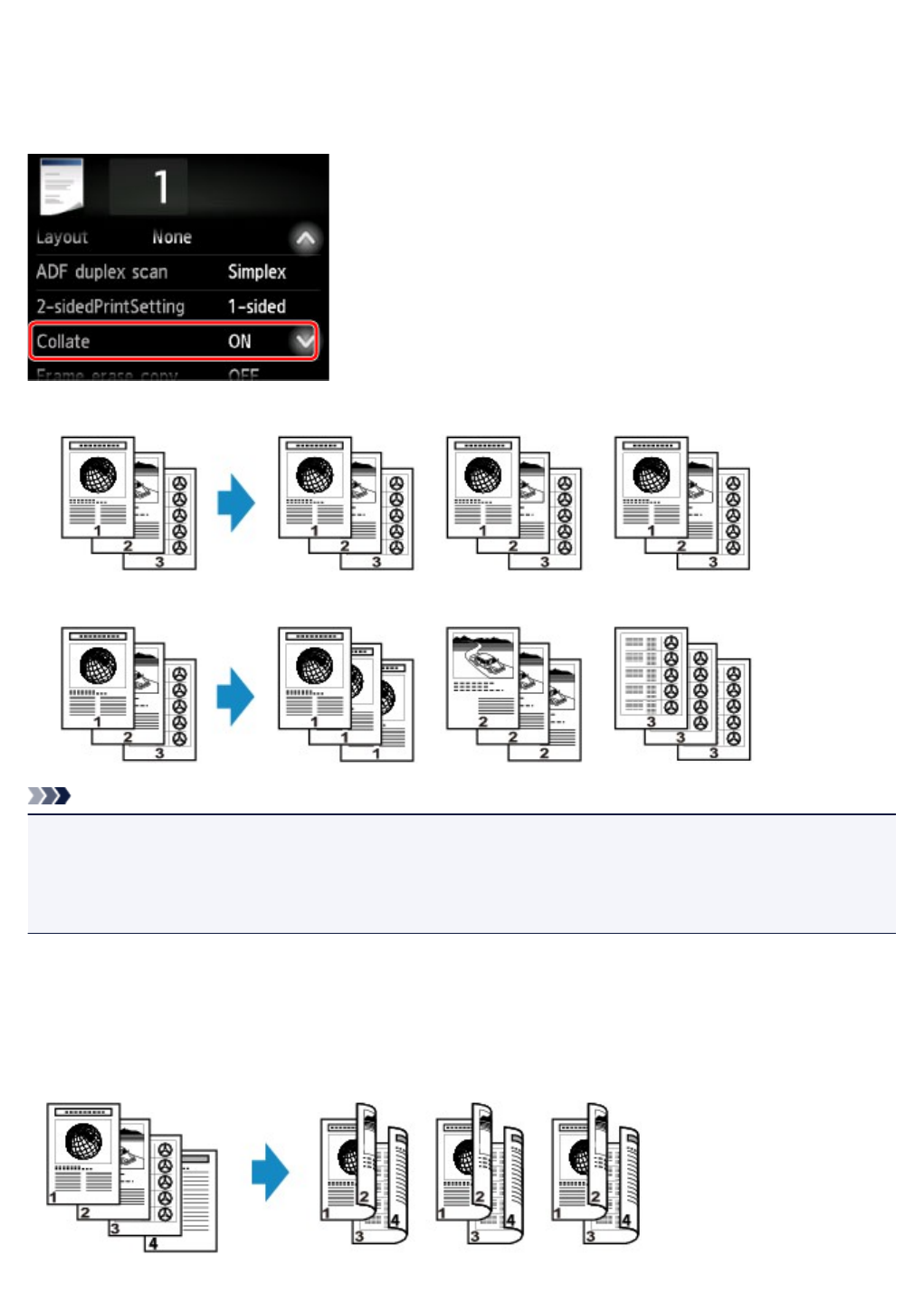
Collated Copying
You can obtain sorted printouts when making multiple copies of a multi-paged original.
When you select ON for Collate in Copy, you can obtain sorted printouts when making multiple copies of a
multi-paged original. In addition, you can copy originals on both sides of paper.
• When ON is selected:
• When OFF is selected:
Note
• When you use this function, load the original in the ADF.
• The number of pages the printer can read varies with the document. If Device memory is full. Cannot
continue process. appears on the touch screen when scanning, reduce the number of document
pages to scan and try copying again.
Collated Copying in Combination with Two-Sided Copying
Collated copying is also available when two-sided copying is selected.
If you use this function in combination, select the two-sided copy setting for ADF duplex scan and 2-
sidedPrintSetting and select the stapling side of print paper on the Print settings screen.
662

Copying from Smartphone/Tablet
Installing Canon PRINT Inkjet/SELPHY on your smartphone/tablet allows you to perform copy settings or
operations from your smartphone/tablet.
Canon PRINT Inkjet/SELPHY is a Canon-made application and can be downloaded from App Store and
Google Play.
For iOS
For Android
1. Make sure machine is turned on.
2. Load paper.
3. Connect machine and your smartphone/tablet.
•Connection with a wireless router:
Wireless Connection
•Connection without a wireless router:
Using Machine with Direct Connection
4. Start application "Canon PRINT Inkjet/SELPHY" from your smartphone/tablet.
5. Make sure your machine is selected.
If not, select your machine.
6. Tap Copy on application.
7. Specify settings as necessary.
The setting items below are available.
•Copies
•Paper Size
•Media Type
•Magnification
•Copy Intensity
•Print Quality
8. Load original document on platen glass.
9. Tap Color on application for color copying or Black for black & white copying.
664

10. If screen asking you to enter password is displayed, enter password and tap OK on
application.
The machine starts copying.
Important
• The password is set at the time of purchase. The password is the printer serial number. The
printer serial number is printed on the sticker attached on the printer. It consists of 9 alphanumeric
characters (four alphabets followed by five numbers).
For details on setting password, see Setting Password.
665

Using IJ Scan Utility
What Is IJ Scan Utility (Scanner Software)?
Starting IJ Scan Utility
Scanning Documents Basics
Scanning Photos
Scanning with Favorite Settings
Scanning Originals Larger than the Platen (Image Stitch)
Adjusting Cropping Frames in the Image Stitch Window
Extracting Text from Scanned Images (OCR)
Sending Scanned Images via E-mail
Scanning Multiple Originals at One Time
Scanning Multiple Documents at One Time from the ADF (Auto Document
Feeder)
Scanning Both Sides of Each Document at One Time
Saving after Checking Scan Results
IJ Scan Utility Screens
668

What Is IJ Scan Utility (Scanner Software)?
IJ Scan Utility is an application that allows you to easily scan documents, photos, etc.
You can complete from scanning to saving at one time by simply clicking the corresponding icon in the IJ
Scan Utility main screen.
What You Can Do with IJ Scan Utility
Scan Easily according to Purposes
You can scan by simply clicking an icon such as Document to sharpen text in a document or magazine
for better readability, or Photo to scan with settings suitable for photos, according to the item type or
your purpose.
Note
• Refer to "IJ Scan Utility Main Screen" for details on the IJ Scan Utility main screen.
Save Scanned Images Automatically
Scanned images are automatically saved in a preset folder. You can change the folder as required.
Note
• The default save folders are as follows.
•Windows 10/Windows 8.1/Windows Vista:
Documents folder
•Windows 8/Windows 7:
My Documents folder
•Refer to "Settings Dialog Box" for how to specify a folder.
Integrate with Applications
You can utilize scanned images through integration with other applications; display scanned images in
your favorite application, attach them to e-mails, extract text from images, and more.
669
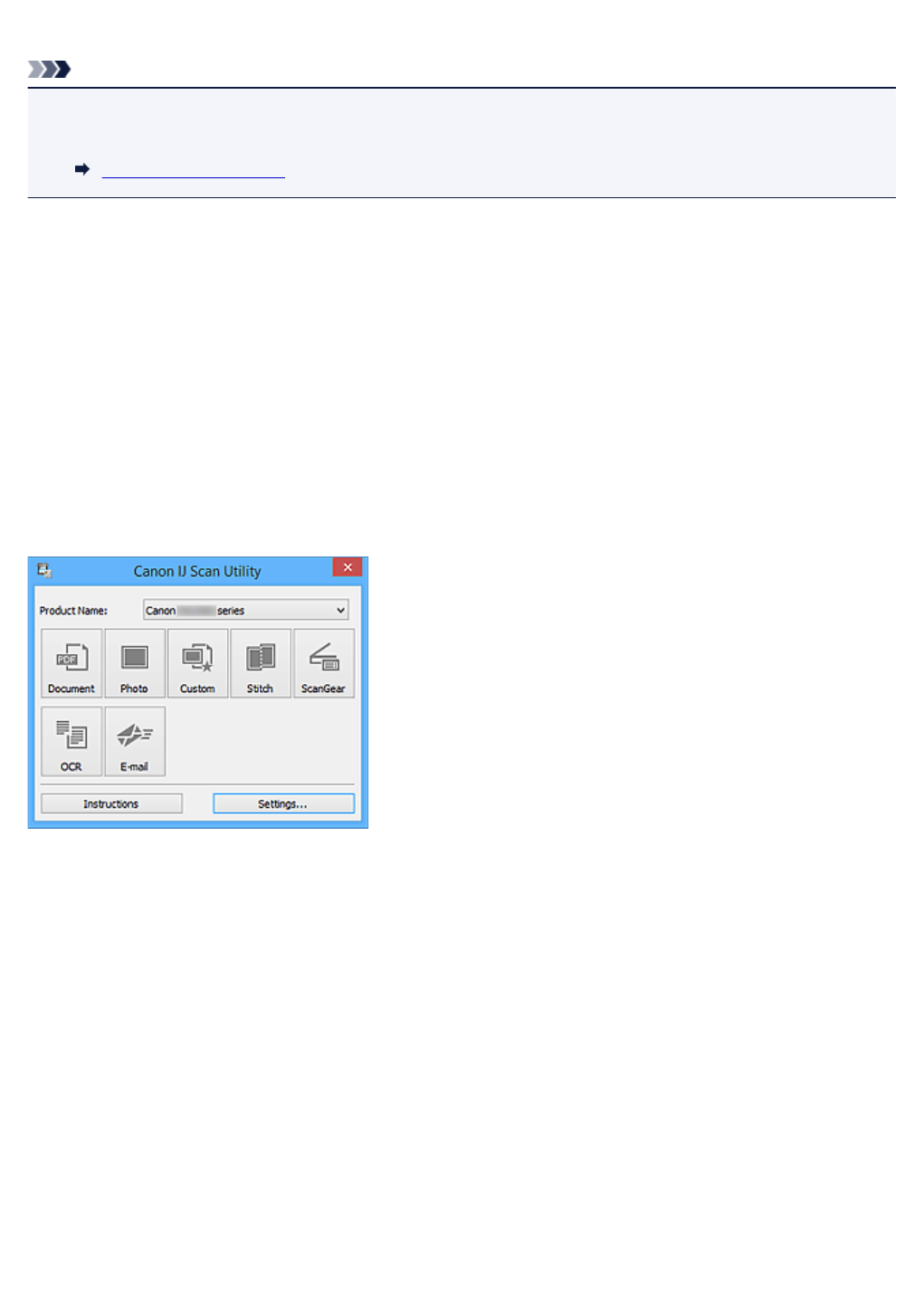
Starting IJ Scan Utility
Note
• If you have more than one scanner or have changed the connection from USB connection to network
connection, set up the network environment from IJ Scan Utility.
Network Scan Settings
Follow the steps below to start IJ Scan Utility.
Windows 10:
From Start menu, select All apps > Canon Utilities > IJ Scan Utility.
Windows 8.1/Windows 8:
Select IJ Scan Utility on the Start screen.
If IJ Scan Utility is not displayed on the Start screen, select the Search charm, and then search for "IJ Scan
Utility".
Windows 7/Windows Vista:
From Start menu, select All Programs > Canon Utilities > IJ Scan Utility > IJ Scan Utility.
671
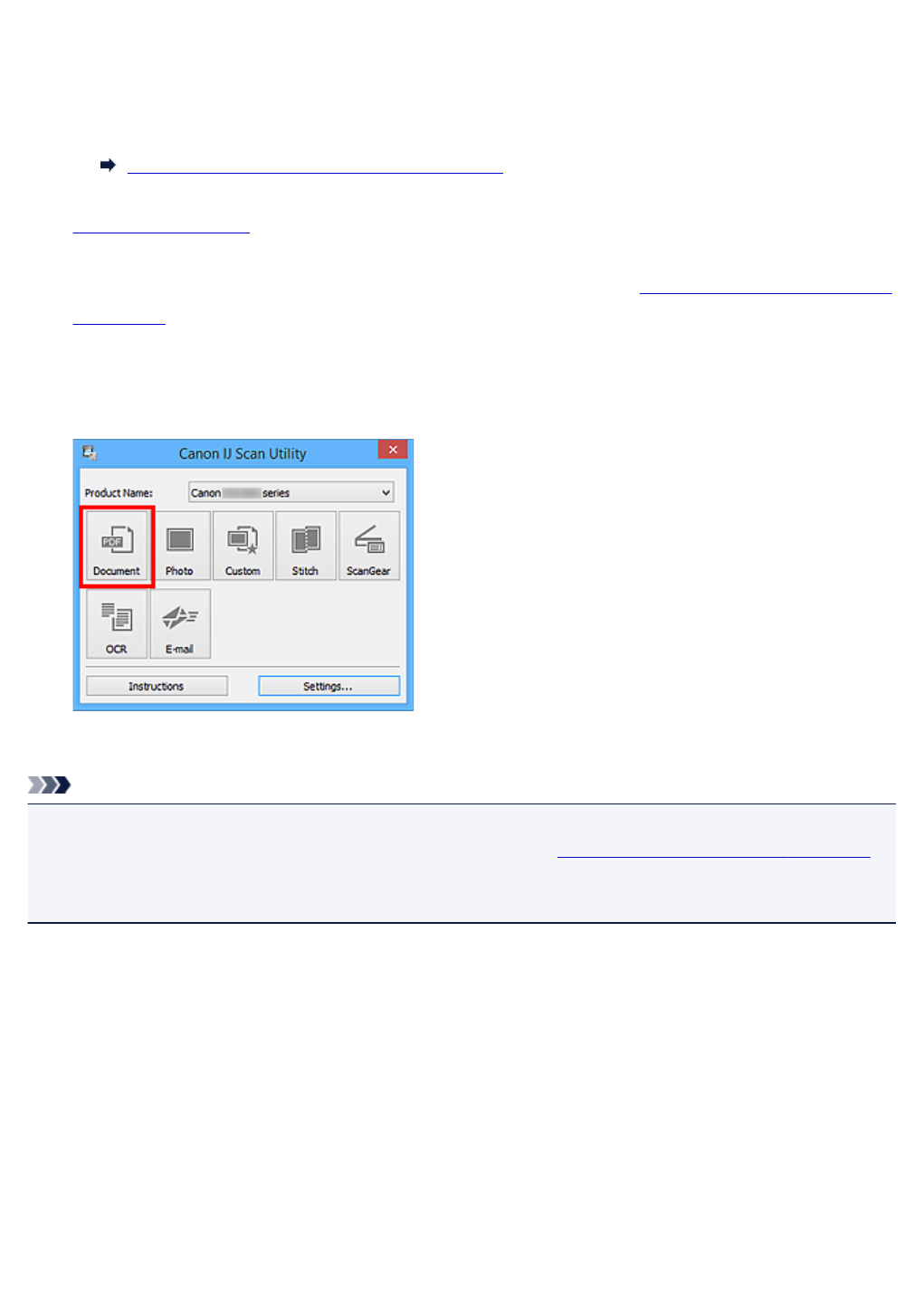
Scanning Documents
You can scan items placed on the platen with settings suitable for documents.
1. Place the item on the platen.
Positioning Originals (Scanning from Computer)
2. Start IJ Scan Utility.
3. Click Settings..., then set the paper size, resolution, etc. in the Settings (Document Scan)
dialog box as required.
When setting is completed, click OK.
4. Click Document.
Scanning starts.
Note
• Click Cancel to cancel the scan.
• Scanned images are saved in the folder set for Save in in the Settings (Document Scan) dialog box
displayed by clicking Settings.... In the Settings (Document Scan) dialog box, you can also make
advanced scan settings.
672

Scanning Photos
You can scan photos placed on the platen with settings suitable for photos.
1. Place the photo on the platen.
Positioning Originals (Scanning from Computer)
2. Start IJ Scan Utility.
3. Click Settings..., then set the paper size, resolution, etc. in the Settings (Photo Scan)
dialog box as required.
When setting is completed, click OK.
4. Click Photo.
Scanning starts.
Note
• Click Cancel to cancel the scan.
• Scanned images are saved in the folder set for Save in in the Settings (Photo Scan) dialog box
displayed by clicking Settings.... In the Settings (Photo Scan) dialog box, you can also make
advanced scan settings.
673

Scanning with Favorite Settings
You can scan items placed on the platen with your favorite settings saved beforehand.
This is convenient for saving frequently used settings or when specifying scan settings in detail.
1. Start IJ Scan Utility.
2. Click Settings..., then set the item type, resolution, etc. in the Settings (Custom Scan)
dialog box as required.
When setting is completed, click OK.
Note
•Once the settings are made, you can scan with the same settings from the next time.
3. Place the item on the platen.
Positioning Originals (Scanning from Computer)
4. Click Custom.
Scanning starts.
Note
• Click Cancel to cancel the scan.
• Scanned images are saved in the folder set for Save in in the Settings (Custom Scan) dialog box
displayed by clicking Settings.... In the Settings (Custom Scan) dialog box, you can also make
advanced scan settings.
674

Scanning Originals Larger than the Platen (Image Stitch)
You can scan the left and right halves of an item larger than the platen and combine them back into one
image. Items up to approximately twice as large as the platen are supported.
Note
• The following explains how to scan from the item to be placed on the left side.
1. Start IJ Scan Utility.
2. Click Settings..., then set the item type, resolution, etc. in the Settings (Scan and Stitch)
dialog box as required.
When setting is completed, click OK.
3. Click Stitch.
The Image Stitch window appears.
4. In Select Output Size, select an output size according to the paper size.
675

5. Make sure that Scan from Left is selected in Scan Direction.
6. Place the item that is to be displayed on the left side of the screen face-down on the platen.
7. Click Start Scanning Image 1.
676

The first item is scanned and appears in 1.
Note
• Click Cancel to cancel the scan.
8. Place the item that is to be displayed on the right side of the screen face-down on the
platen.
9. Click Start Scanning Image 2.
677

The second item is scanned and appears in 2.
Note
•Click Cancel to cancel the scan.
10. Adjust the scanned images as required.
Use the Toolbar to rotate or zoom in/out, or drag the images to adjust their positions.
Note
• Select the Adjust cropping frames checkbox to specify the area to be saved.
Adjusting Cropping Frames in the Image Stitch Window
• To scan an item again, select the image in the Preview area or the thumbnail at the top of the
screen, then click (Delete). The selected image is deleted, allowing you to scan the item
again.
11. Click Save.
678

Adjusting Cropping Frames in the Image Stitch Window
"Cropping" is the act of selecting the area you want to keep in an image and discarding the rest when
scanning it.
In the Image Stitch window, you can specify a cropping frame on the image displayed in the Preview area.
Note
• Refer to "Adjusting Cropping Frames (ScanGear)" for your model from Home of the Online Manual for
how to adjust cropping frames with ScanGear (scanner driver).
Initial Cropping Frame
No cropping frame is specified. When you select the Adjust cropping frames checkbox, an active
cropping frame is automatically specified around the image in the Preview area. You can drag the
cropping frame to specify the area.
When you perform a scan, the image in the area specified with the cropping frame will be scanned.
Adjusting a Cropping Frame
The cursor will change into (Arrow) when it is positioned over a cropping frame. Click and
drag the mouse to expand or contract the cropping frame.
The cursor will change into (Crosshair Arrow) when it is positioned within a cropping frame. Click and
drag the mouse to move the entire cropping frame.
Deleting Cropping Frames
To delete the cropping frame, deselect the Adjust cropping frames checkbox.
680

Extracting Text from Scanned Images (OCR)
Click OCR in the IJ Scan Utility main screen to scan text in scanned magazines and newspapers and
display it in a specified application.
Note
• You can also extract text from Document, Custom, or ScanGear.
1. Start IJ Scan Utility.
2. Click Settings..., then set the document type, resolution, etc. in the Settings (OCR) dialog
box, and then select the application in which you want to display the result.
When setting is completed, click OK.
Note
•For Resolution, only 300 dpi or 400 dpi can be set.
•If a compatible application is not installed, the text in the image is extracted and appears in your
text editor.
Text to be displayed is based on Document Language in the Settings (General Settings) dialog
box. Select the language you want to extract in Document Language and scan.
• You can add the application from the pull-down menu.
3. Click OCR.
Scanning starts.
When scanning is completed, the scanned images are saved according to the settings, and the extracted
text appears in the specified application.
Note
•Click Cancel to cancel the scan.
•Text displayed in your text editor is for guidance only. Text in the image of the following types of
documents may not be detected correctly.
•Documents containing text with font size outside the range of 8 points to 40 points (at 300 dpi)
•Slanted documents
681

• Documents placed upside down or documents with text in the wrong orientation (rotated
characters)
• Documents containing special fonts, effects, italics, or hand-written text
•Documents with narrow line spacing
• Documents with colors in the background of text
• Documents containing multiple languages
682

Sending Scanned Images via E-mail
You can send scanned images via e-mail easily by simply clicking E-mail in the IJ Scan Utility main screen.
Note
• You can also send scanned images via e-mail from Document, Photo, Custom, or ScanGear.
1. Start IJ Scan Utility.
2. Click Settings..., then set the item type, resolution, etc. in the Settings (E-mail) dialog box,
and then select an e-mail client.
When setting is completed, click OK.
3. Place the item on the platen.
Positioning Originals (Scanning from Computer)
4. Click E-mail.
Scanning starts.
When scanning is completed, the specified e-mail client starts and the images will be attached to a new
message.
Note
•Click Cancel to cancel the scan.
•The scanned images are saved according to the settings made in the Settings dialog box.
•If the Check scan results and specify save settings checkbox is selected in the Settings dialog
box, the Save Settings dialog box appears. After you set the save options and click OK, the
scanned images are saved and automatically attached to a new message of the specified e-mail
client.
5. Specify the recipient, enter the subject and message, then send e-mail.
Refer to the manual of your e-mail client for e-mail settings.
683

Scanning Multiple Originals at One Time
You can scan two or more photos (small items) placed on the platen at one time and save each image
individually.
Important
• The following types of items may not be scanned correctly. In that case, adjust the cropping frames
(scan areas) in whole image view of ScanGear (scanner driver) and scan again.
• Photos that have a whitish background
• Items printed on white paper, hand-written documents, business cards, etc.
• Thin items
• Thick items
Refer to "Scanning Multiple Documents at One Time with ScanGear (Scanner Driver)" for your model
from Home of the Online Manual for details.
Note
• The screens for scanning with favorite settings are used as examples in the following descriptions.
1. Place the items on the platen.
Positioning Originals (Scanning from Computer)
2. Start IJ Scan Utility.
3. Click Settings....
The Settings dialog box appears.
4. Click Custom Scan.
684

5. Select Select Source according to the items to be scanned.
6. Select Auto scan for Paper Size, then click OK.
685

The IJ Scan Utility main screen appears.
Note
• Refer to the following pages for details on the setting items in the Settings dialog box.
Settings (Document Scan) Dialog Box
Settings (Photo Scan) Dialog Box
Settings (Custom Scan) Dialog Box
Settings (OCR) Dialog Box
Settings (E-mail) Dialog Box
7. Click Custom.
Multiple items are scanned at one time.
Note
• Click Cancel to cancel the scan.
686

• Scanned images are saved in the folder set for Save in in the corresponding Settings dialog box
displayed by clicking Settings.... In each Settings dialog box, you can also make advanced scan
settings.
687

Scanning Multiple Documents at One Time from the ADF (Auto
Document Feeder)
Place multiple documents on the ADF (Auto Document Feeder) and scan at one time.
This section explains how to scan one side of the documents at a time. To scan both sides of the documents
automatically, refer to "Scanning Both Sides of Each Document at One Time".
Note
• You can scan multiple documents at one time from the ADF when scanning via Document, Custom,
ScanGear, OCR, or E-mail.
Refer to "Scanning Using Application Software (ScanGear)" for your model from Home of the Online
Manual for how to scan using ScanGear (scanner driver).
• The screens for scanning documents are used as examples in the following descriptions.
1. Place the documents on the ADF.
Placing Documents (ADF (Auto Document Feeder))
2. Start IJ Scan Utility.
3. Click Settings....
The Settings dialog box appears.
4. Click Document Scan.
688

5. Select Select Source according to the documents to be scanned.
To scan only the front side of each document, select Document (ADF/Platen) or Document (ADF
Simplex).
To scan the front side then the back side of each document, select Document (ADF Manual Duplex).
6. Set the color mode, document size, and scanning resolution as required.
689

Click Document Scan Orientation Settings... to specify the orientation of the documents to be
scanned. In the displayed dialog box, you can specify the Orientation and Binding Side. How to place
the documents when scanning the back sides depends on the Binding Side.
When setting is completed, click OK.
The IJ Scan Utility main screen appears.
Note
• Refer to the following pages for details on the setting items in the Settings dialog box.
Settings (Document Scan) Dialog Box
Settings (Custom Scan) Dialog Box
Settings (OCR) Dialog Box
Settings (E-mail) Dialog Box
7. Click Document.
Scanning starts.
690

Note
• Click Cancel to cancel the scan.
When Document (ADF Manual Duplex) is selected for Select Source, proceed to Step 8.
Note
•When Document (ADF Duplex) is selected for Select Source, the Manual Duplex Scanning
dialog box does not appear; both sides of the documents are scanned automatically. Refer to
"Scanning Both Sides of Each Document at One Time" for details.
8. Follow the on-screen instructions to place the documents.
Note
•The screens for scanning with Orientation set to Portrait are used as examples in the following
descriptions.
When Long edge is Selected for Binding Side in Document Scan Orientation Settings...:
Place the documents after rotating the output documents 180 degrees.
When Short edge is Selected for Binding Side in Document Scan Orientation Settings...:
Place the documents without changing the orientation of the output documents.
691

9. Click OK.
Scanning starts.
Note
• Click Cancel to cancel the scan.
• Scanned images are saved in the folder set for Save in in the corresponding Settings dialog box
displayed by clicking Settings.... In each Settings dialog box, you can also make advanced scan
settings.
692

Scanning Both Sides of Each Document at One Time
Scan both sides of each document at one time using the ADF (Auto Document Feeder).
Note
• You can scan multiple documents at one time from the ADF when scanning via Document, Custom,
ScanGear, OCR, or E-mail.
Refer to "Scanning Using Application Software (ScanGear)" for your model from Home of the Online
Manual for how to scan using ScanGear (scanner driver).
• The screens for scanning documents are used as examples in the following descriptions.
1. Place the documents on the ADF.
Placing Documents (ADF (Auto Document Feeder))
2. Start IJ Scan Utility.
3. Click Settings....
The Settings dialog box appears.
4. Click Document Scan.
693

5. Select Document (ADF/Platen) or Document (ADF Duplex) for Select Source.
Note
•Select the Scan both sides when scanning from the ADF checkbox in Scan Options when
scanning via Document (ADF/Platen).
6. Set the color mode, document size, and scanning resolution as required.
694

Click Document Scan Orientation Settings... to specify the orientation of the documents
to be scanned. In the displayed dialog box, you can specify the Orientation and Binding
Side.
When setting is completed, click OK.
The IJ Scan Utility main screen appears.
Note
• Refer to the following pages for details on the setting items in the Settings dialog box.
Settings (Document Scan) Dialog Box
Settings (Custom Scan) Dialog Box
Settings (OCR) Dialog Box
Settings (E-mail) Dialog Box
7. Click Document.
Both sides of the documents are scanned automatically.
695

Note
• Click Cancel to cancel the scan.
• Scanned images are saved in the folder set for Save in in the corresponding Settings dialog box
displayed by clicking Settings.... In each Settings dialog box, you can also make advanced scan
settings.
696

Saving after Checking Scan Results
You can check the scan results, then save the images to a computer.
Important
• You cannot check the scan results before saving when scanned using the operation panel.
Note
• The screens for scanning photos are used as examples in the following descriptions.
1. Start IJ Scan Utility.
2. Click Settings....
The Settings dialog box appears.
3. Click Photo Scan.
697

4. Select Check scan results and specify save settings checkbox, and then click OK.
The IJ Scan Utility main screen appears.
Note
• Refer to the following pages for details on the setting items in the Settings dialog box.
Settings (Document Scan) Dialog Box
Settings (Photo Scan) Dialog Box
Settings (Custom Scan) Dialog Box
Settings (Scan and Stitch) Dialog Box
Settings (ScanGear) Dialog Box
Settings (OCR) Dialog Box
Settings (E-mail) Dialog Box
5. Click Photo.
Scanning starts.
698

When scanning is completed, the Save Settings dialog box appears.
Note
•Click Cancel to cancel the scan.
6. Change the image order or file save options as required.
You can change the image order or file save options in the Save Settings dialog box.
Note
•The default save folders are as follows.
•Windows 10/Windows 8.1/Windows Vista:
Documents folder
•Windows 8/Windows 7:
My Documents folder
7. Click OK.
Scanned images are saved according to the settings.
699

IJ Scan Utility Screens
IJ Scan Utility Main Screen
Settings Dialog Box
Settings (Document Scan) Dialog Box
Settings (Photo Scan) Dialog Box
Settings (Custom Scan) Dialog Box
Settings (Scan and Stitch) Dialog Box
Settings (ScanGear) Dialog Box
Settings (OCR) Dialog Box
Settings (E-mail) Dialog Box
Settings (Save to PC (Document)) Dialog Box
Settings (Save to PC (Photo)) Dialog Box
Settings (Attach to E-mail (Document)) Dialog Box
Settings (Attach to E-mail (Photo)) Dialog Box
Settings (General Settings) Dialog Box
Save Settings Dialog Box
Password Security Settings Dialog Box
Image Stitch Window
700

IJ Scan Utility Main Screen
Follow the steps below to start IJ Scan Utility.
Windows 10:
From Start menu, select All apps > Canon Utilities > IJ Scan Utility to start IJ Scan Utility.
Windows 8.1/Windows 8:
Select IJ Scan Utility on Start screen to start IJ Scan Utility.
If IJ Scan Utility is not displayed on the Start screen, select the Search charm, and then search for "IJ Scan
Utility".
Windows 7/Windows Vista:
From Start menu, select All Programs > Canon Utilities > IJ Scan Utility > IJ Scan Utility to start IJ Scan
Utility.
You can complete from scanning to saving at one time by simply clicking the corresponding icon.
Product Name
Displays the name of the product that IJ Scan Utility is currently set to use.
If the displayed product is not the one you want to use, select the desired product from the list.
In addition, for network connection, select one with "Network" after the product name.
Note
• Refer to "Network Scan Settings" for how to set up a network environment.
Document
Scans items as documents and saves them to a computer.
Scan/save settings and the response after scanning can be specified in the Settings (Document Scan)
dialog box.
Photo
Scans items as photos and saves them to a computer.
Scan/save settings and the response after scanning can be specified in the Settings (Photo Scan)
dialog box.
701
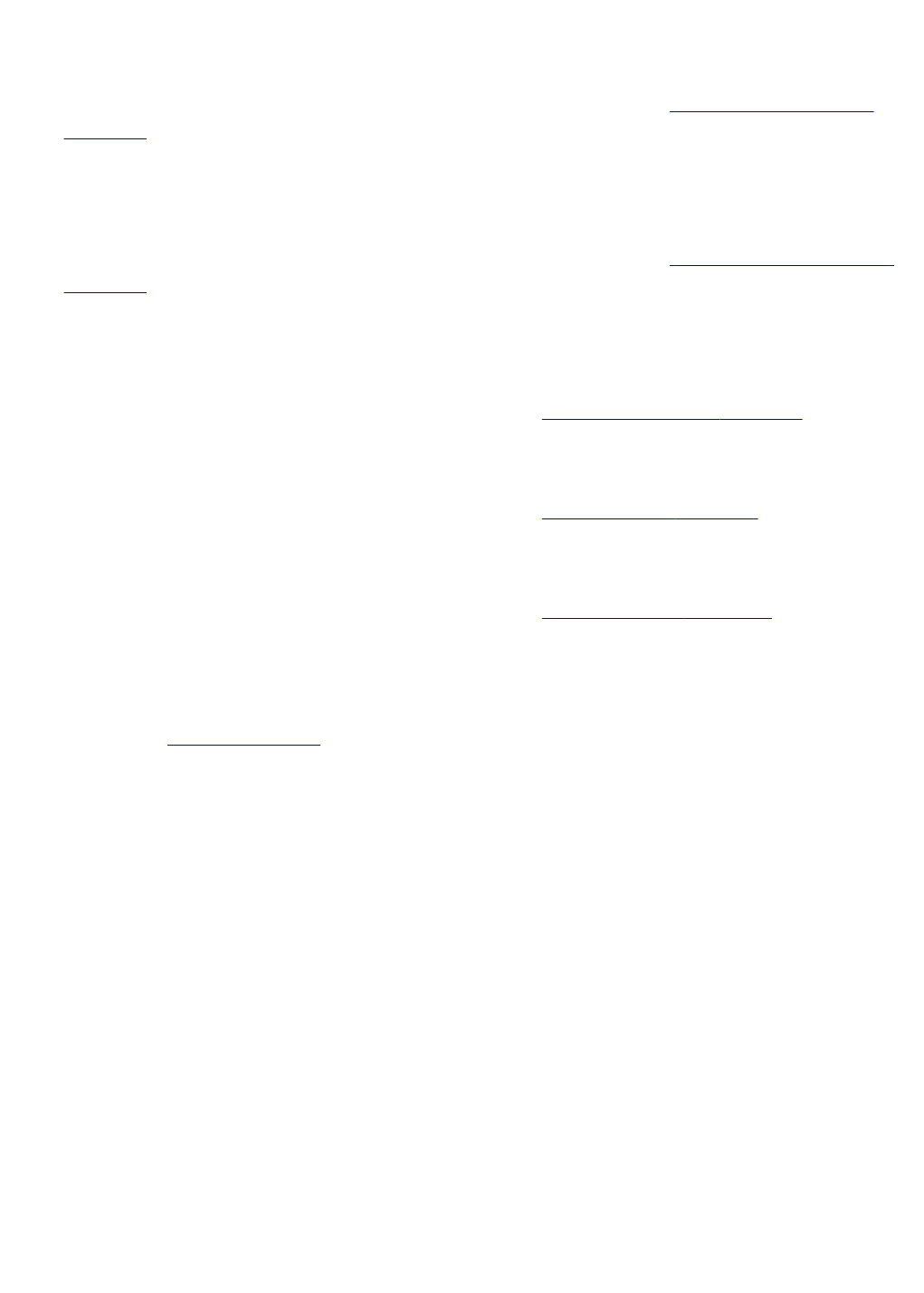
Custom
Scans items with your favorite settings and saves the images to a computer. The item type can be
automatically detected.
Scan/save settings and the response after scanning can be specified in the Settings (Custom Scan)
dialog box.
Stitch
Displays the Image Stitch window in which you can scan the left and right halves of an item larger than
the platen and combine the scanned images back into one image.
Scan/save settings and the response after scanning can be specified in the Settings (Scan and Stitch)
dialog box.
ScanGear
Starts ScanGear (scanner driver) in which you can make image corrections and color adjustments
when scanning.
Scan/save settings and applications can be specified in the Settings (ScanGear) dialog box.
OCR
Scan text in scanned magazines and newspapers and display it in a specified application.
Scan/save settings and applications can be specified in the Settings (OCR) dialog box.
E-mail
You can send scanned images via e-mail.
Scan/save settings and applications can be specified in the Settings (E-mail) dialog box.
Instructions
Opens this guide.
Settings...
Displays the Settings dialog box in which you can specify the scan/save settings and the response after
scanning.
702

Settings Dialog Box
There are three tabs in the Settings dialog box: (Scanning from a Computer), (Scanning from the
Operation Panel), and (General Settings). When you click a tab, the view in the red frame switches and
you can make advanced settings to functions on each tab.
(Scanning from a Computer) Tab
You can specify how to respond when scanning from IJ Scan Utility.
Settings (Document Scan) Dialog Box
Settings (Photo Scan) Dialog Box
Settings (Custom Scan) Dialog Box
Settings (Scan and Stitch) Dialog Box
Settings (ScanGear) Dialog Box
Settings (OCR) Dialog Box
Settings (E-mail) Dialog Box
703

(Scanning from the Operation Panel) Tab
You can specify how to respond when scanning from the operation panel.
Settings (Save to PC (Document)) Dialog Box
Settings (Save to PC (Photo)) Dialog Box
Settings (Attach to E-mail (Document)) Dialog Box
Settings (Attach to E-mail (Photo)) Dialog Box
(General Settings) Tab
You can set the product to use, file size restriction on e-mail attachment, language to detect text in
images, and folder in which to save images temporarily.
Settings (General Settings) Dialog Box
704
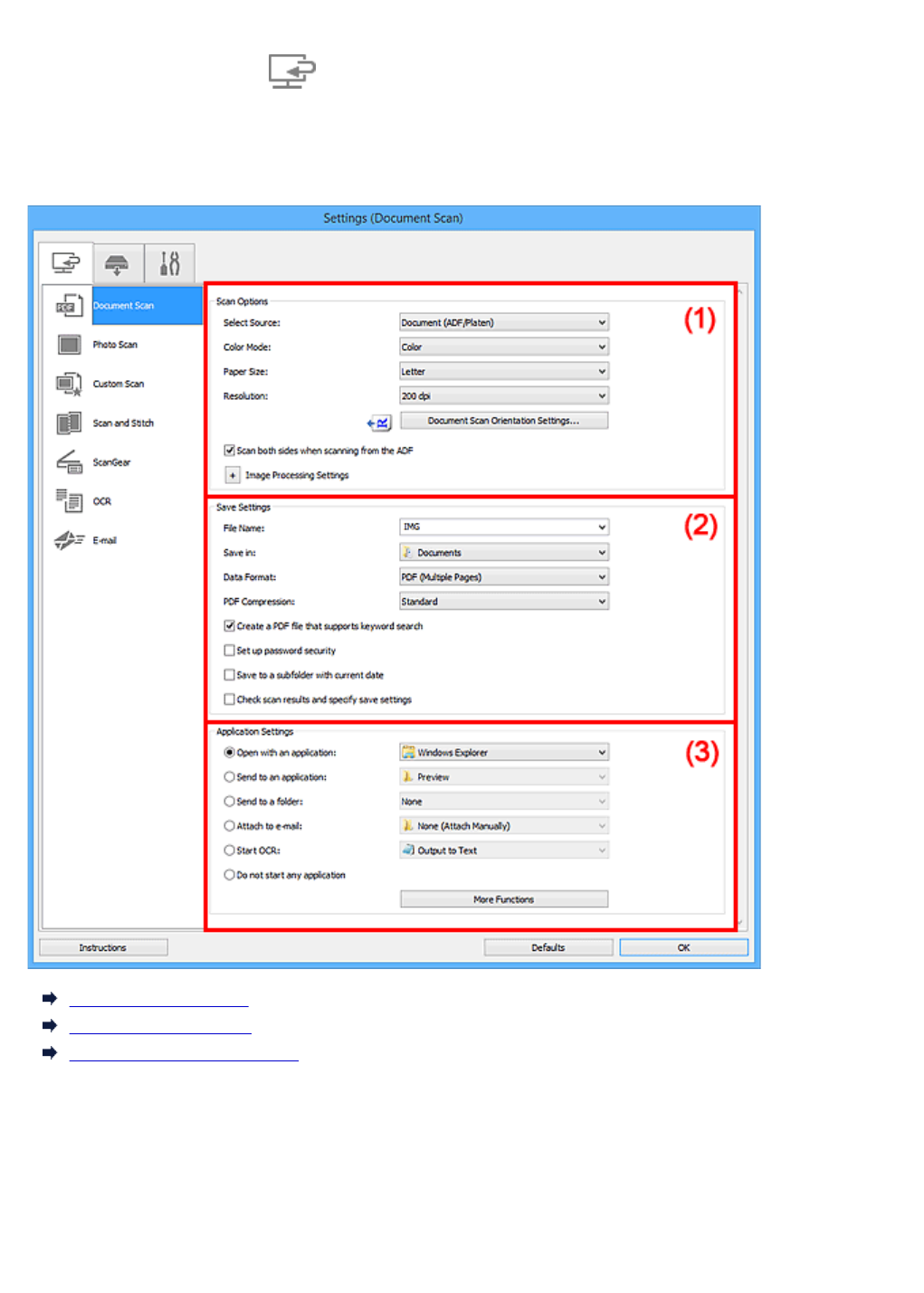
Settings (Document Scan) Dialog Box
Click Document Scan on the (Scanning from a Computer) tab to display the Settings (Document
Scan) dialog box.
In the Settings (Document Scan) dialog box, you can make advanced scan settings to scan items as
documents.
(1) Scan Options Area
(2) Save Settings Area
(3) Application Settings Area
(1) Scan Options Area
Select Source
Select the type of item to be scanned.
• Scanning documents: Document or Document (ADF/Platen)
• Scanning magazines: Magazine
705

• Scanning documents from the ADF (Auto Document Feeder): Document (ADF Simplex),
Document (ADF Manual Duplex), Document (ADF Duplex), or Document (ADF/Platen)
Note
• When Document (ADF/Platen) is selected and documents are placed both on the platen and
ADF, those placed on the ADF will be scanned.
Color Mode
Select the color mode in which to scan the item.
Paper Size
Select the size of the item to be scanned.
When you select Custom, a screen in which you can specify the paper size appears. Select a Unit,
then enter the Width and Height, and then click OK.
Note
• Click Defaults to restore the specified settings to the default settings.
Resolution
Select the resolution of the item to be scanned.
The higher the resolution (value), the more detail in your image.
Resolution
Note
• Only 300 dpi or 400 dpi can be set when Start OCR is selected in Application Settings.
Document Scan Orientation Settings...
This appears when you select ADF for Select Source.
Click to display the Document Scan Orientation Settings dialog box in which you can set the
orientation and binding side of the documents to be scanned from the ADF.
706

Important
•Binding Side cannot be specified when scanning only the front side of each document.
Scan both sides when scanning from the ADF
This appears when you select Document (ADF/Platen) for Select Source. Scans both sides of the
documents placed on the ADF.
Image Processing Settings
Click (Plus) to set the following.
Note
• The displayed items vary by Select Source and Color Mode.
Apply Auto Document Fix
Select this checkbox to sharpen text in a document or magazine for better readability.
Important
• The color tone may differ from the source image due to corrections. In that case, deselect
the checkbox and scan.
Note
• Scanning takes longer than usual when you enable this function.
Sharpen outline
Emphasizes the outline of the subjects to sharpen the image.
Reduce show-through
Sharpens text in an item or reduces show-through in newspapers, etc.
Reduce moire
Reduces moire patterns.
Printed materials are displayed as a collection of fine dots. "Moire" is a phenomenon where
uneven gradation or a stripe pattern appears when such photos or pictures printed with fine dots
are scanned.
707
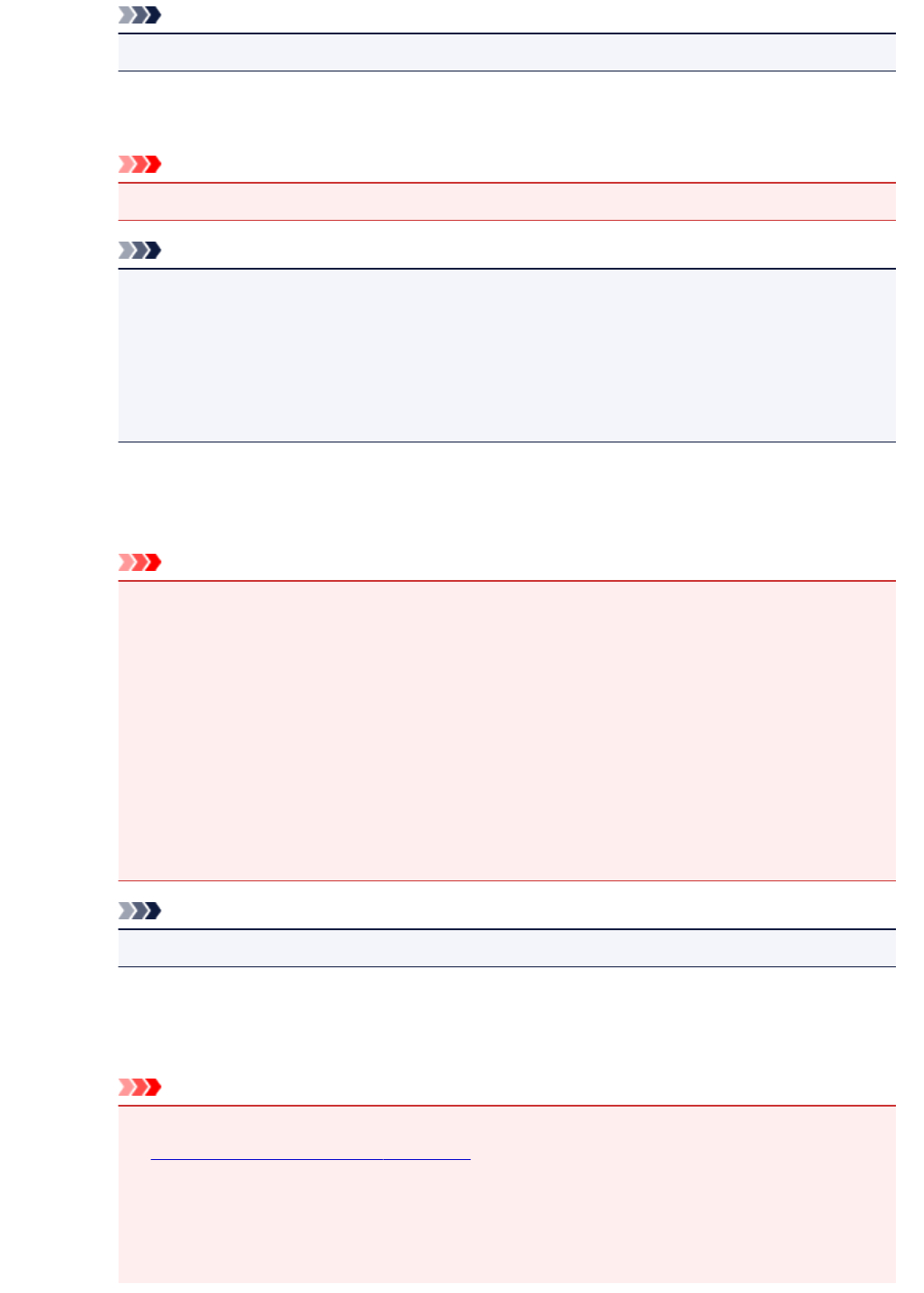
Note
• Scanning takes longer than usual when you enable Reduce moire.
Reduce gutter shadow/Reduce gutter shadow (platen)
Reduces gutter shadows that appear between pages when scanning open booklets.
Important
• This function is available only when scanning from the platen.
Note
• Use ScanGear (scanner driver)'s Advanced Mode tab to correct gutter shadows when
scanning non-standard size items or specified areas.
Refer to "Gutter Shadow Correction" for your model from Home of the Online Manual for
details.
• When you enable this function, scanning may take longer than usual with network
connection.
Correct slanted text document
Detects the scanned text and corrects the angle (within -0.1 to -10 degrees or +0.1 to +10
degrees) of the document.
Important
• The following types of documents may not be corrected properly since the text cannot be
detected correctly.
• Documents in which the text lines are inclined more than 10 degrees or the angles vary
by line
• Documents containing both vertical and horizontal text
• Documents with extremely large or small fonts
• Documents with small amount of text
• Documents containing figures/images
• Hand-written text
• Documents containing both vertical and horizontal lines (tables)
Note
• Scanning takes longer than usual when you enable Correct slanted text document.
Detect the orientation of text document and rotate image
Automatically rotates the image to the correct orientation by detecting the orientation of text in
the scanned document.
Important
• Only text documents written in the language selected from Document Language in the
Settings (General Settings) dialog box are supported.
• The orientation may not be detected for the following types of settings or documents since
the text cannot be detected correctly.
• Resolution is outside the range of 300 dpi to 600 dpi
• Font size is outside the range of 8 points to 48 points
708

• Documents containing special fonts, effects, italics, or hand-written text
• Documents with patterned backgrounds
In that case, select the Check scan results and specify save settings checkbox, and then
rotate the image in the Save Settings dialog box.
(2) Save Settings Area
File Name
Enter the file name of the image to be saved. When you save a file, the date and four digits are
appended to the set file name in the "_20XX0101_0001" format.
Note
• When you select the Save to a subfolder with current date checkbox, the date and four digits
are appended to the set file name.
Save in
Displays the folder in which to save the scanned images. To add a folder, select Add... from the pull-
down menu, then click Add in the displayed Select Destination Folder dialog box and specify the
destination folder.
The default save folders are as follows.
•Windows 10/Windows 8.1/Windows Vista:
Documents folder
•Windows 8/Windows 7:
My Documents folder
Data Format
Select the data format in which to save the scanned images.
You can select JPEG/Exif, TIFF, PNG, PDF, or PDF (Multiple Pages).
Important
• You cannot select JPEG/Exif when Color Mode is Black and White.
• When Start OCR is selected in Application Settings, you cannot select PDF or PDF (Multiple
Pages).
Note
•With network connection, scanning may take longer than usual when you set TIFF or PNG in
Data Format.
PDF Compression
Select the compression type for saving PDF files.
Standard
It is recommended that you normally select this setting.
High
Compresses the file size when saving, allowing you to reduce the load on your network/server.
709

Important
• This appears only when PDF or PDF (Multiple Pages) is selected in Data Format.
• When Black and White is selected in Color Mode, this option does not appear.
JPEG Image Quality
You can specify the image quality of JPEG files.
Important
• This appears only when JPEG/Exif is selected in Data Format.
Create a PDF file that supports keyword search
Select this checkbox to convert text in images into text data and create PDF files that support
keyword search.
Important
• This appears only when PDF or PDF (Multiple Pages) is selected in Data Format.
Note
• If text cannot be searched correctly, we recommend that you select 300 dpi or higher for
Resolution.
• PDF files that are searchable in the language selected in Document Language on the
(General Settings) tab of the Settings dialog box are created.
Set up password security
Select this checkbox to display the Password Security Settings dialog box.
Important
• This appears only when PDF or PDF (Multiple Pages) is selected in Data Format.
Save to a subfolder with current date
Select this checkbox to create a current date folder in the folder specified in Save in and save
scanned images in it. The folder will be created with a name such as "20XX_01_01"
(Year_Month_Date).
If this checkbox is not selected, files are saved directly in the folder specified in Save in.
Check scan results and specify save settings
Displays the Save Settings dialog box after scanning.
(3) Application Settings Area
Open with an application
Select this when you want to enhance or correct the scanned images.
You can specify the application from the pull-down menu.
Send to an application
Select this when you want to use the scanned images as they are in an application that allows you to
browse or organize images.
You can specify the application from the pull-down menu.
710

Send to a folder
Select this when you also want to save the scanned images to a folder other than the one specified in
Save in.
You can specify the folder from the pull-down menu.
Attach to e-mail
Select this when you want to send e-mails with the scanned images attached.
You can specify the e-mail client you want to start from the pull-down menu.
Start OCR
Select this when you want to convert text in the scanned image into text data.
You can specify the application from the pull-down menu.
Do not start any application
Saves to the folder specified in Save in.
Note
• To add an application or folder to the pull-down menu, select Add... from the pull-down menu, then
click Add in the displayed Select Application or Select Destination Folder dialog box and specify
the application or folder.
Instructions
Opens this guide.
Defaults
You can restore the settings in the displayed screen to the default settings.
711
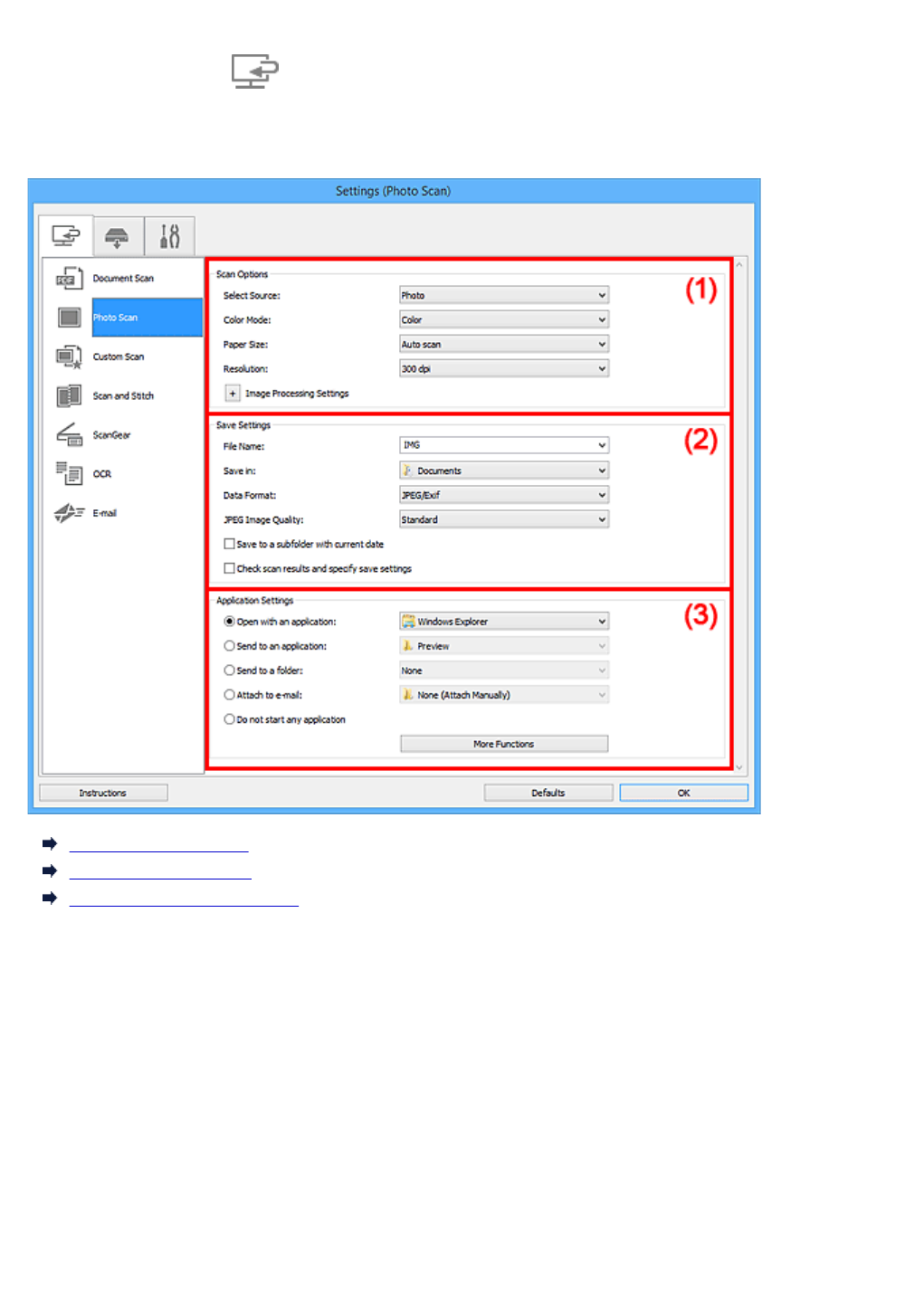
Settings (Photo Scan) Dialog Box
Click Photo Scan on the (Scanning from a Computer) tab to display the Settings (Photo Scan)
dialog box.
In the Settings (Photo Scan) dialog box, you can make advanced scan settings to scan items as photos.
(1) Scan Options Area
(2) Save Settings Area
(3) Application Settings Area
(1) Scan Options Area
Select Source
Photo is selected.
Color Mode
Select the color mode in which to scan the item.
Paper Size
Select the size of the item to be scanned.
When you select Custom, a screen in which you can specify the paper size appears. Select a Unit,
then enter the Width and Height, and then click OK.
712

Note
• Click Defaults to restore the specified settings to the default settings.
Resolution
Select the resolution of the item to be scanned.
The higher the resolution (value), the more detail in your image.
Resolution
Image Processing Settings
Click (Plus) to set the following.
Important
• When Color Mode is Black and White, Image Processing Settings is not available.
Sharpen outline
Emphasizes the outline of the subjects to sharpen the image.
(2) Save Settings Area
File Name
Enter the file name of the image to be saved. When you save a file, the date and four digits are
appended to the set file name in the "_20XX0101_0001" format.
Note
• When you select the Save to a subfolder with current date checkbox, the date and four digits
are appended to the set file name.
Save in
Displays the folder in which to save the scanned images. To add a folder, select Add... from the pull-
down menu, then click Add in the displayed Select Destination Folder dialog box and specify the
destination folder.
The default save folders are as follows.
•Windows 10/Windows 8.1/Windows Vista:
Documents folder
•Windows 8/Windows 7:
My Documents folder
713
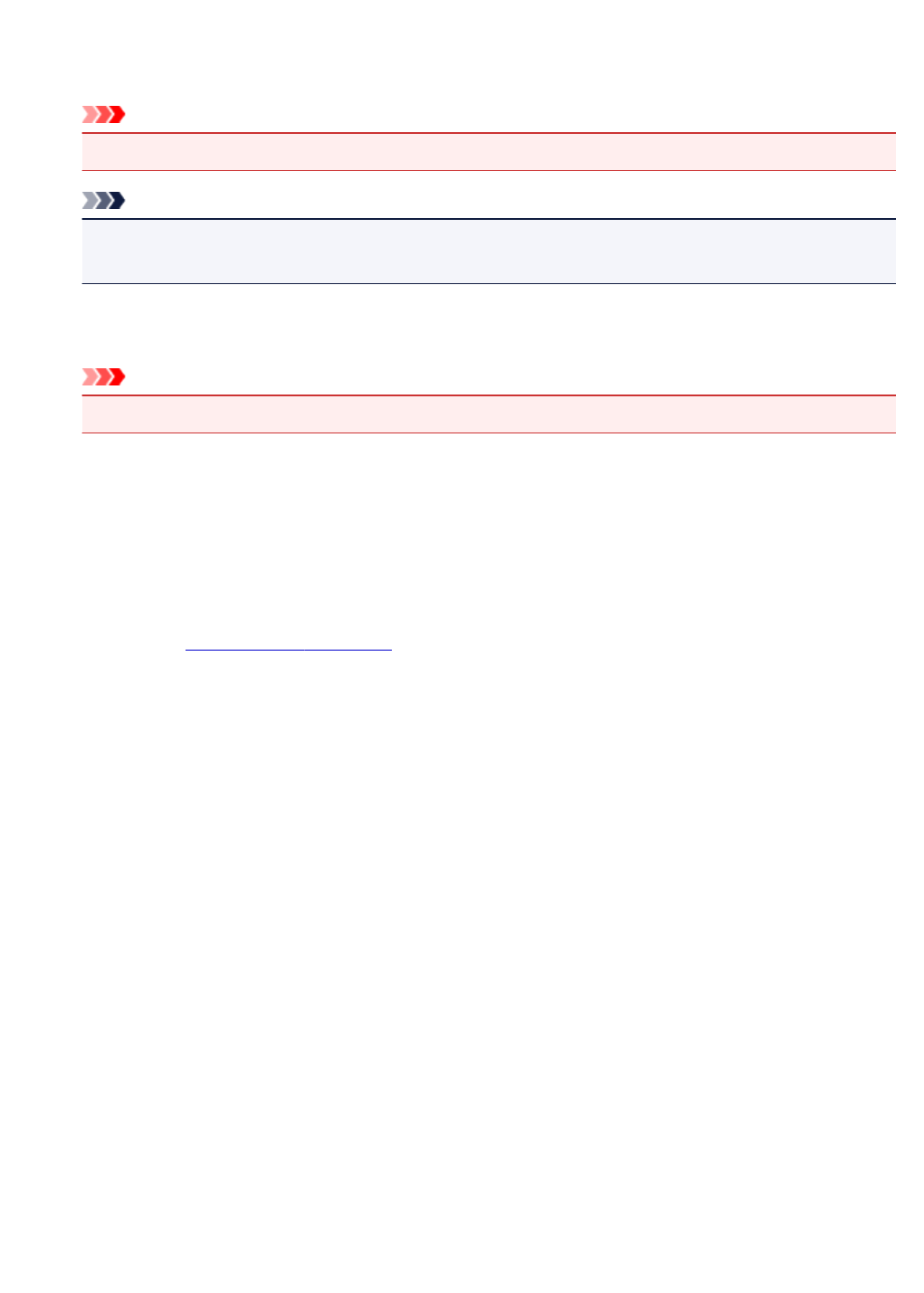
Data Format
Select the data format in which to save the scanned images.
You can select JPEG/Exif, TIFF, or PNG.
Important
• You cannot select JPEG/Exif when Color Mode is Black and White.
Note
• With network connection, scanning may take longer than usual when you set TIFF or PNG in
Data Format.
JPEG Image Quality
You can specify the image quality of JPEG files.
Important
• This appears only when JPEG/Exif is selected in Data Format.
Save to a subfolder with current date
Select this checkbox to create a current date folder in the folder specified in Save in and save
scanned images in it. The folder will be created with a name such as "20XX_01_01"
(Year_Month_Date).
If this checkbox is not selected, files are saved directly in the folder specified in Save in.
Check scan results and specify save settings
Displays the Save Settings dialog box after scanning.
(3) Application Settings Area
Open with an application
Select this when you want to enhance or correct the scanned images.
You can specify the application from the pull-down menu.
Send to an application
Select this when you want to use the scanned images as they are in an application that allows you to
browse or organize images.
You can specify the application from the pull-down menu.
Send to a folder
Select this when you also want to save the scanned images to a folder other than the one specified in
Save in.
You can specify the folder from the pull-down menu.
Attach to e-mail
Select this when you want to send e-mails with the scanned images attached.
You can specify the e-mail client you want to start from the pull-down menu.
Do not start any application
Saves to the folder specified in Save in.
714

Note
• To add an application or folder to the pull-down menu, select Add... from the pull-down menu, then
click Add in the displayed Select Application or Select Destination Folder dialog box and specify
the application or folder.
Instructions
Opens this guide.
Defaults
You can restore the settings in the displayed screen to the default settings.
715
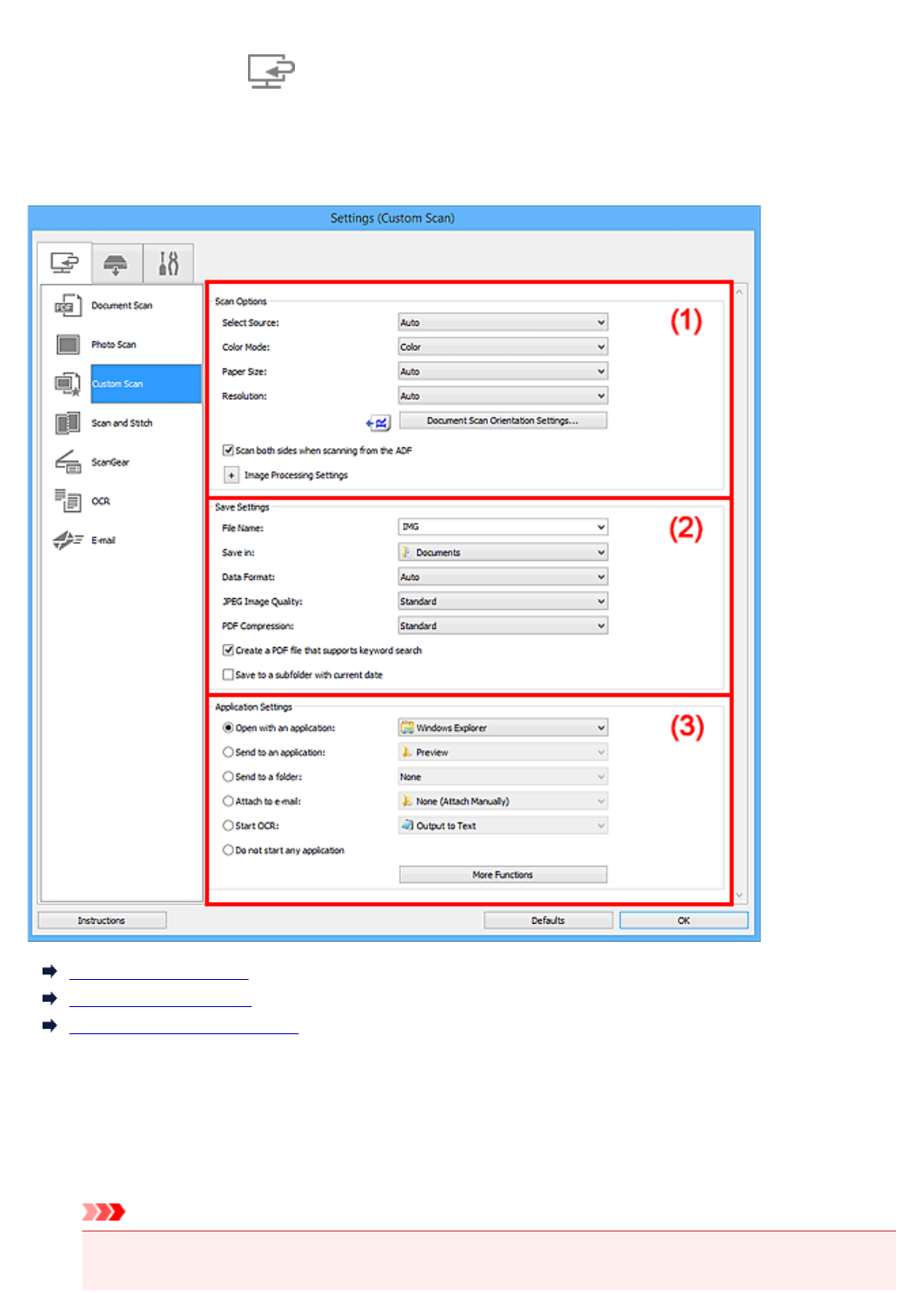
Settings (Custom Scan) Dialog Box
Click Custom Scan on the (Scanning from a Computer) tab to display the Settings (Custom Scan)
dialog box.
In the Settings (Custom Scan) dialog box, you can make advanced scan settings to scan according to your
preference.
(1) Scan Options Area
(2) Save Settings Area
(3) Application Settings Area
(1) Scan Options Area
Select Source
Select the type of item to be scanned. Select Auto to detect the item type automatically and to set
Color Mode, Paper Size, and Resolution automatically as well.
Important
• Item types supported by Auto are photos, postcards, business cards, magazines, newspapers,
documents, and BD/DVD/CD.
716

• To scan the following types of items, specify the item type or size. You cannot scan correctly with
Auto.
• A4 size photos
• Text documents smaller than 2L (5 inches x 7 inches) (127 mm x 178 mm), such as
paperback pages with the spine cut off
• Items printed on thin white paper
• Long narrow items such as panoramic photos
• Reflective disc labels may not be scanned as expected.
• Place items correctly according to the type of item to be scanned. Otherwise, items may not be
scanned correctly.
Refer to "Positioning Originals (Scanning from Computer)" for how to place items.
• When scanning two or more documents from the ADF (Auto Document Feeder), place
documents of the same size even if Auto is set.
Note
• To convert text in the image into text data after scanning, specify Select Source instead of
selecting Auto.
• To reduce moire, set Select Source to Magazine or select the Reduce moire checkbox in
Image Processing Settings.
Color Mode
Select the color mode in which to scan the item.
Note
• Only Color is available when Select Source is Auto.
Paper Size
Select the size of the item to be scanned.
When you select Custom, a screen in which you can specify the paper size appears. Select a Unit,
then enter the Width and Height, and then click OK.
Note
• Only Auto is available when Select Source is Auto.
• Click Defaults in the screen in which you can specify the paper size to restore the specified
settings to the default settings.
Resolution
Select the resolution of the item to be scanned.
717
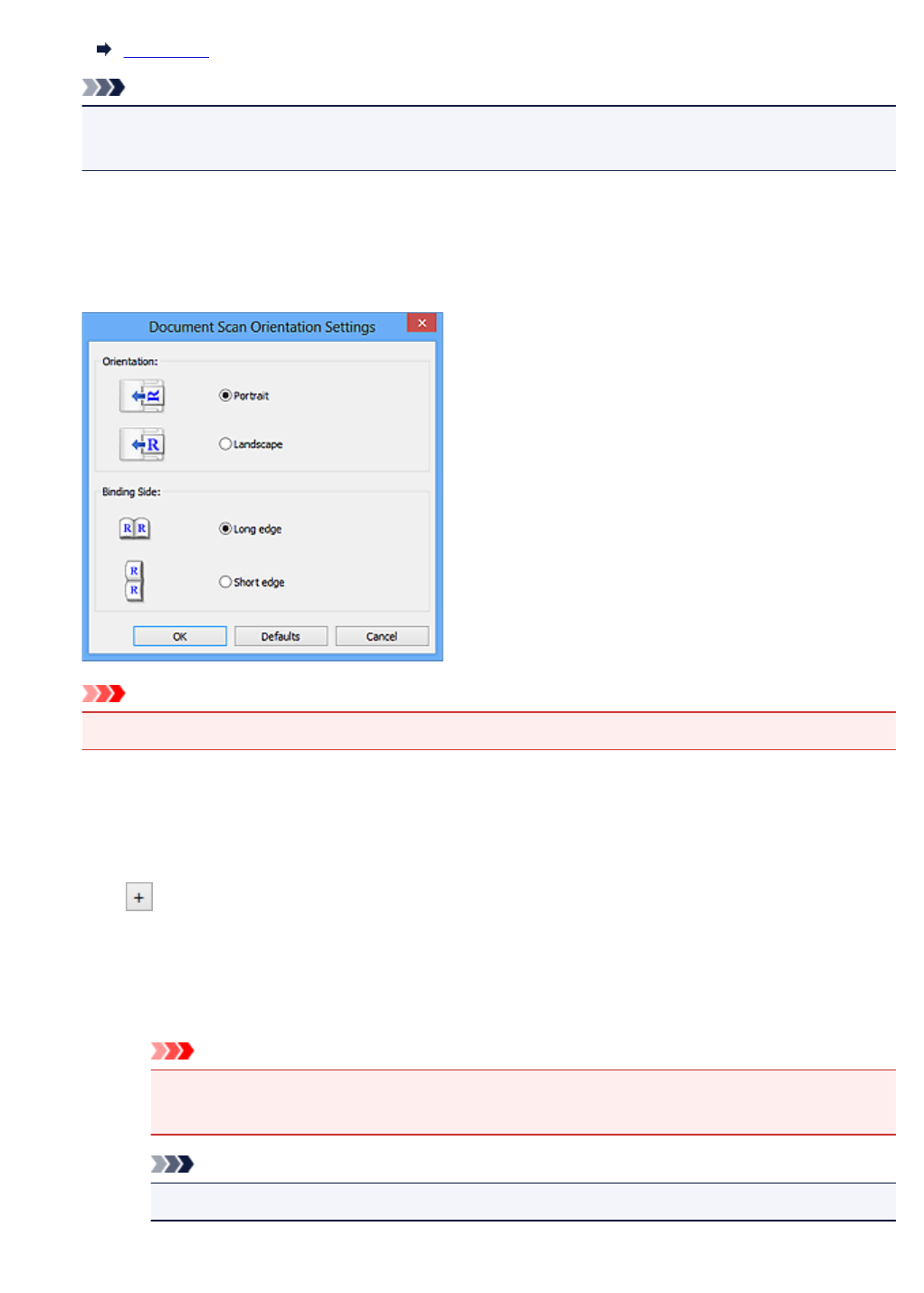
The higher the resolution (value), the more detail in your image.
Resolution
Note
• Only Auto is available when Select Source is Auto.
• Only 300 dpi or 400 dpi can be set when Start OCR is selected in Application Settings.
Document Scan Orientation Settings...
This appears when you select ADF or Auto for Select Source.
Click to display the Document Scan Orientation Settings dialog box in which you can set the
orientation and binding side of the documents to be scanned from the ADF.
Important
•Binding Side cannot be specified when scanning only the front side of each document.
Scan both sides when scanning from the ADF
This appears when you select Auto for Select Source. Scans both sides of the documents placed on
the ADF.
Image Processing Settings
Click (Plus) to set the following. Available setting items vary by Select Source.
•When Select Source is Auto:
Apply recommended image correction
Applies suitable corrections automatically based on the item type.
Important
• The color tone may differ from the source image due to corrections. In that case,
deselect the checkbox and scan.
Note
• Scanning takes longer than usual when you enable this function.
718
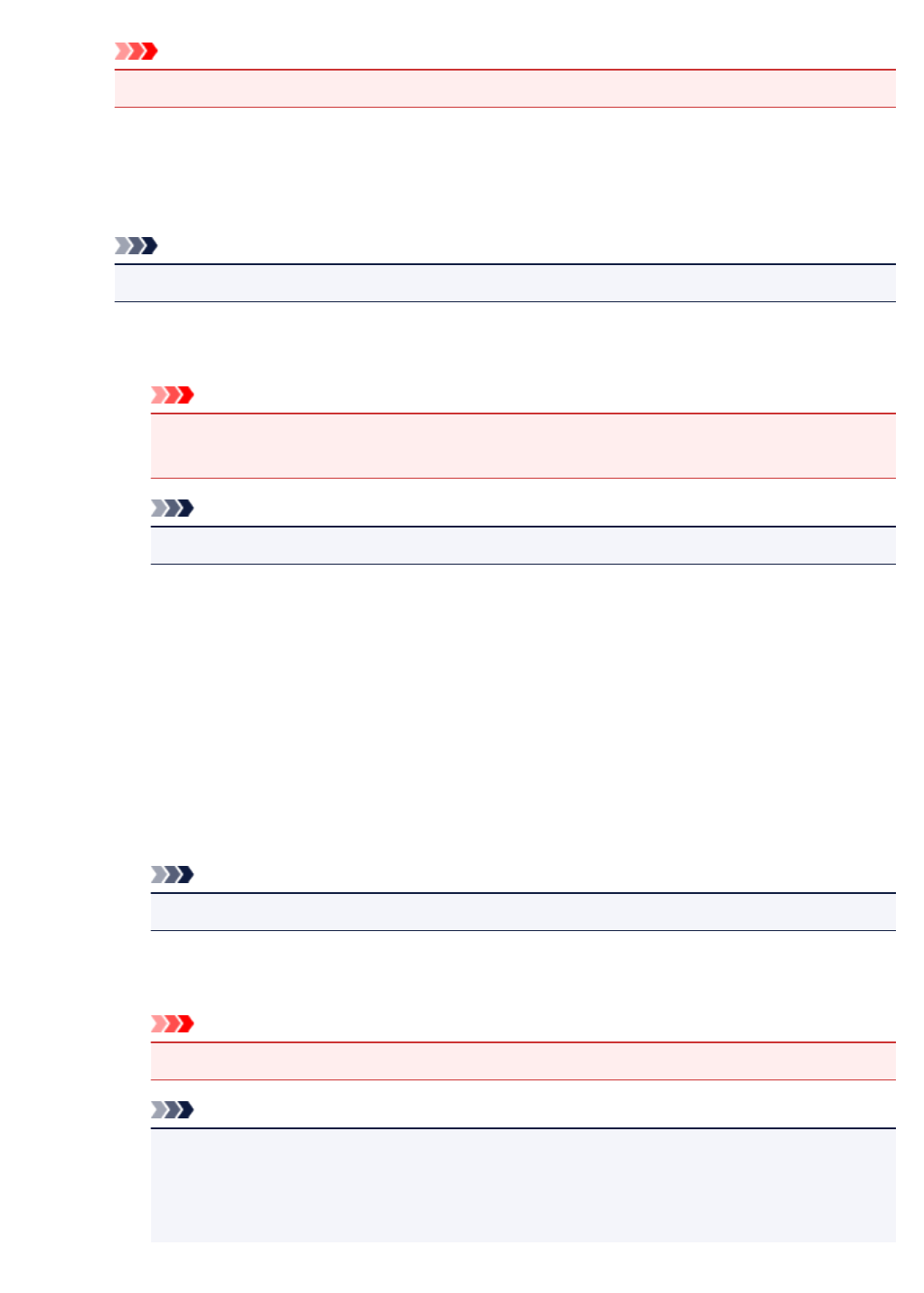
•When Select Source is Photo:
Important
• When Color Mode is Black and White, Image Processing Settings is not available.
Sharpen outline
Emphasizes the outline of the subjects to sharpen the image.
•When Select Source is Magazine or Document:
Note
• The displayed items vary by Select Source and Color Mode.
Apply Auto Document Fix
Select this checkbox to sharpen text in a document or magazine for better readability.
Important
• The color tone may differ from the source image due to corrections. In that case,
deselect the checkbox and scan.
Note
• Scanning takes longer than usual when you enable this function.
Sharpen outline
Emphasizes the outline of the subjects to sharpen the image.
Reduce show-through
Sharpens text in an item or reduces show-through in newspapers, etc.
Reduce moire
Reduces moire patterns.
Printed materials are displayed as a collection of fine dots. "Moire" is a phenomenon where
uneven gradation or a stripe pattern appears when such photos or pictures printed with fine
dots are scanned.
Note
• Scanning takes longer than usual when you enable Reduce moire.
Reduce gutter shadow
Reduces gutter shadows that appear between pages when scanning open booklets.
Important
• This function is available only when scanning from the platen.
Note
• Use ScanGear (scanner driver)'s Advanced Mode tab to correct gutter shadows when
scanning non-standard size items or specified areas.
Refer to "Gutter Shadow Correction" for your model from Home of the Online Manual for
details.
719
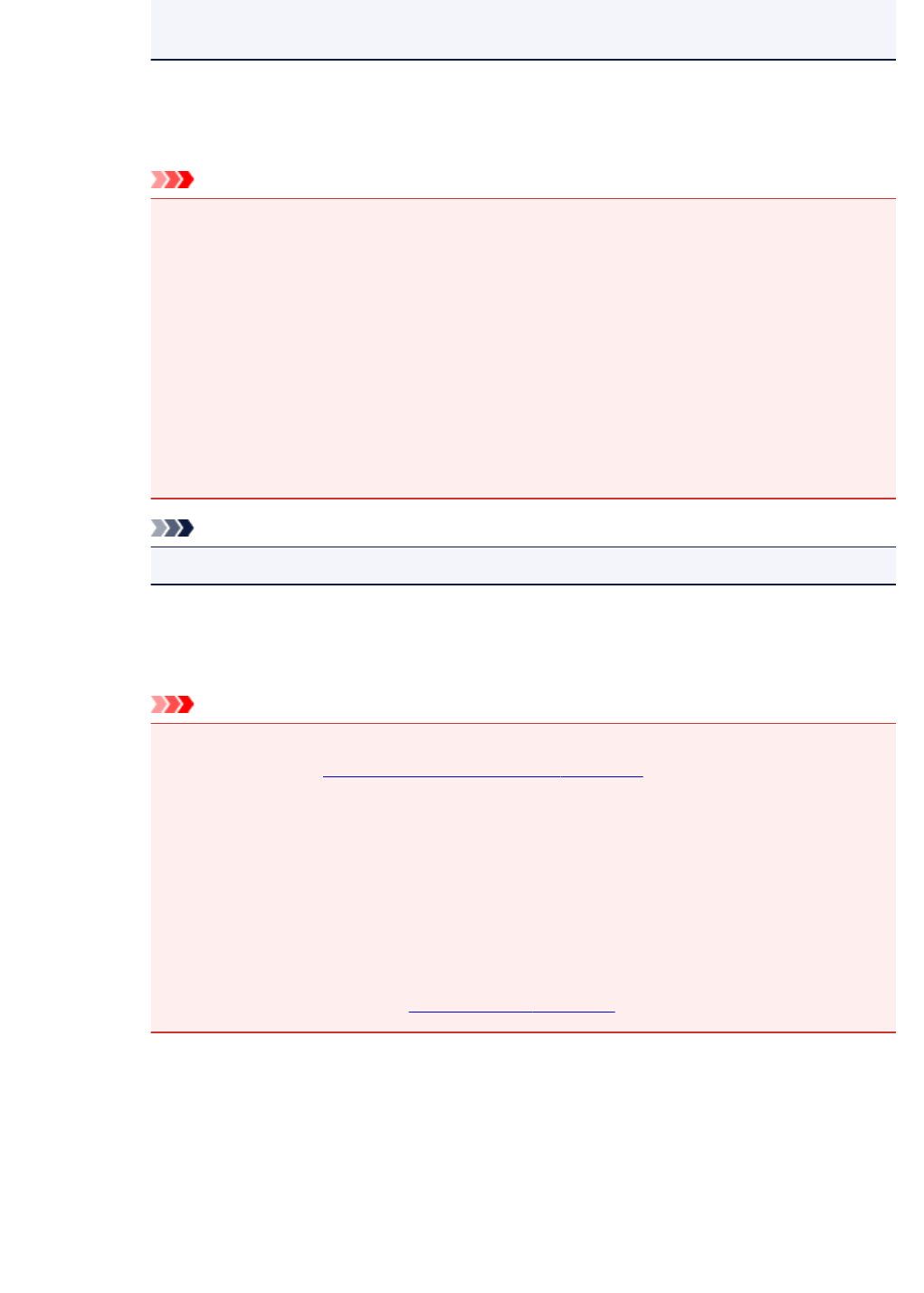
• When you enable this function, scanning may take longer than usual with network
connection.
Correct slanted text document
Detects the scanned text and corrects the angle (within -0.1 to -10 degrees or +0.1 to +10
degrees) of the document.
Important
• The following types of documents may not be corrected properly since the text cannot
be detected correctly.
• Documents in which the text lines are inclined more than 10 degrees or the angles
vary by line
• Documents containing both vertical and horizontal text
• Documents with extremely large or small fonts
• Documents with small amount of text
• Documents containing figures/images
• Hand-written text
• Documents containing both vertical and horizontal lines (tables)
Note
• Scanning takes longer than usual when you enable Correct slanted text document.
Detect the orientation of text document and rotate image
Automatically rotates the image to the correct orientation by detecting the orientation of text
in the scanned document.
Important
• Only text documents written in languages that can be selected from Document
Language in the Settings (General Settings) dialog box are supported.
• The orientation may not be detected for the following types of settings or documents
since the text cannot be detected correctly.
• Resolution is outside the range of 300 dpi to 600 dpi
• Font size is outside the range of 8 points to 48 points
• Documents containing special fonts, effects, italics, or hand-written text
• Documents with patterned backgrounds
In that case, select the Check scan results and specify save settings checkbox, and
then rotate the image in the Save Settings dialog box.
(2) Save Settings Area
File Name
Enter the file name of the image to be saved. When you save a file, the date and four digits are
appended to the set file name in the "_20XX0101_0001" format.
720

Note
• When you select the Save to a subfolder with current date checkbox, the date and four digits
are appended to the set file name.
Save in
Displays the folder in which to save the scanned images. To add a folder, select Add... from the pull-
down menu, then click Add in the displayed Select Destination Folder dialog box and specify the
destination folder.
The default save folders are as follows.
•Windows 10/Windows 8.1/Windows Vista:
Documents folder
•Windows 8/Windows 7:
My Documents folder
Data Format
Select the data format in which to save the scanned images.
You can select JPEG/Exif, TIFF, PNG, PDF, PDF (Multiple Pages), or Auto.
Important
• You cannot select JPEG/Exif when Color Mode is Black and White.
• When Start OCR is selected in Application Settings, you cannot select PDF or PDF (Multiple
Pages).
Note
•Auto appears only when Auto is selected for Select Source.
• With network connection, scanning may take longer than usual when you set TIFF or PNG in
Data Format.
JPEG Image Quality
You can specify the image quality of JPEG files.
Important
• This appears only when JPEG/Exif or Auto is selected in Data Format.
PDF Compression
Select the compression type for saving PDF files.
Standard
It is recommended that you normally select this setting.
High
Compresses the file size when saving, allowing you to reduce the load on your network/server.
Important
• This appears only when PDF, PDF (Multiple Pages), or Auto is selected in Data Format.
• When Black and White is selected in Color Mode, this option does not appear.
721
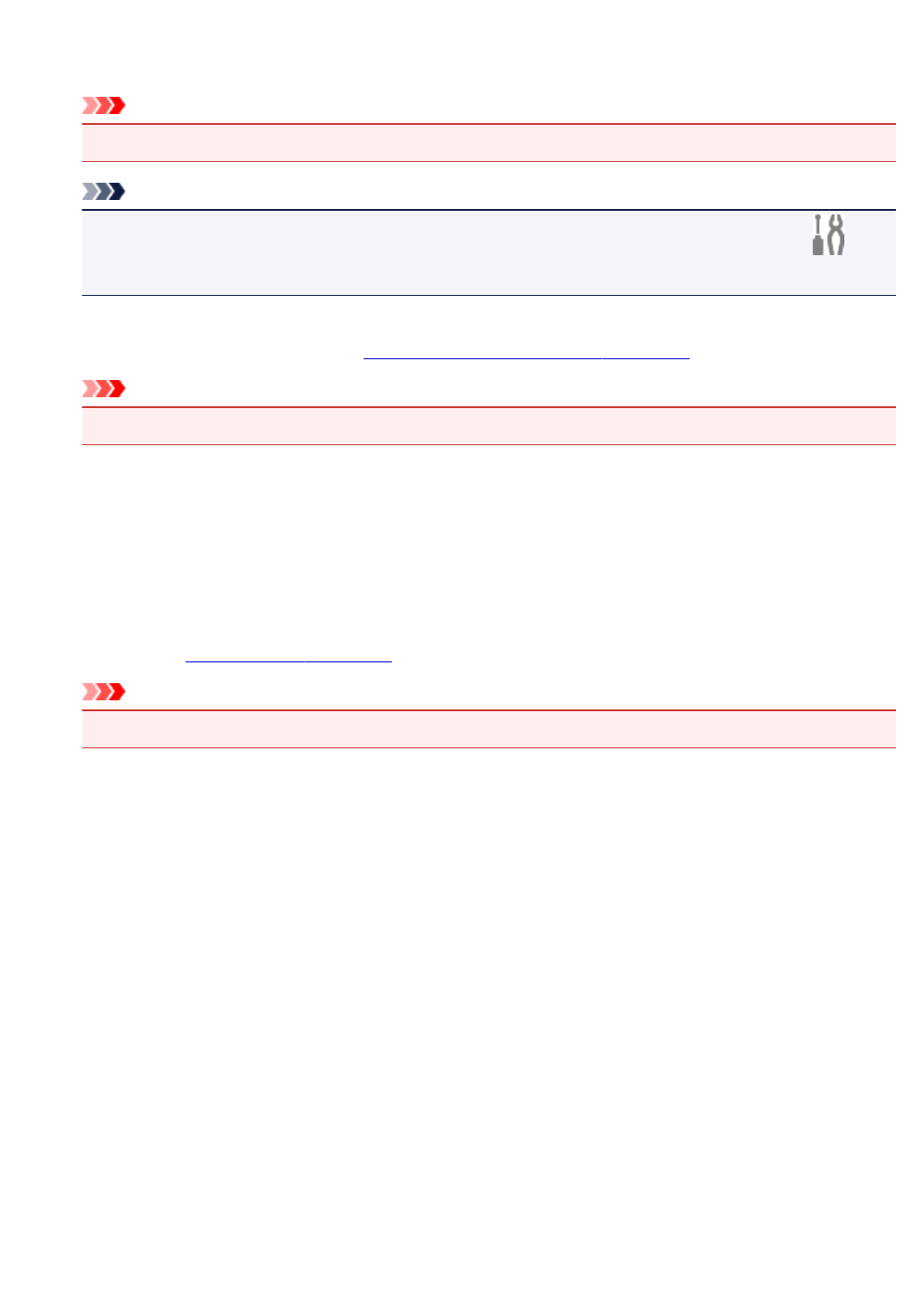
Create a PDF file that supports keyword search
Select this checkbox to convert text in images into text data and create PDF files that support
keyword search.
Important
• This appears only when PDF, PDF (Multiple Pages), or Auto is selected in Data Format.
Note
• PDF files that are searchable in the language selected in Document Language on the
(General Settings) tab of the Settings dialog box are created.
Set up password security
Select this checkbox to display the Password Security Settings dialog box.
Important
• This appears only when PDF or PDF (Multiple Pages) is selected in Data Format.
Save to a subfolder with current date
Select this checkbox to create a current date folder in the folder specified in Save in and save
scanned images in it. The folder will be created with a name such as "20XX_01_01"
(Year_Month_Date).
If this checkbox is not selected, files are saved directly in the folder specified in Save in.
Check scan results and specify save settings
Displays the Save Settings dialog box after scanning.
Important
• This does not appear when Select Source is Auto.
(3) Application Settings Area
Open with an application
Select this when you want to enhance or correct the scanned images.
You can specify the application from the pull-down menu.
Send to an application
Select this when you want to use the scanned images as they are in an application that allows you to
browse or organize images.
You can specify the application from the pull-down menu.
Send to a folder
Select this when you also want to save the scanned images to a folder other than the one specified in
Save in.
You can specify the folder from the pull-down menu.
Attach to e-mail
Select this when you want to send e-mails with the scanned images attached.
You can specify the e-mail client you want to start from the pull-down menu.
722
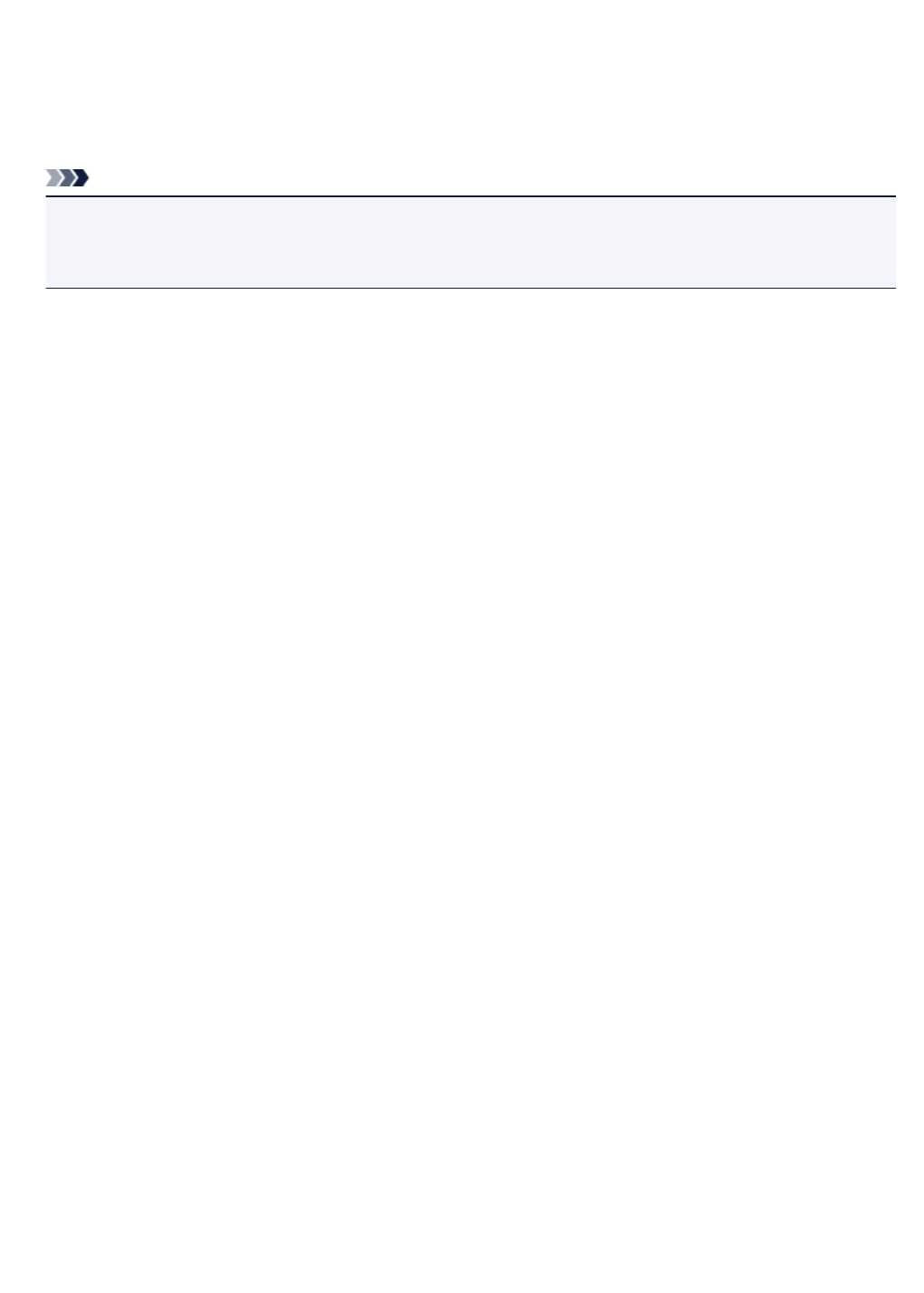
Start OCR
Select this when you want to convert text in the scanned image into text data.
You can specify the application from the pull-down menu.
Do not start any application
Saves to the folder specified in Save in.
Note
• To add an application or folder to the pull-down menu, select Add... from the pull-down menu, then
click Add in the displayed Select Application or Select Destination Folder dialog box and specify
the application or folder.
Instructions
Opens this guide.
Defaults
You can restore the settings in the displayed screen to the default settings.
723

Settings (Scan and Stitch) Dialog Box
Click Scan and Stitch on the (Scanning from a Computer) tab to display the Settings (Scan and
Stitch) dialog box.
In the Settings (Scan and Stitch) dialog box, you can make advanced scan settings for scanning items
larger than the platen.
(1) Scan Options Area
(2) Save Settings Area
(3) Application Settings Area
(1) Scan Options Area
Select Source
Select the type of item to be scanned.
• Scanning photos: Photo
• Scanning documents: Document
• Scanning magazines: Magazine
Note
• To reduce moire, set Select Source to Magazine or select the Reduce moire checkbox in
Image Processing Settings.
724
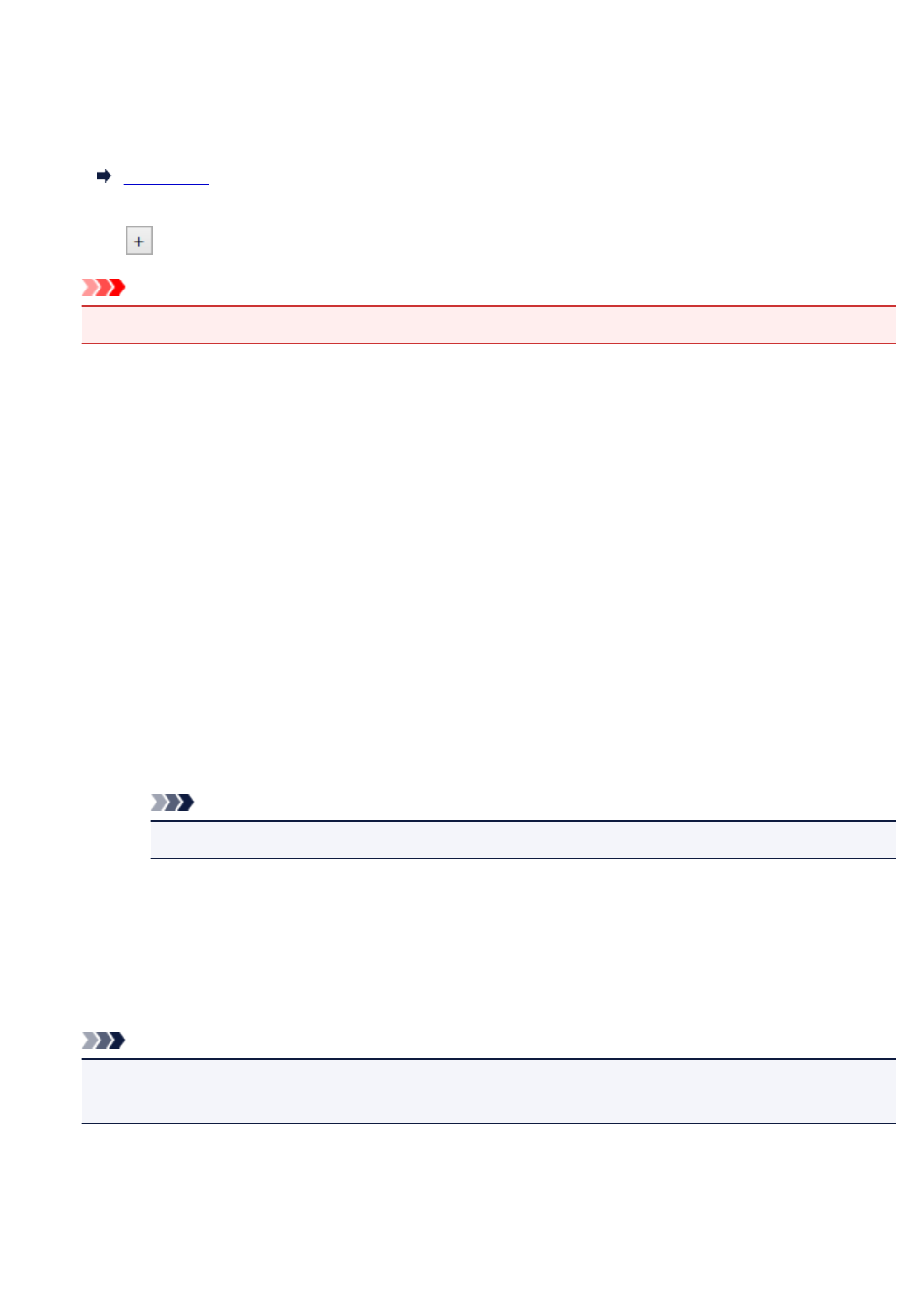
Color Mode
Select the color mode in which to scan the item.
Resolution
Select the resolution of the item to be scanned.
The higher the resolution (value), the more detail in your image.
Resolution
Image Processing Settings
Click (Plus) to set the following. Available setting items vary by Select Source.
Important
• When Color Mode is Black and White, Image Processing Settings is not available.
•When Select Source is Photo:
Sharpen outline
Emphasizes the outline of the subjects to sharpen the image.
•When Select Source is Magazine or Document:
Sharpen outline
Emphasizes the outline of the subjects to sharpen the image.
Reduce show-through
Sharpens text in an item or reduces show-through in newspapers, etc.
Reduce moire
Reduces moire patterns.
Printed materials are displayed as a collection of fine dots. "Moire" is a phenomenon where
uneven gradation or a stripe pattern appears when such photos or pictures printed with fine
dots are scanned.
Note
• Scanning takes longer than usual when you enable Reduce moire.
(2) Save Settings Area
File Name
Enter the file name of the image to be saved. When you save a file, the date and four digits are
appended to the set file name in the "_20XX0101_0001" format.
Note
• When you select the Save to a subfolder with current date checkbox, the date and four digits
are appended to the set file name.
Save in
Displays the folder in which to save the scanned images. To add a folder, select Add... from the pull-
down menu, then click Add in the displayed Select Destination Folder dialog box and specify the
destination folder.
The default save folders are as follows.
725
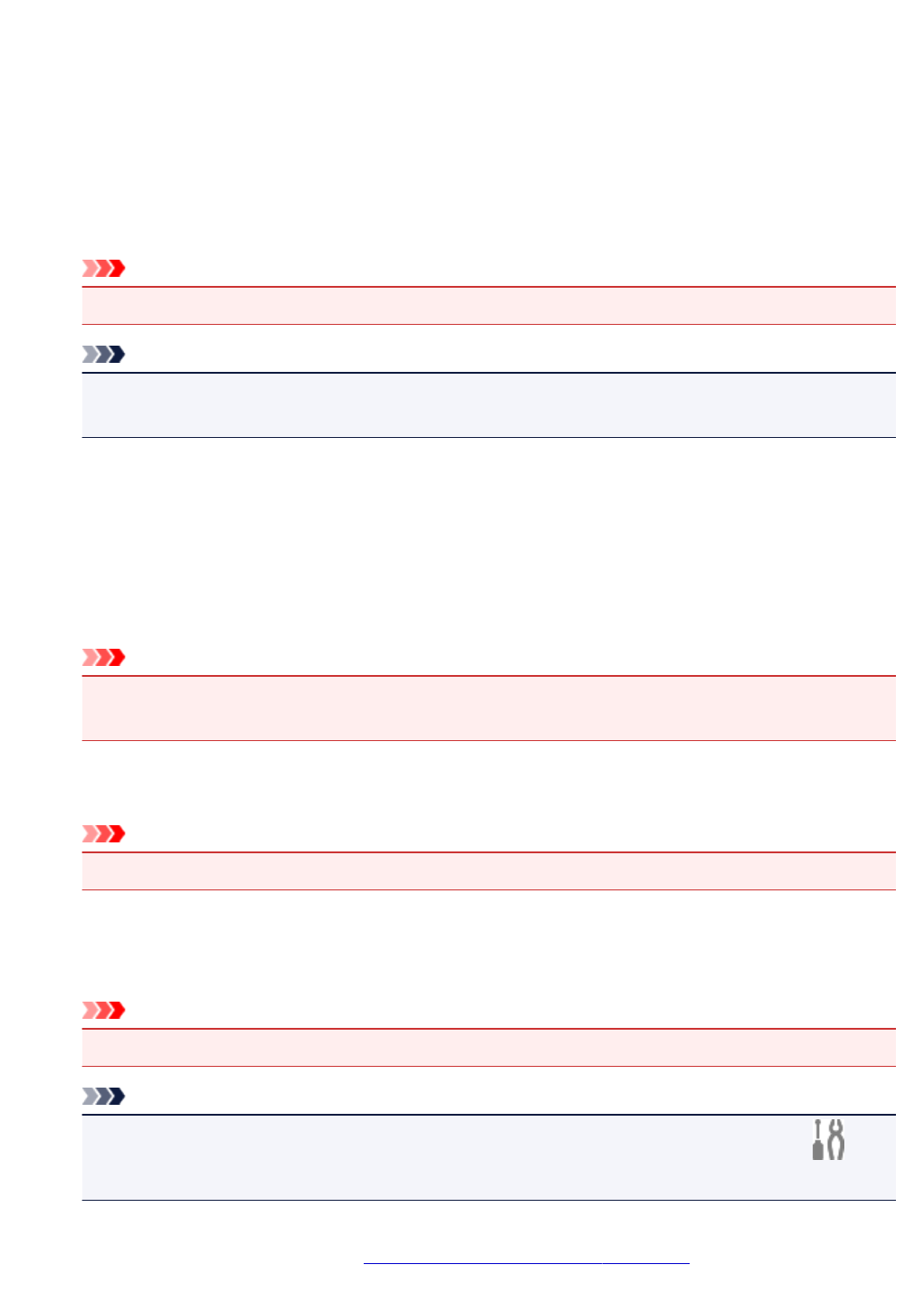
•Windows 10/Windows 8.1/Windows Vista:
Documents folder
•Windows 8/Windows 7:
My Documents folder
Data Format
Select the data format in which to save the scanned images.
You can select JPEG/Exif, TIFF, PNG, PDF, or PDF (Multiple Pages).
Important
• You cannot select JPEG/Exif when Color Mode is Black and White.
Note
• With network connection, scanning may take longer than usual when you set TIFF or PNG in
Data Format.
PDF Compression
Select the compression type for saving PDF files.
Standard
It is recommended that you normally select this setting.
High
Compresses the file size when saving, allowing you to reduce the load on your network/server.
Important
• This appears only when PDF or PDF (Multiple Pages) is selected in Data Format.
• When Black and White is selected in Color Mode, this option does not appear.
JPEG Image Quality
You can specify the image quality of JPEG files.
Important
• This appears only when JPEG/Exif is selected in Data Format.
Create a PDF file that supports keyword search
Select this checkbox to convert text in images into text data and create PDF files that support
keyword search.
Important
• This appears only when PDF or PDF (Multiple Pages) is selected in Data Format.
Note
• PDF files that are searchable in the language selected in Document Language on the
(General Settings) tab of the Settings dialog box are created.
Set up password security
Select this checkbox to display the Password Security Settings dialog box.
726
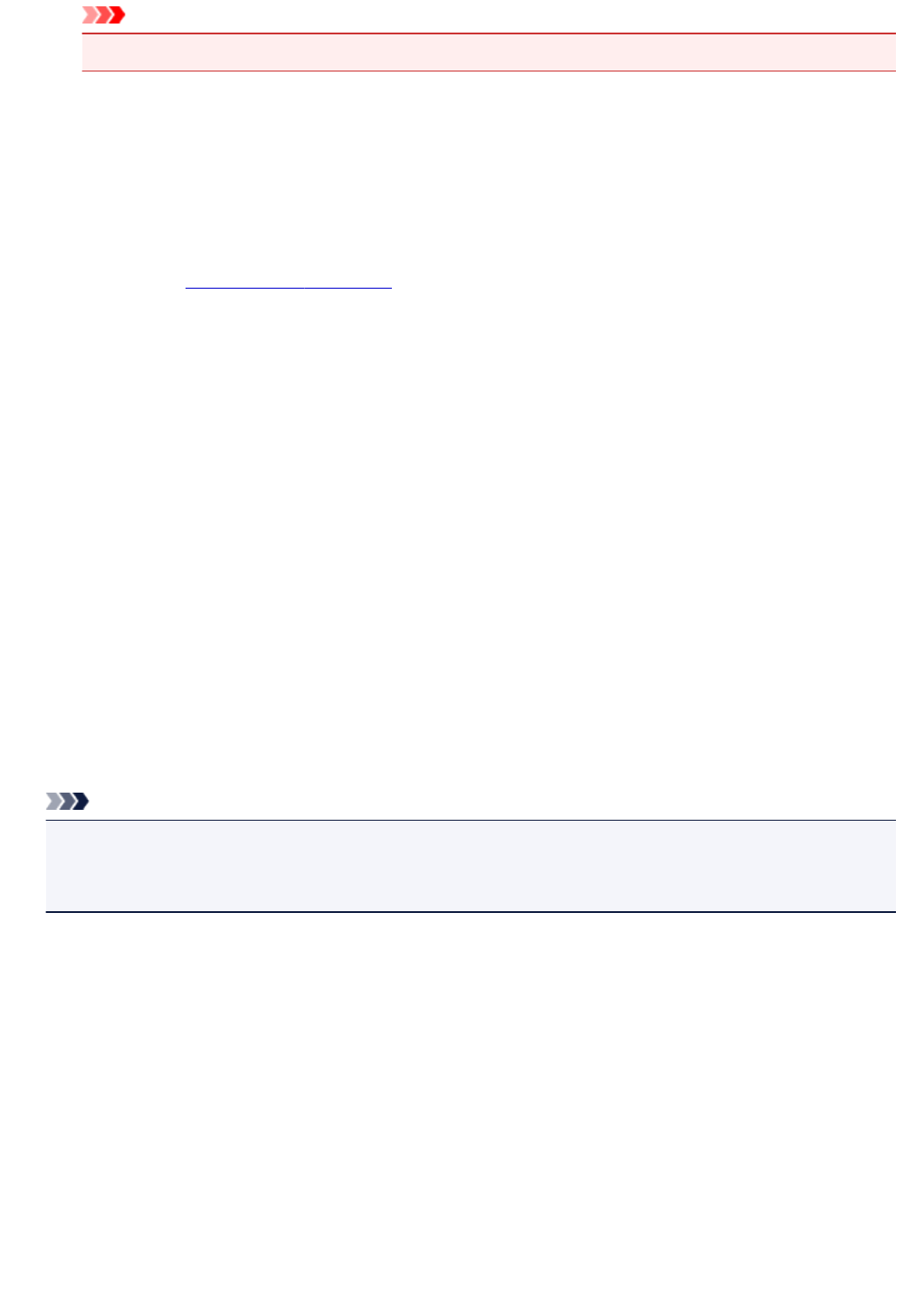
Important
• This appears only when PDF or PDF (Multiple Pages) is selected in Data Format.
Save to a subfolder with current date
Select this checkbox to create a current date folder in the folder specified in Save in and save
scanned images in it. The folder will be created with a name such as "20XX_01_01"
(Year_Month_Date).
If this checkbox is not selected, files are saved directly in the folder specified in Save in.
Check scan results and specify save settings
Displays the Save Settings dialog box after scanning.
(3) Application Settings Area
Open with an application
Select this when you want to enhance or correct the scanned images.
You can specify the application from the pull-down menu.
Send to an application
Select this when you want to use the scanned images as they are in an application that allows you to
browse or organize images.
You can specify the application from the pull-down menu.
Send to a folder
Select this when you also want to save the scanned images to a folder other than the one specified in
Save in.
You can specify the folder from the pull-down menu.
Do not start any application
Saves to the folder specified in Save in.
Note
• To add an application or folder to the pull-down menu, select Add... from the pull-down menu, then
click Add in the displayed Select Application or Select Destination Folder dialog box and specify
the application or folder.
Instructions
Opens this guide.
Defaults
You can restore the settings in the displayed screen to the default settings.
727
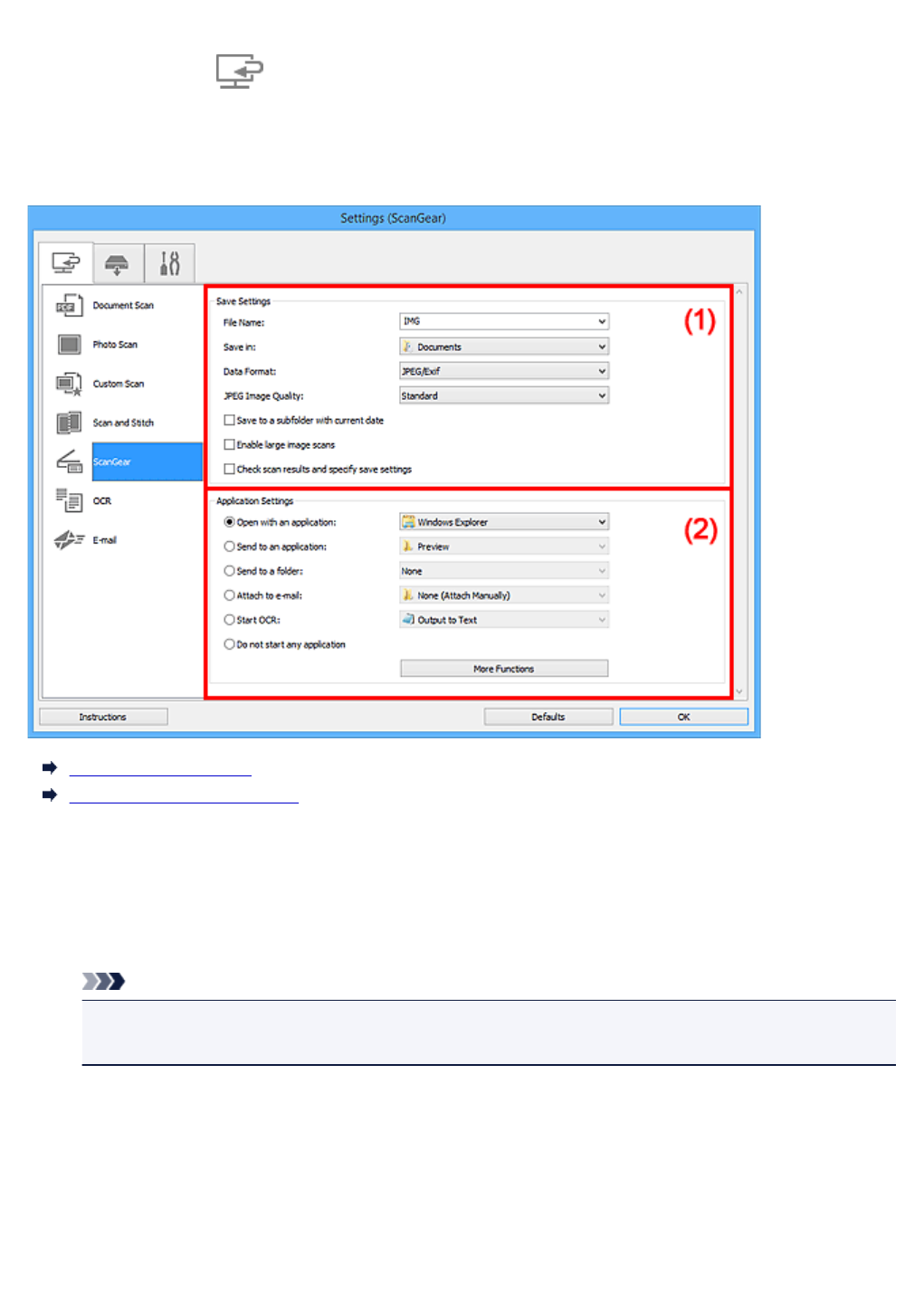
Settings (ScanGear) Dialog Box
Click ScanGear on the (Scanning from a Computer) tab to display the Settings (ScanGear) dialog
box.
In the Settings (ScanGear) dialog box, you can specify how to save images when scanning items by
starting ScanGear (scanner driver) and how to respond after saving them.
(1) Save Settings Area
(2) Application Settings Area
(1) Save Settings Area
File Name
Enter the file name of the image to be saved. When you save a file, the date and four digits are
appended to the set file name in the "_20XX0101_0001" format.
Note
• When you select the Save to a subfolder with current date checkbox, the date and four digits
are appended to the set file name.
Save in
Displays the folder in which to save the scanned images. To add a folder, select Add... from the pull-
down menu, then click Add in the displayed Select Destination Folder dialog box and specify the
destination folder.
The default save folders are as follows.
728
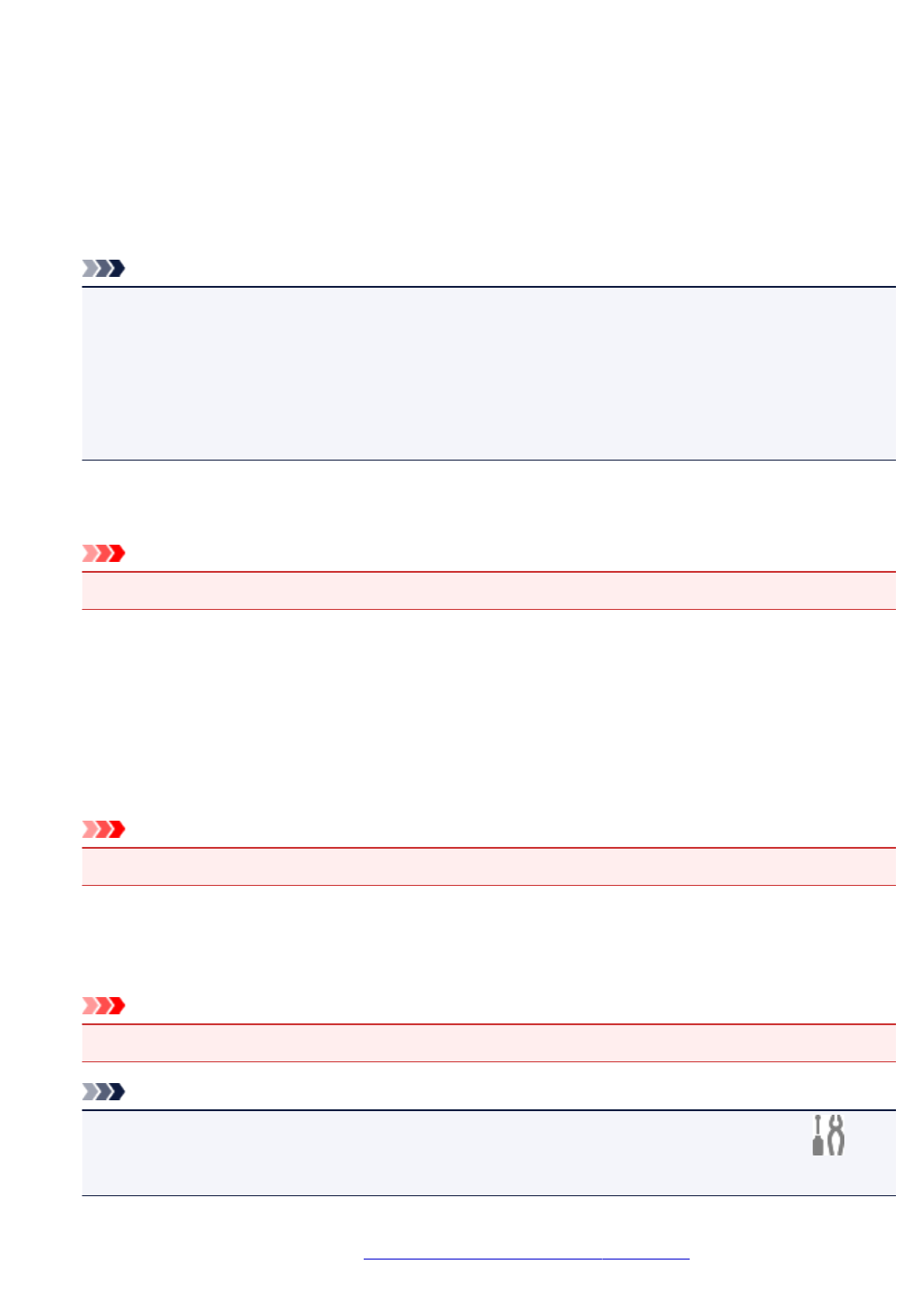
•Windows 10/Windows 8.1/Windows Vista:
Documents folder
•Windows 8/Windows 7:
My Documents folder
Data Format
Select the data format in which to save the scanned images.
You can select JPEG/Exif, TIFF, PNG, PDF, or PDF (Multiple Pages).
Note
• When PDF or PDF (Multiple Pages) is selected, images up to 9600 pixels x 9600 pixels can be
scanned.
• When the Enable large image scans checkbox is selected in Save Settings, or when Start
OCR is selected in Application Settings, you can select JPEG/Exif, TIFF, or PNG.
• With network connection, scanning may take longer than usual when you set TIFF or PNG in
Data Format.
JPEG Image Quality
You can specify the image quality of JPEG files.
Important
• This appears only when JPEG/Exif is selected in Data Format.
PDF Compression
Select the compression type for saving PDF files.
Standard
It is recommended that you normally select this setting.
High
Compresses the file size when saving, allowing you to reduce the load on your network/server.
Important
• This appears only when PDF or PDF (Multiple Pages) is selected in Data Format.
Create a PDF file that supports keyword search
Select this checkbox to convert text in images into text data and create PDF files that support
keyword search.
Important
• This appears only when PDF or PDF (Multiple Pages) is selected in Data Format.
Note
• PDF files that are searchable in the language selected in Document Language on the
(General Settings) tab of the Settings dialog box are created.
Set up password security
Select this checkbox to display the Password Security Settings dialog box.
729
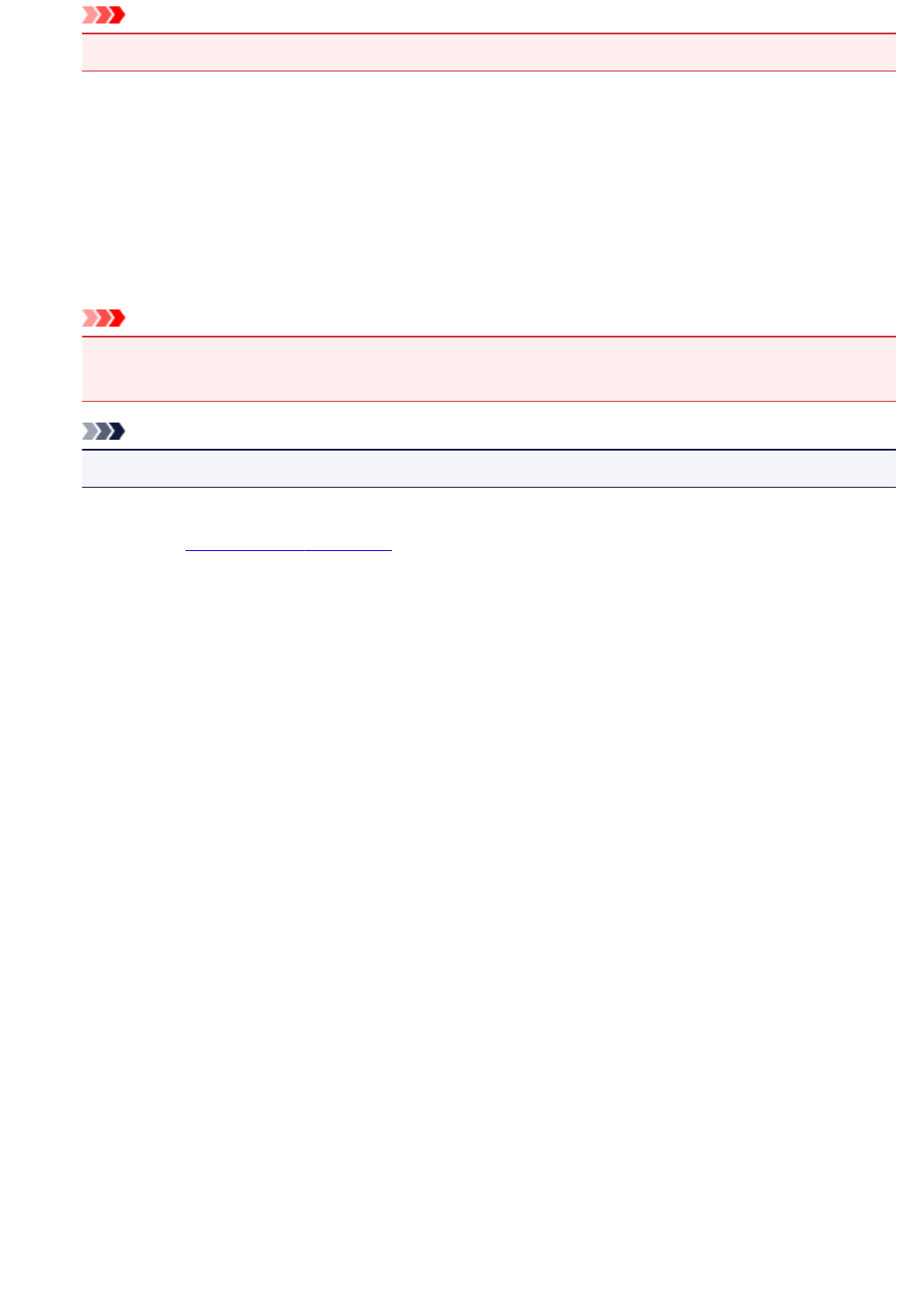
Important
• This appears only when PDF or PDF (Multiple Pages) is selected in Data Format.
Save to a subfolder with current date
Select this checkbox to create a current date folder in the folder specified in Save in and save
scanned images in it. The folder will be created with a name such as "20XX_01_01"
(Year_Month_Date).
If this checkbox is not selected, files are saved directly in the folder specified in Save in.
Enable large image scans
Select this checkbox to scan images up to 21000 pixels x 30000 pixels and 1.8 GB.
Important
• When this checkbox is selected, you cannot select Send to an application, Send to a folder,
Attach to e-mail, or Start OCR.
Note
• When this checkbox is not selected, images up to 10208 pixels x 14032 pixels can be scanned.
Check scan results and specify save settings
Displays the Save Settings dialog box after scanning.
(2) Application Settings Area
Open with an application
Select this when you want to enhance or correct the scanned images.
You can specify the application from the pull-down menu.
Send to an application
Select this when you want to use the scanned images as they are in an application that allows you to
browse or organize images.
You can specify the application from the pull-down menu.
Send to a folder
Select this when you also want to save the scanned images to a folder other than the one specified in
Save in.
You can specify the folder from the pull-down menu.
Attach to e-mail
Select this when you want to send e-mails with the scanned images attached.
You can specify the e-mail client you want to start from the pull-down menu.
Start OCR
Select this when you want to convert text in the scanned image into text data.
You can specify the application from the pull-down menu.
Do not start any application
Saves to the folder specified in Save in.
730
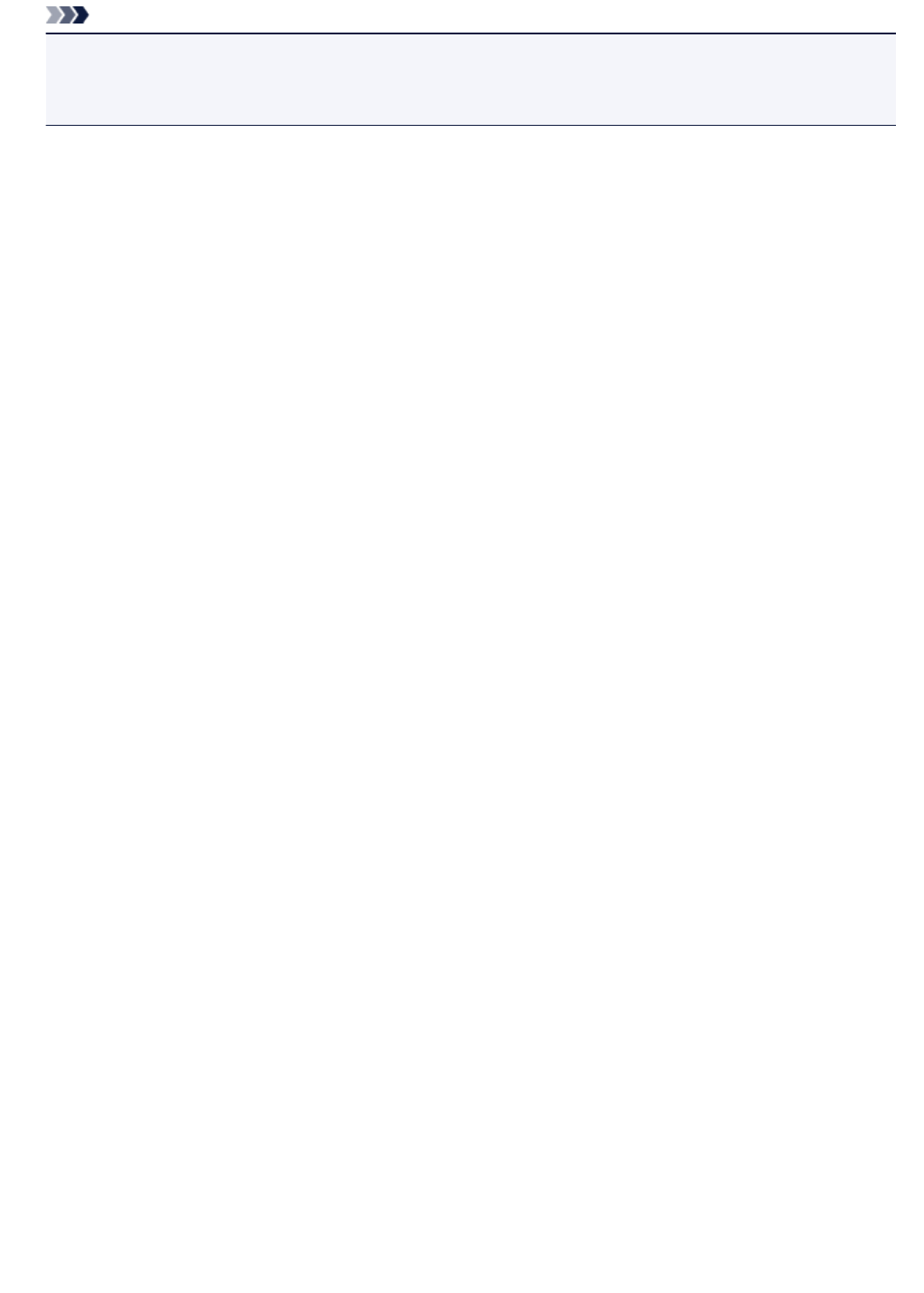
Note
• To add an application or folder to the pull-down menu, select Add... from the pull-down menu, then
click Add in the displayed Select Application or Select Destination Folder dialog box and specify
the application or folder.
Instructions
Opens this guide.
Defaults
You can restore the settings in the displayed screen to the default settings.
731
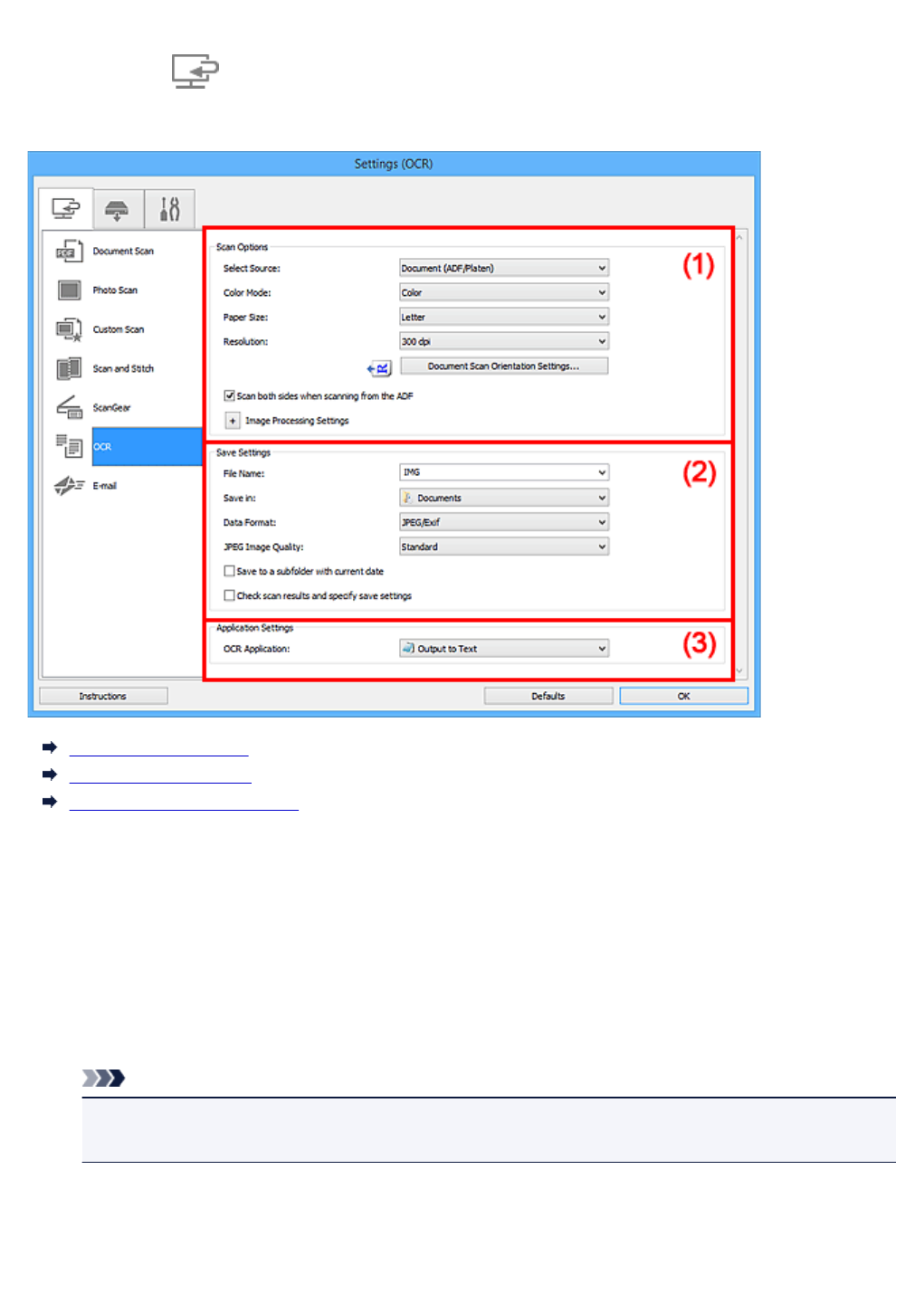
Settings (OCR) Dialog Box
Click OCR on the (Scanning from a Computer) tab to display the Settings (OCR) dialog box.
In the Settings (OCR) dialog box, you can make advanced settings for extracting text from scanned images.
(1) Scan Options Area
(2) Save Settings Area
(3) Application Settings Area
(1) Scan Options Area
Select Source
Select the type of item to be scanned.
• Scanning documents: Document or Document (ADF/Platen)
• Scanning magazines: Magazine
• Scanning documents from the ADF (Auto Document Feeder): Document (ADF Simplex),
Document (ADF Manual Duplex), Document (ADF Duplex), or Document (ADF/Platen)
Note
• When Document (ADF/Platen) is selected and documents are placed both on the platen and
ADF, those placed on the ADF will be scanned.
Color Mode
Select the color mode in which to scan the item.
732
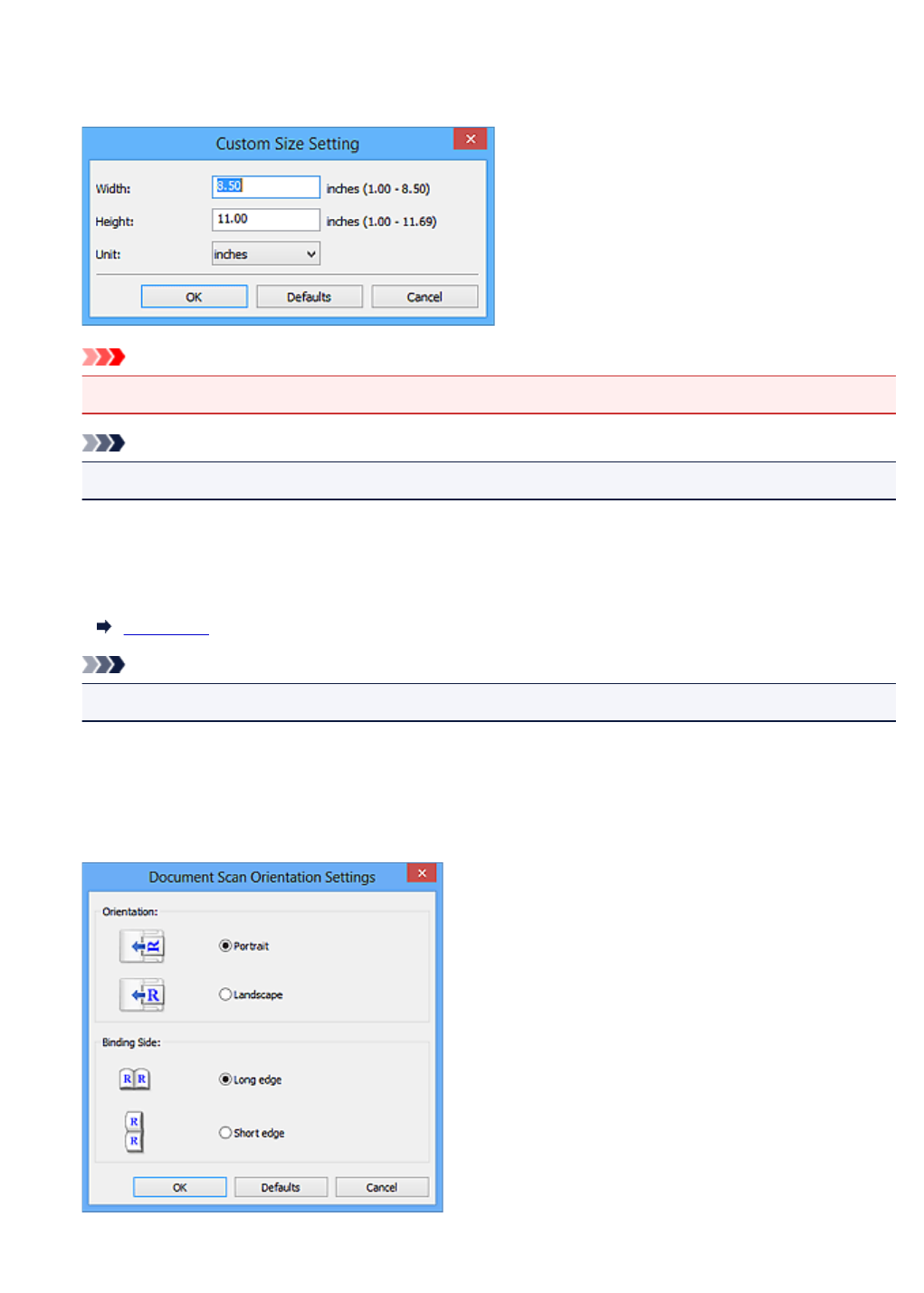
Paper Size
Select the size of the item to be scanned.
When you select Custom, a screen in which you can specify the paper size appears. Select a Unit,
then enter the Width and Height, and then click OK.
Important
•Custom cannot be selected depending on the Select Source setting.
Note
• Click Defaults to restore the specified settings to the default settings.
Resolution
Select the resolution of the item to be scanned.
The higher the resolution (value), the more detail in your image.
Resolution
Note
• For Resolution, only 300 dpi or 400 dpi can be set.
Document Scan Orientation Settings...
This appears when you select ADF for Select Source.
Click to display the Document Scan Orientation Settings dialog box in which you can set the
orientation and binding side of the documents to be scanned from the ADF.
733
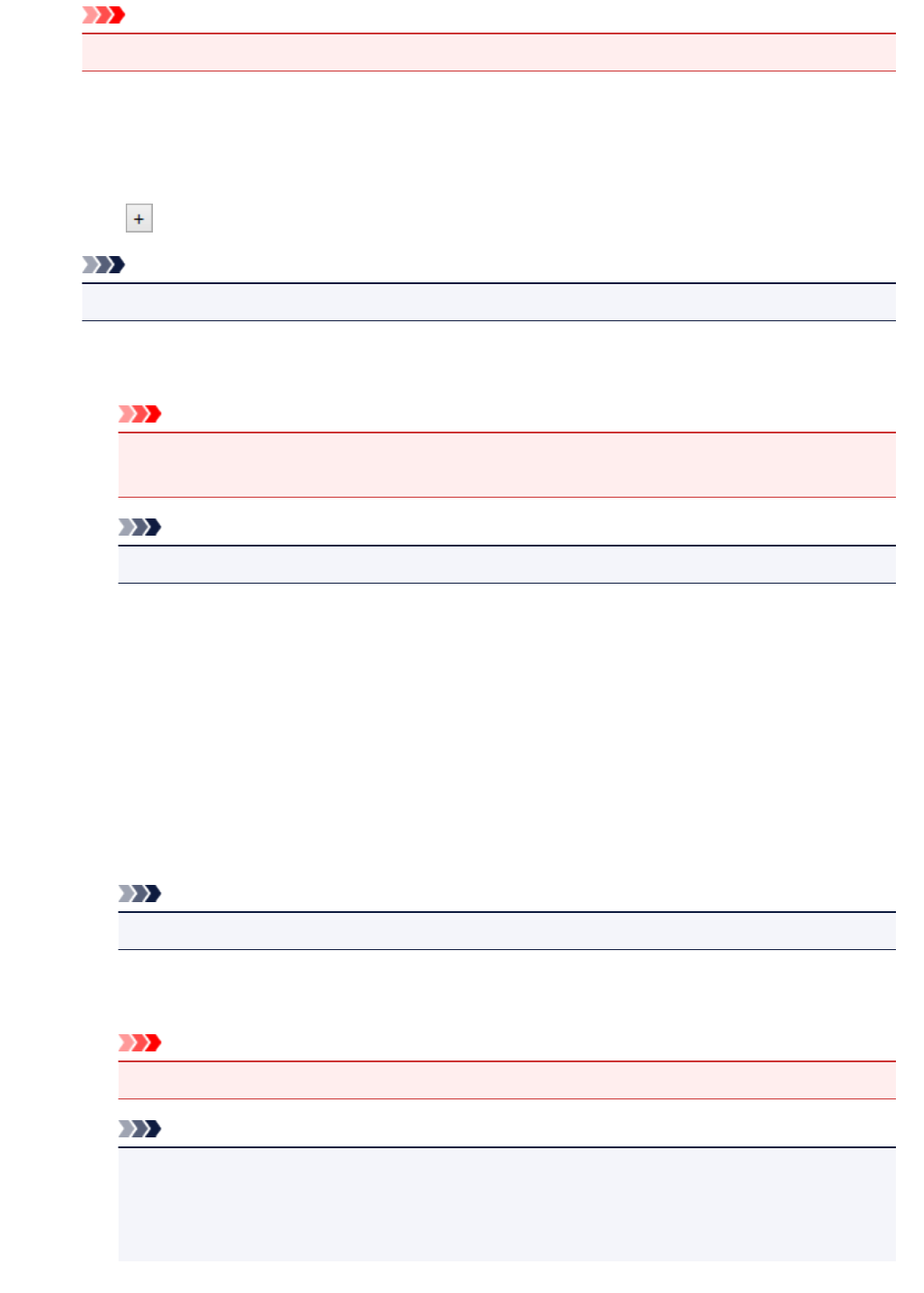
Important
•Binding Side cannot be specified when scanning only the front side of each document.
Scan both sides when scanning from the ADF
This appears when you select Document (ADF/Platen) for Select Source. Scans both sides of the
documents placed on the ADF.
Image Processing Settings
Click (Plus) to set the following.
Note
• The displayed items vary by Select Source and Color Mode.
Apply Auto Document Fix
Select this checkbox to sharpen text in a document or magazine for better readability.
Important
• The color tone may differ from the source image due to corrections. In that case, deselect
the checkbox and scan.
Note
• Scanning takes longer than usual when you enable this function.
Sharpen outline
Emphasizes the outline of the subjects to sharpen the image.
Reduce show-through
Sharpens text in an item or reduces show-through in newspapers, etc.
Reduce moire
Reduces moire patterns.
Printed materials are displayed as a collection of fine dots. "Moire" is a phenomenon where
uneven gradation or a stripe pattern appears when such photos or pictures printed with fine dots
are scanned.
Note
• Scanning takes longer than usual when you enable Reduce moire.
Reduce gutter shadow/Reduce gutter shadow (platen)
Reduces gutter shadows that appear between pages when scanning open booklets.
Important
• This function is available only when scanning from the platen.
Note
• Use ScanGear (scanner driver)'s Advanced Mode tab to correct gutter shadows when
scanning non-standard size items or specified areas.
Refer to "Gutter Shadow Correction" for your model from Home of the Online Manual for
details.
734
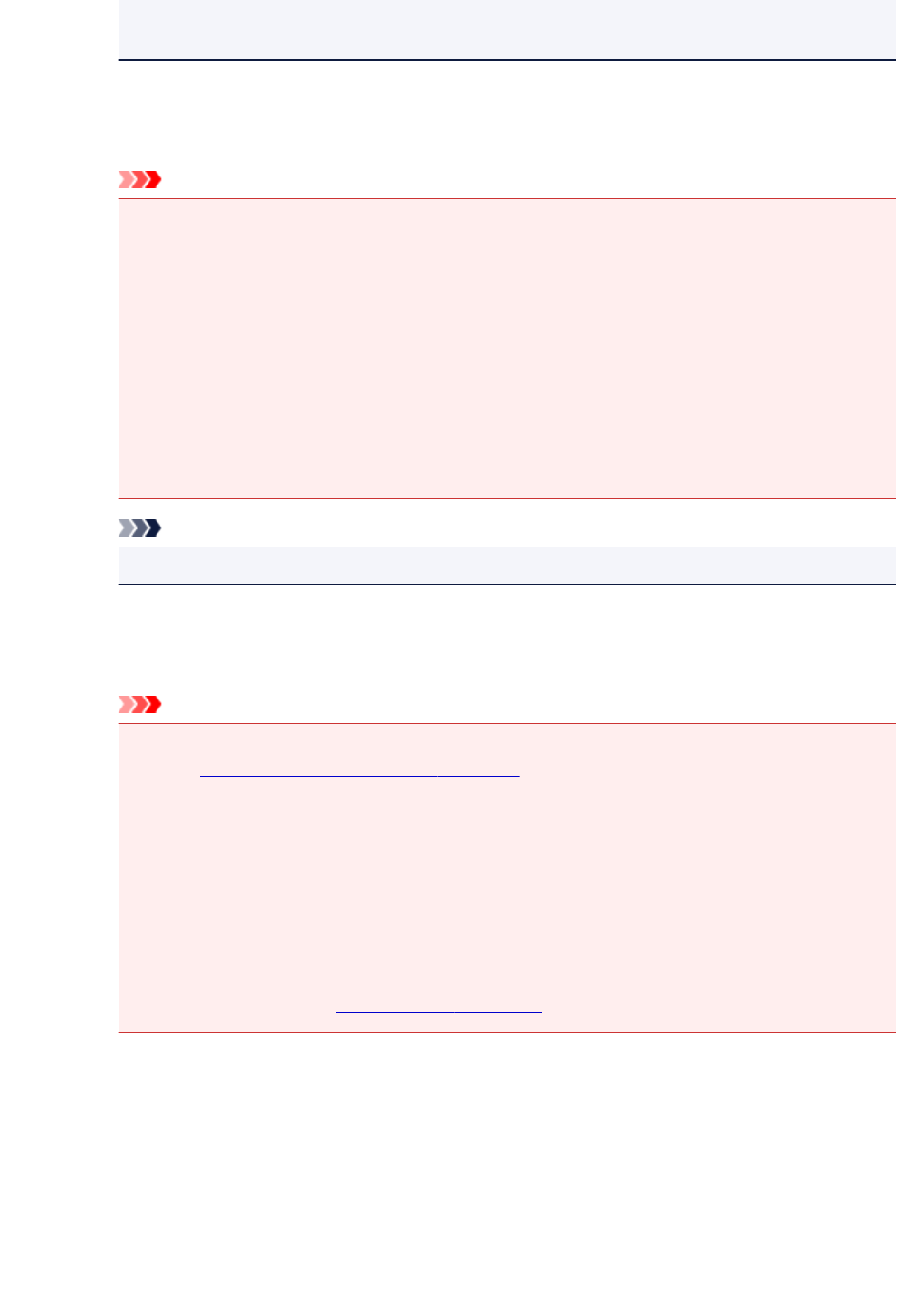
• When you enable this function, scanning may take longer than usual with network
connection.
Correct slanted text document
Detects the scanned text and corrects the angle (within -0.1 to -10 degrees or +0.1 to +10
degrees) of the document.
Important
• The following types of documents may not be corrected properly since the text cannot be
detected correctly.
• Documents in which the text lines are inclined more than 10 degrees or the angles vary
by line
• Documents containing both vertical and horizontal text
• Documents with extremely large or small fonts
• Documents with small amount of text
• Documents containing figures/images
• Hand-written text
• Documents containing both vertical and horizontal lines (tables)
Note
• Scanning takes longer than usual when you enable Correct slanted text document.
Detect the orientation of text document and rotate image
Automatically rotates the image to the correct orientation by detecting the orientation of text in
the scanned document.
Important
• Only text documents written in languages that can be selected from Document Language
in the Settings (General Settings) dialog box are supported.
• The orientation may not be detected for the following types of settings or documents since
the text cannot be detected correctly.
• Resolution is outside the range of 300 dpi to 600 dpi
• Font size is outside the range of 8 points to 48 points
• Documents containing special fonts, effects, italics, or hand-written text
• Documents with patterned backgrounds
In that case, select the Check scan results and specify save settings checkbox, and then
rotate the image in the Save Settings dialog box.
(2) Save Settings Area
File Name
Enter the file name of the image to be saved. When you save a file, the date and four digits are
appended to the set file name in the "_20XX0101_0001" format.
735
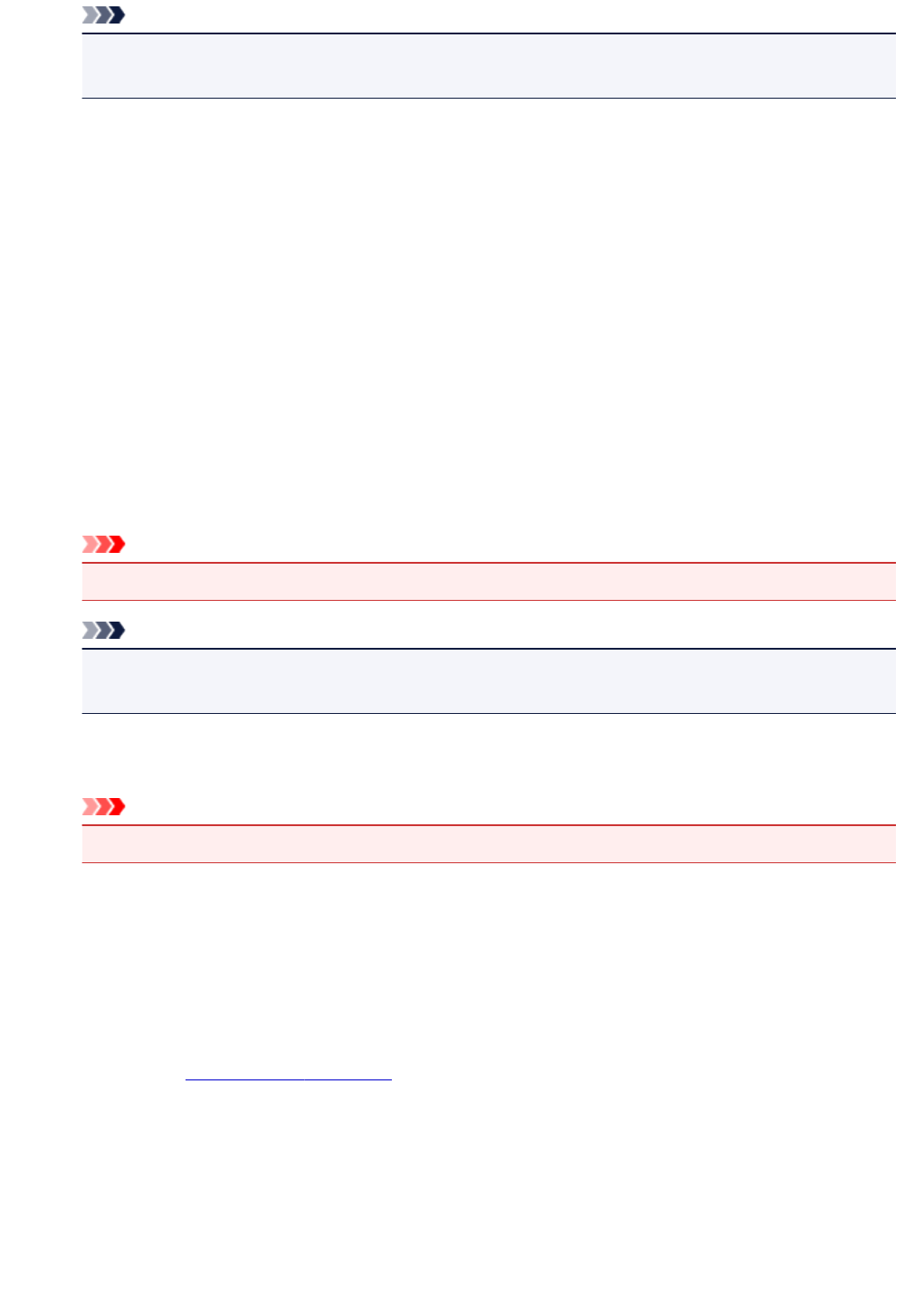
Note
• When you select the Save to a subfolder with current date checkbox, the date and four digits
are appended to the set file name.
Save in
Displays the folder in which to save the scanned images. To add a folder, select Add... from the pull-
down menu, then click Add in the displayed Select Destination Folder dialog box and specify the
destination folder.
The default save folders are as follows.
•Windows 10/Windows 8.1/Windows Vista:
Documents folder
•Windows 8/Windows 7:
My Documents folder
Data Format
Select the data format in which to save the scanned images.
You can select JPEG/Exif, TIFF, or PNG.
Important
• You cannot select JPEG/Exif when Color Mode is Black and White.
Note
• With network connection, scanning may take longer than usual when you set TIFF or PNG in
Data Format.
JPEG Image Quality
You can specify the image quality of JPEG files.
Important
• This appears only when JPEG/Exif is selected in Data Format.
Save to a subfolder with current date
Select this checkbox to create a current date folder in the folder specified in Save in and save
scanned images in it. The folder will be created with a name such as "20XX_01_01"
(Year_Month_Date).
If this checkbox is not selected, files are saved directly in the folder specified in Save in.
Check scan results and specify save settings
Displays the Save Settings dialog box after scanning.
(3) Application Settings Area
OCR Application
Displays the extracted text in a specified application.
736
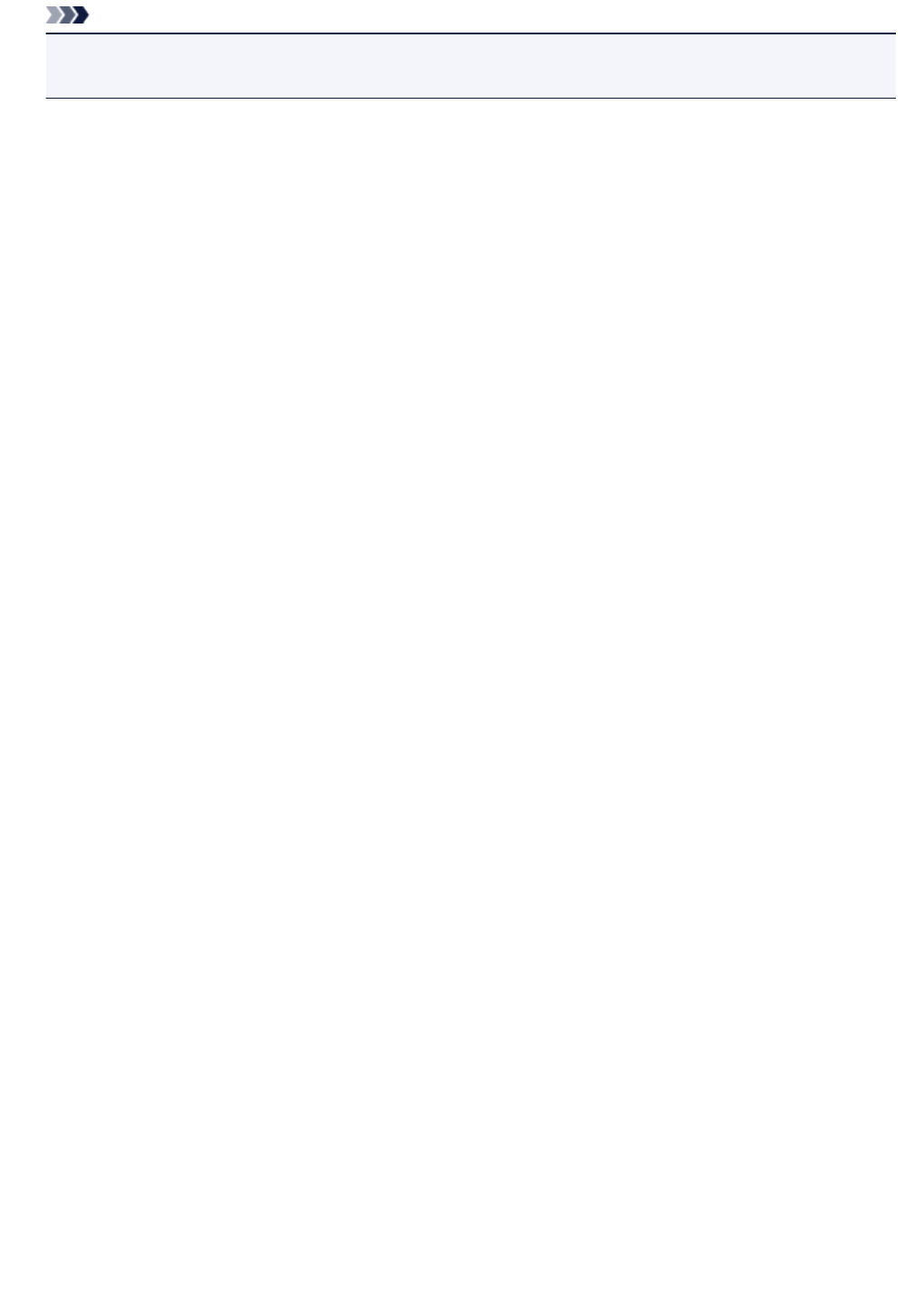
Note
• To add an application to the pull-down menu, select Add... from the pull-down menu, then click Add
in the displayed Select Application dialog box and specify the application.
Instructions
Opens this guide.
Defaults
You can restore the settings in the displayed screen to the default settings.
737
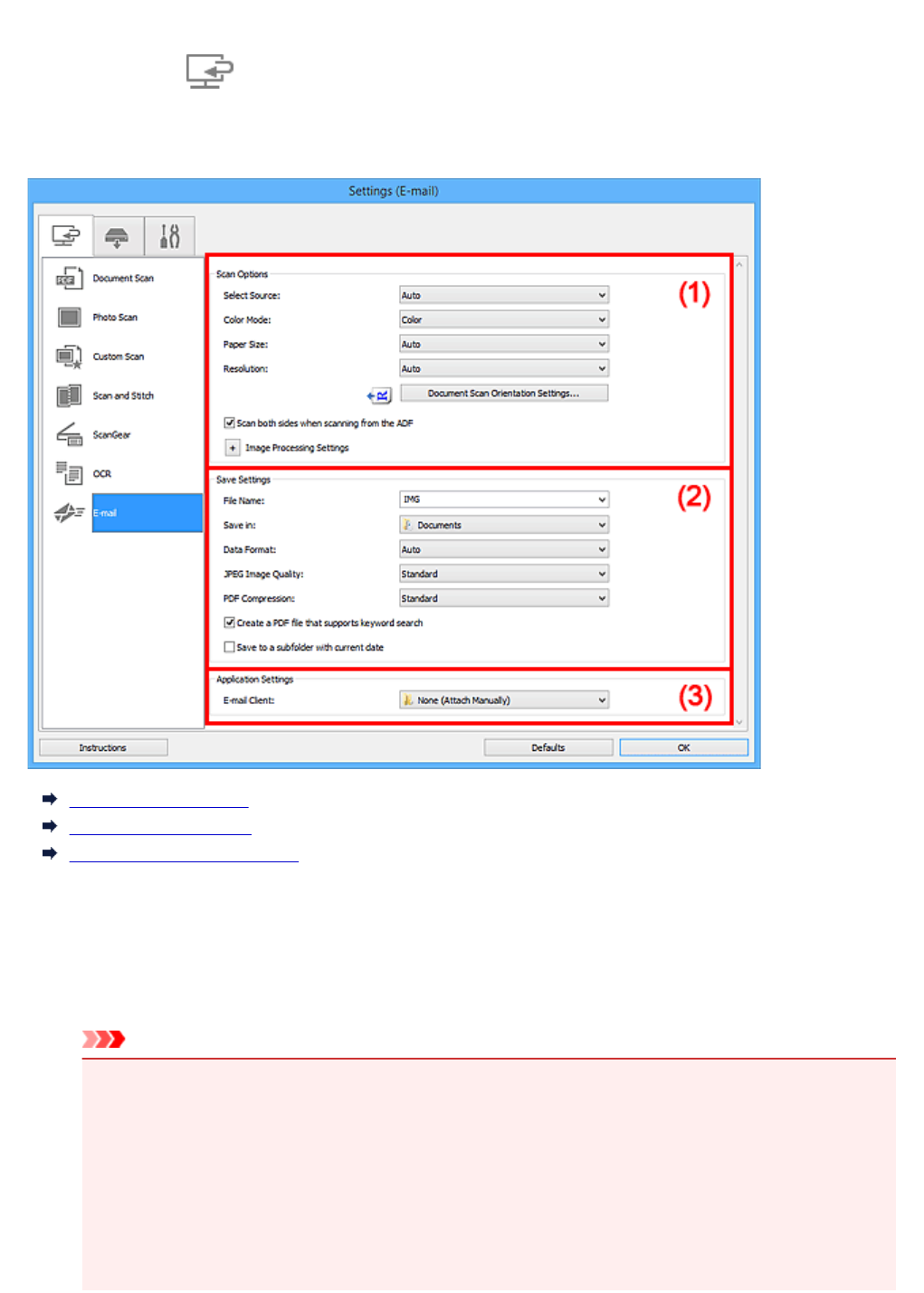
Settings (E-mail) Dialog Box
Click E-mail on the (Scanning from a Computer) tab to display the Settings (E-mail) dialog box.
In the Settings (E-mail) dialog box, you can specify how to respond when attaching images to an e-mail
after scanning them using the scanner button.
(1) Scan Options Area
(2) Save Settings Area
(3) Application Settings Area
(1) Scan Options Area
Select Source
Select the type of item to be scanned. Select Auto to detect the item type automatically and to set
Color Mode, Paper Size, and Resolution automatically as well.
Important
• Item types supported by Auto are photos, postcards, business cards, magazines, newspapers,
documents, and BD/DVD/CD.
• To scan the following types of items, specify the item type or size. You cannot scan correctly with
Auto.
• A4 size photos
• Text documents smaller than 2L (5 inches x 7 inches) (127 mm x 178 mm), such as
paperback pages with the spine cut off
• Items printed on thin white paper
738
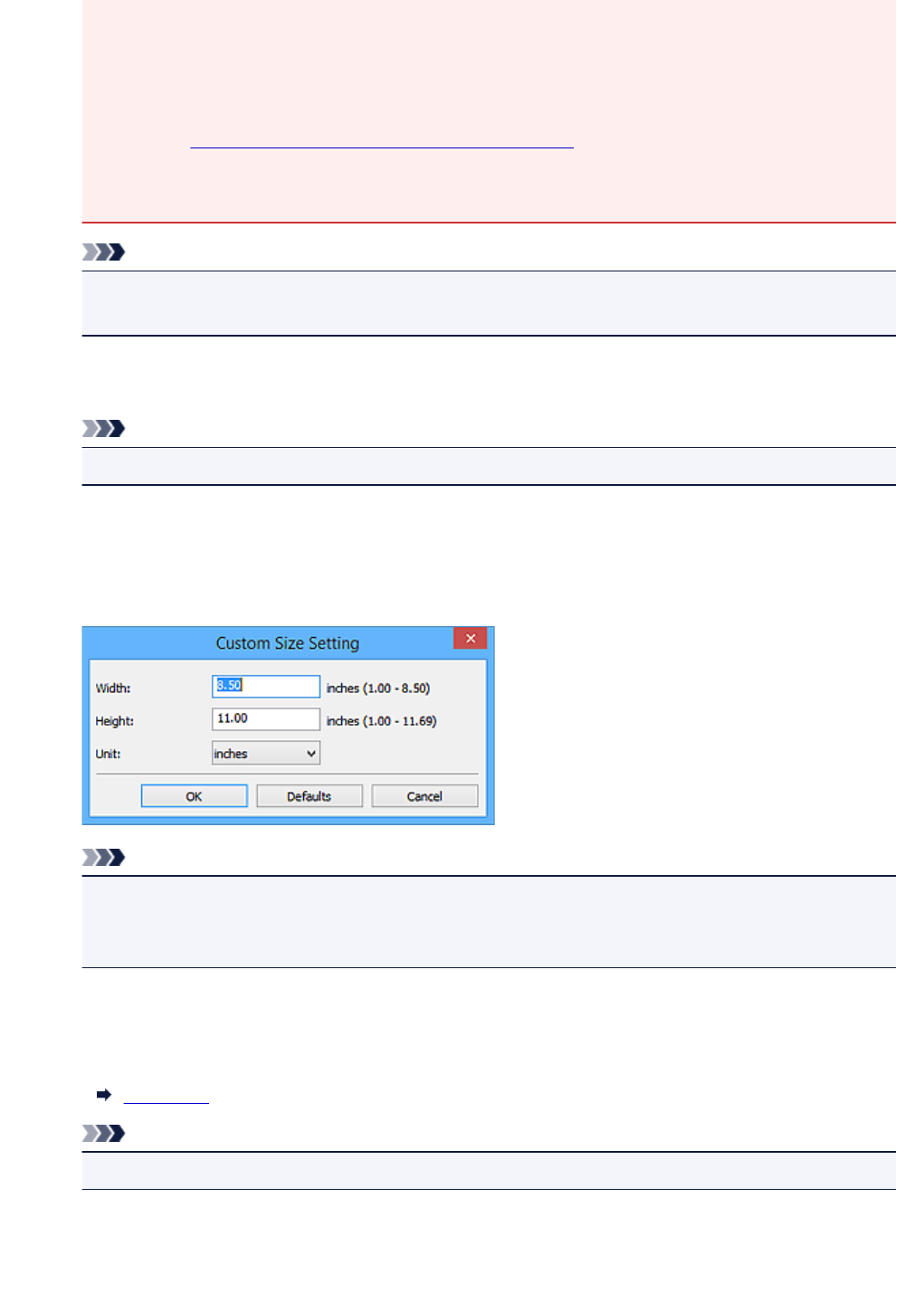
• Long narrow items such as panoramic photos
• Reflective disc labels may not be scanned as expected.
• Place items correctly according to the type of item to be scanned. Otherwise, items may not be
scanned correctly.
Refer to "Positioning Originals (Scanning from Computer)" for how to place items.
• When scanning two or more documents from the ADF (Auto Document Feeder), place
documents of the same size even if Auto is set.
Note
• To reduce moire, set Select Source to Magazine or select the Reduce moire checkbox in
Image Processing Settings.
Color Mode
Select the color mode in which to scan the item.
Note
• Only Color is available when Select Source is Auto.
Paper Size
Select the size of the item to be scanned.
When you select Custom, a screen in which you can specify the paper size appears. Select a Unit,
then enter the Width and Height, and then click OK.
Note
• Only Auto is available when Select Source is Auto.
• Click Defaults in the screen in which you can specify the paper size to restore the specified
settings to the default settings.
Resolution
Select the resolution of the item to be scanned.
The higher the resolution (value), the more detail in your image.
Resolution
Note
• Only Auto is available when Select Source is Auto.
Document Scan Orientation Settings...
This appears when you select ADF or Auto for Select Source.
739
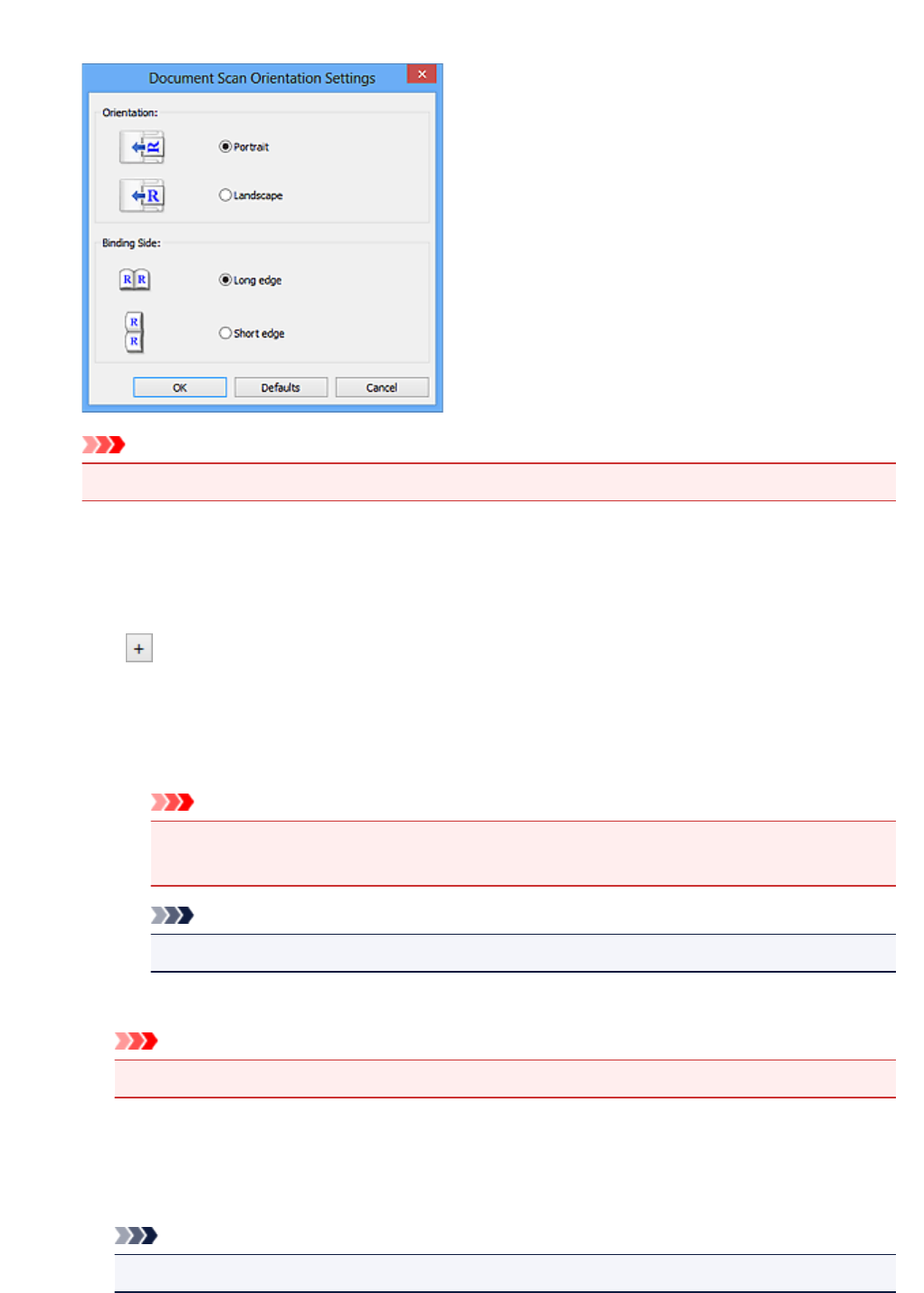
Click to display the Document Scan Orientation Settings dialog box in which you can set the
orientation and binding side of the documents to be scanned from the ADF.
Important
•Binding Side cannot be specified when scanning only the front side of each document.
Scan both sides when scanning from the ADF
This appears when you select Auto for Select Source. Scans both sides of the documents placed on
the ADF.
Image Processing Settings
Click (Plus) to set the following. Available setting items vary by Select Source.
•When Select Source is Auto:
Apply recommended image correction
Applies suitable corrections automatically based on the item type.
Important
• The color tone may differ from the source image due to corrections. In that case,
deselect the checkbox and scan.
Note
• Scanning takes longer than usual when you enable this function.
•When Select Source is Photo:
Important
• When Color Mode is Black and White, Image Processing Settings is not available.
Sharpen outline
Emphasizes the outline of the subjects to sharpen the image.
•When Select Source is Magazine or Document:
Note
• The displayed items vary by Select Source and Color Mode.
740

Apply Auto Document Fix
Select this checkbox to sharpen text in a document or magazine for better readability.
Important
• The color tone may differ from the source image due to corrections. In that case,
deselect the checkbox and scan.
Note
• Scanning takes longer than usual when you enable this function.
Sharpen outline
Emphasizes the outline of the subjects to sharpen the image.
Reduce show-through
Sharpens text in an item or reduces show-through in newspapers, etc.
Reduce moire
Reduces moire patterns.
Printed materials are displayed as a collection of fine dots. "Moire" is a phenomenon where
uneven gradation or a stripe pattern appears when such photos or pictures printed with fine
dots are scanned.
Note
• Scanning takes longer than usual when you enable Reduce moire.
Reduce gutter shadow
Reduces gutter shadows that appear between pages when scanning open booklets.
Important
• This function is available only when scanning from the platen.
Note
• Use ScanGear (scanner driver)'s Advanced Mode tab to correct gutter shadows when
scanning non-standard size items or specified areas.
Refer to "Gutter Shadow Correction" for your model from Home of the Online Manual for
details.
• When you enable this function, scanning may take longer than usual with network
connection.
Correct slanted text document
Detects the scanned text and corrects the angle (within -0.1 to -10 degrees or +0.1 to +10
degrees) of the document.
Important
• The following types of documents may not be corrected properly since the text cannot
be detected correctly.
• Documents in which the text lines are inclined more than 10 degrees or the angles
vary by line
• Documents containing both vertical and horizontal text
741
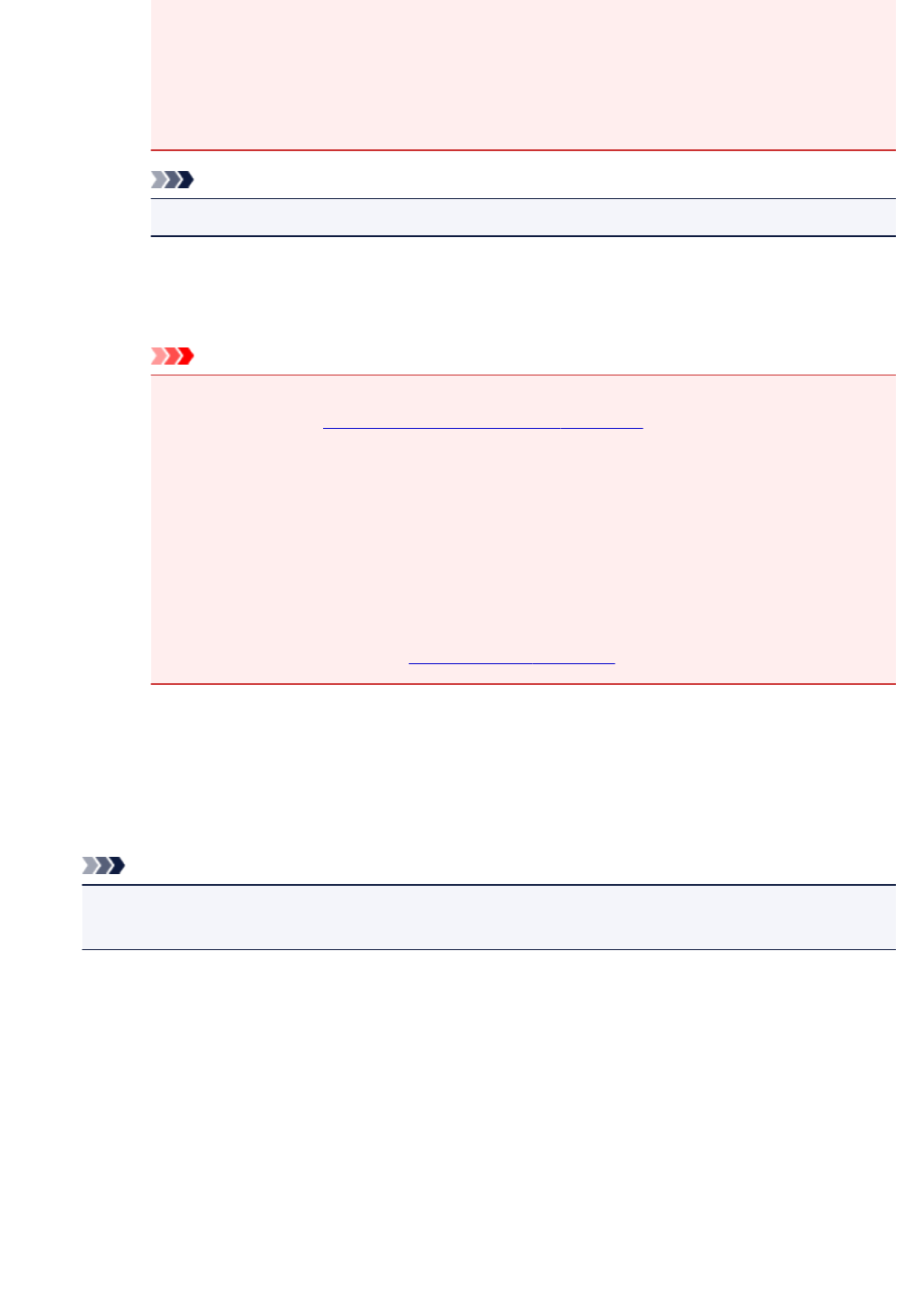
• Documents with extremely large or small fonts
• Documents with small amount of text
• Documents containing figures/images
• Hand-written text
• Documents containing both vertical and horizontal lines (tables)
Note
• Scanning takes longer than usual when you enable Correct slanted text document.
Detect the orientation of text document and rotate image
Automatically rotates the image to the correct orientation by detecting the orientation of text
in the scanned document.
Important
• Only text documents written in languages that can be selected from Document
Language in the Settings (General Settings) dialog box are supported.
• The orientation may not be detected for the following types of settings or documents
since the text cannot be detected correctly.
• Resolution is outside the range of 300 dpi to 600 dpi
• Font size is outside the range of 8 points to 48 points
• Documents containing special fonts, effects, italics, or hand-written text
• Documents with patterned backgrounds
In that case, select the Check scan results and specify save settings checkbox, and
then rotate the image in the Save Settings dialog box.
(2) Save Settings Area
File Name
Enter the file name of the image to be saved. When you save a file, the date and four digits are
appended to the set file name in the "_20XX0101_0001" format.
Note
• When you select the Save to a subfolder with current date checkbox, the date and four digits
are appended to the set file name.
Save in
Displays the folder in which to save the scanned images. To add a folder, select Add... from the pull-
down menu, then click Add in the displayed Select Destination Folder dialog box and specify the
destination folder.
The default save folders are as follows.
•Windows 10/Windows 8.1/Windows Vista:
Documents folder
•Windows 8/Windows 7:
My Documents folder
742

Data Format
Select the data format in which to save the scanned images.
You can select JPEG/Exif, TIFF, PNG, PDF, PDF (Multiple Pages), or Auto.
Important
• You cannot select JPEG/Exif when Color Mode is Black and White.
Note
•Auto appears only when Auto is selected for Select Source.
• With network connection, scanning may take longer than usual when you set TIFF or PNG in
Data Format.
JPEG Image Quality
You can specify the image quality of JPEG files.
Important
• This appears only when JPEG/Exif or Auto is selected in Data Format.
PDF Compression
Select the compression type for saving PDF files.
Standard
It is recommended that you normally select this setting.
High
Compresses the file size when saving, allowing you to reduce the load on your network/server.
Important
• This appears only when PDF or PDF (Multiple Pages) is selected in Data Format.
• When Black and White is selected in Color Mode, this option does not appear.
Create a PDF file that supports keyword search
Select this checkbox to convert text in images into text data and create PDF files that support
keyword search.
Important
• This appears only when PDF, PDF (Multiple Pages), or Auto is selected in Data Format.
Note
• PDF files that are searchable in the language selected in Document Language on the
(General Settings) tab of the Settings dialog box are created.
Set up password security
Select this checkbox to display the Password Security Settings dialog box.
Important
• This appears only when PDF or PDF (Multiple Pages) is selected in Data Format.
743
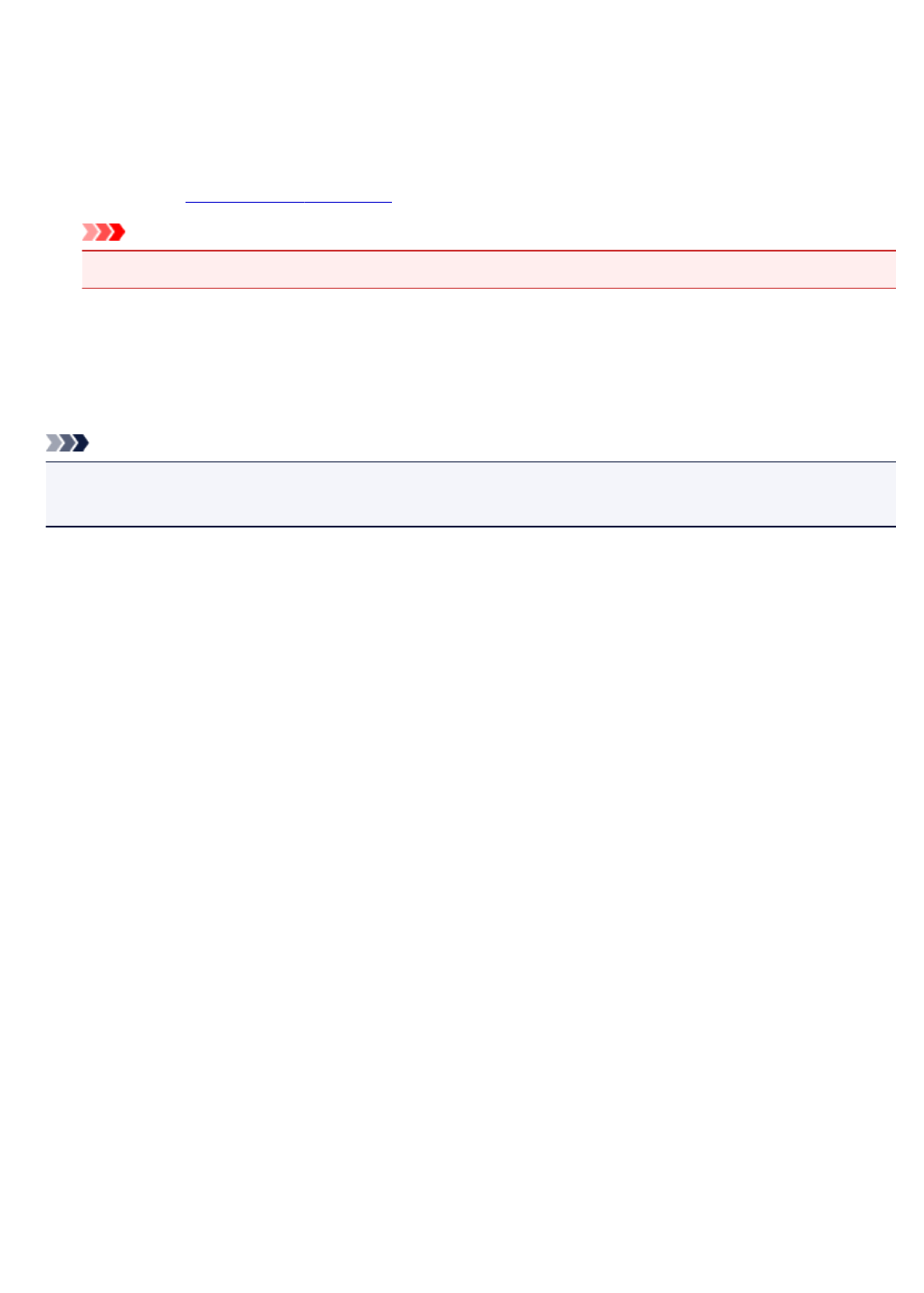
Save to a subfolder with current date
Select this checkbox to create a current date folder in the folder specified in Save in and save
scanned images in it. The folder will be created with a name such as "20XX_01_01"
(Year_Month_Date).
If this checkbox is not selected, files are saved directly in the folder specified in Save in.
Check scan results and specify save settings
Displays the Save Settings dialog box after scanning.
Important
• This does not appear when Select Source is Auto.
(3) Application Settings Area
E-mail Client
Specify the e-mail client to use for attaching scanned images.
Note
• To add an e-mail client to the pull-down menu, select Add... from the pull-down menu, then click Add
in the displayed Select Application dialog box and specify the e-mail client.
Instructions
Opens this guide.
Defaults
You can restore the settings in the displayed screen to the default settings.
744
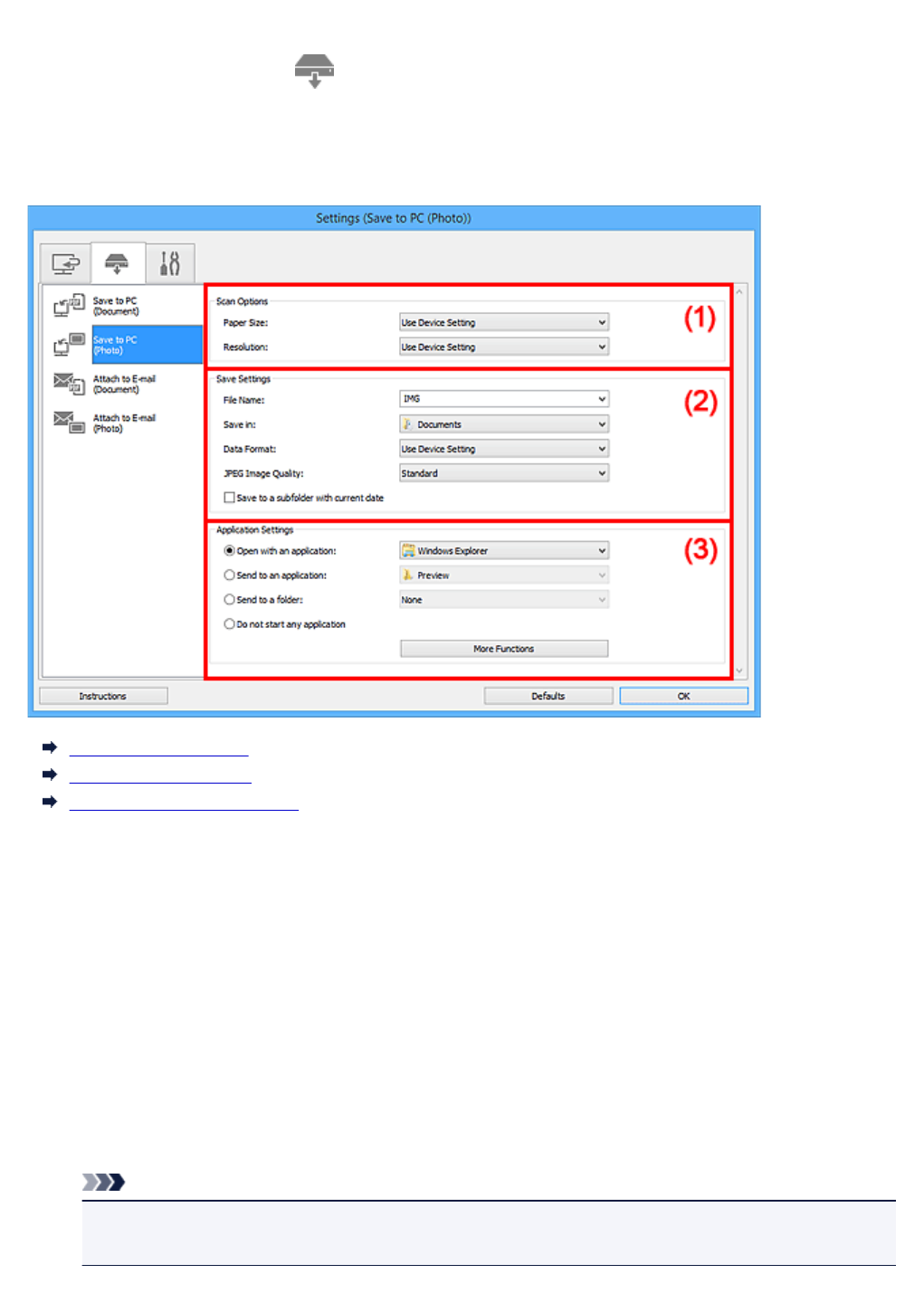
Settings (Save to PC (Photo)) Dialog Box
Click Save to PC (Photo) on the (Scanning from the Operation Panel) tab to display the Settings
(Save to PC (Photo)) dialog box.
In the Settings (Save to PC (Photo)) dialog box, you can specify how to respond when saving images to a
computer as photos after scanning them from the operation panel.
(1) Scan Options Area
(2) Save Settings Area
(3) Application Settings Area
(1) Scan Options Area
Paper Size
Set from the operation panel.
Resolution
Set from the operation panel.
(2) Save Settings Area
File Name
Enter the file name of the image to be saved. When you save a file, the date and four digits are
appended to the set file name in the "_20XX0101_0001" format.
Note
• When you select the Save to a subfolder with current date checkbox, the date and four digits
are appended to the set file name.
745
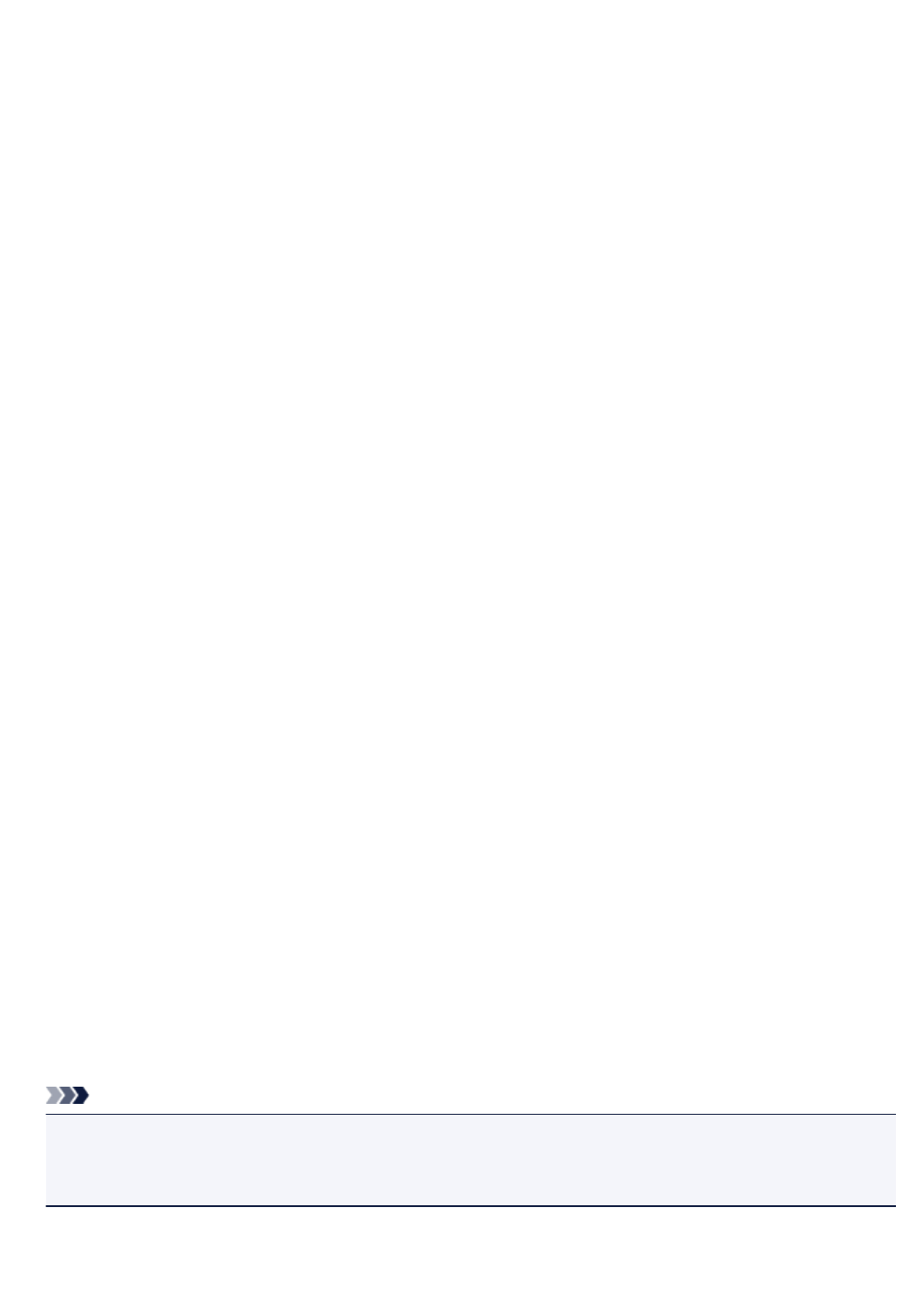
Save in
Displays the folder in which to save the scanned images. To add a folder, select Add... from the pull-
down menu, then click Add in the displayed Select Destination Folder dialog box and specify the
destination folder.
The default save folders are as follows.
•Windows 10/Windows 8.1/Windows Vista:
Documents folder
•Windows 8/Windows 7:
My Documents folder
Data Format
Set from the operation panel.
JPEG Image Quality
You can specify the image quality of JPEG files.
Save to a subfolder with current date
Select this checkbox to create a current date folder in the folder specified in Save in and save
scanned images in it. The folder will be created with a name such as "20XX_01_01"
(Year_Month_Date).
If this checkbox is not selected, files are saved directly in the folder specified in Save in.
(3) Application Settings Area
Open with an application
Select this when you want to enhance or correct the scanned images.
You can specify the application from the pull-down menu.
Send to an application
Select this when you want to use the scanned images as they are in an application that allows you to
browse or organize images.
You can specify the application from the pull-down menu.
Send to a folder
Select this when you also want to save the scanned images to a folder other than the one specified in
Save in.
You can specify the folder from the pull-down menu.
Do not start any application
Saves to the folder specified in Save in.
Note
•To add an application or folder to the pull-down menu, select Add... from the pull-down menu, then
click Add in the displayed Select Application or Select Destination Folder dialog box and specify
the application or folder.
746

Instructions
Opens this guide.
Defaults
You can restore the settings in the displayed screen to the default settings.
747
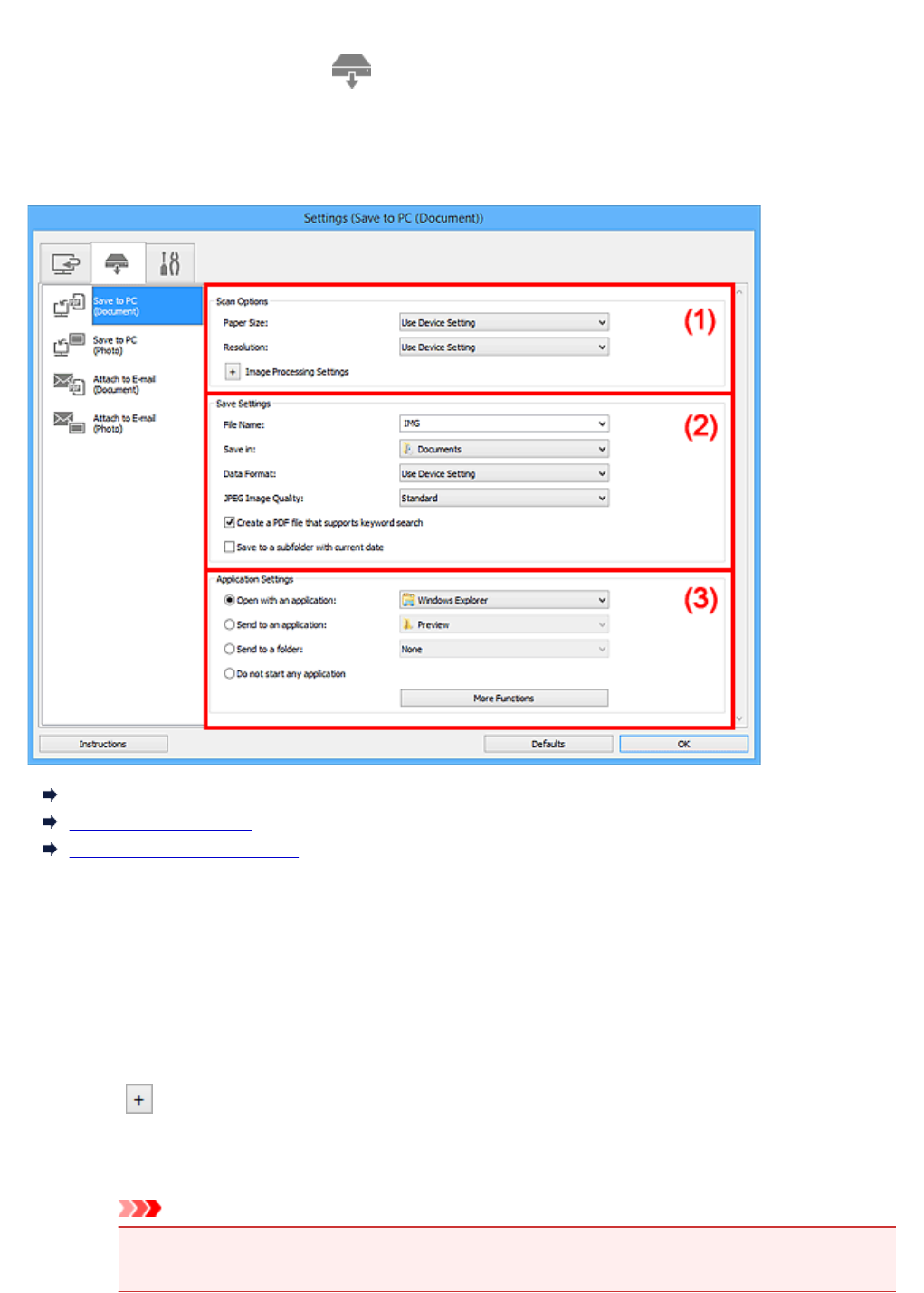
Settings (Save to PC (Document)) Dialog Box
Click Save to PC (Document) on the (Scanning from the Operation Panel) tab to display the Settings
(Save to PC (Document)) dialog box.
In the Settings (Save to PC (Document)) dialog box, you can specify how to respond when saving images
to a computer as documents after scanning them from the operation panel.
(1) Scan Options Area
(2) Save Settings Area
(3) Application Settings Area
(1) Scan Options Area
Paper Size
Set from the operation panel.
Resolution
Set from the operation panel.
Image Processing Settings
Click (Plus) to set the following.
Apply Auto Document Fix
Select this checkbox to sharpen text in a document or magazine for better readability.
Important
• The color tone may differ from the source image due to corrections. In that case, deselect
the checkbox and scan.
748
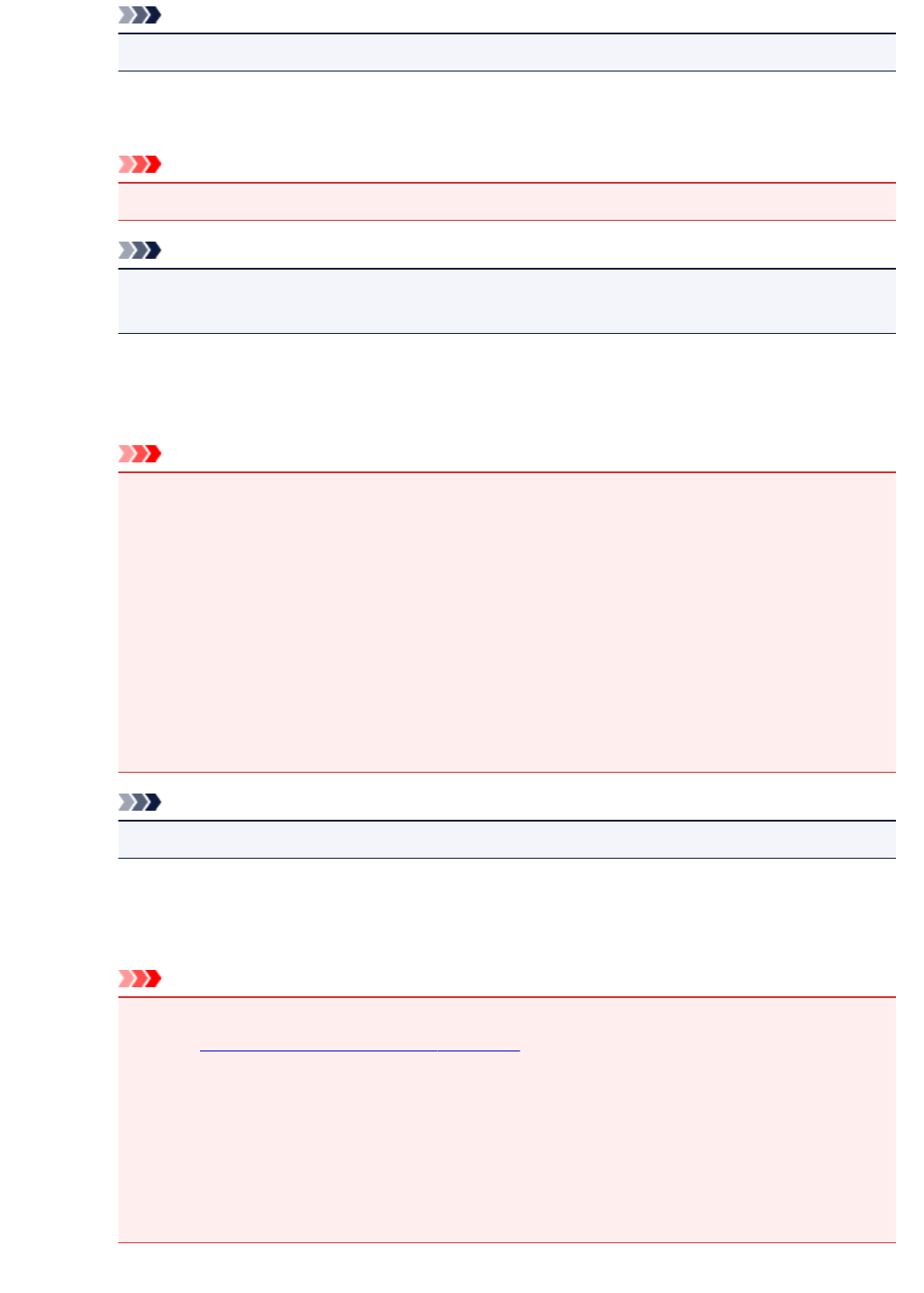
Note
• Scanning takes longer than usual when you enable this function.
Reduce gutter shadow (platen)
Reduces gutter shadows that appear between pages when scanning open booklets.
Important
• This function is available only when scanning from the platen.
Note
• When you enable this function, scanning may take longer than usual with network
connection.
Correct slanted text document
Detects the scanned text and corrects the angle (within -0.1 to -10 degrees or +0.1 to +10
degrees) of the document.
Important
• The following types of documents may not be corrected properly since the text cannot be
detected correctly.
• Documents in which the text lines are inclined more than 10 degrees or the angles vary
by line
• Documents containing both vertical and horizontal text
• Documents with extremely large or small fonts
• Documents with small amount of text
• Documents containing figures/images
• Hand-written text
• Documents containing both vertical and horizontal lines (tables)
Note
• Scanning takes longer than usual when you enable Correct slanted text document.
Detect the orientation of text document and rotate image
Automatically rotates the image to the correct orientation by detecting the orientation of text in
the scanned document.
Important
• Only text documents written in languages that can be selected from Document Language
in the Settings (General Settings) dialog box are supported.
• The orientation may not be detected for the following types of settings or documents since
the text cannot be detected correctly.
• Resolution is outside the range of 300 dpi to 600 dpi
• Font size is outside the range of 8 points to 48 points
• Documents containing special fonts, effects, italics, or hand-written text
• Documents with patterned backgrounds
749
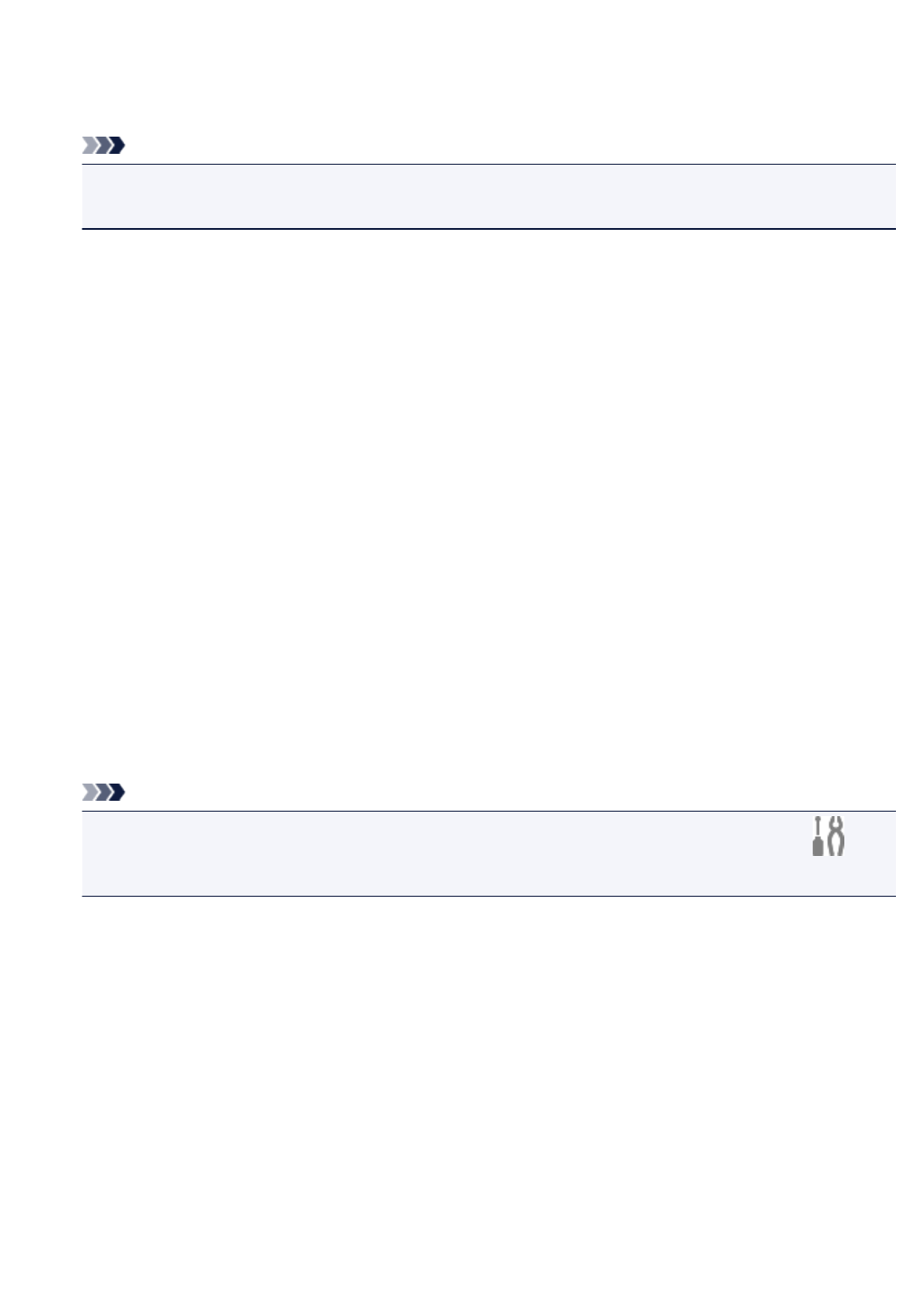
(2) Save Settings Area
File Name
Enter the file name of the image to be saved. When you save a file, the date and four digits are
appended to the set file name in the "_20XX0101_0001" format.
Note
• When you select the Save to a subfolder with current date checkbox, the date and four digits
are appended to the set file name.
Save in
Displays the folder in which to save the scanned images. To add a folder, select Add... from the pull-
down menu, then click Add in the displayed Select Destination Folder dialog box and specify the
destination folder.
The default save folders are as follows.
•Windows 10/Windows 8.1/Windows Vista:
Documents folder
•Windows 8/Windows 7:
My Documents folder
Data Format
Set from the operation panel.
JPEG Image Quality
You can specify the image quality of JPEG files.
Create a PDF file that supports keyword search
Select this checkbox to convert text in images into text data and create PDF files that support
keyword search.
Note
• PDF files that are searchable in the language selected in Document Language on the
(General Settings) tab of the Settings dialog box are created.
Save to a subfolder with current date
Select this checkbox to create a current date folder in the folder specified in Save in and save
scanned images in it. The folder will be created with a name such as "20XX_01_01"
(Year_Month_Date).
If this checkbox is not selected, files are saved directly in the folder specified in Save in.
(3) Application Settings Area
Open with an application
Select this when you want to enhance or correct the scanned images.
You can specify the application from the pull-down menu.
750
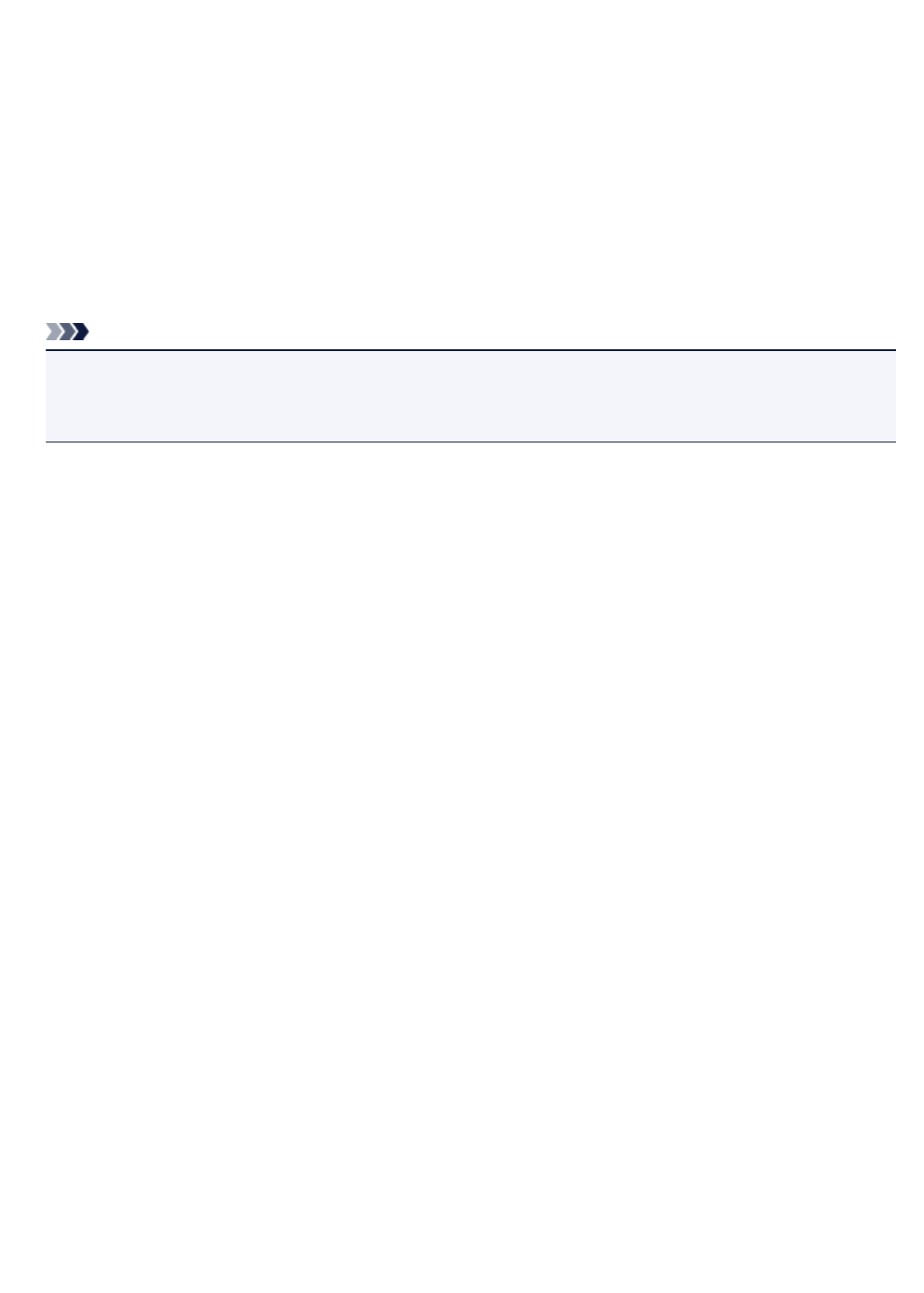
Send to an application
Select this when you want to use the scanned images as they are in an application that allows you to
browse or organize images.
You can specify the application from the pull-down menu.
Send to a folder
Select this when you also want to save the scanned images to a folder other than the one specified in
Save in.
You can specify the folder from the pull-down menu.
Do not start any application
Saves to the folder specified in Save in.
Note
• To add an application or folder to the pull-down menu, select Add... from the pull-down menu, then
click Add in the displayed Select Application or Select Destination Folder dialog box and specify
the application or folder.
Instructions
Opens this guide.
Defaults
You can restore the settings in the displayed screen to the default settings.
751
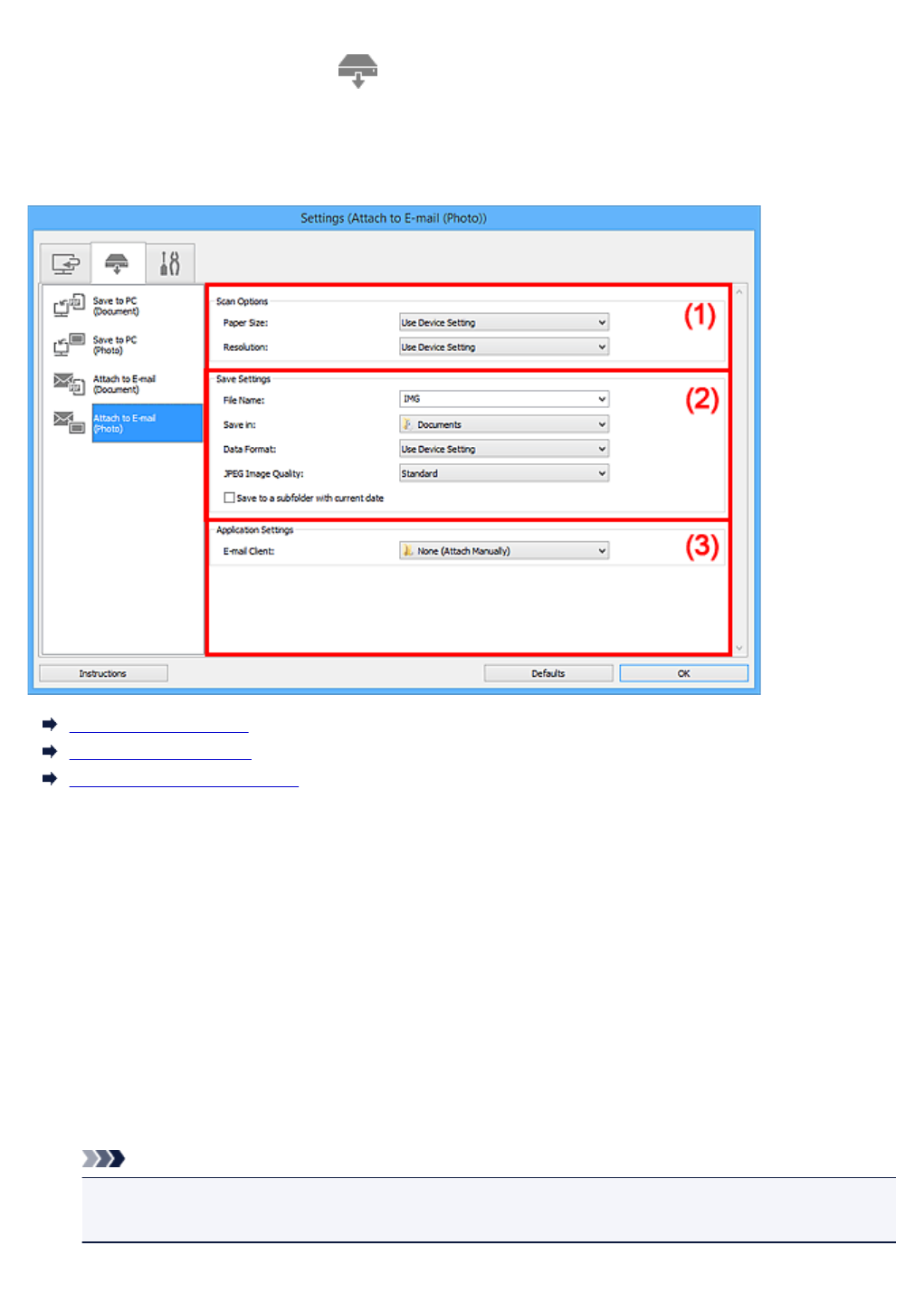
Settings (Attach to E-mail (Photo)) Dialog Box
Click Attach to E-mail (Photo) on the (Scanning from the Operation Panel) tab to display the Settings
(Attach to E-mail (Photo)) dialog box.
In the Settings (Attach to E-mail (Photo)) dialog box, you can specify how to respond when attaching
images to an e-mail as photos after scanning them from the operation panel.
(1) Scan Options Area
(2) Save Settings Area
(3) Application Settings Area
(1) Scan Options Area
Paper Size
Set from the operation panel.
Resolution
Set from the operation panel.
(2) Save Settings Area
File Name
Enter the file name of the image to be saved. When you save a file, the date and four digits are
appended to the set file name in the "_20XX0101_0001" format.
Note
• When you select the Save to a subfolder with current date checkbox, the date and four digits
are appended to the set file name.
752
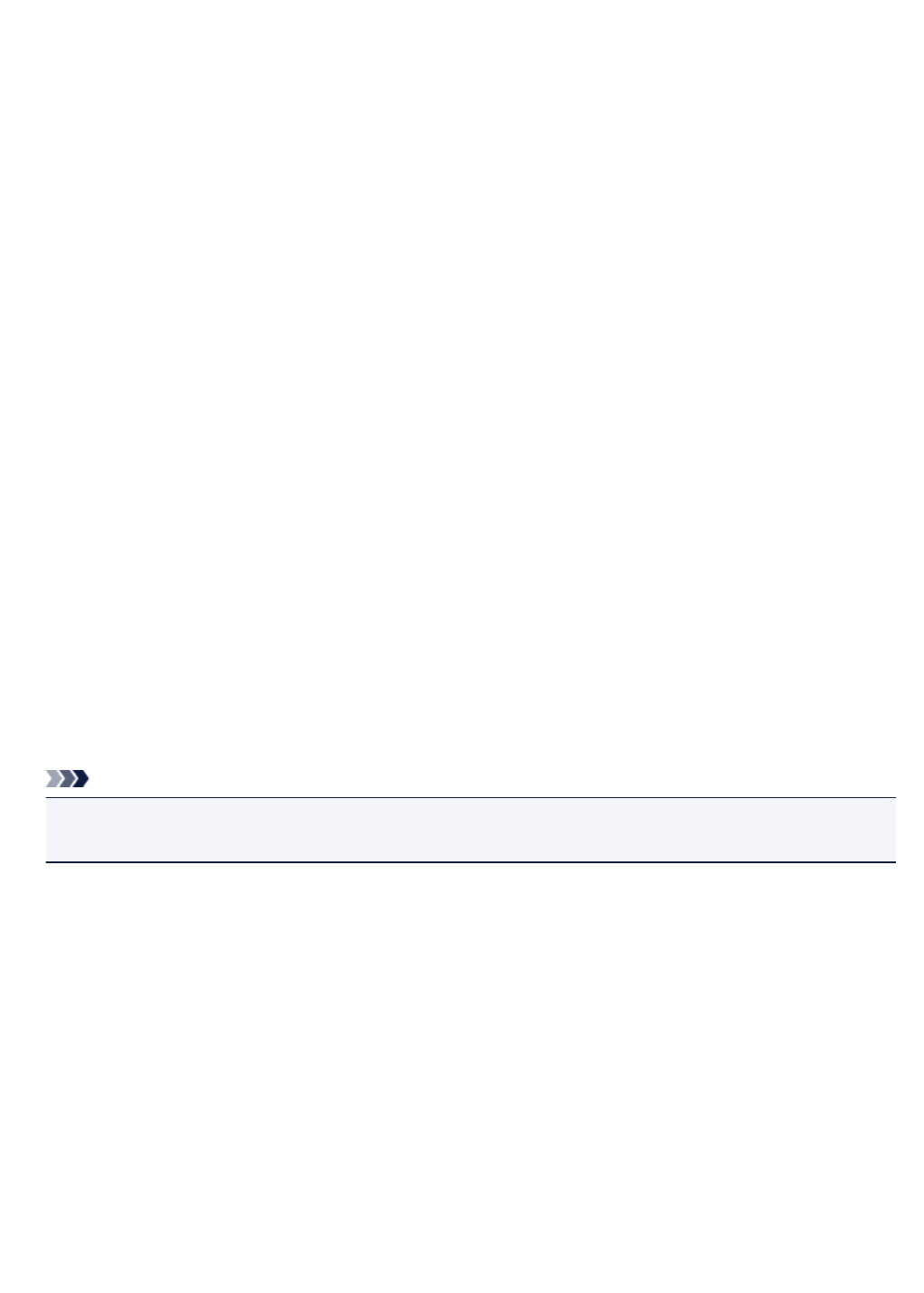
Save in
Displays the folder in which to save the scanned images. To add a folder, select Add... from the pull-
down menu, then click Add in the displayed Select Destination Folder dialog box and specify the
destination folder.
The default save folders are as follows.
•Windows 10/Windows 8.1/Windows Vista:
Documents folder
•Windows 8/Windows 7:
My Documents folder
Data Format
Set from the operation panel.
JPEG Image Quality
You can specify the image quality of JPEG files.
Save to a subfolder with current date
Select this checkbox to create a current date folder in the folder specified in Save in and save
scanned images in it. The folder will be created with a name such as "20XX_01_01"
(Year_Month_Date).
If this checkbox is not selected, files are saved directly in the folder specified in Save in.
(3) Application Settings Area
E-mail Client
Specify the e-mail client to use for attaching scanned images.
You can specify the e-mail client you want to start from the pull-down menu.
Note
• To add an e-mail client to the pull-down menu, select Add... from the pull-down menu, then click Add
in the displayed Select Application dialog box and specify the e-mail client.
Instructions
Opens this guide.
Defaults
You can restore the settings in the displayed screen to the default settings.
753
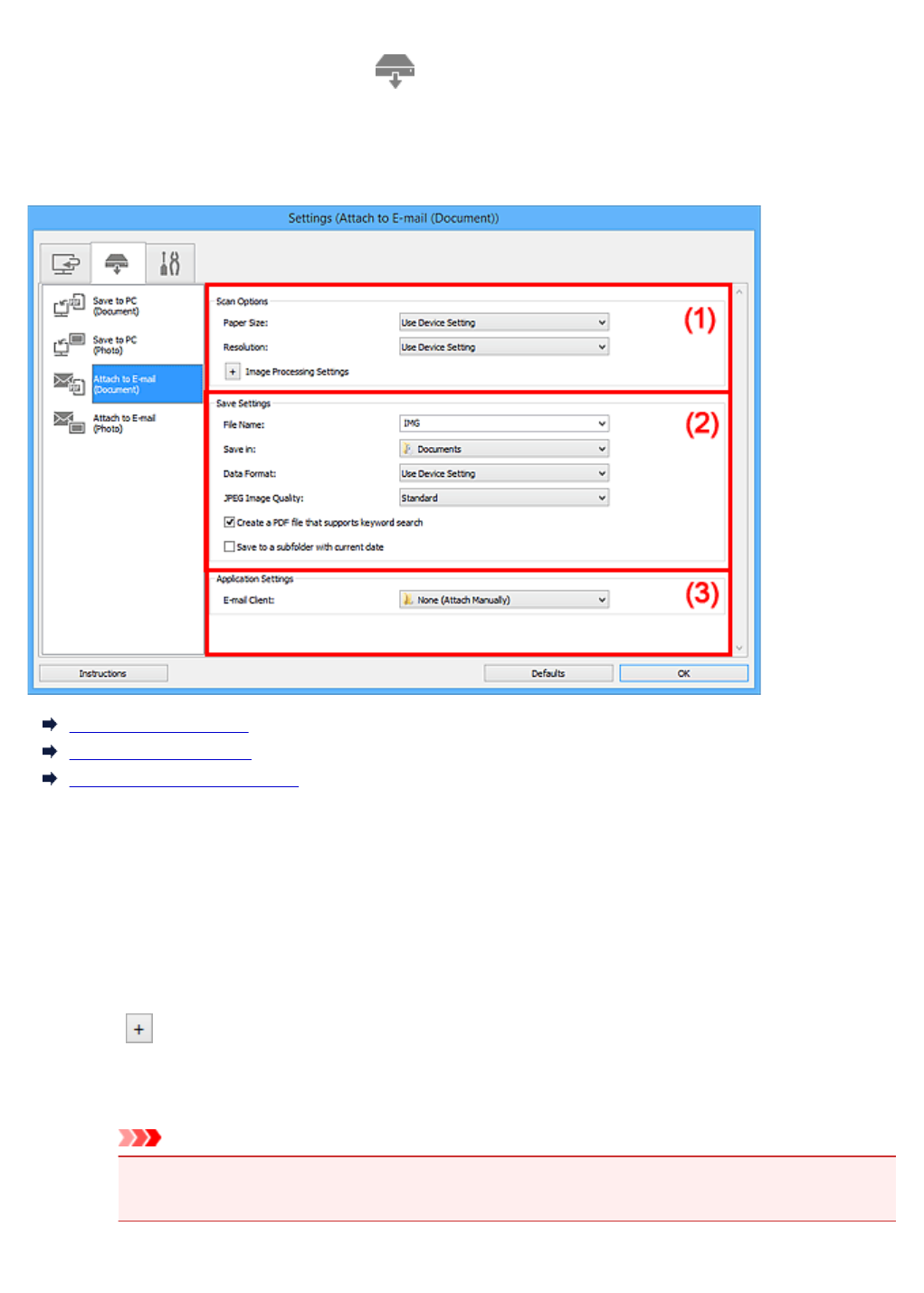
Settings (Attach to E-mail (Document)) Dialog Box
Click Attach to E-mail (Document) on the (Scanning from the Operation Panel) tab to display the
Settings (Attach to E-mail (Document)) dialog box.
In the Settings (Attach to E-mail (Document)) dialog box, you can specify how to respond when attaching
images to an e-mail as documents after scanning them from the operation panel.
(1) Scan Options Area
(2) Save Settings Area
(3) Application Settings Area
(1) Scan Options Area
Paper Size
Set from the operation panel.
Resolution
Set from the operation panel.
Image Processing Settings
Click (Plus) to set the following.
Apply Auto Document Fix
Select this checkbox to sharpen text in a document or magazine for better readability.
Important
• The color tone may differ from the source image due to corrections. In that case, deselect
the checkbox and scan.
754
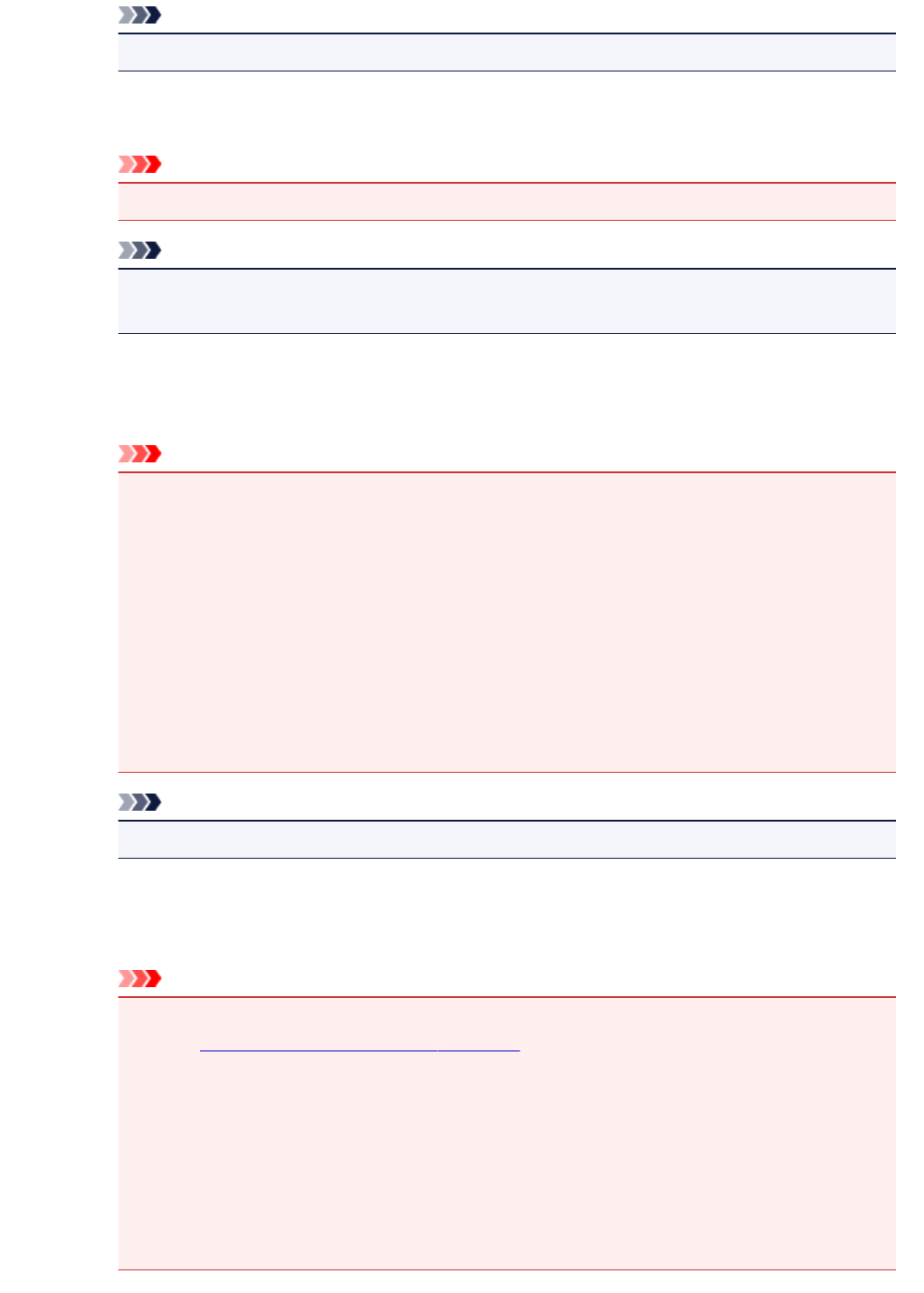
Note
• Scanning takes longer than usual when you enable this function.
Reduce gutter shadow (platen)
Reduces gutter shadows that appear between pages when scanning open booklets.
Important
• This function is available only when scanning from the platen.
Note
• When you enable this function, scanning may take longer than usual with network
connection.
Correct slanted text document
Detects the scanned text and corrects the angle (within -0.1 to -10 degrees or +0.1 to +10
degrees) of the document.
Important
• The following types of documents may not be corrected properly since the text cannot be
detected correctly.
• Documents in which the text lines are inclined more than 10 degrees or the angles vary
by line
• Documents containing both vertical and horizontal text
• Documents with extremely large or small fonts
• Documents with small amount of text
• Documents containing figures/images
• Hand-written text
• Documents containing both vertical and horizontal lines (tables)
Note
• Scanning takes longer than usual when you enable Correct slanted text document.
Detect the orientation of text document and rotate image
Automatically rotates the image to the correct orientation by detecting the orientation of text in
the scanned document.
Important
• Only text documents written in languages that can be selected from Document Language
in the Settings (General Settings) dialog box are supported.
• The orientation may not be detected for the following types of settings or documents since
the text cannot be detected correctly.
• Resolution is outside the range of 300 dpi to 600 dpi
• Font size is outside the range of 8 points to 48 points
• Documents containing special fonts, effects, italics, or hand-written text
• Documents with patterned backgrounds
755
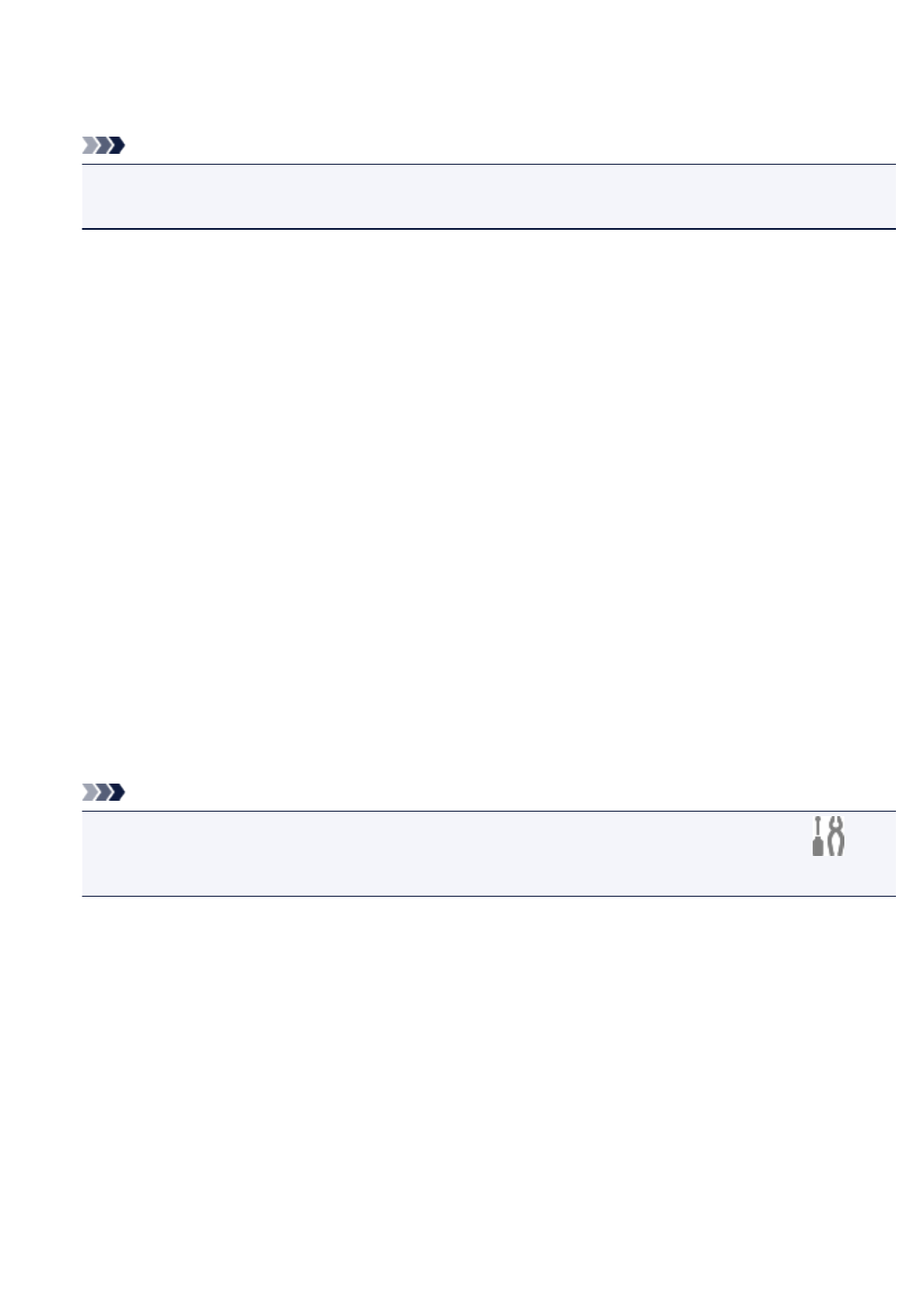
(2) Save Settings Area
File Name
Enter the file name of the image to be saved. When you save a file, the date and four digits are
appended to the set file name in the "_20XX0101_0001" format.
Note
• When you select the Save to a subfolder with current date checkbox, the date and four digits
are appended to the set file name.
Save in
Displays the folder in which to save the scanned images. To add a folder, select Add... from the pull-
down menu, then click Add in the displayed Select Destination Folder dialog box and specify the
destination folder.
The default save folders are as follows.
•Windows 10/Windows 8.1/Windows Vista:
Documents folder
•Windows 8/Windows 7:
My Documents folder
Data Format
Set from the operation panel.
JPEG Image Quality
You can specify the image quality of JPEG files.
Create a PDF file that supports keyword search
Select this checkbox to convert text in images into text data and create PDF files that support
keyword search.
Note
• PDF files that are searchable in the language selected in Document Language on the
(General Settings) tab of the Settings dialog box are created.
Save to a subfolder with current date
Select this checkbox to create a current date folder in the folder specified in Save in and save
scanned images in it. The folder will be created with a name such as "20XX_01_01"
(Year_Month_Date).
If this checkbox is not selected, files are saved directly in the folder specified in Save in.
(3) Application Settings Area
E-mail Client
Specify the e-mail client to use for attaching scanned images.
You can specify the e-mail client you want to start from the pull-down menu.
756
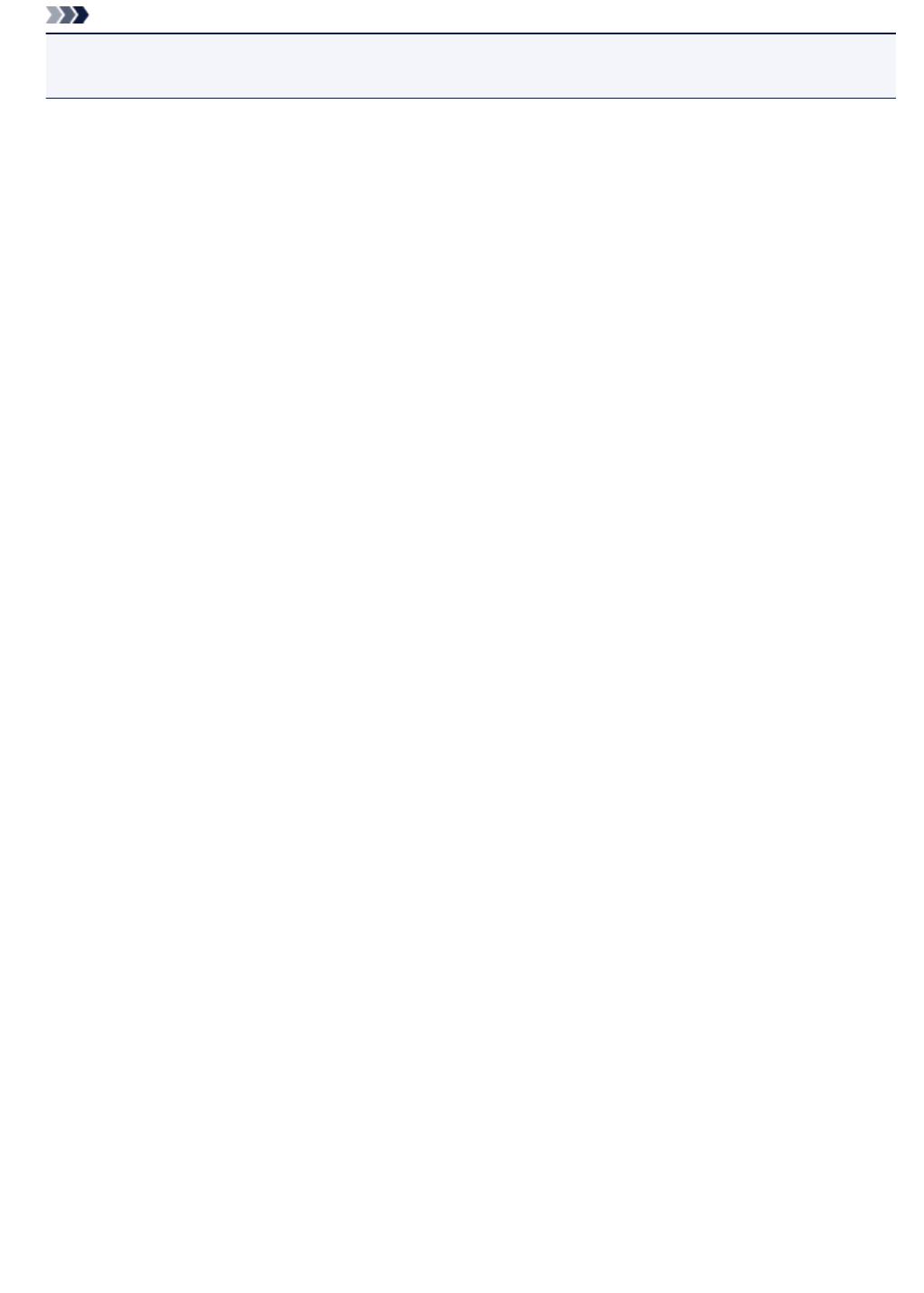
Note
• To add an e-mail client to the pull-down menu, select Add... from the pull-down menu, then click Add
in the displayed Select Application dialog box and specify the e-mail client.
Instructions
Opens this guide.
Defaults
You can restore the settings in the displayed screen to the default settings.
757
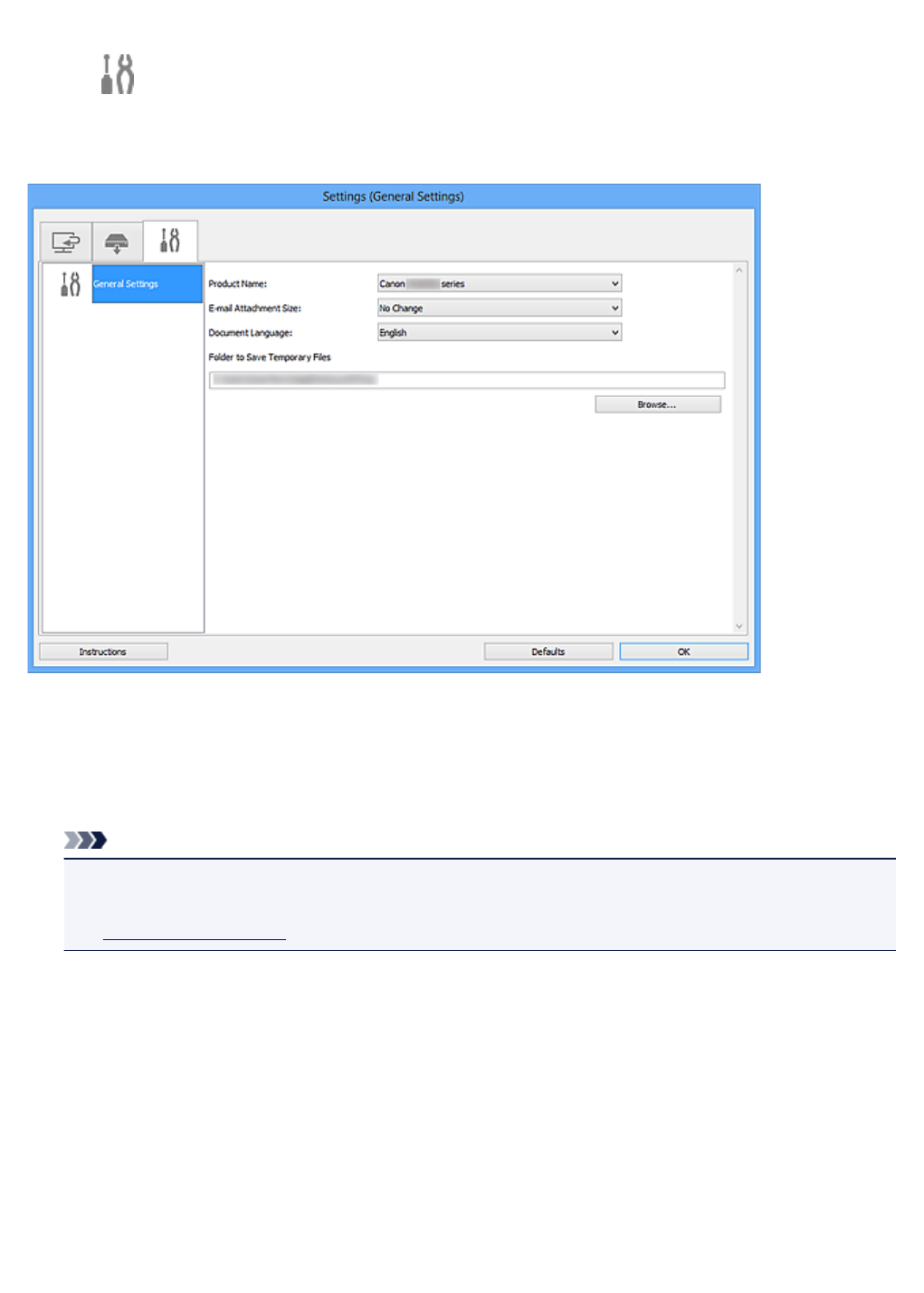
Settings (General Settings) Dialog Box
Click the (General Settings) tab to display the Settings (General Settings) dialog box.
In the Settings (General Settings) dialog box, you can set the product to use, file size restriction on e-mail
attachment, language to detect text in images, and folder in which to save images temporarily.
Product Name
Displays the name of the product that IJ Scan Utility is currently set to use.
If the displayed product is not the one you want to use, select the desired product from the list.
In addition, for network connection, select one with "Network" after the product name.
Note
• With network connection, Select appears on the right side of the product name. Click Select to
display IJ Network Scanner Selector EX from which you can change the scanner to use. Refer to
"Network Scan Settings" for the setting procedure.
E-mail Attachment Size
You can restrict the size of scanned images to be attached to an e-mail.
You can select Small (Suitable for 640 x 480 Windows), Medium (Suitable for 800 x 600 Windows),
Large (Suitable for 1024 x 768 Windows), or No Change.
Document Language
You can select the language for detecting text in images and for use with search when a PDF file that
supports keyword search is created.
Folder to Save Temporary Files
Displays the folder in which to save images temporarily. Click Browse... to specify the destination
folder.
758

Instructions
Opens this guide.
Defaults
You can restore the settings in the displayed screen to the default settings.
759
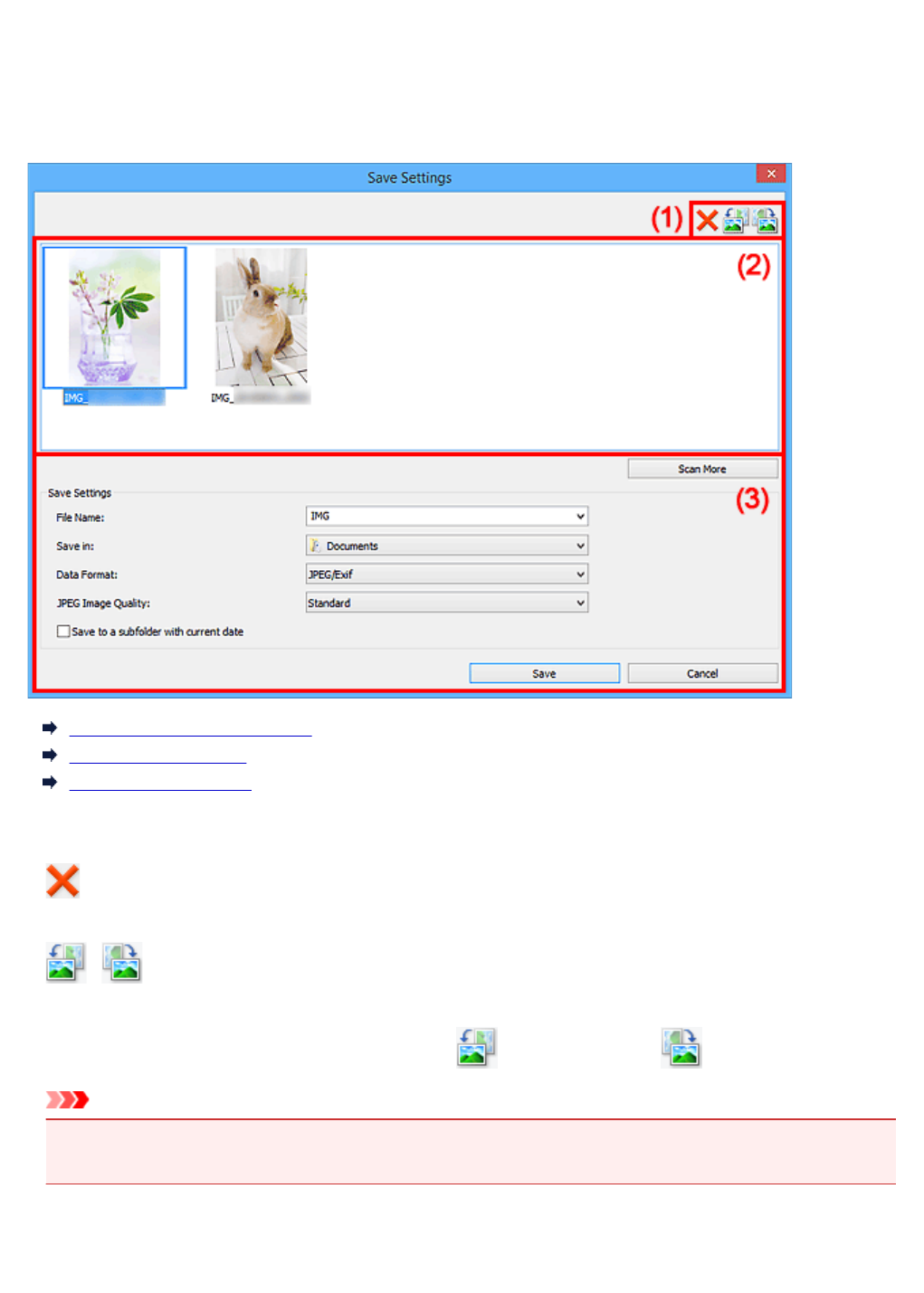
Save Settings Dialog Box
Select the Check scan results and specify save settings checkbox in Save Settings of the Settings
dialog box to display the Save Settings dialog box after scanning.
You can specify the data format and destination while viewing the thumbnails of scan results.
(1) Preview Operation Buttons
(2) Scan Results Area
(3) Save Settings Area
(1) Preview Operation Buttons
(Delete)
Deletes the image selected in the Scan Results area.
/ (Rotate Left 90°)/(Rotate Right 90°)
Rotates scanned images 90 degrees counter-clockwise or clockwise.
Select the image you want to rotate, then click (Rotate Left 90°) or (Rotate Right 90°).
Important
• The preview operation buttons do not appear when the Enable large image scans checkbox is
selected in the Settings (ScanGear) dialog box.
760
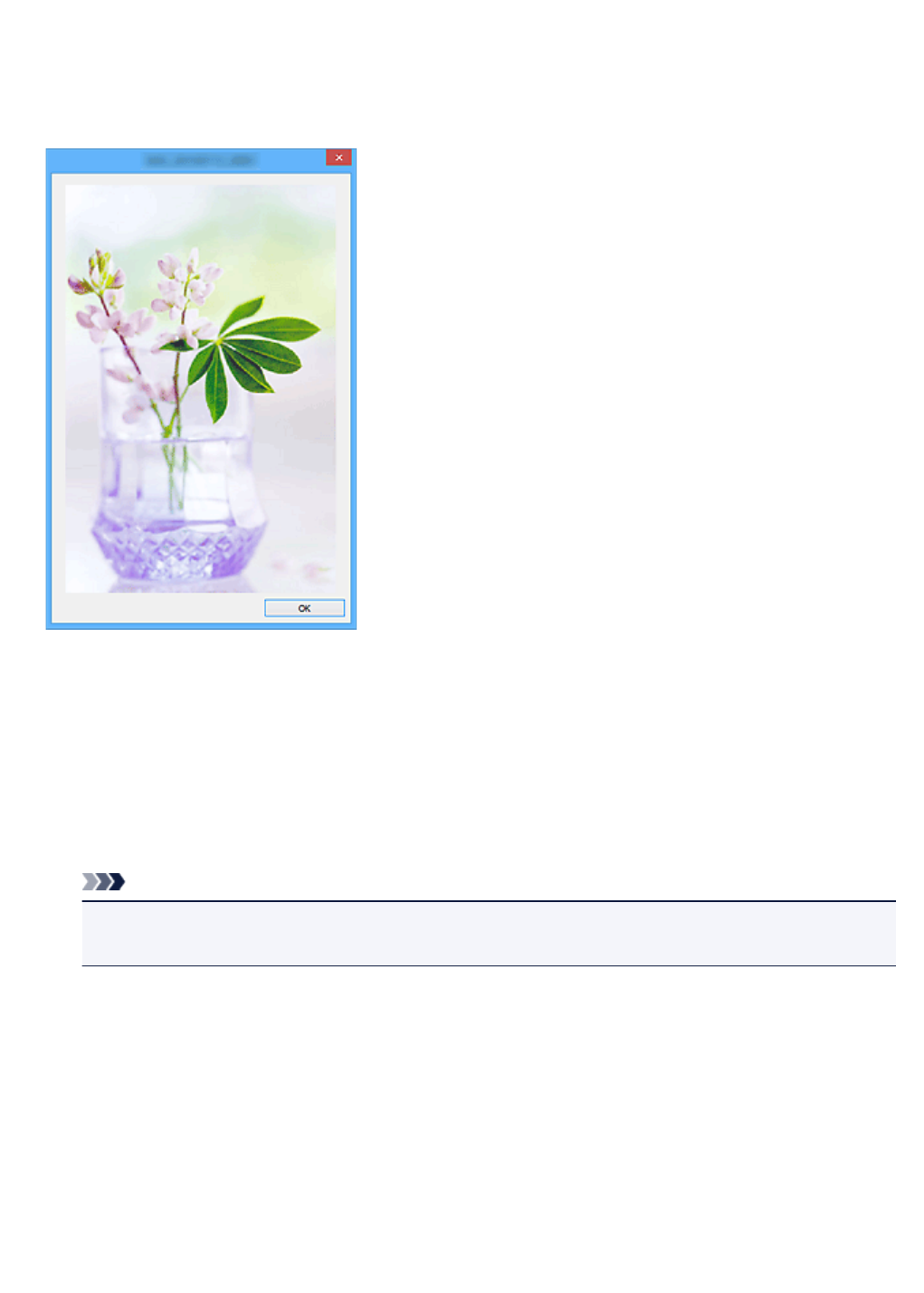
(2) Scan Results Area
Displays the thumbnails of the scanned images. You can change the save order of images via drag-and-
drop. The file names for saving appear below the thumbnails.
Double-click a thumbnail to enlarge the view of the scanned image.
(3) Save Settings Area
Scan More
Starts scanning again, and then adds the image to the Scan Results area.
File Name
Enter the file name of the image to be saved. When you save a file, the date and four digits are
appended to the set file name in the "_20XX0101_0001" format.
Note
• When you select the Save to a subfolder with current date checkbox, the date and four digits
are appended to the set file name.
Save in
Displays the folder in which to save the scanned images. To add a folder, select Add... from the pull-
down menu, then click Add in the displayed Select Destination Folder dialog box and specify the
destination folder.
The default save folders are as follows.
•Windows 10/Windows 8.1/Windows Vista:
Documents folder
•Windows 8/Windows 7:
My Documents folder
761
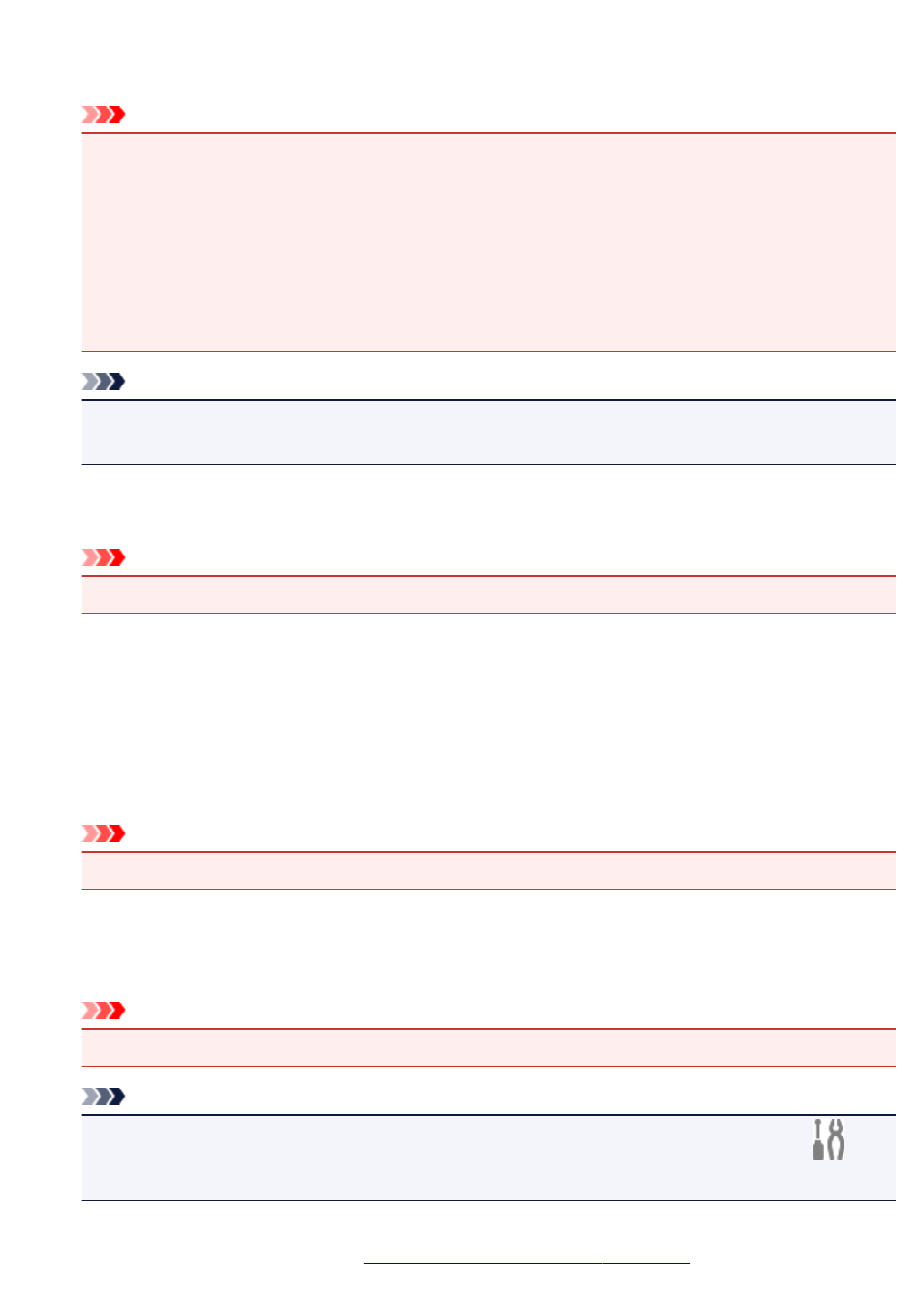
Data Format
Select the data format in which to save the scanned images.
You can select JPEG/Exif, TIFF, PNG, PDF, or PDF (Multiple Pages).
Important
• You cannot select PDF or PDF (Multiple Pages) in the following cases.
• When scanned by clicking Photo in the IJ Scan Utility main screen
• The Enable large image scans checkbox is selected in Save Settings of the Settings
(ScanGear) dialog box
•Start OCR is selected in Application Settings of the Settings (Document Scan), Settings
(Custom Scan), or Settings (ScanGear) dialog box
• You cannot select JPEG/Exif when Color Mode is Black and White.
Note
• With network connection, scanning may take longer than usual when you set TIFF or PNG in
Data Format.
JPEG Image Quality
You can specify the image quality of JPEG files.
Important
• This appears only when JPEG/Exif is selected in Data Format.
PDF Compression
Select the compression type for saving PDF files.
Standard
It is recommended that you normally select this setting.
High
Compresses the file size when saving, allowing you to reduce the load on your network/server.
Important
• This appears only when PDF or PDF (Multiple Pages) is selected in Data Format.
Create a PDF file that supports keyword search
Select this checkbox to convert text in images into text data and create PDF files that support
keyword search.
Important
• This appears only when PDF or PDF (Multiple Pages) is selected in Data Format.
Note
• PDF files that are searchable in the language selected in Document Language on the
(General Settings) tab of the Settings dialog box are created.
Set up password security
Select this checkbox to display the Password Security Settings dialog box.
762
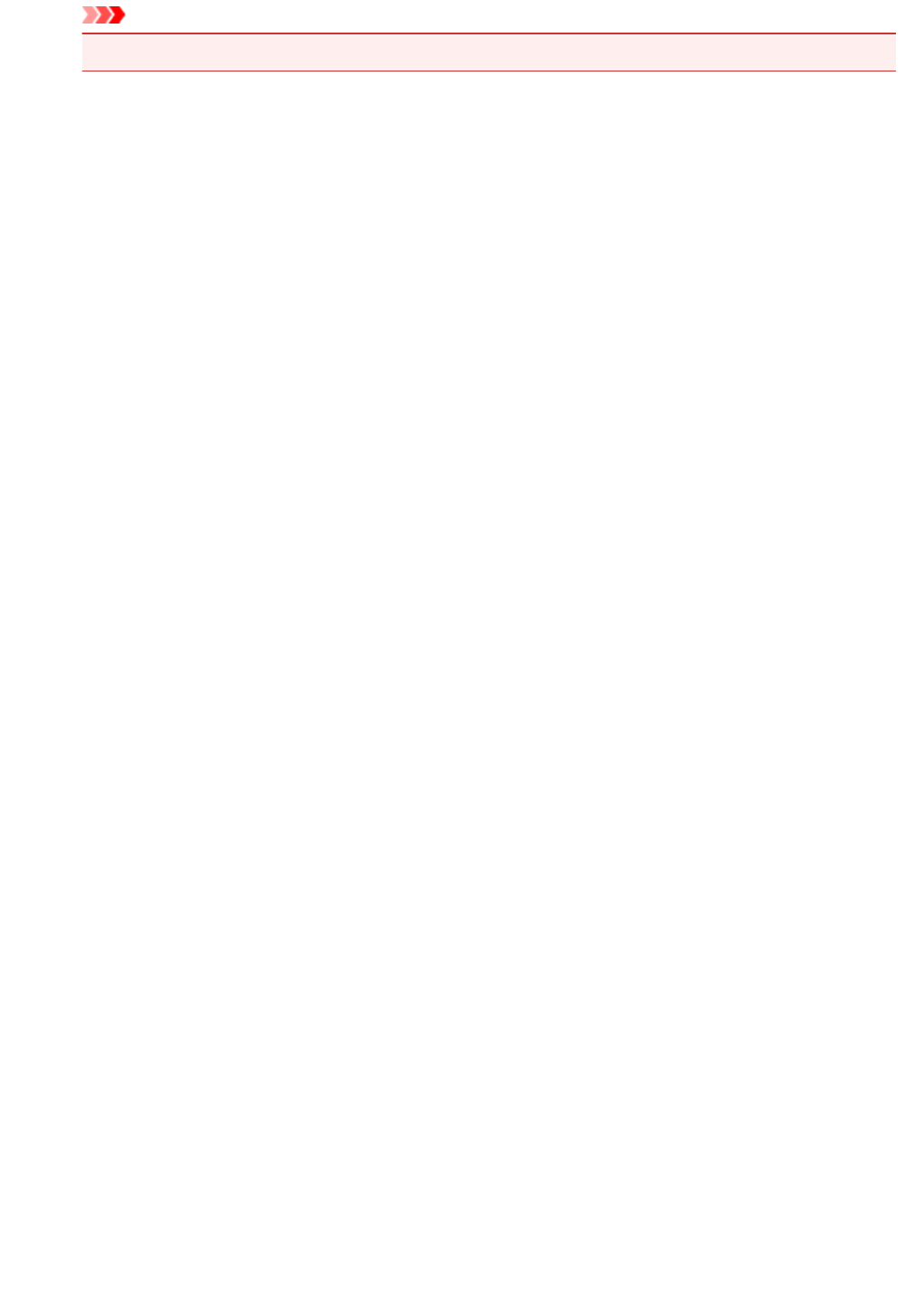
Important
• This appears only when PDF or PDF (Multiple Pages) is selected in Data Format.
Save to a subfolder with current date
Select this checkbox to create a current date folder in the folder specified in Save in and save
scanned images in it. The folder will be created with a name such as "20XX_01_01"
(Year_Month_Date).
If this checkbox is not selected, files are saved directly in the folder specified in Save in.
Save
Saves the scanned images.
Cancel
Cancels saving.
763
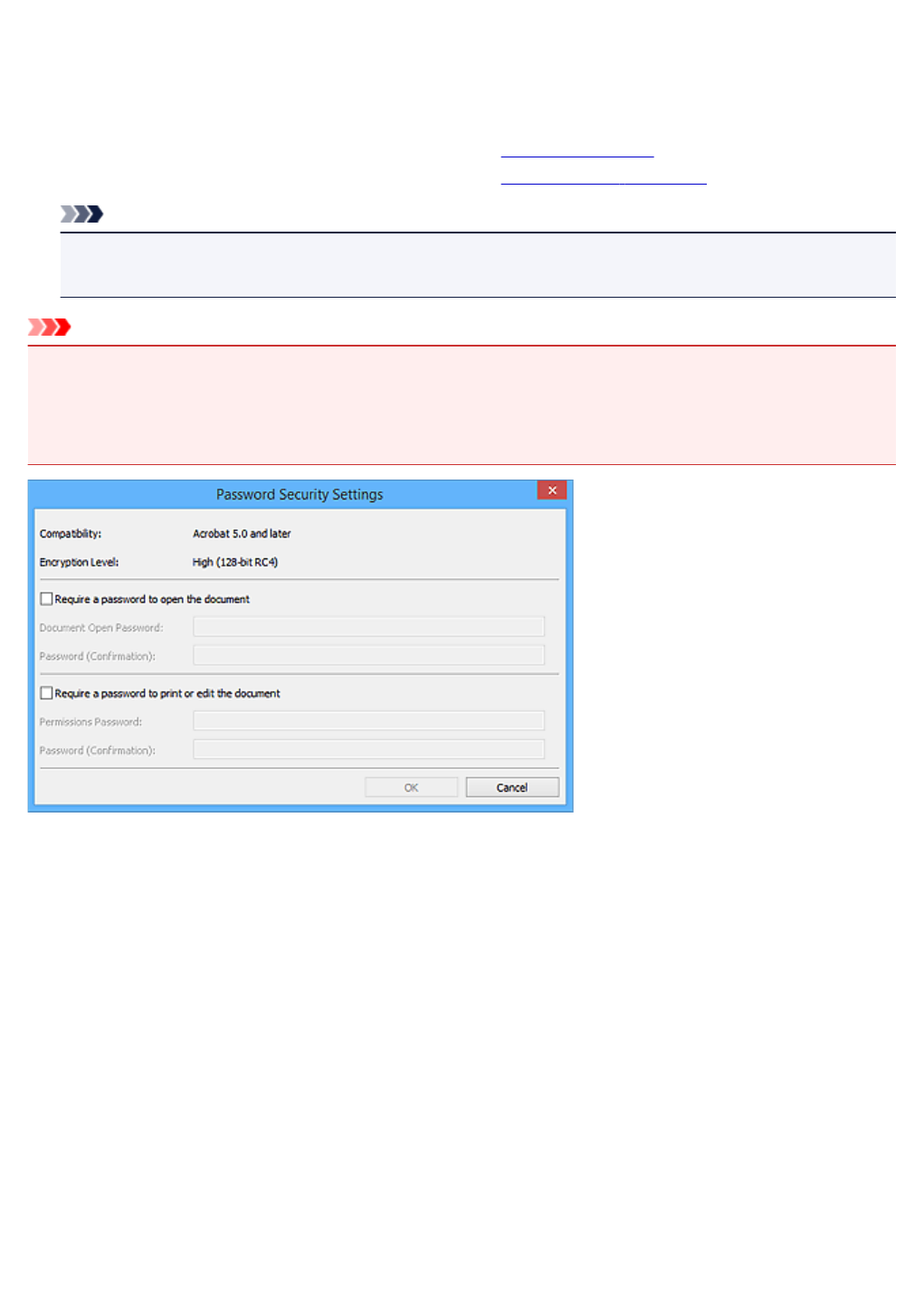
Password Security Settings Dialog Box
Set passwords for opening or printing/editing PDF files.
Display the Password Security Settings dialog box by one of the following operations.
• Select the Set up password security checkbox in the Settings dialog box, and then scan
• Select the Set up password security checkbox in the Save Settings dialog box, and then save
Note
• The Save Settings dialog box appears after scanning with the Check scan results and specify
save settings checkbox selected in Save Settings of the Settings dialog box.
Important
• You will not be able to open or edit the PDF file if you forget the password. It is recommended that you
write down the passwords and keep them in a safe place for future reference.
• Password-protected PDF files cannot be opened in applications that do not support security settings for
PDF files.
Require a password to open the document
You can specify whether to require a password to open the PDF file. Select this checkbox to enter
characters in Document Open Password.
Document Open Password
Enter a password for opening the PDF file.
Password (Confirmation)
Enter the password set in Document Open Password.
Require a password to print or edit the document
You can specify whether to require a password to print or edit the PDF file. Select this checkbox to enter
characters in Permissions Password.
Permissions Password
Enter a password for printing or editing the PDF files.
Password (Confirmation)
Enter the password set in Permissions Password.
764
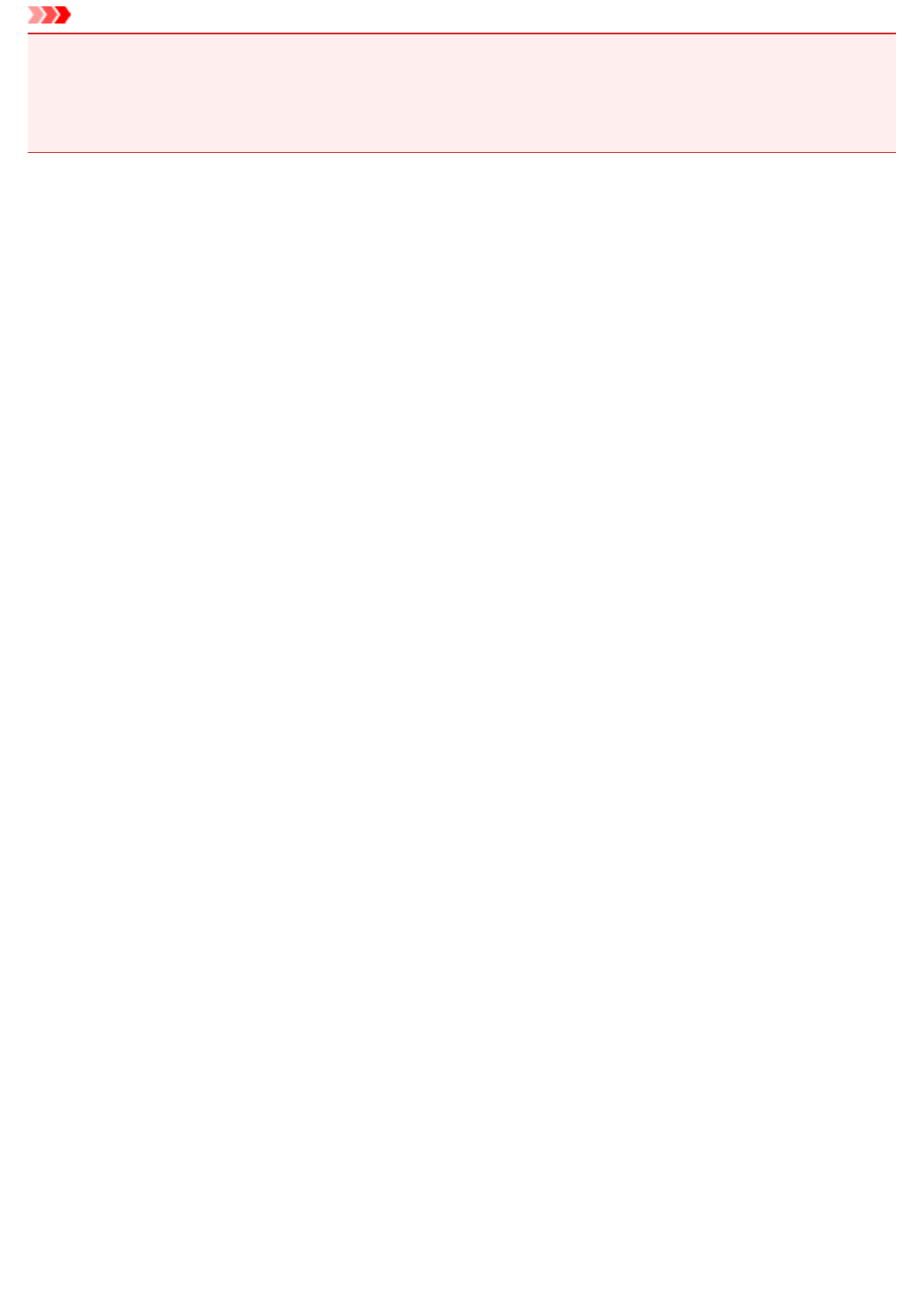
Important
• Enter a password of up to 32 characters using single-byte letters, numbers, and/or symbols (!"#$%&'()*
+,-./:;<=>?@[\]^_`{|}~). Passwords are case sensitive.
• To set both Document Open Password and Permissions Password, select both checkboxes and
specify a different password for each.
OK
OK can be clicked after entering Document Open Password and Password (Confirmation), or
Permissions Password and Password (Confirmation). Click OK to scan or save.
Cancel
After scanning with Set up password security checkbox selected in Settings dialog box:
The IJ Scan Utility main screen reappears.
After saving with Set up password security checkbox selected in Save Settings dialog box:
A confirmation screen appears; click Cancel to return to the Password Security Settings dialog box.
Click OK to save the scanned images without setting a password.
765
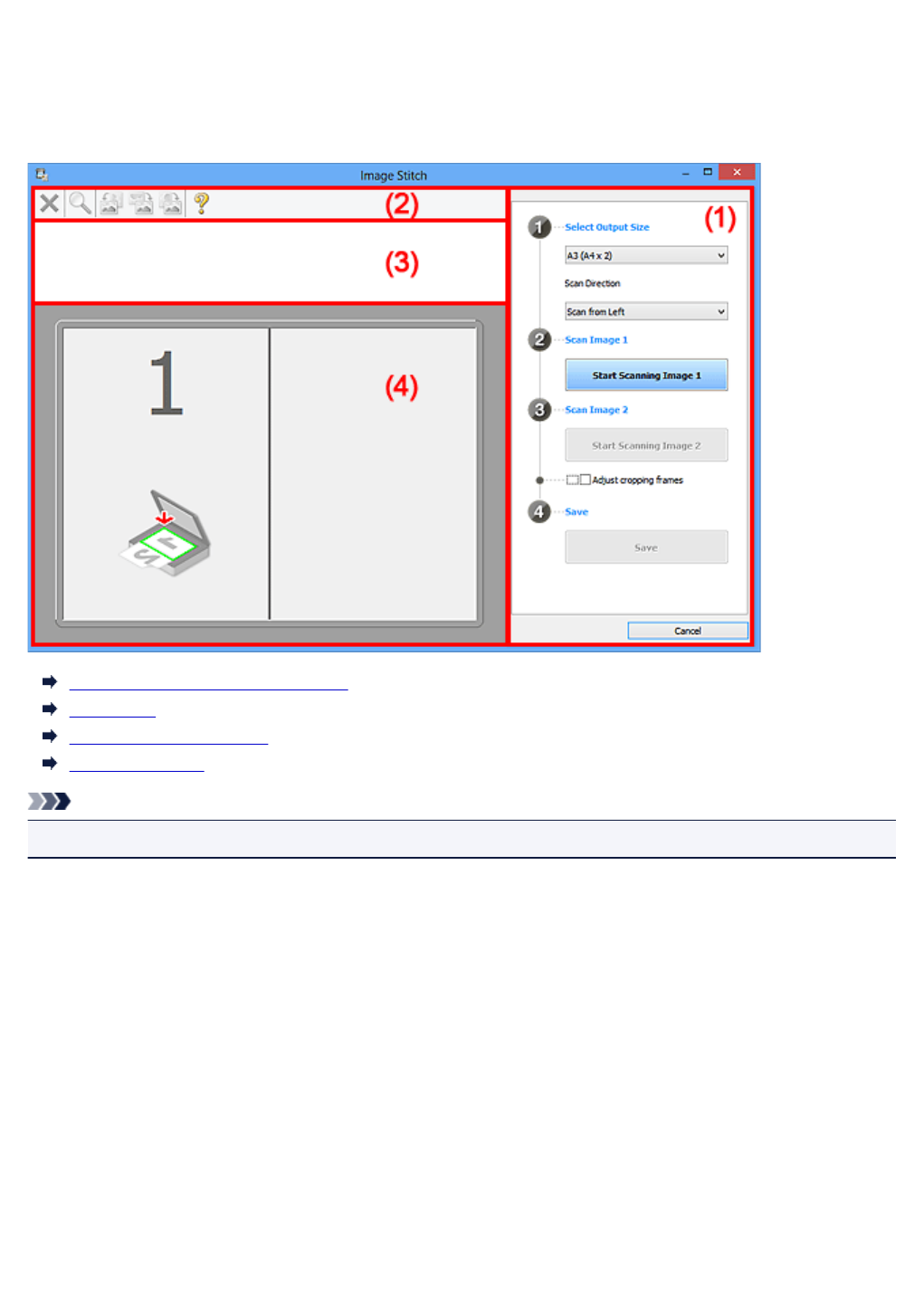
Image Stitch Window
Click Stitch in the IJ Scan Utility main screen to display the Image Stitch window.
You can scan the left and right halves of an item larger than the platen and combine them back into one
image. You can scan items up to approximately twice as large as the platen.
(1) Settings and Operation Buttons
(2) Toolbar
(3) Thumbnail View Area
(4) Preview Area
Note
• The displayed items vary depending on the select source and view.
(1) Settings and Operation Buttons
Select Output Size
B4 (B5 x 2)
Scans the left and right halves of a B4 size item separately.
A3 (A4 x 2)
Scans the left and right halves of an A3 size item separately.
11 x 17 (Letter x 2)
Scans the left and right halves of an item twice as large as Letter size separately.
Full Platen x 2
Scans the left and right halves of an item twice as large as the platen separately.
Scan Direction
Scan from Left
Displays the first scanned image on the left side.
766
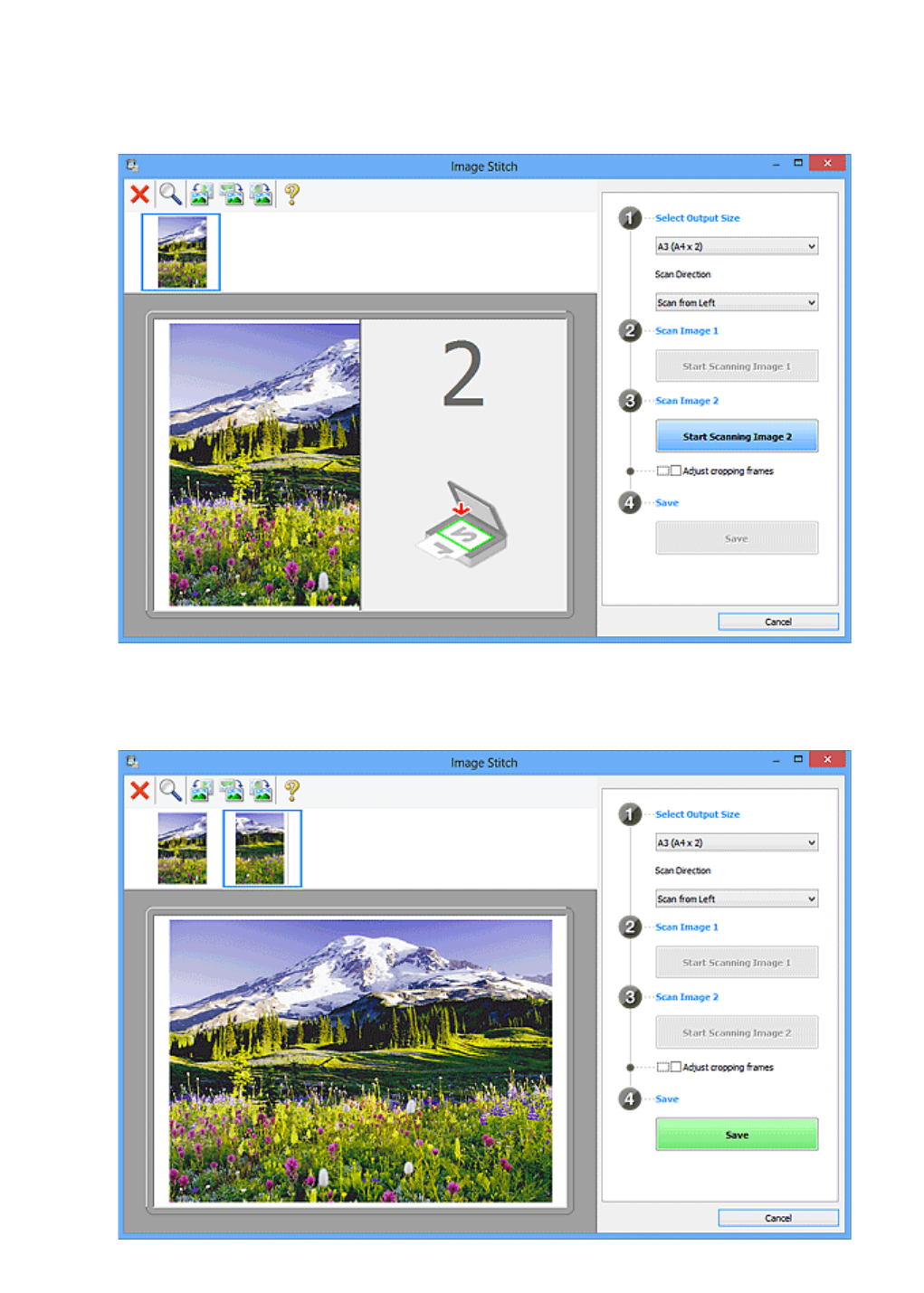
Scan from Right
Displays the first scanned image on the right side.
Scan Image 1
Start Scanning Image 1
Scans the first item.
Scan Image 2
Start Scanning Image 2
Scans the second item.
767
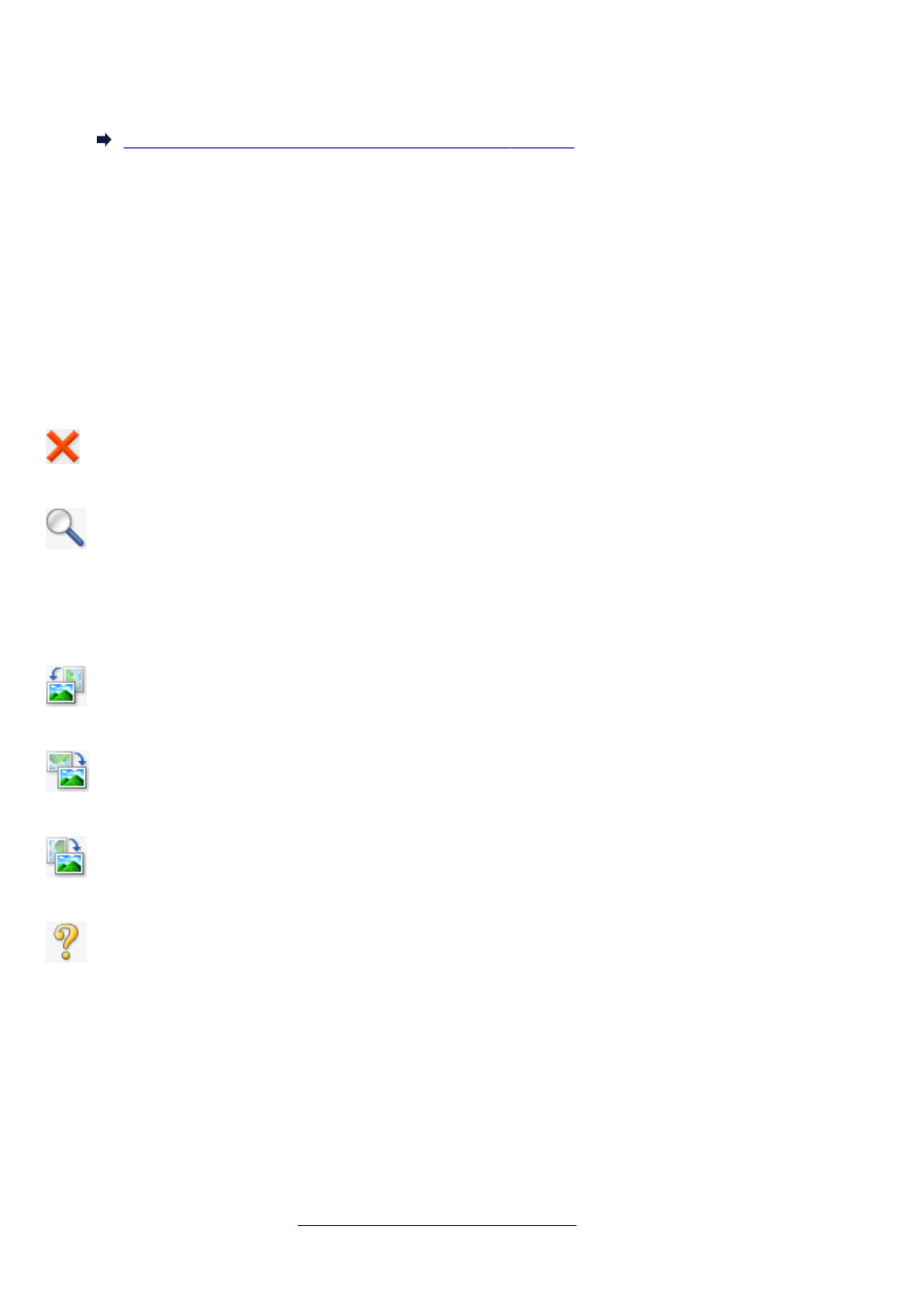
Adjust cropping frames
You can adjust the scan area in preview.
If no area is specified, the image of the size selected in Select Output Size will be saved. If an area
is specified, only the image in the cropping frame will be scanned and saved.
Adjusting Cropping Frames in the Image Stitch Window
Save
Save
Saves the two scanned images as one image.
Cancel
Cancels Stitch scan.
(2) Toolbar
You can delete the scanned images or adjust the previewed images.
(Delete)
Deletes the image selected in the Thumbnail View area.
(Enlarge/Reduce)
Allows you to enlarge or reduce the preview image.
Clicking the Preview area enlarges the displayed image.
Right-clicking the Preview area reduces the displayed image.
(Rotate Left)
Rotates the preview image 90 degrees counter-clockwise.
(Rotate 180°)
Rotates the preview image 180 degrees.
(Rotate Right)
Rotates the preview image 90 degrees clockwise.
(Open Guide)
Opens this page.
(3) Thumbnail View Area
Displays the thumbnails of the scanned images. Appears blank if none has been scanned.
(4) Preview Area
Displays the scanned images. You can adjust the layout by dragging the scanned image or check the
results of the settings made in "(1) Settings and Operation Buttons."
768
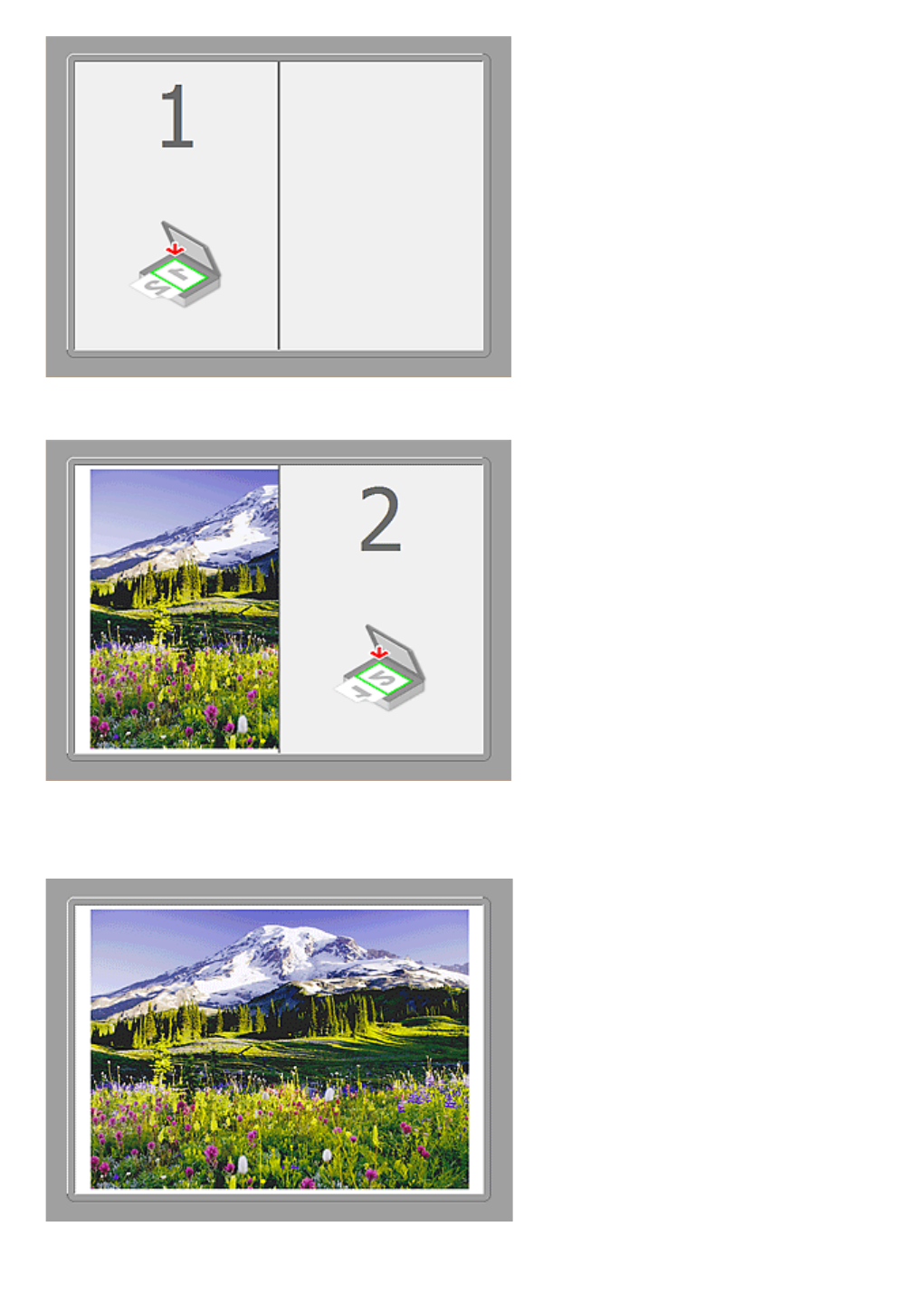
When no image has been scanned:
After scanning the first item by clicking Start Scanning Image 1:
The image is scanned in the direction specified in Scan Direction, and 2 appears next to it.
After scanning the second item by clicking Start Scanning Image 2:
The two scanned images appear.
769
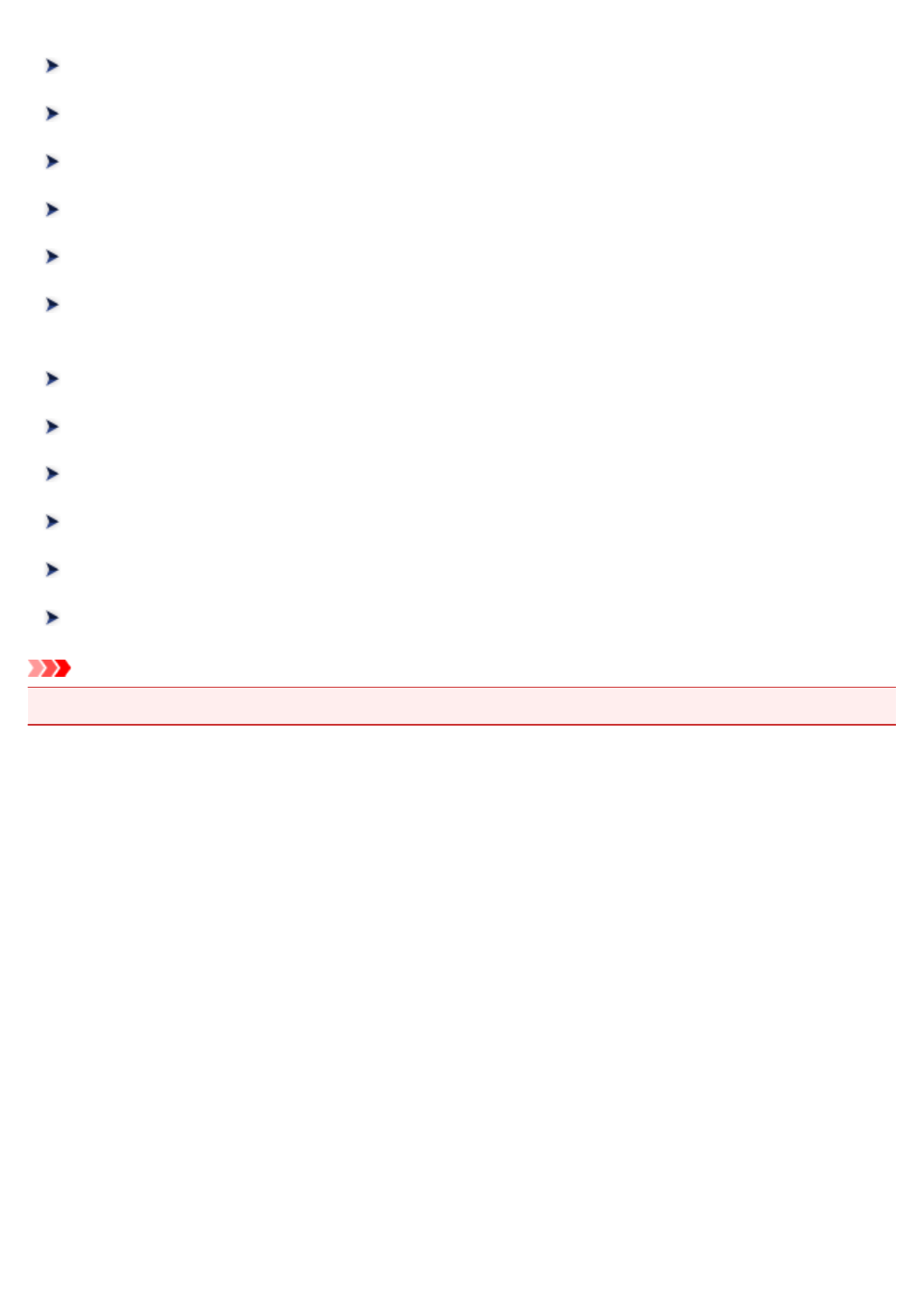
Scanning Using Application Software (ScanGear)
What Is ScanGear (Scanner Driver)?
Scanning with Advanced Settings Using ScanGear (Scanner Driver)
Starting ScanGear (Scanner Driver)
Scanning in Basic Mode
Scanning in Advanced Mode
Scanning Multiple Documents from the ADF (Auto Document Feeder) in
Advanced Mode
Scanning Multiple Documents at One Time with ScanGear (Scanner Driver)
Correcting Images and Adjusting Colors with ScanGear (Scanner Driver)
ScanGear (Scanner Driver) Screens
Positioning Originals (Scanning from Computer)
Adjusting Cropping Frames (ScanGear)
General Notes (Scanner Driver)
Important
• Available functions and settings vary depending on your scanner or printer.
771
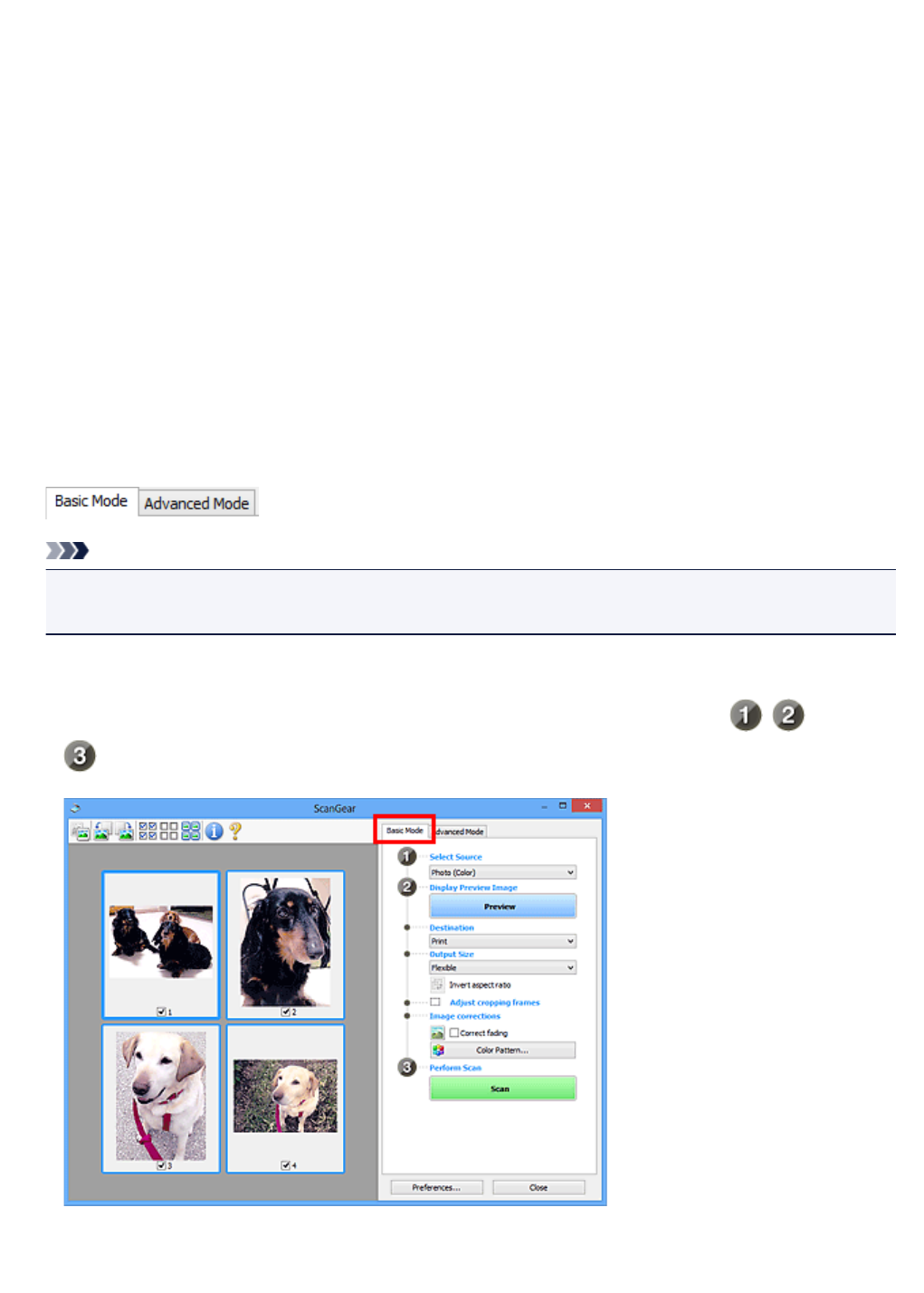
What Is ScanGear (Scanner Driver)?
ScanGear (scanner driver) is software required for scanning documents. It enables you to specify the output
size and make image corrections when scanning.
ScanGear can be started from IJ Scan Utility or applications that are compatible with a standard interface
called TWAIN. (ScanGear is a TWAIN-compatible driver.)
What You Can Do with This Software
This software enables you to preview scan results or set document type and output size, etc. when
scanning documents. It is useful when you want to scan in a specific color tone, as it allows you to make
various corrections and adjust brightness, contrast, etc.
Screens
There are two modes: Basic Mode and Advanced Mode.
Switch modes by clicking a tab on the upper right of the screen.
Note
• ScanGear starts in the last used mode.
• Settings are not retained when you switch modes.
Basic Mode
Use the Basic Mode tab to scan easily by following three simple on-screen steps ( , , and
).
772
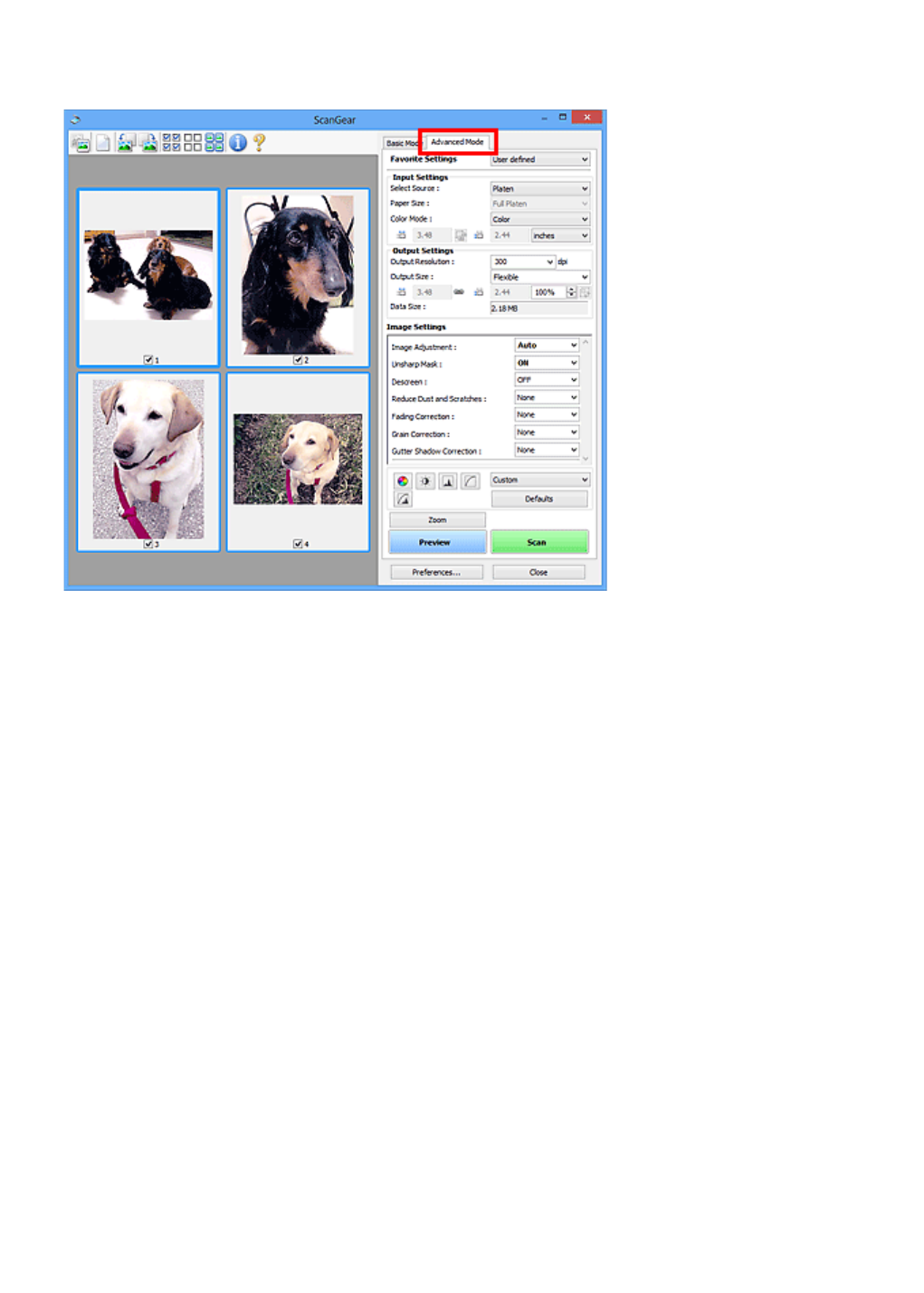
Advanced Mode
Use the Advanced Mode tab to specify the color mode, output resolution, image brightness, color tone,
etc. when scanning.
773
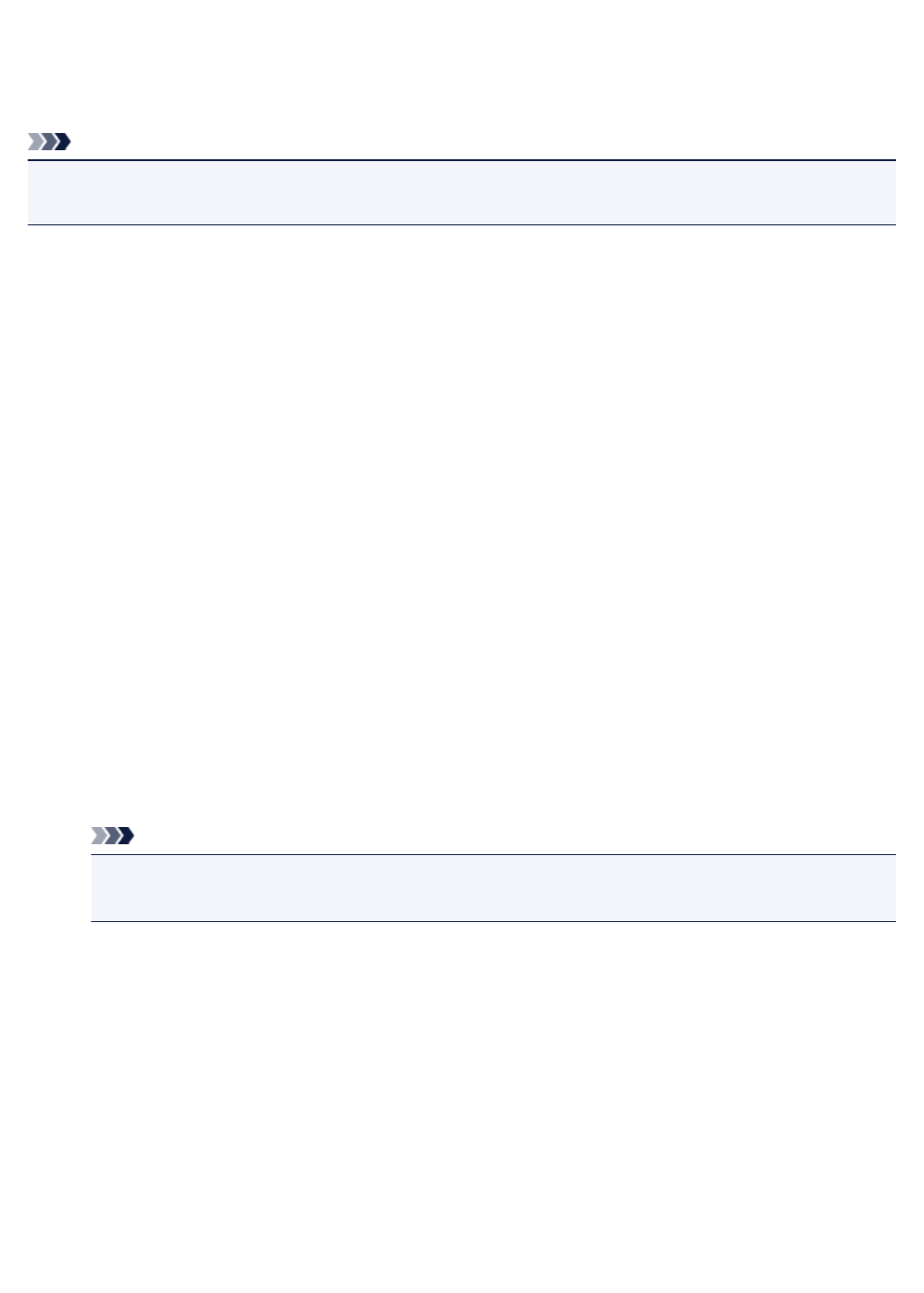
Starting ScanGear (Scanner Driver)
Use ScanGear (scanner driver) to make image corrections and color adjustments when scanning. ScanGear
can be started from IJ Scan Utility or other applications.
Note
• Set up the network environment if you have more than one scanner or have a network compatible
model and changed the connection from USB connection to network connection.
Starting IJ Scan Utility
Follow these steps to start ScanGear from IJ Scan Utility.
1. Start IJ Scan Utility.
Refer to "Starting IJ Scan Utility" for your model from Home of the Online Manual for how to start IJ
Scan Utility.
2. Click ScanGear in the IJ Scan Utility main screen.
The ScanGear screen appears.
Starting from an Application
Follow these steps (example) to start ScanGear from an application.
The procedure varies depending on the application. For details, refer to the application's manual.
1. Start the application.
2. On the menu of the application, select the machine.
Note
•When you want to use a network compatible model by connecting to a network, select one with
"Network" displayed after the product name.
3. Select the command to scan a document.
The ScanGear screen appears.
775
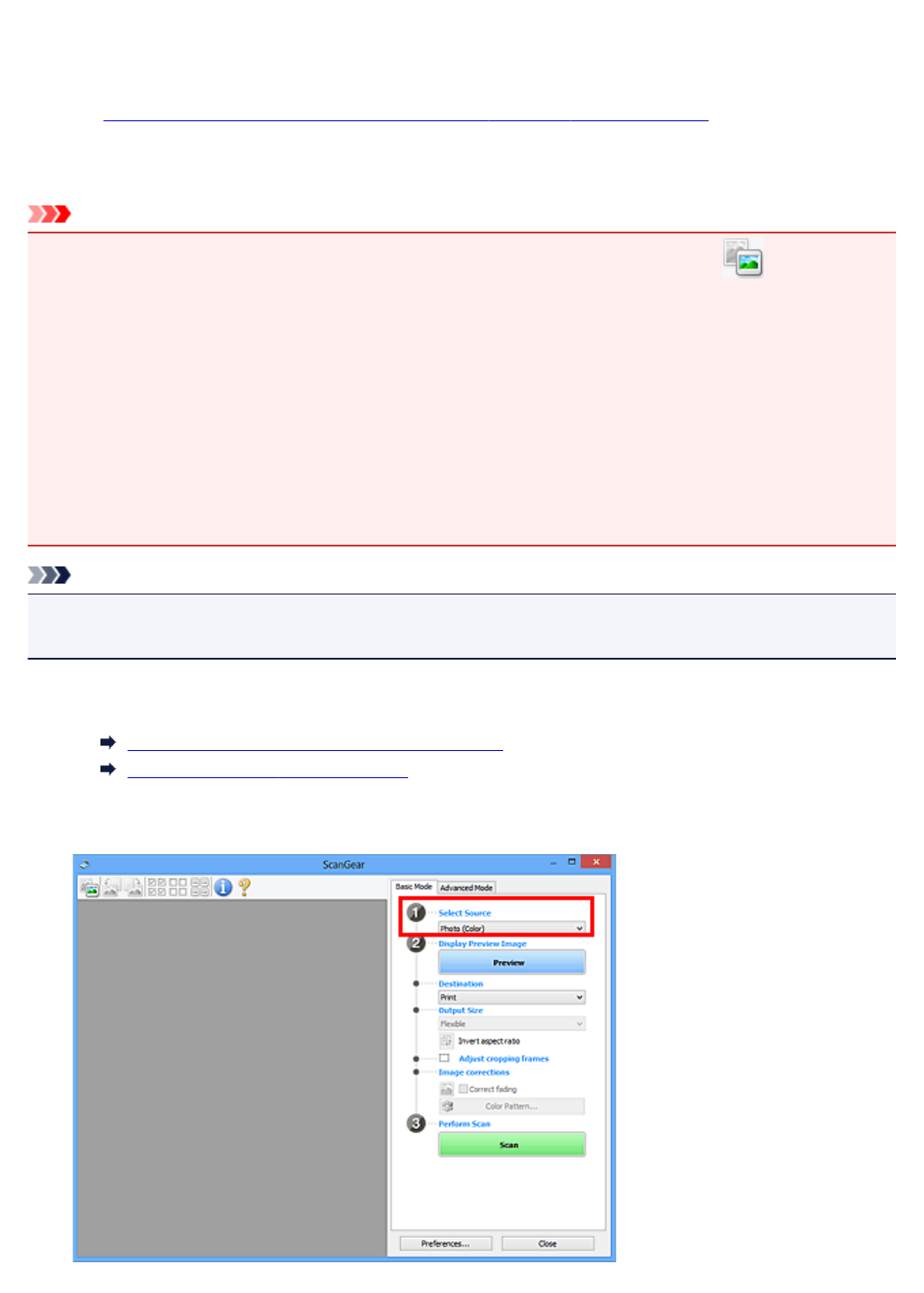
Scanning in Basic Mode
Use the Basic Mode tab to scan easily by following the on-screen steps.
Refer to "Scanning Multiple Documents at One Time with ScanGear (Scanner Driver)" to scan multiple
documents at one time from the Platen.
When scanning from the ADF (Auto Document Feeder), documents are scanned without preview.
Important
• The following types of documents may not be scanned correctly. In that case, click (Thumbnail) on
the Toolbar to switch to whole image view and scan.
• Photos that have a whitish background
• Documents printed on white paper, hand-written text, business cards, etc.
• Thin documents
• Thick documents
• The following types of documents may not be scanned correctly.
• Documents smaller than 1.2 inches (3 cm) square
• Photos that have been cut to various shapes
Note
• When using a model supporting ADF duplex scanning, you can scan both sides of the documents
automatically from the ADF.
1. Place the document on the Platen or ADF, then start ScanGear (scanner driver).
Positioning Originals (Scanning from Computer)
Starting ScanGear (Scanner Driver)
2. Set Select Source according to the document placed on the Platen or ADF.
776
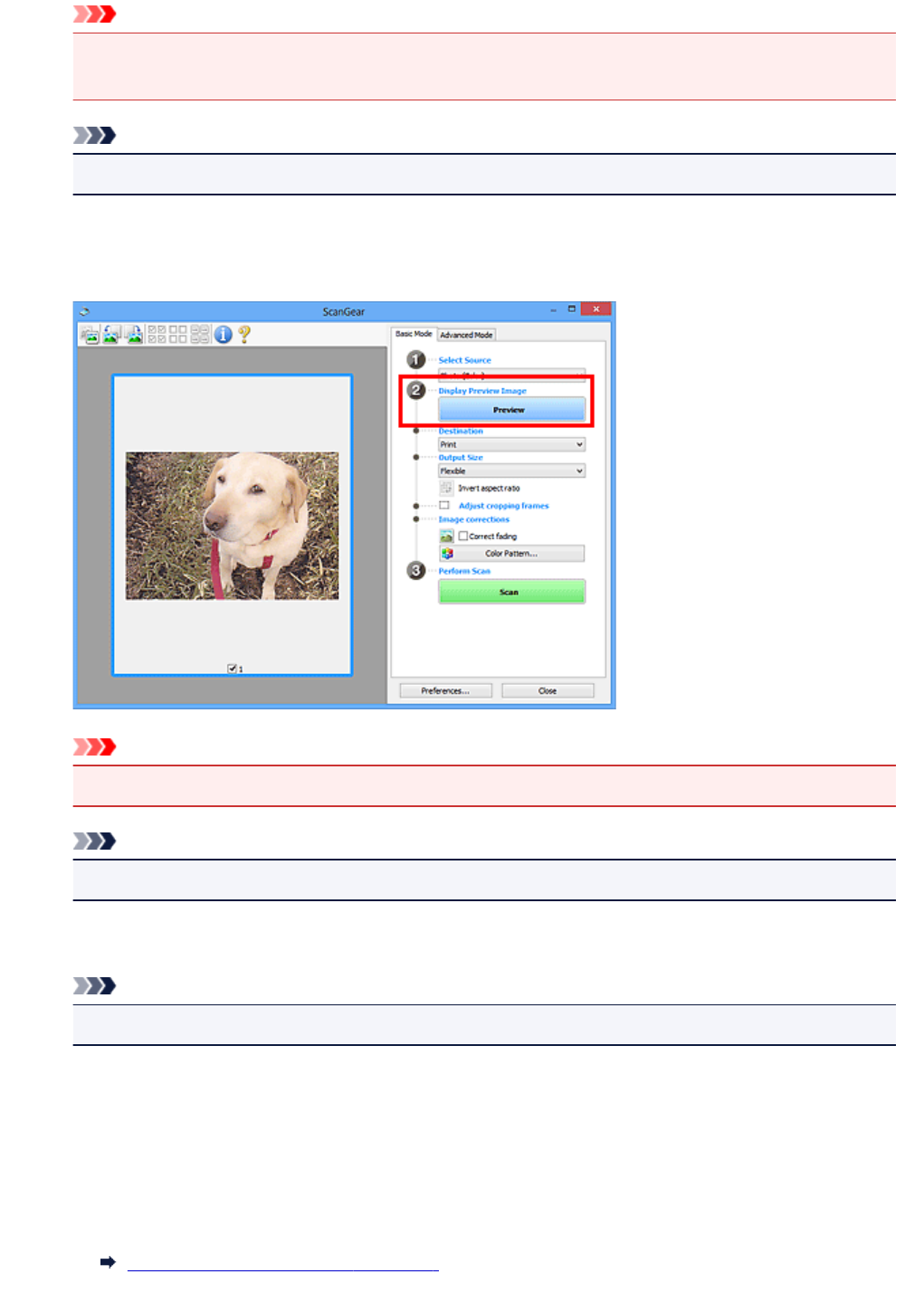
Important
• Some applications do not support continuous scanning from the ADF. For details, refer to the
application's manual.
Note
•To scan magazines containing many color photos, select Magazine (Color).
3. Click Preview.
Preview image appears in the Preview area.
Important
•Preview is not displayed when an ADF type is selected for Select Source.
Note
•Colors are adjusted based on the document type selected in Select Source.
4. Set Destination.
Note
•Skip ahead to Step 7 when an ADF type is selected for Select Source.
5. Set Output Size according to purpose.
Output size options vary by the item selected in Destination.
6. Adjust the cropping frames (scan areas) as required.
Adjust the size and position of the cropping frames on the preview image.
Adjusting Cropping Frames (ScanGear)
777
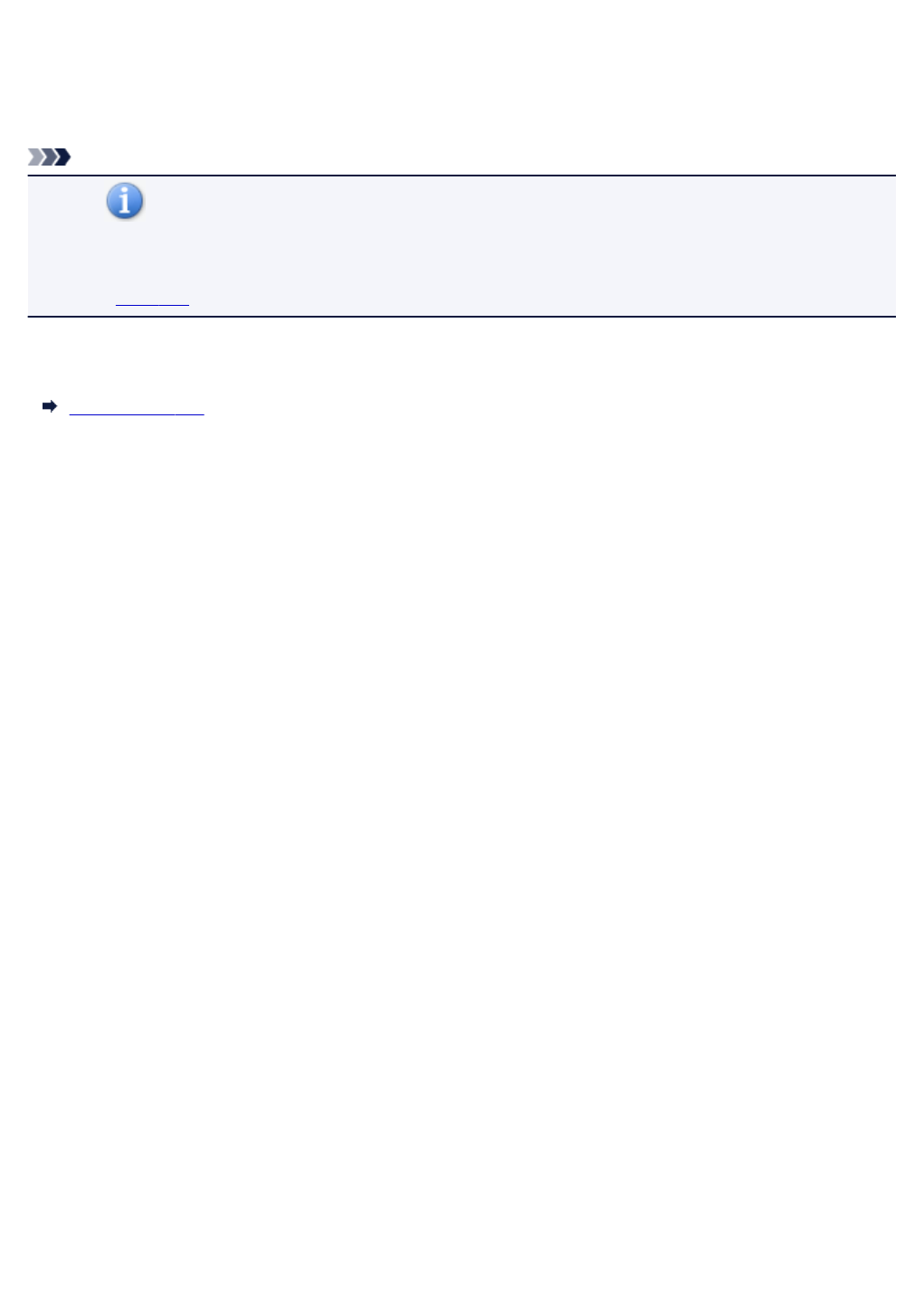
7. Set Image corrections as required.
8. Click Scan.
Scanning starts.
Note
• Click (Information) to open a dialog box in which you can check the current scan settings
(document type, etc.).
• A response of ScanGear after scanning can be specified in Status of ScanGear dialog after scanning
on the Scan tab of the Preferences dialog box.
Related Topic
Basic Mode Tab
778
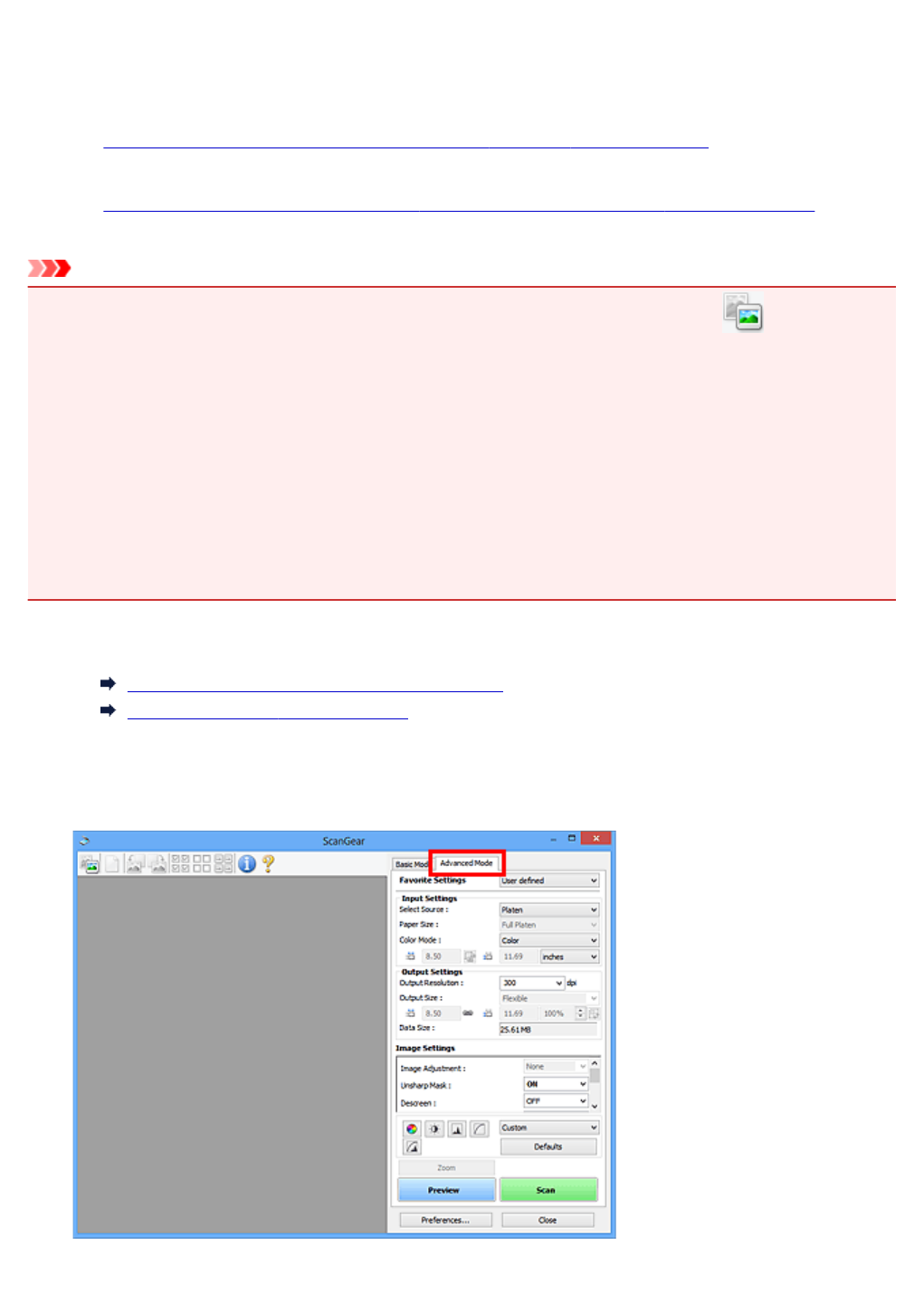
Scanning in Advanced Mode
Use the Advanced Mode tab to specify the color mode, output resolution, image brightness, color tone, etc.
when scanning.
Refer to "Scanning Multiple Documents at One Time with ScanGear (Scanner Driver)" to scan multiple
documents at one time.
Refer to "Scanning Multiple Documents from the ADF (Auto Document Feeder) in Advanced Mode" to scan
multiple documents placed on the ADF (Auto Document Feeder).
Important
• The following types of documents may not be scanned correctly. In that case, click (Thumbnail) on
the Toolbar to switch to whole image view and scan.
• Photos that have a whitish background
• Documents printed on white paper, hand-written text, business cards, etc.
• Thin documents
• Thick documents
• The following types of documents may not be scanned correctly.
• Documents smaller than 1.2 inches (3 cm) square
• Photos that have been cut to various shapes
1. Place the document on the Platen, then start ScanGear (scanner driver).
Positioning Originals (Scanning from Computer)
Starting ScanGear (Scanner Driver)
2. Click the Advanced Mode tab.
The tab switches to Advanced Mode.
779
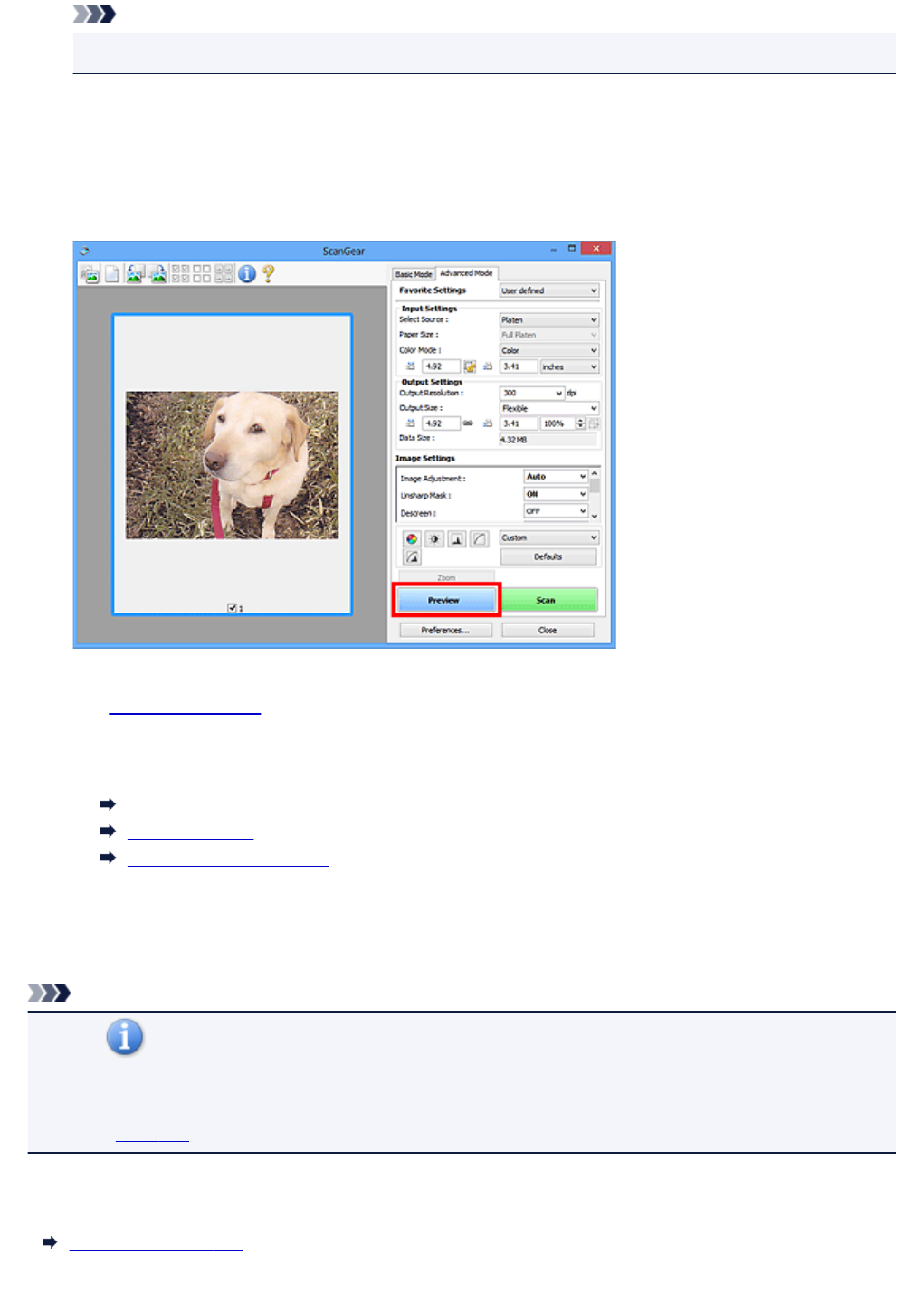
Note
• Settings are not retained when you switch modes.
3. Set Input Settings according to the document or purpose.
4. Click Preview.
Preview images appear in the Preview area.
5. Set Output Settings.
6. Adjust the cropping frame (scan area), correct image, and adjust colors as required.
Adjusting Cropping Frames (ScanGear)
Image Settings
Color Adjustment Buttons
7. Click Scan.
Scanning starts.
Note
• Click (Information) to open a dialog box in which you can check the current scan settings
(document type, etc.).
• A response of ScanGear after scanning can be specified in Status of ScanGear dialog after scanning
on the Scan tab of the Preferences dialog box.
Related Topic
Advanced Mode Tab
780
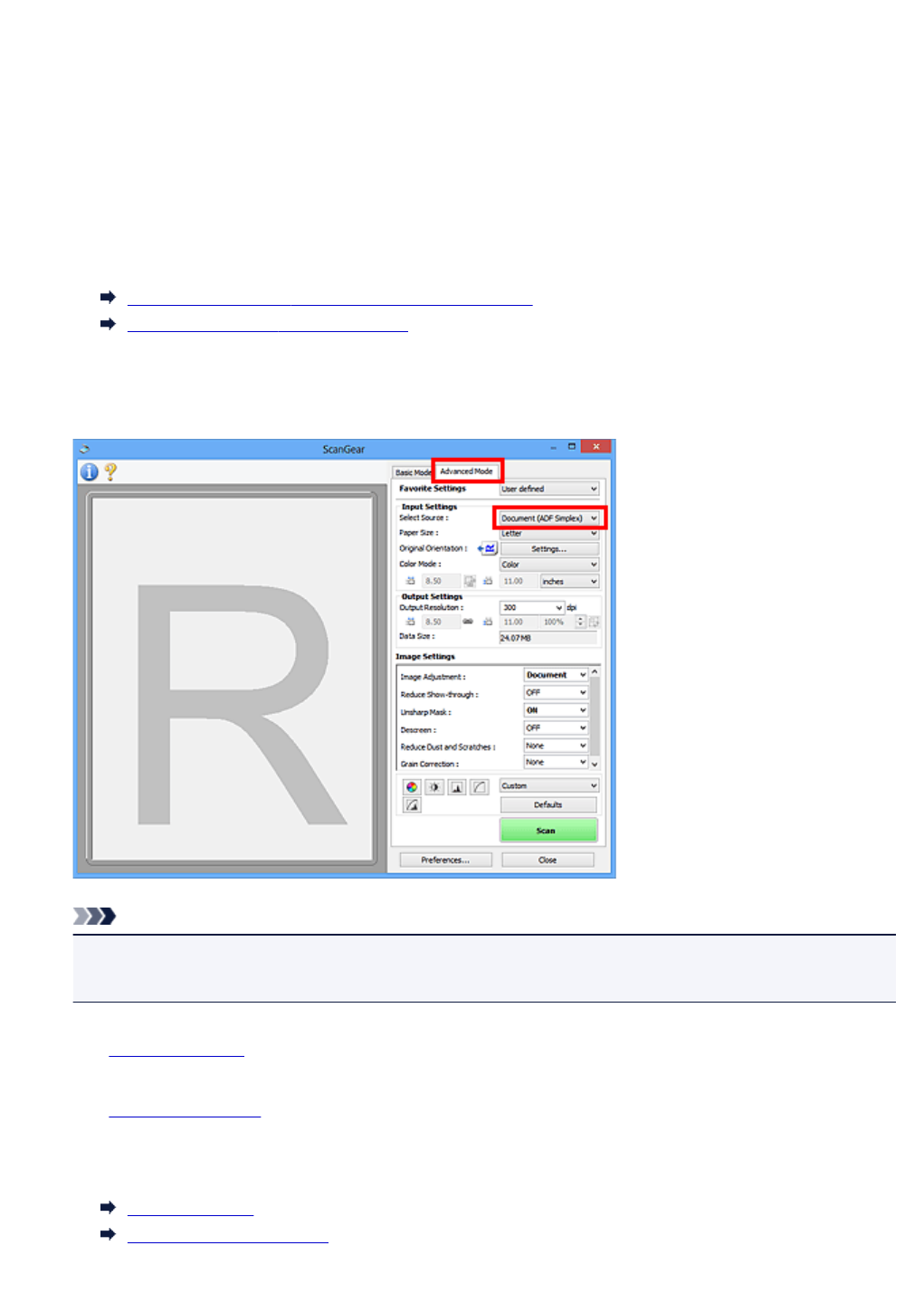
Scanning Multiple Documents from the ADF (Auto Document
Feeder) in Advanced Mode
Use the Advanced Mode tab to specify the image brightness, color tone, etc. and scan multiple documents
placed on the ADF (Auto Document Feeder) at one time. When using a model supporting ADF duplex
scanning, you can scan both sides of the documents automatically from the ADF.
When scanning from the ADF, documents are scanned without preview.
1. Place the documents on the ADF of the machine, then start ScanGear (scanner driver).
Placing Documents (ADF (Auto Document Feeder))
Starting ScanGear (Scanner Driver)
2. Click the Advanced Mode tab and select Document (ADF Simplex) or Document (ADF
Duplex) for Select Source.
Note
•Settings are not retained when you switch modes.
•You can select Document (ADF Duplex) when using a model supporting ADF duplex scanning.
3. Set Input Settings according to the document or purpose.
4. Set Output Settings.
5. Make image corrections and color adjustments as required.
Image Settings
Color Adjustment Buttons
781
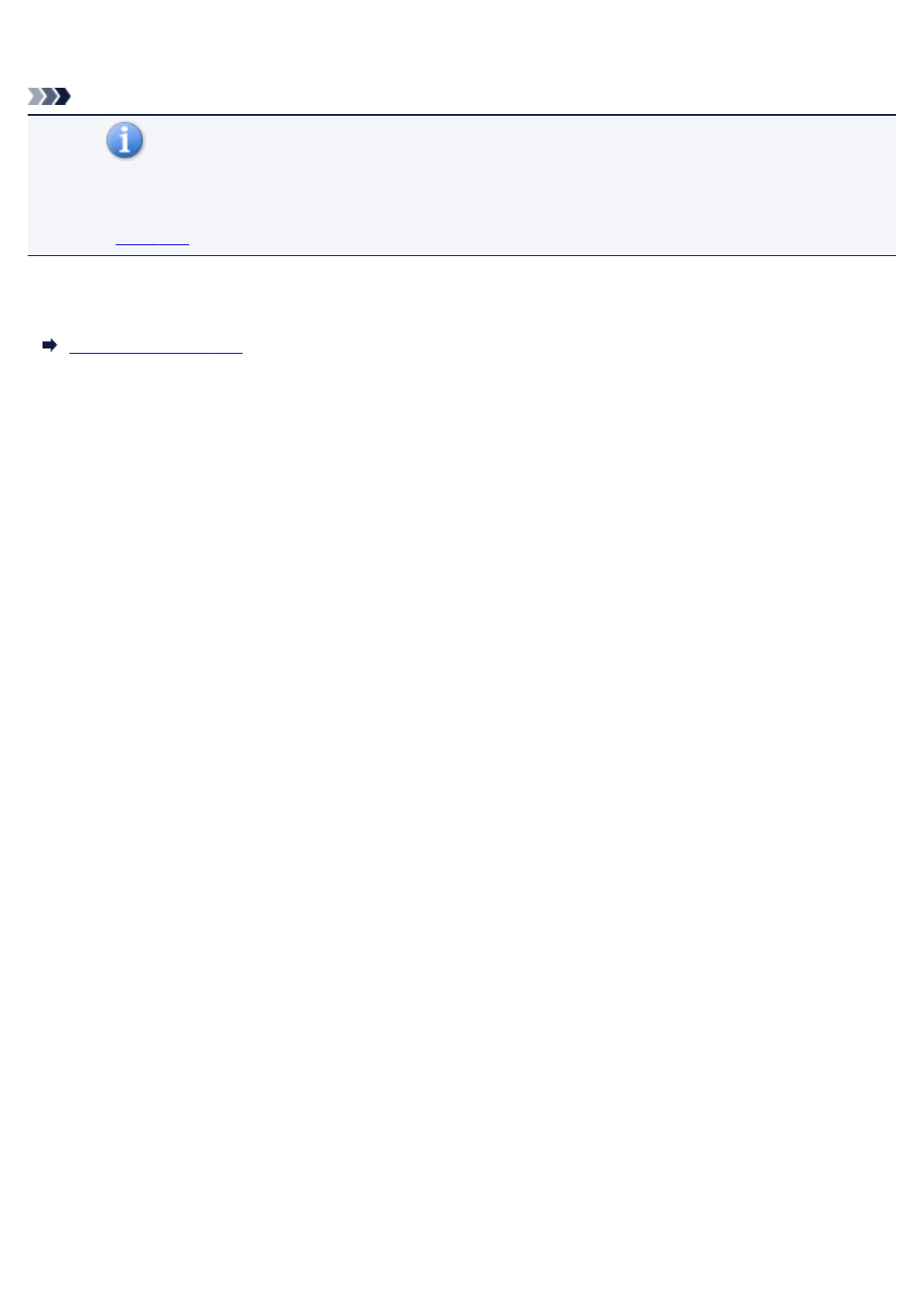
6. Click Scan.
Scanning starts.
Note
• Click (Information) to open a dialog box in which you can check the current scan settings
(document type, etc.).
• A response of ScanGear after scanning can be specified in Status of ScanGear dialog after scanning
on the Scan tab of the Preferences dialog box.
Related Topic
Advanced Mode Tab
782
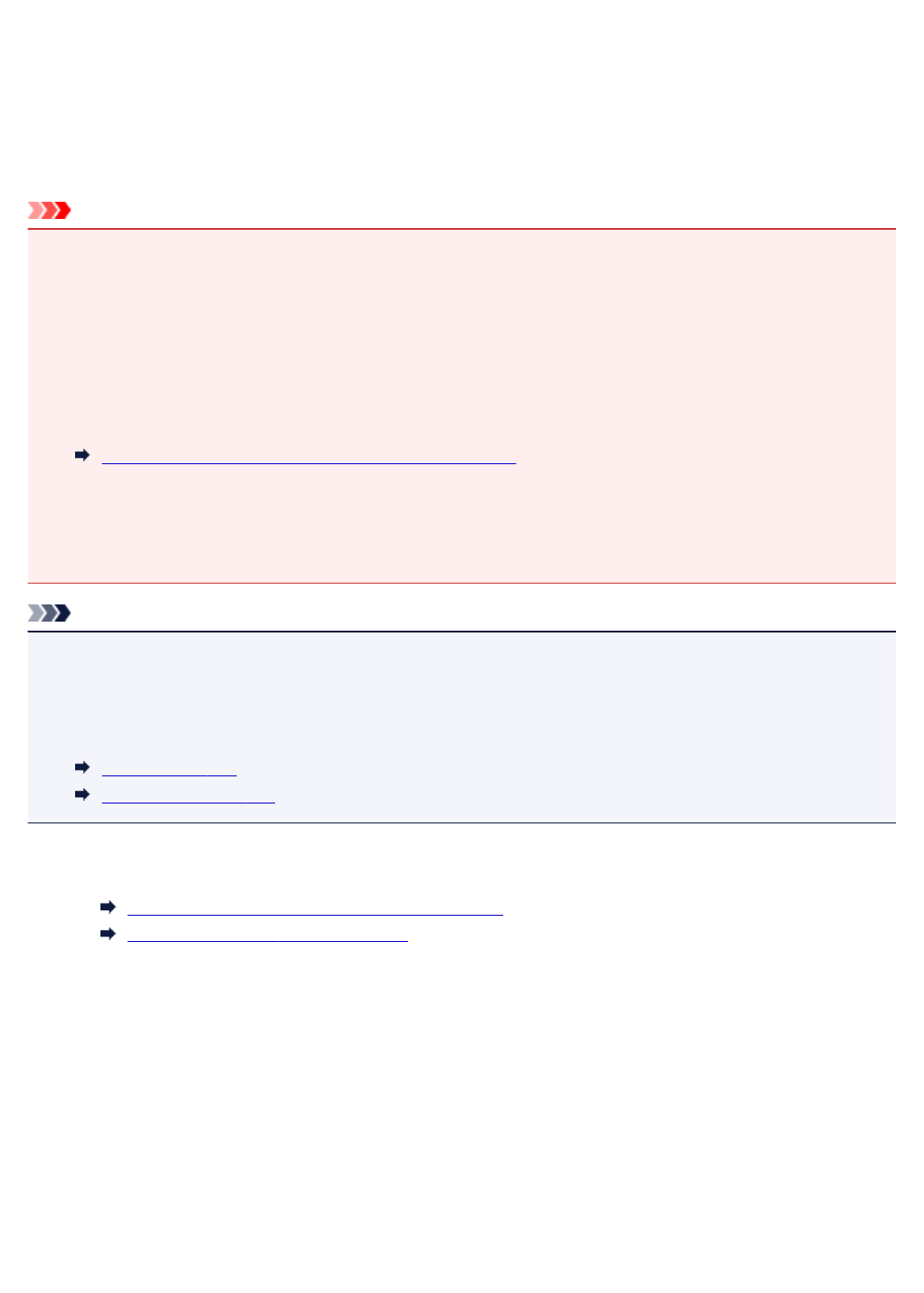
Scanning Multiple Documents at One Time with ScanGear
(Scanner Driver)
You can scan two or more photos (small documents) on the Platen at one time on the Basic Mode tab and
Advanced Mode tab.
This section explains how to scan multiple documents from the Basic Mode tab.
Important
• To scan multiple documents as a single image, scan in whole image view.
• The following types of documents may not be cropped correctly. In that case, adjust the cropping
frames (scan areas) in whole image view and scan.
• Photos that have a whitish background
• Documents printed on white paper, hand-written text, business cards, etc.
• Thin documents
• Thick documents
Scanning Multiple Documents in Whole Image View
• The following types of documents may not be scanned correctly.
• Documents smaller than 1.2 inches (3 cm) square
• Photos that have been cut to various shapes
Note
• You can also scan multiple documents at one time from the Advanced Mode tab. Use the Advanced
Mode tab to make advanced scan settings such as the color mode, output resolution, image brightness,
and color tone.
• Refer to the corresponding sections below for details on the Basic Mode tab and Advanced Mode tab.
Basic Mode Tab
Advanced Mode Tab
1. Place the document on the Platen, then start ScanGear (scanner driver).
Positioning Originals (Scanning from Computer)
Starting ScanGear (Scanner Driver)
2. Set Select Source according to the document placed on the Platen.
783
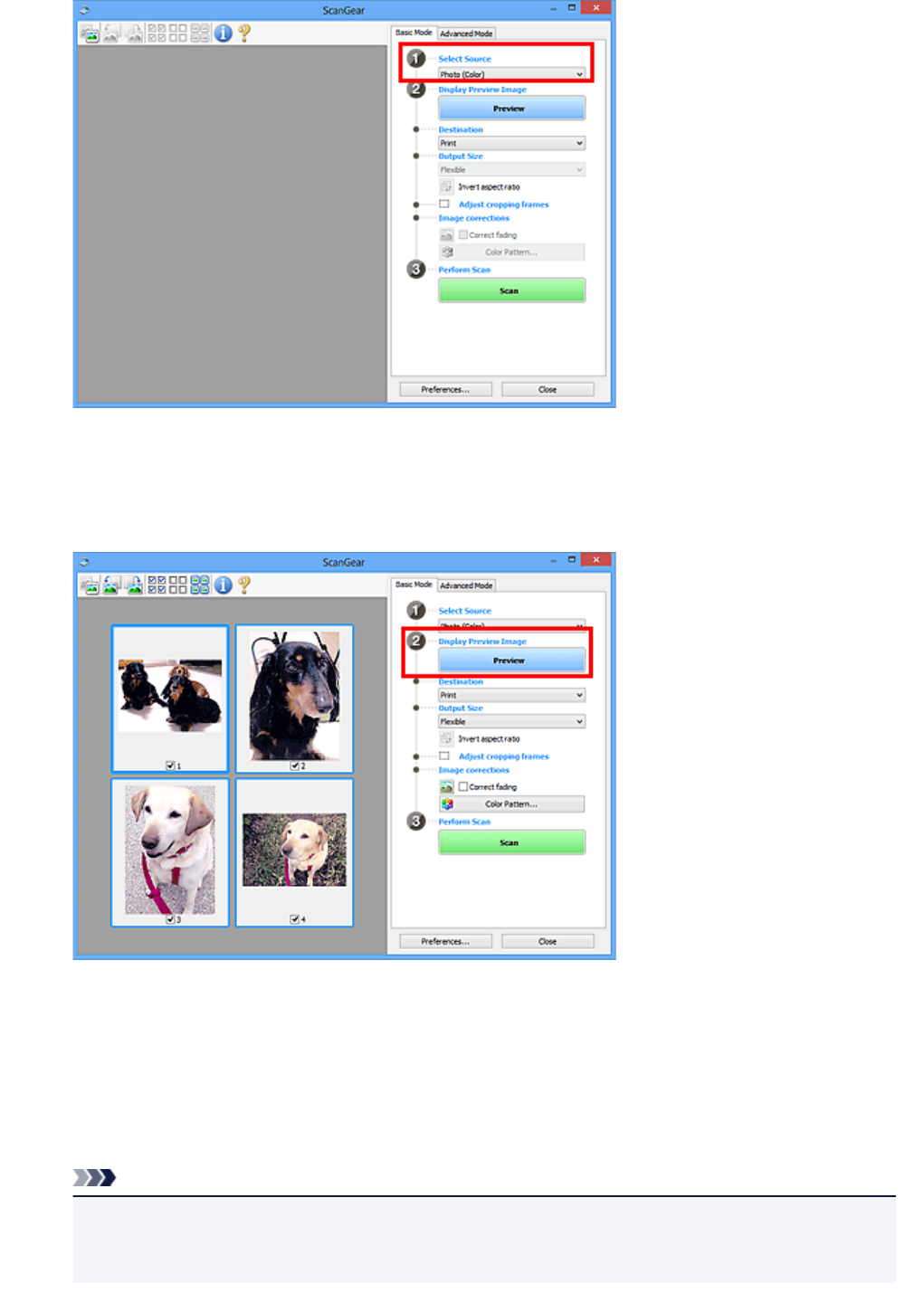
3. Click Preview.
Thumbnails of the preview images appear in the Preview area. Cropping frames are specified
automatically according to the document size.
4. Set Destination.
5. Set Output Size according to purpose.
6. Adjust the cropping frames and set Image corrections as required.
Note
•You can correct each image separately. Select the frame you want to correct.
•In thumbnail view, you can only create one cropping frame per image. To create multiple cropping
frames in an image, scan in whole image view.
784
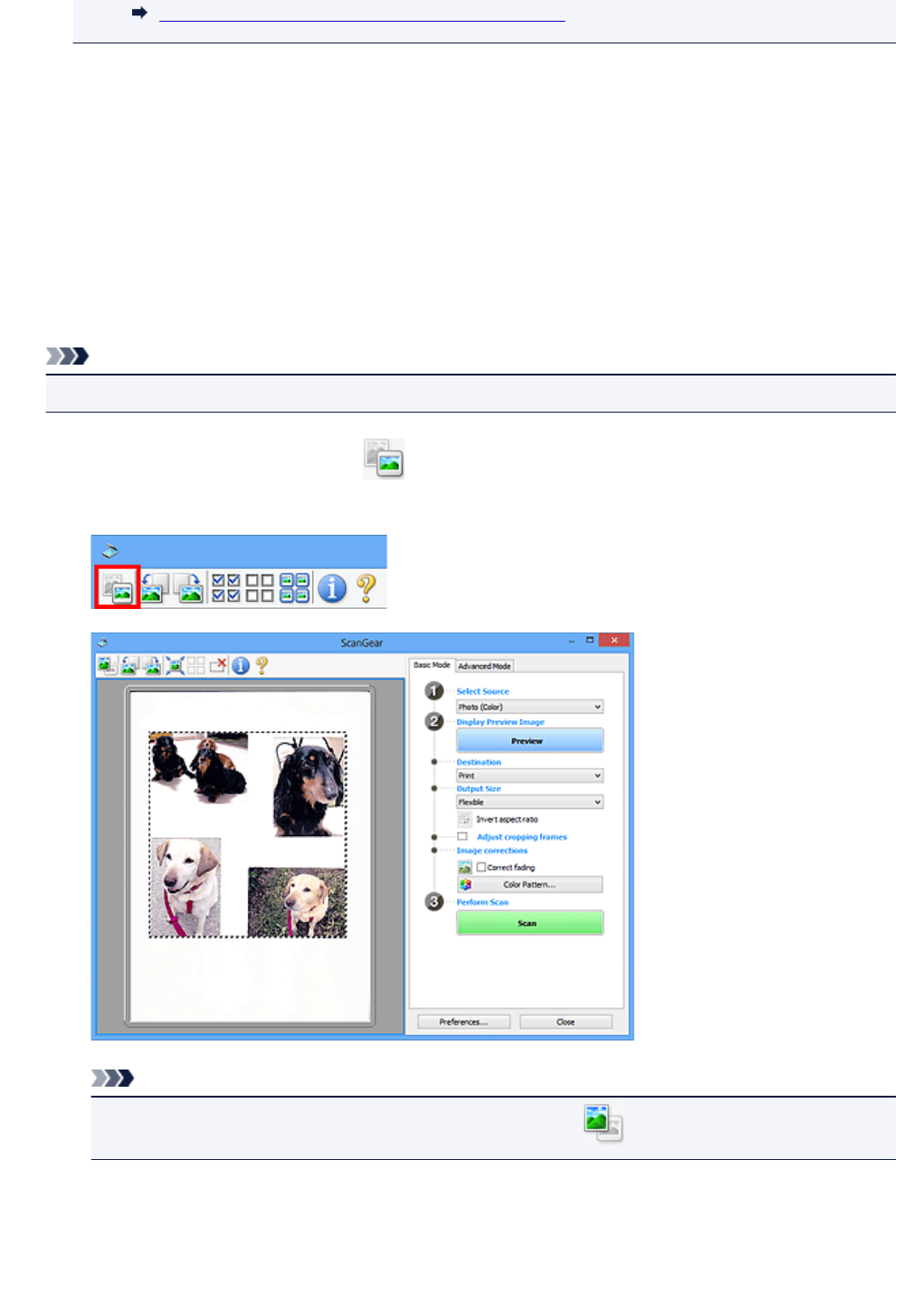
Scanning Multiple Documents in Whole Image View
7. Select the images you want to scan.
Select the checkboxes of the images you want to scan.
8. Click Scan.
Scanning Multiple Documents in Whole Image View
Follow these steps if thumbnails are not displayed correctly when previewed or if you want to scan
multiple documents as a single image.
Note
• Positions of slanted documents are not corrected in whole image view.
1. After previewing images, click (Thumbnail) on the Toolbar.
Switch to whole image view.
Note
•When the whole image is displayed, the icon changes to (Whole Image).
2. Set Destination.
3. Set Output Size according to purpose.
785
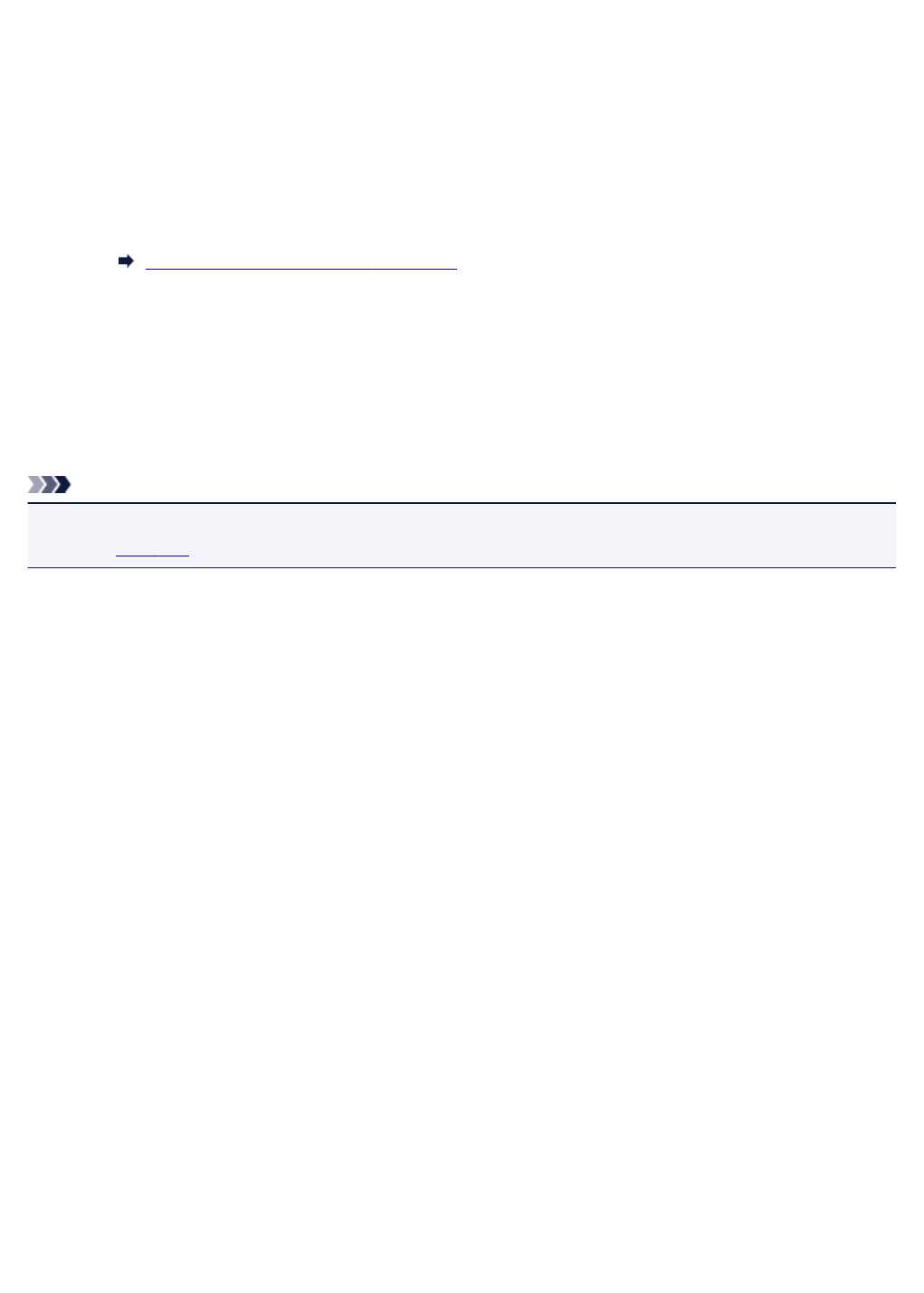
Invert aspect ratio will be enabled when Output Size is set to anything but Flexible. Click this button
to rotate the cropping frame. Click again to return it to the original orientation.
4. Adjust the cropping frames.
Adjust the size and position of the cropping frames on the preview image. You can also create two or
more cropping frames.
If an area is not specified, the document will be scanned at the document size (Auto Crop). If an area
is specified, only the portion in the specified area will be scanned.
Adjusting Cropping Frames (ScanGear)
5. Set Image corrections as required.
6. Click Scan.
Areas framed by broken lines are scanned.
Note
• A response of ScanGear after scanning can be specified in Status of ScanGear dialog after scanning
on the Scan tab of the Preferences dialog box.
786
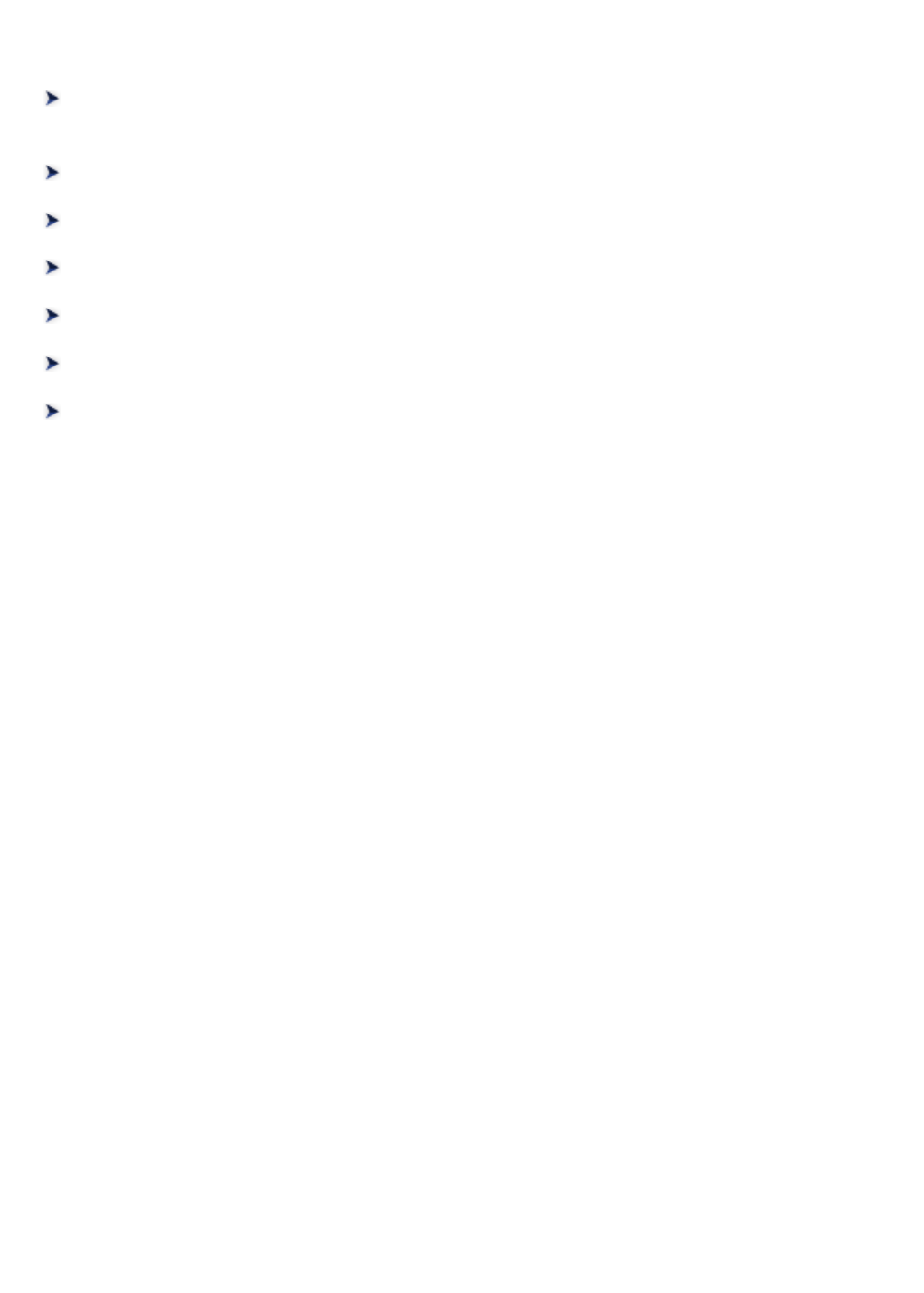
Correcting Images and Adjusting Colors with ScanGear (Scanner
Driver)
Correcting Images (Unsharp Mask, Reduce Dust and Scratches, Fading
Correction, etc.)
Adjusting Colors Using a Color Pattern
Adjusting Saturation and Color Balance
Adjusting Brightness and Contrast
Adjusting Histogram
Adjusting Tone Curve
Setting Threshold
787
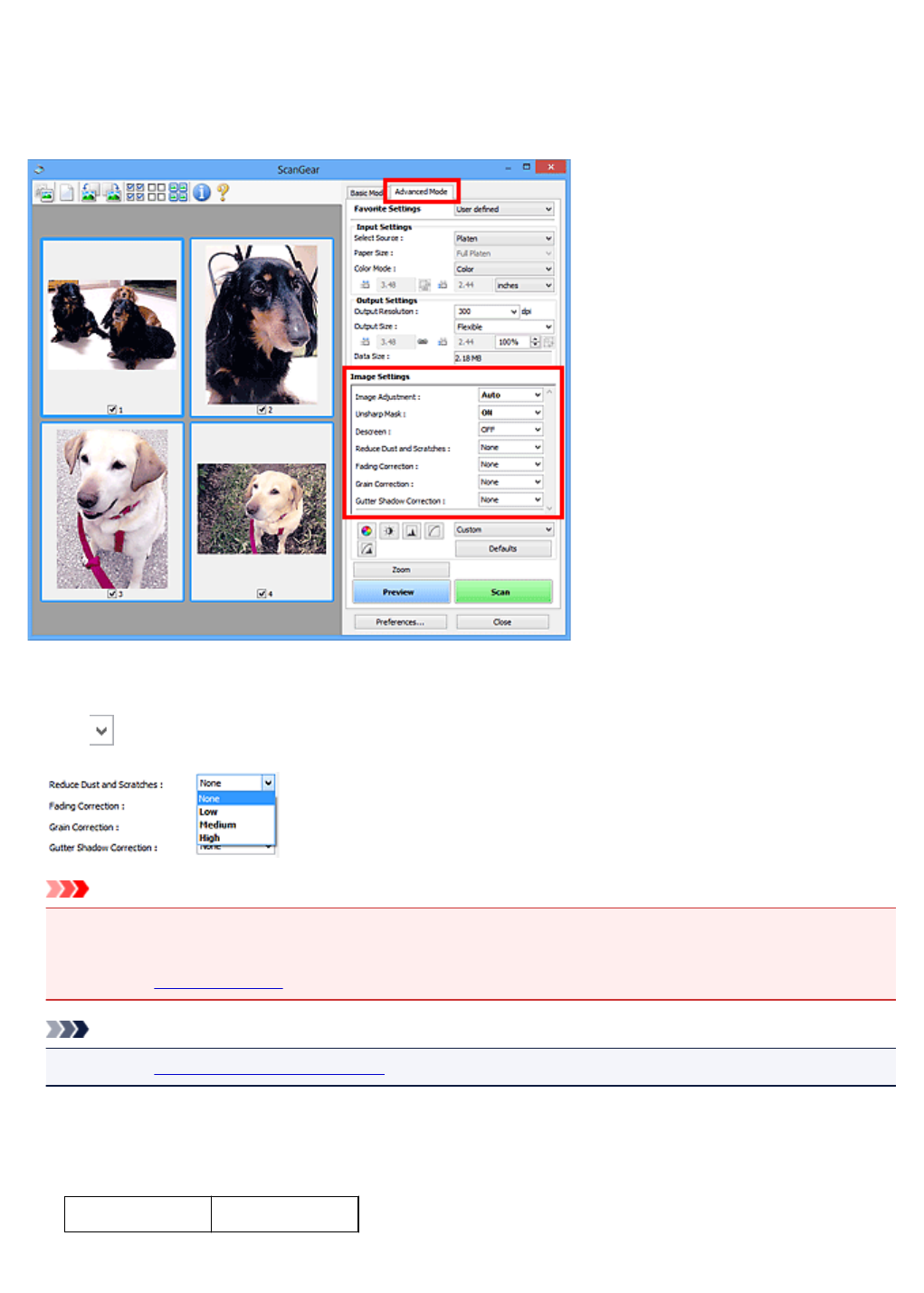
Correcting Images (Unsharp Mask, Reduce Dust and Scratches,
Fading Correction, etc.)
The Image Settings functions on the Advanced Mode tab of ScanGear (scanner driver) allow you to
enhance the outline of the subjects, reduce dust/scratches, and correct faded colors when scanning images.
Setting Items
Click (Arrow) of a function and select an item from the pull-down menu.
Important
• Do not apply these functions to images without moire, dust/scratches, or faded colors. The color tone
may be adversely affected.
• Refer to "Image Settings" for details and precautions on each function.
Note
• Refer to "Scanning in Advanced Mode" to start the Advanced Mode tab of ScanGear and scan.
Adjusting the image brightness and color tone
Set Image Adjustment to Auto, Photo, Magazine, or Document according to the document type.
None Auto
788
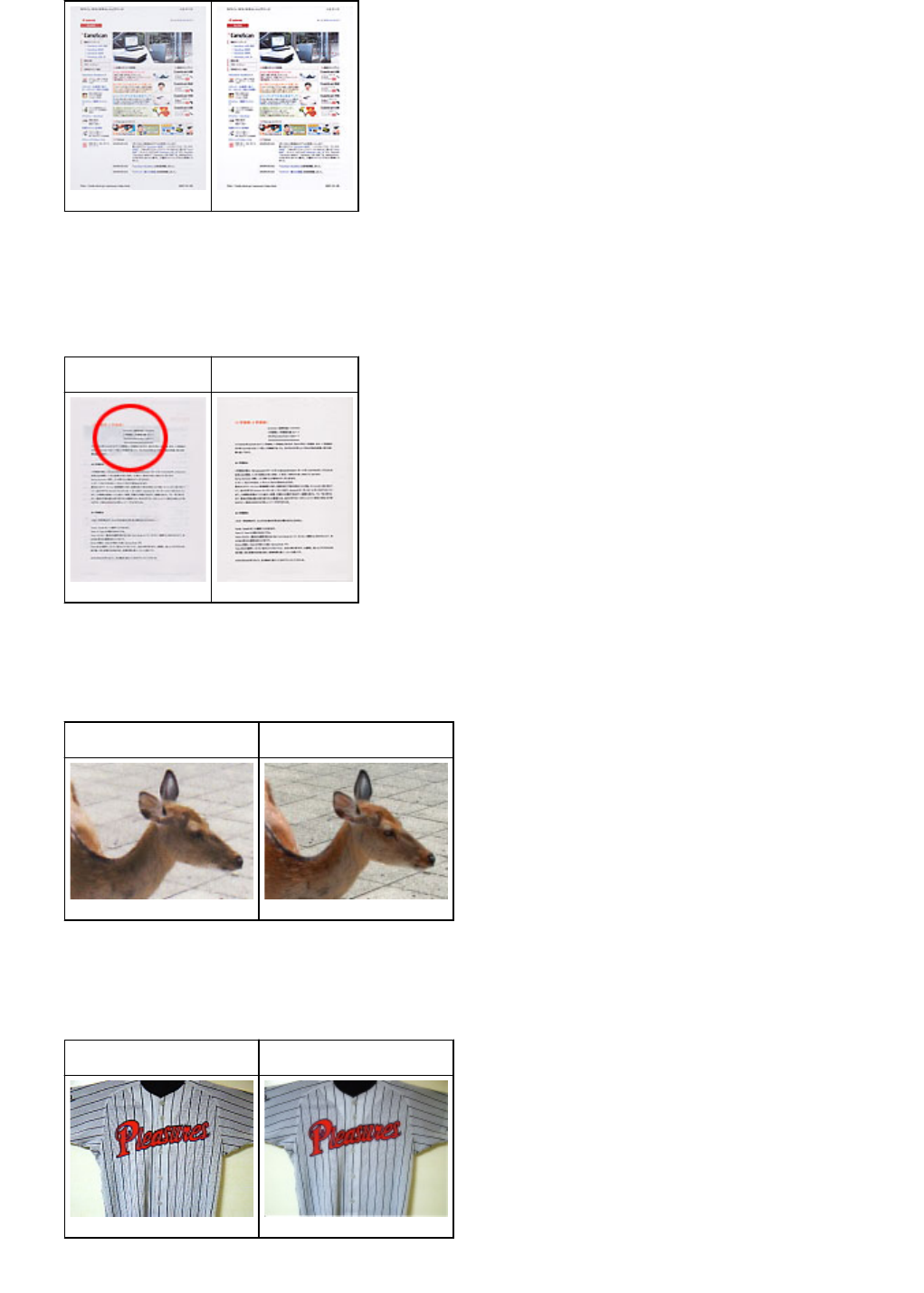
Reducing show-through in text documents or lightening the base color in
recycled paper, newspapers, etc. when scanning documents
Set Reduce Show-through to ON.
OFF ON
Sharpening slightly out-of-focus images
Set Unsharp Mask to ON.
OFF ON
Reducing gradations and stripe patterns
Set Descreen to ON.
OFF ON
789
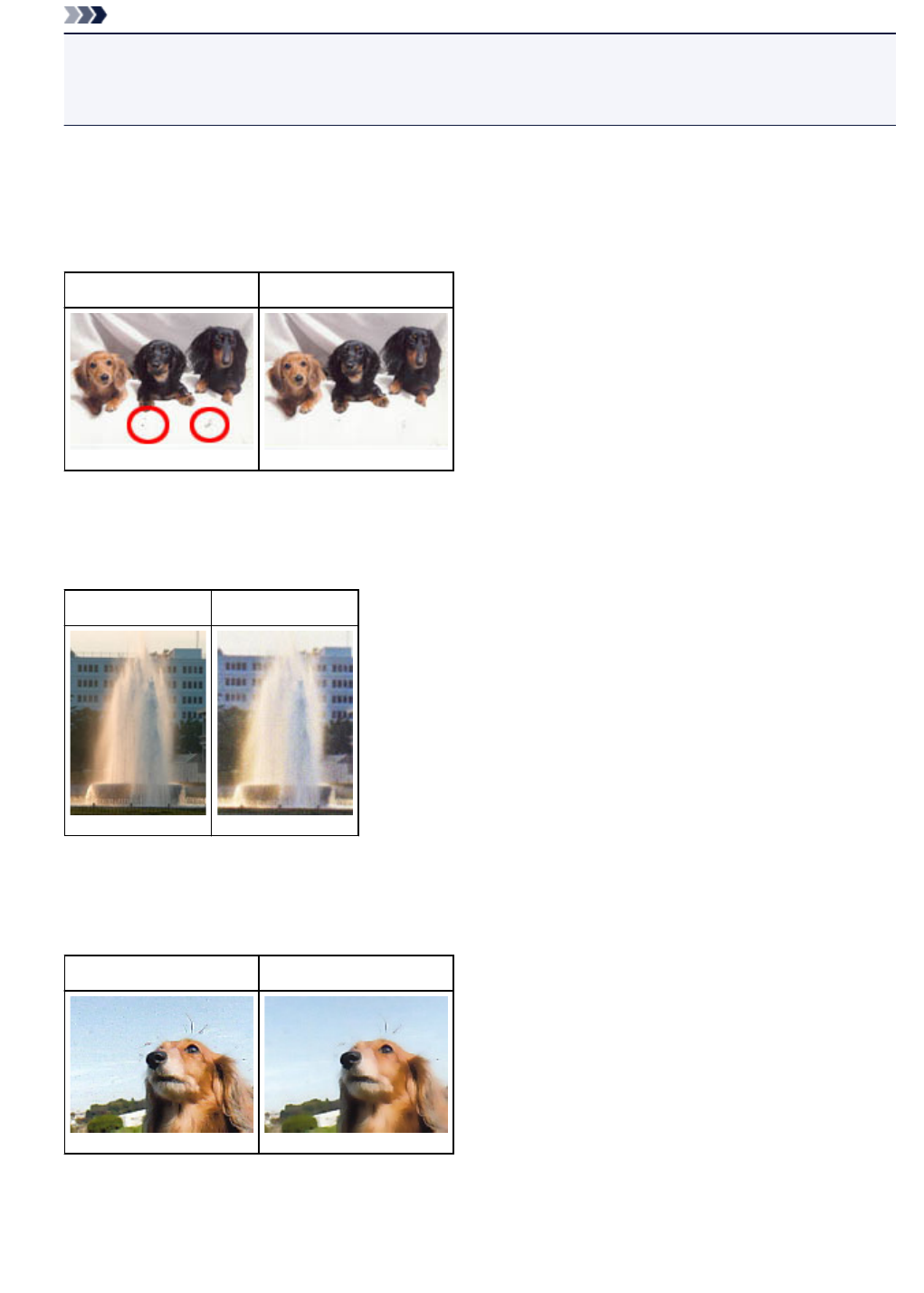
Note
• Printed photos and pictures are displayed as a collection of fine dots. "Moire" is a phenomenon
where uneven gradation or a stripe pattern appears when such photos or pictures printed with fine
dots are scanned. Descreen is the function for reducing this moire effect.
Reducing dust and scratches
Set Reduce Dust and Scratches to Low, Medium, or High according to the degree of dust and
scratches.
None Medium
Correcting photos that have faded with time or due to colorcast
Set Fading Correction to Low, Medium, or High according to the degree of fading or colorcast.
None Medium
Reducing graininess
Set Grain Correction to Low, Medium, or High according to the degree of graininess.
None Medium
Correcting shadows that appear between pages when scanning open booklets
Set Gutter Shadow Correction to Low, Medium, or High according to the degree of shadows.
790
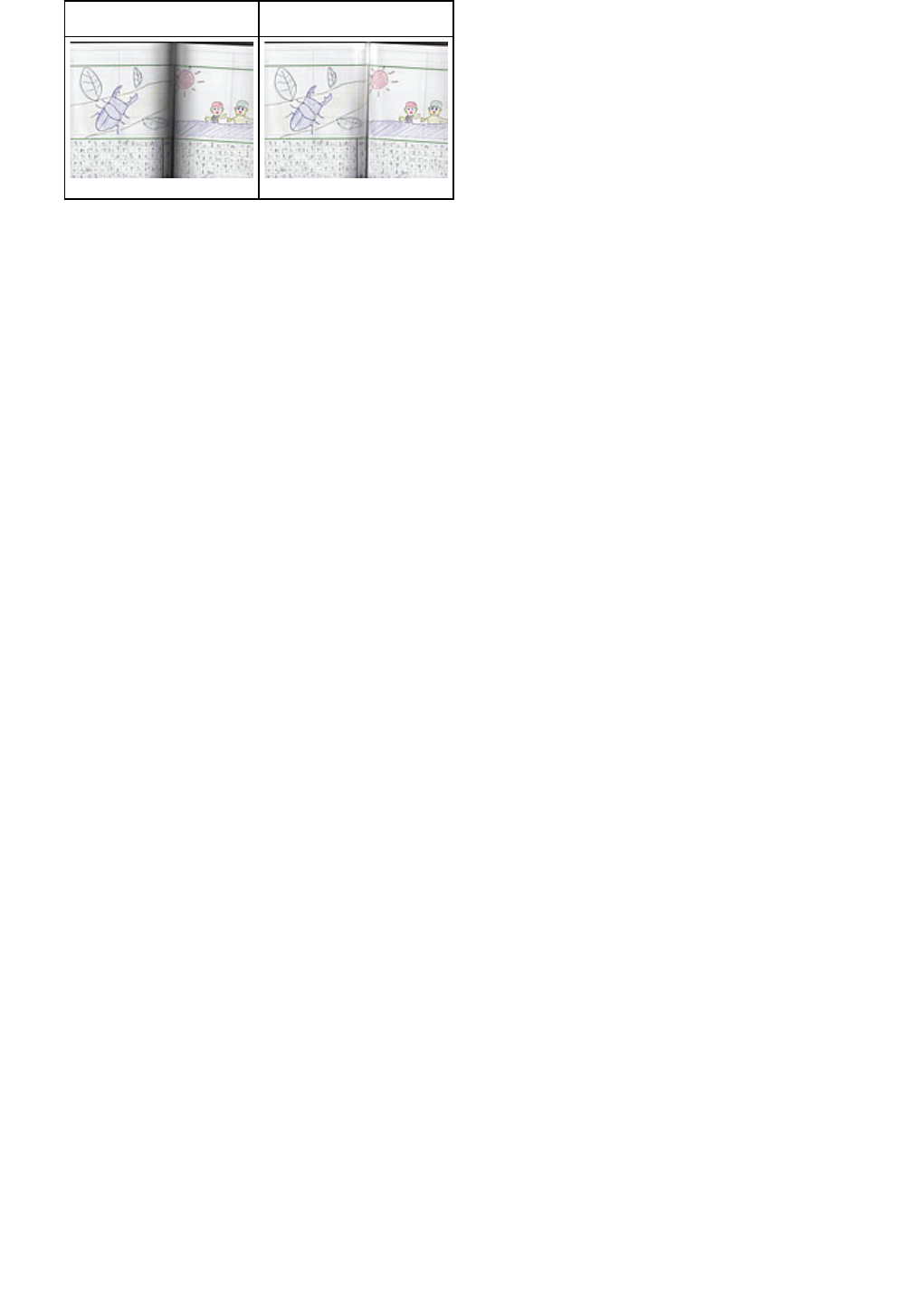
None Medium
791
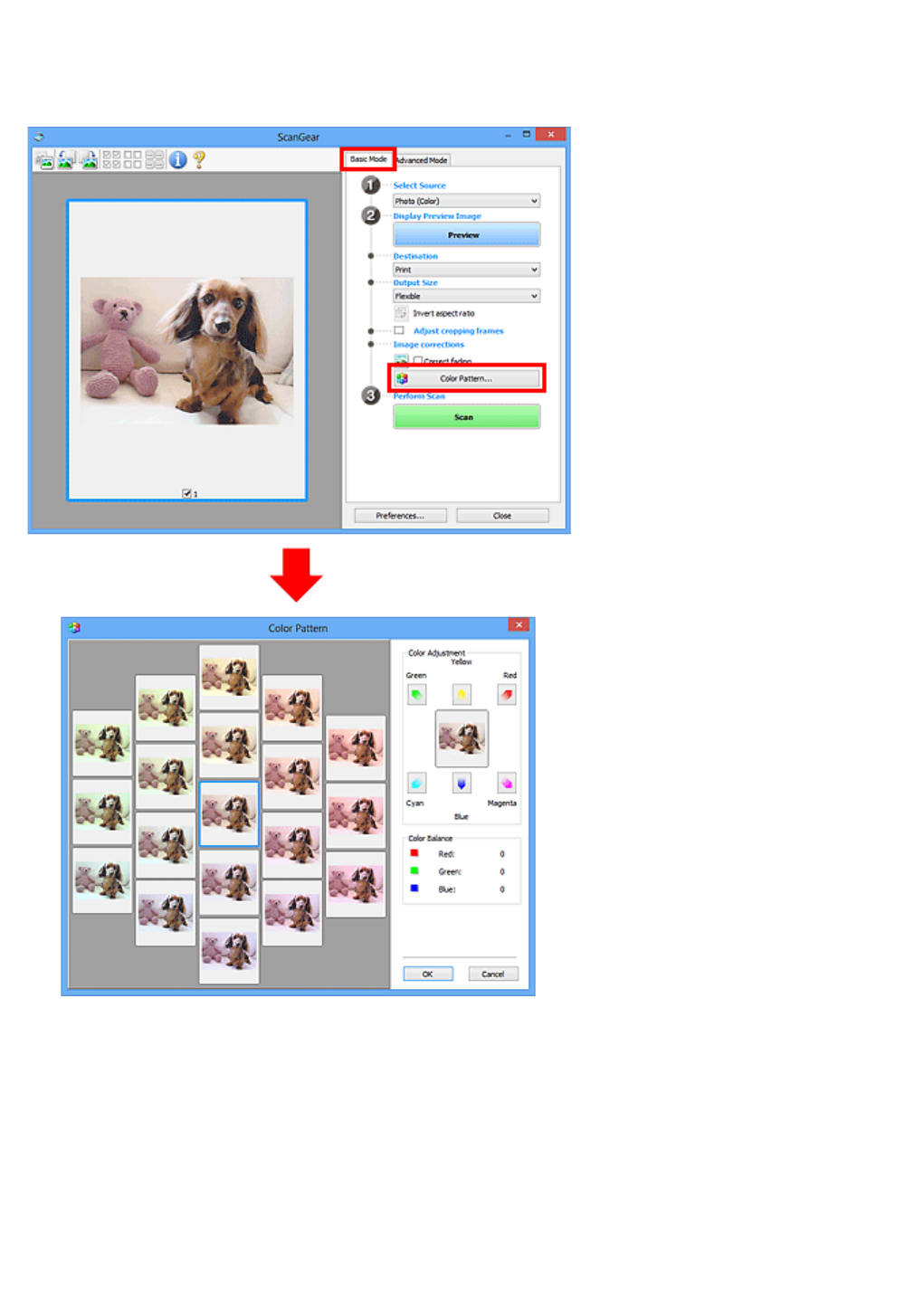
Adjusting Colors Using a Color Pattern
You can preview color changes and reproduce natural colors by using the color pattern function in ScanGear
(scanner driver)'s Basic Mode tab.
Color Adjustment
Correct colors that have faded with time or due to colorcast. "Colorcast" is a phenomenon where a
specific color affects the entire picture due to the weather or ambient strong colors.
Click an arrow in Color Adjustment to emphasize the corresponding color.
Cyan & red, magenta & green, and yellow & blue are complementary color pairs (each pair produces a
shade of gray when mixed). You can reproduce the natural colors of the scene by reducing the cast color
and increasing the complementary color.
792
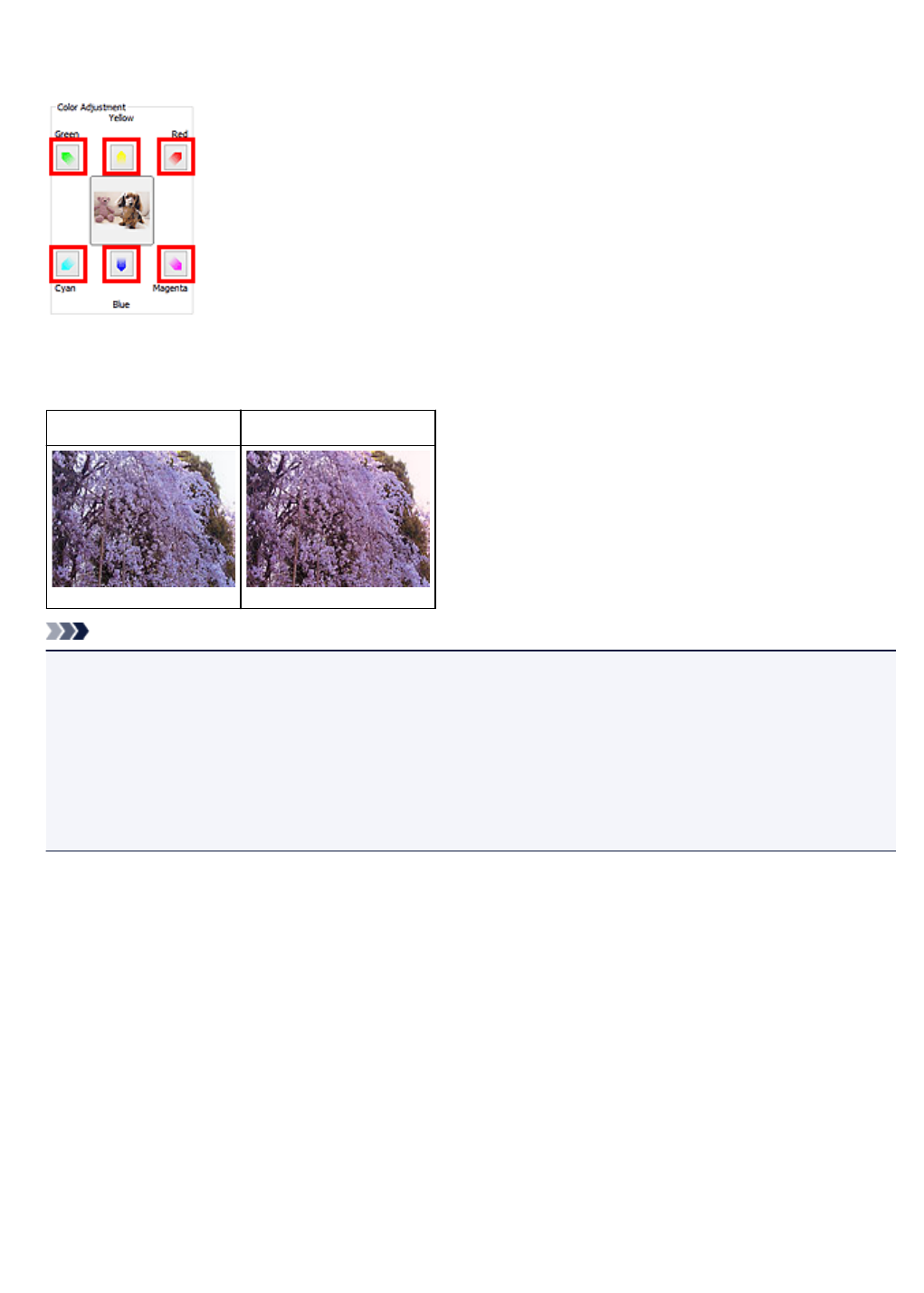
It is recommended that you find a portion in the image where it should be white, and adjust the colors so
that the portion turns white.
Preview image appears in the center. Preview image colors change as you adjust them.
Below is an example of correcting a bluish image.
Since Blue and Green are too strong, click the Yellow and Magenta arrows to correct.
Before After
Note
•Color adjustments are applied only to the cropping frames (scan areas) or the frame selected in
thumbnail view.
•You can select multiple frames or cropping frames by clicking them while pressing the Ctrl key.
•You can also select a color tone from the color pattern displayed on the left of the Color Pattern
screen.
•You can also use this function to add a specific tint to an image. Increase the magenta to add a warm
tint, and increase the blue to add a cool tint.
793
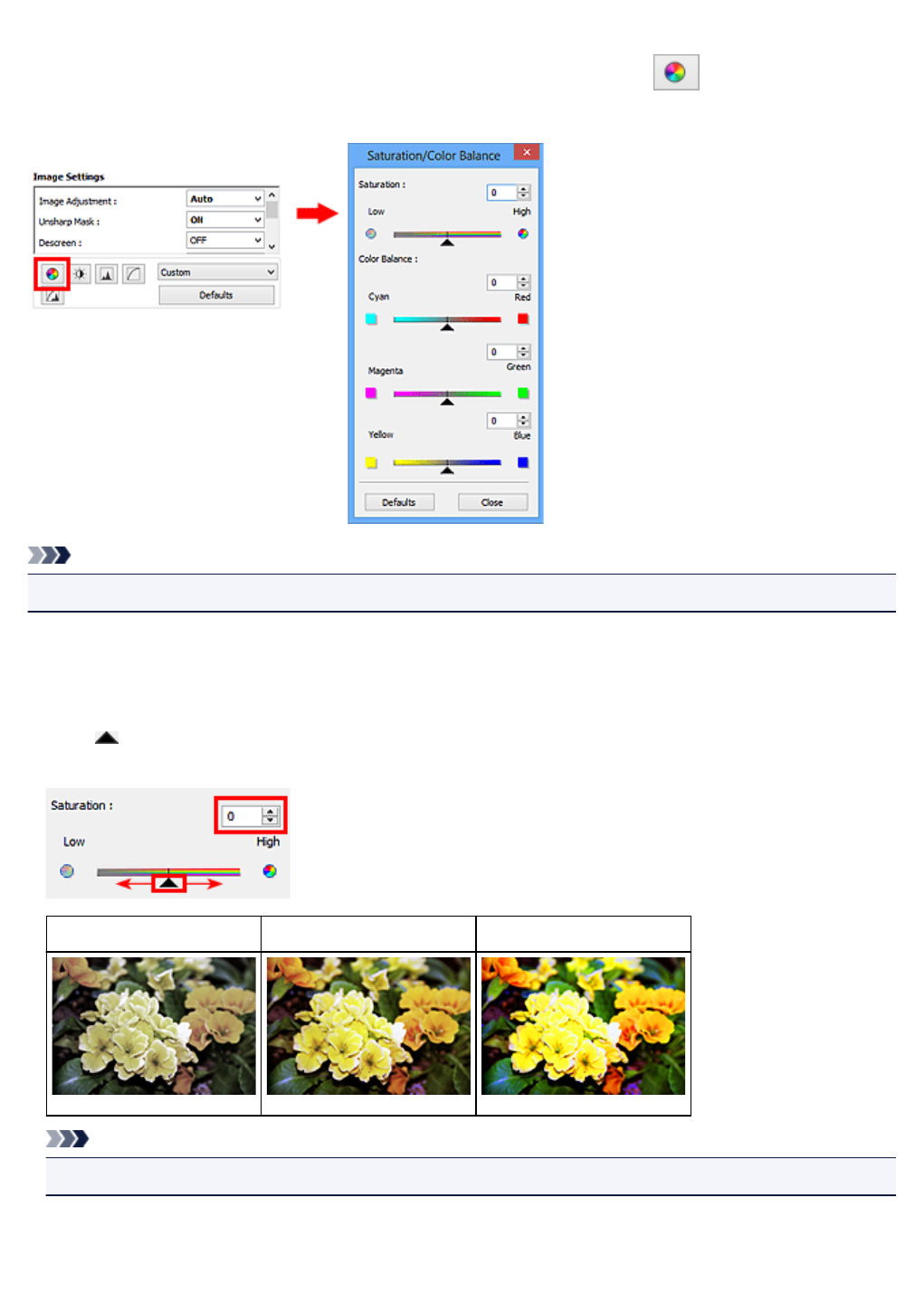
Adjusting Saturation and Color Balance
You can brighten colors that have faded with time or due to colorcast by using (Saturation/Color
Balance) in ScanGear (scanner driver)'s Advanced Mode tab.
Note
• Click Defaults to reset all adjustments in the current window.
Saturation
Adjust the image's saturation (vividness). You can brighten colors that have faded with time, etc.
Move (Slider) under Saturation to the left to decrease the saturation (darken the image), and to the
right to increase the saturation (brighten the image). You can also enter a value (-127 to 127).
Saturation decreased Original image Saturation increased
Note
• The natural color tone of the original image may be lost if you increase saturation too much.
794
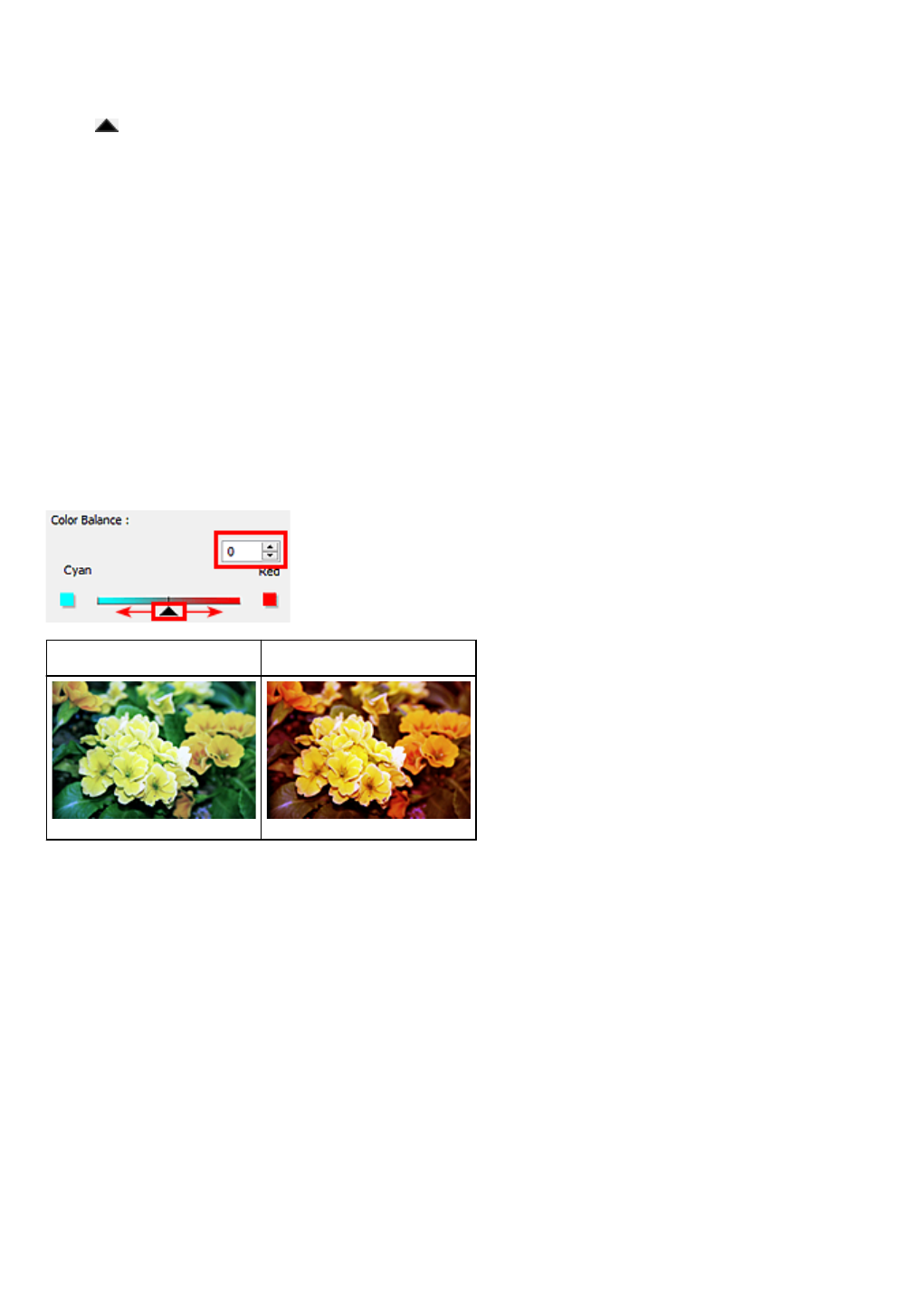
Color Balance
Adjust images that have a colorcast. "Colorcast" is a phenomenon where a specific color affects the entire
picture due to the weather or ambient strong colors.
Move (Slider) under Color Balance to the left or right to emphasize the corresponding color.
Cyan & Red
Magenta & Green
Yellow & Blue
These are complementary color pairs (each pair produces a shade of gray when mixed). You can
reproduce the natural colors of the scene by reducing the cast color and increasing the complementary
color.
It is usually difficult to correct the image completely by adjusting only one color pair. It is recommended
that you find a portion in the image where it should be white, and adjust all three color pairs so that the
portion turns white.
You can also enter a value (-127 to 127).
Below is an example of an image in which the "Cyan & Red" pair has been adjusted.
Cyan is increased Red is increased
795
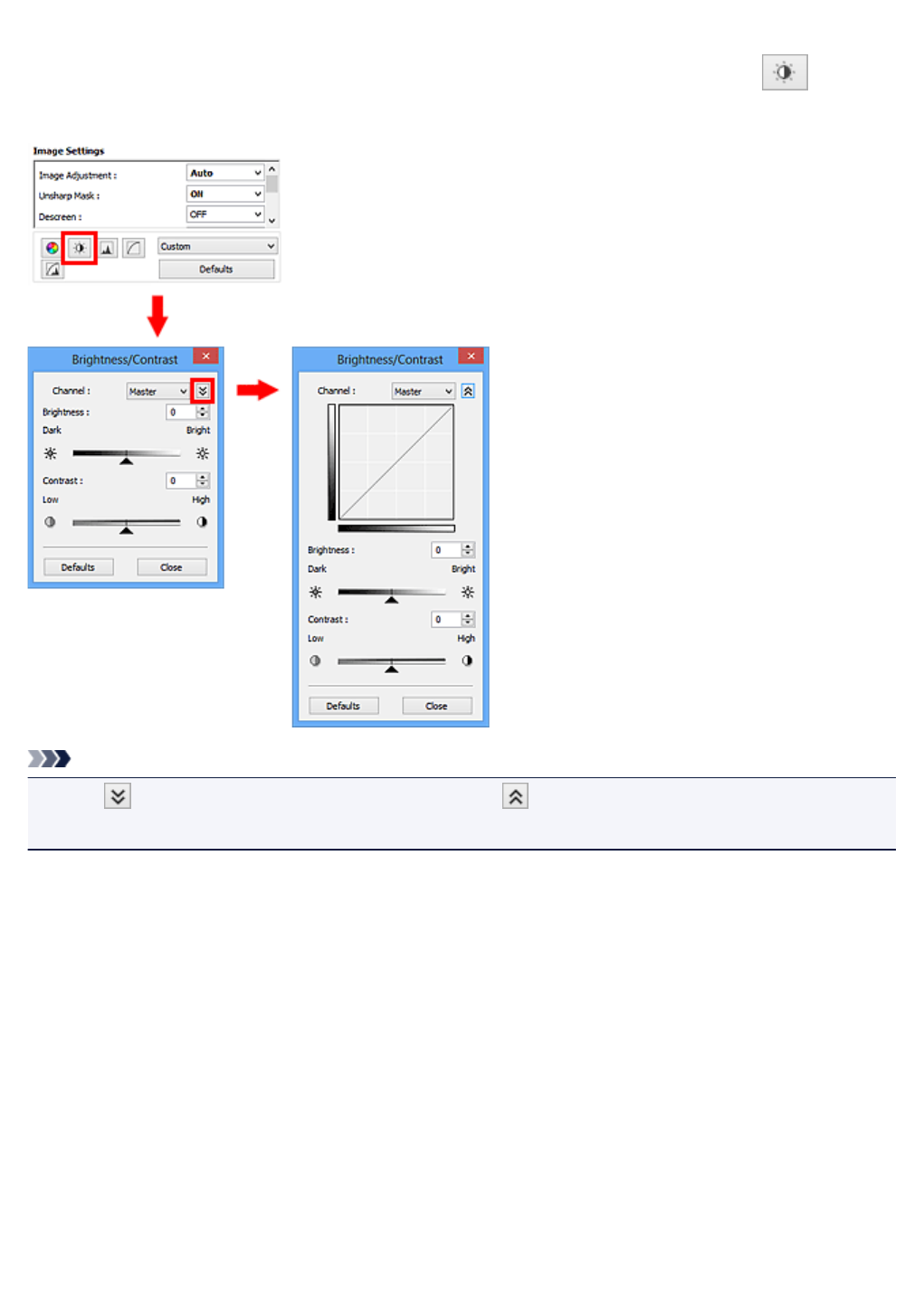
Adjusting Brightness and Contrast
You can adjust images that are too dark or bright, or too flat due to lack of contrast by using
(Brightness/Contrast) in ScanGear (scanner driver)'s Advanced Mode tab.
Note
• Click (Down arrow) to switch to detailed view. Click (Up arrow) to return to the previous view.
• Click Defaults to reset all adjustments in the current window.
Channel
Each dot of an image is a mixture of Red, Green, and Blue in various proportions (gradation). These
colors can be adjusted individually as a "channel."
Master
Adjust the Red, Green, and Blue combined.
Red
Adjust the Red channel.
Green
Adjust the Green channel.
Blue
Adjust the Blue channel.
796
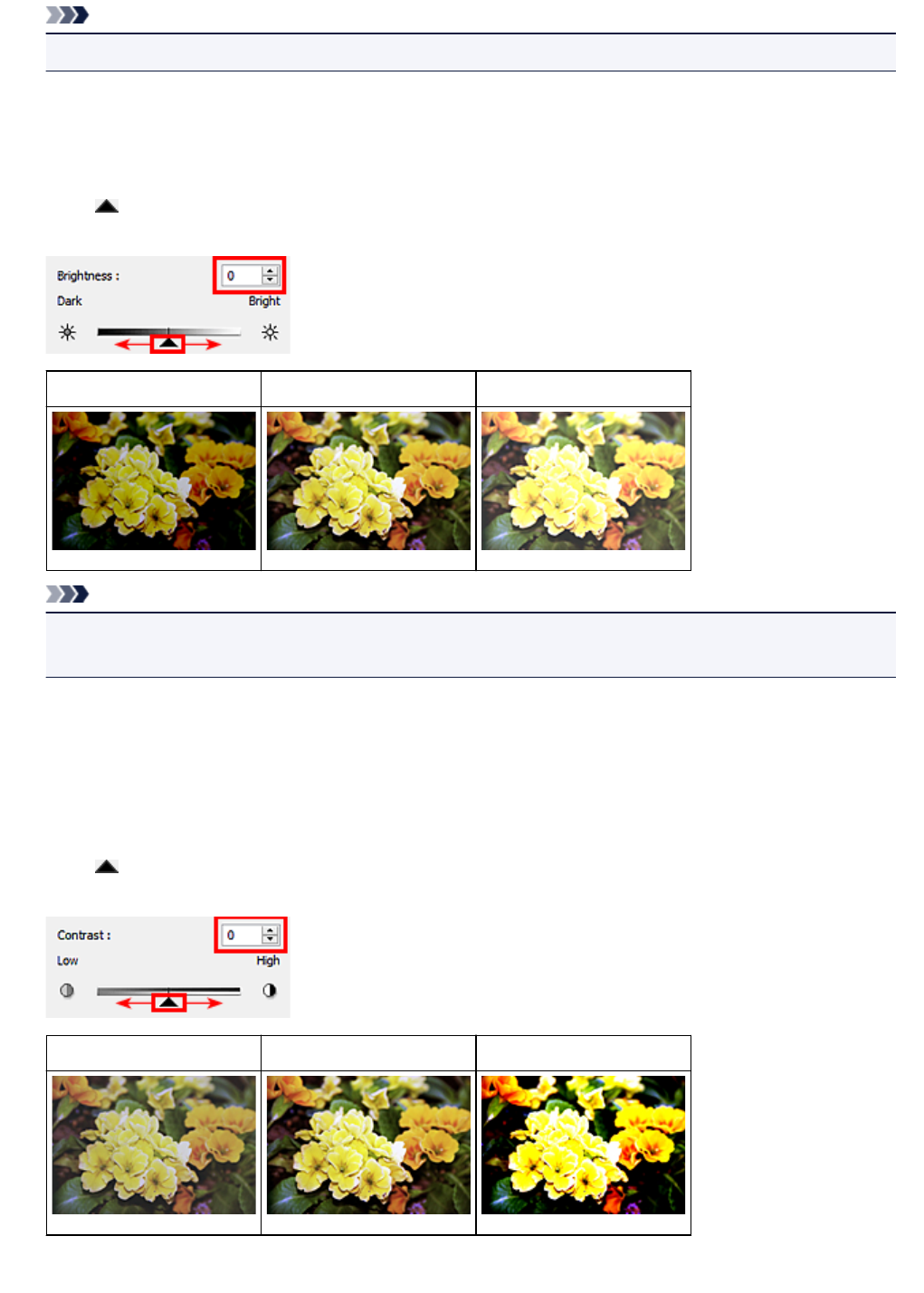
Note
• Only Grayscale will be displayed in Channel when Color Mode is Grayscale.
Brightness
Adjust the image brightness.
Move (Slider) under Brightness to the left to darken and right to brighten the image. You can also
enter a value (-127 to 127).
Darkened Original image Brightened
Note
• Highlights may be lost if you brighten the image too much, and shadows may be lost if you darken
the image too much.
Contrast
"Contrast" is the degree of difference between the brighter and darker parts of an image. Increasing
contrast will increase the difference, thus sharpening the image. Decreasing contrast will decrease the
difference, thus softening the image.
Move (Slider) under Contrast to the left to decrease and right to increase the contrast of the image.
You can also enter a value (-127 to 127).
Decreased contrast Original image Increased contrast
797
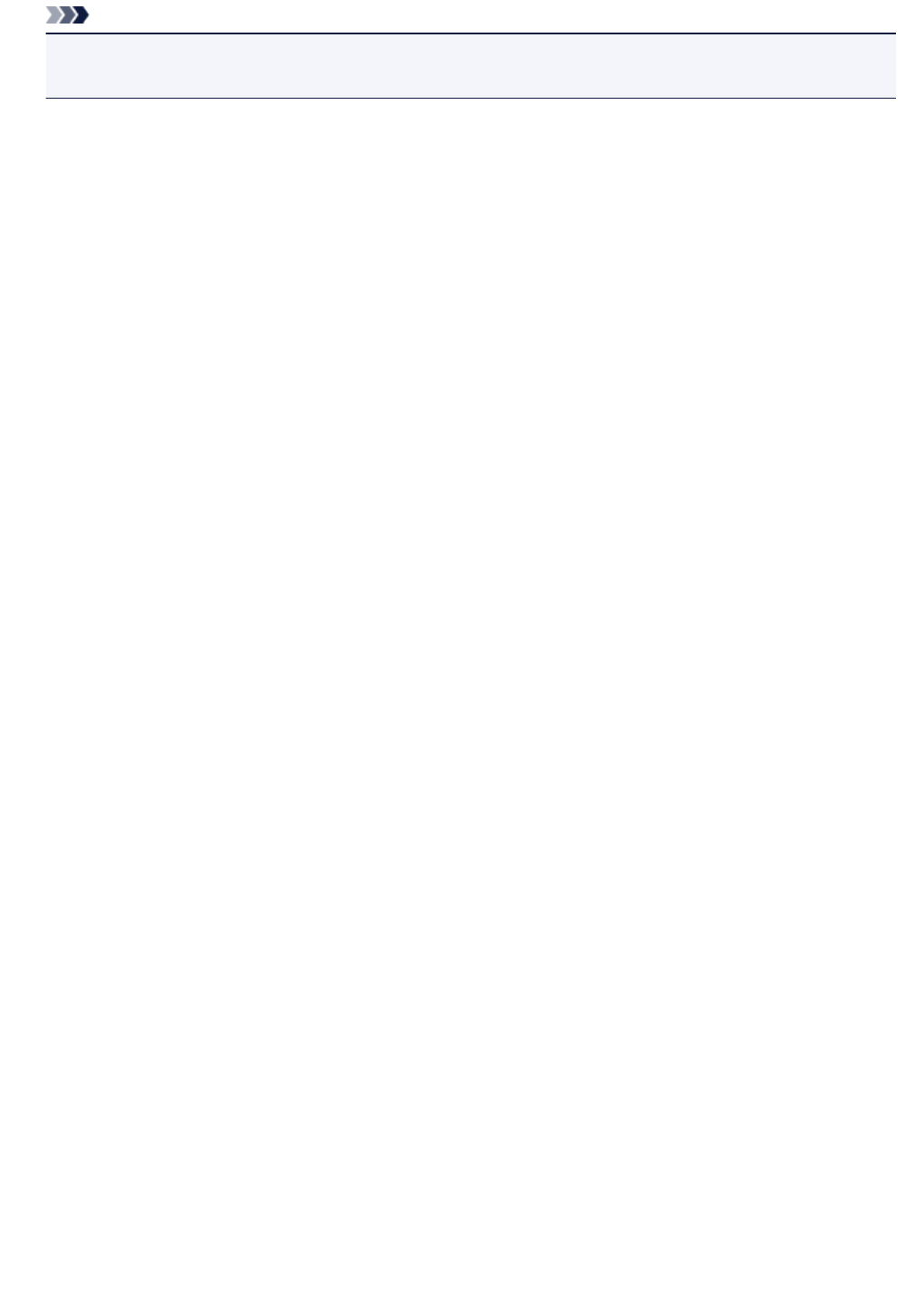
Note
• Increasing the contrast is effective in adding a three-dimensional feel to soft images. However,
shadows and highlights may be lost if you increase the contrast too much.
798
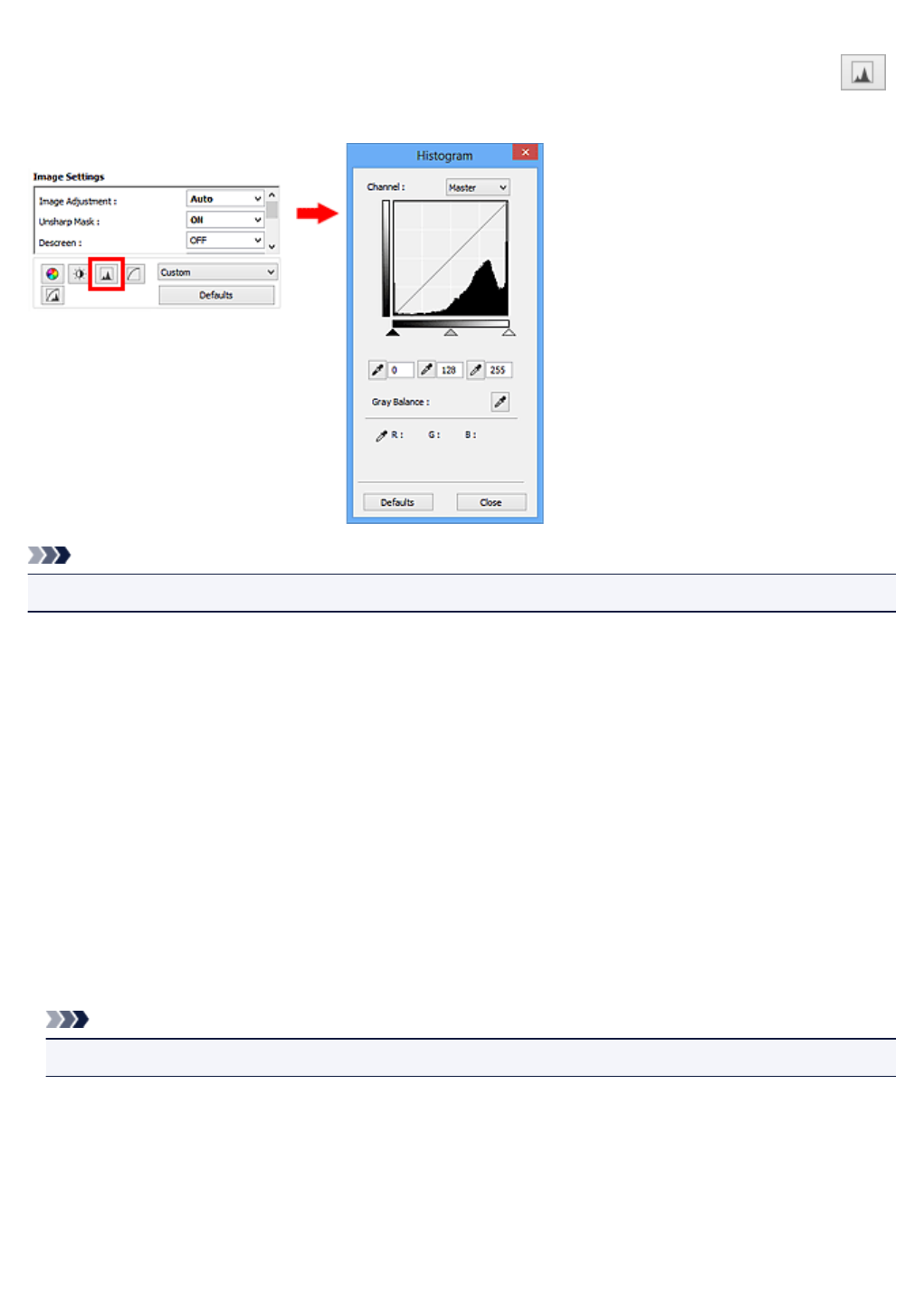
Adjusting Histogram
You can adjust the image color tone by using a graph (histogram) showing brightness distribution, via
(Histogram) in ScanGear (scanner driver)'s Advanced Mode tab.
Note
• Click Defaults to reset all adjustments in the current window.
Channel
Each dot of an image is a mixture of Red, Green, and Blue in various proportions (gradation). These
colors can be adjusted individually as a "channel."
Master
Adjust the Red, Green, and Blue combined.
Red
Adjust the Red channel.
Green
Adjust the Green channel.
Blue
Adjust the Blue channel.
Note
• Only Grayscale will be displayed in Channel when Color Mode is Grayscale.
Reading Histograms
You can see the histogram of a specified area for each Channel. The higher the histogram peak, the
more data is distributed to that level.
799
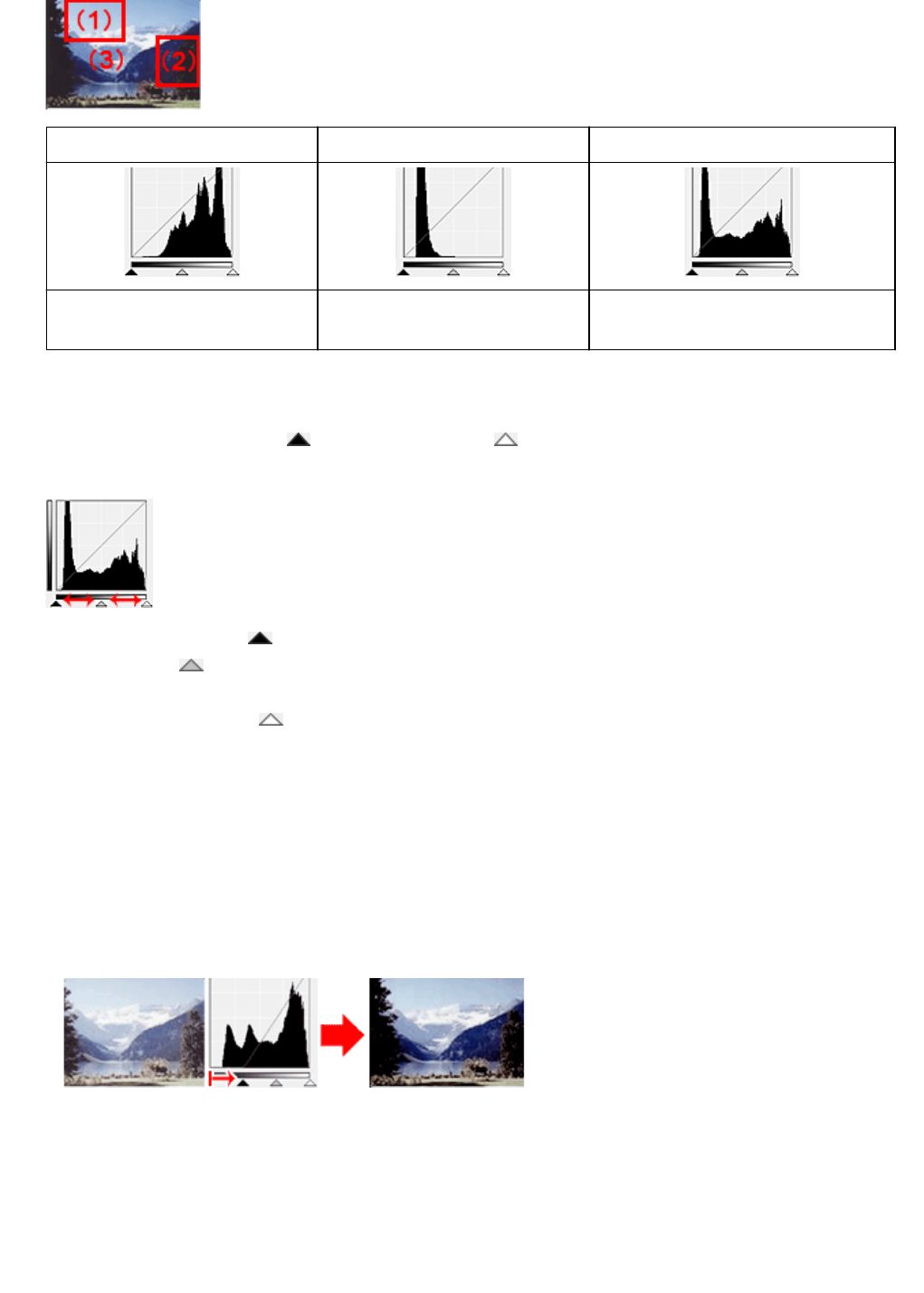
(1) Bright area (2) Dark area (3) Whole image
More data is distributed to the high-
light side.
More data is distributed to the shad-
ow side.
Data is widely distributed between the
highlight and shadow.
Adjusting Histograms (Using the Slider)
Select a Channel, then move (Black-point Slider) or (White-point Slider) to specify the level to be
set as the shadow or highlight.
• All parts to the left of (Black-point Slider) will be black (level 0).
• The parts at (Mid-point Slider) will turn to the color exactly between the black-point and white-
point.
• All parts to the right of (White-point Slider) will turn white (level 255).
When Image Adjustment is set to anything but None, the adjustments shown below are performed
automatically.
Moving the Black-point and White-point Sliders
Move the Black-point Slider or White-point Slider to adjust brightness.
Images with more data distributed to the highlight side
Move the Black-point Slider toward the highlight side.
Images with more data distributed to the shadow side
Move the White-point Slider toward the shadow side.
800
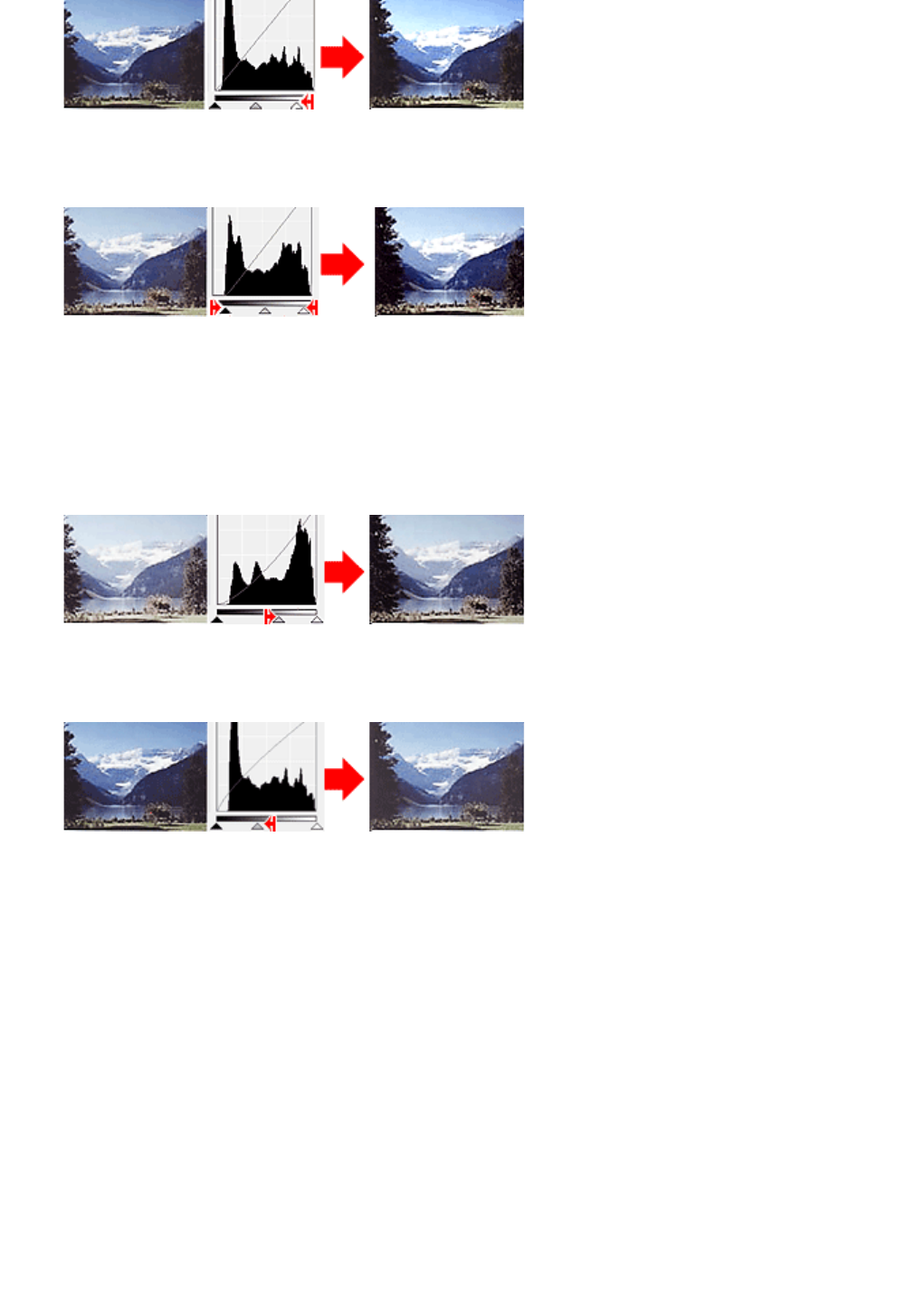
Images with widely distributed data
Move the Black-point Slider toward the highlight side, and White-point Slider toward the shadow side.
Moving the Mid-point Slider
Move the Mid-point Slider to specify the level to be set as the middle of the tonal range.
Images with more data distributed to the highlight side
Move the Mid-point Slider toward the highlight side.
Images with more data distributed to the shadow side
Move the Mid-point Slider toward the shadow side.
Adjusting Histograms (Using the Droppers)
When you select a Channel and click the Black-point, Mid-point, or White-point Dropper, the mouse
pointer on the preview image changes to a dropper. Click a Dropper displayed below the histogram to
change the setting.
801
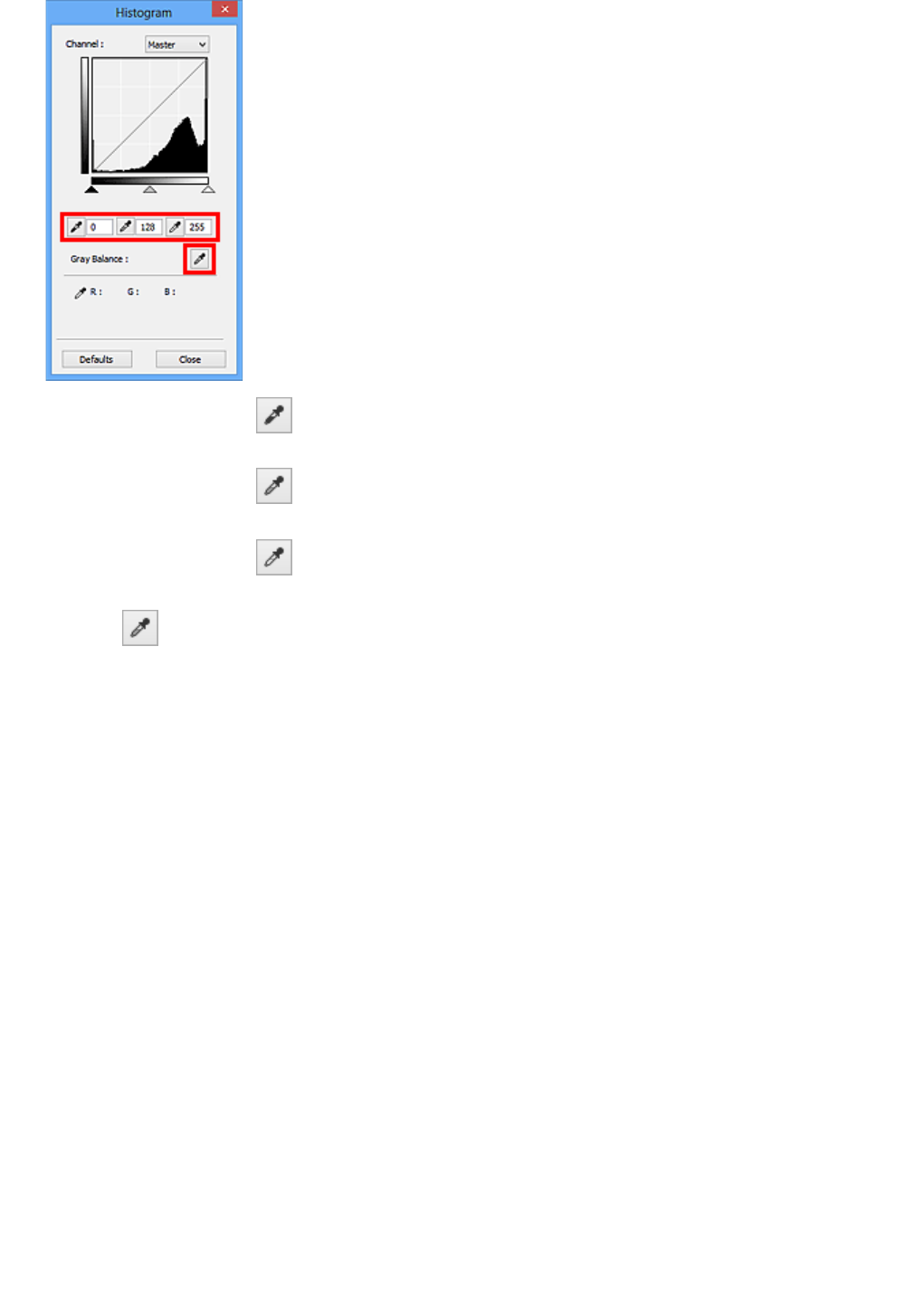
• The point clicked with (Black-point Dropper) will be the darkest point. You can also enter a value
(0 to 245).
• The point clicked with (Mid-point Dropper) will be the middle of the tonal range. You can also
enter a value (5 to 250).
• The point clicked with (White-point Dropper) will be the brightest point. You can also enter a
value (10 to 255).
• Click (Dropper) for Gray Balance and click the area you want to adjust the color in the preview
image.
The clicked point will be set as the achromatic color reference, and the rest of the image is adjusted
accordingly. For instance, if snow in a photo appears bluish, click the bluish part to adjust the whole image
and reproduce natural colors.
802
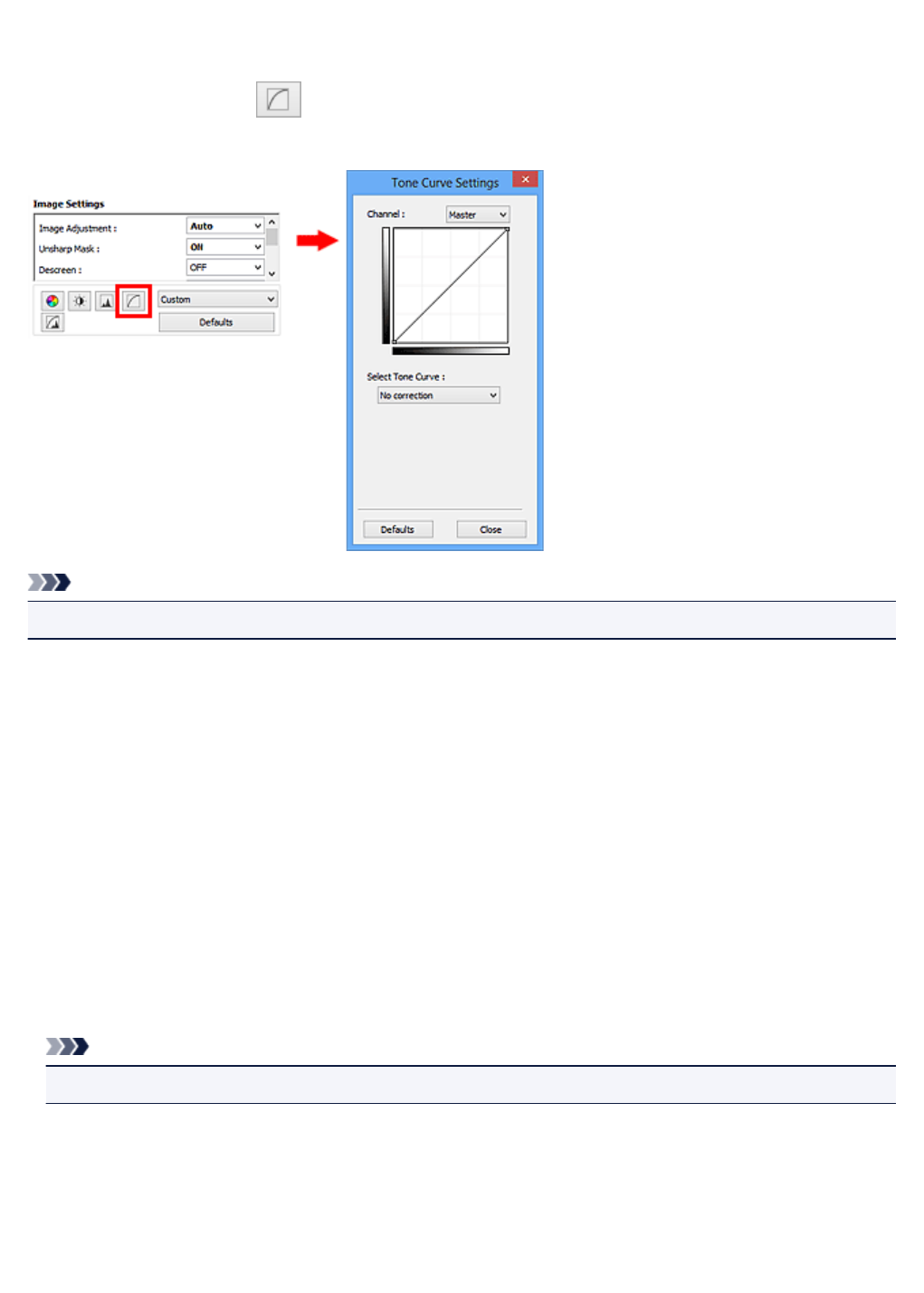
Adjusting Tone Curve
You can adjust the brightness of an image by selecting the type of graph (tone curve) showing the balance
of tone input and output, via (Tone Curve Settings) in ScanGear (scanner driver)'s Advanced Mode
tab.
Note
• Click Defaults to reset all adjustments in the current window.
Channel
Each dot of an image is a mixture of Red, Green, and Blue in various proportions (gradation). These
colors can be adjusted individually as a "channel."
Master
Adjust the Red, Green, and Blue combined.
Red
Adjust the Red channel.
Green
Adjust the Green channel.
Blue
Adjust the Blue channel.
Note
• Only Grayscale will be displayed in Channel when Color Mode is Grayscale.
Reading Tone Curves
With ScanGear, scanning images via a scanner is the input, and displaying to a monitor is the output.
"Tone Curve" shows the balance of tone input and output for each Channel.
803
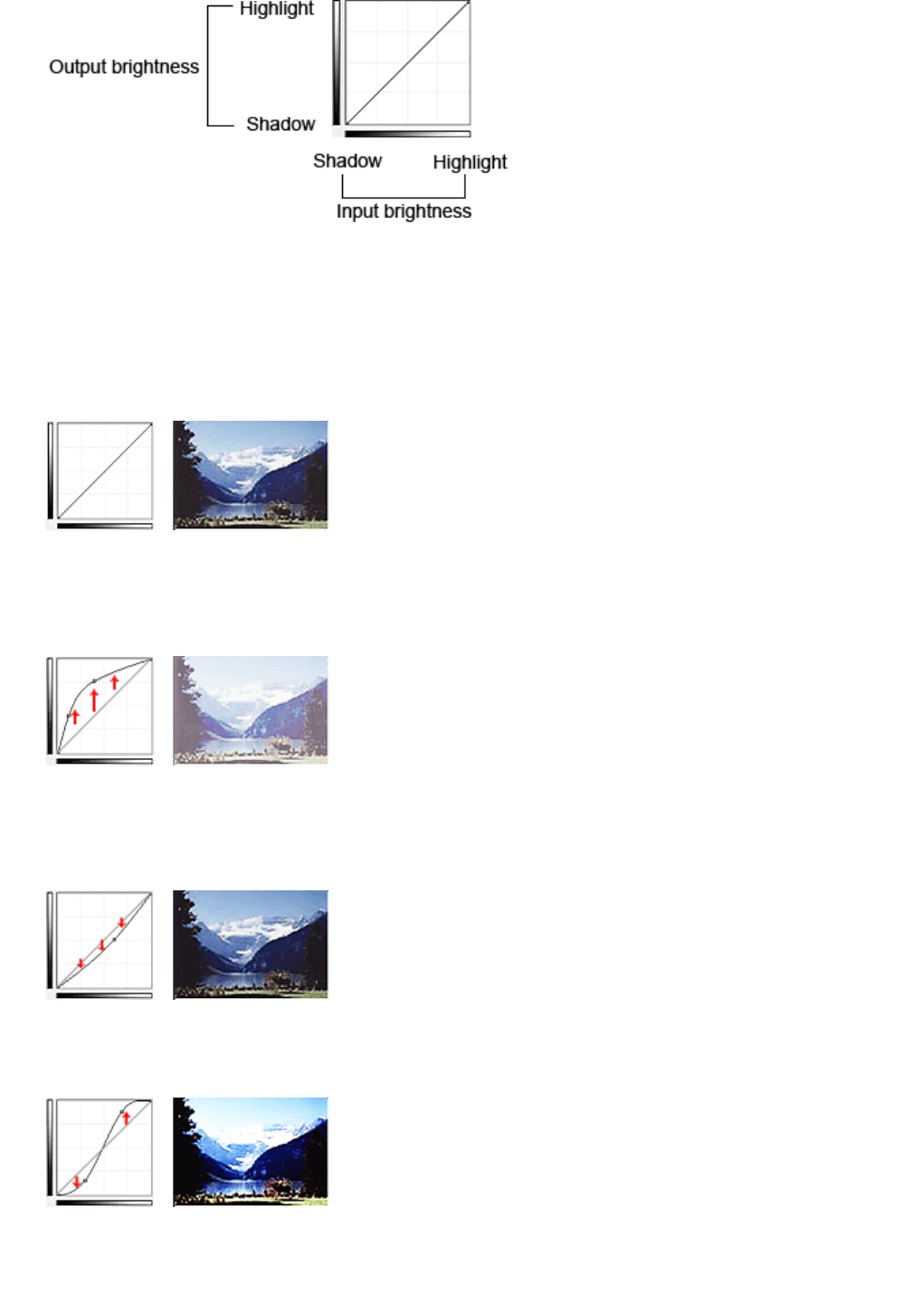
Adjusting Tone Curve
In Select Tone Curve, select a tone curve from No correction, Overexposure, Underexposure, High
contrast, Reverse the negative/positive image, and Edit custom curve.
No correction (No adjustment)
Overexposure (Convex curve)
The midtone data of the input side is stretched toward the highlight of the output side, resulting in a bright-
toned image when viewed on a monitor.
Underexposure (Concave curve)
The midtone data of the input side is stretched toward the shadow of the output side, resulting in a dark-
toned image when viewed on a monitor.
High contrast (S curve)
The highlight and shadow of the input side are enhanced, resulting in a high-contrast image.
804
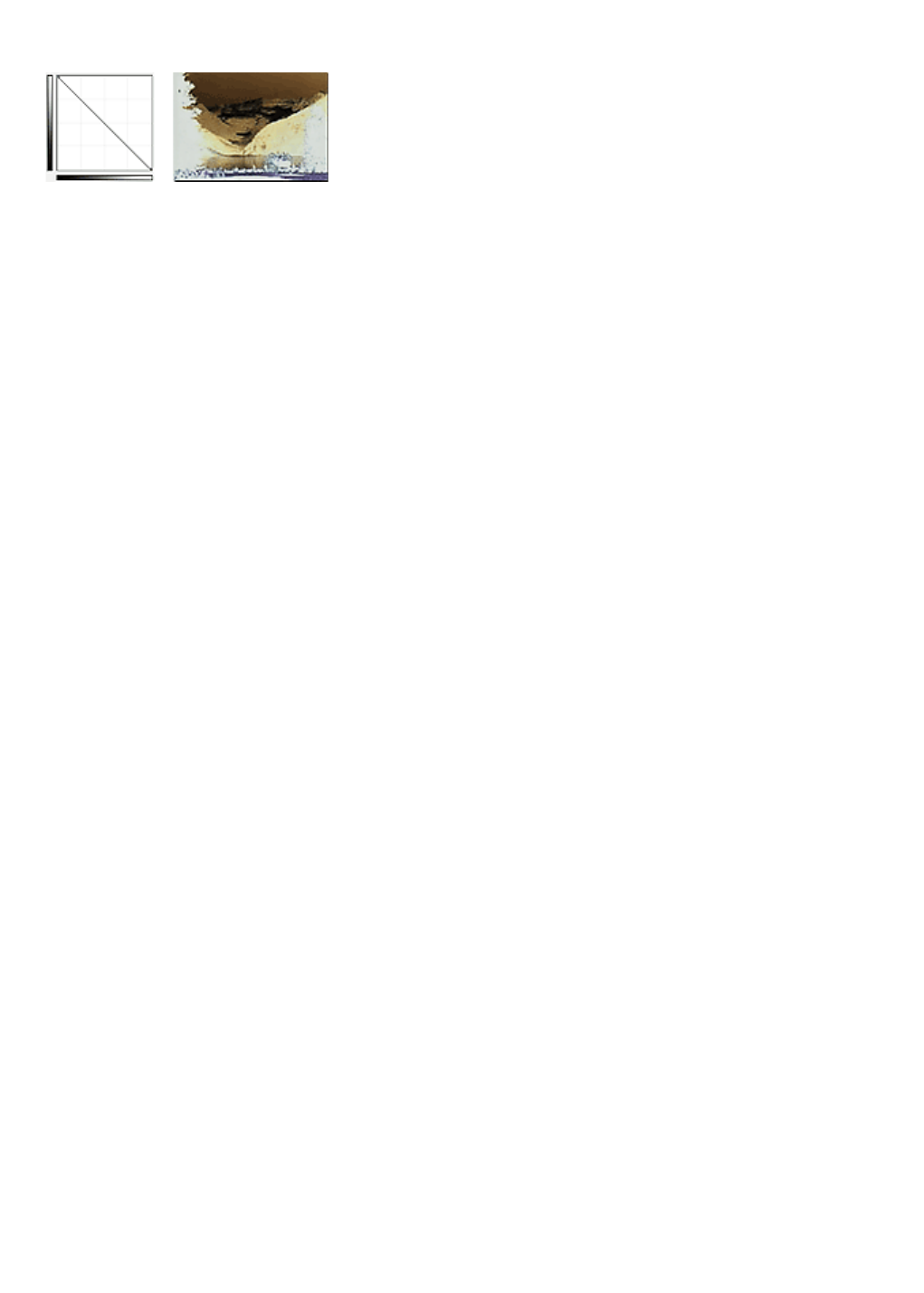
Reverse the negative/positive image (Downward-sloping line)
The input and output sides are reversed, resulting in a negative-positive inverted image.
Edit custom curve
You can drag specific points on the Tone Curve to freely adjust the brightness of the corresponding areas.
805
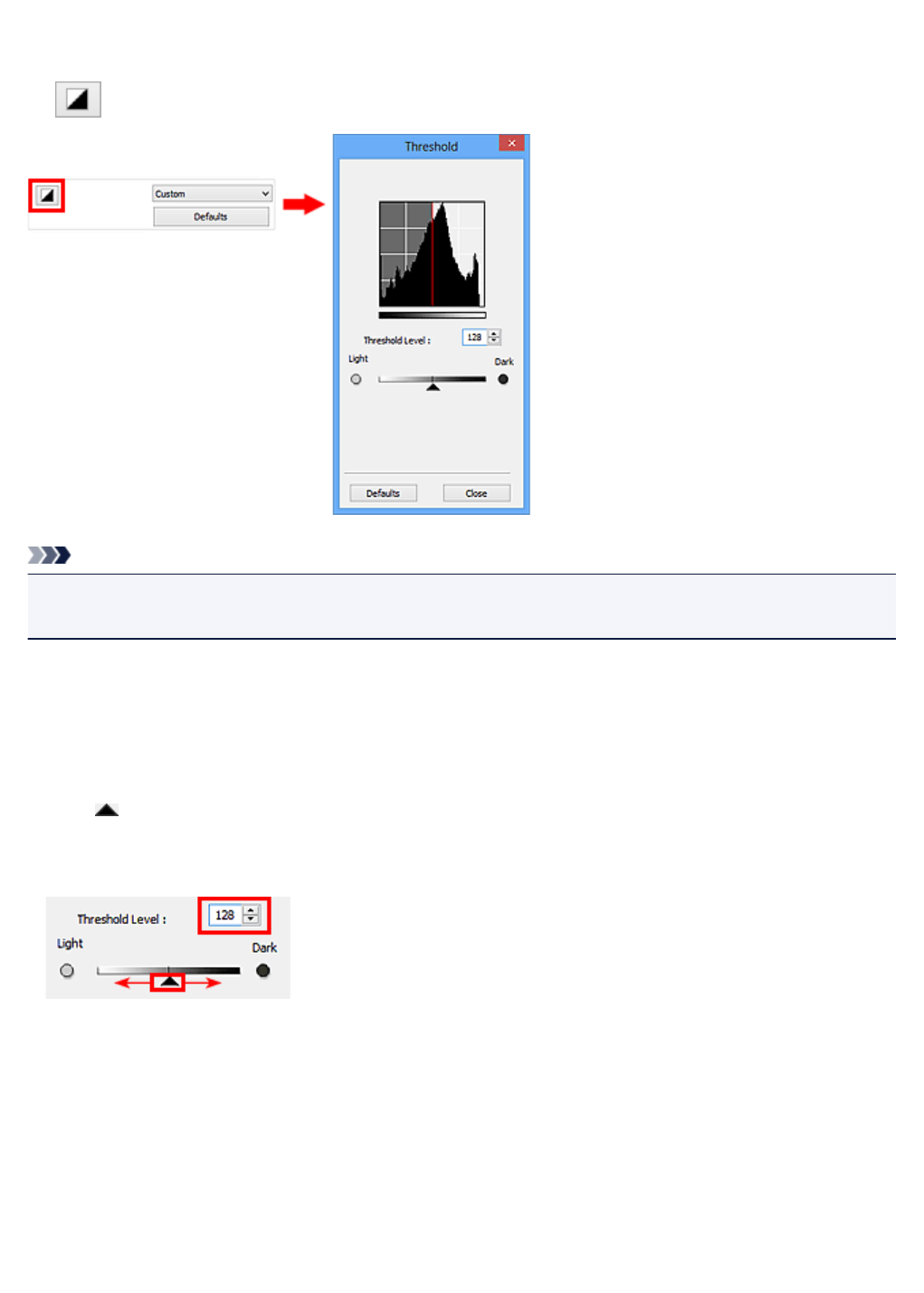
Setting Threshold
You can sharpen text in a document or reduce show-through in newspapers by adjusting the threshold level
via (Threshold) in ScanGear (scanner driver)'s Advanced Mode tab.
Note
• This function is available when Color Mode is Black and White.
• Click Defaults to reset all adjustments in the current window.
Adjusting Threshold
The brightness of color and grayscale images is expressed in a value between 0 and 255. However, in
creating black and white images, all colors are mapped to either black (0) or white (255). "Threshold" is
the borderline value that determines a color as black or white.
Move (Slider) to the right to increase the threshold value and thus increase the black areas. Move the
slider to the left to decrease the value and thus increase the white areas. You can also enter a value (0 to
255).
806
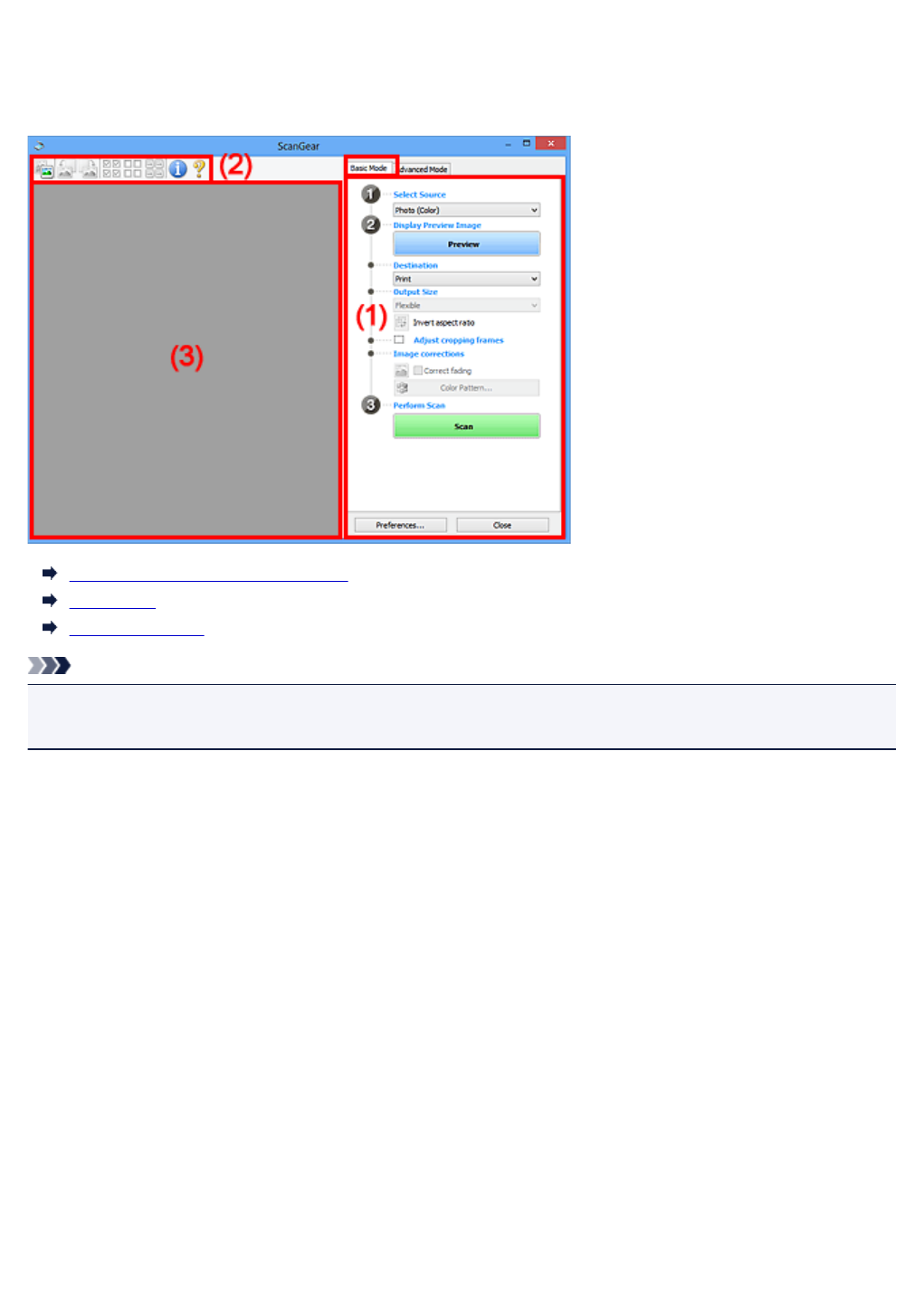
Basic Mode Tab
This mode allows you to scan easily by following the on-screen steps.
This section describes the settings and functions available on the Basic Mode tab.
(1) Settings and Operation Buttons
(2) Toolbar
(3) Preview Area
Note
• The displayed items vary by document type and view.
• The preview function is not available when scanning from the ADF (Auto Document Feeder).
(1) Settings and Operation Buttons
Select Source
Photo (Color)
Scan color photos.
Magazine (Color)
Scan color magazines.
Document (Color)
Scan documents in color.
Document (Grayscale)
Scan documents in black and white.
Document (Color) ADF Simplex
Scan documents from the ADF in color.
Document (Grayscale) ADF Simplex
Scan documents from the ADF in black and white.
Document (Color) ADF Duplex (only for models supporting ADF duplex scanning)
Scan both sides of documents from the ADF in color.
808
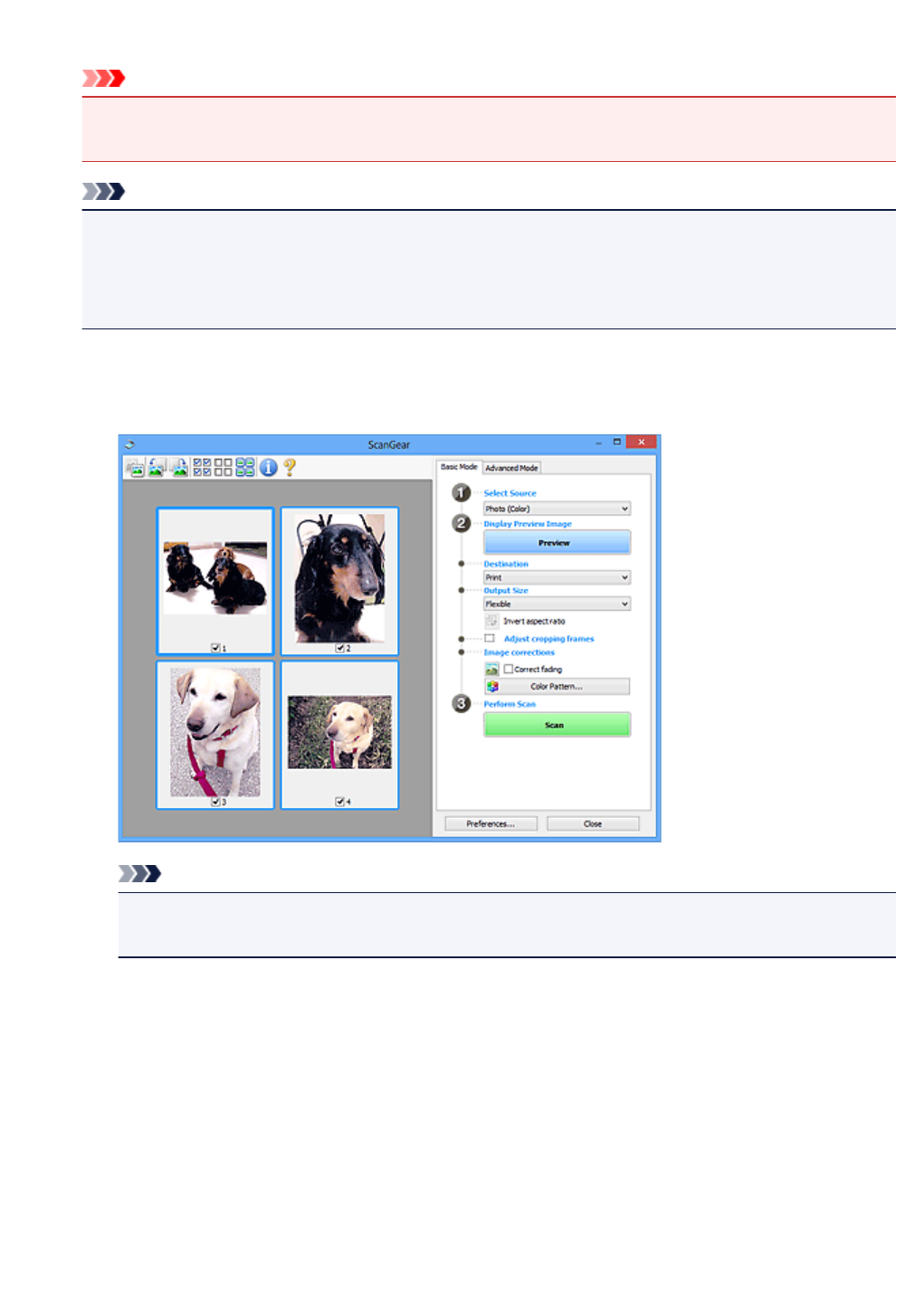
Document (Grayscale) ADF Duplex (only for models supporting ADF duplex scanning)
Scan both sides of documents from the ADF in black and white.
Important
• Some applications do not support continuous scanning from the ADF. For details, refer to the
application's manual.
Note
• When you select a document type, the unsharp mask function will be active.
• When you select an option other than the ADF types, the image adjustment function which
adjusts images based on the document type will also be active.
• If you select Magazine (Color), the descreen function will be active.
Display Preview Image
Preview
Performs a trial scan.
Note
• When using the machine for the first time, scanner calibration starts automatically. Wait a
while until the preview image appears.
Destination
Select what you want to do with the scanned image.
Print
Select this to print the scanned image on a printer.
Image display
Select this to view the scanned image on a monitor.
OCR
Select this to use the scanned image with OCR software.
"OCR software" is software that converts text scanned as an image into text data that can be
edited in word processors and other programs.
809
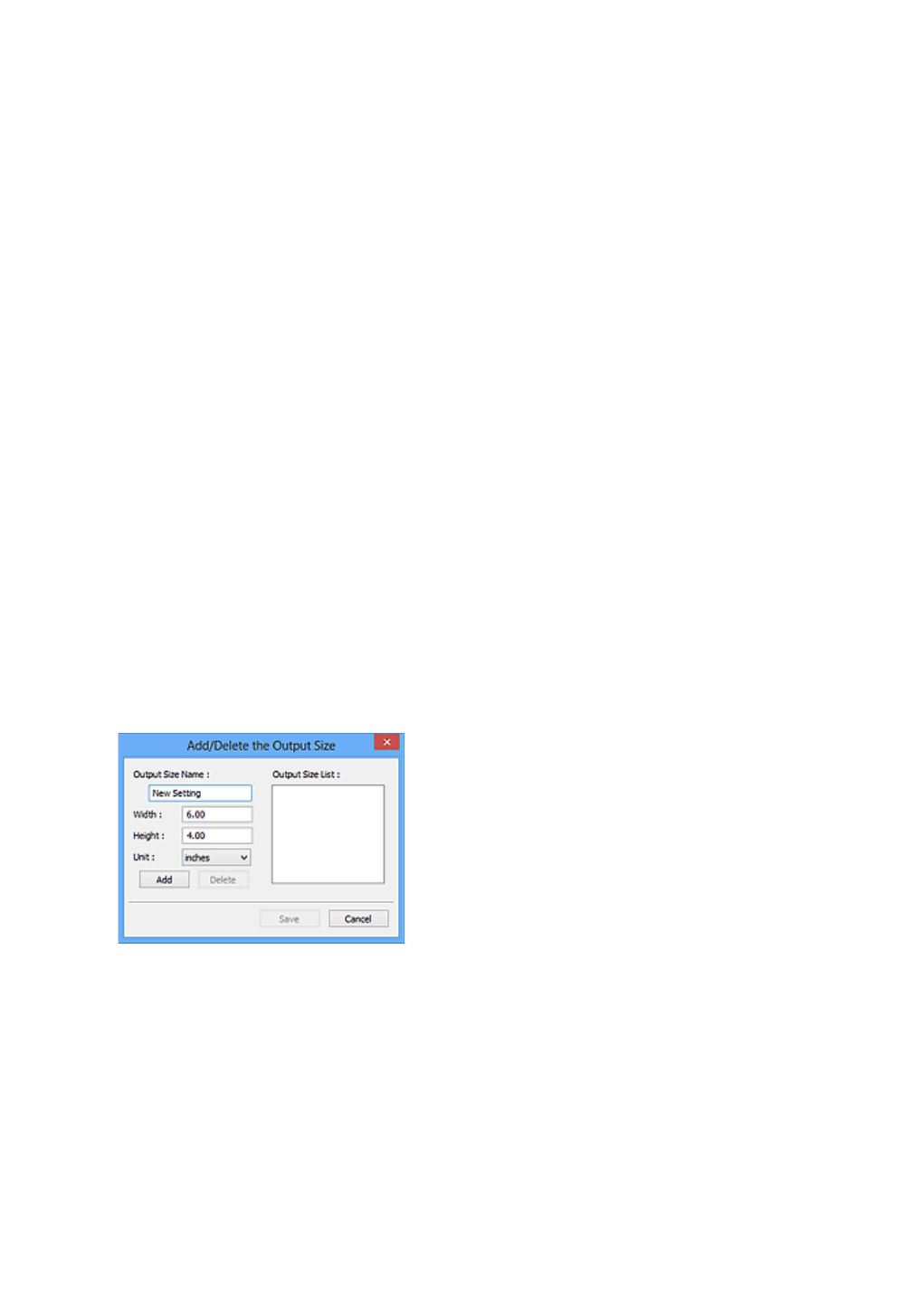
Output Size
Select an output size.
Output size options vary by the item selected in Destination.
Flexible
Allows you to freely adjust the cropping frames (scan areas).
In thumbnail view:
Drag the mouse over a thumbnail to display a cropping frame. When a cropping frame is
displayed, the portion within the cropping frame will be scanned. When no cropping frame is
displayed, each frame is scanned individually.
In whole image view:
When no cropping frame is displayed, the entire Preview area will be scanned. When a cropping
frame is displayed, the portion within the cropping frame will be scanned.
Paper Size (L, A4, etc.)
Select an output paper size. The portion within the cropping frame will be scanned at the size of
the selected paper size. You can drag the cropping frame to enlarge/reduce it while maintaining
the aspect ratio.
Monitor Size (1024 x 768 pixels, etc.)
Select an output size in pixels. A cropping frame of the selected monitor size will be displayed
and the portion within the cropping frame will be scanned. You can drag the cropping frame to
enlarge/reduce it while maintaining the aspect ratio.
Add/Delete...
Opens the Add/Delete the Output Size dialog box, in which you can specify custom output
sizes. You can select this option when Destination is Print or Image display.
In the Add/Delete the Output Size dialog box, you can specify multiple output sizes and save
them at one time. Saved items will be registered to the Output Size list and can be selected,
along with the predefined items.
Adding:
Enter Output Size Name, Width, and Height, then click Add. For Unit, you can select inches or
mm when Destination is Print but you can only select pixels when Destination is Image
display. The name of the added size appears in Output Size List. Click Save to save the items
listed in Output Size List.
810
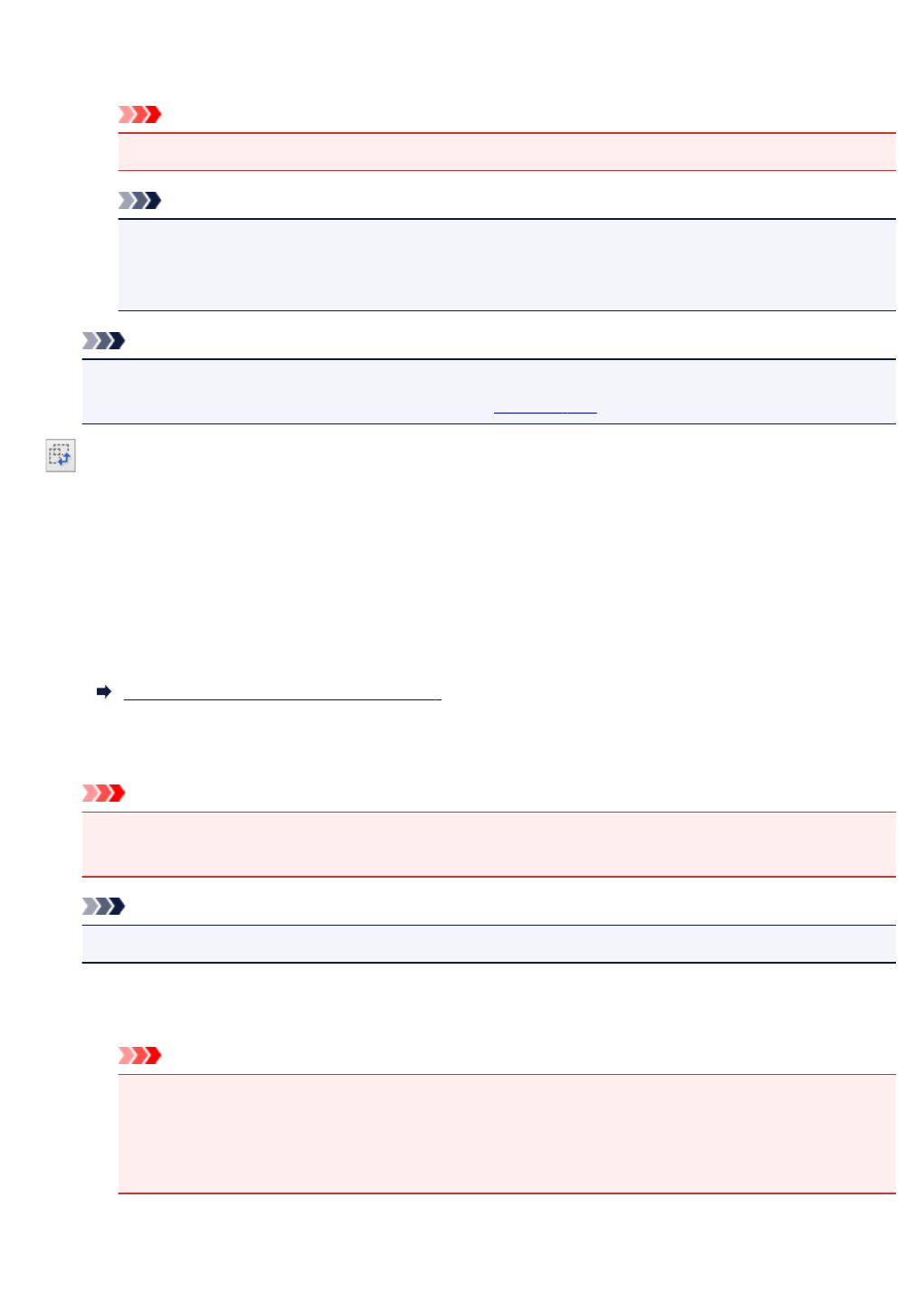
Deleting:
Select the output size you want to delete in Output Size List, then click Delete. Click Save to
save the items listed in Output Size List.
Important
• You cannot delete predefined output sizes such as A4 and 1024 x 768 pixels.
Note
• Save up to 10 items.
• An error message appears when you enter a value outside the setting range. Enter a value
within the setting range.
Note
• For details on whether or how the cropping frame is initially displayed on a preview image, refer
to Cropping Frame on Previewed Images in "Preview Tab" (Preferences dialog box).
Invert aspect ratio
Available when Output Size is set to anything but Flexible.
Click this button to rotate the cropping frame. Click again to return it to the original orientation.
Adjust cropping frames
You can adjust the scan area within the Preview area.
If an area is not specified, the document will be scanned at the document size (Auto Crop). If an area
is specified, only the portion in the cropping frame will be scanned.
Adjusting Cropping Frames (ScanGear)
Image corrections
Allows you to apply corrections to images.
Important
•Apply Auto Document Fix and Correct fading are available when Recommended is selected
on the Color Settings tab of the Preferences dialog box.
Note
• Available functions vary by the document type selected in Select Source.
Apply Auto Document Fix
Sharpens text in a document or magazine for better readability.
Important
• Scanning may take longer than usual when this checkbox is selected.
• The color tone may change from the source image due to corrections. In that case, deselect
the checkbox and scan.
• Correction may not be applied properly if the scan area is too small.
Correct fading
Corrects and scans photos that have faded with time or have a colorcast.
811
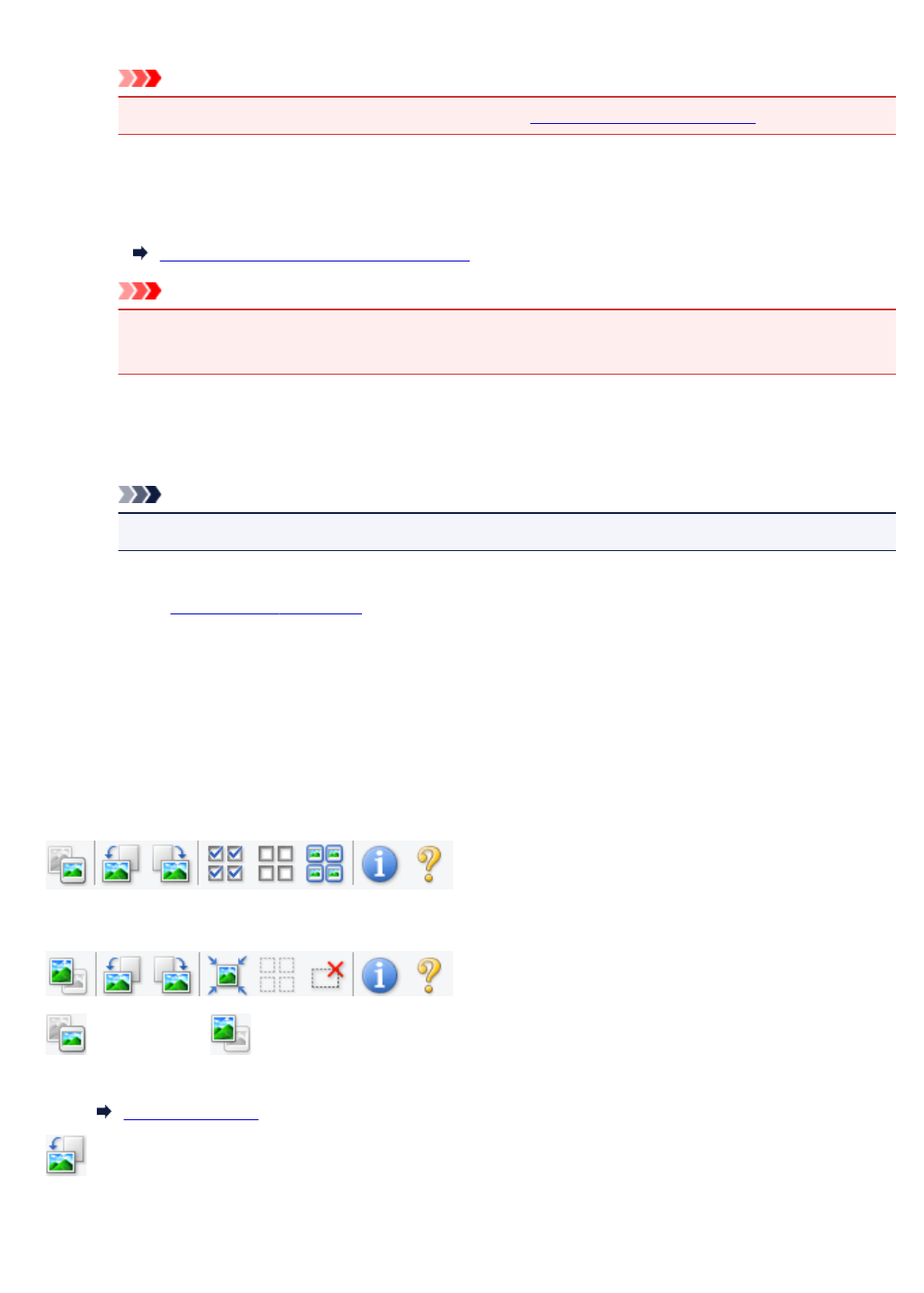
Reduce gutter shadow
Corrects shadows that appear between pages when scanning open booklets.
Important
• For precautions on using this function, refer to "Gutter Shadow Correction."
Color Pattern...
Allows you to adjust the image's overall color. You can correct colors that have faded due to
colorcast, etc. and reproduce natural colors while previewing color changes.
Adjusting Colors Using a Color Pattern
Important
• This setting is not available when you select Color Matching on the Color Settings tab of
the Preferences dialog box.
Perform Scan
Scan
Starts scanning.
Note
• When scanning starts, the progress will be displayed. Click Cancel to cancel the scan.
Preferences...
Opens the Preferences dialog box in which you can make scan/preview settings.
Close
Closes ScanGear (scanner driver).
(2) Toolbar
You can adjust or rotate preview images. The buttons displayed on the Toolbar vary by view.
In thumbnail view:
In whole image view:
(Thumbnail) / (Whole Image)
Switches the view in the Preview area.
(3) Preview Area
(Rotate Left)
Rotates the preview image 90 degrees counter-clockwise.
• The result will be reflected in the scanned image.
• The image returns to its original state when you preview again.
812
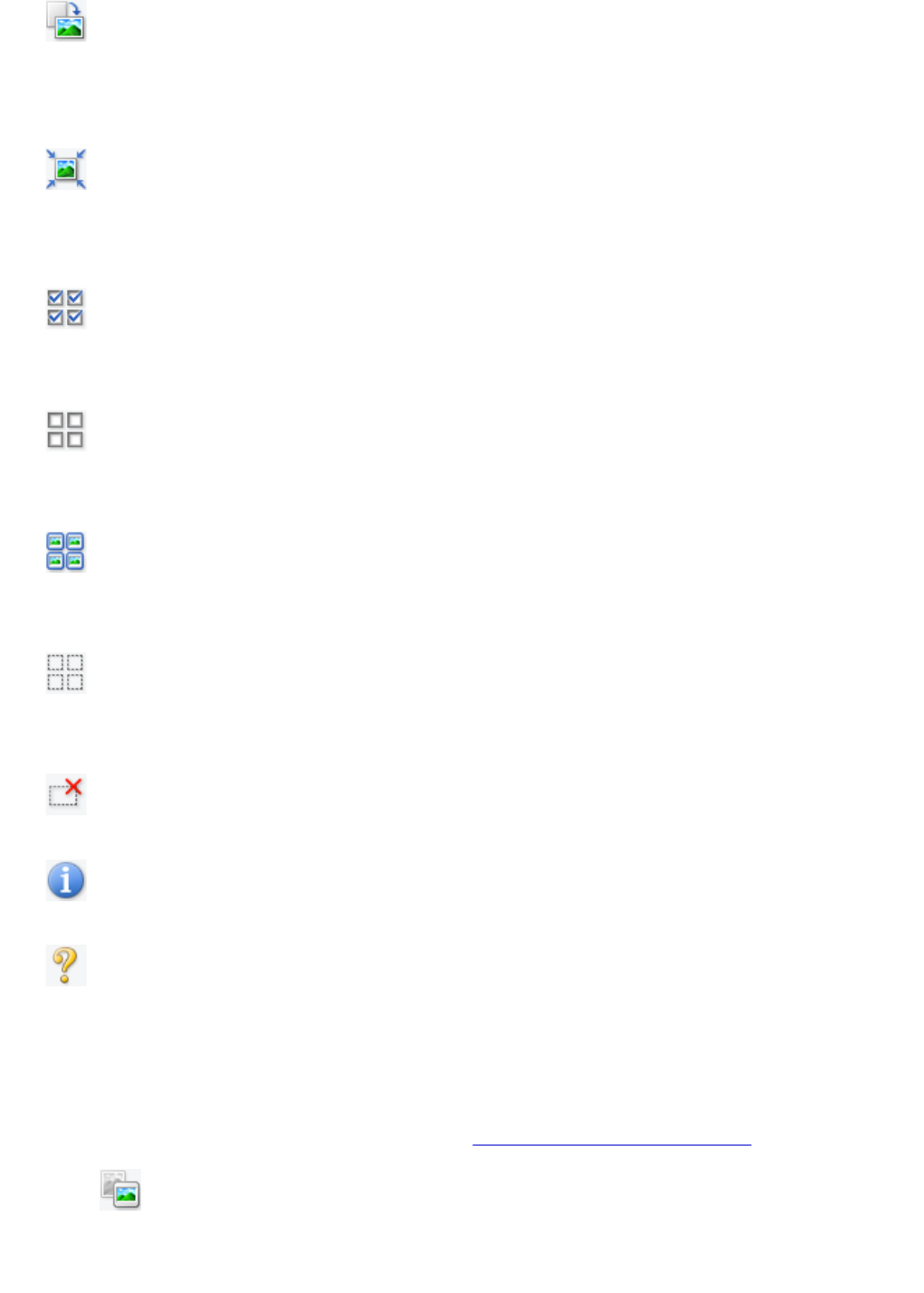
(Rotate Right)
Rotates the preview image 90 degrees clockwise.
• The result will be reflected in the scanned image.
• The image returns to its original state when you preview again.
(Auto Crop)
Displays and adjusts the cropping frame automatically to the size of the document displayed in the
Preview area. The scan area is reduced every time you click this button if there are croppable areas
within the cropping frame.
(Check All Frames)
Available when two or more frames are displayed.
Selects the checkboxes of the image in thumbnail view.
(Uncheck All Frames)
Available when two or more frames are displayed.
Deselects the checkboxes of the image in thumbnail view.
(Select All Frames)
Available when two or more frames are displayed.
Selects the images in thumbnail view and outlines them in blue.
(Select All Cropping Frames)
Available when two or more cropping frames are specified.
Turns the cropping frames into thick broken lines and applies the settings to all of them.
(Remove Cropping Frame)
Removes the selected cropping frame.
(Information)
Displays the version of ScanGear and the current scan settings (document type, etc.).
(Open Guide)
Opens this page.
(3) Preview Area
This is where a trial image appears after you click Preview. You can also check the results of the settings
(image corrections, color adjustments, etc.) made in "(1) Settings and Operation Buttons."
When (Thumbnail) is displayed on the Toolbar:
Cropping frames are specified according to the document size, and thumbnails of scanned images are
displayed. Only the images with the checkbox selected will be scanned.
813
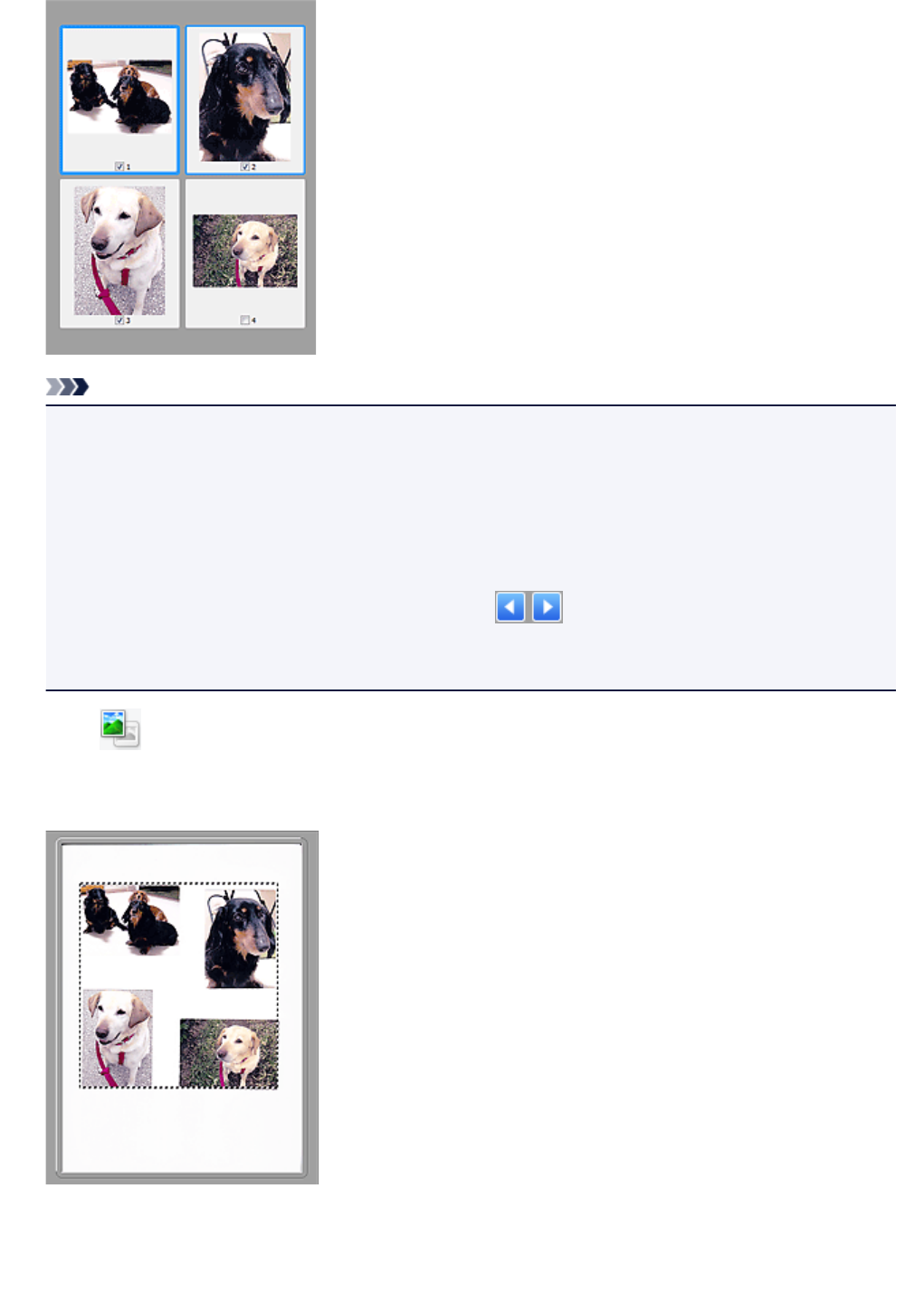
Note
• When multiple images are previewed, different outlines indicate different selection status.
• Focus Frame (thick blue outline): The displayed settings will be applied.
• Selected Frame (thin blue outline): The settings will be applied to the Focus Frame and Selected
Frames simultaneously. You can select multiple images by clicking them while pressing the Ctrl
key.
• Unselected (no outline): The settings will not be applied.
• Double-click a frame to zoom in on the image. Click (Frame Advance) at the bottom of the
screen to display the previous or next frame. Double-click the frame again to return the display to its
non-magnified state.
When (Whole Image) is displayed on the Toolbar:
Items on the Platen are scanned and displayed as a single image. All portions in the cropping frames will
be scanned.
814
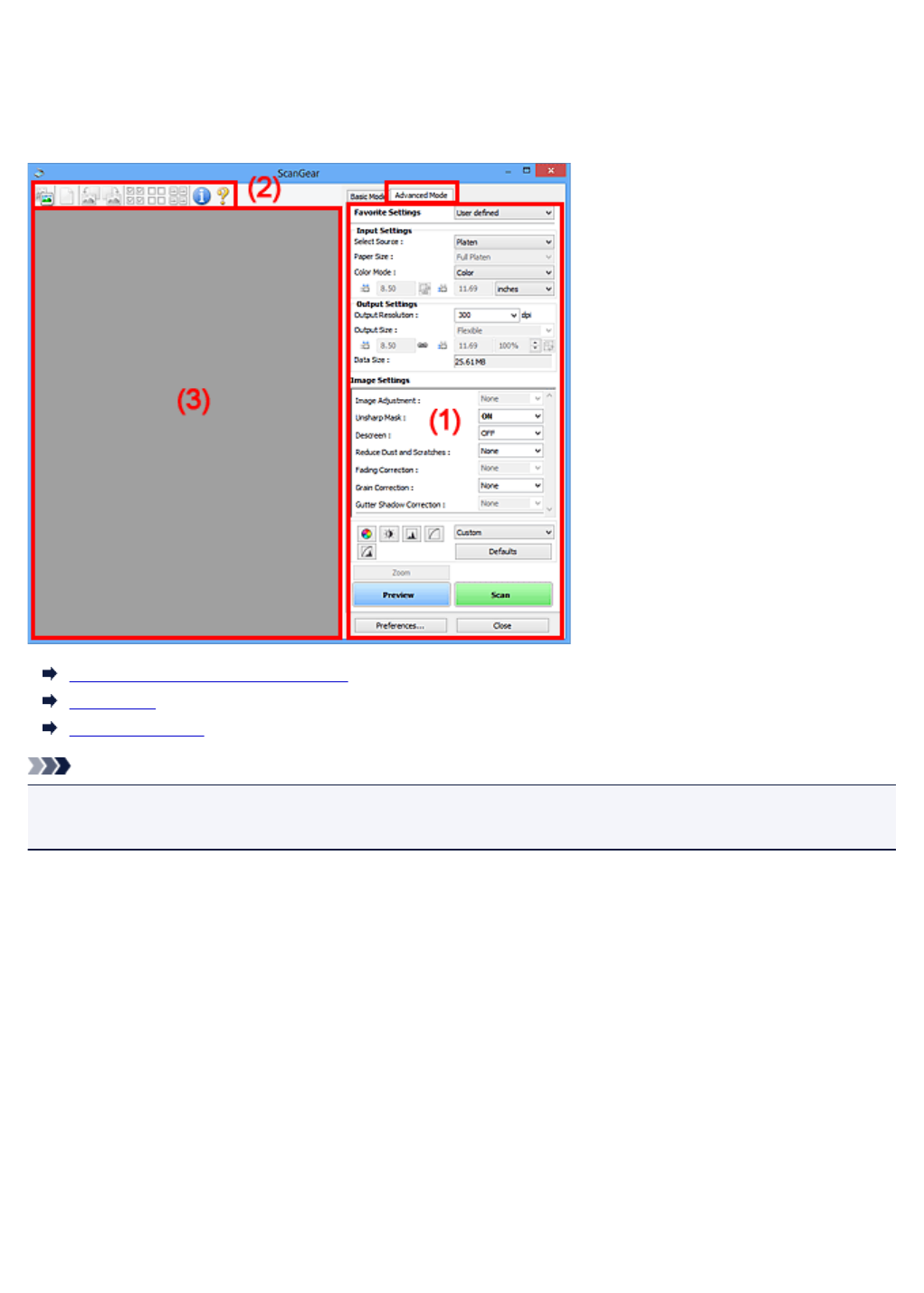
Advanced Mode Tab
This mode allows you to make advanced scan settings such as the color mode, output resolution, image
brightness, and color tone.
This section describes the settings and functions available on the Advanced Mode tab.
(1) Settings and Operation Buttons
(2) Toolbar
(3) Preview Area
Note
• The displayed items vary by document type and view.
• The preview function is not available when scanning from the ADF (Auto Document Feeder).
(1) Settings and Operation Buttons
Favorite Settings
You can name and save a group of settings (Input Settings, Output Settings, Image Settings, and
Color Adjustment Buttons) on the Advanced Mode tab, and load it as required. It is convenient to
save a group of settings if you will be using it repeatedly. You can also use this to reload the default
settings.
Select Add/Delete... from the pull-down menu to open the Add/Delete Favorite Settings dialog box.
816
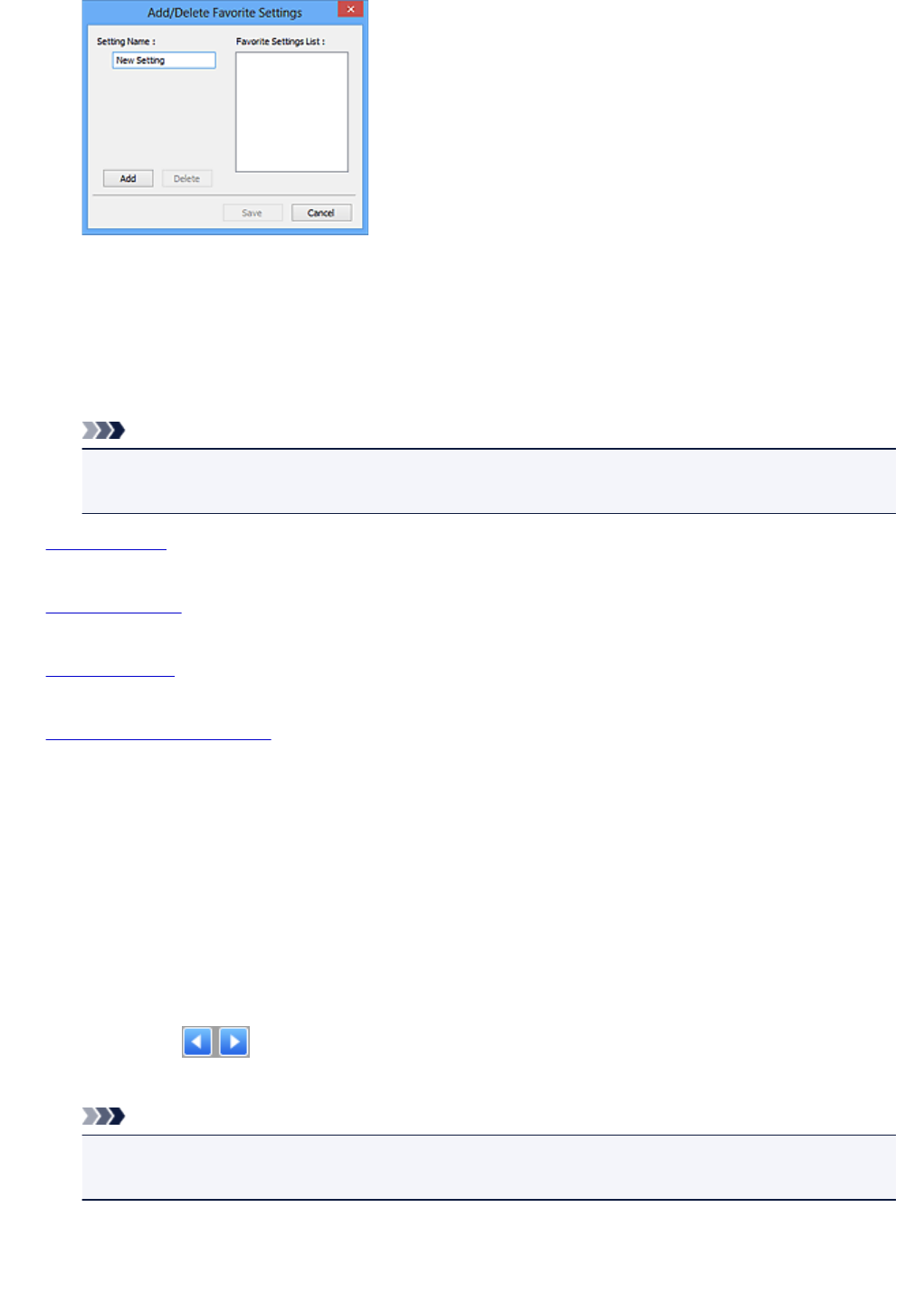
Enter Setting Name and click Add; the name appears in Favorite Settings List.
When you click Save, the item appears in the Favorite Settings list and can be selected, along with
the predefined items.
To delete an item, select it in Favorite Settings List and click Delete. Click Save to save the settings
displayed in Favorite Settings List.
Note
• You can set Add/Delete... in Favorite Settings after preview.
• Save up to 10 items.
Input Settings
Specify the input settings such as the document type and size.
Output Settings
Specify the output settings such as the output resolution and size.
Image Settings
Enable/disable various image correction functions.
Color Adjustment Buttons
Fine corrections to the image brightness and color tones can be made including adjustments to the
image's overall brightness or contrast and adjustments to its highlight and shadow values (histogram)
or balance (tone curve).
Zoom
Zooms in on a frame, or zooms in on the image in the area specified with a cropping frame (scan
area). When zoomed in, Zoom changes to Undo. Click Undo to return the display to its non-
magnified state.
In thumbnail view:
When multiple images are displayed in thumbnail view, clicking this button zooms in on the selected
frame. Click (Frame Advance) at the bottom of the screen to display the previous or next
frame.
Note
• You can also zoom in on an image by double-clicking the frame. Double-click the frame again to
return the display to its non-magnified state.
In whole image view:
Rescans the image in the area specified with a cropping frame at higher magnification.
817
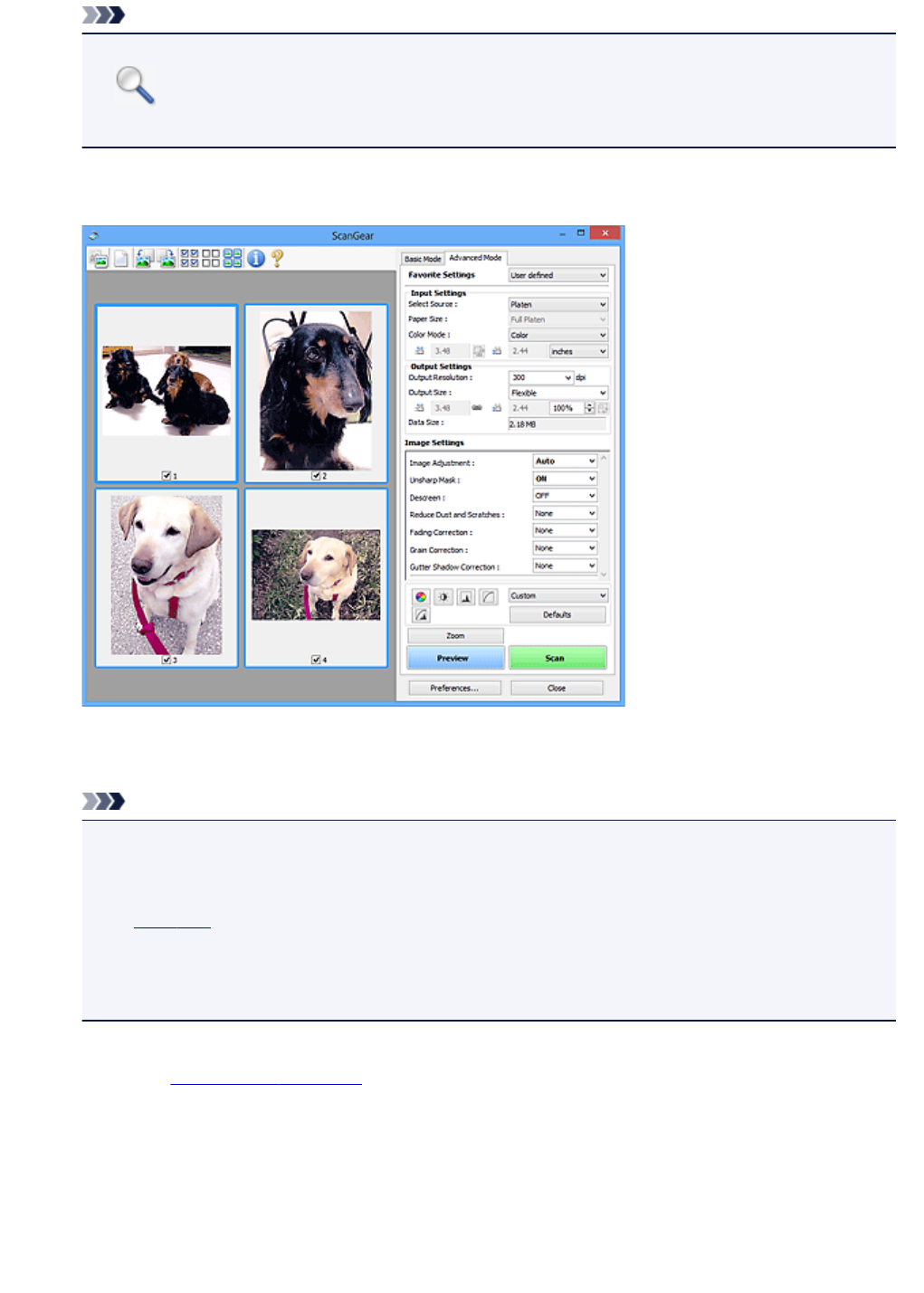
Note
•Zoom rescans the document and displays high-resolution image in Preview.
• (Enlarge/Reduce) on the Toolbar zooms in on the preview image quickly. However, the
resolution of the displayed image will be low.
Preview
Performs a trial scan.
Scan
Starts scanning.
Note
• When scanning starts, the progress will be displayed. Click Cancel to cancel the scan.
• When scanning is completed, a dialog box prompting you to select the next action may appear.
Follow the prompt to complete. For details, refer to Status of ScanGear dialog after scanning
in Scan Tab (Preferences dialog box).
• It will take time to process the images if the total size of the scanned images exceeds a certain
size. In that case, a warning message appears; it is recommended that you reduce the total size.
To continue, scan in whole image view.
Preferences...
Opens the Preferences dialog box in which you can make scan/preview settings.
Close
Closes ScanGear (scanner driver).
(2) Toolbar
You can adjust or rotate preview images. The buttons displayed on the Toolbar vary by view.
818
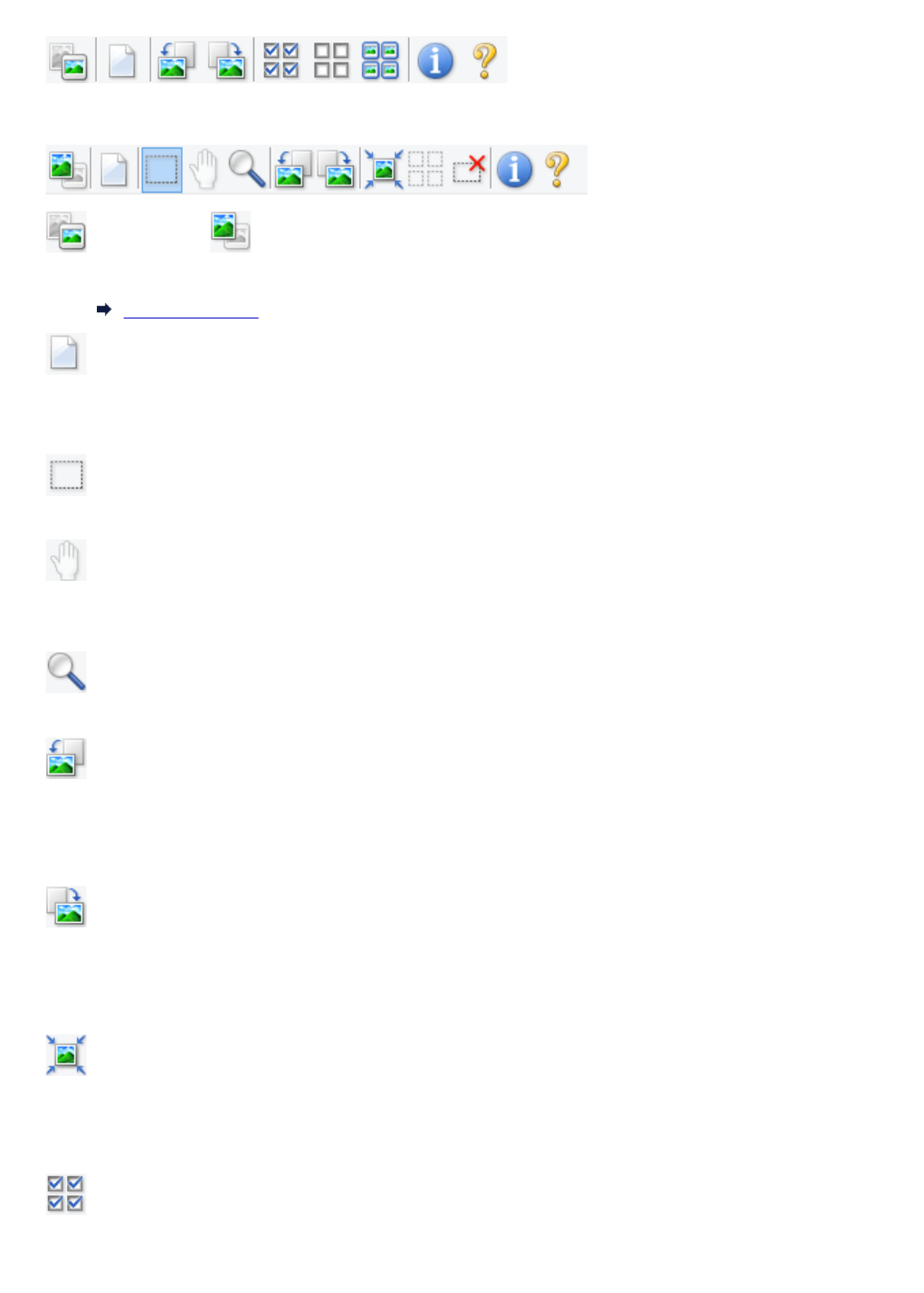
In thumbnail view:
In whole image view:
(Thumbnail) / (Whole Image)
Switches the view in the Preview area.
(3) Preview Area
(Clear)
Deletes the preview image from the Preview area.
It also resets the Toolbar and color adjustment settings.
(Crop)
Allows you to specify the scan area by dragging the mouse.
(Move Image)
Allows you to drag the image until the part you want to see is displayed when an image enlarged in
the Preview area does not fit in the screen. You can also move the image using the scroll bars.
(Enlarge/Reduce)
Allows you to zoom in on the Preview area by clicking the image. Right-click the image to zoom out.
(Rotate Left)
Rotates the preview image 90 degrees counter-clockwise.
•The result will be reflected in the scanned image.
•The image returns to its original state when you preview again.
(Rotate Right)
Rotates the preview image 90 degrees clockwise.
• The result will be reflected in the scanned image.
• The image returns to its original state when you preview again.
(Auto Crop)
Displays and adjusts the cropping frame automatically to the size of the document displayed in the
Preview area. The scan area is reduced every time you click this button if there are croppable areas
within the cropping frame.
(Check All Frames)
Available when two or more frames are displayed.
Selects the checkboxes of the image in thumbnail view.
819
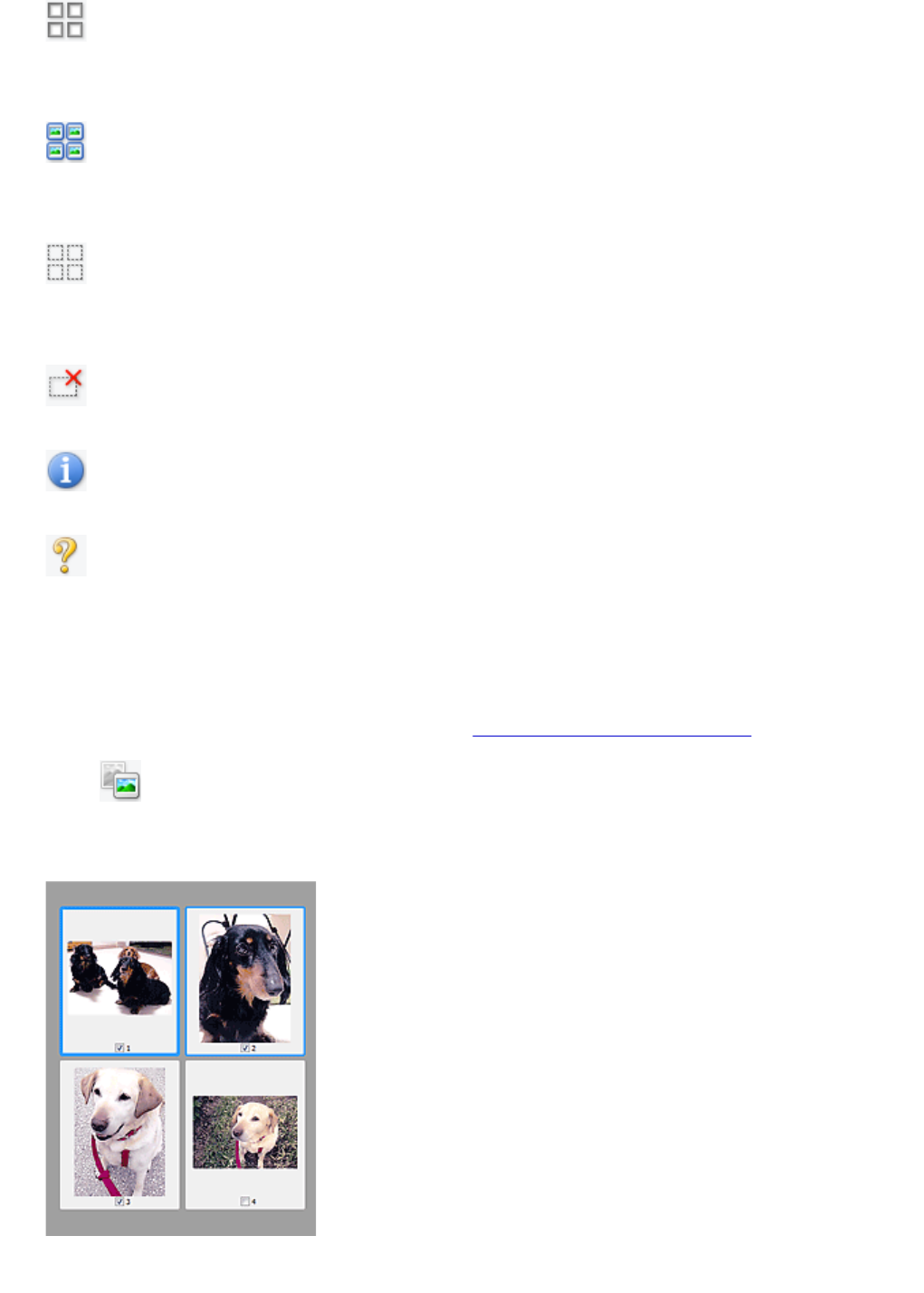
(Uncheck All Frames)
Available when two or more frames are displayed.
Deselects the checkboxes of the image in thumbnail view.
(Select All Frames)
Available when two or more frames are displayed.
Selects the images in thumbnail view and outlines them in blue.
(Select All Cropping Frames)
Available when two or more cropping frames are specified.
Turns the cropping frames into thick broken lines and applies the settings to all of them.
(Remove Cropping Frame)
Removes the selected cropping frame.
(Information)
Displays the version of ScanGear and the current scan settings (document type, etc.).
(Open Guide)
Opens this page.
(3) Preview Area
This is where a trial image appears after you click Preview. You can also check the results of the settings
(image corrections, color adjustments, etc.) made in "(1) Settings and Operation Buttons."
When (Thumbnail) is displayed on the Toolbar:
Cropping frames are specified according to the document size, and thumbnails of scanned images are
displayed. Only the images with the checkbox selected will be scanned.
820
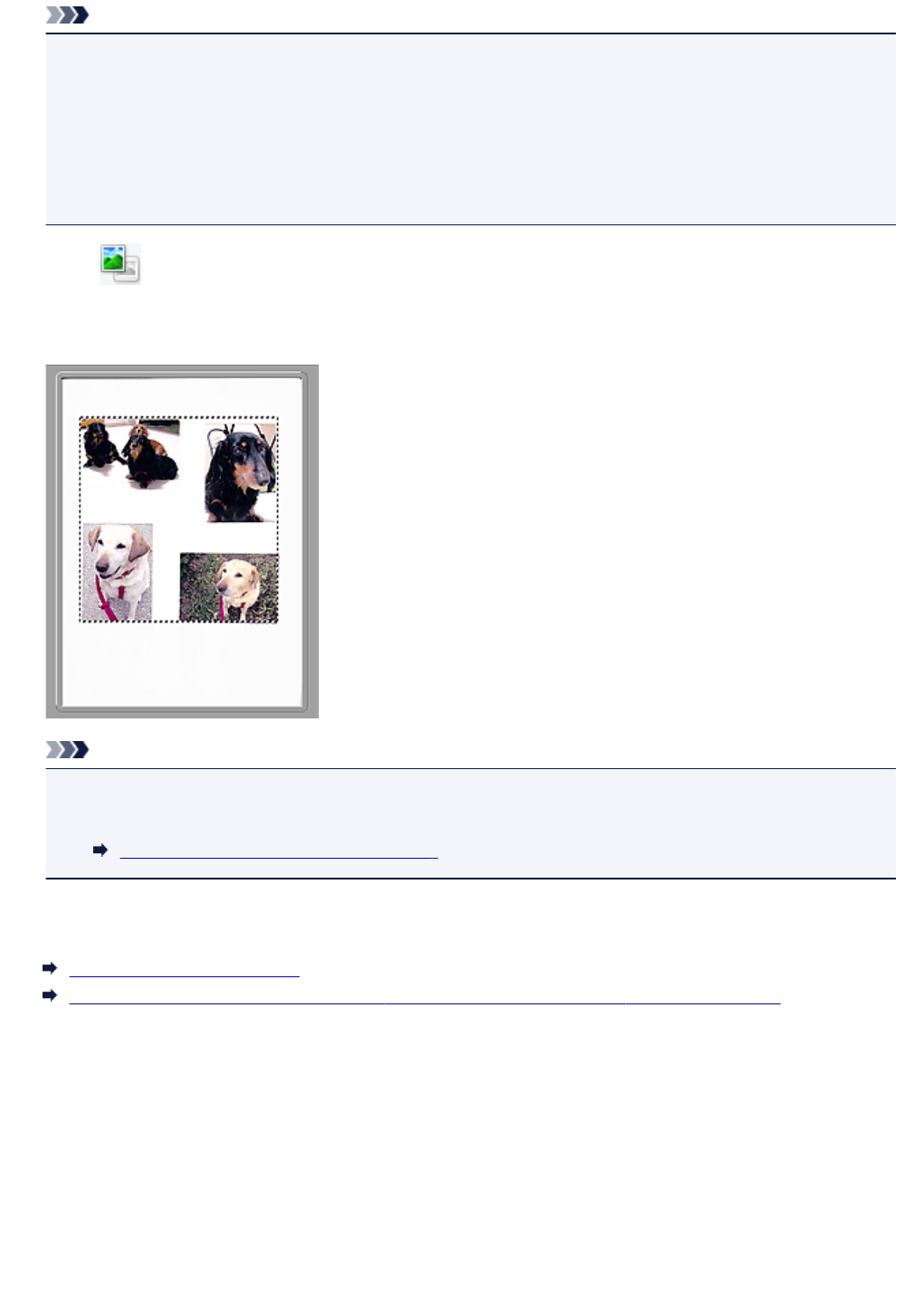
Note
• When multiple images are previewed, different outlines indicate different selection status.
• Focus Frame (thick blue outline): The displayed settings will be applied.
• Selected Frame (thin blue outline): The settings will be applied to the Focus Frame and Selected
Frames simultaneously. You can select multiple images by clicking them while pressing the Ctrl
key.
• Unselected (no outline): The settings will not be applied.
When (Whole Image) is displayed on the Toolbar:
Items on the Platen are scanned and displayed as a single image. All portions in the cropping frames will
be scanned.
Note
• You can specify the cropping frame on the displayed image. In thumbnail view, you can only create
one cropping frame per image. In whole image view, you can create multiple cropping frames.
Adjusting Cropping Frames (ScanGear)
Related Topic
Scanning in Advanced Mode
Scanning Multiple Documents from the ADF (Auto Document Feeder) in Advanced Mode
821
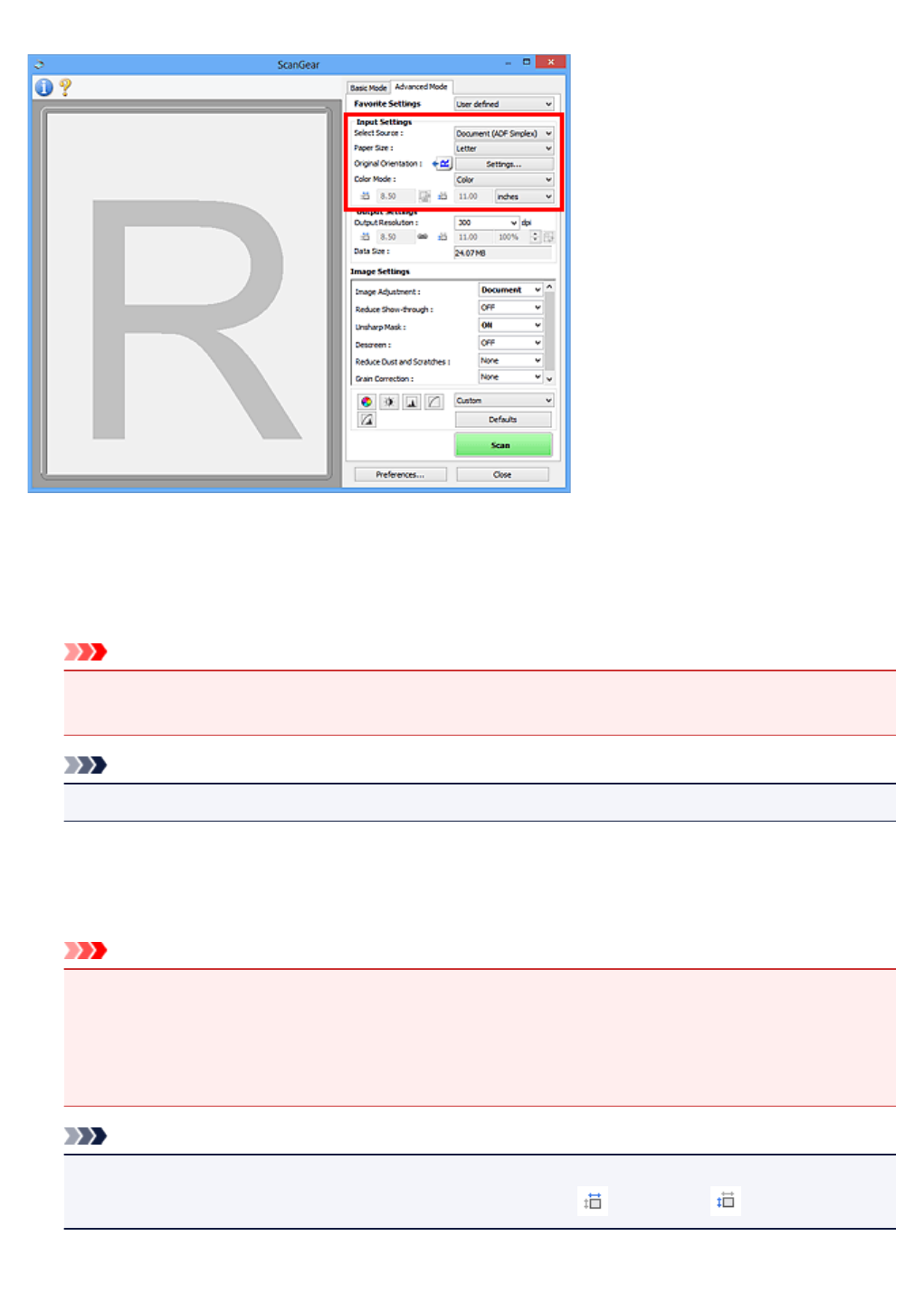
Input Settings
Input Settings allows you to set the following items:
Select Source
The type of document to be scanned is displayed. To scan from the Platen, select Platen; to scan from
the ADF (Auto Document Feeder), select Document (ADF Simplex) or Document (ADF Duplex).
Important
• Some applications do not support continuous scanning from the ADF. For details, refer to the
application's manual.
Note
• You can select Document (ADF Duplex) when using a model supporting ADF duplex scanning.
Paper Size
Select the size of the document to be scanned. This setting is available in whole image view only.
When you select a size, the Preview area size changes accordingly.
Important
• Some applications have a limit to the amount of scan data they can receive. Available scan range
is as follows.
• 21000 pixels x 30000 pixels or less
• If you change Paper Size after previewing, the preview image will be deleted.
Note
• If you are not sure which size you should select for Paper Size, set Paper Size to Full Platen, then
measure the size of the document and enter the values into (Width) and (Height).
822
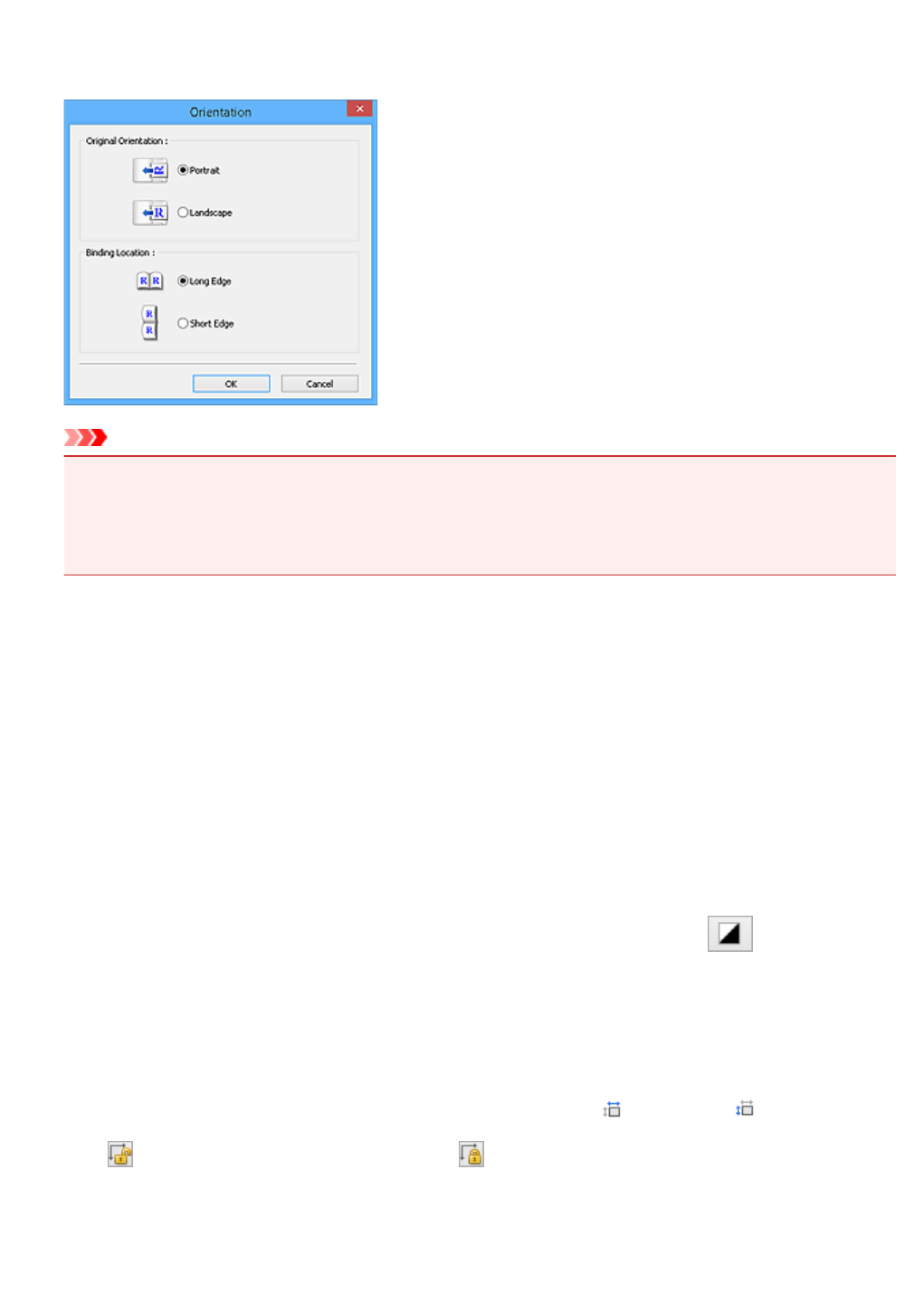
Original Orientation
Set the orientation and stapling side of the documents to scan from the ADF.
Click Settings... to open the Orientation dialog box.
Important
• The Orientation dialog box can only be opened when Select Source is Document (ADF
Simplex) or Document (ADF Duplex).
•Binding Location is displayed when using a model supporting ADF duplex scanning.
•Binding Location cannot be specified when Select Source is Document (ADF Simplex).
Color Mode
Select how to scan the document.
Color
Select this mode to scan color documents or to create color images. This mode renders the image
in 256 levels (8 bit) of R(ed), G(reen), and B(lue).
Grayscale
Select this mode to scan black and white photos or to create black and white images. This mode
renders the image in 256 levels (8 bit) of black and white.
Black and White
Select this mode to scan photos and documents in black and white. This mode renders the image
in black and white. The contrast in the image is divided at certain levels (threshold level) into black
and white and is rendered in two colors. The threshold level can be set with (Threshold).
Input Size
In thumbnail view, the cropped document size is displayed after preview.
In whole image view, the Paper Size is displayed before preview, and the cropping frame (scan area)
size is displayed after preview.
You can adjust the cropping frame size by entering the values into (Width) and (Height).
Click (Change Aspect Ratio) and change it to (Keep Aspect Ratio) to maintain the aspect ratio
when you specify the cropping frame size.
823
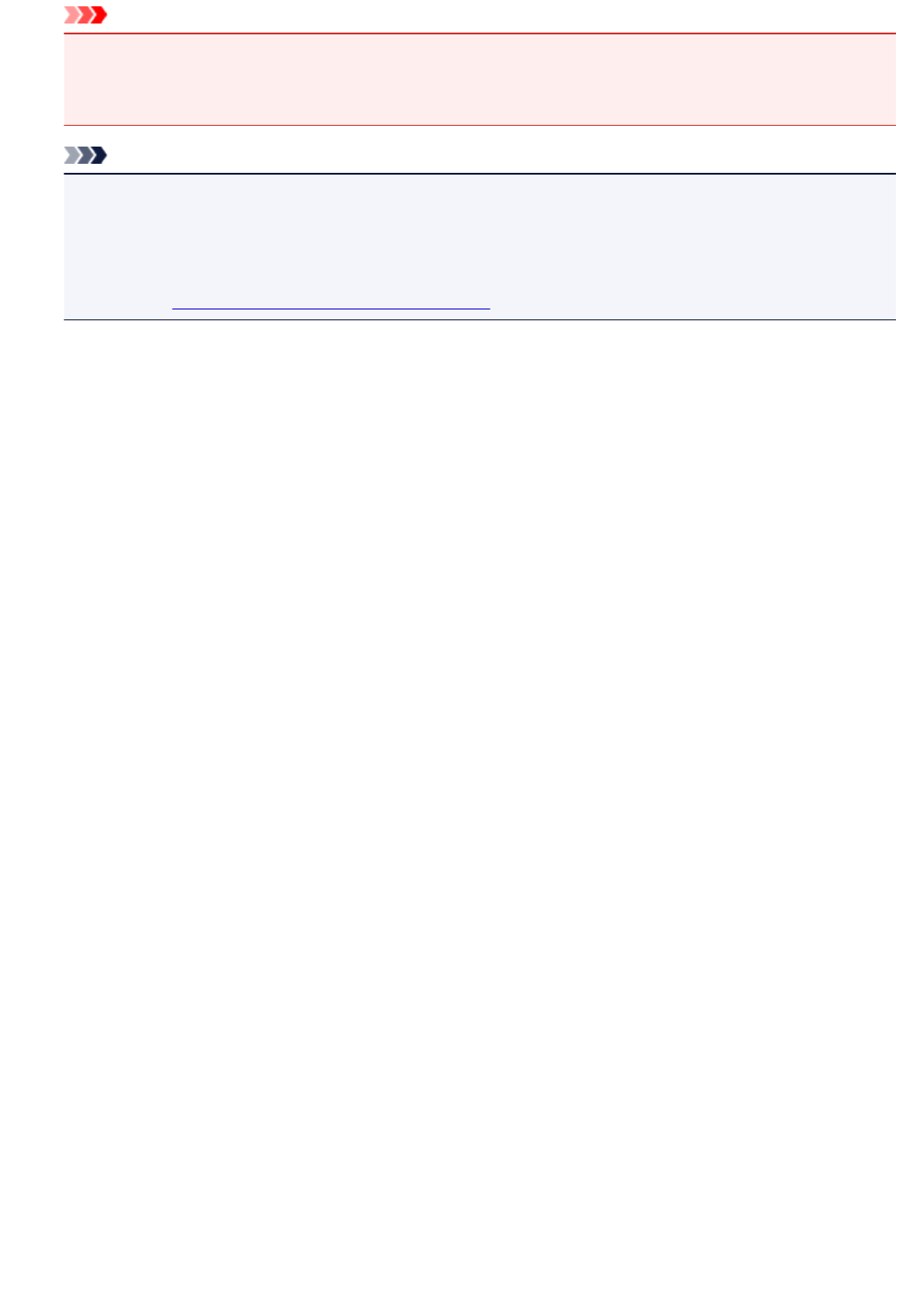
Important
• Input size settings are available only when Output Size in Output Settings is Flexible. If you
select a size other than Flexible, a cropping frame calculated from Output Size and Output
Resolution is displayed, and its aspect ratio is fixed.
Note
• The values you can enter will be within the range of the selected document size. The minimum size
is 96 pixels x 96 pixels when Output Resolution is 600 dpi, scaled at 100 %.
• When Auto Crop is performed in whole image view, the aspect ratio will not be maintained since
the size will be prioritized.
• Refer to "Adjusting Cropping Frames (ScanGear)" for details on cropping frames.
824
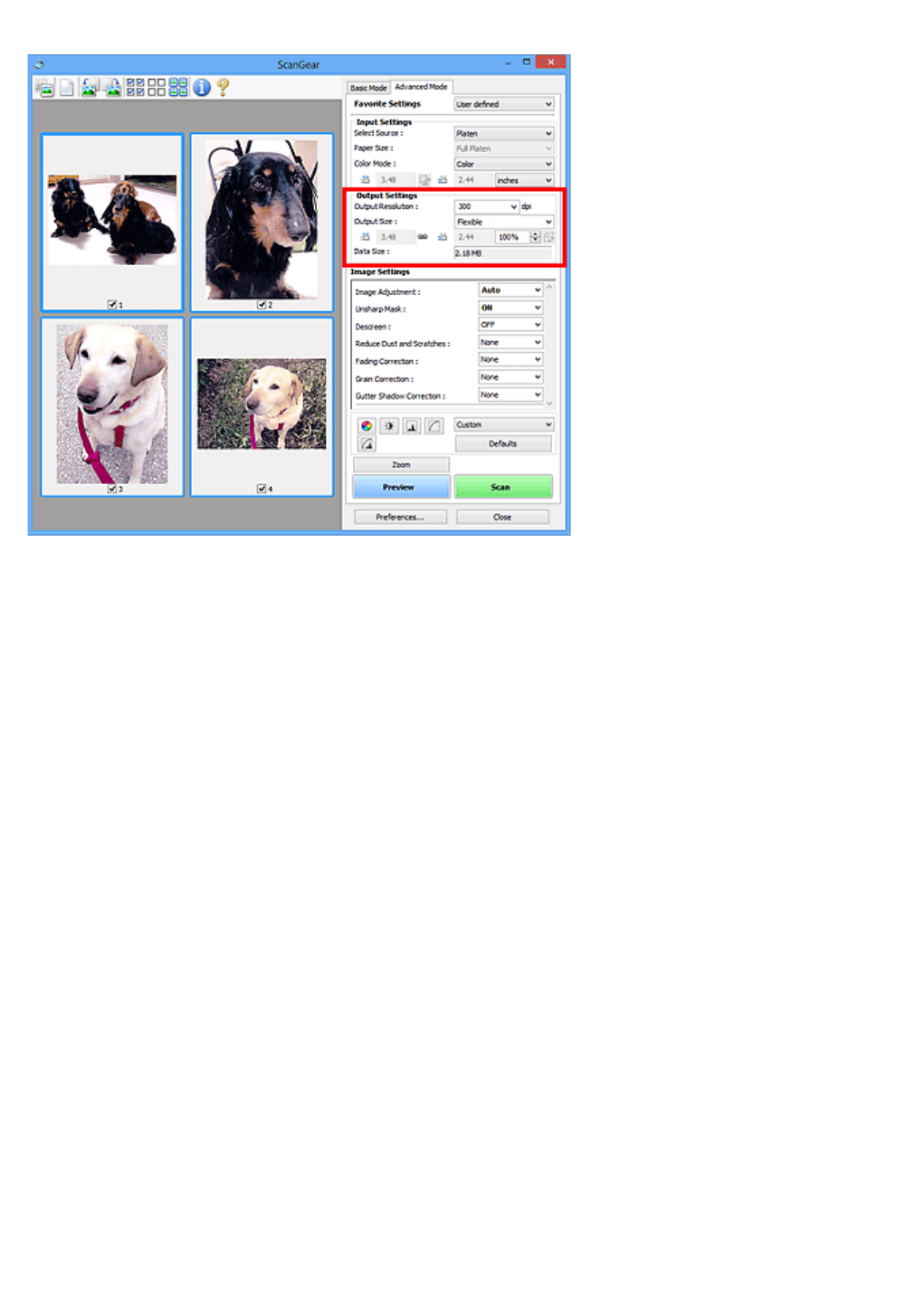
Output Settings
Output Settings allows you to set the following items:
Output Resolution
Select the resolution to scan at.
The higher the resolution (value), the more detail in your image.
Select a resolution from the options displayed by clicking the button, or enter a value in 1 dpi
increments.
Refer to "Resolution" for your model from Home of the Online Manual for details.
When Select Source is Platen:
You can enter a value within the range of 25 dpi to 19200 dpi.
When Select Source is Document (ADF Simplex) or Document (ADF Duplex):
You can enter a value within the range of 25 dpi to 600 dpi.
Output Size
Select an output size.
Select Flexible to set custom sizes or select a size for printing or displaying. Select Add/Delete... to set
custom size and save it as a new output size option.
Flexible
You can specify the output resolution and scale, and adjust the cropping frames (scan areas).
In thumbnail view:
Drag the mouse over a thumbnail to display a cropping frame. When a cropping frame is displayed,
the portion within the cropping frame will be scanned. When no cropping frame is displayed, each
frame is scanned individually.
825
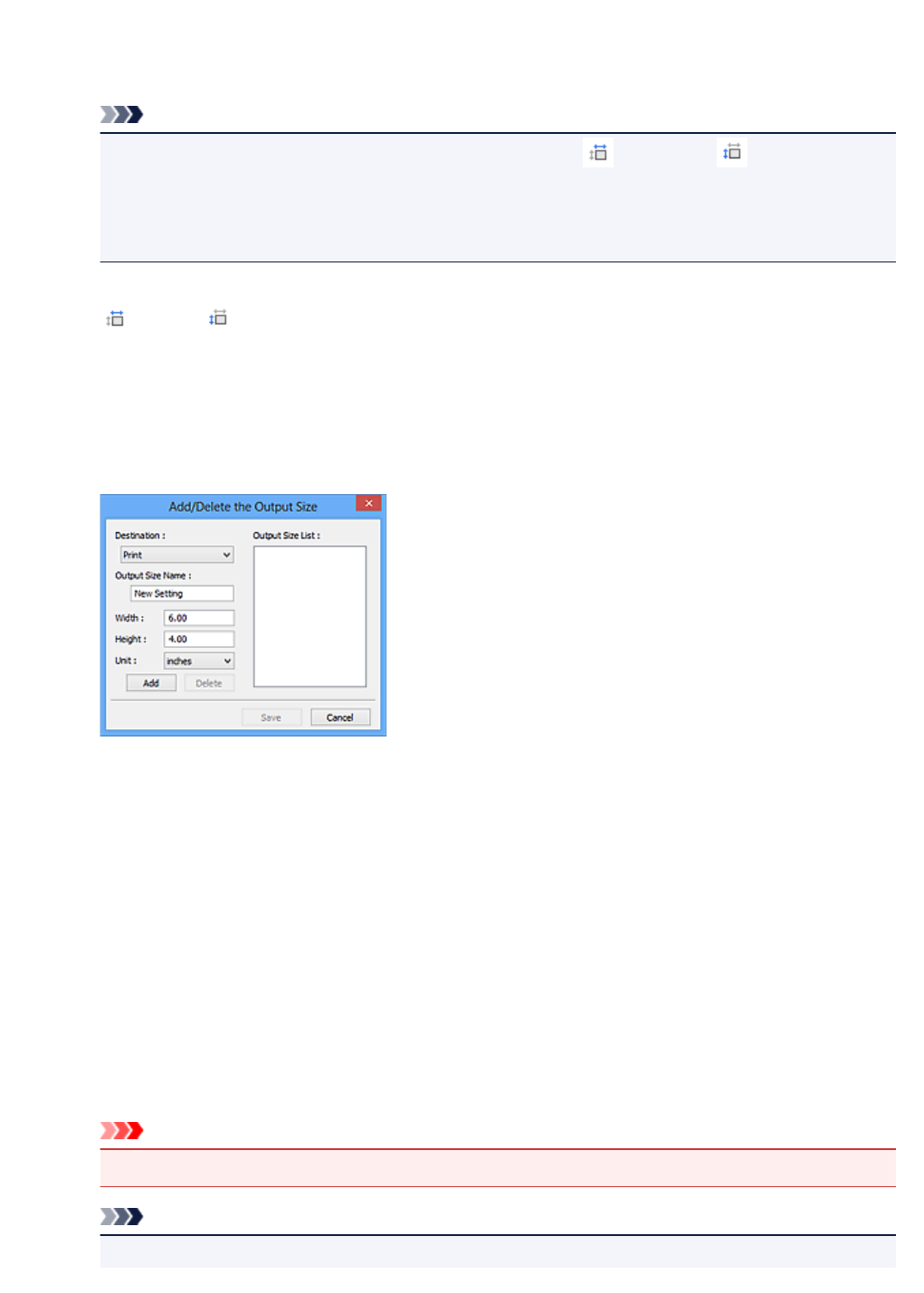
In whole image view:
When no cropping frame is displayed, the entire Preview area will be scanned. When a cropping
frame is displayed, the portion within the cropping frame will be scanned.
Note
• To enlarge/reduce the scanned image, enter values into (Width) and (Height) in
Output Settings or specify a value (by 1 %) for %. Although the maximum value available for
% depends on the Output Resolution, it can be specified for up to 19200 dpi (the maximum
available output resolution).
Paper Size (L, A4, etc.) & Monitor Size (1024 x 768 pixels, etc.)
(Width), (Height), and scale cannot be specified. The preview image will be cropped
according to the selected output size and resolution. The portion within the cropping frame will be
scanned at the size of the selected paper/monitor size. You can drag the cropping frame to enlarge,
reduce, or move it while maintaining the aspect ratio.
Add/Delete...
Opens the Add/Delete the Output Size dialog box, in which you can specify custom output sizes.
In the Add/Delete the Output Size dialog box, you can specify multiple output sizes and save
them at one time. Saved items will be registered to the Output Size list and can be selected, along
with the predefined items.
Adding:
Select Print or Image display for Destination, then enter Output Size Name, Width, and Height,
then click Add. For Unit, you can select inches or mm when Destination is Print but you can only
select pixels when Destination is Image display. The name of the added size appears in Output
Size List. Click Save to save the items listed in Output Size List.
Deleting:
Select the output size you want to delete in Output Size List, then click Delete. Click Save to save
the items listed in Output Size List.
Important
• You cannot delete predefined output sizes such as A4 and 1024 x 768 pixels.
Note
• Save up to 10 items for each destination.
826
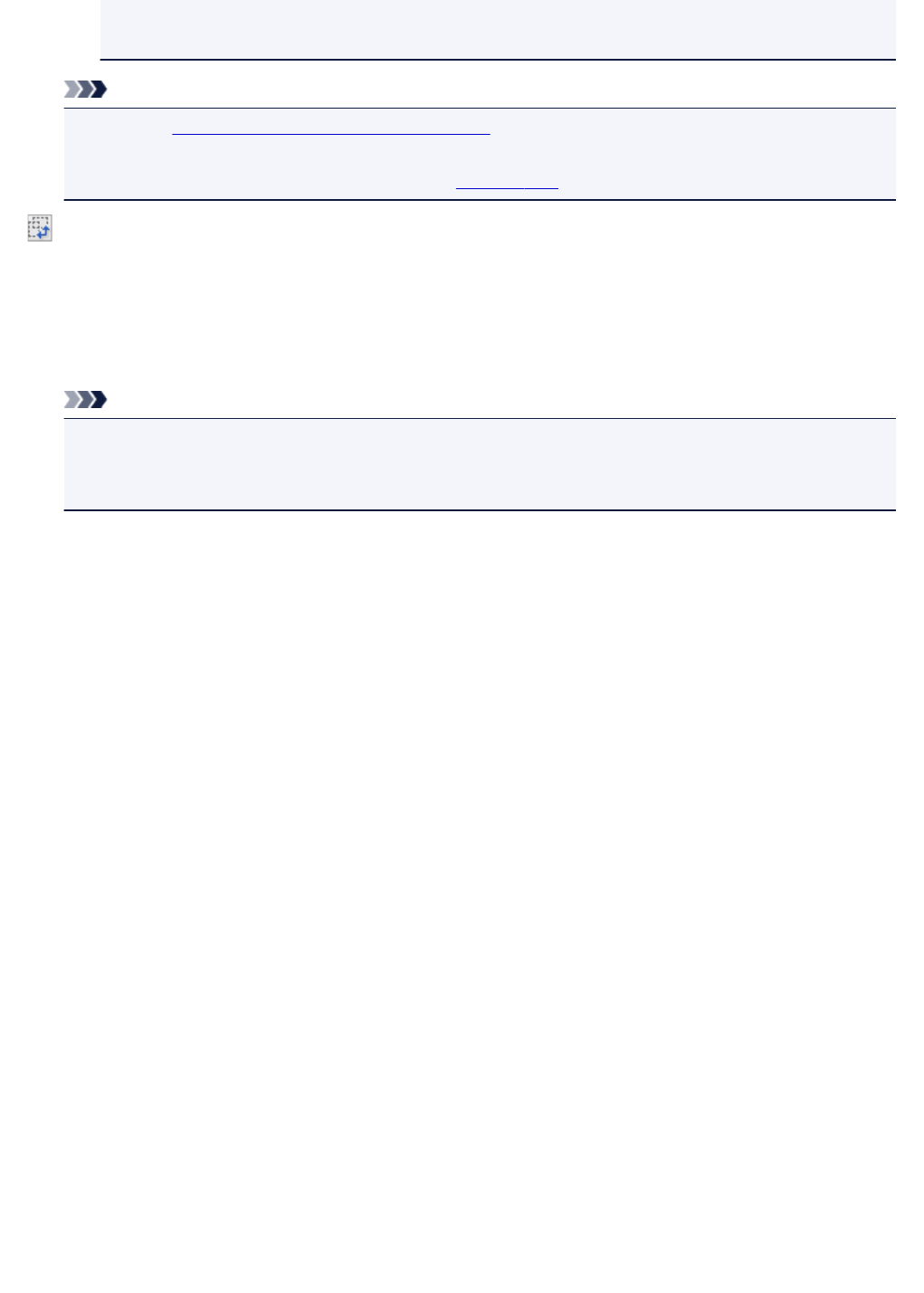
• An error message appears when you enter a value outside the setting range. Enter a value
within the range displayed in the message.
Note
• Refer to "Adjusting Cropping Frames (ScanGear)" for details on cropping frames.
• For details on whether or how the cropping frame is initially displayed on a preview image, refer to
Cropping Frame on Previewed Images in "Preview Tab" (Preferences dialog box).
(Switch Aspect Ratio)
Available when Output Size is set to anything but Flexible.
Click this button to rotate the cropping frame. Click again to return it to the original orientation.
Data Size
The data size when scanned with the current settings is displayed.
Note
• When the data size exceeds a certain size, the value appears in red. In that case, a warning
message appears when you click Scan. It is recommended that you adjust the settings to reduce
Data Size. To continue, scan in whole image view.
827
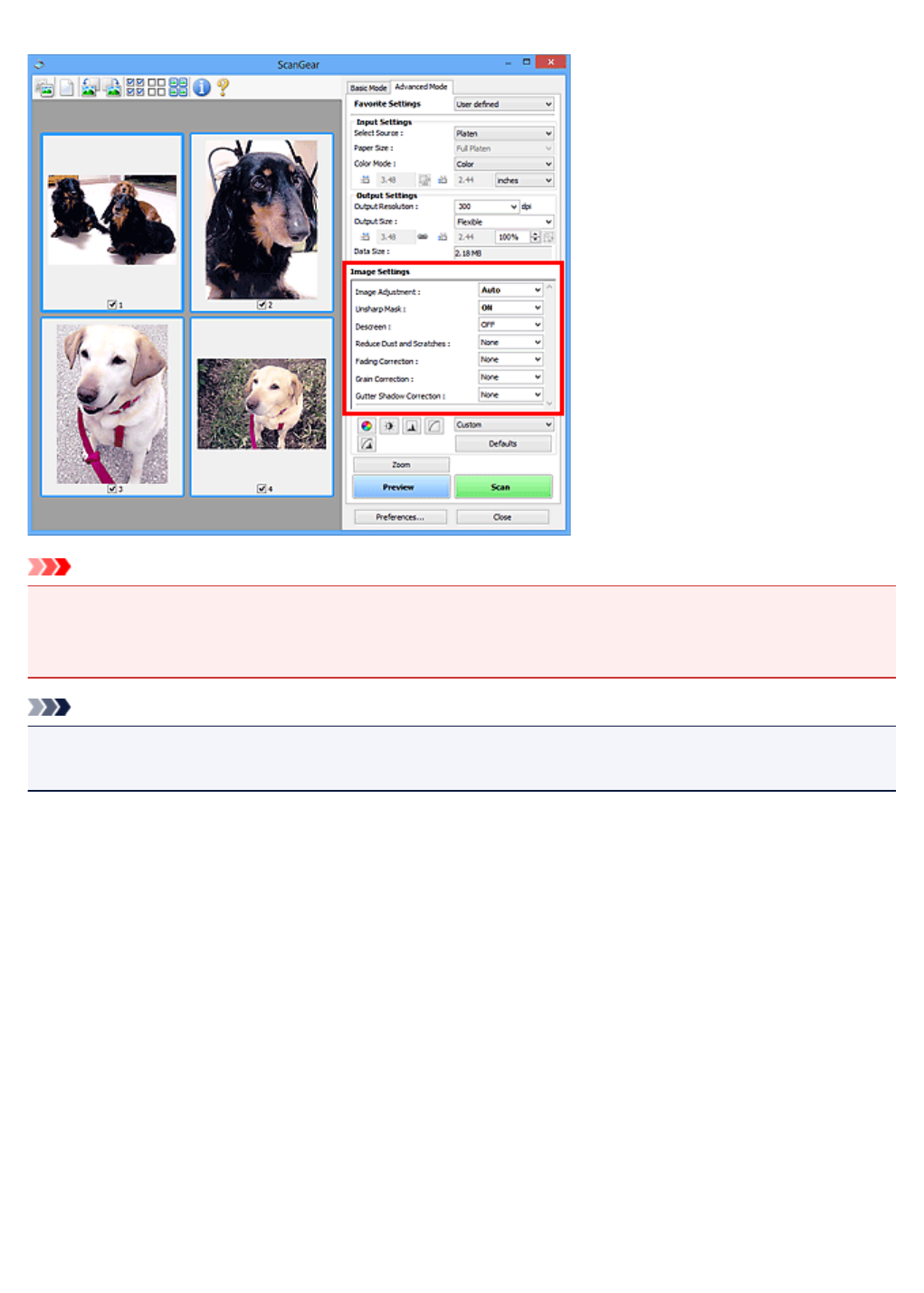
Image Settings
Important
• Do not apply these functions to images without moire, dust/scratches, or faded colors. The color tone
may be adversely affected.
• Image correction results may not be reflected in the preview image.
Note
• Selectable settings depend on Color Mode settings.
• Scanning may take longer than usual when you use Image Settings.
Image Settings allows you to set the following items:
Image Adjustment
When Image Adjustment is set, the brightness of the specified portion of the image is optimized. Images
can be adjusted according to the automatically detected document type or the specified document type.
The result of the adjustment will be reflected in the entire image.
None
Image Adjustment will not be applied.
Auto
Applies Image Adjustment by automatically detecting the document type. It is recommended that
you normally select this setting.
Photo
Applies Image Adjustment suitable for photos.
Magazine
Applies Image Adjustment suitable for magazines.
828
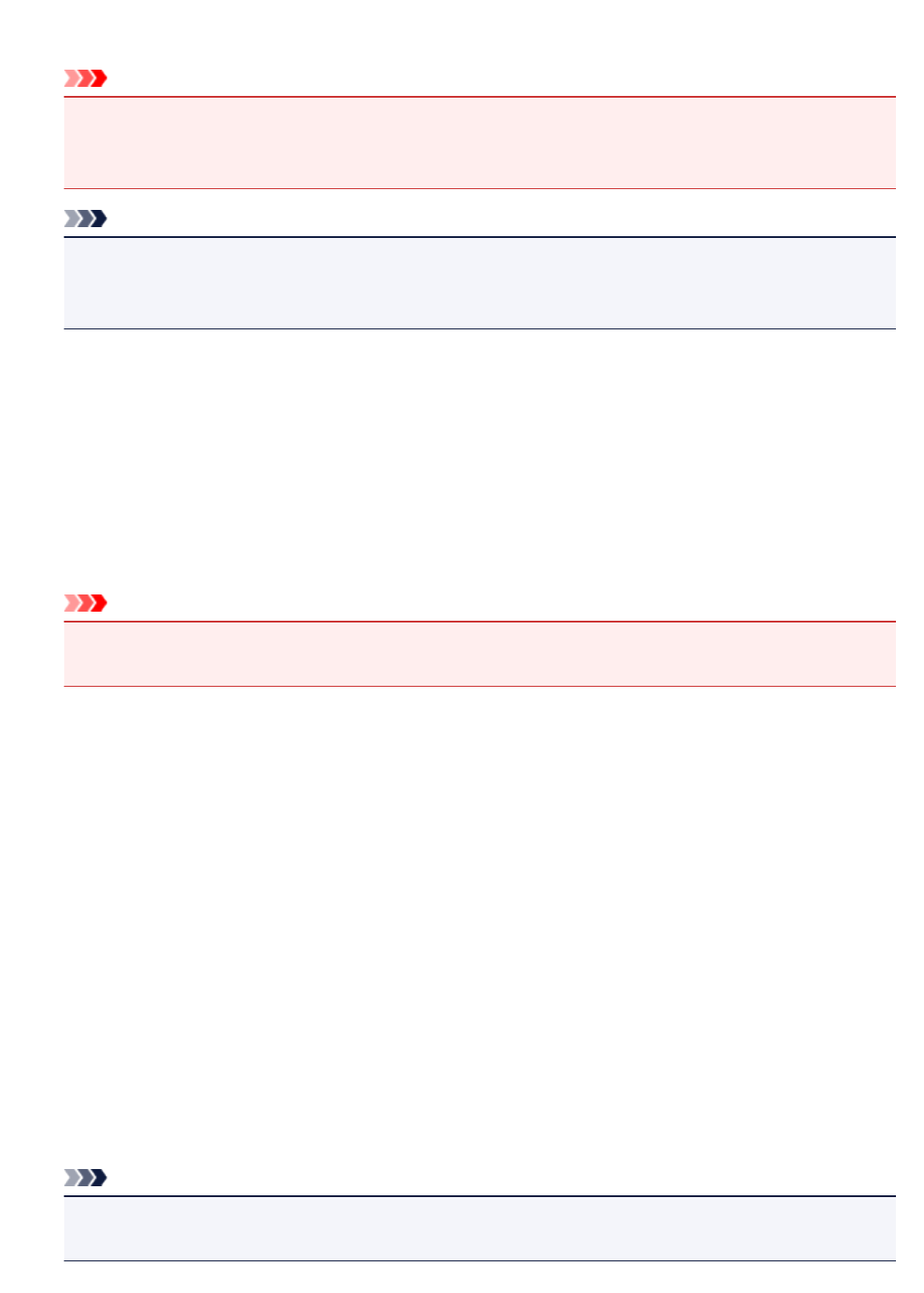
Document
Applies Image Adjustment suitable for text documents.
Important
• You can set Image Adjustment after preview.
• You can set this setting when Recommended is selected on the Color Settings tab of the
Preferences dialog box.
Note
• If the image is not adjusted properly with Auto, specify the document type.
• The color tone may change from the source image due to the Image Adjustment. In that case, set
Image Adjustment to None.
Reduce Show-through
Use this function to reduce show-through in duplex documents or lighten the base color in recycled
paper and other colored paper when scanning documents.
OFF
Show-through will not be reduced.
ON
Select this to reduce show-through in duplex documents or lighten the base color. It is
recommended that you normally select this setting.
Important
•Reduce Show-through can be set when Recommended is selected on the Color Settings tab of
the Preferences dialog box and Document or Magazine is selected for Image Adjustment.
Unsharp Mask
Emphasizes the outline of the subjects to sharpen the image when scanning photos.
OFF
Unsharp Mask will not be applied.
ON
Emphasizes the outline of the subjects to sharpen the image. It is recommended that you normally
select this setting.
Descreen
Printed photos and pictures are displayed as a collection of fine dots. "Moire" is a phenomenon where
uneven gradation or a stripe pattern appears when such photos or pictures printed with fine dots are
scanned. Descreen is the function for reducing this moire effect.
OFF
Moire will not be reduced.
ON
Reduces moire. It is recommended that you normally select this setting.
Note
• Even if Descreen is set to ON, some moire effects may remain if Unsharp Mask is set to ON. In
that case, set Unsharp Mask to OFF.
829
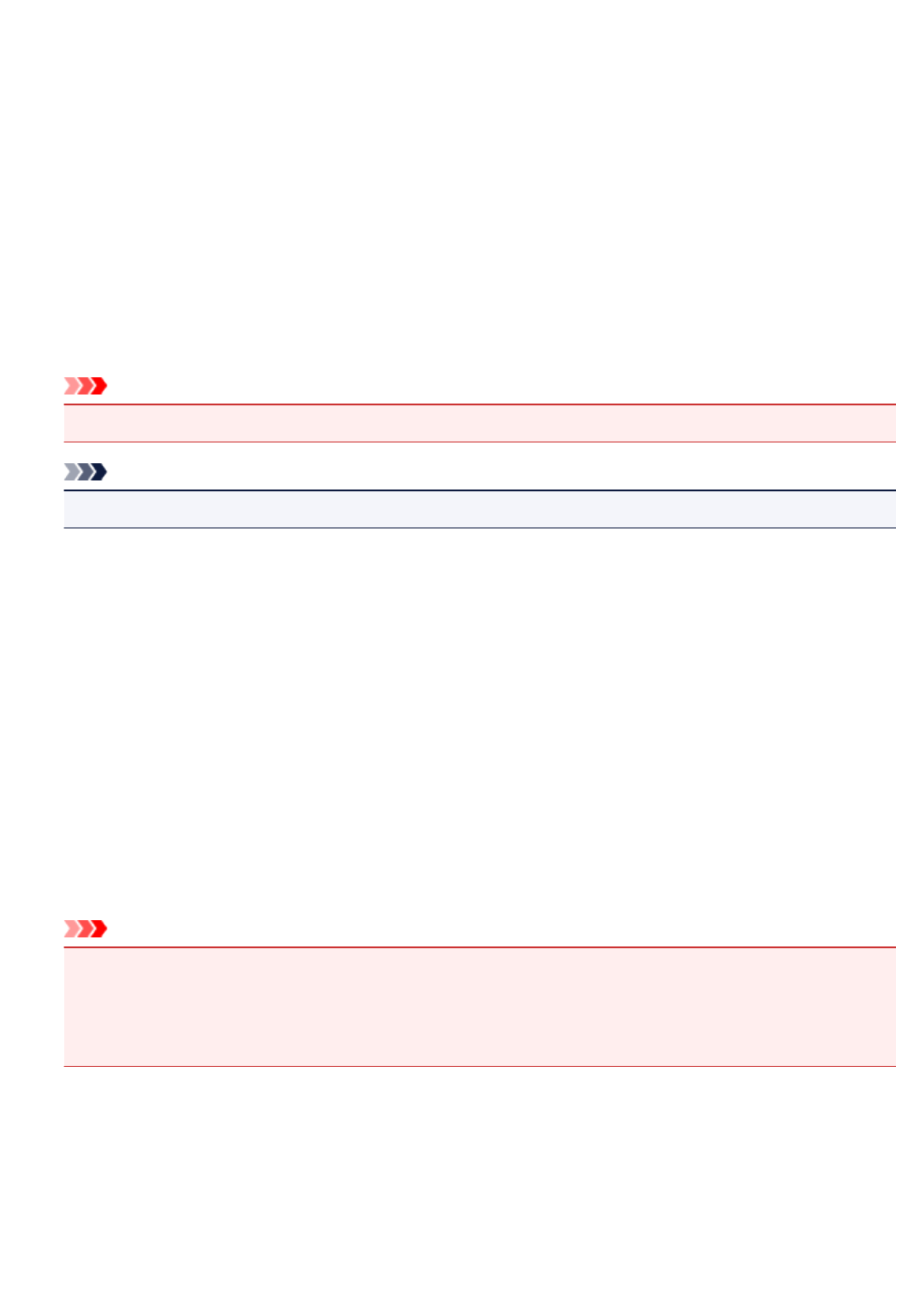
Reduce Dust and Scratches
Scanned photos may contain white dots caused by dust or scratches. Use this function to reduce such
noise.
None
Dust and scratches will not be reduced.
Low
Select this to reduce small dust particles and scratches. Large ones may remain.
Medium
It is recommended that you normally select this setting.
High
Select this to reduce large dust particles and scratches; however, evidence of the reduction
process may remain or delicate parts of the image may be removed.
Important
• This function may not be effective for some types of photos.
Note
• It is recommended that you select None when scanning printed materials.
Fading Correction
Use this function to correct photos that have faded with time or have a colorcast. "Colorcast" is a
phenomenon where a specific color affects the entire picture due to the weather or ambient strong
colors.
None
Fading Correction will not be applied.
Low
Select this to correct a small amount of fading and colorcast.
Medium
It is recommended that you normally select this setting.
High
Select this to correct a large amount of fading and colorcast. This can affect the tone of the image.
Important
• You can set Fading Correction after preview.
• You can set this setting when Recommended is selected on the Color Settings tab of the
Preferences dialog box.
• Correction may not be applied properly if the scan area is too small.
Grain Correction
Use this function to reduce graininess (roughness) in photos taken with high-speed or sensitized film.
None
Graininess will not be reduced.
Low
Select this when the photo is slightly grainy.
830
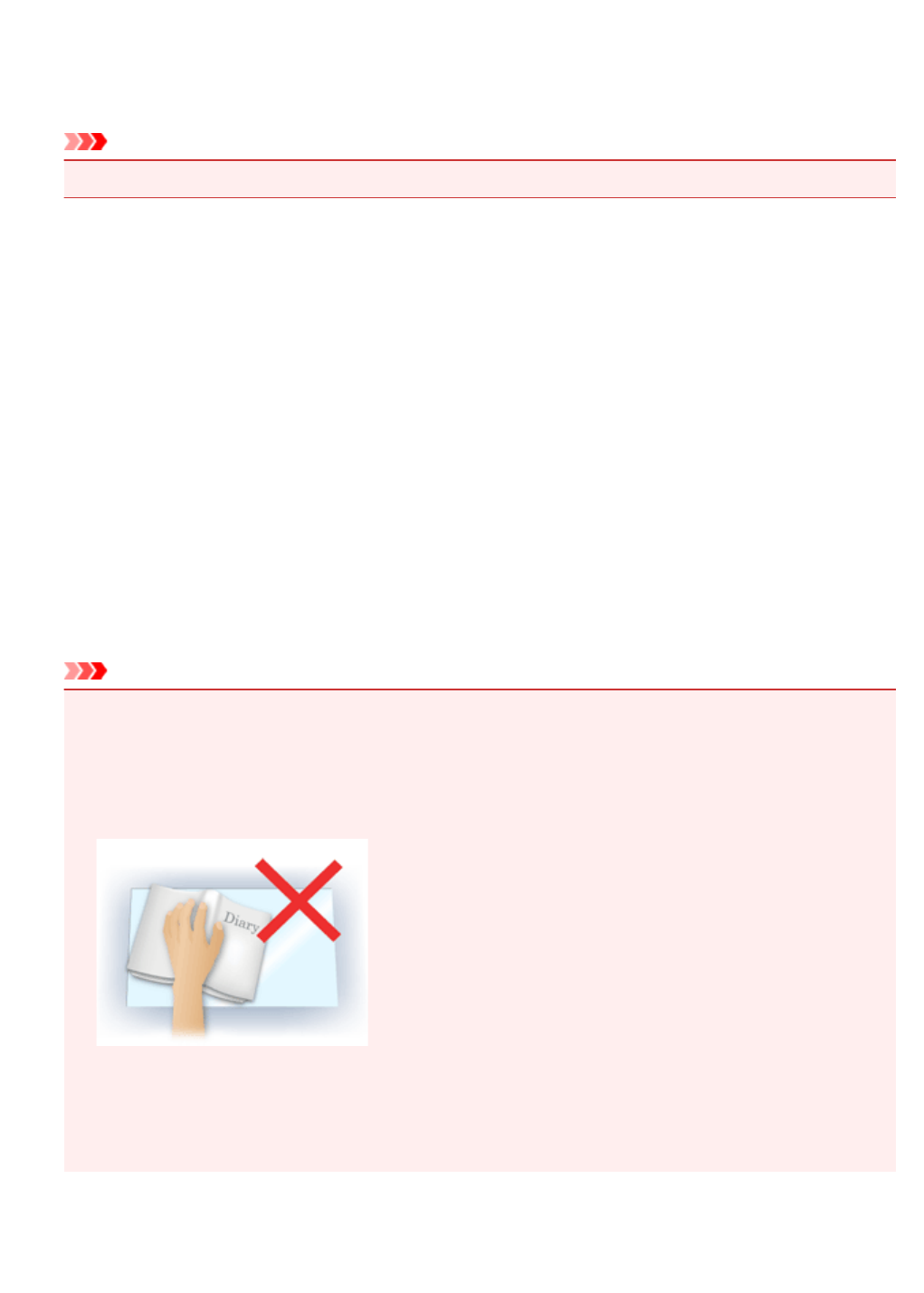
Medium
It is recommended that you normally select this setting.
High
Select this when the photo is very grainy. This can affect the gradation and sharpness of the image.
Important
• Correction may not be applied properly if the scan area is too small.
Gutter Shadow Correction
Use this function to correct shadows that appear between pages when scanning open booklets.
When you set the Gutter Shadow Correction setting in the preview image, the result will be reflected.
Preview the effects before scanning, as results vary depending on the type of document and how it is
pressed.
Unclear or blurred text/lines caused by curved pages are not corrected.
None
Gutter shadow will not be corrected.
Low
Select this when the effect level is too strong with the medium setting.
Medium
It is recommended that you normally select this setting.
High
Select this when the effect level is too weak with the medium setting.
Important
• You can set Gutter Shadow Correction after preview.
• Do not place objects that weigh 4.4 lbs (2.0 kg) or more on the platen. Also, do not press on the
document with a force exceeding 4.4 lbs (2.0 kg). If you press heavily, the scanner may not work
correctly or you might break the glass.
• Align the document with the edge of the Platen. If not, the shadow will not be corrected properly.
• Shadows may not be corrected properly depending on the document. If the page background is not
white, shadows may not be detected correctly or may not be detected at all.
• While scanning, press down on the spine with the same amount of pressure you used to preview
the scan. If the binding part is not even, the shadow will not be corrected properly.
831
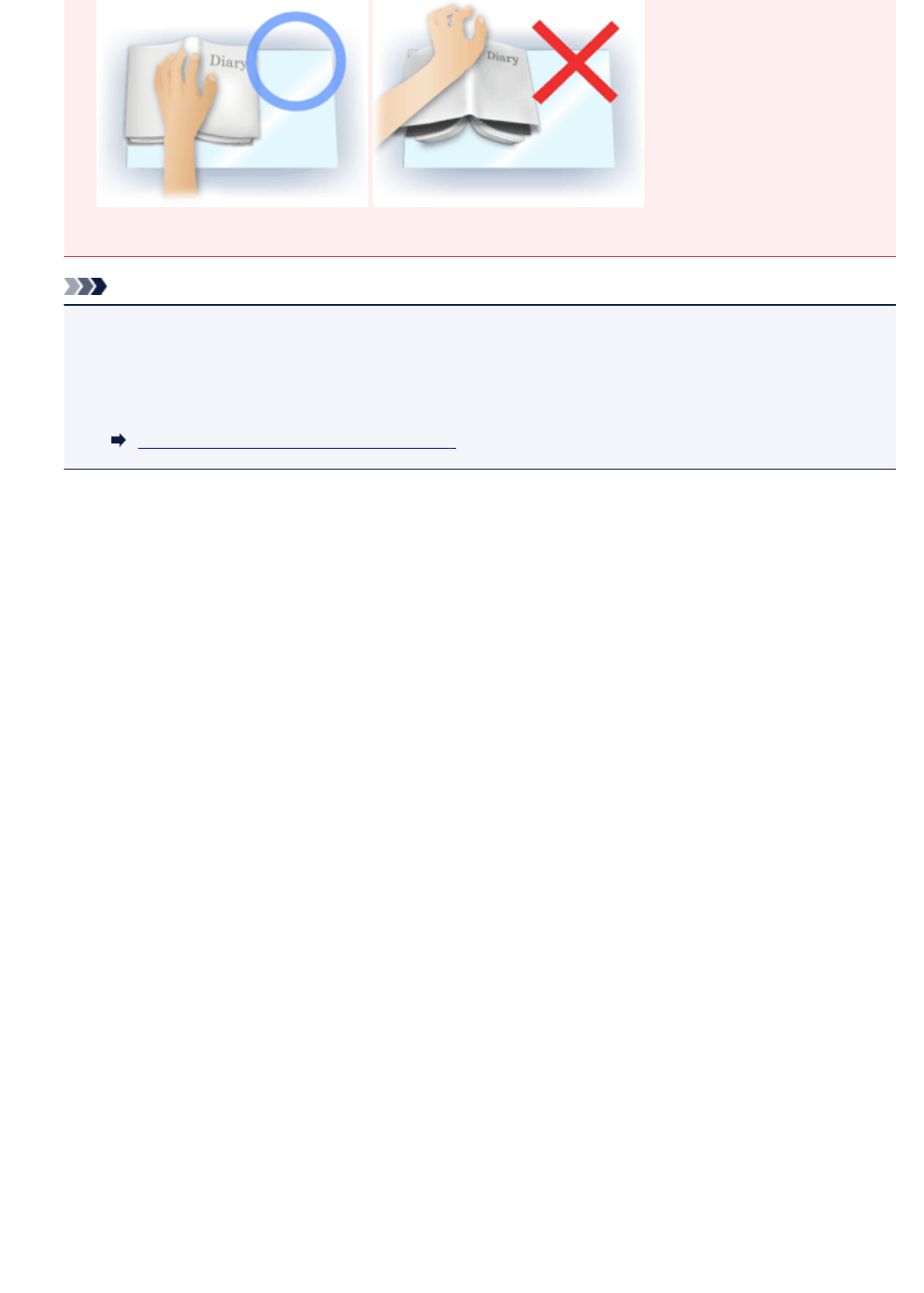
• How to place the document depends on your model and the document to be scanned.
Note
• Cover the document with black cloth if white spots, streaks, or colored patterns appear in scan
results due to ambient light entering between the document and the Platen.
• If the shadow is not corrected properly, adjust the cropping frame (scan area) on the preview
image.
Adjusting Cropping Frames (ScanGear)
832
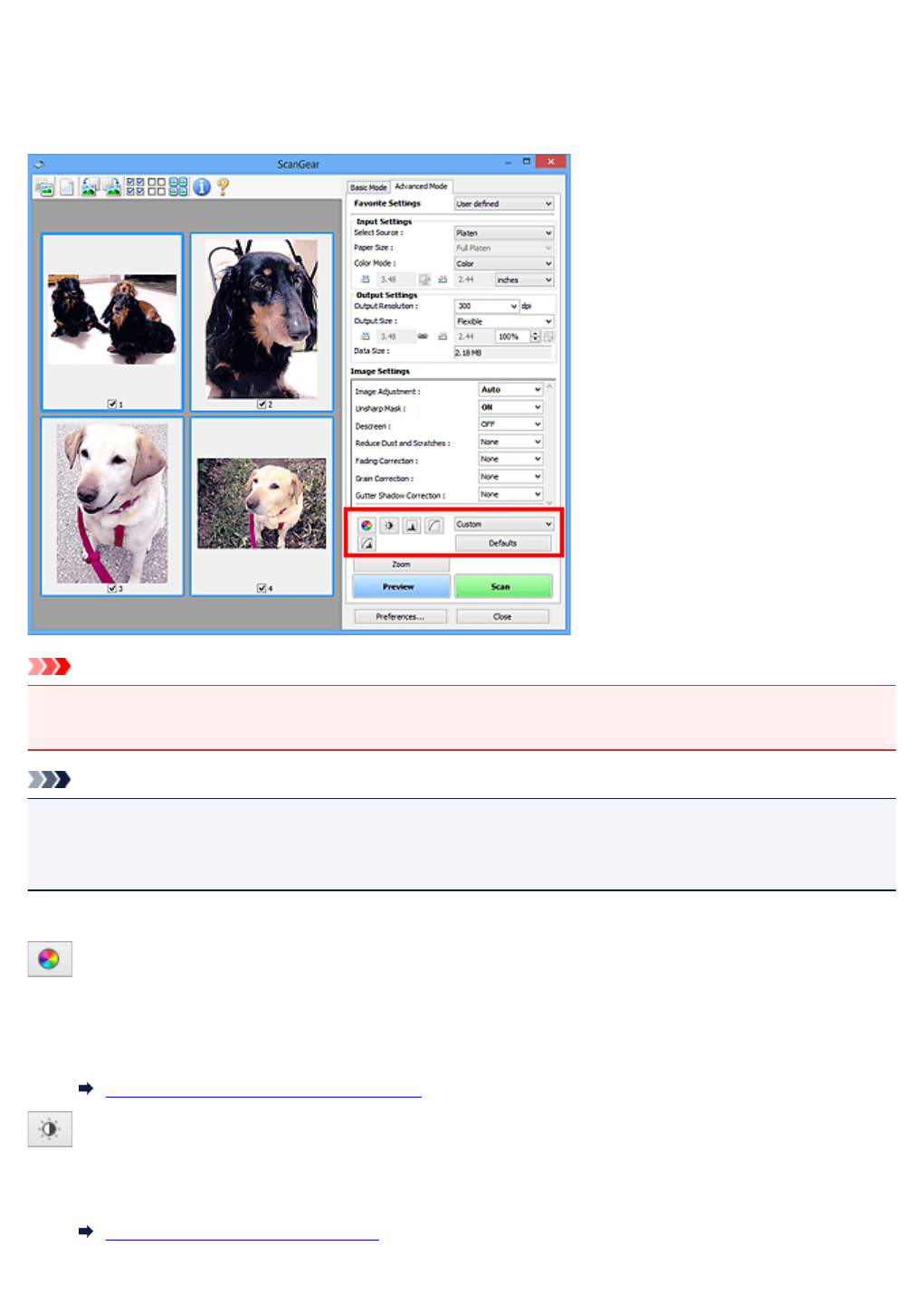
Color Adjustment Buttons
The Color Adjustment Buttons allow you to make fine corrections to the image brightness and color tones
including adjustments to the image's overall brightness or contrast and adjustments to its highlight and
shadow values (histogram) or balance (tone curve).
Important
• The Color Adjustment Buttons are not available when you select Color Matching on the Color
Settings tab of the Preferences dialog box.
Note
• Selectable settings depend on Color Mode settings.
• When you adjust the image via the Color Adjustment Buttons, the results will be reflected in the preview
image.
Click a Color Adjustment Button to set the following items:
(Saturation/Color Balance)
Adjust the saturation (vividness) and color tone of the image. Use this function to brighten colors that
have faded with time or due to colorcast. "Colorcast" is a phenomenon where a specific color affects the
entire picture due to the weather or ambient strong colors.
Adjusting Saturation and Color Balance
(Brightness/Contrast)
Adjust the brightness and contrast of the image. If the image is too dark or too bright, or if the image
quality is flat due to lack of contrast, you can adjust the levels of brightness and contrast.
Adjusting Brightness and Contrast
833
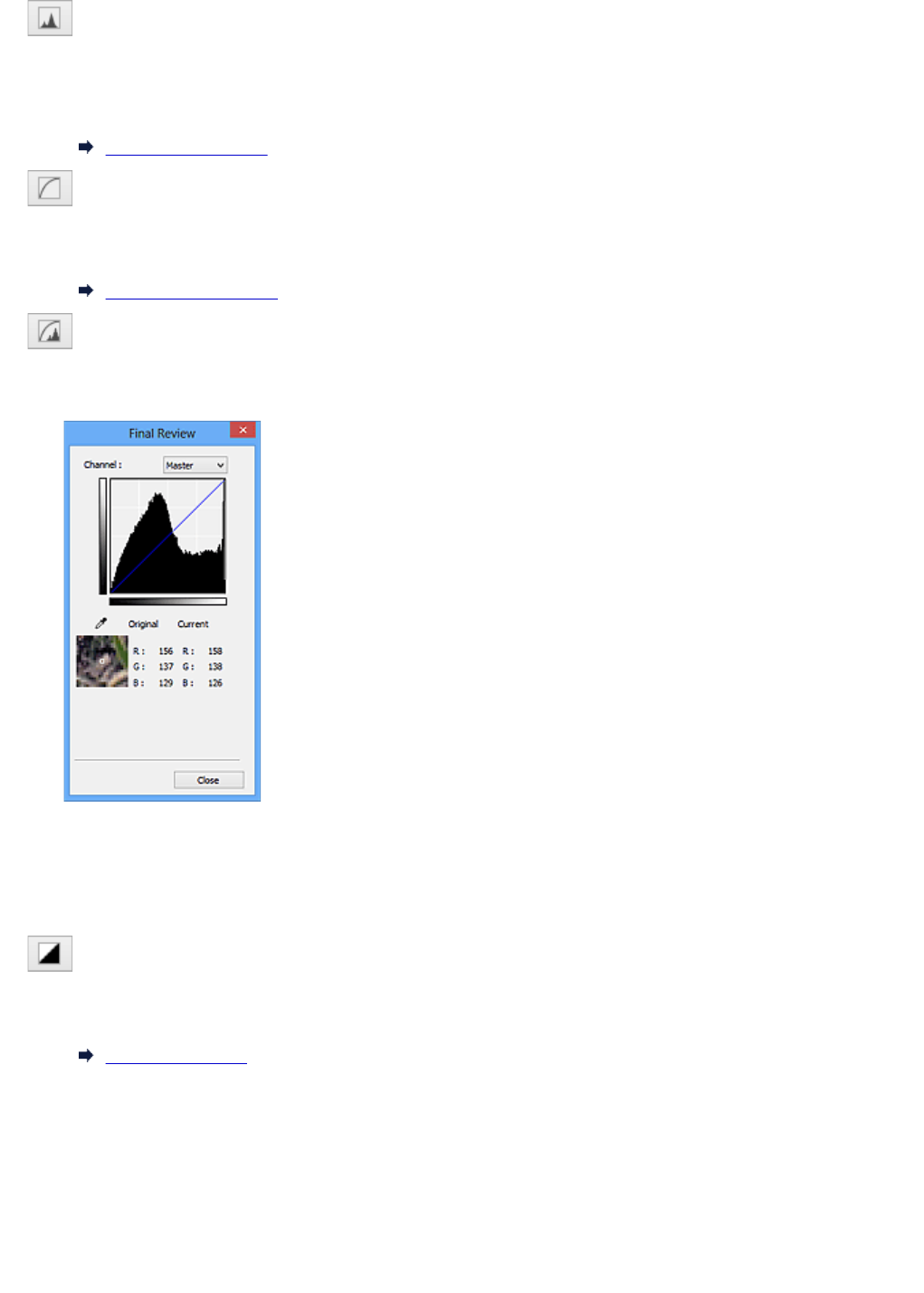
(Histogram)
A histogram allows you to see the data concentration at each brightness level of an image. You can
specify the brightest level (highlight) and darkest level (shadow) within an image, cut the levels and
expand the middle of the tonal range of the image.
Adjusting Histogram
(Tone Curve Settings)
Adjust the brightness of an image by selecting the type of graph (tone curve) showing the balance of
tone input and output. You can make fine adjustments to the brightness of a specific area.
Adjusting Tone Curve
(Final Review)
Make a final check of color adjustments. The final synthesized tone curve and the histogram derived
from the subsequent image processing will be displayed. There are no settings to make in this screen.
• For a color image, select a color in Channel to check either Red, Green, or Blue, or select Master
to check three colors together.
• If you place the cursor on the preview image, the portion will be enlarged and its RGB values (only
L when Color Mode is Grayscale) before and after the adjustments will be displayed.
(Threshold)
Set the boundary (threshold) at which black and white are divided. By adjusting the threshold level, you
can sharpen text in a document or reduce show-through in newspapers.
Setting Threshold
Custom
You can name and save a set of tone curve and threshold settings of the Color Adjustment Buttons.
Select Add/Delete... from the pull-down menu; when Color Mode is set to anything but Black and
White, the Add/Delete Tone Curve Settings dialog box opens; when Color Mode is Black and White,
the Add/Delete Threshold Settings dialog box opens.
834
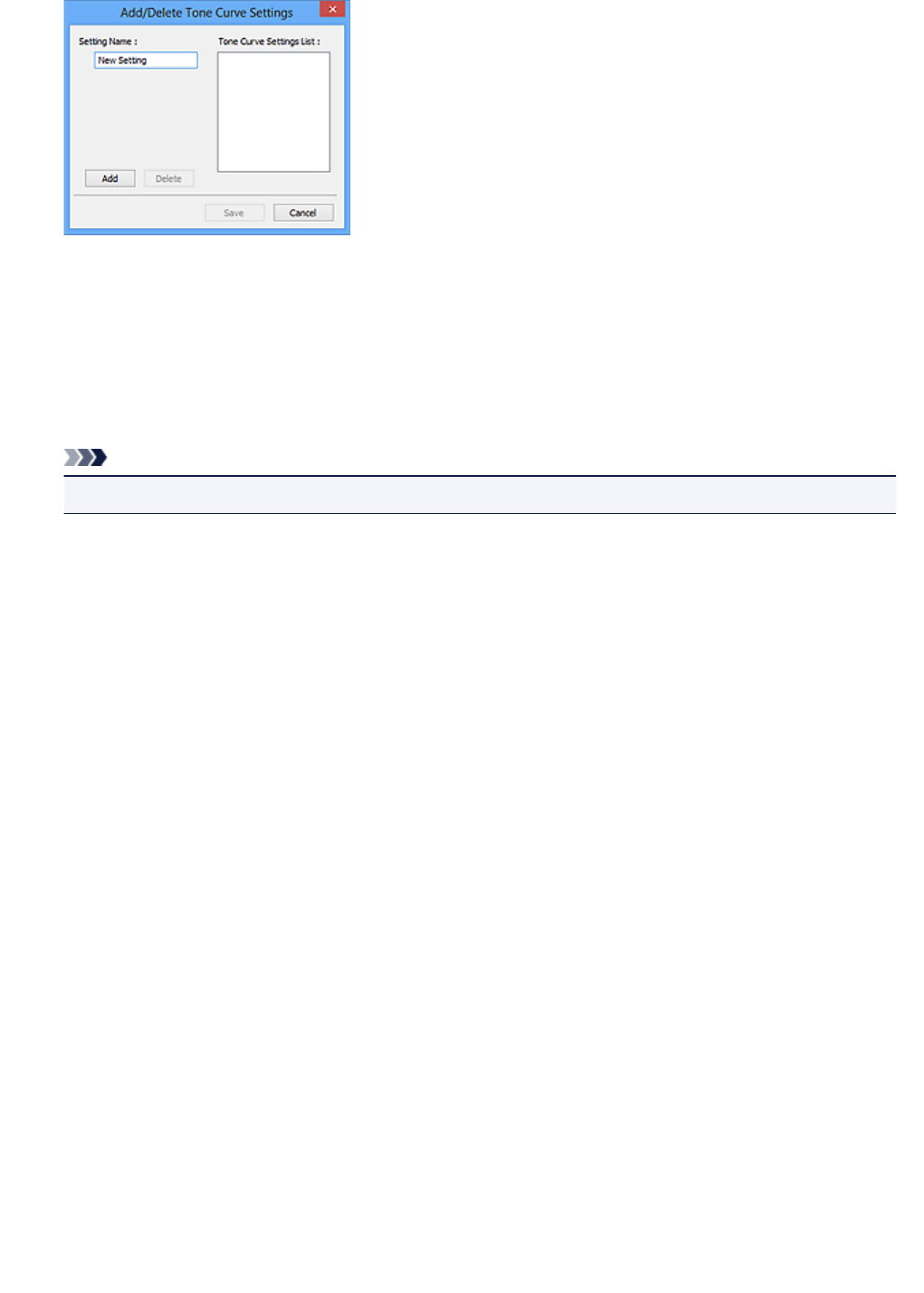
Enter Setting Name and click Add; the name appears in Tone Curve Settings List or Threshold
Settings List. Click Save to save.
To delete an item, select it in Tone Curve Settings List or Threshold Settings List and click Delete.
Click Save to save the settings displayed in Tone Curve Settings List or Threshold Settings List.
You can load and apply the saved tone curve/threshold settings to a preview image. To load the
settings, select the saved item from the pull-down menu.
Note
• Save up to 20 items.
Defaults
Reset all adjustments (saturation/color balance, brightness/contrast, histogram, and tone curve).
835
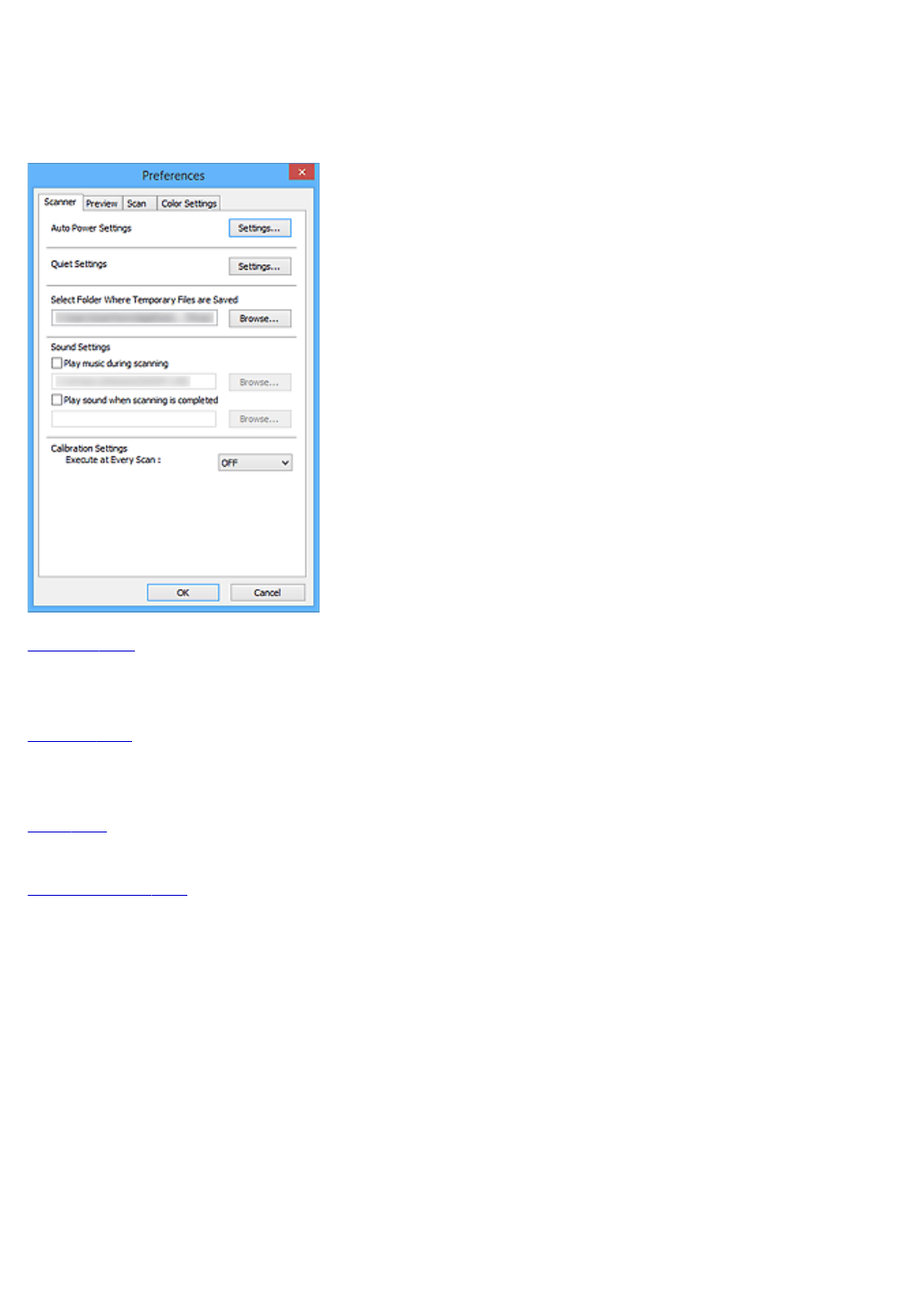
Preferences Dialog Box
In the Preferences dialog box, you can make advanced settings to ScanGear (scanner driver) functions via
the Scanner, Preview, Scan, and Color Settings tabs.
Click Preferences... in the ScanGear screen to open the Preferences dialog box.
Scanner Tab
Allows you to set the auto power settings, specify the folder in which to save images temporarily, and
set the music file to play during or at the end of a scan.
Preview Tab
Allows you to select what to do with Preview when ScanGear is started, how to display cropping frames
after previewing images, and the cropping size for thumbnails of scanned documents.
Scan Tab
Allows you to select what to do with ScanGear after scanning image.
Color Settings Tab
Allows you to select how to adjust color, and specify the monitor gamma value.
836
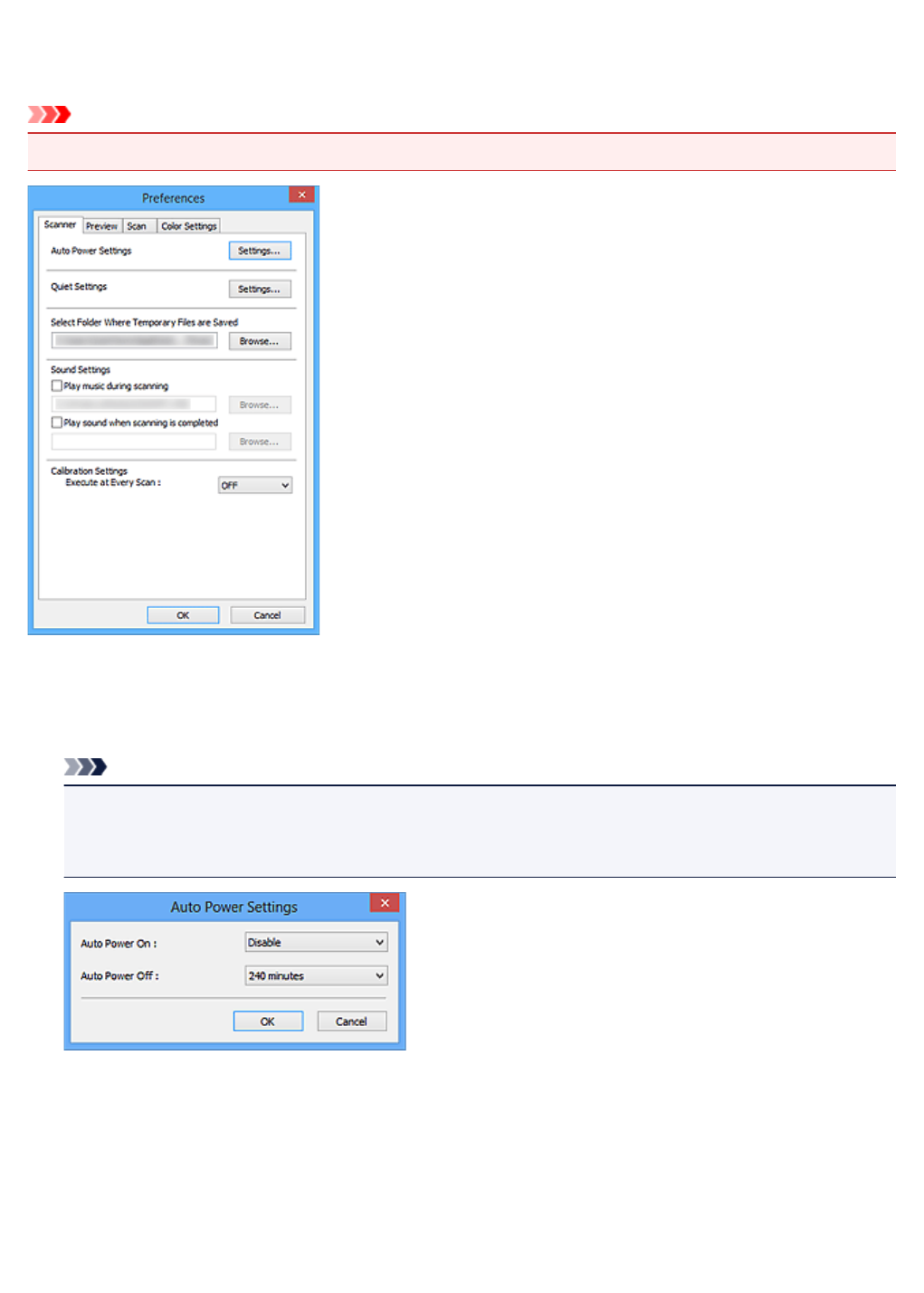
Scanner Tab
On the Scanner tab, you can specify the following settings.
Important
• Available functions and settings vary depending on your scanner or printer.
Auto Power Settings
You can set to turn the machine on or off automatically.
Click Settings... to display the Auto Power Settings dialog box.
Note
• If the machine is off or bi-directional communication is disabled, a message may appear because
the computer cannot collect the machine status. In that case, click OK to exit ScanGear (scanner
driver).
Auto Power On
Select Enable to turn on the machine automatically when data is received.
Auto Power Off
Specify the amount of time you want to set from the list. When this time lapses without any data
being received, the machine turns off automatically.
837
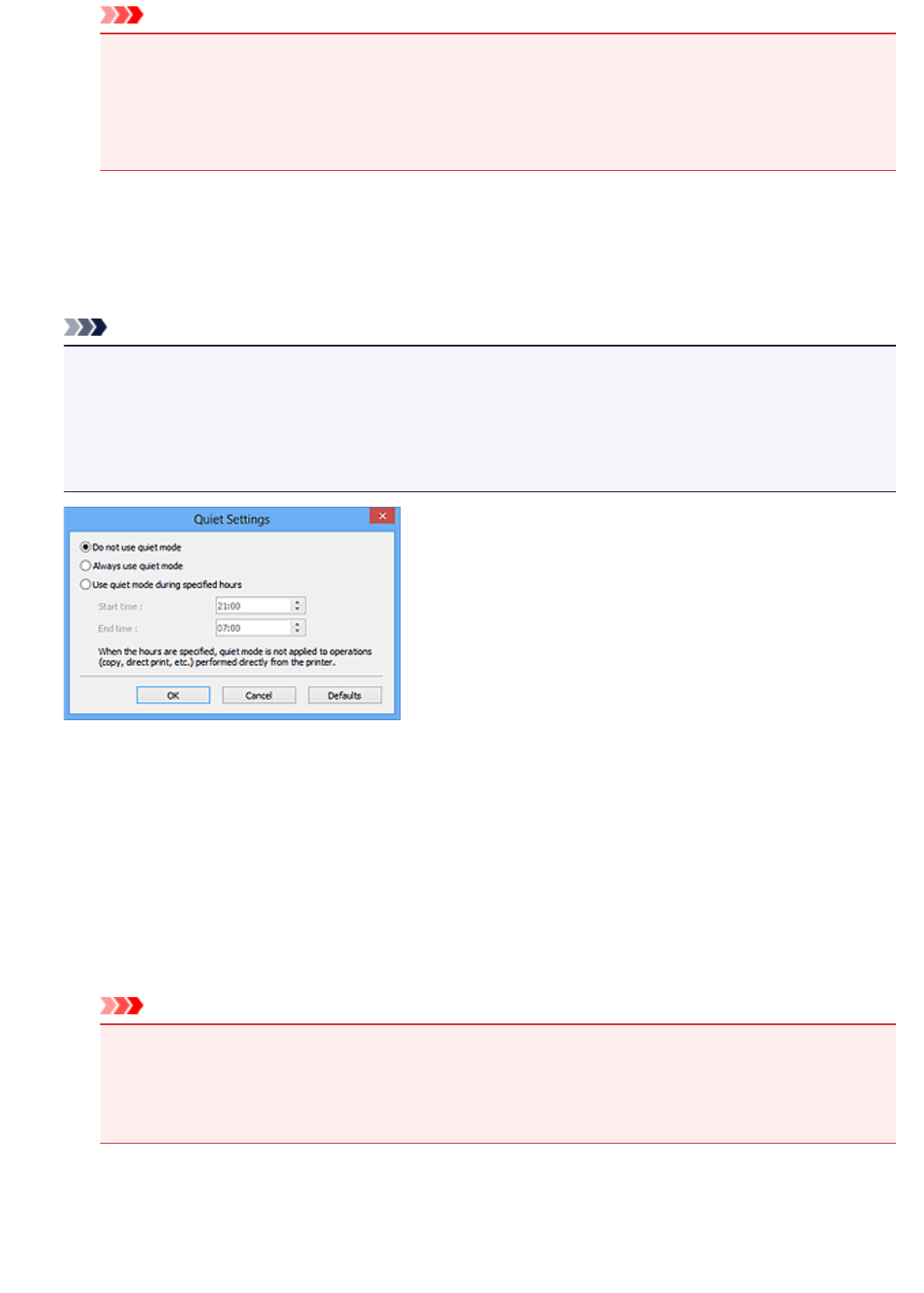
Important
When connected to the network, depending on your model, the power does not turn off
automatically even if Auto Power Off is set.
Refer to "Function Support List by Model (Auto Power Off)" to check if your model supports the
Auto Power Off function.
Quiet Settings
The silent function allows you to reduce the operating noise of this machine. Use this when you wish to
reduce the operating noise such as when scanning or printing at night.
Click Settings... to set the quiet mode.
Note
• You can set the quiet mode from the operation panel of the machine, the printer driver, or
ScanGear.
No matter how the setting is made, it applies to operations from the operation panel of the machine
or when printing/scanning from a computer, etc.
• Scanning or printing may take longer than usual when this function is used.
Do not use quiet mode
Select this option when you wish to use the machine with volume of normal operating noise.
Always use quiet mode
Select this option when you wish to reduce the operating noise of the machine.
Use quiet mode during specified hours
Select this option when you wish to reduce the operating noise of the machine during a specified
period of time.
Set the Start time and End time during which quiet mode is to be activated.
Important
• The time specified in Start time and in End time must be different.
• If your scanner or printer does not support fax functions, quiet mode is not applied to
operations (copy, direct print, etc.) performed directly from the machine even if the hours are
specified.
Select Folder Where Temporary Files are Saved
Displays the folder in which to save images temporarily. To change the folder, click Browse... to specify
another one.
838
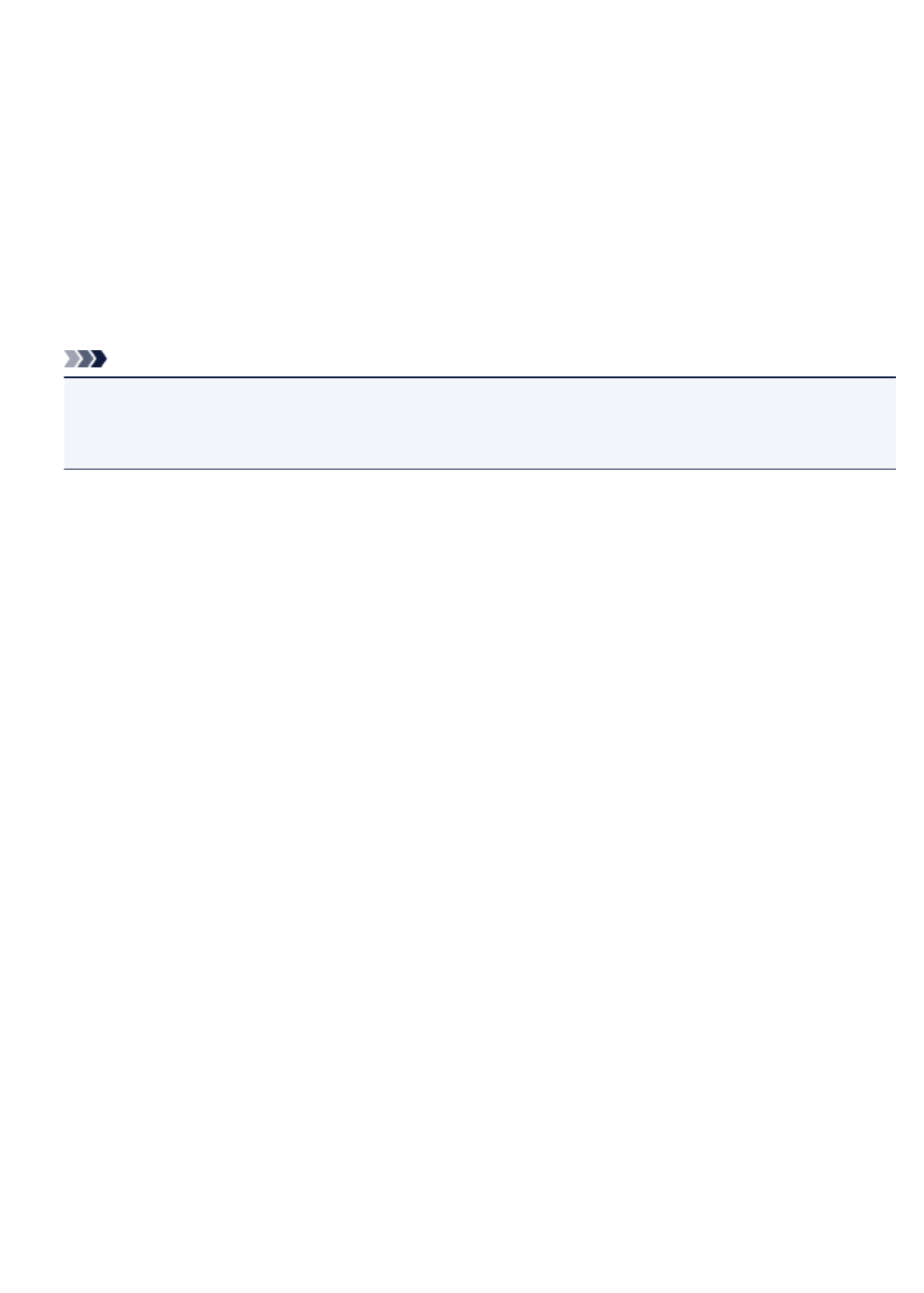
Sound Settings
You can set the machine to play music during/at the end of a scan.
Select the Play music during scanning or Play sound when scanning is completed checkbox, then
click Browse... and specify a sound file.
You can specify the following files.
• MIDI file (*.mid, *.rmi, *.midi)
• Audio file (*.wav, *.aif, *.aiff)
• MP3 file (*.mp3)
Calibration Settings
When you set Execute at Every Scan to ON, the scanner will be calibrated every time before
previewing and scanning, to reproduce correct color tones in scanned images.
Note
• Even when Execute at Every Scan is set to OFF, the scanner may be calibrated automatically in
some cases (such as immediately after you turn the machine on).
• Calibration may take time depending on your computer.
839
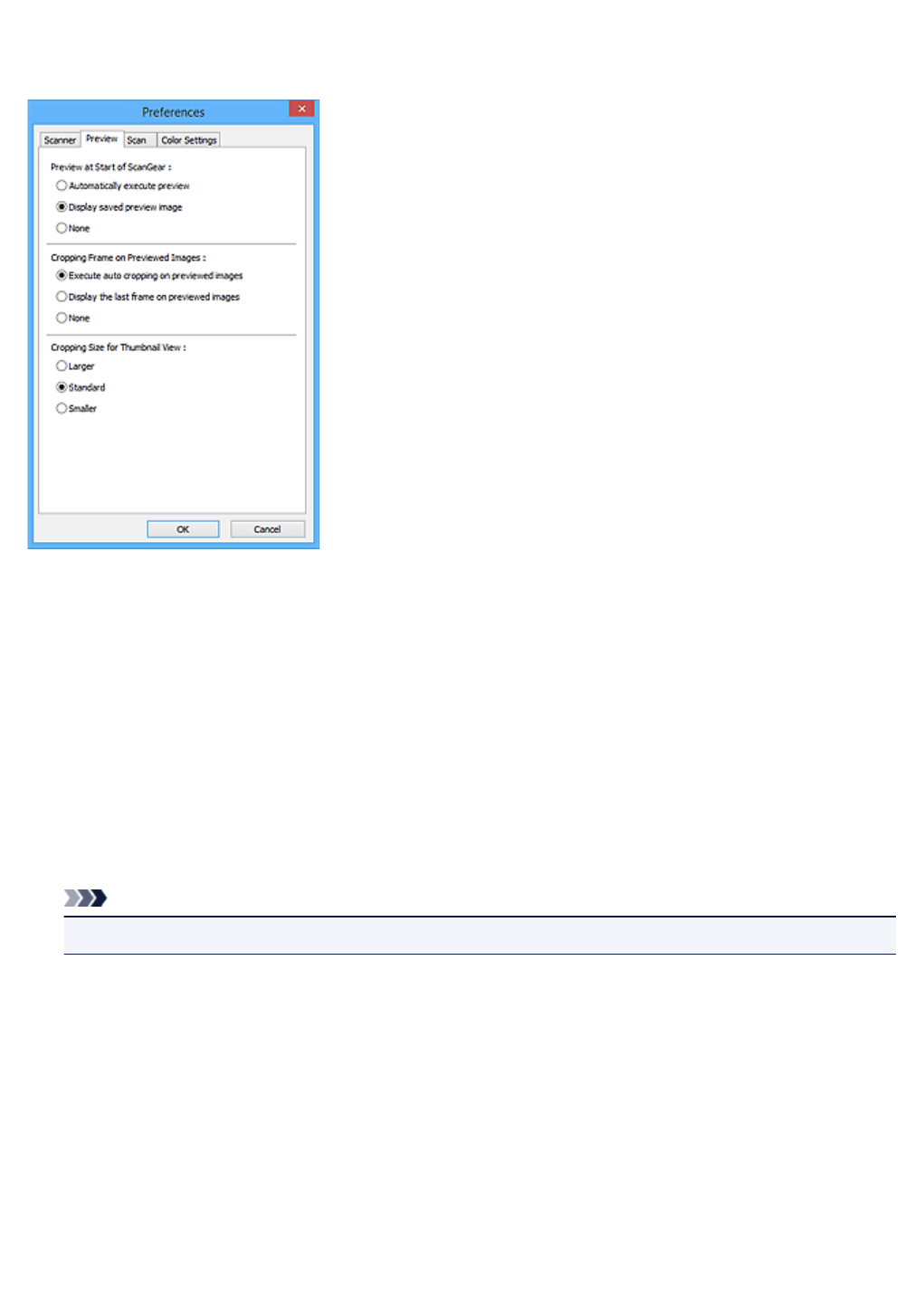
Preview Tab
On the Preview tab, you can specify the following settings.
Preview at Start of ScanGear
Select what to do with Preview when ScanGear (scanner driver) is started.
Automatically execute preview
ScanGear will automatically start previewing at startup.
Display saved preview image
The previously previewed image will be displayed.
The Color Adjustment Button settings, the Toolbar settings, and the Advanced Mode tab settings
are also saved.
None
No preview image will be displayed at startup.
Note
• Select None if you do not want to save the preview image.
Cropping Frame on Previewed Images
Select how to display cropping frames after previewing images.
Execute auto cropping on previewed images
The cropping frame (scan area) will automatically be displayed in the document size after
previewing.
Display the last frame on previewed images
A cropping frame of the same size as the last used cropping frame will be displayed after
previewing.
None
No cropping frame will be displayed after previewing.
840
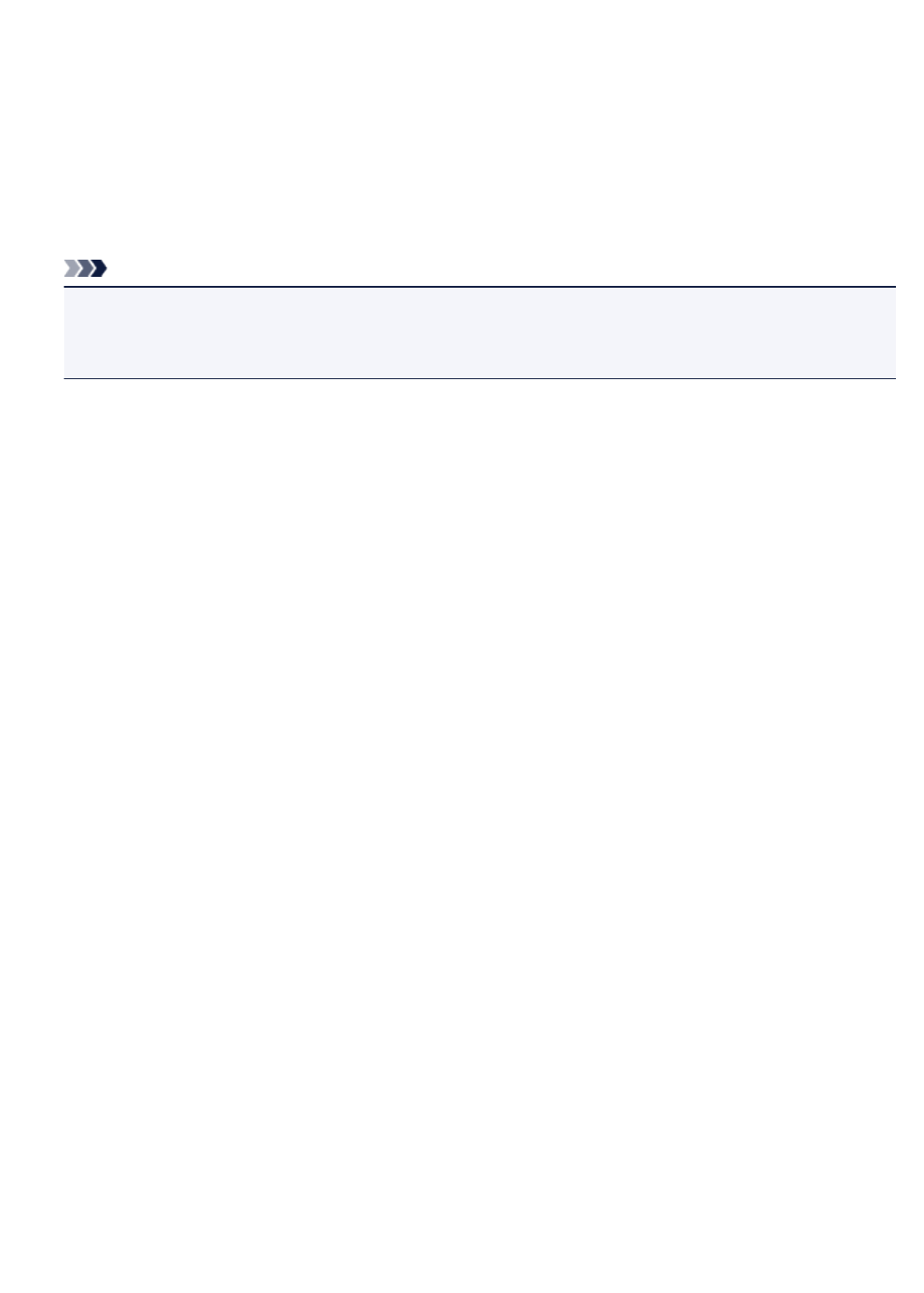
Cropping Size for Thumbnail View
Select the cropping size for thumbnails of scanned documents.
Larger
Displays 105 % (in width and height) of the area displayed for the standard size.
Standard
The standard size.
Smaller
Displays 95 % (in width and height) of the area displayed for the standard size.
Note
• When you change the Cropping Size for Thumbnail View setting, the preview images will be
refreshed and cropped to the new size. As the preview images are refreshed, the color
adjustments and other settings applied to them are reset.
841
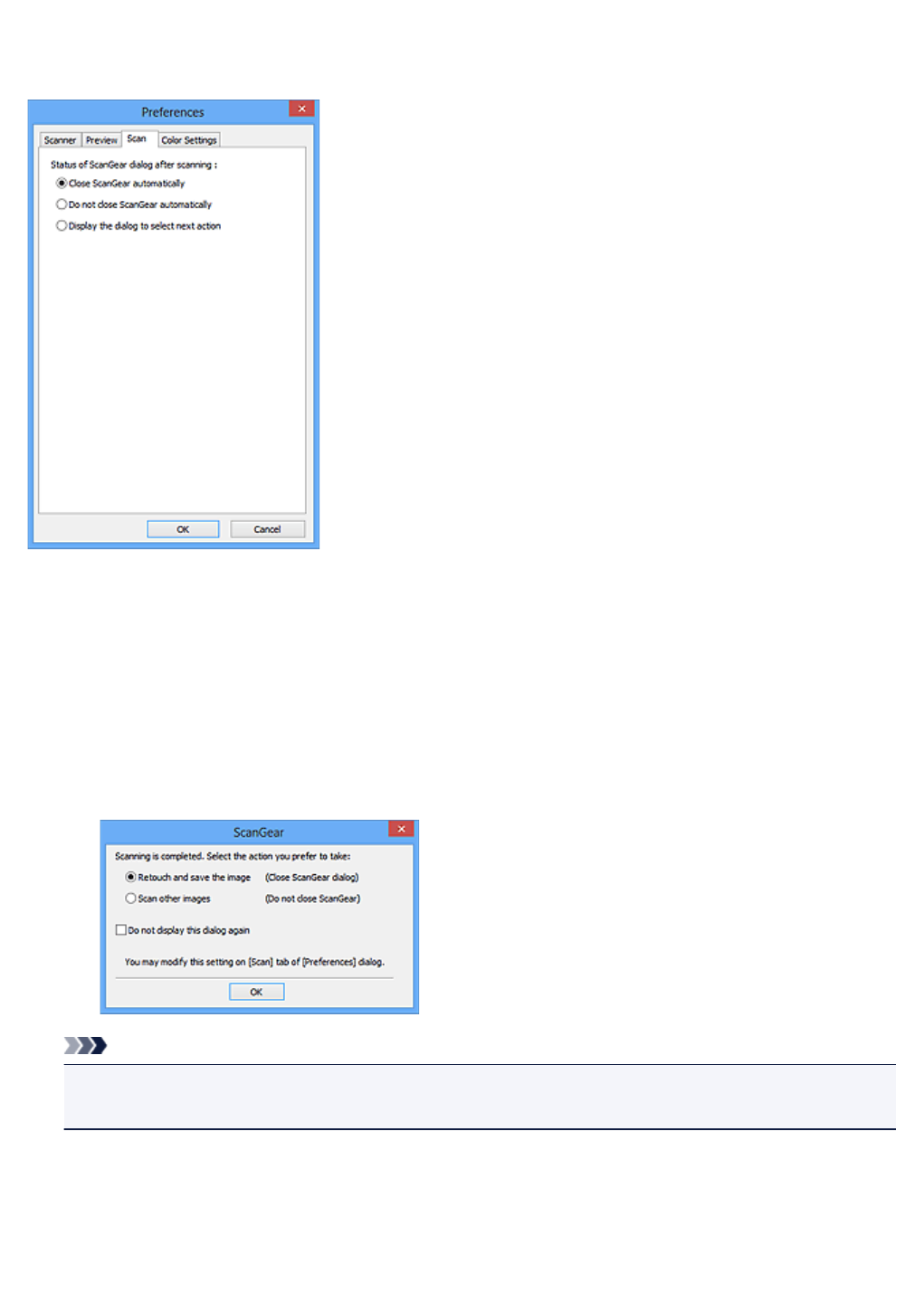
Scan Tab
On the Scan tab, you can specify the following settings.
Status of ScanGear dialog after scanning
Select what to do with ScanGear (scanner driver) after scanning images.
Close ScanGear automatically
Select this to return to the original application when scanning is completed.
Do not close ScanGear automatically
Select this to return to the ScanGear screen for another scan when scanning is completed.
Display the dialog to select next action
Select this to open a screen and select what to do when scanning is completed.
Note
• Even if Do not close ScanGear automatically or Display the dialog to select next action is set,
some applications may not support it.
842
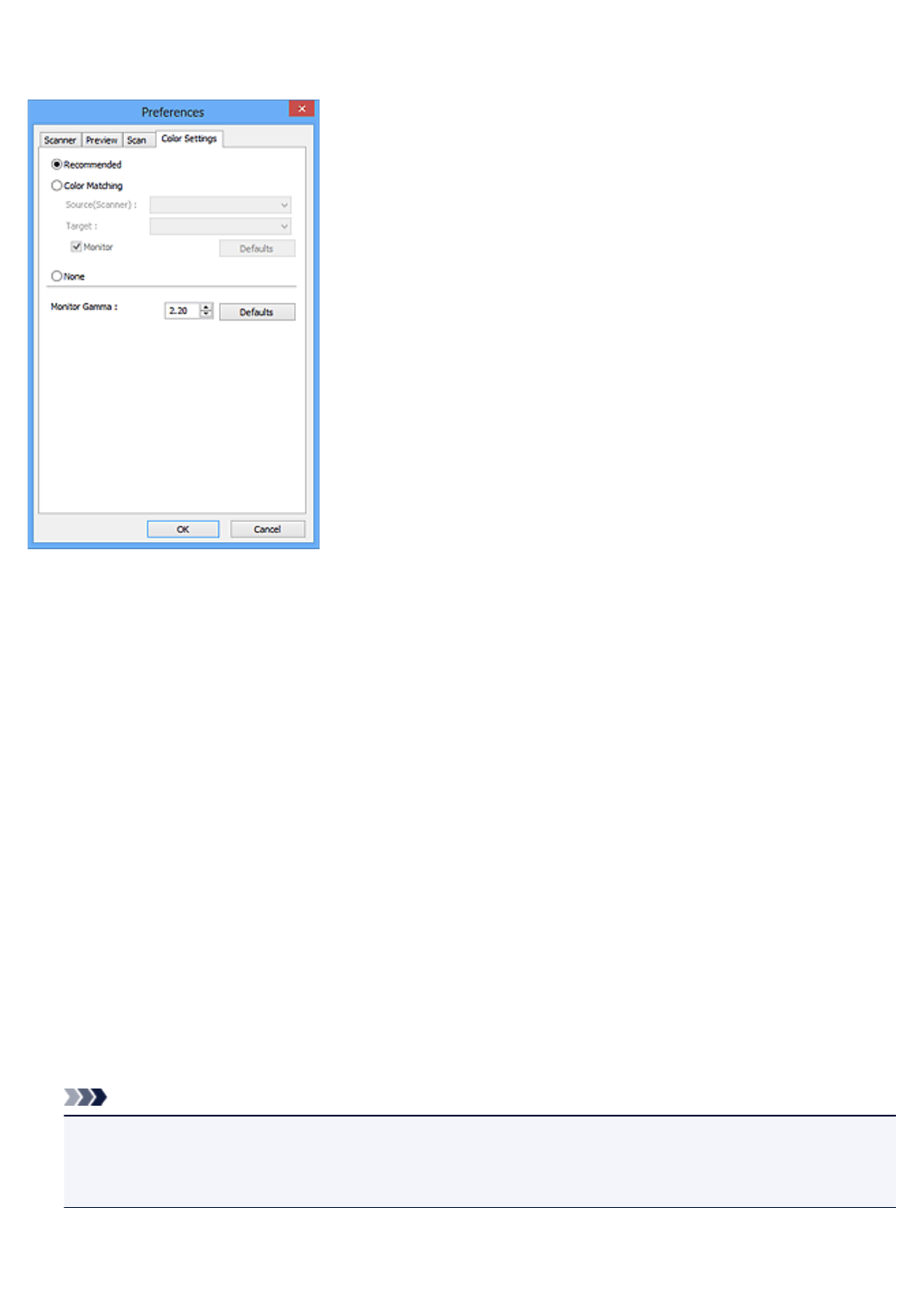
Color Settings Tab
On the Color Settings tab, you can specify the following settings.
Color Adjustment
Select one of the following.
Recommended
Select this to vividly reproduce the tone of a document on the screen. It is recommended that you
normally select this setting.
Color Matching
Select this to automatically match the scanner, monitor, and color printer colors, thus reducing time and
trouble to manually match the monitor and printer colors.
Source(Scanner)
Select scanner profile.
Target
Select target profile.
Monitor
Select this checkbox to display preview image with optimum correction for monitor.
Defaults
Returns to the default Color Matching settings.
Note
• The Color Adjustment Buttons on the Advanced Mode tab are not available when you select
Color Matching.
• This function is available when Color Mode is Color.
None
Select this to disable color correction provided by ScanGear (scanner driver).
843
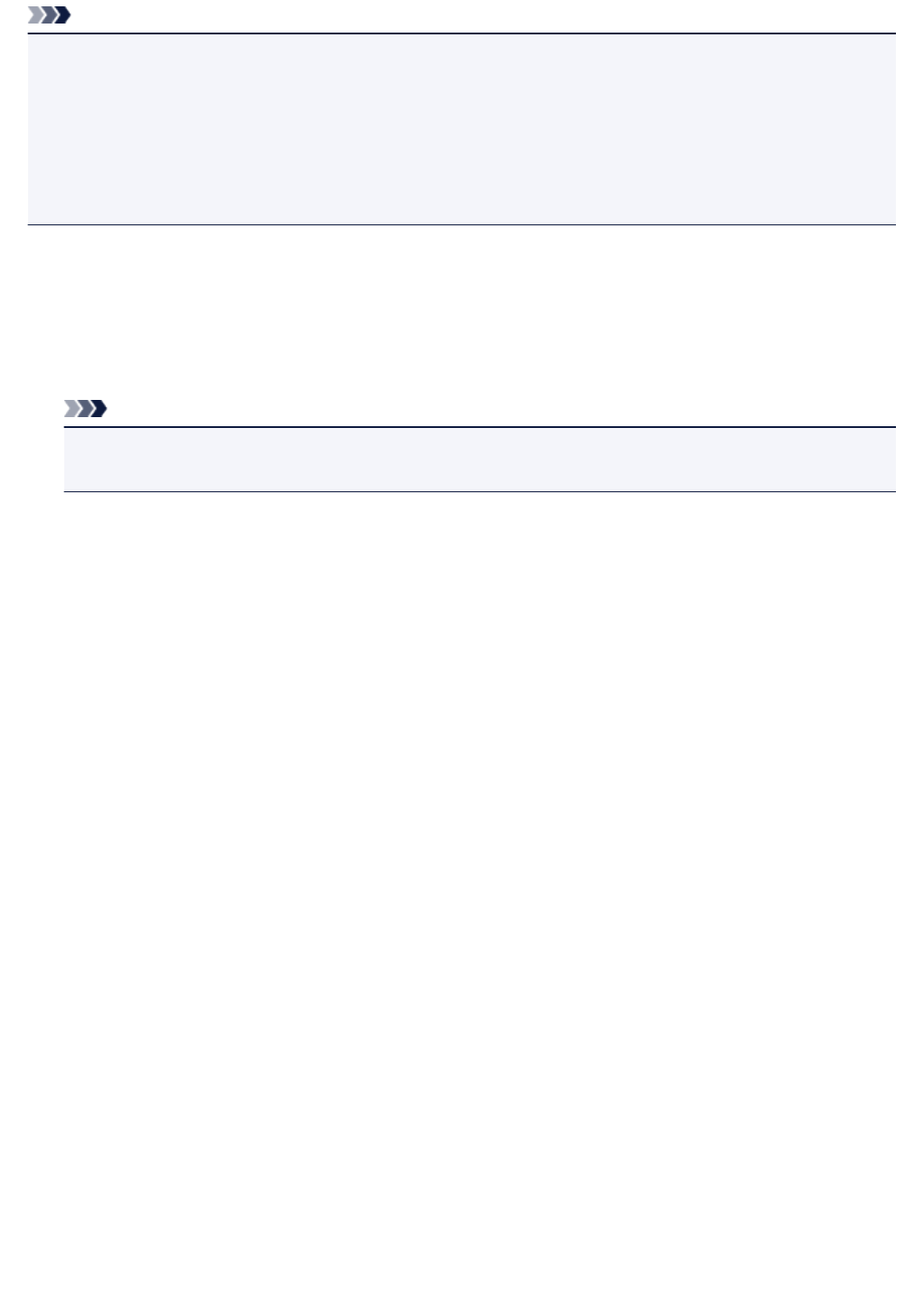
Note
• Depending on your scanner or printer, this setting may not be available when scanning from the ADF
(Auto Document Feeder).
• You can select one when Color Mode is Color or Grayscale.
• Color Matching is available when ScanGear, monitor, color management-compliant application (such as
Adobe Photoshop), and printer are set up correctly.
Refer to the corresponding manual for the monitor, printer, and application settings.
Monitor Gamma
By setting the gamma value of a monitor, you can adjust the input data to the brightness characteristics
of the monitor. Adjust the value if your monitor's gamma value does not match the default value set in
ScanGear, and the colors of the original image are not accurately reflected in the monitor.
Click Defaults to return to the default Monitor Gamma value (2.20).
Note
• Refer to the manual of your monitor to check its gamma value. If it is not written in the manual,
contact the manufacturer.
844
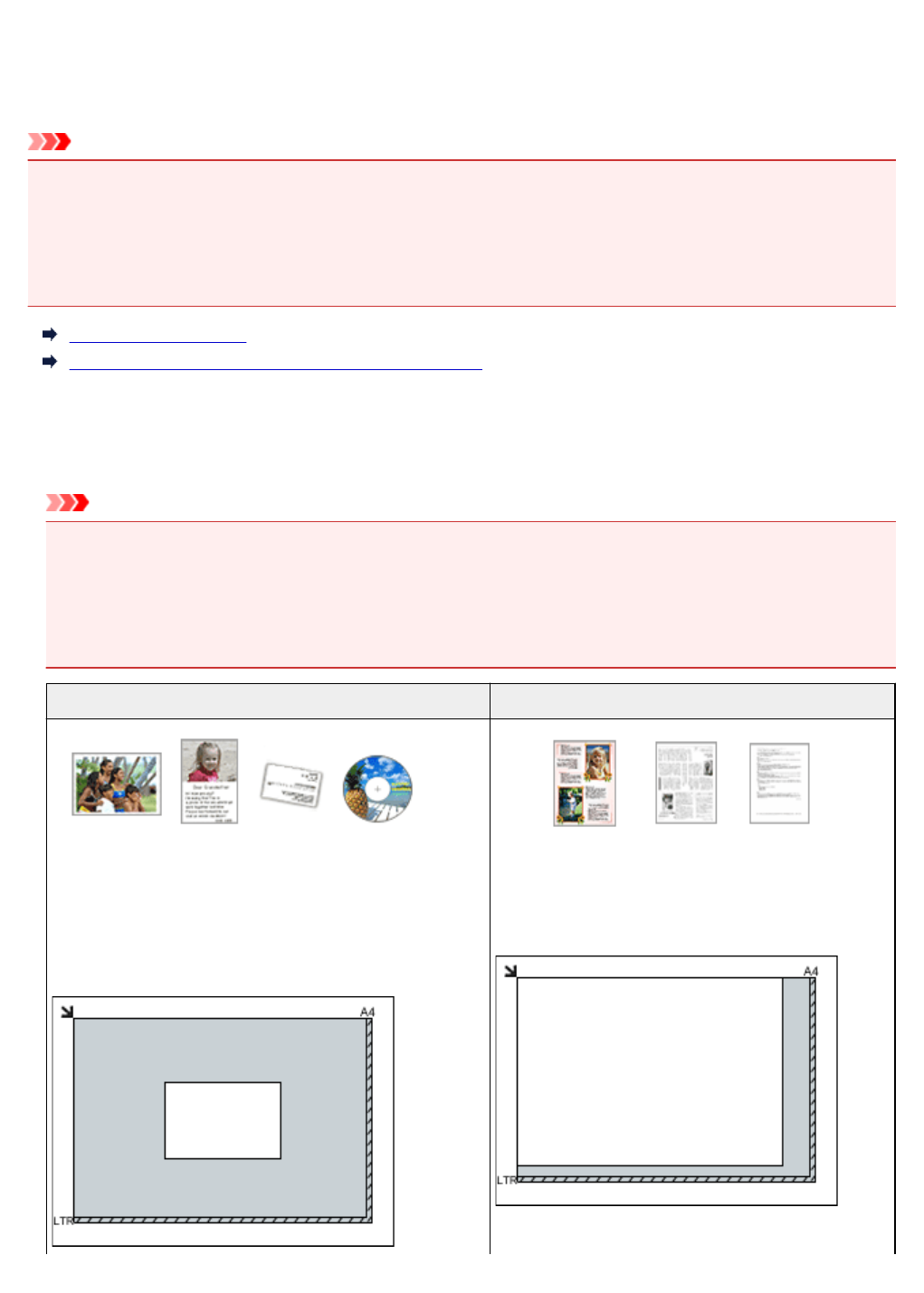
Positioning Originals (Scanning from Computer)
Learn how to place items on the platen or ADF (Auto Document Feeder) of your scanner or printer. Place
items correctly according to the type of item to be scanned. Otherwise, items may not be scanned correctly.
Important
• Do not place objects on the document cover. When you open the document cover, the objects may fall
into your scanner or printer, resulting in malfunction.
• Close the document cover when scanning.
• Do not touch the operation panel buttons or LCD (Liquid Crystal Display) when opening/closing the
document cover. May result in unintended operation.
Placing Items (Platen)
Placing Documents (ADF (Auto Document Feeder))
Placing Items (Platen)
Place items as described below to scan by detecting the item type or size automatically.
Important
• When scanning by specifying the paper size in IJ Scan Utility or ScanGear (scanner driver), align an
upper corner of the item with the corner at the arrow (alignment mark) of the platen.
• Photos that have been cut to various shapes and items smaller than 1.2 inches (3 cm) square cannot
be cropped accurately when scanning.
• Reflective disc labels may not be scanned as expected.
For Photos, Postcards, Business Cards, or BD/DVD/CD For Magazines, Newspapers, or Documents
Placing a Single Item:
Place the item face-down on the platen, with 0.4 inch (1 cm)
or more space between the edges (diagonally striped area)
of the platen and the item. Portions placed on the diagonal-
ly striped area cannot be scanned.
Place the item face-down on the platen and align an
upper corner of the item with the corner at the arrow
(alignment mark) of the platen. Portions placed on the
diagonally striped area cannot be scanned.
845
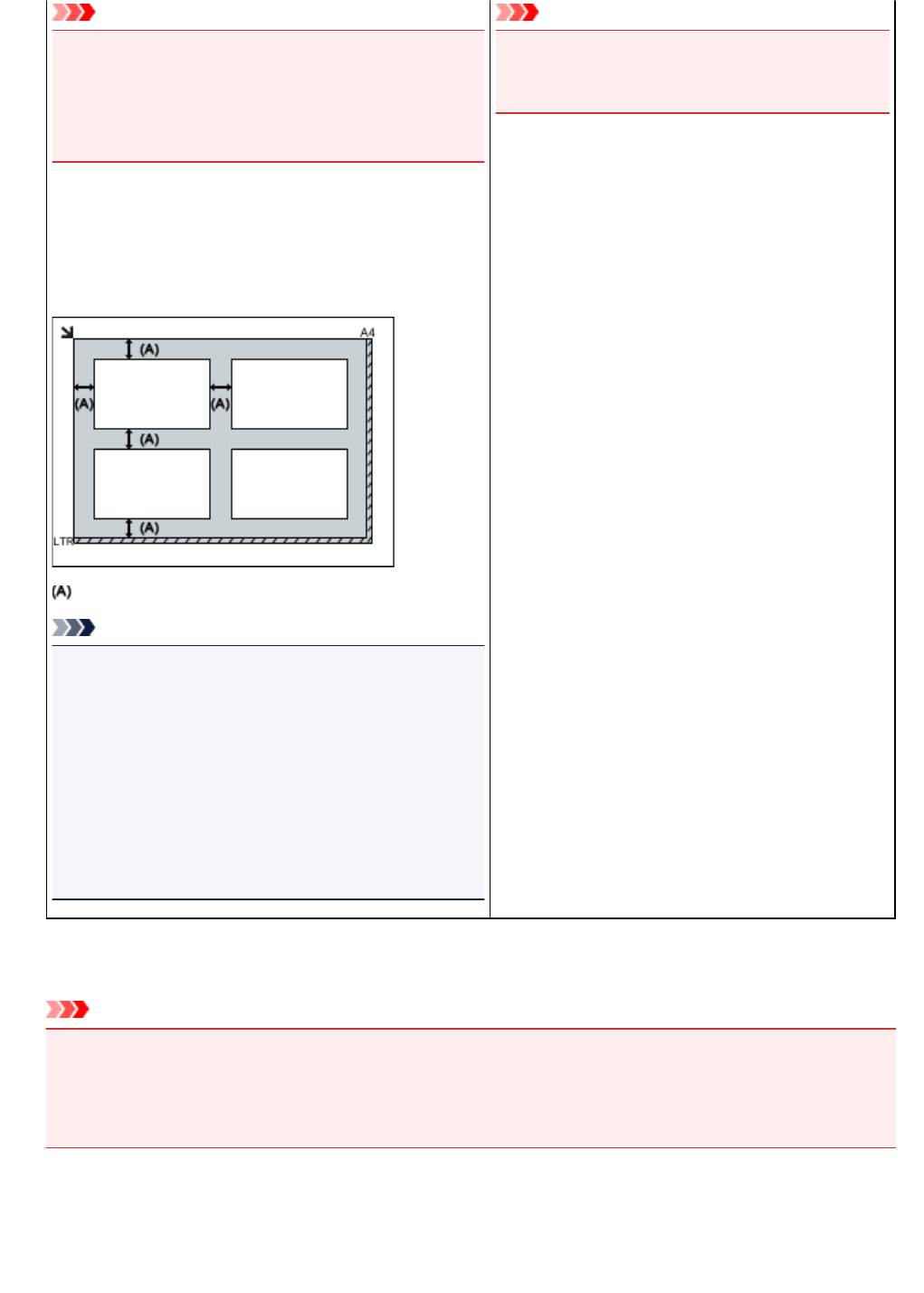
Important
•Large items (such as A4 size photos) that cannot be
placed away from the edges/arrow (alignment mark) of
the platen may be saved as PDF files. To save in a for-
mat other than PDF, scan by specifying the data for-
mat.
Placing Multiple Items:
Allow 0.4 inch (1 cm) or more space between the edges (di-
agonally striped area) of the platen and items, and between
items. Portions placed on the diagonally striped area cannot
be scanned.
more than 0.4 inch (1 cm)
Note
• You can place up to 12 items.
• You can place up to four items when the Compress
scanned images upon transfer checkbox is selected
in the Settings dialog box of IJ Scan Utility.
• With network connection, items may not be scanned
correctly when five or more items are placed. In that
case, reduce the number of items placed on the platen
to four or less, then scan again.
• Positions of slanted items (10 degrees or less) are cor-
rected automatically.
Important
•Refer to "Loading Originals" for your model from
Home of the Online Manual for details on the por-
tions in which items cannot be scanned.
Placing Documents (ADF (Auto Document Feeder))
Important
• Do not leave thick items on the platen when scanning from the ADF. May result in paper jam.
• Place and align documents of the same size when scanning two or more documents.
• Refer to "Originals You Can Load" for your model from Home of the Online Manual for details on
supported document sizes when scanning from the ADF.
1. Open the document tray.
846
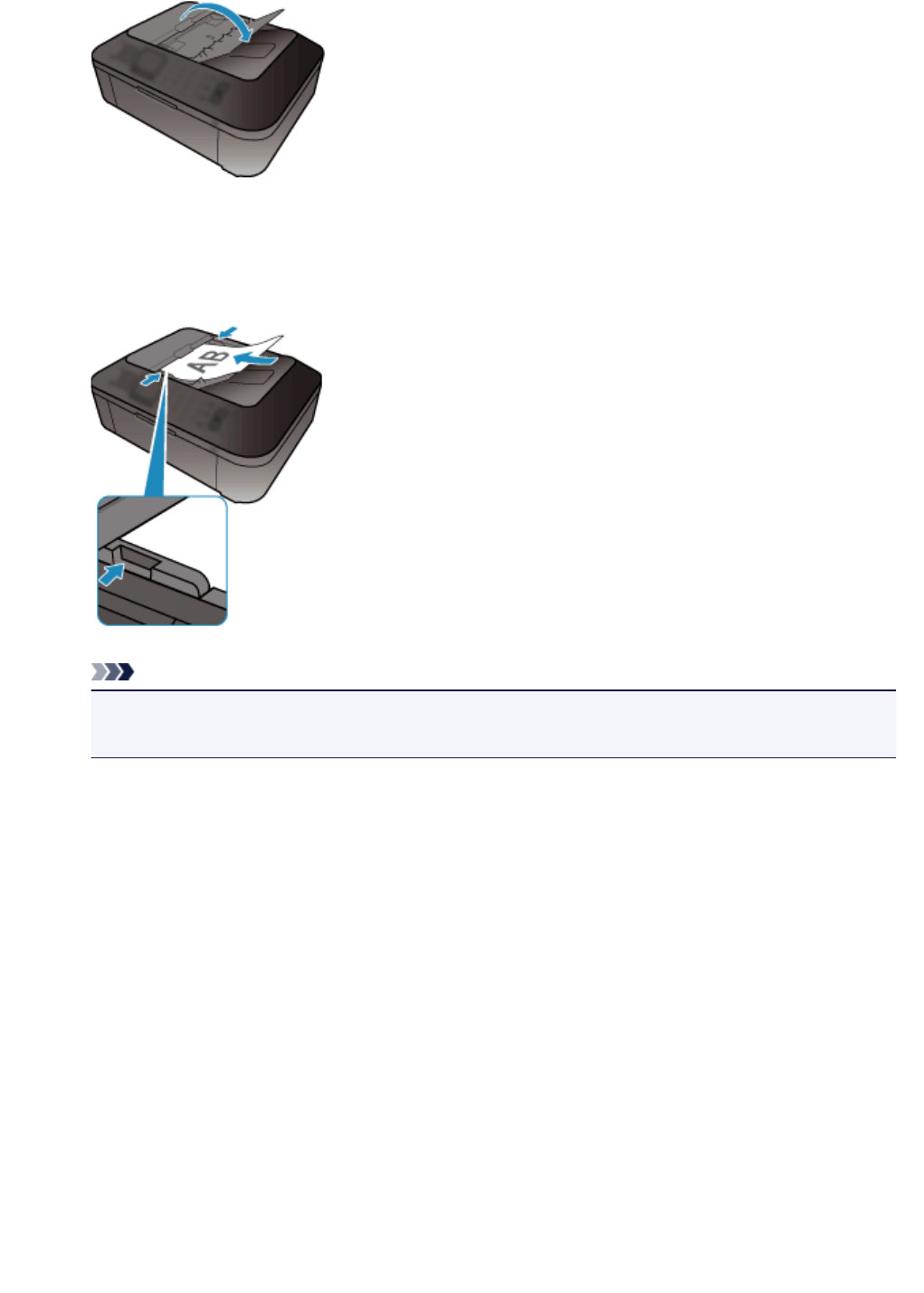
2. Place the documents on the ADF, then adjust the document guides to the width of the
documents.
Insert the documents face-up until a beep sounds.
Note
•When scanning duplex documents, place the front sides facing up. They will not be scanned in
the correct page order if placed the other way around.
847
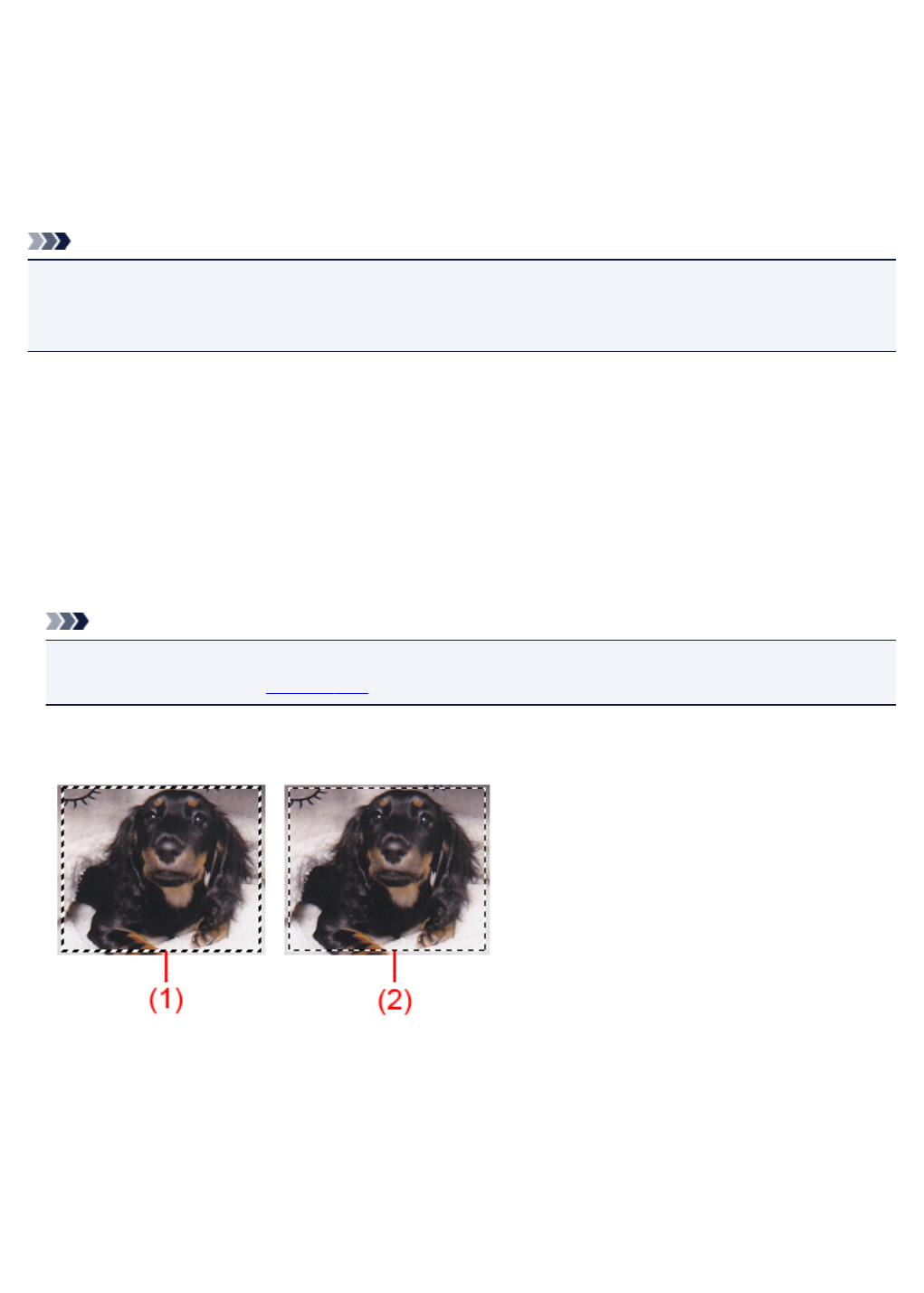
Adjusting Cropping Frames (ScanGear)
"Cropping" is the act of selecting the area you want to keep in an image and discarding the rest when
scanning it.
On the Basic Mode tab and Advanced Mode tab, you can specify cropping frames (scan areas) on the
image(s) displayed in the Preview area of the screen.
When you perform a scan, each area specified with a cropping frame will be scanned as a separate image.
Note
• In whole image view, you can specify multiple cropping frames on the preview image.
• Refer to "Adjusting Cropping Frames in the Image Stitch Window" for your model from Home of the
Online Manual for how to adjust cropping frames with IJ Scan Utility.
Initial Cropping Frame
In thumbnail view:
No cropping frame is specified. You can drag the mouse over a thumbnail to specify a cropping frame.
In whole image view:
An active cropping frame is automatically specified around the preview image. You can drag the cropping
frame in the Preview area to specify the area.
Note
• You can change the auto crop setting in the Preferences dialog box. Refer to Cropping Frame on
Previewed Images in "Preview Tab" for details.
Cropping Frame Types
(1) Thick cropping frame (rotating or stationary)
Represents a selected cropping frame. Appears only in whole image view. You can select multiple
cropping frames by clicking them while pressing the Ctrl key. Output size, image corrections, and
other settings on the Basic Mode tab or Advanced Mode tab will be applied to all the selected
cropping frames.
848
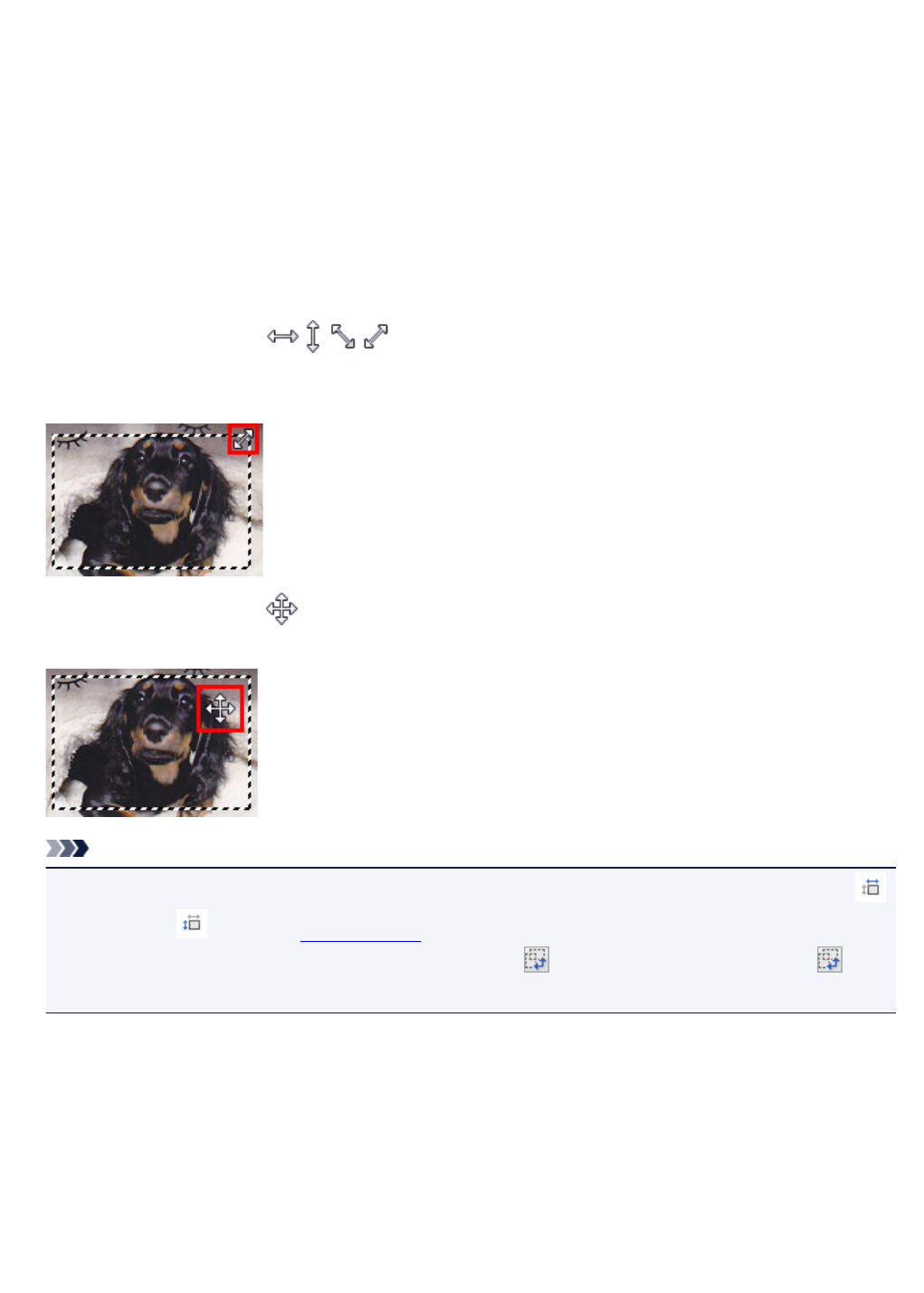
(2) Thin cropping frame
In thumbnail view:
Output size, image corrections, and other settings on the Basic Mode tab or Advanced Mode tab
will be applied.
In whole image view:
Represents an unselected cropping frame. The settings on the Basic Mode tab or Advanced Mode
tab will not be applied.
Adjusting a Cropping Frame
The cursor will change into (Arrow) when it is positioned over a cropping frame. If you
click and drag the mouse in the direction of the arrow, the cropping frame will expand or contract
accordingly.
The cursor will change into (Crosshair Arrow) when it is positioned within a cropping frame. Click and
drag the mouse to move the entire cropping frame.
Note
• On the Advanced Mode tab, you can specify the cropping frame size by entering the values into
(Width) and (Height) in Input Settings.
• You can rotate a cropping frame 90 degrees by clicking (Switch Aspect Ratio). However,
(Switch Aspect Ratio) is not available when Output Size is Flexible.
Creating Multiple Cropping Frames
In thumbnail view:
You can only create one cropping frame per image.
849
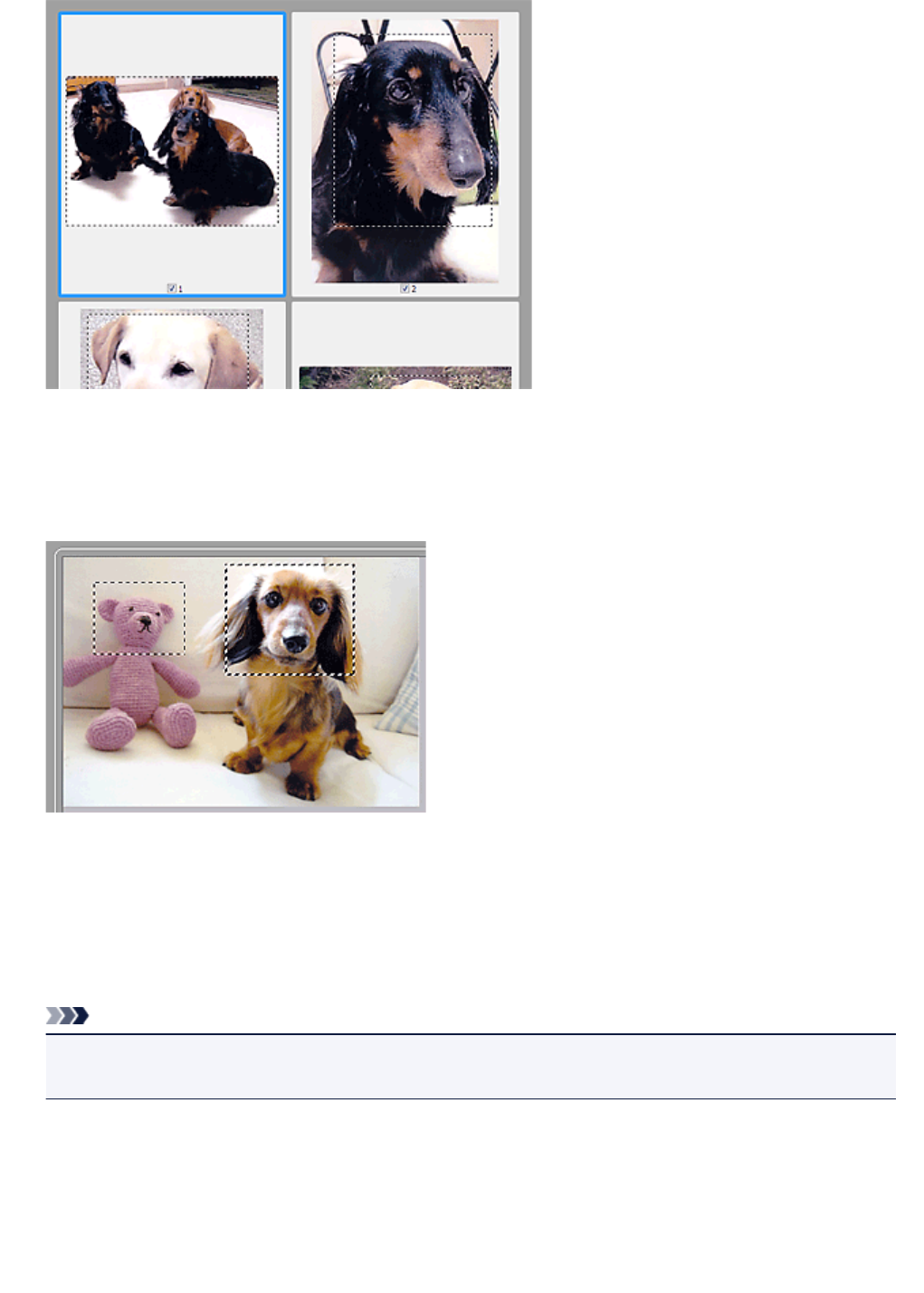
In whole image view:
Click and drag the mouse in a space outside the existing cropping frame to create a new cropping frame
in the Preview area. The new cropping frame will be the active cropping frame, and the old cropping frame
will be the unselected cropping frame.
You can create multiple cropping frames and apply different scan settings to each cropping frame.
You can also select multiple cropping frames by clicking them while pressing the Ctrl key.
If you select multiple cropping frames and change the settings on a tab at the right of ScanGear, the
settings will be applied to all the selected cropping frames.
When you create a new cropping frame, it retains the settings of the latest cropping frame.
Note
• Create up to 12 cropping frames.
• Scanning takes longer than usual when multiple cropping frames are selected.
Deleting Cropping Frames
In thumbnail view:
To delete a cropping frame, click an area outside the cropping frame on an image.
850
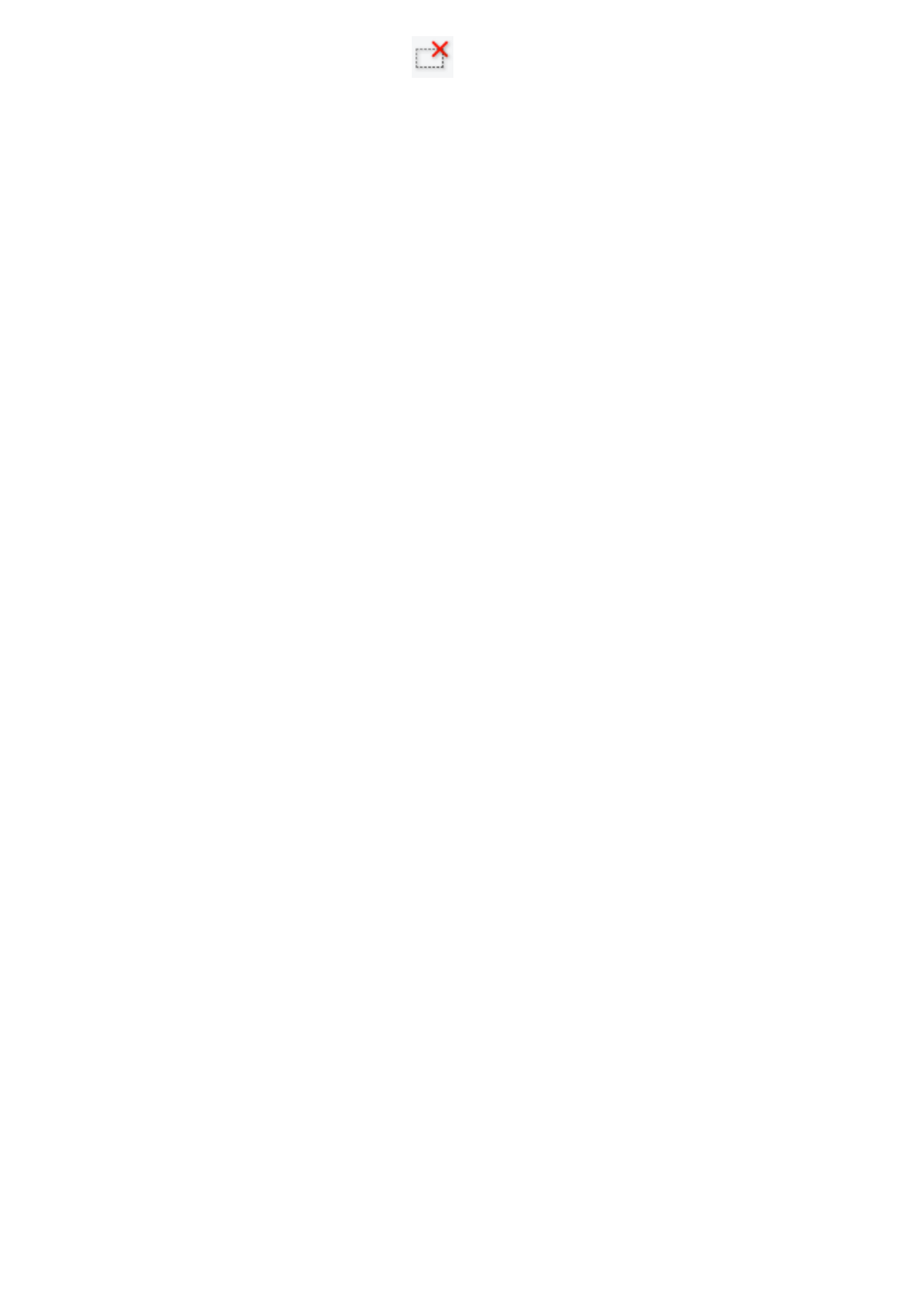
In whole image view:
To delete a cropping frame, select it and click (Remove Cropping Frame) on the Toolbar.
Alternatively, press the Delete key.
When there are multiple cropping frames, all the selected cropping frames (active cropping frame and
selected cropping frames) are deleted simultaneously.
851

General Notes (Scanner Driver)
ScanGear (scanner driver) is subject to the following restrictions. Keep these points in mind when using it.
Scanner Driver Restrictions
• When using the NTFS file system, the TWAIN data source may not be invoked. This is because the
TWAIN module cannot be written to the winnt folder for security reasons. Contact the computer's
administrator for help.
• Some computers (including laptops) connected to the machine may not resume correctly from
standby mode. In that case, restart the computer.
• Do not connect two or more scanners or multifunction printers with scanner function to the same
computer simultaneously. If multiple scanning devices are connected, you cannot scan from the
operation panel of the machine and also may experience errors while accessing the devices.
• Scanning may fail if the computer has resumed from sleep or standby mode. In that case, follow these
steps and scan again.
1. Turn off the machine.
2. Exit ScanGear, then disconnect the USB cable from the computer and reconnect it.
3. Turn on the machine.
• ScanGear cannot be opened in multiple applications at the same time. Within an application,
ScanGear cannot be opened for the second time when it is already open.
• Be sure to close the ScanGear window before closing the application.
• When using a network compatible model by connecting to a network, the machine cannot be
accessed from multiple computers at the same time.
• When using a network compatible model by connecting to a network, scanning takes longer than
usual.
• Make sure that you have adequate disk space available when scanning large images at high
resolutions. For example, at least 300 MB of free space is required to scan an A4 document at 600
dpi in full-color.
• ScanGear and WIA driver cannot be used at the same time.
• Do not enter the computer into sleep or hibernate state during scanning.
Applications with Restrictions on Use
• If you start Media Center included in Windows XP Media Center Edition 2005, you may not be able to
scan using the operation panel of the machine. In that case, restart the computer.
• You cannot scan images with Media Center included in Windows XP Media Center Edition 2005. Scan
with other applications such as IJ Scan Utility.
• Some applications may not display the TWAIN user interface. In that case, refer to the application's
manual and change the settings accordingly.
• Some applications do not support continuous scanning of multiple documents. In some cases, only
the first scanned image is accepted, or multiple images are scanned as one image. For such
applications, do not scan multiple documents from the ADF (Auto Document Feeder).
• To import scanned images into Microsoft Office 2000, first save them using IJ Scan Utility, then import
the saved files from the Insert menu.
852

• When scanning Platen size images into Microsoft Office 2003 (Word, Excel, PowerPoint, etc.), click
Custom Insert in the Insert Picture from Scanner or Camera screen. Otherwise, images may not
be scanned correctly.
• When scanning images into Microsoft Office 2007/Microsoft Office 2010 (Word, Excel, PowerPoint,
etc.), use Microsoft Clip Organizer.
• Images may not be scanned correctly in some applications. In that case, increase the operating
system's virtual memory and retry.
• When image size is too large (such as when scanning large images at high resolution), your computer
may not respond or the progress bar may remain at 0 % depending on the application. In that case,
cancel the action (for example by clicking Cancel on the progress bar), then increase the operating
system's virtual memory or reduce the image size/resolution and retry. Alternatively, scan the image
via IJ Scan Utility first, then save and import it into the application.
853
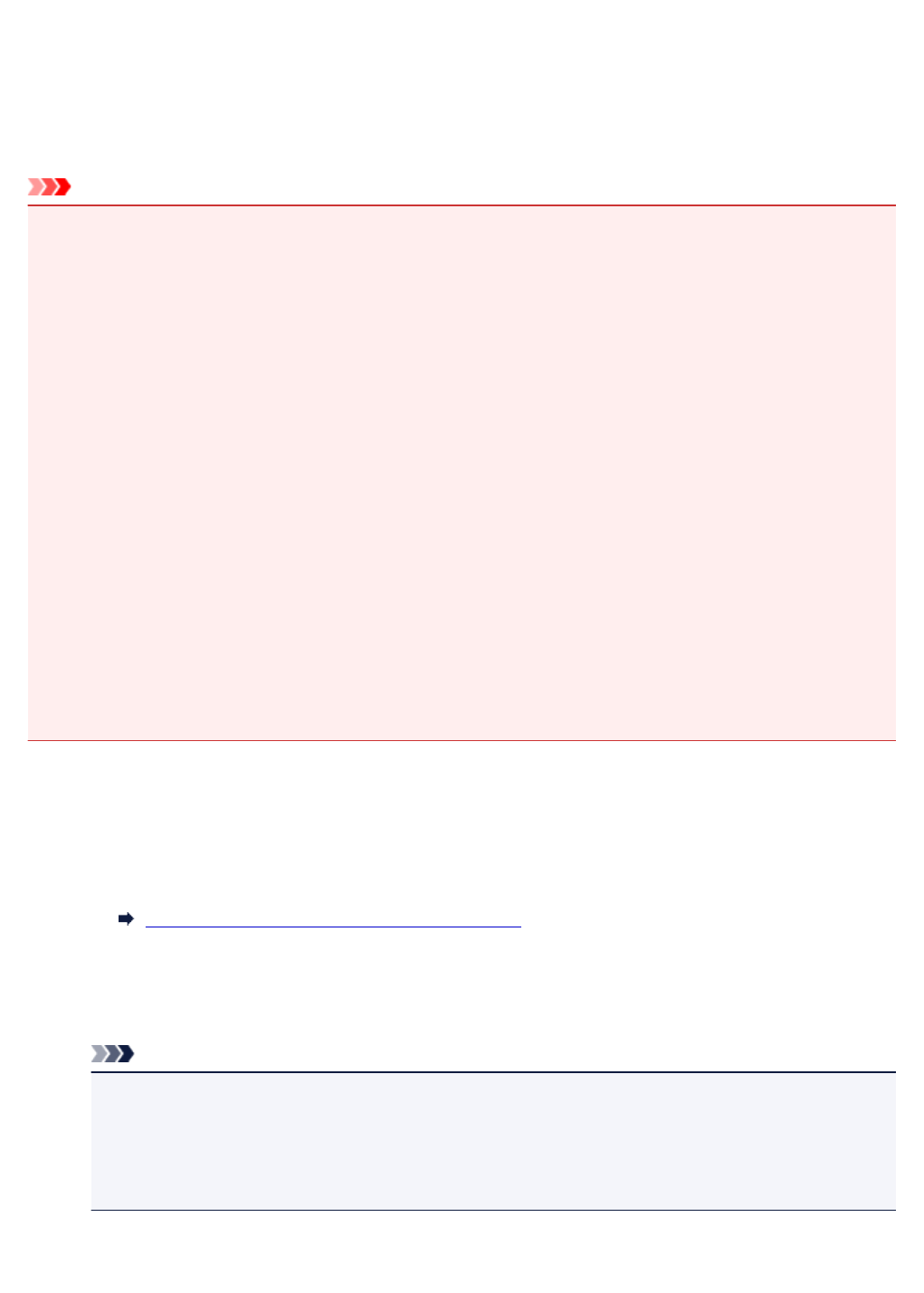
Scanning with WIA Driver
You can scan an item from a WIA (Windows Image Acquisition)-compliant application.
The procedure varies depending on the application. The following procedures are examples only.
Refer to the application's manual for details.
Important
• Some applications do not support continuous scanning from the ADF (Auto Document Feeder). Refer to
the application's manual for details.
• Follow these steps to enable scanning over a network.
•Windows 10/Windows 8.1/Windows 8:
1. Right-click Start menu, and then select File Explorer > Network.
2. In Network menu of displayed screen, select Add devices and printers.
3. In screen for adding device, select XXX_MAC address (where "XXX" is model name), and
then click Next.
•Windows 7/Windows Vista:
1. Follow the procedure below to open Network.
• Windows 7: From Start menu, select Computer > Network.
• Windows Vista: From Start menu, select Network.
2. Right-click XXX_MAC address (where "XXX" is model name) in the displayed screen, then
select Install.
The setting may have been completed already depending on your environment. In that case,
Uninstall appears.
Scanning with WIA Driver 2.0
The following is an example of scanning using "Windows Fax and Scan."
1. Place the item on the platen or ADF.
Positioning Originals (Scanning from Computer)
2. Select New on the File menu of "Windows Fax and Scan," then click Scan....
The scan setting screen appears.
Note
•If you have more than one scanner or printer, a scanner selection screen may appear. Double-
click the scanner you want to use.
•For USB connection: Canon XXX series (where "XXX" is the model name)
•For network connection: XXX series_MAC address (where "XXX" is the model name)
3. Specify the settings.
855
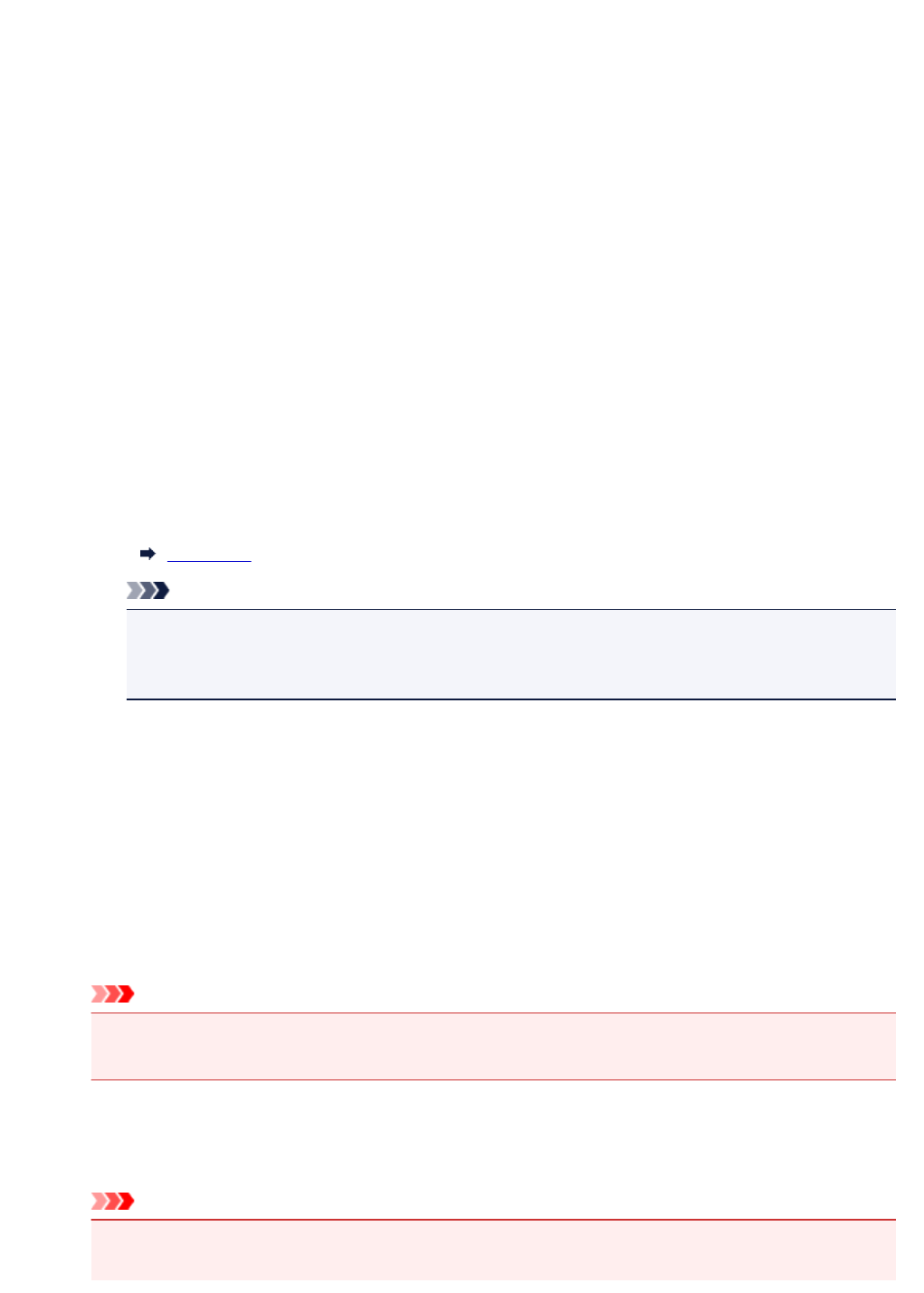
Scanner
The currently set product name is displayed. To change the scanner, click Change... and select
the product you want to use.
Profile
Select Photo (Default) or Documents according to the type of item to be scanned. To save a
new Profile, select Add profile.... You can specify the details in the Add New Profile dialog box.
Source
Select a scanner type. To scan from the platen, select Flatbed. To scan from the ADF, select
Feeder (Scan one side) or Feeder (Scan both sides).
Paper size
Select the paper size. Paper size can be set only when Source is Feeder (Scan one side) or
Feeder (Scan both sides).
Color format
Select the color mode in which to scan the item.
File type
Select a data format from JPEG, BMP, PNG, and TIFF.
Resolution (DPI)
Enter the resolution. Specify a value between 50 dpi and 600 dpi.
Resolution
Note
• When using the scanner or printer with network connection, the following resolutions can be
specified.
150 dpi / 300 dpi / 600 dpi
Brightness
Move the slider to adjust the brightness. Move it to the left to darken and right to brighten the
image. You can also enter a value (-100 to 100).
Contrast
Move the slider to adjust the contrast. Moving it to the left will decrease the contrast of the image,
thus softening the image. Moving it to the right will increase the contrast of the image, thus
sharpening the image. You can also enter a value (-100 to 100).
Preview or scan images as separate files
Select this checkbox to preview or scan multiple images as separate files.
Important
•When using the scanner or printer with network connection, you cannot specify Brightness,
Contrast, and Preview or scan images as separate files.
4. Click Preview to preview the image.
The preview image appears on the right.
Important
•With network connection, scan without preview when scanning documents from the ADF. If you
preview, place the document again and scan.
856
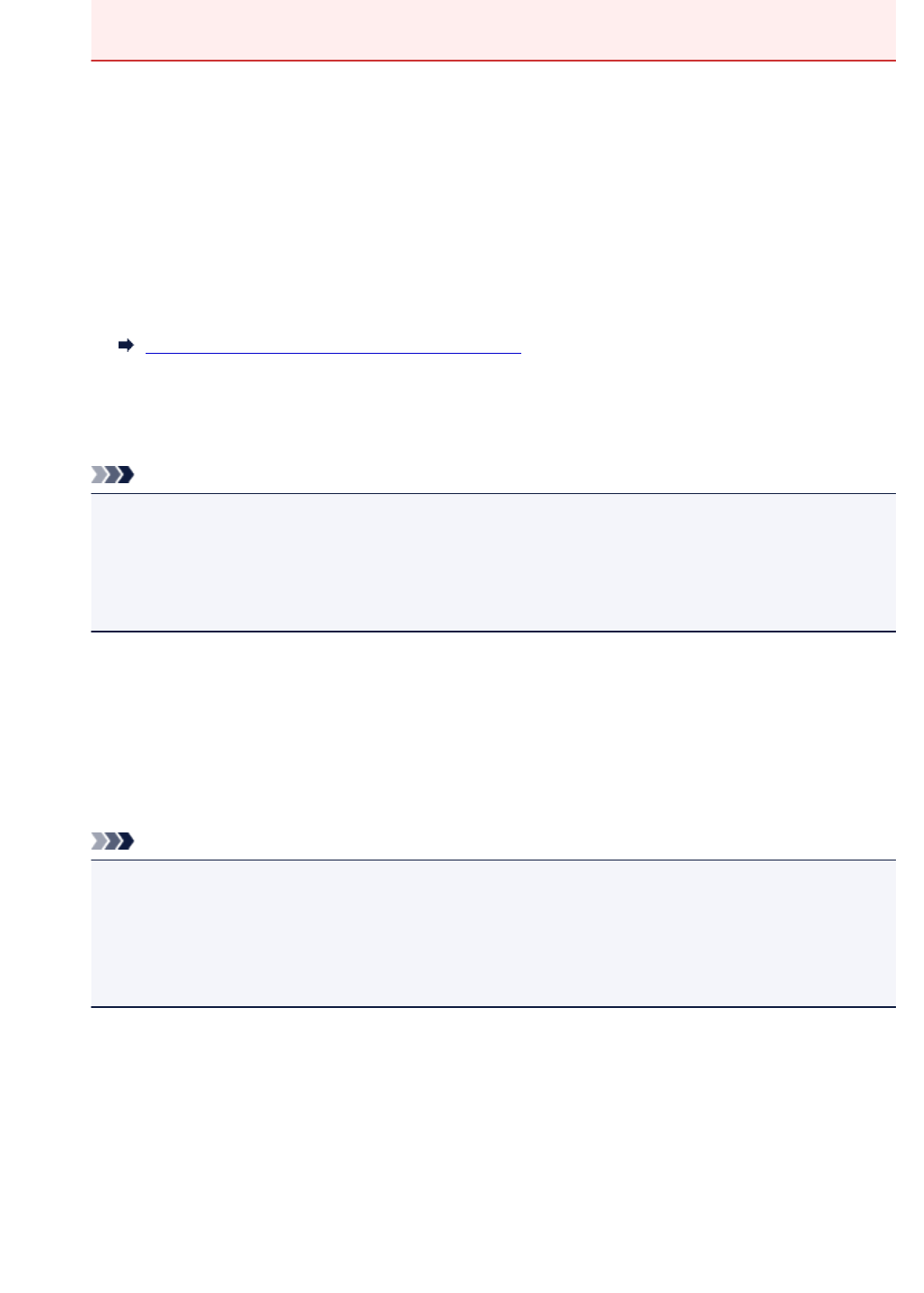
If there is document left in the ADF after previewing, press the OK button on the operation
panel and remove the document.
5. Click Scan.
Scanning starts, then the scanned image appears in the application.
Scanning with WIA Driver 1.0
The following is an example of scanning using "Paint."
1. Place the item on the platen or ADF.
Positioning Originals (Scanning from Computer)
2. Click From scanner or camera from the File menu of Paint. (Select the command to
scan an item in the application.)
Note
• If you have more than one scanner or printer, a scanner selection screen may appear. Double-
click the scanner you want to use.
• For USB connection: Canon XXX series (where "XXX" is the model name)
• For network connection: XXX series_MAC address (where "XXX" is the model name)
3. Select the paper source and type of picture according to the item to be scanned.
To scan from the platen, select Flatbed for Paper source. To scan from the ADF, select Document
Feeder.
Select the type of picture from Color picture, Grayscale picture, Black and white picture or text,
and Custom Settings.
Note
• When using the scanner or printer with network connection, the options for the type of picture
may differ from those displayed with USB connection.
•To scan with the values previously set in Adjust the quality of the scanned picture, select
Custom Settings.
•Selecting Document Feeder for Paper source enables you to select Page size.
4. Click Adjust the quality of the scanned picture and set the preferences as required.
Brightness
Move the slider to adjust the brightness. Move it to the left to darken and right to brighten the
image. You can also enter a value (-127 to 127).
Contrast
Move the slider to adjust the contrast. Moving it to the left will decrease the contrast of the image,
thus softening the image. Moving it to the right will increase the contrast of the image, thus
sharpening the image. You can also enter a value (-127 to 127).
857
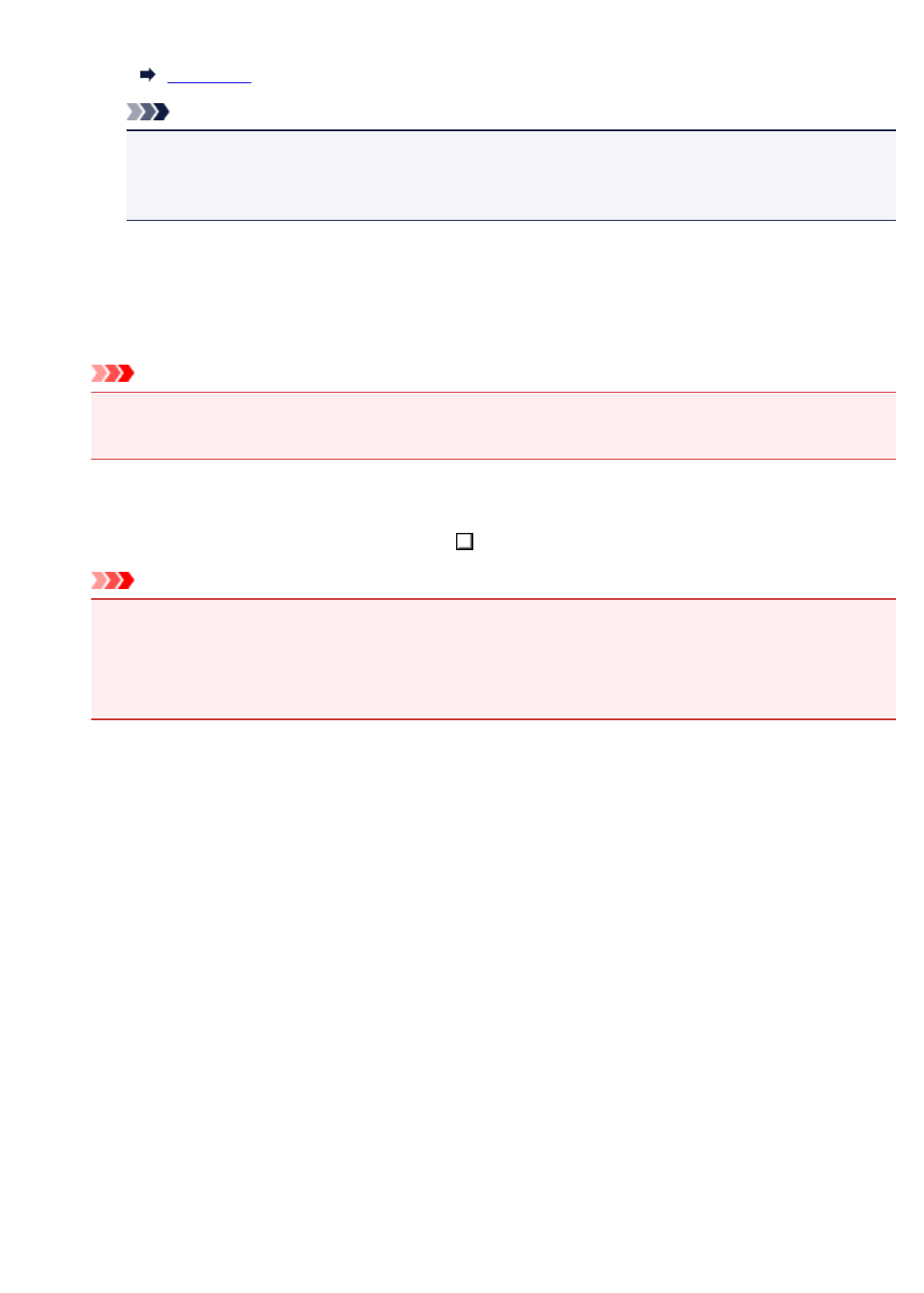
Resolution (DPI)
Enter the resolution. Specify a value between 50 dpi and 600 dpi.
Resolution
Note
• When using the scanner or printer with network connection, the following resolutions can be
specified.
150 dpi / 300 dpi / 600 dpi
Picture type
Select the type of scan you want for your item.
Reset
Click to restore the original settings.
Important
•When using the scanner or printer with network connection, you cannot specify Brightness and
Contrast.
5. Click Preview to preview the image.
The preview image appears on the right. Drag to specify the scan area.
Important
• With network connection, scan without preview when scanning documents from the ADF. If you
preview, place the document again and scan.
If there is document left in the ADF after previewing, press the OK button on the operation
panel and remove the document.
6. Click Scan.
Scanning starts, then the scanned image appears in the application.
858
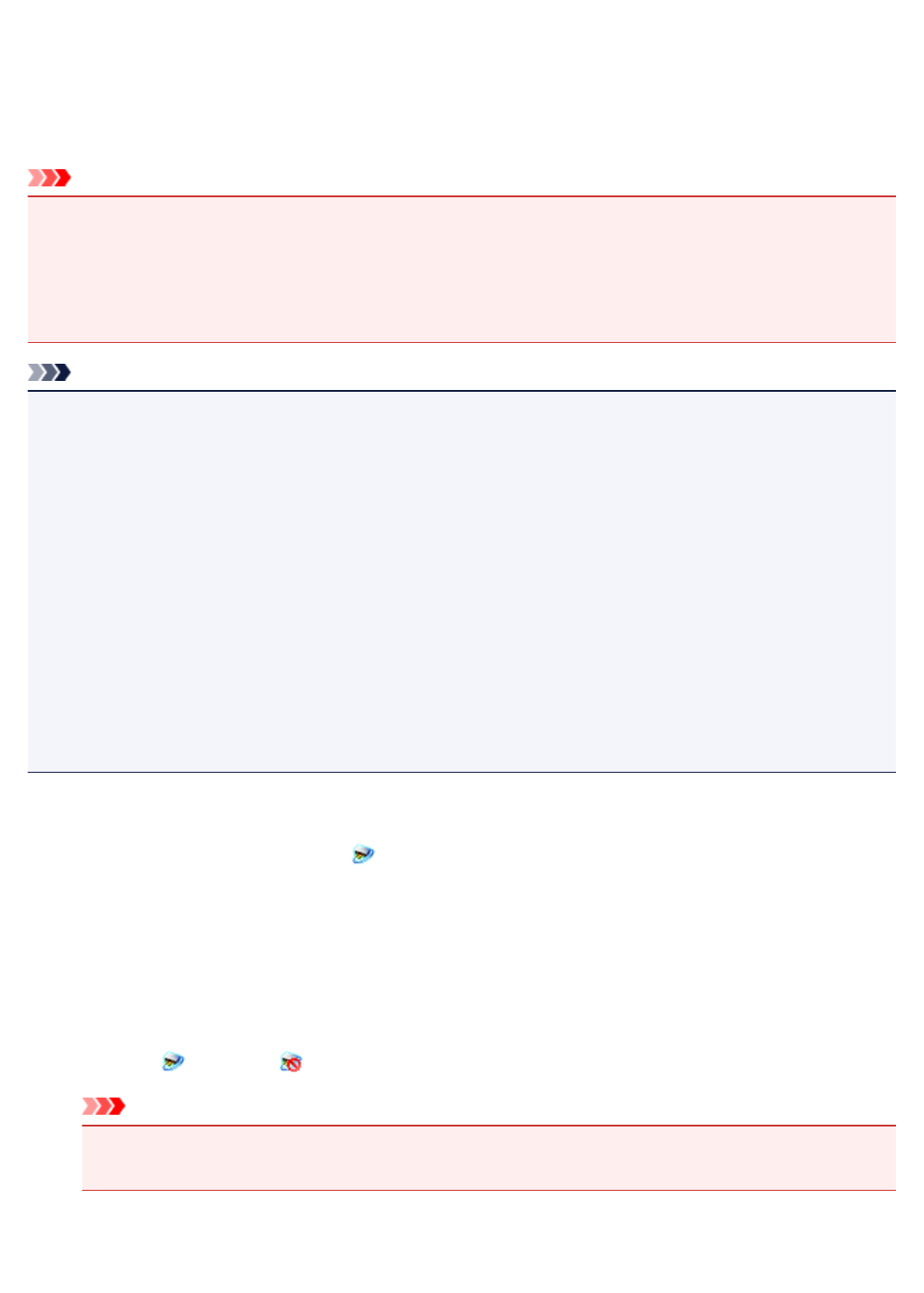
IJ Network Scanner Selector EX2 Menu and Setting Screen
IJ Network Scanner Selector EX2 allows you to select the scanners or printers to be used for scanning or
printing over a network from your computer or the operation panel.
After installation, IJ Network Scanner Selector EX2 appears in the notification area on the desktop.
Important
• If you cannot scan over a network, download and upgrade to the latest MP Drivers from our website.
• While IJ Network Scanner Selector EX2 is enabled, it periodically transmits packets to check whether it
can communicate with your scanner or printer over the network. When using the computer in a network
environment other than the one used to set up your scanner or printer, disable IJ Network Scanner
Selector EX2.
Note
• If the icon is not displayed in the notification area on the desktop, follow the procedure below to start.
•Windows 10:
From Start menu, click All apps > Canon Utilities > IJ Network Scanner Selector EX2.
•Windows 8.1/Windows 8:
Click IJ Network Scanner Selector EX2 on the Start screen.
If IJ Network Scanner Selector EX2 is not displayed on the Start screen, select the Search
charm, then search for "IJ Network Scanner Selector EX2".
•Windows 7/Windows Vista:
From the Start menu, click All Programs > Canon Utilities > IJ Network Scanner Selector EX2
> IJ Network Scanner Selector EX2.
Menu
Displays a menu when you right-click (IJ Network Scanner Selector EX2) in the notification area on
the desktop.
Disable Canon IJ Network Scanner Selector EX2 / Enable Canon IJ Network Scanner Selector EX2
Enables or disables IJ Network Scanner Selector EX2.
When you select Disable Canon IJ Network Scanner Selector EX2, you will not be able to scan
over a network from the operation panel.
Enabled: , Disabled:
Important
• When using a model with which you cannot scan over a network from the operation panel, you
cannot scan using the operation panel even if this setting is enabled.
Settings...
The Scan-from-PC Settings screen appears. You can select the model you want to use.
859
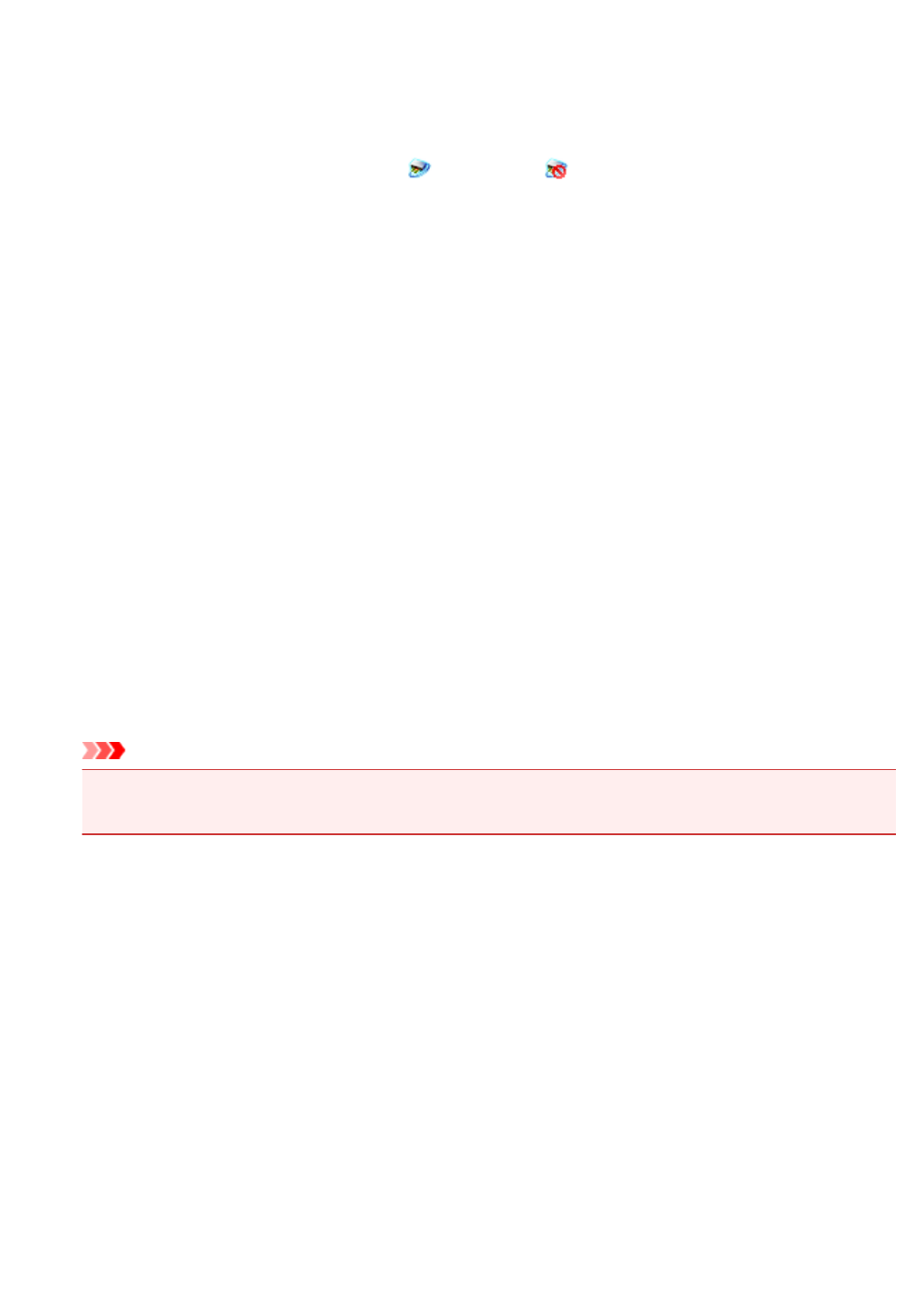
About
Displays the version information.
In the displayed dialog box, you can change the language to be used in the application. The change
will be reflected after restarting the computer.
Exit
Exits IJ Network Scanner Selector EX2; (Enabled) or (Disabled) disappears from the
notification area on the desktop.
Scan-from-PC Settings Screen
Right-click the icon from the notification area on the desktop, then select Settings... to display the Scan-
from-PC Settings screen.
Your scanner or printer must be selected with IJ Network Scanner Selector EX2 before scanning over a
network.
Scanners
MAC addresses of the scanners or printers that can be used over the network are displayed.
You can select one scanner or printer per model. Selecting a scanner or printer automatically enables
scanning from the operation panel.
Instructions
Opens this guide.
Scan-from-Operation-Panel Settings
The Scan-from-Operation-Panel Settings screen appears. You can select up to three scanners and
printers in total for scanning from the operation panel. You can scan items using the operation panel
of the selected scanner or printer, and send the scanned images to your computer over a network.
Important
• When using a model with which you cannot scan over a network from the operation panel, that
model does not appear in Scanners and the setting is not available.
Scan-from-Operation-Panel Settings Screen
Click Scan-from-Operation-Panel Settings in the Scan-from-PC Settings screen to display the Scan-
from-Operation-Panel Settings screen.
Scanners
MAC addresses of the scanners or printers that can be used over the network are displayed.
You can select up to three scanners and printers in total at the same time. Selecting a scanner or
printer automatically enables scanning from the operation panel.
Instructions
Opens this guide.
860
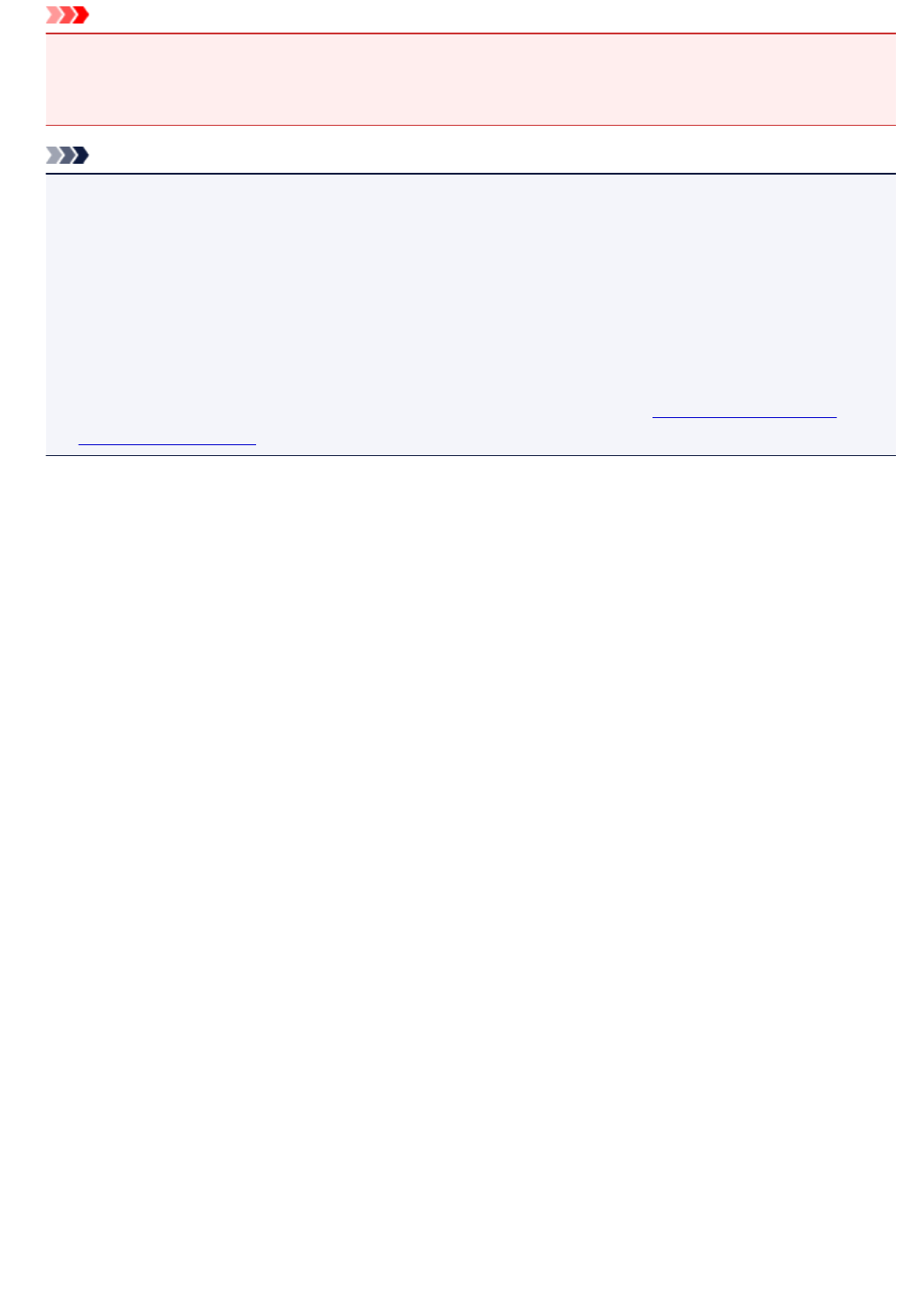
Important
• When using a model with which you cannot scan over a network from the operation panel, Scan-
from-Operation-Panel Settings may appear in the Scan-from-PC Settings screen; however, the
setting is not available.
Note
• If your scanner or printer does not appear, check the following, click OK to close the screen, then
reopen it and try selecting again.
• MP Drivers is installed
• Network settings of your scanner or printer is completed after installing the MP Drivers
• Network communication between your scanner or printer and computer is enabled
If your scanner or printer still does not appear, refer to "Problems with Network Communication" for
your model from Home of the Online Manual.
• You do not need to use this software when scanning via USB. Refer to "Uninstalling IJ Network
Scanner Selector EX2" to delete it. You can scan via USB even if it is not deleted.
861
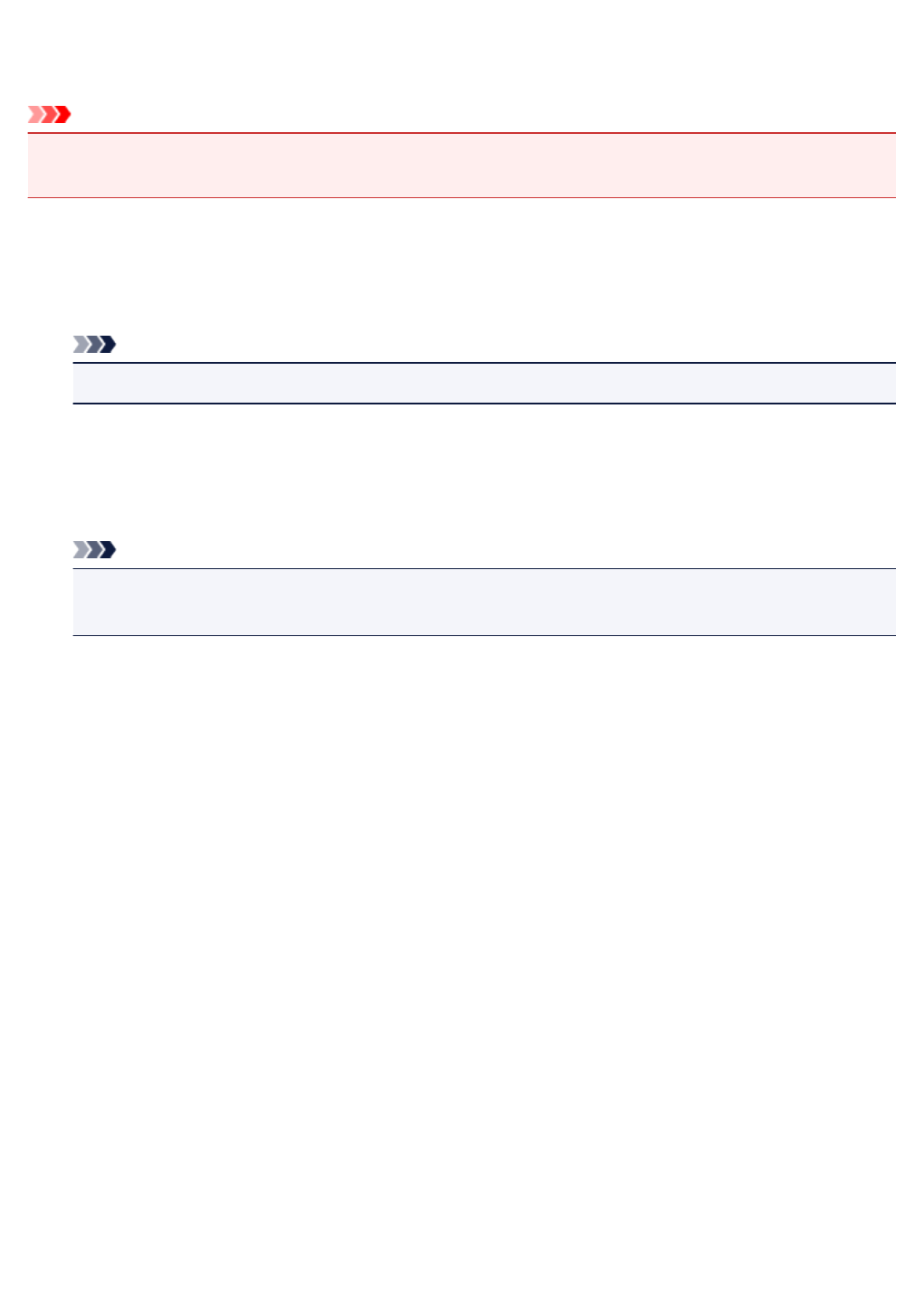
Uninstalling IJ Network Scanner Selector EX2
Follow the procedure below to uninstall IJ Network Scanner Selector EX2 from your computer.
Important
• You cannot scan over a network after uninstalling IJ Network Scanner Selector EX2.
• Log into a user account with administrator privilege.
1. Click Control Panel > Programs > Programs and Features.
2. Select Canon IJ Network Scanner Selector EX2, then click Uninstall/Change.
Note
•If the User Account Control screen appears, click Continue.
3. Click Yes when the confirmation message appears.
4. When uninstallation is complete, click OK.
Note
• When the message prompting you to restart your computer appears, click OK to restart your
computer.
862
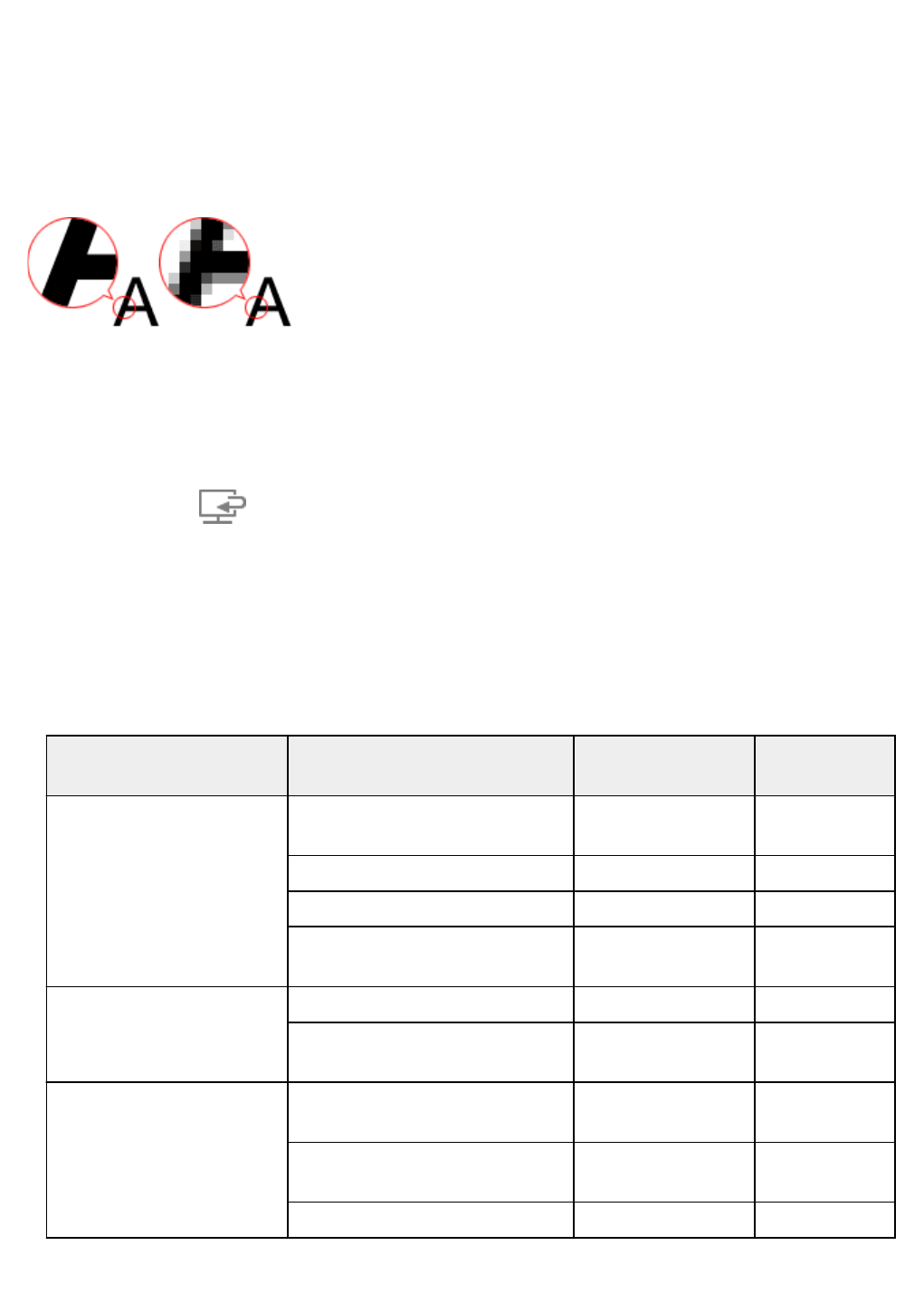
Resolution
The data in the image you have scanned is a collection of dots carrying information about brightness and
color. The density of these dots is called "resolution," and resolution will determine the amount of detail your
image contains. The unit of resolution is dots per inch (dpi). Dpi is the number of dots per inch (2.5 cm).
The higher the resolution (value), the more detail in your image; the lower the resolution (value), the less
detail.
How to Set the Resolution
You can set the resolution in the following screens.
IJ Scan Utility:
Resolution on the (Scanning from a Computer) tab of the Settings dialog box
ScanGear (Scanner Driver):
Output Resolution in Output Settings on the Advanced Mode tab
Appropriate Resolution Settings
Set the resolution according to the use of the scanned image.
Item Type Use Color Mode Appropriate
Resolution
Color photo
Copying
(Printing) Color 300 dpi
Creating a postcard Color 300 dpi
Saving to a computer Color 300 dpi
Using on a website or attaching to e-
mail Color 150 dpi
Black and white photo
Saving to a computer Grayscale 300 dpi
Using on a website or attaching to e-
mail Grayscale 150 dpi
Text document (document or
magazine)
Copying Color, Grayscale, or
Black and White 300 dpi
Attaching to e-mail Color, Grayscale, or
Black and White 150 dpi
Scanning text using OCR Color or Grayscale 300 dpi
864
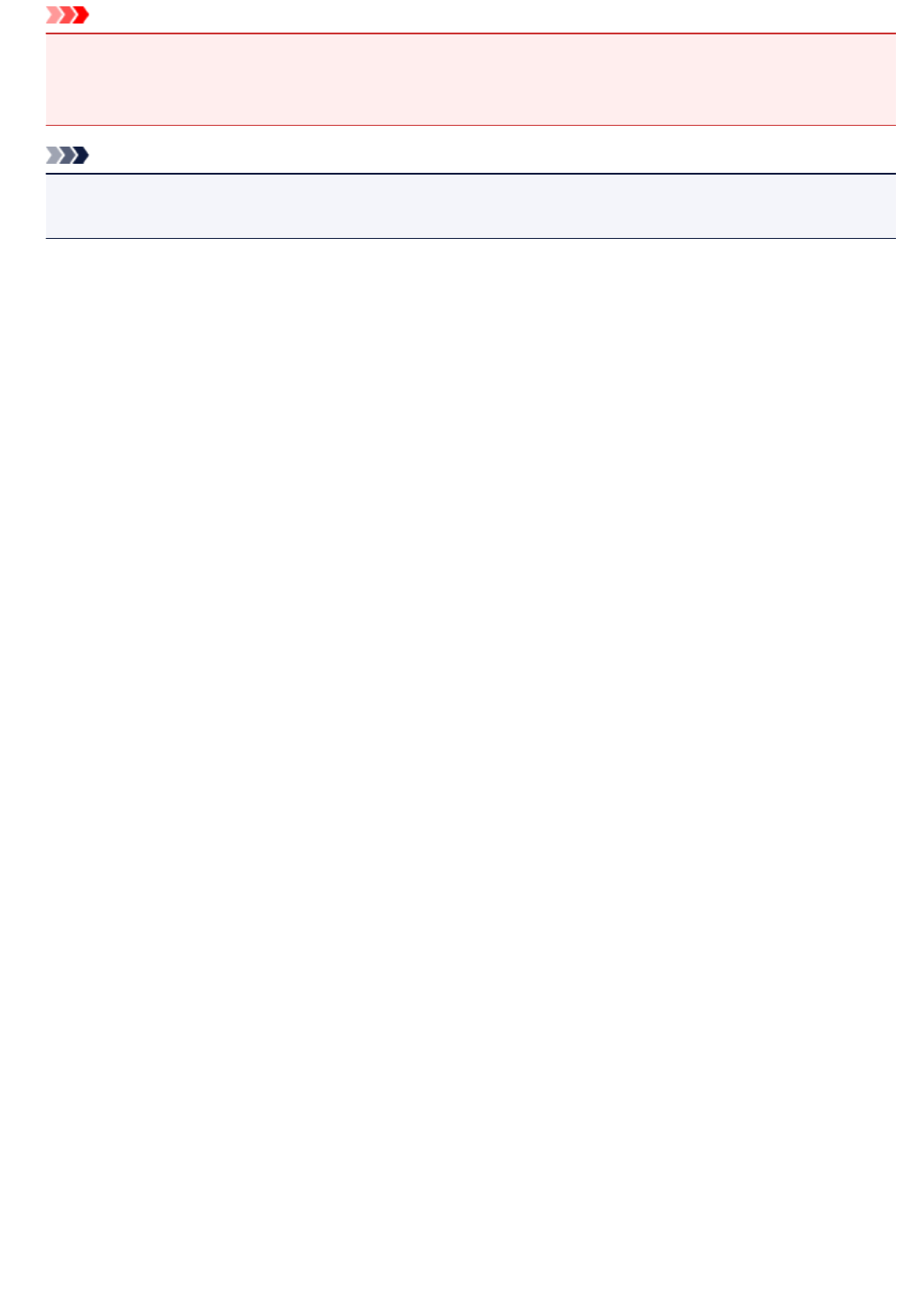
Important
• If you double the resolution, the data size of the scanned image quadruples. If the file is too large, the
processing speed will slow down significantly, and you will experience inconvenience such as lack of
memory. Set the minimum required resolution according to the use of the image.
Note
• When you will be printing the scanned image by enlarging it, scan by setting a higher resolution than
the recommended one above.
865
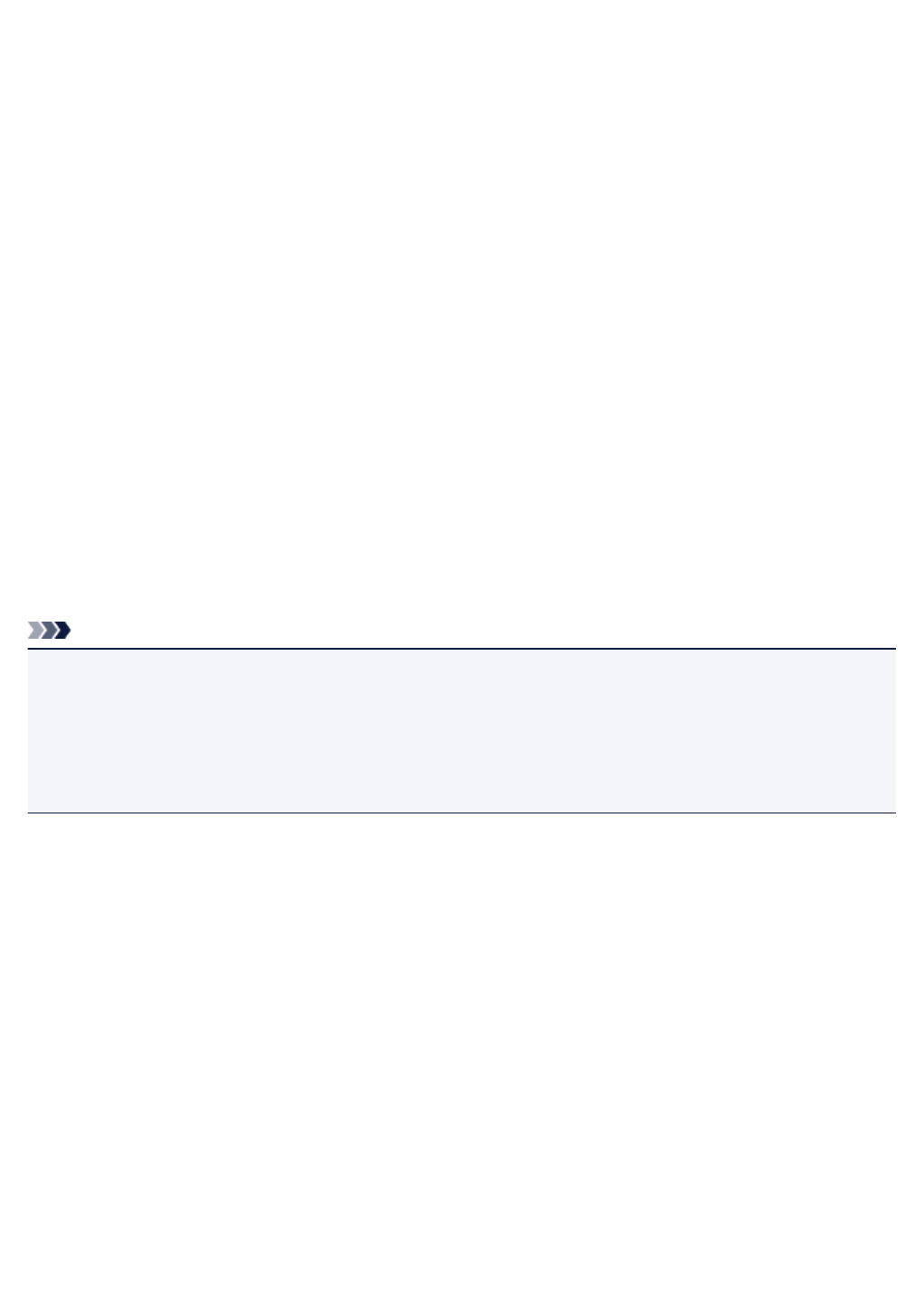
Data Formats
You can select a data format when saving scanned images. You should specify the most suitable data
format according to how you want to use the image on which application.
Available data formats vary by application and operating system (Windows or Mac OS).
See below for the characteristics of each image data format.
PNG (Standard File Extension: .png)
A data format often used on websites.
PNG is suitable for editing saved images.
JPEG (Standard File Extension: .jpg)
A data format often used on websites and for digital camera images.
JPEG features high compression rates. JPEG images slightly degrade every time they are saved, and
cannot be returned to their original state.
JPEG is not available for black and white images.
TIFF (Standard File Extension: .tif)
A data format featuring a relatively high compatibility between various computers and applications.
TIFF is suitable for editing saved images.
Note
• Some TIFF files are incompatible.
• IJ Scan Utility supports the following TIFF file formats.
• Uncompressed, black and white binary
• Uncompressed, RGB (8 bits per channel)
• Uncompressed, Grayscale
PDF (Standard File Extension: .pdf)
A data format for electronic documents, developed by Adobe Systems Incorporated.
It can be used on various computers and operating systems, and fonts can be embedded as well; therefore,
people in different environments can exchange the files without being aware of the differences.
866
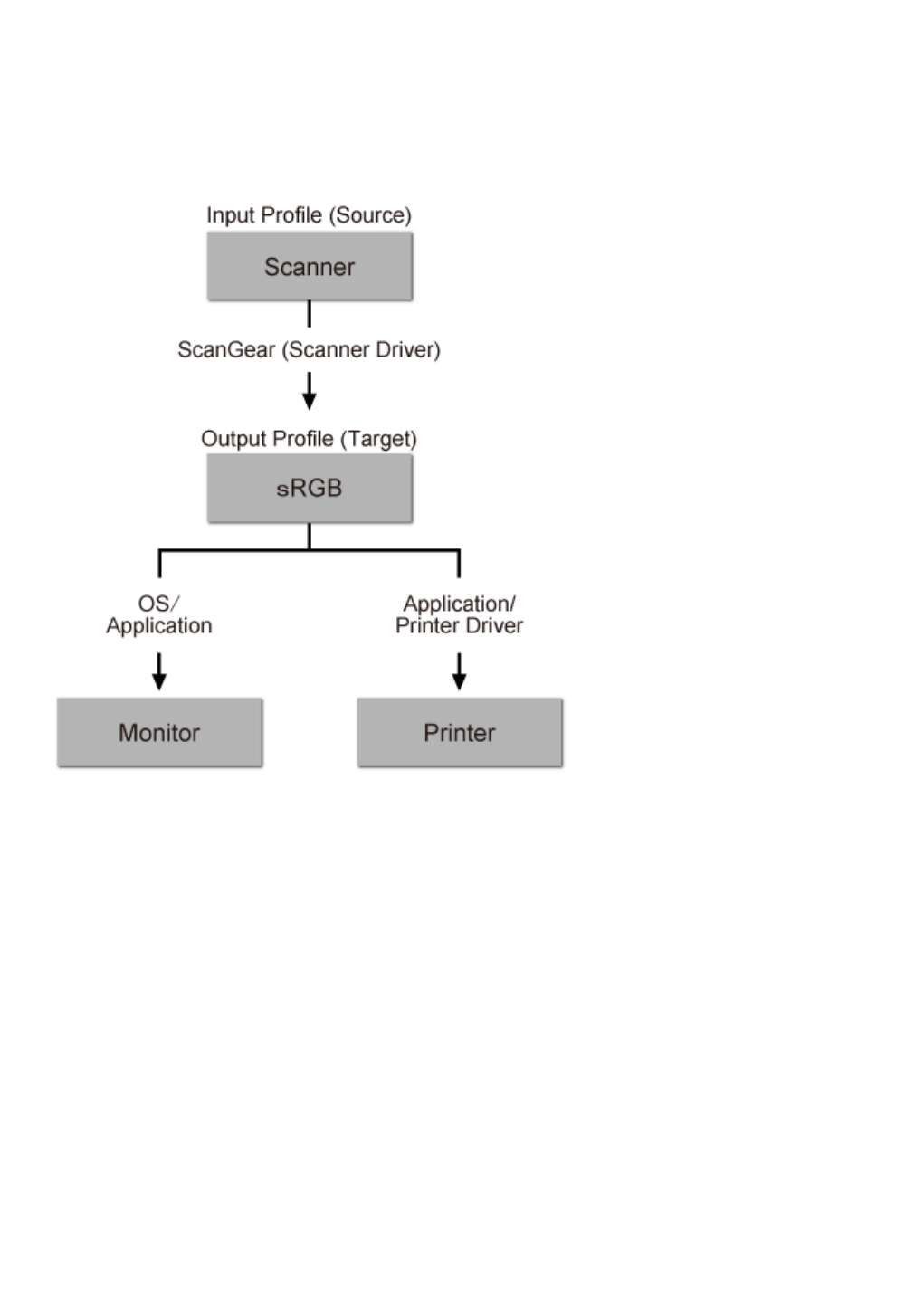
Color Matching
"Color Matching" is the act of making adjustments so that the color tones match between the original item,
the monitor display, and the color printout. On your scanner or printer, the color tones are adjusted as shown
below.
Example: When sRGB is selected as the output profile (target):
The image's color space is converted from the scanner's color space to sRGB by ScanGear.
When displaying on a monitor, the image's color space is converted from sRGB to the monitor's color space
based on the operating system's monitor settings and the application's working space settings.
When printing, the image's color space is converted from sRGB to the printer's color space based on the
application's print settings and the printer driver's settings.
867
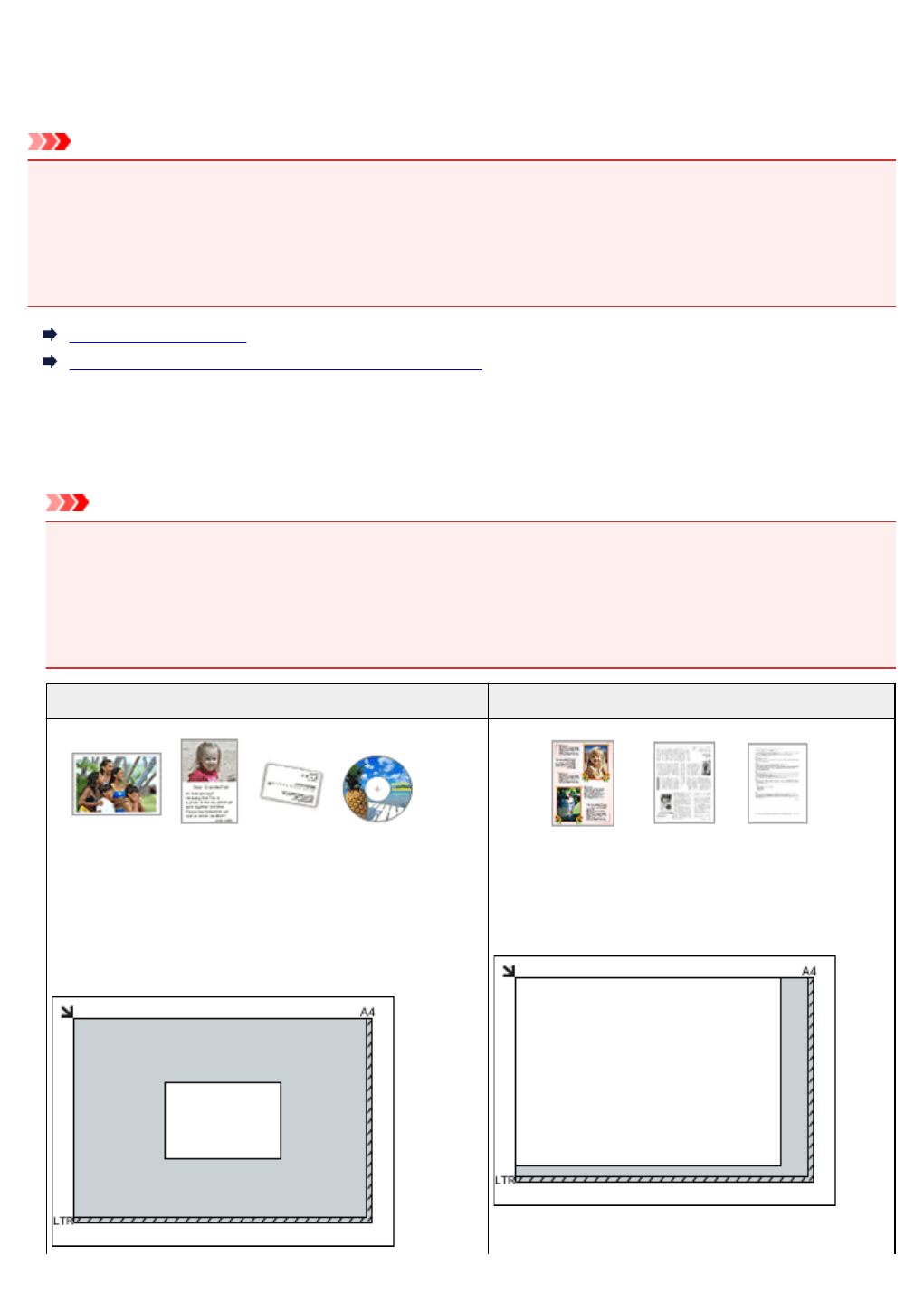
Positioning Originals (Scanning from Computer)
Learn how to place items on the platen or ADF (Auto Document Feeder) of your scanner or printer. Place
items correctly according to the type of item to be scanned. Otherwise, items may not be scanned correctly.
Important
• Do not place objects on the document cover. When you open the document cover, the objects may fall
into your scanner or printer, resulting in malfunction.
• Close the document cover when scanning.
• Do not touch the operation panel buttons or LCD (Liquid Crystal Display) monitor when opening/closing
the document cover. May result in unintended operation.
Placing Items (Platen)
Placing Documents (ADF (Auto Document Feeder))
Placing Items (Platen)
Place items as described below to scan by detecting the item type or size automatically.
Important
• When scanning by specifying the paper size in IJ Scan Utility or ScanGear (scanner driver), align an
upper corner of the item with the corner at the arrow (alignment mark) of the platen.
• Photos that have been cut to various shapes and items smaller than 1.2 inches (3 cm) square cannot
be cropped accurately when scanning.
• Reflective disc labels may not be scanned as expected.
For Photos, Postcards, Business Cards, or BD/DVD/CD For Magazines, Newspapers, or Documents
Placing a Single Item:
Place the item face-down on the platen, with 0.4 inch (1
cm) or more space between the edges (diagonally striped
area) of the platen and the item. Portions placed on the di-
agonally striped area cannot be scanned.
Place the item face-down on the platen and align an
upper corner of the item with the corner at the arrow
(alignment mark) of the platen. Portions placed on the
diagonally striped area cannot be scanned.
868
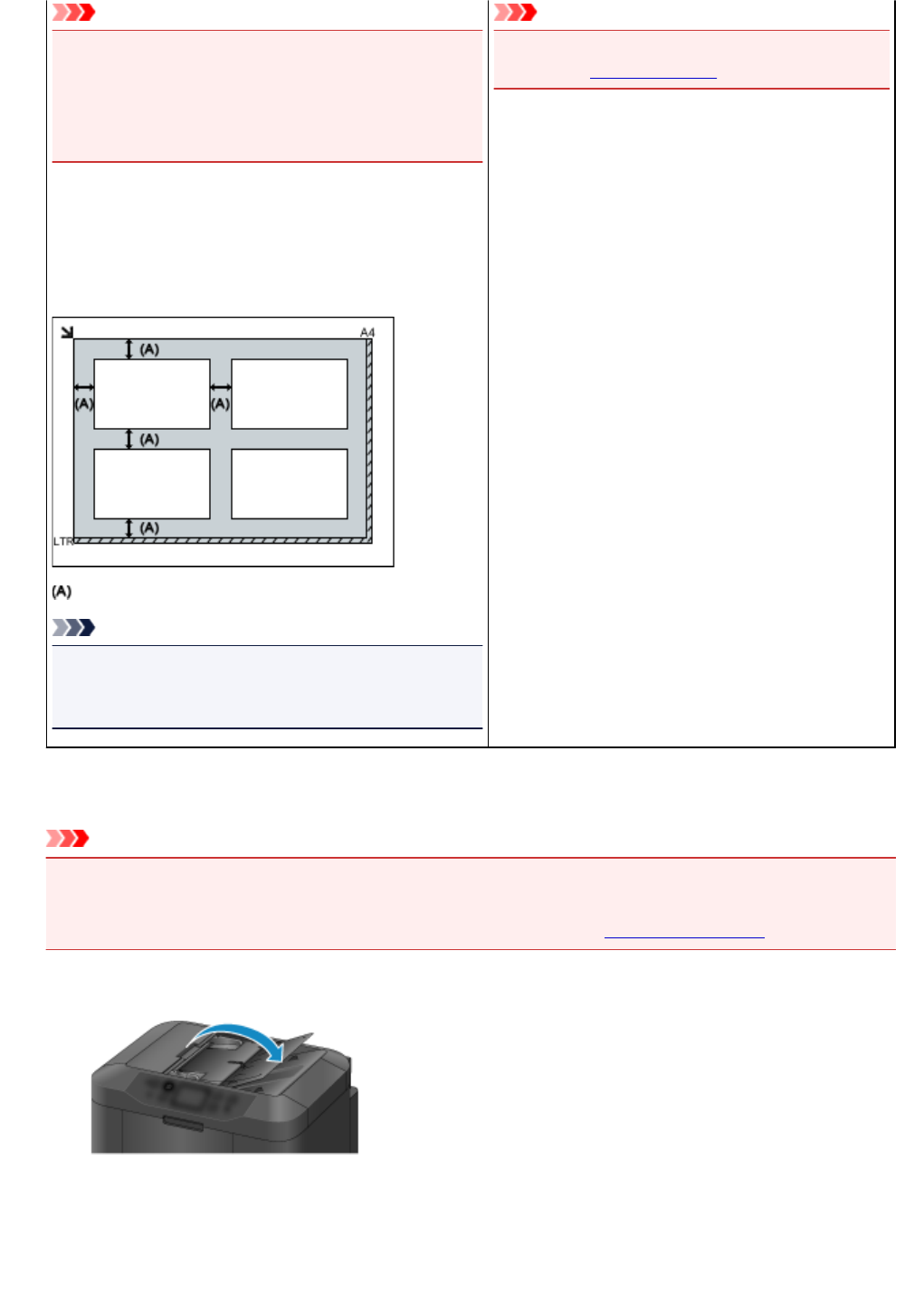
Important
•Large items (such as A4 size photos) that cannot be
placed away from the edges/arrow (alignment mark) of
the platen may be saved as PDF files. To save in a for-
mat other than PDF, scan by specifying the data for-
mat.
Placing Multiple Items:
Allow 0.4 inch (1 cm) or more space between the edges (di-
agonally striped area) of the platen and items, and between
items. Portions placed on the diagonally striped area can-
not be scanned.
more than 0.4 inch (1 cm)
Note
• You can place up to 12 items.
• Positions of slanted items (10 degrees or less) are cor-
rected automatically.
Important
•For the portions in which items cannot be scan-
ned, see Loading Originals.
Placing Documents (ADF (Auto Document Feeder))
Important
• Do not leave thick items on the platen when scanning from the ADF. May result in paper jam.
• Place and align documents of the same size when scanning two or more documents.
• For supported document sizes when scanning from the ADF, see Supported Originals.
1. Open the document tray.
2. Place the documents on the ADF, then adjust the document guides to the width of the
documents.
869
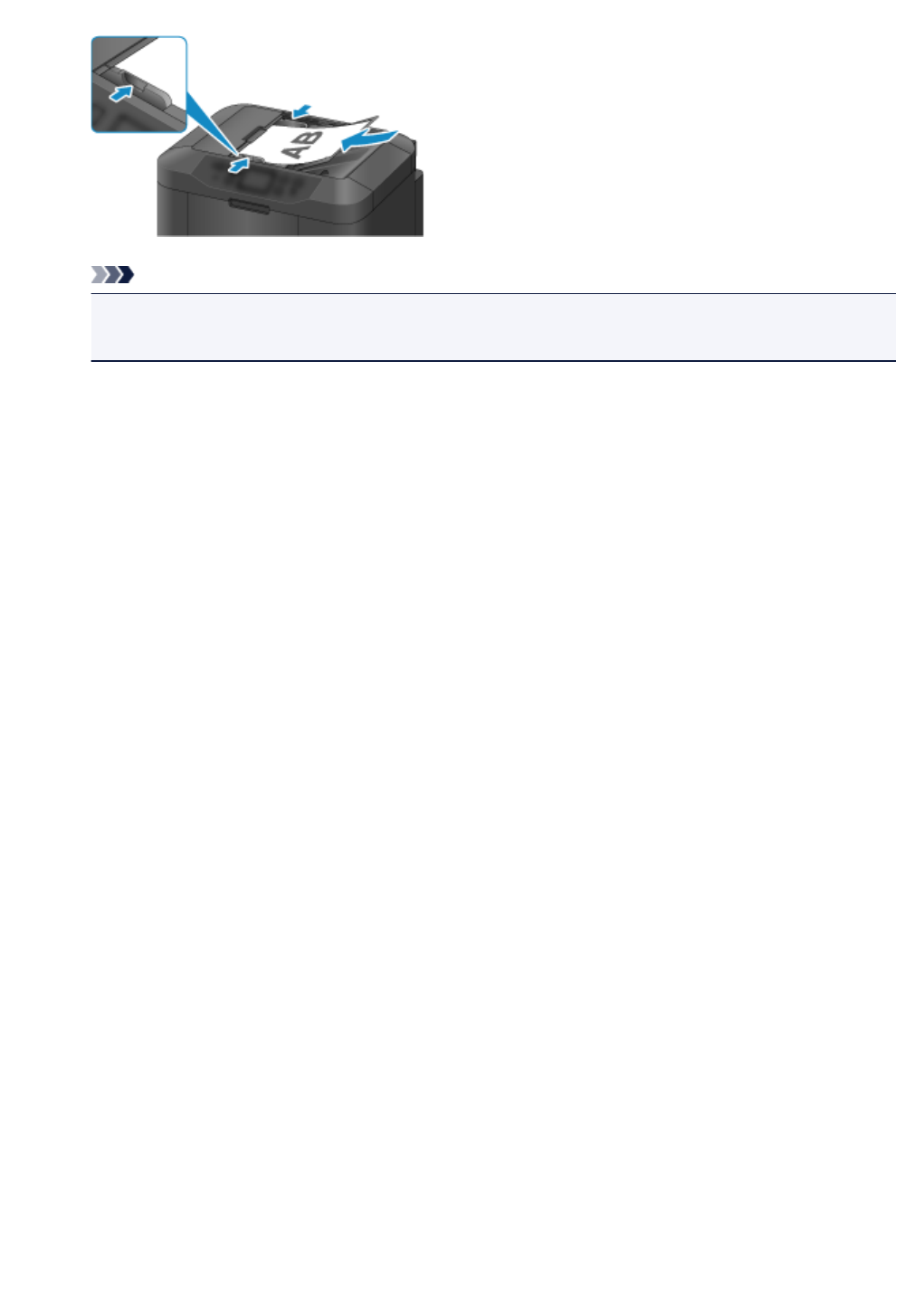
Insert the documents face-up until a beep sounds.
Note
•When scanning duplex documents, place the front sides facing up. They will not be scanned
correctly if placed the other way around.
870
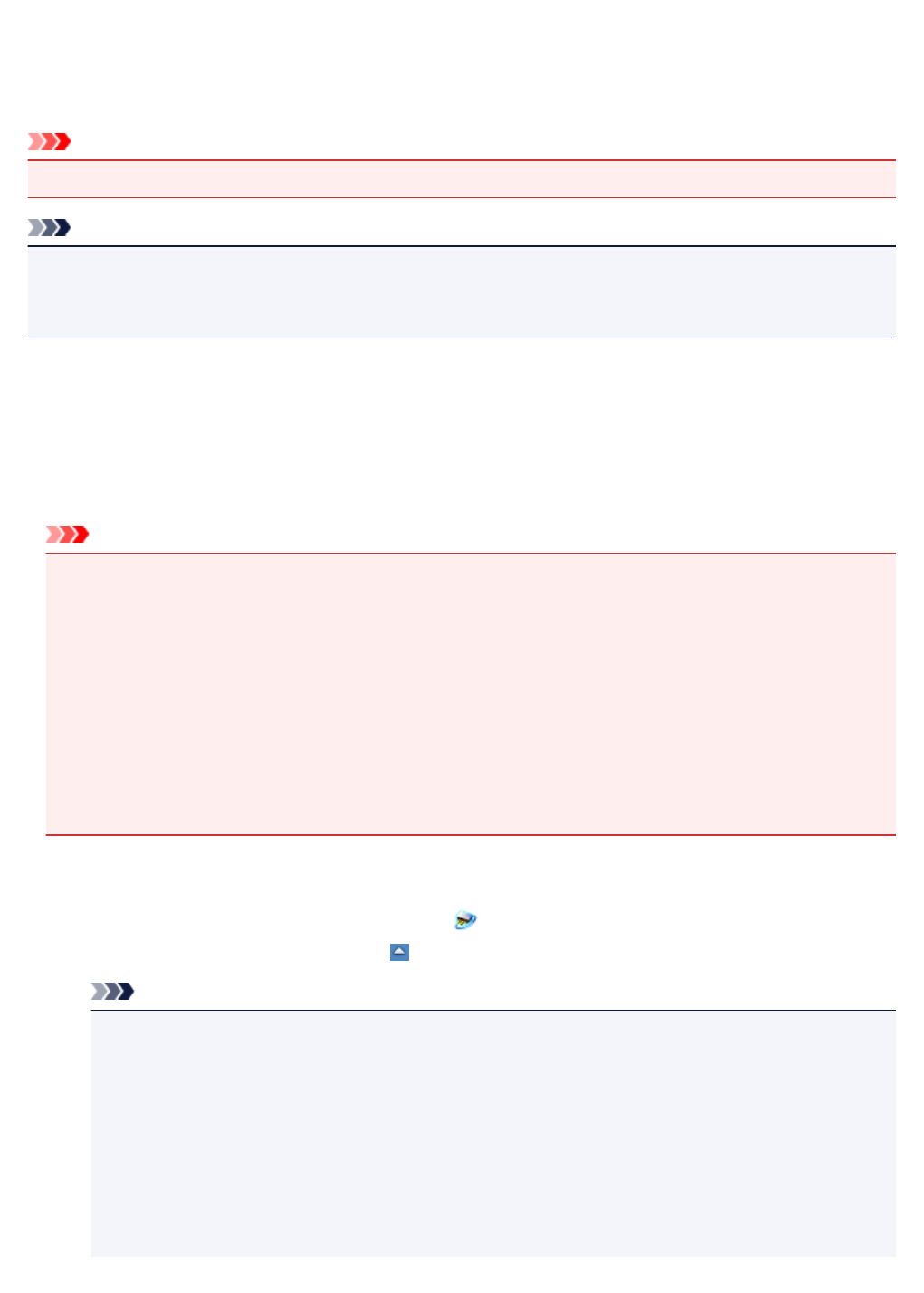
Network Scan Settings
You can connect your scanner or printer to a network to share it among multiple computers or scan images
into a specified computer.
Important
• Multiple users cannot scan at the same time.
Note
• Complete the network settings of your scanner or printer beforehand from the Setup CD-ROM or by
following the instructions our website.
• With network connection, scanning takes longer than USB connection.
Complete the following settings to enable scanning over a network.
Specifying Your Scanner or Printer
Use IJ Network Scanner Selector EX to specify the scanner you want to use. By specifying the scanner,
you can scan over a network from your computer or the operation panel.
Important
• If the product you want to use is changed with IJ Network Scanner Selector EX, the product used for
scanning with IJ Scan Utility changes as well. The product for scanning from the operation panel also
changes.
If your scanner or printer is not selected in IJ Scan Utility, check that it is selected with IJ Network
Scanner Selector EX.
Refer to "IJ Network Scanner Selector EX2 Menu and Setting Screen" for your model from Home of
the Online Manual for details.
• To scan from the operation panel, specify your scanner or printer with IJ Network Scanner Selector
EX beforehand.
1. Check that IJ Network Scanner Selector EX is running.
If IJ Network Scanner Selector EX is running, (IJ Network Scanner Selector EX2) appears in the
notification area on the desktop. Click to check the hidden icons as well.
Note
•If the icon is not displayed in the notification area on the desktop, follow the procedure below to
start.
•Windows 10:
From the Start menu, click All apps > Canon Utilities > IJ Network Scanner Selector
EX2.
•Windows 8.1/Windows 8:
Click IJ Network Scanner Selector EX2 on the Start screen.
871
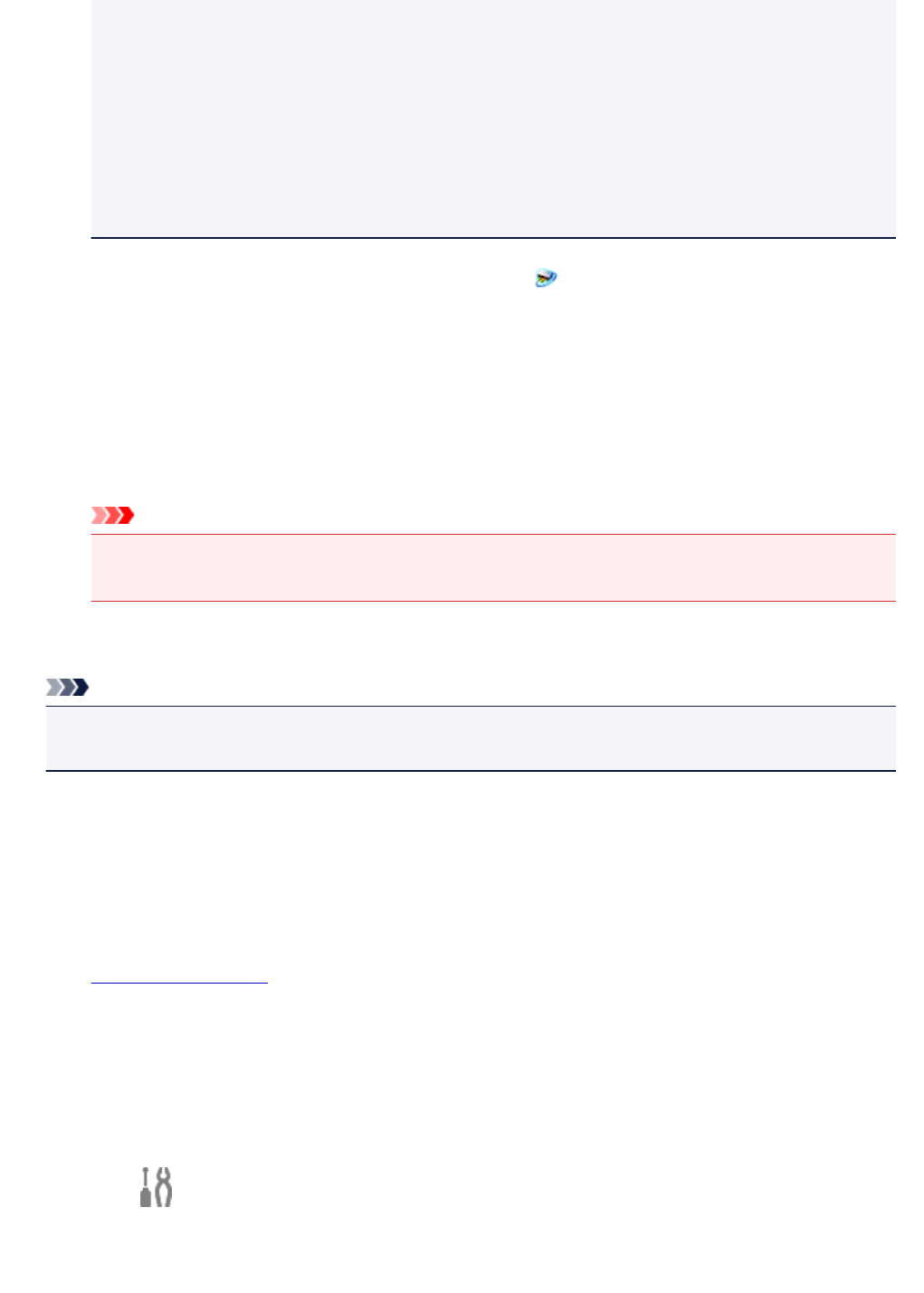
If IJ Network Scanner Selector EX2 is not displayed on the Start screen, select the
Search charm, then search for "IJ Network Scanner Selector EX".
•Windows 7/Windows Vista:
From the Start menu, click All Programs > Canon Utilities > IJ Network Scanner
Selector EX2 > IJ Network Scanner Selector EX2.
The icon appears in the notification area on the desktop, and the Scan-from-PC Settings screen
appears. In that case, skip ahead to Step 3.
2. In the notification area on the desktop, right-click (IJ Network Scanner Selector EX2),
then select Settings....
The Scan-from-PC Settings screen appears.
3. Select your scanner or printer from Scanners.
Normally, the MAC address of your scanner or printer is already selected after the network setup. In
that case, you do not need to select it again.
Important
• If multiple scanners exist on the network, multiple model names appear. In that case, you can
select one scanner per model.
4. Click OK.
Note
• The scanner selected in the Scan-from-PC Settings screen will be automatically selected in the Scan-
from-Operation-Panel Settings screen as well.
Setting for Scanning with IJ Scan Utility
To scan from IJ Scan Utility using a scanner or printer connected to a network, specify your scanner or
printer with IJ Network Scanner Selector EX, then follow the steps below to change the connection status
between it and the computer.
1. Start IJ Scan Utility.
2. Select "Canon XXX series Network" (where "XXX" is the model name) for Product
Name.
3. Click Settings... to use another scanner connected to a network.
4. Click (General Settings), then click Select in Product Name.
The Scan-from-PC Settings screen of IJ Network Scanner Selector EX appears.
Select the scanner you want to use and click OK.
872
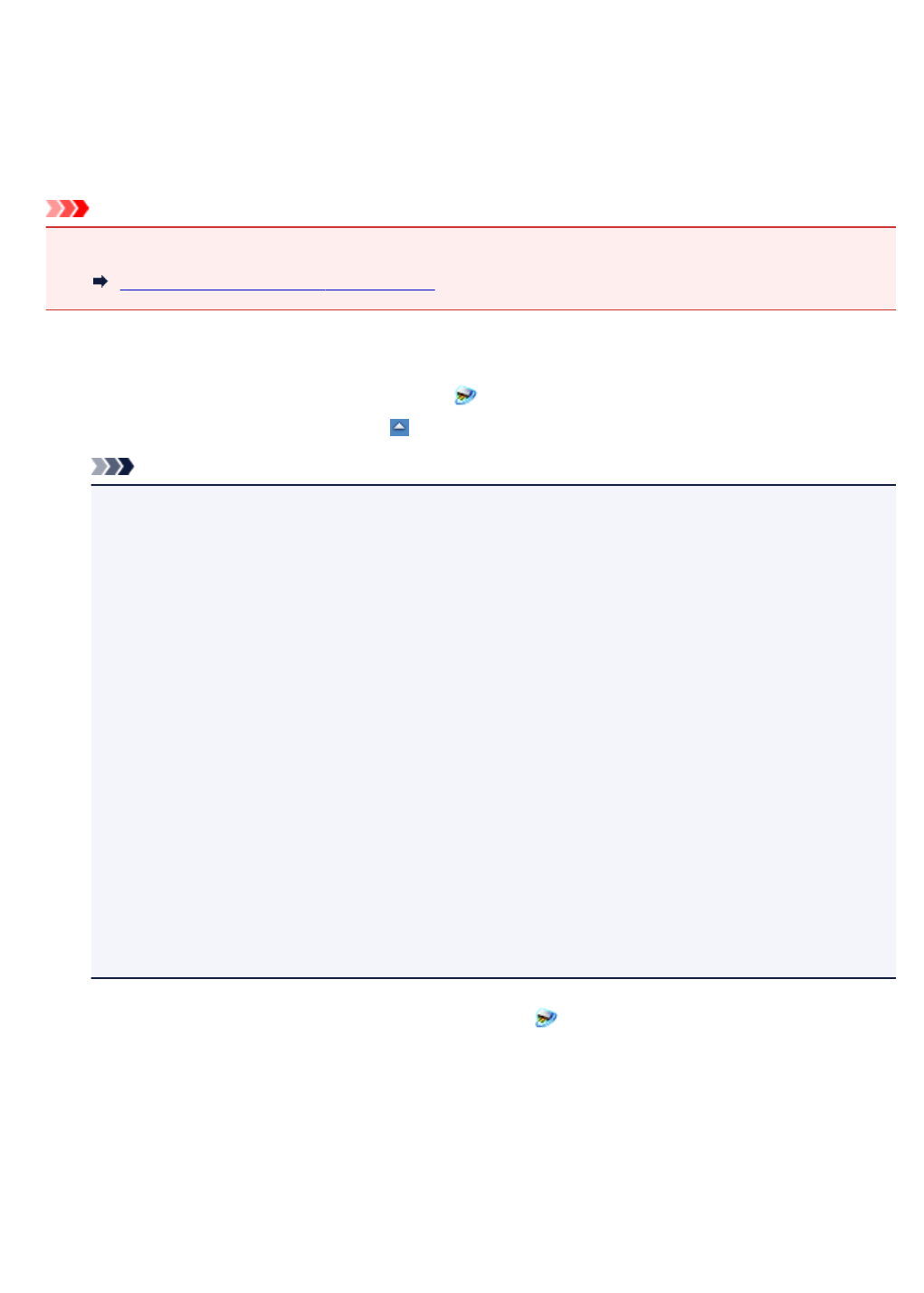
5. In the Settings (General Settings) dialog box, click OK.
The IJ Scan Utility main screen reappears. You can scan via a network connection.
Setting for Scanning from the Operation Panel
You can make the setting for scanning from the operation panel.
Important
• Set IJ Scan Utility to use your scanner or printer via a network connection beforehand.
Setting for Scanning with IJ Scan Utility
1. Check that IJ Network Scanner Selector EX is running.
If IJ Network Scanner Selector EX is running, (IJ Network Scanner Selector EX2) appears in the
notification area on the desktop. Click to check the hidden icons as well.
Note
•If the icon is not displayed in the notification area on the desktop, follow the procedure below to
start.
•Windows 10:
From the Start menu, click All apps > Canon Utilities > IJ Network Scanner Selector
EX2.
•Windows 8.1/Windows 8:
Click IJ Network Scanner Selector EX2 on the Start screen.
If IJ Network Scanner Selector EX2 is not displayed on the Start screen, select the
Search charm, then search for "IJ Network Scanner Selector EX".
•Windows 7/Windows Vista:
From the Start menu, click All Programs > Canon Utilities > IJ Network Scanner
Selector EX2 > IJ Network Scanner Selector EX2.
The icon appears in the notification area on the desktop, and the Scan-from-PC Settings screen
appears. In that case, skip ahead to Step 3.
2. In the notification area on the desktop, right-click (IJ Network Scanner Selector EX2),
then select Settings....
The Scan-from-PC Settings screen appears.
3. Click Scan-from-Operation-Panel Settings.
The Scan-from-Operation-Panel Settings screen appears.
4. Select your scanner or printer from Scanners and click OK.
873
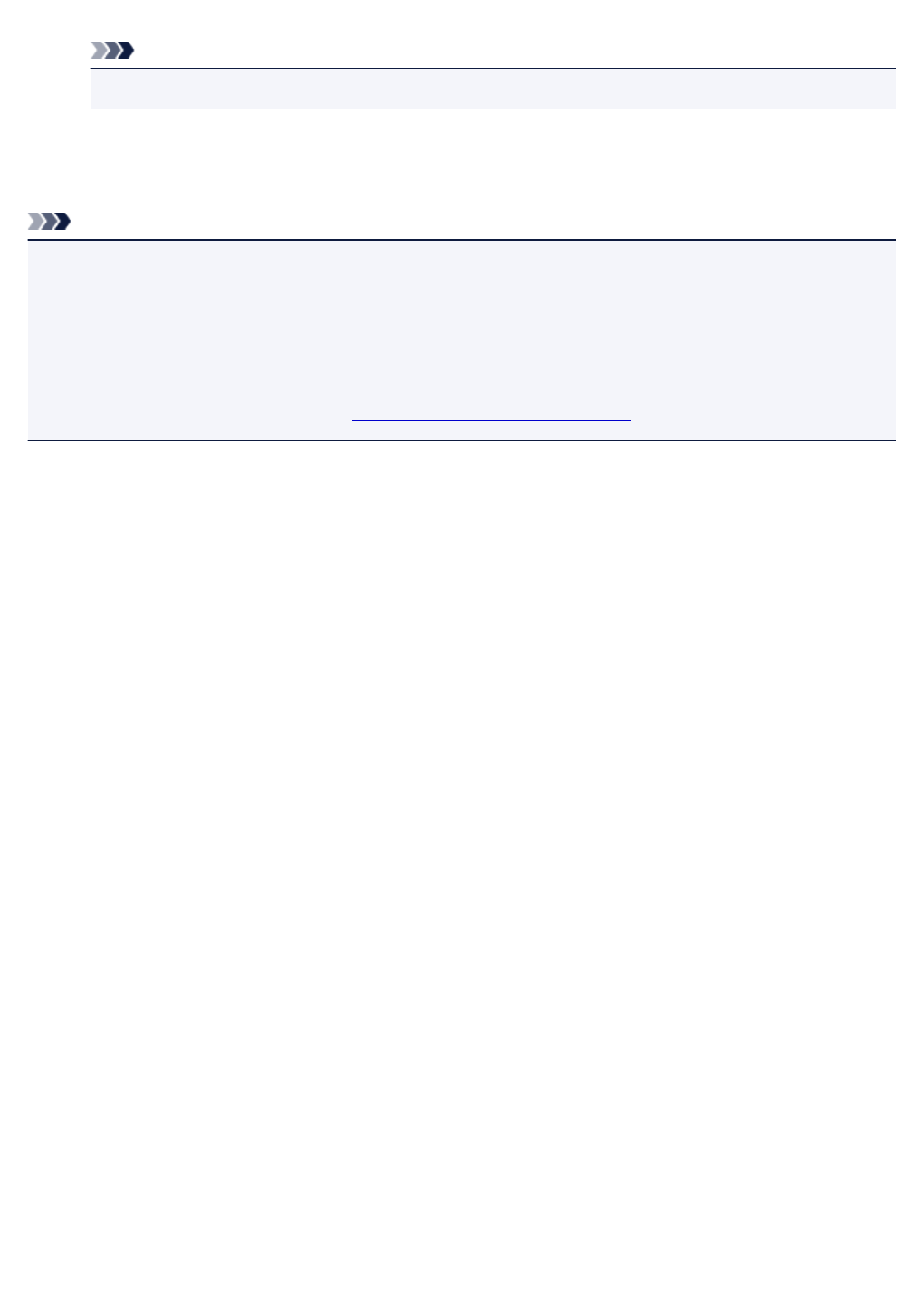
Select the MAC address of your scanner or printer.
Note
•When multiple scanners are connected via a network, you can select up to three scanners.
5. In the Scan-from-PC Settings screen, click OK.
Note
• If your scanner or printer does not appear, check the following, click OK to close the screen, then
reopen it and try selecting again.
• MP Drivers is installed
• Network settings of your scanner or printer is completed after installing the MP Drivers
• Network communication between your scanner or printer and computer is enabled
If the problem is still not solved, see Network Communication Problems.
874
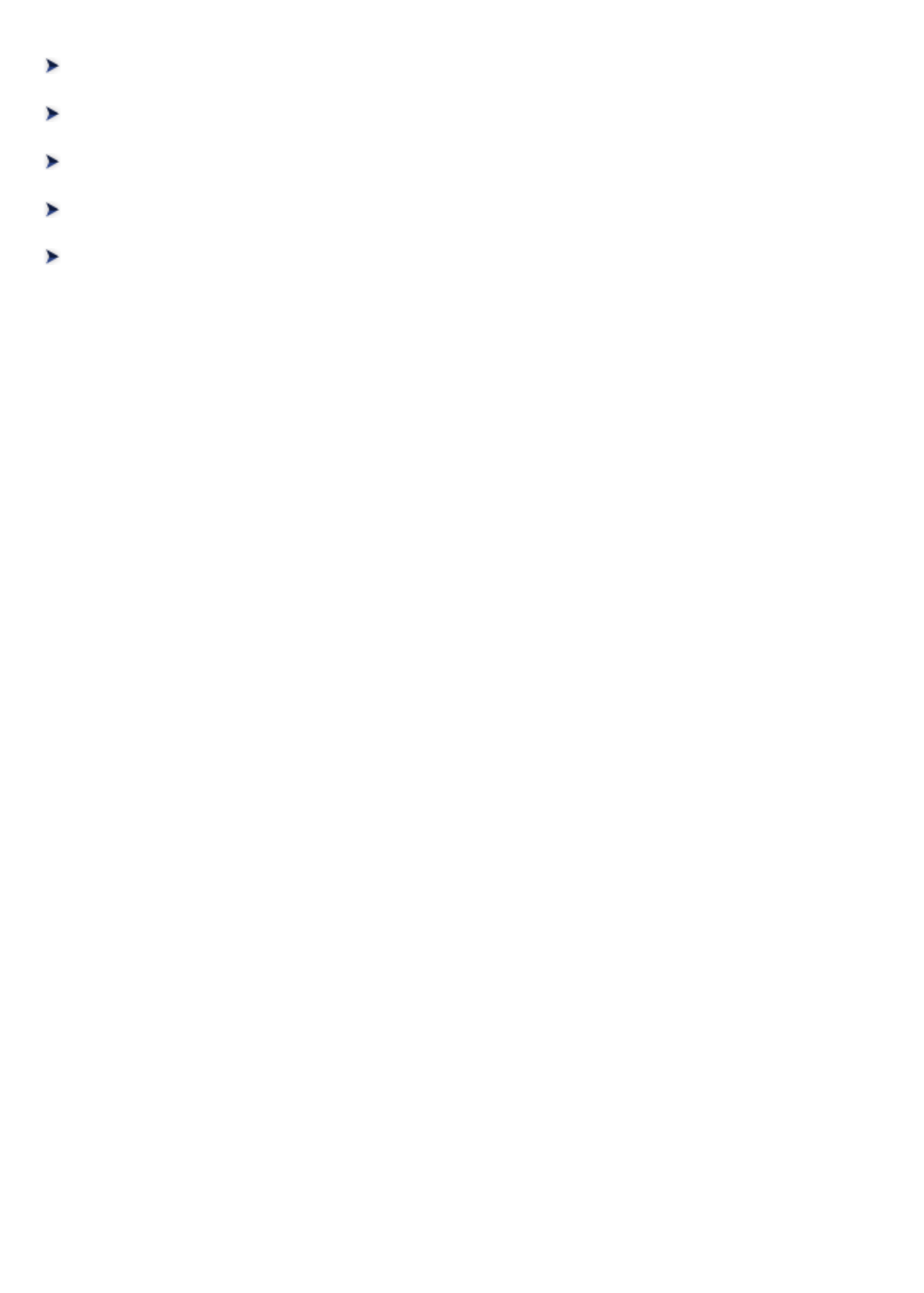
Scanning from Computer (Mac OS)
Using IJ Scan Utility
Using Scanner Driver
Scanning Tips
Positioning Originals (Scanning from Computer)
Network Scan Settings
875
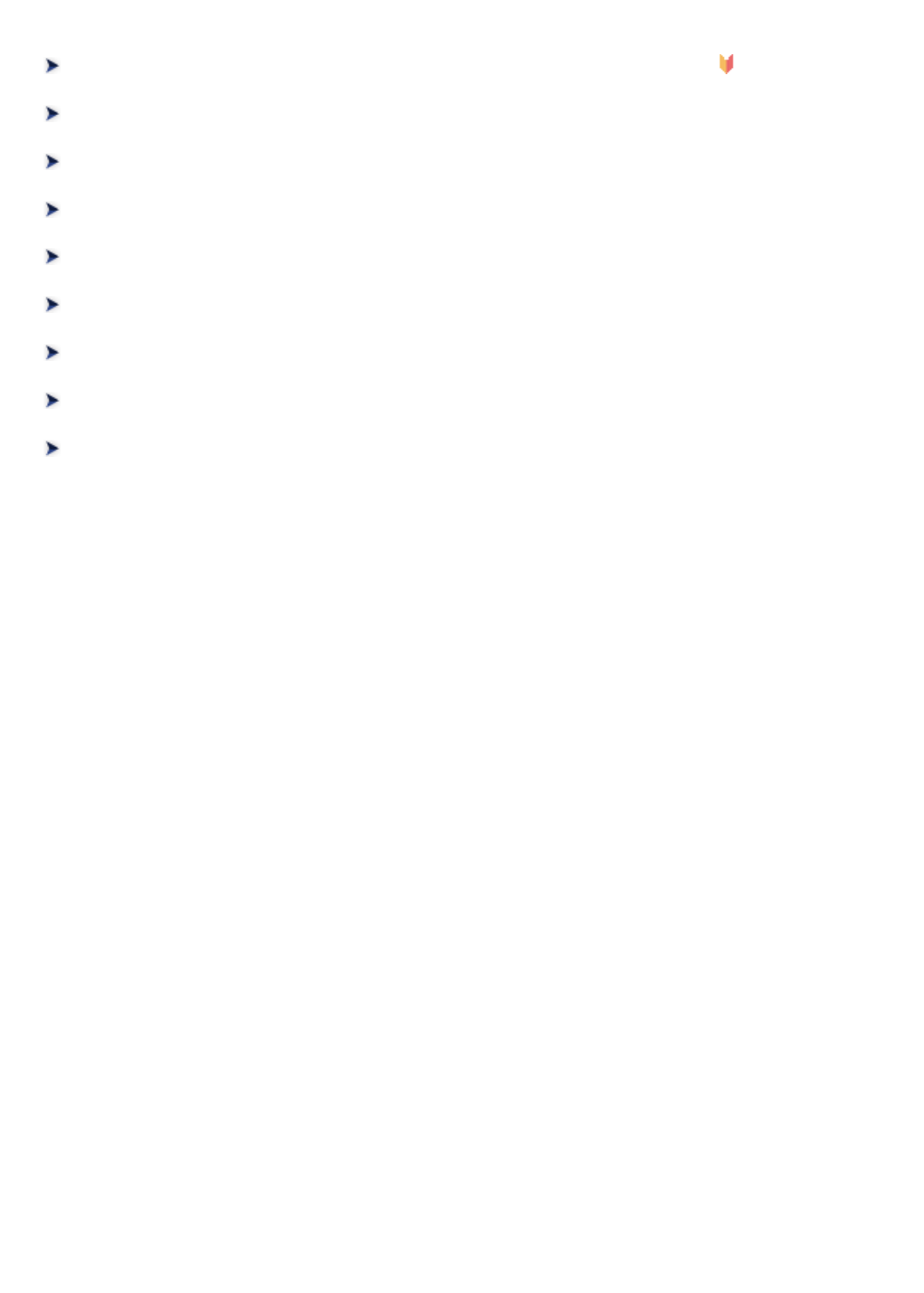
Scanning from Operation Panel
Forwarding Scanned Data to Computer Using Operation Panel Basics
Sending Scanned Data as E-Mail from Computer
Sending Scanned Data as E-Mail from Machine
Saving Scanned Data on USB Flash Drive
Forwarding Scanned Data to Shared Folder on Computer
Deleting Scanned Data on USB Flash Drive
Setting Items for Scanning Using Operation Panel
Setting Up Operation Panel with IJ Scan Utility (Windows)
Setting Up Operation Panel with IJ Scan Utility (Mac OS)
876
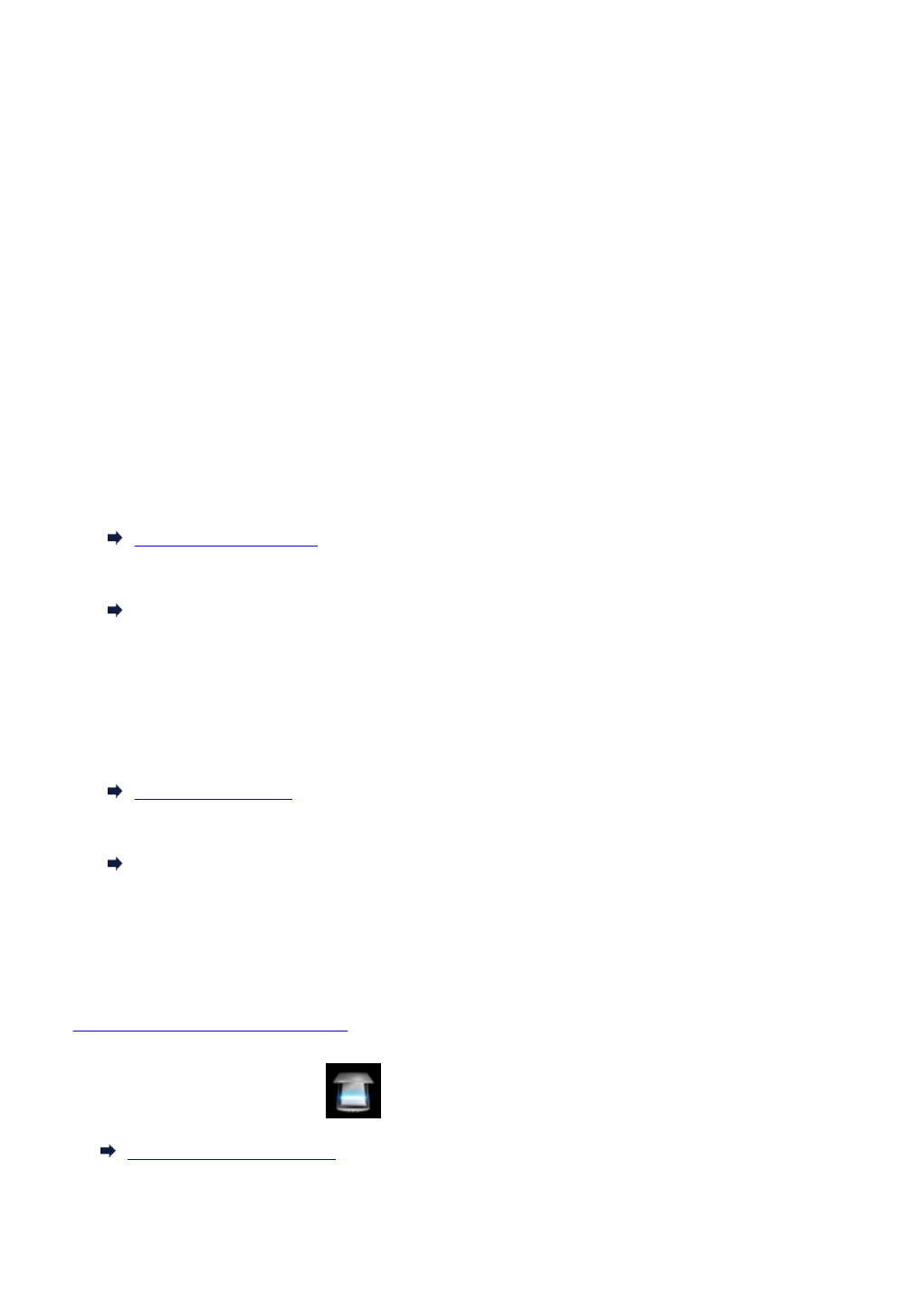
Forwarding Scanned Data to Computer Using Operation Panel
Before forwarding scanned data to the computer, check the following:
•MP Drivers are installed. (Windows)
If MP Drivers are not yet installed, install MP Drivers with the Setup CD-ROM or install them from the
Canon website.
•The scanner driver is installed. (Mac OS)
If the scanner driver is not yet installed, install the scanner driver from the Canon website.
•The printer is connected to a computer correctly.
Make sure the printer is connected to the computer correctly.
Do not plug in or unplug the USB cable or LAN cable while the printer is in operation, or when the
computer is in the sleep or standby mode.
If you perform scanning via a network connection, make sure all the required settings have been
specified.
◦ For Windows:
Network Scan Settings
◦ For Mac OS:
Network Scan Settings
•The destination and the file name are specified in Canon IJ Scan Utility.
You can specify the destination and the file name in Canon IJ Scan Utility. For more on settings of
Canon IJ Scan Utility:
◦ For Windows:
Settings Dialog Box
◦ For Mac OS:
Settings Dialog
For Mac OS X 10.11, starting Canon IJ Scan Utility is required to forward the scanned data to your
computer.
Follow the procedure below to forward scanned data to the computer.
1. Make sure printer is turned on.
2. Flick HOME screen and tap Scan.
Using the Operation Panel
The screen for selecting to which you save the data is displayed.
877
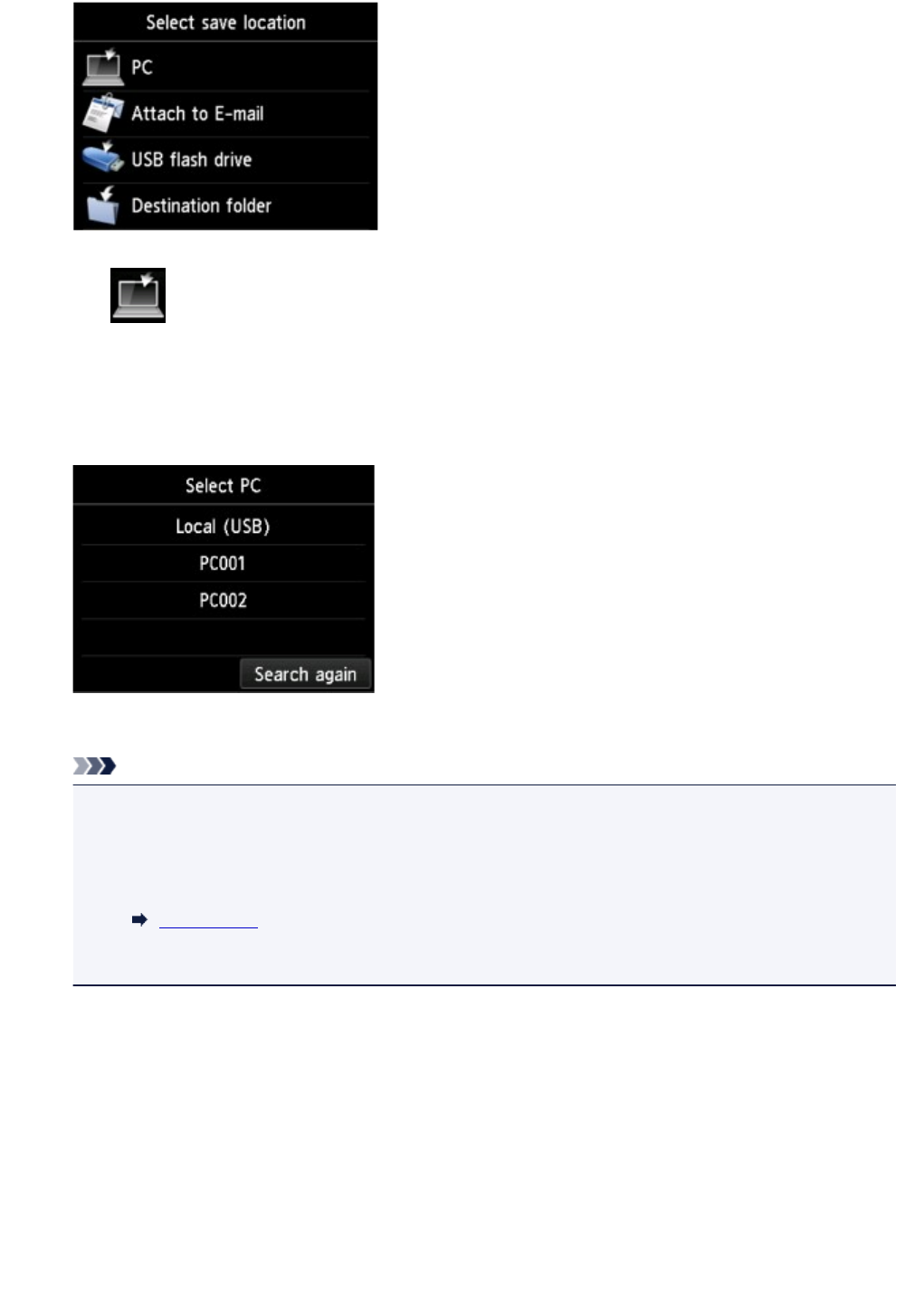
3. Tap PC.
4. Tap the computer to forward the scanned data.
Tap Local (USB) for a USB-connected computer, or tap the computer to forward the scanned data for a
network-connected computer.
The Scan standby screen is displayed.
Note
• When you forward the scanned data to the computer using WSD (one of the network protocols
supported in Windows 10, Windows 8.1, Windows 8, Windows 7, and Windows Vista), select
Enable for WSD scan from this device on WSD setting on Other settings in LAN settings
under Device settings.
WSD setting
If you tap Search again, the printer starts searching for the connected computers again.
5. Specify settings as necessary.
878
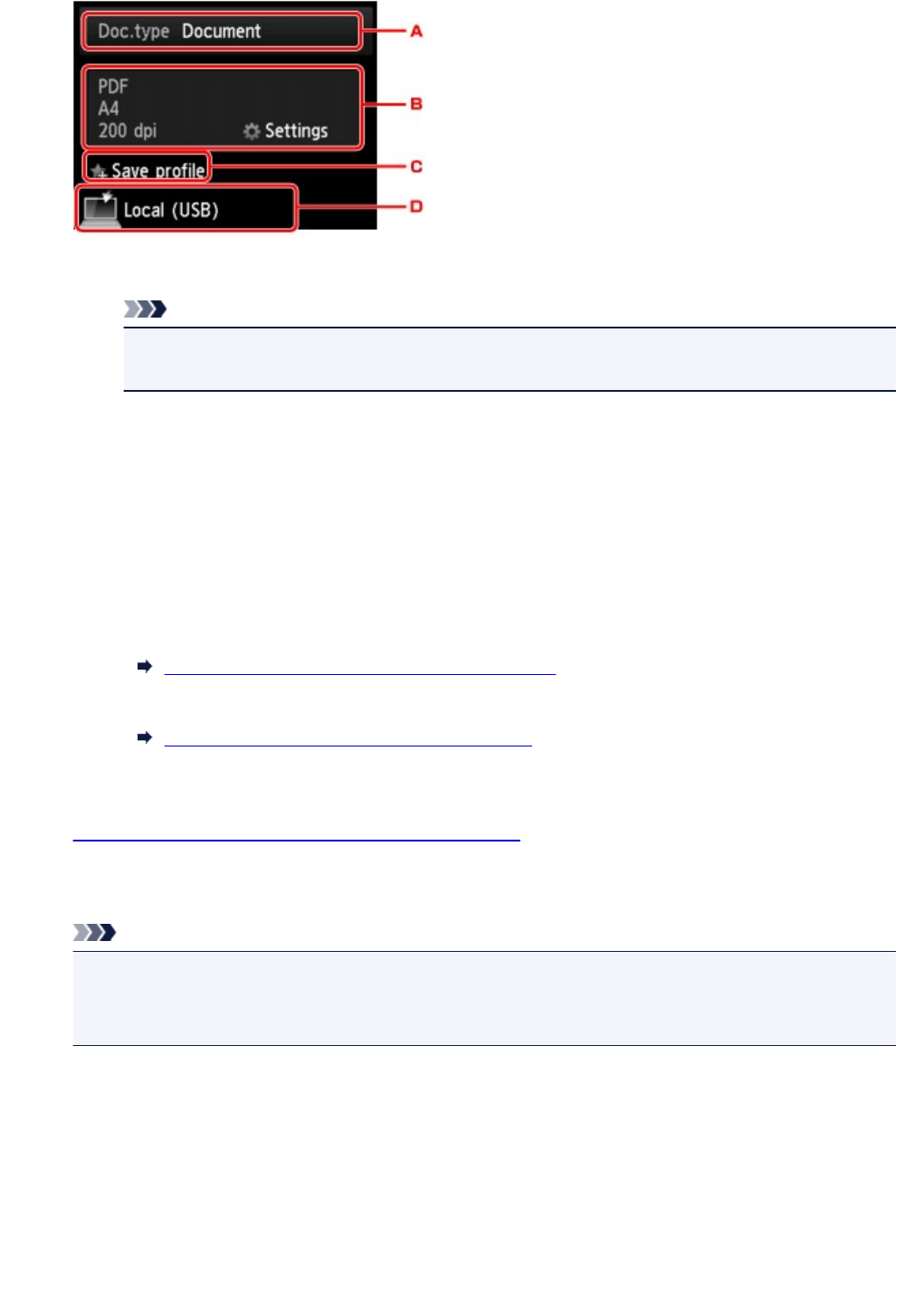
A. Tap to select the document type.
Note
•When you forward the scanned data to the computer searched using WSD, you cannot select
the document type.
Document
Scans the original on the platen glass or in the ADF as a document data applying the settings
specified in Scan settings.
Photo
Scans the original on the platen glass as a photo data applying the settings specified in Scan
settings.
B. Tap to display Scan settings screen.
For more on the setting items:
Setting Items for Scanning Using Operation Panel
C. Tap to register the current scan settings as a custom setting.
Registering Favorite Settings (Custom profiles)
D. Tap to display the screen to select the destination.
6. Load original document on platen glass or in ADF.
7. Press Color button for color scanning, or Black button for black & white scanning.
Note
•When you forward the scanned data to the computer using WSD, press the Color button.
•If the original is not loaded properly, a message is displayed on the touch screen. Load the original
on the platen glass or in the ADF according to the scan settings.
•If you load the original in the ADF:
The printer starts scanning and scanned data is forwarded to the computer.
•If you load the original on the platen glass:
◦When you select JPEG or TIFF for Format on the scan setting screen, the printer starts
scanning and scanned data is forwarded to the computer.
879
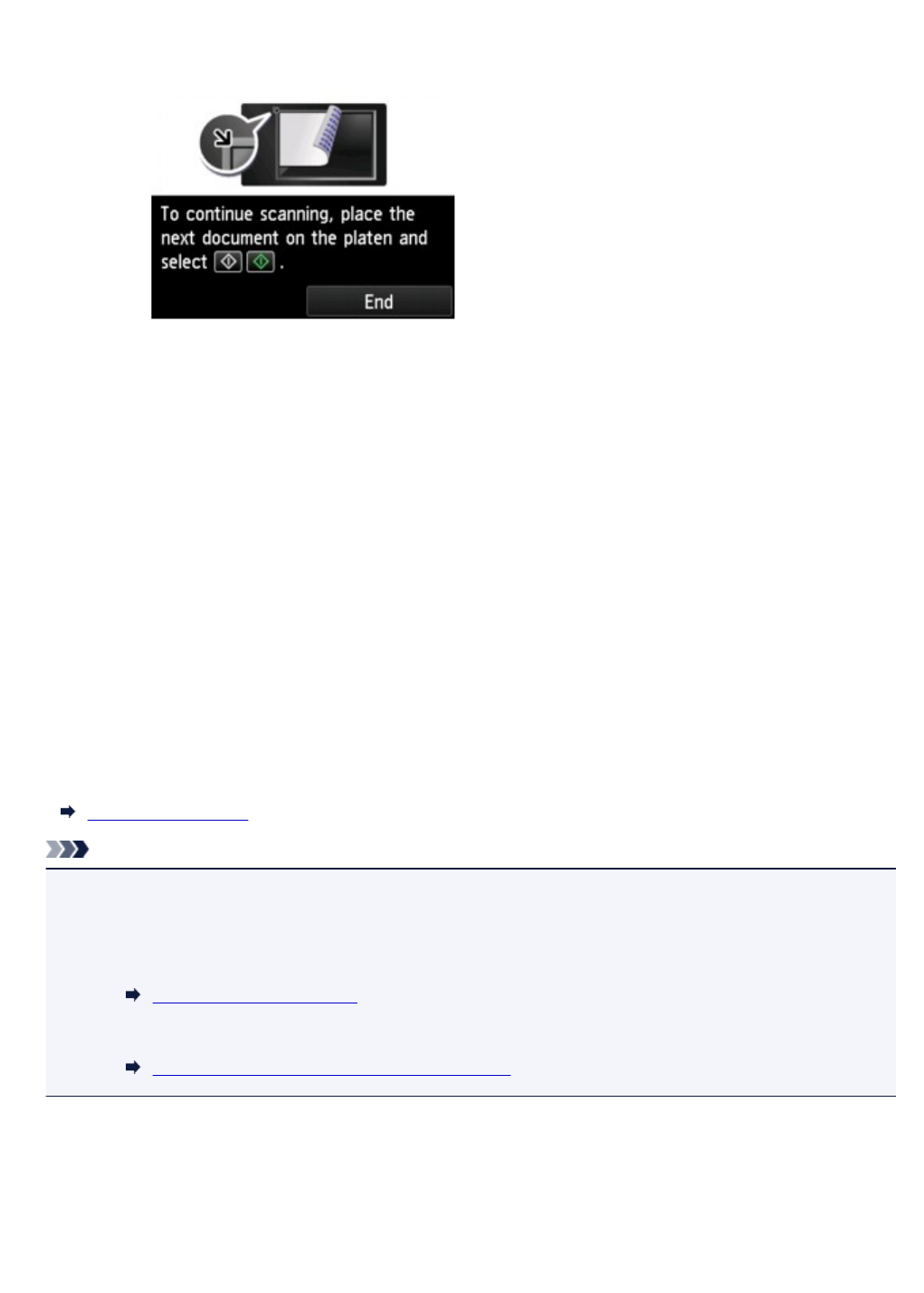
◦ When you select PDF or Compact PDF for Format on the scan setting screen, the
confirmation screen asking you if you continue scanning is displayed after scanning is
complete.
If you continue scanning, load the original on the platen glass and start scanning.
If you do not continue scanning, tap End. The scanned data is forwarded to the computer.
Scanned data is forwarded to the computer according to the settings specified in Canon IJ Scan Utility.
Remove the original on the platen glass or from the document output slot after scanning is complete.
If program selection screen appears (Windows):
The program selection screen may be displayed after pressing the Color or Black button. In this case,
select Canon IJ Scan Utility and click OK.
If you want to scan originals with advanced settings, or if you want to edit
or print scanned images:
If you scan originals from a computer, you can edit the scanned images, such as optimizing or trimming.
In addition, you can edit or print the scanned images using the compatible application software to make
better use of them.
Using IJ Scan Utility
Note
• For Windows:
• You can use a WIA-compliant application software to scan originals with this printer.
For details:
Scanning with WIA Driver
• If you want to convert a scanned document to text:
Extracting Text from Scanned Images (OCR)
880
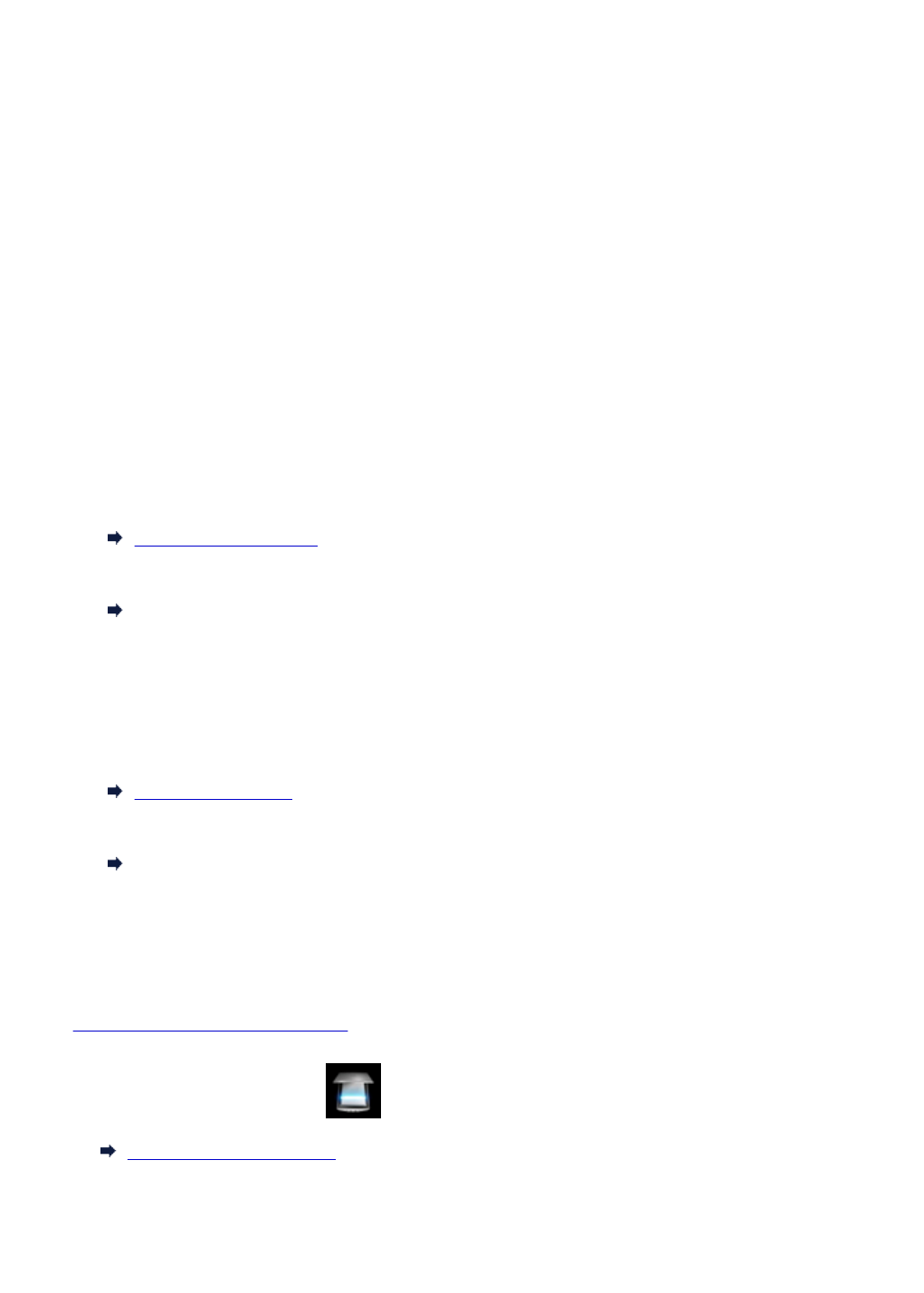
Sending Scanned Data as E-Mail from Computer
Before attaching scanned data to an e-mail, check the following:
•MP Drivers are installed. (Windows)
If MP Drivers are not yet installed, install MP Drivers with the Setup CD-ROM or install them from the
Canon website.
•The scanner driver is installed. (Mac OS)
If the scanner driver is not yet installed, install the scanner driver from the Canon website.
•The printer is connected to a computer correctly.
Make sure the printer is connected to the computer correctly.
Do not plug in or unplug the USB or LAN cable while the printer is in operation, or when the computer is
in the sleep or standby mode.
If you perform scanning via a network connection, make sure all the required settings have been
specified.
◦ For Windows:
Network Scan Settings
◦ For Mac OS:
Network Scan Settings
•The mail software and the file name are specified in Canon IJ Scan Utility.
You can specify the destination and the file name in Canon IJ Scan Utility. For more on settings of
Canon IJ Scan Utility:
◦ For Windows:
Settings Dialog Box
◦ For Mac OS:
Settings Dialog
For Mac OS X 10.11, starting Canon IJ Scan Utility is required to forward the scanned data to your
computer.
Follow the procedure below to send the scanned data as an e-mail from the computer.
1. Make sure printer is turned on.
2. Flick HOME screen and tap Scan.
Using the Operation Panel
The screen for selecting to which you save the data is displayed.
881
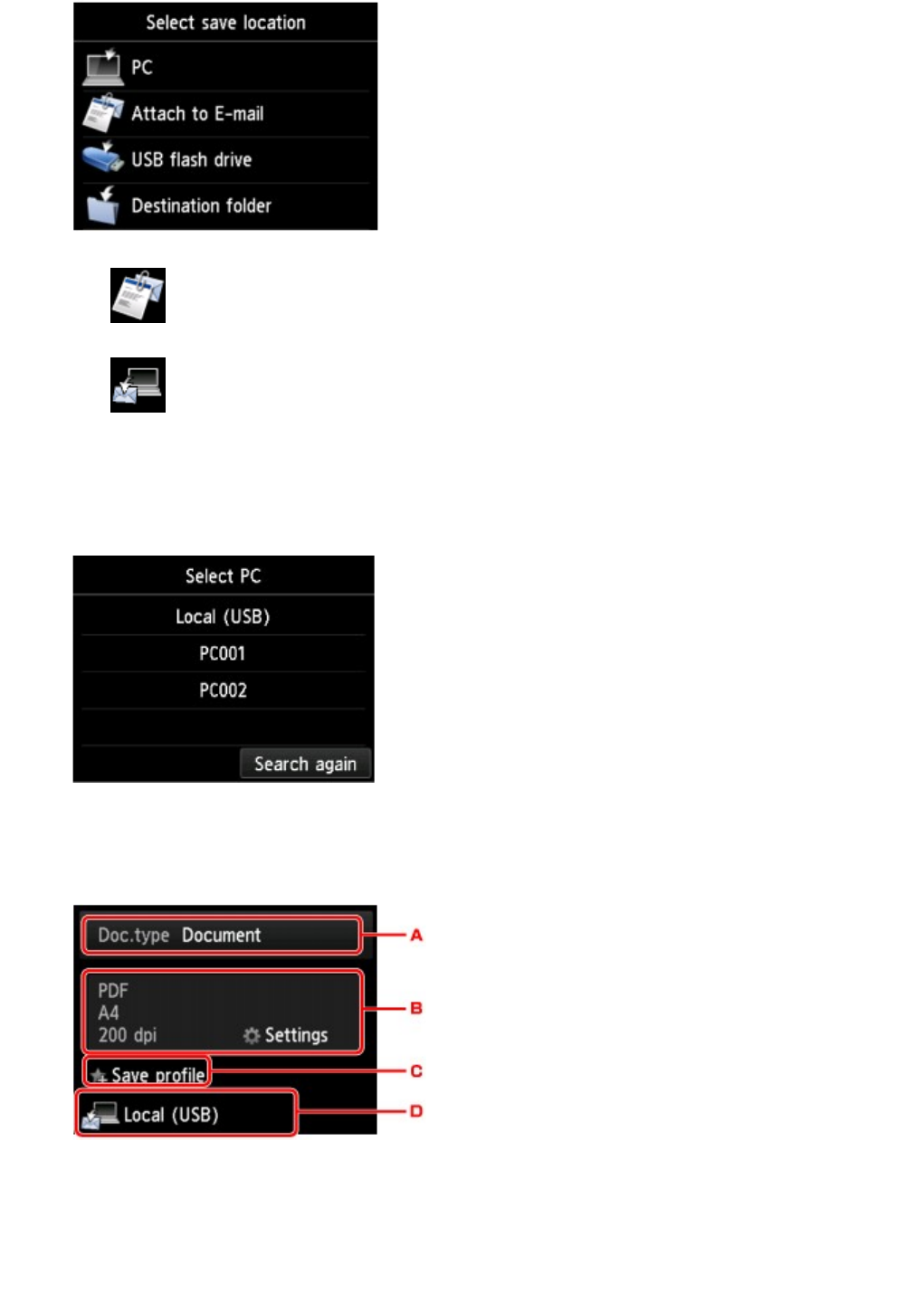
3. Tap Attach to E-mail.
4. Tap E-mail from PC.
5. Tap computer to forward scanned data.
Tap Local (USB) for a USB-connected computer, or tap the computer to forward the scanned data for a
network-connected computer.
The Scan standby screen is displayed.
6. Specify settings as necessary.
A. Tap to select the document type.
Document
Scans the original on the platen glass or in the ADF as a document data applying the settings
specified in Scan settings.
882
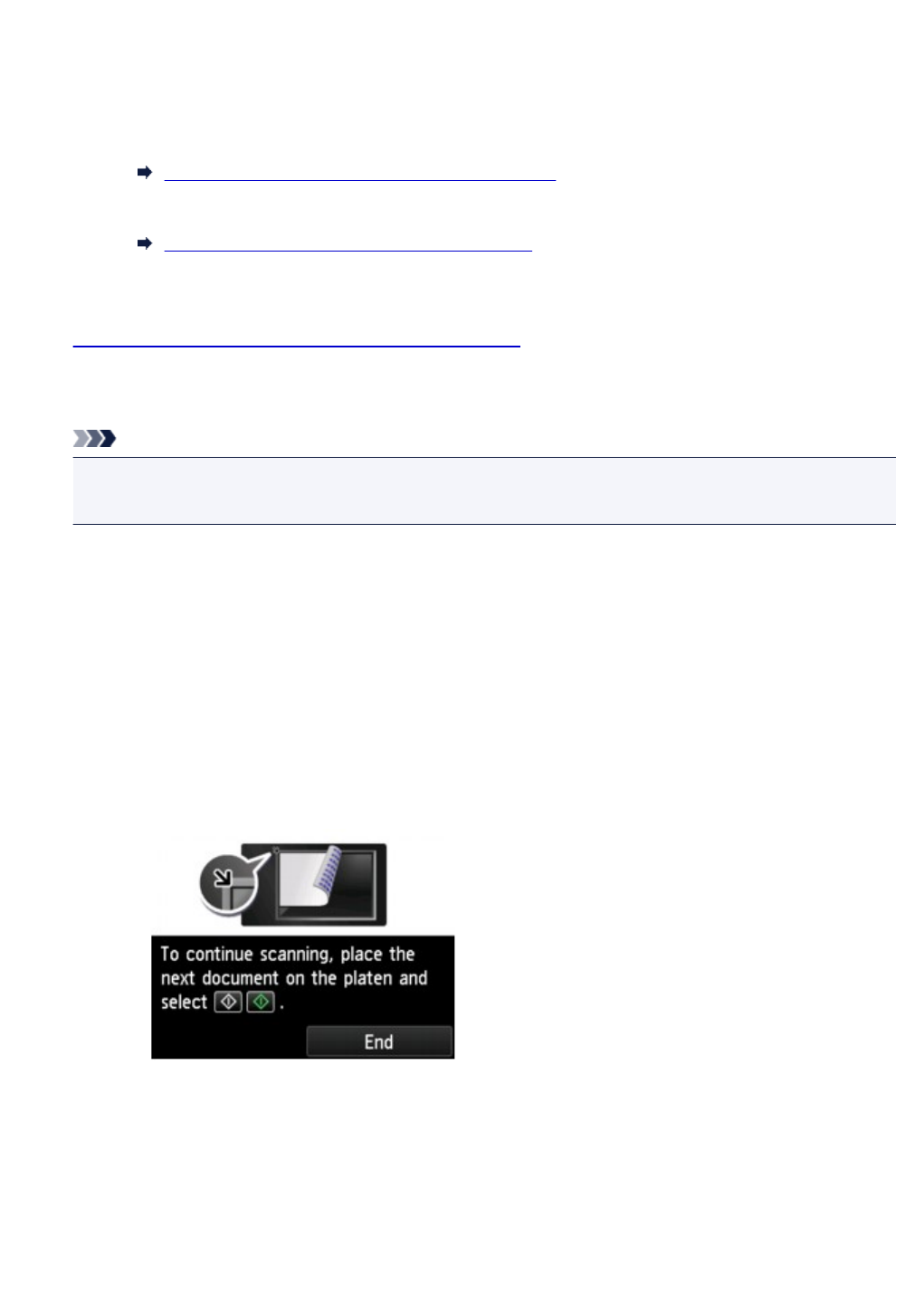
Photo
Scans the original on the platen glass as a photo data applying the settings specified in Scan
settings.
B. Tap to display Scan settings screen.
For more on the setting items:
Setting Items for Scanning Using Operation Panel
C. Tap to register the current scan settings as a custom setting.
Registering Favorite Settings (Custom profiles)
D. Tap to display the screen to select the destination.
7. Load original document on platen glass or in ADF.
8. Press Color button for color scanning, or Black button for black & white scanning.
Note
• If the original is not loaded properly, a message is displayed on the touch screen. Load the original
on the platen glass or in the ADF according to the scan settings.
•If you load the original in the ADF:
The printer starts scanning and scanned data is forwarded to the computer and attached to an e-
mail.
•If you load the original on the platen glass:
◦When you select JPEG for Format on the scan setting screen, the printer starts scanning and
scanned data is forwarded to the computer and attached to an e-mail.
◦ When you select PDF or Compact PDF for Format on the scan setting screen, the
confirmation screen asking you if you continue scanning is displayed after scanning is
complete.
If you continue scanning, load the original on the platen glass and start scanning.
If you do not continue scanning, tap End. The scanned data is forwarded to the computer.
Scanned data is forwarded to the computer and attached to an e-mail according to the settings
specified in Canon IJ Scan Utility.
For the settings or how to send an e-mail, refer to the mail software's instruction manual.
883

Remove the original on the platen glass or from the document output slot after scanning is
complete.
If program selection screen appears (Windows):
The program selection screen may be displayed after pressing the Color or Black button. In this case,
select Canon IJ Scan Utility and click OK.
884
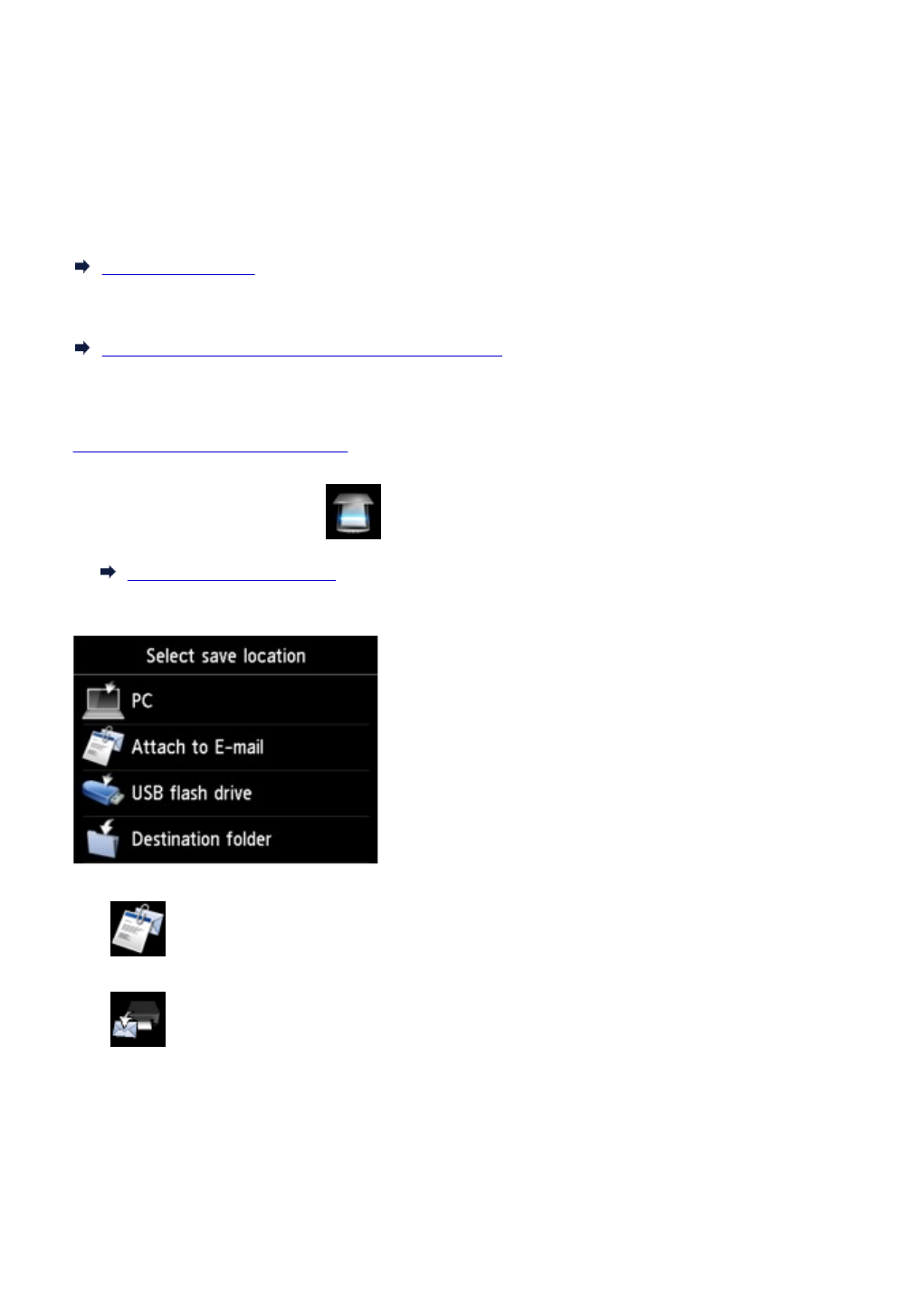
Sending Scanned Data as E-Mail from Machine
You can send scanned data as an e-mail from the printer.
Before you use this function, check the following.
•The printer is connected to a LAN.
Make sure the printer is connected to a LAN correctly.
•Mail server settings are completed using Remote UI.
Setting Mail Server
•Settings for sending scanned data as an e-mail are specified using Remote UI.
Specifying Mail Setting for Sending Scanned Data
Follow the procedure below to send the scanned data as an e-mail from the printer.
1. Make sure printer is turned on.
2. Flick HOME screen and tap Scan.
Using the Operation Panel
The screen for selecting to which you save the data is displayed.
3. Tap Attach to E-mail.
4. Tap E-mail directly from device.
5. Tap Select recipients.
6. Specify recipient(s).
886
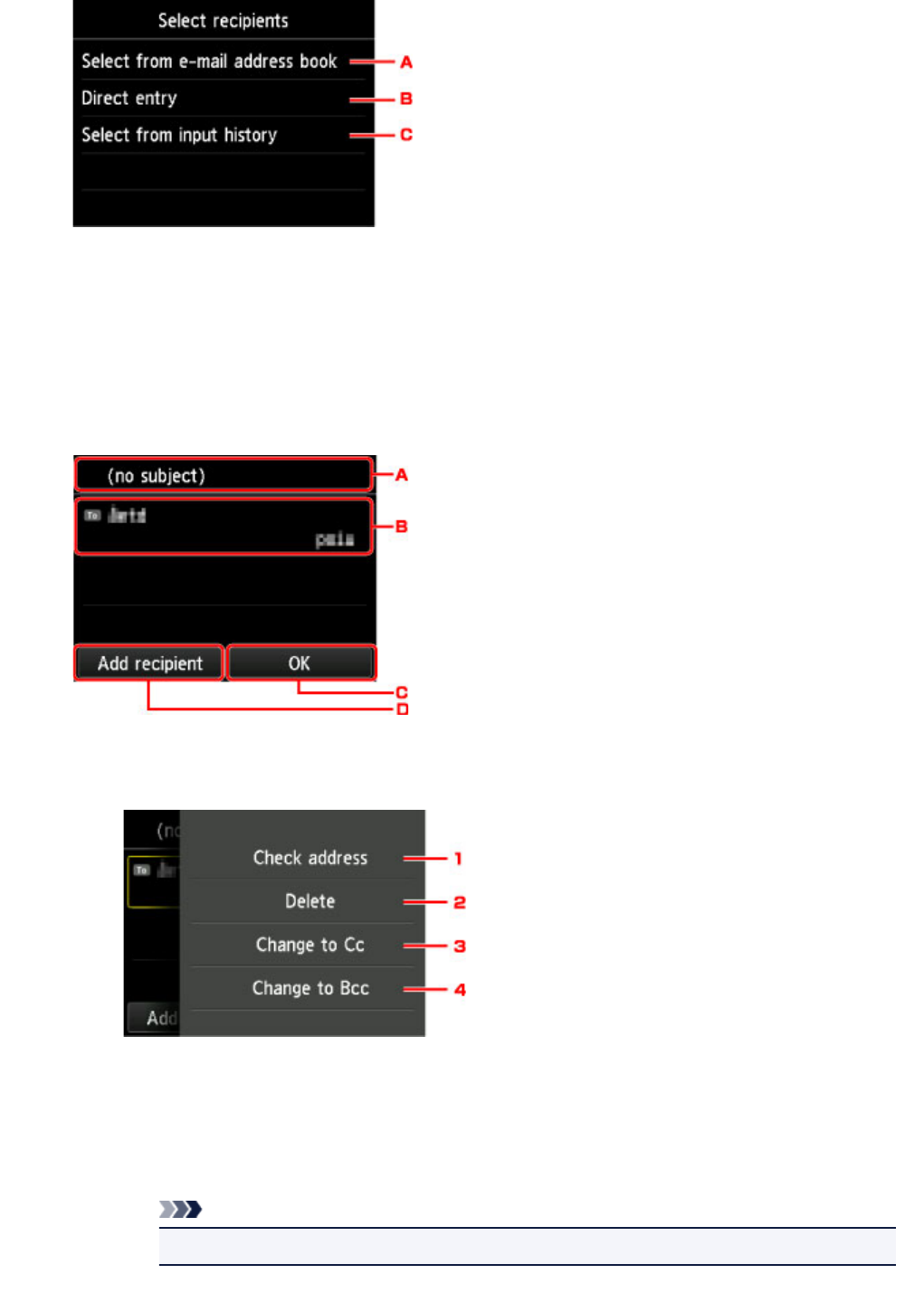
A. Tap to select the recipient(s) from the address book.
B. Tap to enter recipient's e-mail address.
C. Tap to select the recipient(s) from the input history.
7. Perform mail sending settings.
The screen below appears.
A. Tap to enter the subject.
B. Tap to select the items below.
1. Tap to check the address. Tapping Edit allows you to change the address.
2. Tapping here and selecting Yes deletes the recipient.
3. Tap to change to Cc (carbon copy).
4. Tap to change to Bcc (blind carbon copy).
Note
•To change Cc or Bcc to To, tap the recipient and tap Change to To.
887
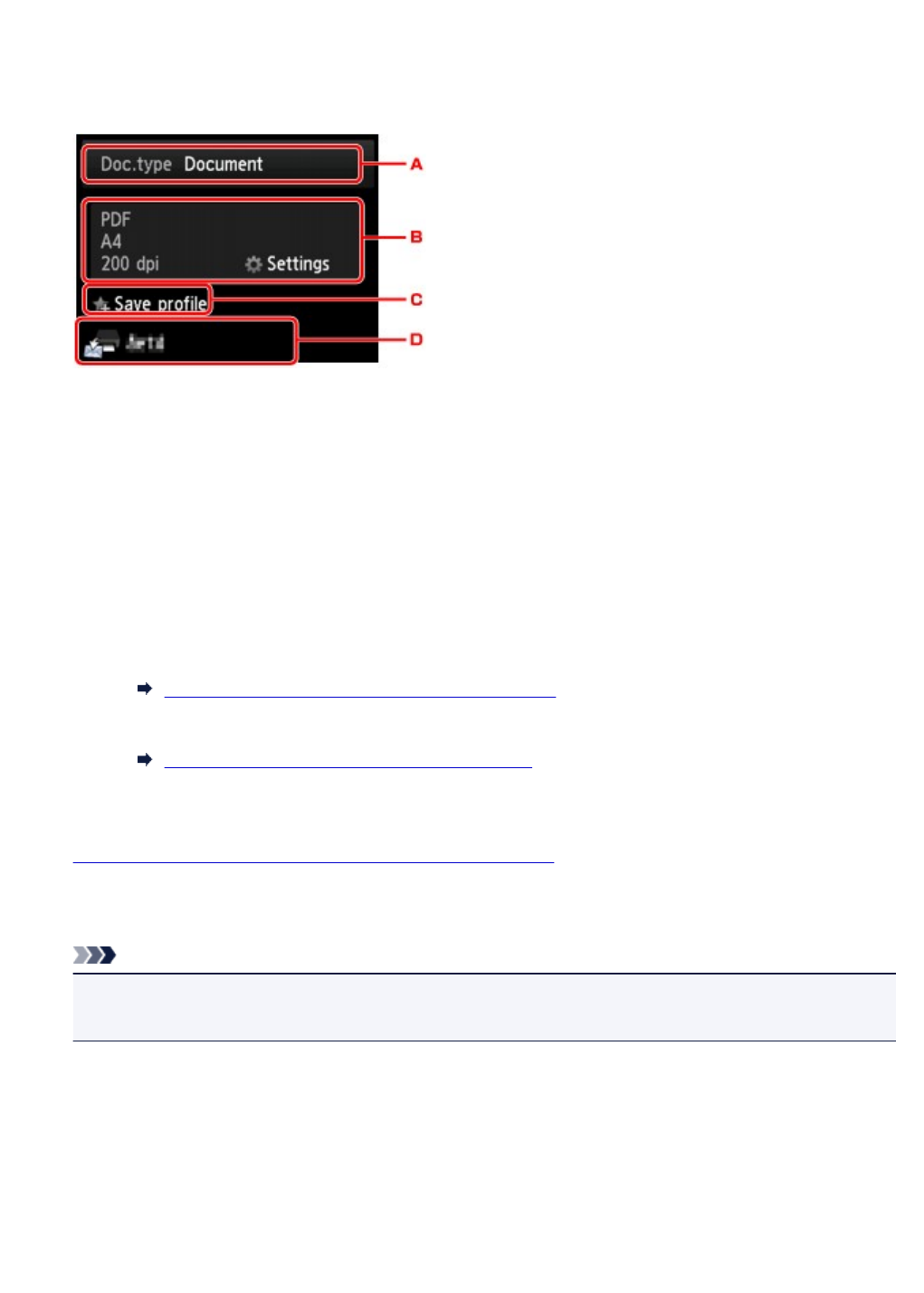
C. Tap to complete specifying the recipient.
D. Tap to add the recipient.
8. Specify settings as necessary.
A. Tap to select the document type.
Document
Scans the original on the platen glass or in the ADF as a document data applying the settings
specified in Scan settings.
Photo
Scans the original on the platen glass as a photo data applying the settings specified in Scan
settings.
B. Tap to display Scan settings screen.
For more on the setting items:
Setting Items for Scanning Using Operation Panel
C. Tap to register the current scan settings as a custom setting.
Registering Favorite Settings (Custom profiles)
D. Tap to display the screen to select the destination.
9. Load original document on the platen glass or in ADF.
10. Press Color button for color scanning, or Black button for black & white scanning.
Note
•If the original is not loaded properly, a message is displayed on the touch screen. Load the original
on the platen glass or in the ADF according to the scan settings.
•If you select ON for Preview on the scan setting screen:
The preview screen is displayed before sending the scanned original as an e-mail.
888
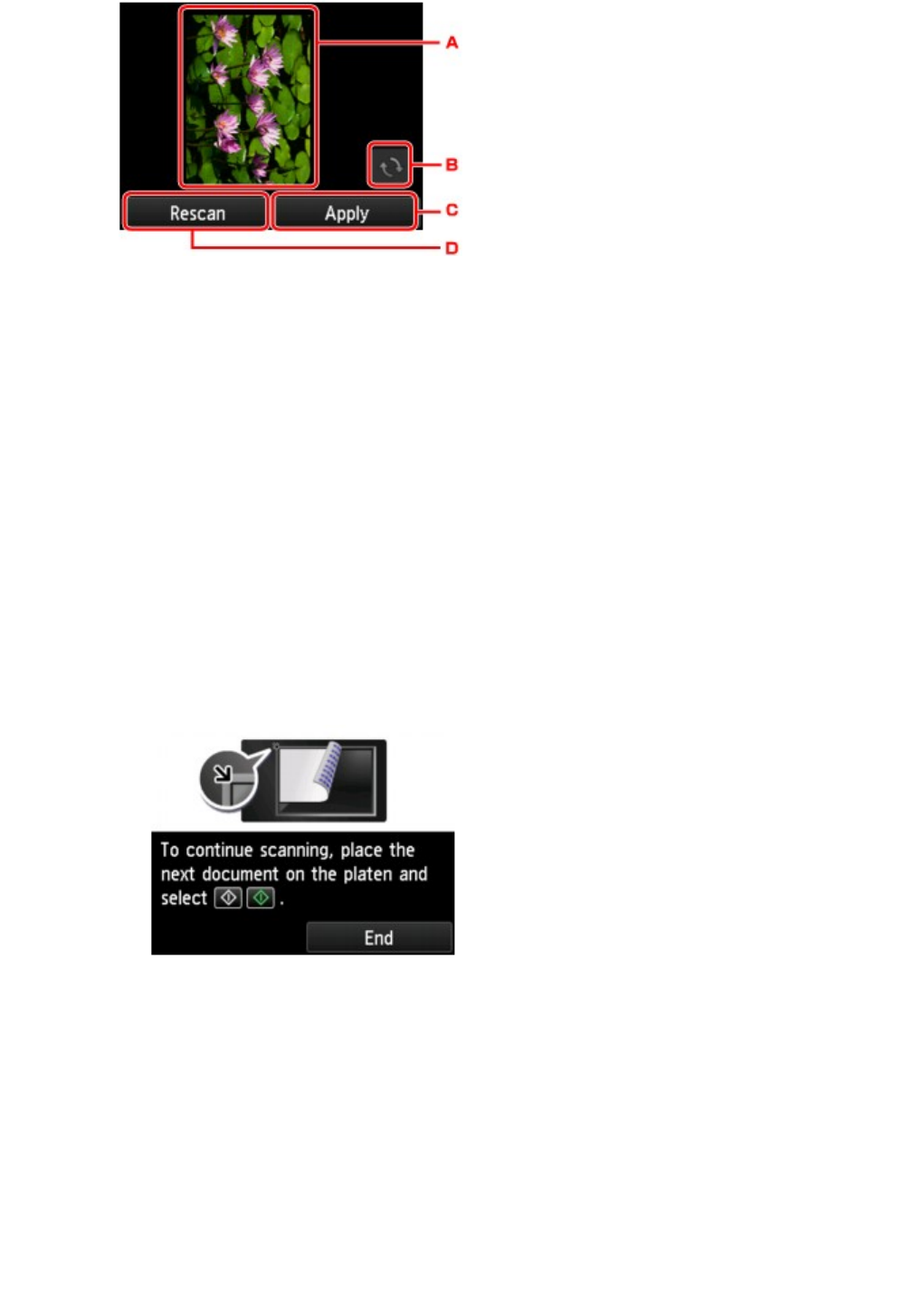
A. The preview screen of the scanning data is displayed.
B. Tap to rotate the preview screen.
Displayed when you select PDF or Compact PDF for Format on the scan setting screen.
C. Tap to send the scanned original as an e-mail.
D. Tap to rescan the original.
•If you load the original in the ADF:
The printer starts scanning and scanned data is sent as an e-mail.
•If you load the original on the platen glass:
◦ When you select JPEG for Format on the scan setting screen, the printer starts scanning and
scanned data is sent as an e-mail.
◦ When you select PDF or Compact PDF for Format on the scan setting screen, the
confirmation screen asking you if you continue scanning is displayed after scanning is
complete.
If you continue scanning, load the original on the platen glass and start scanning.
If you do not continue scanning, tap End. The scanned data is sent as an e-mail.
Remove the original on the platen glass or from the document output slot after scanning is
complete.
Checking Send Log
Tapping Check send log on E-mail directly from device displays the items below.
•Display send log
Displays the send log of the printer (up to 100). Tap the item to check more information.
889

•Print send log
Prints out the send log of the printer. Tap Yes to start printing.
890
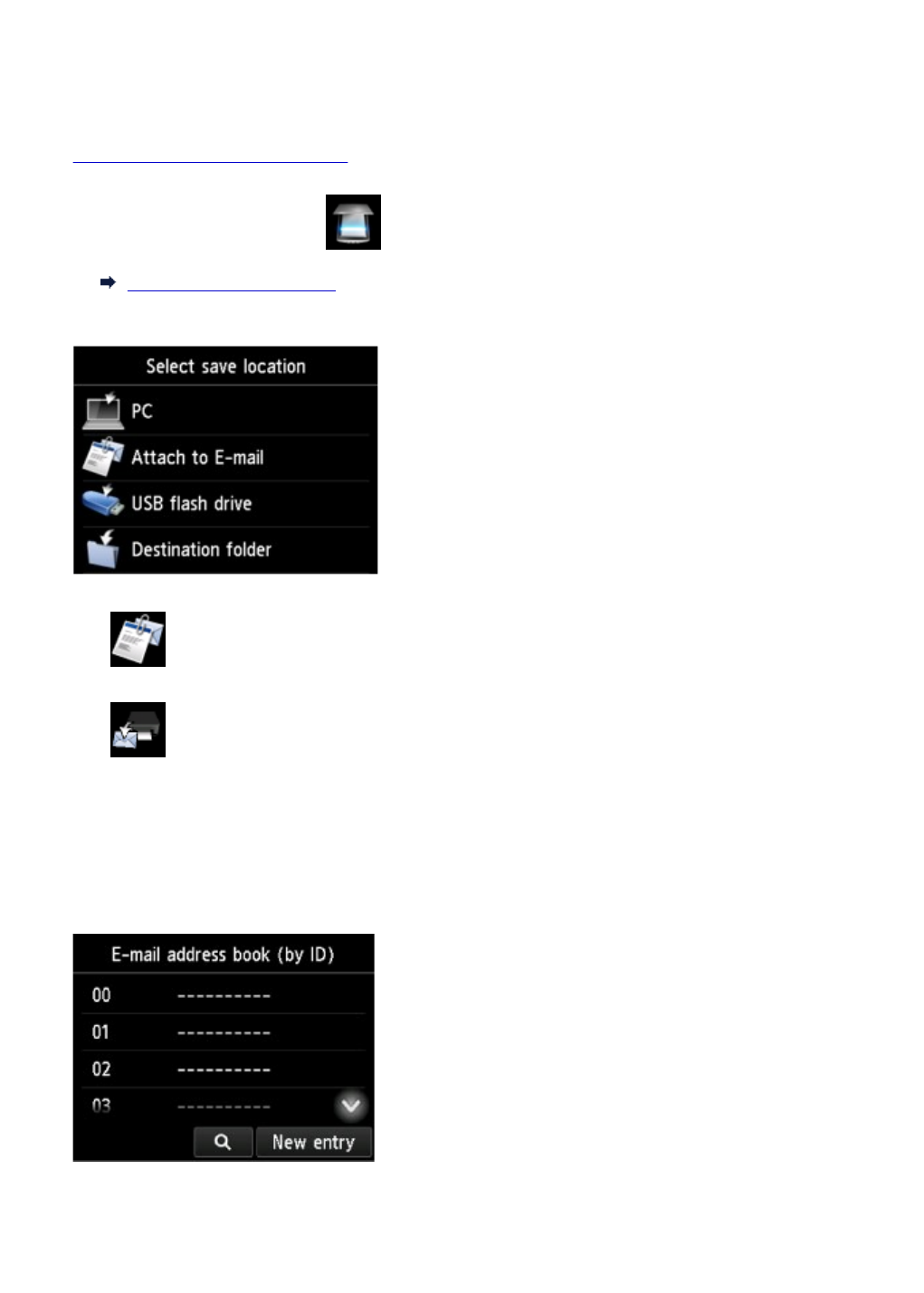
Registering Recipients' E-Mail Address
Before you can use the printer's address book, you need to register the recipients' e-mail address. Follow
the procedure below to register the recipients' e-mail address.
1. Make sure printer is turned on.
2. Flick HOME screen and tap Scan.
Using the Operation Panel
The screen for selecting to which you save the data is displayed.
3. Tap Attach to E-mail.
4. Tap E-mail directly from device.
5. Tap Edit e-mail address book.
6. Tap Display e-mail address book.
The screen to select an ID number is displayed.
891
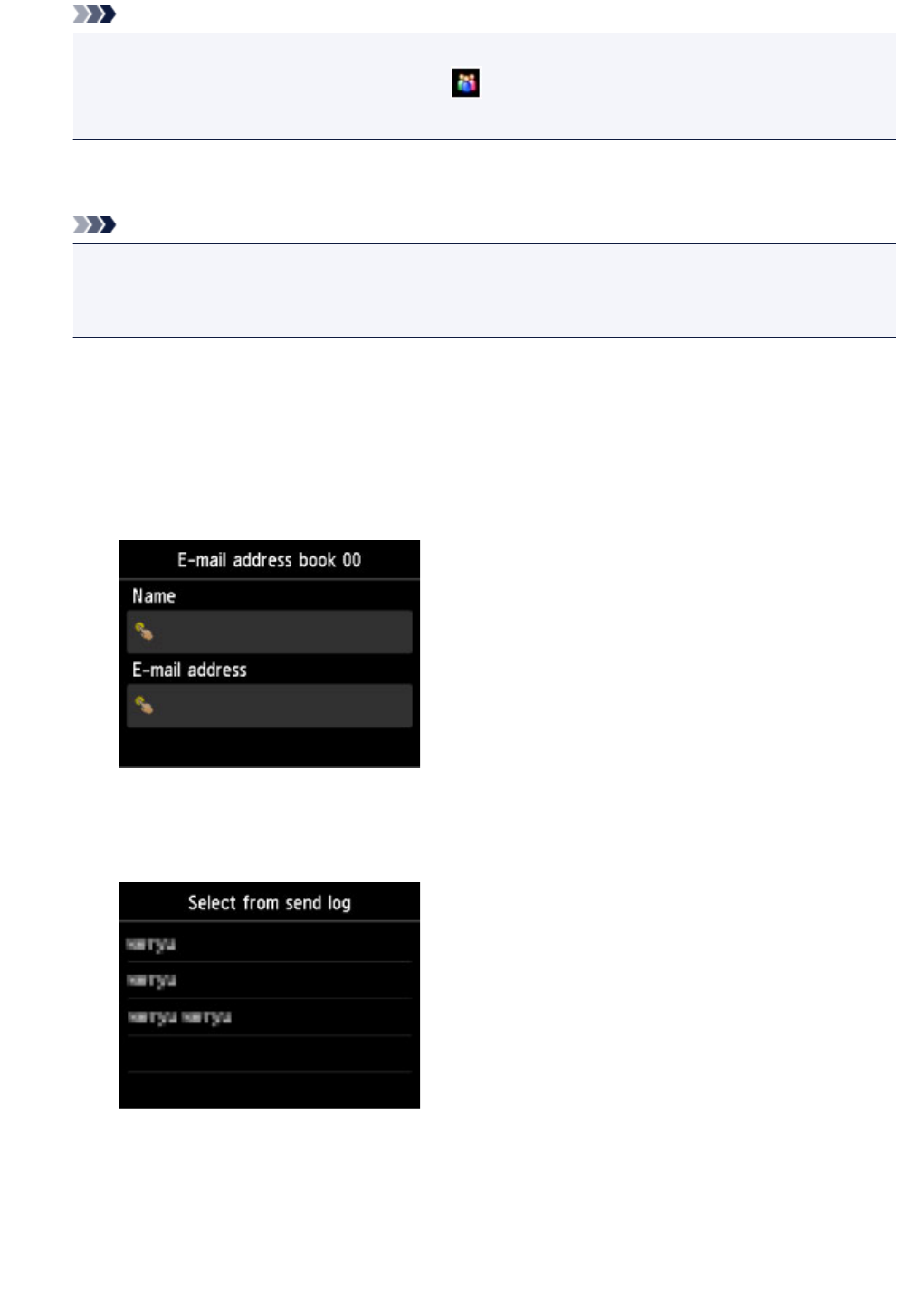
Note
• If you already registered the recipients, the recipients' name is displayed next to the ID number. If
you already registered the group mail, the icon and the group name are displayed next to the
ID number.
7. Select unregistered ID number.
Note
•If you already registered the recipients and they are displayed by name, tap Switch view. The
registered recipients are displayed by ID number.
•If you tap New entry, an unregistered ID number will be selected in numerical order.
8. Tap Register e-mail address.
9. Select registration method.
•Direct entry
The screen to register the recipient's e-mail address and name is displayed. Go to next step.
•Select from send log
When you select this registration method, the screen to select the e-mail address from the send
logs is displayed.
Selecting an e-mail address from the send logs, the screen to register the recipient's e-mail
address and name is displayed. Go to next step.
10. Enter recipient's name.
1. Tap entry field of name.
892
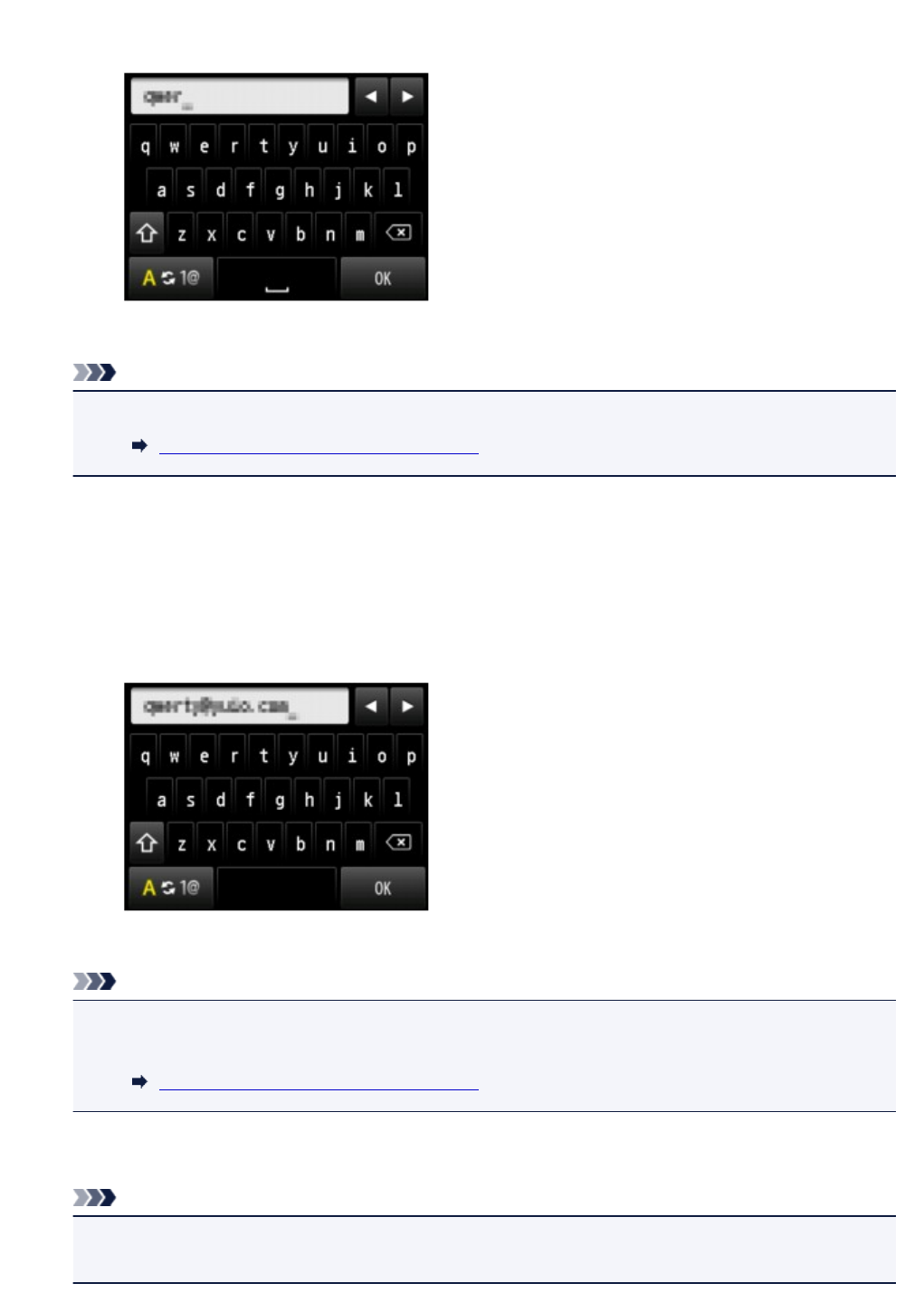
The screen to enter the character is displayed.
2. Enter recipient's name.
3. Tap OK.
Note
•You can enter the name up to 16 characters, including spaces.
Entering Numbers, Letters, and Symbols
11. Enter recipient's e-mail address.
If you select an e-mail address on Select from send log, the e-mail address is already entered. If you
do not change the e-mail address, go to next step.
1. Tap entry field of e-mail address.
2. Enter recipient's mail address.
3. Tap OK.
Note
•You can enter the e-mail address up to 60 characters (40 characters for the US, Canada, Korea
and some regions of Latin America), including spaces.
Entering Numbers, Letters, and Symbols
12. Tap Register to finalize registration.
Note
•To register another recipient's number and name, select an unregistered ID number and operate
in the same procedure.
893
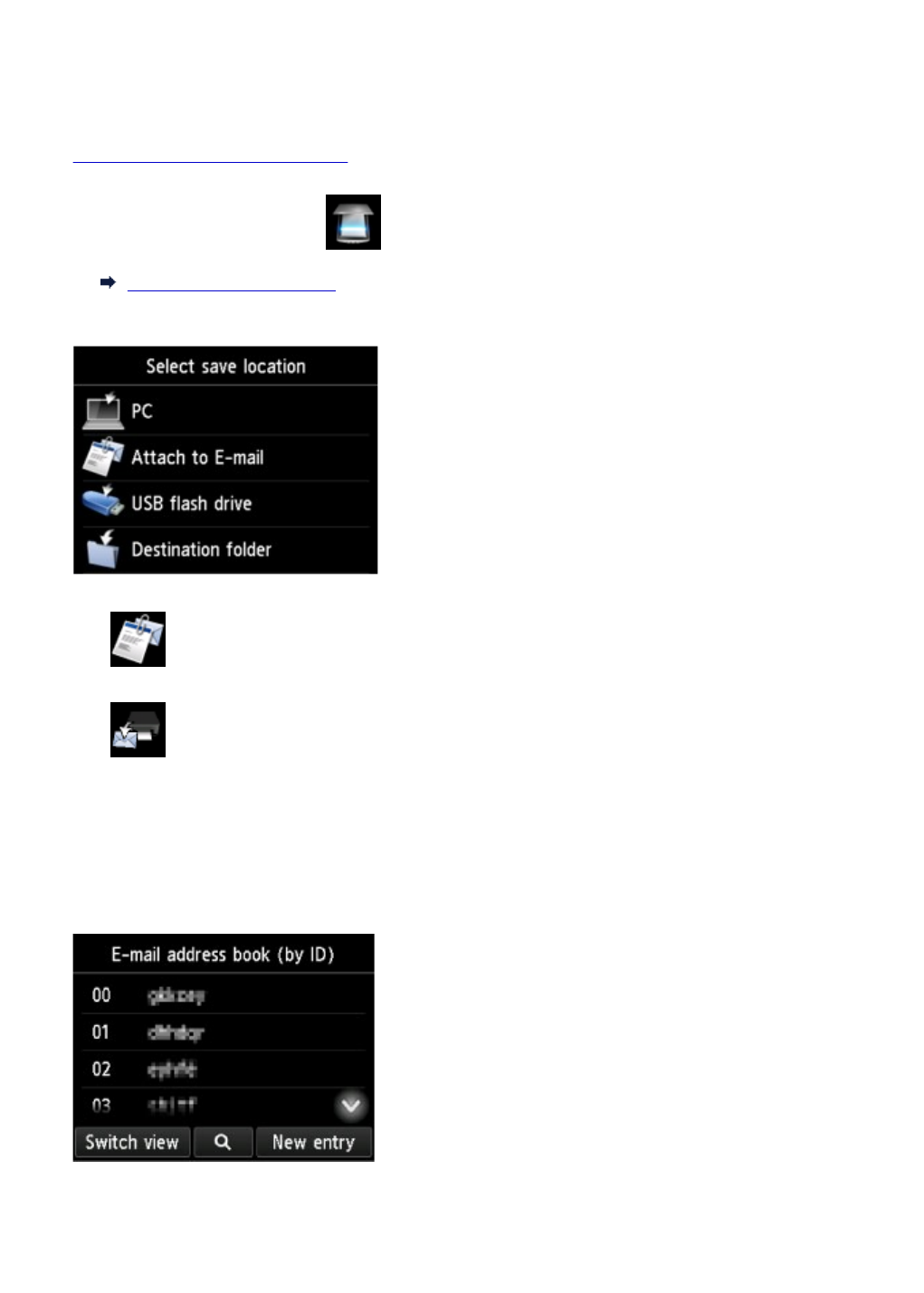
Registering Recipients in Group E-Mail
If you register two or more registered e-mail address to a group e-mail, you can send the same mail
successively to all recipients registered to the group e-mail.
1. Make sure printer is turned on.
2. Flick HOME screen and tap Scan.
Using the Operation Panel
The screen for selecting to which you save the data is displayed.
3. Tap Attach to E-mail.
4. Tap E-mail directly from device.
5. Tap Edit e-mail address book.
6. Tap Display e-mail address book.
The screen to select an ID number is displayed.
894
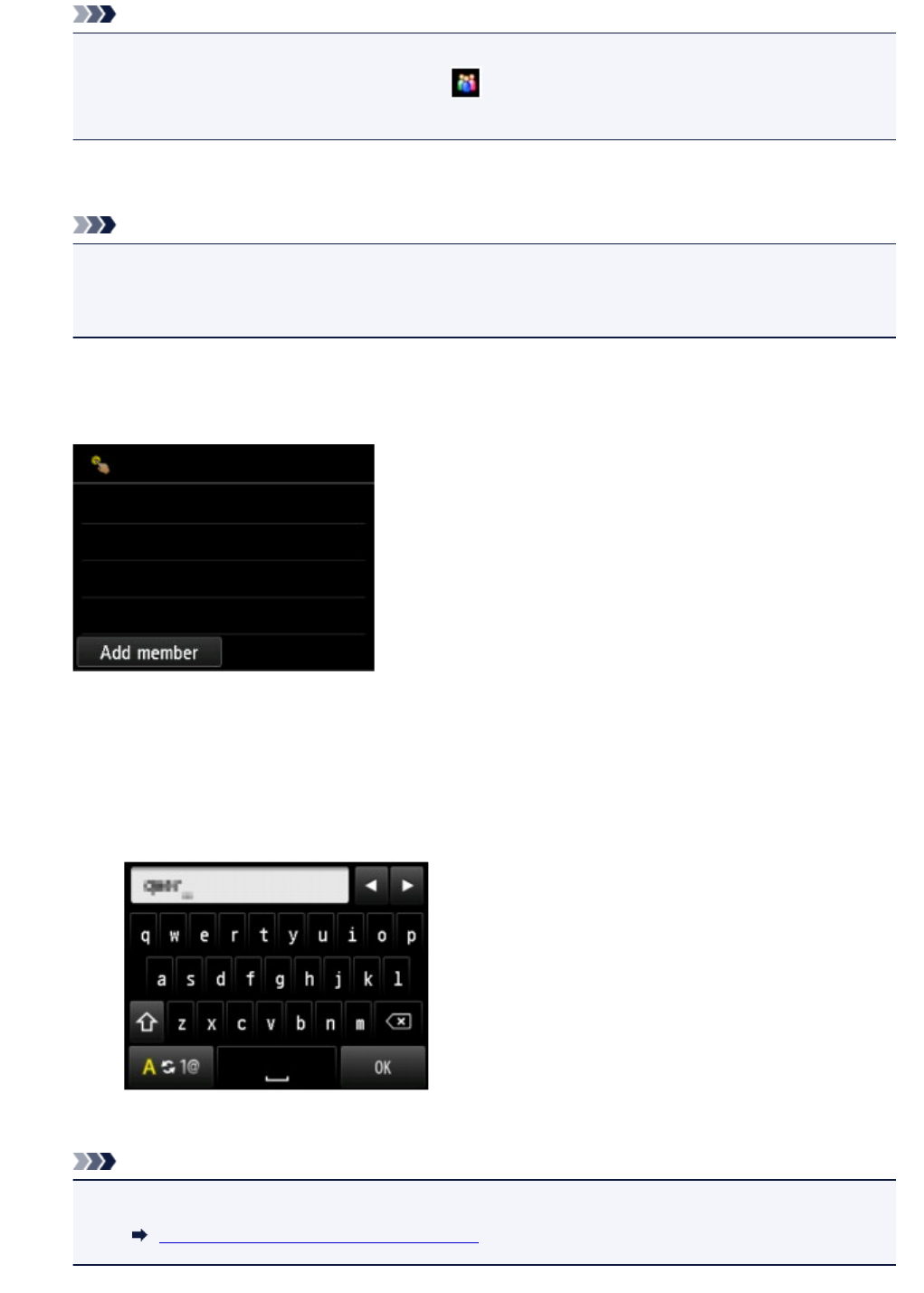
Note
• If you already registered the recipients, the recipients' name is displayed next to the ID number. If
you already registered the group mail, the icon and the group name are displayed next to the
ID number.
7. Select unregistered ID number.
Note
•If you already registered the recipients and they are displayed by name, tap Switch view. The
registered recipients are displayed by ID number.
•If you tap New entry, an unregistered ID number will be selected in numerical order.
8. Tap Register group e-mail.
The screen to register the group name and the member of the group is displayed.
9. Enter group name.
1. Tap entry field of group name.
The screen to enter the character is displayed.
2. Enter group name.
3. Tap OK.
Note
•You can enter the name up to 16 characters, including spaces.
Entering Numbers, Letters, and Symbols
895
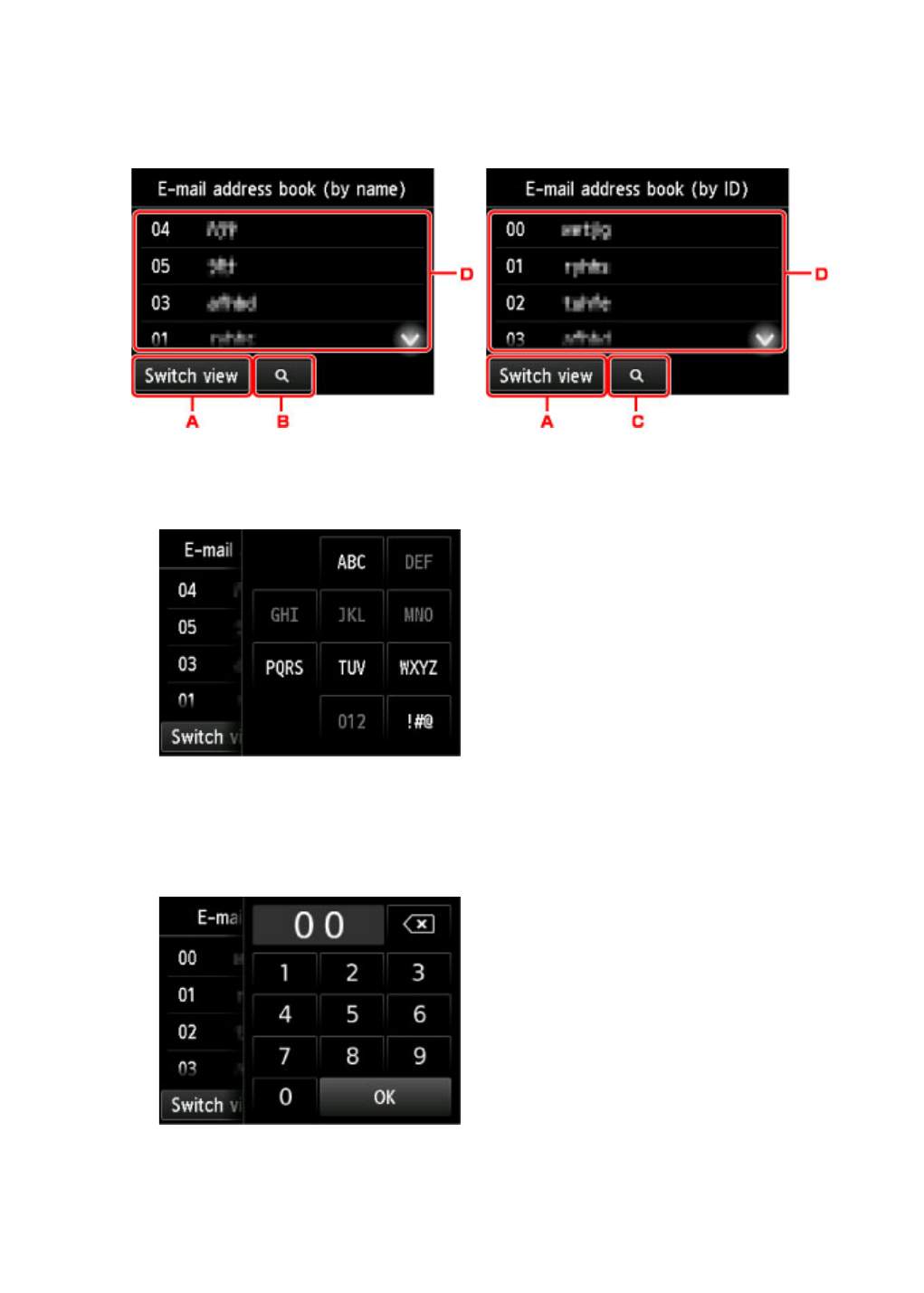
10. Register the registered recipient as a member of the group e-mail.
1. Tap Add member.
The address book is displayed.
Display by name Display by ID number
A. Tap to switch the display by name and by ID number.
B. Tap to display the screen to select an initial. You can search the registered recipient by initial.
By selecting the initial, the registered recipients are displayed in alphabetical order from the
selected character.
C. Tap to display the screen to select an ID number of the registered recipient. You can search
the registered recipient by ID number.
By entering the ID number and tapping OK, the registered recipients are displayed in order
from the recipient of the ID number selected.
D. The recipients that can be registered are displayed.
2. Tap recipient to register as group member.
896
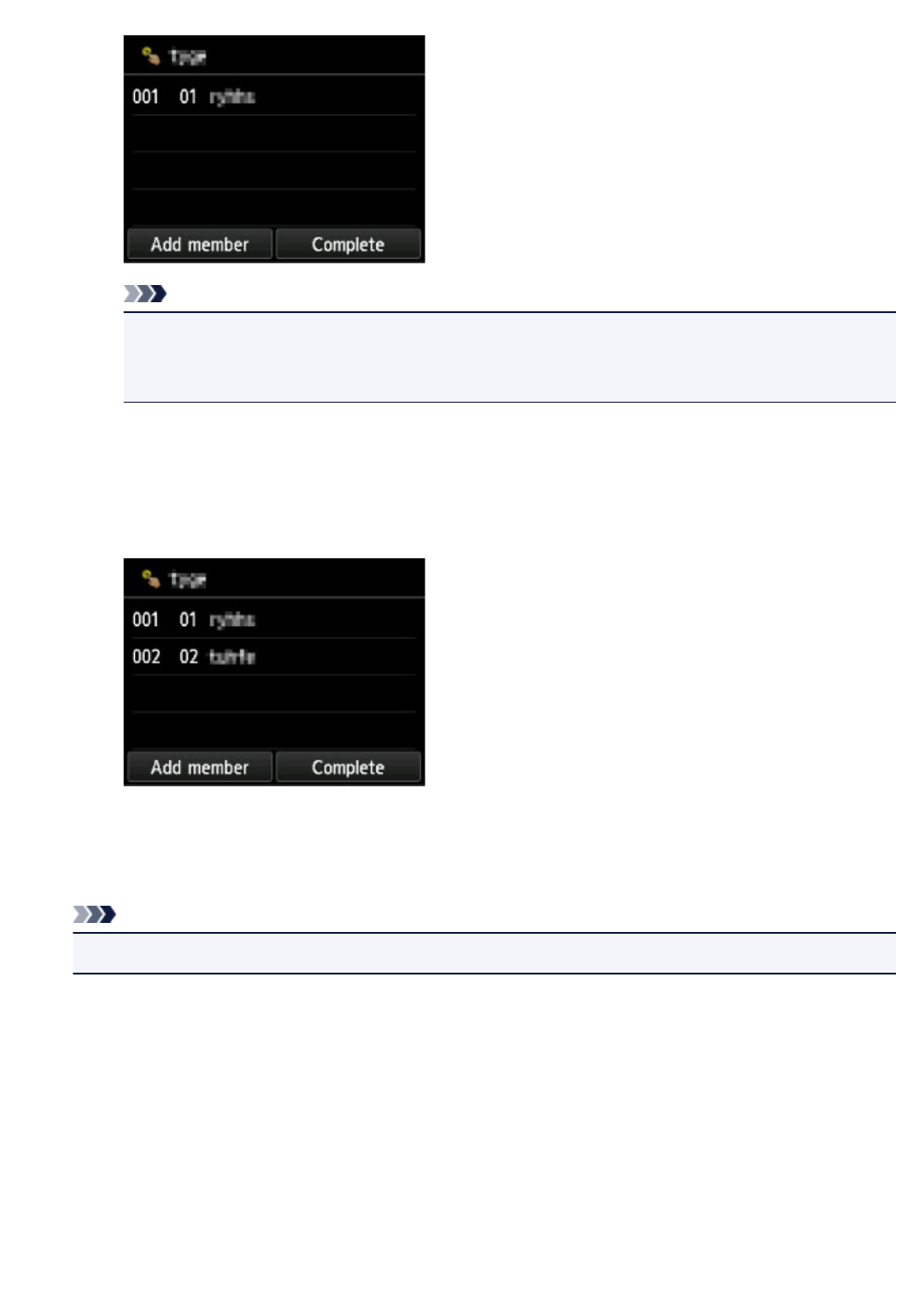
The member to register is displayed on the list.
Note
•To delete the recipient from the group e-mail, tap a recipient that you want to delete from the
list. After the confirmation screen is displayed, tap Yes to delete the recipient from the group
e-mail.
3. To add another member, tap Add member again.
The address book is displayed.
4. Tap recipient to register as group member.
The member to register is displayed on the list.
Repeat the procedure to register another member to the same group e-mail.
11. Tap Complete to finalize registration.
Note
•To register another group, select an unregistered ID number and operate in the same procedure.
897
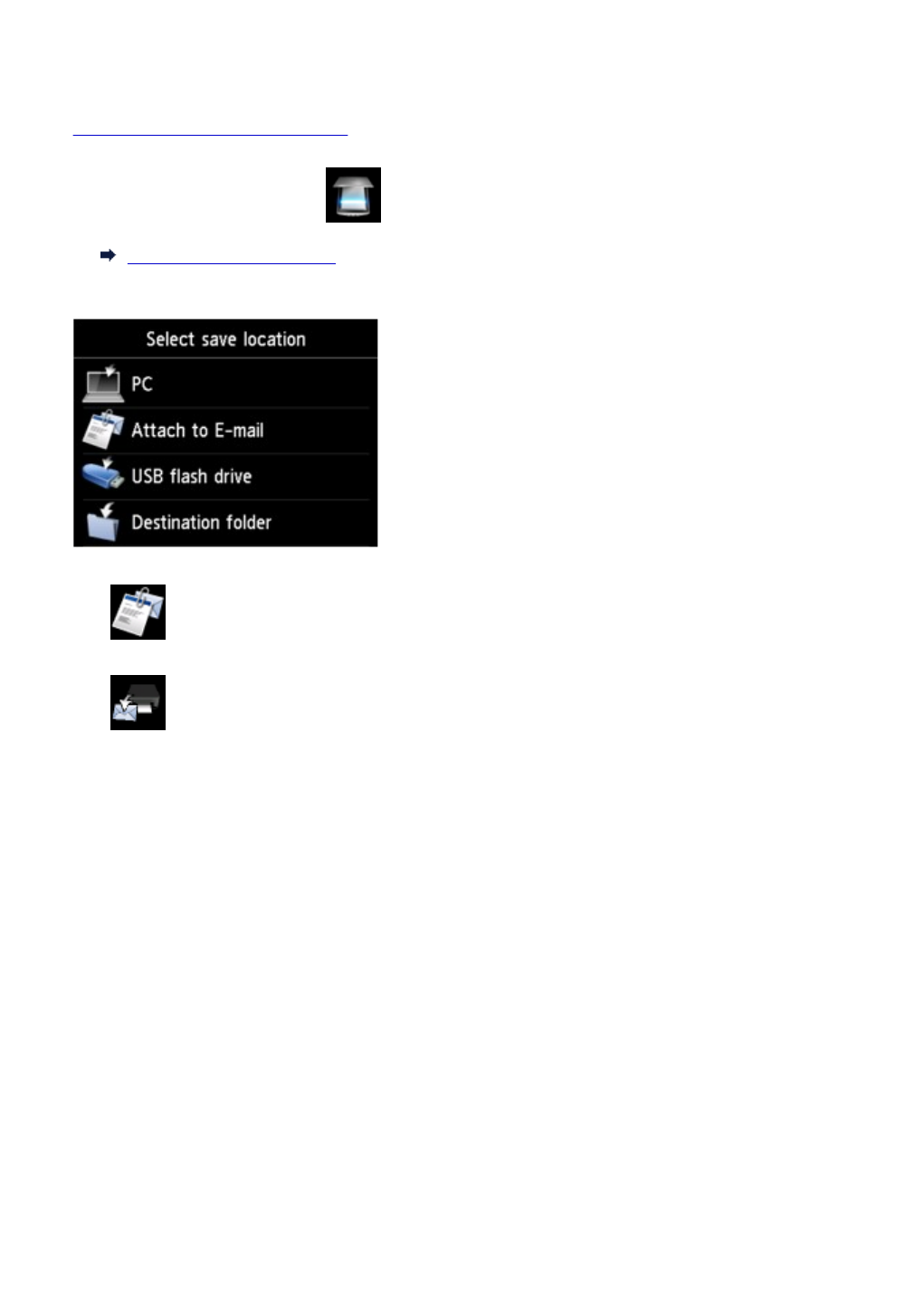
Changing Registered Information
To change information registered for recipient and group e-mail, follow the procedure below.
1. Make sure printer is turned on.
2. Flick HOME screen and tap Scan.
Using the Operation Panel
The screen for selecting to which you save the data is displayed.
3. Tap Attach to E-mail.
4. Tap E-mail directly from device.
5. Tap Edit e-mail address book.
6. Tap Display e-mail address book.
7. Tap recipient or group e-mail to change.
8. Change registered information.
•To change an individual recipient:
1. Tap Edit e-mail address.
The registered information screen of the selected recipient is displayed.
2. Tap entry field of name or entry field of e-mail addresses.
The each edit screen is displayed.
3. Change name or e-mail addresses.
4. Tap OK.
The touch screen returns to the registered information screen.
898

5. Tap Register.
• To change a group e-mail:
1. Tap Edit group e-mail.
The registered information screen of the group e-mail is displayed.
2. To change group name, tap entry field of name.
When edit screen of group name is displayed, change the group name then tap OK.
3. To add member, tap Add member.
When the printer's directory is displayed, tap the recipient you want to add.
4. To delete member, tap recipient on list.
When the confirmation screen is displayed, tap Yes to delete the recipient from the group e-
mail.
5. Tap Complete to finalize changing.
899
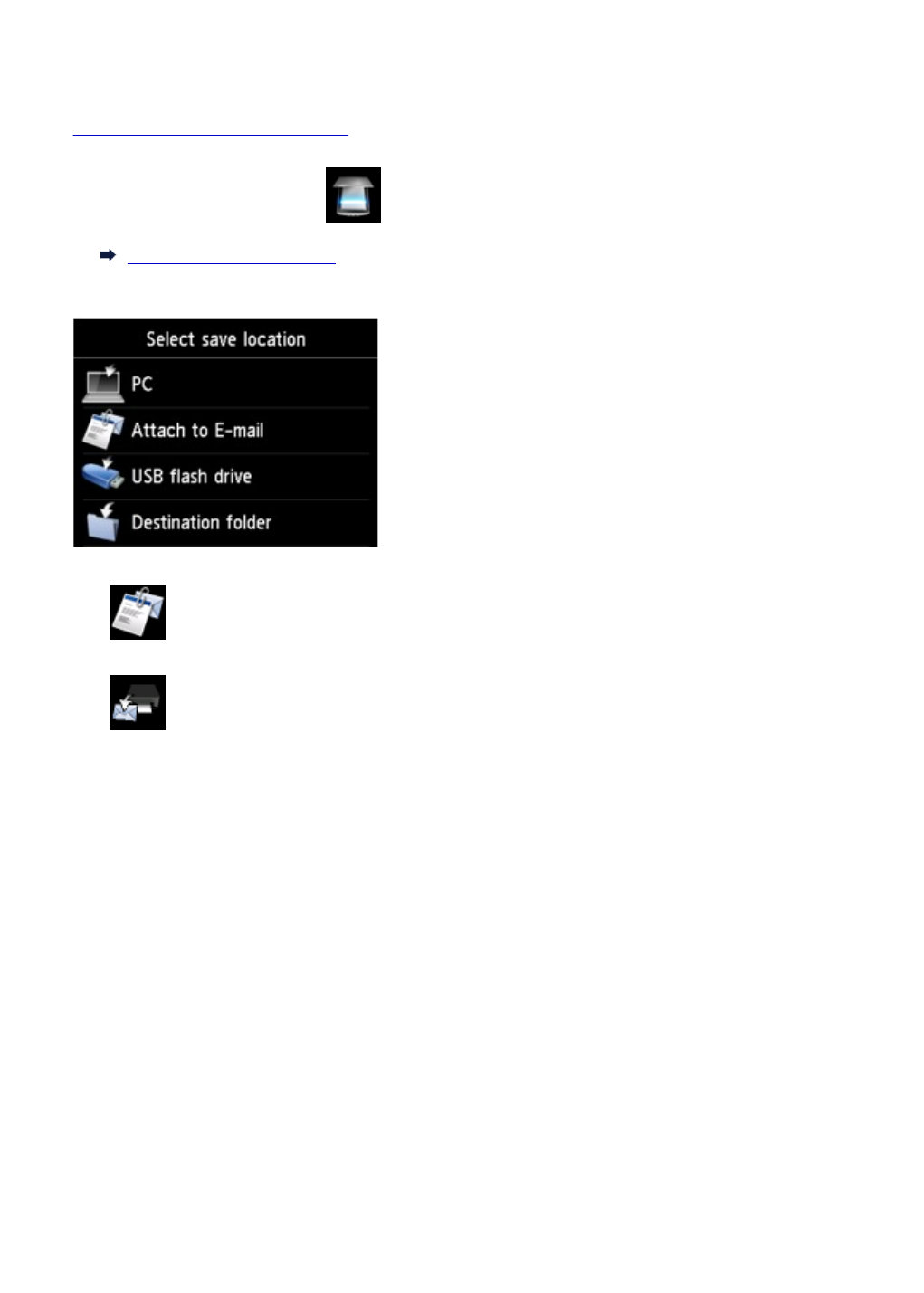
Deleting Registered Information
To delete information registered for recipient and group e-mail, follow the procedure below.
1. Make sure printer is turned on.
2. Flick HOME screen and tap Scan.
Using the Operation Panel
The screen for selecting to which you save the data is displayed.
3. Tap Attach to E-mail.
4. Tap E-mail directly from device.
5. Tap Edit e-mail address book.
6. Tap Display e-mail address book.
7. Tap recipient or group e-mail to delete.
8. Tap Delete e-mail address or Delete group e-mail.
9. When confirmation screen is displayed, tap Yes to delete.
900
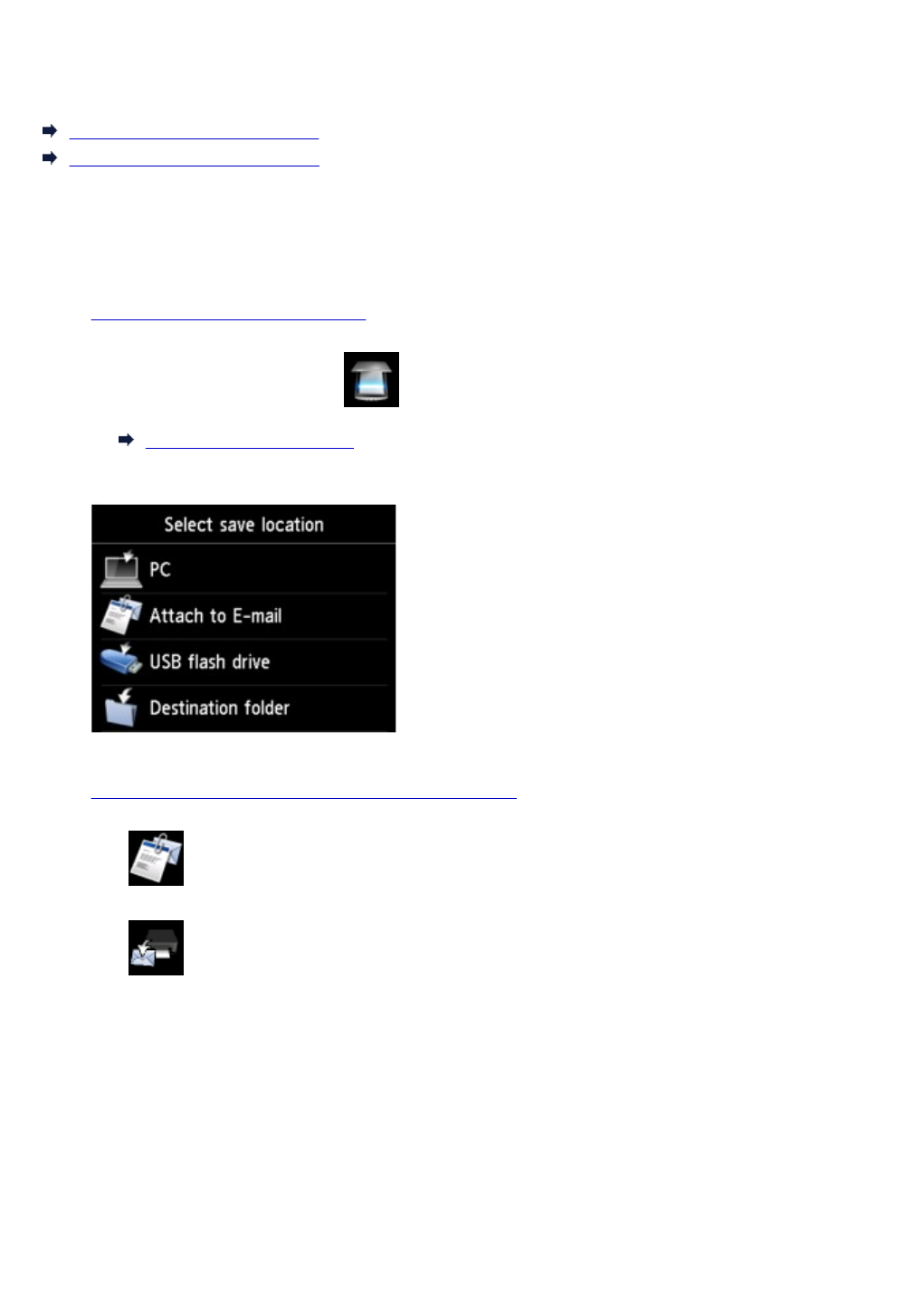
Importing/Exporting E-Mail Address Book
You can import an e-mail address book saved on a USB flash drive, or export the e-mail address book
saved on the printer to a USB flash drive.
Importing E-Mail Address Book
Exporting E-Mail Address Book
Importing E-Mail Address Book
Follow the procedure below to import the e-mail address book.
1. Make sure printer is turned on.
2. Flick HOME screen and tap Scan.
Using the Operation Panel
The screen for selecting to which you save the data is displayed.
3. Insert USB flash drive into USB flash drive port.
4. Tap Attach to E-mail.
5. Tap E-mail directly from device.
6. Tap Edit e-mail address book.
7. Tap Import e-mail address book.
8. Check message that is displayed and tap Yes.
The address book saved on the USB flash drive is imported and the address book on the printer is
overwritten. (The address book name is "EMAIL_ADDRESS.BIN").
901
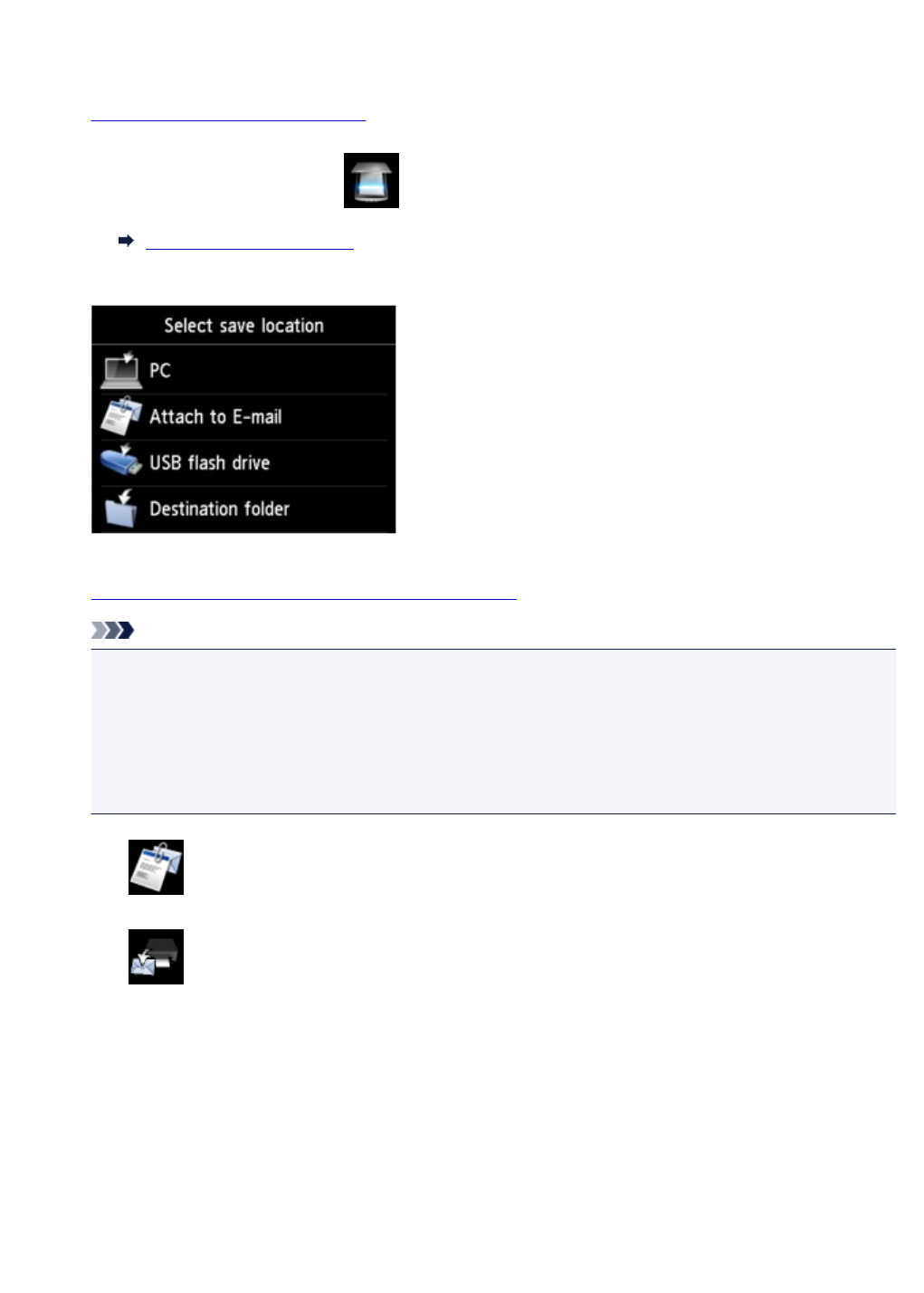
Exporting E-Mail Address Book
Follow the procedure below to export the e-mail address book.
1. Make sure printer is turned on.
2. Flick HOME screen and tap Scan.
Using the Operation Panel
The screen for selecting to which you save the data is displayed.
3. Insert USB flash drive into USB flash drive port.
Note
• To avoid overwriting the e-mail address book, you cannot save the book on a USB flash drive
which already includes it.
Delete the book from the USB flash drive or use the one which includes no book.
• The folder name which includes the e-mail address book is "CANON_SC_
\EMAIL_ADDRESS.BIN".
4. Tap Attach to E-mail.
5. Tap E-mail directly from device.
6. Tap Edit e-mail address book.
7. Tap Export e-mail address book.
8. Check message that is displayed and tap Yes.
The address book on the printer is saved on the USB flash drive.
902
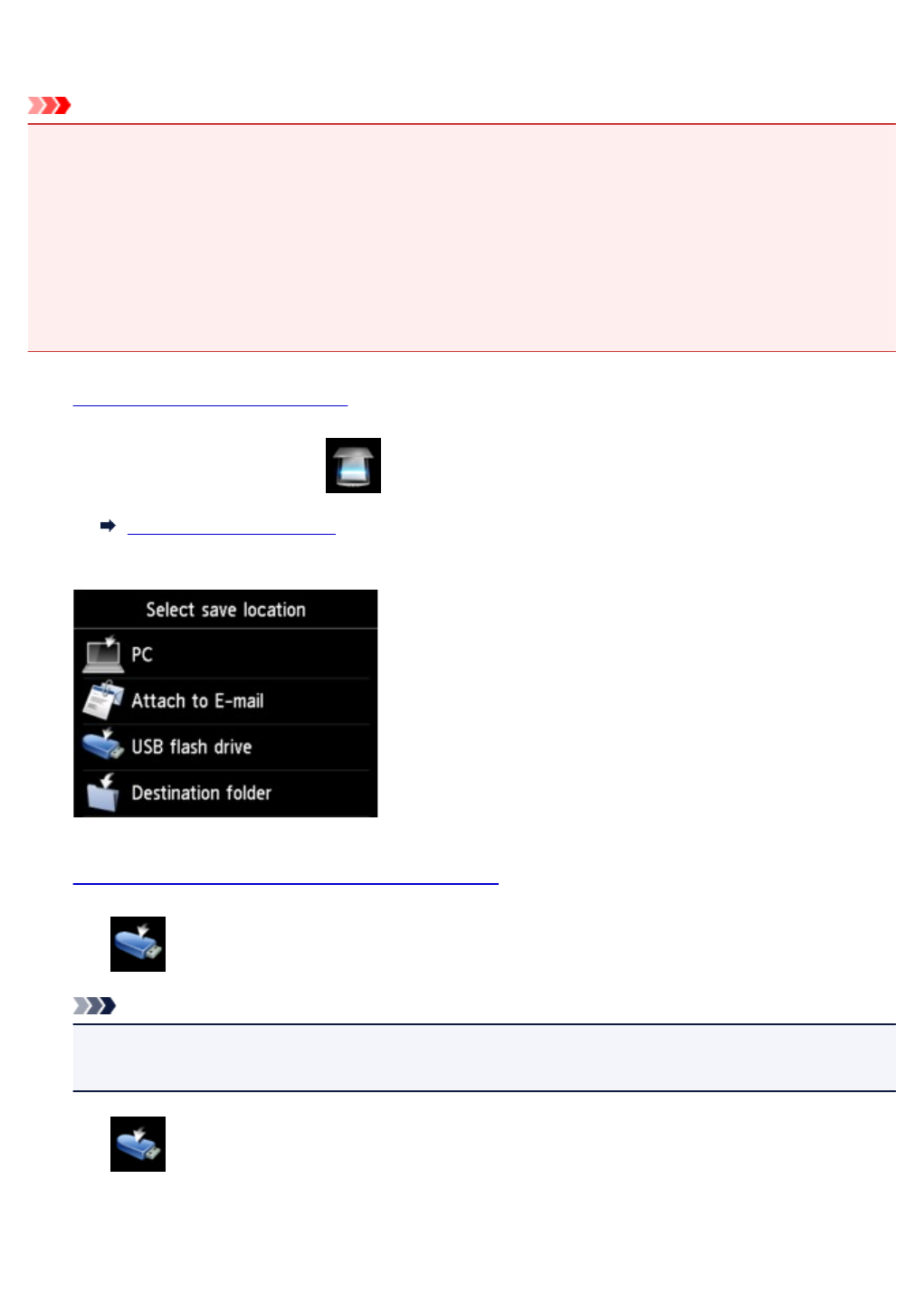
Saving Scanned Data on USB Flash Drive
You can save scanned data on the USB flash drive directly.
Important
• Do not remove the USB flash drive from the printer under the following conditions:
• While scanning is in progress
• Before saving the scanned data
• For safety reasons, we recommend backing up the scanned data saved on a USB flash drive to another
media periodically to avoid unexpected accidents.
• We assume no responsibility for damage to or loss of data for whatever reason even within the warranty
period.
1. Make sure printer is turned on.
2. Flick HOME screen and tap Scan.
Using the Operation Panel
The screen for selecting to which you save the data is displayed.
3. Insert USB flash drive into USB flash drive port.
4. Tap USB flash drive.
Note
•When the message informing you that the operation restriction is enabled, ask the administrator of
the printer you are using.
5. Tap Save to USB flash drive.
The Scan standby screen is displayed.
6. Adjust settings as necessary.
903
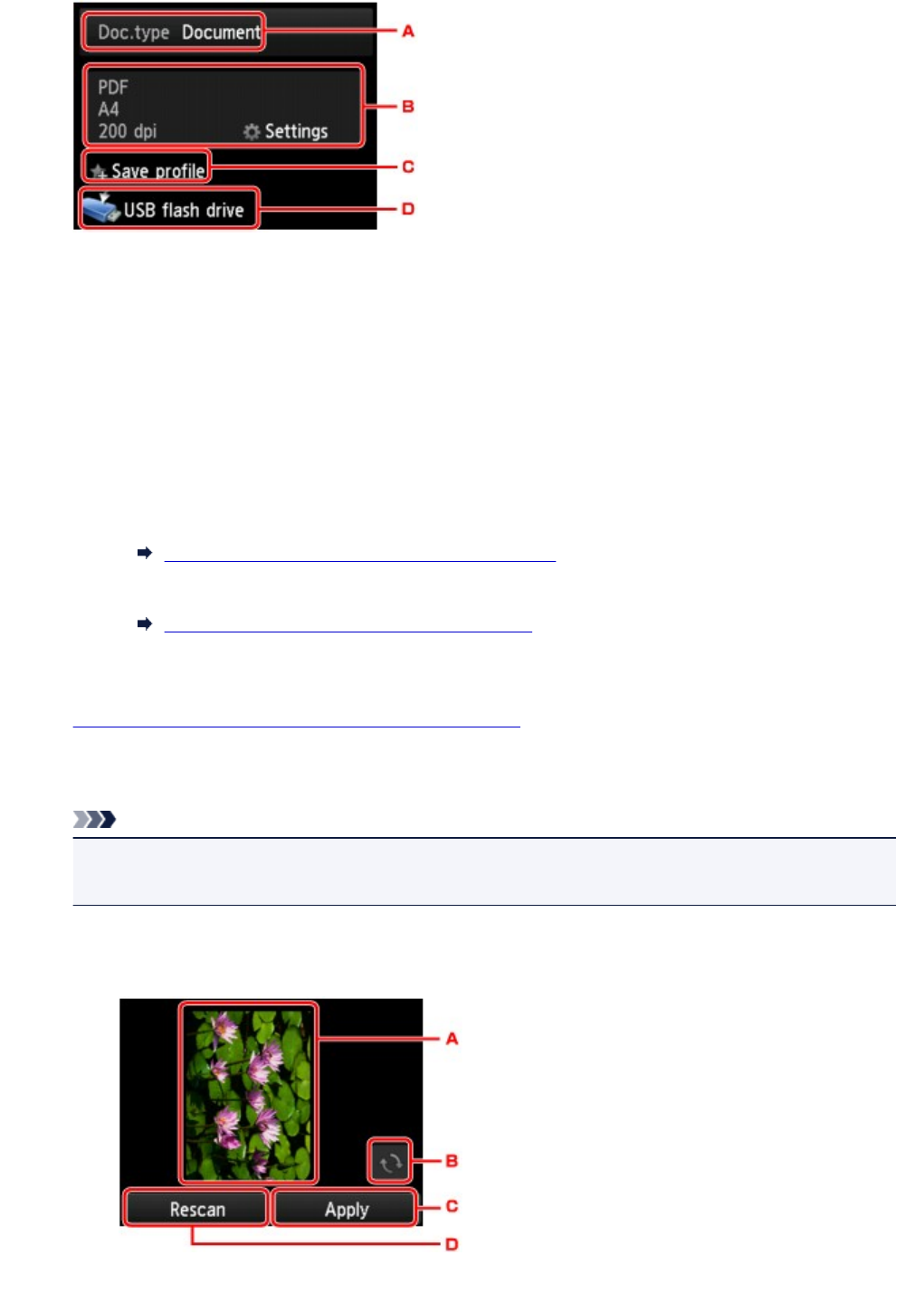
A. Tap to select the document type.
Document
Scans the original on the platen glass or the ADF as a document data applying the settings
specified in Scan settings.
Photo
Scans the original on the platen glass as a photo data applying the settings specified in Scan
settings.
B. Tap to display Scan settings screen.
For more on the setting items:
Setting Items for Scanning Using Operation Panel
C. Tap to register the current scan settings as a custom setting.
Registering Favorite Settings (Custom profiles)
D. Tap to display the screen to select the destination.
7. Load original document on platen glass or in ADF.
8. Press Color button for color scanning, or Black button for black & white scanning.
Note
• If the original is not loaded properly, a message is displayed on the touch screen. Load the original
on the platen glass or in the ADF according to the scan settings.
•If you select ON for Preview on the scan setting screen:
The preview screen is displayed before saving the scanned original on the USB flash drive.
904
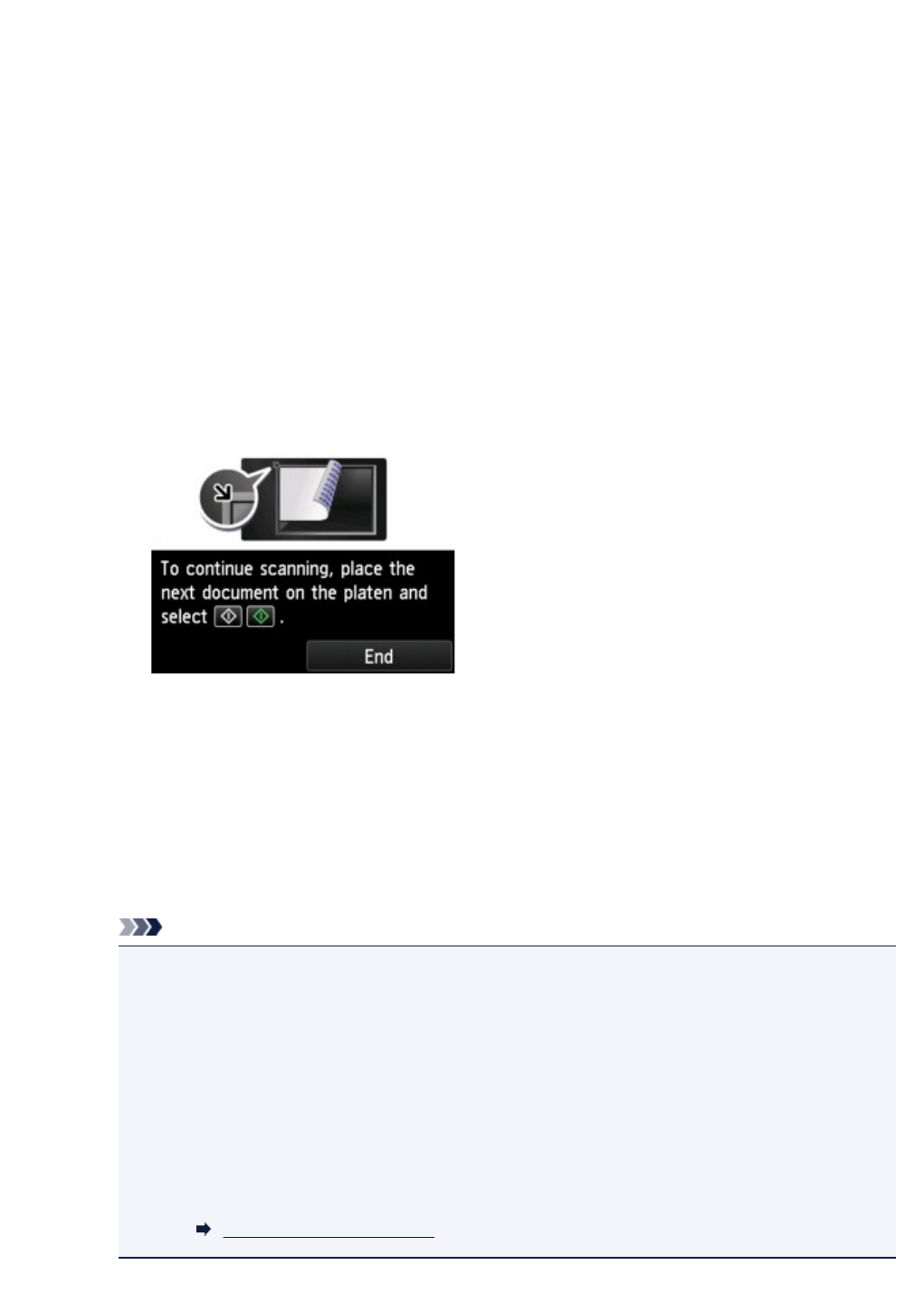
A. The preview screen of the scanning data is displayed.
B. Tap to rotate the preview screen.
Displayed when you select PDF or Compact PDF for Format on the scan setting screen.
C. Tap to save the scanned original on the USB flash drive.
D. Tap to rescan the original.
•If you load the original in the ADF:
The printer starts scanning and scanned data is saved on the USB flash drive.
•If you load the original on the platen glass:
◦When you select JPEG for Format on the scan settings screen, the printer starts scanning and
scanned data is saved on the USB flash drive.
◦When you select PDF or Compact PDF for Format on the scan settings screen, the
confirmation screen asking you if you continue scanning is displayed after scanning is
complete.
If you continue scanning, load the original on the platen glass and start scanning.
If you do not continue scanning, tap End. The scanned data is saved on the USB flash drive in
one PDF file.
When you scan the originals continuously, you can save up to 100 pages of images in one
PDF file.
Remove the original on the platen glass or from the document output slot after scanning is
complete.
Note
•If the USB flash drive becomes full while scanning images is in progress, only the images
already scanned can be saved.
•You can save up to 2000 files of scanned data in both PDF and JPEG data format.
•The folder and file name of scanned data saved on the USB flash drive is as follows:
•Folder name: (file extension: PDF): CANON_SC\DOCUMENT\0001
•Folder name: (file extension: JPG): CANON_SC\IMAGE\0001
•File name: Running numbers, starting from SCN_0001
•File date: The date and time of saving as set in the printer.
For details on how to set the date and time:
Setting Sender Information
905

• Importing the Scanned Data Saved on USB Flash Drive to the Computer
You can import the scanned data saved on a USB flash drive to the computer. After scanning the data,
connect the USB flash drive to the computer and import the data.
906
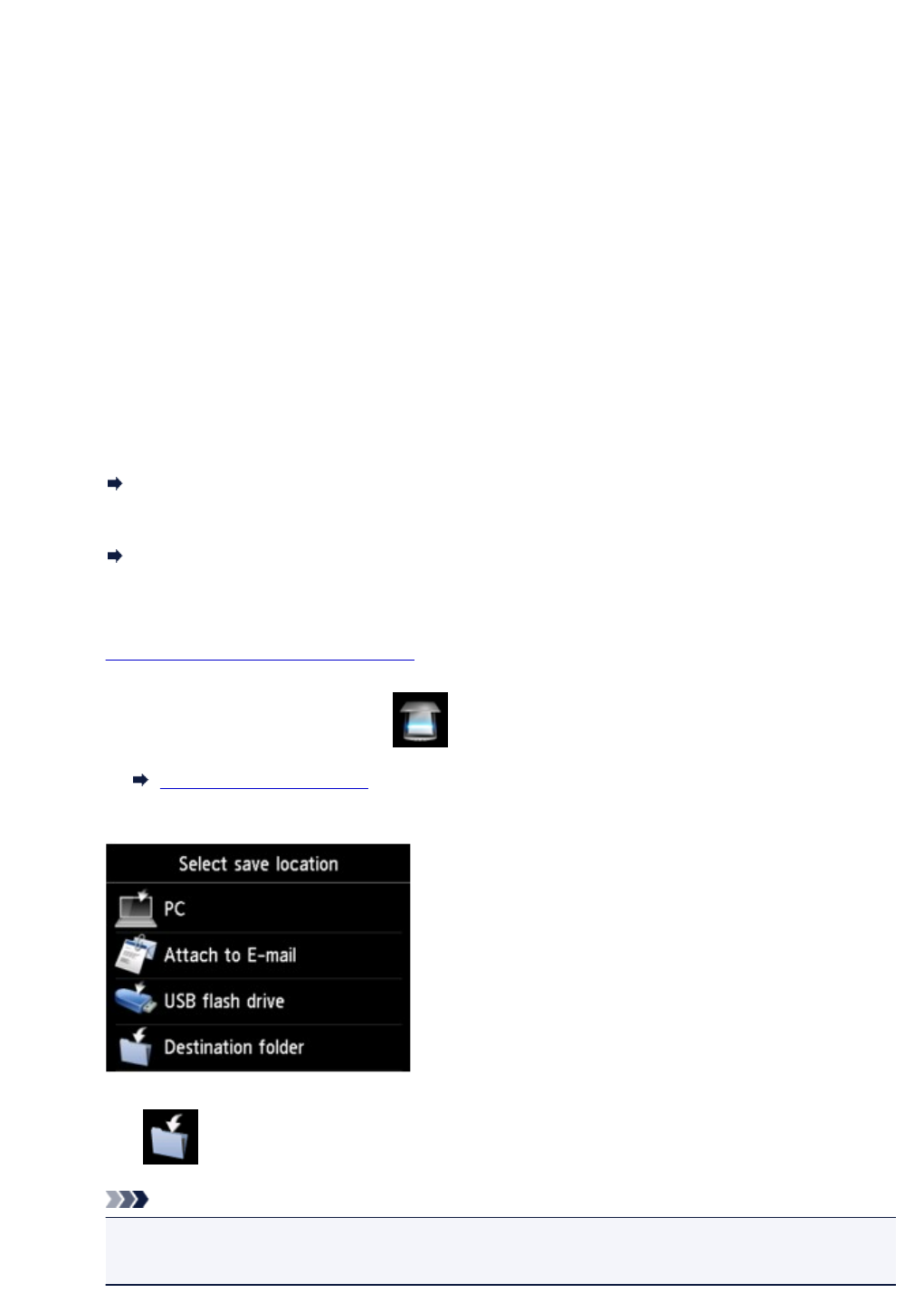
Forwarding Scanned Data to Shared Folder on Computer
Before forwarding scanned data on the shared folder on the computer, confirm the following:
•MP Drivers and Canon Quick Utility Toolbox are installed. (Windows)
If MP Drivers and Canon Quick Utility Toolbox are not yet installed, install them with the Setup CD-ROM
or install them from our website.
•The scanner driver and Canon Quick Utility Toolbox are installed. (Mac OS)
If the scanner driver and Canon Quick Utility Toolbox are not yet installed, install them from our website.
•The printer is connected to a computer via a LAN correctly.
•The destination folder is registered using Canon Quick Utility Toolbox in advance.
You can register the destination folder using Canon Quick Utility Toolbox. For more on settings of Canon
Quick Utility Toolbox:
◦ For Windows:
Destination Folder Settings
◦ For Mac OS:
Destination Folder Settings
Follow the procedure below to forward scanned data to the shared folder on the computer.
1. Make sure the printer is turned on.
2. Flick the HOME screen and tap Scan.
Using the Operation Panel
The screen for selecting to which you save the data is displayed.
3. Tap Destination folder.
Note
•When the message informing you that the operation restriction is enabled, ask the
administrator of the printer you are using.
907
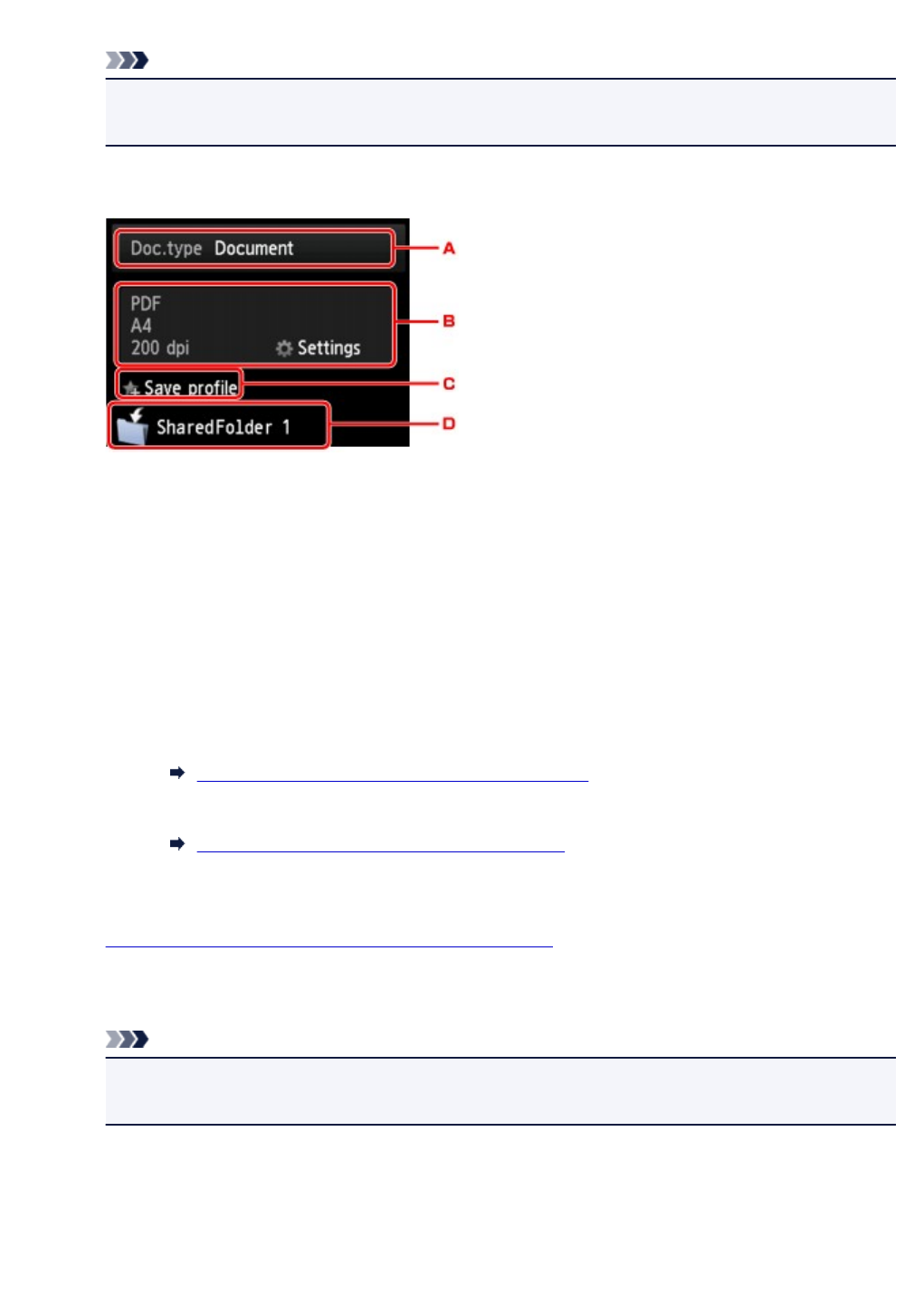
4. Tap the folder to save scanned data on the Select folder screen.
Note
•When you specify a PIN code for a registered folder, a screen asking you to enter a PIN code
is displayed. Entering the PIN code allows you to assign the shared folder as the destination.
5. Specify settings as necessary.
A. Tap to select the document type.
Document
Scans the original on the platen glass or in the ADF as a document data applying the
settings specified in Scan settings.
Photo
Scans the original on the platen glass as a photo data applying the settings specified in
Scan settings.
B. Tap to display Scan settings screen.
For details on the setting items:
Setting Items for Scanning Using Operation Panel
C. Tap to register the current scan settings as a custom setting.
Registering Favorite Settings (Custom profiles)
D. Tap to display the screen to select the destination.
6. Load original document on platen glass or in ADF.
7. Press Color button for color scanning, or Black button for black & white scanning.
Note
•If the original is not loaded properly, a message is displayed on the touch screen. Load the
original on the platen glass or in the ADF according to the scan settings.
◦If you select ON for Preview on the scan setting screen:
The preview screen is displayed before forwarding the scanned original to the shared folder on
the computer.
908
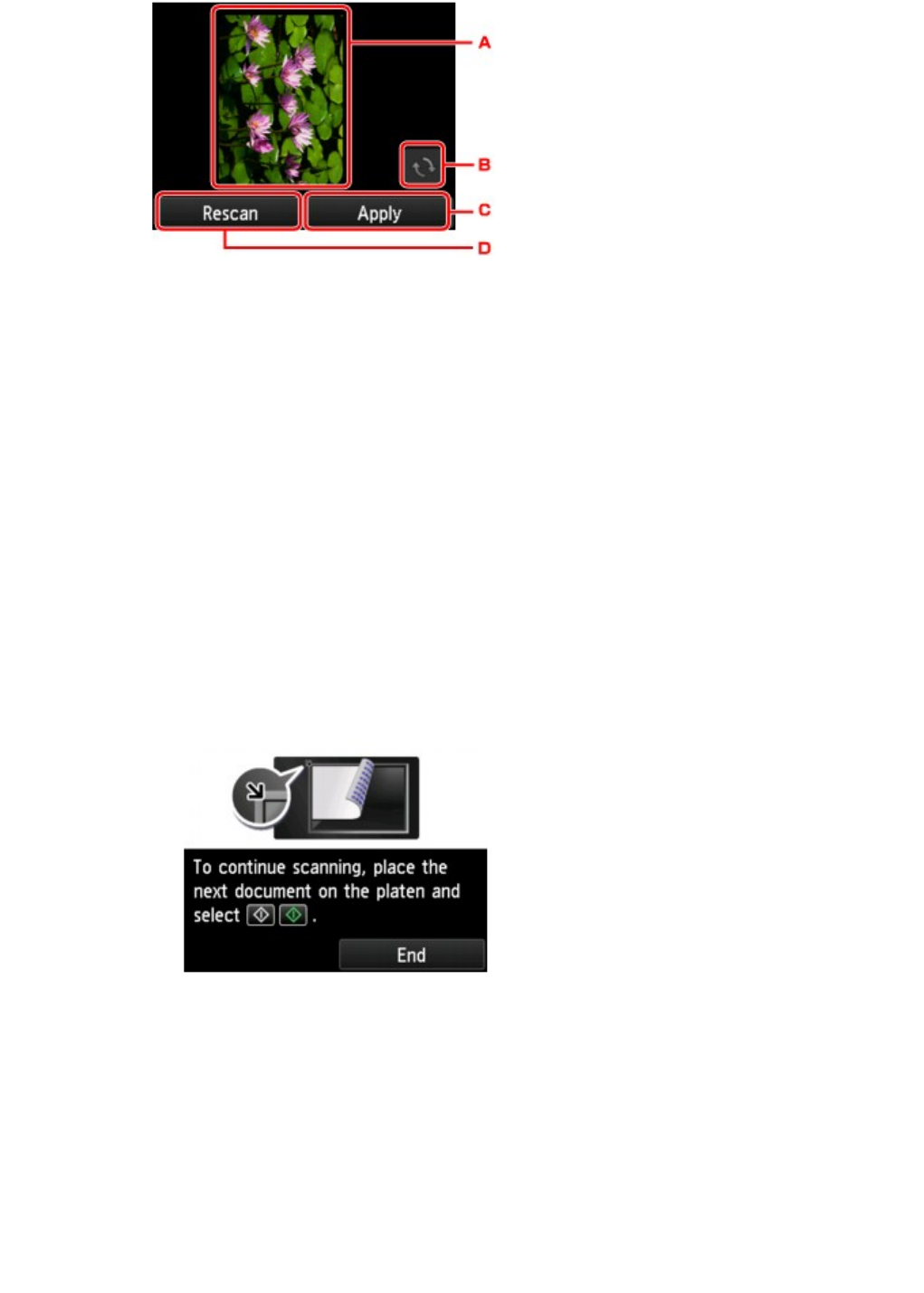
A. The preview screen of the scanning data is displayed.
B. Tap to rotate the preview screen.
Displayed when you select PDF or Compact PDF for Format on the scan setting screen.
C. Tap to forward the scanned original to the shared folder on the computer.
D. Tap to rescan the original.
◦If you load the original in the ADF:
The printer starts scanning and scanned data is forwarded to the shared folder of the
computer.
◦If you load the original on the platen glass:
■When you select JPEG for Format on the scan setting screen, the printer starts scanning
and scanned data is saved on the shared folder of the computer.
■ When you select PDF or Compact PDF for Format on the scan setting screen, the
confirmation screen asking you if you continue scanning is displayed after scanning is
complete.
If you continue scanning, load the original on the platen glass and start scanning.
If you do not continue scanning, tap End. The scanned data is forwarded to the shared folder on the
computer in one PDF file.
Scanned data is forwarded to the shared folder on the computer according to the settings specified
in Canon Quick Utility Toolbox.
Remove the original on the platen glass or from the document output slot after scanning is complete.
909
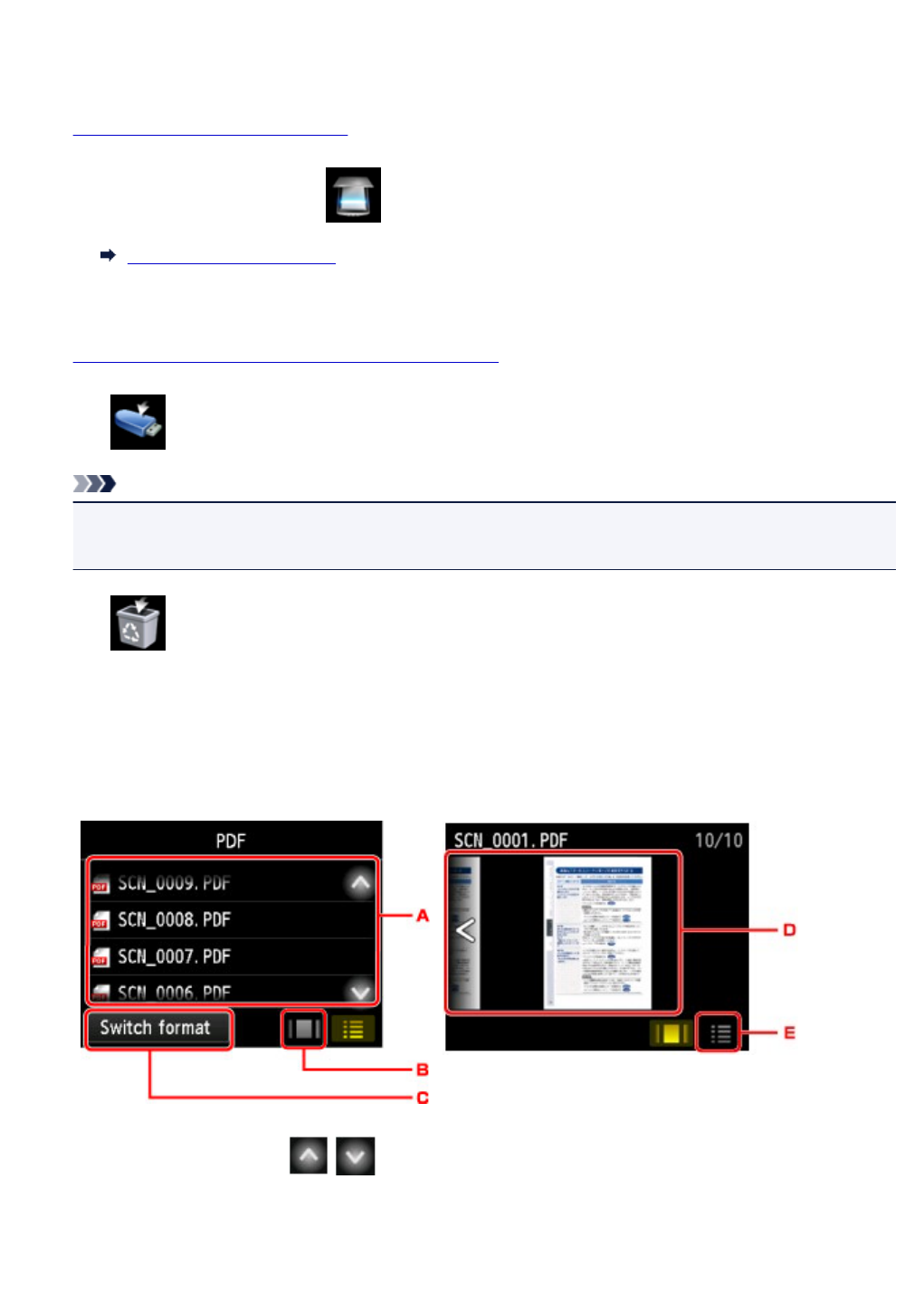
Deleting Scanned Data on USB Flash Drive
You can delete scanned data on the USB flash drive using the operation panel.
1. Make sure printer is turned on.
2. Flick HOME screen and tap Scan.
Using the Operation Panel
The screen for selecting to which you save the data is displayed.
3. Insert USB flash drive into USB flash drive port.
4. Tap USB flash drive.
Note
• When the message informing you that the operation restriction is enabled, ask the administrator of
the printer you are using.
5. Tap Delete saved data.
The file list is displayed.
6. Select data to delete.
File name list Preview screen
A. Flick vertically or tap to display the file name and tap to delete the data.
When the format for PDF data is selected, only the first page of the PDF data is displayed on the
touch screen.
B. Tap to display the preview screen.
910

When the format for PDF data is selected, only the first page of the PDF data is displayed on the
touch screen.
C. Tap to switch the file type displayed on the touch screen.
D. Flick to display the data and tap to delete the data.
E. Tap to display the file name list.
7. Tap Yes on confirmation screen.
The printer starts deleting the file.
911
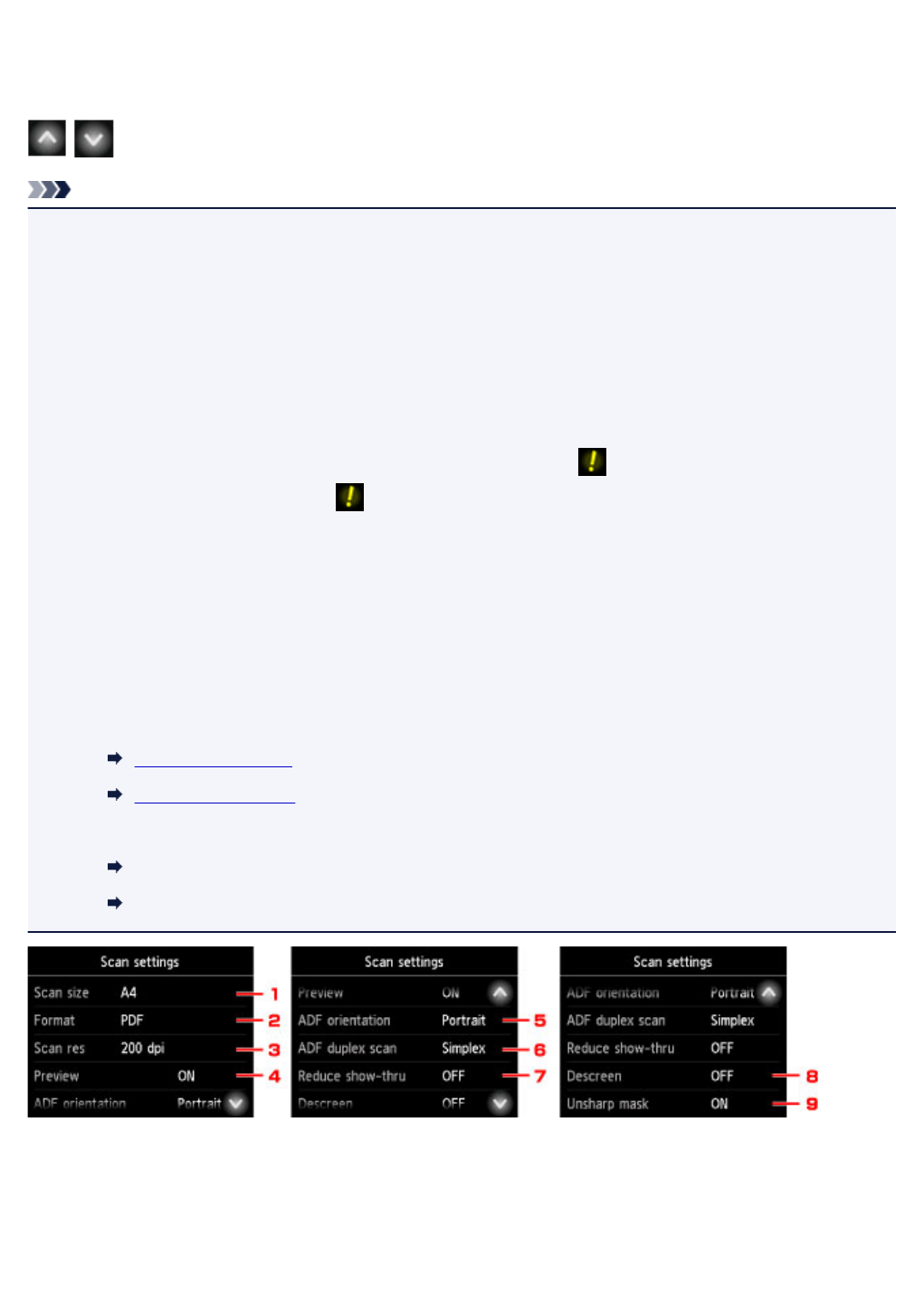
Setting Items for Scanning Using Operation Panel
You can change the scan settings such as the scan size, resolution, or data format.
When the Scan standby screen is displayed, tap Settings to select the setting item. Flick vertically or tap
to display setting items and tap the setting item to display the settings. Tap to specify the setting.
Note
• When you forward the scanned data to the computer using WSD (one of the network protocols
supported in Windows 10, Windows 8.1, Windows 8, Windows 7, and Windows Vista), you cannot
specify the scan setting.
• Depending on the destination, some setting items cannot be selected. This section describes the
setting items when you select USB flash drive on the screen for selecting to which you save the data.
The setting item which cannot be selected is displayed grayed out.
• Some settings cannot be specified in combination with the setting of other setting item, the document
type selected for Doc.type, or the scan menu on the screen for selecting to which you save the data. If
the setting which cannot be specified in combination is selected, and Error details are displayed on
the touch screen. In this case, tap on the upper left on the touch screen to check the message and
change the setting.
• The specified scan settings other than ADF orientation and ADF duplex scan such as the scan size,
resolution, and data format are retained even if the printer is turned off.
• When scanning starts in the scan menu that is not available with the specified setting, The specified
function is not available with current settings. is displayed on the touch screen. Change the setting,
following the on-screen instructions.
• For setting items or procedure for scanning from the computer:
• For Windows:
Settings Dialog Box
Using IJ Scan Utility
• For Mac OS:
Settings Dialog
Using IJ Scan Utility
1. Scan size
Select the size of the original.
2. Format
912
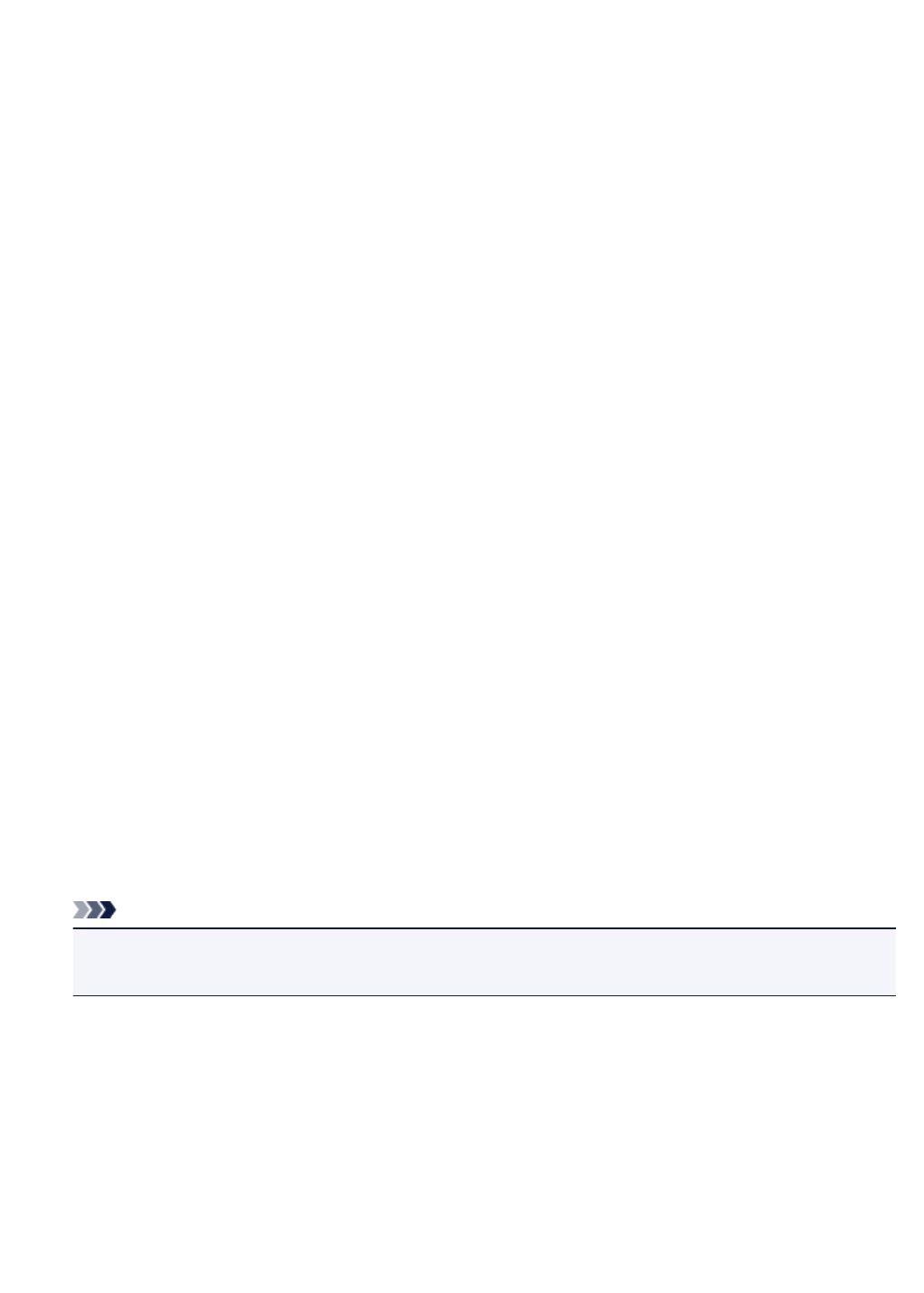
Select the data format of the scanned data.
3. Scan res (Scan resolution)
Select the resolution for scanning.
4. Preview
Select to preview the scanned data or not when saving the data on a USB flash drive or forwarding to a
shared folder.
5. ADF orientation
Select the orientation of the original document.
This setting item is not available when Photo is selected for Doc.type.
6. ADF duplex scan
Select the scanning method when using ADF. When you select Duplex, tap Advanced to select the
stapling side.
This setting item is not available when Photo is selected for Doc.type.
7. Reduce show-thru (Reducing show-through)
Characters on the back may show through when scanning a thin document such as a newspaper. Select
ON if characters seem to show through on the scanned document.
This setting item is not available when Photo is selected for Doc.type.
8. Descreen
A printout consists of minute dots to make characters or graphs. Interfering with each dot may result in
uneven shades or a striped pattern. Select ON if you notice any uneven shades or a striped pattern on
the scanned image.
This setting item is not available when Photo is selected for Doc.type.
Note
•Even if ON is selected for this setting, some moire effects may remain if Unsharp mask is set to
ON. In that case, select OFF for Unsharp mask.
9. Unsharp mask
The outline of small characters or thin objects such as a hair or leaves on a photo can be accentuated.
Select ON if you want to accentuate the outline of the scanned data.
913
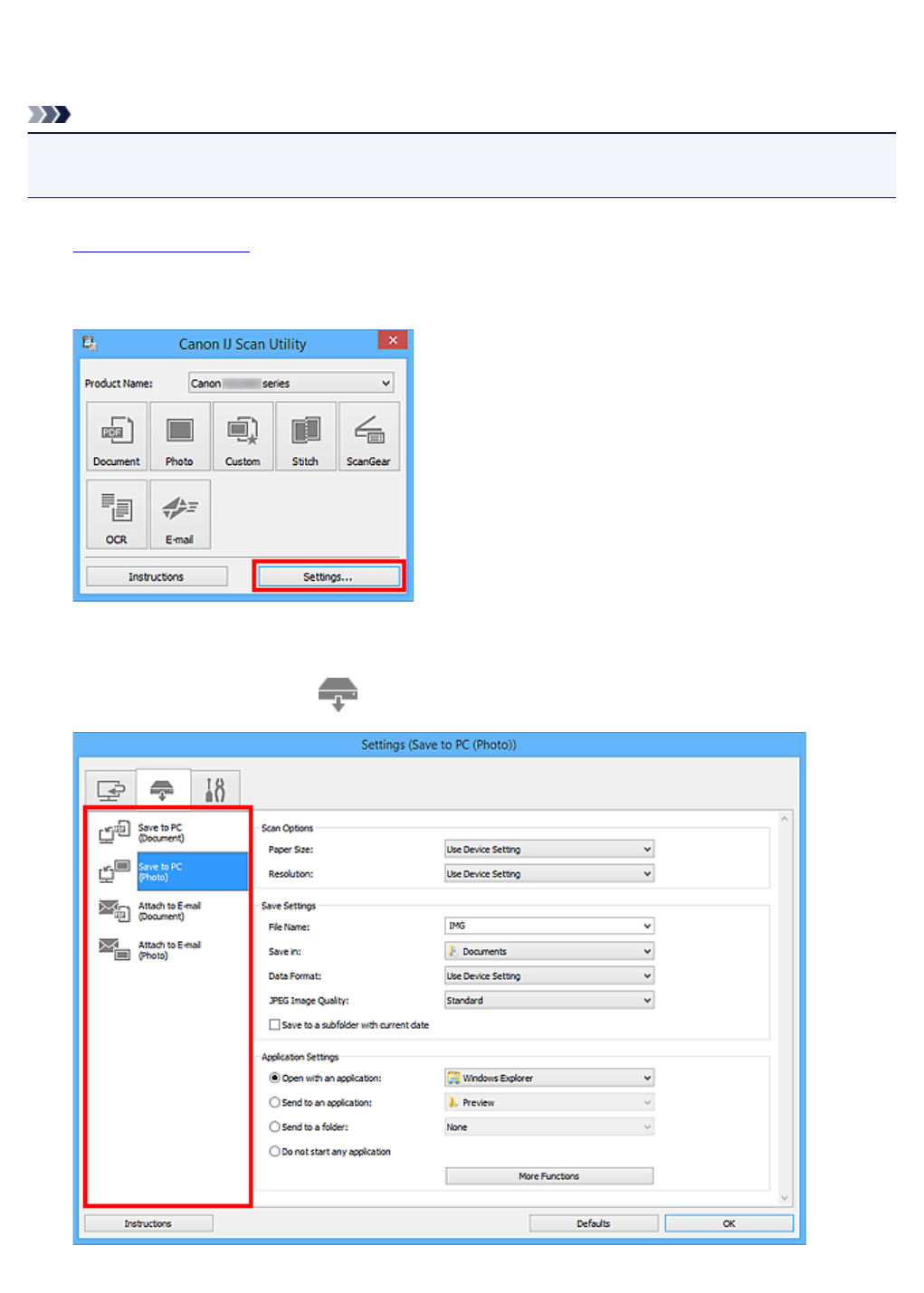
Setting Up Operation Panel with IJ Scan Utility (Windows)
IJ Scan Utility allows you to specify how to respond when scanning from the operation panel.
Note
• The screens for scanning photos from the operation panel are used as examples in the following
descriptions.
1. Start IJ Scan Utility.
2. Click Settings....
The Settings dialog box appears.
3. Select a scan mode on the (Scanning from the Operation Panel) tab.
914
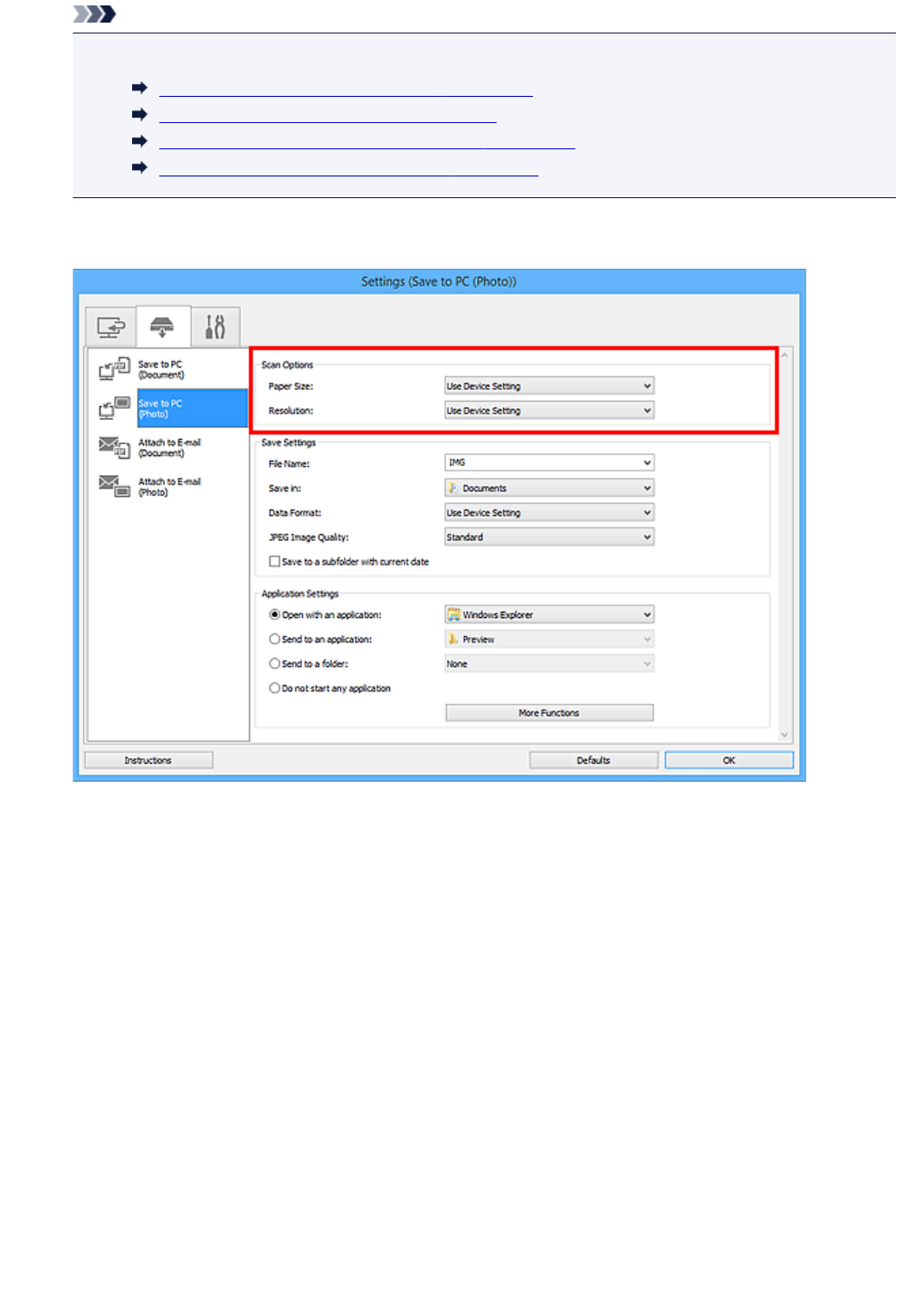
Note
• Refer to the following for details.
Settings (Save to PC (Document)) Dialog Box
Settings (Save to PC (Photo)) Dialog Box
Settings (Attach to E-mail (Document)) Dialog Box
Settings (Attach to E-mail (Photo)) Dialog Box
4. Set Scan Options.
5. Specify the file name and other settings in Save Settings.
915
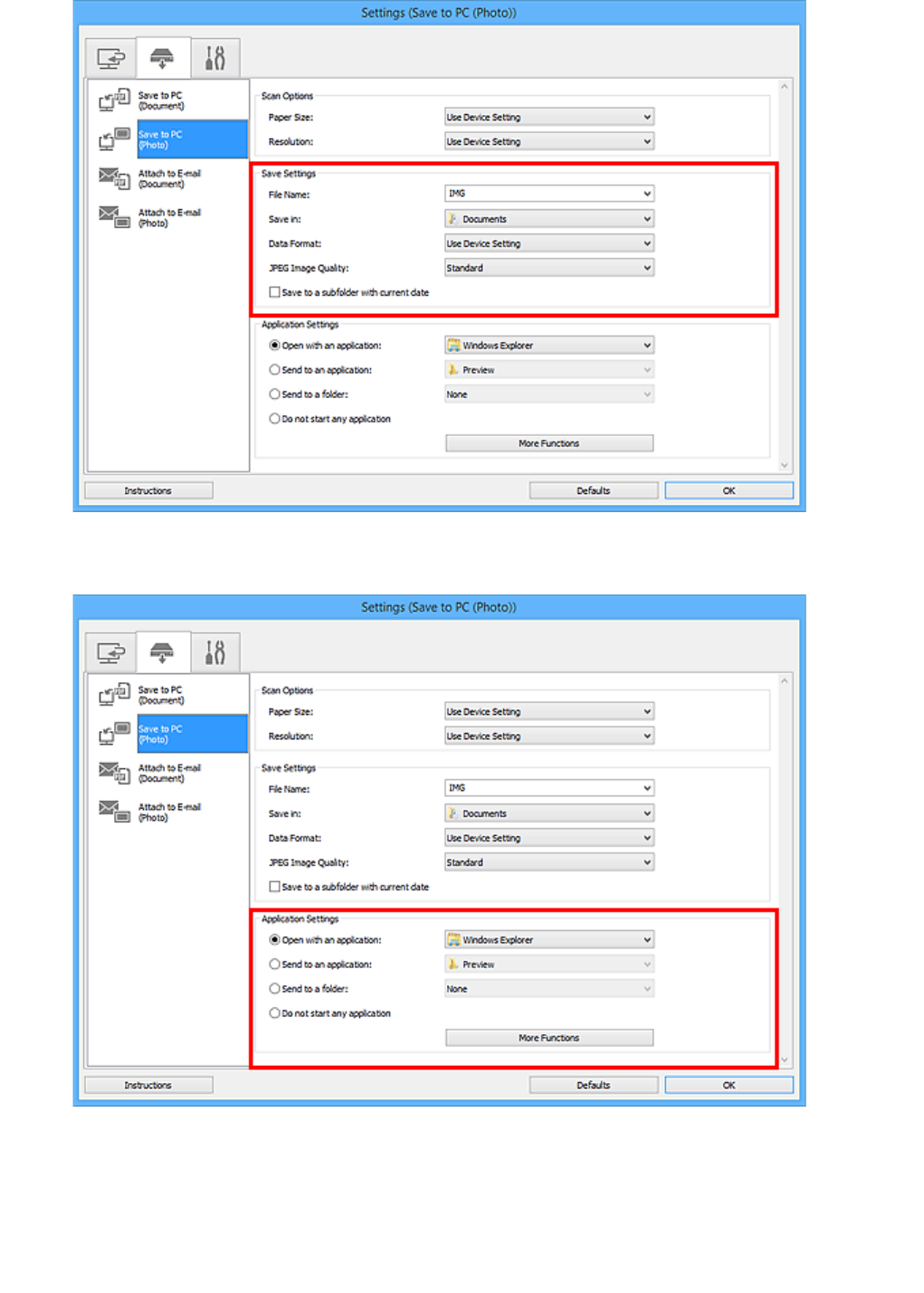
6. Select the application you want to start after scanning in Application Settings.
7. Click OK.
The responses will be executed according to the specified settings when you start scanning from the
operation panel.
916
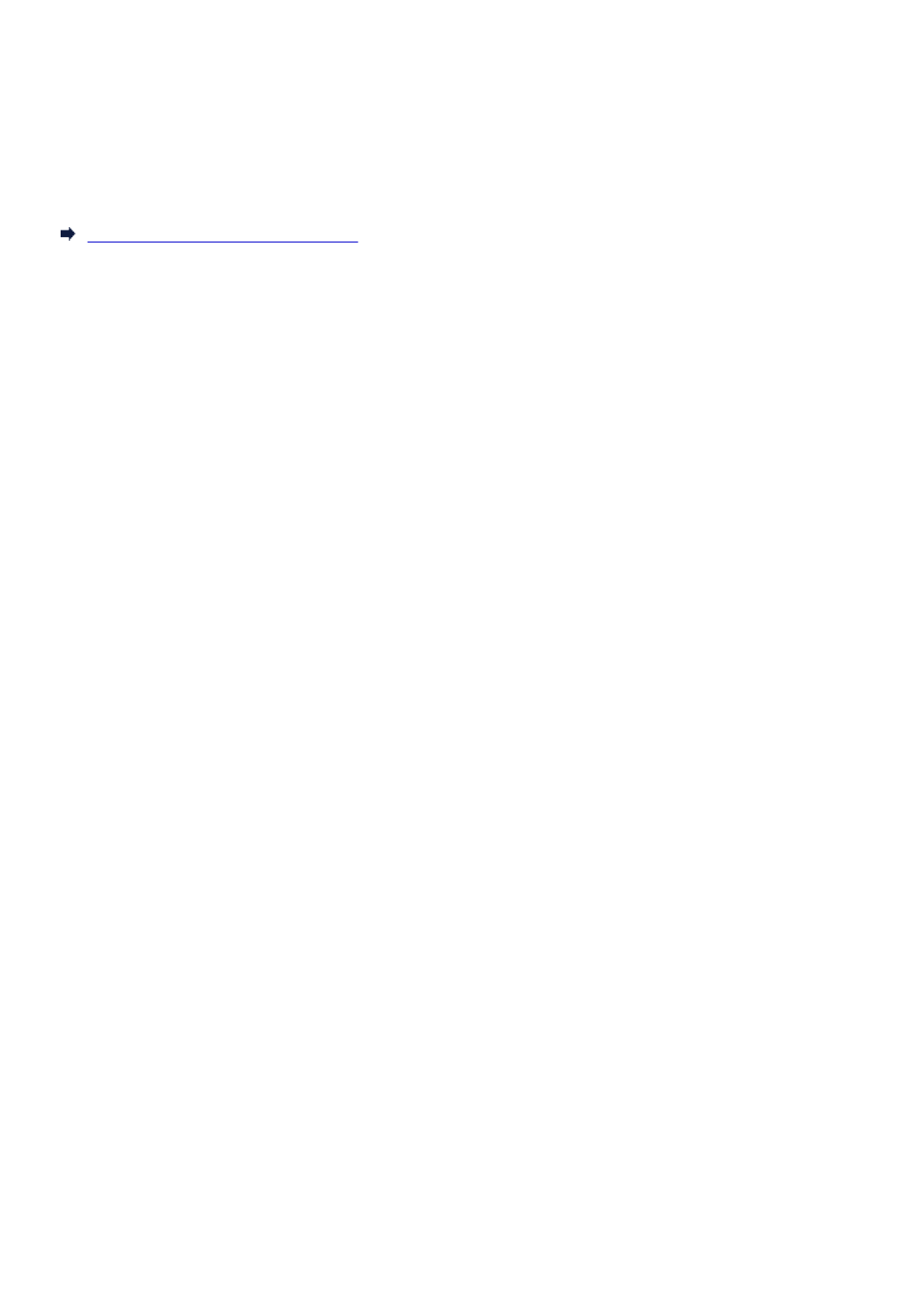
Scanning Using Smartphone/Tablet
This machine supports the following scan functions.
PIXMA/MAXIFY Cloud Link
PIXMA/MAXIFY Cloud Link is a web service provided by Canon. Save scanned images to data storage
services through integration with various cloud services without using a computer.
Using PIXMA/MAXIFY Cloud Link
917
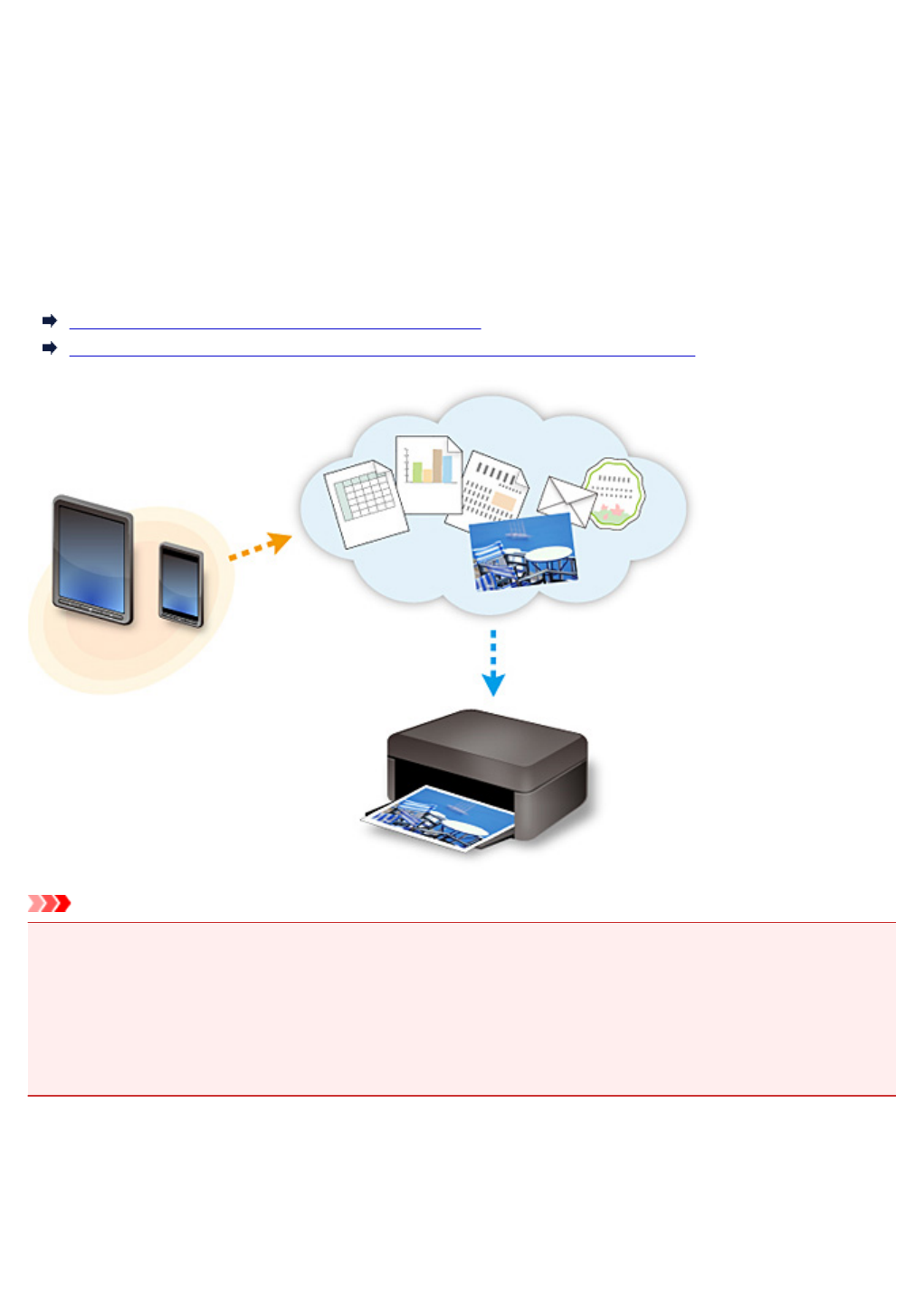
Using PIXMA/MAXIFY Cloud Link
By using PIXMA/MAXIFY Cloud Link, you can connect your printer to a cloud service, such as CANON
iMAGE GATEWAY, Evernote, or Twitter, and use the following functions without using a computer:
• Print images from a photo-sharing service
• Print documents from a data management service
• Save scanned images to a data management service.
• Use Twitter to report the printer status, such as no paper or low ink levels.
In addition, you can use various functions by adding and registering apps that are linked with various cloud
services.
Using PIXMA/MAXIFY Cloud Link from Your Printer
Using PIXMA/MAXIFY Cloud Link from Your Smartphone, Tablet, or Computer
Important
• In certain countries, PIXMA/MAXIFY Cloud Link may not be available or the available apps may be
different.
• Some apps require that you have an account before you use those apps. For such apps, please set up
an account beforehand.
• To find out which models support PIXMA/MAXIFY Cloud Link check the Canon homepage.
• The screen display may change without prior notice.
918
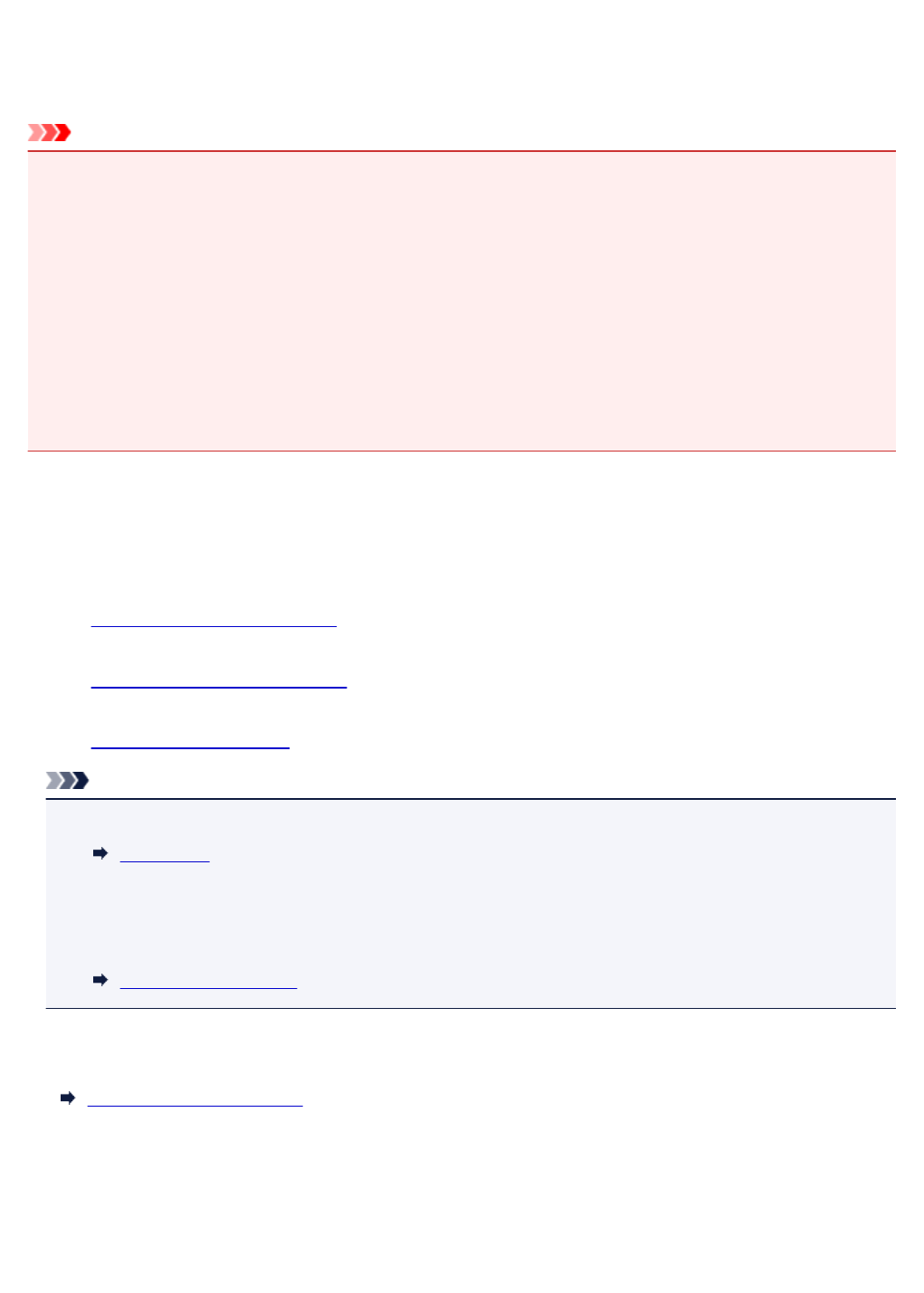
Preparing for Faxing
Connect the printer to the telephone line and set up the printer before using the faxing functions. Then
specify the basic setting such as sender information, date/time, and daylight saving time.
Important
• If the Power Disconnects:
If there is a power failure or if you accidentally unplug the power cord, the date/time settings will be
reset.
• The settings for user information and directory will be retained.
• All faxes stored in the printer's memory, such as unsent and received faxes, will be lost.
If the power disconnects, the following will apply:
• You will not be able to send or receive faxes, make copies, or scan originals.
• When you are connecting the telephone, whether or not you can use it depends upon your
telephone line or telephone.
Setting Up Printer
The printer must be set up depending on your telephone line and use of the faxing function. Follow the
procedure below to set up the printer.
1. Connecting Telephone Line
2. Setting Telephone Line Type
3. Setting Receive Mode
Note
• You can set the fax setting according to the instruction on the touch screen.
Easy setup
If you set up according to the instruction on the touch screen, the receive mode is set to TEL priority
mode or FAX only mode. To receive faxes with DRPD or Network switch, change the receive
mode.
Setting Receive Mode
Specifying Basic Settings for Faxing
Setting Sender Information
920
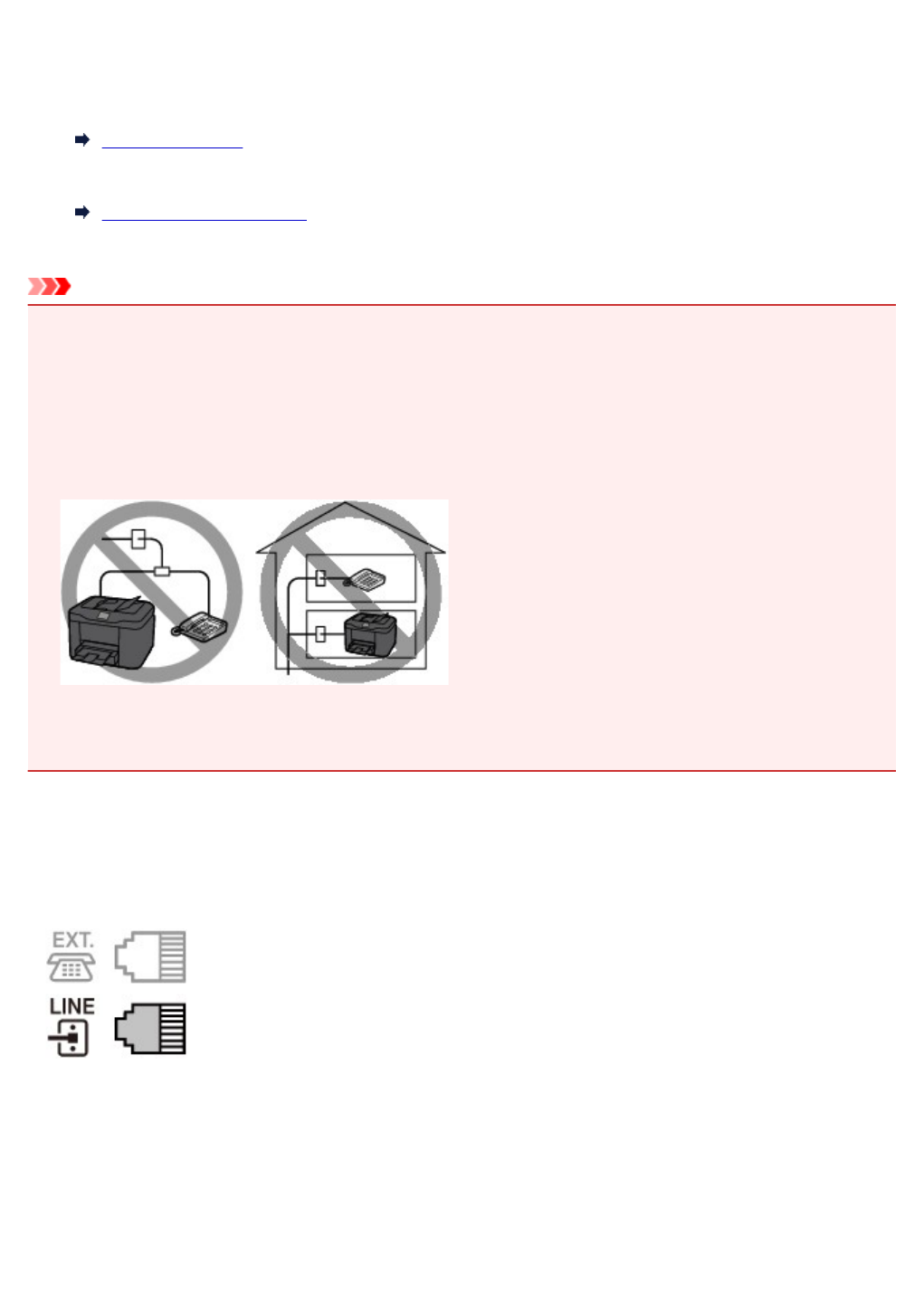
Connecting Telephone Line
The connection method differs depending on your telephone line.
• If you connect the printer to wall telephone line directly/If you connect the printer with the xDSL splitter:
Basic Connection
• If you connect the printer to another line such as an xDSL:
Connecting Various Lines
If the connection is incorrect, the printer cannot send/receive faxes. Connect the printer correctly.
Important
• Do not connect fax devices and/or telephones in parallel (US and Canada only).
If two or more fax devices and/or telephones are connected in parallel, the following problems may
occur and the printer may not operate properly.
• If you pick up the handset of the telephone that is connected in parallel during fax transmission or
reception, the fax image may be corrupted or a communication error may occur.
• Such services as Caller ID, etc. may not operate properly on the telephone.
If you cannot avoid parallel connections, set the receive mode to TEL priority mode, understanding
that the above problems may occur. You will only be able to receive faxes manually.
Basic Connection
Make sure that the printer is turned off, connect one end of supplied telephone line cable to the telephone
line jack near the "LINE" mark of the printer, and then connect the other end to the telephone line jack on
the wall or to the telephone line jack of the xDSL splitter.
When you connect the telephone to the printer, make sure that the printer is turned off, connect one end of
the modular cable to the external device jack near the "EXT." mark of the printer, and then connect the
other end to the telephone line jack of the telephone.
921
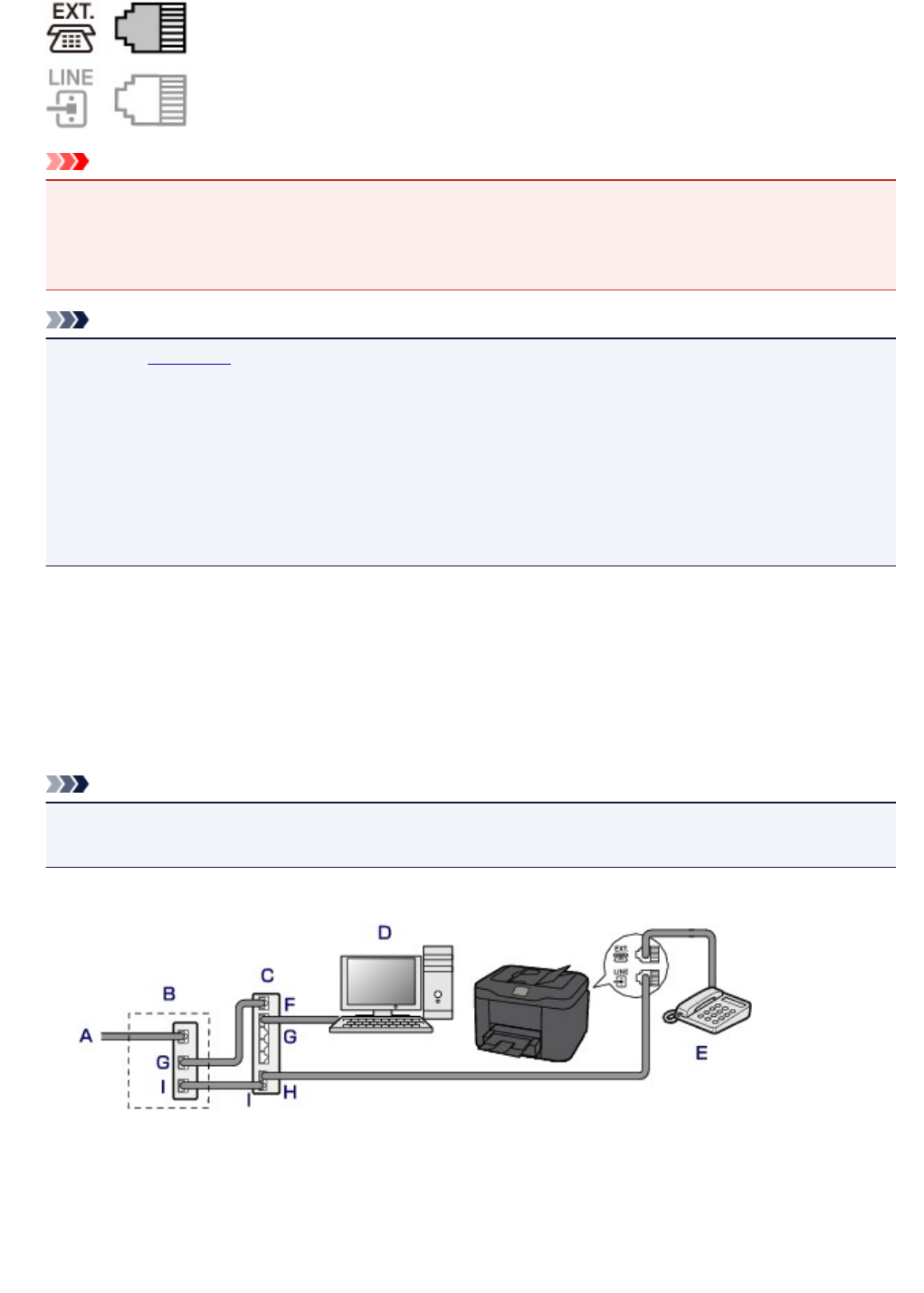
Important
• Be sure to connect the telephone line before the printer is turned on.
If you connect the telephone line when the printer is turned on, turn the printer off and unplug the
power cord. Wait for 1 minute, and then connect the telephone line and power plug.
Note
• Refer to Rear View for the position of the telephone line jack and the external device jack.
• Before connecting a telephone or answering machine, remove the Telephone connector cap.
•For users in the UK:
If the connector of the external device cannot be connected to the jack on the printer, you will need to
purchase a B.T. adapter to connect as follows:
Attach the B.T. adapter to the modular cable connecting the external device, and then connect the
B.T. adapter to the external device jack.
Connecting Various Lines
This section introduces how to connect various lines.
These are examples and could not be guaranteed to suit every connecting condition. For details, refer to
the instruction manual supplied with the network device (control devices such as an xDSL (Digital
Subscriber Line) modem or terminal adapter) you are connecting to this printer.
Note
• xDSL is the generic term for the high speed digital communication technology with telephone line
such as ADSL/HDSL/SDSL/VDSL.
•Connecting to an Internet Telephone
A. Digital Subscriber Line
B. xDSL modem (splitter may not be built-in to the modem)
C. Broadband router compatible with Internet Telephone
D. Computer
922
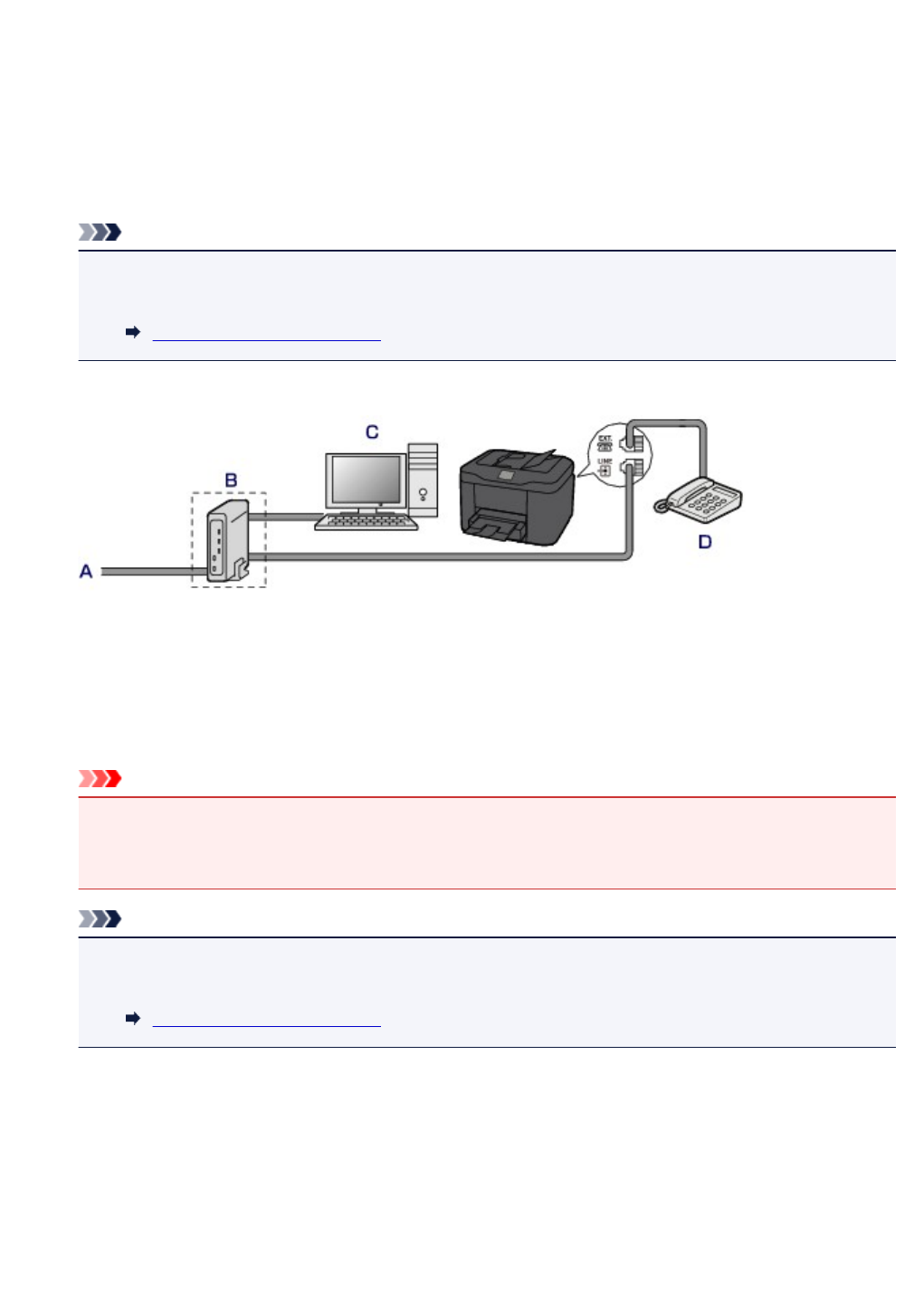
E. Telephone or answering machine
F. WAN (Wide Area Network) port
G. LAN (Local Area Network) port
H. TEL port
I. LINE port
* Port configurations and names may vary depending on the product.
Note
• When connecting to the xDSL line, select the same line type as you are subscribing to in
Telephone line type.
Setting Telephone Line Type
•Connecting to an xDSL
A. Analog Subscriber Line
B. xDSL modem (splitter may not be built-in to the modem)
C. Computer
D. Telephone or answering machine
Important
• When the splitter is not built-in to the modem, do not branch the telephone line before the splitter
(wall side). And also, do not connect splitters in parallel. The printer may not be able to operate
properly.
Note
• When connecting to the xDSL line, select the same line type as you are subscribing to in
Telephone line type.
Setting Telephone Line Type
•Connecting to an ISDN Line
For details on ISDN (Integrated Service Digital Network) connection and settings, refer to the manuals
supplied with your terminal adapter or dial-up router.
923
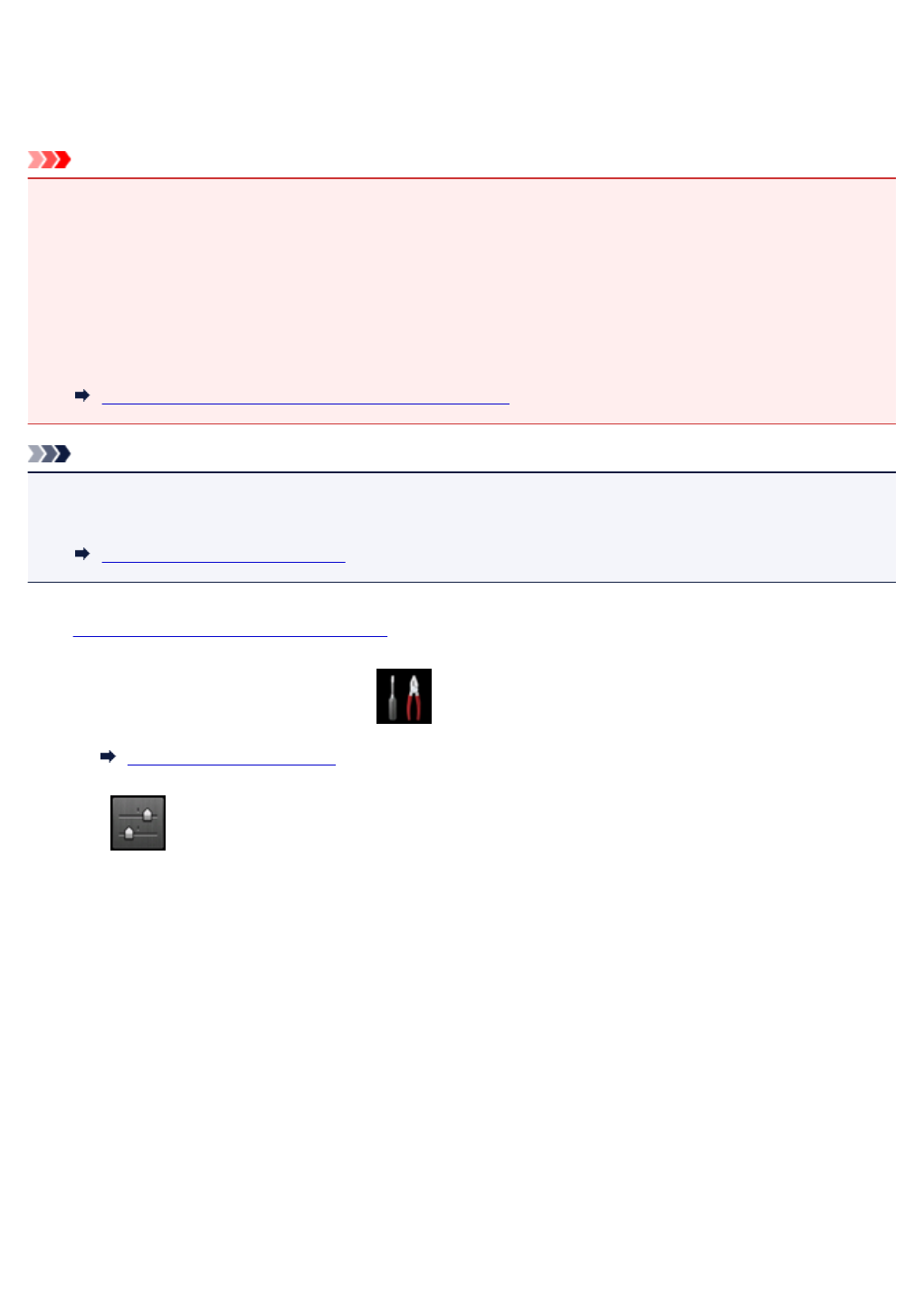
Setting Telephone Line Type
Before using your printer, make sure you set the correct telephone line type for your telephone line. If you
are unsure of your telephone line type, contact your telephone company. For xDSL or ISDN connections,
contact the telephone company or service provider to confirm your line type.
Important
•For users in China:
After plugging the power cord and turning on the printer, the telephone line type is selected
automatically. However, if the printer is connected to the control device such as an xDSL modem or
terminal adapter, the telephone line type may not be selected correctly.
In this case, set the line type manually.
For details on how to set the Telephone line type manually in China:
Setting the Telephone Line Type Manually in China
Note
•Telephone line type will not appear in countries or regions where Rotary pulse is not supported.
• You can print USER'S DATA LIST to check the current setting.
Summary of Reports and Lists
1. Make sure that printer is turned on.
2. Flick HOME screen, and then tap Setup.
Using the Operation Panel
3. Tap Device settings.
4. Tap FAX settings.
5. Tap FAX user settings.
6. Tap Telephone line type.
7. Tap a telephone line type.
924
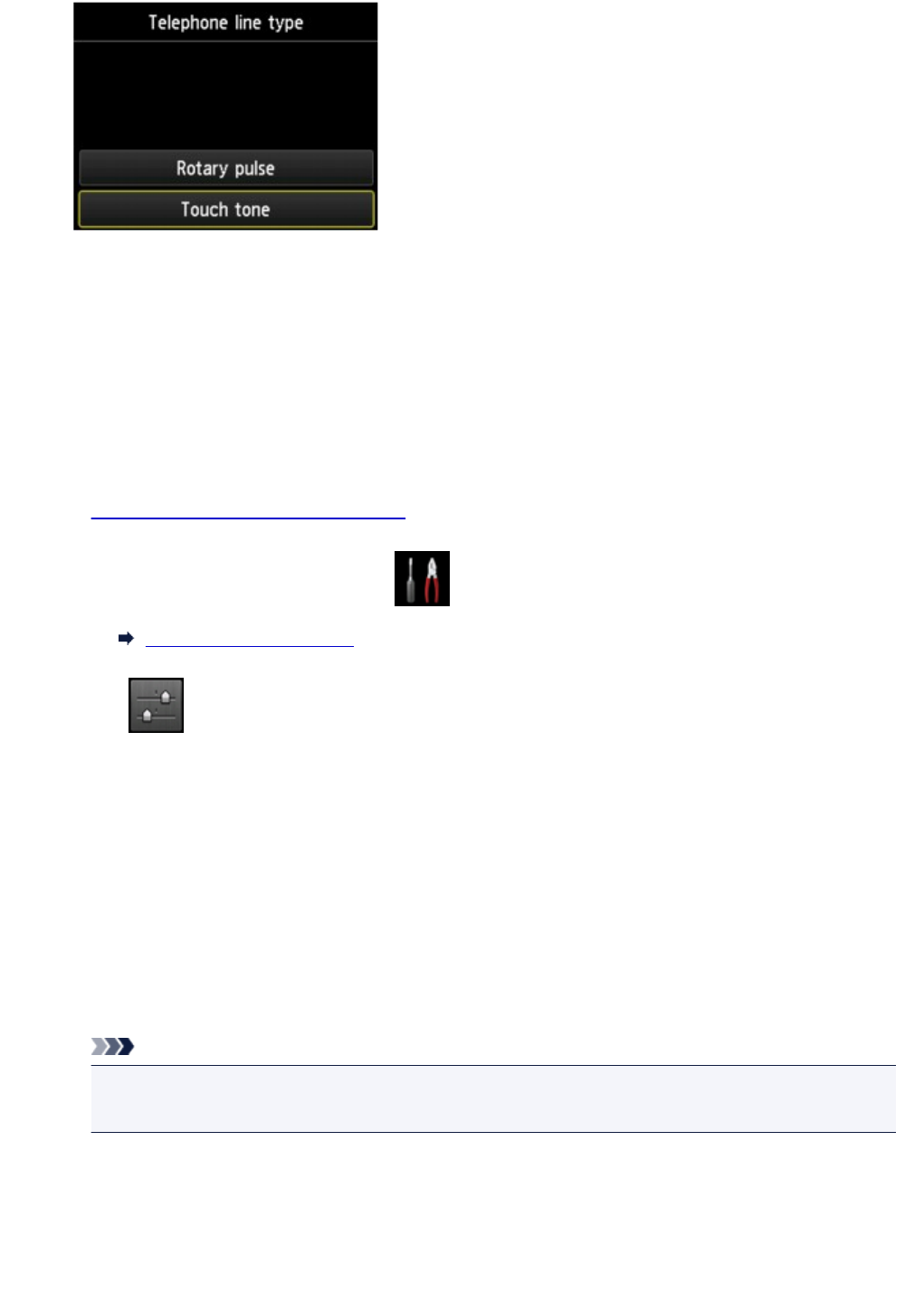
Rotary pulse
Select when your telephone line type is pulse dialing.
Touch tone
Select when your telephone line type is tone dialing.
Setting the Telephone Line Type Manually in China
This section describes the procedure to set the telephone line type manually in China.
1. Make sure that printer is turned on.
2. Flick HOME screen, and then tap Setup.
Using the Operation Panel
3. Tap Device settings.
4. Tap FAX settings.
5. Tap FAX user settings.
6. Tap Telephone line auto selection.
The current telephone line type is displayed.
7. Check current telephone line type, and then tap OK.
Note
•If you do not need to change the telephone line type, press the HOME button to return to the
HOME screen.
8. Tap OFF.
9. Tap a telephone line type.
925
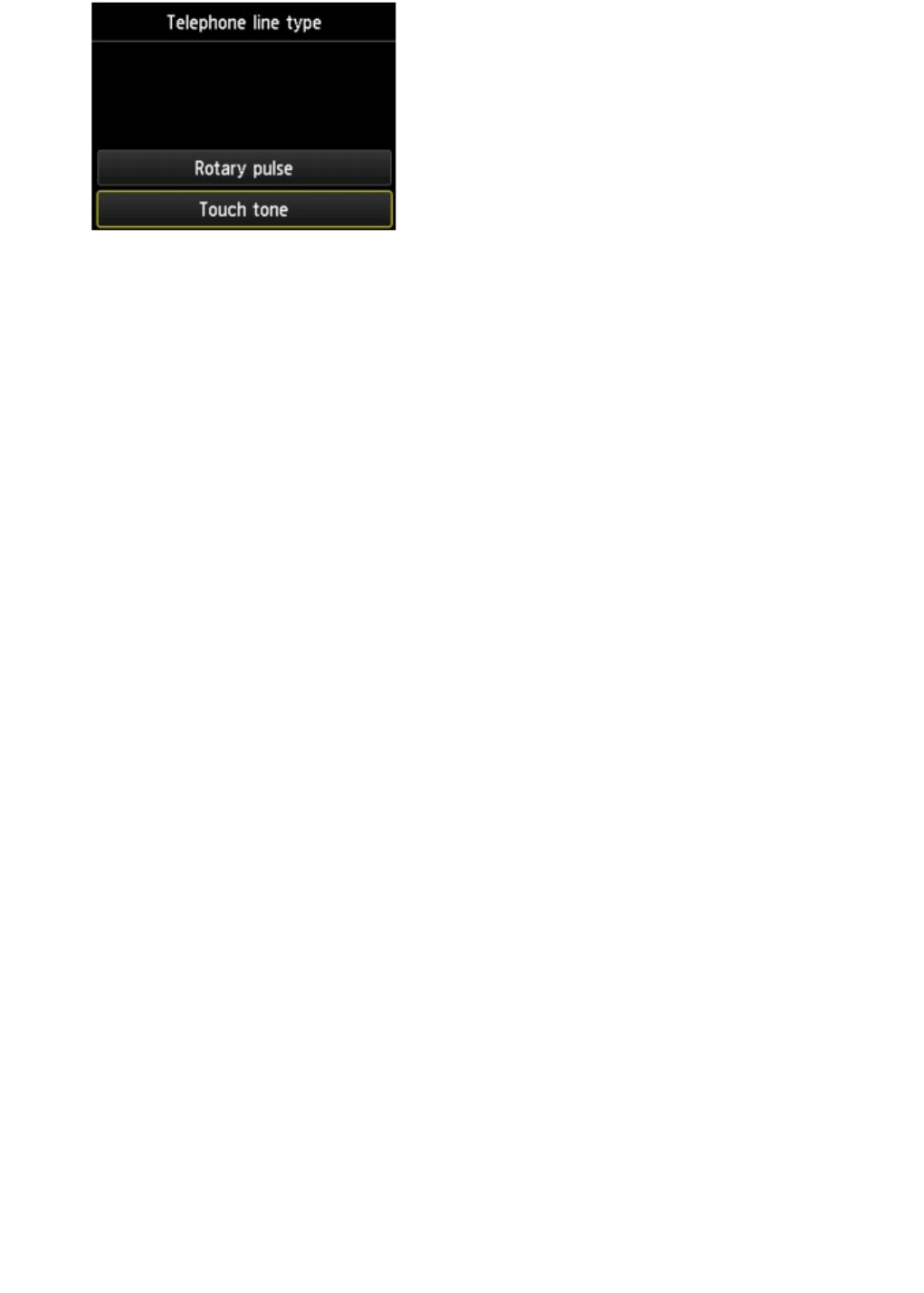
Rotary pulse
Select when your telephone line type is pulse dialing.
Touch tone
Select when your telephone line type is tone dialing.
926
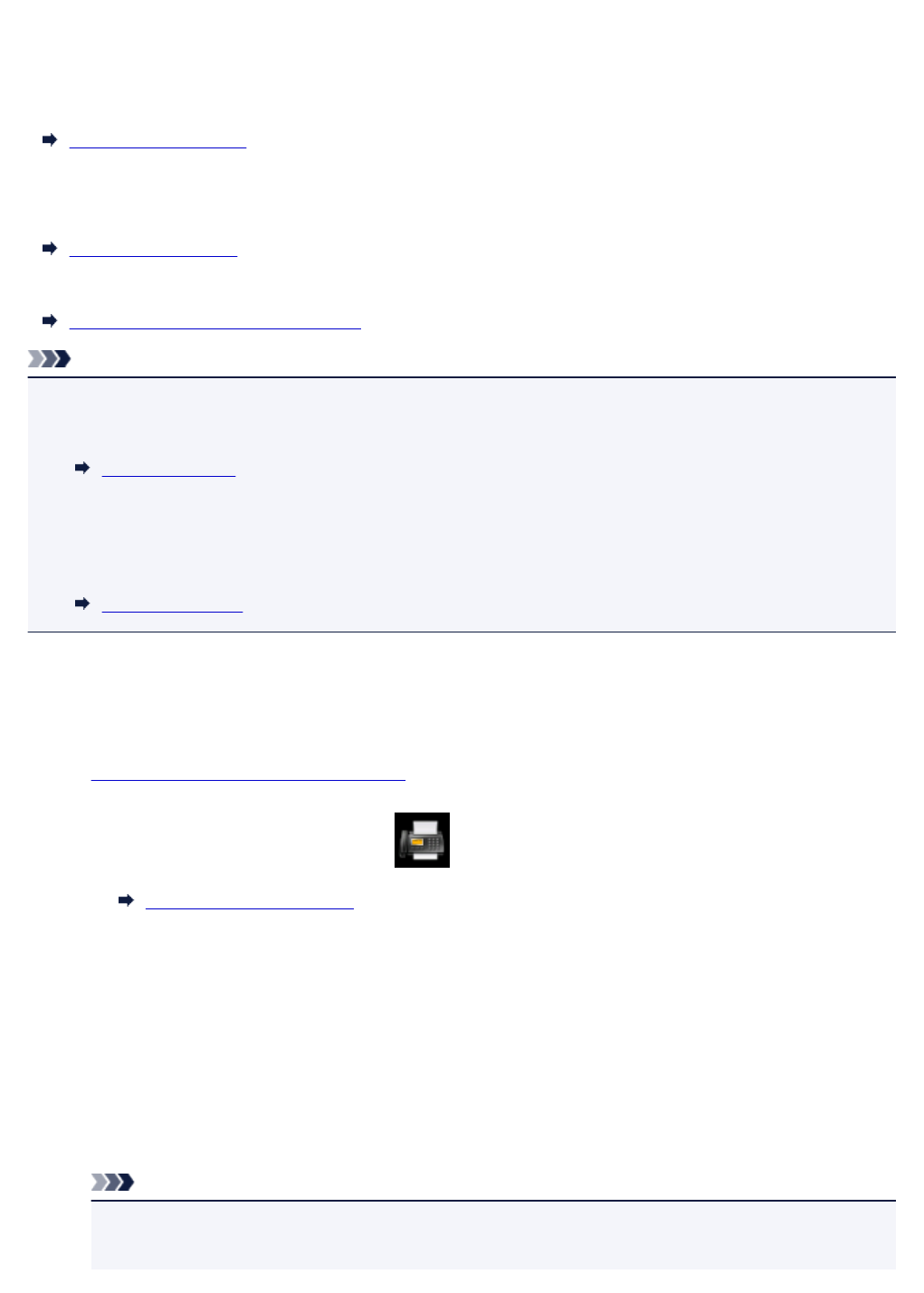
Setting Receive Mode
Set the receiving operation (receiving mode).
For details on how to set the receive mode:
Setting Receive Mode
You can select the appropriate mode.
For details on the selectable receive mode:
About Receive Mode
For details on the advanced settings of the receive mode:
Advanced Settings of Receive Mode
Note
• The receiving operation procedure varies depending on the selected receive mode.
For details on receiving method depending on each receive mode:
Receiving Faxes
• If you want to use a single telephone line for faxes and voice calls, you need to connect a telephone or
an answering machine to the external device jack of this printer.
For details on how to connect the telephone or the answering machine to the printer:
Basic Connection
Setting Receive Mode
This section describes the procedure to select the receive mode.
1. Make sure that printer is turned on.
2. Flick HOME screen, and then tap FAX.
Using the Operation Panel
3. Tap Function list.
4. The Function list screen is displayed.
5. Tap Receive mode settings.
6. Tap a receive mode, and then tap OK.
Note
•By tapping Advanced, you can specify the advanced settings of each receive mode.
For details on the advanced settings of the receive mode:
927
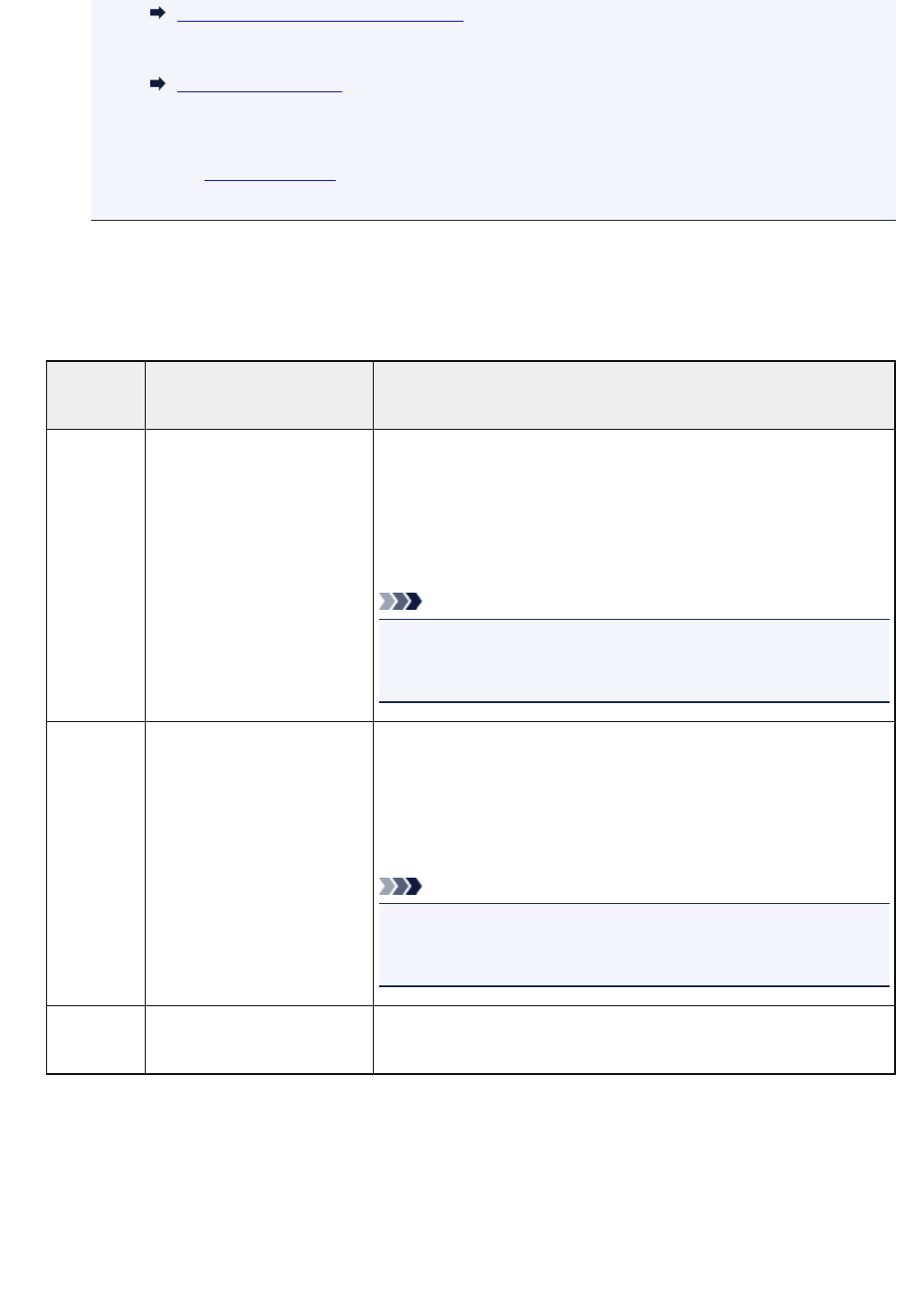
Advanced Settings of Receive Mode
• For details on the receive mode:
About Receive Mode
•DRPD is available only in the US and Canada.
•Network switch may not be available depending on the country or region of purchase.
• Refer to Receiving Faxes for information on receiving faxes or the procedure for each receive
mode.
About Receive Mode
You can select the receive mode suitable for your fax use conditions: whether you use a dedicated line for
fax, etc.
Receive
mode
Your fax use condition Receiving operation
TEL priori-
ty mode
When mainly receiving voice
calls (with a telephone or an-
swering machine connected
to the printer):
When a call incomes, the telephone will ring.
Pick up the handset.
If the call is a voice call, talk on the telephone.
If the call is a fax, hang up the handset after the printer starts receiving
the fax.
Note
•The telephone may not ring when a call incomes even if it is con-
nected to the printer, depending on the type or settings of the tele-
phone.
DRPD or
Network
switch
When receiving voice calls
(with a telephone or answer-
ing machine connected to the
printer) and subscribing to a
ring pattern detection service
provided by your telephone
company:
When a call incomes, the telephone will ring. The printer detects a fax
call by the fax ring pattern.
If the call is a fax, the printer will receive the fax automatically.
If the printer does not detect the fax ring pattern, the telephone will
continue ringing.
Note
•The telephone may not ring when a call incomes even if it is con-
nected to the printer, depending on the type or settings of the tele-
phone.
FAX only
mode
When not receiving voice
calls:
When a fax incomes, the printer will receive the fax automatically.
Advanced Settings of Receive Mode
You can specify the advanced settings of each receive mode.
•Advanced setting in TEL priority mode
You can specify the following setting items.
928
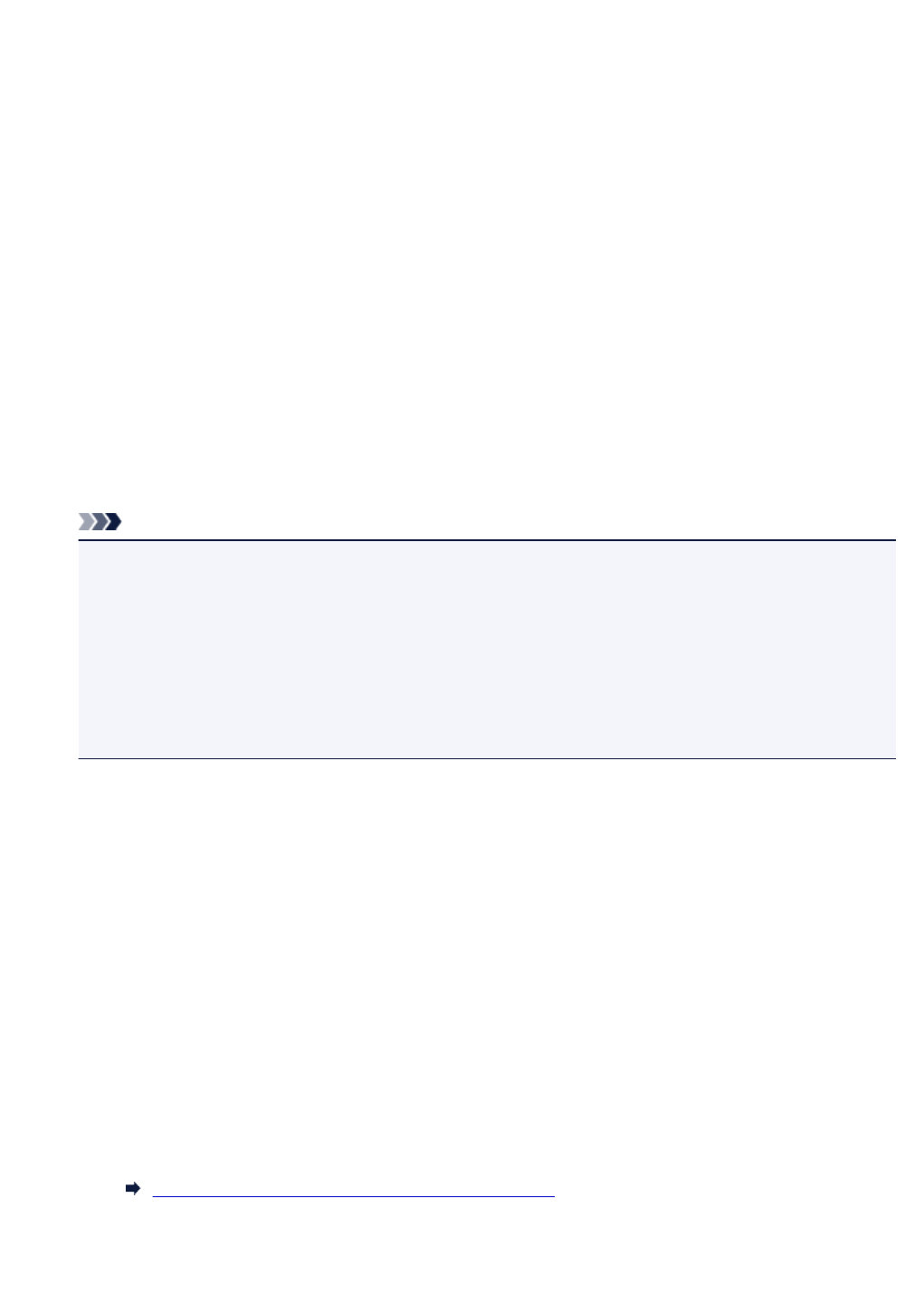
◦Manual/auto switch: ON/Manual/auto switch: OFF
If you select Manual/auto switch: ON, the printer automatically receives faxes after the external
device rang a specified length of time.
You can specify the length of time until automatic reception is started.
◦RX start time
You can specify the length of time until automatic reception is started when Manual/auto switch:
ON is selected. Specify the length of time and tap OK.
◦User-friendly RX: ON/User-friendly RX: OFF
If you select User-friendly RX: ON, the printer automatically switches from telephone calling to
fax reception by detecting the fax signal (CNG signal) when you lift the handset of the telephone
or the answering machine answers. When you have an answering machine connected to the
printer, select User-friendly RX: ON to switch to fax reception automatically after the answering
machine answers.
If you select User-friendly RX: OFF, the printer does not switch from telephone calling to fax
reception automatically even if the printer detects the fax signal (CNG signal). Select User-
friendly RX: OFF if you want the printer not to switch automatically during a call.
Note
• If you subscribe to Duplex Ringing service in Hong Kong, the number of times the external device
rings specified with Ring count in FAX only mode is available in TEL priority mode.
If you want to specify the number of times the external device rings in TEL priority mode, select
FAX only mode on the Receive mode settings screen, specify the number of times the external
device rings with Ring count, and then switch to TEL priority mode in Receive mode settings.
• If you subscribe to Duplex Ringing service in Hong Kong, we recommend that you select Manual/
auto switch: OFF.
•Advanced setting in FAX only mode
You can specify the following setting item.
◦Ring count
You can specify the number of times the external device rings when incoming.
Specify the number of time and tap OK.
•Advanced setting in DRPD
You can specify the following setting items.
◦ Ring pattern (Normal ring/Double ring/Short-short-long/Short-long-short)
Sets the distinctive ring pattern of a call that the printer assumes is a fax call.
If you subscribe to a DRPD service, set the ring pattern to match the pattern assigned by your
telephone company.
Setting DRPD Ring Pattern (US and Canada only)
◦Ring count
You can specify the number of times the external device rings when incoming.
929
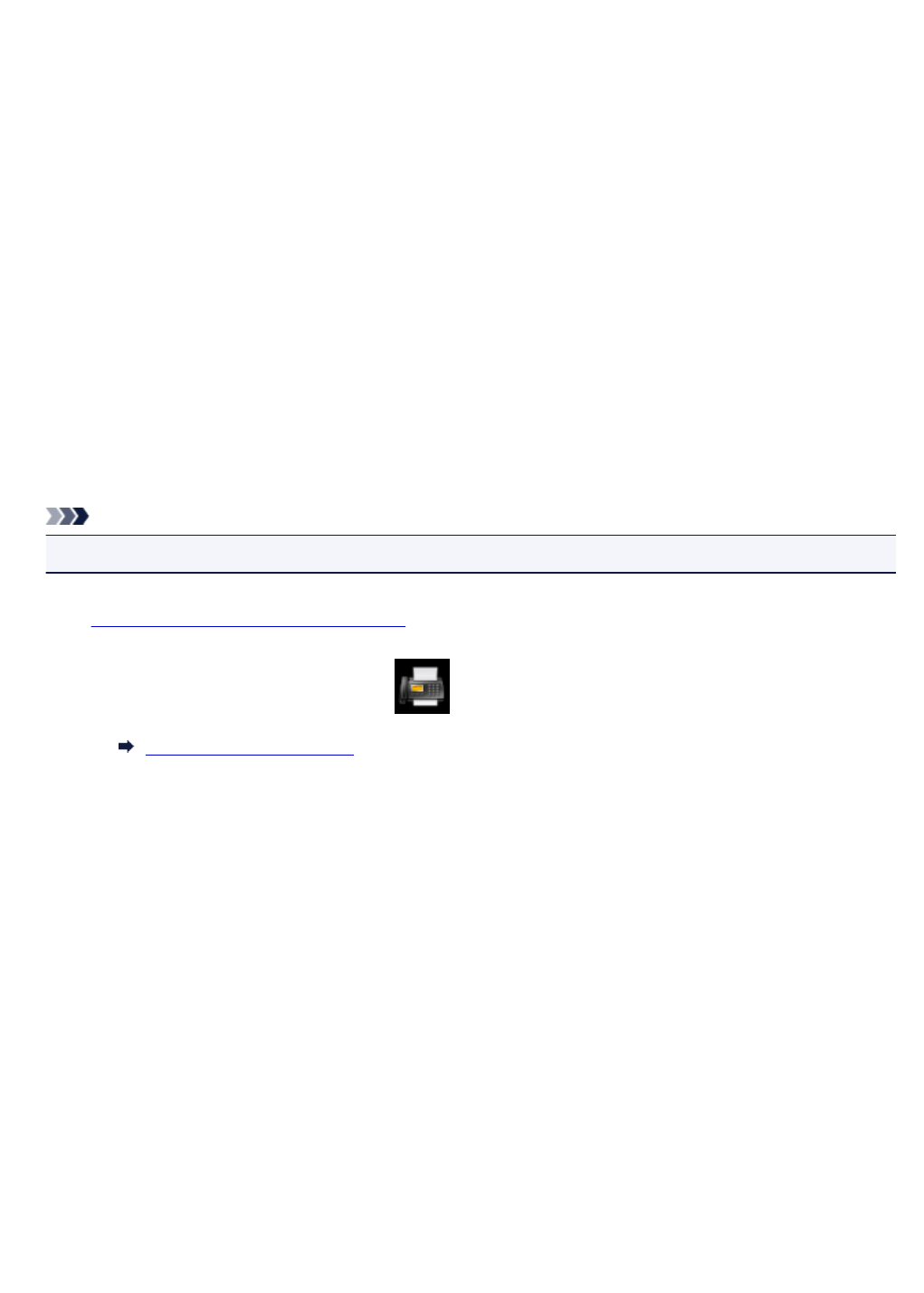
Specify the number of time and tap OK.
•Advanced setting in Network switch
You can specify the following setting item.
◦Ring count
You can specify the number of times the external device rings when incoming.
Specify the number of time and tap OK.
Setting DRPD Ring Pattern (US and Canada only)
If you have subscribed to a Distinctive Ring Pattern Detection (DRPD) service provided by your telephone
company, your telephone company will assign two or more telephone numbers with distinctive ring
patterns to your single telephone line, allowing you to have different numbers for fax calls and voice calls
using only one telephone line. Your printer will automatically monitor the ring pattern, and will
automatically receive the fax if the ring pattern is a fax call.
To use DRPD, follow the procedure below to set the fax ring pattern that matches the pattern assigned by
your telephone company.
Note
• Contact your local telephone company for detailed information on this service.
1. Make sure that printer is turned on.
2. Flick HOME screen, and then tap FAX.
Using the Operation Panel
3. Tap Function list.
The Function list screen is displayed.
4. Tap Receive mode settings.
5. Tap DRPD.
6. Tap Advanced.
7. Select ring pattern that your telephone company assigned to your fax number.
930
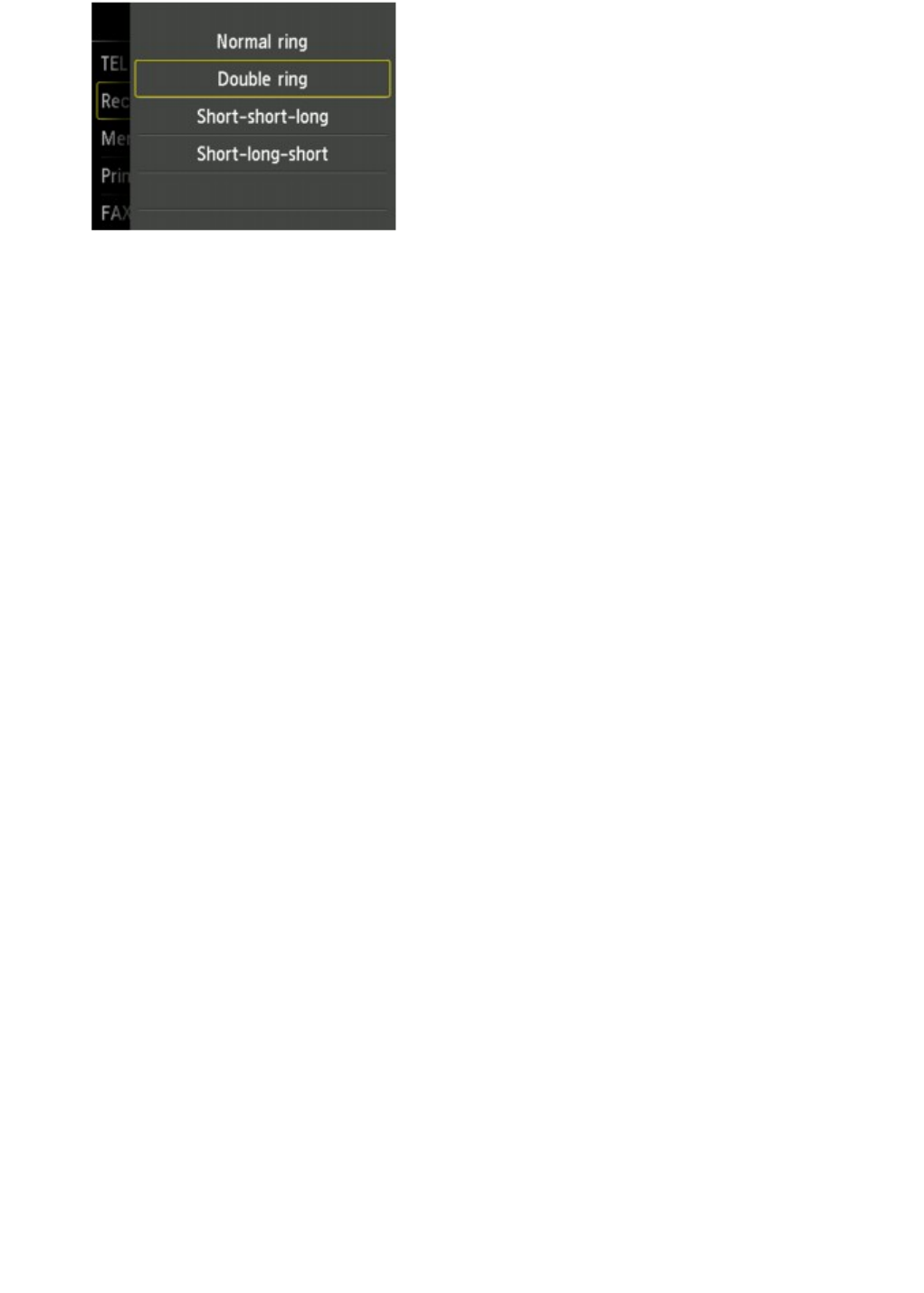
8. Specify number of time and tap OK.
9. Tap OK.
The Function list screen is displayed.
931
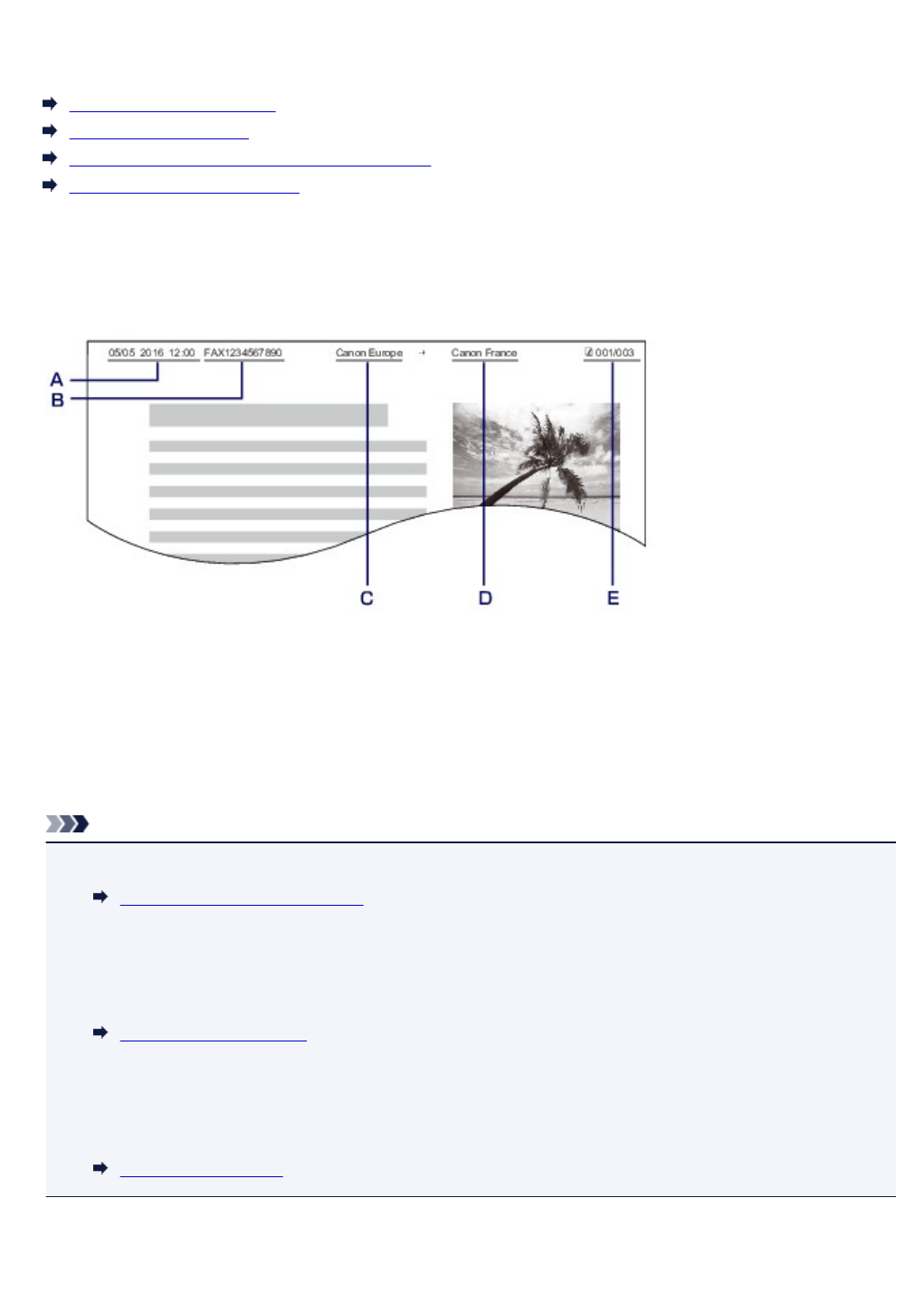
Setting Sender Information
You can set the sender information such as date/time, unit name, and unit fax/telephone number.
About Sender Information
Setting Date and Time
Setting Daylight Saving Time (Summer Time)
Registering User Information
About Sender Information
If the unit name and unit fax/telephone number are registered, they are printed with date and time as
sender information on the recipient's fax.
A. Date and time of transmission
B. Unit fax/telephone number
C. Unit name
D. The registered recipient's name is printed when sending faxes.
E. Page number
Note
• You can print USER'S DATA LIST to confirm the sender information you have registered.
Summary of Reports and Lists
• When sending faxes in black & white, you can select whether to print the sender information inside or
outside the image area.
Specify the setting on TTI position in Advanced FAX settings under FAX settings.
Advanced FAX settings
• You can select the date print format from three formats: YYYY/MM/DD, MM/DD/YYYY, and DD/MM/
YYYY.
Select the date print format on Date display format under Device user settings.
Device user settings
932
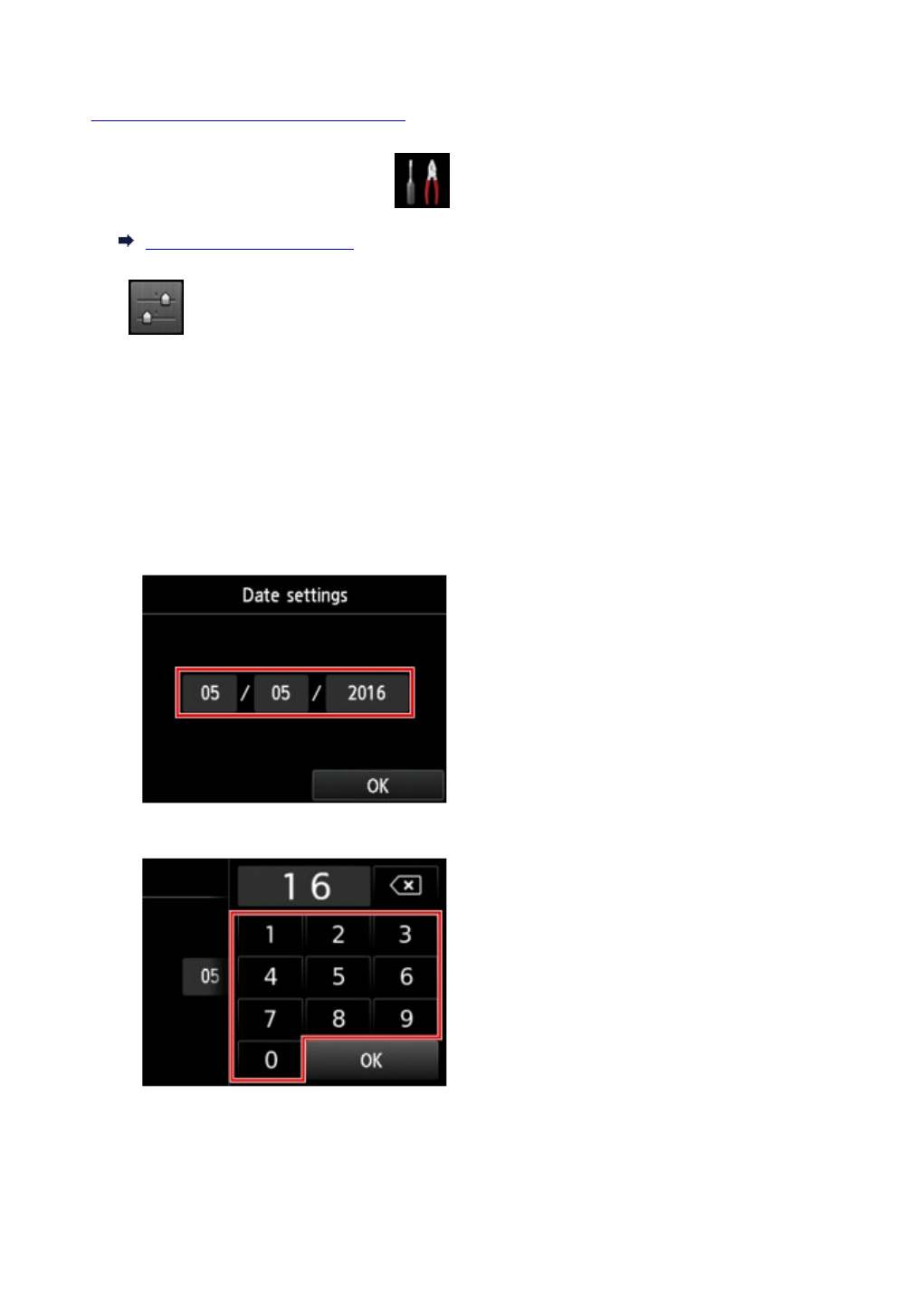
Setting Date and Time
This section describes the procedure to set the date and time.
1. Make sure that printer is turned on.
2. Flick HOME screen, and then tap Setup.
Using the Operation Panel
3. Tap Device settings.
4. Tap Device user settings.
5. Tap Date/time setting.
6. Set date.
1. Tap a setting item to change.
2. Tap number to enter.
Enter only the last two digits of the year.
3. Tap OK.
4. Tap OK again when all settings are completed.
7. Set time.
933
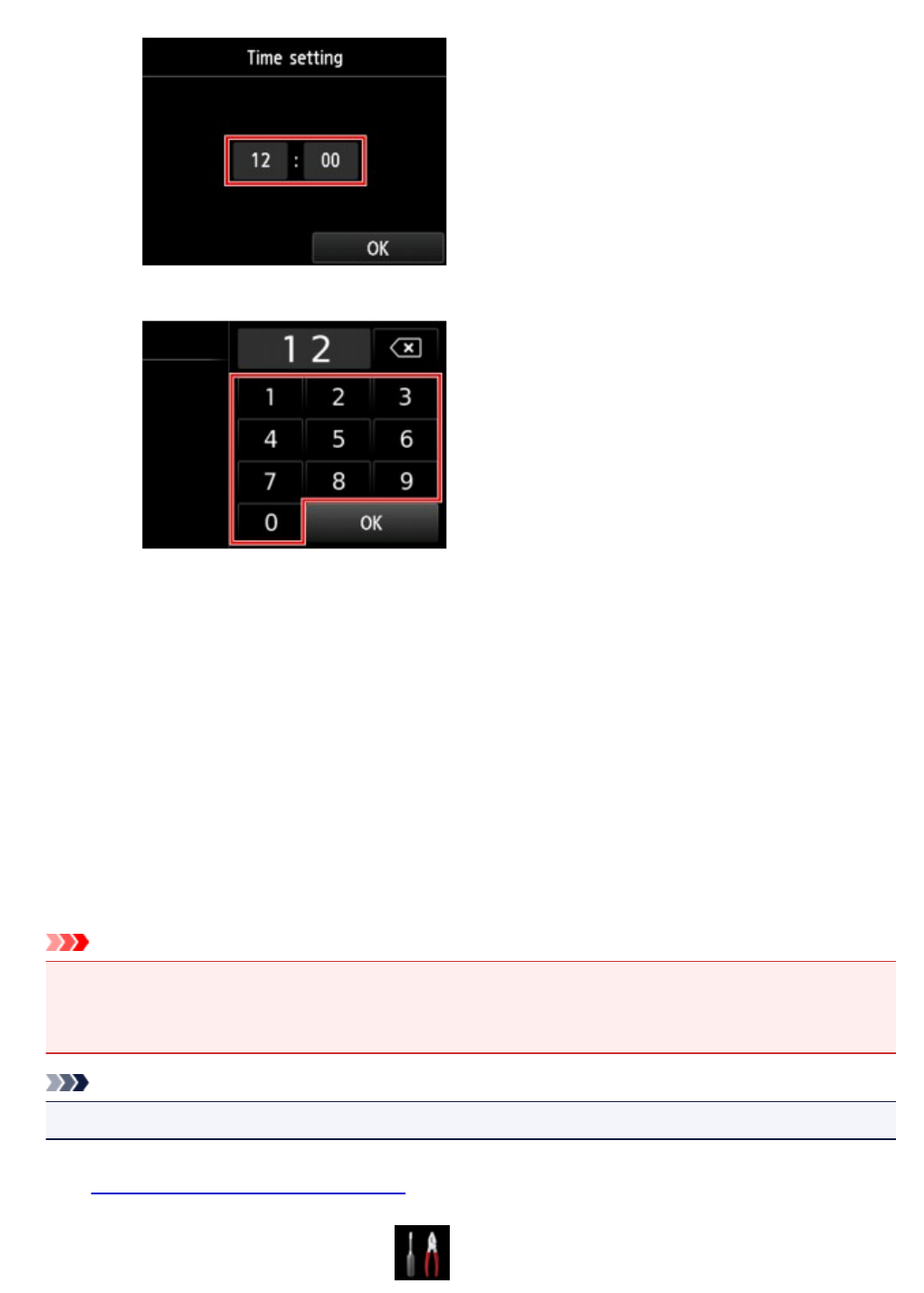
1. Tap a setting item to change.
2. Tap number to enter.
Enter the date and time in 24-hour format.
3. Tap OK.
4. Tap OK again when all settings are completed.
8. Press HOME button to return to HOME screen.
Setting Daylight Saving Time (Summer Time)
Some countries adopt the daylight saving time (summer time) system that shifts the clock time forward at
certain periods of the year.
You can set your printer to automatically change the time by registering the date and time that daylight
saving time (summer time) begins and ends.
Important
• Not all the latest information of all countries or regions is applied for Daylight saving time setting by
default. You need to change the default setting according to the latest information of your country or
region.
Note
• This setting may not be available depending on the country or region of purchase.
1. Make sure that printer is turned on.
2. Flick HOME screen, and then tap Setup.
934
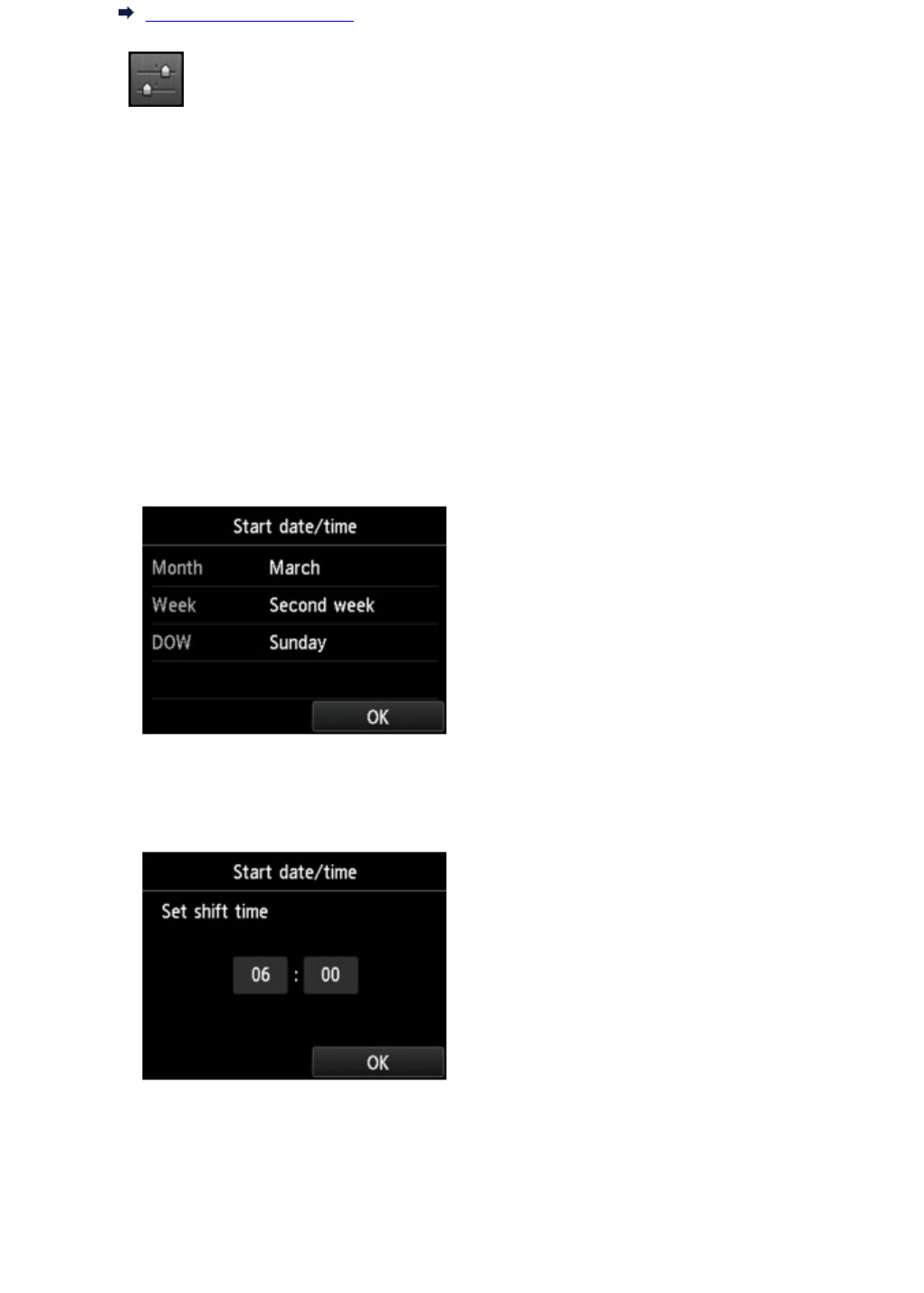
Using the Operation Panel
3. Tap Device settings.
4. Tap Device user settings.
5. Tap Daylight saving time setting.
6. Tap ON.
To disable summer time, tap OFF.
7. Set date and time when summer time starts.
1. Set date when summer time starts.
Tap a setting item to change, and then specify the setting. Tap OK again when all settings are
completed.
2. Set time (in 24-hour format) when summer time starts.
Tap a setting item to change, and then specify the setting. Tap OK again when all settings are
completed.
8. Set date and time when summer time ends.
1. Set date when summer time ends.
Tap a setting item to change, and then specify the setting. Tap OK again when all settings are
completed.
935
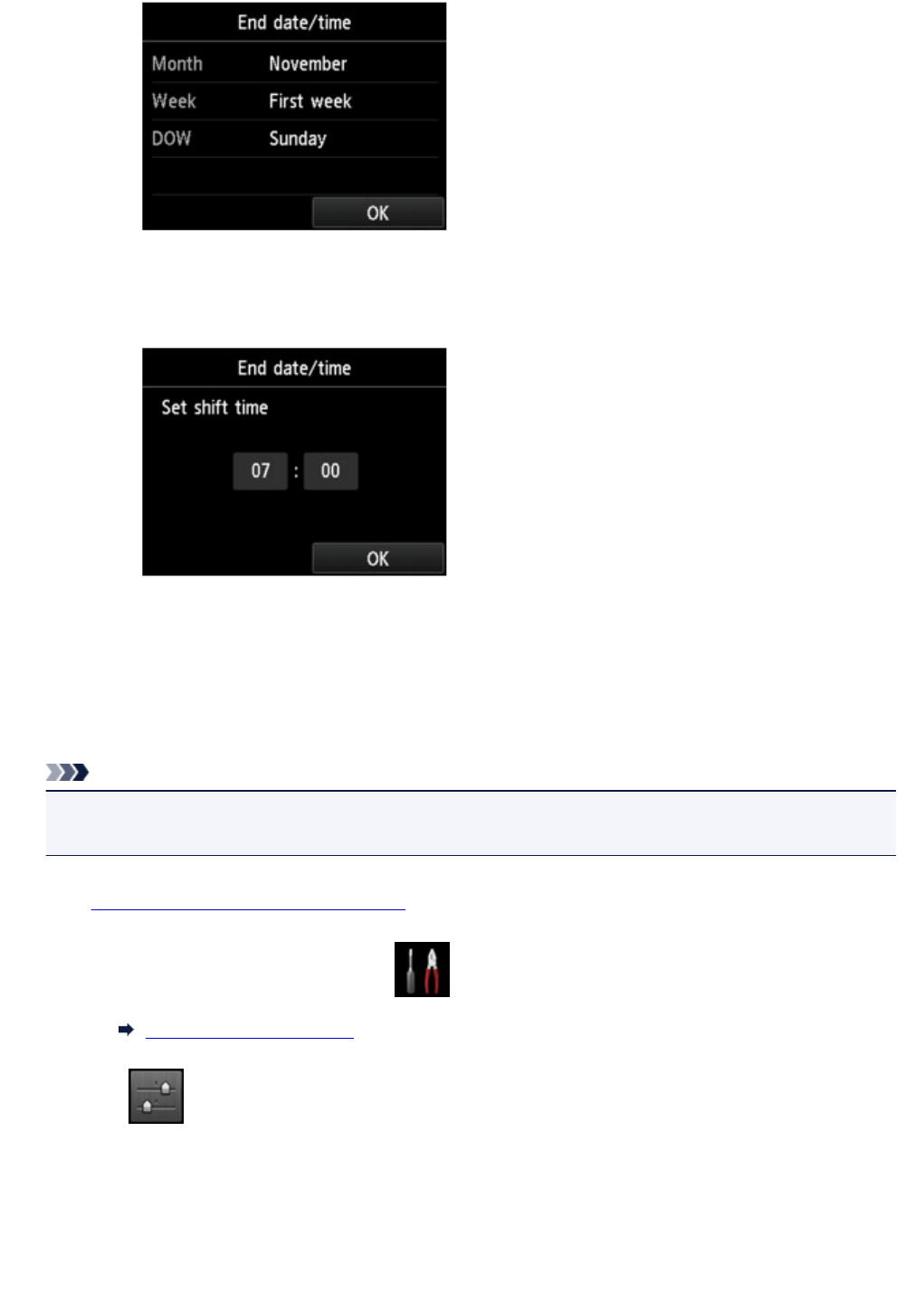
2. Set time (in 24-hour format) when summer time ends.
Tap a setting item to change, and then specify the setting. Tap OK again when all settings are
completed.
9. Press HOME button to return to HOME screen.
Registering User Information
This section describes the procedure to register the user information.
Note
• Before sending a fax, be sure to enter your name and fax/telephone number in Unit name and Unit
TEL on the User information settings screen (for US only).
1. Make sure that printer is turned on.
2. Flick HOME screen, and then tap Setup.
Using the Operation Panel
3. Tap Device settings.
4. Tap FAX settings.
5. Tap FAX user settings.
936
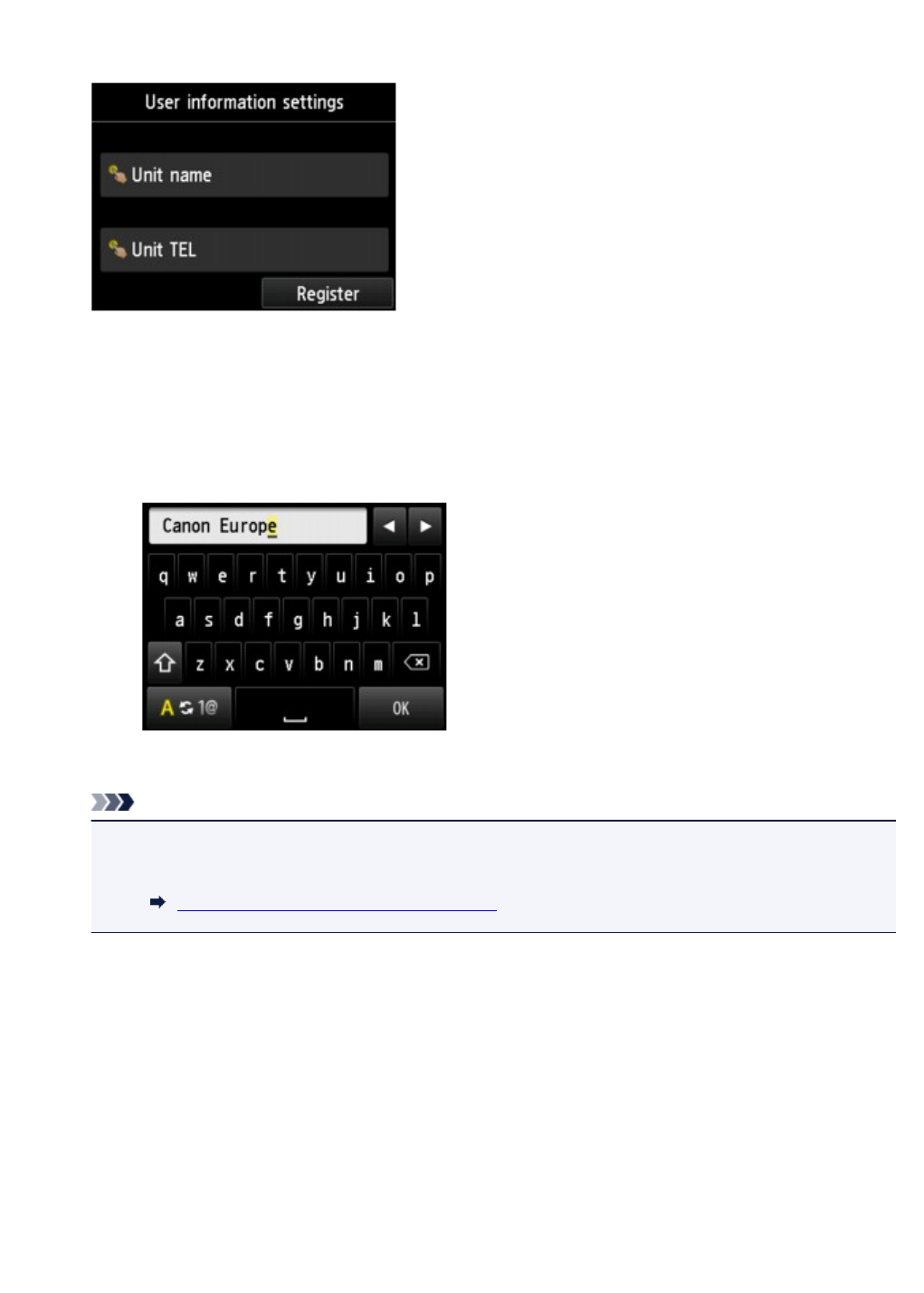
6. Tap User information settings.
The screen to register the unit name and the unit fax/telephone number is displayed.
7. Enter unit name.
1. Tap entry field under Unit name.
The screen to enter the character is displayed.
2. Enter unit name.
3. Tap OK.
Note
• You can enter the name up to 24 characters, including spaces.
• For details on how to enter or delete characters:
Entering Numbers, Letters, and Symbols
8. Enter unit fax/telephone number.
1. Tap entry field under Unit TEL.
The screen to enter the number is displayed.
2. Enter unit fax/telephone number.
937
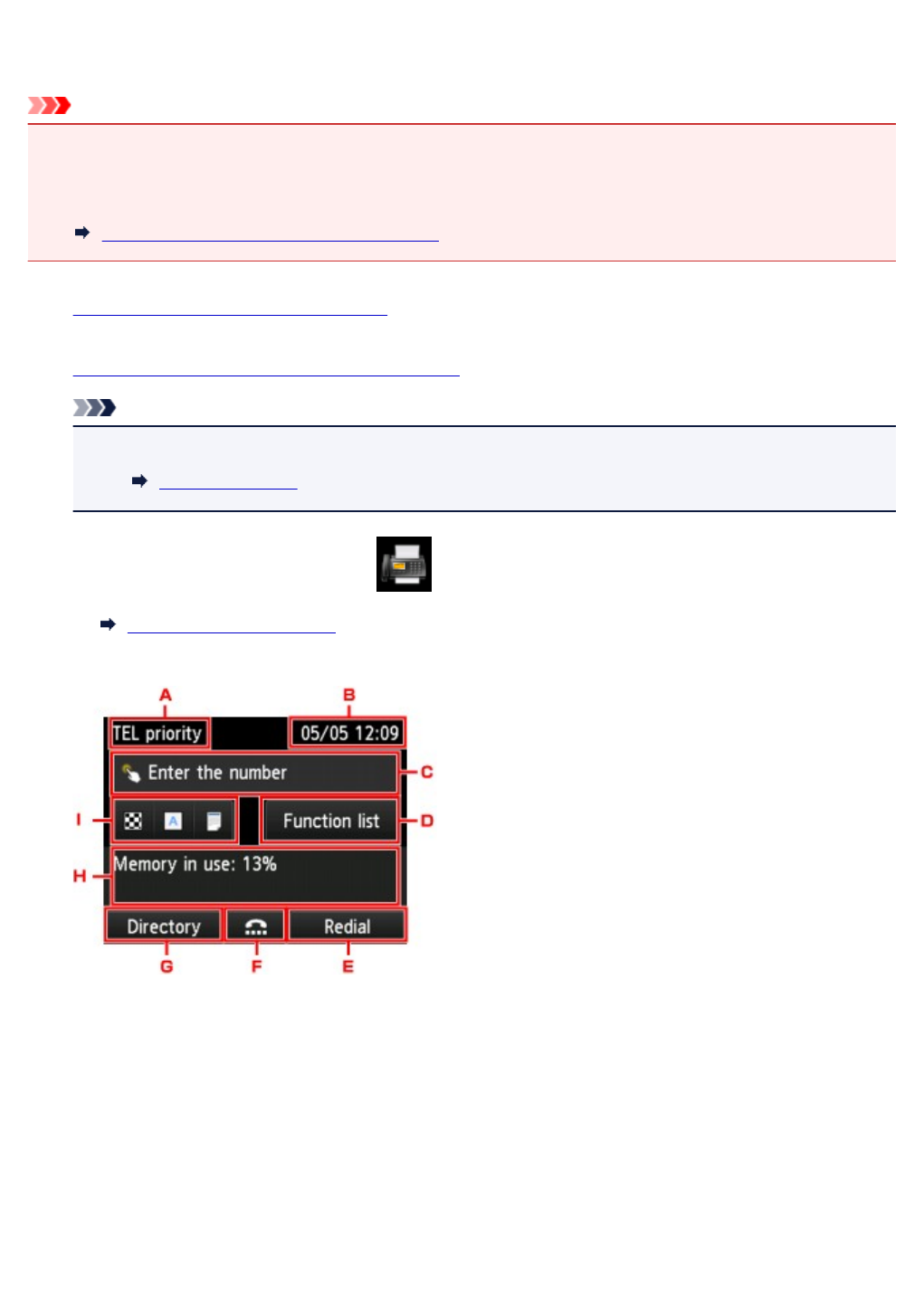
Sending Faxes by Entering Fax/Telephone Number
This section describes dialing and sending faxes directly by entering the fax/telephone numbers.
Important
• It may be possible that faxes will reach unintended recipients due to the misdialing or incorrect
registration of fax/telephone numbers. When you send important documents, we recommend that you
send them after speaking on the telephone.
Sending Fax after Speaking on Telephone
1. Make sure that printer is turned on.
2. Load documents on platen glass or in ADF.
Note
•For details on the types, conditions of document, and how to load the document:
Loading Originals
3. Flick HOME screen, and then tap FAX.
Using the Operation Panel
The Fax standby screen is displayed.
A. Receive mode
The receive mode selected currently is displayed.
B. Date and time
The date and time are displayed.
C. Entry field of fax/telephone numbers
Tap to display the screen to enter the fax/telephone numbers.
D. Function list
You can use the each fax function and change the setting for the fax.
940
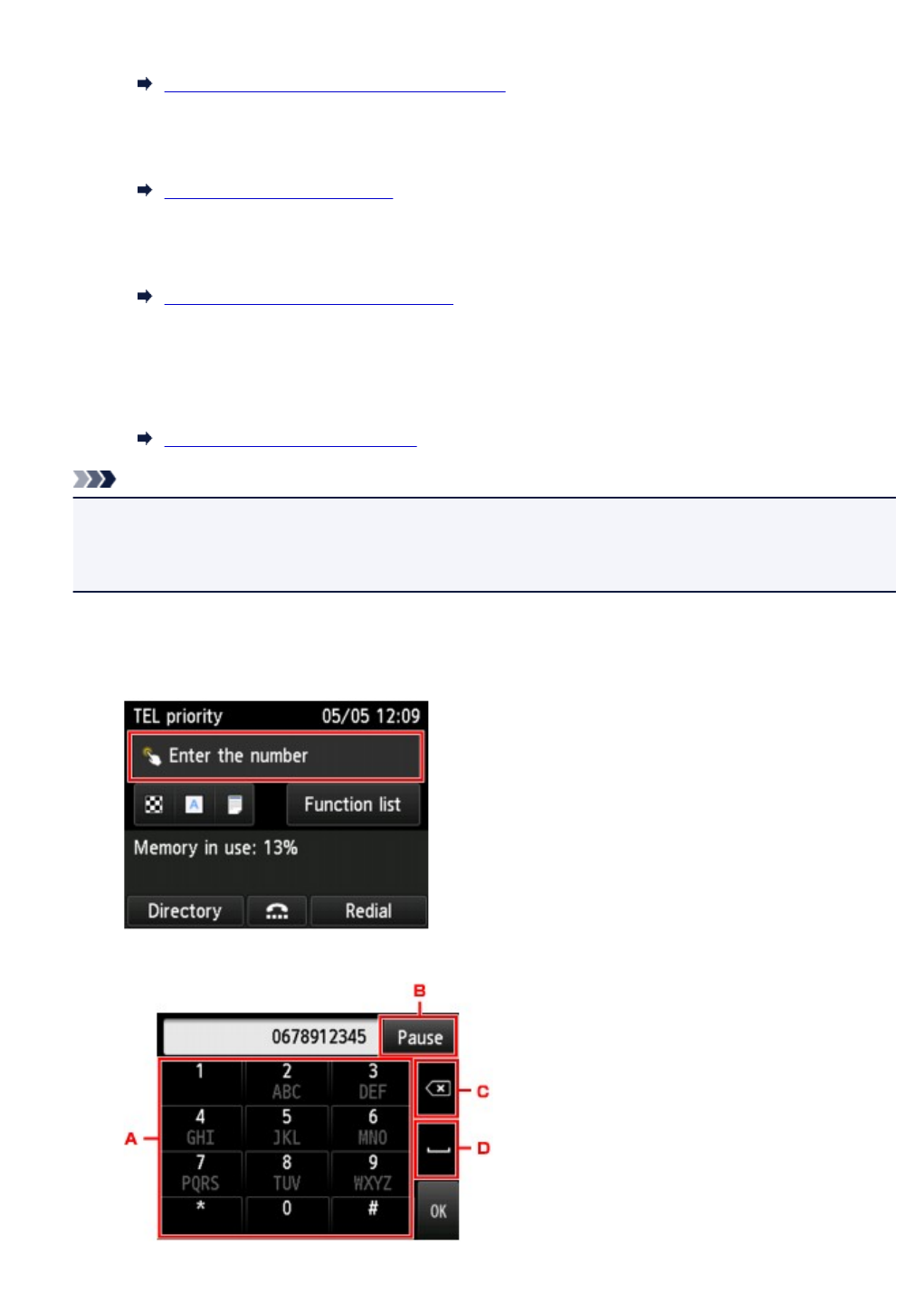
E. Redial
Tap to send faxes with redialing.
Resending Faxes (Redialing Busy Number)
F. On hook dial
Tap to send faxes with the on hook dial function.
Using On Hook Dial Function
G. Directory
You can select a registered fax/telephone number.
Sending Fax to Registered Recipient
H. Current state
The current state is displayed.
I. Send Settings
Setting Items for Sending Faxes
Note
• If you have not set up the printer for sending/receiving faxes yet, the message for setup is
displayed on the touch screen when you tap FAX on the HOME screen for the first time. When
you set up for faxing, follow the procedure according to the instructions on the touch screen.
4. Dial recipient's fax/telephone number.
1. Tap entry field of fax/telephone numbers.
2. Enter fax/telephone number.
A. Numeric keys
941
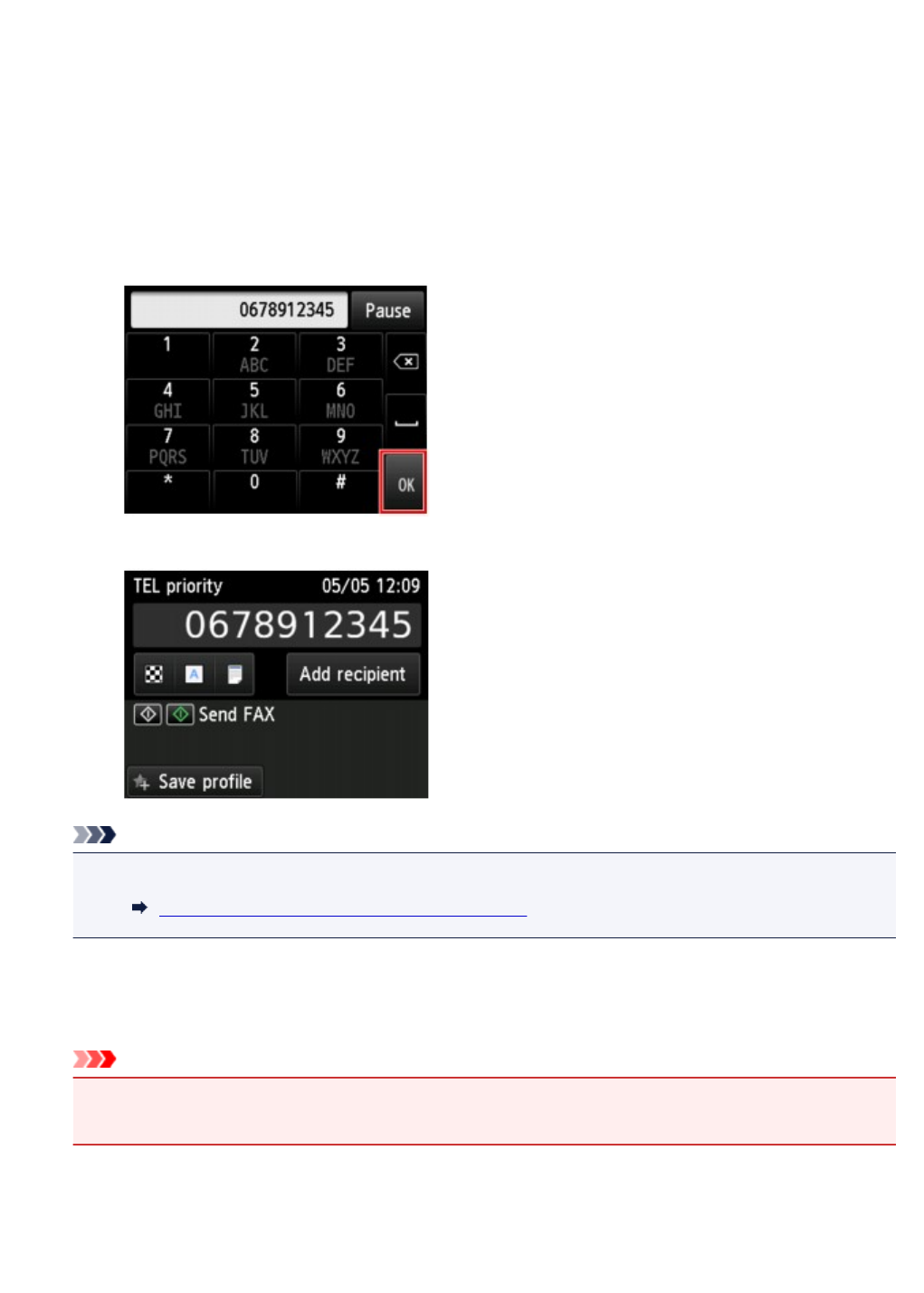
Enters the number.
B. Pause
Enters a pause "P".
C. Delete
Deletes the entered number.
D. Blank space
Enters a blank space.
3. Tap OK.
The touch screen returns to the Fax standby screen.
Note
• By tapping Save profile, you can register the current print settings as a custom setting.
Registering Favorite Settings (Custom profiles)
5. Press Color button for color transmission, or Black button for black & white transmission.
The printer starts scanning the document.
Important
•Color transmission is available only when the recipient's fax device supports color faxing.
•Do not open the document cover until scanning is completed.
6. Start sending.
•If you load the document in the ADF:
The printer scans the document automatically and starts sending the fax.
942
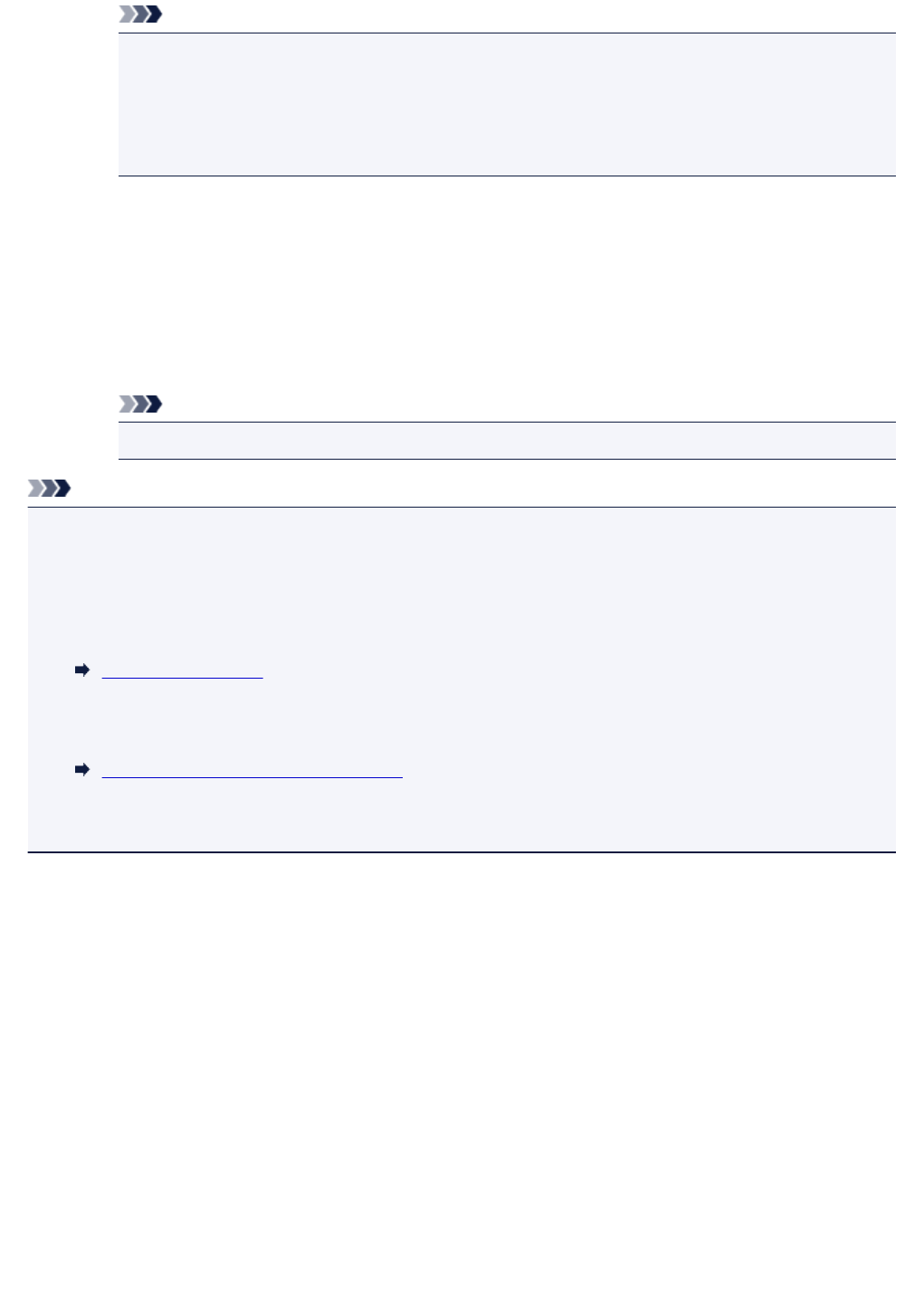
Note
• To cancel a fax transmission, press the Stop button. To cancel a fax transmission while it is in
progress, press the Stop button, and then follow the instructions on the touch screen.
•If documents remain in the ADF after the Stop button is pressed while scanning is in progress,
Document in ADF. Tap [OK] to eject document. is displayed on the touch screen. By
tapping OK, the remaining documents are automatically ejected.
•If you load the document on the platen glass:
After scanning the document, the confirmation screen asking you if you load the next document is
displayed.
To send the scanned document, tap Send now to start sending it.
To send two or more pages, follow the message to load the next page, and tap Scan. After
scanning all pages, tap Send now to start sending.
Note
•To cancel sending the fax, press the Stop button.
Note
• When your printer is connected to a PBX (Private Branch Exchange) system, refer to the operating
instructions of the system for details on dialing the recipient's fax/telephone number.
• In case the printer was not able to send a fax, such as when the recipient's line was busy, it has the
function to automatically redial the number after a specified interval. Automatic redialing is enabled by
default.
Automatic Redialing
• Unsent documents, such as those pending redial, are stored in the printer's memory. They are not
stored in the case of a sending error.
Document Stored in Printer's Memory
• Do not unplug the power cord until all documents are sent. If you unplug the power cord, all unsent
documents stored in the printer's memory are lost.
943
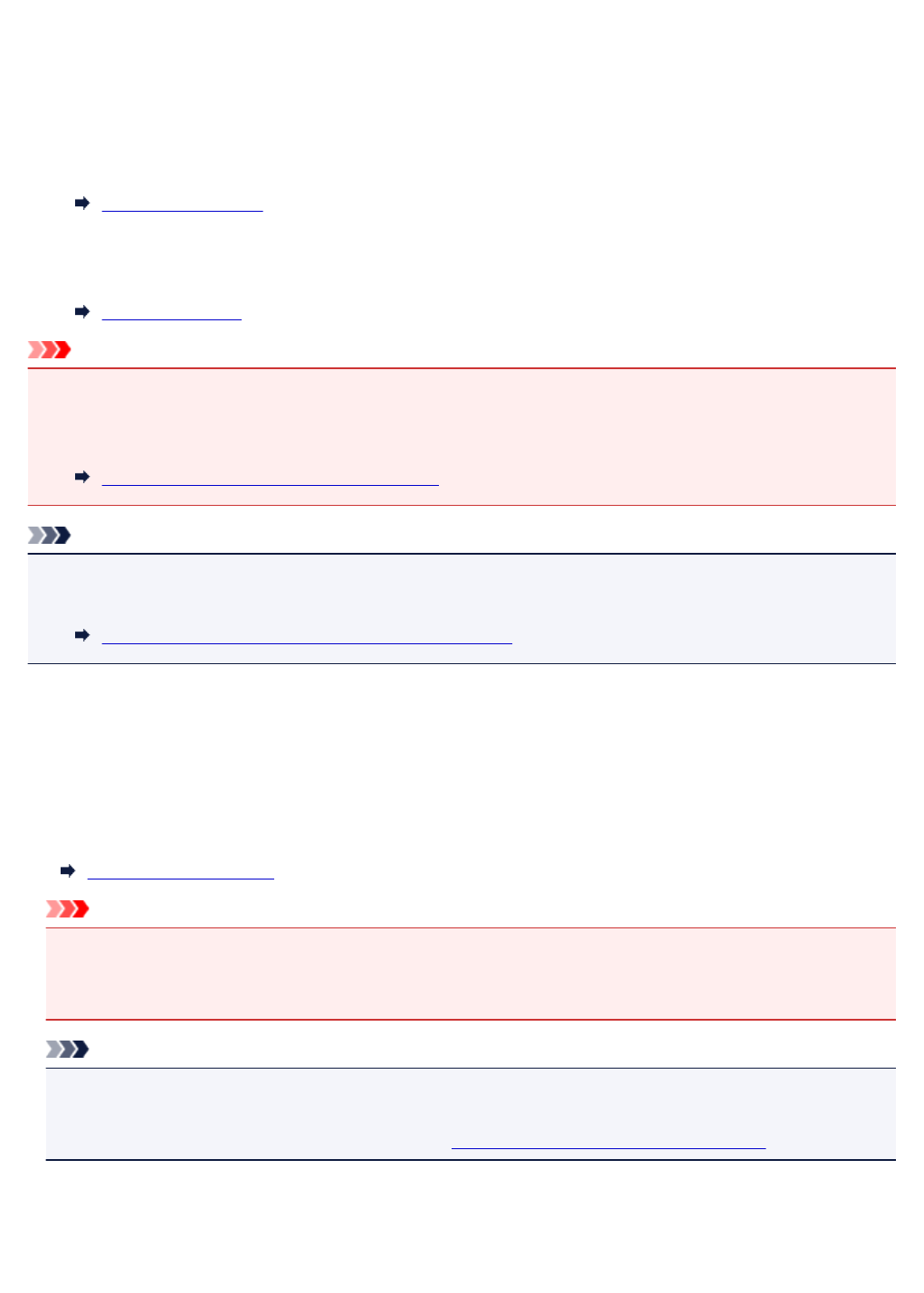
Resending Faxes (Redialing Busy Number)
There are two methods of redialing: Automatic redialing and Manual redialing.
• Automatic Redialing
If you send a document and the recipient's line is busy, the printer will redial the number after a specified
interval.
Automatic Redialing
• Manual Redialing
You can redial to the recipients dialed by entering the fax/telephone numbers.
Manual Redialing
Important
• It may be possible that faxes will reach unintended recipients due to the misdialing or incorrect
registration of fax/telephone numbers. When you send important documents, we recommend that you
send them after speaking on the telephone.
Sending Fax after Speaking on Telephone
Note
• Automatic redialing is enabled by default.
• For details on the basic sending operations:
Sending Faxes by Entering Fax/Telephone Number
Automatic Redialing
You can enable or disable automatic redialing. If you enable automatic redialing, you can specify the
maximum number of redial attempts and the length of time the printer waits between redial attempts.
Enable and specify the automatic redialing setting on Auto redial in Advanced FAX settings under FAX
settings.
Advanced FAX settings
Important
•While automatic redialing, the unsent fax is stored in the printer's memory temporarily until the
sending fax is complete. If a power failure occurs or you unplug the power cord before automatic
redialing is complete, all faxes stored in the printer's memory are deleted and not sent.
Note
•To cancel automatic redialing, wait until the printer starts redialing, and then press the Stop button.
•To cancel automatic redialing, delete the unsent fax from the printer's memory while the printer is on-
standby for a redial operation. For details, see Deleting Document in Printer's Memory.
Manual Redialing
Follow the procedure below for manual redialing.
944
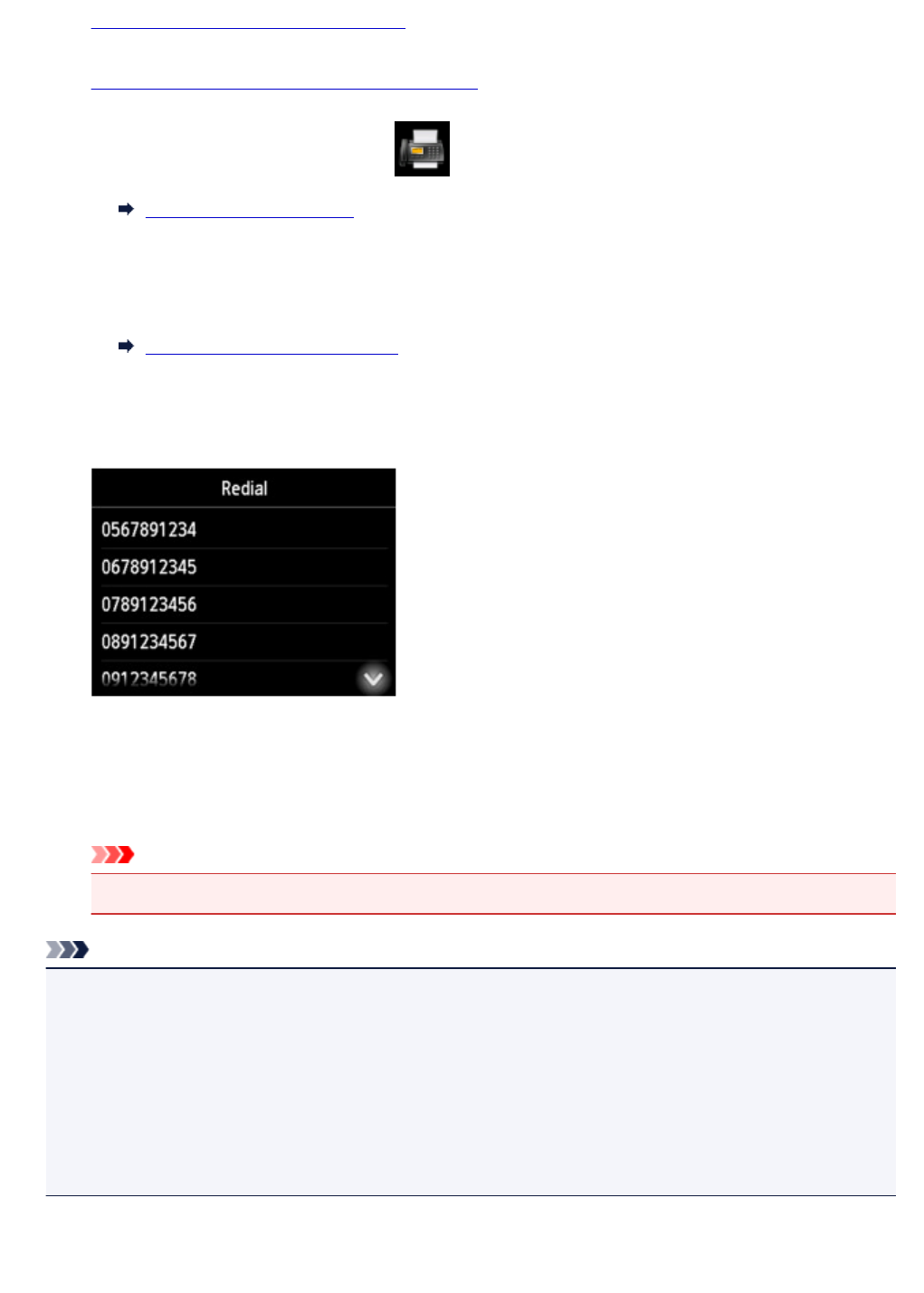
1. Make sure that printer is turned on.
2. Load documents on platen glass or in ADF.
3. Flick HOME screen, and then tap FAX.
Using the Operation Panel
The Fax standby screen is displayed.
4. Change send settings as necessary.
Setting Items for Sending Faxes
5. Tap Redial.
The Redial screen is displayed.
6. Tap a recipient's number to redial.
7. Press Color button for color transmission, or Black button for black & white transmission.
Important
• Color transmission is available only when the recipient's fax device supports color faxing.
Note
• For manual redialing, the printer memorizes up to 10 recent recipients dialed by entering the fax/
telephone numbers. Note that the printer does not memorize any recipients dialed using the redial
function or selecting from the directory.
• To cancel manual redialing, press the Stop button. To cancel a fax transmission while it is in
progress, press the Stop button, and then follow the instructions on the touch screen.
• If documents remain in the ADF after the Stop button is pressed while scanning is in progress,
Document in ADF. Tap [OK] to eject document. is displayed on the touch screen. By tapping OK,
the remaining documents are automatically ejected.
945
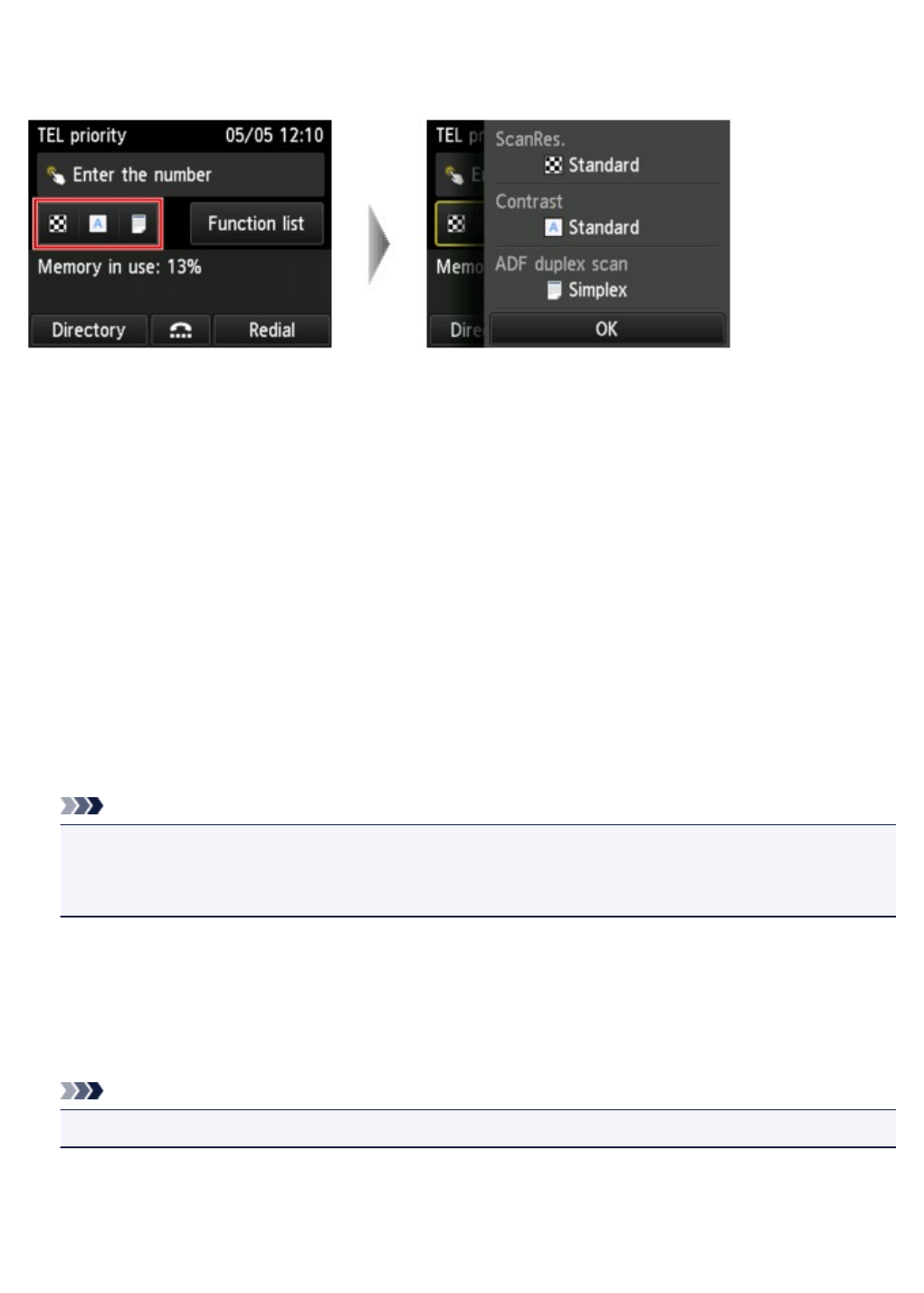
Setting Items for Sending Faxes
You can change the send settings such as the scan contrast or the scan resolution on the Fax standby
screen.
Tap to change the send settings.
•ScanRes.
The following settings of the scan resolution are selectable.
Standard
Suitable for text-only documents.
Fine
Suitable for fine-print documents.
Extra fine
Suitable for detailed illustration or fine-print quality documents.
If the recipient's fax device is not compatible with Extra fine (300 x 300 dpi), the fax will be sent in
the Standard or Fine resolution.
Photo
Suitable for photographs.
Note
• When sending a color fax, documents are always scanned in the same resolution (200 x 200 dpi).
The image quality (compression rate) is determined by which scan resolution is selected, except
that Extra fine and Photo provide the same image quality.
•Contrast
Select a setting of the scan contrast from Lower, Standard, and Higher.
•ADF duplex scan
Select a scanning method when loading document in the ADF.
Note
• After sending a fax with Duplex, this setting returns to Simplex automatically.
The touch screen returns to the Fax standby screen when you finish specifying the setting and tapping OK.
946
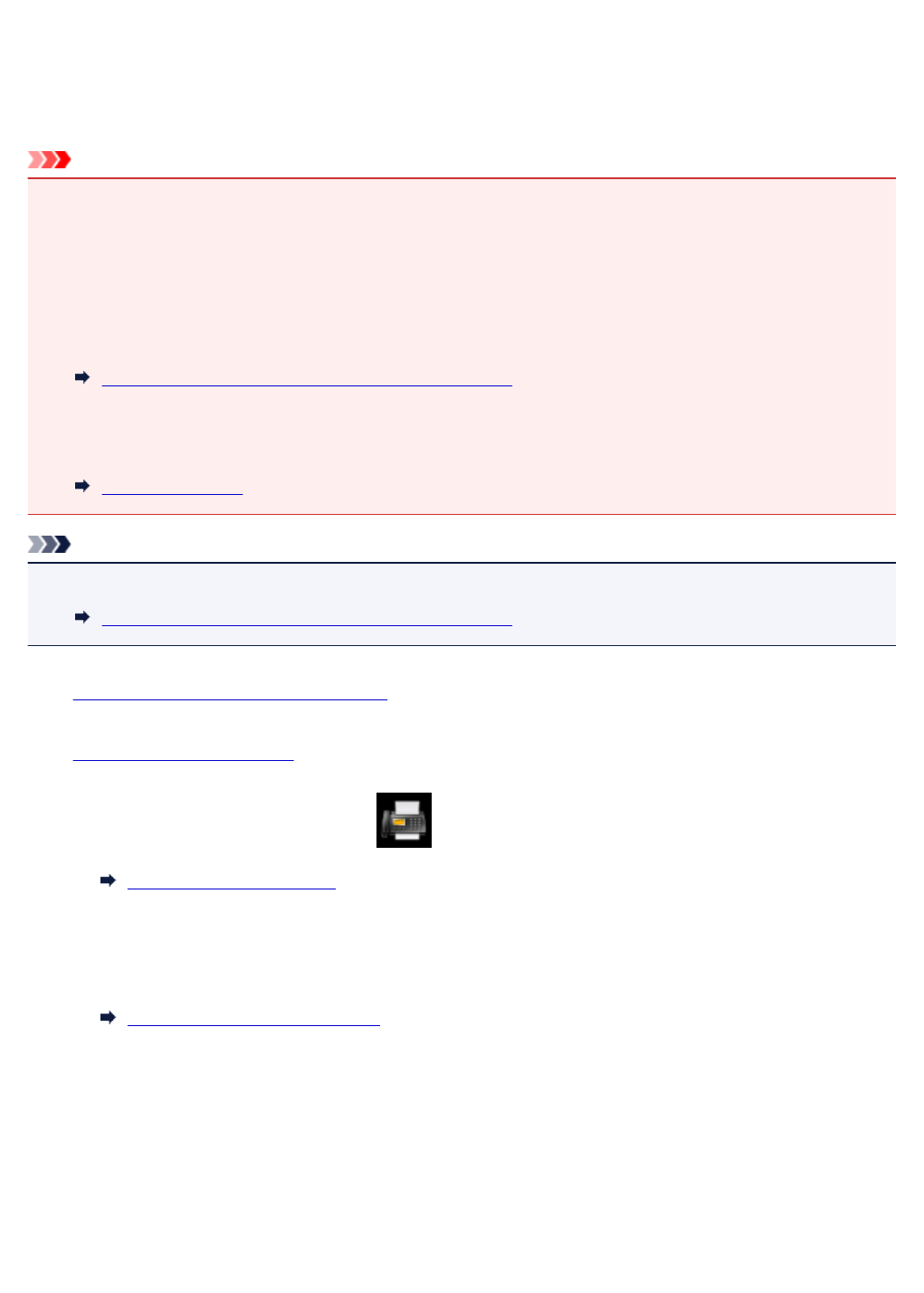
Sending Fax after Speaking on Telephone
If you want to speak to the recipient before sending a fax, or if the recipient does not have a fax device that
can receive faxes automatically, send a fax manually after speaking to the recipient on the telephone to
check whether the recipient can receive faxes.
Important
• It may be possible that faxes will reach unintended recipients due to the misdialing or incorrect
registration of fax/telephone numbers. When you send important documents, we recommend that you
send them after speaking on the telephone. See below for the procedure to send a fax manually.
• With manual transmission, you cannot use the platen glass to load documents. Load the documents in
the ADF.
When loading document on the platen glass, send a fax with automatic transmission.
Sending Faxes by Entering Fax/Telephone Number
• To speak to the recipient before sending a fax, you need to connect a telephone to the printer.
For details on how to connect the telephone to the printer:
Basic Connection
Note
• For details on the basic sending operations:
Sending Faxes by Entering Fax/Telephone Number
1. Make sure that printer is turned on.
2. Load documents in ADF.
3. Flick HOME screen, and then tap FAX.
Using the Operation Panel
The Fax standby screen is displayed.
4. Change send settings as necessary.
Setting Items for Sending Faxes
5. Lift handset of telephone connected to printer.
6. Use telephone to dial recipient's fax/telephone number.
7. Speak to recipient.
948
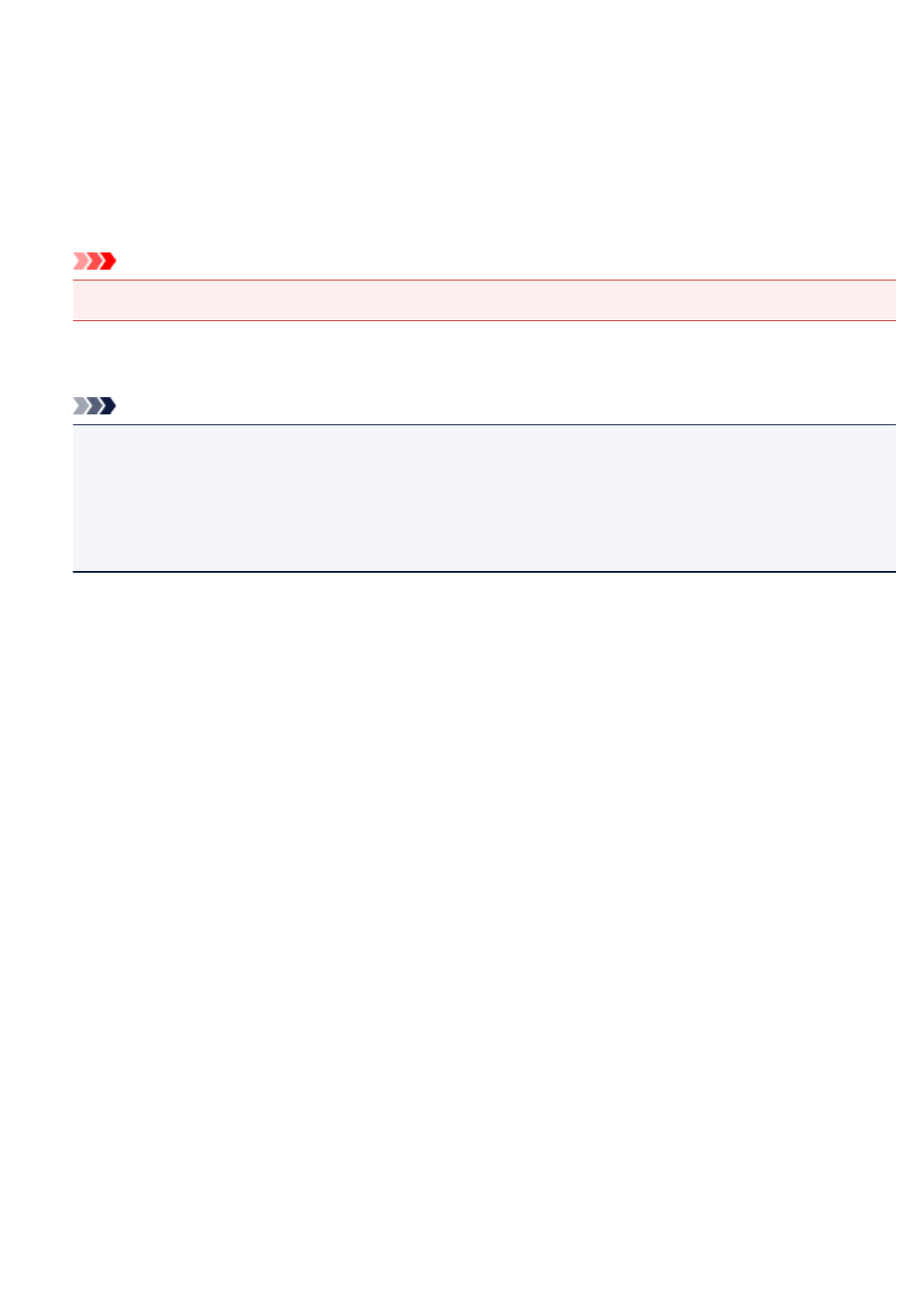
When you hear a high-pitched signal instead of the recipient's voice, you cannot check whether the
recipient can receive faxes. If you want to stop sending the fax, replace the handset. If you want to send
the fax, go to step 8.
8. Ask recipient to set recipient's fax device to receive faxes.
9. When you hear a high-pitched signal, press Color button or Black button.
Press the Color button for color transmission, or the Black button for black & white transmission.
Important
•Color transmission is available only when the recipient's fax device supports color faxing.
10. Hang up handset.
Note
•To cancel a fax transmission, press the Stop button. To cancel a fax transmission while it is in
progress, press the Stop button, and then follow the instructions on the touch screen.
•If documents remain in the ADF after the Stop button is pressed while scanning is in progress,
Document in ADF. Tap [OK] to eject document. is displayed on the touch screen. By tapping
OK, the remaining documents are automatically ejected.
949
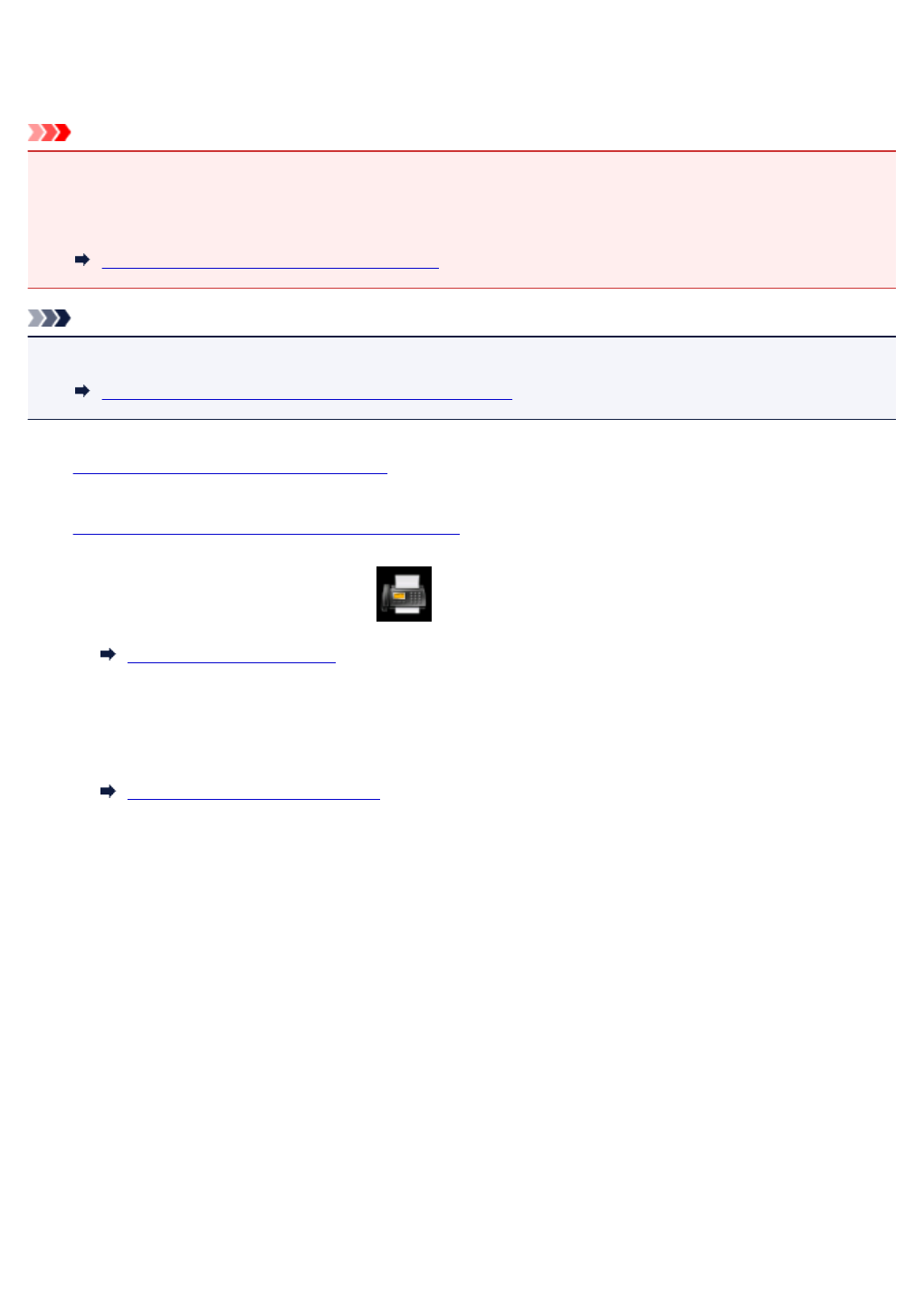
Sending Fax to Registered Recipient
Registering recipient's fax/telephone number and name in the printer's directory enables you to send faxes
easily.
Important
• It may be possible that faxes will reach unintended recipients due to the misdialing or incorrect
registration of fax/telephone numbers. When you send important documents, we recommend that you
send them after speaking on the telephone.
Sending Fax after Speaking on Telephone
Note
• For details on the basic sending operations:
Sending Faxes by Entering Fax/Telephone Number
1. Make sure that printer is turned on.
2. Load documents on platen glass or in ADF.
3. Flick HOME screen, and then tap FAX.
Using the Operation Panel
The Fax standby screen is displayed.
4. Change send settings as necessary.
Setting Items for Sending Faxes
5. Tap Directory.
The screen to select a registered recipient is displayed.
6. Select a registered recipient.
Display by name Display by ID number
950
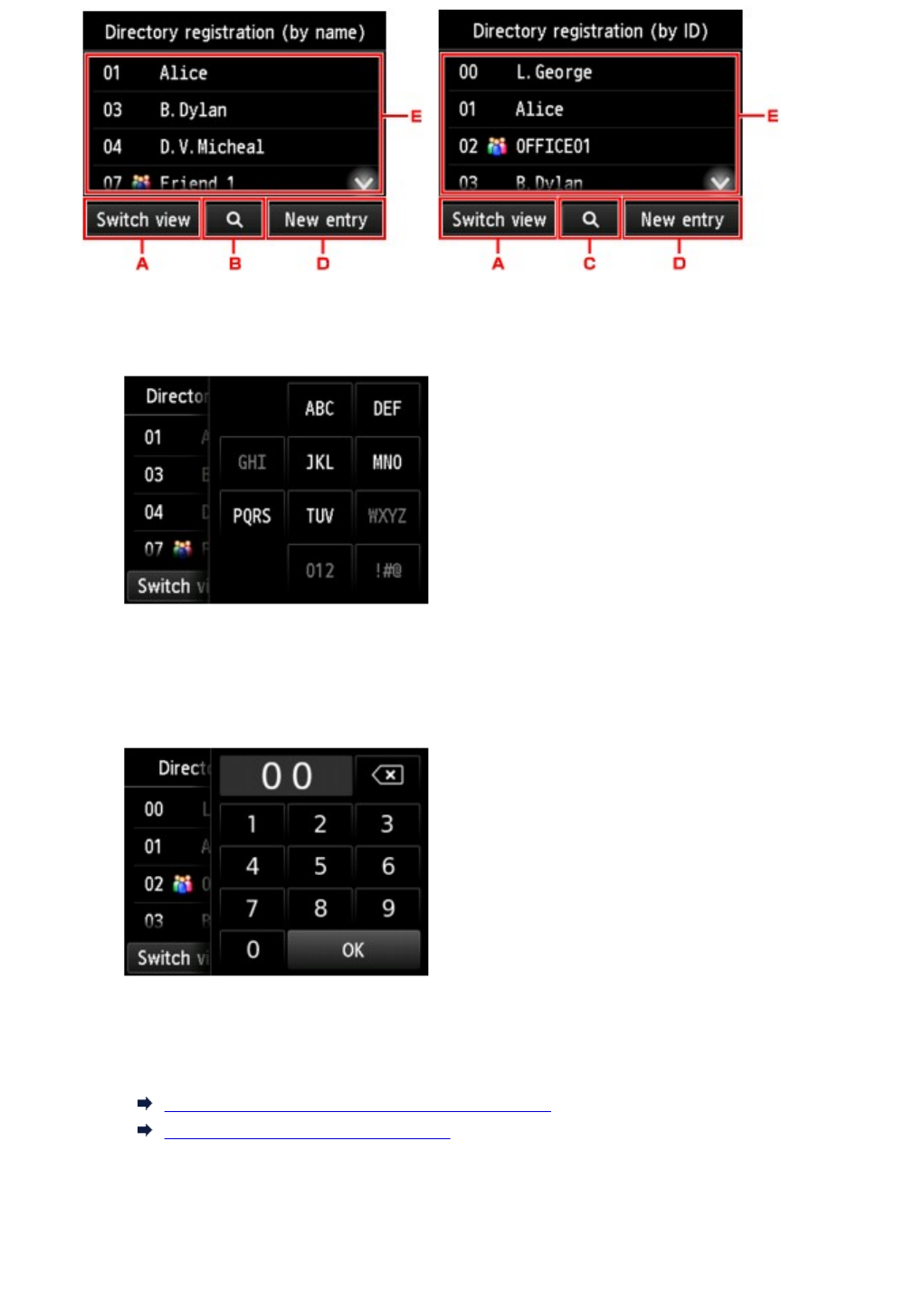
A. Tap to switch the display by name and by ID number.
B. Tap to display the screen to select an initial. You can search the registered recipient by initial.
By selecting the initial, the registered recipients are displayed in alphabetical order from the
selected character.
C. Tap to display the screen to select an ID number of the registered recipient. You can search the
registered recipient by ID number.
By enter the ID number and tapping OK, the registered recipients are displayed in order from the
recipient of the ID number selected.
D. Tap to register a new recipient or a new group dial.
Registering Fax/Telephone Number of Recipients
Registering Recipients in Group Dial
E. Tap to select a registered recipient.
7. Tap Send FAX as operation for selected recipient.
The touch screen returns to the Fax standby screen.
951
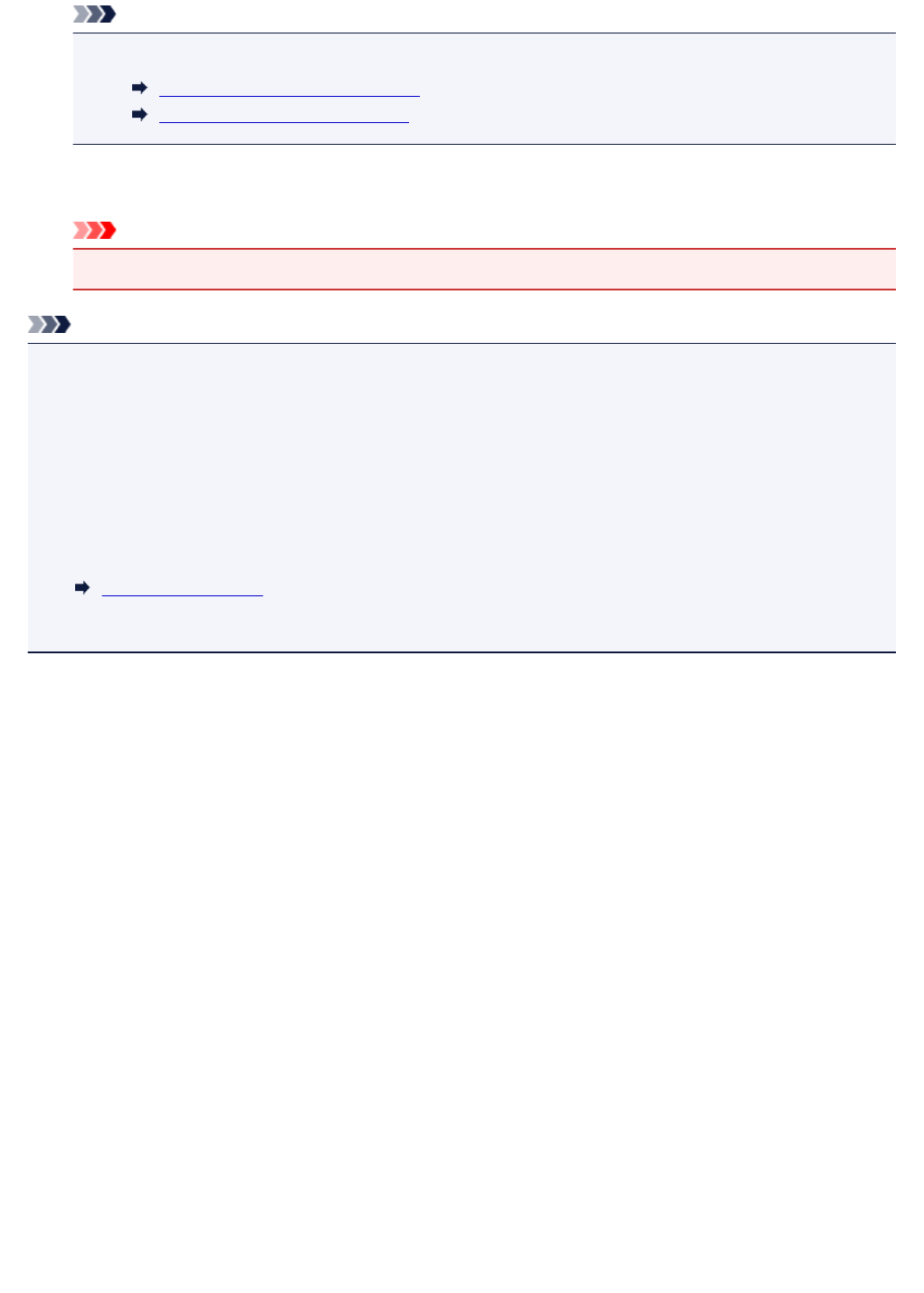
Note
• You can edit or delete a selected recipient.
Changing Registered Information
Deleting Registered Information
8. Press Color button for color transmission, or Black button for black & white transmission.
Important
•Color transmission is available only when the recipient's fax device supports color faxing.
Note
• To cancel a fax transmission, press the Stop button. To cancel a fax transmission while it is in progress,
press the Stop button, and then follow the instructions on the touch screen.
• If documents remain in the ADF after the Stop button is pressed while scanning is in progress,
Document in ADF. Tap [OK] to eject document. is displayed on the touch screen. By tapping OK, the
remaining documents are automatically ejected.
• In case the printer was not able to send a fax, such as when the recipient's line was busy, it has the
function to automatically redial the number after a specified interval. Automatic redialing is enabled by
default.
Automatic Redialing
To cancel automatic redialing, wait until the printer starts redialing, and then press the Stop button.
952
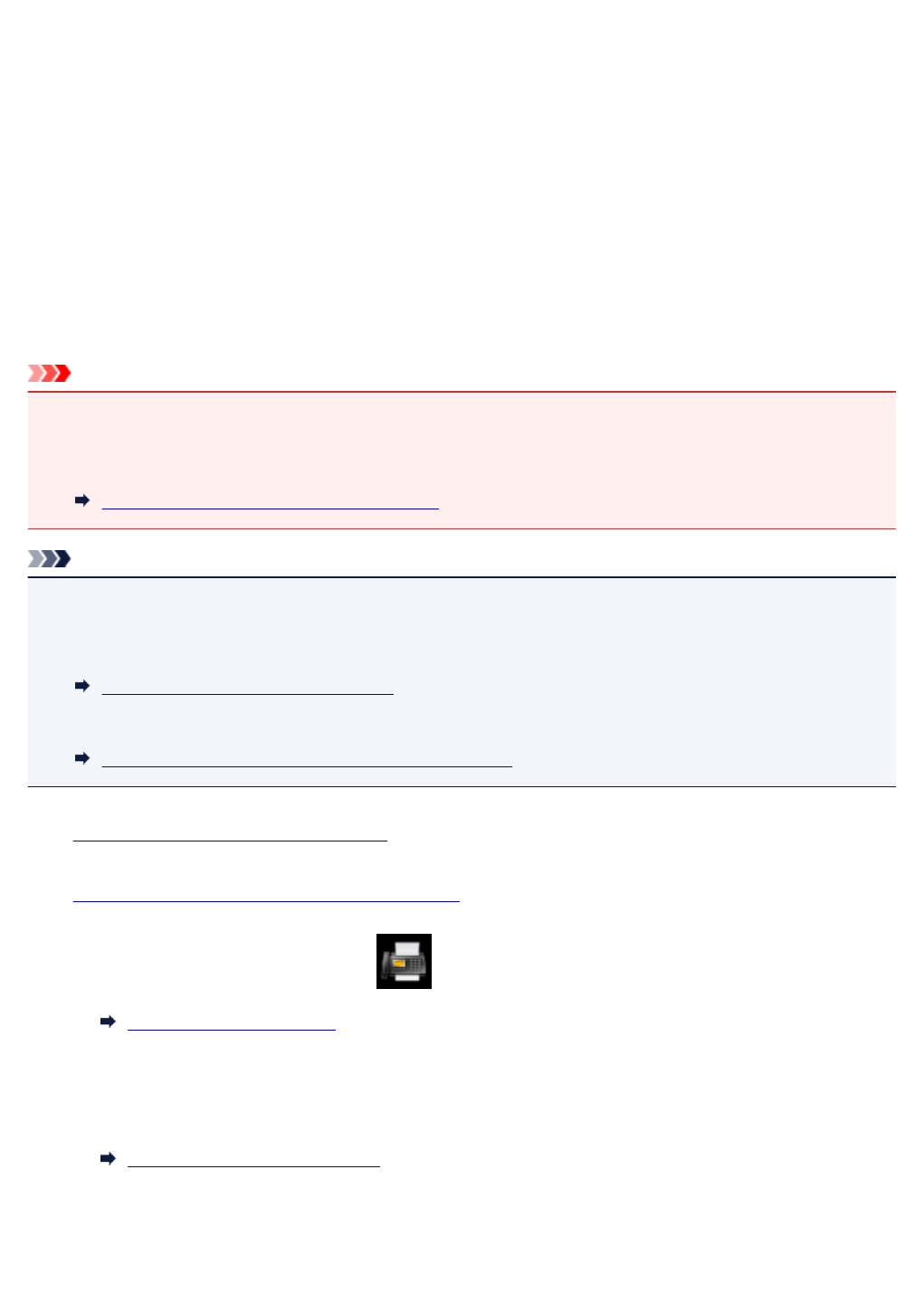
Sending Same Document to Several Recipients (Sequential
Broadcasting)
This printer allows you to prepare for sending the same document to a maximum of 101 recipients in one
operation. The recipients can be specified by entering the fax/telephone numbers and selecting the
registered recipients (the particular recipient's number and the group dial) in combination.
The following number of recipients can be specified in combination.
• The recipient registered to the printer:
Up to 100 (total of the particular recipient's number and the group dial)
• Entering the fax/telephone numbers or redialing:
1
Important
• It may be possible that faxes will reach unintended recipients due to the misdialing or incorrect
registration of fax/telephone numbers. When you send important documents, we recommend that you
send them one by one after speaking on the telephone.
Sending Fax after Speaking on Telephone
Note
• If you frequently send documents to the same group of recipients, you can group these numbers for
group dialing. This will allow you to send documents to all the recipients in the group by simply
operation.
Registering Recipients in Group Dial
• For details on the basic sending operations:
Sending Faxes by Entering Fax/Telephone Number
1. Make sure that printer is turned on.
2. Load documents on platen glass or in ADF.
3. Flick HOME screen, and then tap FAX.
Using the Operation Panel
The Fax standby screen is displayed.
4. Change send settings as necessary.
Setting Items for Sending Faxes
5. Specify first recipient.
953
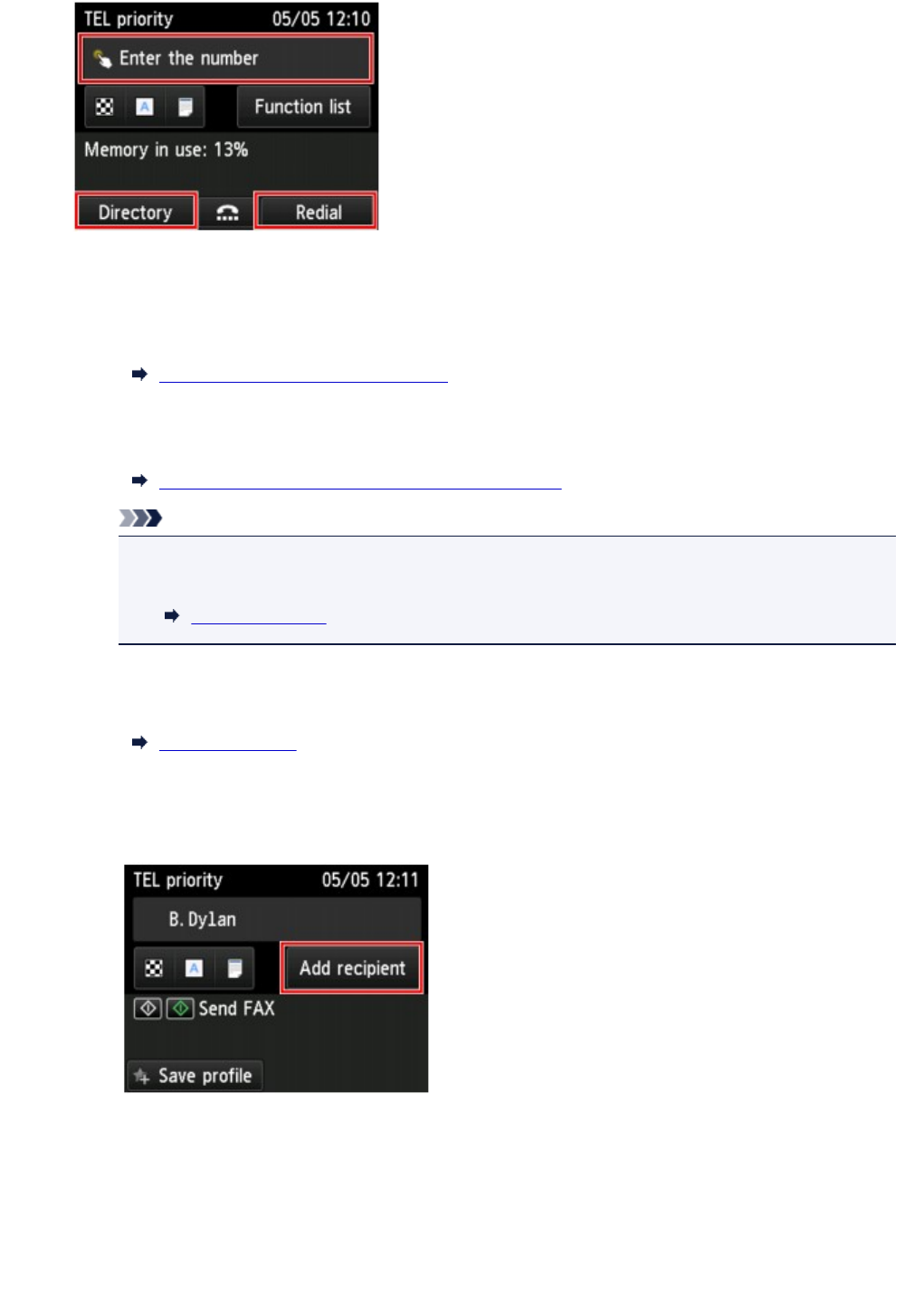
Specify the first recipient with the one of the following methods.
•By specifying with the recipient registered to the printer:
Tap Directory and specify the recipient.
Sending Fax to Registered Recipient
•By entering the fax/telephone numbers:
Tap the entry field of fax/telephone numbers and enter the number.
Sending Faxes by Entering Fax/Telephone Number
Note
• If FAX number re-entry in Security control under FAX settings is set to ON, enter the
number again.
Security control
• By redialing:
Tap Redial and select a number in the outgoing call logs.
Manual Redialing
6. Add recipient.
1. Tap Add recipient.
The list of the recipients is displayed.
2. Select a method to add recipient.
954
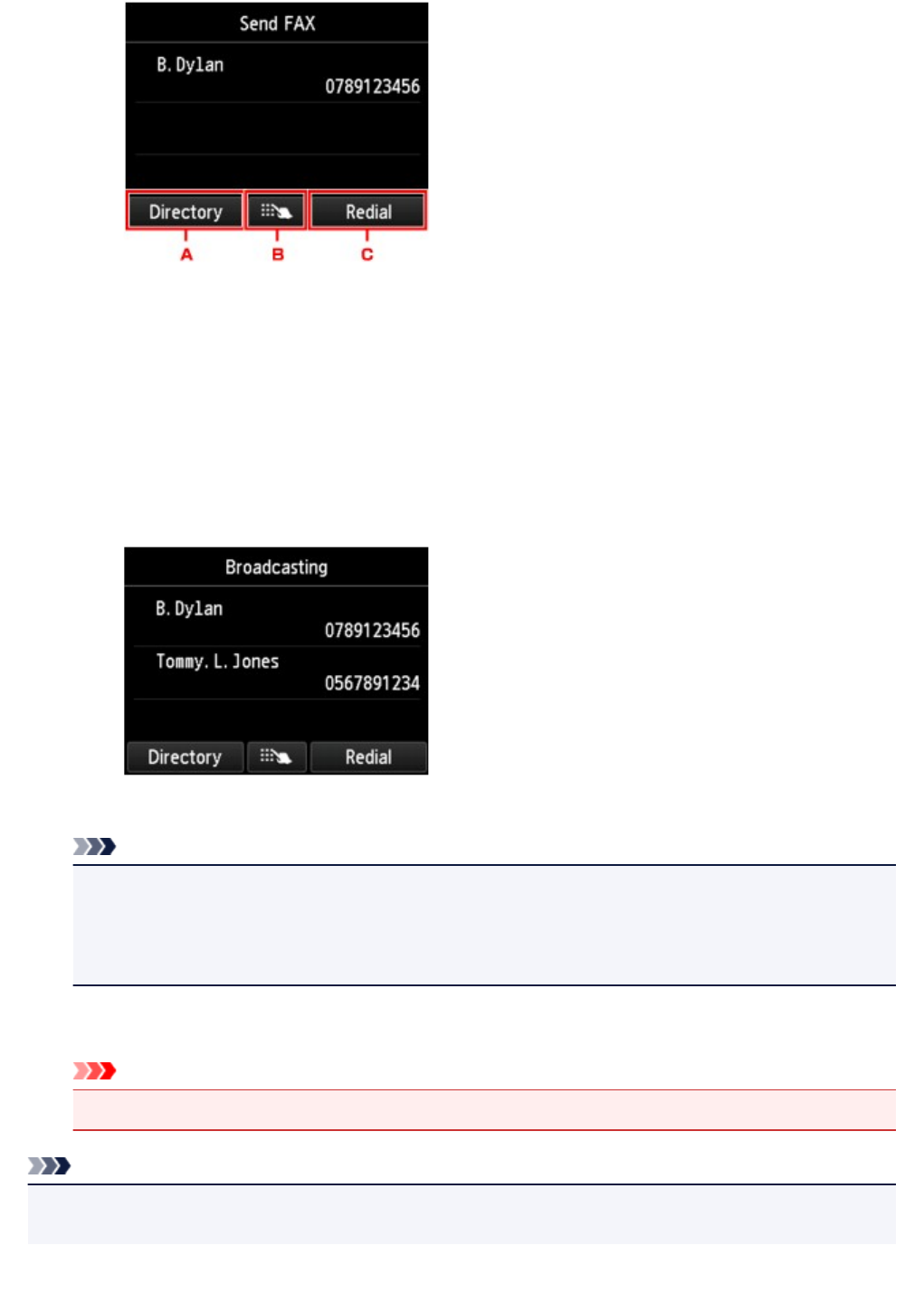
A. Adds the recipient from the registered recipients.
B. Adds the recipient by entering the fax/telephone numbers if you specified a first recipient from
the registered recipients.
C. Adds the recipient by selecting a number from the outgoing call logs if you specified a first
recipient from the registered recipients.
3. Add a recipient.
Add a recipient according to the selected method.
The Sequential broadcasting screen is displayed after specifying the multiple recipients.
4. If you want to add recipient further, repeat same procedure.
Note
• You can specify the recipient either by entering the fax/telephone number or by selecting a
number from the outgoing call logs.
•If you want to delete the recipient, tap a recipient that you want to delete from the list. After the
confirmation screen is displayed, tap Yes to delete the recipient.
7. Press Color button for color transmission, or Black button for black & white transmission.
Important
•Color transmission is available only when the recipient's fax device supports color faxing.
Note
• To cancel a fax transmission, press the Stop button. To cancel a fax transmission while it is in progress,
press the Stop button, and then follow the instructions on the touch screen.
955
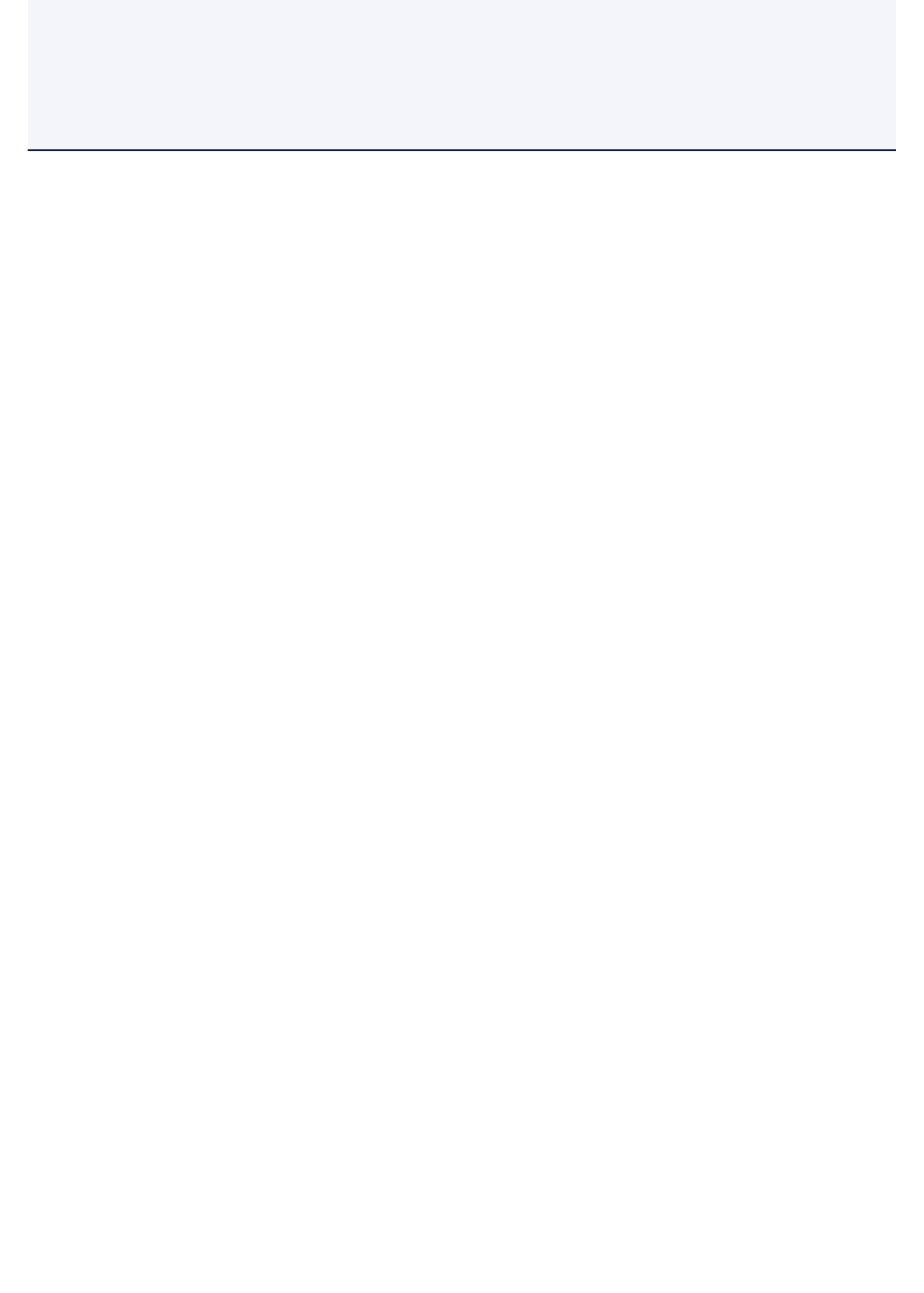
When you press the Stop button, fax transmission to all the recipients specified will be canceled. You
cannot cancel a fax transmission to only one recipient.
• If documents remain in the ADF after the Stop button is pressed while scanning is in progress,
Document in ADF. Tap [OK] to eject document. is displayed on the touch screen. By tapping OK, the
remaining documents are automatically ejected.
956
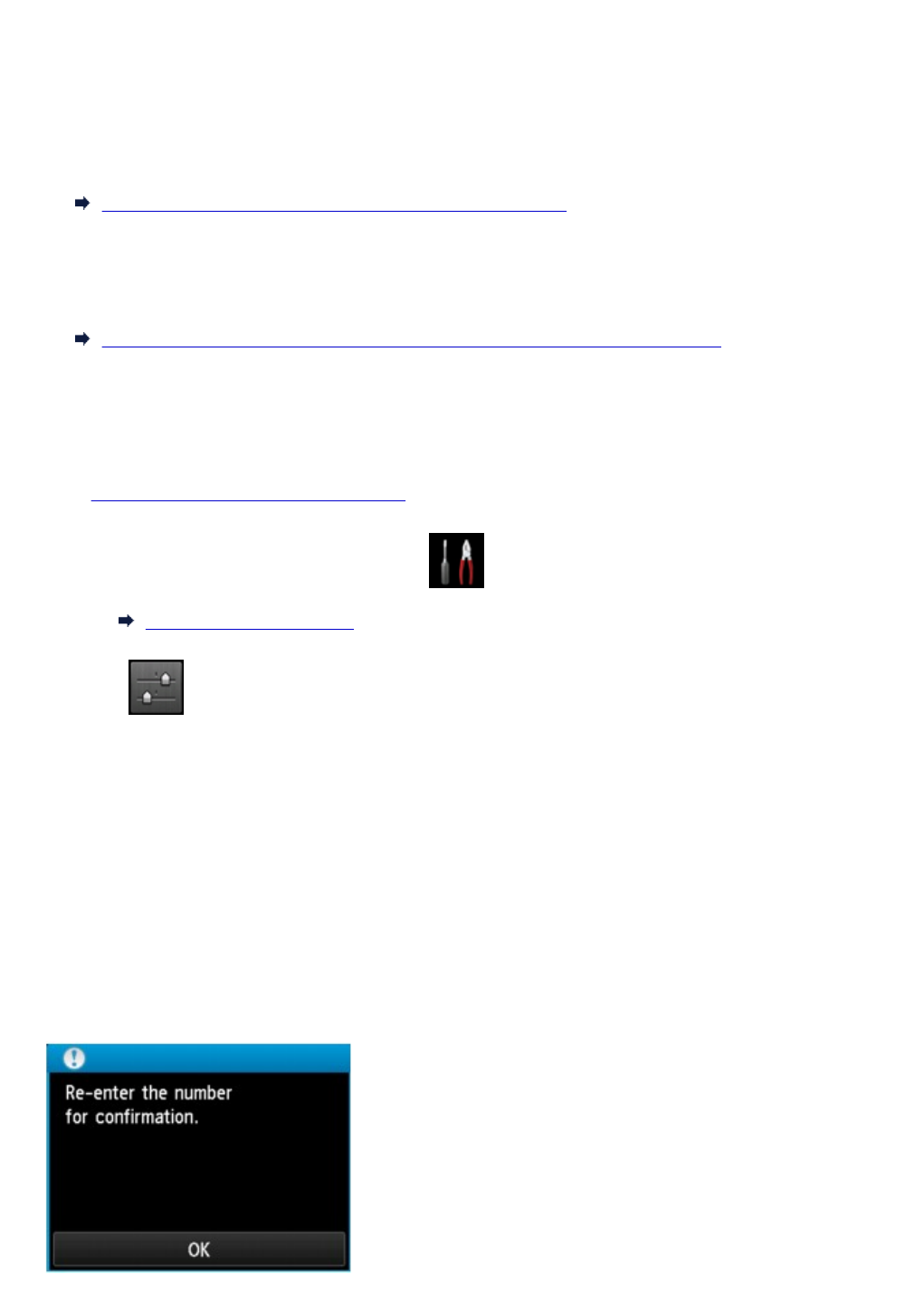
Preventing Mistransmission of Faxes
This printer has two functions for preventing the mistransmission of faxes.
• Sending faxes after entering the fax/telephone number twice
This function requires you to re-enter the fax/telephone number after entering the number, so that the
printer prevents you from misdialing.
Sending Faxes after Dialing Twice (Fax Number Re-entry)
• Sending faxes after the printer checks the recipient's fax device information
Before sending a fax, the printer checks whether the recipient's fax device information matches the
dialed number.
Sending Faxes after Checking Information (Checking Recipient's Information)
Sending Faxes after Dialing Twice (Fax Number Re-entry)
Set FAX number re-entry to ON following the procedure below.
1. Make sure that printer is turned on.
2. Flick the HOME screen, and then tap Setup.
Using the Operation Panel
3. Tap Device settings.
4. Tap FAX settings.
5. Tap Security control.
6. Tap FAX number re-entry.
7. Tap ON.
If you send a fax with this function, the following screen is displayed after entering the recipient's fax/
telephone number.
957
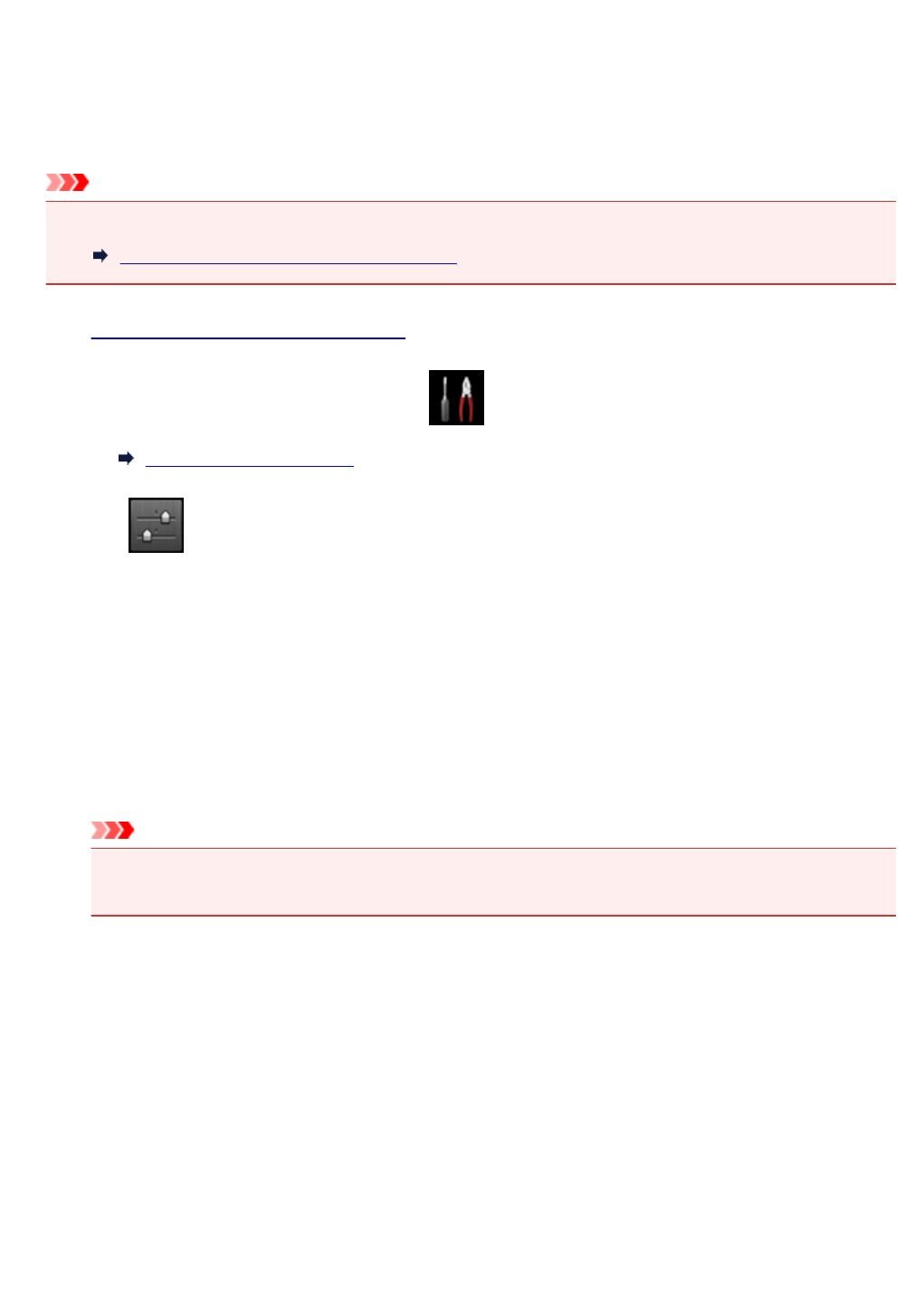
Enter the recipient's fax/telephone number again.
Sending Faxes after Checking Information (Checking Recipient's
Information)
Set Check RX FAX information to ON following the procedure below.
Important
• This function is not available when you send a fax manually.
Sending Fax after Speaking on Telephone
1. Make sure that printer is turned on.
2. Flick the HOME screen, and then tap Setup.
Using the Operation Panel
3. Tap Device settings.
4. Tap FAX settings.
5. Tap Security control.
6. Tap Check RX FAX information.
7. Tap ON.
Important
• Transmission will be canceled if the printer fails to receive the recipient's fax information or if the
received information does not match the fax/telephone number.
958
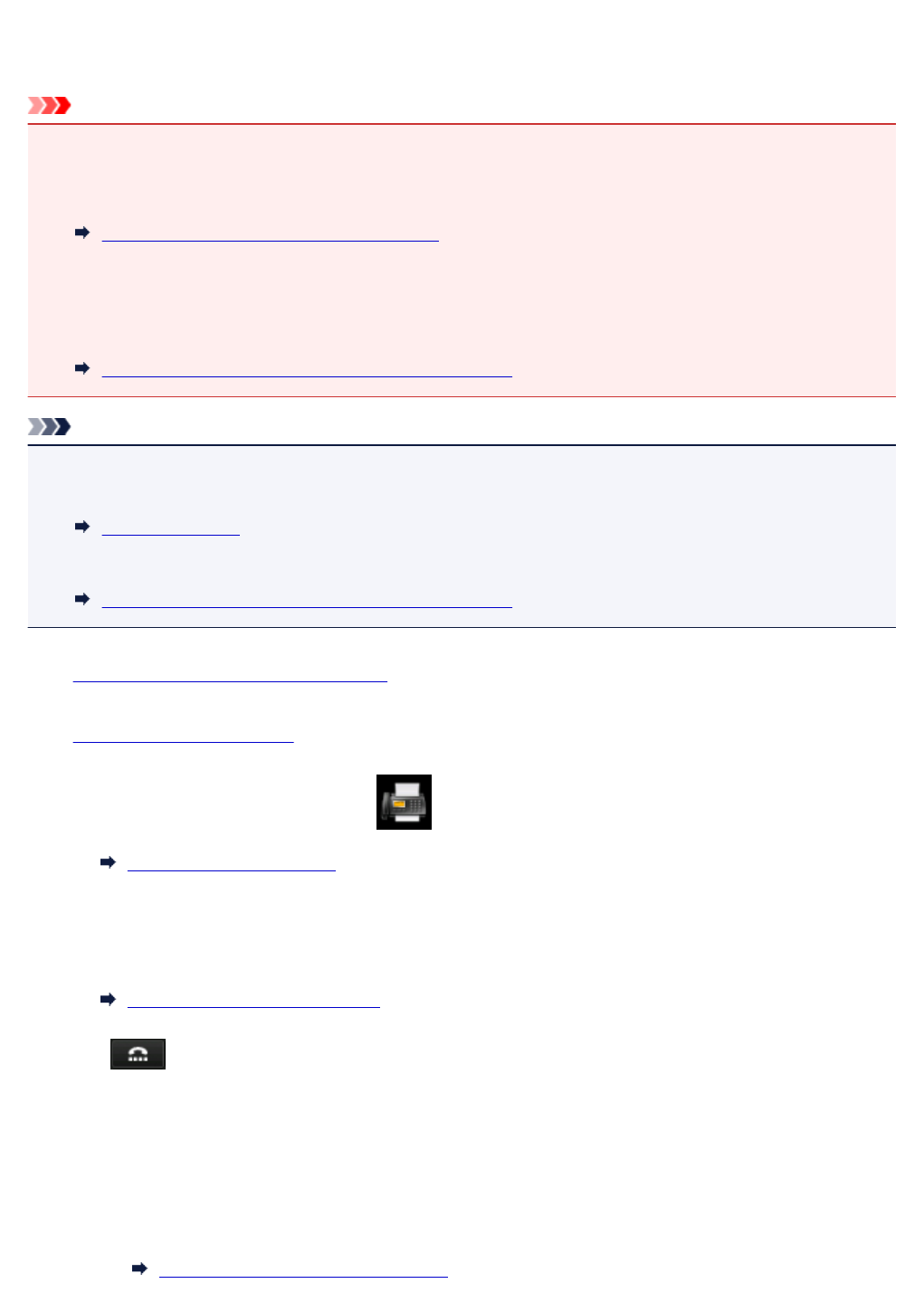
Using On Hook Dial Function
Follow the procedure below to send faxes with the on hook dial function.
Important
• It may be possible that faxes will reach unintended recipients due to the misdialing or incorrect
registration of fax/telephone numbers. When you send important documents, we recommend that you
send them after speaking on the telephone.
Sending Fax after Speaking on Telephone
• With manual transmission, you cannot use the platen glass to load documents. Load the documents in
the ADF.
When loading document on the platen glass, send a fax with automatic transmission.
Sending Faxes by Entering Fax/Telephone Number
Note
• You can use the on hook dial function only when Hook key setting in Security control under FAX
settings is set to Enable.
Security control
• For details on the basic sending operations:
Sending Faxes by Entering Fax/Telephone Number
1. Make sure that printer is turned on.
2. Load documents in ADF.
3. Flick HOME screen, and then tap FAX.
Using the Operation Panel
The Fax standby screen is displayed.
4. Change send settings as necessary.
Setting Items for Sending Faxes
5. Tap .
6. Specify a recipient.
Specify the recipient with the one of the following methods.
•By specifying with the recipient registered to the printer:
Select the registered recipient by tapping Directory.
Sending Fax to Registered Recipient
959
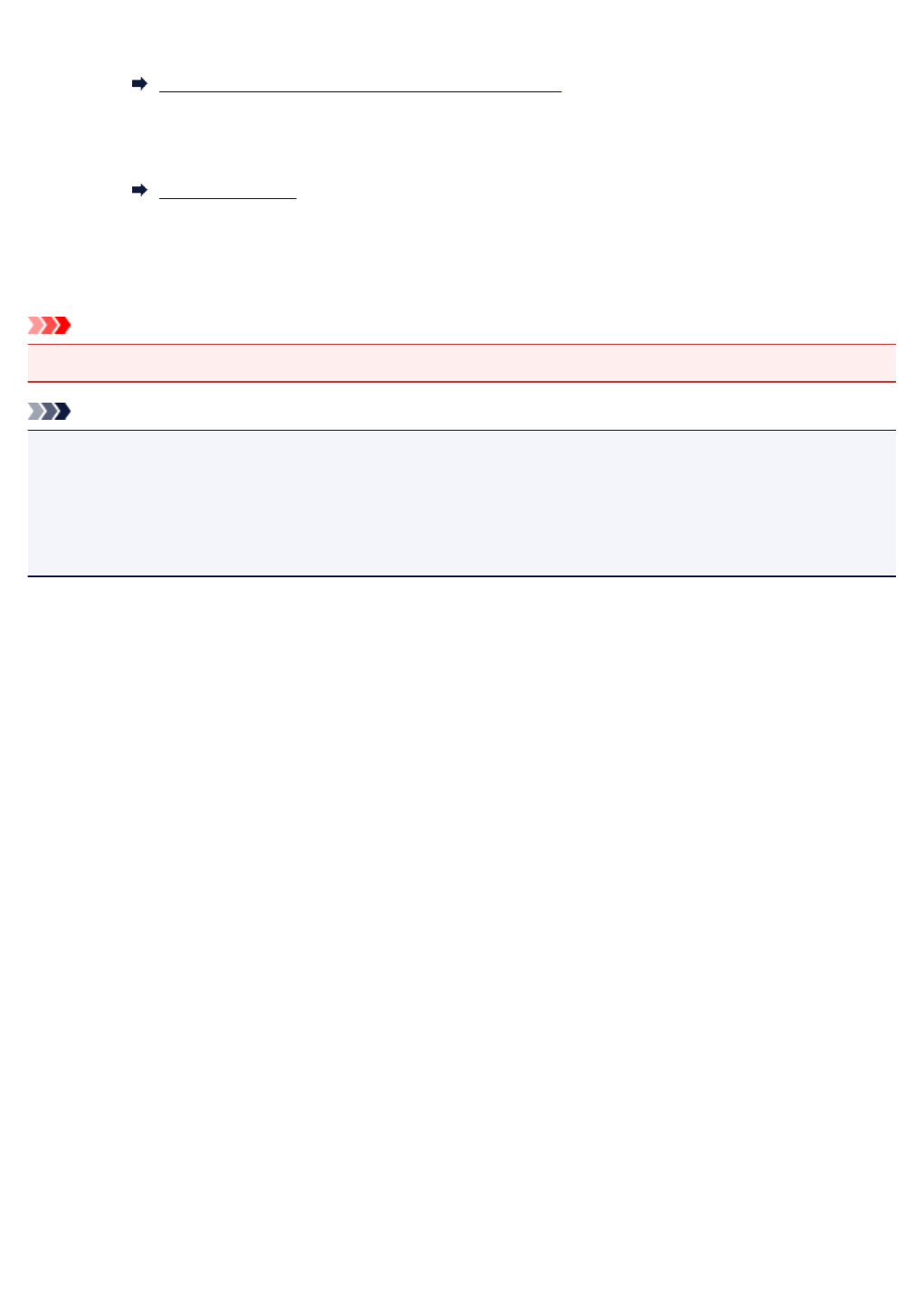
• By entering the fax/telephone numbers:
Tap the entry field of fax/telephone numbers and enter the number.
Sending Faxes by Entering Fax/Telephone Number
• Manual redialing:
Tap Redial and select a number in the outgoing call logs.
Manual Redialing
7. When you hear a high-pitched signal, press Color button or Black button.
Press the Color button for color transmission, or the Black button for black & white transmission.
Important
• Color transmission is available only when the recipient's fax device supports color faxing.
Note
• To cancel a fax transmission, press the Stop button. To cancel a fax transmission while it is in progress,
press the Stop button, and then follow the instructions on the touch screen.
• If documents remain in the ADF after the Stop button is pressed while scanning is in progress,
Document in ADF. Tap [OK] to eject document. is displayed on the touch screen. By tapping OK, the
remaining documents are automatically ejected.
960
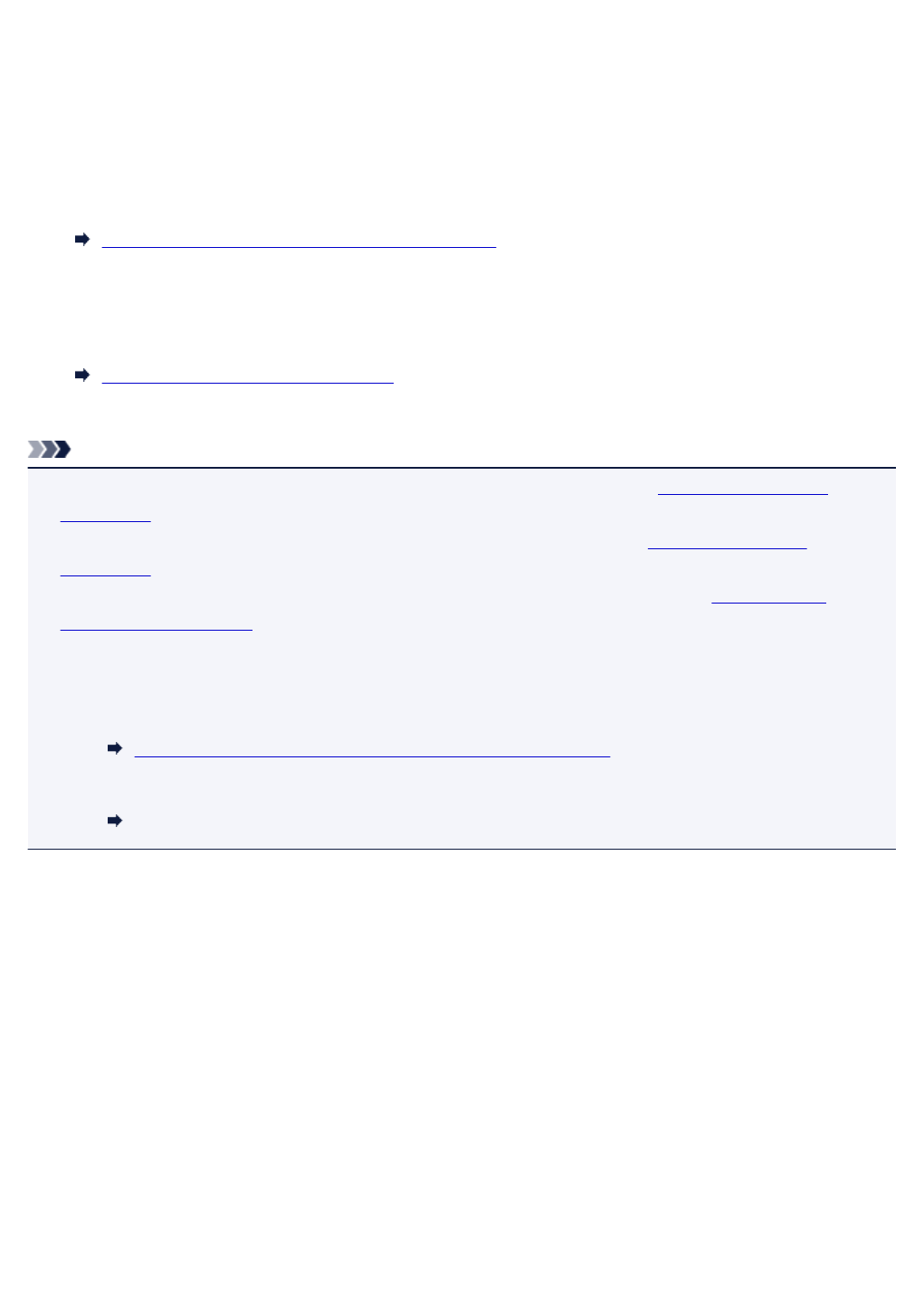
Registering Recipients Using Operation Panel of Printer
Registering recipients in the printer's directory in advance allows you to dial fax/telephone numbers simply.
The following methods to register are available:
• Recipient registration
Registering the recipient's fax/telephone number and name allows you to send a fax by selecting a
registered recipient in the printer directory.
Registering Fax/Telephone Number of Recipients
• Group dial registration
You can combine two or more recipients registered in advance into a group. You can send the same
document to all the registered recipients in the group.
Registering Recipients in Group Dial
You can register up to 100 recipients in total of individual recipients and group dials.
Note
• To change the registered information of the recipient or the group dial, see Changing Registered
Information.
• To delete the registered information of the recipient or the group dial, see Deleting Registered
Information.
• To print a list of the recipient's fax/telephone numbers and names registered, see Printing List of
Registered Destinations.
• You can register, change, or delete the registered information of the recipient or the group dial using
Speed Dial Utility2 on the computer.
• For Windows:
Registering Recipients Using Speed Dial Utility2 (Windows)
• For Mac OS:
Registering Recipients Using Speed Dial Utility2 (Mac OS)
962
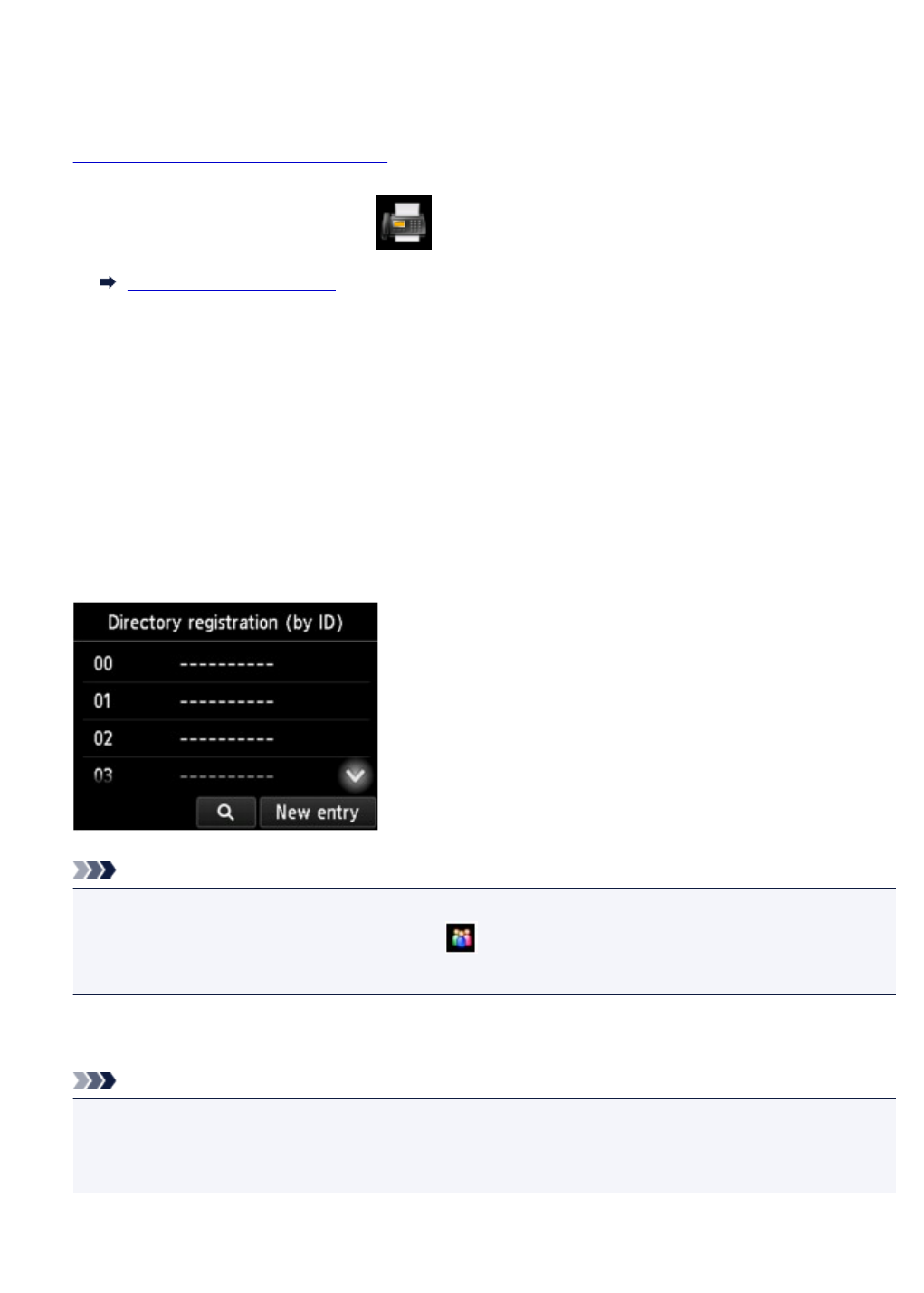
Registering Fax/Telephone Number of Recipients
Before you can use the printer's directory, you need to register the recipients' fax/telephone numbers. Follow
the procedure below to register the recipients' fax/telephone numbers.
1. Make sure that printer is turned on.
2. Flick HOME screen, and then tap FAX.
Using the Operation Panel
The Fax standby screen is displayed.
3. Tap Function list.
The Function list screen is displayed.
4. Tap TEL number registration.
5. Tap Directory registration.
The screen to select an ID number is displayed.
Note
• If you already registered the recipients, the recipients' name is displayed next to the ID number. If
you already registered the group dial, the icon and the group name are displayed next to the
ID number.
6. Select an unregistered ID number.
Note
•If you already registered the recipients and they are displayed by name, tap Switch view. The
registered recipients are displayed by ID number.
•If you tap New entry, an unregistered ID number will be selected in numerical order.
7. Tap Register recipient.
963
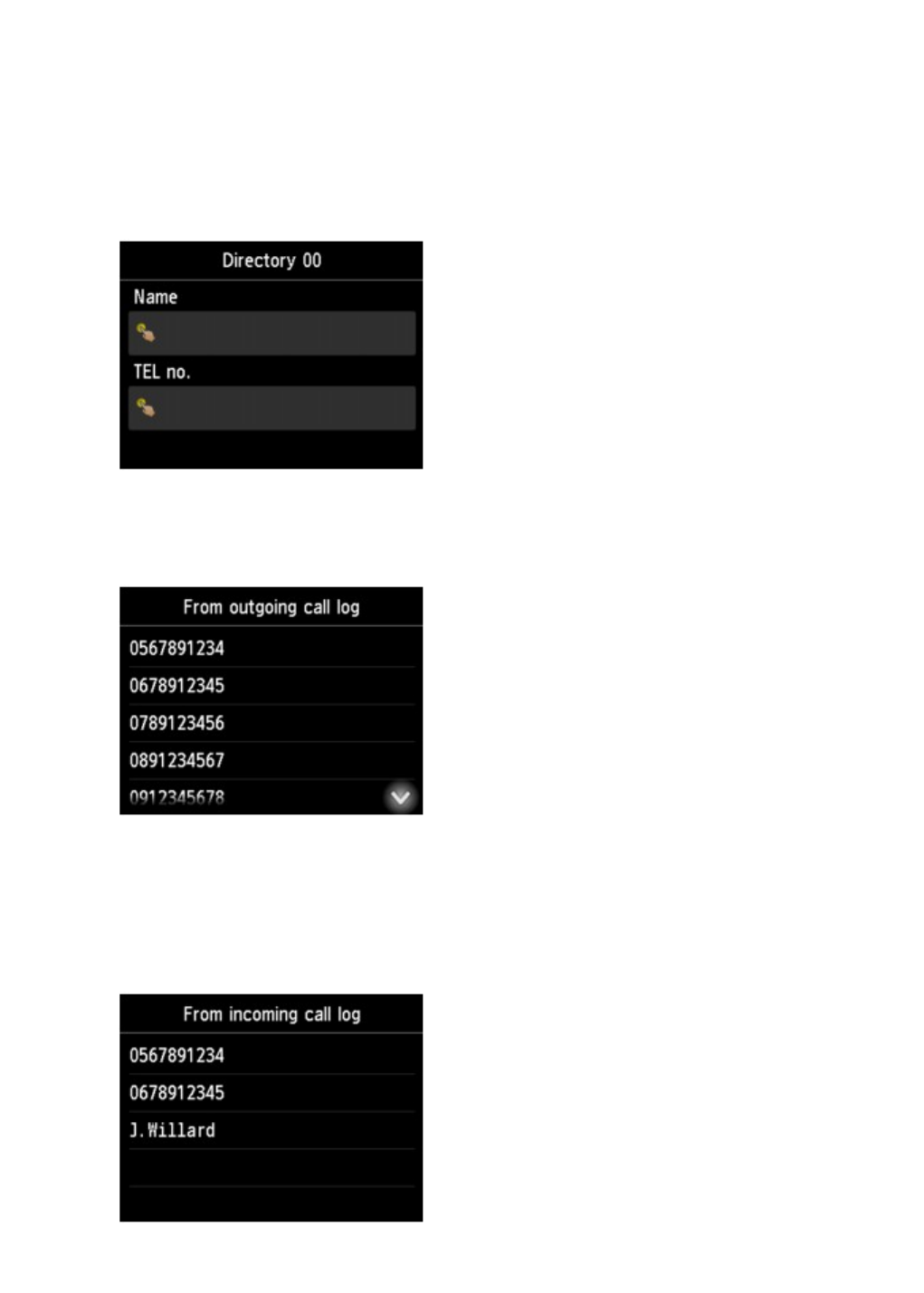
8. Select a registration method.
9. Register recipients' fax/telephone number.
Register the recipients' fax/telephone number depending on the registration method selected.
•By entering the number
The screen to register the recipient's fax/telephone number and name is displayed. Go to next
step.
•From outgoing call log
When you select this registration method, the screen to select the fax/telephone number from the
outgoing call logs is displayed.
Selecting a fax/telephone number from the outgoing call logs, the screen to register the recipient's
fax/telephone number and name is displayed. Go to next step.
•From incoming call log
When you select this registration method, the screen to select the fax/telephone number or the
name from the incoming call logs is displayed.
964
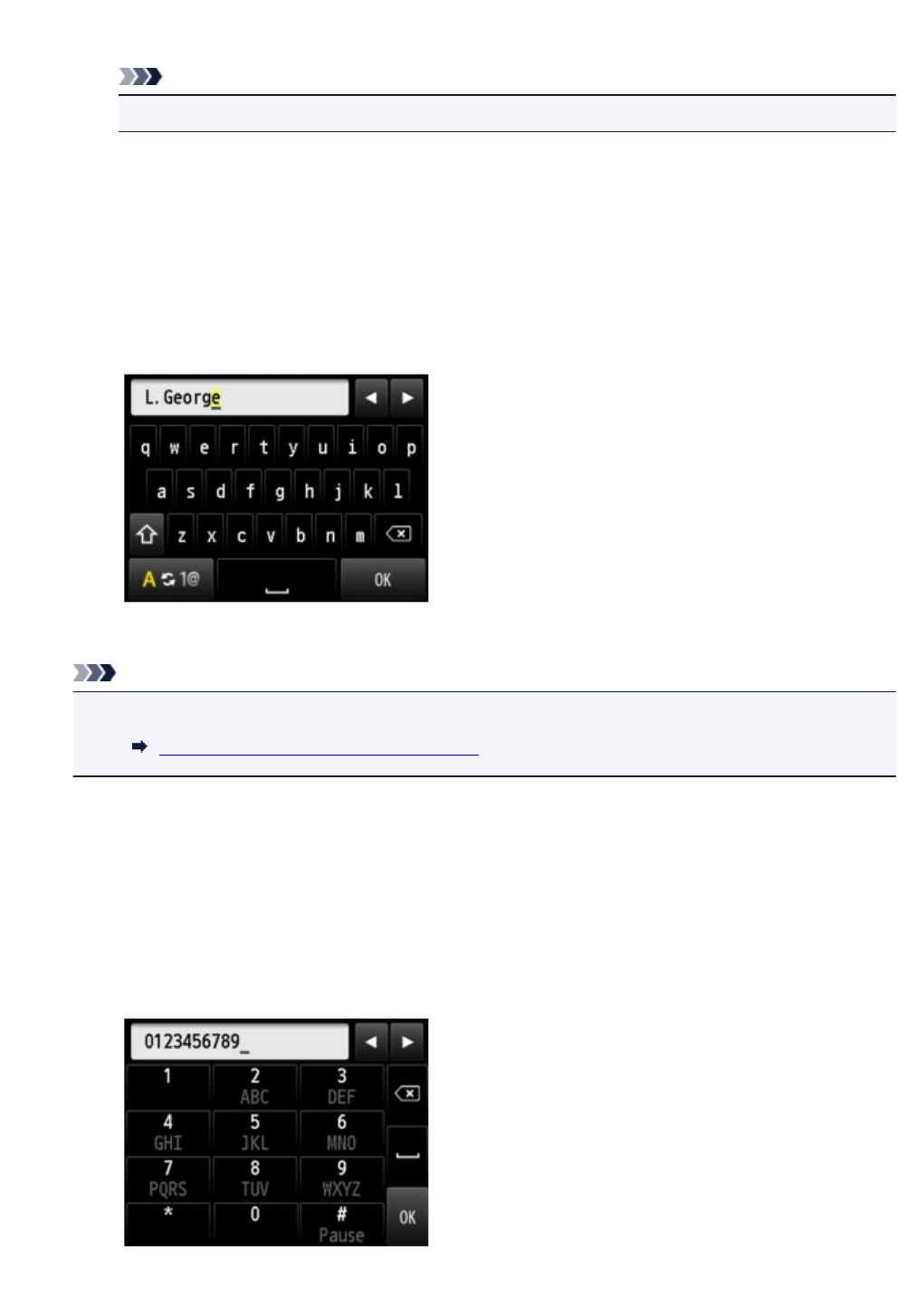
Select a fax/telephone number or name from the incoming call logs, the screen to register the
recipient's fax/telephone number and name is displayed. Go to next step.
Note
•This registration method may not be available depending on the country or region of purchase.
10. Enter recipient's name.
If you select From incoming call log as a registration method, the recipient's name may be already
entered. If you do not change the name, go to next step.
1. Tap entry field of name.
The screen to enter the character is displayed.
2. Enter recipient's name.
3. Tap OK.
Note
• You can enter the name up to 16 characters, including spaces.
Entering Numbers, Letters, and Symbols
11. Enter recipient's fax/telephone number.
If you select a fax/telephone number on From outgoing call log or From incoming call log, the fax/
telephone number is already entered. If you do not change the fax/telephone number, go to next step.
1. Tap entry field of fax/telephone numbers.
The screen to enter the number is displayed.
2. Enter recipient's fax/telephone number.
3. Tap OK.
965
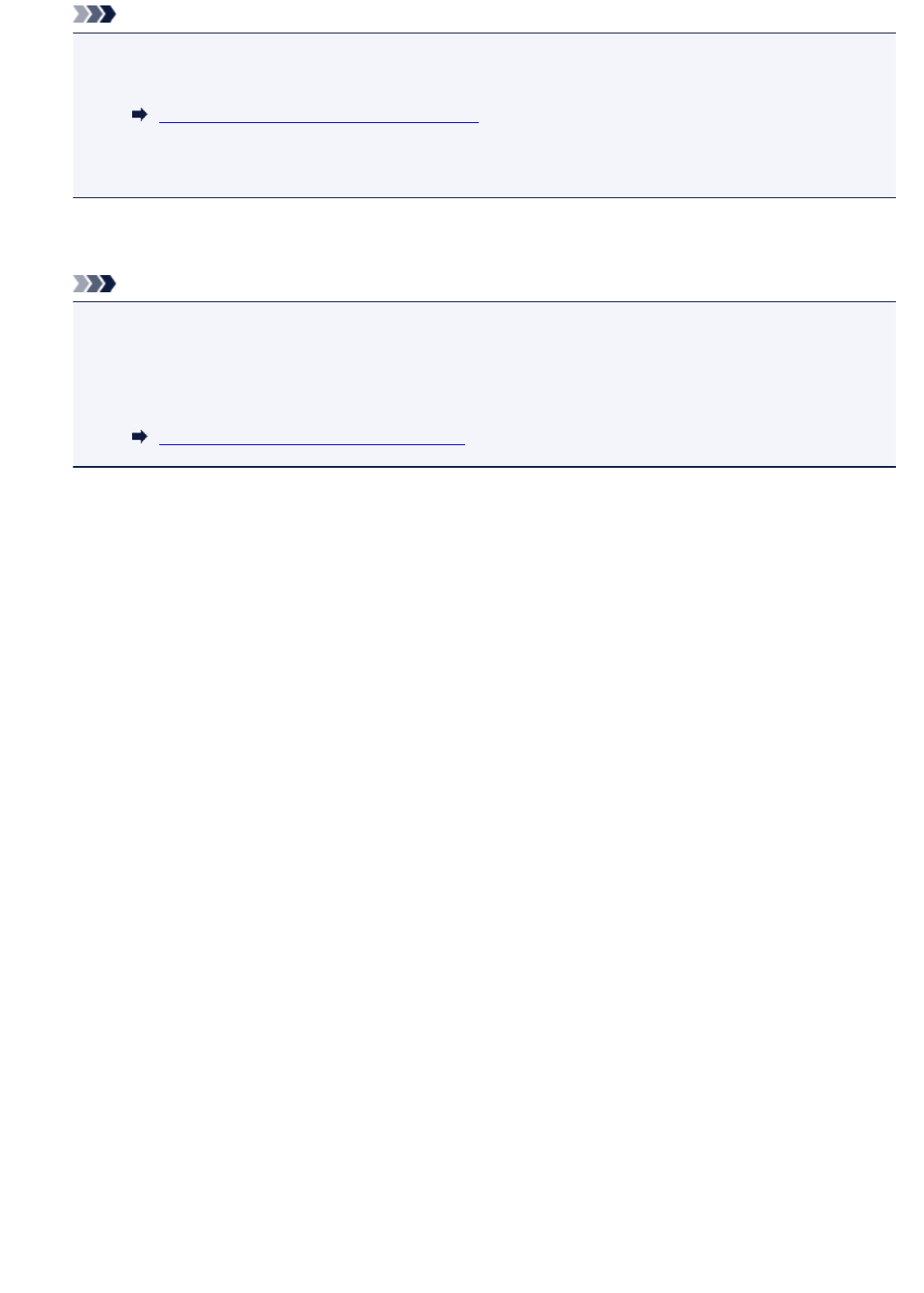
Note
• You can enter the fax/telephone number up to 60 digits (40 digits for the US, Canada, Korea and
some regions of Latin America), including spaces.
Entering Numbers, Letters, and Symbols
•When Telephone line type in FAX user settings under FAX settings is set to Rotary pulse, you
can enter a tone ("T") by tapping the Tone key.
12. Tap Register to finalize registration.
Note
•To register another recipient's number and name, select an unregistered ID number and operate
in the same procedure.
•You can check the recipient's numbers and names you have registered by printing RECIPIENT
TELEPHONE NUMBER LIST.
Printing List of Registered Destinations
966
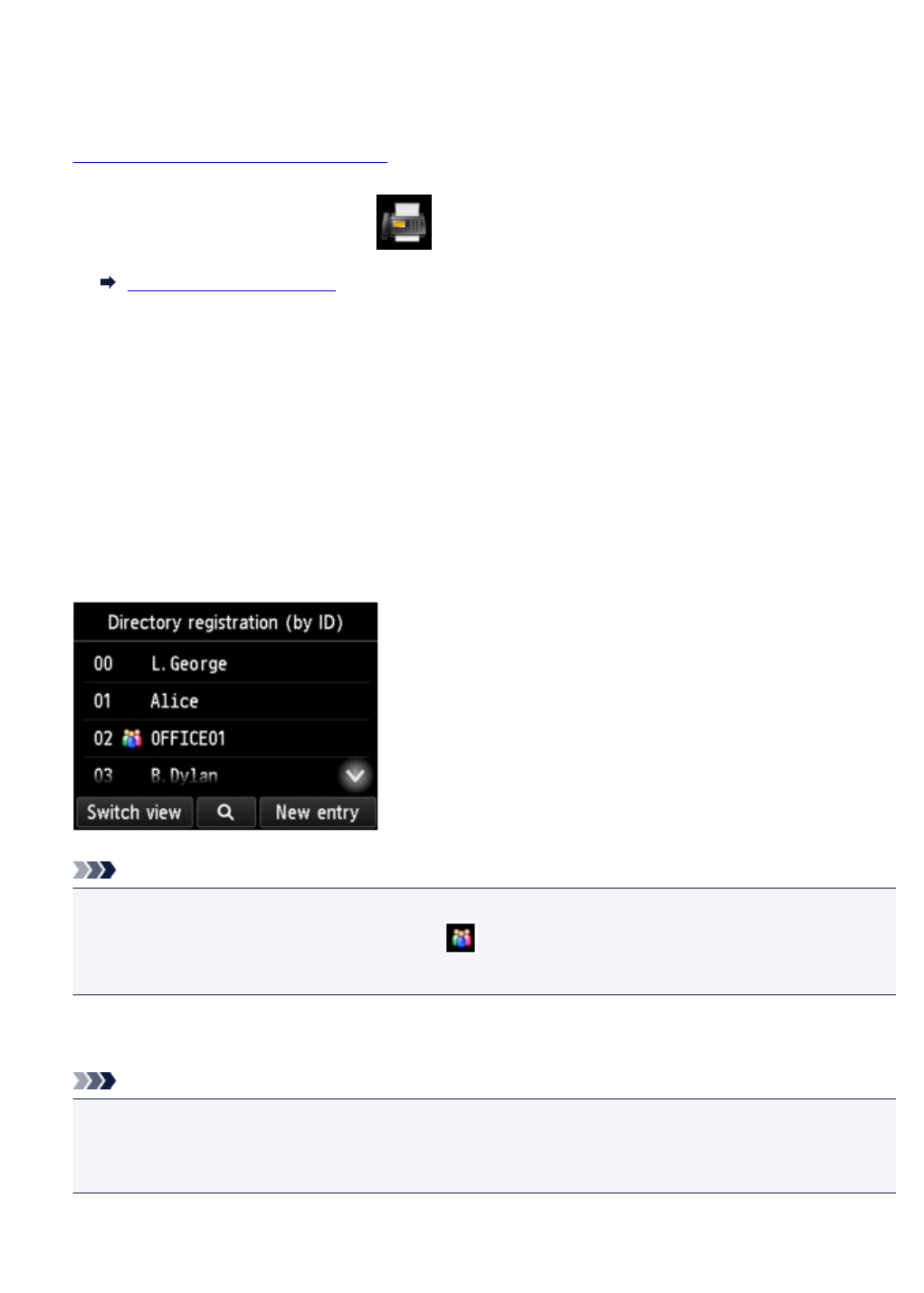
Registering Recipients in Group Dial
If you register two or more registered recipients to a group dial, you can send the same document
successively to all recipients registered to the group dial.
1. Make sure that printer is turned on.
2. Flick HOME screen, and then tap FAX.
Using the Operation Panel
The Fax standby screen is displayed.
3. Tap Function list.
The Function list screen is displayed.
4. Tap TEL number registration.
5. Tap Directory registration.
The screen to select an ID number is displayed.
Note
• If you already registered the recipients, the recipients' name is displayed next to the ID number. If
you already registered the group dial, the icon and the group name are displayed next to the
ID number.
6. Select an unregistered ID number.
Note
•If you already registered the recipients and they are displayed by name, tap Switch view. The
registered recipients are displayed by ID number.
•If you tap New entry, an unregistered ID number will be selected in numerical order.
7. Tap Group dial registration.
The screen to register the group name and the member of the group is displayed.
967
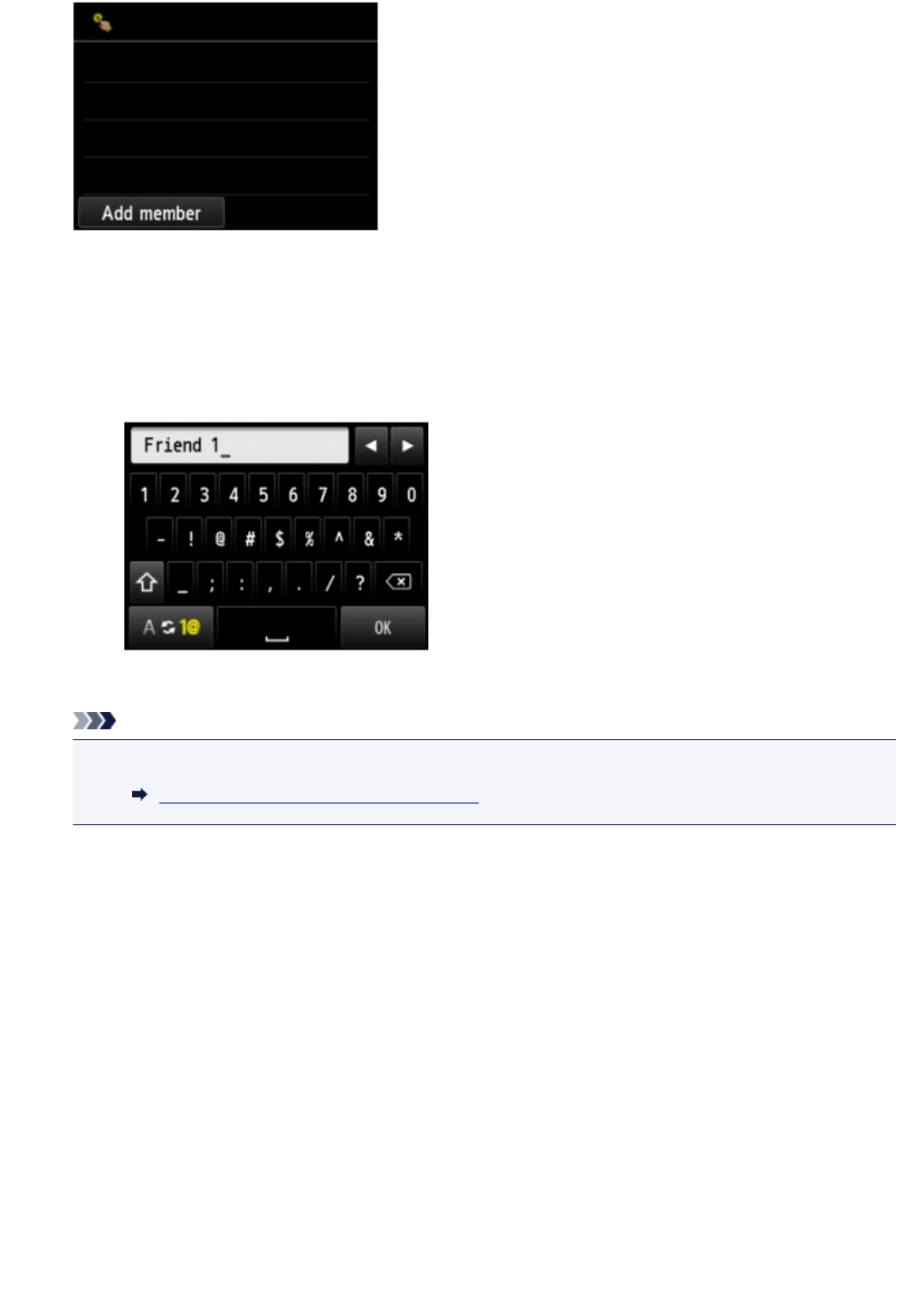
8. Enter group name.
1. Tap entry field of group name.
The screen to enter the character is displayed.
2. Enter group name.
3. Tap OK.
Note
• You can enter the name up to 16 characters, including spaces.
Entering Numbers, Letters, and Symbols
9. Register registered recipient as a member of group dial.
1. Tap Add member.
The printer's directory is displayed.
Display by name Display by ID number
968
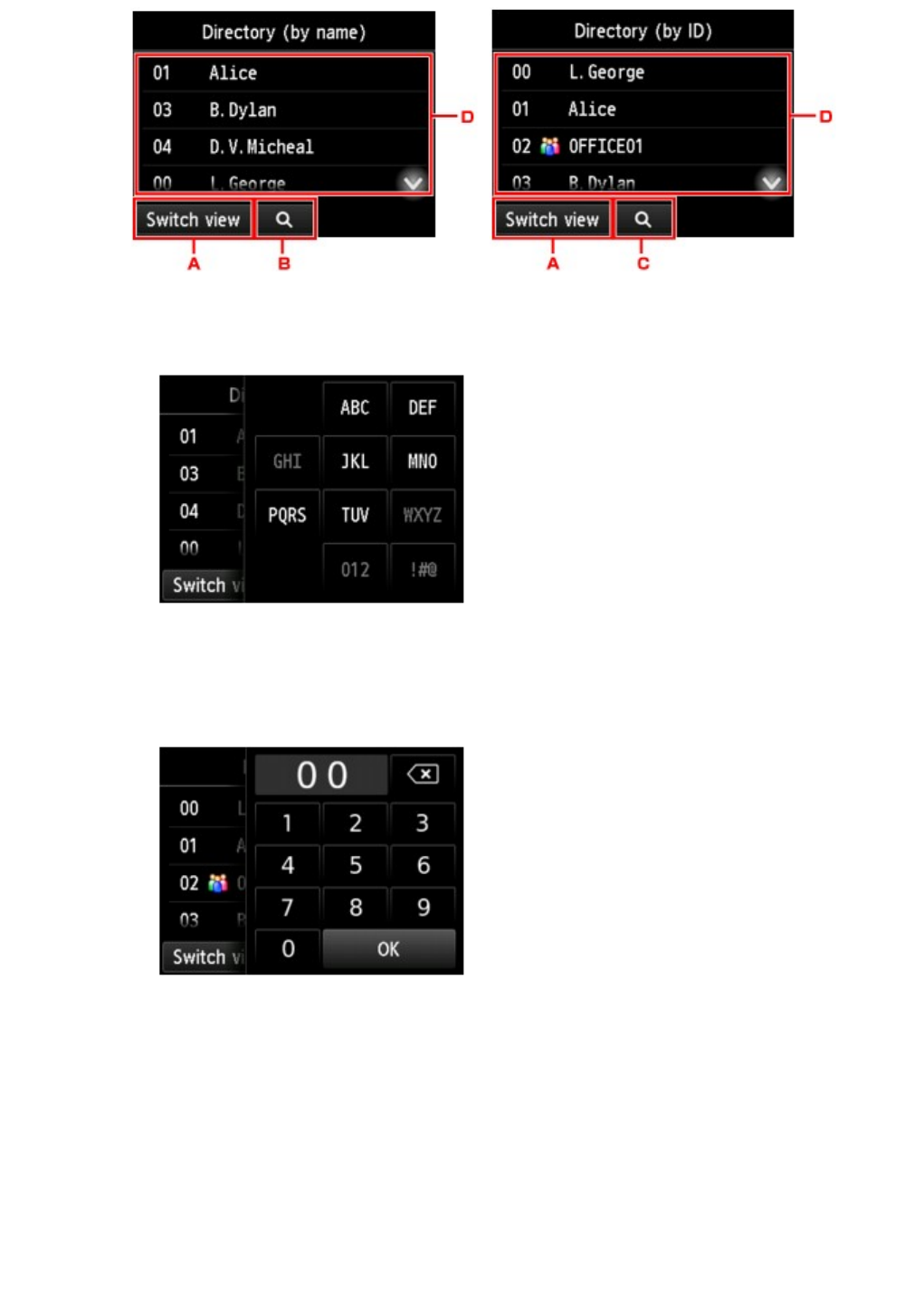
A. Tap to switch the display by name and by ID number.
B. Tap to display the screen to select an initial. You can search the registered recipient by initial.
By selecting the initial, the registered recipients are displayed in alphabetical order from the
selected character.
C. Tap to display the screen to select an ID number of the registered recipient. You can search
the registered recipient by ID number.
By enter the ID number and tapping OK, the registered recipients are displayed in order from
the recipient of the ID number selected.
D. The recipients that can be registered are displayed.
2. Tap a recipient to register as group member.
The member to register is displayed on the list.
969
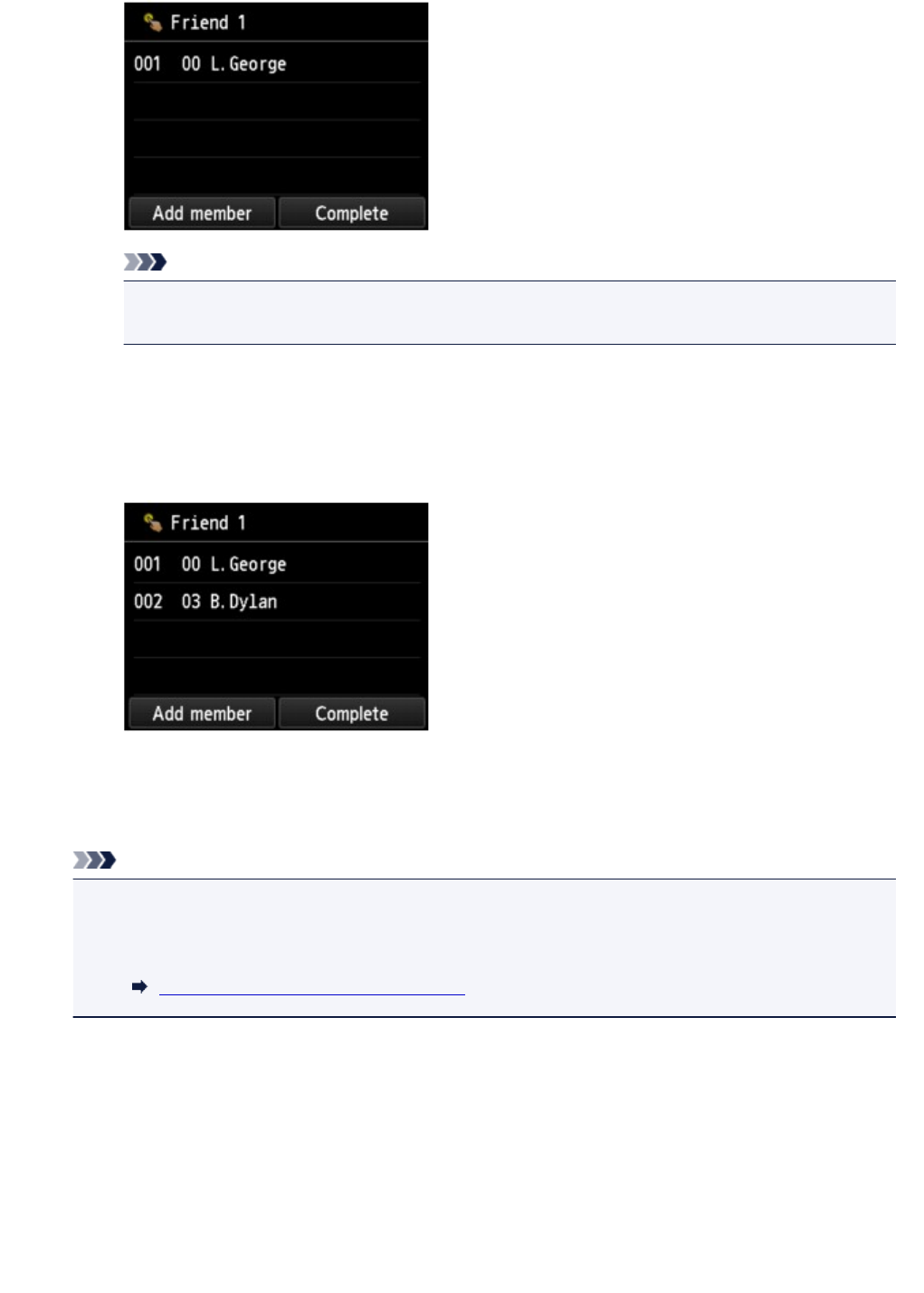
Note
•To delete the recipient from the group dial, tap a recipient that you want to delete from the list.
After the confirmation screen is displayed, tap Yes to delete the recipient from the group dial.
3. To add another member, tap Add member again.
The printer's directory is displayed.
4. Tap a recipient to register as group member.
The member to register is displayed on the list.
Repeat the procedure to register another member to the same group dial.
10. Tap Complete to finalize registration.
Note
•To register another group, select an unregistered ID number and operate in the same procedure.
•You can check the recipients you have registered to the group dial by printing GROUP DIAL
TELEPHONE NO. LIST.
Printing List of Registered Destinations
970
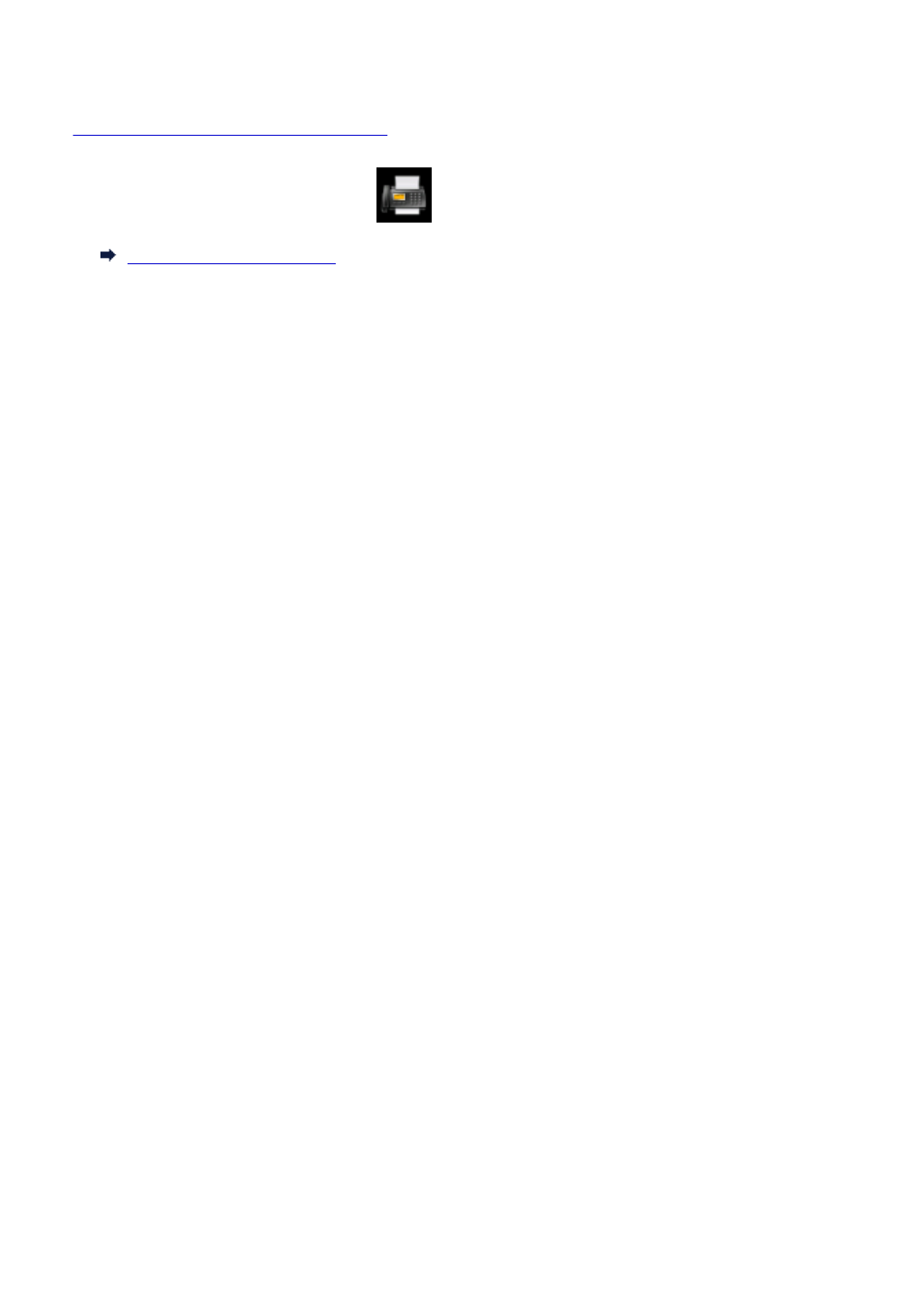
Changing Registered Information
To change information registered for recipient and group dial, follow the procedure below.
1. Make sure that printer is turned on.
2. Flick HOME screen, and then tap FAX.
Using the Operation Panel
The Fax standby screen is displayed.
3. Tap Function list.
The Function list screen is displayed.
4. Tap TEL number registration.
5. Tap Directory registration.
6. Tap a recipient or a group dial to change.
7. Change registered information.
•To change an individual recipient:
1. Tap Edit recipient.
The registered information screen of the selected recipient is displayed.
2. Tap entry field of name or entry field of fax/telephone numbers.
The each edit screen is displayed.
3. Change name or fax/telephone numbers.
4. Tap OK.
The touch screen returns to the registered information screen.
5. Tap Register.
•To change a group dial:
1. Tap Edit group dial.
The registered information screen of the group dial is displayed.
2. To change group name, tap entry field of name.
When edit screen of group name is displayed, change the group name, and then tap OK.
3. To add member, tap Add member.
When the printer's directory is displayed, tap the recipient you want to add.
4. To delete member, tap recipient on list.
When the confirmation screen is displayed, tap Yes to delete the recipient from the group dial.
971

5. Tap Complete to finalize changing.
972
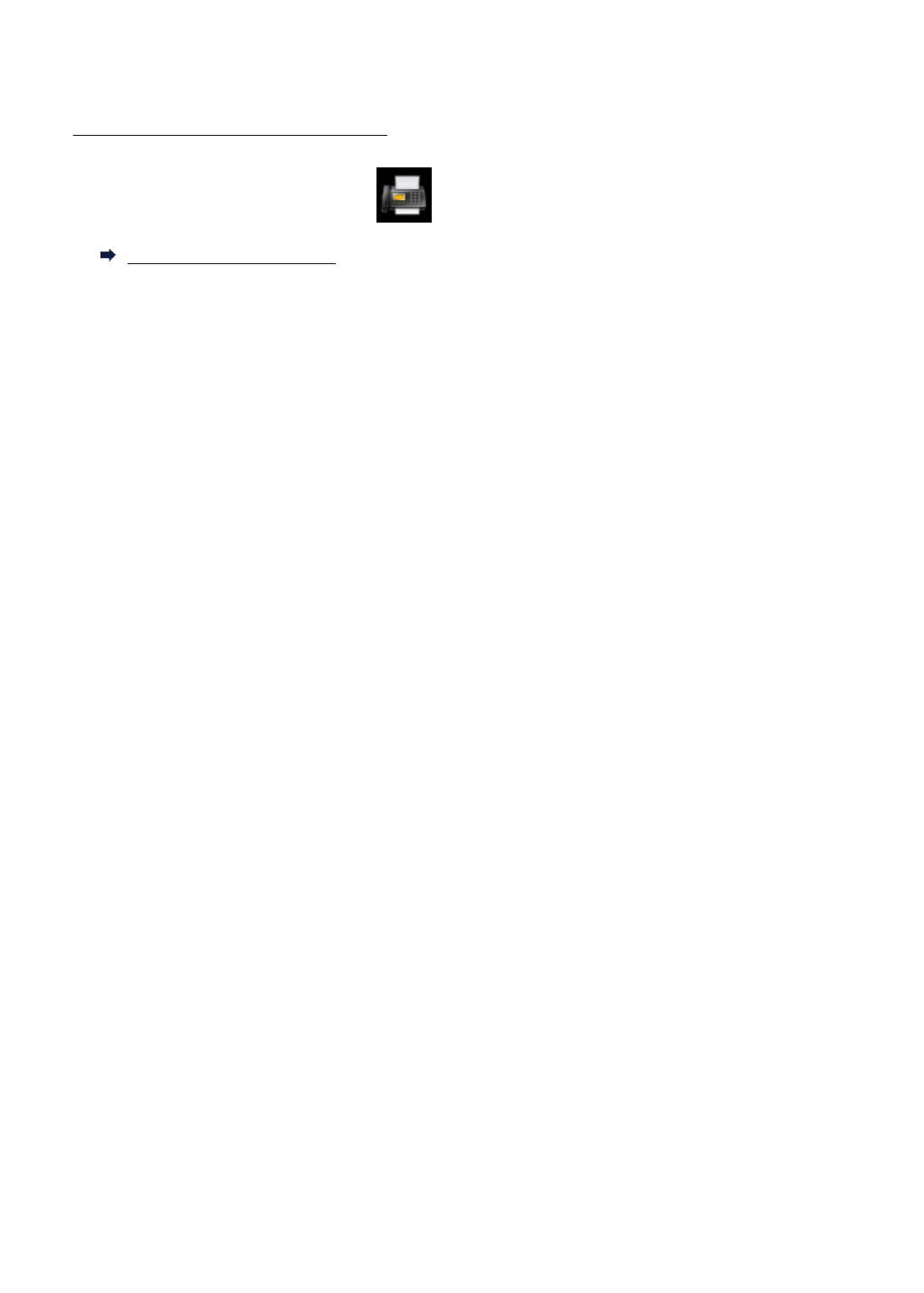
Deleting Registered Information
To delete information registered for recipient and group dial, follow the procedure below.
1. Make sure that printer is turned on.
2. Flick HOME screen, and then tap FAX.
Using the Operation Panel
The Fax standby screen is displayed.
3. Tap Function list.
The Function list screen is displayed.
4. Tap TEL number registration.
5. Tap Directory registration.
6. Tap a recipient or a group dial to delete.
7. Delete registered information.
•To delete an individual recipient:
1. Tap Delete recipient.
2. When confirmation screen is displayed, tap Yes to delete.
• To delete a group dial:
1. Tap Delete group dial.
2. When confirmation screen is displayed, tap Yes to delete.
973
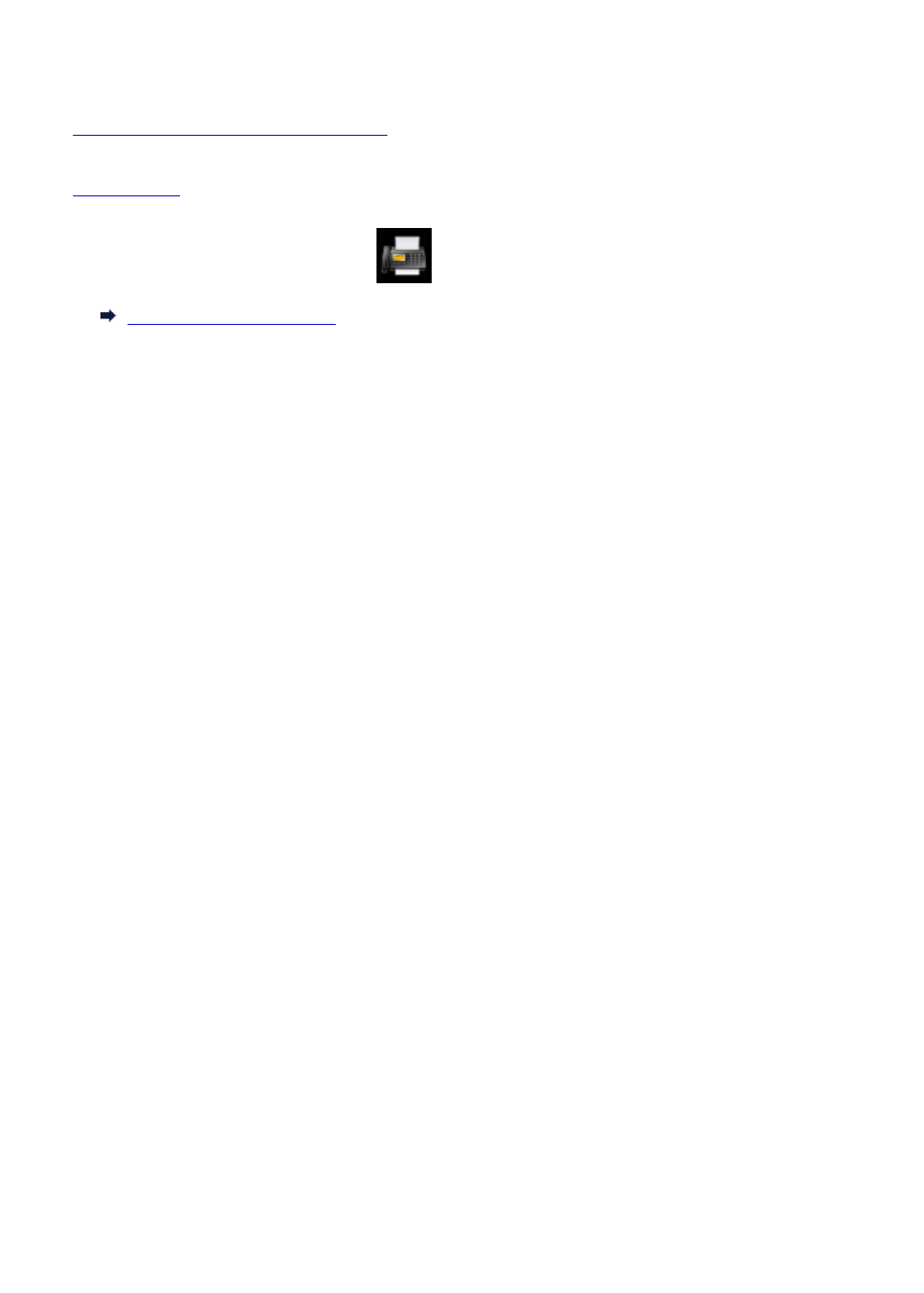
Printing List of Registered Destinations
You can print a list of the fax/telephone numbers and can keep it near the printer to refer to when dialing.
1. Make sure that printer is turned on.
2. Load paper.
3. Flick HOME screen, and then tap FAX.
Using the Operation Panel
The Fax standby screen is displayed.
4. Tap Function list.
The Function list screen is displayed.
5. Tap Print reports/lists.
6. Tap Directory list.
7. Tap an item to print.
•If you selected Recipient:
The confirmation screen to select whether to print the list in alphabetical order is displayed.
If you tap Yes: Prints RECIPIENT TELEPHONE NUMBER LIST in alphabetical order.
If you tap No: Prints RECIPIENT TELEPHONE NUMBER LIST in the order of the ID number.
• If you selected Group dial:
The printing confirmation screen is displayed. Tap Yes to print GROUP DIAL TELEPHONE NO.
LIST.
974
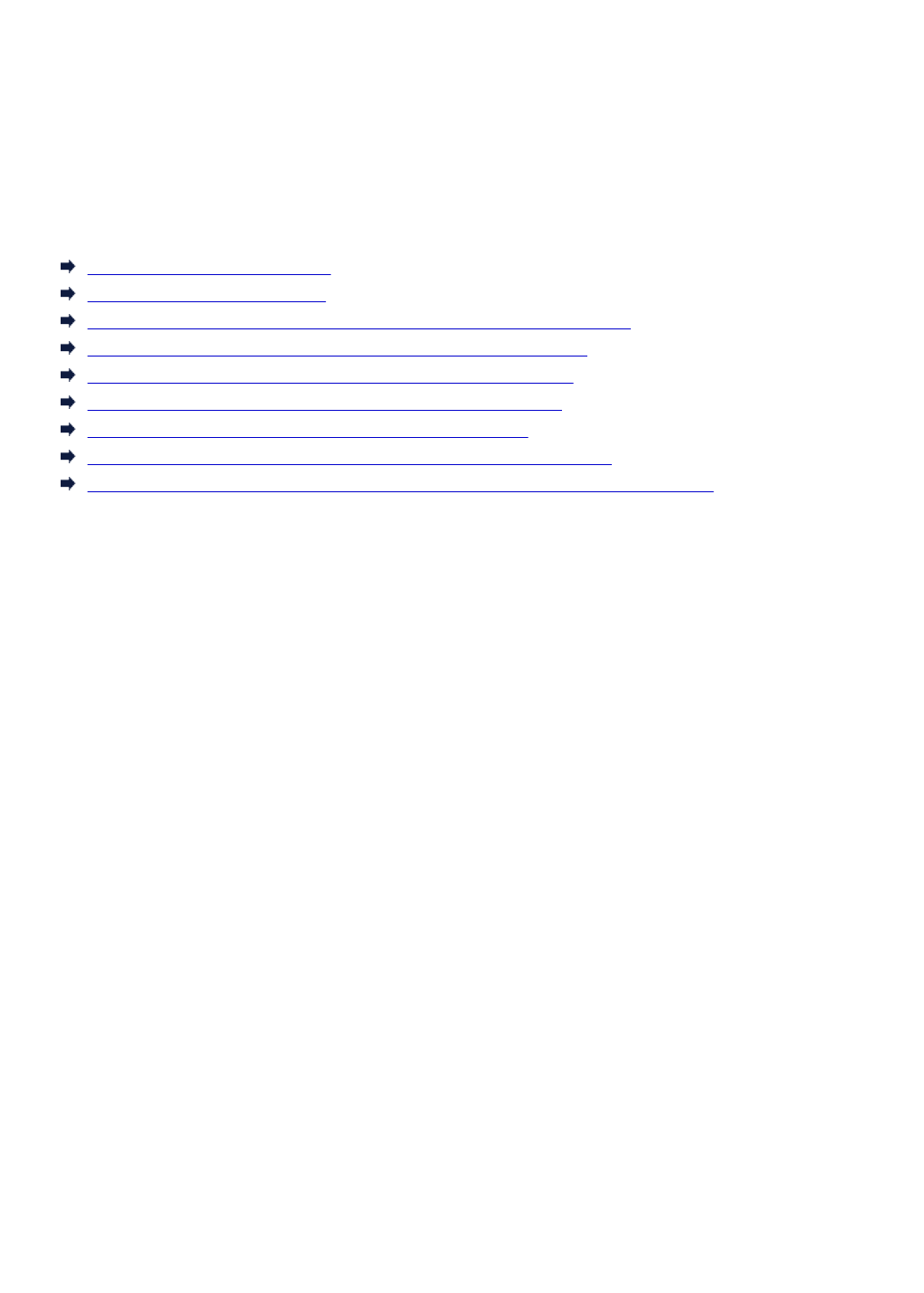
Registering Recipients Using Speed Dial Utility2 (Windows)
About Speed Dial Utility2
Speed Dial Utility2 is a utility for forwarding the telephone directory registered on the printer to a computer
and registering/changing it on the computer. In addition, you can register the telephone directory edited on
the computer to the printer. You can also save them on the computer as a backup.
For safety reasons, it is recommended that you backup the registered data on the computer using Speed
Dial Utility2.
Starting Up Speed Dial Utility2
Speed Dial Utility2 Dialog box
Saving Registered Telephone Directory on Printer to Your Computer
Registering a Fax/telephone Number Using Speed Dial Utility2
Changing a Fax/telephone Number Using Speed Dial Utility2
Deleting a Fax/telephone Number Using Speed Dial Utility2
Changing Sender Information Using Speed Dial Utility2
Registering/Changing Rejected Number Using Speed Dial Utility2
Registering Telephone Directory Has been Saved on Your Computer to Printer
975
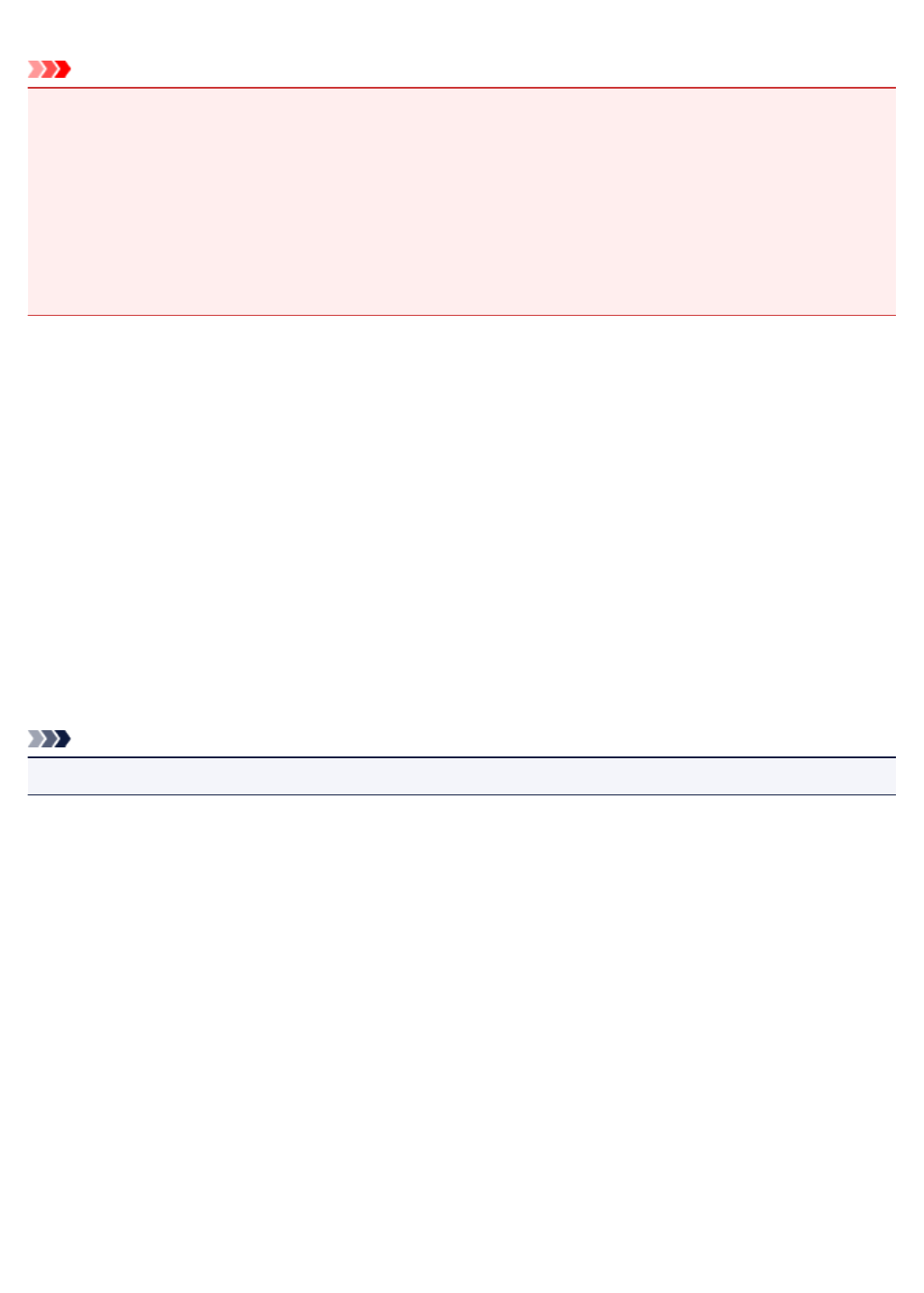
Starting Up Speed Dial Utility2
Important
• Before starting up Speed Dial Utility2, make sure that the printer is connected to the computer correctly.
• Do not plug in or unplug any cables while the printer is in operation, or when the computer is in sleep or
standby mode.
• If your printer is compatible with LAN connection, make sure that the printer is connected to the
computer with LAN connection to use Speed Dial Utility2 via LAN connection.
• The password entry screen may appear during startup or operation. If it appears, enter the
administrator password, and then click OK. If you do not know the administrator password, contact the
administrator of the printer.
Follow the procedure below to start up Speed Dial Utility2.
1. Make sure printer is turned on.
2. Start up Speed Dial Utility2.
• For Windows 10, click Start button and select All apps, Canon Utilities, and then Speed Dial
Utility2.
• For Windows 8.1 or Windows 8, select Speed Dial Utility2 on the Start screen to start Speed Dial
Utility2. If Speed Dial Utility2 is not displayed on the Start screen, select the Search charm, and
then search for "Speed Dial Utility2".
• For Windows 7 or Windows Vista, click Start and select All programs, Canon Utilities, Speed
Dial Utility2, and then Speed Dial Utility2.
Speed Dial Utility2 starts up.
Note
• You can also start up Speed Dial Utility2 from Quick Utility Toolbox.
976

Speed Dial Utility2 Dialog box
The following items are on the Speed Dial Utility2 dialog box.
1. Printer Name:
Selects the printer for editing the telephone directory using Speed Dial Utility2.
Behind printer name, printer's MAC address is displayed.
Note
• For checking printer's MAC address, refer to "Checking Network Information" for your model from
Home of the Online Manual.
• For printer that supports both wireless LAN connection and wired LAN connection, MAC address
of wired LAN connection is displayed regardless of the connection method.
2. Display Printer Settings
Loads the telephone directory registered on the printer that selected for Printer Name: into Speed Dial
Utility2.
3. Setting Item List:
Selects a setting item for editing. Choose one item from TEL Number Registration, User Information
Setting, and Rejected Number Setting.
4. Registered information list
Displays the registered information selected for Setting Item List:.
977
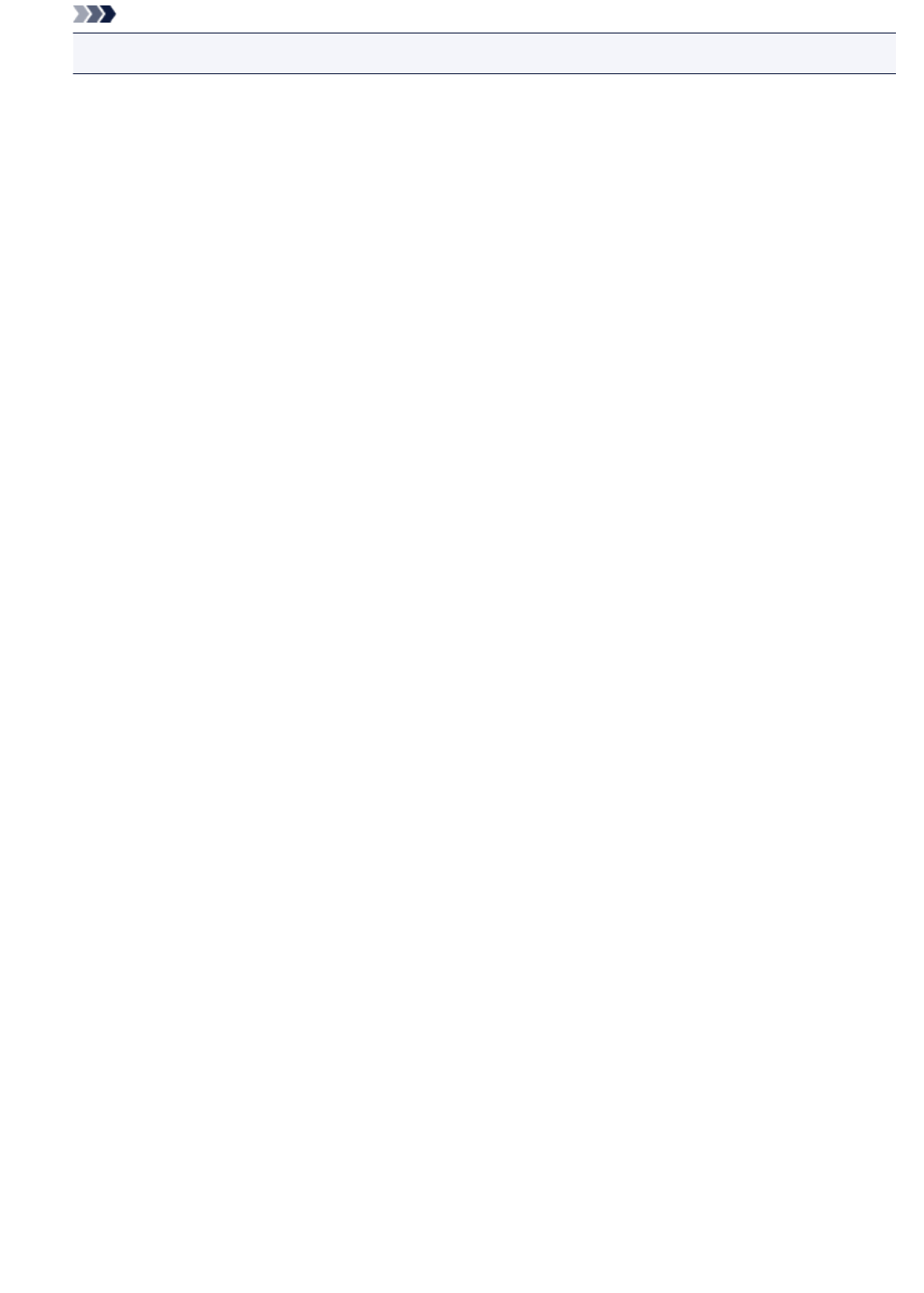
Note
• By clicking on the item name, you can sort the display order.
5. Edit.../Select All/Delete
Edits the item that selected for Setting Item List:, or deletes the item, or selects all the items.
When multiple items on the registered information list are selected, you cannot use the Edit... button.
6. Load from PC...
Displays the telephone directory saved on the computer.
7. Instructions
Displays this guide.
8. Exit
Quits Speed Dial Utility2. Information registered or edited using Speed Dial Utility2 is neither saved on
the computer nor registered on the printer.
9. Save to PC...
Saves the telephone directory edited using Speed Dial Utility2 on the computer.
10. Register to Printer
Registers the telephone directory edited using Speed Dial Utility2 to the printer.
978
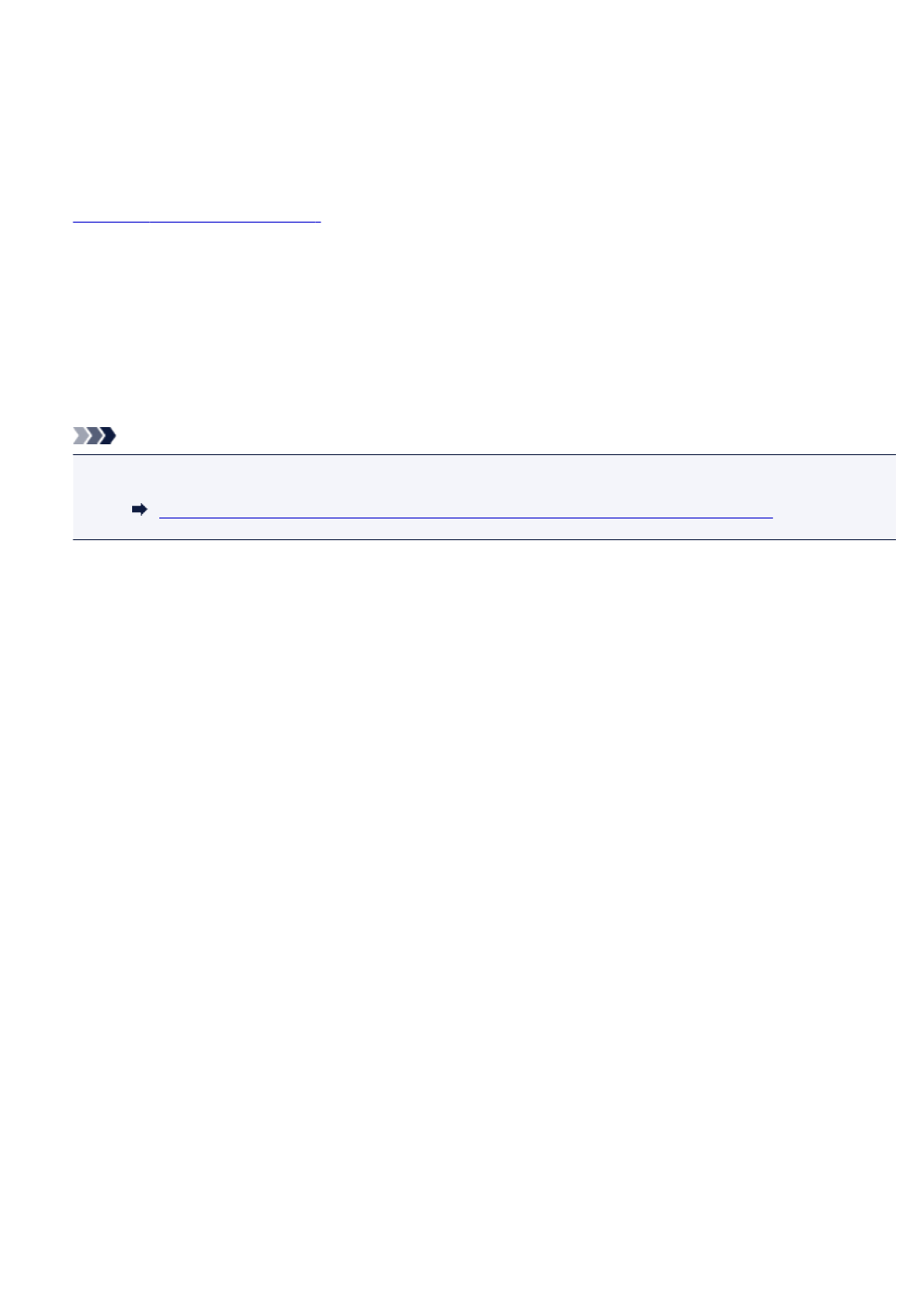
Saving Registered Telephone Directory on Printer to Your
Computer
Follow the procedure below to save the telephone directory (includes recipients' name, recipients' fax/
telephone number, group dial, user's name, user's fax/telephone number, and rejected numbers) that
registered on the printer to the computer.
1. Start up Speed Dial Utility2.
2. Select a printer from Printer Name: list box, and then click Display Printer Settings.
3. Click Save to PC....
4. Enter file name on displayed screen, and then click Save.
Note
•The data of the telephone directory (RSD file, *.rsd) can be imported to other printer.
Registering Telephone Directory Has been Saved on Your Computer to Printer
979
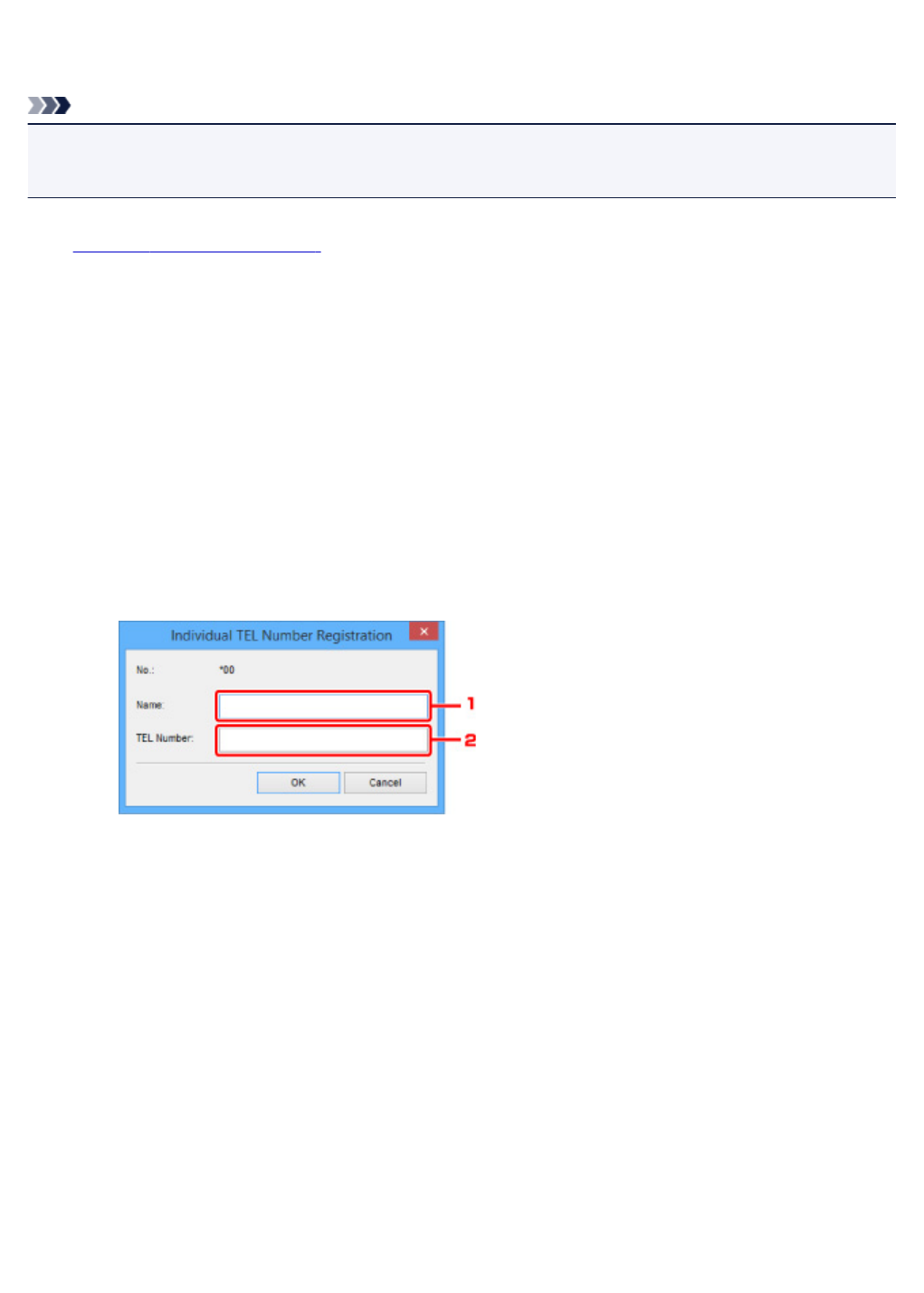
Registering a Fax/telephone Number Using Speed Dial Utility2
Follow the procedure below to register fax/telephone numbers.
Note
Before you register fax/telephone numbers using Speed Dial Utility2, make sure that no fax operations
are in progress.
1. Start up Speed Dial Utility2.
2. Select a printer from Printer Name: list box, and then click Display Printer Settings.
3. Click TEL Number Registration from Setting Item List:.
The list of registered fax/telephone numbers is displayed.
4. Select an unoccupied code from list, and then click Edit....
The Individual or Group Selection dialog box is displayed.
5. Click Register individual TEL number or Register group dial, and then click Next....
• If Register individual TEL number is selected:
1. Enter name.
2. Enter fax/telephone number.
• If Register group dial is selected:
980
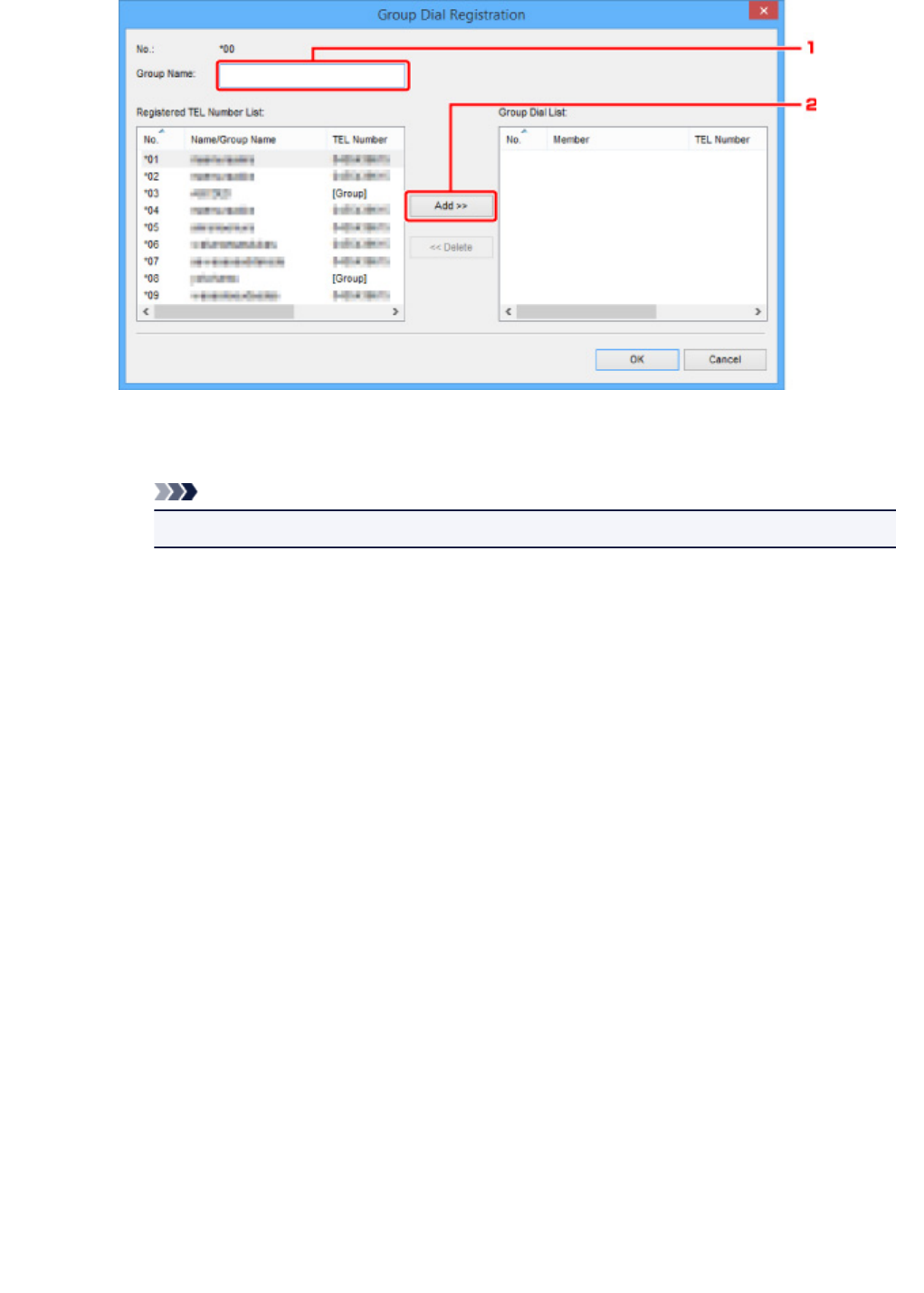
1. Enter group name.
2. Select a code you want to add to group dial, and then click Add >>.
Note
• You can only add the numbers that have already been registered.
6. Click OK.
To continue registering fax/telephone numbers or a group dial, repeat steps 4 to 6.
• To save the registered information on the computer.
1. Click Save to PC....
2. Enter file name on displayed screen, and then click Save.
• To register the registered information to the printer:
1. Click Register to Printer.
2. When message appears, check it and click OK.
The information is registered to the printer.
981
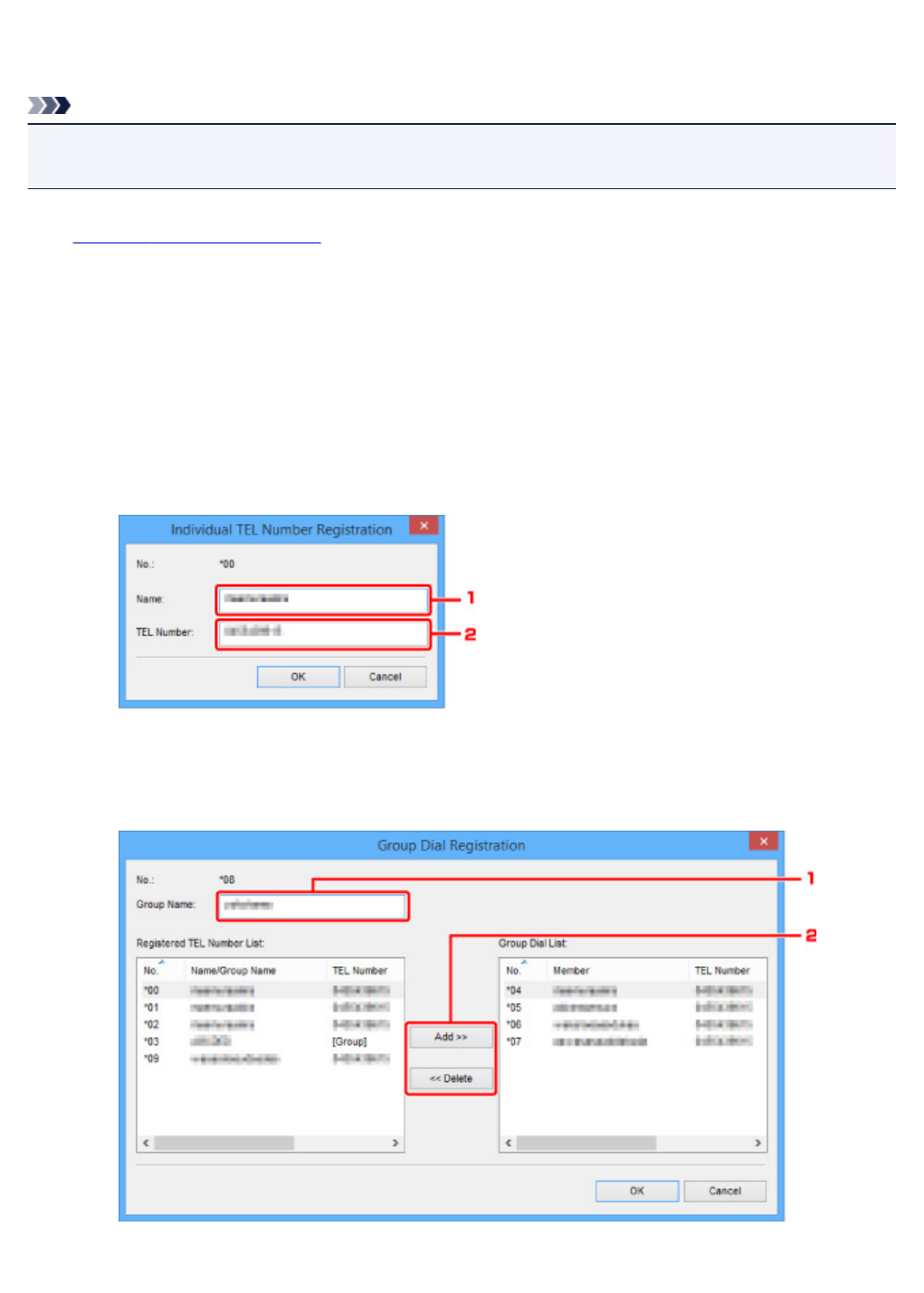
Changing a Fax/telephone Number Using Speed Dial Utility2
Follow the procedure below to change fax/telephone numbers.
Note
• Before you change fax/telephone numbers using Speed Dial Utility2, make sure that no fax operations
are in progress.
1. Start up Speed Dial Utility2.
2. Select a printer from Printer Name: list box, and then click Display Printer Settings.
3. Click TEL Number Registration from Setting Item List:.
The list of registered fax/telephone numbers is displayed.
4. Select a code to change from list, and then click Edit....
• If an individual fax/telephone number is selected:
1. Enter a new name.
2. Enter a new fax/telephone number.
• If a group dial is selected:
1. Enter a new group name.
982

2. Add or delete a member to/from group dial.
To add a member:
Select a code to add to group dial, and then click Add >>.
To delete a member:
Select a code to delete from group dial, and then click << Delete.
5. Click OK.
To continue changing fax/telephone numbers or group dials, repeat steps 4 and 5.
•To save the edited information on the computer.
1. Click Save to PC....
2. Enter file name on displayed screen, and then click Save.
•To register the edited information to the printer:
1. Click Register to Printer.
2. When message appears, check it and click OK.
The information is registered to the printer.
983
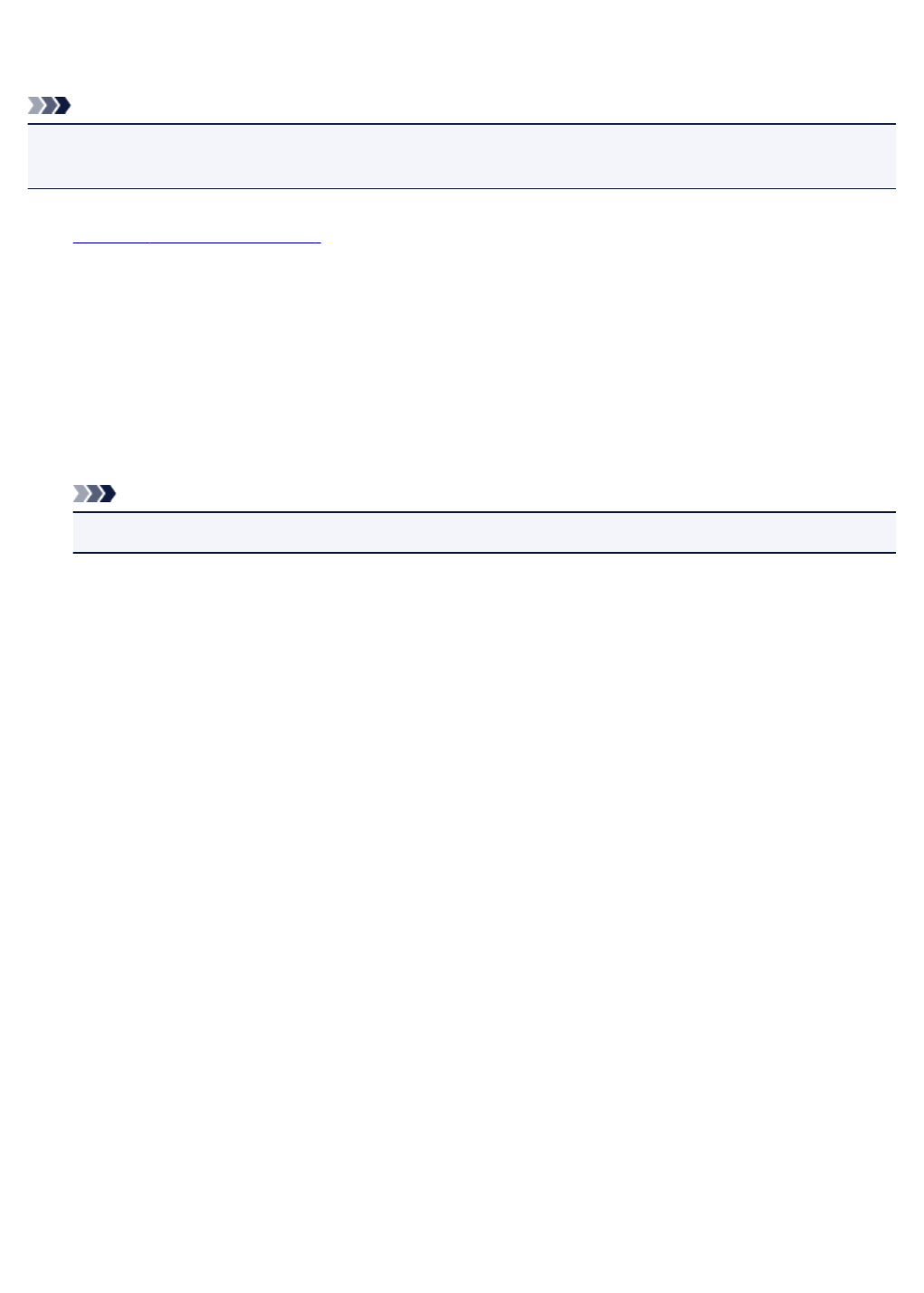
Deleting a Fax/telephone Number Using Speed Dial Utility2
Follow the procedure below to delete fax/telephone numbers.
Note
• Before you delete fax/telephone numbers using Speed Dial Utility2, make sure that no fax operations
are in progress.
1. Start up Speed Dial Utility2.
2. Select a printer from Printer Name: list box, and then click Display Printer Settings.
3. Click TEL Number Registration from Setting Item List:.
The list of registered fax/telephone numbers is displayed.
4. Select a code to delete from list, and then click Delete.
Note
• To delete all fax/telephone numbers on the list, click Select All, and then Delete.
5. When confirmation screen appears, click OK.
The selected fax/telephone number is deleted.
To continue deleting fax/telephone numbers, repeat steps 4 and 5.
• To save the edited information on the computer.
1. Click Save to PC....
2. Enter file name on the displayed screen, and then click Save.
• To register the edited information to the printer:
1. Click Register to Printer.
2. When message appears, check it and click OK.
The information is registered to the printer.
984

Changing Sender Information Using Speed Dial Utility2
Follow the procedure below to change the user's name or fax/telephone number.
1. Start up Speed Dial Utility2.
2. Select a printer from Printer Name: list box, and then click Display Printer Settings.
3. Click User Information Setting from Setting Item List:.
The user's information is displayed.
4. Select an item to change, and then click Edit....
The User Information dialog box is displayed.
5. Enter new user's name on User Name and new fax/telephone number in TEL Number,
and then click OK.
• To save the edited information on the computer:
1. Click Save to PC....
2. Enter file name on displayed screen, and then click Save.
• To register the edited information to the printer:
1. Click Register to Printer.
2. When message appears, check it and click OK.
The information is registered to the printer.
985
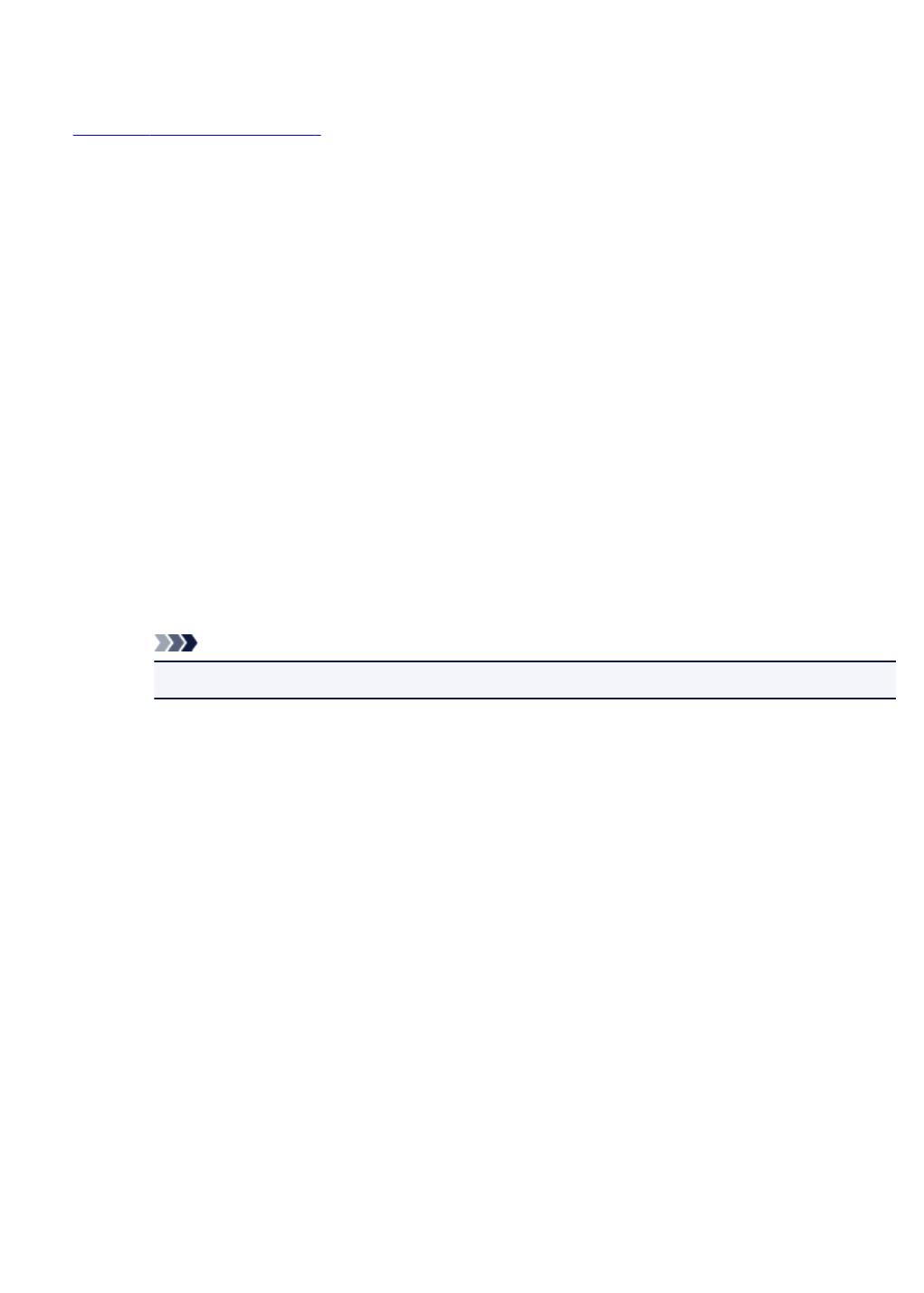
Registering/Changing Rejected Number Using Speed Dial Utility2
Follow the procedure below to register, change, or delete rejected numbers.
1. Start up Speed Dial Utility2.
2. Select a printer from Printer Name: list box, and then click Display Printer Settings.
3. Click Rejected Number Setting from Setting Item List:.
The list of rejected numbers is displayed.
•To register a rejected number:
1. Select an unoccupied code from list, and then click Edit....
2. Enter fax/telephone number in Rejected Number dialog box, and then click OK.
•To change a rejected number:
1. Select a code to change from list, and then click Edit....
2. Enter fax/telephone number in Rejected Number dialog box, and then click OK.
•To delete a rejected number:
1. Select a code to delete from list, and then click Delete.
The selected fax/telephone number is deleted.
Note
• To delete all fax/telephone numbers on the list, click Select All, and then Delete.
986
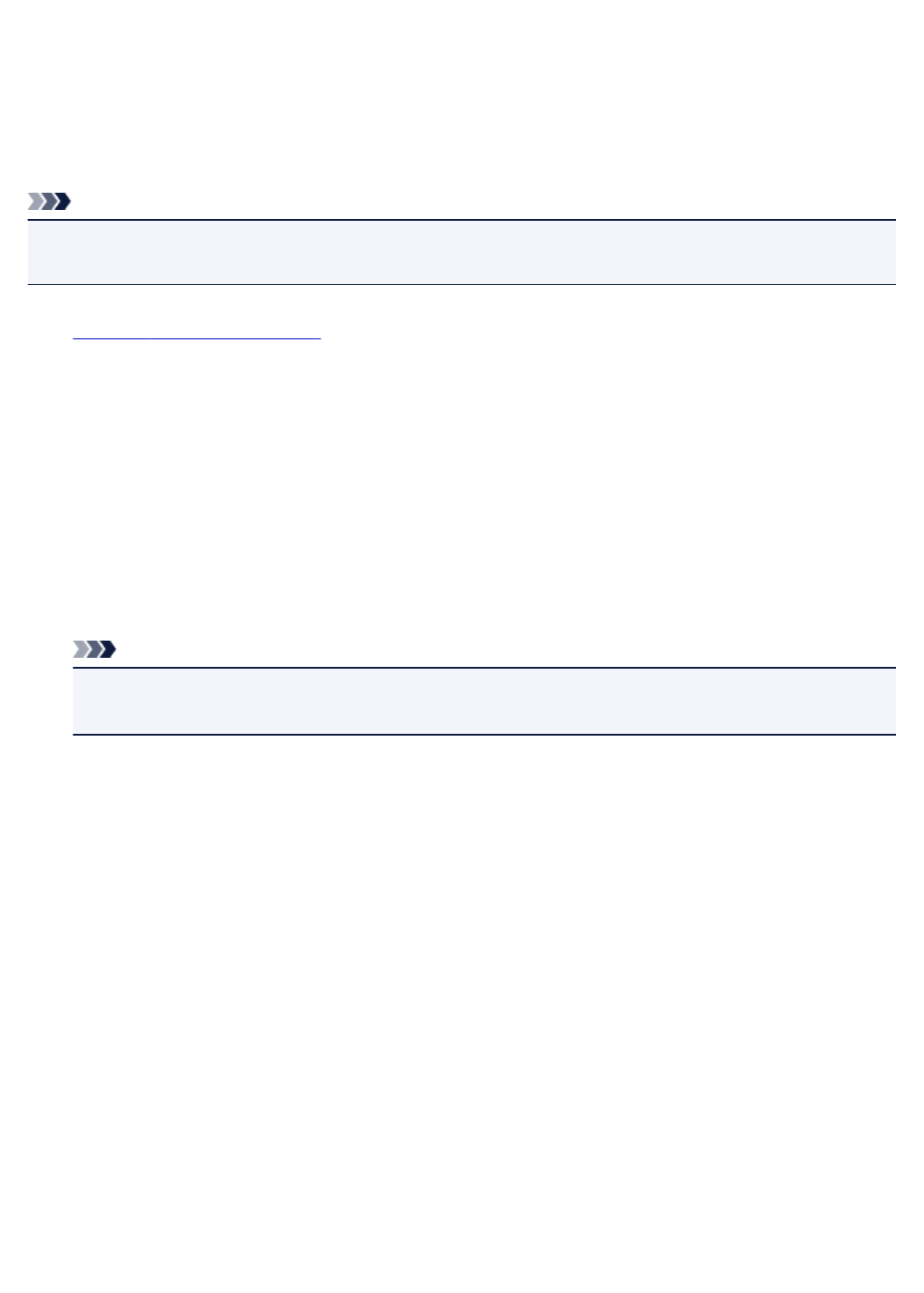
Registering Telephone Directory Has been Saved on Your
Computer to Printer
You can load the data of the telephone directory (RSD file, *.rsd) and register it to your printer.
The data of the telephone directory (RSD file, *.rsd) that is exported from other printer can be loaded and
registered to your printer.
Note
• In Speed Dial Utility2, the data of the telephone directory (RSD file, *.rsd) that is exported using Speed
Dial Utility can be loaded.
1. Start up Speed Dial Utility2.
2. Select a printer from Printer Name: list box, and then click Display Printer Settings.
3. Click Load from PC....
4. Select a data of telephone directory (RSD file, *.rsd) to register to your printer.
5. Click Open on dialog box.
The selected telephone directory is displayed.
Note
• If you select the data of the telephone directory (RSD file, *.rsd) that is exported from other printer,
the confirmation message appears. Click OK.
6. Click Register to Printer.
The telephone directory that has been saved on the computer is registered to your printer.
987
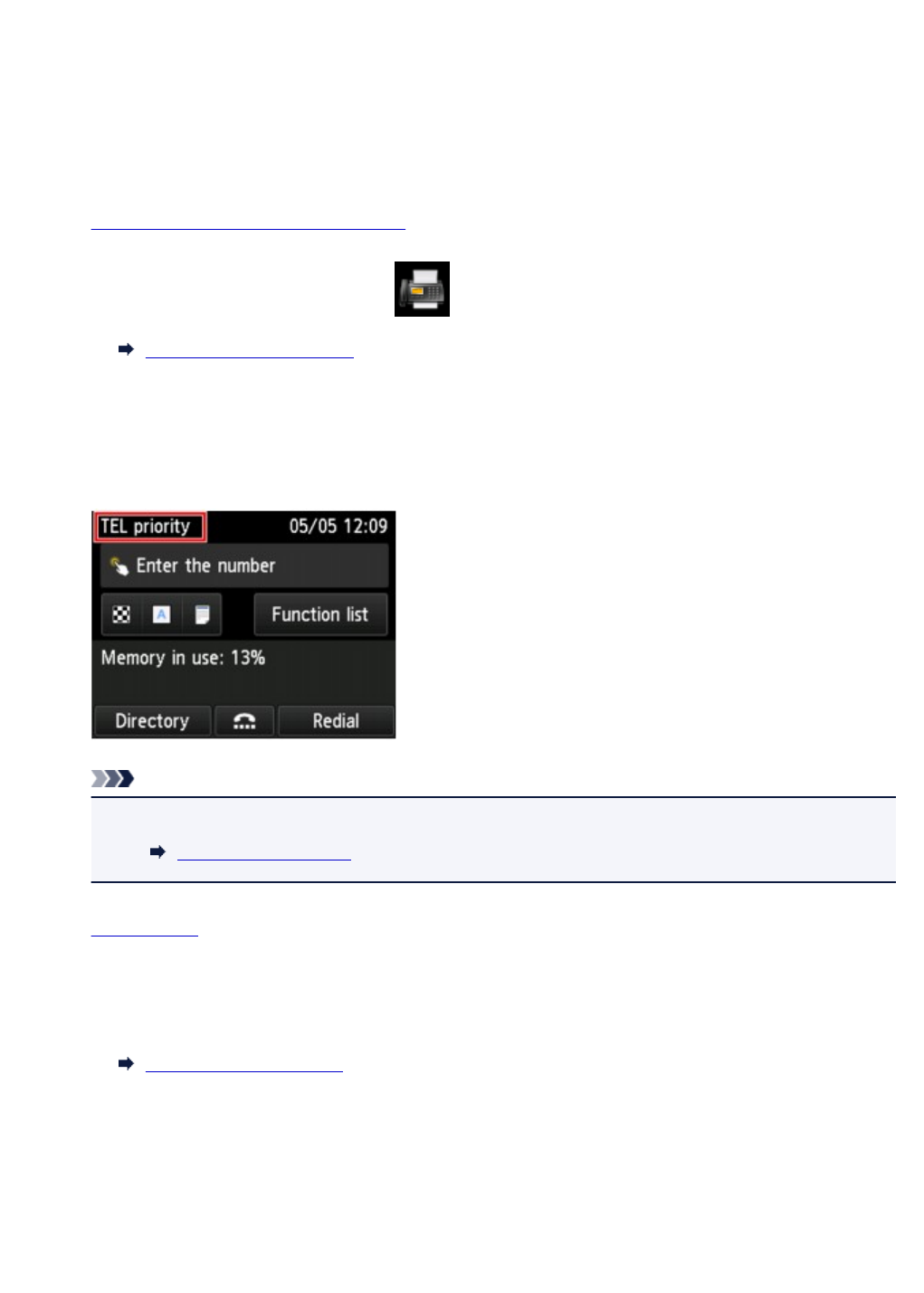
Receiving Faxes
This section describes the preparation necessary for receiving a fax and how to receive a fax.
Preparing for Receiving Fax
Prepare for receiving a fax according to the following procedure.
1. Make sure that printer is turned on.
2. Flick HOME screen, and then tap FAX.
Using the Operation Panel
The Fax standby screen is displayed.
3. Check receive mode setting.
Check the receive mode setting displayed on the Fax standby screen.
Note
•For details on how to change the receive mode:
Setting Receive Mode
4. Load paper.
Load the sheets of plain paper.
5. Specify paper settings as necessary.
Changing Paper Settings
This completes the preparation for receiving fax.
When a fax is received, it is printed on the loaded paper automatically.
Receiving Fax
Depending on the selected receive mode, the receive operation varies.
989
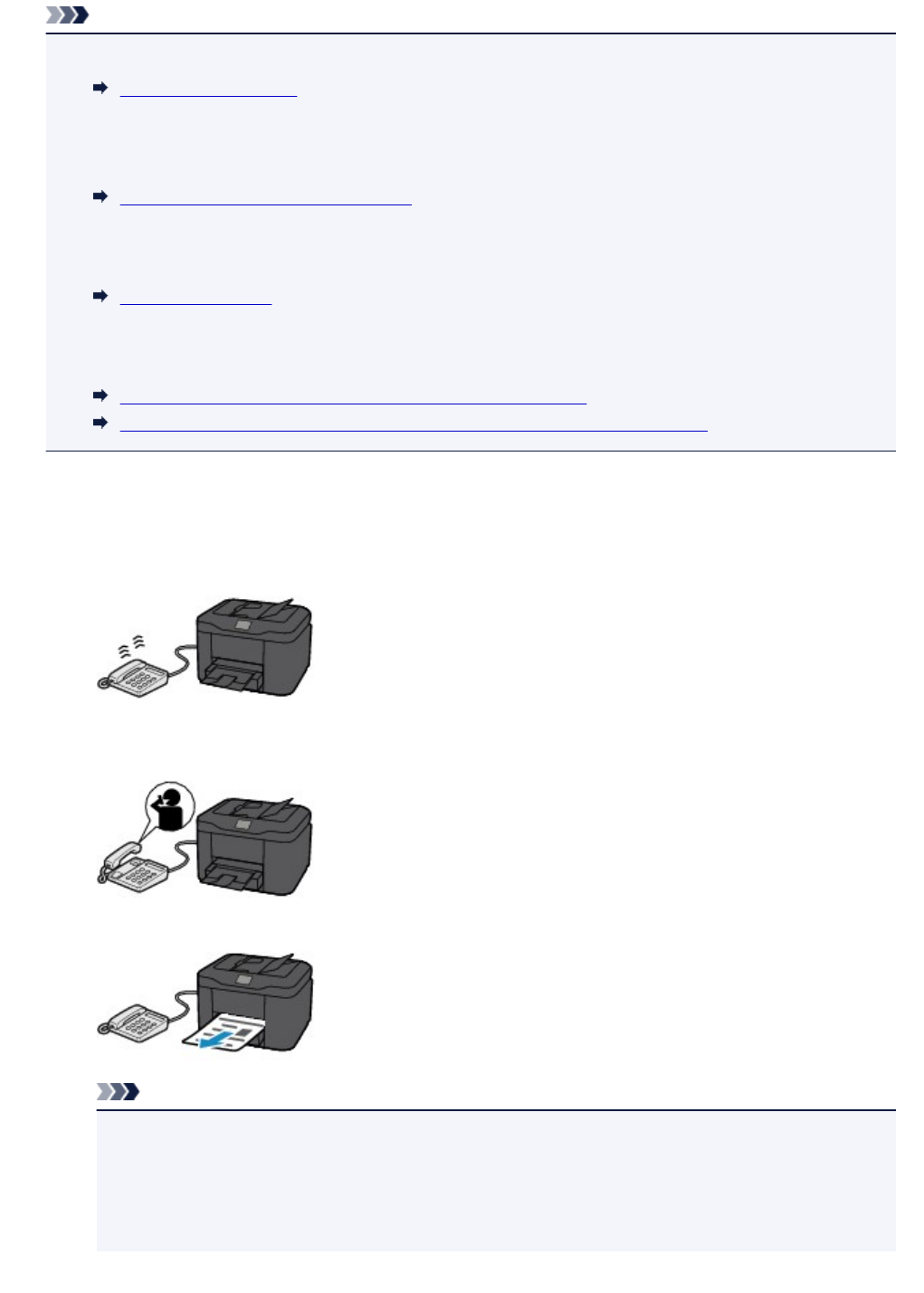
Note
• For details on the receive mode:
Setting Receive Mode
• You can specify the advanced settings of each receive mode.
For details on the advanced settings of the receive mode:
Advanced Settings of Receive Mode
• If the printer was not able to print a received fax, the printer stores the unprinted fax temporarily in its
memory (memory receiving).
Memory Reception
• When receiving a fax, you can save received faxes on a USB flash drive as PDF files automatically or
forward received faxes to the shared folder on the computer as PDF files automatically.
Saving Received Faxes Automatically on USB Flash Drive
Forwarding Received Faxes Automatically to Shared Folder on Computer
When TEL priority mode is selected:
•When the call is a fax:
The telephone will ring when a call incomes.
Pick up the handset. If you hear the fax tone, wait for at least 5 seconds after it stops, and then
hang up the handset.
The printer will receive the fax.
Note
• If the printer will not switch to fax reception, select FAX again on the HOME screen, and then
the Color or Black button to receive the fax.
• To receive a fax without picking up the handset, select Manual/auto switch: ON in Advanced.
RX start time allows you to specify the number of seconds until the printer switches to fax
reception.
990
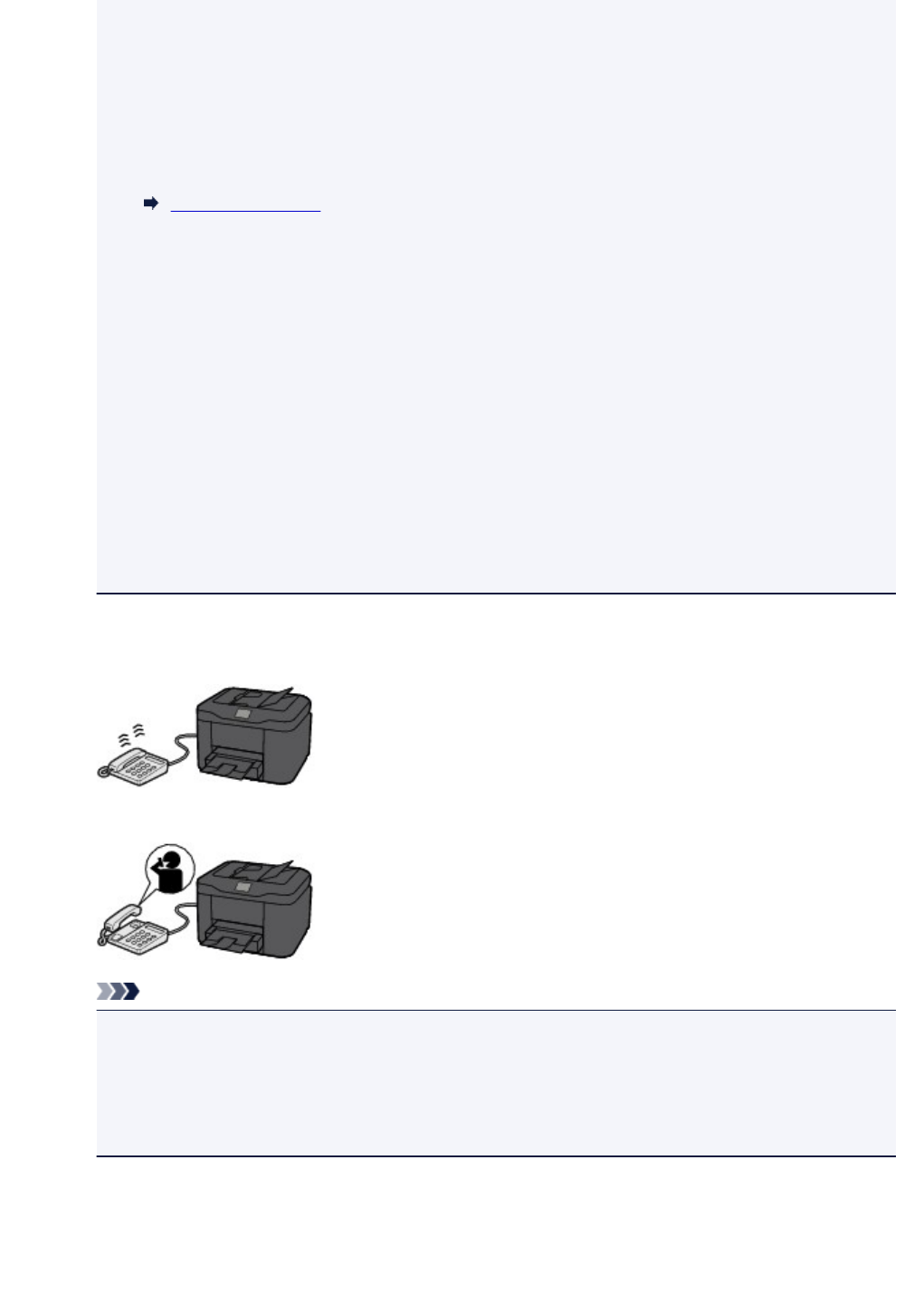
• If you have subscribed to Duplex Ringing service in Hong Kong, the telephone will ring a
specified number of times when there is an incoming call with a fax distinctive ring pattern.
Then, the printer will switch to fax reception automatically without the handset being picked up.
The number of times to ring the telephone until switching to fax reception can be changed.
• Set the printer to enable you to initiate fax reception from a connected telephone (remote
reception).
Remote Reception
•When the answering machine is connected to the printer:
• If the answering machine is set to the answering mode, select User-friendly RX: ON in
Advanced. If the call is a fax, the printer will receive the fax automatically.
• If the answering mode is turned off on the answering machine, pick up the handset. If you
hear the fax tone, wait for at least 5 seconds after it stops, and then hang up the handset.
• If Manual/auto switch: ON is selected in Advanced, set RX start time to longer than the
time before the answering machine starts playing the answering message. After making
this setting, we recommend that you call the answering machine using a mobile phone, etc.
to confirm that messages are recorded successfully in the answering machine.
• Set your answering machine to answering mode and adjust it as follows:
- The entire message should be no longer than 15 seconds.
- In the message, tell your callers how to send a fax.
•When the call is a voice call:
The telephone will ring when a call incomes.
Pick up the handset, and talk on the telephone.
Note
• If the printer unexpectedly switches to fax reception during telephone calls, select User-
friendly RX: OFF in Advanced.
• If Manual/auto switch: ON is selected in Advanced, you must answer an incoming call by
picking up the handset within the time specified in RX start time. Otherwise the printer will
switch to fax reception.
991
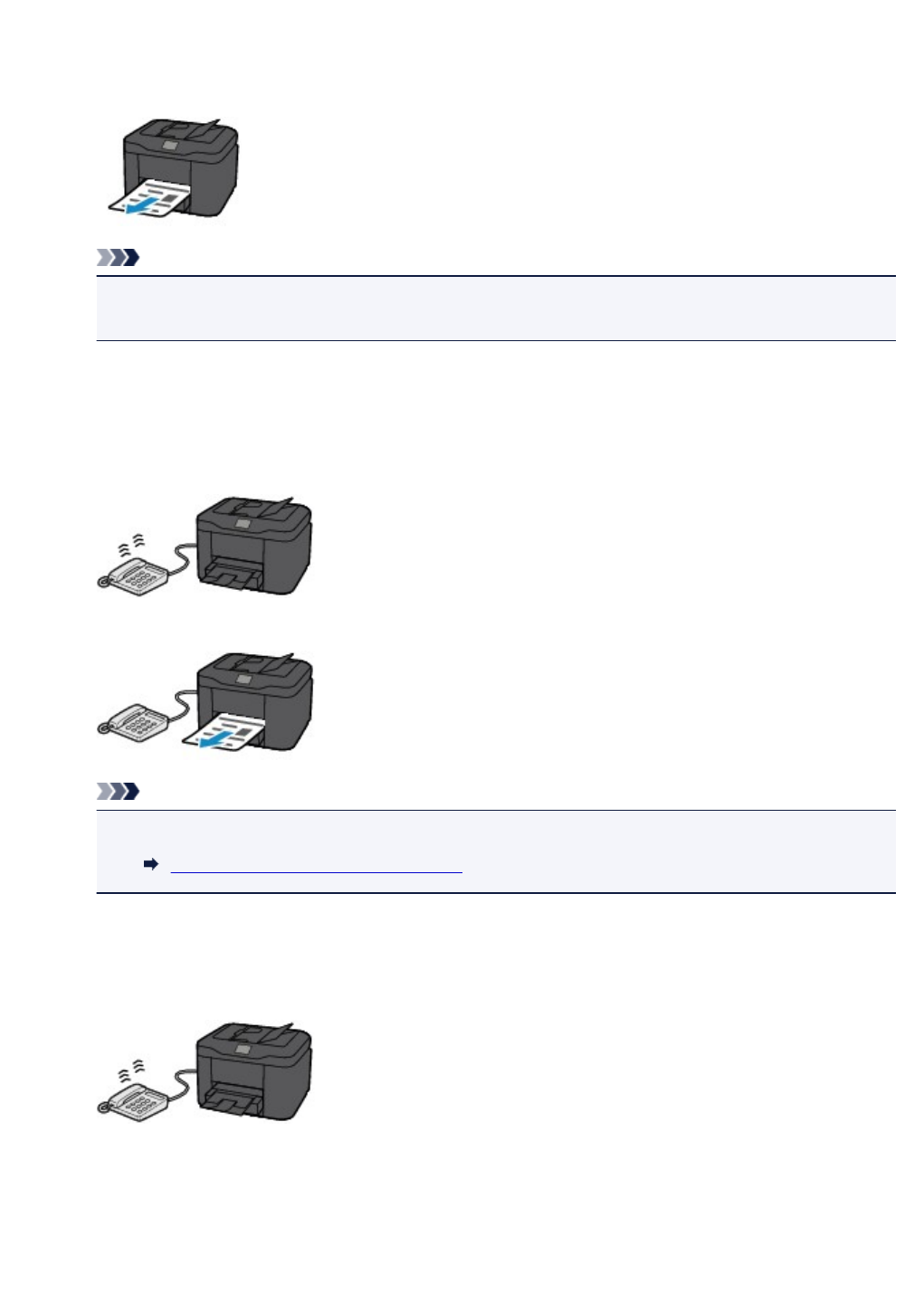
When FAX only mode is selected:
•When the call is a fax:
The printer will receive the fax automatically.
Note
• If a telephone is connected to the printer, the telephone will ring when a call incomes.
• You can change the number of times to ring the telephone with Ring count in Advanced.
When DRPD or Network switch is selected:
•When the call is a fax:
The telephone will ring when a call incomes.
The printer will receive the fax automatically when the fax ring pattern is detected.
Note
• You can change the number of times to ring the telephone.
Advanced Settings of Receive Mode
•When the call is a voice call:
The telephone will ring when a call incomes.
When the printer does not detect the fax ring pattern, the telephone will continue ringing.
Pick up the handset, and talk on the telephone.
992
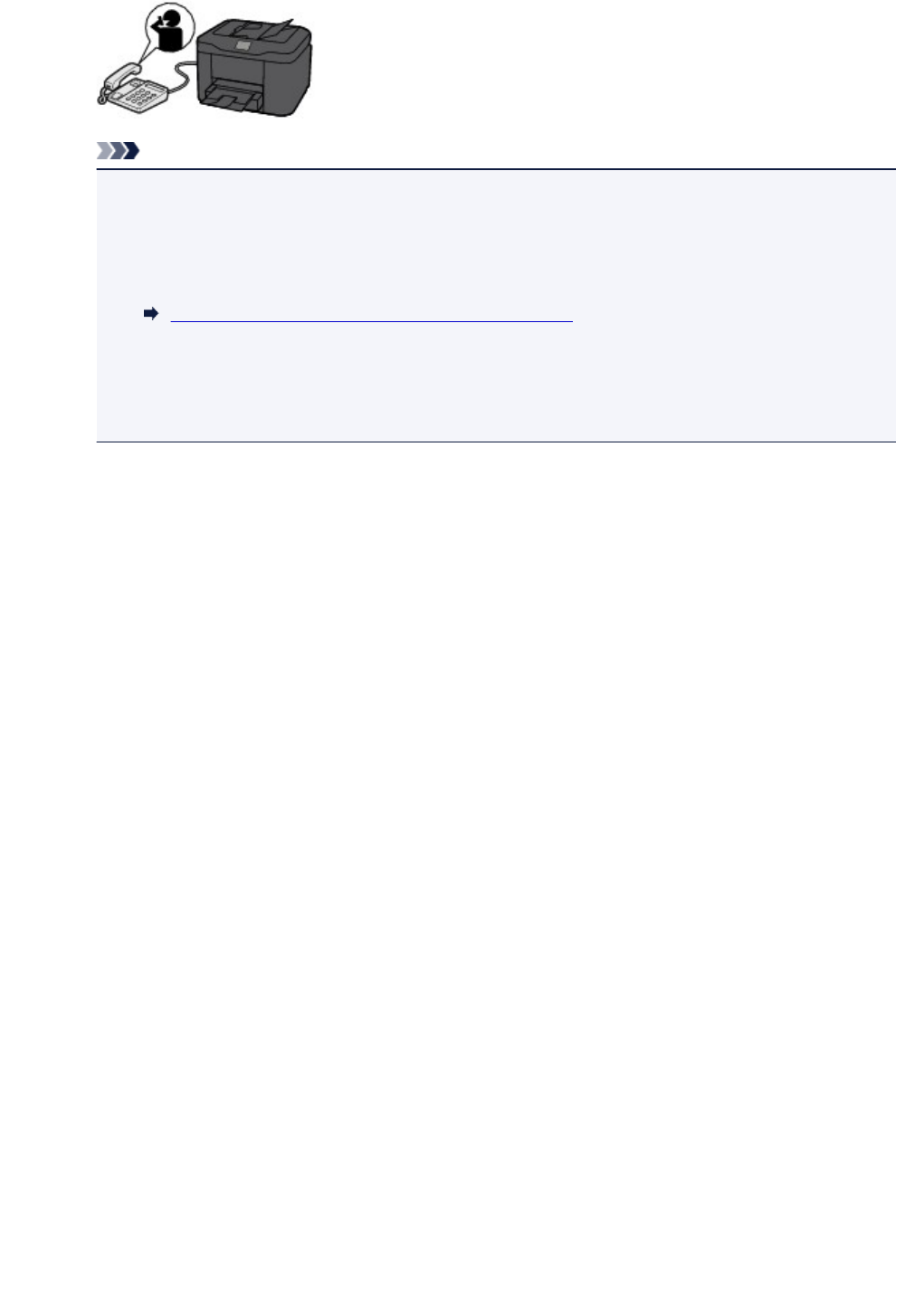
Note
• To use this feature, you need to subscribe to a compatible service provided by your telephone
company.
•For DRPD
You need to select the appropriate ring pattern on the printer.
Setting DRPD Ring Pattern (US and Canada only)
•For Network switch
The name of this service varies depending on the country or region of purchase. This setting
may not be also available depending on the country or region of purchase.
993
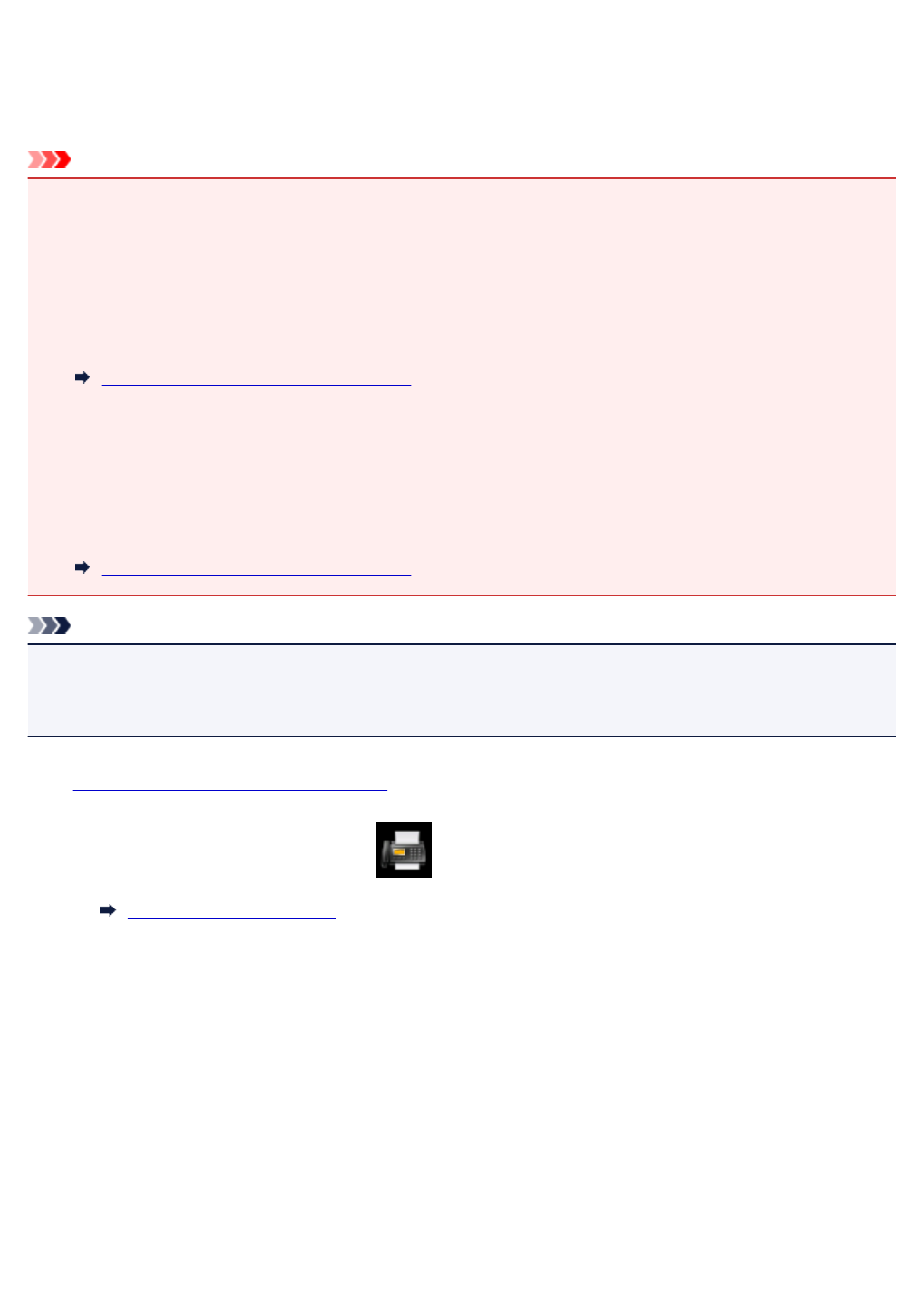
Changing Paper Settings
This printer prints received faxes to paper loaded in the printer beforehand. You can use the operation panel
to change the paper settings for printing faxes. Make sure that the settings are appropriate for the loaded
paper.
Important
• If the size of loaded paper is different from that specified in the paper size setting, the received faxes
are stored in the printer's memory and Check the page size and tap [OK]. is displayed on the touch
screen. In this case, load the same size of paper as that specified in the paper size setting, and then
tap OK.
You can also press the Stop button to close the message and print the stored documents in the
printer's memory later.
Printing Document in Printer's Memory
• If no paper is loaded, or paper has run out while printing is in progress, the received faxes are stored in
the printer's memory and the error message for no paper is displayed on the touch screen. In this case,
load paper and tap OK.
You can also press the Stop button to close the message and print the stored documents in the
printer's memory later.
Printing Document in Printer's Memory
Note
• If the sender sends a document that is larger than Letter-size or Legal-size, such as 11 x 17 inches, the
sender's device may send the fax automatically reduced in size or divided, or send only a part of the
original.
1. Make sure that printer is turned on.
2. Flick HOME screen, and then tap FAX.
Using the Operation Panel
The Fax standby screen is displayed.
3. Tap Function list.
The Function list screen is displayed.
4. Tap FAX paper settings.
The FAX paper settings screen is displayed.
5. Specify settings.
994
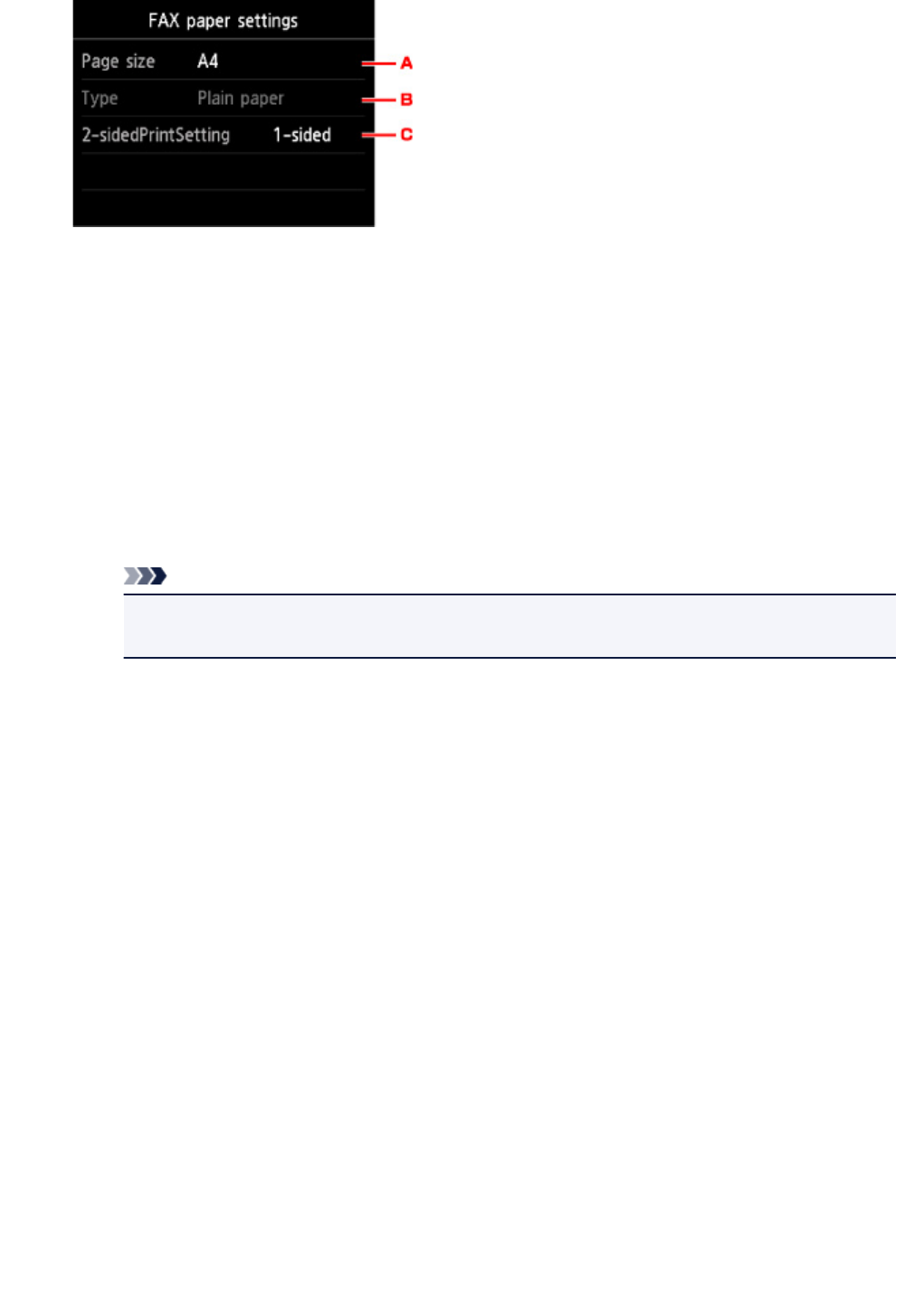
A. Page size
Select the page size from A4, Letter, or Legal.
B. Type (Media type)
The paper type is set to Plain paper.
C. 2-sidedPrintSetting
Select two-sided printing or single-sided printing.
Two sided printing is available for black & white faxes. Color faxes are printed on the single-side of
paper regardless of this setting.
After 2-sided is selected for 2-sidedPrintSetting, tap Advanced to specify the stapling side.
Note
• When Page size is set to A4 or Letter, the received faxes are printed on the two-sides of
paper.
6. Press Back button twice to return to Fax standby screen.
995
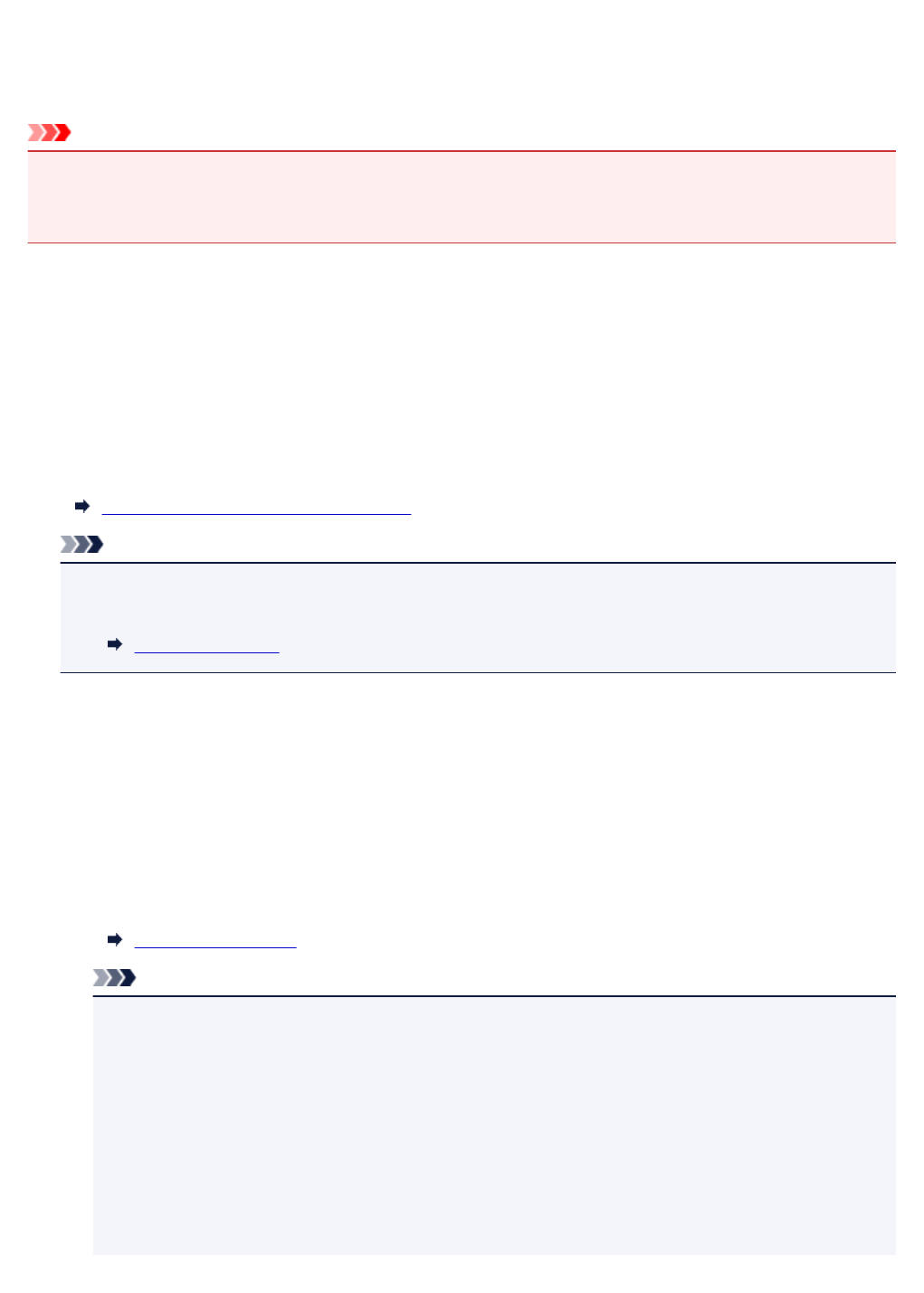
Memory Reception
If the printer was not able to print the received fax, the received fax is stored in the printer's memory. The
FAX Memory lamp is lit and Received in memory. is displayed at the Fax standby screen.
Important
• If you unplug the power cord, all faxes stored in the printer's memory are deleted. The next time you
turn the printer on, tap OK after a confirmation screen is displayed. The list of the faxes deleted from
the printer's memory (MEMORY CLEAR REPORT) will be printed.
If the printer receives a fax under one of the following conditions, the received fax will be automatically
stored in the printer's memory.
•The printer is set to store received faxes in its memory:
When Do not print is selected for Received documents in Auto print settings under FAX settings,
the received faxes are stored in the printer's memory.
You can print the faxes stored in the printer's memory from the Memory reference screen in the Fax
menu.
Printing Document in Printer's Memory
Note
• To print the received faxes automatically, select Print for Received documents in Auto print
settings under FAX settings.
Auto print settings
•An error has occurred on the printer:
If you select Print for Received documents in Auto print settings under FAX settings, a received fax
will be printed automatically. However, if any of the following errors occurs, the received fax will not be
printed. It will instead be stored in the printer's memory.
When the error is resolved, the fax stored in the printer's memory is printed automatically.
◦ The amount of remaining ink is insufficient to print a fax:
Replace the ink tank.
Replacing Ink Tanks
Note
• You can set the printer to forcibly print a received fax even if the ink has run out.
Set Print when out of ink in Auto print settings under FAX settings to Print.
However, part or all of the fax may not be printed since the ink has run out.
Also, the contents of the fax will not be stored in the printer's memory.
If the ink has already run out, we recommend that Do not print be selected for Received
documents in Auto print settings under FAX settings to store the received fax in the printer's
memory. After you replace the ink tank and select Print for Received documents in Auto print
settings, the fax stored in the printer's memory will be printed automatically.
996
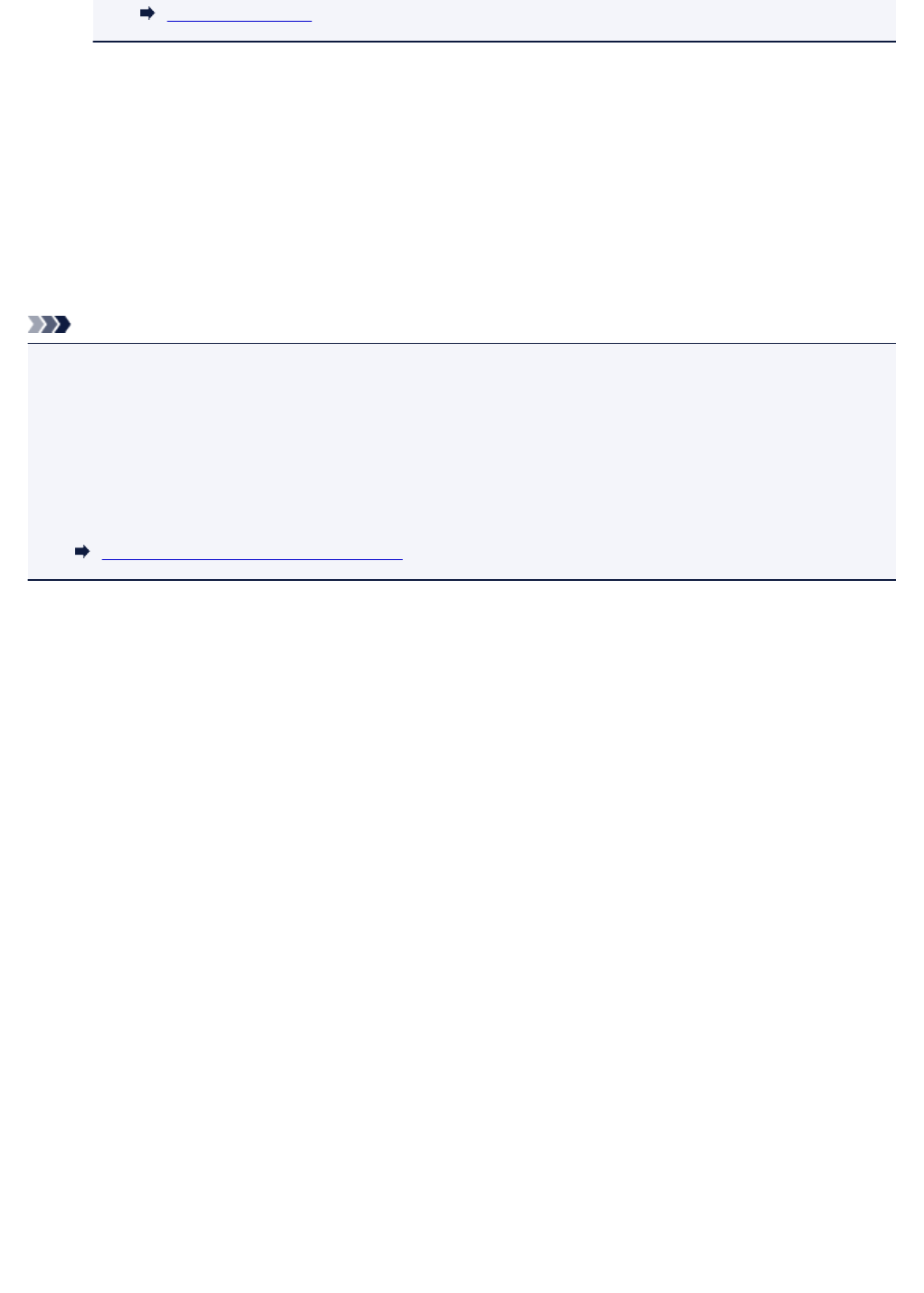
Auto print settings
◦ Paper has run out:
Load the paper and tap OK on the touch screen.
◦ A different size of paper from that specified by Page size in FAX paper settings is loaded:
Load the same size of paper as that specified by Page size in FAX paper settings, and then tap
OK on the touch screen.
•You pressed the Stop button to cancel printing of a fax:
Press the HOME button and tap FAX to resume printing of the fax.
Note
• The printer can store up to max. 250 pages* (max. 30 documents) of faxes in the printer's memory.
* When using ITU-T No.1 chart (Standard mode)
• If the printer's memory becomes full during memory reception, only pages which already have been
received are stored in the memory. Print the received faxes stored in the printer's memory, save them
on the USB flash drive, or forward received faxes to the shared folder on the computer, and then delete
them from the printer's memory and have the sender resend the faxes.
Document Stored in Printer's Memory
997
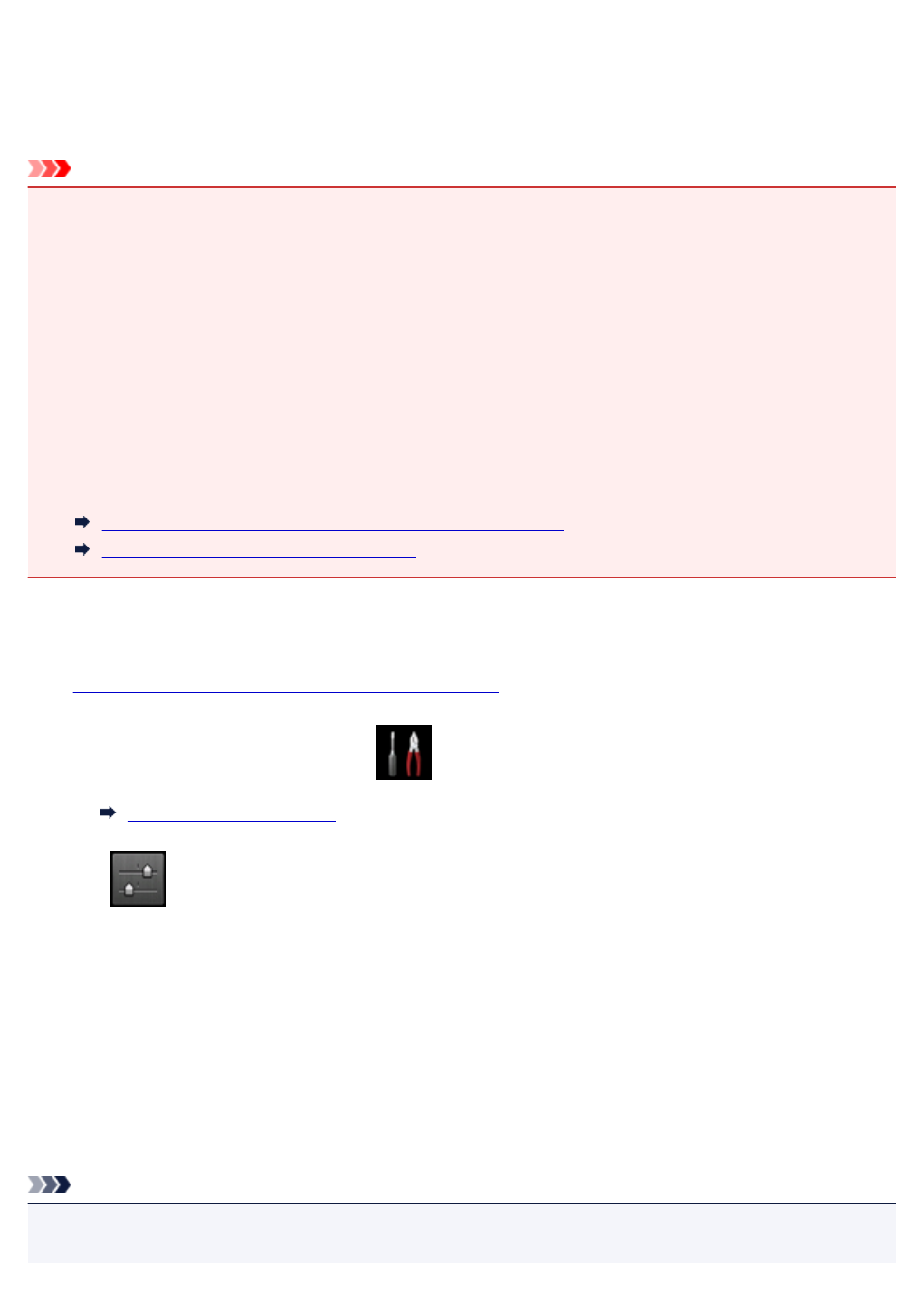
Saving Received Faxes Automatically on USB Flash Drive
You can save received faxes on a USB flash drive as PDF files automatically when receiving a fax.
This section describes the procedure to enable the printer to save received faxes on a USB flash drive
automatically.
Important
• Do not remove the USB flash drive from the printer when the printer is set to save received faxes on a
USB flash drive automatically.
• For safety reasons, we recommend backing up faxes saved on a USB flash drive to another media
periodically to avoid unexpected accidents.
• We assume no responsibility for damage to or loss of data for whatever reason even within the warranty
period.
•Awaiting document processing. is displayed on the Fax standby screen and the faxes are stored in
the printer's memory when the received faxes are not saved on the USB flash drive because the USB
flash drive is not inserted or because it is not writable.
You can save the faxes stored in the printer's memory to the USB flash drive manually. Delete the
unnecessary fax from printer's memory after saving to the USB flash drive.
Saving Document in Printer's Memory to USB Flash Drive
Deleting Document in Printer's Memory
1. Make sure that printer is turned on.
2. Insert USB flash drive into USB flash drive port.
3. Flick HOME screen, and then tap Setup.
Using the Operation Panel
4. Tap Device settings.
5. Tap FAX settings.
6. Tap Auto save setting.
7. Tap ON.
8. Tap USB flash drive.
Note
• You can save up to 250 pages of fax as one PDF file.
• You can save up to 2000 PDF files on a USB flash drive.
999
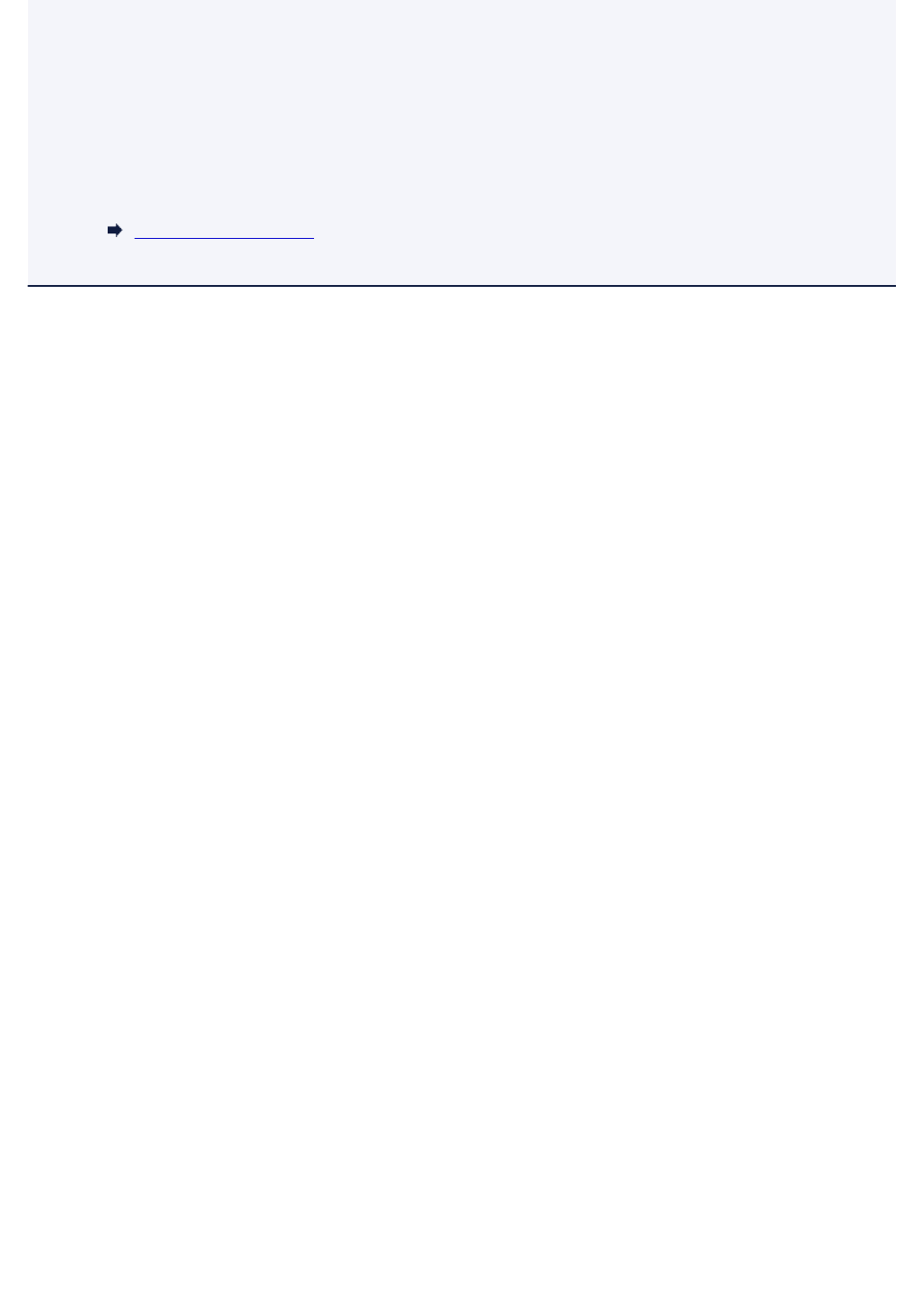
• If the USB flash drive is removed or becomes full while saving faxes is in progress, the error message is
displayed on the touch screen. Tap OK to dismiss the error.
• The folder and file name of faxes saved on the USB flash drive is as follows:
• Folder name: CANON_SC\FAXDOC\0001
• File name (file extension: PDF): Running numbers, starting from FAX_0001
• File date: The date and time of saving as set in the printer.
For details on how to set the date and time:
Setting Date and Time
• When removing the USB flash drive, set Auto save setting to OFF.
1000
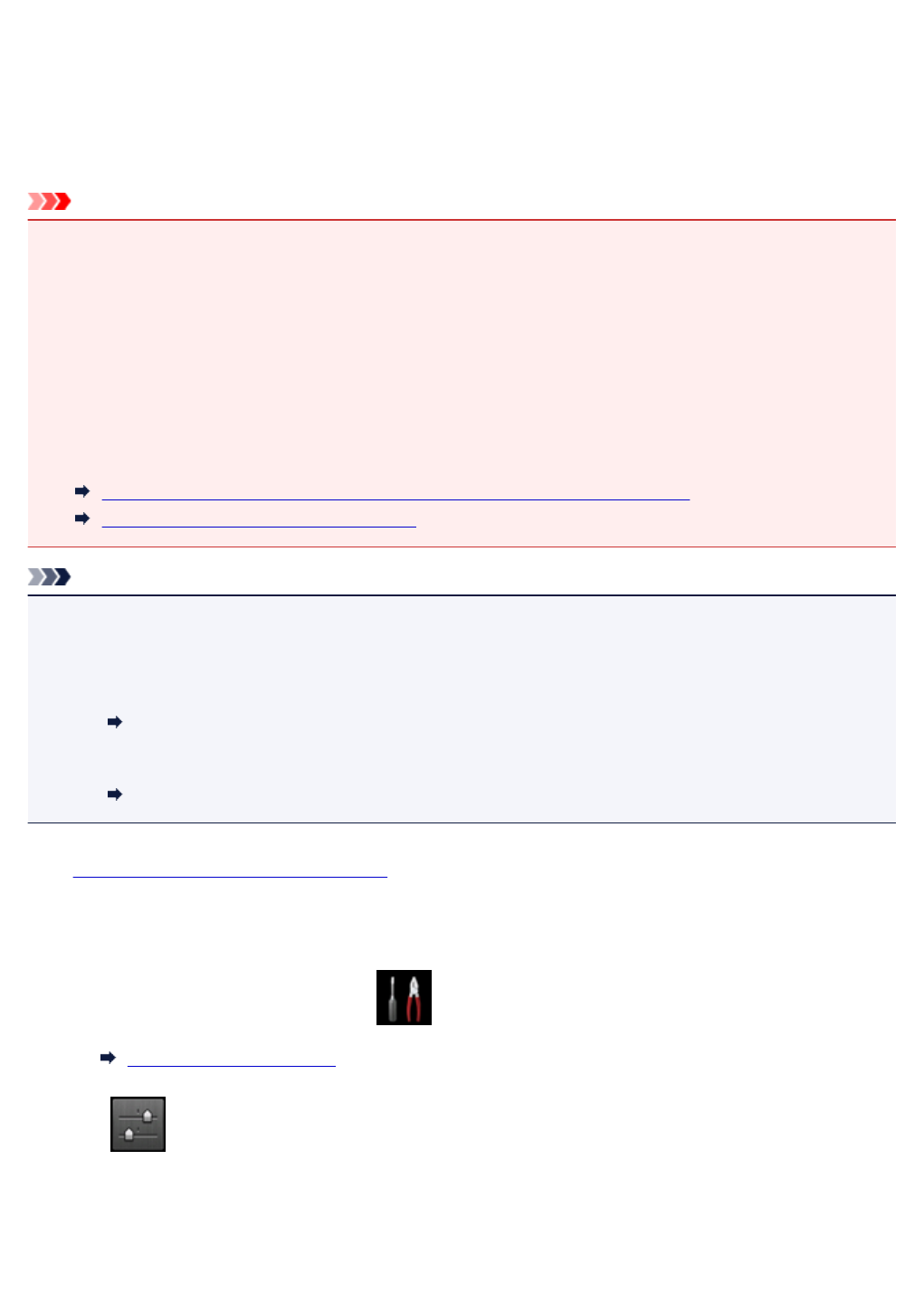
Forwarding Received Faxes Automatically to Shared Folder on
Computer
You can forward received faxes to the shared folder on the computer as PDF files automatically.
This section describes the procedure to enable the printer to forward received faxes to the shared folder on
the computer automatically.
Important
• Do not disconnect the printer with the computer when the printer is set to forward received faxes to the
shared folder on the computer automatically.
• We assume no responsibility for damage to or loss of data for whatever reason even within the warranty
period.
•Awaiting document processing. is displayed on the Fax standby screen and the faxes are stored in
the printer's memory when the received faxes are not forward to the shared folder because the printer is
not connected with the computer or because the shared folder setting is changed.
• You can forward the faxes stored in the printer's memory to the shared folder on the computer manually.
Delete the unnecessary fax from printer's memory after forwarding to the shared folder.
Forwarding Document in Printer's Memory to Shared Folder on Computer
Deleting Document in Printer's Memory
Note
• Register the destination folder using Quick Utility Toolbox in advance.
For details on how to register the destination folder:
• For Windows:
Destination Folder Settings
• For Mac OS:
Destination Folder Settings
1. Make sure that printer is turned on.
2. Make sure that printer is connected with destination computer.
3. Flick HOME screen, and then tap Setup.
Using the Operation Panel
4. Tap Device settings.
5. Tap FAX settings.
6. Tap Auto save setting.
1001
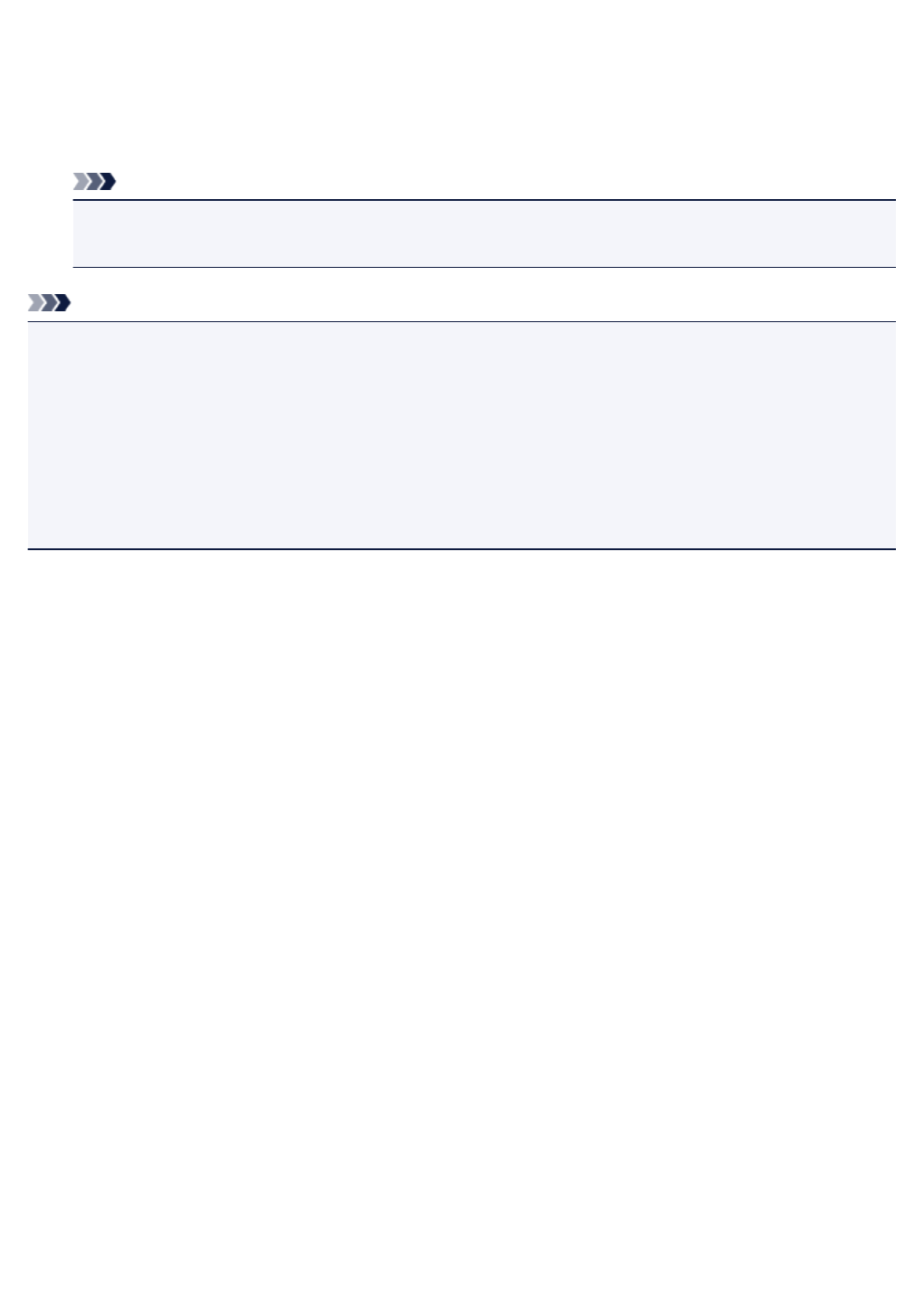
7. Tap ON.
8. Tap Destination folder.
9. Select a shared folder.
Note
• When you specify a PIN code for a registered folder, a screen asking you to enter a PIN code is
displayed. Entering the PIN code allows you to assign the shared folder as the destination.
Note
• You can forward up to 250 pages of fax as one PDF file.
• You can forward up to 2000 PDF files to the shared folder on the computer.
• If the printer is disconnected with the computer or if the writing error occurs on the computer while
saving faxes is in progress, the error message is displayed on the touch screen. Tap OK to dismiss the
error.
• The faxes forwarded to the shared folder are named with the serial number from FAX_0001 (file
extension: PDF).
• When disconnecting the printer with the computer, set Auto save setting to OFF.
1002
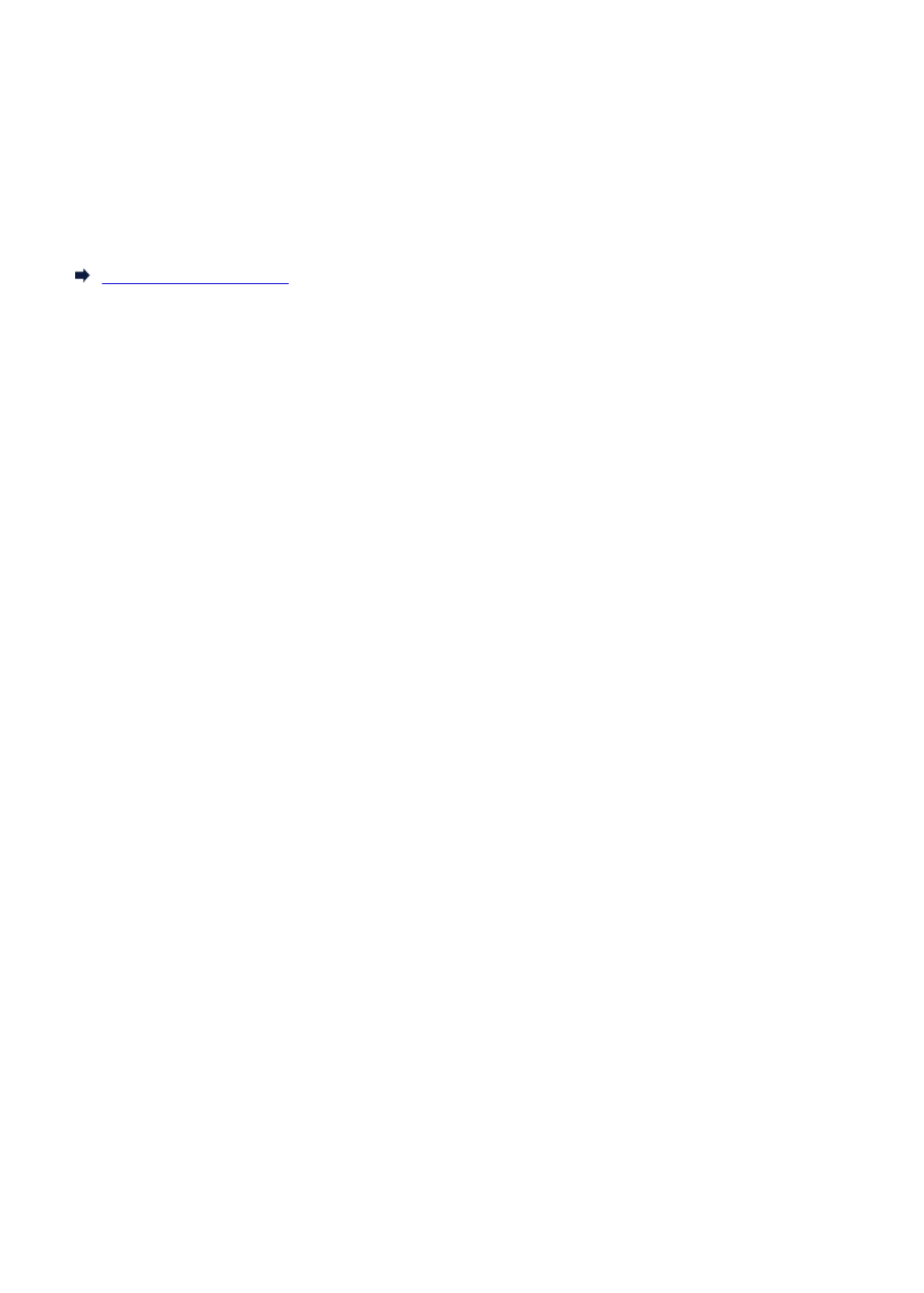
Remote Reception
If the printer is located away from the telephone, pick up the handset of the telephone connected to the
printer and dial 25 (the remote reception ID) to receive faxes (remote reception).
• If you use a rotary pulse line, temporarily switch your telephone to tone dialing. For details on how to
switch to tone dialing, refer to your telephone's instruction manual.
• If you have an answering machine connected to the printer that can carry out remote control operations,
the security code for this function may be the same as the remote reception ID. In this case, change the
remote reception ID in Remote RX ID in Remote RX in Advanced FAX settings under FAX settings.
Advanced FAX settings
Remote reception can be disabled.
1003
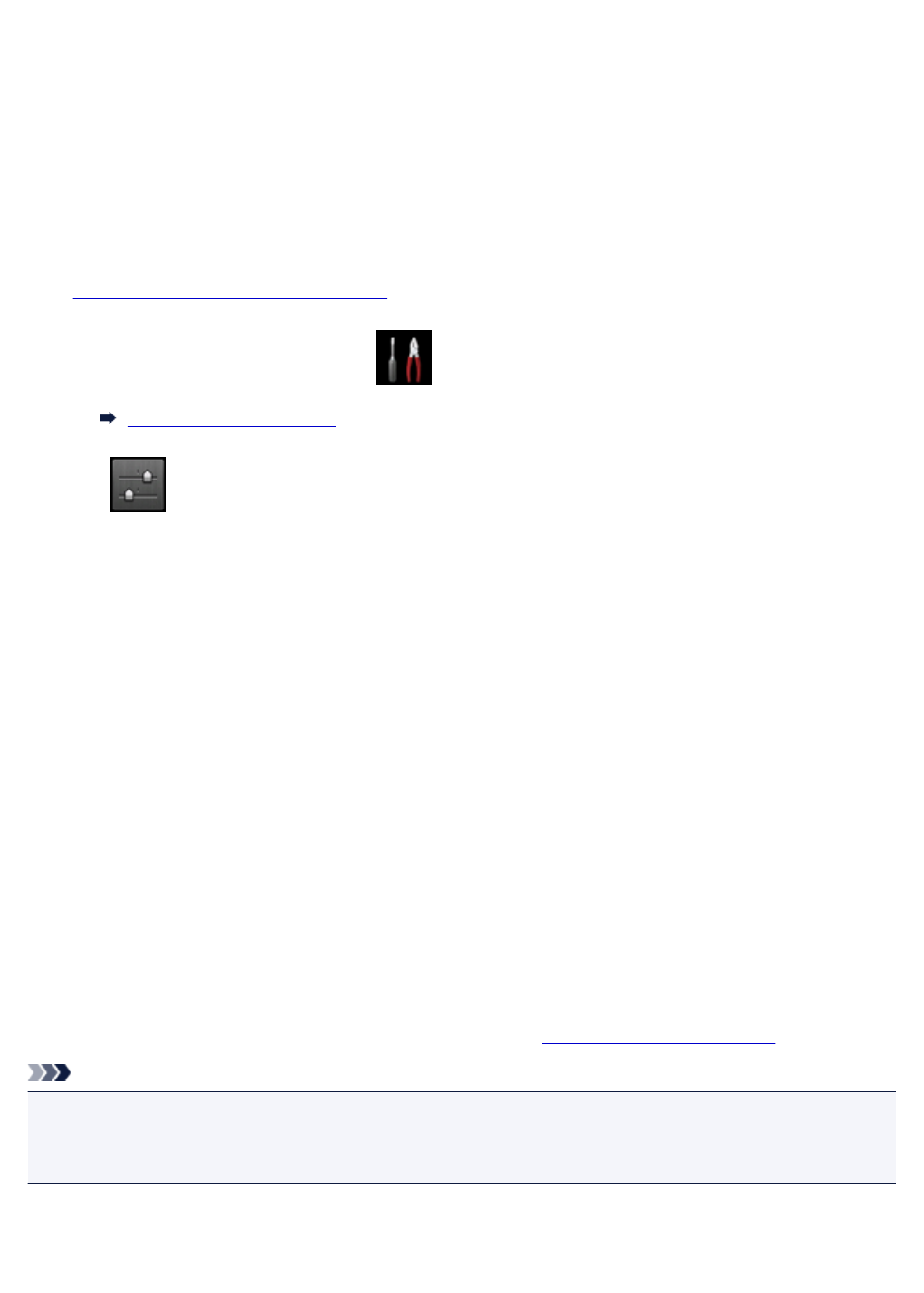
Rejecting Fax Reception
You can set the printer to reject faxes with no sender information or those from specific senders.
Select one of the following conditions to reject faxes.
• Faxes with no caller identification.
• Faxes from senders not registered in the printer's directory.
• Faxes from senders registered in the printer as rejected numbers.
Select a fax rejection condition following the procedure below.
1. Make sure that printer is turned on.
2. Flick HOME screen, and then tap Setup.
Using the Operation Panel
3. Tap Device settings.
4. Tap FAX settings.
5. Tap Security control.
6. Tap FAX reception reject.
7. Tap ON.
8. Select a condition of rejecting fax reception.
No sender info.
Rejects faxes with no caller identification.
Not in directory
Rejects faxes from the senders not registered in the printer's directory.
Rejected numbers
Rejects faxes from the senders registered in the printer as rejected numbers.
For details on how to register the rejected number, see Registering Rejected Number.
Note
• When the printer rejects reception, Reception rejected. is displayed on The Fax standby screen.
• Faxes with no caller identification are also rejected when the setting other than No sender info. is
selected.
Registering Rejected Number
Register the rejected number following the procedure below.
1004
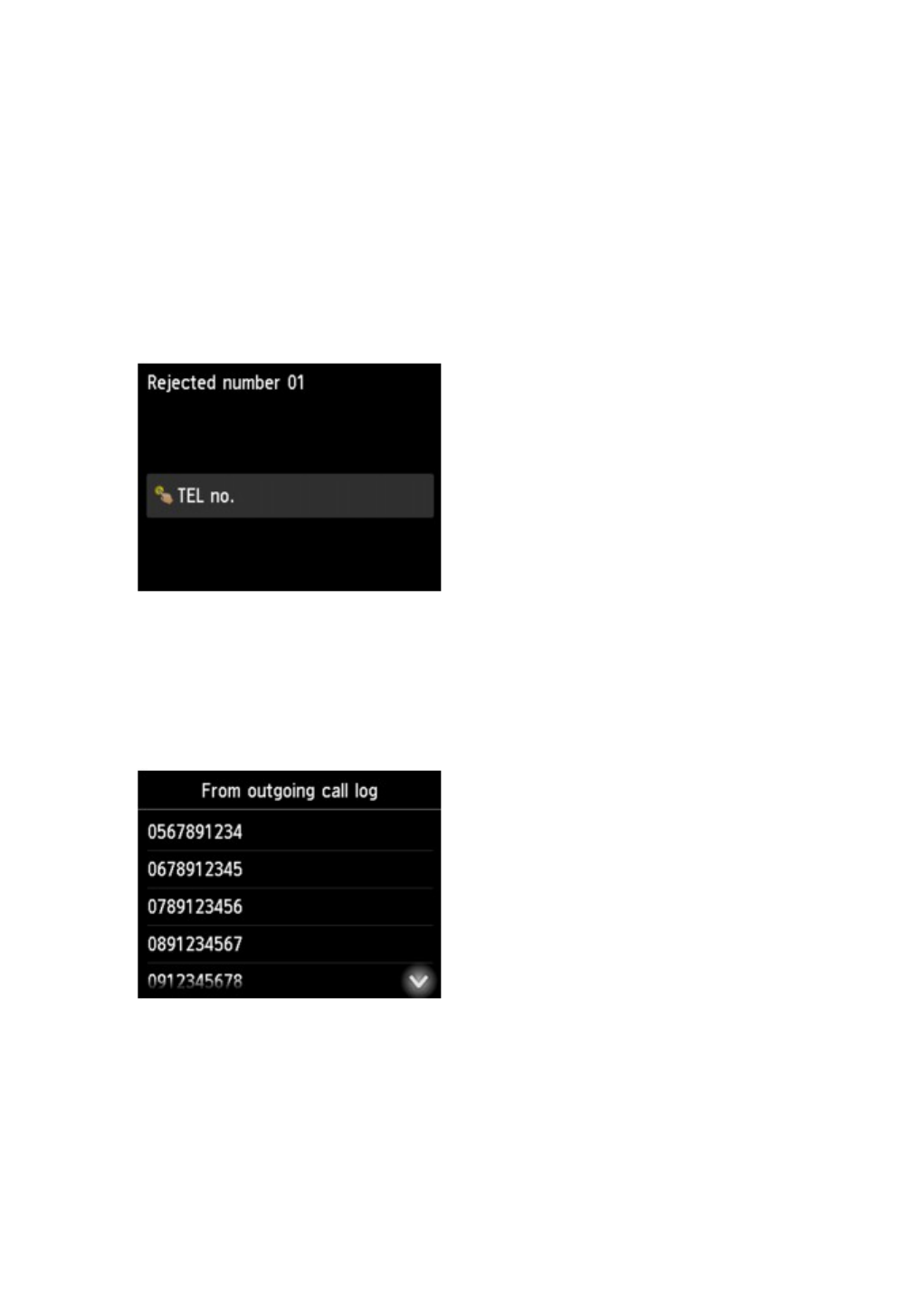
1. When confirmation screen to register rejected number is displayed, tap Yes.
2. Select a registration number.
3. Select a registration method.
4. Register rejected number.
Register the rejected number depending on the registration method.
•By entering the number
When you select this registration method, the screen to register the fax/telephone number is
displayed.
Tap the entry field of fax/telephone numbers to display the screen to enter the fax/telephone
number. Enter the fax/telephone number you want to register, and then tap OK.
•From outgoing call log
When you select this registration method, the screen to select the fax/telephone number from
the outgoing call logs is displayed.
Tap a fax/telephone number you want to register.
•From incoming call log
When you select this registration method, the screen to select the fax/telephone number or the
name from the incoming call logs is displayed.
1005
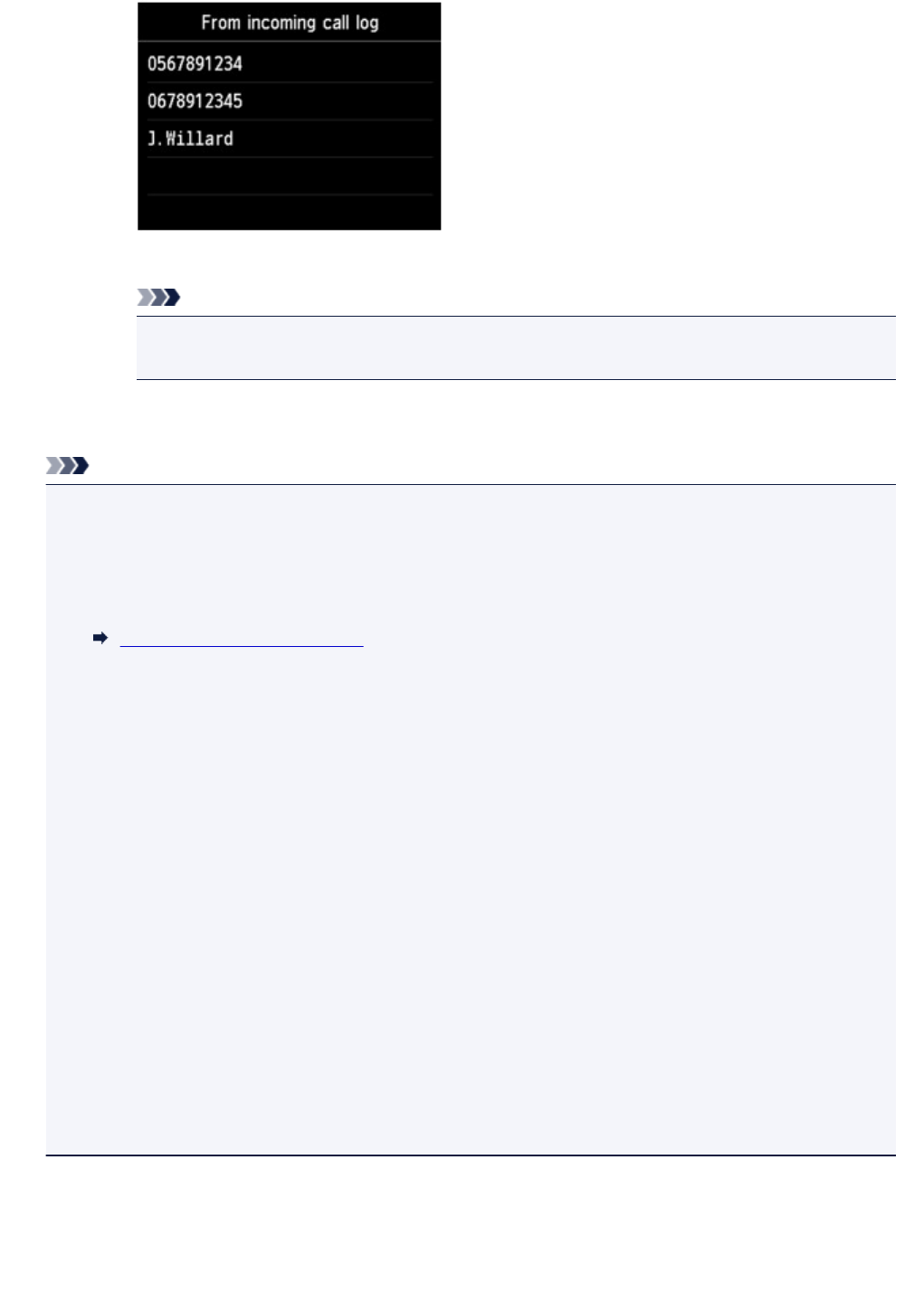
Tap a fax/telephone number or a name you want to register.
Note
•This registration method may not be available depending on the country or region of
purchase.
5. Tap Register to finalize registration.
Note
• To register another rejected number, select another registration number, and then register the
rejected number.
You can register up to 10 rejected numbers.
• You can print the list of rejected numbers (REJECTED NUMBER LIST).
Summary of Reports and Lists
• To change the registered rejected number:
1. Select a registered rejected number you want to change.
2. Tap Edit.
3. Tap entry field of fax/telephone numbers.
The screen to change the registered rejected number is displayed.
4. Change registered rejected number in same procedure when you register.
5. Finalize registration in same procedure when you register.
• To delete the registered rejected number:
1. Select a registered rejected number you want to delete.
2. Tap Delete.
The confirmation screen is displayed.
3. Tap Yes.
• You can also register the rejected number by tapping Function list on the Fax standby screen, and
then selecting Rejected numbers under TEL number registration.
1006
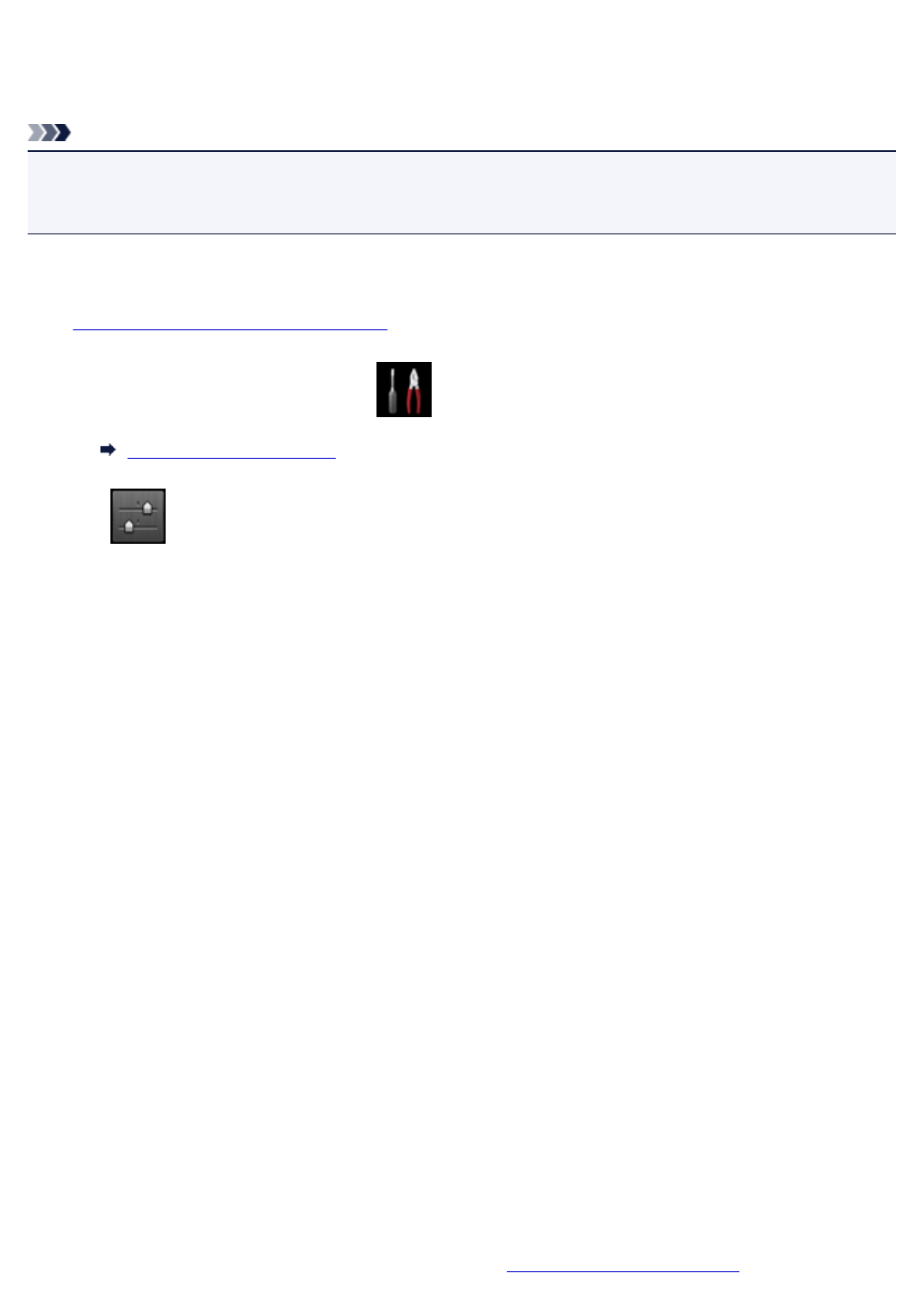
Using Caller ID Service to Reject Calls
If you subscribe to the Caller ID service, the printer detects the sender's Caller ID. If the sender's ID matches
the condition specified in this setting, the printer rejects the phone call or fax reception from the sender.
Note
• This setting may not be supported depending on the country or region of purchase.
Contact your telephone company to confirm whether it provides this service.
Specify the setting following the procedure below.
1. Make sure that printer is turned on.
2. Flick HOME screen, and then tap Setup.
Using the Operation Panel
3. Tap Device settings.
4. Tap FAX settings.
5. Tap Security control.
6. Tap Caller rejection.
7. Tap Yes.
The Caller rejection conditions screen is displayed.
8. Specify rejection conditions.
Tap a setting item and select Accept or Reject.
Anonymous no.
Selects whether to reject a phone call or fax reception from an anonymous number.
Out of area no.
Selects whether to reject a phone call or fax reception out of the subscribed service area.
Rejected numbers
Selects whether to reject a phone call or fax reception from the specified numbers.
9. Tap OK to finish specifying rejection conditions.
If you select Reject for Rejected numbers, Register rejected numbers? is displayed on the touch
screen. Tap Yes, and then register the rejected number.
For details on how to register the rejected number, see Registering Rejected Number.
1007
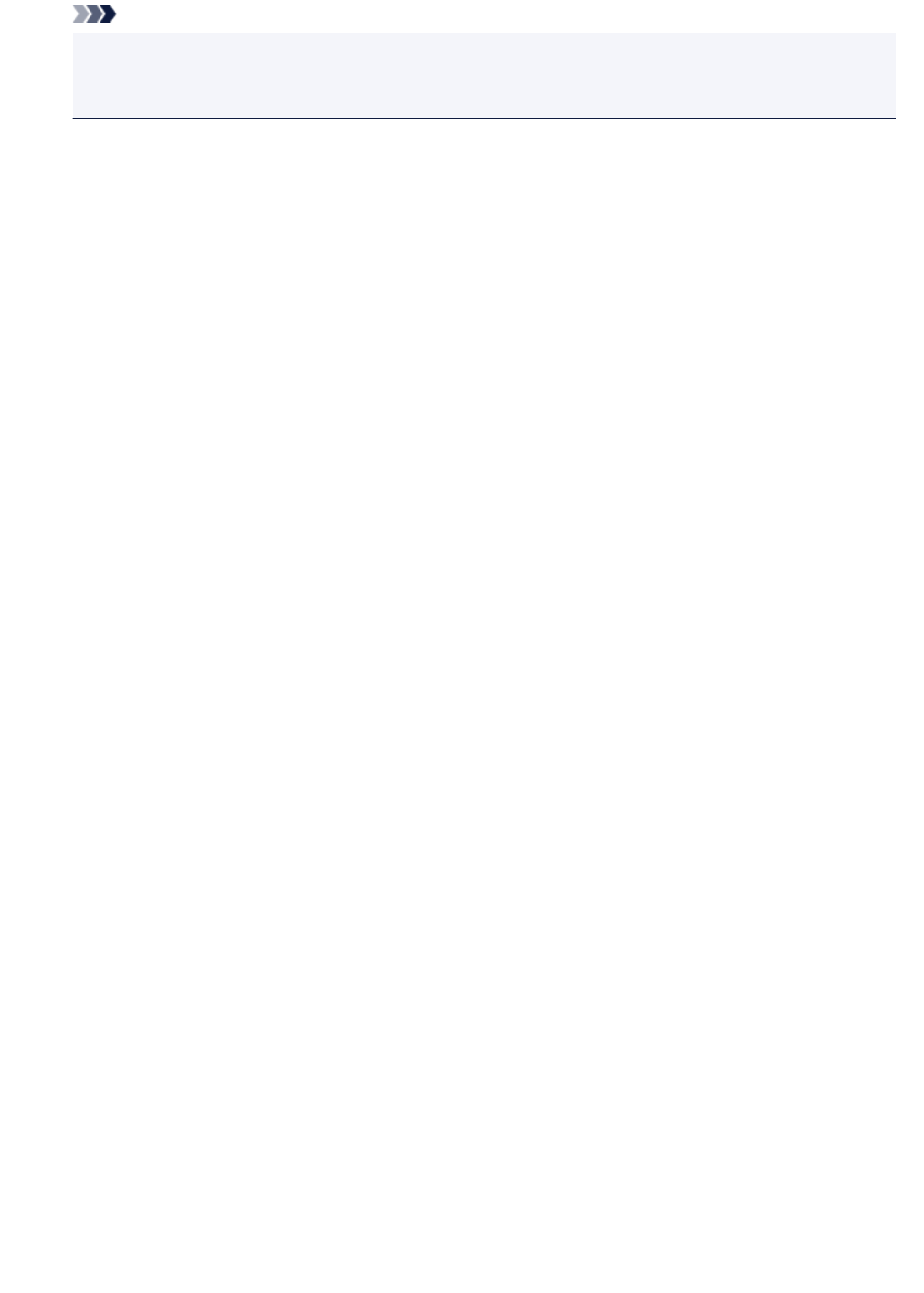
Note
• Even if you select Reject, the printer rings once.
(The printer may not ring depending on the country or region of purchase.)
1008
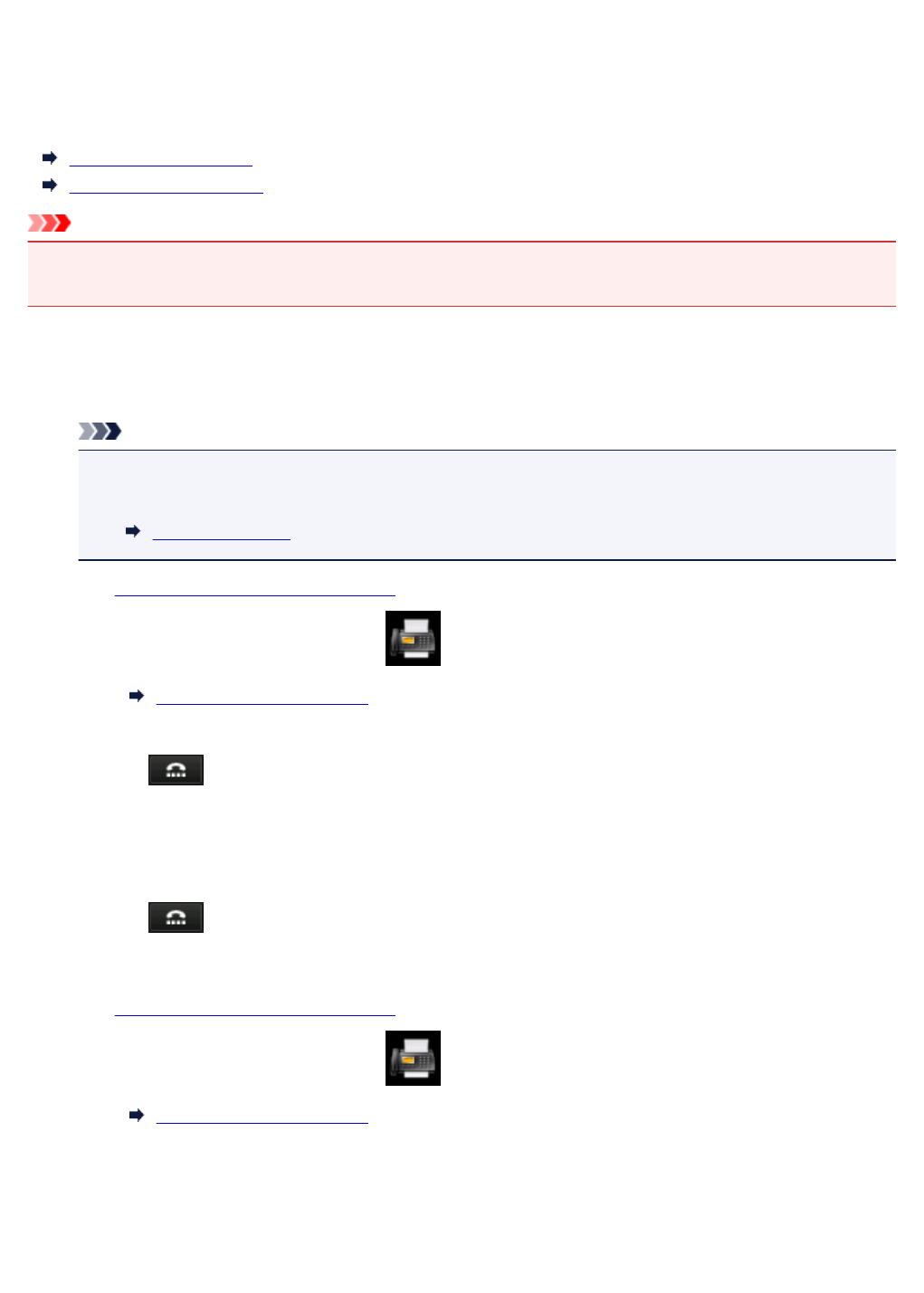
Using Information Services
You can use various information services such as provided by banks, and make airline reservations or hotel
reservations. Since these services require tone dialing to use their services, you need to temporarily switch
to tone dialing if your printer is connected to a rotary pulse line.
Using Touch Tone Line
Using Rotary Pulse Line
Important
• You may need to contract with the service providers for some information services. For details, contact
the service providers.
Using Touch Tone Line
•Dialing by Using the On Hook Dial Function
Note
• You can use the on hook dial function only when Hook key setting in Security control under
FAX settings is set to Enable.
Security control
1. Make sure that printer is turned on.
2. Flick HOME screen, and then tap FAX.
Using the Operation Panel
The Fax standby screen is displayed.
3. Tap .
4. Dial number of information service.
5. When recorded message for information service answers, tap numbers using Numeric key in
accordance with message.
6. Tap to finish using service.
•Dialing by Using the Telephone Connected to the Printer
1. Make sure that printer is turned on.
2. Flick HOME screen, and then tap FAX.
Using the Operation Panel
The Fax standby screen is displayed.
3. Lift handset of telephone.
4. Use telephone to dial number of information service.
1010
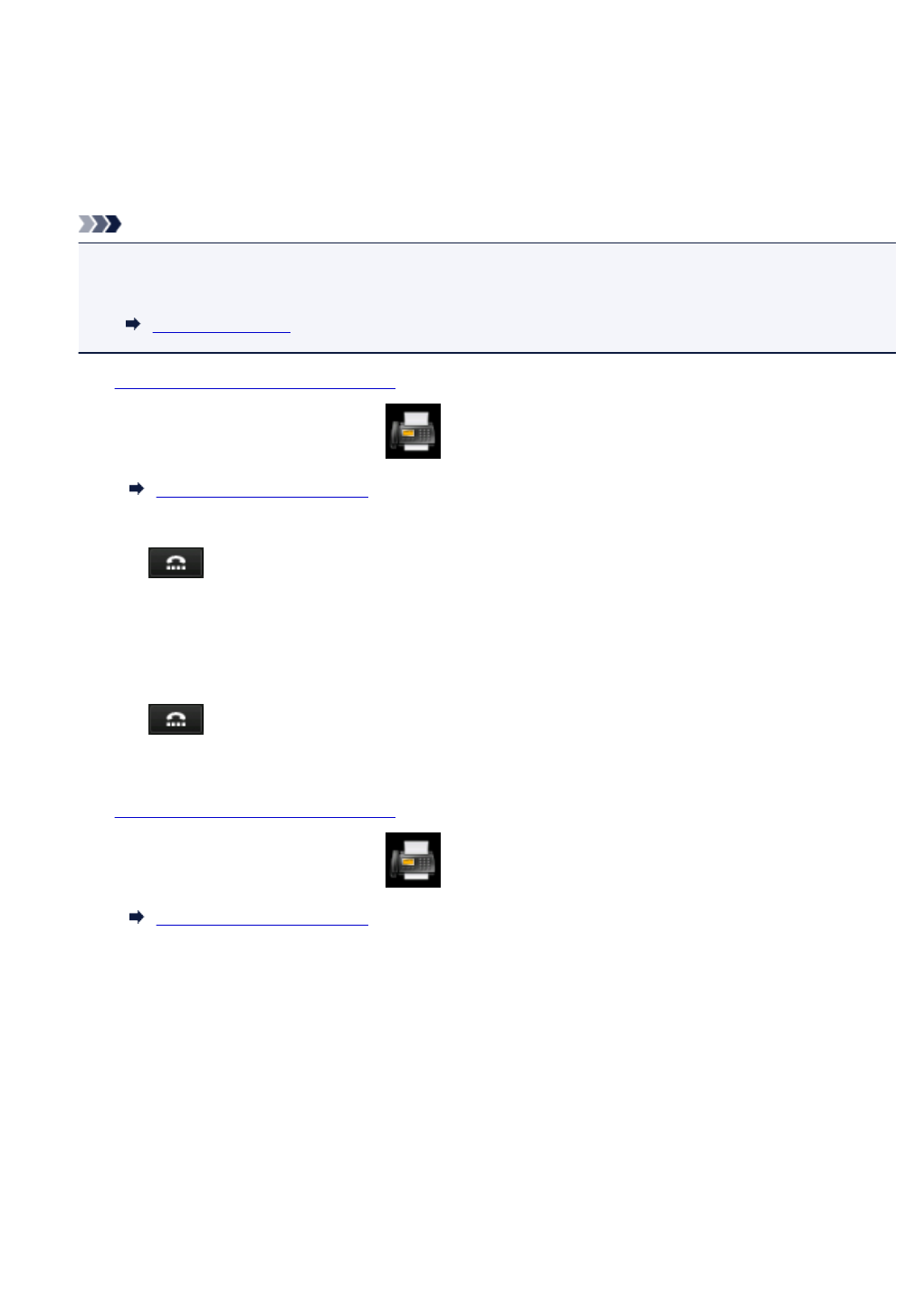
5. When recorded message for information service answers, use telephone to press numbers in
accordance with message.
6. Hang up handset to finish using service.
Using Rotary Pulse Line
•Dialing by Using the On Hook Dial Function
Note
• You can use the on hook dial function only when Hook key setting in Security control under
FAX settings is set to Enable.
Security control
1. Make sure that printer is turned on.
2. Flick HOME screen, and then tap FAX.
Using the Operation Panel
The Fax standby screen is displayed.
3. Tap .
4. Dial number of information service.
5. When recorded message for information service answers, tap Tone key to switch to tone dialing.
6. Tap numbers using Numeric key in accordance with message.
7. Tap to finish using service.
•Dialing by Using the Telephone Connected to the Printer
1. Make sure that printer is turned on.
2. Flick HOME screen, and then tap FAX.
Using the Operation Panel
The Fax standby screen is displayed.
3. Lift handset of telephone.
4. Use telephone to dial number of information service.
5. When recorded message for information service answers, use telephone to switch to tone dialing.
When you dial the number of the information service using the telephone connected to the printer,
you cannot use the printer to switch to tone dialing. For instructions on how to switch to tone
dialing, refer to your telephone's instruction manual.
6. Use telephone to press numbers in accordance with message.
7. Hang up handset to finish using service.
1011
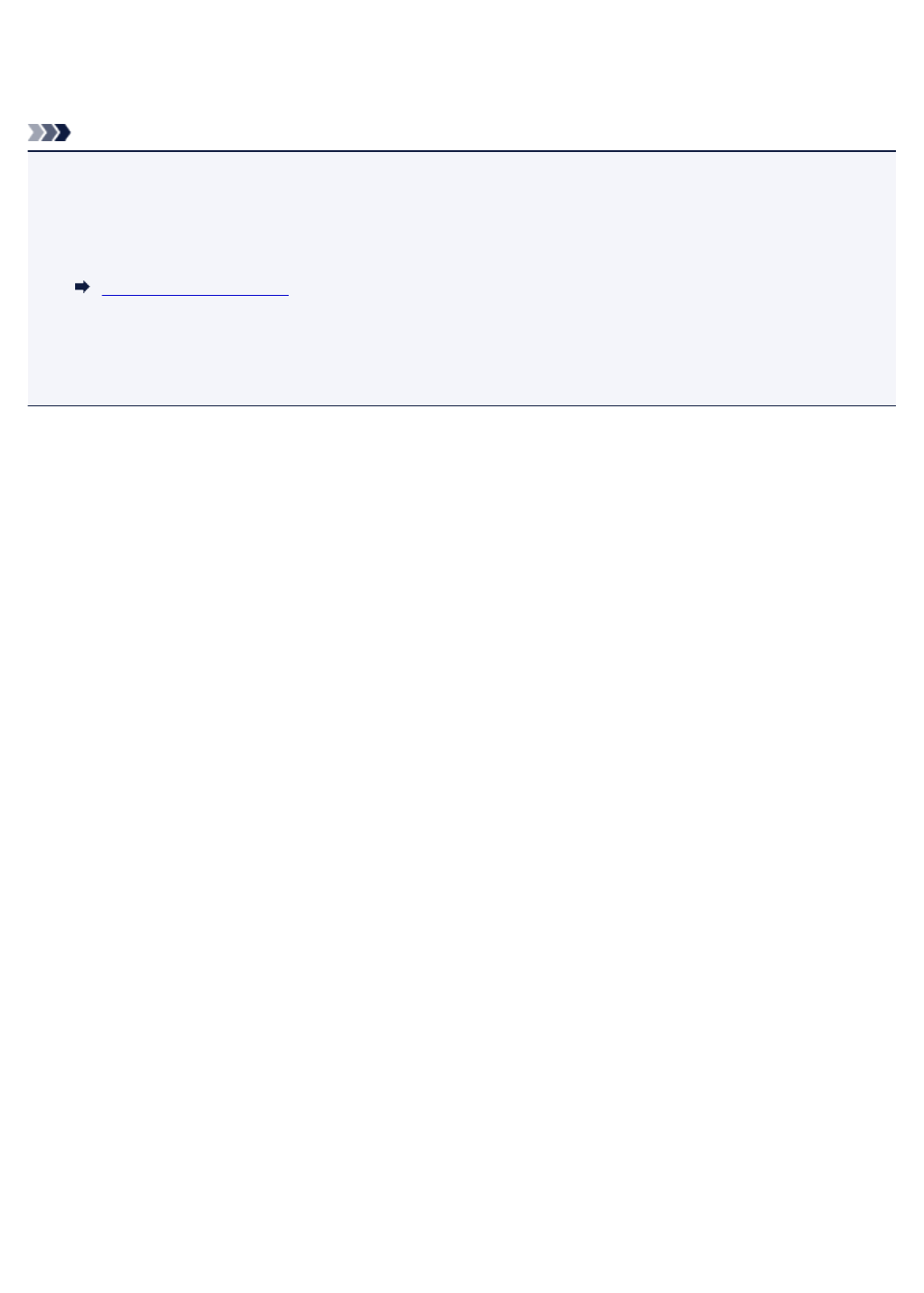
Transmission/Reception of Faxes Using ECM
This printer is set to send/receive faxes in Error Correction Mode (ECM). If the recipient's fax device is
compatible with ECM, ECM automatically corrects errors and resends the fax.
Note
• If the sender's or recipient's fax device is not compatible with ECM, the fax will be sent/received without
automatic error correction.
• To receive color faxes, make sure that ECM RX in Adv. communication settings in Advanced FAX
settings under FAX settings is set to ON.
Advanced FAX settings
To disable ECM transmission/reception, set ECM TX and ECM RX in Adv. communication settings to
OFF.
• Transmission may take longer when ECM is enabled.
1012
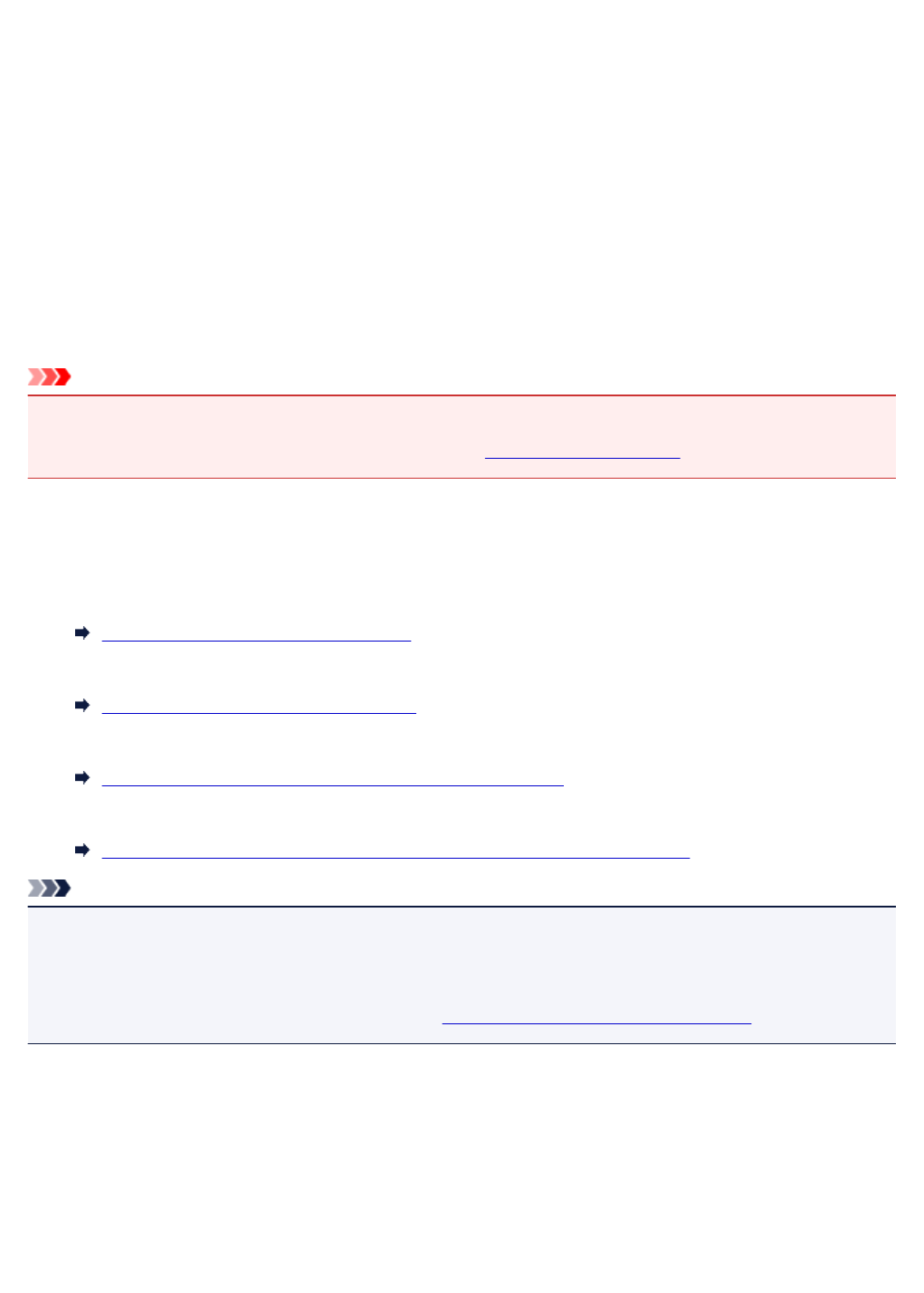
Document Stored in Printer's Memory
If the sending faxes is not complete or the printer was not able to print the received faxes, these faxes are
stored in the printer's memory.
If an error occurred during a fax transmission, the document is not stored in the printer's memory.
In the following cases, the printer is not able to print the received fax and will automatically store the fax in
its memory.
• The amount of remaining ink is insufficient to print a fax.
• Paper has run out.
• A different size of paper from that specified by Page size in FAX paper settings is loaded.
•Do not print is selected for Received documents in Auto print settings under FAX settings.
• You pressed the Stop button to cancel printing of a received fax.
Important
• If you unplug the power cord of the printer, all faxes stored in the printer's memory are deleted.
For details on how to unplug the power cord, refer to Unplugging the Machine.
You can print or delete the faxes stored in the printer's memory. You can also save the received faxes stored
in the printer's memory on the USB flash drive or forward the received faxes stored in the printer's memory
to the shared folder on the computer.
• To print a document in the printer's memory:
Printing Document in Printer's Memory
• To delete a document in the printer's memory:
Deleting Document in Printer's Memory
• To save a document on a USB flash drive
Saving Document in Printer's Memory to USB Flash Drive
• To forward a document to the shared folder on the computer
Forwarding Document in Printer's Memory to Shared Folder on Computer
Note
• When confirming, printing, or deleting a document stored in the printer's memory, you specify it by its
transaction number. If you do not know the transaction number for your target document, print the list of
documents (MEMORY LIST) first.
For details on how to print MEMORY LIST, see Printing Document in Printer's Memory.
1013
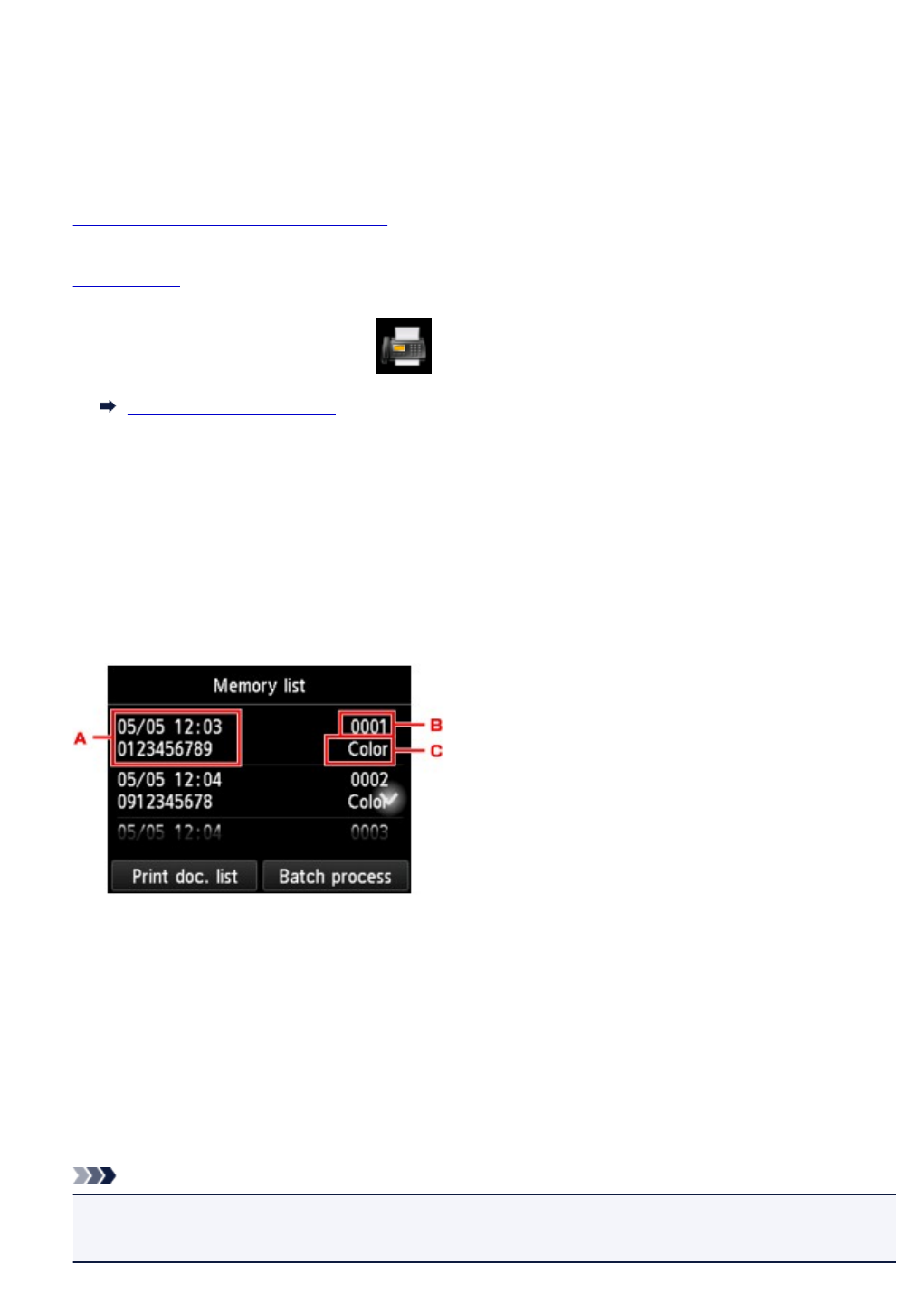
Printing Document in Printer's Memory
You can print a specified document in the printer's memory or print all the received documents in its memory
at a time.
When printing a specified document, you specify it by its transaction number. If you do not know the
transaction number for your target document, print the list of documents (MEMORY LIST) first.
1. Make sure that printer is turned on.
2. Load paper.
3. Flick HOME screen, and then tap FAX.
Using the Operation Panel
The Fax standby screen is displayed.
4. Tap Function list.
The Function list screen is displayed.
5. Tap Memory reference.
The memory list is displayed.
A. Date and time of transaction and fax/telephone number
B. Transaction number (TX/RX NO.)
A transaction number from "0001" to "4999" indicates a document being sent.
A transaction number from "5001" to "9999" indicates a document being received.
C. Color information
Color is displayed for color transmission/reception. Nothing is displayed for black & white
transmission/reception.
Note
•If no document is stored in the printer's memory, There is no document in memory. is displayed.
Tap OK to return to the previous screen.
1014
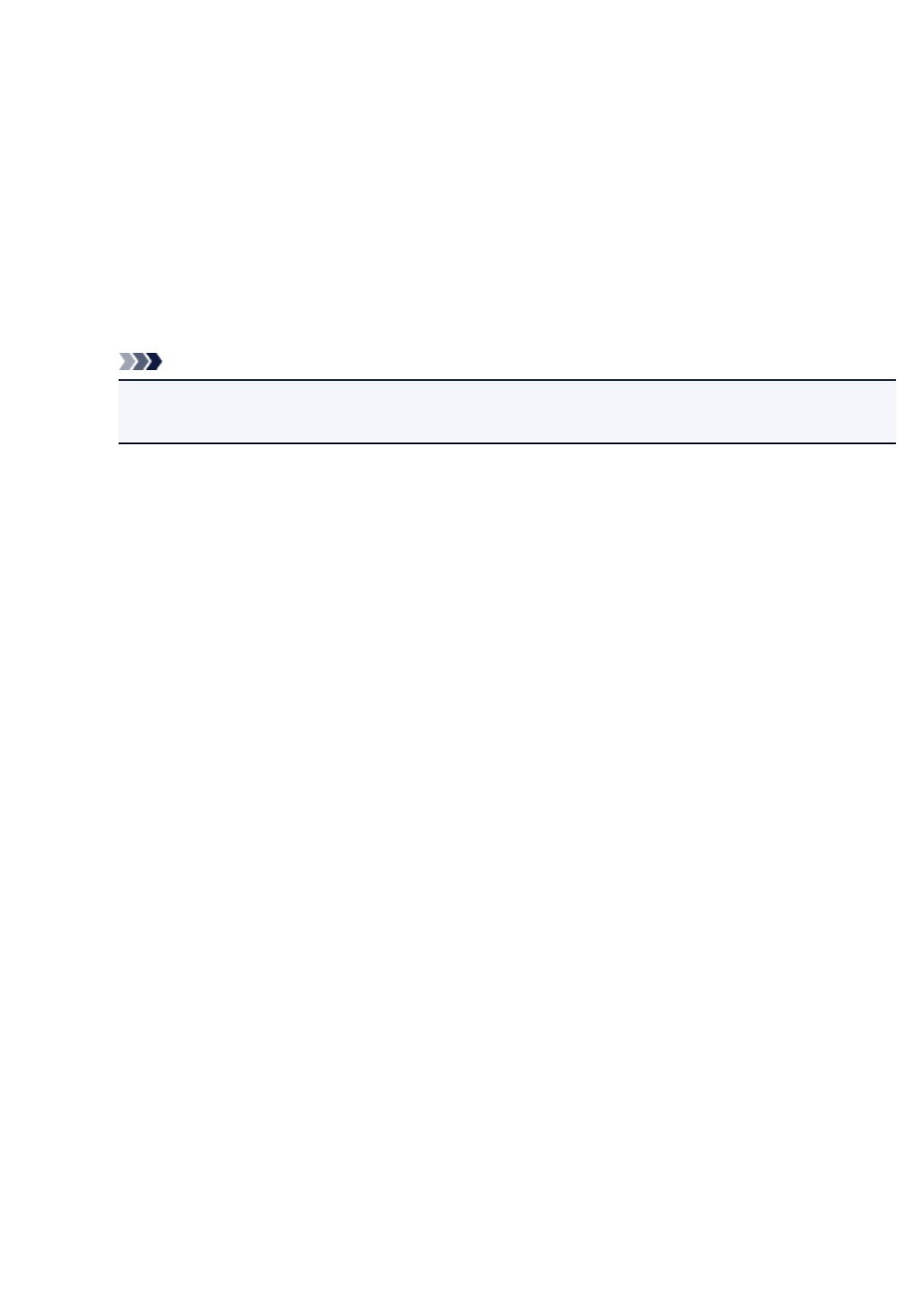
6. Select a print menu.
• To print the memory list (MEMORY LIST):
You can print a list of the documents in the printer's memory by tapping Print doc. list.
When the print confirmation screen is displayed, tap Yes. The printing starts.
MEMORY LIST shows the transaction number of the unsent or unprinted fax (TX/RX NO.),
transaction mode, recipient's number, and the date and time of the transaction.
A transaction number from "0001" to "4999" on MEMORY LIST indicates a document being sent. A
transaction number from "5001" to "9999" on MEMORY LIST indicates a document being received.
•To specify a document to print:
Select a document to print on the Memory list screen, tap Print specified document.
Note
•If the specified document is not stored in the printer's memory, There is no document that
can be printed. is displayed. Tap OK to return to the previous screen.
The confirmation screen to select whether to print only the first page of the document is displayed.
If you select Yes, only the first page of the document will be printed. The document is still stored in
the printer's memory.
If you select No, all pages of the document will be printed. The screen to confirm whether to delete
the printed document in the printer's memory is displayed after printing.
• To print all the received documents stored in the printer's memory:
Tap Batch process, and then tap Print all RX documents.
When the print confirmation screen is displayed, tap Yes. All the documents in the printer's
memory are printed.
Each time a document is printed, the screen to confirm whether to delete the printed document in
the printer's memory is displayed.
If you tap Yes, the printed document in the printer's memory is deleted.
1015
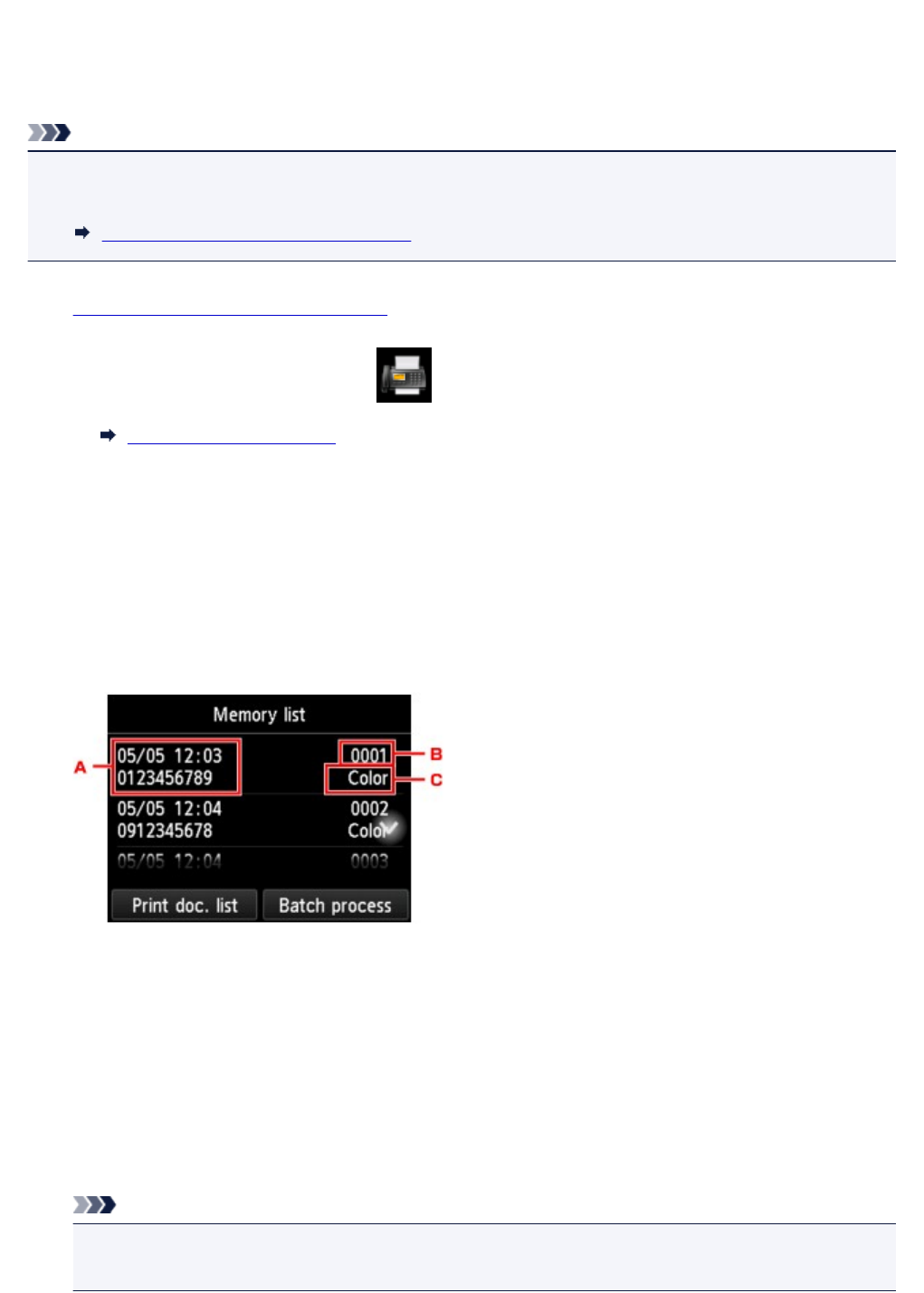
Deleting Document in Printer's Memory
You can delete a specified document in the printer's memory or delete all the documents in its memory at a
time.
Note
• When deleting a specified document, you specify it by its transaction number. If you do not know the
transaction number for your target document, print the list of documents (MEMORY LIST) first.
Printing Document in Printer's Memory
1. Make sure that printer is turned on.
2. Flick HOME screen, and then tap FAX.
Using the Operation Panel
The Fax standby screen is displayed.
3. Tap Function list.
The Function list screen is displayed.
4. Tap Memory reference.
The memory list is displayed.
A. Date and time of transaction and fax/telephone number
B. Transaction number (TX/RX NO.)
A transaction number from "0001" to "4999" indicates a document being sent.
A transaction number from "5001" to "9999" indicates a document being received.
C. Color information
Color is displayed for color transmission/reception. Nothing is displayed for black & white
transmission/reception.
Note
•If no document is stored in the printer's memory, There is no document in memory. is displayed.
Tap OK to return to the previous screen.
1016
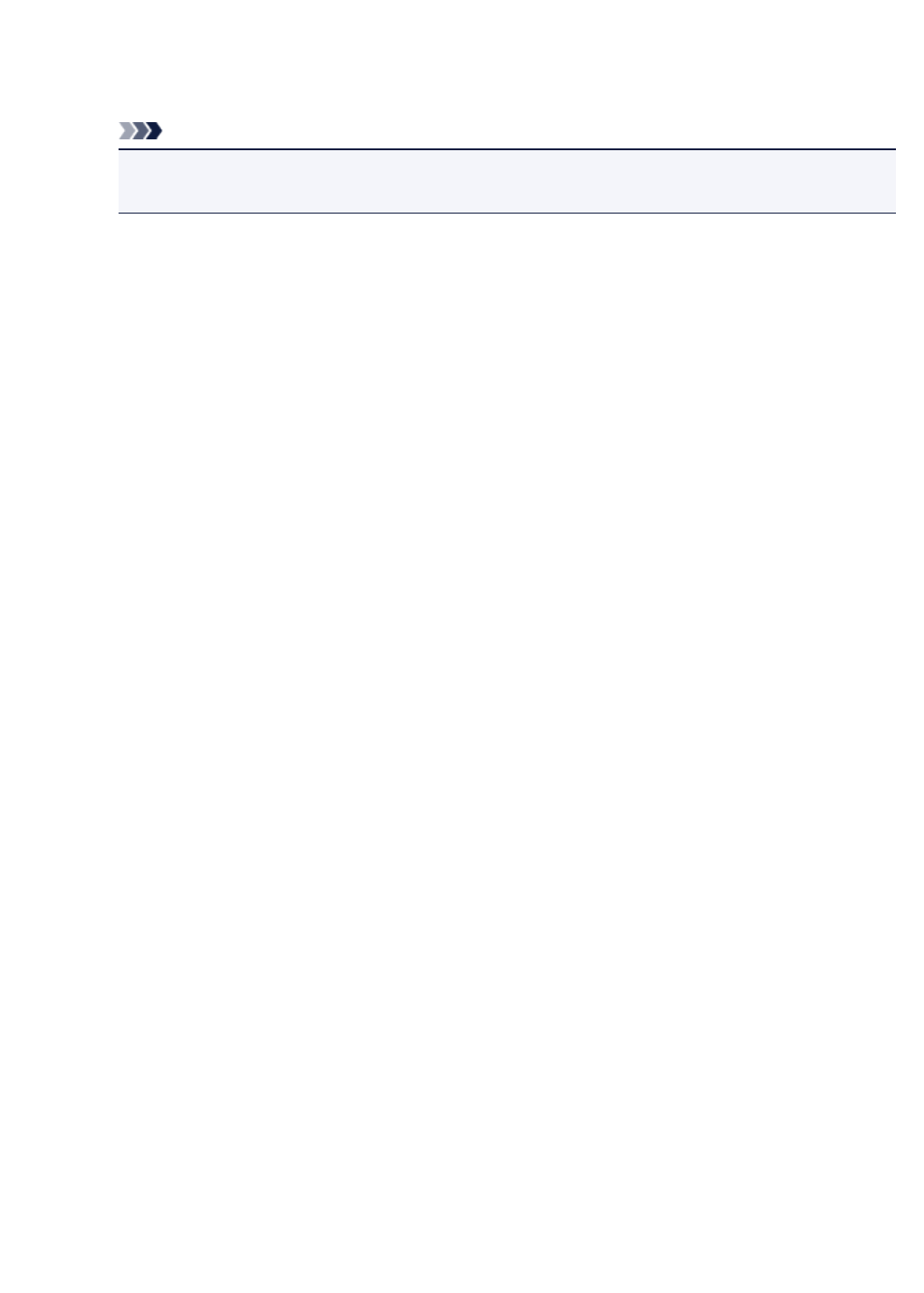
5. Select a delete menu.
• To specify a document to delete:
Select a document to delete on the Memory list screen, tap Delete specified doc..
Note
•If the specified document is not stored in the printer's memory, There is no document that
can be deleted. is displayed. Tap OK to return to the previous screen.
The confirmation screen is displayed.
If you select Yes, the specified document is deleted from printer's memory.
•To delete all documents stored in the printer's memory:
Tap Batch process, and then tap Delete all documents.
The confirmation screen is displayed.
If you select Yes, all documents are deleted from printer's memory.
1017
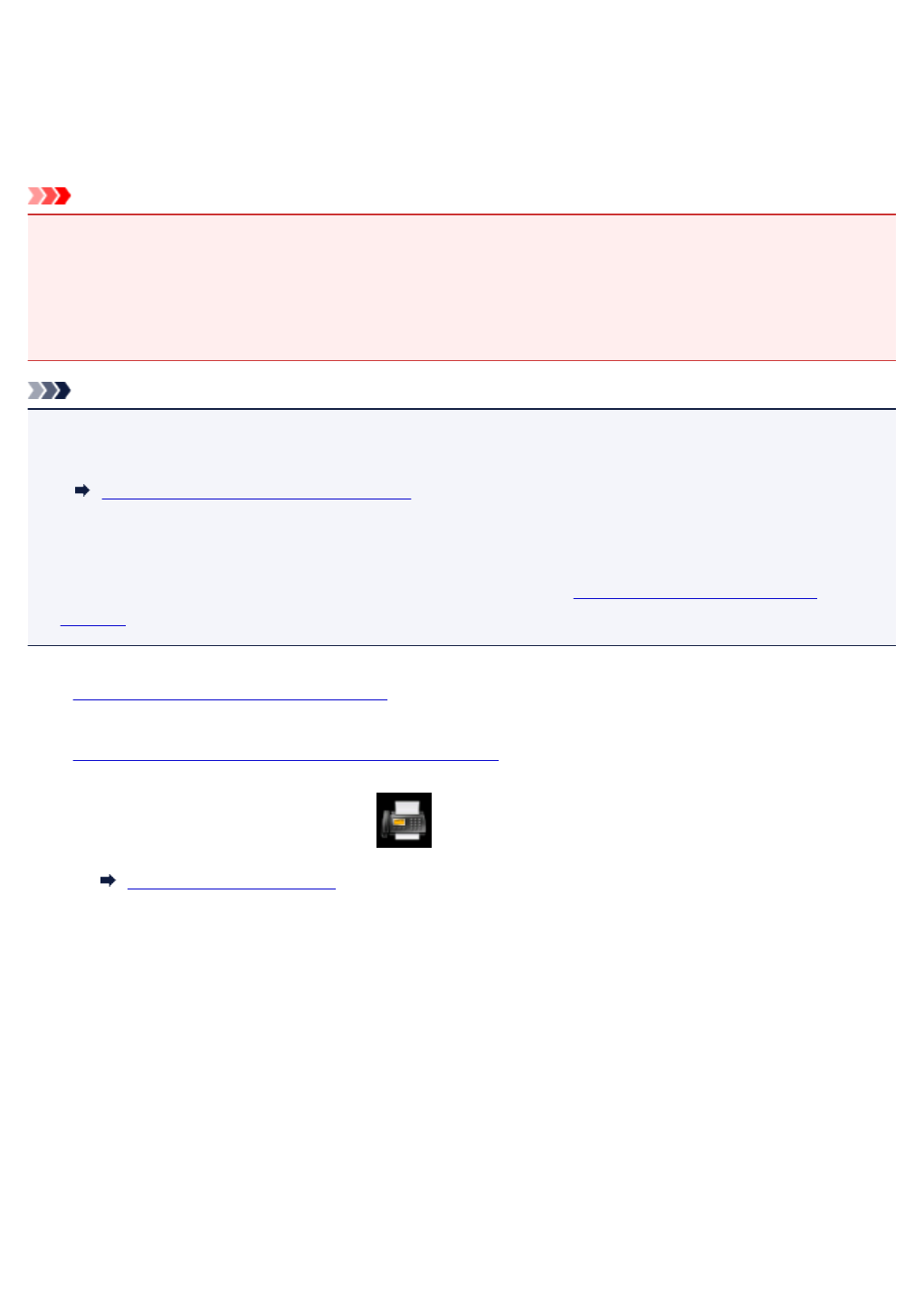
Saving Document in Printer's Memory to USB Flash Drive
You can save the received faxes stored in the printer's memory to the USB flash drive as PDF files using the
operation panel of the printer.
You can save a specified document in the printer's memory to the USB flash drive or save all the documents
in its memory to the USB flash drive at a time.
Important
• Do not remove the USB flash drive from the printer until saving is complete.
• For safety reasons, we recommend backing up faxes saved on a USB flash drive to another media
periodically to avoid unexpected accidents.
• We assume no responsibility for damage to or loss of data for whatever reason even within the warranty
period.
Note
• When saving a specified document, you specify it by its transaction number. If you do not know the
transaction number for your target document, print the list of documents (MEMORY LIST) first.
Printing Document in Printer's Memory
• After saving the fax in the printer's memory to the USB flash drive, the fax is still stored in the printer's
memory.
For details on how to delete the fax in the printer's memory, see Deleting Document in Printer's
Memory.
1. Make sure that printer is turned on.
2. Insert USB flash drive into USB flash drive port.
3. Flick HOME screen, and then tap FAX.
Using the Operation Panel
The Fax standby screen is displayed.
4. Tap Function list.
The Function list screen is displayed.
5. Tap Memory reference.
The memory list is displayed.
1018
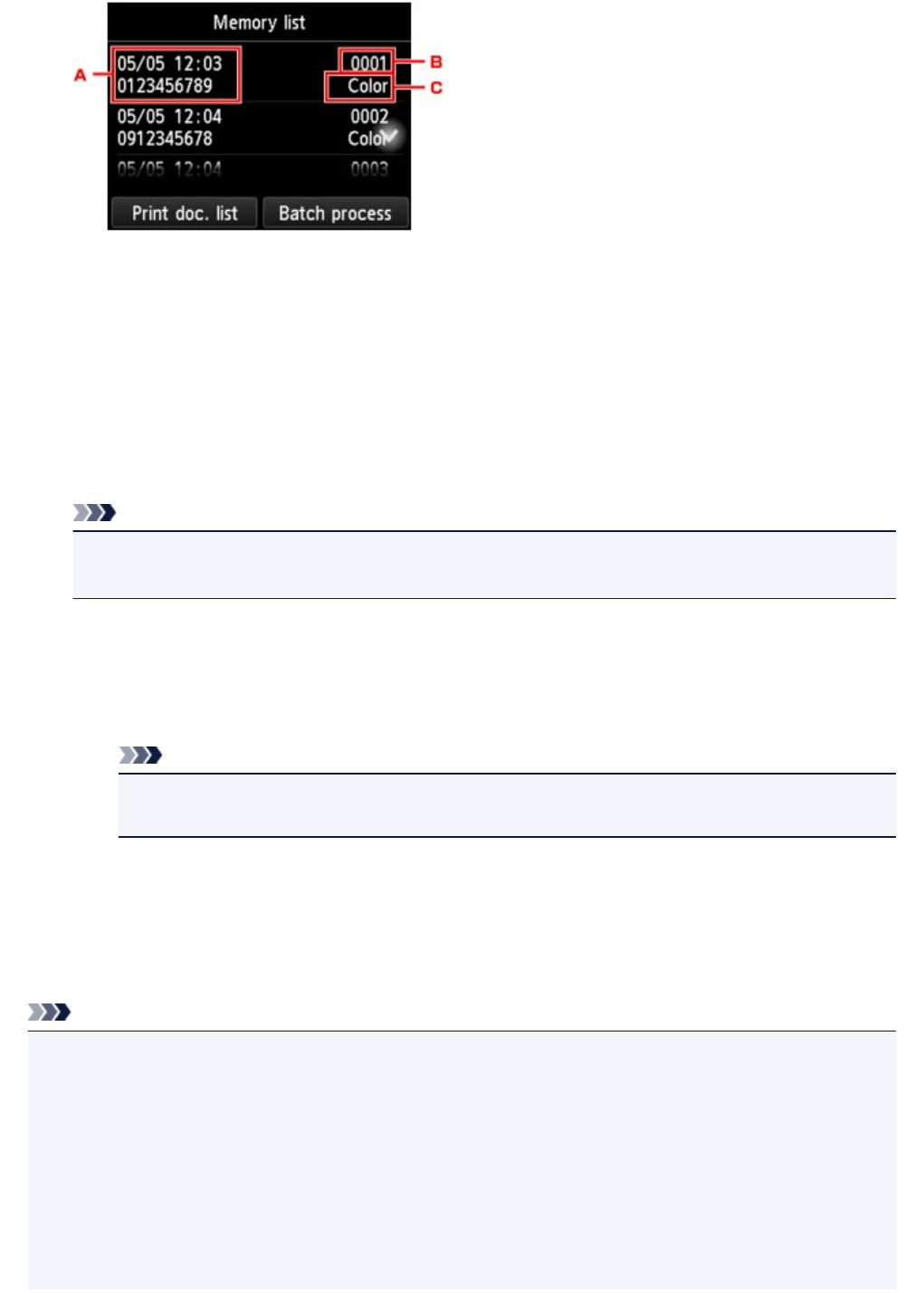
A. Date and time of transaction and fax/telephone number
B. Transaction number (TX/RX NO.)
A transaction number from "0001" to "4999" indicates a document being sent.
A transaction number from "5001" to "9999" indicates a document being received.
C. Color information
Color is displayed for color transmission/reception. Nothing is displayed for black & white
transmission/reception.
Note
• If no document is stored in the printer's memory, There is no document in memory. is displayed.
Tap OK to return to the previous screen.
6. Select a save menu.
• To specify a document to save on the USB flash drive:
Select a document to save on the Memory list screen, tap Save specified document.
Note
• If the specified document is not stored in the printer's memory, There is no document that
can be saved. is displayed. Tap OK to return to the previous screen.
Tap USB flash drive as the destination. The specified document is saved on the USB flash drive.
• To save all the received documents stored in the printer's memory on the USB flash drive:
Tap Batch process, and then tap Save all RX documents.
Tap USB flash drive as the destination. All documents are saved on the USB flash drive.
Note
• You can save up to 250 pages of fax as one PDF file.
• You can save up to 2000 PDF files on a USB flash drive.
• Faxes are saved according to the order of the transaction number when Save all RX documents is
selected.
• If the USB flash drive is removed or becomes full while saving faxes is in progress, the error message is
displayed on the touch screen. Tap OK to dismiss the error.
• The folder and file name of faxes saved on the USB flash drive is as follows:
• Folder name: CANON_SC\FAXDOC\0001
• File name (file extension: PDF): Running numbers, starting from FAX_0001
1019
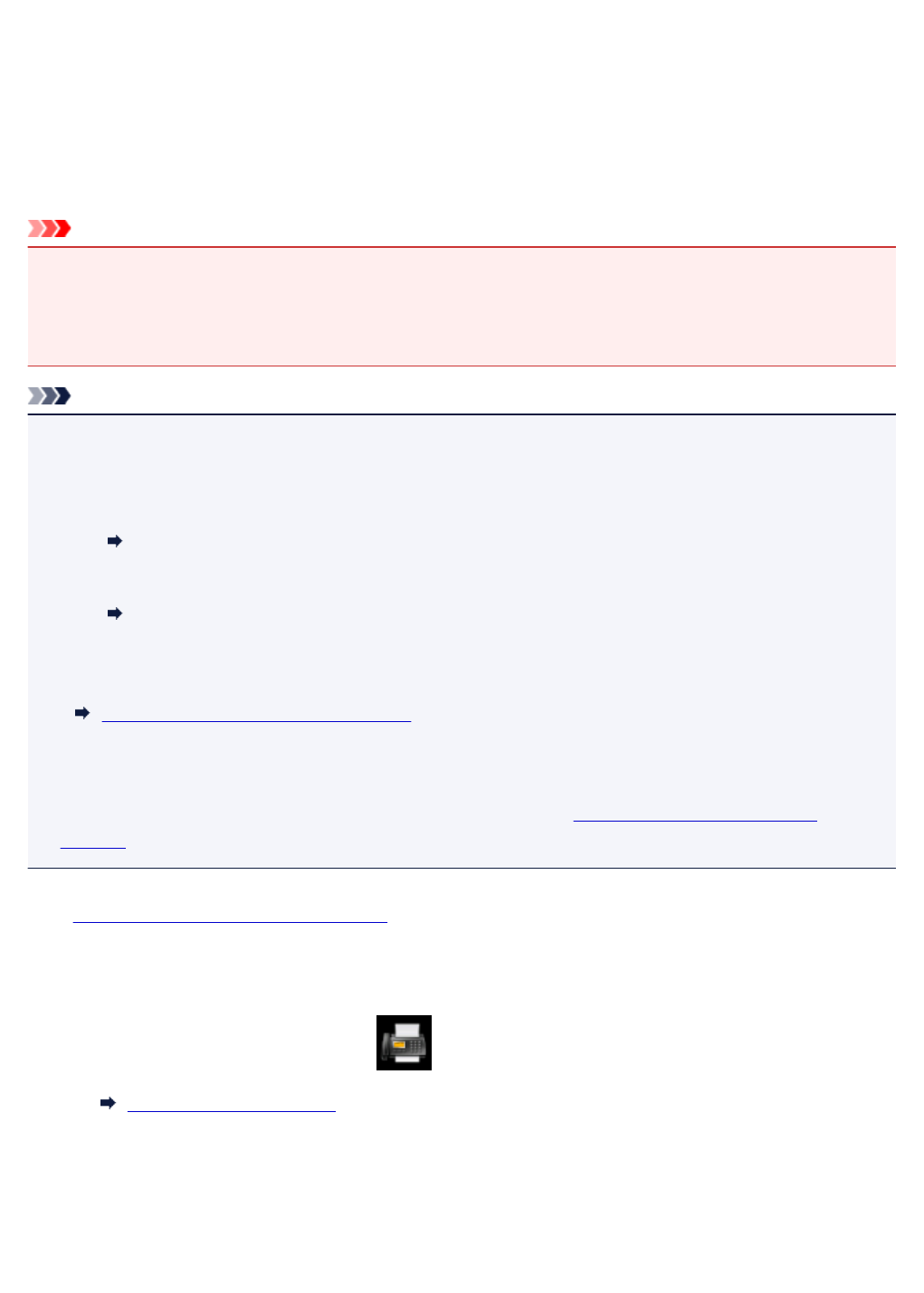
Forwarding Document in Printer's Memory to Shared Folder on
Computer
You can forward the received faxes stored in the printer's memory to the shared folder on the computer as
PDF files using the operation panel of the printer.
You can forward a specified document in the printer's memory to the shared folder on the computer or
forward all the documents in its memory to the shared folder on the computer at a time.
Important
• Do not disconnect the printer with the computer when the printer forwards received faxes to the shared
folder on the computer.
• We assume no responsibility for damage to or loss of data for whatever reason even within the warranty
period.
Note
• Register the destination folder using Quick Utility Toolbox in advance.
For details on how to register the destination folder:
• For Windows:
Destination Folder Settings
• For Mac OS:
Destination Folder Settings
• When forwarding a specified document, you specify it by its transaction number. If you do not know the
transaction number for your target document, print the list of documents (MEMORY LIST) first.
Printing Document in Printer's Memory
• After forwarding the fax in the printer's memory to the shared folder on the computer, the fax is still
stored in the printer's memory.
For details on how to delete the fax in the printer's memory, see Deleting Document in Printer's
Memory.
1. Make sure that printer is turned on.
2. Make sure that printer is connected with destination computer.
3. Flick HOME screen, and then tap FAX.
Using the Operation Panel
The Fax standby screen is displayed.
4. Tap Function list.
The Function list screen is displayed.
1021
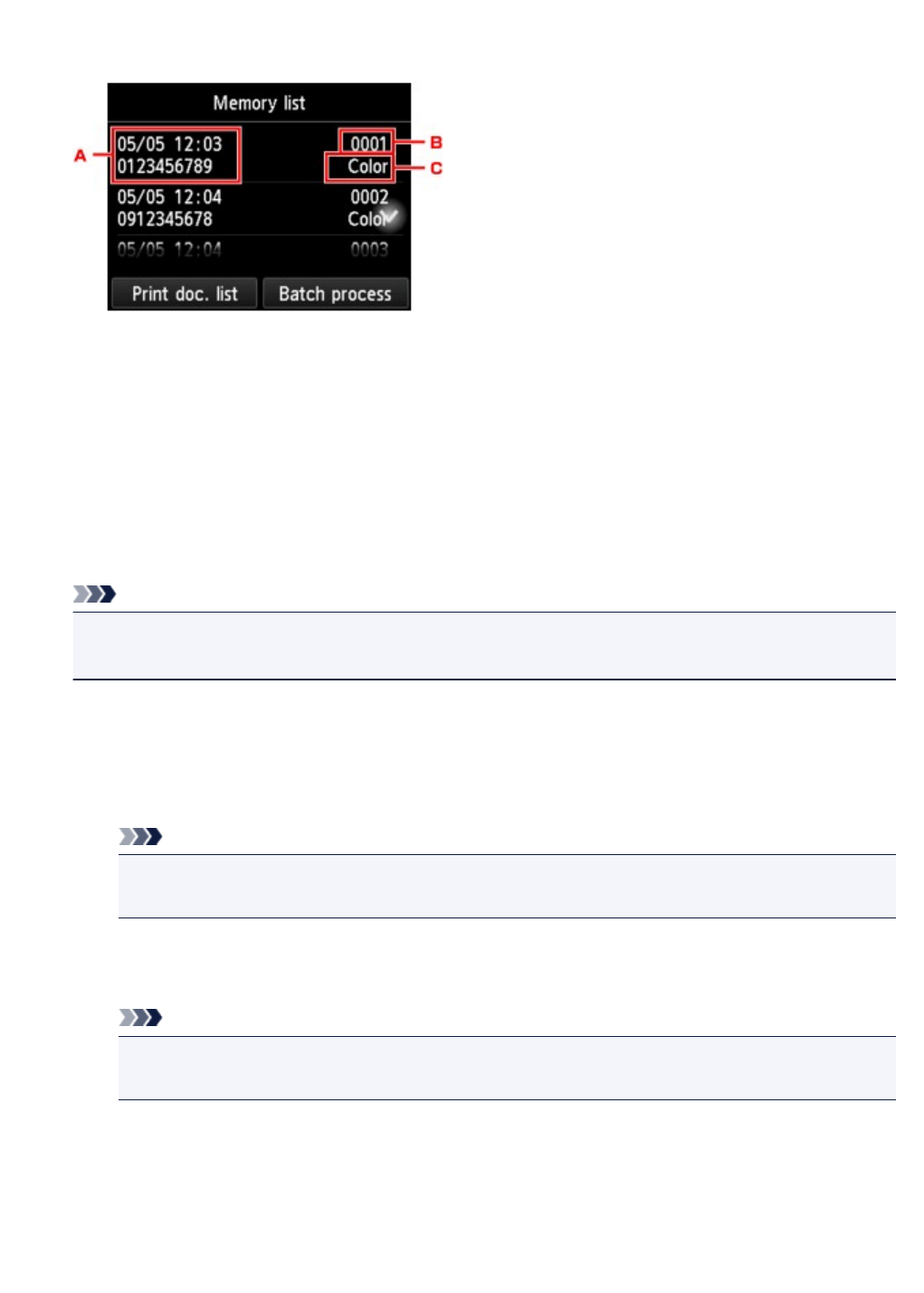
5. Tap Memory reference.
The memory list is displayed.
A. Date and time of transaction and fax/telephone number
B. Transaction number (TX/RX NO.)
A transaction number from "0001" to "4999" indicates a document being sent.
A transaction number from "5001" to "9999" indicates a document being received.
C. Color information
Color is displayed for color transmission/reception. Nothing is displayed for black & white
transmission/reception.
Note
• If no document is stored in the printer's memory, There is no document in memory. is displayed.
Tap OK to return to the previous screen.
6. Select a forward menu.
• To specify a document to forward to the shared folder on the computer:
Select a document to forward on the Memory list screen, tap Save specified document.
Note
• If the specified document is not stored in the printer's memory, There is no document that
can be forwarded. is displayed. Tap OK to return to the previous screen.
Tap Destination folder as the destination.
Tap a destination folder to forward the specified document to the shared folder on the computer.
Note
•When you specify a PIN code for a registered folder, a screen asking you to enter a PIN code
is displayed. Entering the PIN code allows you to assign the shared folder as the destination.
•To forward all the received documents stored in the printer's memory to the shared folder on the
computer:
Tap Batch process, and then tap Save all RX documents.
Tap Destination folder as the destination.
Tap a destination folder to forward all documents to the shared folder on the computer.
1022
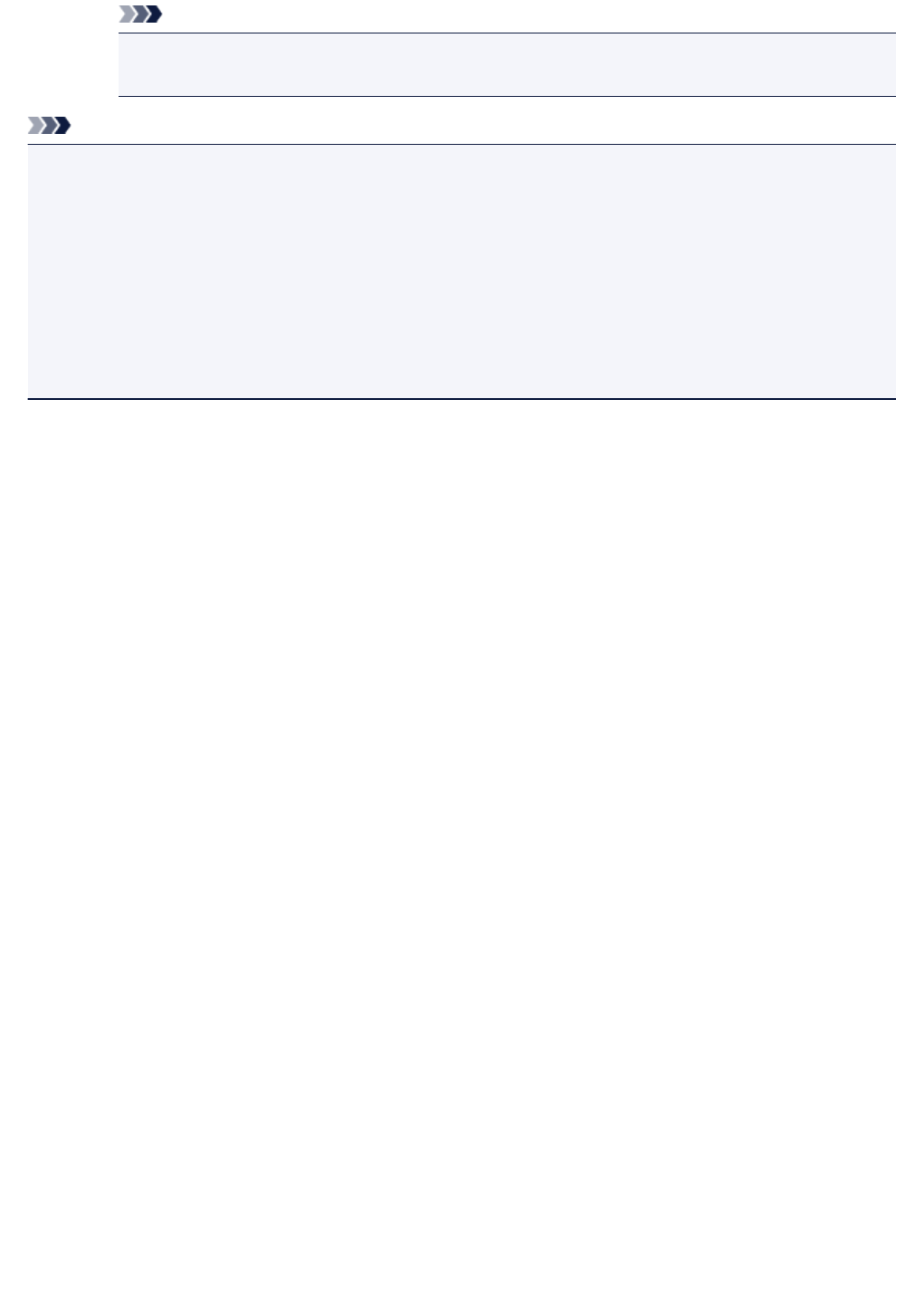
Note
• When you specify a PIN code for a registered folder, a screen asking you to enter a PIN code
is displayed. Entering the PIN code allows you to assign the shared folder as the destination.
Note
• You can forward up to 250 pages of fax as one PDF file.
• You can forward up to 2000 PDF files on a USB flash drive.
• Faxes are forwarded according to the order of the transaction number when Save all RX documents is
selected.
• If the printer is disconnected with the computer or if the writing error occurs on the computer while
forwarding faxes is in progress, the error message is displayed on the touch screen. Tap OK to dismiss
the error.
• The faxes forwarded to the shared folder are named with the serial number from FAX_0001 (file
extension: PDF).
1023
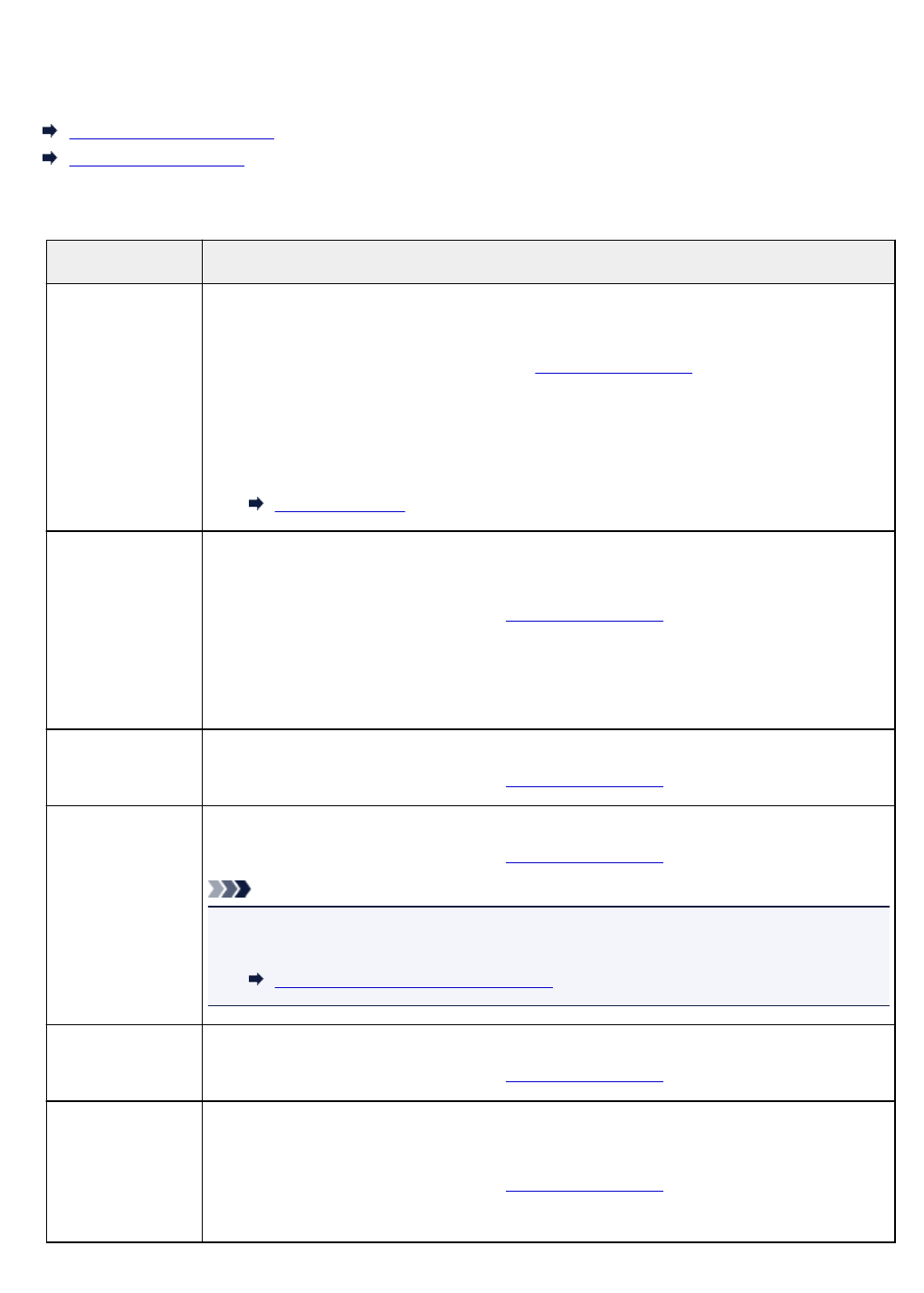
Summary of Reports and Lists
The printer prints the report of sending or receiving a fax automatically. You can print the list of the fax/
telephone number or the current settings.
Type of Reports and Lists
Printing Report or List
Type of Reports and Lists
Report or List Description
ACTIVITY RE-
PORT
Shows recent fax transactions at sight.
• You can print ACTIVITY REPORT manually.
For details on the procedure to print, see Printing Report or List.
• The * (asterisk) is appended to the history already printed on ACTIVITY REPORT.
• If you select Print for Activity report in Auto print settings under FAX settings, the
printer prints ACTIVITY REPORT for the 20 histories of sent and received faxes automati-
cally.
Auto print settings
Directory list
• RECIPIENT
TELEPHONE
NUMBER LIST
• GROUP DIAL
TELEPHONE
NO. LIST
Lists the numbers and names registered.
You can print the lists of the recipient and group dial.
For details on the procedure to print, see Printing Report or List.
USER'S DATA LIST Lists the current settings of the printer and the registered sender information.
For details on the procedure to print, see Printing Report or List.
MEMORY LIST Lists the documents currently stored in the printer's memory.
For details on the procedure to print, see Printing Report or List.
Note
•After selecting Memory reference to display the Memory list screen, you can print MEM-
ORY LIST by tapping Print doc. list.
Printing Document in Printer's Memory
REJECTED NUM-
BER LIST
Lists the rejected numbers.
For details on the procedure to print, see Printing Report or List.
CALLER HISTORY Lists the caller history.
This list is available when Caller ID service is subscribed.
For details on the procedure to print, see Printing Report or List.
This list may not be supported depending on the country or region of purchase.
1024
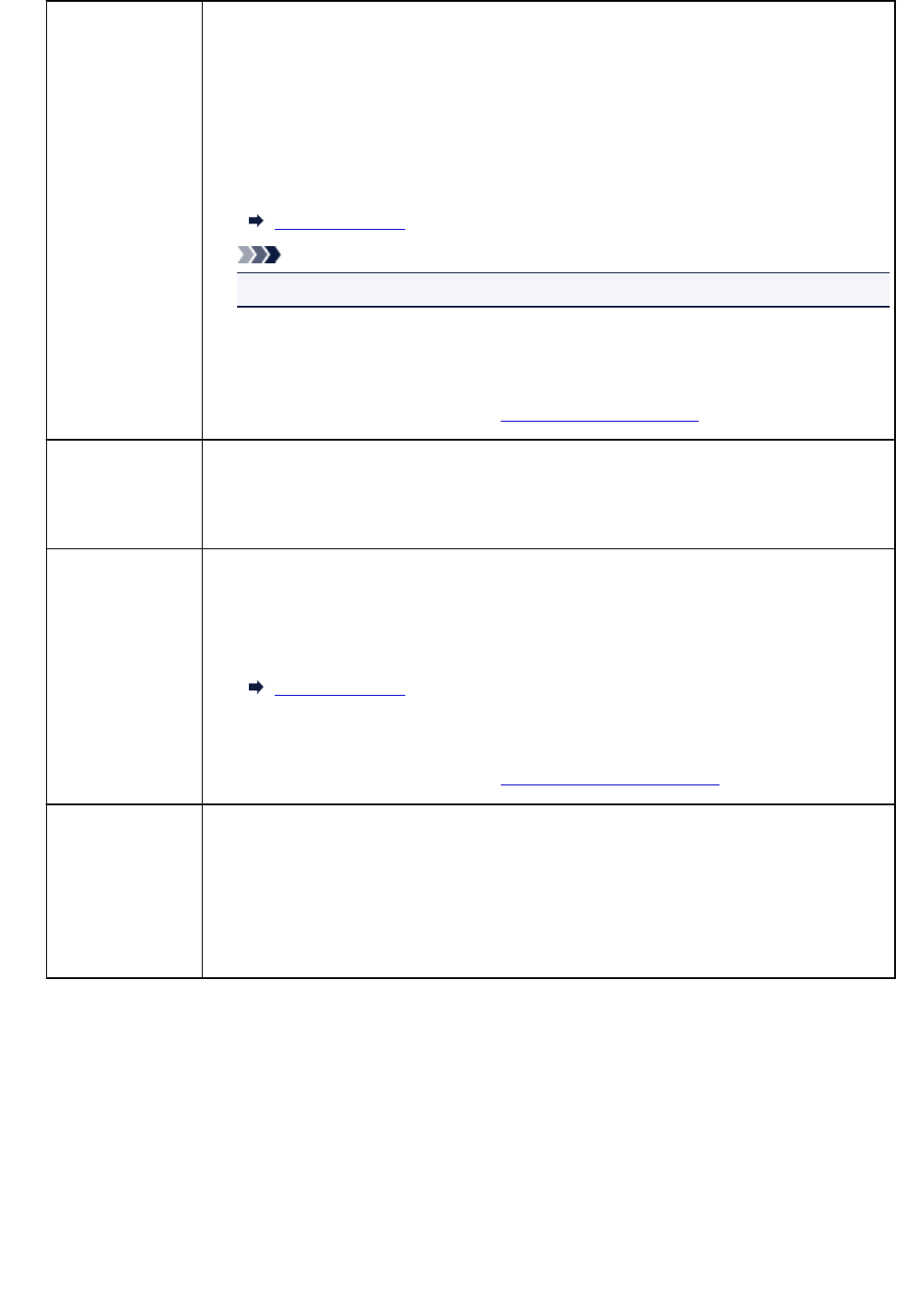
TX REPORT/ER-
ROR TX REPORT
Either of these reports is printed after each fax transmission.
• At the time of purchase, ERROR TX REPORT is set to be printed only when a transmis-
sion error occurred.
You can set the printer to print TX REPORT each time it sends a document, or disable
printing of the report by selecting TX report in Auto print settings under FAX settings.
You can also specify the print setting so that the first page of the fax is printed along with
the report.
Auto print settings
Note
• The first page of the fax is not printed in color transmission.
•MULTI TRANSMISSION REPORT is printed after sequential broadcasting of a document.
•If an error occurs when you send a fax, the error number is printed on ERROR TX RE-
PORT (there are some errors for which the cause is also printed).
For details on the error number, see Errors When You Send Fax.
MULTI TRANSMIS-
SION REPORT
This report is printed after sequential broadcasting of a document.
Confirms whether the transmission to all the recipients has been completed successfully.
The procedure to print and the error number is same as TX REPORT.
RX REPORT This report is printed after each fax reception.
• At the time of purchase, the printer is set so that RX REPORT is not printed at all.
You can set the printer to print RX REPORT each time it receives a document, or only
when an error occurs by selecting RX report in Auto print settings under FAX settings.
Auto print settings
• If an error occurs when you receive a fax, the error number is printed on RX REPORT
(there are some errors for which the cause is also printed).
For details on the error number, see Errors When You Receive Fax.
MEMORY CLEAR
REPORT
Lists the deleted faxes in the printer's memory if the faxes stored in the printer's memory are
deleted by a power failure or unplugging the power cord.
When the printer is turned on, The power cord has been unplugged and unsent/received
docs in memory have been lost. Load paper and tap [OK] to print a list of the lost docs.
is displayed on the touch screen. MEMORY CLEAR REPORT is printed by tapping OK on the
touch screen.
Printing Report or List
This section describes the procedure to print the report or the list manually.
Print the following report or list manually.
•ACTIVITY REPORT
•Directory list (RECIPIENT TELEPHONE NUMBER LIST/GROUP DIAL TELEPHONE NO. LIST)
•USER'S DATA LIST
•MEMORY LIST
•REJECTED NUMBER LIST
•CALLER HISTORY
1025
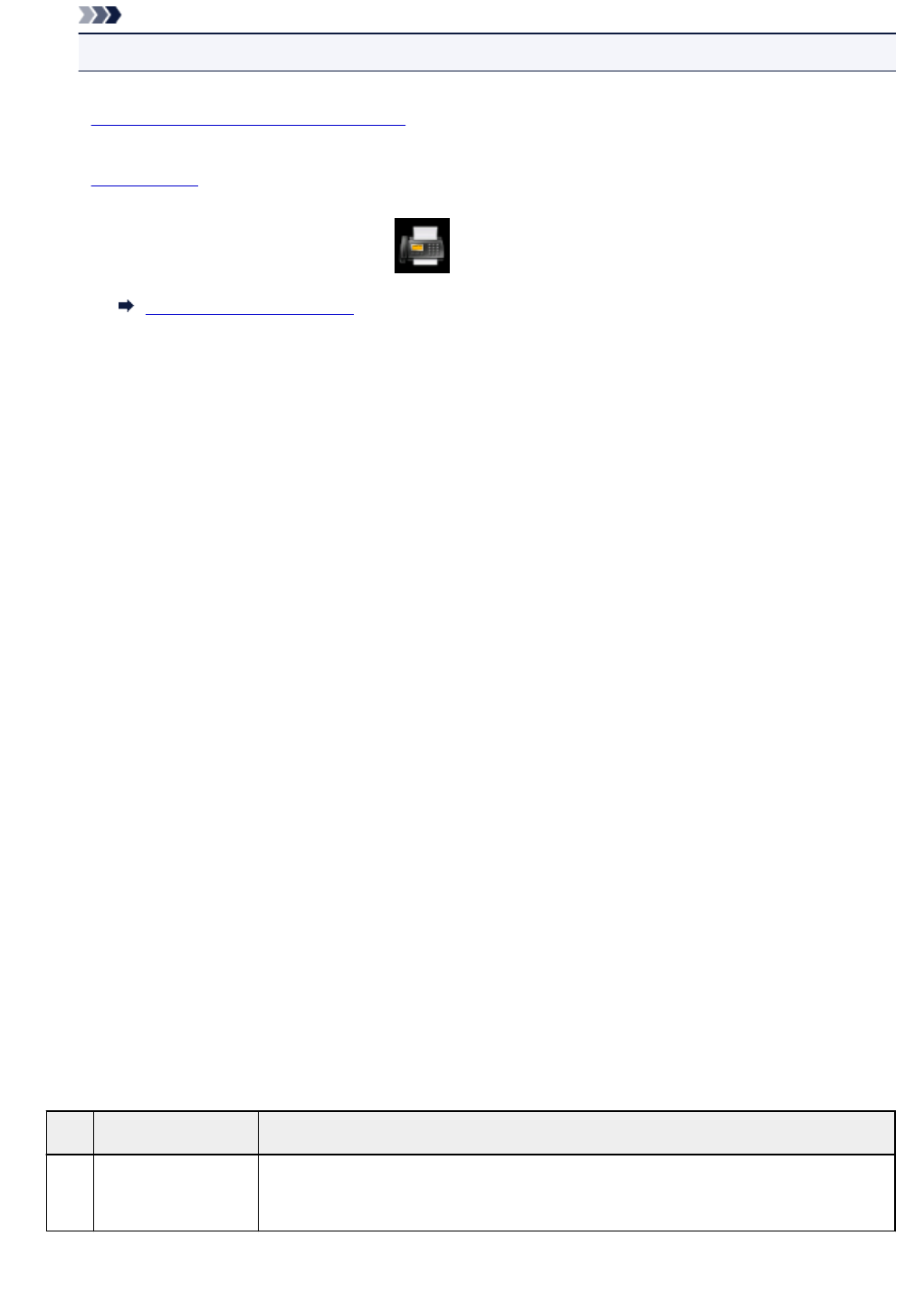
Note
• CALLER HISTORY may not be supported depending on the country or region of purchase.
1. Make sure that printer is turned on.
2. Load paper.
3. Flick HOME screen, and then tap FAX.
Using the Operation Panel
The Fax standby screen is displayed.
4. Tap Function list.
The Function list screen is displayed.
5. Tap Print reports/lists.
6. Select a report or a list you want to print to start printing.
• When you select Directory list:
Select Recipient or Group dial.
If you select Recipient, select whether to print RECIPIENT TELEPHONE NUMBER LIST in
alphabetical order. If you select Yes, the printer prints RECIPIENT TELEPHONE NUMBER LIST
in alphabetical order. If you select No, the printer prints RECIPIENT TELEPHONE NUMBER
LIST in numerical order.
If you select Group dial, the confirmation screen is displayed. Select Yes. The printer prints
GROUP DIAL TELEPHONE NO. LIST.
• When you select an item other than Directory list:
Select Yes when the confirmation screen is displayed.
The printer prints the selected report or list.
Errors When You Send Fax
If an error occurs when you send a fax, the error number is printed on ERROR TX REPORT or ACTIVITY
REPORT (there are some errors for which the cause is also printed).
The causes corresponding to the error numbers are as follows.
No. Cause Action
#001 Document is jammed
in the ADF.
The document is jammed in the ADF.
When the error is cleared, redo the operation.
1026
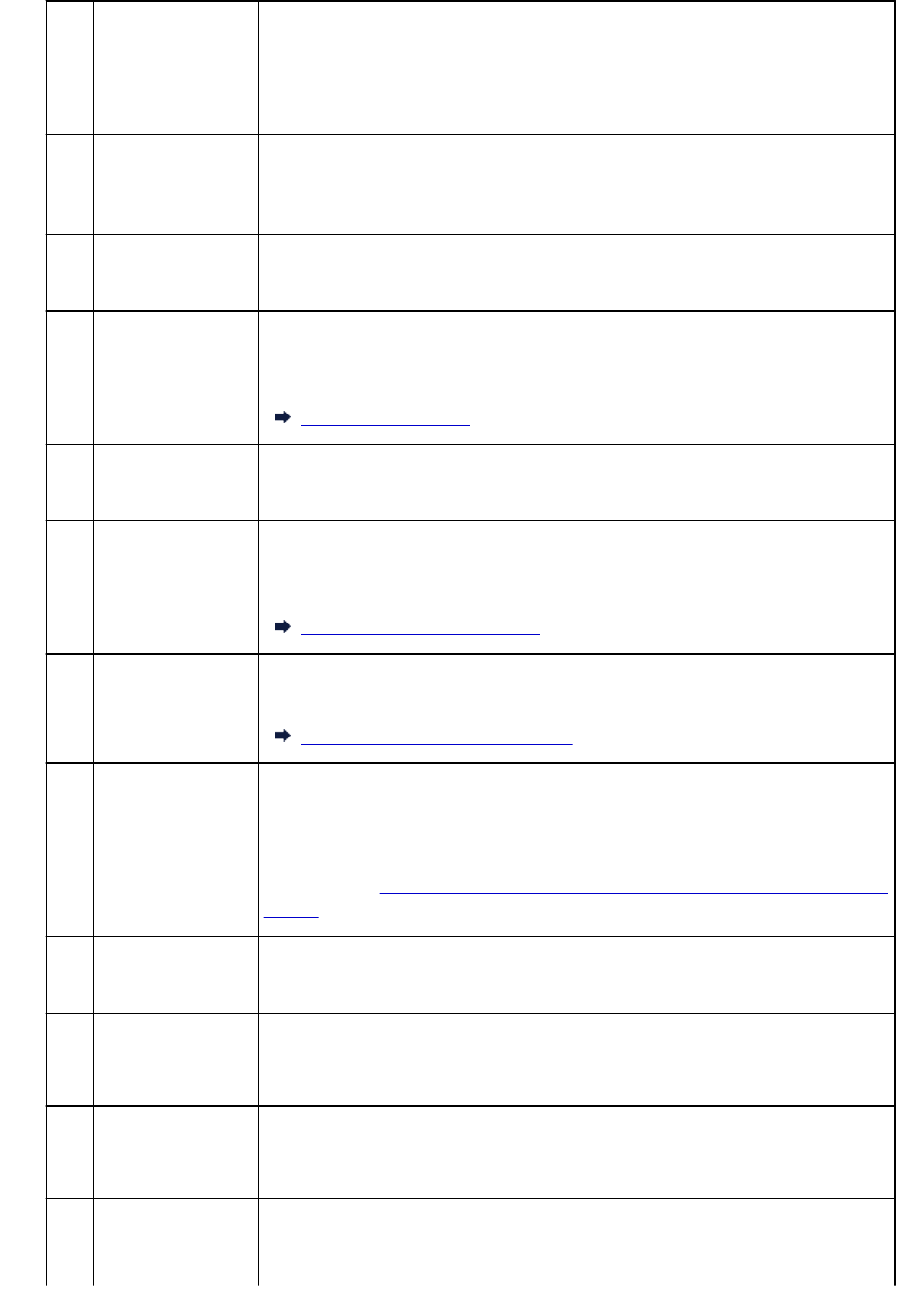
#003 Document is too
long.
You attempted to send a document longer than 15.75 inches / 400 mm.
You cannot send a document longer than 15.75 inches / 400 mm from the ADF.
"#003" is also printed if it takes time to send a page. Divide the document or set the
image quality (Fax resolution) to a lower setting, and then resend it.
#005 No answer. The recipient's fax device does not respond.
Contact the recipient and have the recipient check that the telephone line is connected
correctly.
#012 No paper is in the re-
cipient's fax device.
There is no paper in the recipient's fax device.
Contact the recipient and have the recipient load paper.
#017 No tone is detected. The printer could not detect the dial tone.
Dial tone detect in Advanced FAX settings under FAX settings is set to ON. Set to
OFF.
Advanced FAX settings
#018 Line was busy. The fax/telephone number you dialed is busy.
Try dialing again after waiting for a moment.
#022 Number is deleted. The fax/telephone number registered in the printer's directory is incorrect.
Check the recipient's fax/telephone number, correct the fax/telephone number regis-
tered in the printer's directory, and then send the document again.
Changing Registered Information
#037 Memory is full. The printer could not send a fax because its memory is full.
Delete contents in memory, and then send a fax again.
Document Stored in Printer's Memory
#059 Transmission has
been canceled due
to a fax information
mismatch.
Transmission has been canceled because the printer could not detect the recipient's
fax device information or the information did not match the dialed number. This mes-
sage is displayed when Check RX FAX information in Security control under FAX
settings is set to ON.
For details, see Sending Faxes after Checking Information (Checking Recipient's Infor-
mation).
#085 Try again in black &
white transmission.
The recipient's fax device is not color-compatible.
Resend the document in black & white.
#099 The Stop button was
pressed during
transmission.
The Stop button was pressed to cancel transmission of the document. Resend it if
necessary.
#412 The fax could not be
sent from the com-
puter.
The fax could not be sent from the computer. Ensure that the printer is connected with
the computer correctly and redo operation.
#995 The unsent fax was
deleted while auto-
matic redialing.
While automatic redialing, the unsent fax is stored in the printer's memory temporarily
until the sending fax is complete. If a power failure occurs or you unplug the power
1027
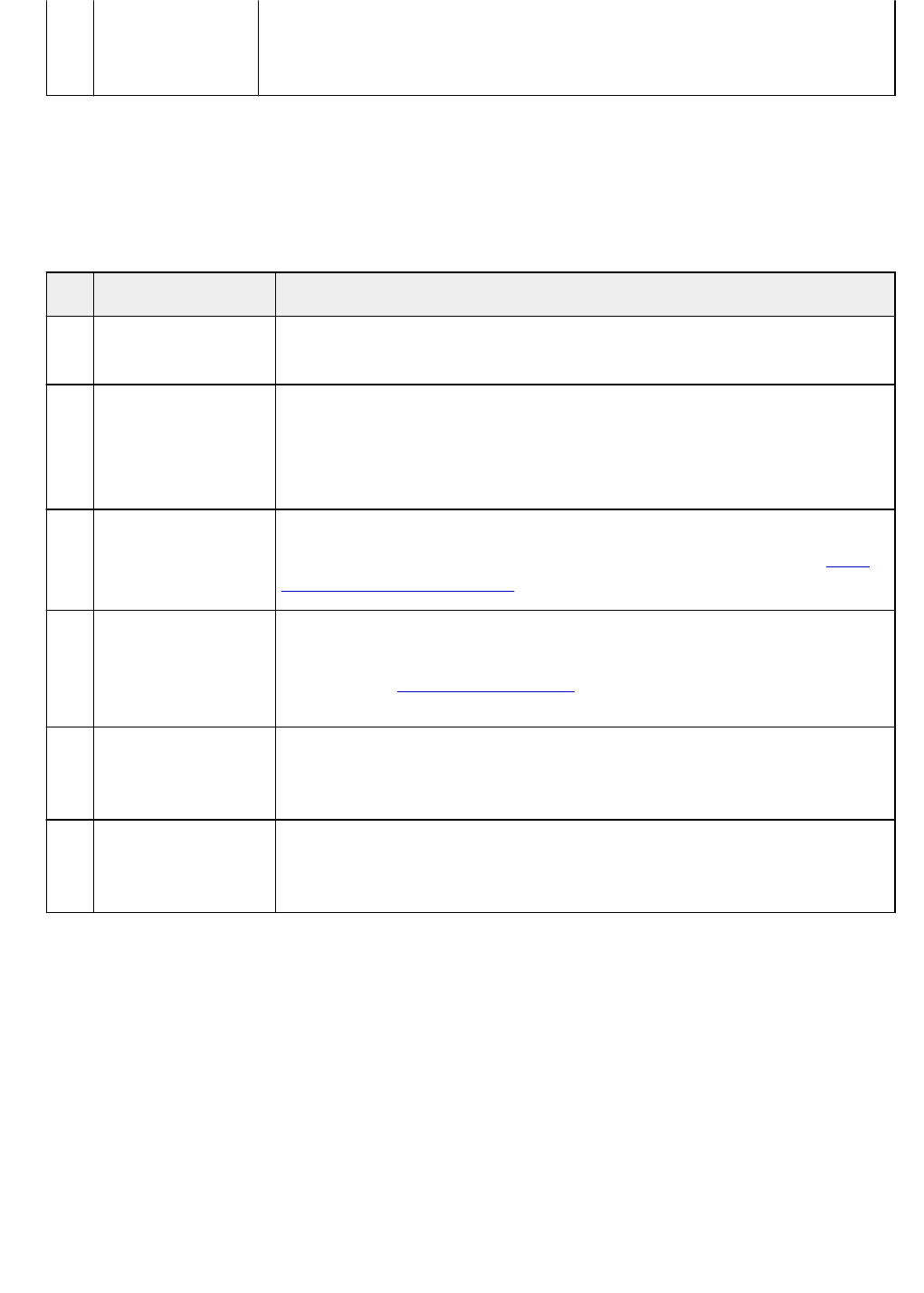
cord before automatic redialing is complete, all faxes stored in the printer's memory
are deleted and not sent.
Resend the document.
Errors When You Receive Fax
If an error occurs when you receive a fax, the error number is printed on RX REPORT or ACTIVITY
REPORT (there are some errors for which the cause is also printed).
The causes corresponding to the error numbers are as follows.
No. Cause Action
#003 It takes too long to re-
ceive a page.
Contact the sender and have the sender divide the fax or set the image quality (Fax
resolution) to a lower setting and resend it.
#005 No answer. When receiving a fax manually, the printer could not detect the signals from the
sender's fax device.
Contact the sender and have the sender resend it, or set the printer to receive the
fax automatically.
#037 Memory is full. The printer could not receive a fax because its memory is full.
Delete contents in memory, and then ask the sender to resend the fax. See Docu-
ment Stored in Printer's Memory.
#046 Reception has been re-
jected due to the speci-
fied fax rejection condi-
tion.
Reception has been rejected because the fax matches the fax rejection condition
specified by FAX reception reject in Security control under FAX settings.
For details, see Rejecting Fax Reception.
#099 The Stop button was
pressed during recep-
tion.
The Stop button was pressed to cancel reception of the fax. Contact the sender and
have the sender resend it if necessary.
#995 The received fax was
deleted.
The received fax was deleted before being saved to the USB flash drive, forwarded
to the shared folder on the computer, or printed. Contact the sender and have the
sender resend it if necessary.
1028
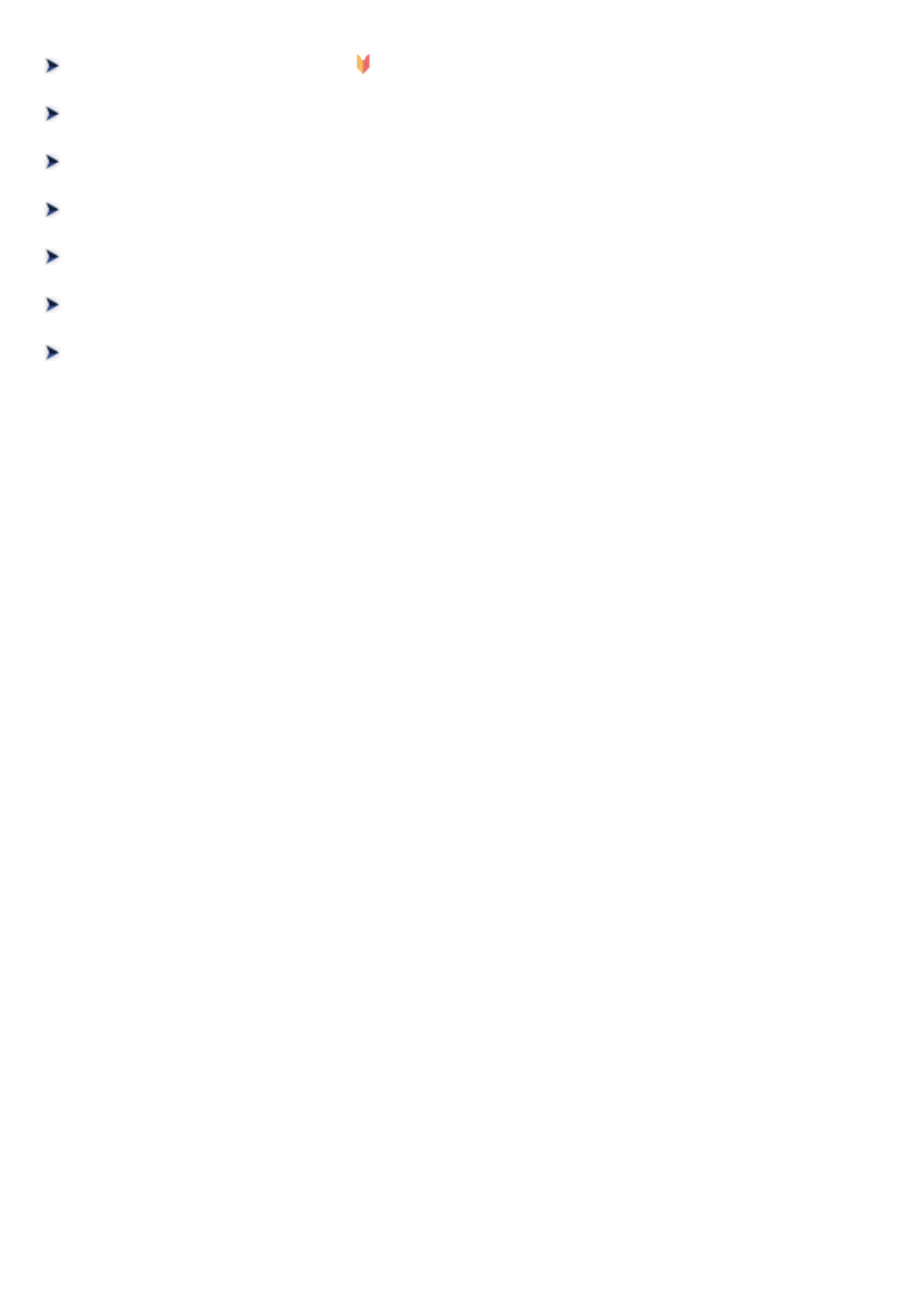
Sending Faxes from Computer (Windows)
Sending a FAX (Fax Driver) Basic
Creating an Address Book (Fax Driver)
Edit or Remove a Recipient from an Address Book (Fax Driver)
Search for a Recipient in an Address Book (Fax Driver)
Cannot Send Faxes from Computer
How to Open the Setting Screen of the Fax Driver
General Notes (Fax Driver)
1029
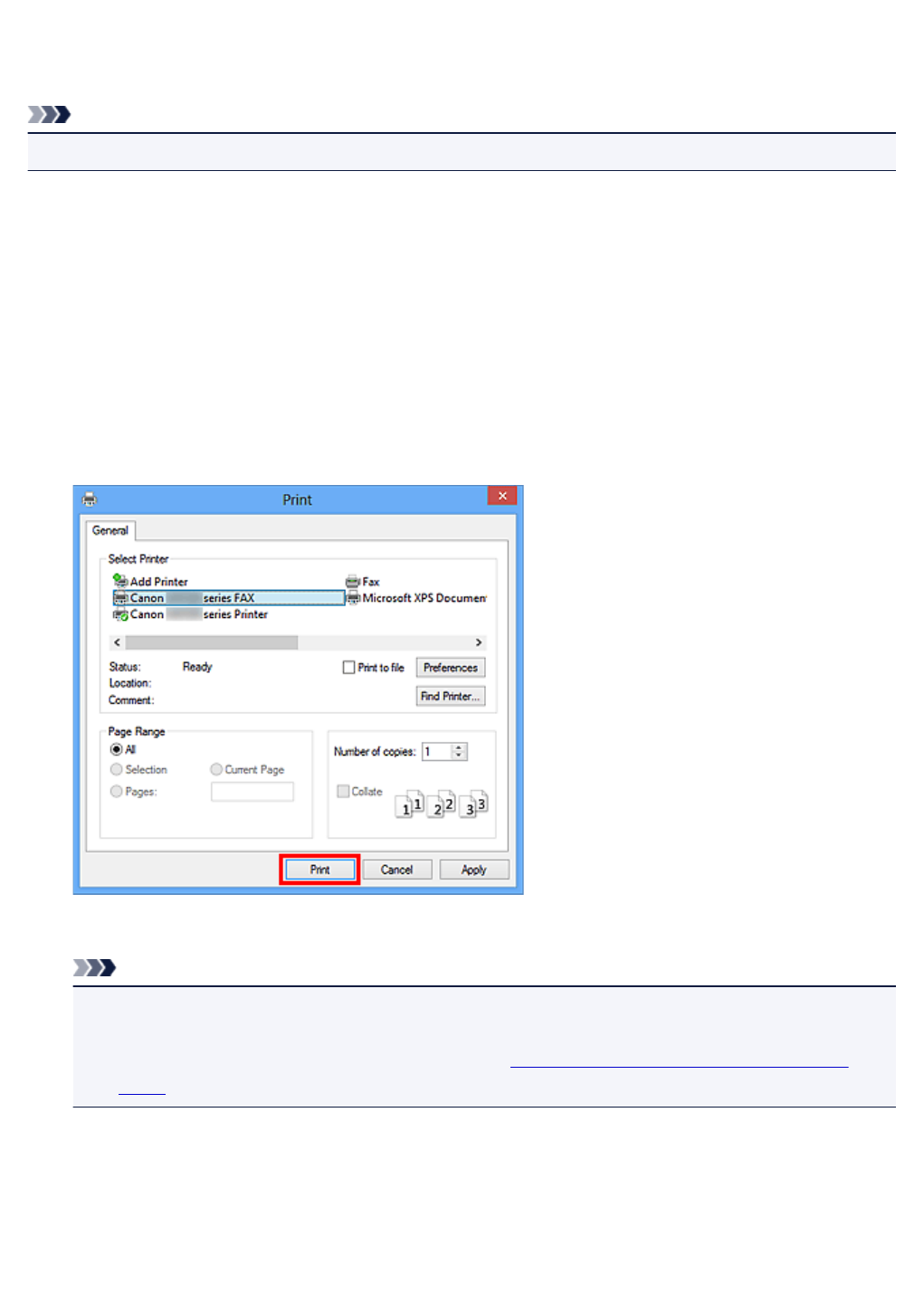
Sending a FAX (Fax Driver)
You can send faxes using the fax driver from applications that support document printing.
Note
• Only black and white transmission is supported.
1. Make sure that the machine is turned on.
2. Open the document you want to fax with an application (such as Notepad), and then click
the Print command. (The command is Print... on the File menu.)
3. In Select Printer or Name in the Print dialog box, select Canon XXX series FAX (where
"XXX" is the model name).
4. Click Print or OK.
* Print dialog box in Notepad
Note
•Click Preferences or Properties in the Print dialog box to open the print settings dialog box of
the fax driver in which you can set the paper size and print orientation. For details on how to open
the print settings dialog box of the fax driver, see "How to Open the Setting Screen of the Fax
Driver."
5. Click Display Address Book... in Set Recipient in the Send FAX dialog box.
1030
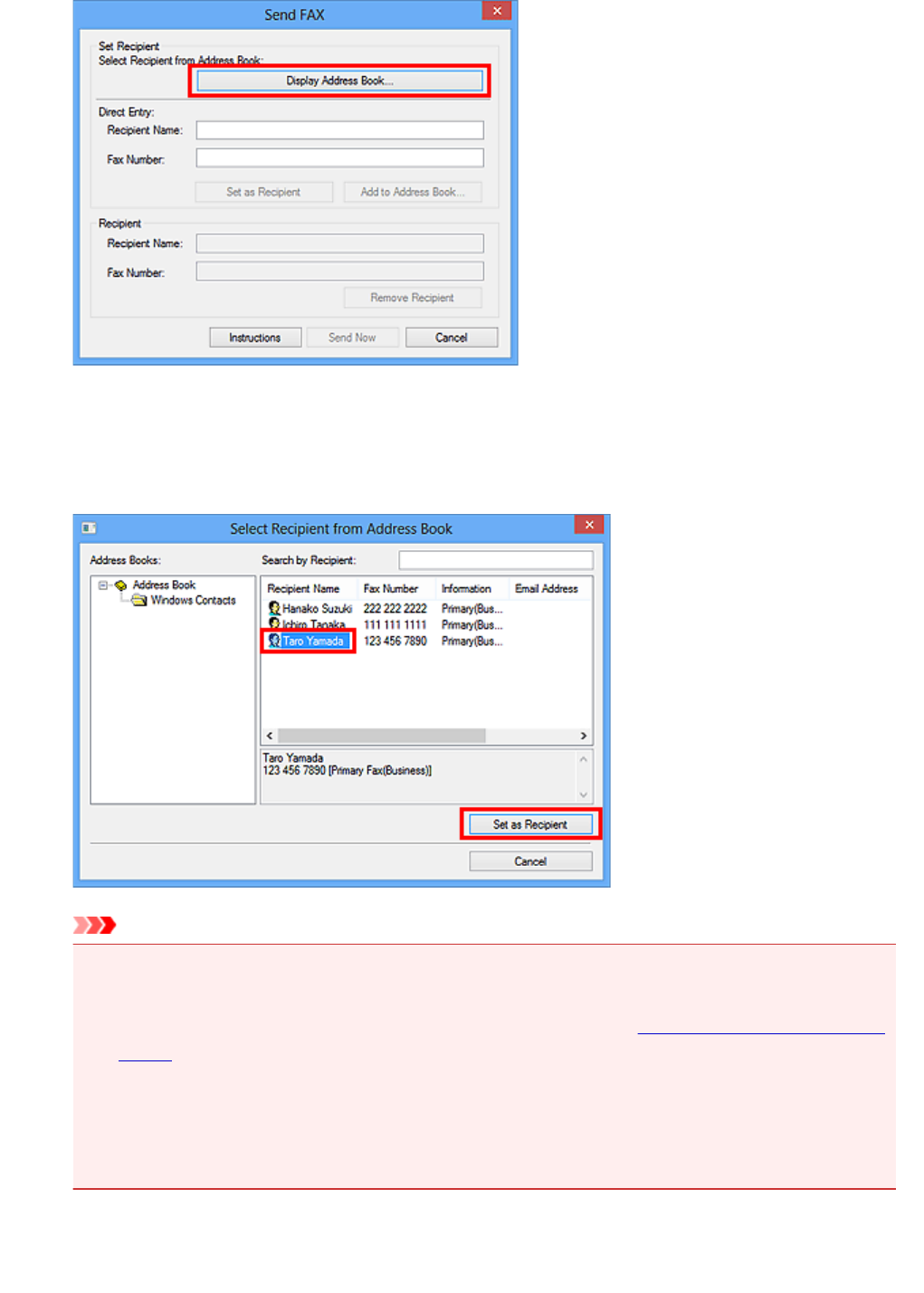
6. Select a recipient from Recipient Name in the Select Recipient from Address Book
dialog box, then click Set as Recipient.
The selected recipient is reflected in Recipient in the Send FAX dialog box.
Important
•You cannot specify a recipient if there is no recipient registered in the address book. Register the
recipient in the address book and reopen the address book.
For details on how to register recipients in the address book, see "Creating an Address Book (Fax
Driver)."
•If the recipient's fax/telephone number is entered incorrectly or the registered fax/telephone
number is incorrect, the fax may be sent to an unexpected recipient. When sending an important
fax, it is recommended that you send it after confirming the entered information and recipient's
status.
1031
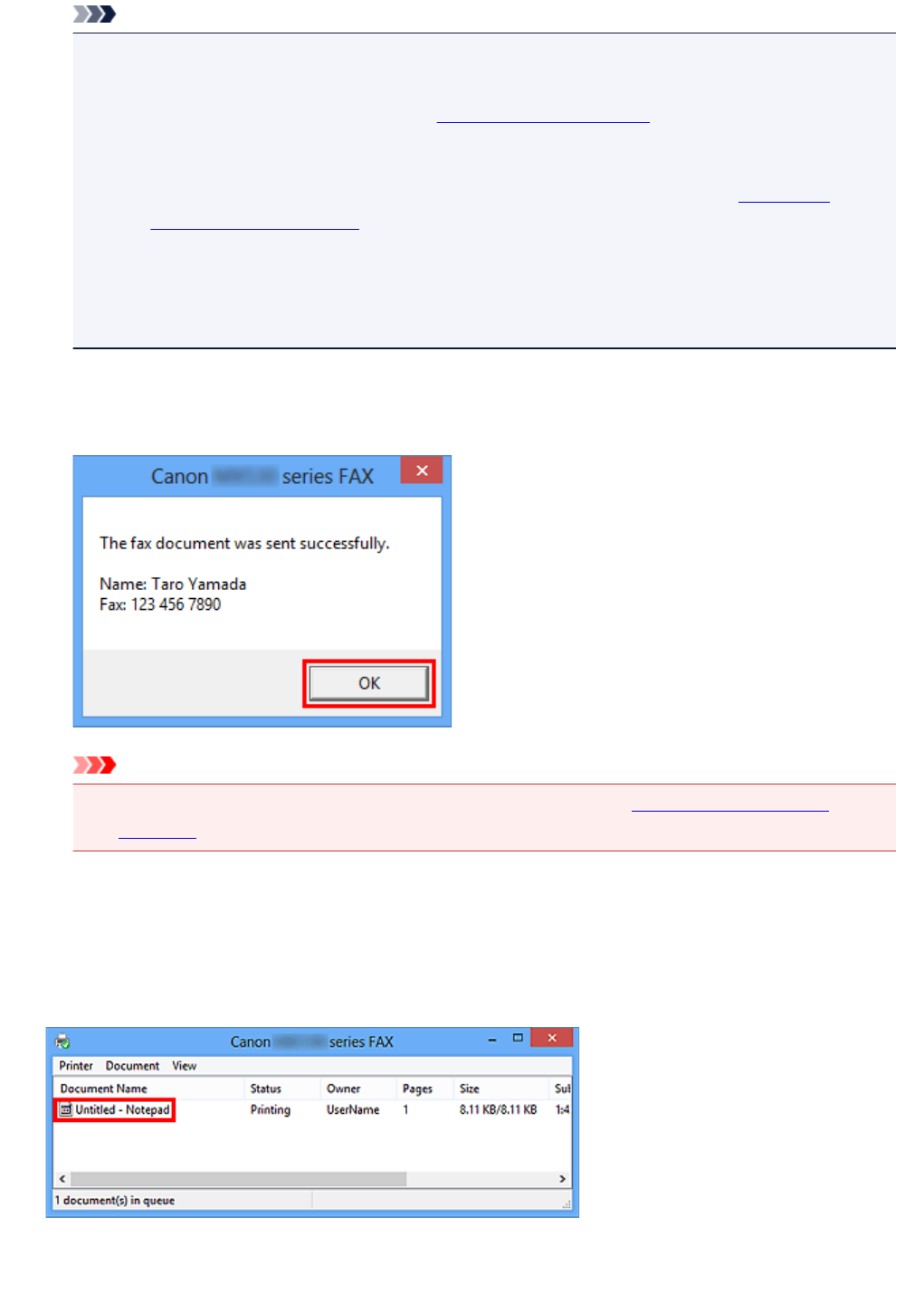
Note
• You can also specify Recipient by entering the Recipient Name and Fax Number in Direct
Entry in the Send FAX dialog box and then clicking Set as Recipient.
• For details on valid characters, see "General Notes (Fax Driver)."
• You can send faxes even if only the Fax Number is entered.
• You can register the recipient you entered to the address book by clicking Add to Address
Book.... For details on how to register recipients in the address book, see "Creating an
Address Book (Fax Driver)."
•Add the outside line access number before the fax number as needed.
(Example: When the outside line access number is "0" and the fax number is "XXX-XXXX", enter
"0XXX-XXXX".)
7. Click Send Now.
When a confirmation message is displayed, click OK.
Important
• If you cannot send a fax due to line failure or other problem, see "Cannot Send Faxes from
Computer."
Canceling Transmission
If you click Send Now in the Send FAX dialog box, the printer icon is displayed in the taskbar. Double-
click this icon to display the list of fax jobs awaiting transmission or being sent.
Right-clicking a job and selecting Cancel stops transmission.
1032
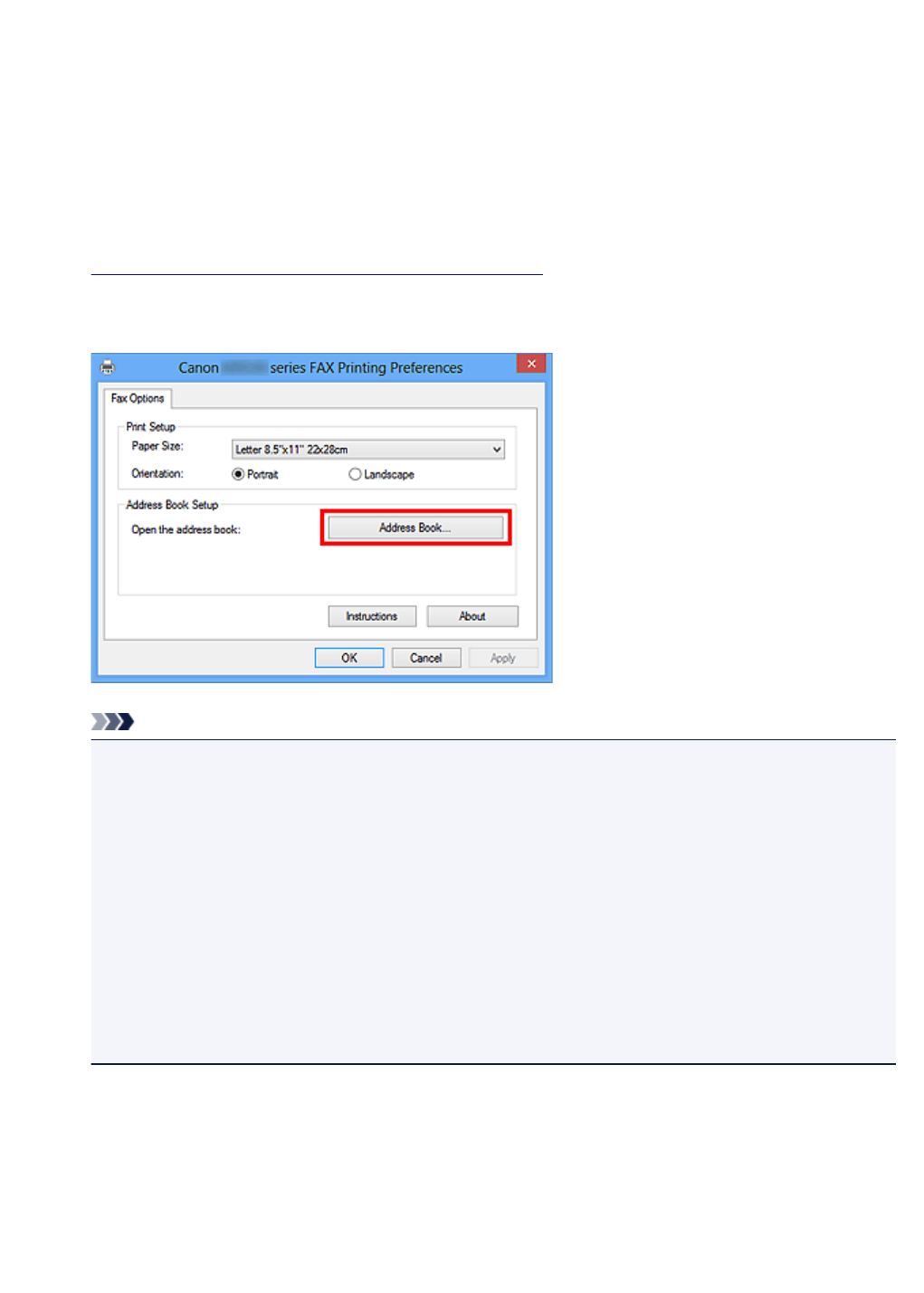
Creating an Address Book (Fax Driver)
By using the address book, you can send a fax by simply specifying a recipient from it.
You can register the recipient's name, fax number and other information in the address book.
Registering a recipient (WAB contact) in the address book
You can register an individual recipient (Contact) in the address book.
1. Open the print settings dialog box of the fax driver.
2. Click Address Book... in the displayed dialog box.
Note
•Once an individual recipient (Contact) is registered in the address book folder (Windows
Contacts) as an address book file (.contact file), it can be used in multiple applications.
However, you cannot change the address book you use, as only one address book can be
created per user.
Follow the steps below to open Windows Contacts.
•Windows 8.1/Windows 8:
Select the Search charm, then search for "Contacts".
•Windows 7/Windows Vista:
Select XXXX (user name) from the Start menu, then double-click Contacts.
3. In the Address Book dialog box, click New....
1033
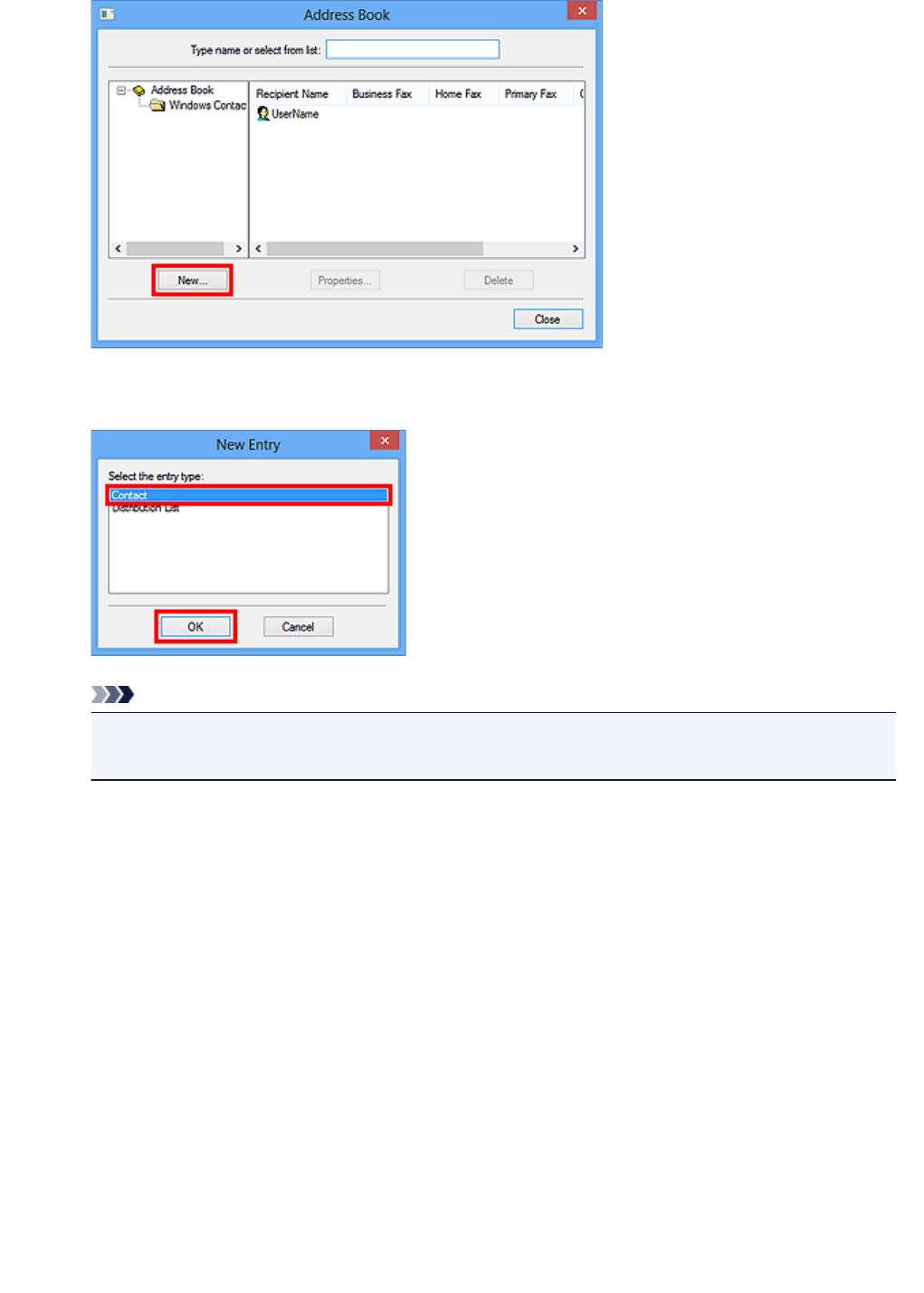
4. Select Contact in the New Entry dialog box, then click OK.
Note
• For faxing, you can only specify the Contact (one recipient). You cannot specify a Distribution
List.
5. On Name and E-mail tab of Properties dialog box, enter First and Last.
The recipient's name will be printed at the top of the fax received by the recipient.
1034
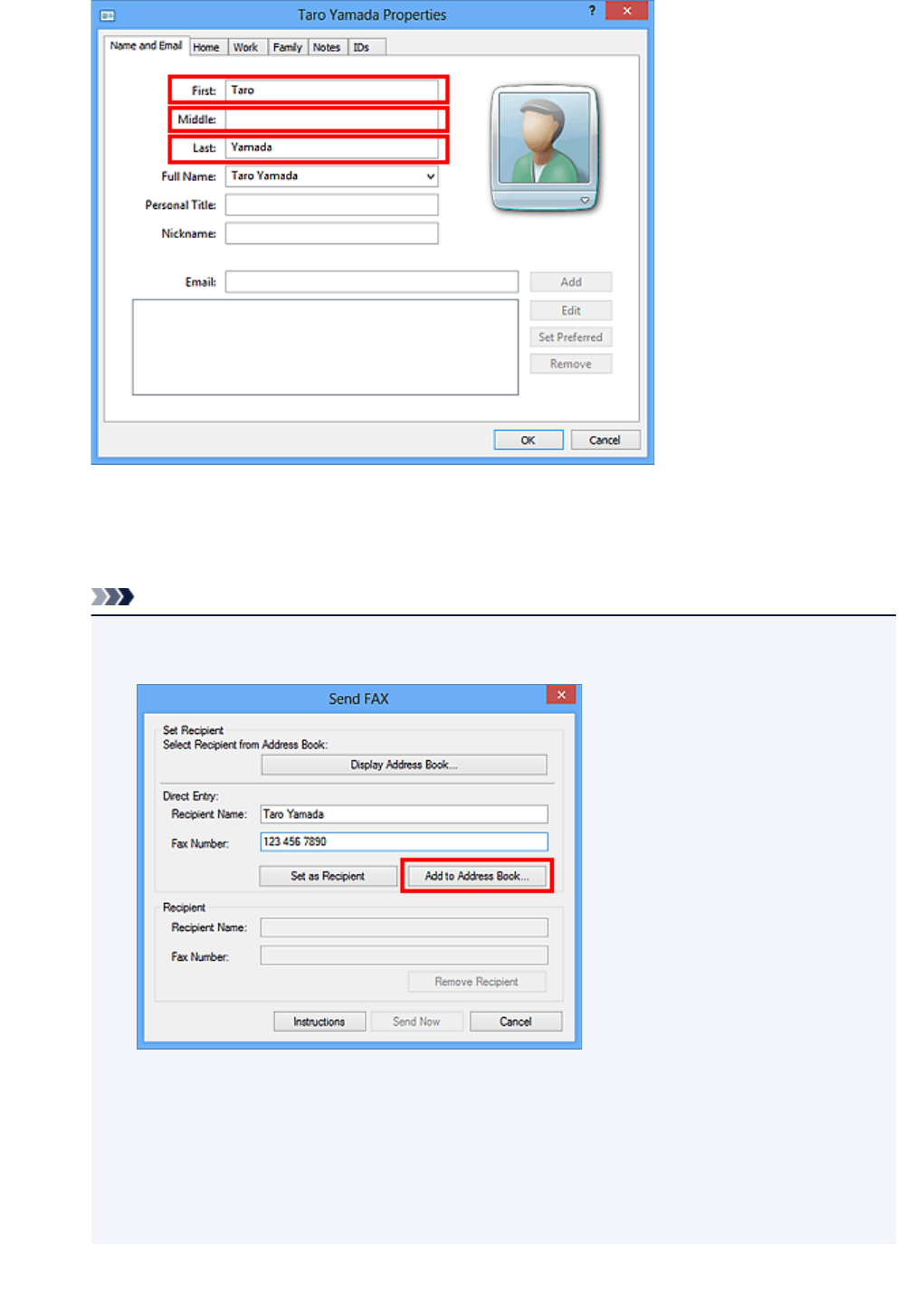
6. Enter the fax number on the Home or Work tab, then click OK.
An individual recipient (Contact) is registered in the address book.
Note
• You can also register a recipient by clicking the Add to Address Book... button on the Send
FAX dialog box after entering the recipient.
•Add the outside line access number before the fax number as needed.
(Example: When the outside line access number is "0" and the fax number is "XXX-XXXX",
enter "0XXX-XXXX".)
•If you upgrade from Windows XP to Windows Vista, the address book you created in Windows
XP may not be reflected in Windows Vista. In this case, open the address book in the following
procedure and reflect the information to a new address book.
1035
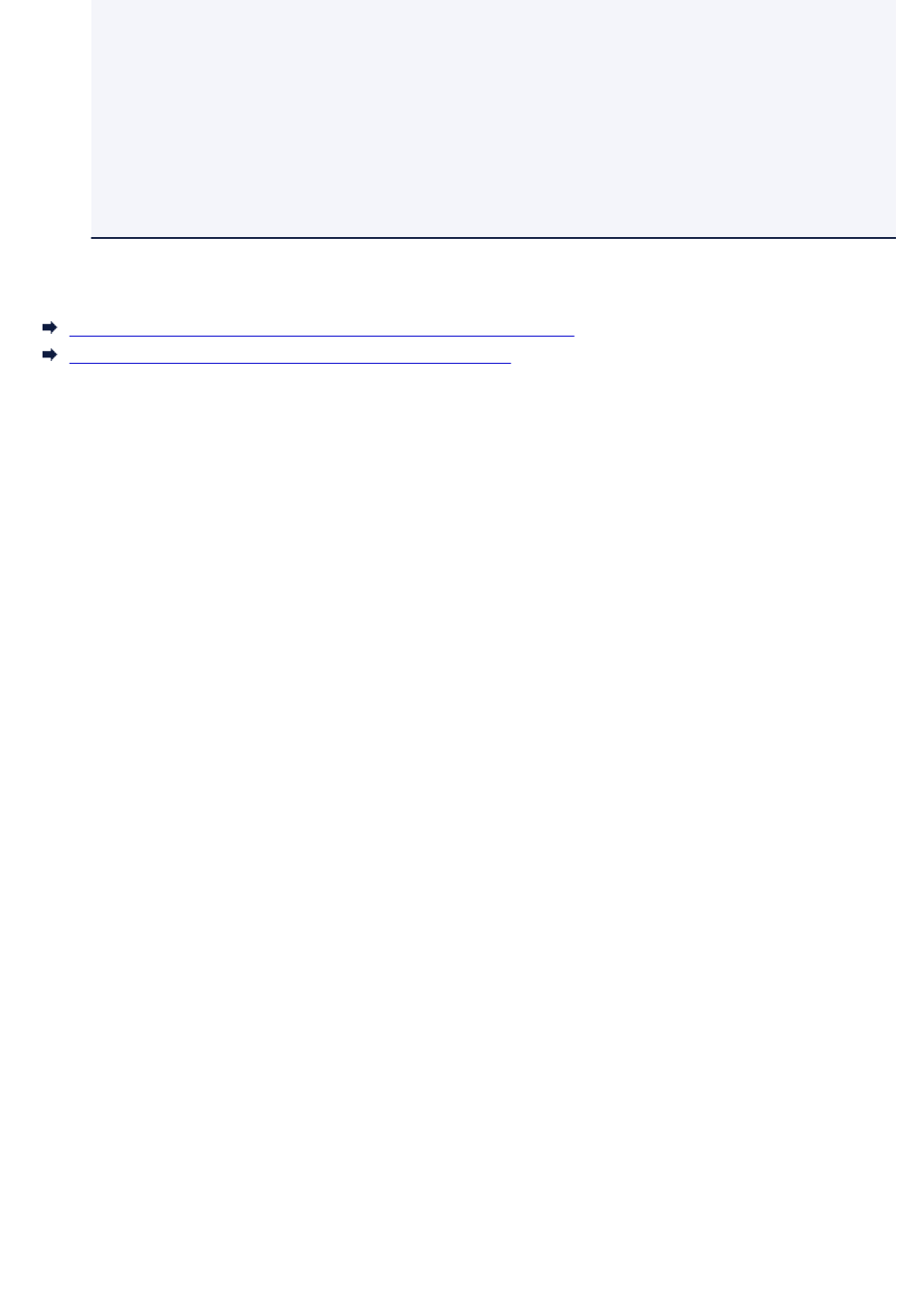
1. From the Start menu, select Control Panel > Appearance and Personalization > Folder
Options.
2. Click the View tab of the Folder Options dialog box, select Show hidden files and
folders in Advanced settings, then click OK.
3. From the Start menu, select XXXX (user name), then double-click AppData > Roaming >
Canon > MP5 to open the folder.
4. Double-click the ".wab" file.
The address book will be reflected in Windows Vista automatically.
Related Topic
Edit or Remove a Recipient from an Address Book (Fax Driver)
Search for a Recipient in an Address Book (Fax Driver)
1036
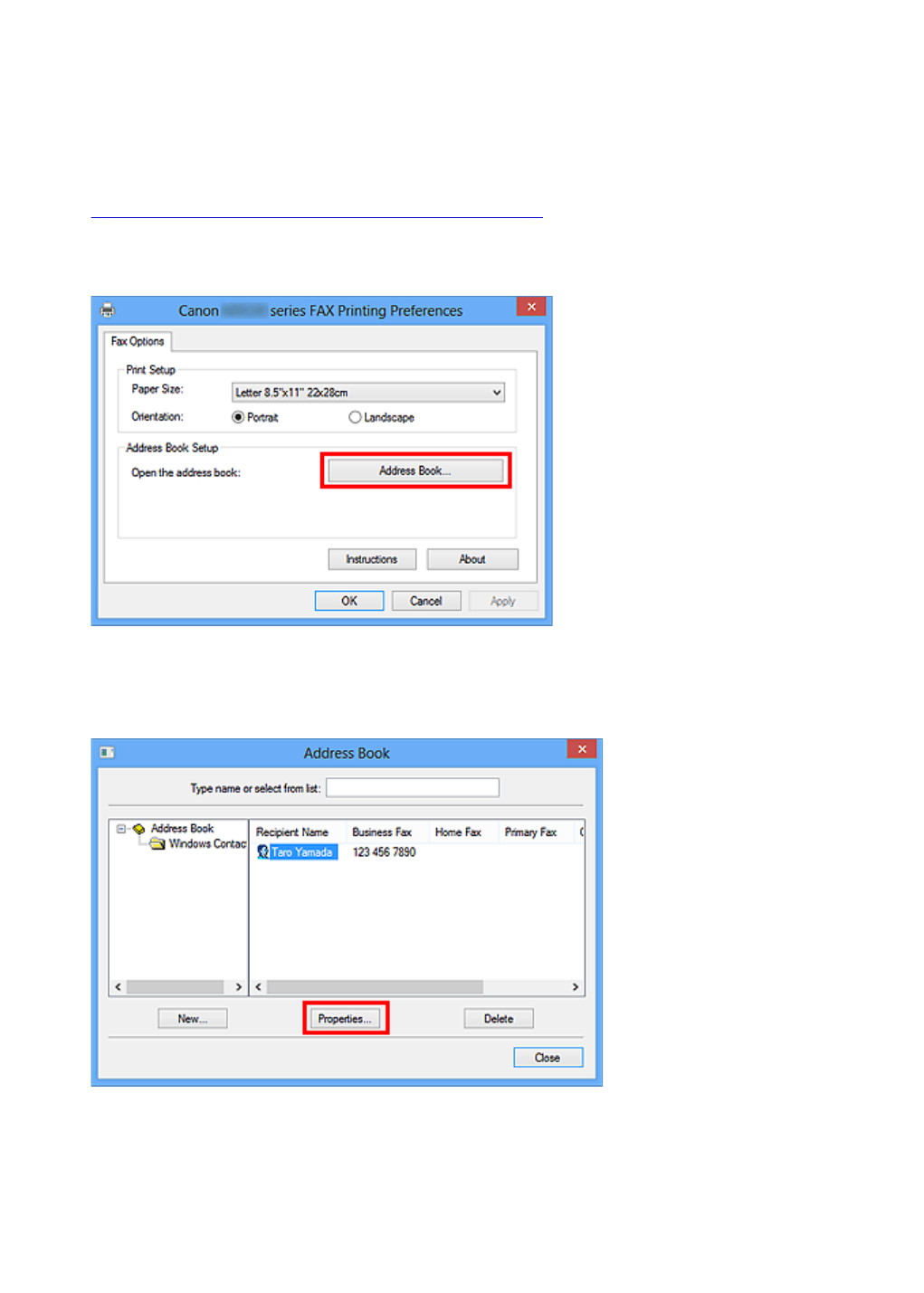
Edit or Remove a Recipient from an Address Book (Fax Driver)
You can change the recipients' names, fax numbers and other information, or delete recipients registered in
the address book.
Editing Recipients in an address book
1. Open the print settings dialog box of the fax driver.
2. Click Address Book... in the displayed dialog box.
3. Select the recipient you want to edit from the Address Book dialog box, then click
Properties....
4. Change information as needed on the Properties dialog box, then click OK.
1037
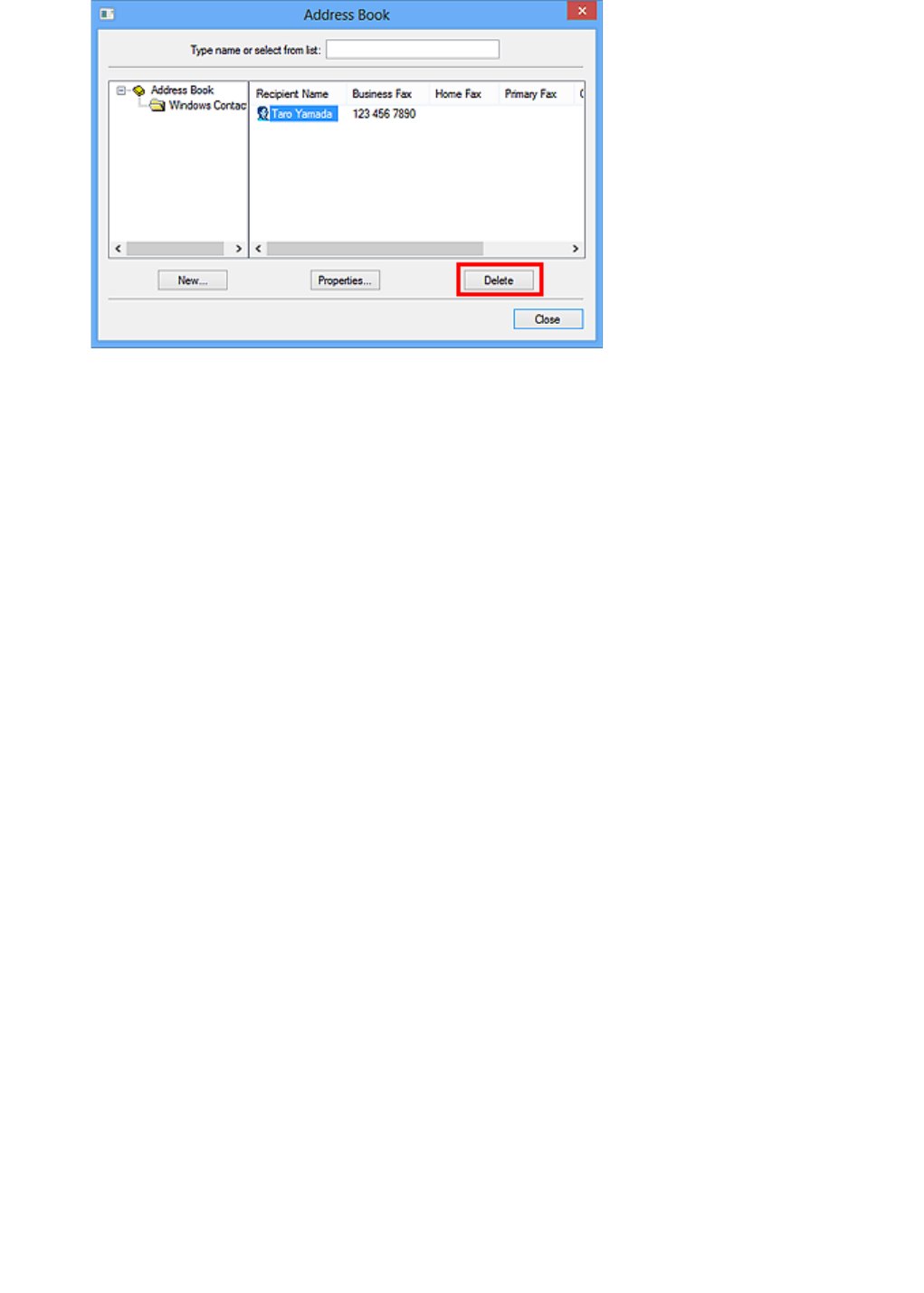
4. When a confirmation message is displayed, click Yes.
1039
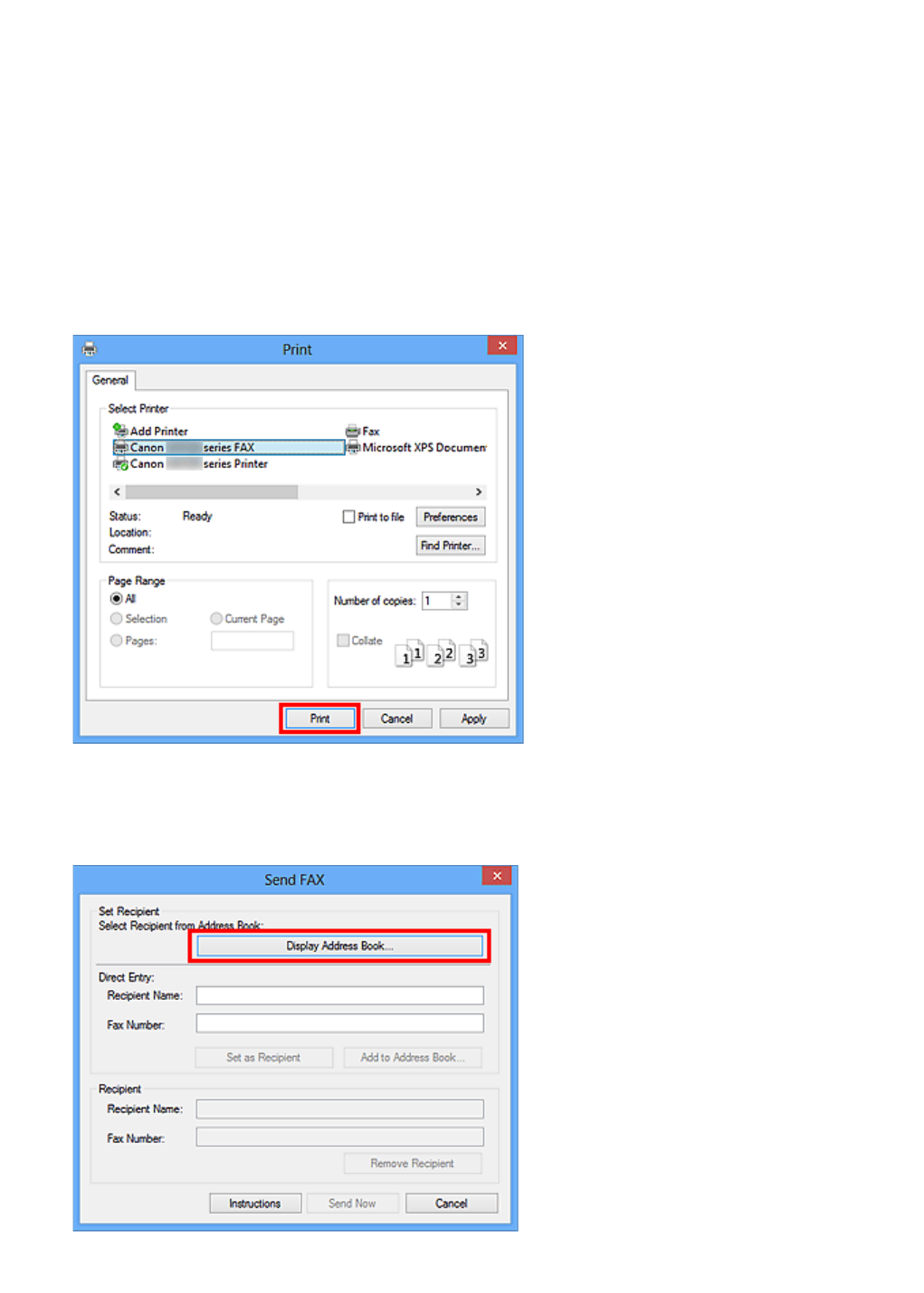
Search for a Recipient in an Address Book (Fax Driver)
You can search for recipients registered in the address book by name.
1. Open the document you want to fax with an application (such as Notepad), and then click
the Print command. (The command is Print... on the File menu.)
2. In Select Printer or Name in the Print dialog box, select Canon XXX series FAX (where
"XXX" is the model name).
3. Click Print or OK.
* Print dialog box in Notepad
4. Click Display Address Book... in Set Recipient in the Send FAX dialog box.
1040
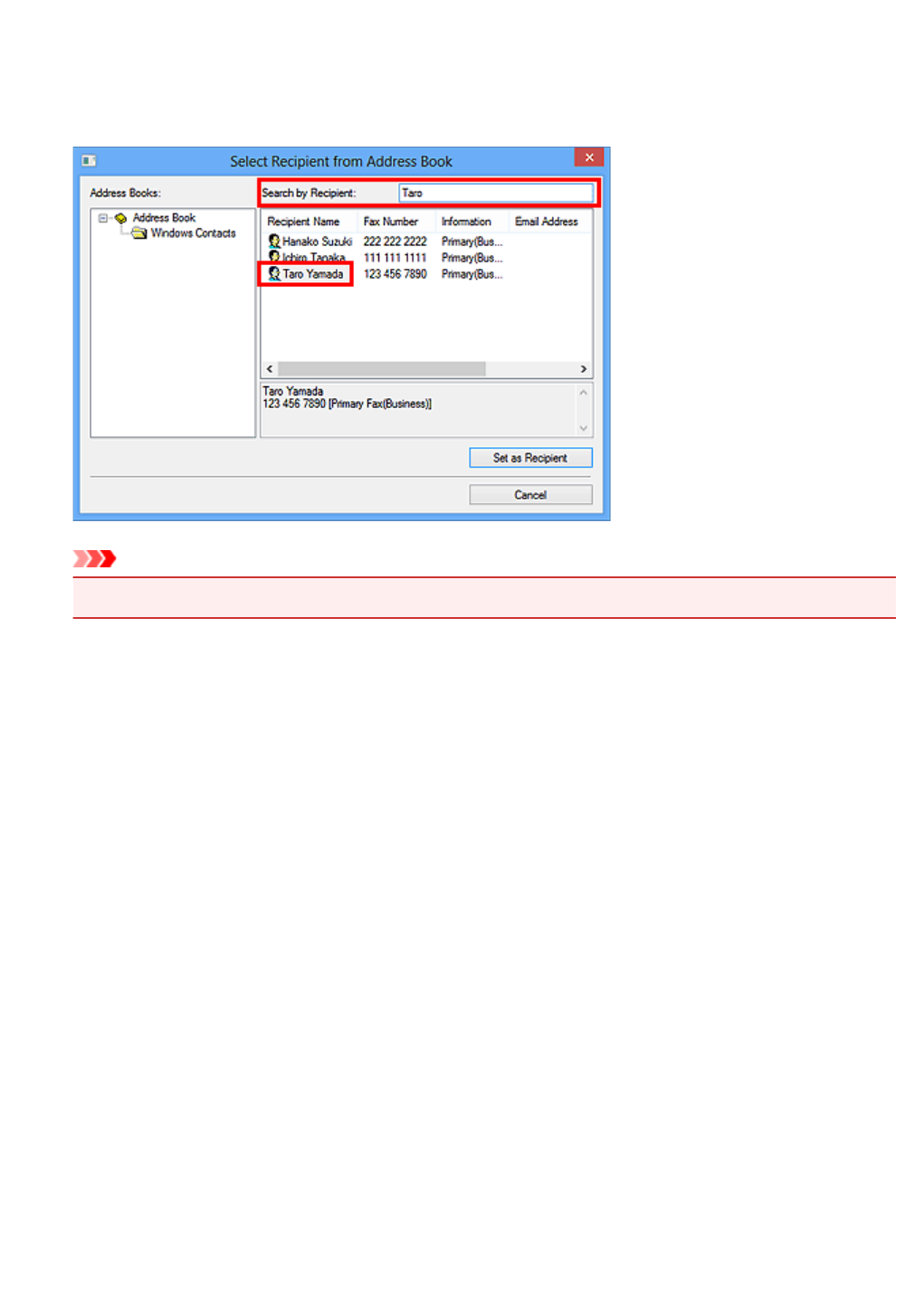
5. Enter the name of the recipient you want to search for in Search by Recipient in the
Select Recipient from Address Book dialog box.
If the entered name is found, the recipient will be displayed in the contact list with its name selected.
While the name is selected, click Set as Recipient to enter it as the recipient.
Important
• You cannot search by criteria other than name.
1041
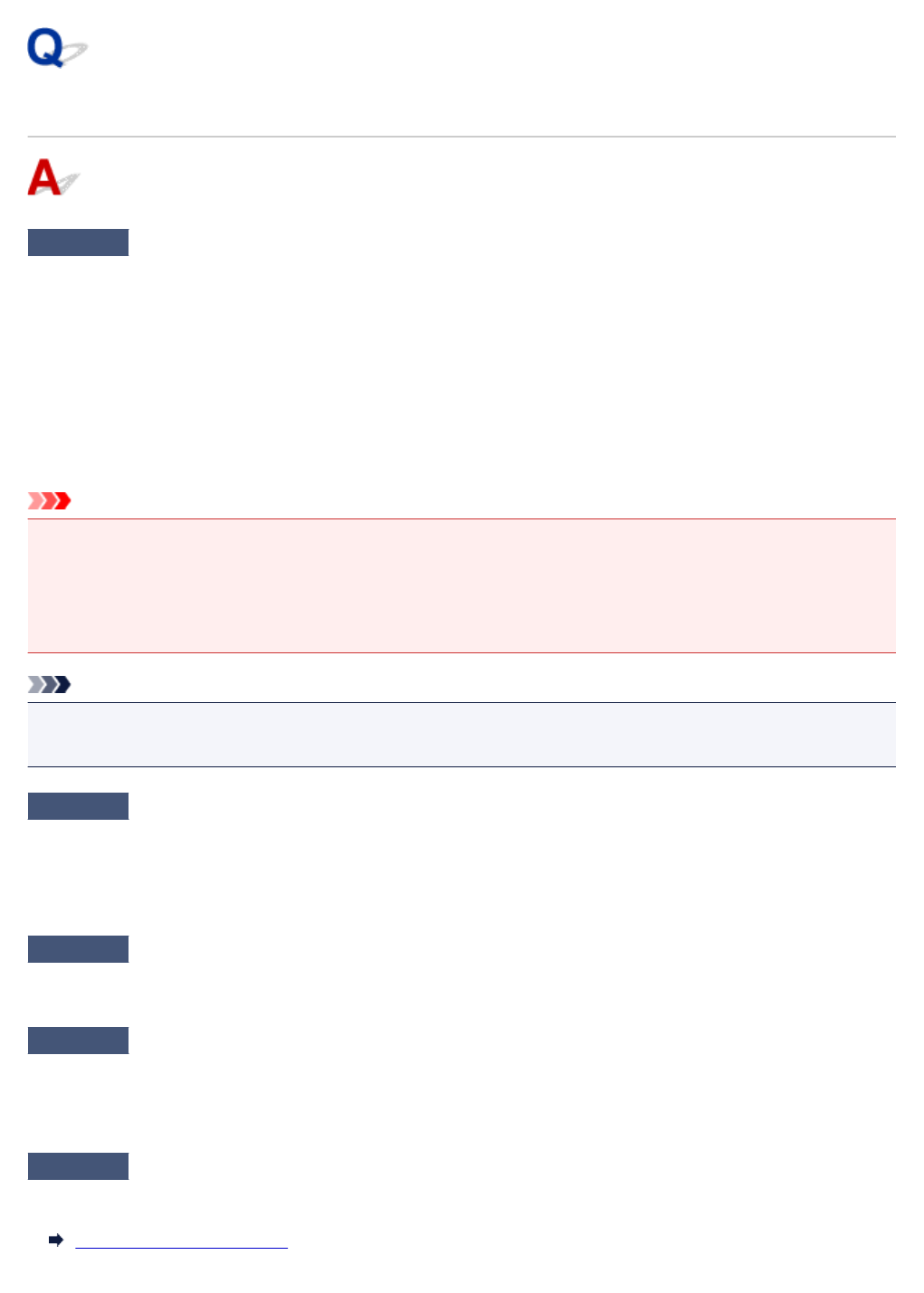
Cannot Send Faxes from Computer
Check 1 Is the power turned on?
You cannot send faxes if the power is turned off. Press the ON button to turn the power on.
If you disconnected the power cord without turning off the power (one of the buttons on the operation panel is lit),
reconnecting it turns on the power.
If you disconnected the power cord after pressing the ON button to turn off the power (no buttons on the
operation panel are lit), reconnect it, then press the ON button to turn on the power.
If the power was turned off due to power failure, etc., the power is automatically turned on when the power failure
is resolved.
Important
•Confirm that all lamps on the operation panel are off before unplugging the power cord, then unplug the
power cord.
If a power failure occurs or you unplug the power cord, all faxes stored in the machine's memory are
deleted.
Note
•If the faxes stored in the machine's memory are deleted by a power failure or unplugging the power cord,
the list of the faxes deleted from the machine's memory will be printed after turning the machine on.
Check 2 Is a document being sent from memory or a fax being received into memory?
When the message for the transmission/reception is displayed on the machine's LCD (Liquid Crystal Display)
monitor, a fax is being sent from/received into machine's memory. Wait until the transmission/reception is
complete.
Check 3 Is the telephone line type set correctly?
Check the telephone line type setting and change it as necessary.
Check 4 Is Dial tone detect set to ON?
Resend the fax after a while.
If you still cannot send the fax, select OFF for Dial tone detect in Advanced FAX settings under FAX settings.
Check 5 Is the recipient's fax number correct?
Check the recipient's fax number, then send the document again.
Sending a FAX (Fax Driver)
1042
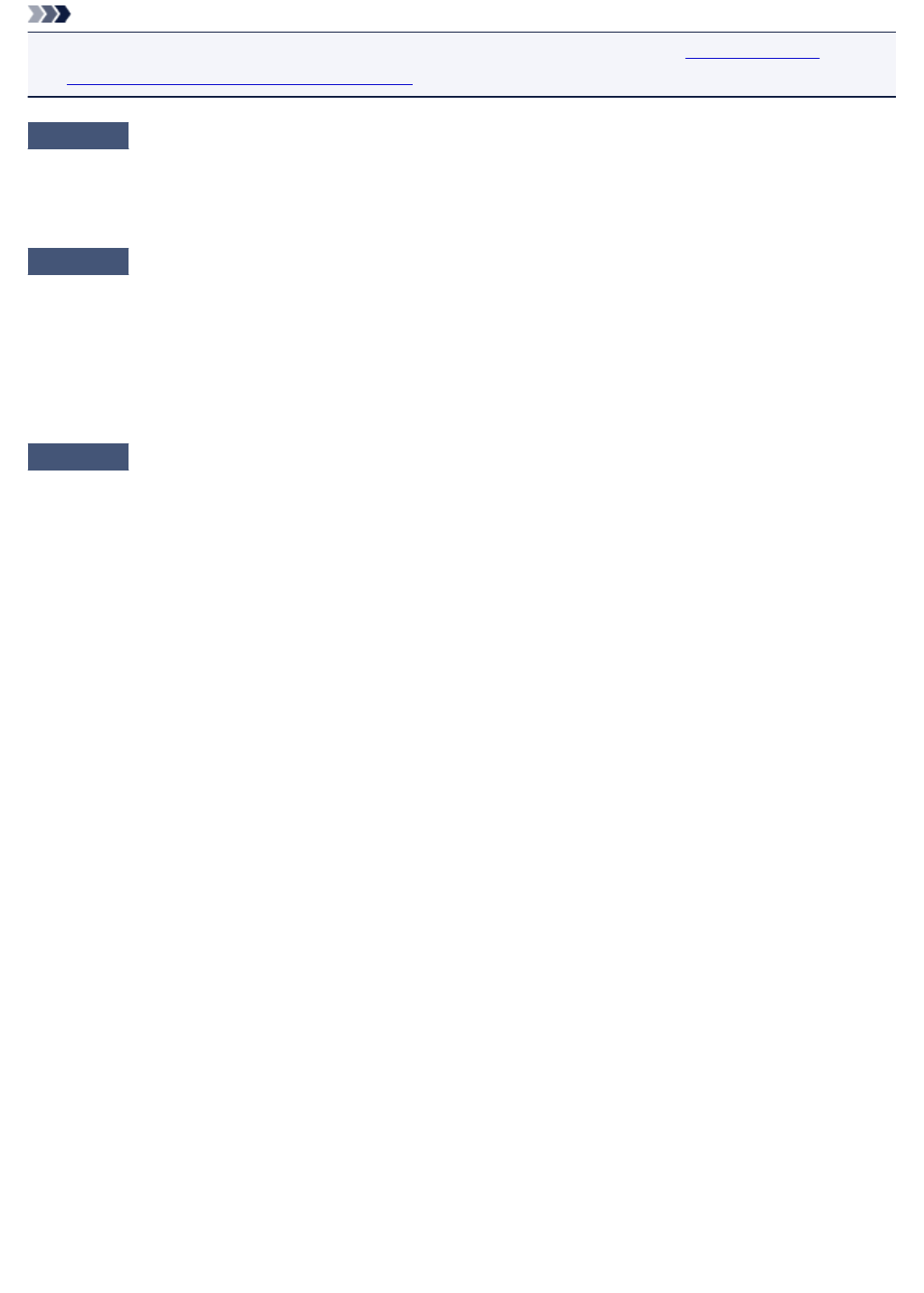
Note
•For details on how to change the recipients registered in the address book, see "Edit or Remove a
Recipient from an Address Book (Fax Driver)."
Check 6 Does an error occur during transmission?
Check if a message is displayed in the computer screen.
If displayed, check the message, then resolve the error.
Check 7 Does a printer error occur?
Check if a message is displayed on the LCD monitor.
If a support code is displayed, see "Support Code List" for your model from Home of the Online Manual.
If no support code is displayed, see "A Message Is Displayed" for your model from Home of the Online Manual.
If you are in a hurry, press the Stop button to close the message, then send the fax.
Check 8 Is the telephone line connected correctly?
Reconnect the telephone line cable to the telephone line jack.
If the telephone line is connected correctly, then there is a problem with your telephone line. Contact your
telephone company and the manufacturer of your terminal adapter or telephone adapter.
1043

How to Open the Setting Screen of the Fax Driver
The following explains how to display the print settings dialog box or the Properties dialog box of the fax
driver from your application or from the fax/printer icon.
Opening the Print Settings Dialog Box of the Fax Driver from an Application
1. Click the Print command in the application.
In general, you can open the Print dialog box by selecting Print from the File menu.
2. Select "your model name," then click Preferences (or Properties).
The print settings dialog box of the fax driver appears.
Opening the Print Settings Dialog Box of the Fax Driver from the Fax/Printer
Icon
•Windows 8.1/Windows 8:
1. Click the Settings charm > Control Panel > Hardware and Sound > Devices and
Printers.
2. Right-click the Canon XXX series Printer icon or Canon XXX series FAX icon and
select Printing Preferences, then Canon XXX series FAX. (Where "XXX" is the
model name.)
•Windows 7:
1. From the Start menu, select Control Panel > Hardware and Sound > Devices and
Printers.
2. Right-click the Canon XXX series Printer icon or Canon XXX series FAX icon and
select Printing Preferences, then Canon XXX series FAX. (Where "XXX" is the
model name.)
•Windows Vista:
1. From the Start menu, select Control Panel > Hardware and Sound > Printers.
2. Right-click the Canon XXX series FAX icon (where "XXX" is the model name) and
select Printing Preferences....
1044

Opening the Properties Dialog Box of the Fax Driver from the Fax/Printer
Icon
•Windows 8.1/Windows 8:
1. Click the Settings charm > Control Panel > Hardware and Sound > Devices and
Printers.
2. Right-click the Canon XXX series Printer icon or Canon XXX series FAX icon and
select Printer Properties, then Canon XXX series FAX. (Where "XXX" is the model
name.)
•Windows 7:
1. From the Start menu, select Control Panel > Hardware and Sound > Devices and
Printers.
2. Right-click the Canon XXX series Printer icon or Canon XXX series FAX icon and
select Printer Properties, then Canon XXX series FAX. (Where "XXX" is the model
name.)
•Windows Vista:
1. From the Start menu, select Control Panel > Hardware and Sound > Printers.
2. Right-click the Canon XXX series FAX icon (where "XXX" is the model name) and
select Properties.
1045
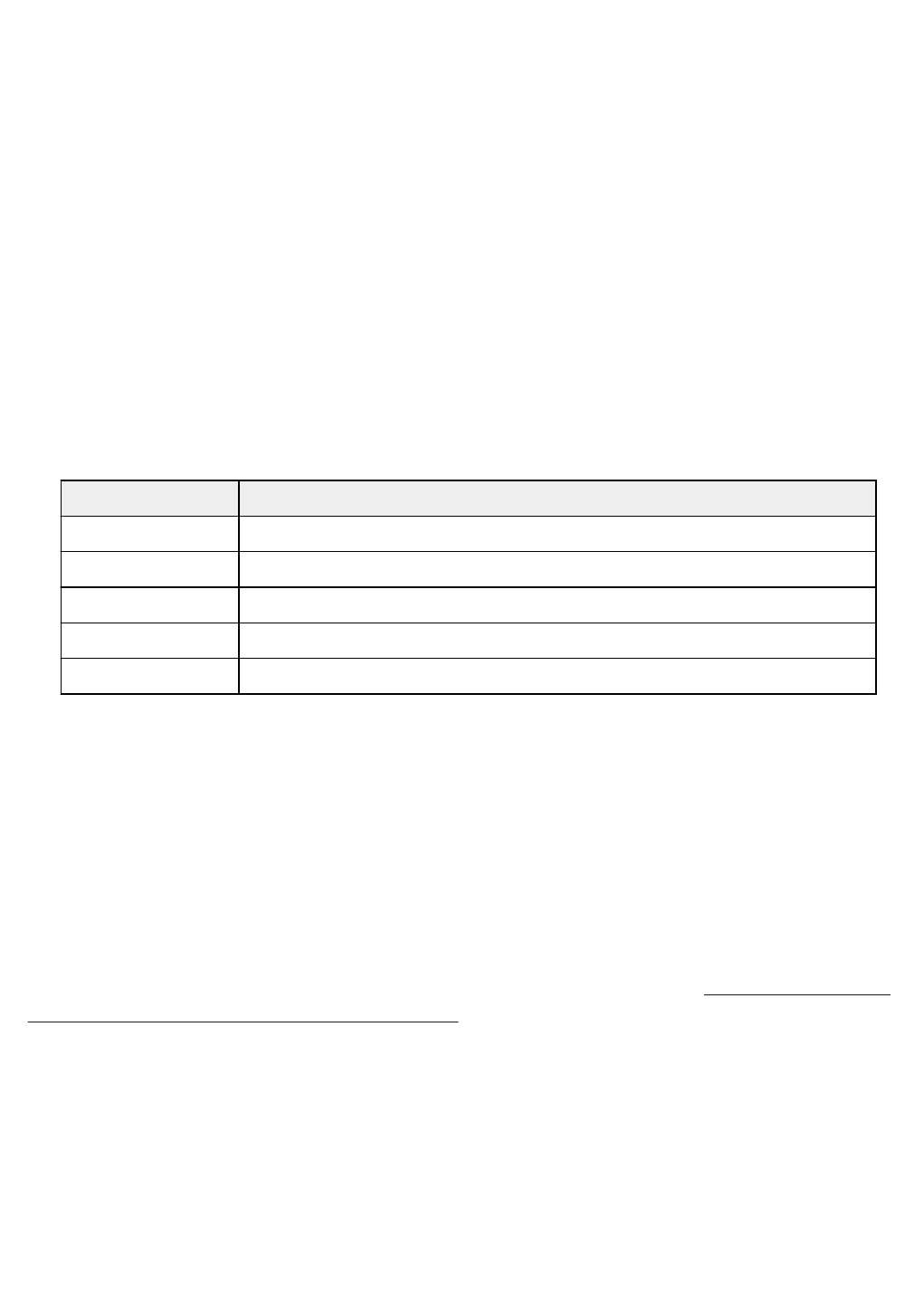
General Notes (Fax Driver)
This fax driver is subject to the following restrictions.
Keep the following points in mind when using the fax driver.
• The fax driver may not work correctly when sending a Microsoft Excel 2002 document as a fax with the
Allow A4/Letter Paper Resizing option checked in Microsoft Excel 2002. Follow the instructions below
to solve the problem:
1. Click Options... from the Tools menu.
2. Uncheck the Allow A4/Letter Paper Resizing option on the International tab.
• When using a network compatible printer, you cannot send faxes from multiple computers at the same
time. If you try to send a fax from a computer while a fax is being sent from another computer, a
message appears and your fax cannot be sent.
Make sure that a fax is not being sent from another computer.
• If you assign the fax driver to the Bluetooth port, you cannot send a fax from the computer.
• You can use the following characters for Fax Number:
Character Explanation
0 - 9 * # For use in telephone and fax numbers.
, p To place a pause between numbers.
P To place a pause at the end of a sequence of numbers.
T Numbers after the T will be sent as a tone signal.
+ - ( ), space To make the number easier to read. You cannot insert a space at the front of a number.
*You cannot use ".", "R", "M", or "E".
• You can enter the following number of characters in Recipient Name and Fax Number.
Recipient Name: Up to 16 characters
Fax Number: Up to 60 characters
* The number of characters you can enter differs in some regions.
• The fax driver does not work correctly if you uncheck the Enable printer pooling option on the Ports
tab of the Canon XXX series FAX Properties dialog box (where "XXX" is the model name). Check that
the option is checked.
For details on how to open the Canon XXX series FAX Properties dialog box, see "Opening the Properties
Dialog Box of the Fax Driver from the Fax/Printer Icon."
1046
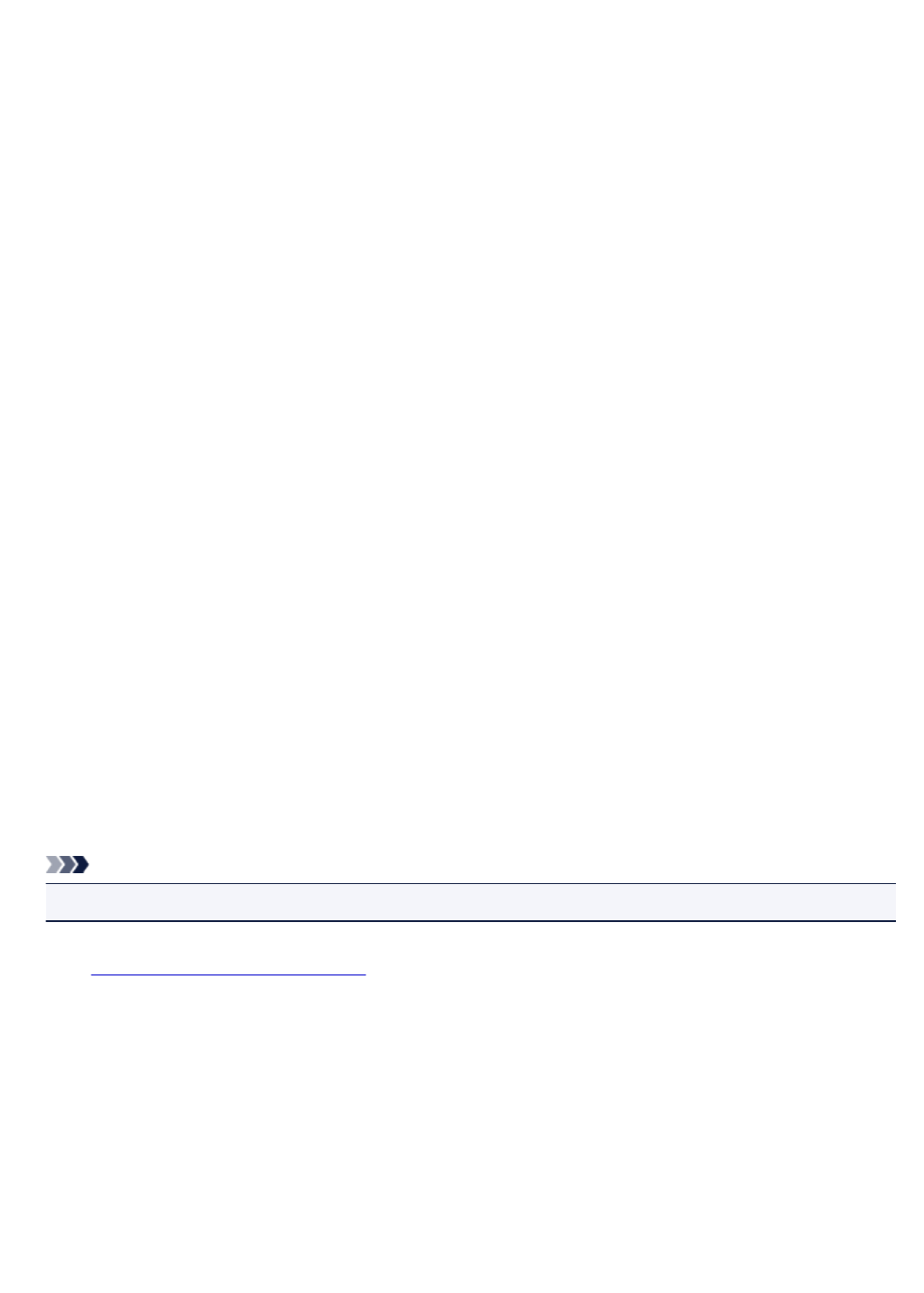
Sending a Fax
You can send the faxes using the printer from Mac.
To sending the fax from Mac, add your printer as AirPrint printer to Mac.
Checking Your Environment
First, check your environment.
•AirPrint Operation Environment
Mac running the latest version of Mac OS
•Requirement
Mac and the printer must be connected to the same network over a LAN.
Adding Printer as AirPrint Printer to Your Mac
1. Open System Preferences, and select Printers & Scanners (Print & Scan) on your
Mac.
2. Select + to display the printer list.
3. Select the printer's name listed as Bonjour Multifunction.
4. Select Secure AirPrint or AirPrint from Use.
5. Select Add.
Sending a Fax from Mac
Note
• This function supports only monochrome transmission.
1. Make sure printer is turned on.
2. Open document you want to fax with an application.
3. Open Print dialog.
To open the Print dialog, you typically select Print... from the File menu of your application software.
4. Select Canon XXX series - Fax (where "XXX" is your printer's name) from Printer list.
1048
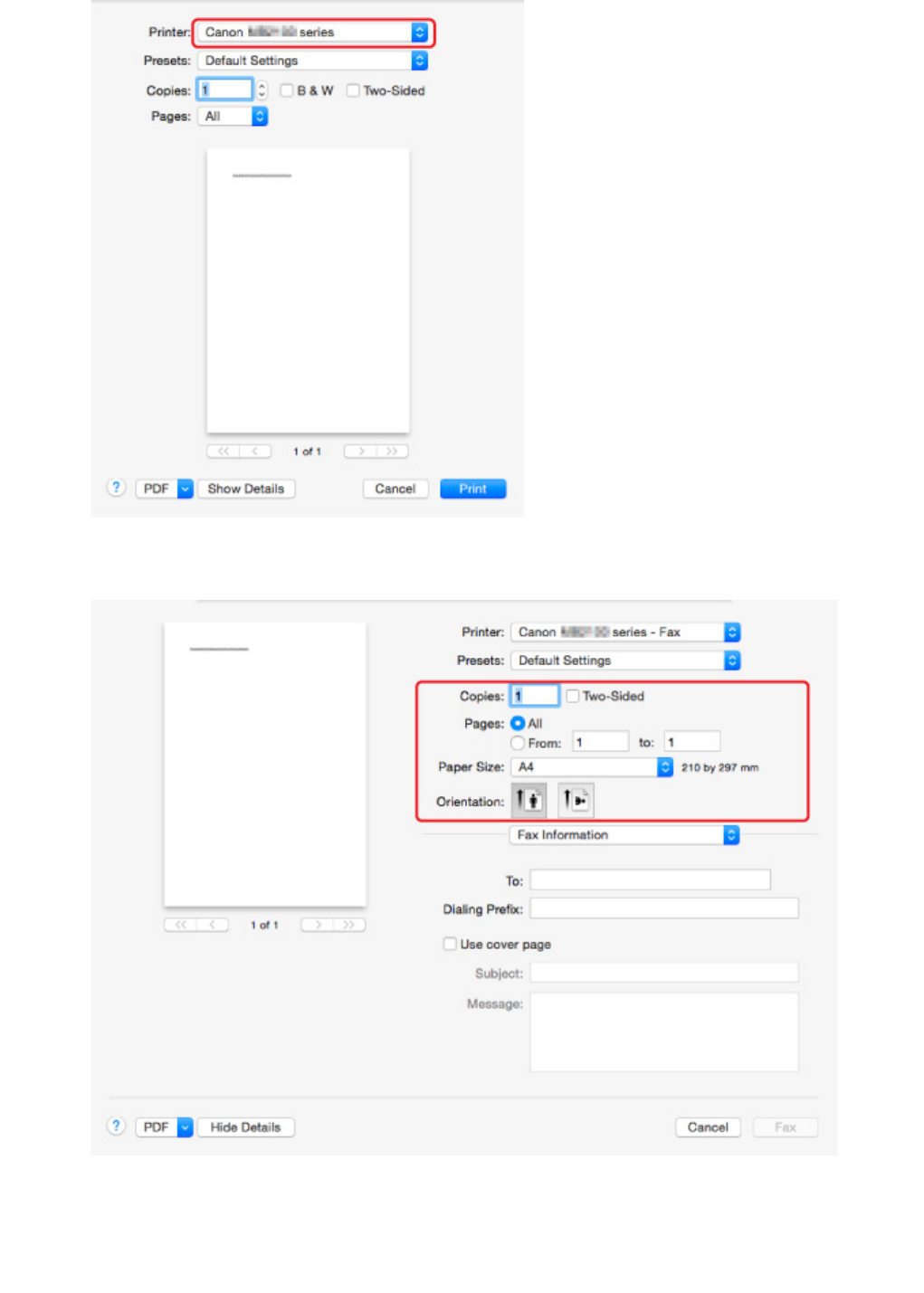
5. Specify fax paper settings as needed.
6. Enter fax/telephone numbers in To:.
1049
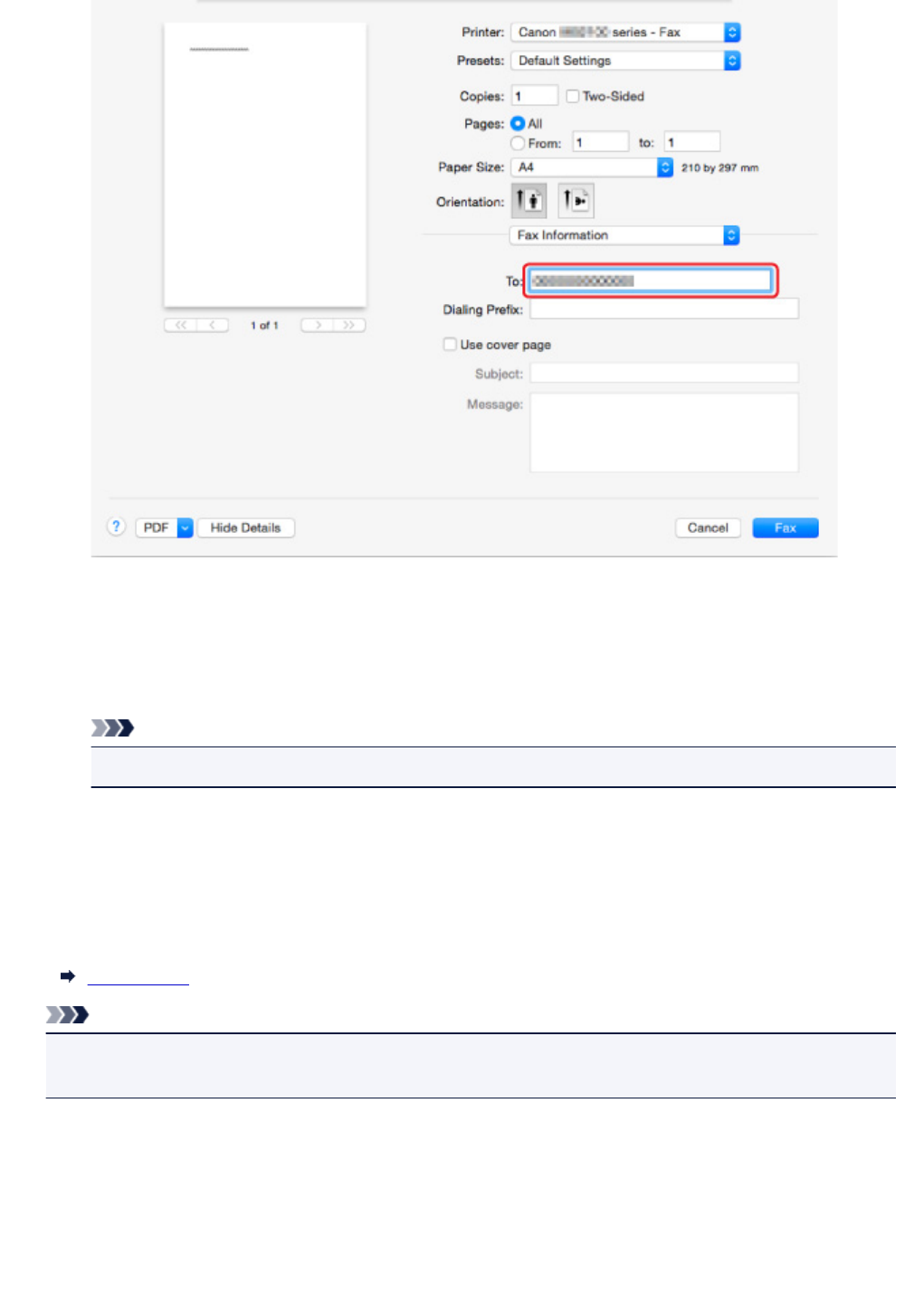
Enter the dialing prefix and specify the cover page settings as needed.
7. Select Fax.
The printer dials automatically and sends the fax.
Note
• To cancel sending the fax, press the printer's Stop button.
Automatic Redialing
The printer redials automatically according to the automatic redialing setting of the printer.
You can enable or disable automatic redialing. If you enable automatic redialing, you can specify the
maximum number of redial attempts and the length of time the printer waits between redial attempts.
FAX settings
Note
• To cancel automatic redialing, wait until the printer starts redialing, and then press the printer's Stop
button.
1050
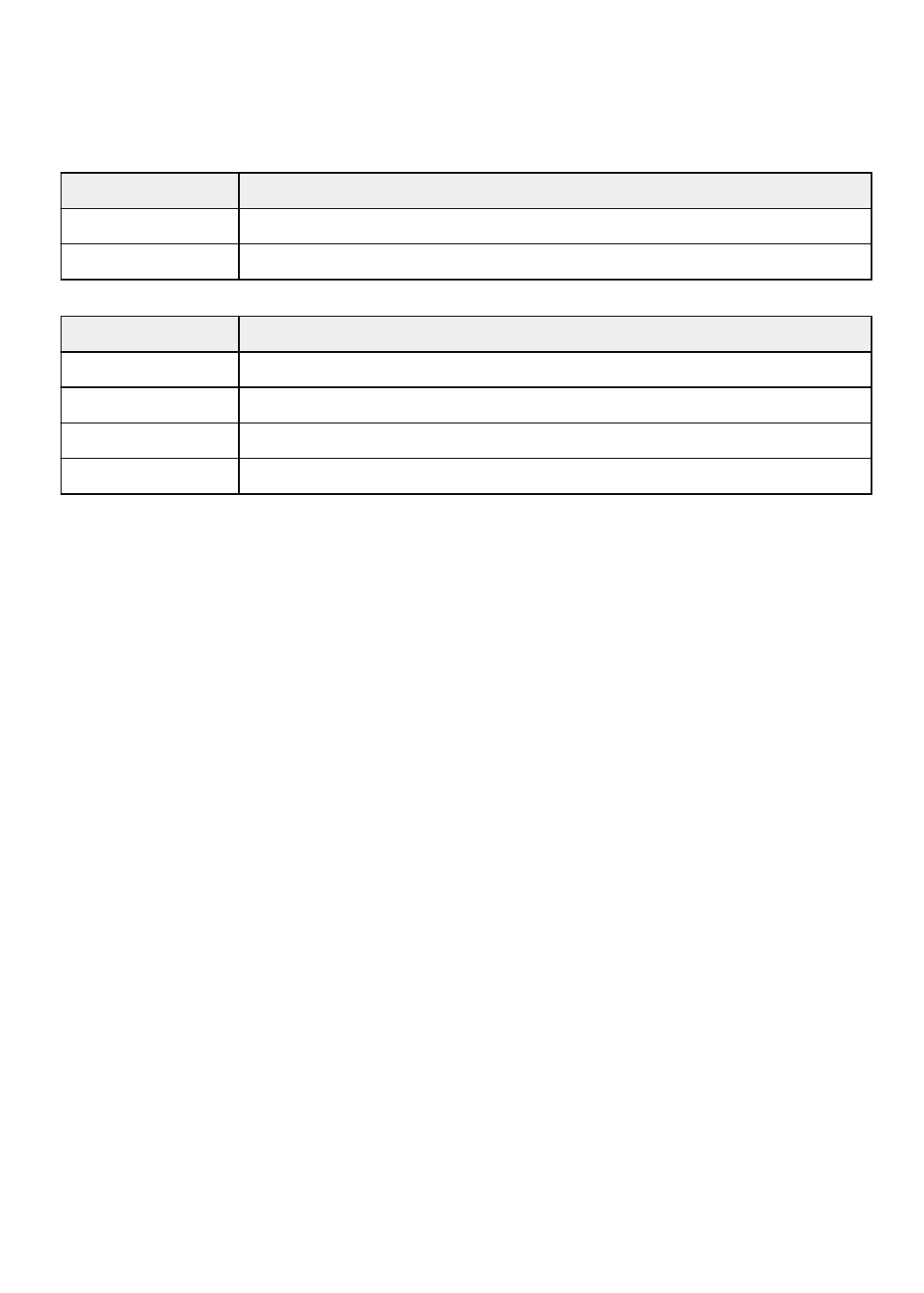
General Notes
Sending faxes from Mac is subject to the following restrictions.
• Enter the characters in To: and Dialing Prefix: so that the total number of characters is within 60
characters. If the total number of characters exceeds 60, the printer dials only the first 60 characters.
• You can use the following characters for To:.
Character Explanation
0 - 9 * # For use in telephone and fax numbers.
+ space To make the number easier to read.You cannot insert a space at the front of a number.
• You can use the following characters for Dialing Prefix:.
Character Explanation
0 - 9 * # For use in telephone and fax numbers.
p To place a pause between numbers.
T Numbers after the T will be sent as a tone signal.
+ space To make the number easier to read.You cannot insert a space at the front of a number.
1051
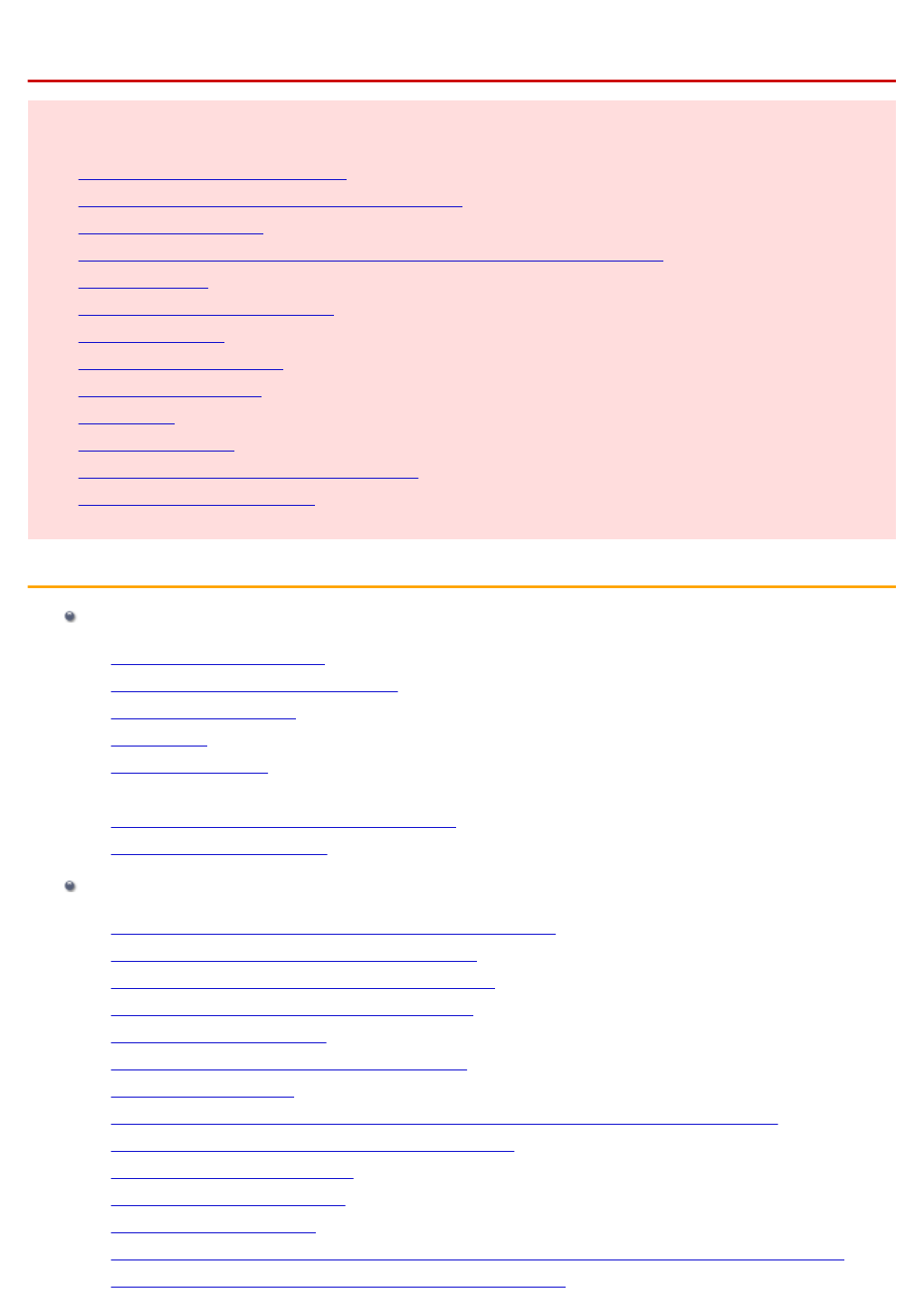
Troubleshooting
Frequently Asked Questions
•Cannot Find Machine on Network
•Cannot Find Machine while Using Wireless LAN
•Printing Does Not Start
•Paper Is Blank/Printing Is Blurry/Colors Are Wrong/White Streaks Appear
•An Error Occurs
•Print Results Are Unsatisfactory
•Message Appears
•Cannot Install MP Drivers
•Network Key Unknown
•Paper Jams
•Cannot Send a Fax
•Cannot Receive a Fax, Cannot Print a Fax
•List of Support Code for Error
Examples of Problems
Printer Does Not Move
•Power Does Not Come On
•Machine Suddenly Cannot Be Used
•Printing Does Not Start
•Paper Jams
•Scanning Problems (Windows)
• Scanning Problems (Mac OS)
•Cannot Print/Scan from Smartphone/Tablet
•Cannot Print Using AirPrint
Cannot Set Correctly
•Cannot Find Machine on Check Printer Settings Screen
•Message Appears on Computer During Setup
•Cannot Find Machine while Using Wireless LAN
•Cannot Find Machine while Using Wired LAN
•USB Connection Problems
•Cannot Communicate with Machine via USB
•Network Key Unknown
•Machine Cannot Be Used After Replacing Wireless Router or Changing Its Settings
•Administrator Password Set for Machine Unknown
•Checking Network Information
•Restoring to Factory Defaults
•Cannot Install MP Drivers
•Easy-WebPrint EX Does Not Start or Easy-WebPrint EX Menu Does Not Appear (Windows)
•Updating MP Drivers in Network Environment (Windows)
1052
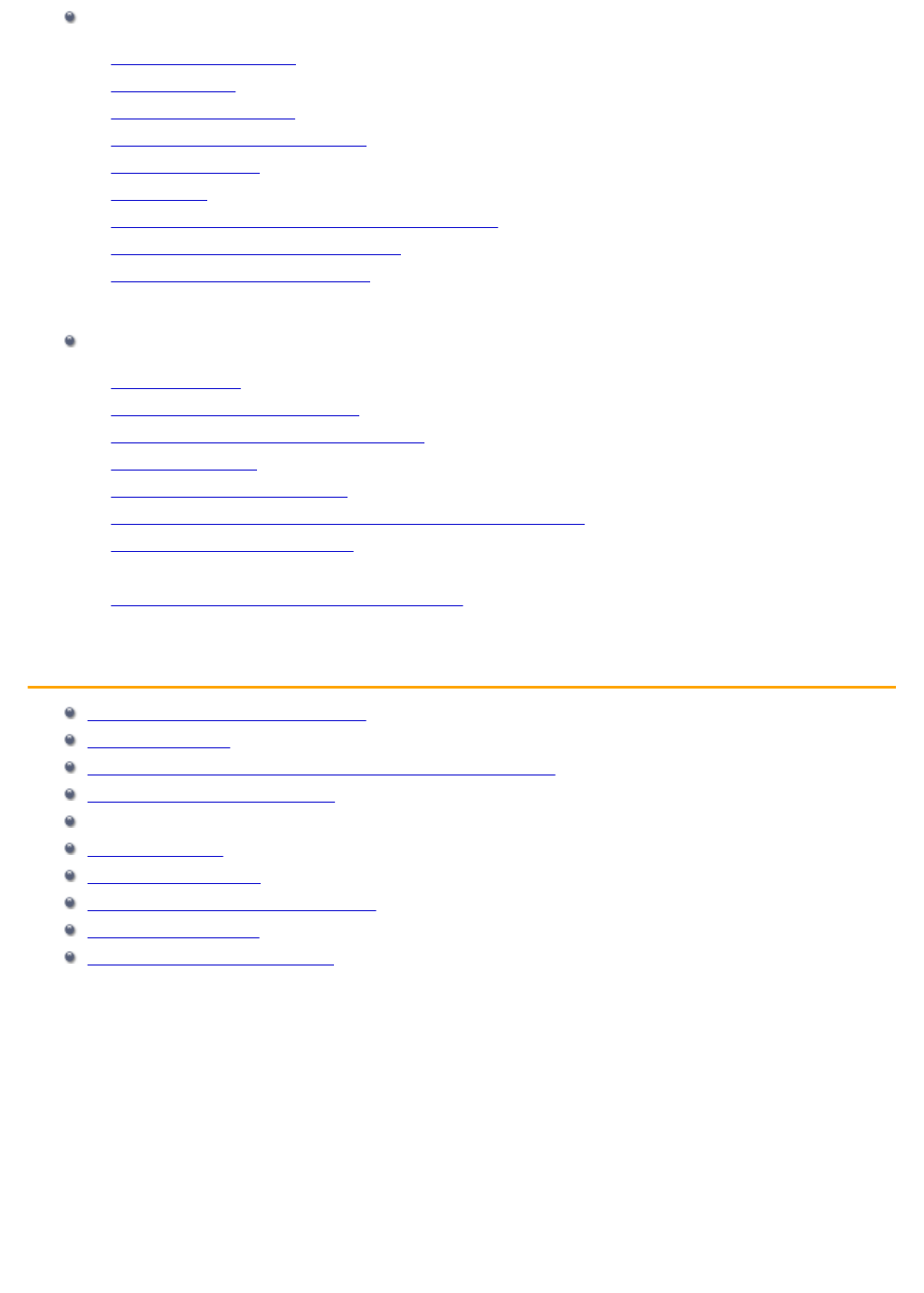
Print/Scan Results Are Unsatisfactory
•Printing Does Not Start
•Printing Is Slow
•Copying/Printing Stops
•Print Results Are Unsatisfactory
•No Ink Comes Out
•Paper Jams
•Paper Does Not Feed Properly/"No Paper" Error
•Automatic Duplex Printing Problems
•Scan Results Are Unsatisfactory (Windows)
• Scan Results Are Unsatisfactory (Mac OS)
Error or Message Appears
•An Error Occurs
•Display on Touch Screen Is Off
•Touch Screen Shows Wrong Language
•Message Appears
•List of Support Code for Error
•A Message for Faxing Is Displayed on Fax Standby Screen
•IJ Scan Utility Error Messages (Windows)
• IJ Scan Utility Error Messages (Mac OS)
•ScanGear (Scanner Driver) Error Messages
• Scanner Driver Error Messages
Operation Problems
Network Communication Problems
Printing Problems
Problems while Printing/Scanning from Smartphone/Tablet
Scanning Problems (Windows)
Scanning Problems (Mac OS)
Faxing Problems
Mechanical Problems
Installation and Download Problems
Errors and Messages
If You Cannot Solve a Problem
1053
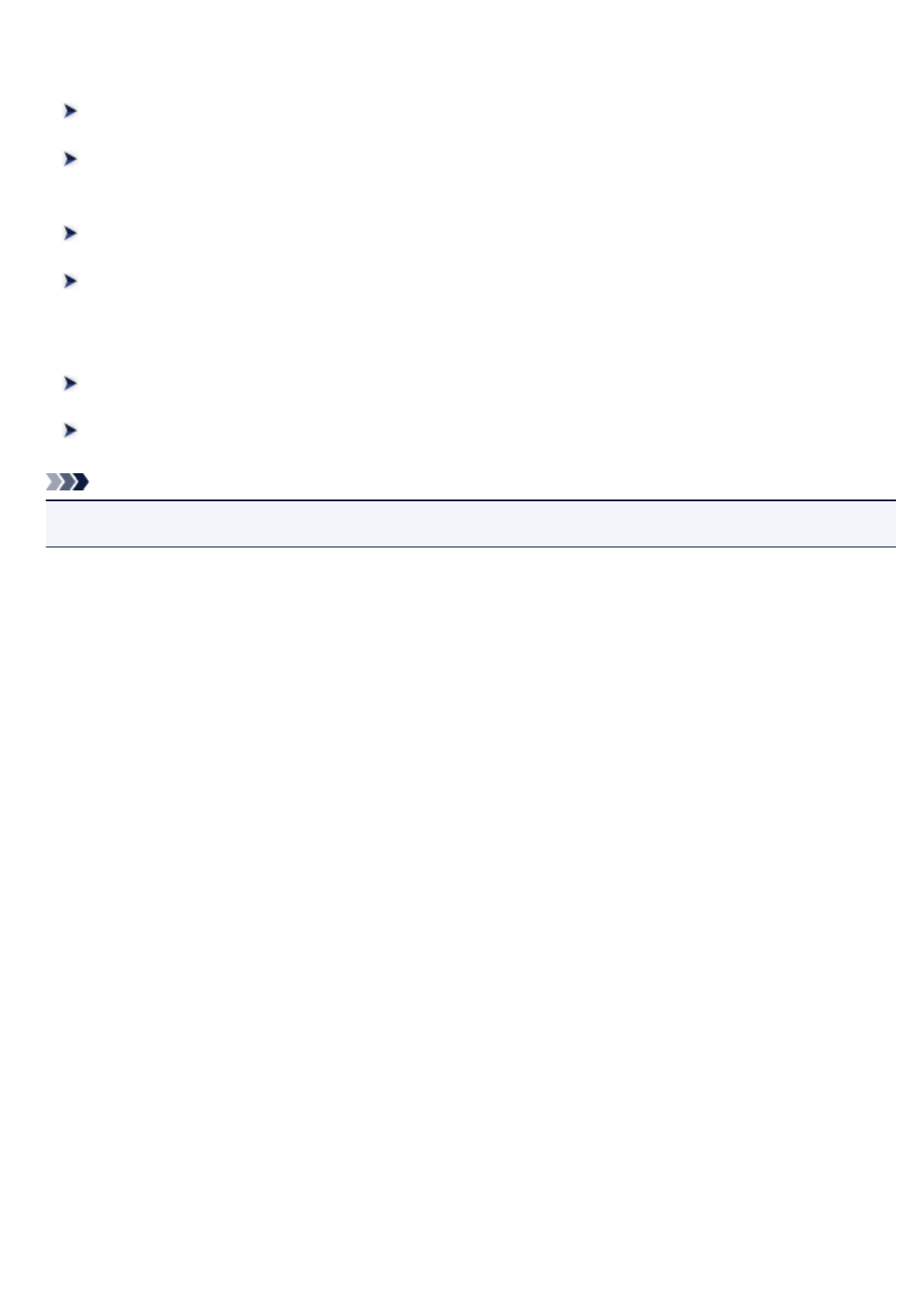
Cannot Find Machine on Network
While performing printer setup:
Cannot Find Machine on Check Printer Settings Screen
Cannot Find Machine after Searching it on Printer Detection Screen During
Setup
Searching Machine by IP Address or Host Name During Setup (Windows)
Cannot Proceed beyond Printer Connection Screen/Connect Cable Screen
While using printer:
Cannot Find Machine while Using Wireless LAN
Cannot Find Machine while Using Wired LAN
Note
• You cannot use the wireless LAN and the wired LAN at the same time.
1055
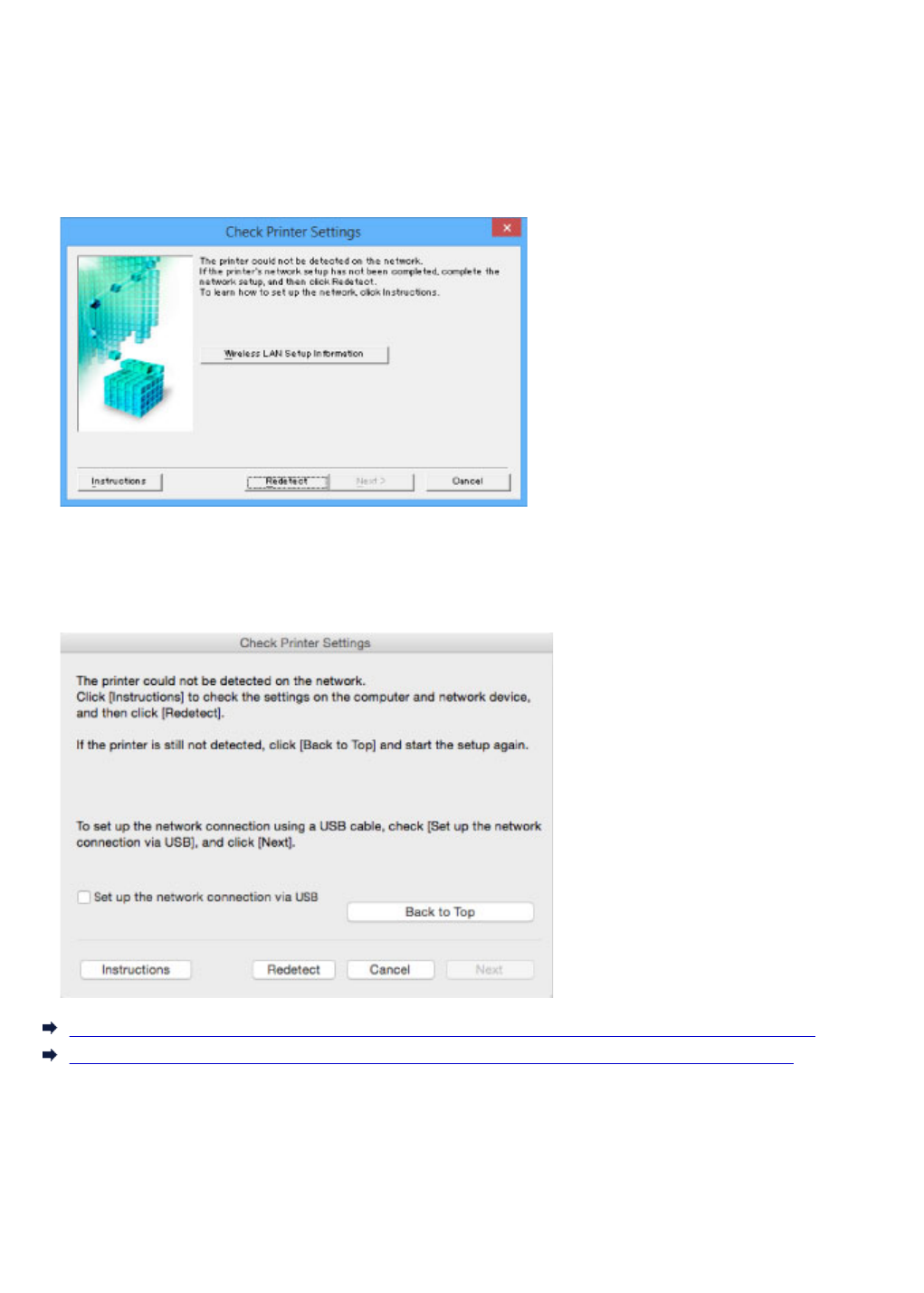
Cannot Find Machine on Check Printer Settings Screen
•For Windows:
If the printer cannot be found and the Check Printer Settings screen appears after searching the
printer by Automatic search on the Search for Printers screen, click Redetect and search for the
printer again by the IP address on the Search for Printers screen.
If the printer has not been found after searching it by the IP address, check network settings.
•For Mac OS:
If the printer cannot be found on the Check Printer Settings screen, check network settings before
redetecting the printer.
Check 1: Cannot Find Machine on Check Printer Settings Screen During Wireless LAN Setup
Check 1: Cannot Find Machine on Check Printer Settings Screen During Wired LAN Setup
1056
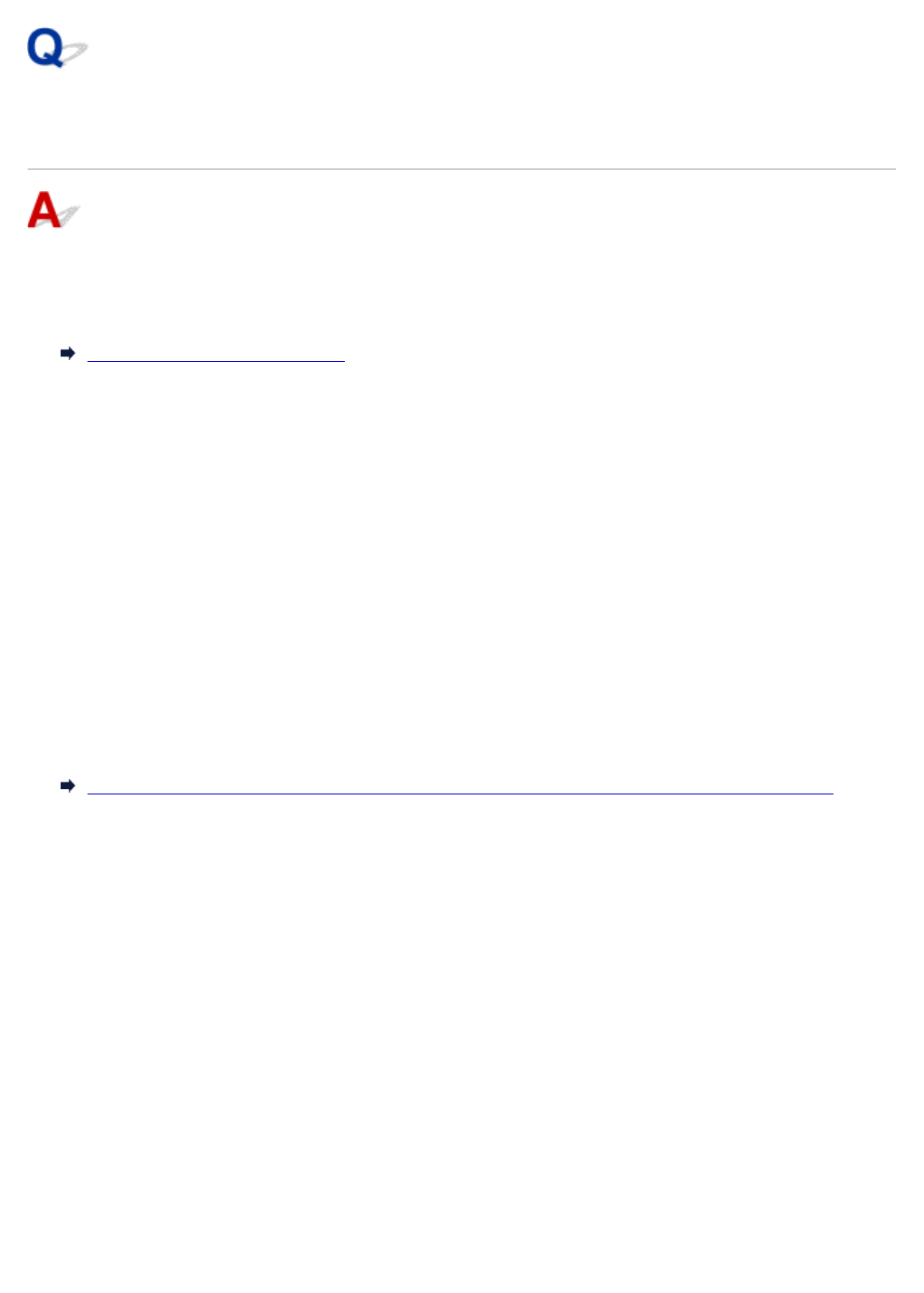
Check 1: Cannot Find Machine on Check Printer Settings Screen
During Wireless LAN Setup
Are printer and network device (router, etc.) turned on?
Make sure the printer is turned on.
Confirming that the Power Is On
Make sure network device (router, etc.) is turned on.
If printer or network device is off:
Turn on printer or network device.
It may take a while for the printer and network device to become ready for use once they are turned on.
Wait a while after turning on the printer or network device, and then click Redetect on the Check Printer
Settings screen to redetect the printer.
If the printer is found, follow the instructions on the screen to continue to set up network communication.
If printer and network device are on:
If the network devices are on, turn them off and on again. If the printer cannot be found after that, go to
Check 2.
Check 2: Cannot Find Machine on Check Printer Settings Screen During Wireless LAN Setup
1057
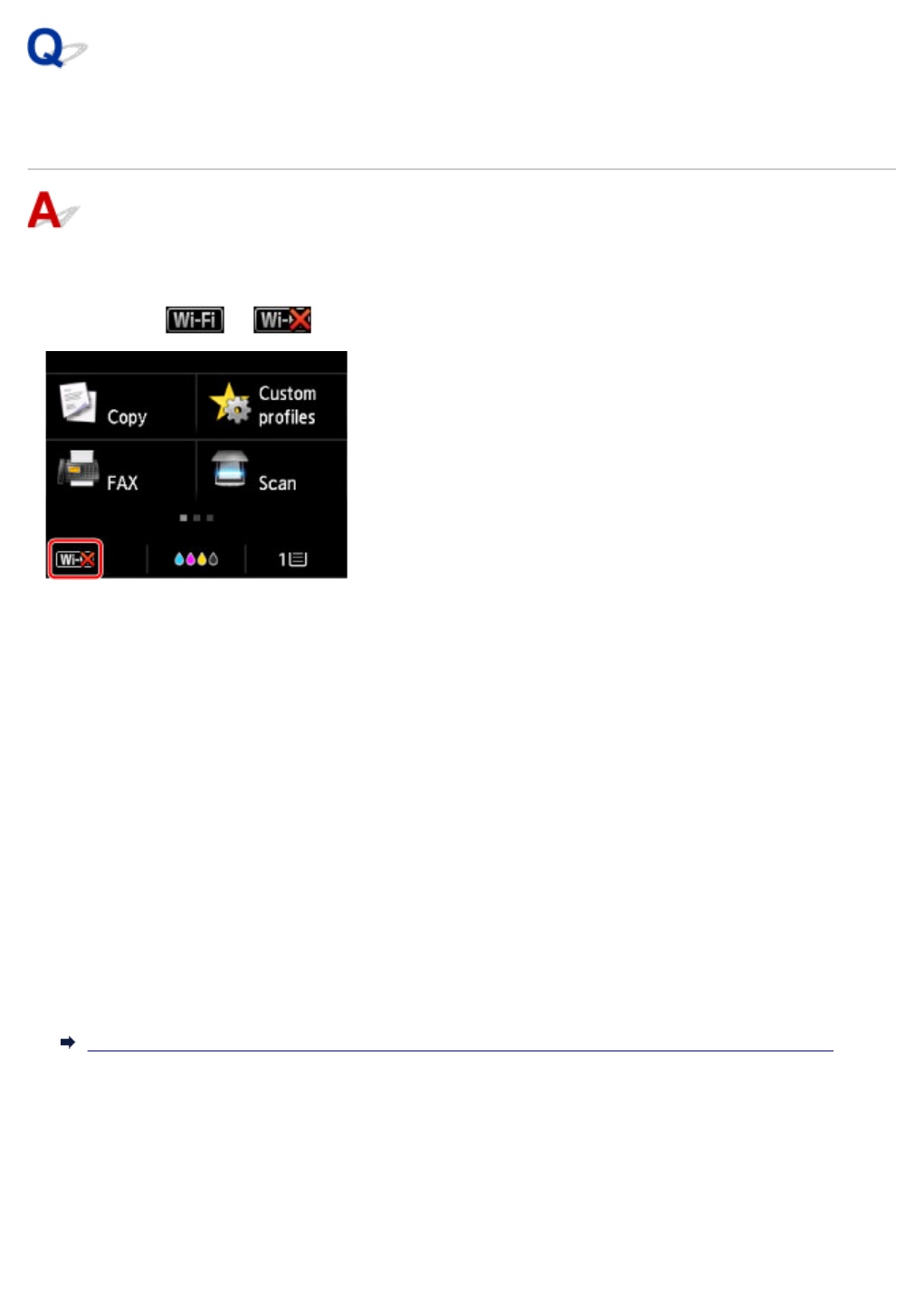
Check 2: Cannot Find Machine on Check Printer Settings Screen
During Wireless LAN Setup
Is printer set to allow wireless communication?
Make sure the or icon is displayed on the touch screen.
If icon is not displayed:
• For Windows:
The printer is not set to allow wireless communication. Click Wireless LAN Setup Information on the
Check Printer Settings screen to check the status and turn on wireless communication on the
printer.
• For Mac OS:
The printer is not set to allow wireless communication. Turn on wireless communication on the printer.
After enabling the wireless LAN setting, click Back to Top on the Check Printer Settings screen to
try to set up the network communication from the beginning.
If icon is displayed:
Go to check 3.
Check 3: Cannot Find Machine on Check Printer Settings Screen During Wireless LAN Setup
1058
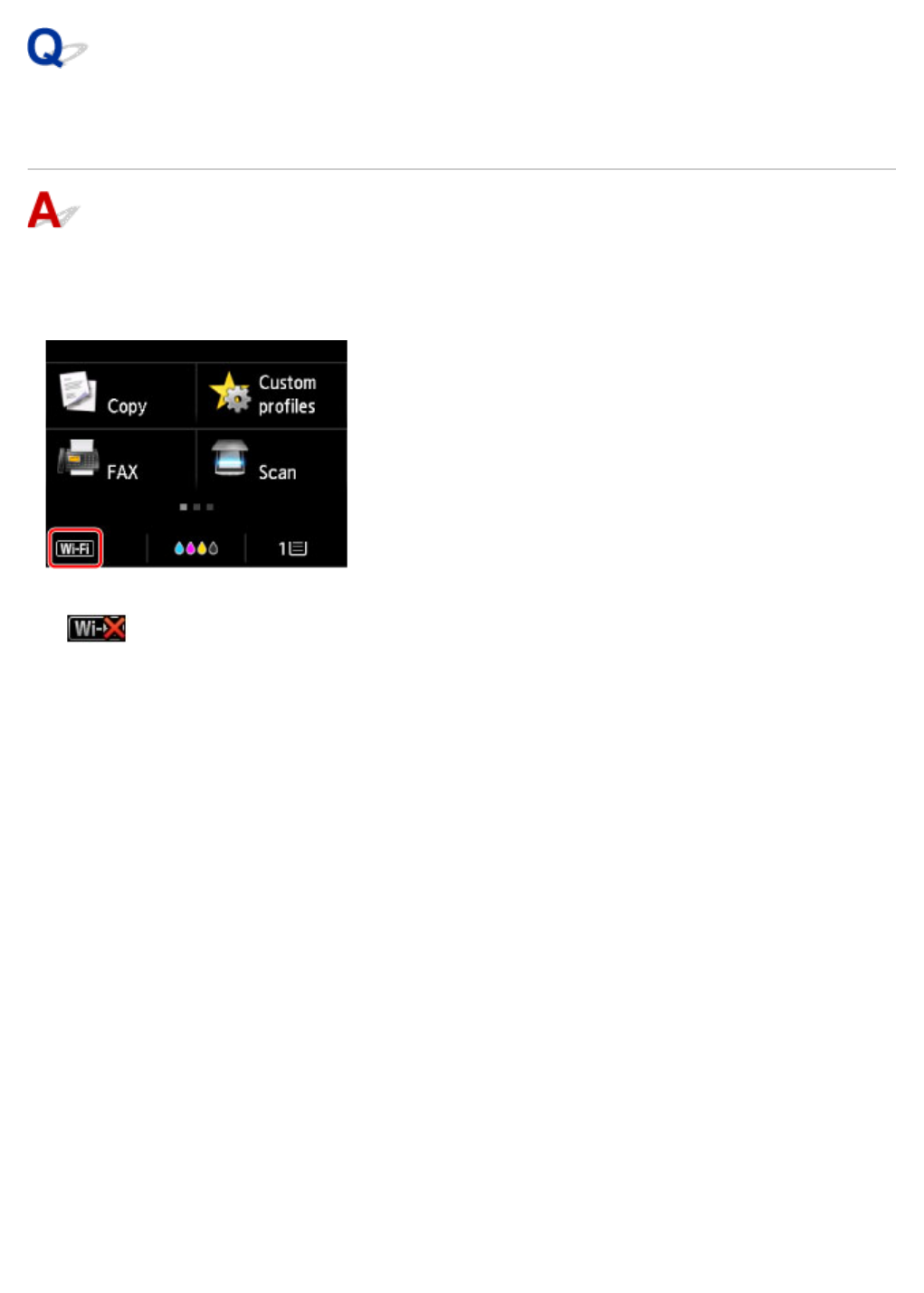
Check 3: Cannot Find Machine on Check Printer Settings Screen
During Wireless LAN Setup
Is printer connected to wireless router?
Use the icon on the touch screen to make sure the printer is connected to the wireless router.
If icon is displayed:
• Checking wireless router location
After checking the wireless router setting, make sure the printer is not placed far away from the
wireless router.
The printer can be up to 50 m (164 ft) from the wireless router indoors. Make sure the printer is close
enough to the wireless router to be used.
Place the wireless router and printer where there are no obstacles between them. Wireless
communication between different rooms or floors is generally poor. Wireless communication can be
impeded by building materials containing metal or concrete. If the printer cannot communicate with
the computer over a wireless LAN due to a wall, place the printer and the computer in the same room.
In addition, if a device like a microwave oven that emits radio waves of the same frequency bandwidth
as a wireless router is nearby, it may cause interference. Place the wireless router as far away from
interference sources as possible.
• Checking wireless router settings
The printer and wireless router should be connected using 2.4 GHz bandwidth. Make sure the
wireless router for the printer's destination is configured to use 2.4 GHz bandwidth.
Check the SSID of the wireless router for the printer on the touch screen.
Tap the icon on the lower left and select See settings.
For more on the wireless router, refer to the instruction manual supplied with the wireless router or
contact its manufacturer.
1059
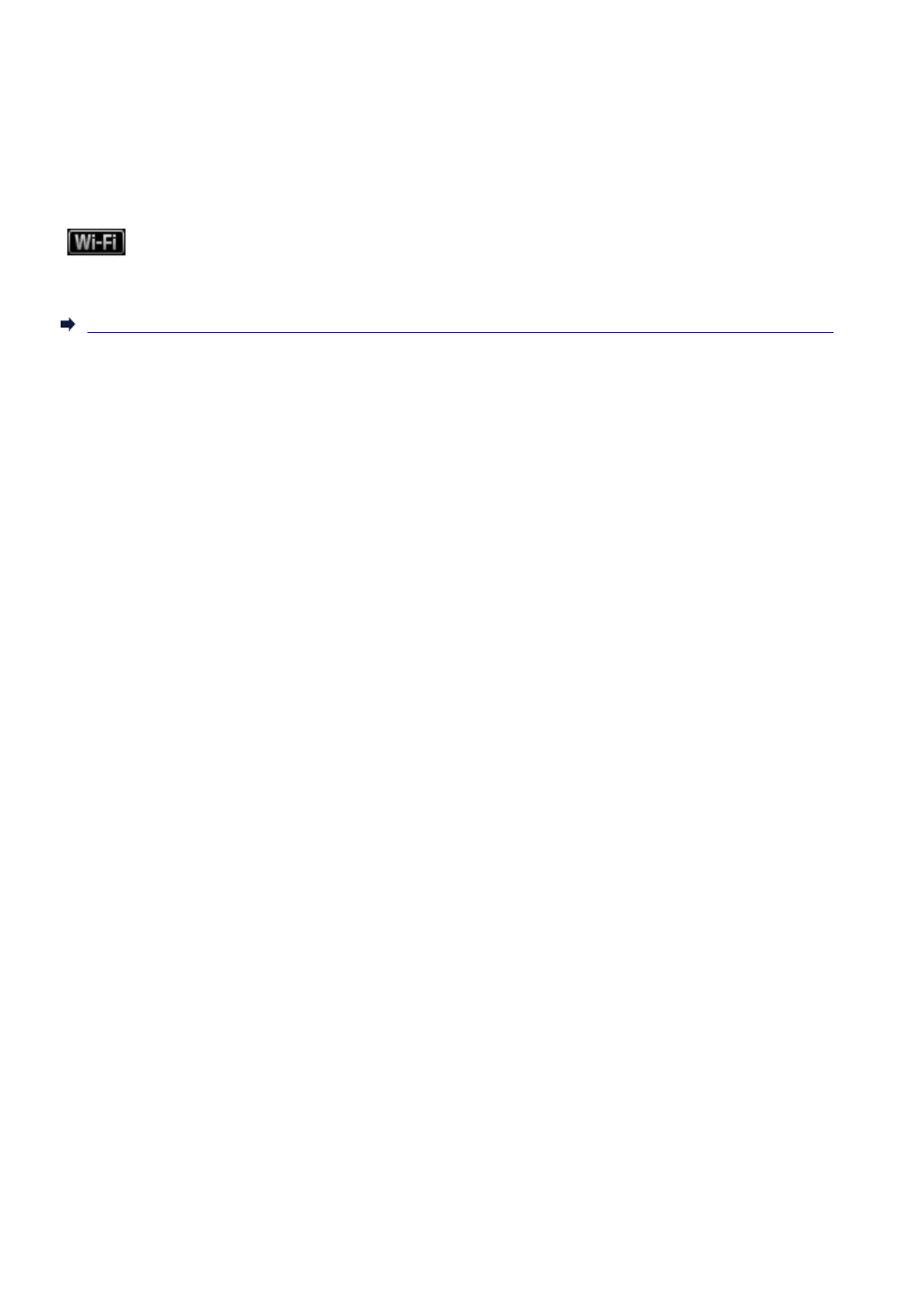
After taking measures above, click Redetect on the Check Printer Settings screen to redetect the
printer.
If the printer is found, follow the instructions on the screen to continue to set up network communication.
If the printer cannot be detected, the printer is not connected to the wireless router. Connect the printer to
the wireless router.
After connecting the printer to the wireless router, set up the network communication from the beginning.
If icon is displayed:
Go to check 4.
Check 4: Cannot Find Machine on Check Printer Settings Screen During Wireless LAN Setup
1060
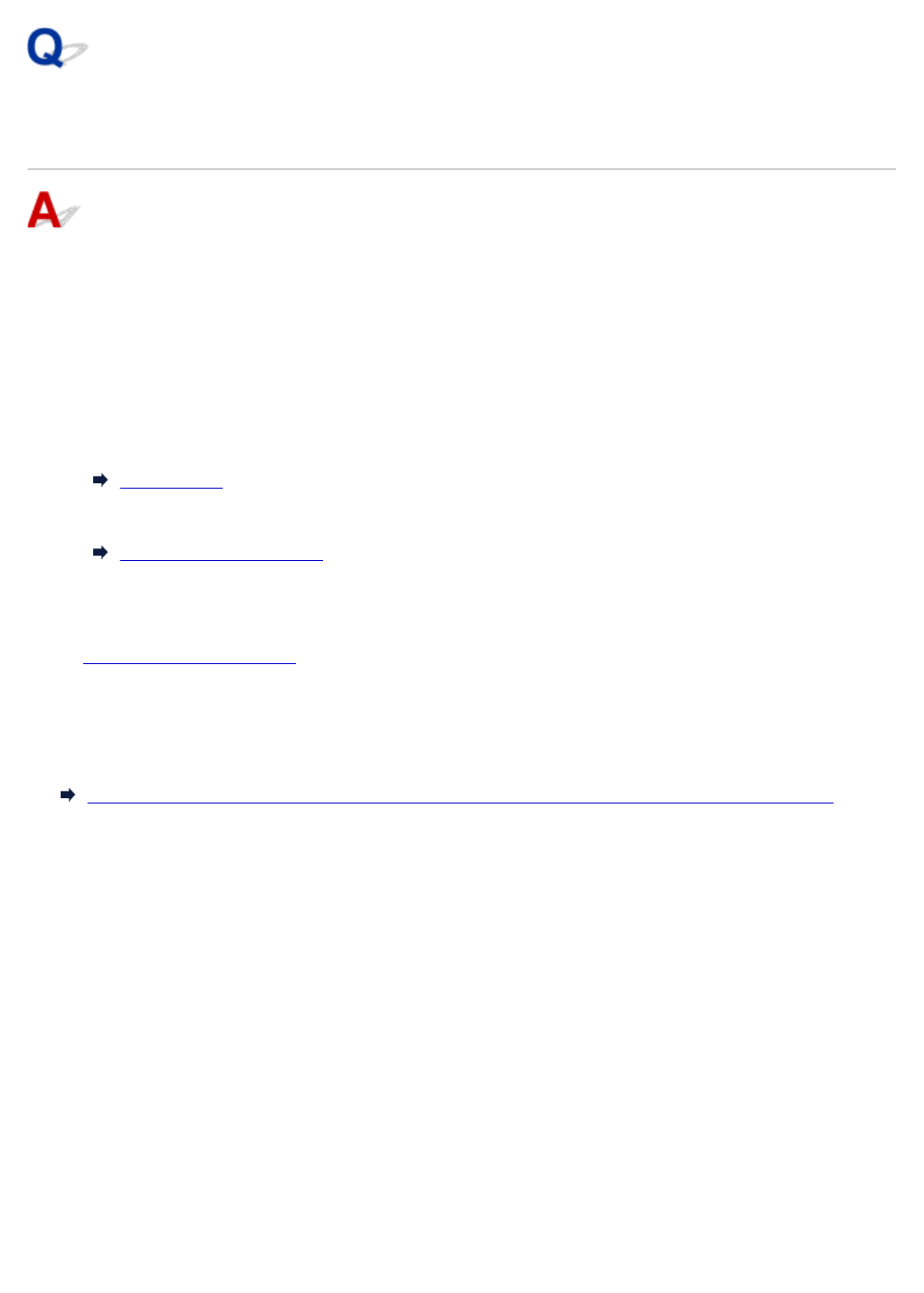
Check 4: Cannot Find Machine on Check Printer Settings Screen
During Wireless LAN Setup
Is printer's IP address specified correctly?
If printer's IP address is not specified correctly, the printer may not be found. Make sure whether printer's
IP address is not used for another device.
To check the printer's IP address, print out the network settings information or use the operation panel to
display it.
• Display on the touch screen.
LAN settings
• Print the network settings.
Printing Network Settings
If the IP address is not specified correctly:
See If an error screen appears: and specify the IP address.
If the IP address is specified correctly:
Go to check 5.
Check 5: Cannot Find Machine on Check Printer Settings Screen During Wireless LAN Setup
1061
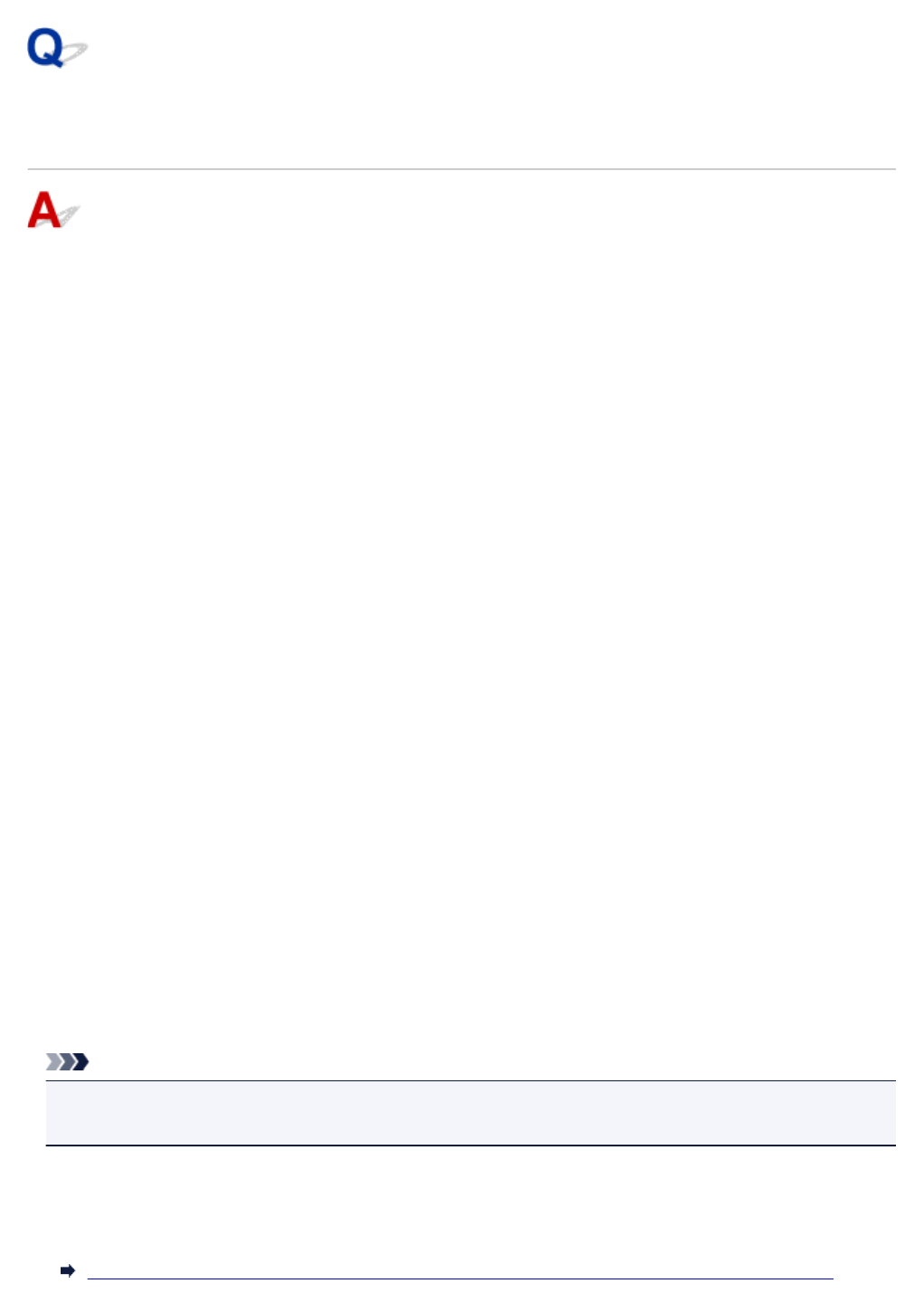
Check 5: Cannot Find Machine on Check Printer Settings Screen
During Wireless LAN Setup
Disable block in firewall function temporarily.
The firewall of your security software or operation system for computer may limit communication between
the printer and your computer. Check the firewall setting of your security software or operation system or
the message shown on your computer and disable block temporarily.
If firewall interferes with setup:
•If message appears:
If a message appears warning that Canon software is attempting to access the network, set the
security software to allow access.
After allowing the software to access, click Redetect on the Check Printer Settings screen to
redetect the printer.
If the printer is found, follow the instructions on the screen to continue to set up the network
communication.
•If no message appears:
Cancel the setup, and then set the security software to allow Canon software below to access the
network.
◦ For Windows:
Setup.exe or Setup64.exe in the win > Driver > DrvSetup folder on the Setup CD-ROM
◦ For Mac OS:
Setup.app, Canon IJ Network Tool.app, canonijnetwork.bundle, CIJScannerRegister.app,
Canon IJ Scan Utility2.app, and CIJSUAgent.app
After setting the security software, redo the network communication setup from the beginning.
After setup is completed, enable firewall.
Note
• For more on firewall settings of your operating system or security software, see instruction manual or
contact its manufacturer.
If firewall settings are not causing problem:
Go to check 6.
Check 6: Cannot Find Machine on Check Printer Settings Screen During Wireless LAN Setup
1062
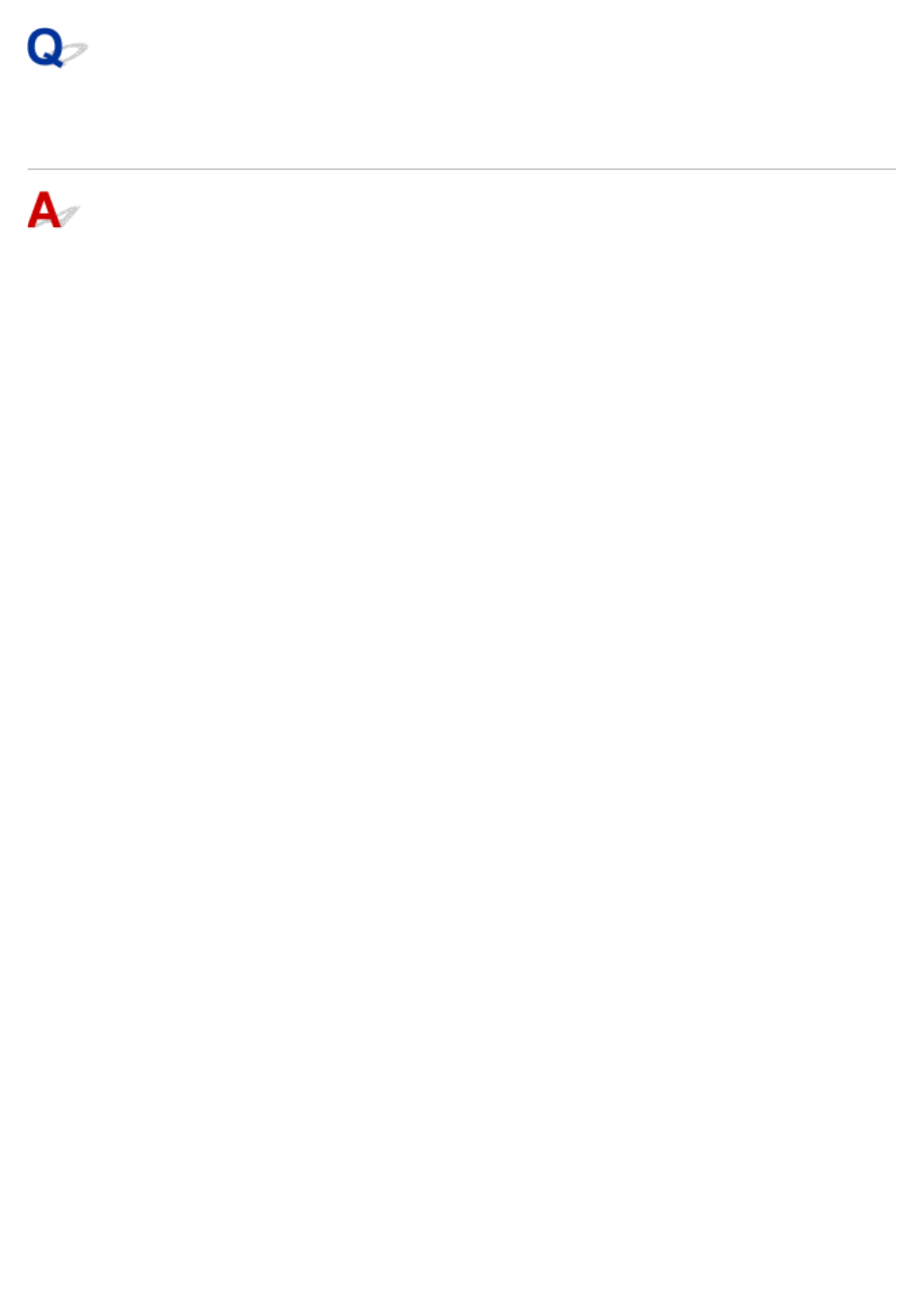
Check 6: Cannot Find Machine on Check Printer Settings Screen
During Wireless LAN Setup
Check wireless router settings.
Check wireless router network connection settings, such as IP address filtering, MAC address filtering,
and DHCP function.
Make sure the same radio channel is assigned to the wireless router and the printer.
To check the settings of the wireless router, see the instruction manual supplied with the wireless router or
contact the manufacturer.
After checking the wireless router settings, click Redetect on the Check Printer Settings screen to
redetect the printer.
If the printer is found, follow the instructions on the screen to continue to set up network communication.
1063
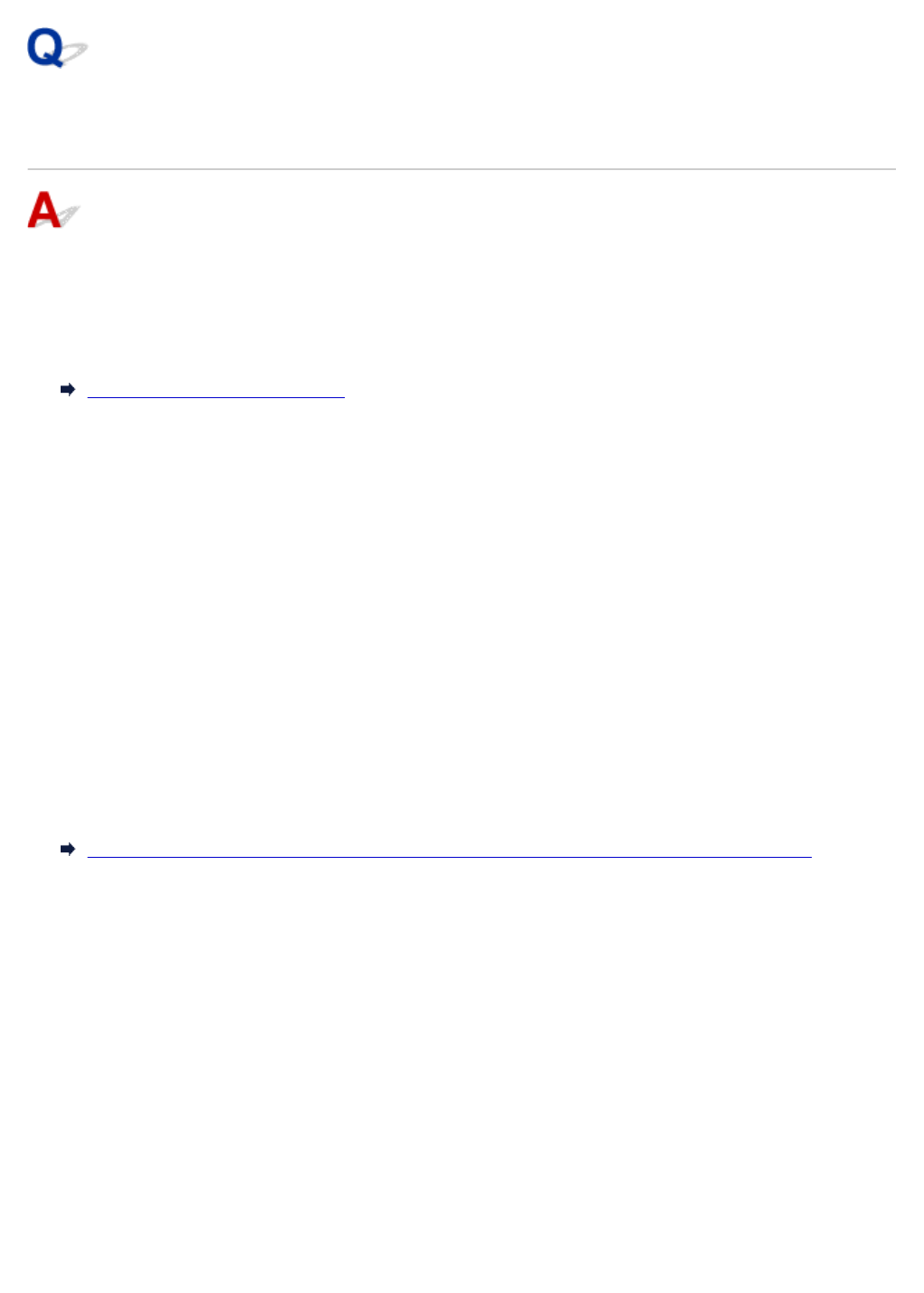
Check 1: Cannot Find Machine on Check Printer Settings Screen
During Wired LAN Setup
Is LAN cable connected, and are printer and router on?
Make sure the LAN cable is connected.
Make sure the printer is turned on.
Confirming that the Power Is On
Make sure the router is turned on.
If LAN cable is connected and printer or network device is off:
Turn on printer or network device.
It may take a while for the printer and network device to become ready for use once they are turned on.
Wait a while after turning on the printer or network device, and then click Redetect on the Check Printer
Settings screen to redetect the printer.
If the printer is found, follow the instructions on the screen to continue to set up the network
communication.
If LAN cable is connected and printer and network device are on:
If the printer cannot not be found after trying to redetect it, even though the printer and the network device
are on, go to Check 2.
Check 2: Cannot Find Machine on Check Printer Settings Screen During Wired LAN Setup
1064
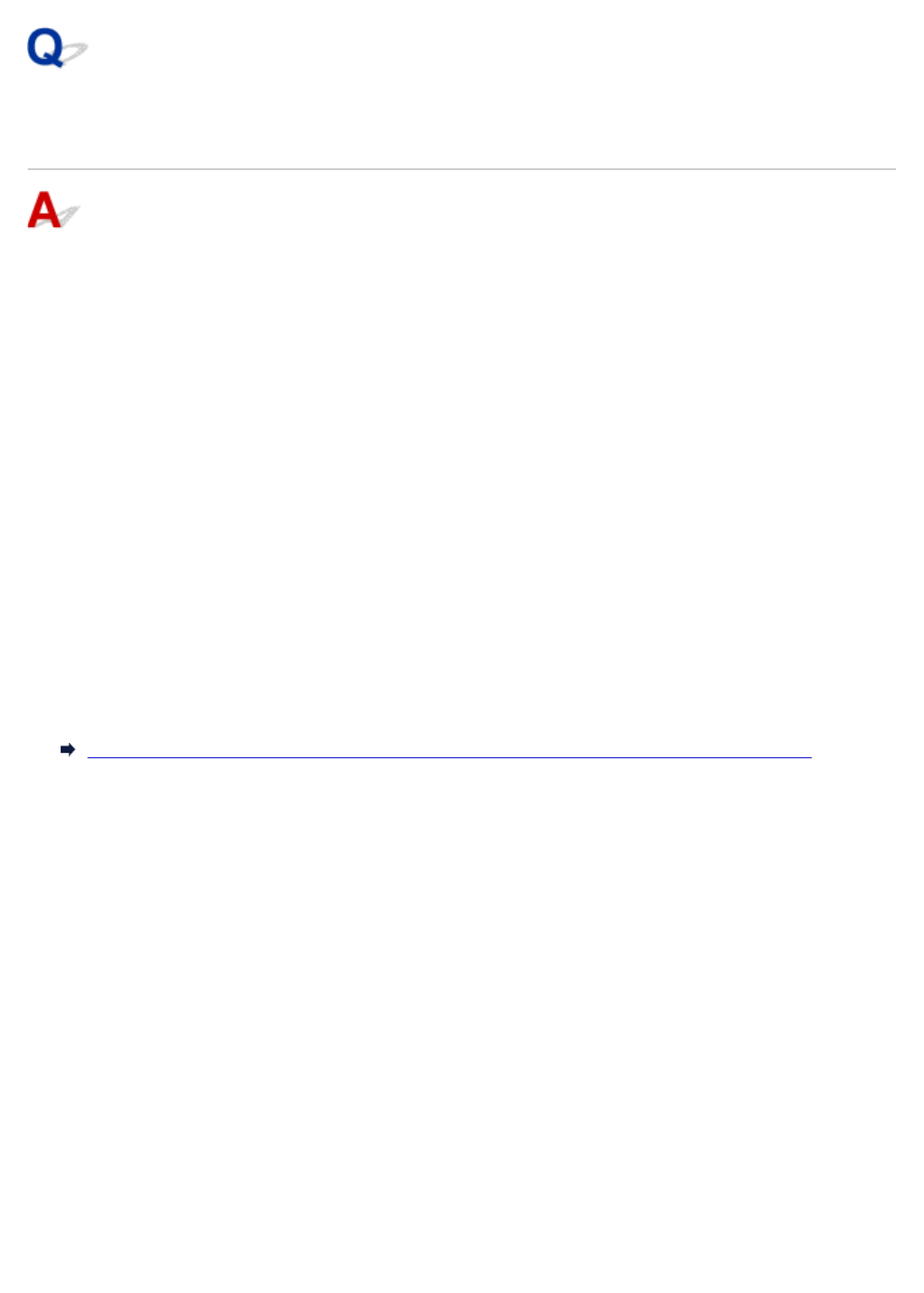
Check 2: Cannot Find Machine on Check Printer Settings Screen
During Wired LAN Setup
Can you view any web pages on your computer?
Make sure the computer and network device (router, etc.) are configured and the computer is connected
to the network.
If you cannot view any web pages:
Click Cancel on the Check Printer Settings screen to cancel to set up the network communication.
After that, configure the computer and network device.
For the procedures, refer to the instruction manuals supplied with the computer and network device, or
contact their manufacturers.
If you can view web pages after configuring the computer and network device, try to set up the network
communication from the beginning.
If you can view web pages:
Go to check 3.
Check 3: Cannot Find Machine on Check Printer Settings Screen During Wired LAN Setup
1065
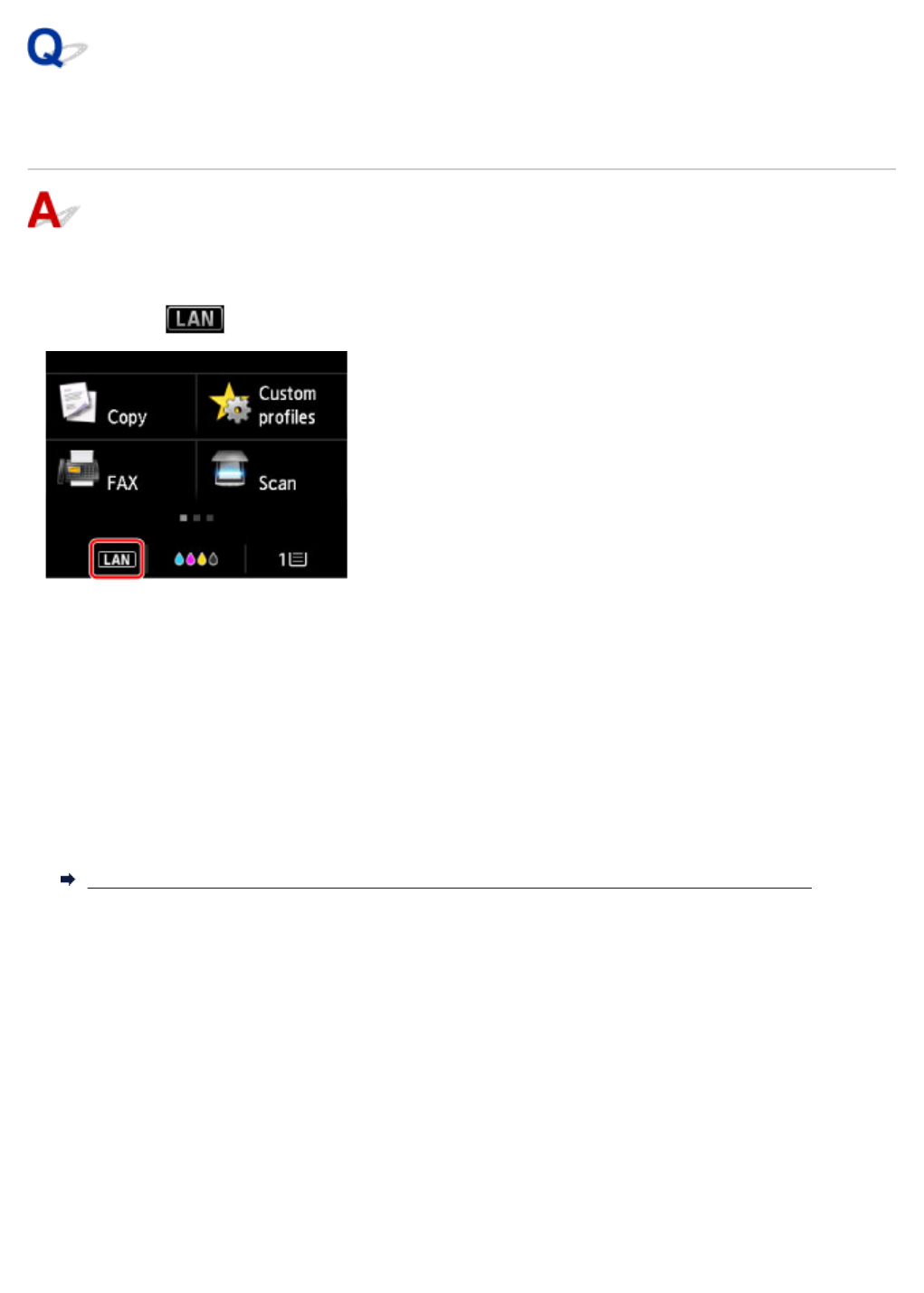
Check 3: Cannot Find Machine on Check Printer Settings Screen
During Wired LAN Setup
Is printer set to allow wired communication?
Make sure the icon is displayed on the touch screen.
If icon is not displayed:
The printer is not set to allow wired communication. Turn on wired communication on the printer.
Once you have turned on wired communication, redo the network communication setup from the
beginning.
If icon is displayed:
Go to check 4.
Check 4: Cannot Find Machine on Check Printer Settings Screen During Wired LAN Setup
1066
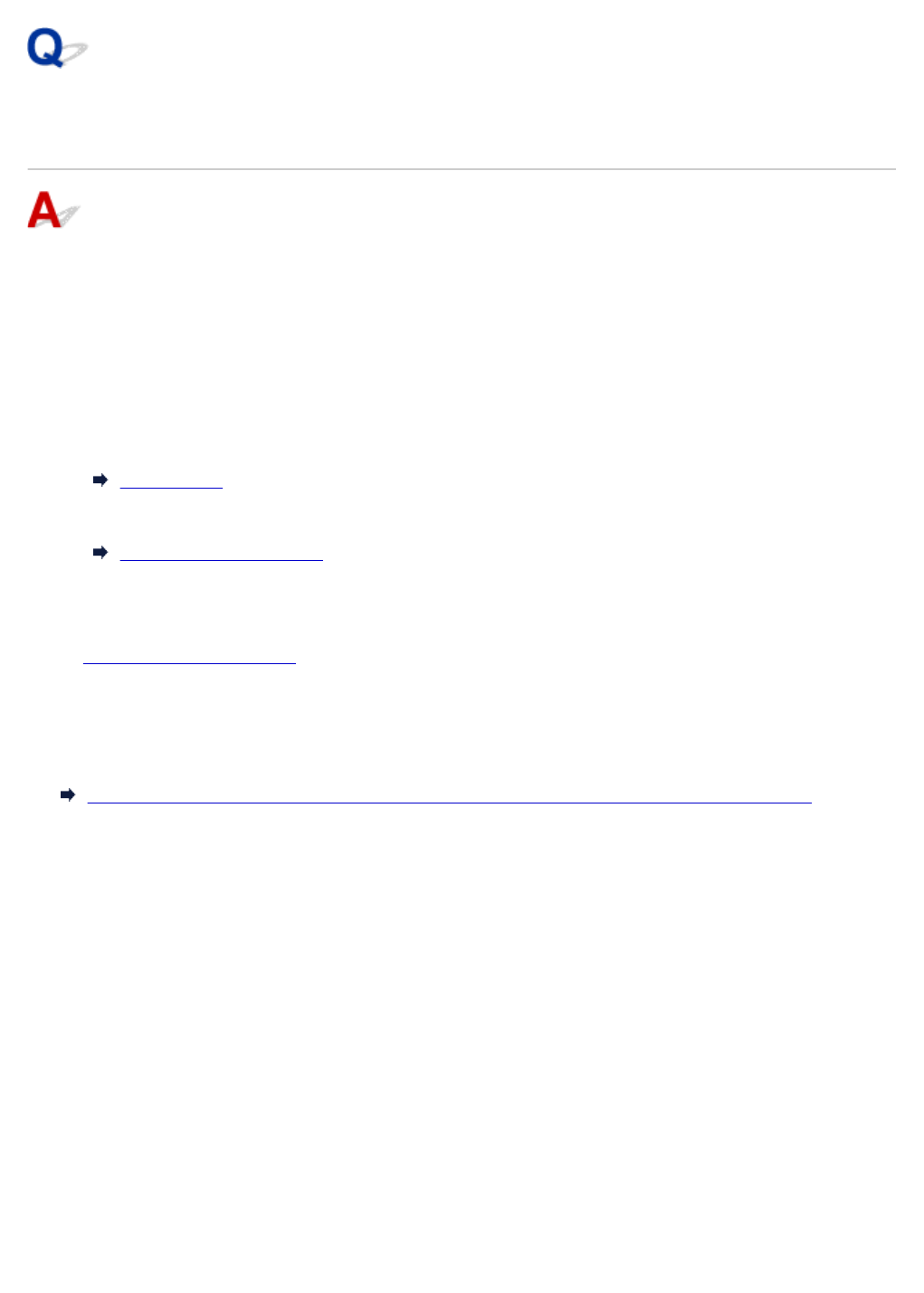
Check 4: Cannot Find Machine on Check Printer Settings Screen
During Wired LAN Setup
Is printer's IP address specified correctly?
If printer's IP address is not specified correctly, the printer may not be found. Make sure whether printer's
IP address is not used for another device.
To check the printer's IP Address, print out the network settings information or use the operation panel to
display it.
• Display on the touch screen.
LAN settings
• Print the network settings.
Printing Network Settings
If the IP address is not specified correctly:
See If an error screen appears: and specify the IP address.
If the IP address is specified correctly:
Go to check 5.
Check 5: Cannot Find Machine on Check Printer Settings Screen During Wired LAN Setup
1067
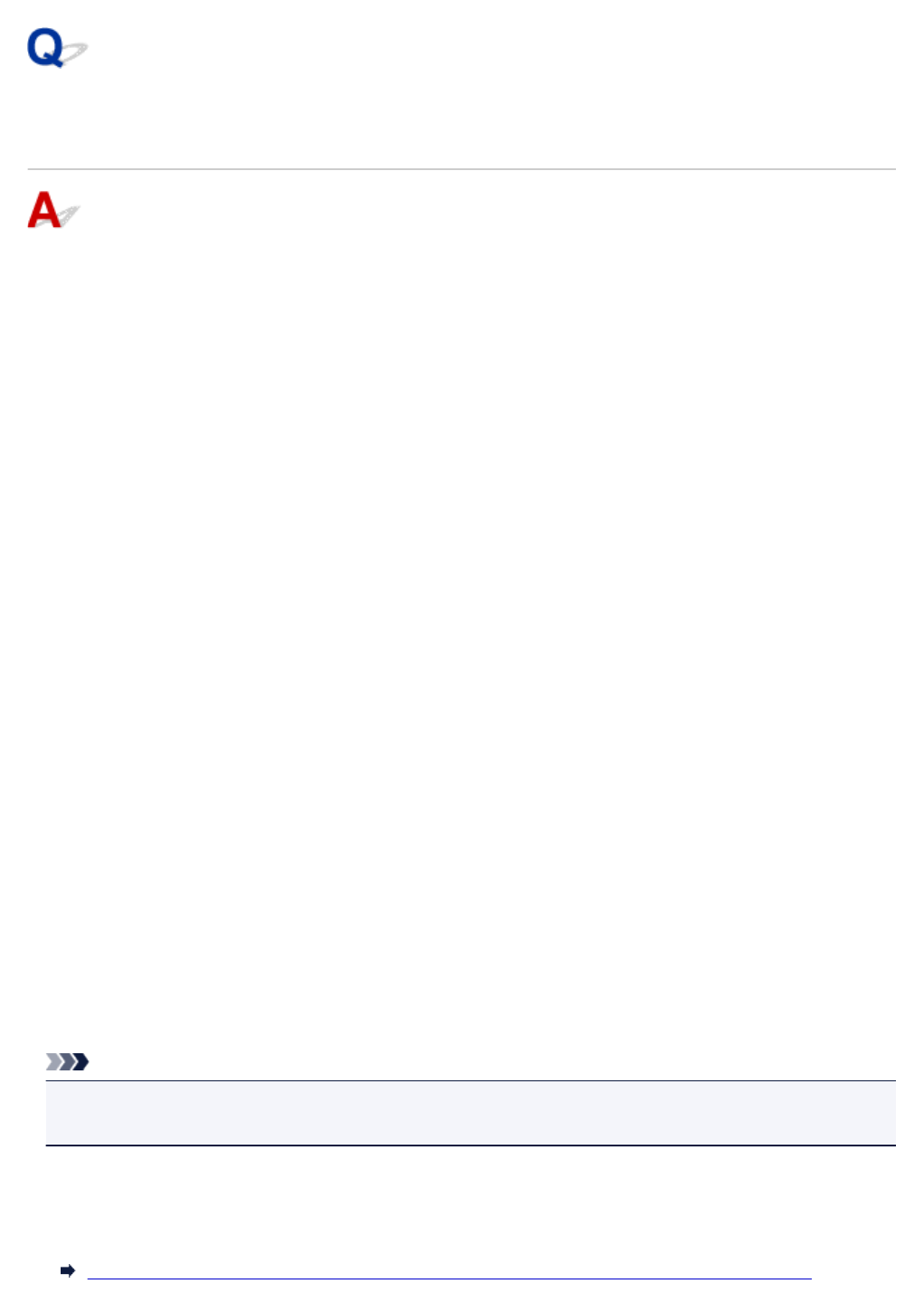
Check 5: Cannot Find Machine on Check Printer Settings Screen
During Wired LAN Setup
Disable block in firewall function temporarily.
The firewall of your security software or operation system for computer may limit communication between
the printer and your computer. Check the firewall setting of your security software or operation system or
the message shown on your computer and disable block temporarily.
If firewall interferes with setup:
•If message appears:
If a message appears warning that Canon software is attempting to access the network, set the
security software to allow access.
After allowing the software to access, click Redetect on the Check Printer Settings screen to
redetect the printer.
If the printer is found, follow the instructions on the screen to continue to set up the network
communication.
•If no message appears:
Cancel the setup, and then set the security software to allow Canon software below to access the
network.
◦ For Windows:
Setup.exe or Setup64.exe in the win > Driver > DrvSetup folder on the Setup CD-ROM
◦ For Mac OS:
Setup.app, Canon IJ Network Tool.app, canonijnetwork.bundle, CIJScannerRegister.app,
Canon IJ Scan Utility2.app, and CIJSUAgent.app
After setting the security software, redo the network communication setup from the beginning.
After setup is completed, enable firewall.
Note
• For more on firewall settings of your operating system or security software, see instruction manual or
contact its manufacturer.
If firewall settings are not causing problem:
Go to check 6.
Check 6: Cannot Find Machine on Check Printer Settings Screen During Wired LAN Setup
1068
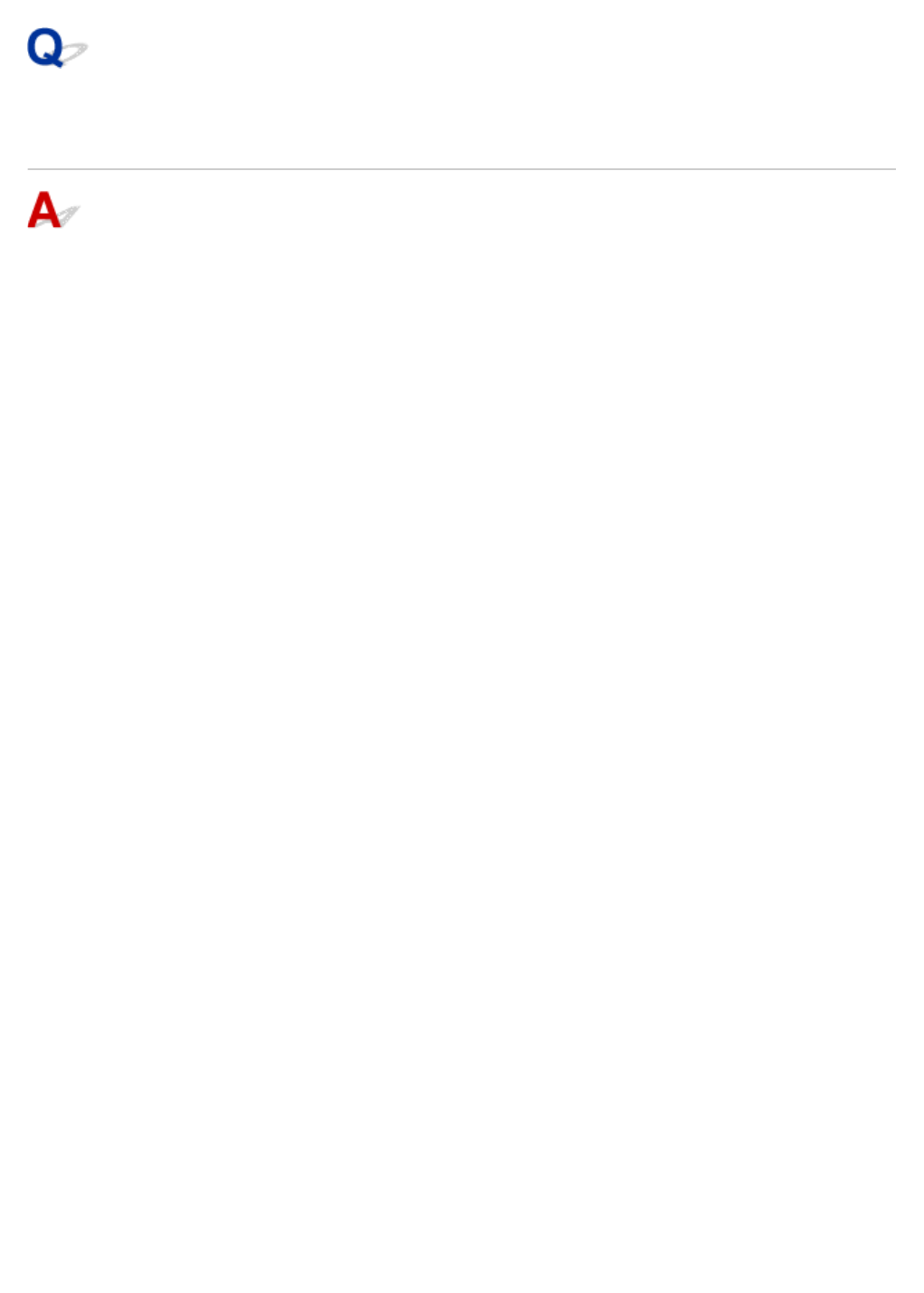
Check 6: Cannot Find Machine on Check Printer Settings Screen
During Wired LAN Setup
Check router settings.
Check router network connection settings such as IP address filtering, MAC address filtering, and DHCP
function.
For more on checking the settings of the router, refer to the instruction manual supplied with the router or
contact its manufacturer.
After checking the router settings, click Redetect on the Check Printer Settings screen to redetect the
printer.
If the printer is found, follow the instructions on the screen to continue to set up network communication.
1069
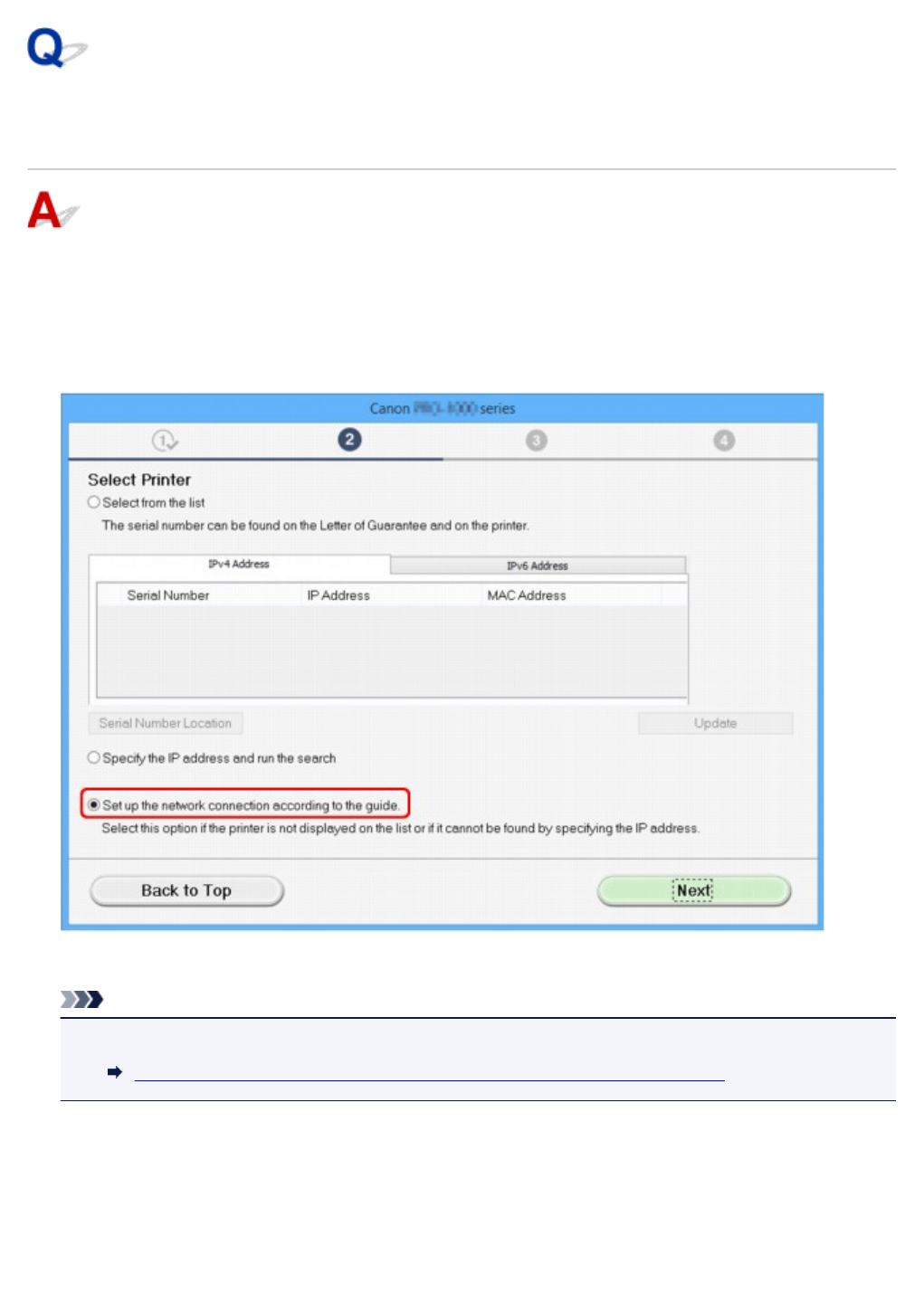
Cannot Find Machine after Searching it on Printer Detection
Screen During Setup
•For Windows:
The printer could not be detected with the current setup method.
Select the Set up the network connection according to the guide radio button and click Next. The
screen to show another setup method is displayed.
Perform setup following the instructions on the screen.
Note
• You can search for printers by an IP address or host name.
Searching Machine by IP Address or Host Name During Setup (Windows)
•For Mac OS:
The printer could not be detected with the current setup method.
Select the Setting printer could not be found on the list check box and click Next. The screen to
show another setup method is displayed.
1070
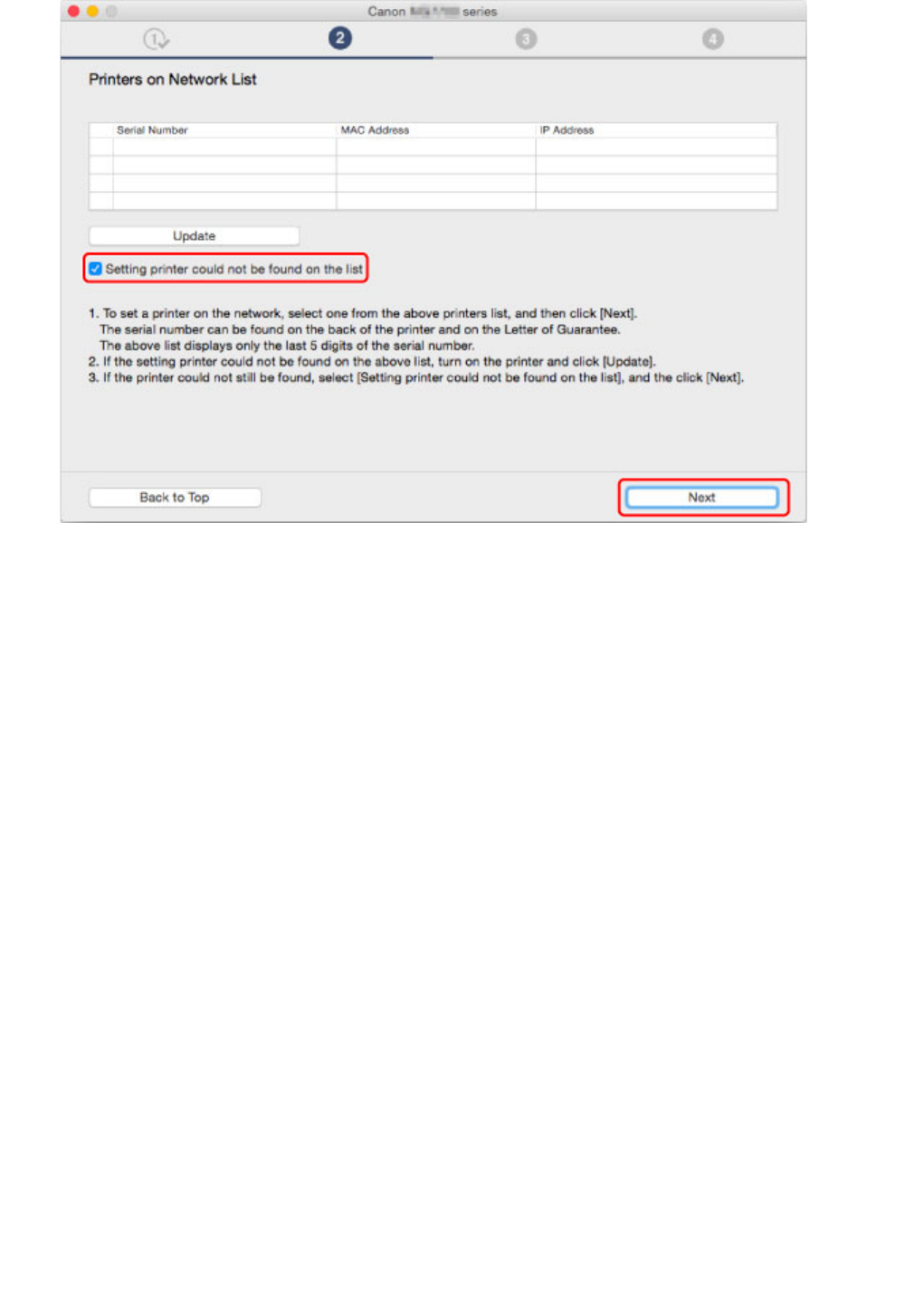
Perform setup following the instructions on the screen.
1071
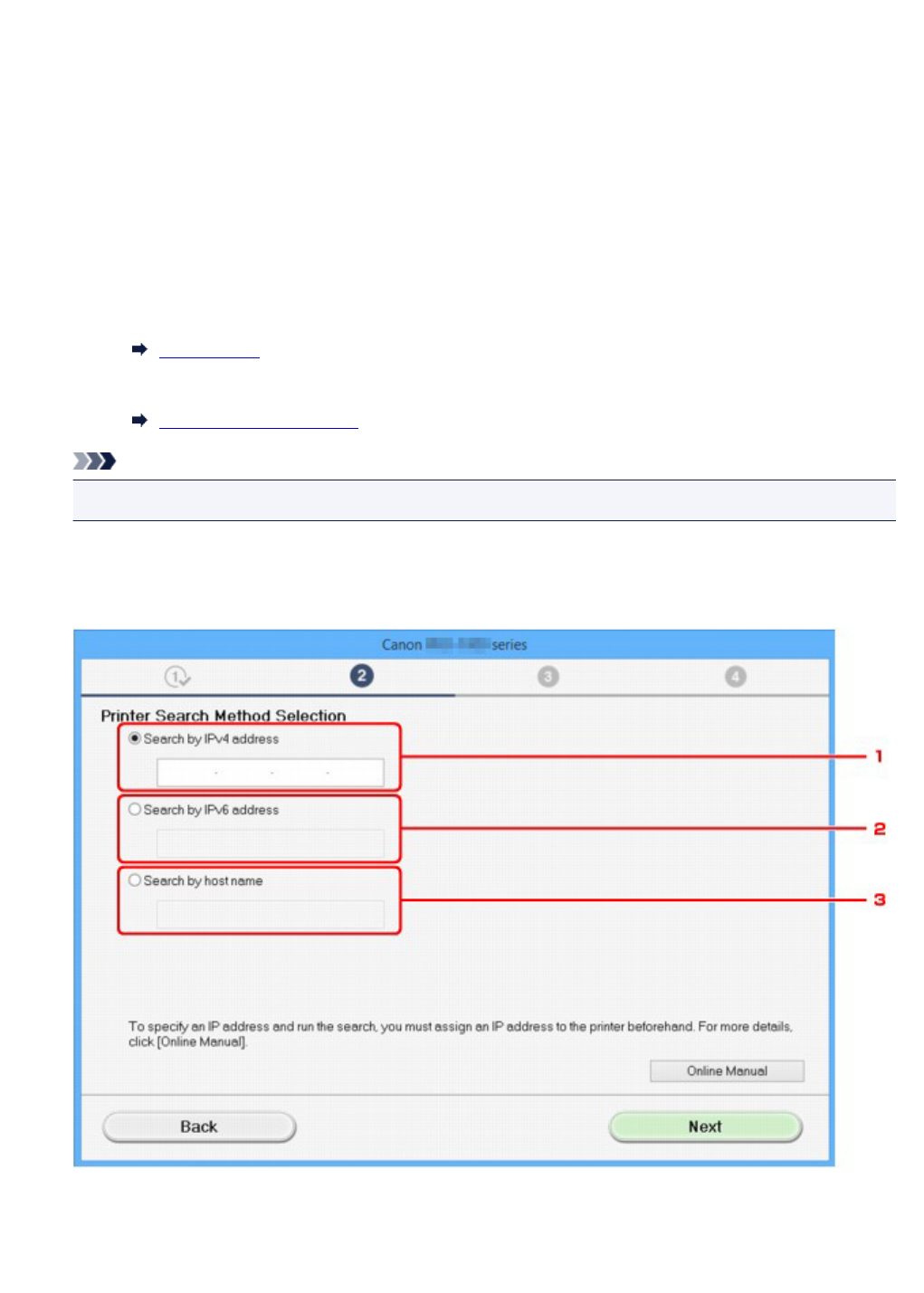
Searching Machine by IP Address or Host Name During Setup
(Windows)
If the printer cannot be found on the Select Printer screen, search for the printer by an IP address or host
name. Select Specify the IP address and run the search radio button and click Next. The screen to select
searching criteria appears.
1. Check printer's IP address or host name.
To check the printer's IP Address or host name, print out the network settings information or use the
operation panel to display it.
•Display on the touch screen.
LAN settings
•Print the network settings.
Printing Network Settings
Note
• If you use the printer in an office, ask the network administrator.
2. Specify searching method.
Select one of the method below.
1. Search by IPv4 address
Select to search for printers by IPv4 address.
2. Search by IPv6 address
1072
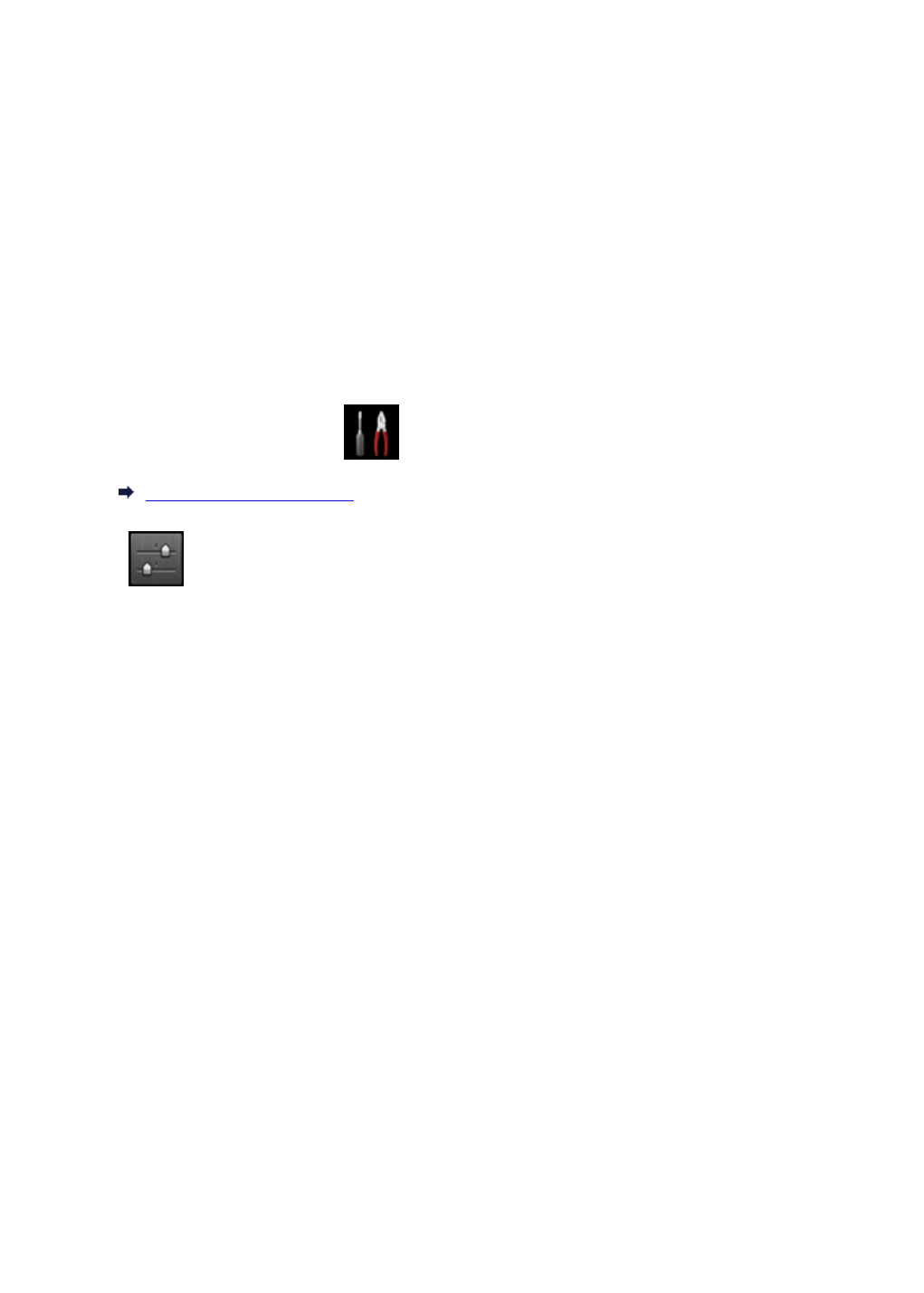
Select to search for printers by IPv6 address.
3. Search by host name
Select to search for printers by host name. A host name is referred to as LLMNR host name or
Bonjour name.
3. Enter IP address or host name and click Next.
Machine search starts.
If an error screen appears:
Resolve the error according to the instruction on the screen.
If the IP address you entered is already used for another device, follow the procedure below to specify
printer's IP address.
1. Flick HOME screen and tap Setup.
Using the Operation Panel
2. Tap Device settings.
3. Tap LAN settings.
If you specify the administrator password, enter the password.
4. Tap Other settings.
5. Tap TCP/IP settings.
If you specify IPv4 address:
1. Tap IPv4.
2. Tap OK on the displayed screen.
3. Tap IP address.
4. Tap Manual setup.
Tapping Auto setup specifies the IP address automatically.
5. Enter IP address.
6. Tap OK.
7. Enter subnet mask.
8. Tap OK.
9. Enter default gateway.
10. Tap OK.
The IPv4 address has been specified.
1073
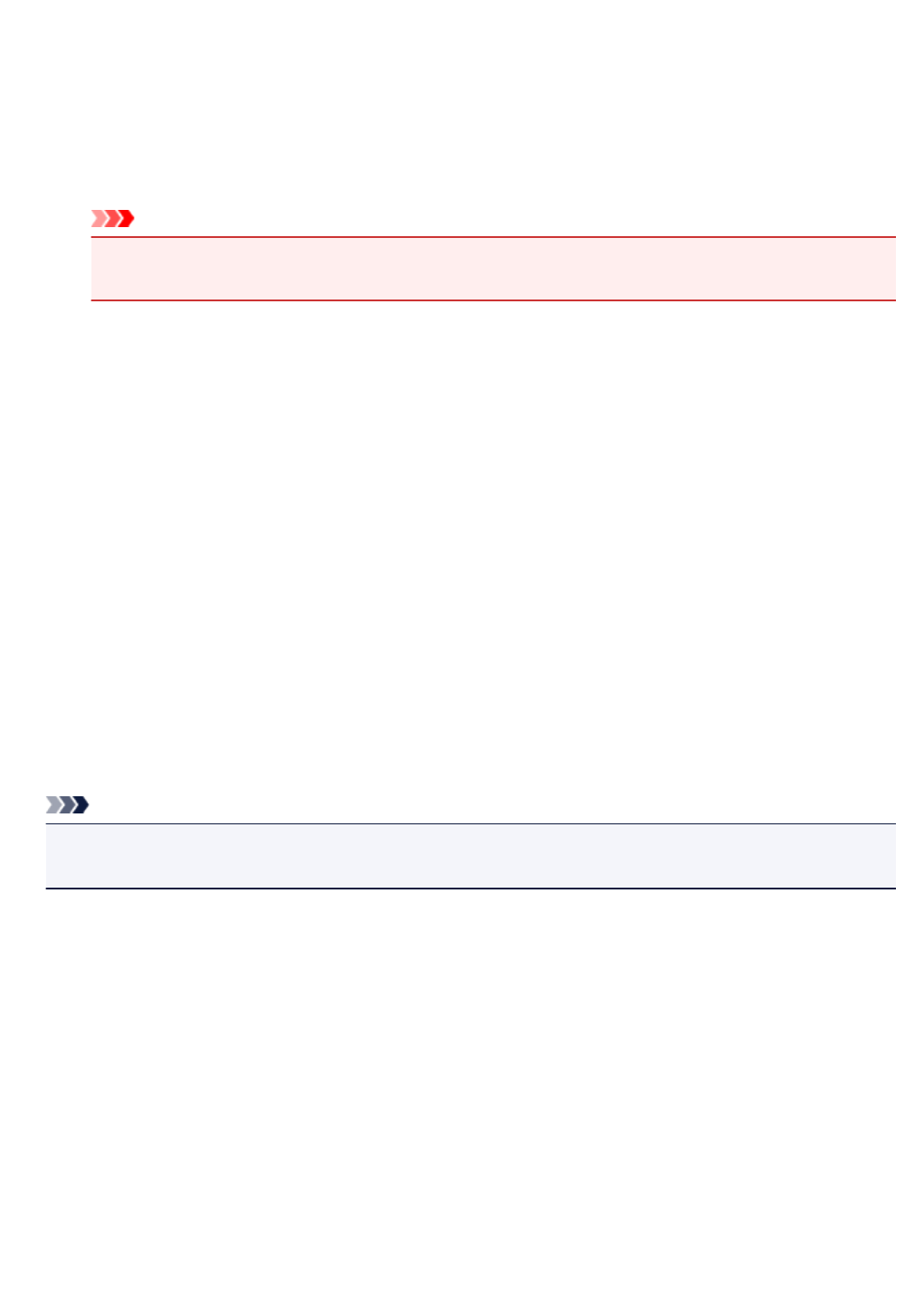
If you specify IPv6 address:
1. Tap IPv6.
2. Tap OK on the displayed screen.
3. Tap Enable/disable IPv6.
4. Tap Enable.
The IPv6 address has been specified.
Important
•If firewall is enabled on the computer, printers on a different subnet may not be detected. Disable
firewall.
If firewall interferes with printer search:
•If message appears:
If a message appears warning that Canon software is attempting to access the network, set the
security software to allow access.
After allowing the software to access, specify the IP address or host name and search for printers
again.
If the printer is found, follow the instructions on the screen to continue to set up the network
communication.
•If no message appears:
Cancel searching printers, and then set the security software to allow Canon software below to
access the network.
Setup.exe or Setup64.exe in the win > Driver > DrvSetup folder on the Setup CD-ROM
After setting the security software, specify the IP address or host name and search for printers again.
Note
• For more on firewall settings of your operating system or security software, see instruction manual or
contact its manufacturer.
1074
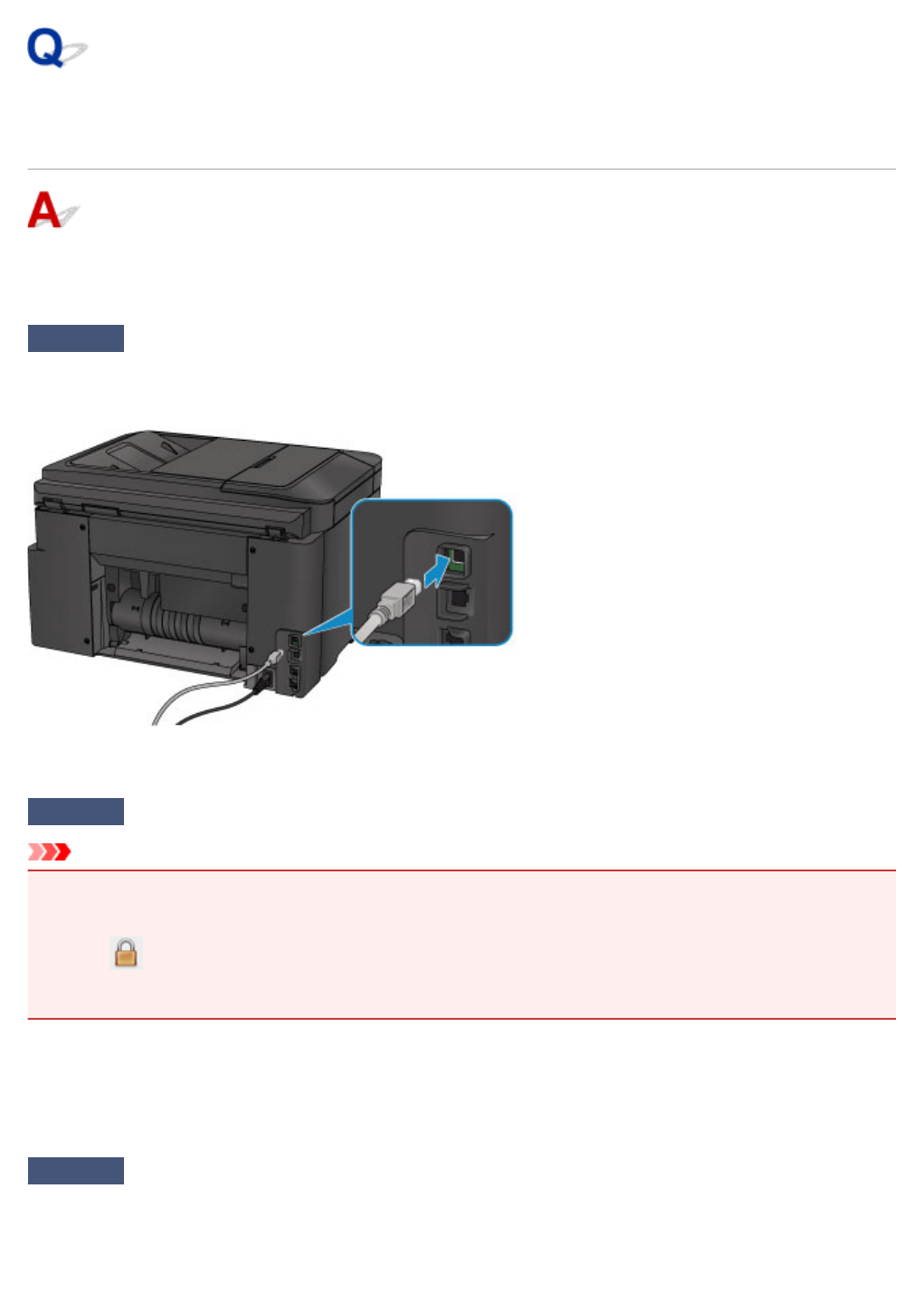
Cannot Proceed beyond Printer Connection Screen/Connect Cable
Screen
If you cannot proceed beyond the Printer Connection screen or the Connect Cable screen, check the
following.
Check1 Make sure USB cable is securely plugged in to printer and computer.
Connect the printer and the computer using a USB cable as the illustration below. The USB port is located at the
back of the printer.
Check the items below only if you cannot proceed beyond the Printer Connection screen.
Check2 Follow procedure below to connect printer and computer again.
Important
•For Mac OS, make sure the lock icon is on the lower left of the Printers & Scanners screen (Print & Scan
screen in Mac OS X v10.8 or Mac OS X v10.7).
If the icon (locked) is displayed, click the icon to unlock. (The administrator name and the password
are necessary to unlock.)
1. Turn off printer.
2. Unplug USB cable from printer and computer and connect it again.
3. Turn on printer.
Check3 If you cannot resolve problem, follow procedure below to reinstall MP Drivers.
• For Windows:
1. Click Cancel.
1075
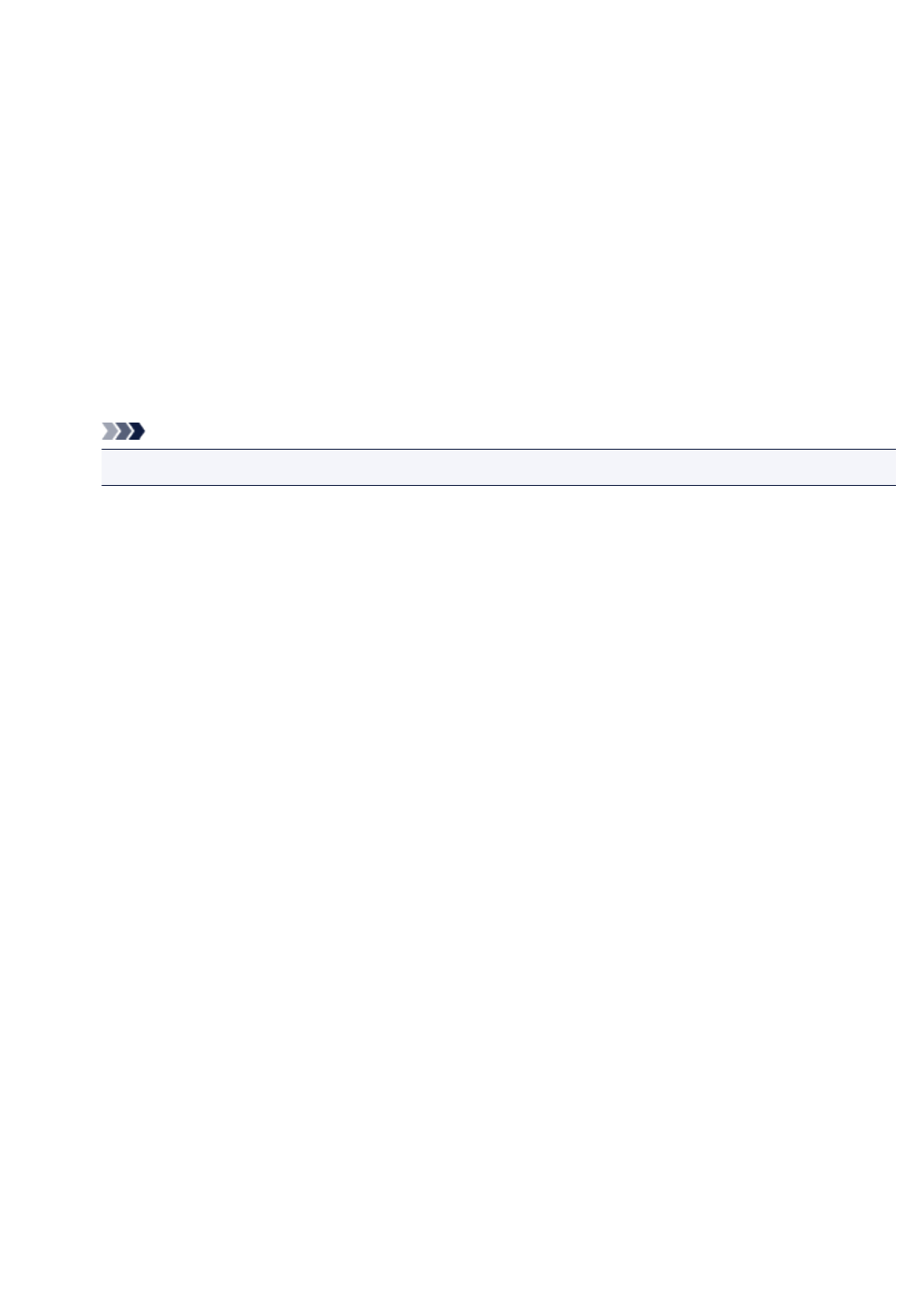
◦ If the Installation Failure screen appears:
1. Click Start Over.
2. Click Exit on Start Setup screen and finish setup.
◦ If the Connection failed. screen appears:
1. Click Next.
2. Click Next on displayed screen.
3. Click Back to Top on Select Printer screen.
4. Click Exit on Start Setup screen and finish setup.
3. Turn off printer.
4. Restart computer.
5. Make sure you have no application software running.
6. Redo setup according to instructions on Canon website.
Note
•You can use the Setup CD-ROM to redo setup.
•For Mac OS:
1. Click Next.
2. Click Exit on displayed screen and finish setup.
3. Turn off printer.
4. Restart computer.
5. Make sure you have no application software running.
6. Redo setup according to instructions on Canon website.
1076
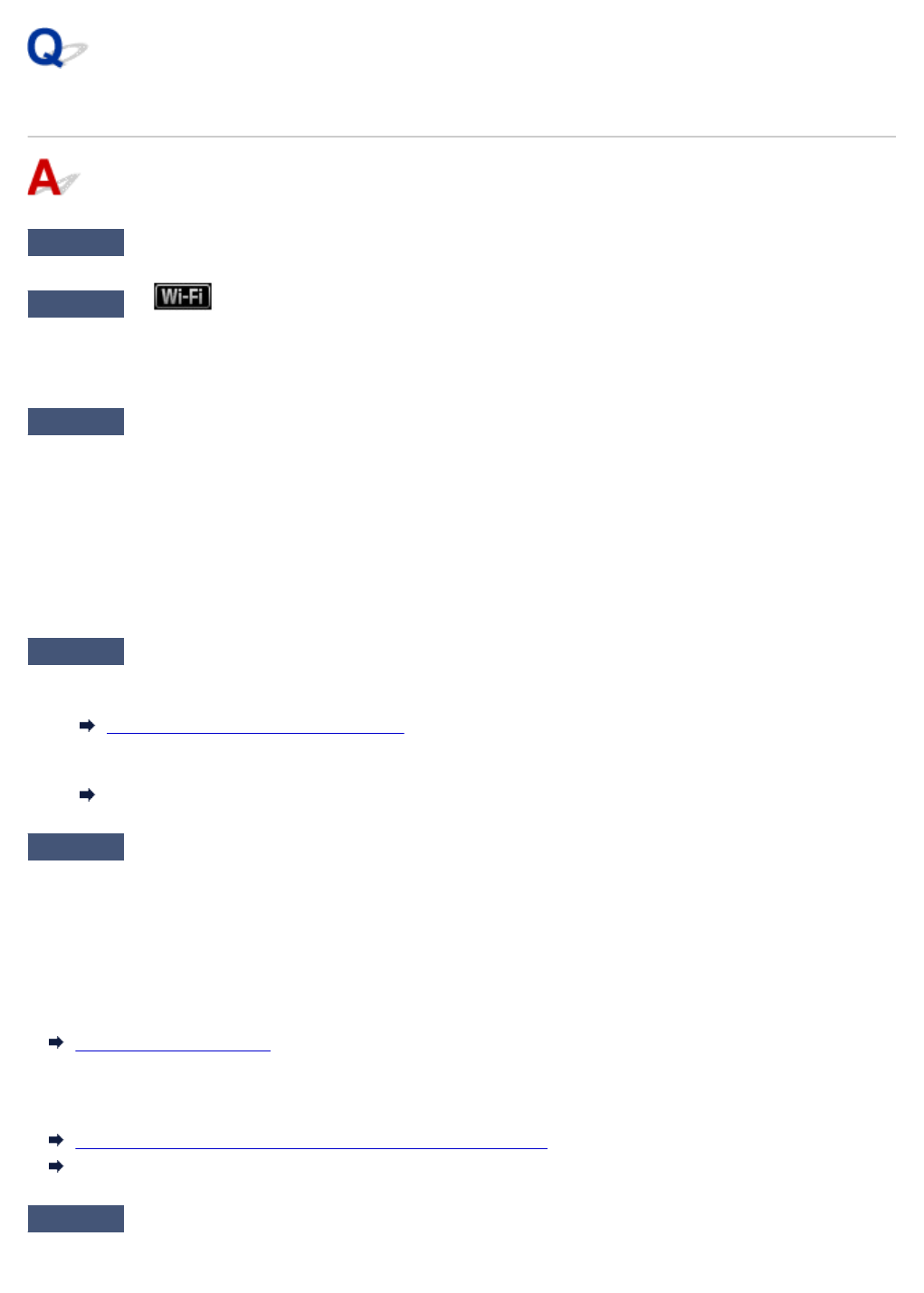
Cannot Find Machine while Using Wireless LAN
Check1 Make sure the printer is turned on.
Check2 Is icon displayed on touch screen?
If the icon is not displayed, tap the icon on the lower left and select Activate wireless LAN on the Change LAN
screen.
Check3 Make sure printer setup is complete.
If it is not, perform setup.
•For Windows:
Use the Setup CD-ROM or follow the instructions on the Canon website.
•For Mac OS:
Follow the instructions on the Canon website.
Check4 Look for printer again.
•For Windows:
IJ Network Device Setup Utility Screen
•For Mac OS:
Canon IJ Network Tool Screen
Check5 Make sure printer and wireless router network settings match.
Make sure the network settings of the printer (e.g. wireless router name, SSID, network key, etc.) are identical
with those of the wireless router.
To check the settings of the wireless router, refer to the instruction manual provided with it or contact its
manufacturer.
To check the current network settings of the printer, print out the network setting information.
Printing Network Settings
If the printer network settings do not match with those of the wireless router, change the network settings of the
printer to match with those of the wireless router.
Network Settings (IJ Network Device Setup Utility) (Windows)
Network Communication (Mac OS)
Check6 Make sure the printer is not placed too far away from the wireless router.
1077
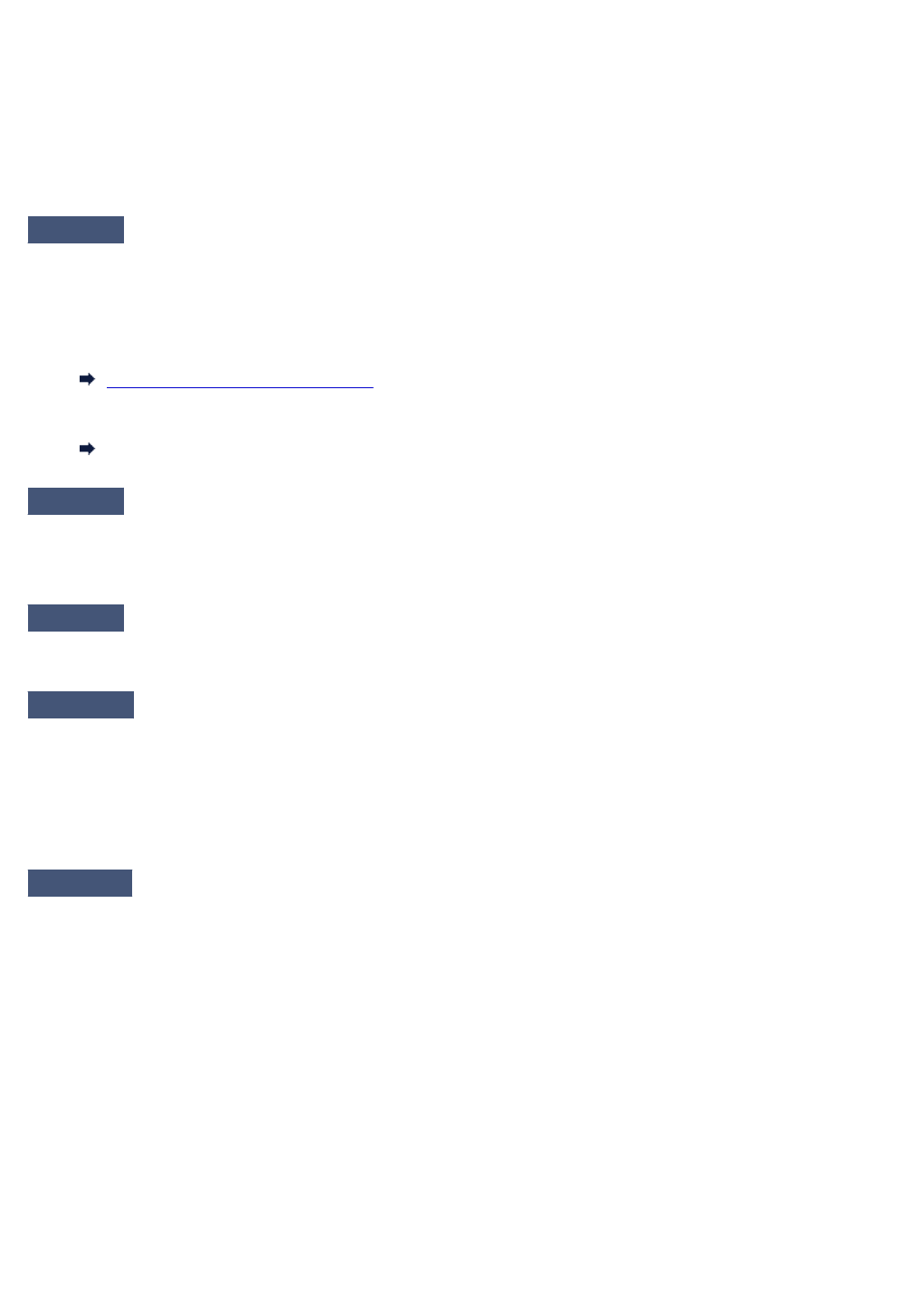
Place the wireless router and printer where there are no obstacles between them. Wireless communication
between different rooms or floors is generally poor. Wireless communication can be impeded by building
materials containing metal or concrete. If the printer cannot communicate with the computer over a wireless LAN
due to a wall, place the printer and the computer in the same room.
In addition, if a device like a microwave oven that emits radio waves of the same frequency bandwidth as a
wireless router is nearby, it may cause interference. Place the wireless router as far away from interference
sources as possible.
Check7 Make sure wireless signal is strong. Monitor signal status and move printer and
wireless router as necessary.
To check the radio status,
• For Windows:
Checking Wireless Network Status
•For Mac OS:
Monitoring Wireless Network Status
Check8 Make sure the computer is connected to the wireless router.
For more on how to check the computer settings or connection status, see your computer instruction manual or
contact its manufacturer.
Check9 Make sure Enable bidirectional support is selected in the Ports sheet of the
properties dialog box of the printer driver. (Windows)
Check10 Make sure security software's firewall is off.
If your security software's firewall is on, a message may appear warning you that Canon software is attempting
to access the network. If this warning message appears, set security software to always allow access.
If you are using any programs that switch between network environments, check their settings. Some programs
use a firewall by default.
Check11 If printer is connected to an AirPort Base Station via LAN, use alphanumeric
characters for network identifier (SSID). (Mac OS)
If the problem is not resolved, redo setup.
• For Windows:
Use the Setup CD-ROM or follow the instructions on the Canon website.
• For Mac OS:
Follow the instructions on the Canon website.
1078
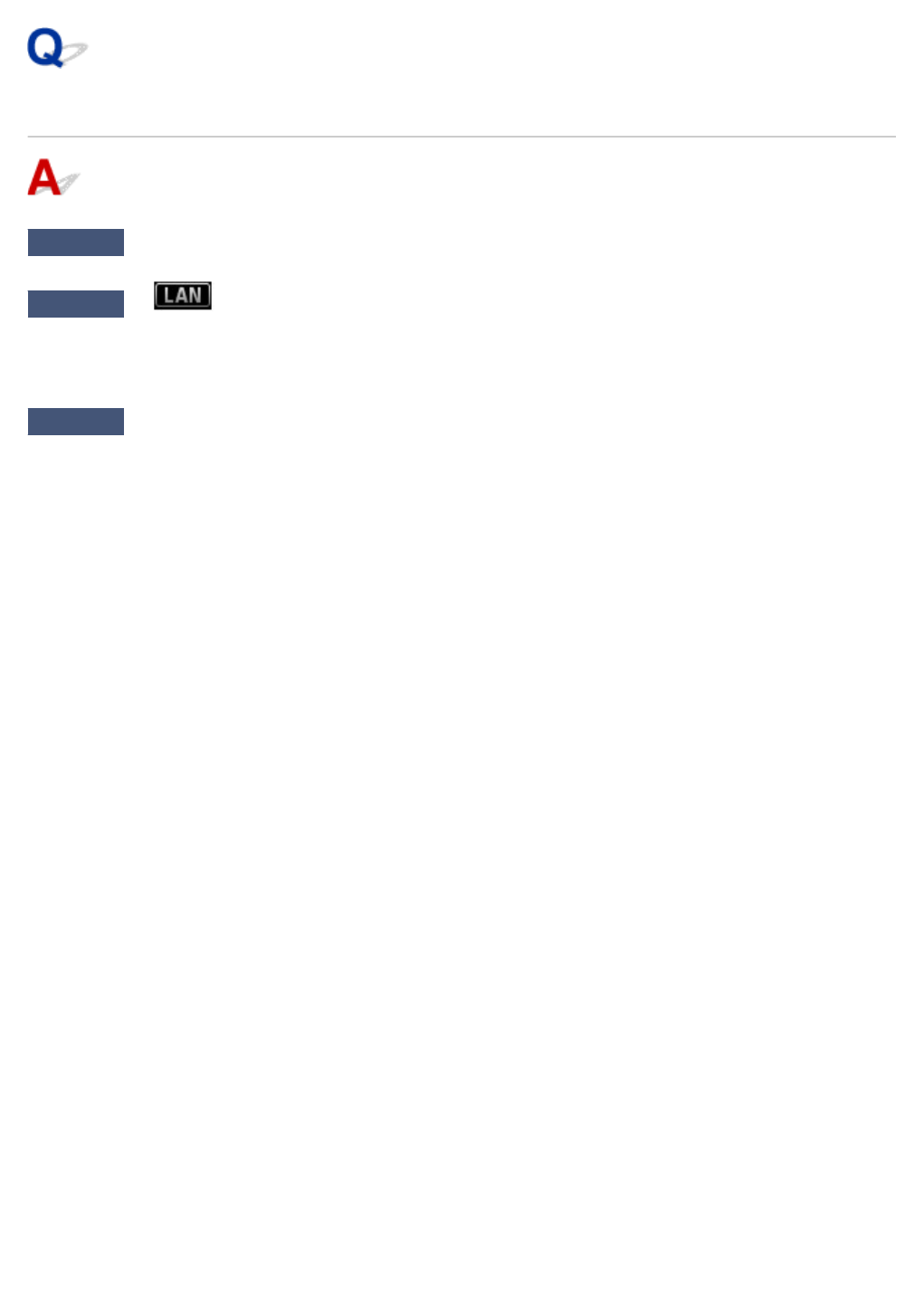
Cannot Find Machine while Using Wired LAN
Check1 Make sure printer is turned on.
Check2 Is icon displayed on touch screen?
If the icon is not displayed, tap the icon on the lower left, then select Activate wired LAN on the Change LAN
screen.
Check3 Make sure LAN cable is connected properly.
Make sure the printer is connected to the router with the LAN cable. If the LAN cable is loose, connect the cable
properly.
If the LAN cable is connected to the WAN side of the router, connect the cable to the LAN side of the router.
1079
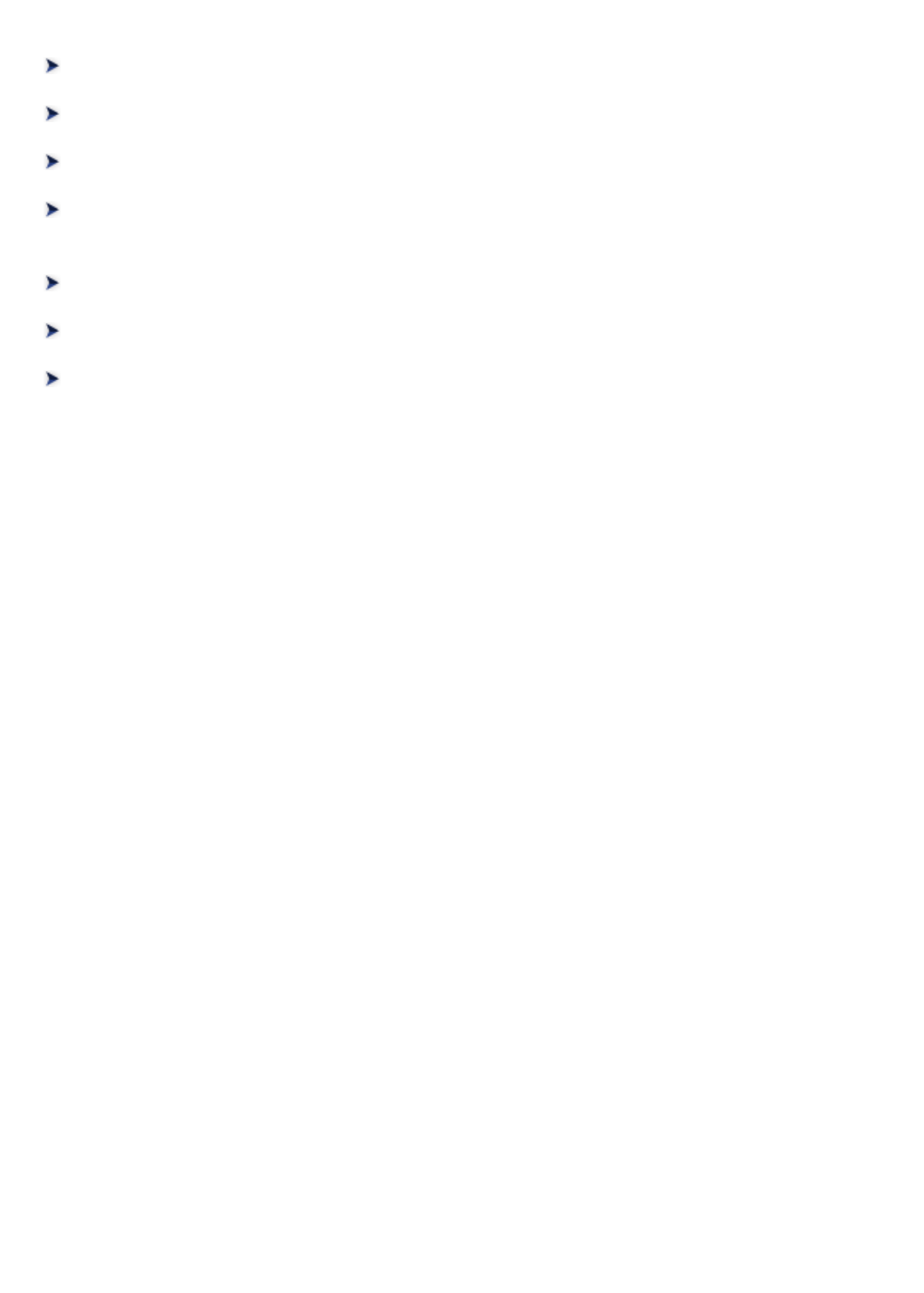
Network Connection Problems
Machine Suddenly Cannot Be Used
Network Key Unknown
Administrator Password Set for Machine Unknown
Machine Cannot Be Used After Replacing Wireless Router or Changing Its
Settings
Printing Is Slow
Cannot Access to Internet on Wireless LAN from Communication Device
Ink Level Not Shown on Printer Status Monitor (Windows)
1080
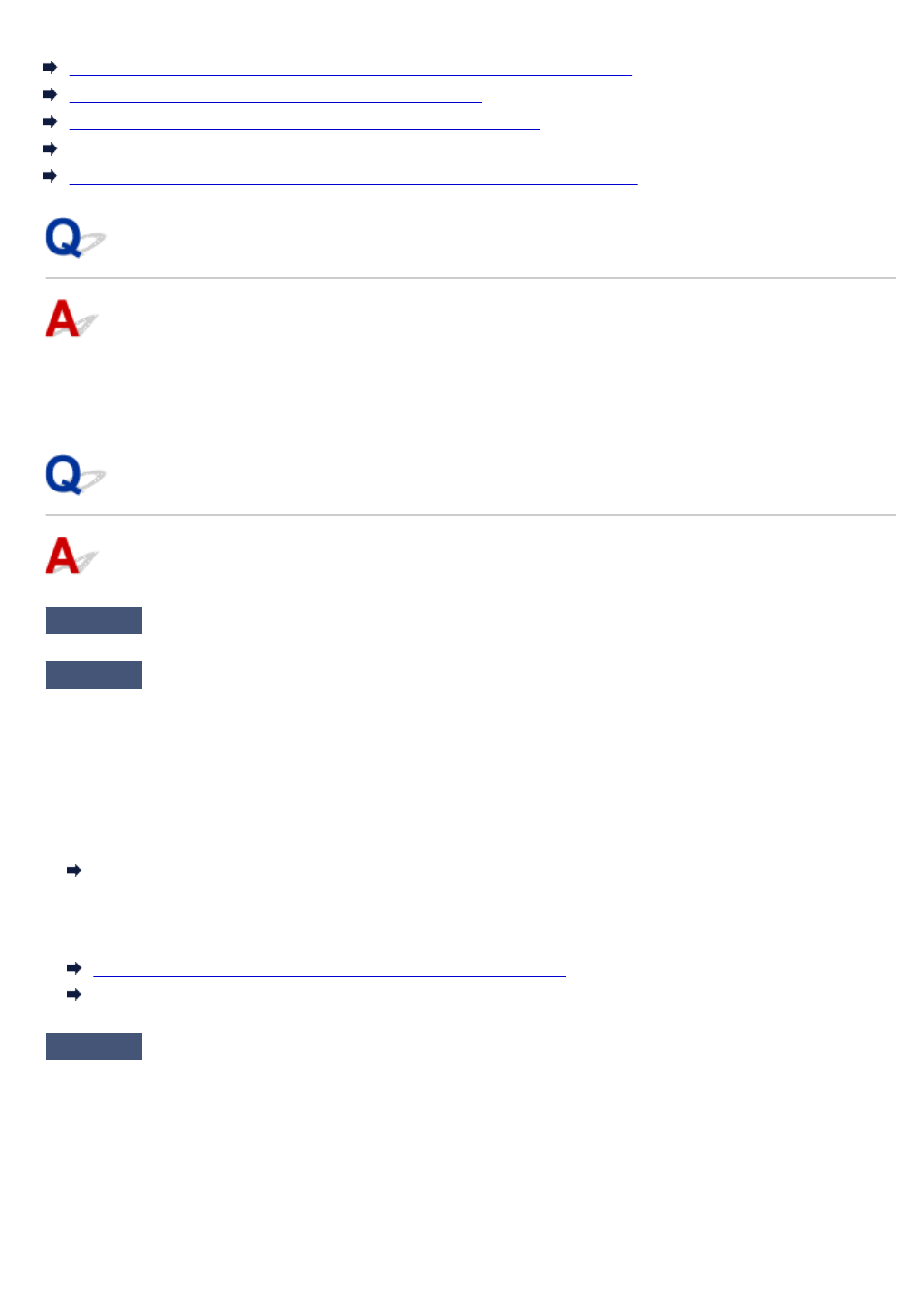
Machine Suddenly Cannot Be Used
Cannot Communicate with Printer Following Network Settings Change
Cannot Communicate with Printer via Wireless LAN
Cannot Communicate with Printer Using Direct Connection
Cannot Communicate with Printer via Wired LAN
Cannot Print, Scan, or Fax from a Computer Connected to the Network
Cannot Communicate with Printer Following Network Settings Change
It may take a while for the computer to obtain an IP address, or you may need to restart your computer.
Make sure the computer has obtained a valid IP address, and try again to find the printer.
Cannot Communicate with Printer via Wireless LAN
Check1 Make sure the printer is turned on.
Check2 Make sure the printer and wireless router network settings match.
Make sure the network settings of the printer (e.g. wireless router name, SSID, network key, etc.) are identical
with those of the wireless router.
To check the settings of the wireless router, refer to the instruction manual provided with it or contact its
manufacturer.
To check the current network settings of the printer, print out the network setting information.
Printing Network Settings
If the printer network settings do not match with those of the wireless router, change the network settings of
the printer to match with those of the wireless router.
Network Settings (IJ Network Device Setup Utility) (Windows)
Network Communication (Mac OS)
Check3 Make sure the printer is not placed too far away from the wireless router.
Place the wireless router and printer where there are no obstacles between them. Wireless communication
between different rooms or floors is generally poor. Wireless communication can be impeded by building
materials containing metal or concrete. If the printer cannot communicate with the computer over a wireless
LAN due to a wall, place the printer and the computer in the same room.
In addition, if a device like a microwave oven that emits radio waves of the same frequency bandwidth as a
wireless router is nearby, it may cause interference. Place the wireless router as far away from interference
sources as possible.
1081
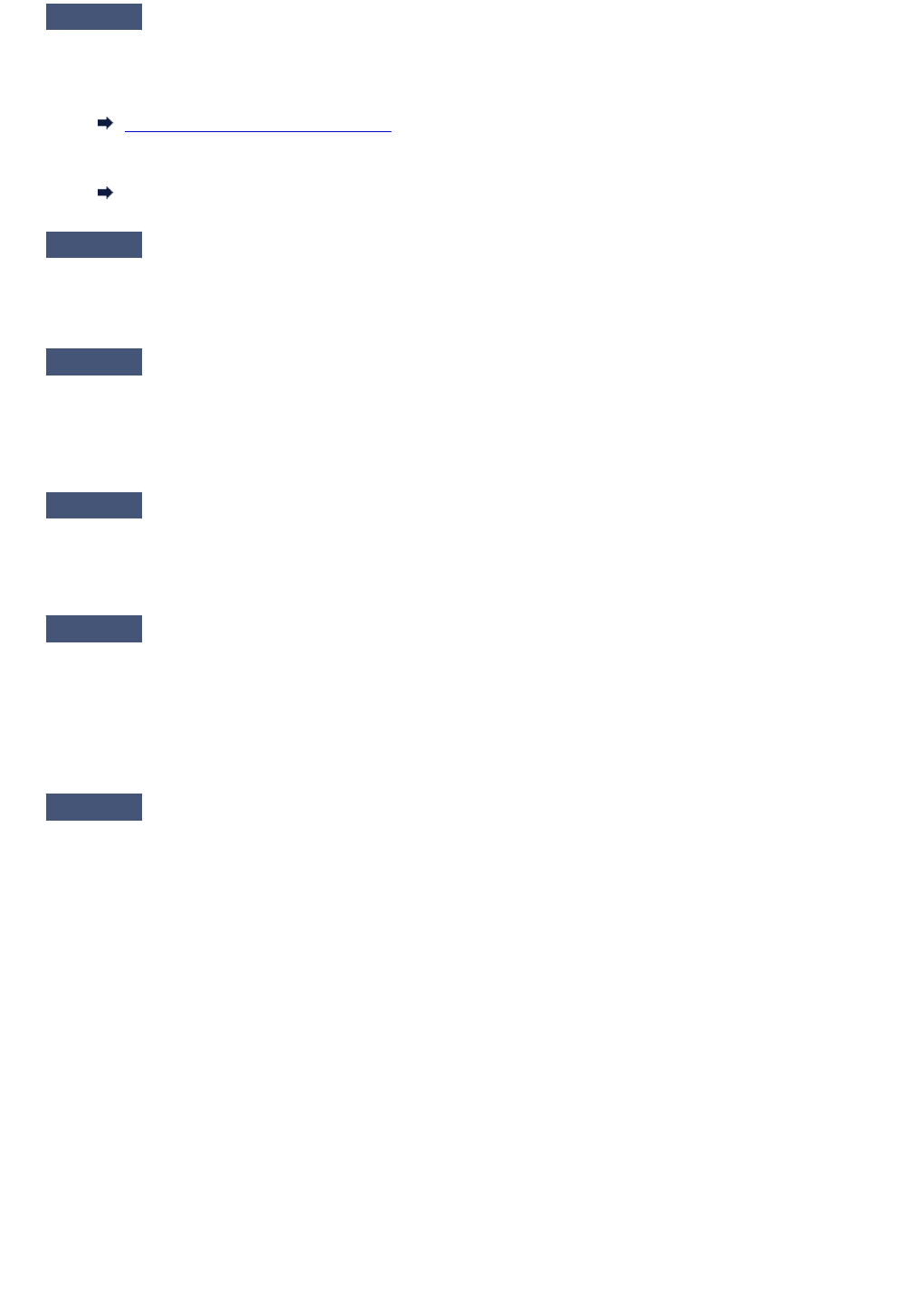
Check4 Make sure wireless signal is strong. Monitor signal status and move printer
and wireless router as necessary.
• For Windows:
Checking Wireless Network Status
• For Mac OS:
Monitoring Wireless Network Status
Check5 Make sure the computer is connected to the wireless router.
For more on how to check the computer settings or connection status, see your computer instruction manual
or contact its manufacturer.
Check6 Make sure you are using a valid channel.
Usable wireless channels may be limited depending on wireless network device used by your computer. See
the instruction manual provided with your computer or wireless network device to check usable wireless
channels.
Check7 Make sure channel set on wireless router is a usable channel as confirmed in
Check 6.
If it is not, change the channel set on the wireless router.
Check8 Make sure security software's firewall is off.
If your security software's firewall is on, a message may appear warning you that Canon software is attempting
to access the network. If this warning message appears, set security software to always allow access.
If you are using any programs that switch between network environments, check their settings. Some
programs use a firewall by default.
Check9 If printer is connected to an AirPort Base Station via LAN, use alphanumeric
characters for network identifier (SSID). (Mac OS)
If the problem is not resolved, redo setup.
• For Windows:
Use the Setup CD-ROM or follow the instructions on the Canon website.
• For Mac OS:
Follow the instructions on the Canon website.
•Positioning:
Make sure there are no obstacles between the wireless router and the printer.
1082
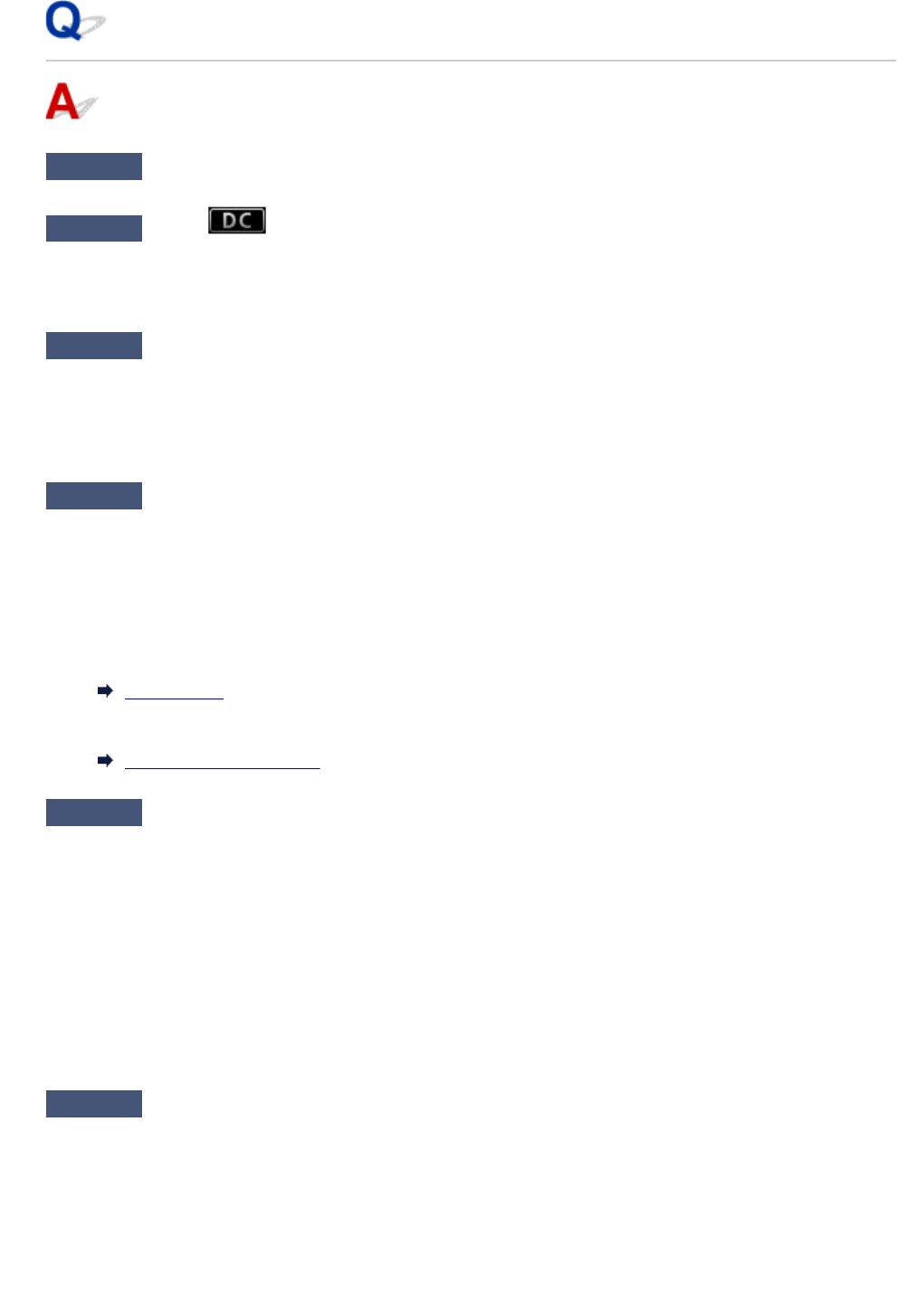
Cannot Communicate with Printer Using Direct Connection
Check1 Make sure the printer is turned on.
Check2 Is the icon displayed on the touch screen?
If the icon is not displayed, tap the icon on the lower left and select Activate direct connect. on the Change
LAN screen.
Check3 Make sure printer is selected as connection for device (e.g. smartphone or
tablet).
Select the identifier for direct connection (SSID) specified for the printer as the connection destination for
devices.
Check4 Have you entered the proper password specified for the direct connection?
If the security setting of the direct connection is enabled, you need to enter the password to connect your
device to the printer.
To check the password specified for the printer, display it using the operation panel of the printer or print out
the network setting information of the printer.
•Display on the touch screen.
LAN settings
•Print the network settings.
Printing Network Settings
Check5 Make sure the printer is not placed too far away from the device.
Place the device and printer where there are no obstacles between them. Wireless communication between
different rooms or floors is generally poor. Wireless communication can be impeded by building materials
containing metal or concrete. If the printer cannot communicate with the computer over a wireless LAN due to
a wall, place the printer and the computer in the same room.
In addition, if a device like a microwave oven that emits radio waves of the same frequency bandwidth as a
wireless router is nearby, it may cause interference. Place the wireless router as far away from interference
sources as possible.
Place devices a suitable distance from the printer.
Check6 Make sure 5 devices are already connected.
Direct Connection does not allow more than 5 devices to be connected.
1083
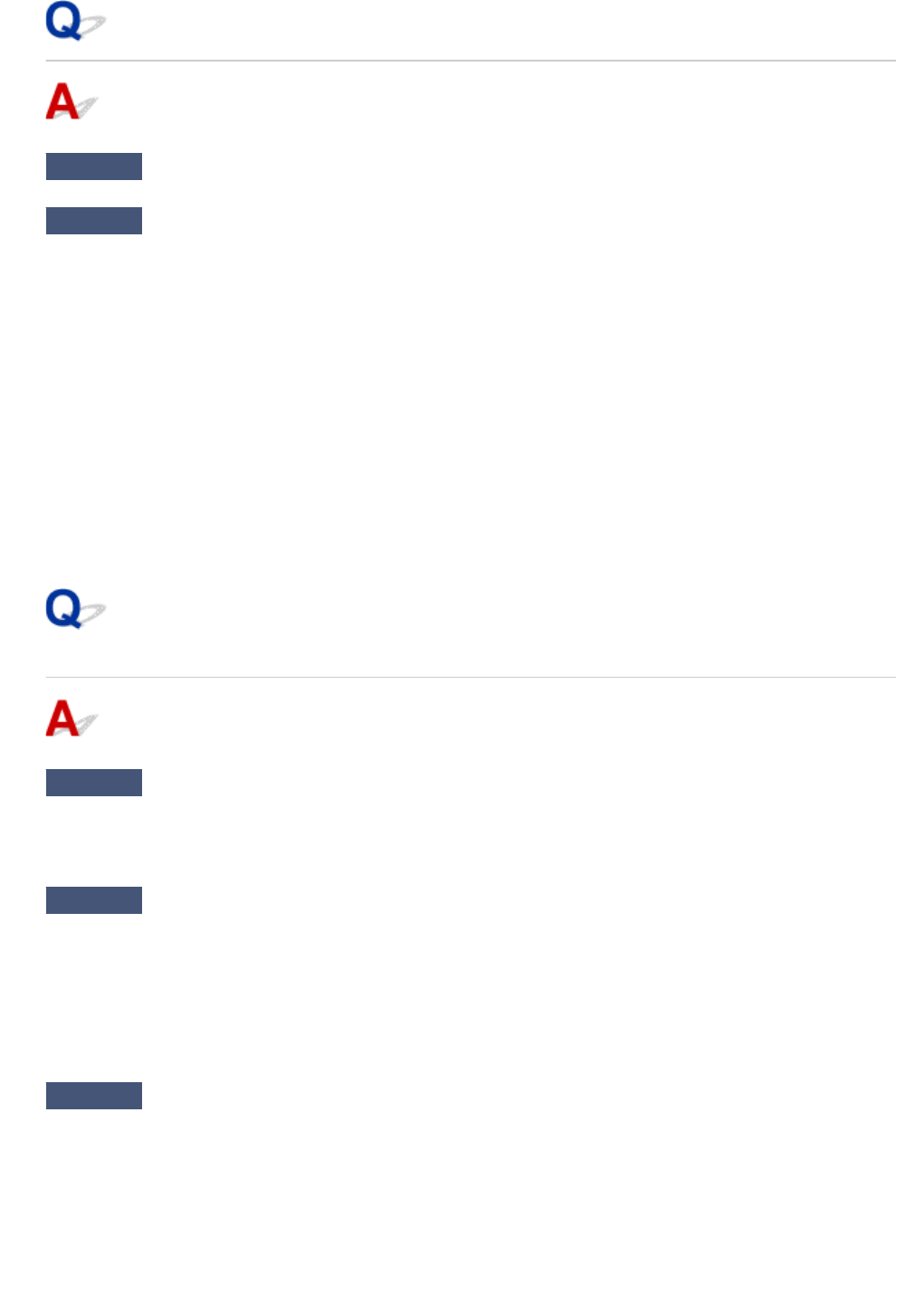
Cannot Communicate with Printer via Wired LAN
Check1 Make sure the printer is turned on.
Check2 Make sure the LAN cable is connected properly.
Make sure the printer is connected to the router with the LAN cable. If the LAN cable is loose, connect the
cable properly.
If the LAN cable is connected to the WAN side of the router, connect the cable to the LAN side of the router.
If the problem is not resolved, redo setup.
• For Windows:
Use the Setup CD-ROM or follow the instructions on the Canon website to redo setup.
• For Mac OS:
Follow the instructions on the Canon website.
Cannot Print, Scan, or Fax from a Computer Connected to the
Network
Check1 Make sure the computer is connected to the wireless router.
For more on how to check the computer settings or connection status, see your computer instruction manual
or contact its manufacturer.
Check2 If MP Drivers are not installed, install them.
•For Windows:
Install the MP Drivers using the Setup CD-ROM or install them from the Canon website.
• For Mac OS:
Install the MP Drivers from the Canon website.
Check3 When using wireless LAN, make sure wireless router does not restrict which
computers can access it.
For more on connecting to and setting up your wireless router, see the wireless router instruction manual or
contact its manufacturer.
1084
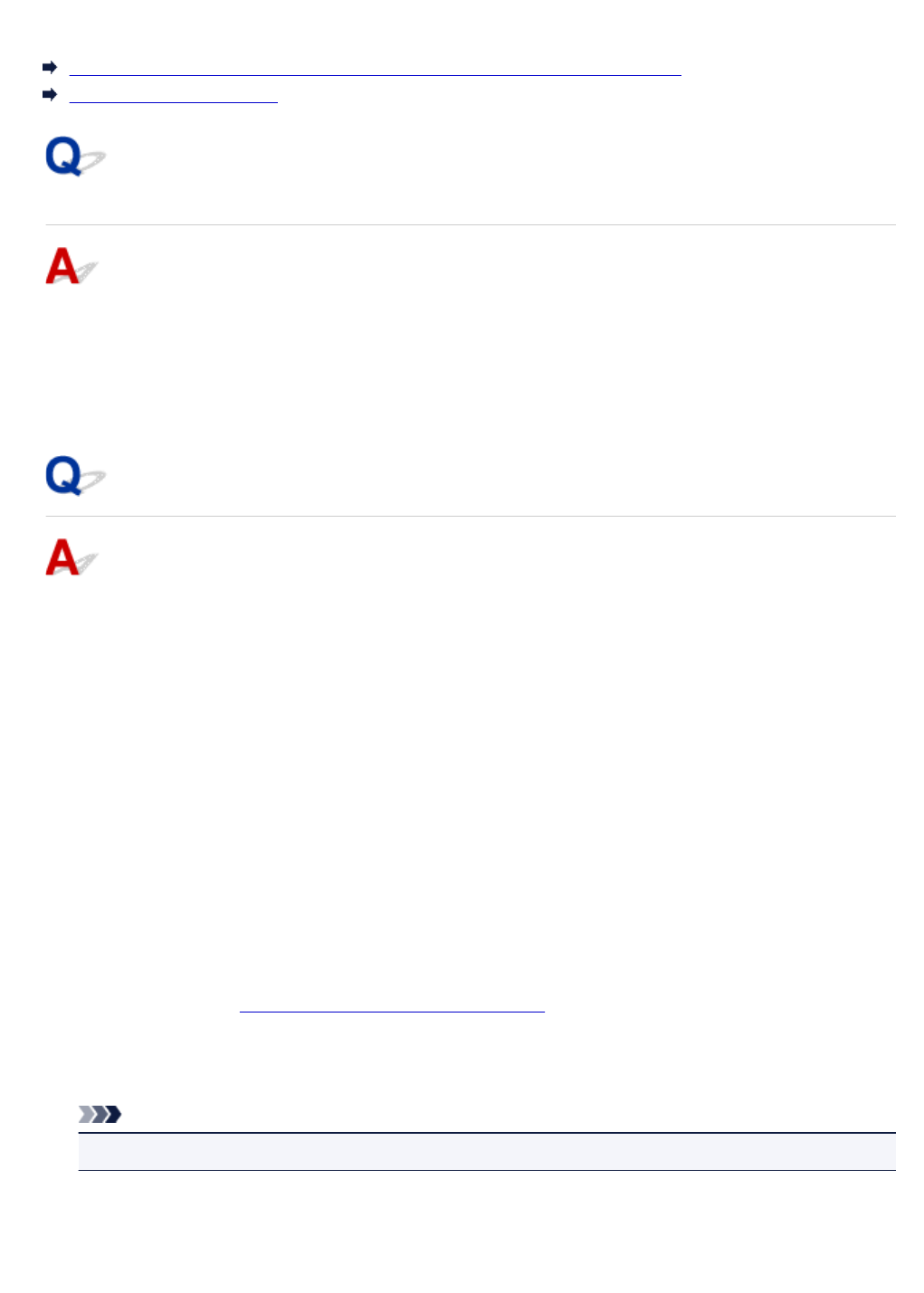
Network Key Unknown
WPA/WPA2 or WEP Key Set for Wireless Router Unknown, Cannot Connect
Setting an Encryption Key
WPA/WPA2 or WEP Key Set for Wireless Router Unknown, Cannot
Connect
For more on setting up a wireless router, see the instruction manual provided with the wireless router or
contact its manufacturer. Make sure your computer can communicate with the wireless router.
Set up the printer to match the wireless router settings using IJ Network Device Setup Utility (for
Windows) or IJ Network Tool (for Mac OS).
Setting an Encryption Key
For more on setting up a wireless router, see the instruction manual provided with the wireless router or
contact its manufacturer. Make sure your computer can communicate with the wireless router.
Set up the printer to match the wireless router settings using IJ Network Device Setup Utility (for
Windows) or IJ Network Tool (for Mac OS).
•Using WPA/WPA2
The authentication method, passphrase, and dynamic encryption type must be the same for the
wireless router, the printer, and your computer.
Enter the passphrase configured on the wireless router (a sequence of between 8 and 63
alphanumeric characters, or a 64-character hexadecimal number).
Either TKIP (basic encryption) or AES (secure encryption) is selected automatically as the dynamic
encryption method.
◦ For Windows:
For details, see If WPA/WPA2 Details Screen Appears.
◦ For Mac OS:
For details, see Changing WPA or WPA2 Detailed Settings.
Note
• This printer supports WPA/WPA2-PSK (WPA/WPA2-Personal) and WPA2-PSK (WPA2-Personal).
•Using WEP
The key length, key format, key to use (one of 1 to 4), and authentication method must be the same
for the wireless router, the printer, and your computer.
1086

To communicate with a wireless router that uses automatically generated WEP keys, you must set the
printer to use the key generated by the wireless router, entering it in hexadecimal format.
◦ For Windows:
When the WEP Details screen appears after you click Search... on the Protocol Settings
(Wireless LAN) screen, follow the on-screen instructions to set the WEP key length, format, and
the number.
For details, see If WEP Details Screen Appears.
◦ For Mac OS:
Normally, select Auto for the authentication method. Otherwise, select Open System or Shared
Key depending on the wireless router's settings.
When the WEP Details screen appears after you click Set on the Wireless Routers screen,
follow the on-screen instructions and set the key length, the key format, the key number, and the
authentication method to enter a WEP key.
For details, see Changing WEP Detailed Settings.
Note
• If the printer is connected to an AirPort Base Station via LAN:
If the printer is connected to an AirPort Base Station via a LAN, check the settings in
Wireless Security of AirPort Utility.
• Select 64 bit if WEP 40 bit is selected for key length in AirPort Base Station.
• Select 1 for Key ID. Otherwise, computer will not be able to communicate with printer via
the wireless router.
1087
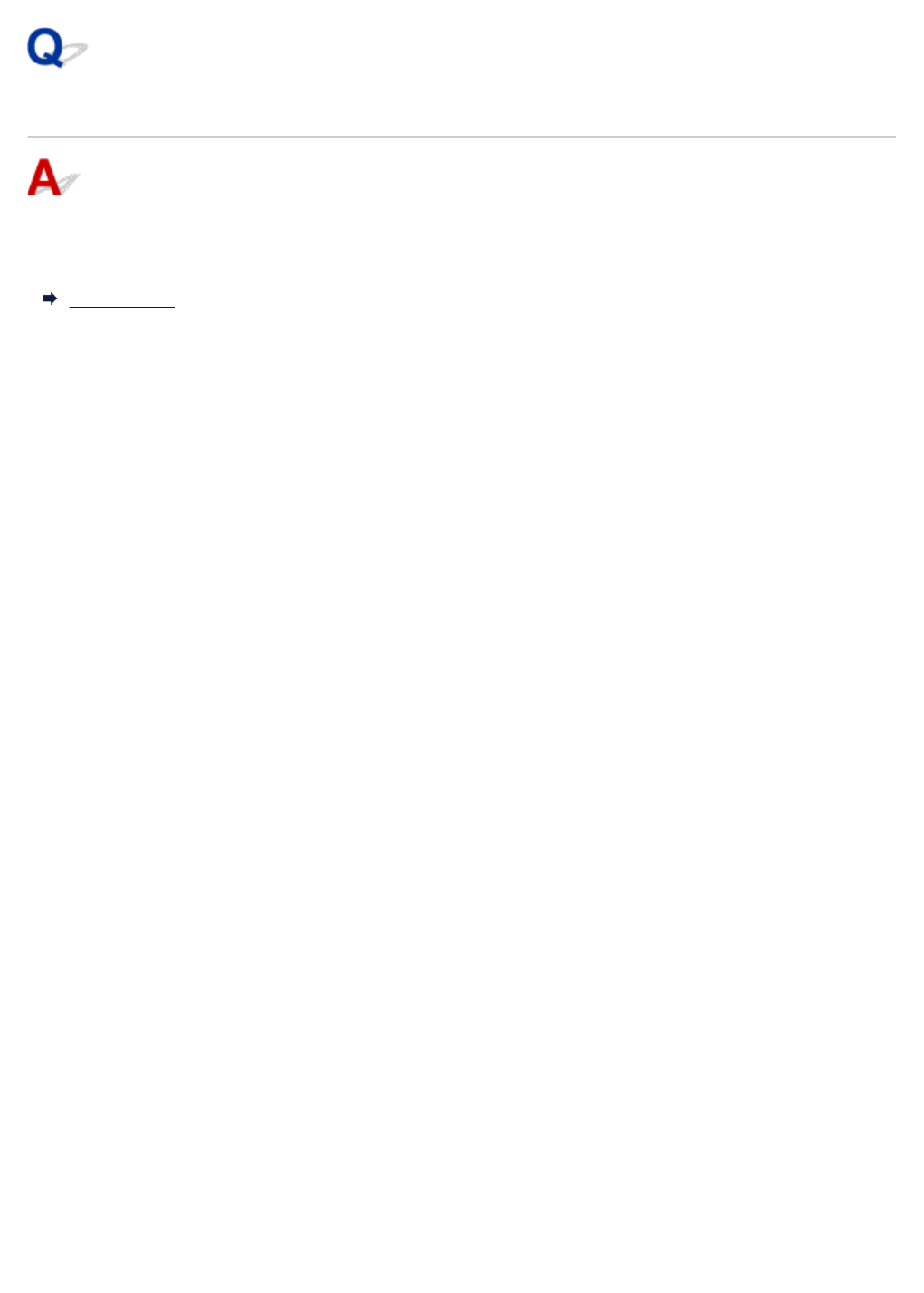
Administrator Password Set for Machine Unknown
Initialize the printer settings.
Select Reset all to restore administrator password to default.
Reset setting
After initializing the printer settings, redo setup.
• For Windows:
Use the Setup CD-ROM or follow the instructions on the Canon website.
• For Mac OS:
Follow the instructions on the Canon website.
1088
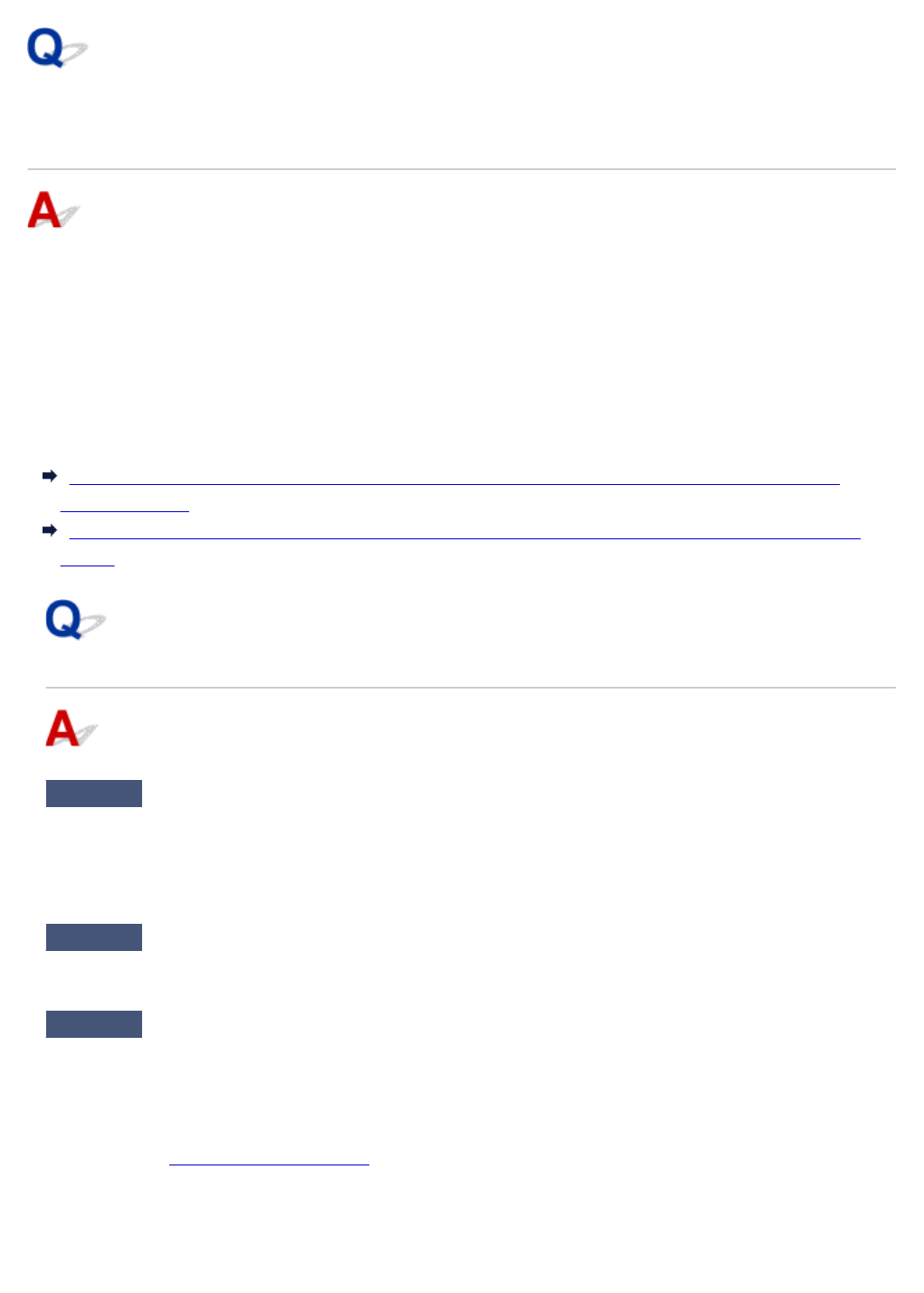
Machine Cannot Be Used After Replacing Wireless Router or
Changing Its Settings
When you replace a wireless router, redo the network setup for the printer.
• For Windows:
Use the Setup CD-ROM or follow the instructions on the Canon website.
• For Mac OS:
Follow the instructions on the Canon website.
If this does not solve the problem, see below.
Cannot Communicate with Printer After Enabling MAC/IP Address Filtering or Encryption Key on
Wireless Router
With Encryption On, Cannot Communicate with Printer After Changing Encryption Type at Wireless
Router
Cannot Communicate with Printer After Enabling MAC/IP Address
Filtering or Encryption Key on Wireless Router
Check1 Check wireless router setting.
To check the wireless router setting, see the instruction manual provided with the wireless router or contact its
manufacturer. Make sure the computer and the wireless router can communicate with each other under this
setting.
Check2 If filtering MAC addresses or IP addresses at wireless router, check that MAC
addresses or IP addresses for computer, network device, and printer are registered.
Check3 If using WPA/WPA2 or WEP key, make sure encryption key for computer,
network device, and printer matches key set for wireless router.
Not only the WEP key itself, but also the key length, key format, the key ID to use, and the authentication
method must be the same for the printer, the wireless router, and the computer.
For details, see Setting an Encryption Key.
1089
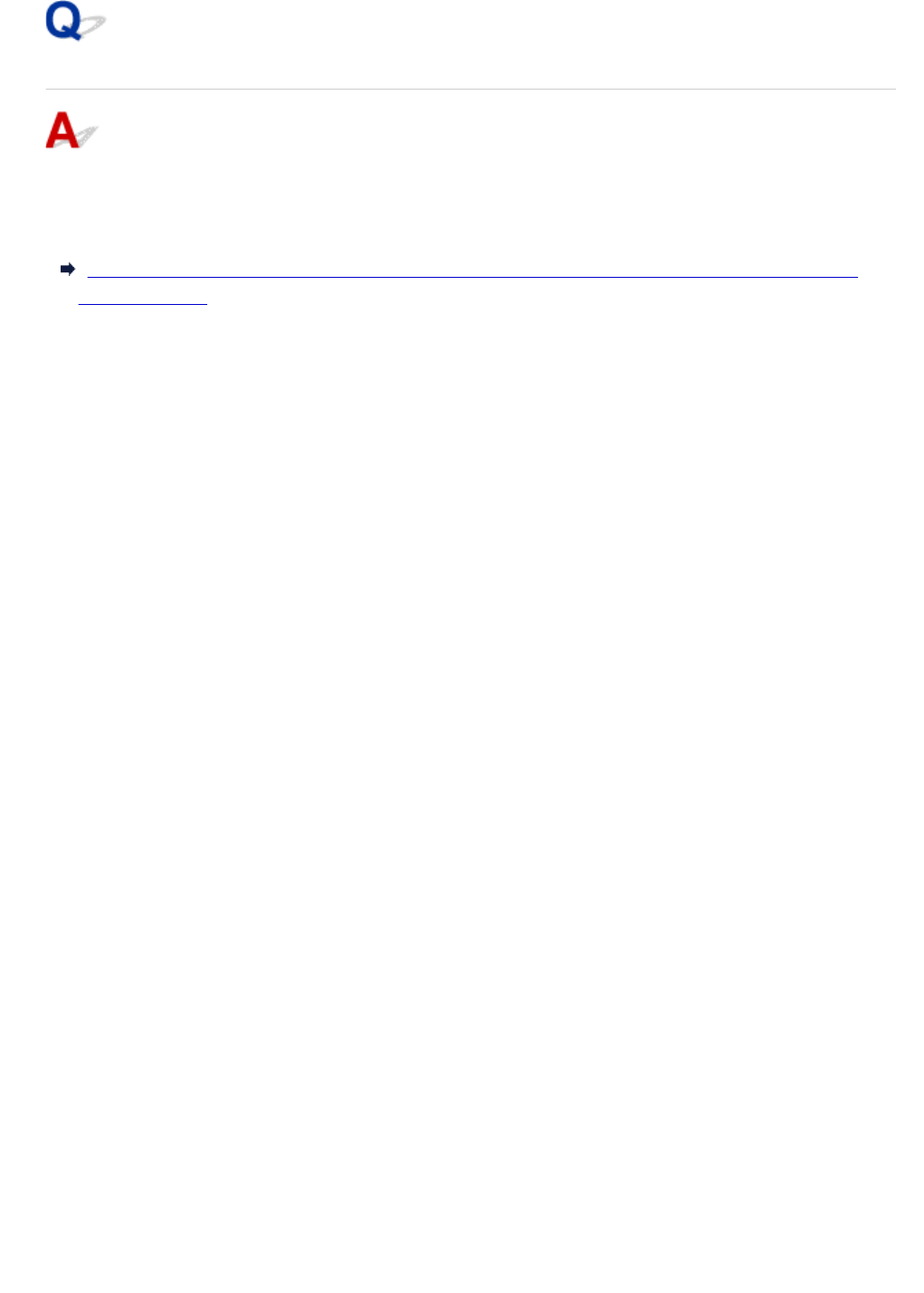
With Encryption On, Cannot Communicate with Printer After
Changing Encryption Type at Wireless Router
If you change the encryption type for the printer and it subsequently cannot communicate with the
computer, make sure the encryption type for the computer and the wireless router matches the type set
for the printer.
Cannot Communicate with Printer After Enabling MAC/IP Address Filtering or Encryption Key on
Wireless Router
1090
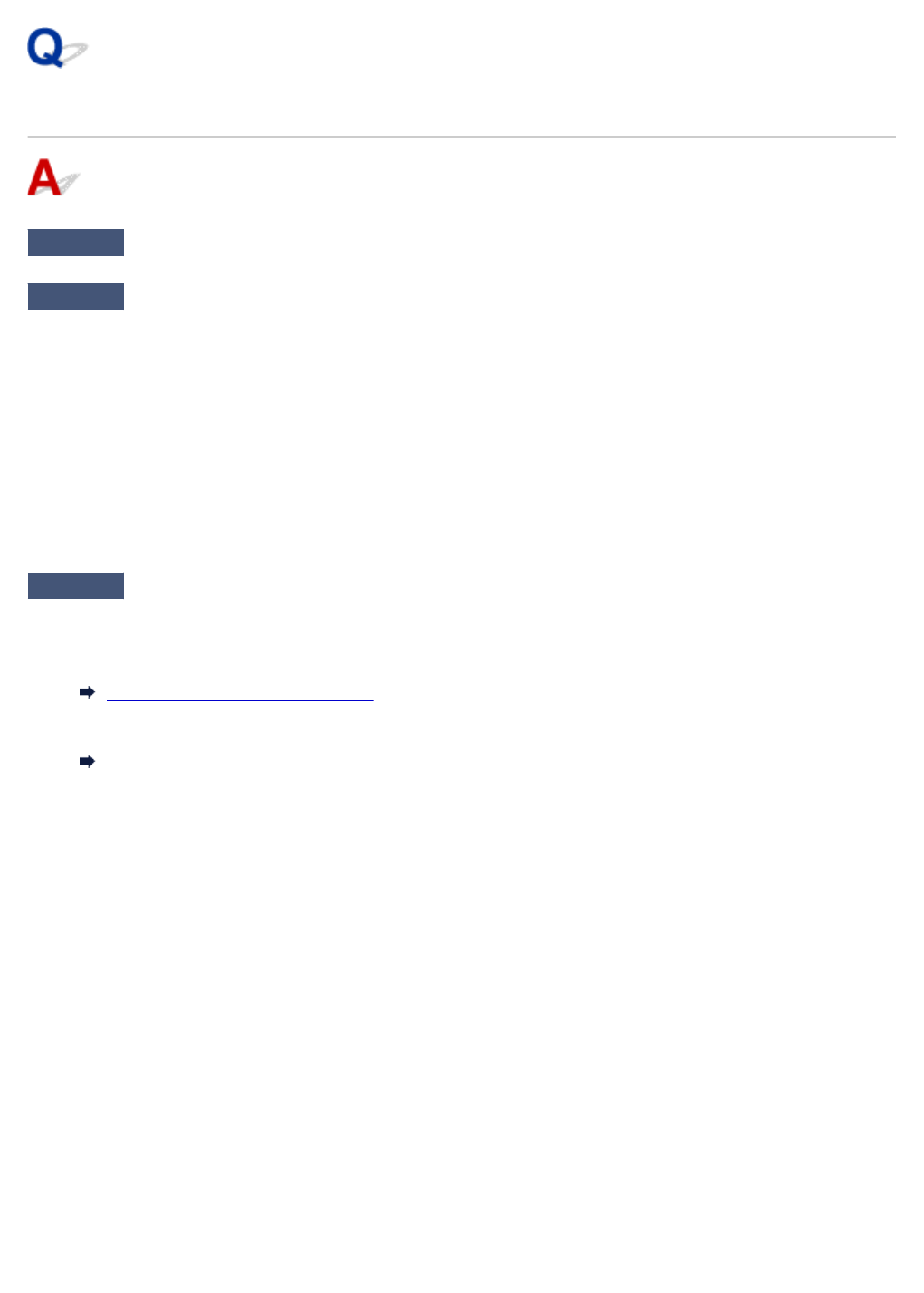
Printing Is Slow
Check1 Printer may be printing or scanning a large job from another computer.
Check2 When using wireless LAN, make sure the printer is not placed too far away
from the wireless router.
Place the wireless router and printer where there are no obstacles between them. Wireless communication
between different rooms or floors is generally poor. Wireless communication can be impeded by building
materials containing metal or concrete. If the printer cannot communicate with the computer over a wireless LAN
due to a wall, place the printer and the computer in the same room.
In addition, if a device like a microwave oven that emits radio waves of the same frequency bandwidth as a
wireless router is nearby, it may cause interference. Place the wireless router as far away from interference
sources as possible.
Check3 When using wireless LAN, make sure wireless signal is strong. Monitor signal
status and move printer and wireless router as necessary.
•For Windows:
Checking Wireless Network Status
•For Mac OS:
Monitoring Wireless Network Status
1091
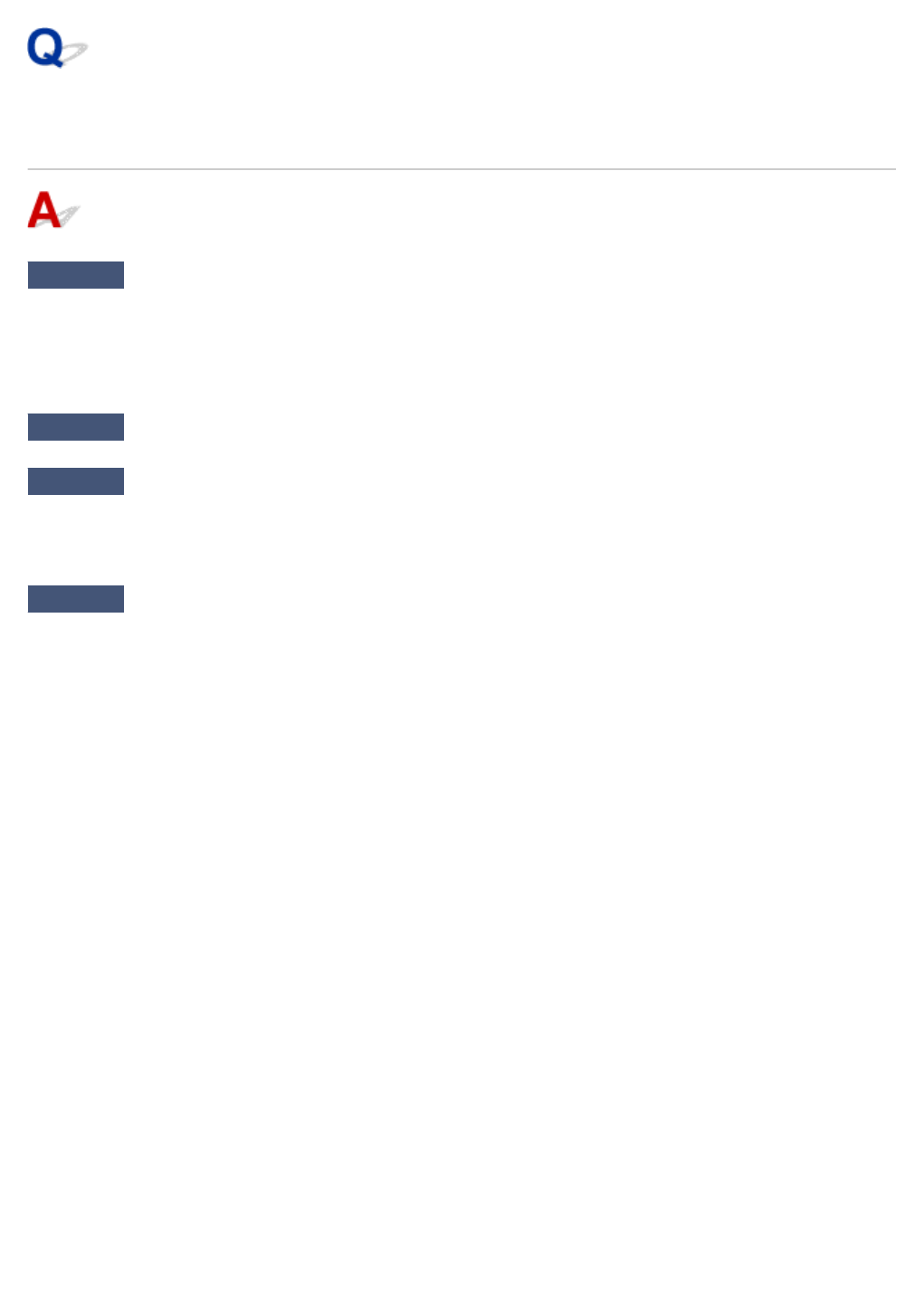
Cannot Access to Internet on Wireless LAN from Communication
Device
Check1 Is your device connected to printer using direct connection?
If your device is connected to the printer using direct connection, you cannot access to the Internet. Turn off
direct connection and connect your device to the wireless router.
For details, see the instruction manual provided with your device and wireless router.
Check2 Is wireless router on?
Check3 Is wireless router configured properly?
For more on checking wireless router settings, see the instruction manual provided with the wireless router or
contact its manufacturer.
Check4 Check your device and wireless router location.
Check the distance between your device and wireless router, and check for obstruction or source of radio wave
interference nearby.
1092
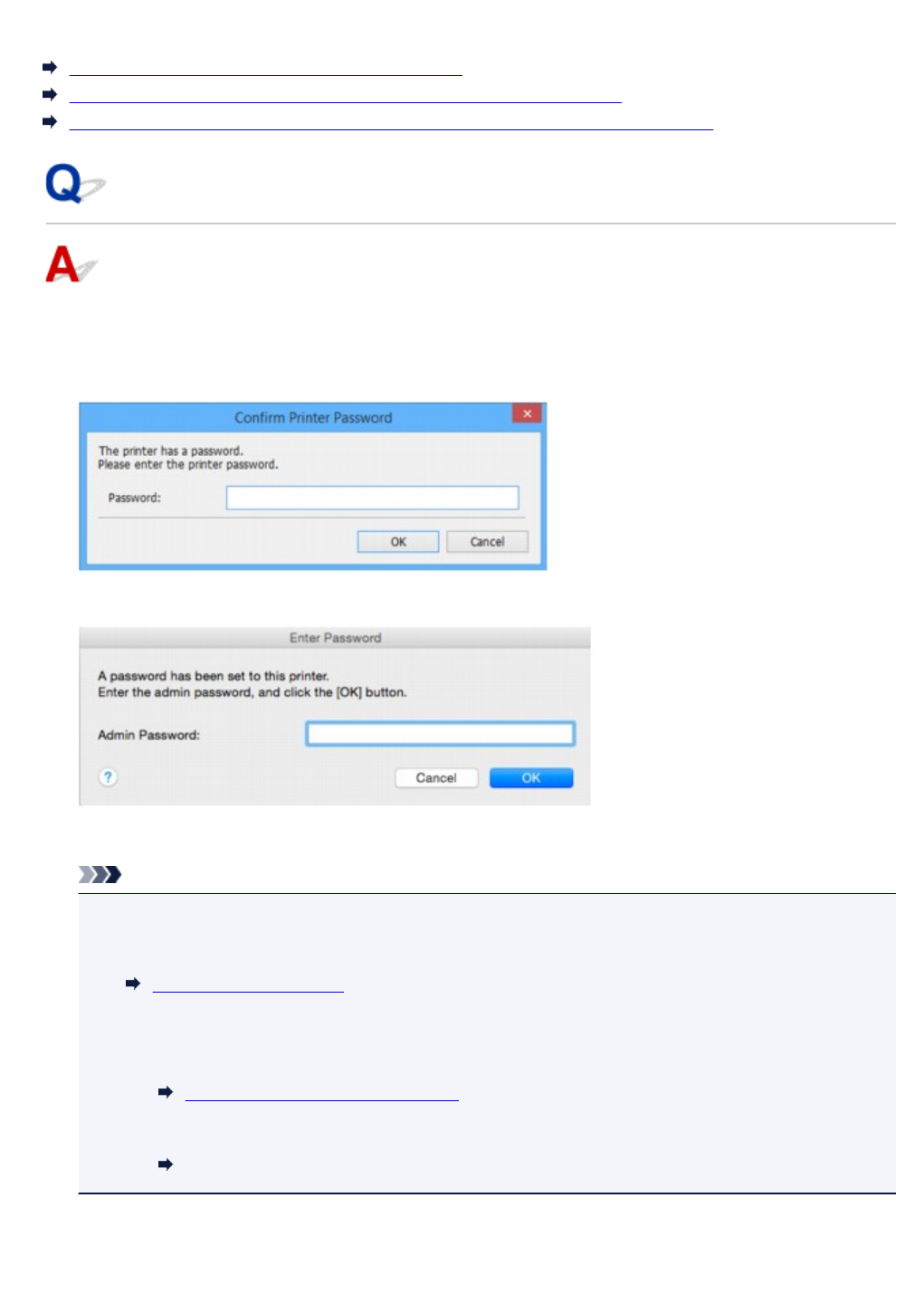
Message Appears on Computer During Setup
Screen to Enter Password Appears During Setup
Encryption Settings Screen Appears When Wireless Router Selected
"You have connected the printer to the non encrypted wireless network" Appears
Screen to Enter Password Appears During Setup
The following screen appears if the printer is set up for use with a network and an administrator password
has been set.
• For Windows:
• For Mac OS:
Enter the administrator password set for the printer.
Note
• An administrator password is already set for the printer at the time of purchase.
For details:
Administrator Password
For improved security, we recommend that you change the administrator password.
• For Windows:
Changing Administrator Password
• For Mac OS:
Changing Settings in Admin Password Sheet
1095
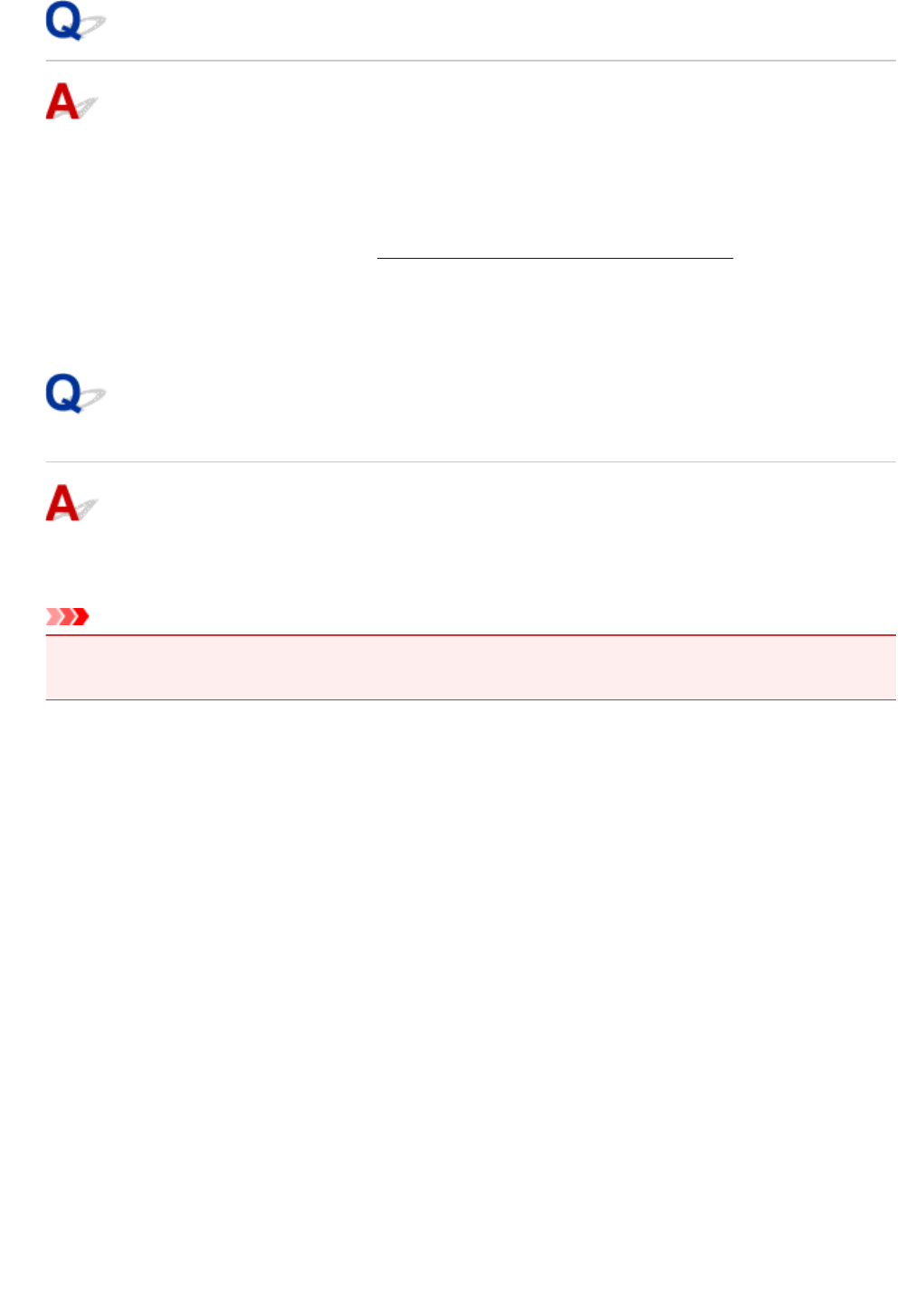
Encryption Settings Screen Appears When Wireless Router Selected
This screen appears automatically if the selected wireless router is encrypted. Set the same encryption
settings as those set for the wireless router.
• For Windows:
For more on encryption settings, see Performing/Changing Wireless LAN Settings.
• For Mac OS:
For more on encryption settings, see Changing Settings in Wireless LAN Sheet.
"You have connected the printer to the non encrypted wireless
network" Appears
Security is not configured on the wireless router. The printer can still be used, so continue the setup
procedure and complete it.
Important
• If you connect to a network that is not protected with security measures, there is a risk of disclosing
data such as your personal information to a third party.
1096
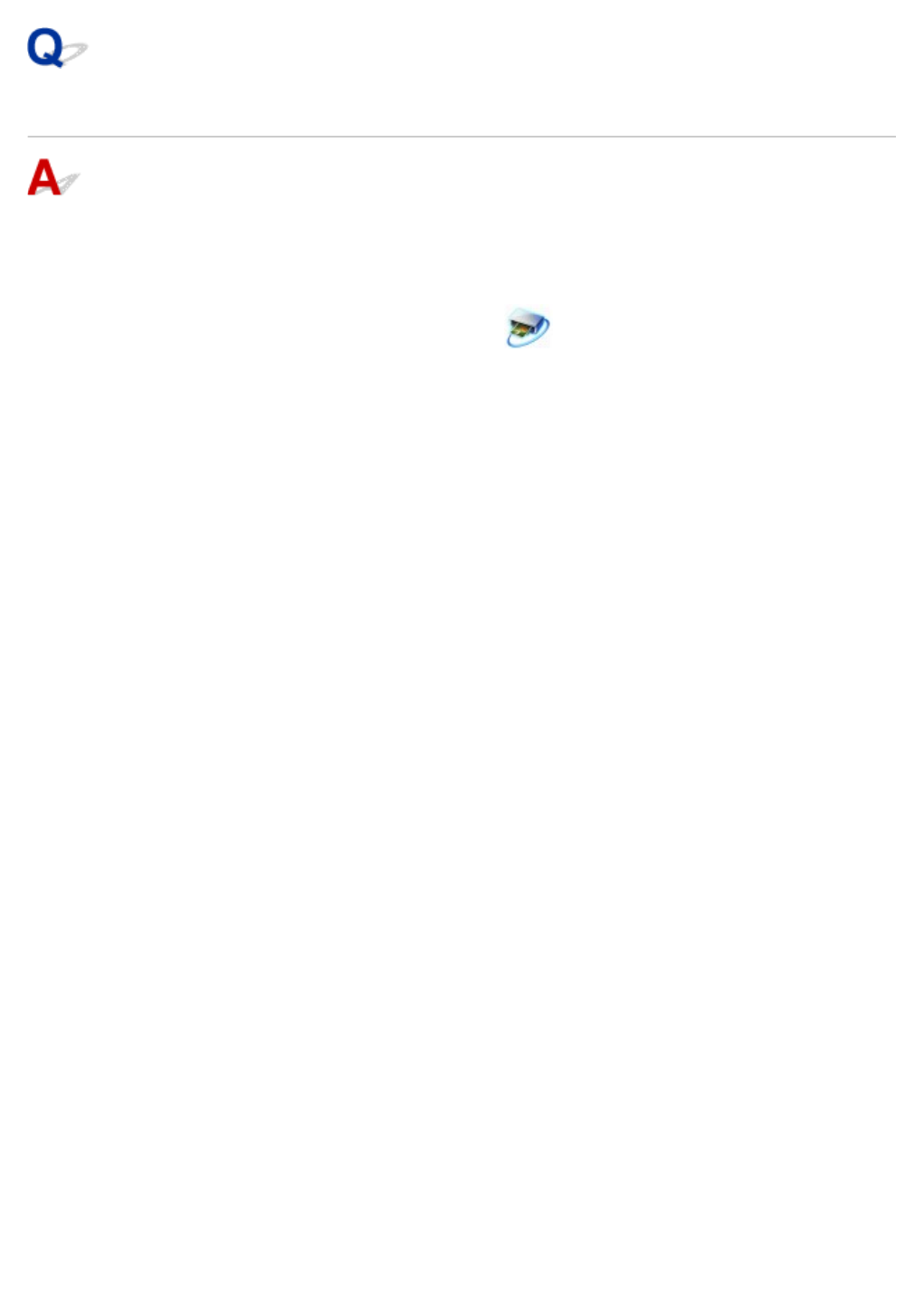
Packets Are Sent Constantly (Windows)
When IJ Network Scanner Selector EX2 is enabled, it periodically transmits packets to check
communication with the printer over the network. If you are using your computer in a network environment
other than the one used to set up the printer, disable IJ Network Scanner Selector EX2.
To disable IJ Network Scanner Selector EX2, right-click the icon on the notification area on the
desktop and select Disable Canon IJ Network Scanner Selector EX2.
1097
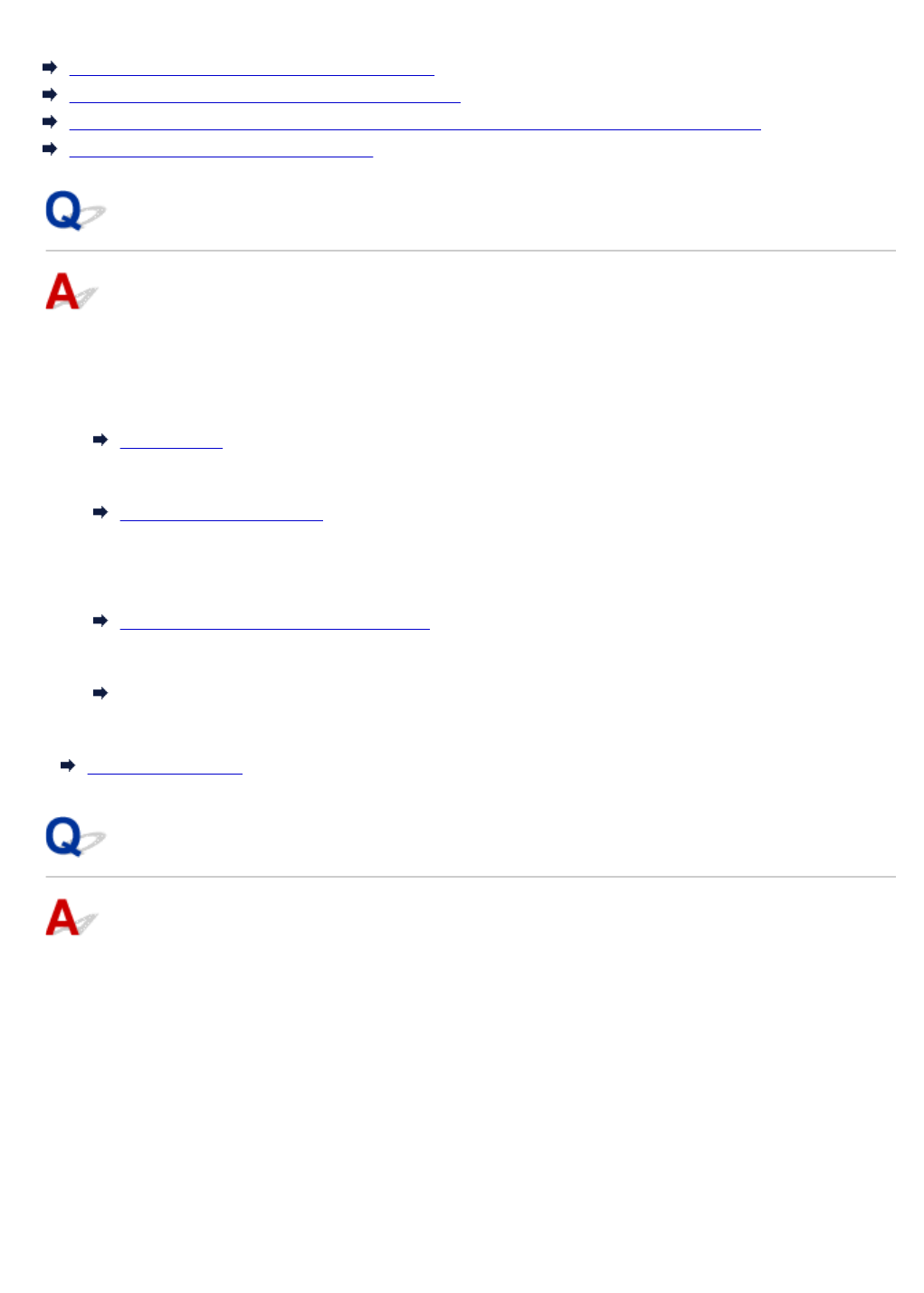
Checking Network Information
Checking Printer IP Address or MAC Address
Checking Computer IP Address or MAC Address
Checking Communication Between the Computer, the Printer, and the Wireless Router
Checking Network Setting Information
Checking Printer IP Address or MAC Address
To check the printer's IP Address or MAC address, print out the network settings information or use the
operation panel to display it.
• Display on the touch screen.
LAN settings
• Print the network settings.
Printing Network Settings
You can check the network setting information on the computer screen.
• For Windows:
IJ Network Device Setup Utility Screen
• For Mac OS:
Canon IJ Network Tool Menus
You can display the printer's MAC address on the touch screen.
System information
Checking Computer IP Address or MAC Address
To check the IP Address or MAC address of your computer, follow the instructions below.
• For Windows:
1. Select Command Prompt as shown below.
In Windows 10, right-click Start button and select Command Prompt.
In Windows 8.1 or Windows 8, select Command Prompt from the Start screen. If Command
Prompt is not displayed on the Start screen, select the Search charm and search for
"Command Prompt".
In Windows 7 or Windows Vista, click Start > All Programs > Accessories > Command
Prompt.
2. Enter "ipconfig/all" and press Enter.
1098
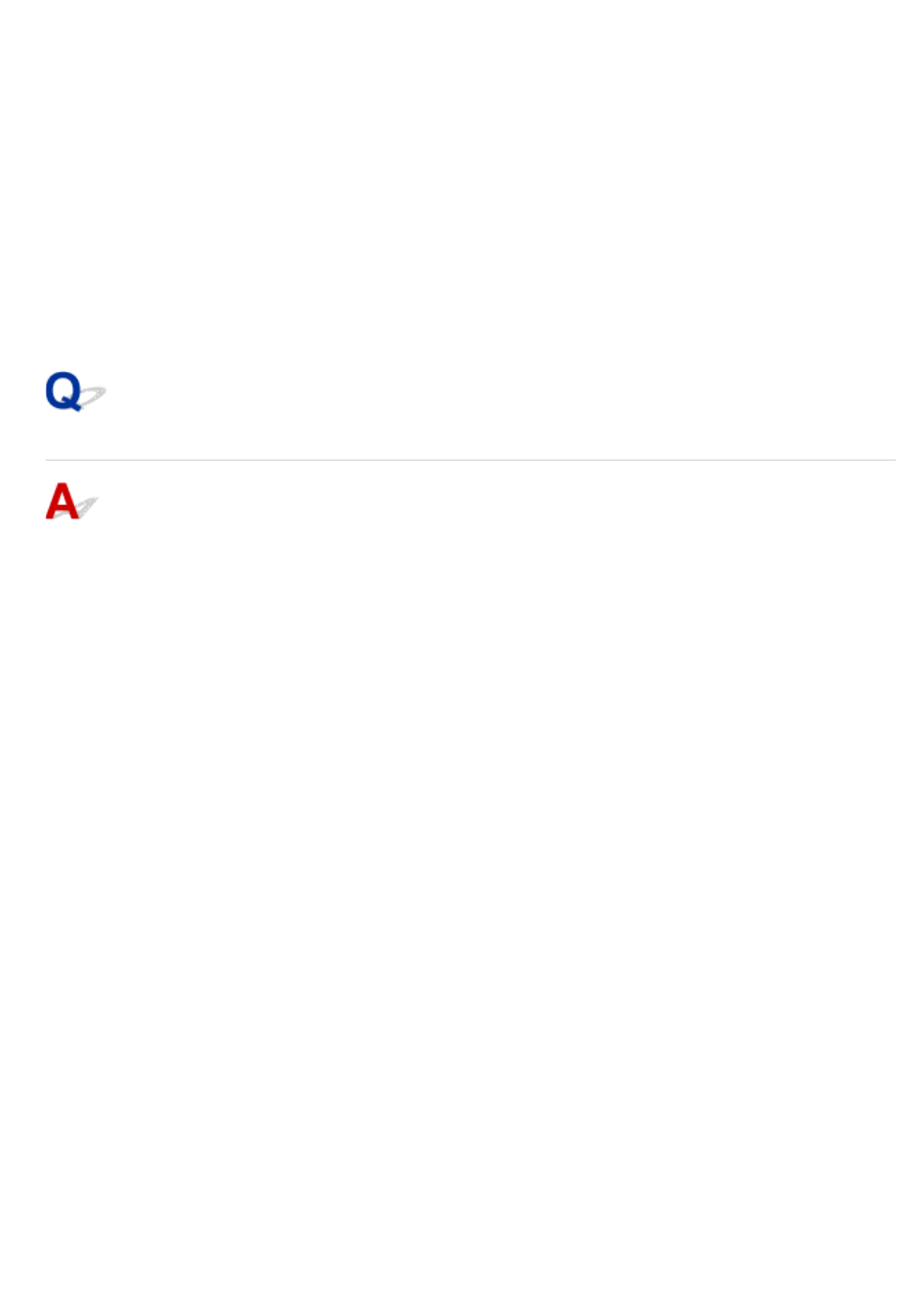
The IP address and MAC address of your computer appear. If your computer is not connected to
a network, the IP address does not appear.
• For Mac OS:
1. Select System Preferences from Apple menu, and then click Network.
2. Make sure network interface used by computer is selected, and then click Advanced.
When you are using wireless LAN on your computer, make sure Wi-Fi is selected as network
interface. When you are using wired LAN, make sure Ethernet is selected.
3. Check the IP address or MAC address.
Click TCP/IP to check the IP address.
Click Hardware to check the MAC address.
Checking Communication Between the Computer, the Printer, and the
Wireless Router
Perform a ping test to check if communication is taking place.
• For Windows:
1. Select Command Prompt as shown below.
In Windows 10, right-click Start button and select Command Prompt.
In Windows 8.1 or Windows 8, select Command Prompt from the Start screen. If Command
Prompt is not displayed on the Start screen, select the Search charm and search for
"Command Prompt".
In Windows 7 or Windows Vista, click Start > All Programs > Accessories > Command
Prompt.
2. Type the ping command and press Enter.
The ping command is as follows: ping XXX.XXX.XXX.XXX
"XXX.XXX.XXX.XXX" is the IP address of the target device.
If communication is taking place, a message like the one shown below appears.
Reply from XXX.XXX.XXX.XXX: bytes=32 time=10ms TTL=255
If Request timed out appears, communication is not taking place.
• For Mac OS:
1. Start Network Utility as shown below.
In Mac OS X v10.11, Mac OS X v10.10, or Mac OS X v10.9, select Computer from Go menu of
Finder, double-click Macintosh HD > System > Library > CoreServices > Applications >
Network Utility.
In Mac OS X v10.8 or Mac OS X v10.7, open Utilities folder in Applications folder, then double-
click Network Utility.
1099
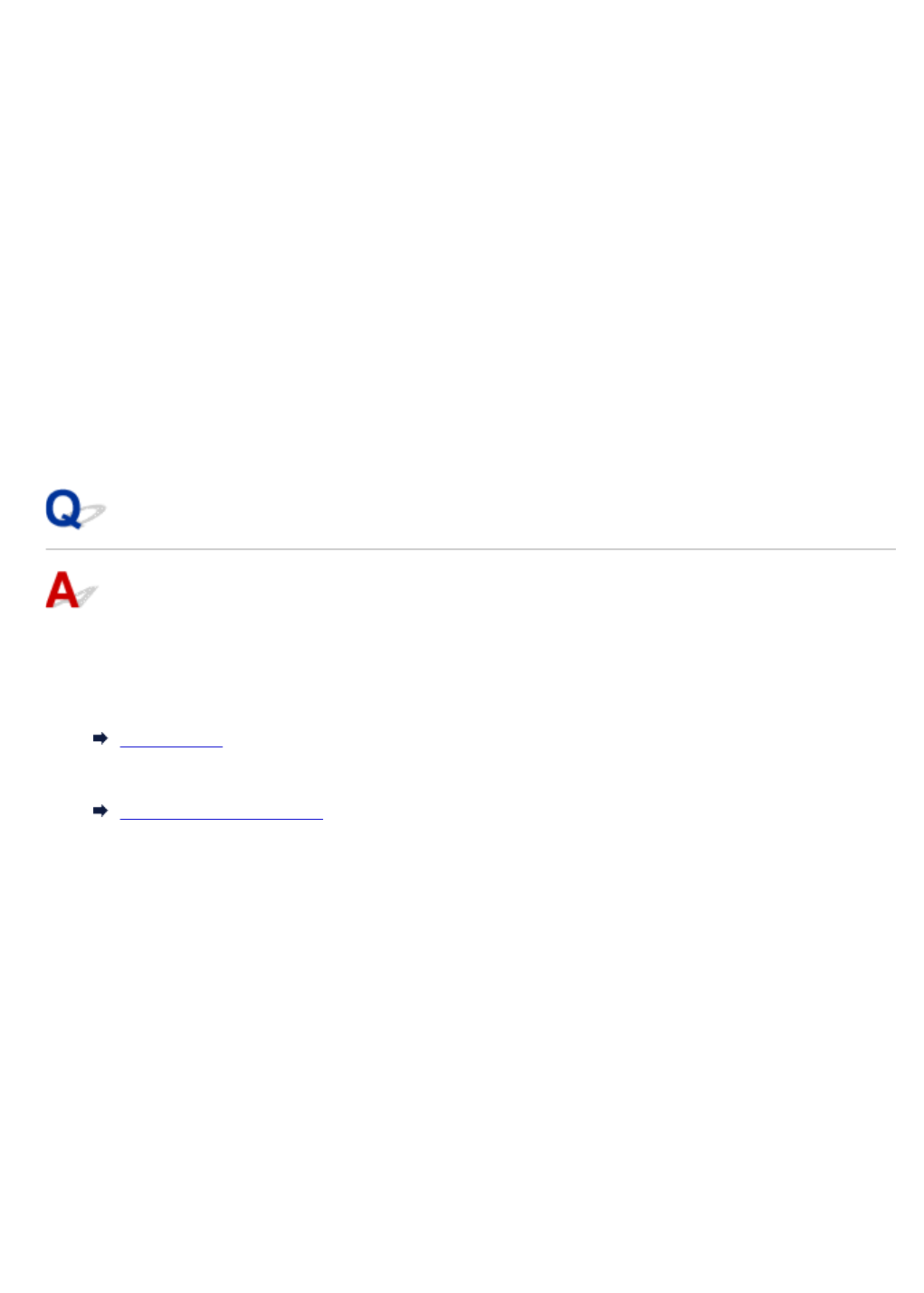
2. Click Ping.
3. Make sure Send only XX pings (XX are numbers) is selected.
4. Enter IP address of target printer or target wireless router in Enter the network address to ping.
5. Click Ping.
"XXX.XXX.XXX.XXX" is the IP address of the target device.
A message such as the following appears.
64 bytes from XXX.XXX.XXX.XXX: icmp_seq=0 ttl=64 time=3.394 ms
64 bytes from XXX.XXX.XXX.XXX: icmp_seq=1 ttl=64 time=1.786 ms
64 bytes from XXX.XXX.XXX.XXX: icmp_seq=2 ttl=64 time=1.739 ms
--- XXX.XXX.XXX.XXX ping statistics ---
3 packets transmitted, 3 packets received, 0% packet loss
If packet loss is 100%, communication is not taking place. Otherwise, computer is communicating
with target device.
Checking Network Setting Information
To check the printer's network settings information, print out the network settings information or use the
operation panel to display it.
• Display on the touch screen.
LAN settings
• Print the network settings.
Printing Network Settings
1100
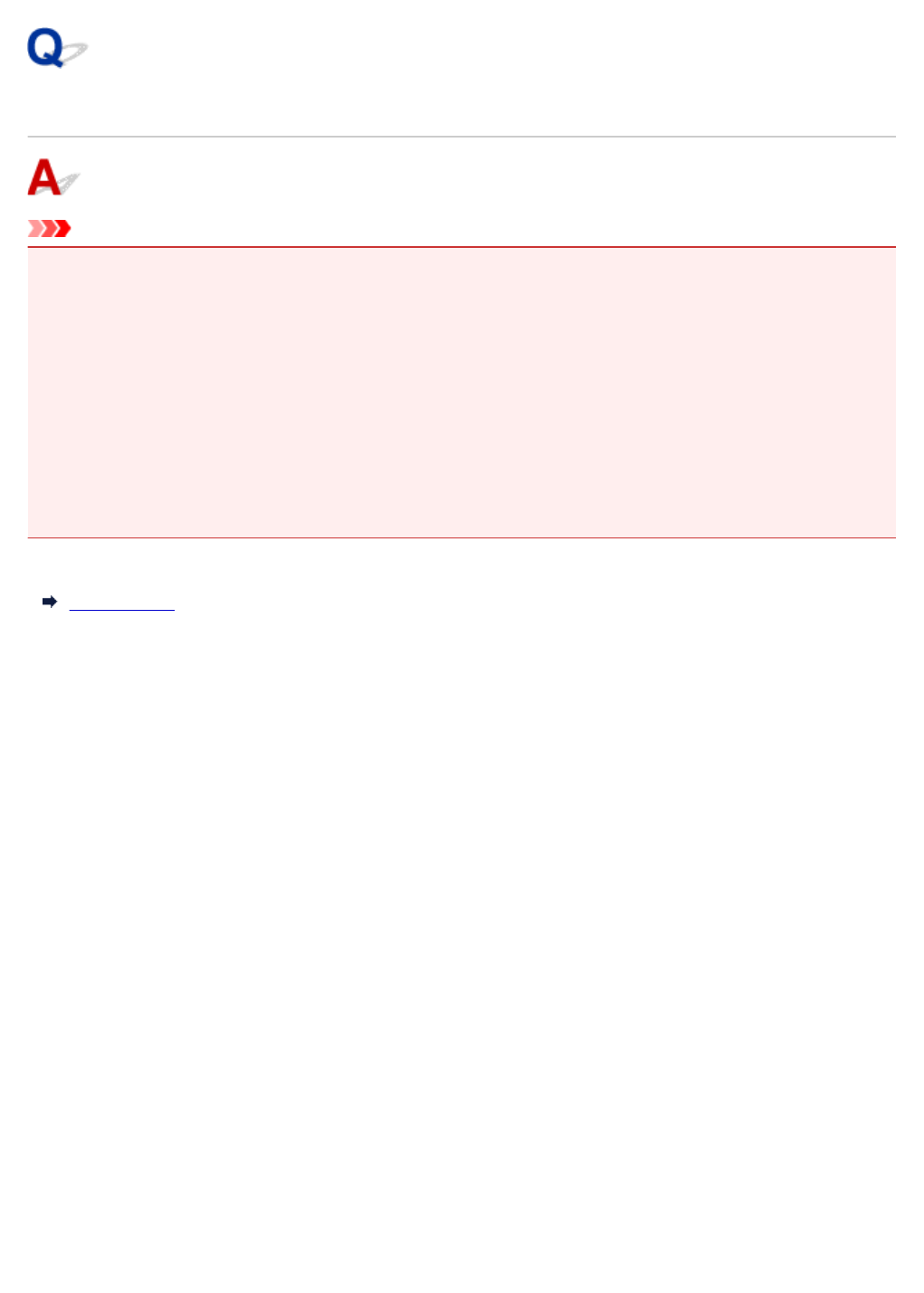
Restoring to Factory Defaults
Important
• For Windows:
Initialization erases all network settings on the printer, making printing, scanning, or faxing operation
from a computer over a network impossible. To use the printer over a network again after restoring it to
the factory defaults, use the Setup CD-ROM or follow the instructions on the Canon website to redo
setup.
• For Mac OS:
Initialization erases all network settings on the printer, making printing, scanning, or faxing operation
from a computer over a network impossible. To use the printer over a network again after restoring it to
the factory defaults, follow the instructions on the Canon website to redo setup.
Initialize the network setting using the printer's operation panel.
Reset setting
1101
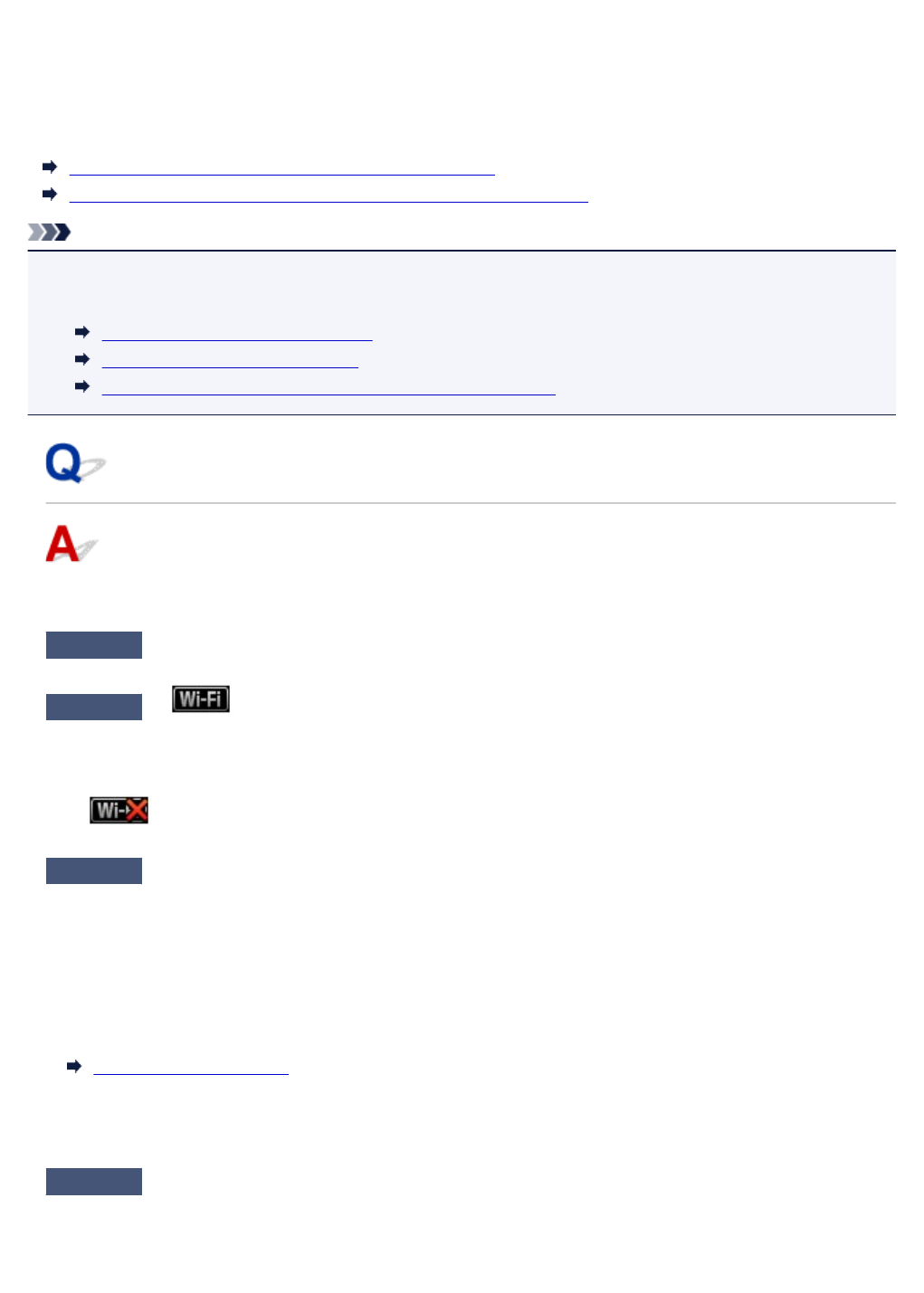
Cannot Print/Scan from Smartphone/Tablet
If you cannot print/scan from your smartphone/tablet, it is possible that your smartphone/tablet cannot
communicate with the printer.
Check the cause of your problem according to the connection method.
Cannot Communicate with Printer over Wireless LAN
Cannot Communicate with Printer while It Is in Direct Connection
Note
• For problems on printing with other connection methods or more on performing settings of each
connection method:
Using PIXMA/MAXIFY Cloud Link
Printing with Google Cloud Print
Printing from an AirPrint-enabled Printer with iOS Device
Cannot Communicate with Printer over Wireless LAN
If your smartphone/tablet cannot communicate with the printer, check the following.
Check1 Make sure printer is turned on.
Check2 Is icon displayed on touch screen?
If the icon is not displayed, tap the icon on the upper right, and then select Activate wireless LAN on the
Change LAN screen.
If the icon is displayed, the printer is not connected to the wireless router.
Check3 Are network settings of printer identical with those of wireless router?
Make sure the network settings of the printer (e.g. wireless router name, SSID, network key, etc.) are identical
with those of the wireless router.
To check the settings of the wireless router, refer to the instruction manual provided with it or contact its
manufacturer.
To check the current network settings of the printer, print out the network setting information.
Printing Network Settings
If the network settings of the printer are not identical with those of the wireless router, match the network
settings of the printer to those of the wireless router.
Check4 Are network settings of your smartphone/tablet identical with those of wireless
router?
1103

Make sure the network settings of your smartphone/tablet (e.g. wireless router name, SSID, network key, etc.)
are identical with those of the wireless router.
To check the settings of your smartphone/tablet, refer to the instruction manual provided with it.
If the network settings of your smartphone/tablet are not identical with those of the wireless router, change the
network settings of it to match with those of the wireless router.
Check5 Make sure printer is not too far away from wireless router.
Locate the printer close enough to communicate with the wireless router.
Check6 Check for obstructions.
Wireless communication between different rooms or floors is generally poor. Move the printer and wireless
router as necessary.
Check7 Make sure there is no source of radio wave interference nearby.
If a device like a microwave oven that emits radio waves of the same frequency bandwidth as a wireless router
is nearby, it may cause interference. Place the wireless router as far away from the interference source as
possible.
Cannot Communicate with Printer while It Is in Direct Connection
If your smartphone/tablet cannot communicate with the printer in the direct connection, check the
following.
Check1 Make sure printer is turned on.
Check2 Is icon displayed on touch screen?
If the icon is not displayed, tap the icon on the upper right, and then select Activate direct connect. on the
Change LAN screen.
Check3 Check settings of your smartphone/tablet.
Make sure your smartphone/tablet can use the wireless LAN.
For more on performing setting of the wireless LAN, refer to the instruction manual provided with your
smartphone/tablet.
Check4 Have you selected printer as destination of your smartphone/tablet?
Select the access point name (SSID) of the printer with your smartphone/tablet.
Check5 Have you entered proper password specified for direct connection?
If the security setting of the direct connection is enabled, you need to enter the password to connect your
smartphone/tablet to the printer.
1104
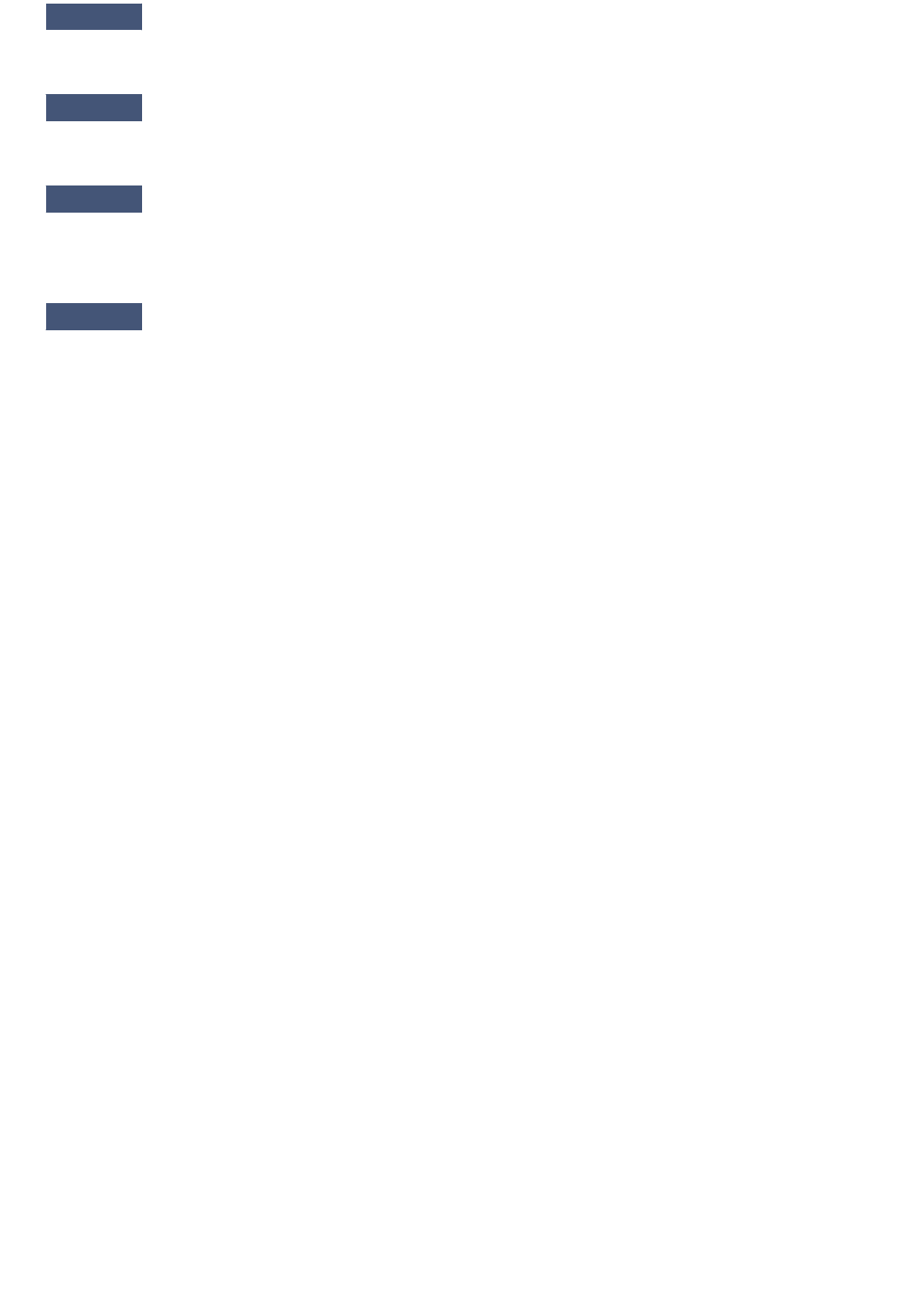
Check6 Make sure printer is not too far away.
Locate your smartphone/tablet close enough to communicate with the printer.
Check7 Check for obstructions.
Wireless communication between different rooms or floors is generally poor. Move the printer as necessary.
Check8 Make sure there is no source of radio wave interference nearby.
If a device like a microwave oven that emits radio waves of the same frequency bandwidth as a wireless router
is nearby, it may cause interference. Place the printer as far away from the interference source as possible.
Check9 Make sure 5 devices are already connected.
Direct connection does not allow more than 5 devices to be connected.
1105
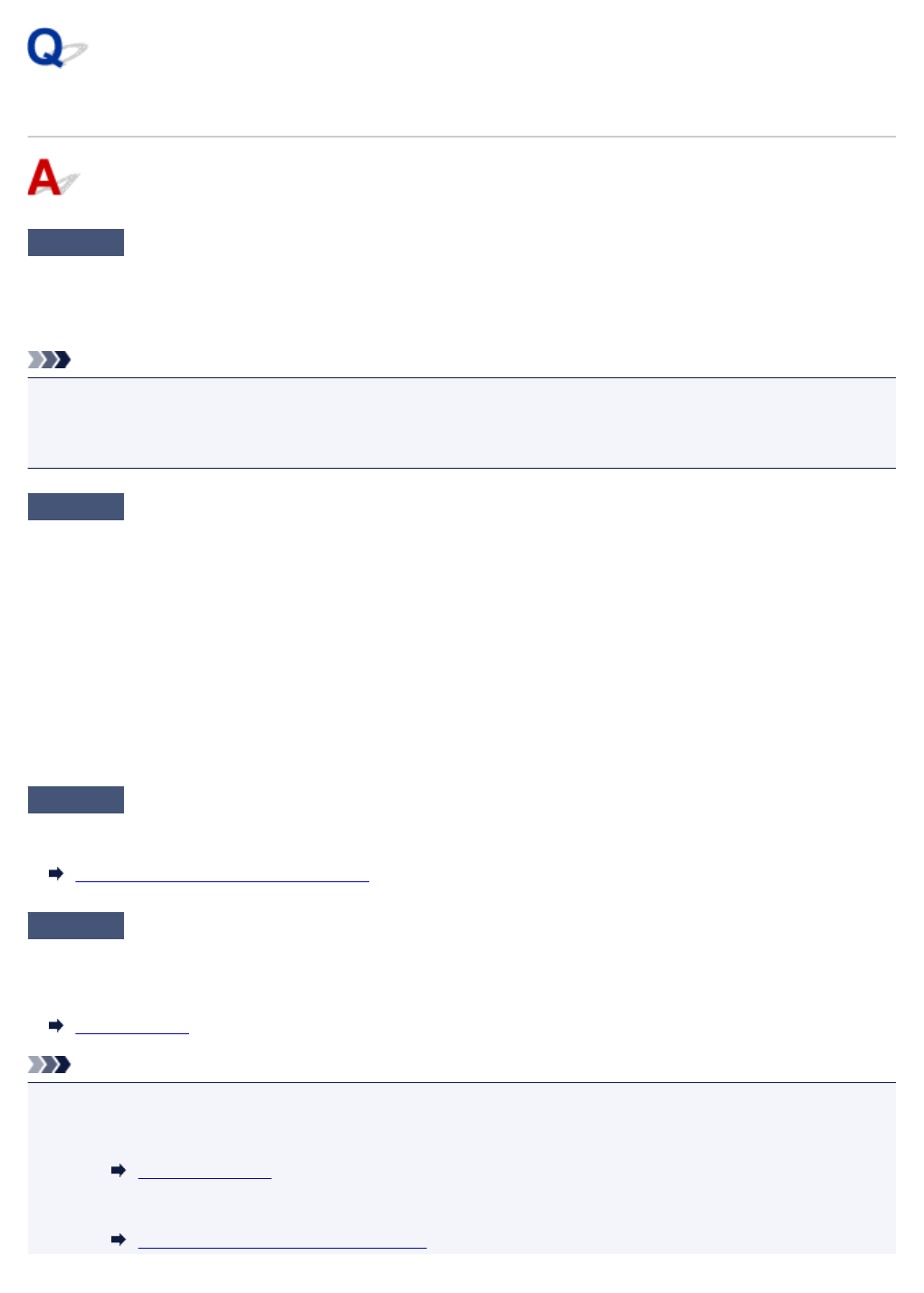
Printing Does Not Start
Check1 Make sure printer is securely plugged in and press ON button to turn it on.
The POWER lamp flashes while the printer is initializing. Wait until the POWER lamp
stops flashing and remains lit.
Note
• If you are printing large data such as photos or other graphics, printing may take longer to start. The
POWER lamp flashes while the computer is processing data and sending it to the printer. Wait until printing
starts.
Check2 Make sure printer is properly connected to computer.
If you are using a USB cable, make sure it is securely connected to both the printer and the computer. When the
USB cable is securely plugged in, check the following:
•If you are using a relay device such as a USB hub, disconnect it, connect the printer directly to the
computer, and retry the printing. If printing starts normally, there is a problem with the relay device. Contact
the vendor of the relay device.
•There could also be a problem with the USB cable. Replace the USB cable and retry the printing.
If you use the printer over a LAN, make sure the printer is connected to the network with a LAN cable or is
correctly set up for network use.
Check3 Is direct connection enabled?
To print using a mode other than the direct connection, disable the direct connection first.
Using Machine with Direct Connection
Check4 Make sure paper settings match information set for cassette.
If the paper settings do not match the information set for the cassette, an error message appears on the touch
screen. Follow the instructions on the touch screen to solve the problem.
Paper Settings
Note
•You can select whether the message which prevents misprinting is displayed.
• To change the message view setting when printing or copying using the printer's operation panel:
Cassette settings
• To change the message view setting when printing using the printer driver:
Changing the Printer Operation Mode (Windows)
1107
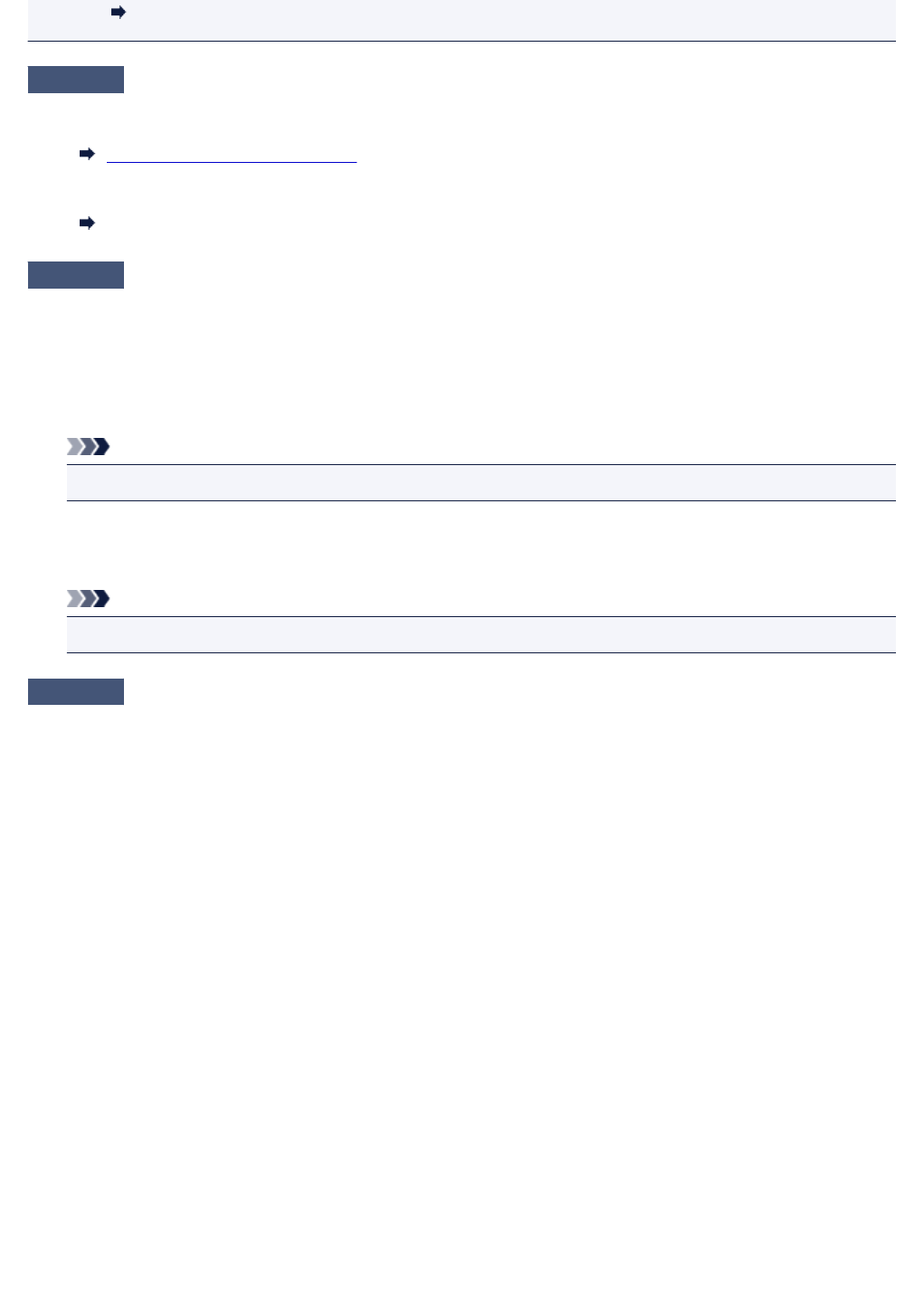
Changing the Printer Operation Mode (Mac OS)
Check5 If printing from a computer, delete unnecessary print jobs.
• For Windows:
Deleting the Undesired Print Job
•For Mac OS:
Deleting the Undesired Print Job
Check6 Is your printer's printer driver is selected when printing?
The printer will not print properly if you are using a printer driver for a different printer.
•For Windows:
Make sure "Canon XXX series Printer" (where "XXX" is your printer's name) is selected in the Print dialog
box.
Note
•To make the printer the one selected by default, select Set as Default Printer.
•For Mac OS:
Make sure your printer's name is selected in Printer in the Print dialog.
Note
•To make the printer the one selected by default, select the printer for Default printer.
Check7 Set correct printer port. (Windows)
Make sure the correct printer port is set.
1. Log in using an account with administrator privileges.
2. Make the following settings.
•In Windows 10, right-click Start button and select Control Panel > View devices and printers.
•In Windows 8.1 or Windows 8, select Control Panel from Settings charm on Desktop > Hardware
and Sound > Devices and Printers.
•In Windows 7, select Devices and Printers from Start menu.
• In Windows Vista, select Start menu > Control Panel > Hardware and Sound > Printers.
3. Open printer driver properties.
• In Windows 10, Windows 8.1, Windows 8, or Windows 7, right-click "Canon XXX series Printer" icon
(where "XXX" is your printer's name), and then select Printer properties.
• In Windows Vista, right-click "Canon XXX series Printer" icon (where "XXX" is your printer's name), and
then select Properties.
4. Click Ports tab to check port settings.
Make sure a port named "USBnnn" (where "n" is a number) with "Canon XXX series Printer" appearing in
Printer column is selected for Print to the following port(s).
• If setting is incorrect:
Reinstall the MP Drivers from the Setup CD-ROM or the Canon website.
1108
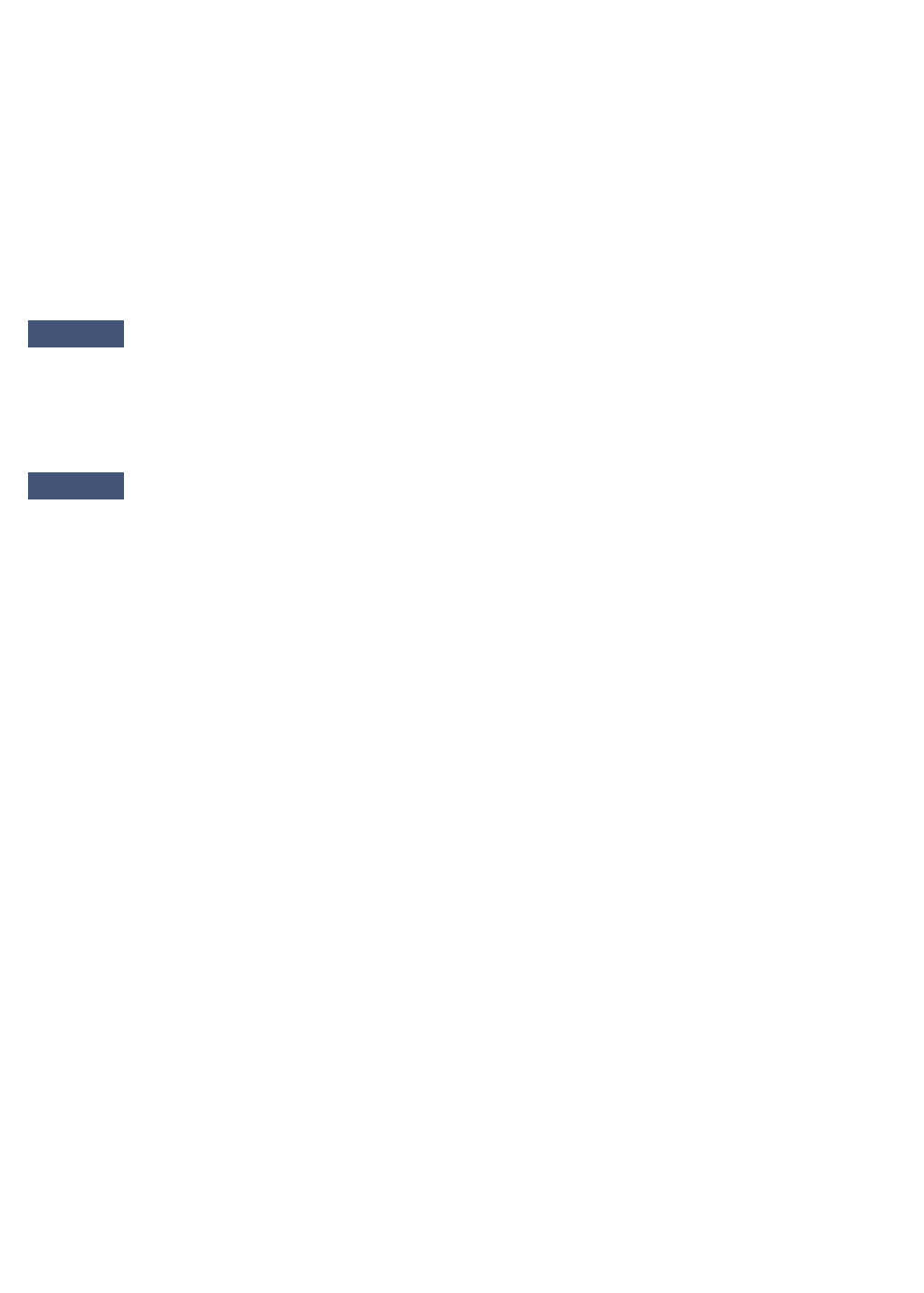
• If printing does not start even though the printer is connected to the computer using a USB cable and
the port named "USBnnn" is selected:
In Windows 8.1 or Windows 8, select My Printer on Start screen to start My Printer. If My Printer is
not displayed on Start screen, select Search charm, and then search for "My Printer".
Set the correct printer port on Diagnose and Repair Printer. Follow the on-screen instructions to set
the correct printer port, and then select your printer's name.
In Windows 7 or Windows Vista, click Start and select All programs, Canon Utilities, Canon My
Printer, Canon My Printer, and then select Diagnose and Repair Printer. Follow the on-screen
instructions to set the correct printer port, and then select your printer's name.
If the problem is not resolved, reinstall the MP Drivers from the Setup CD-ROM or the Canon website.
Check8 Is print data extremely large? (Windows)
Click Print Options on Page Setup sheet of the printer driver. Then set Prevention of Print Data Loss to On in
the dialog that appears.
* This may reduce print quality.
Check9 If printing from your computer, restart computer.
1109
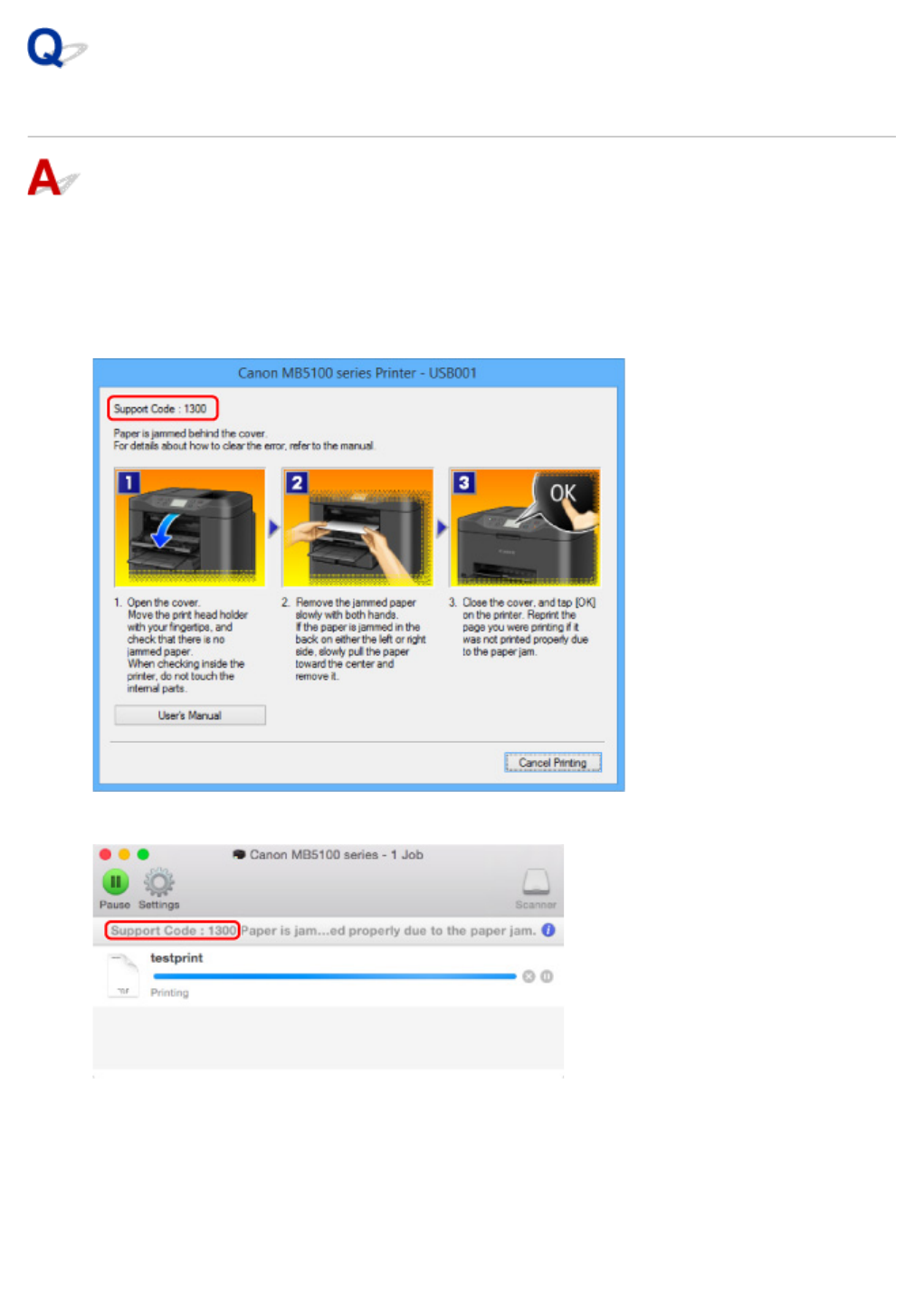
Paper Jams
When paper jams, a troubleshooting message appears automatically. Take the appropriate action described
in the message.
•When a Support Code and a Message Are Displayed on Computer Screen:
◦ For Windows:
◦ For Mac OS:
* The screen differs depending on the OS you are using.
1110
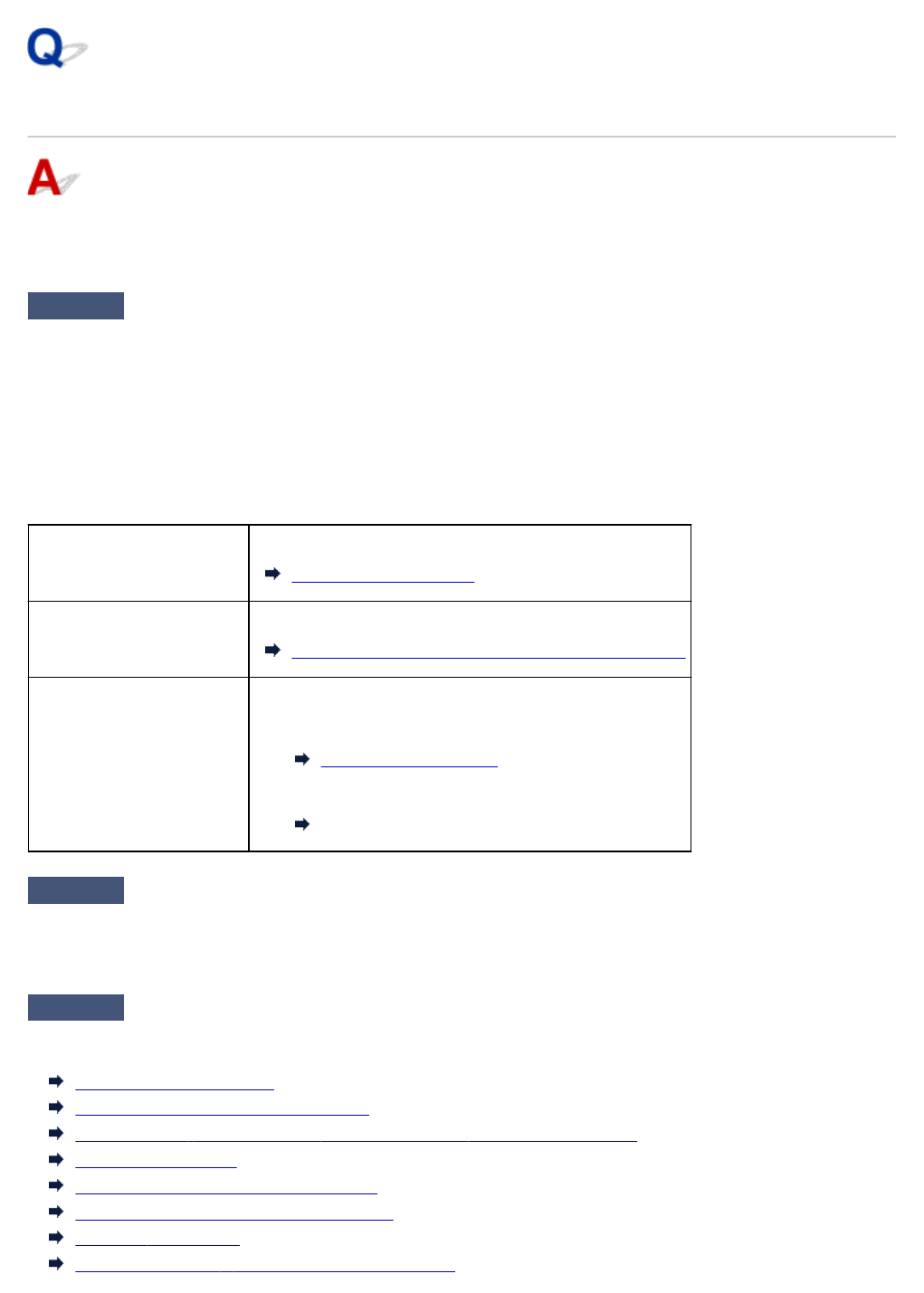
Print Results Are Unsatisfactory
If the print results are unsatisfactory due to white streaks, misaligned lines, or uneven colors, check the
paper and print quality settings first.
Check1 Do page size and media type settings match size and type of loaded paper?
If these settings do not match, it is not possible to obtain the proper result.
If you are printing a photograph or an illustration, an incorrect paper type setting may reduce the quality of the
printout color.
Also, if you print with an incorrect paper type setting, the printed surface may be scratched.
The method for checking the paper and print quality settings differs depending on what you are using your printer
for.
Copying Check the settings using the operation panel.
Setting Items for Copying
Printing from USB flash drive Check the settings using the operation panel.
Setting Items for Photo Printing Using Operation Panel
Printing from your computer Check the settings using the printer driver.
• For Windows:
Printing with Easy Setup
• For Mac OS:
Printing with Easy Setup
Check2 Make sure appropriate print quality is selected (see table above).
Select a print quality suited to the paper and to what you are printing. If you notice blurs or uneven colors,
increase the print quality setting and retry the printing.
Check3 If problem is not resolved, check other causes.
See also the sections below:
Cannot Complete Printing
Part of Page Is Not Printed (Windows)
Paper Is Blank/Printing Is Blurry/Colors Are Wrong/White Streaks Appear
Lines Are Misaligned
Lines Incomplete or Missing (Windows)
Images Incomplete or Missing (Windows)
Ink Blots / Paper Curl
Paper Is Smudged / Printed Surface Is Scratched
1112
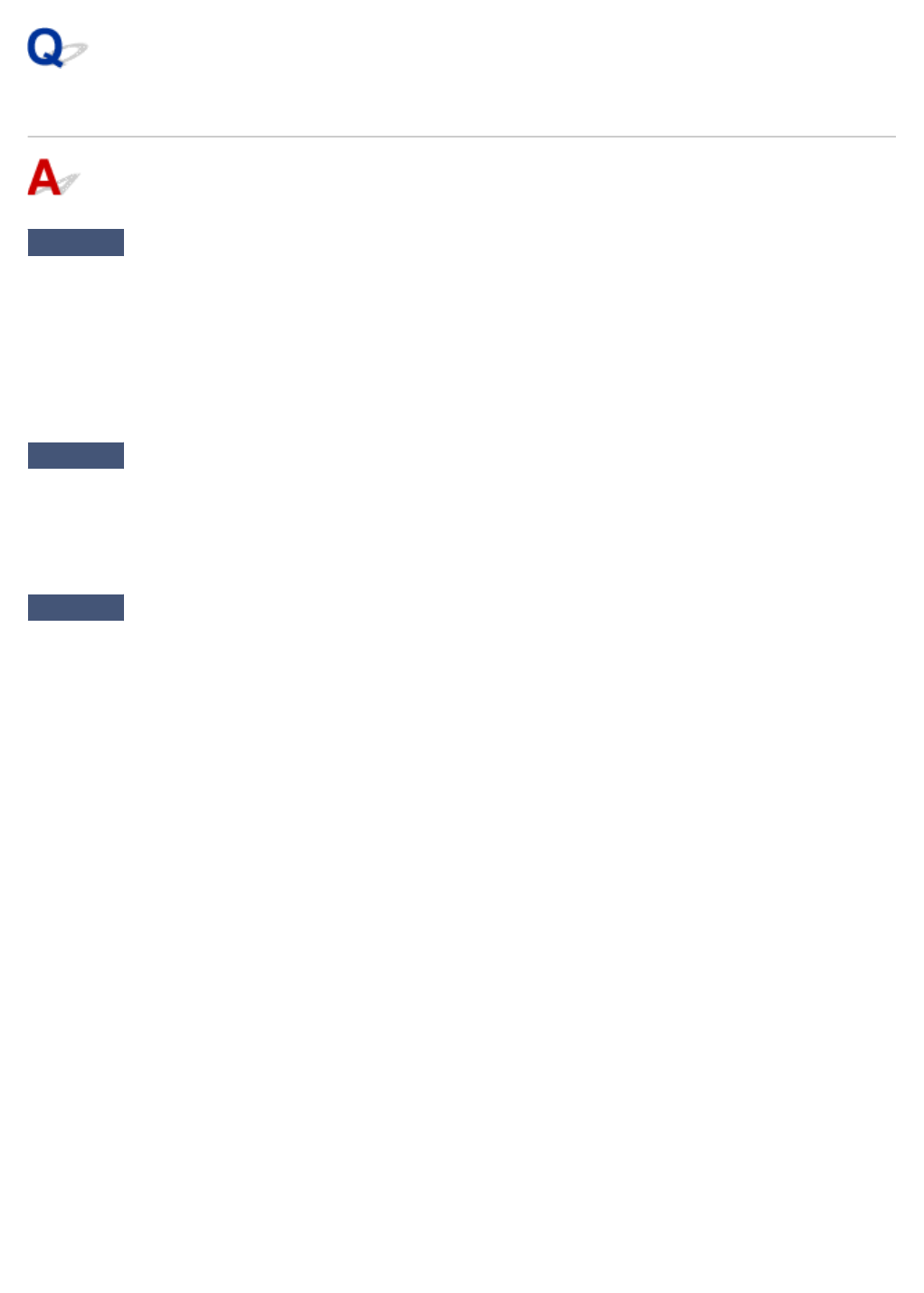
Cannot Complete Printing
Check1 Select setting not to compress printing data. (Windows)
If you select the setting not to compress the printing data with an application software you are using, the printing
result may be improved.
Click Print Options on Page Setup sheet of the printer driver. Select Do not allow application software to
compress print data check box and click OK.
* Clear the check box once printing is complete.
Check2 Is print data extremely large? (Windows)
Click Print Options on Page Setup sheet of the printer driver. Then set Prevention of Print Data Loss to On in
the dialog that appears.
* This may reduce print quality.
Check3 Your hard disk may not have sufficient free space to store job.
Delete unnecessary files to free up disk space.
1114
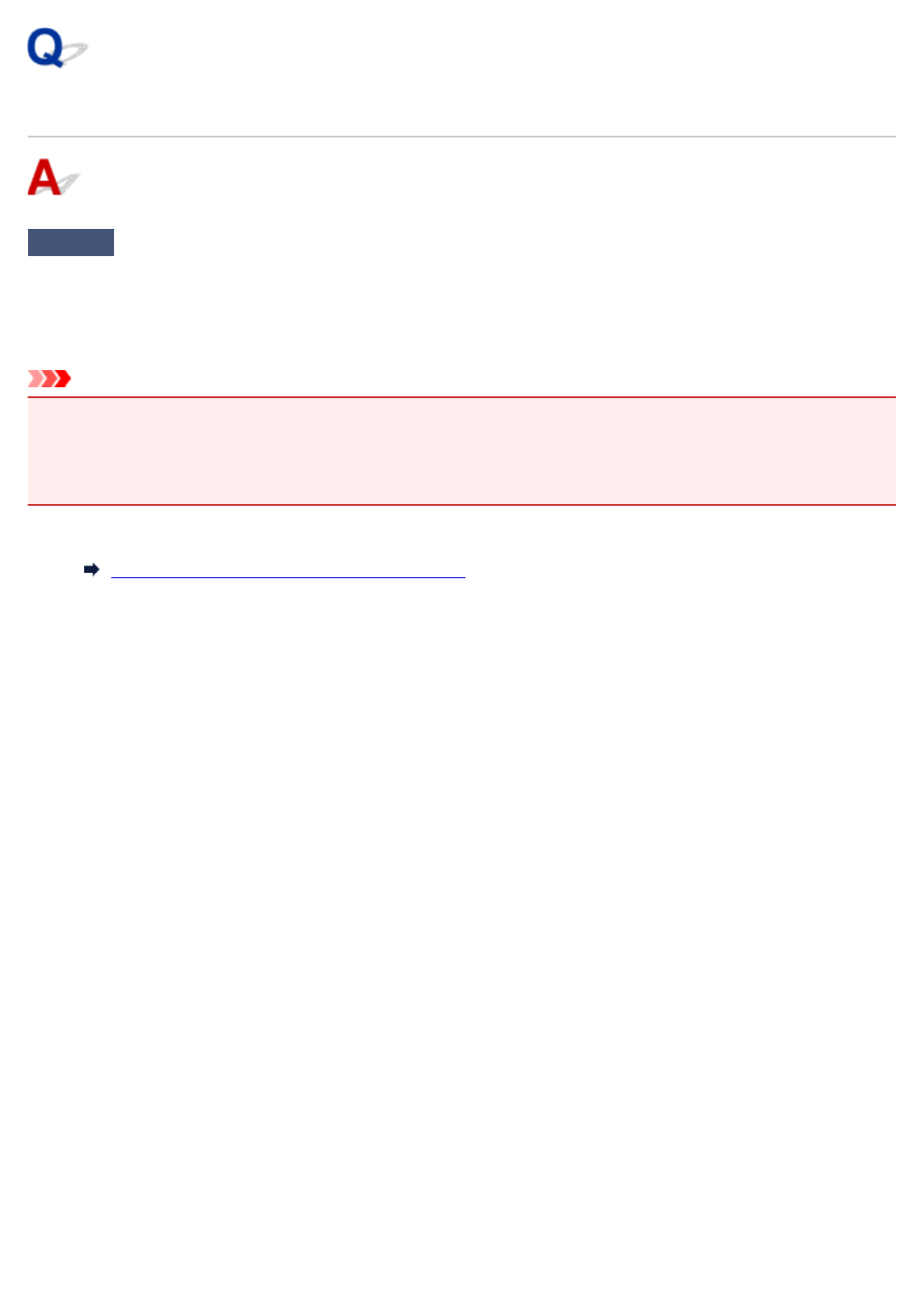
Part of Page Is Not Printed (Windows)
Check Are you using automatic duplex printing?
If you are using automatic duplex printing, the printable area at the top of the page will be 0.08 inches / 2 mm
shorter than usual.
Therefore, the bottom of the page may not be printed. To prevent this, set reduced printing on the printer driver.
Important
•Reducing the printing size may affect the layout of your document.
If the application you used to create your document has a zoom function, set the reduced size in the
application.
1. Open printer driver setup window.
How to Open the Printer Driver Setup Window
2. Check Duplex Printing check box in Page Setup sheet.
3. Click Print Area Setup and select Use reduced printing.
1115
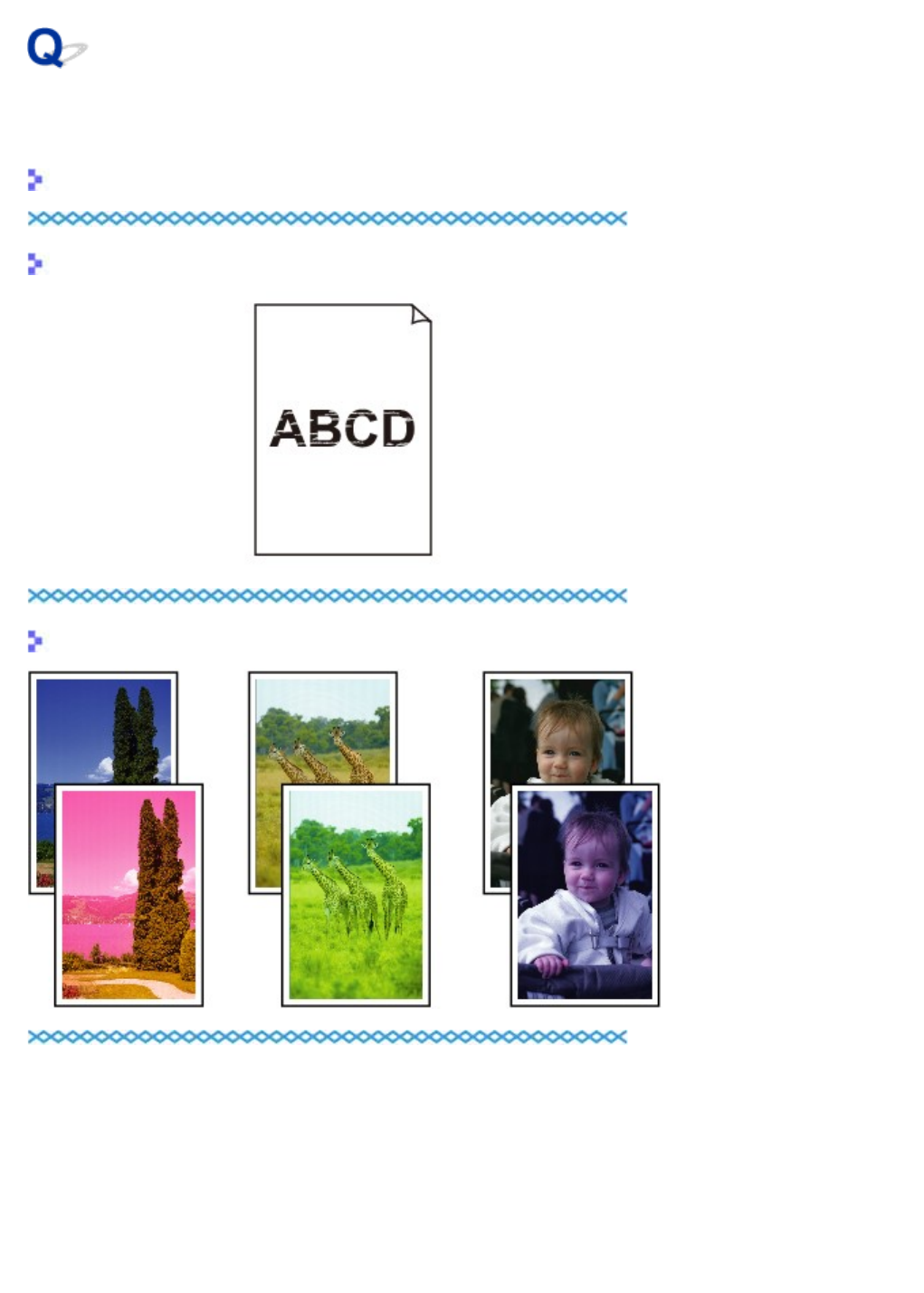
Paper Is Blank/Printing Is Blurry/Colors Are Wrong/White Streaks
Appear
Paper Is Blank
Printing Is Blurry
Colors Are Wrong
1116
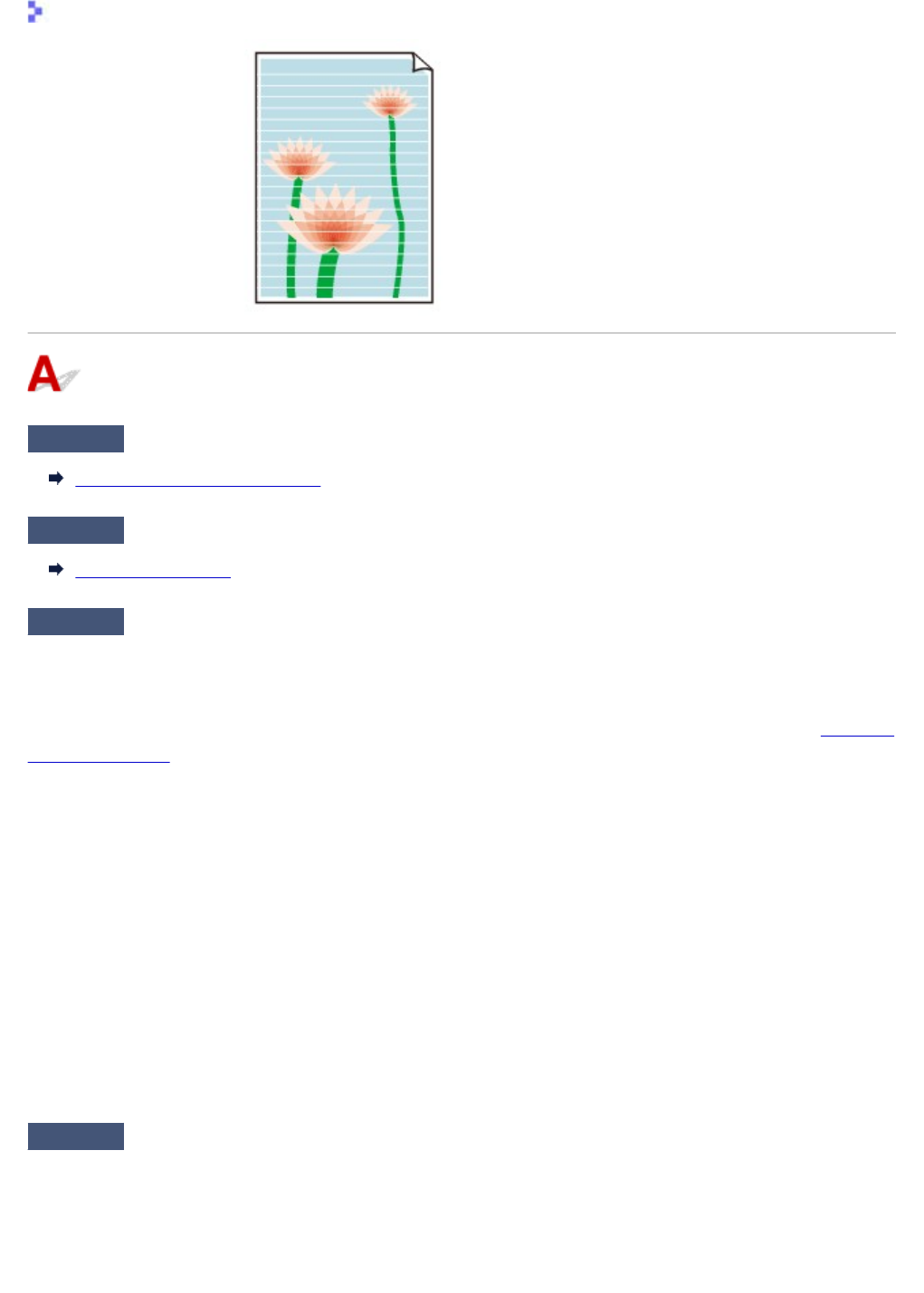
White Streaks Appear
Check1 Check paper and print quality settings.
Print Results Are Unsatisfactory
Check2 Check status of ink tanks. Replace ink tank if ink has run out.
Replacing Ink Tanks
Check3 Print nozzle check pattern and perform any necessary maintenance operations
such as print head cleaning.
Print the nozzle check pattern to determine whether the ink ejects properly from the print head nozzles.
For details on printing the nozzle check pattern, print head cleaning, and print head deep cleaning, see If Printing
Is Faint or Uneven.
•If nozzle check pattern is not printed correctly:
Check if the ink tank for the problem color is empty.
If the ink tank is not empty, perform print head cleaning and try printing the nozzle check pattern again.
•If problem is not resolved after performing print head cleaning twice:
Perform print head deep cleaning.
If the problem is not resolved after performing print head deep cleaning, turn off the printer and perform
print head deep cleaning again 24 hours later. When you turn the printer off, do not unplug it.
• If problem is not resolved after performing print head deep cleaning twice:
If print head deep cleaning does not resolve the problem, the print head may be damaged. Contact your
nearest Canon service center to request a repair.
Check4 When using paper with one printable surface, make sure paper is loaded with
printable side facing down.
Printing on the wrong side of such paper may cause unclear prints or prints with reduced quality.
Load paper with the printable side facing down.
Refer to the instruction manual supplied with the paper for detailed information on the printable side.
1117
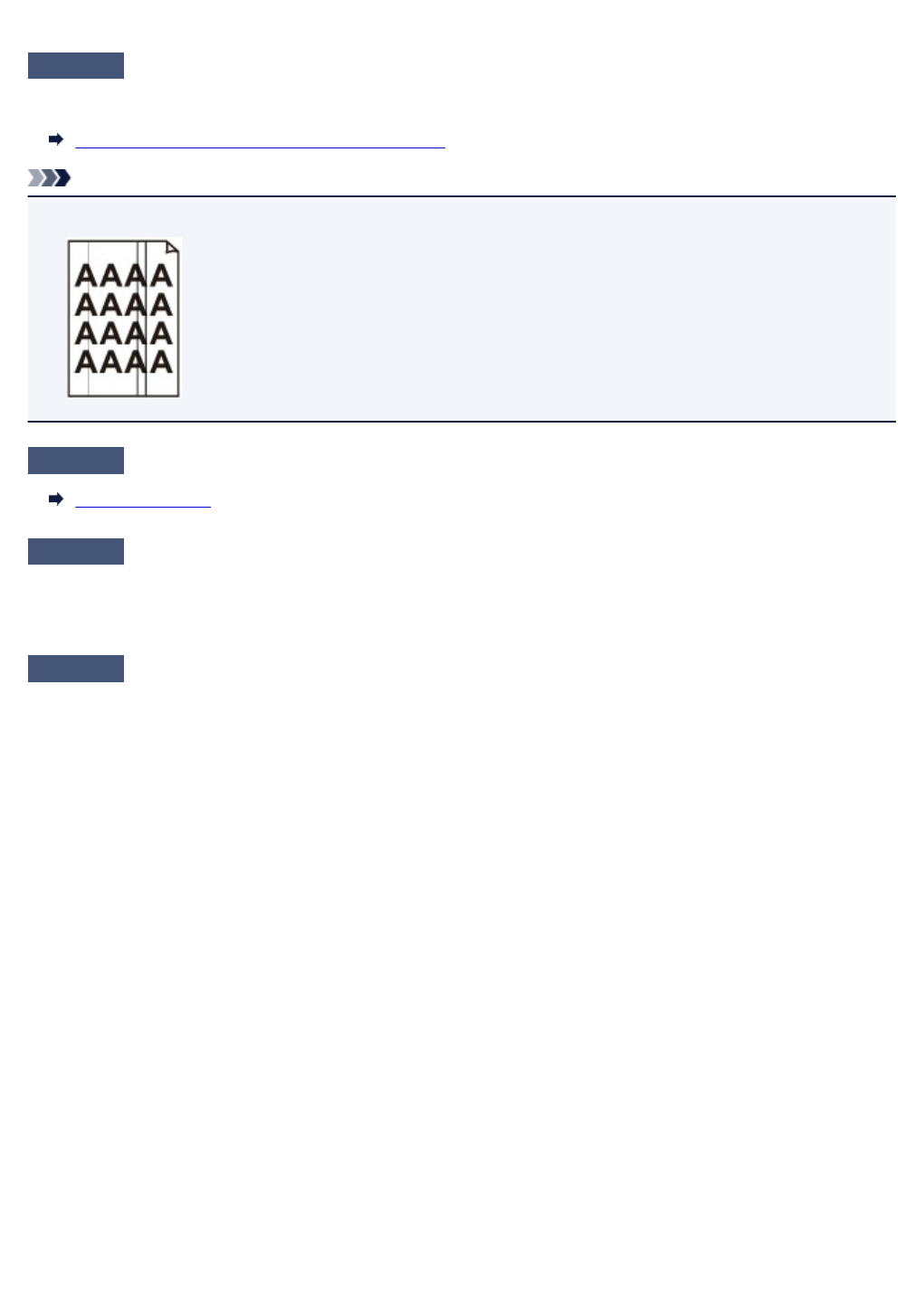
•When copying, see also the sections below:
Check5 Is platen glass or glass of ADF dirty?
Clean the platen glass or the glass of ADF.
Cleaning the Platen Glass and Document Cover
Note
• If the glass of ADF is dirty, black streaks appear on the paper as shown below.
Check6 Make sure original is loaded correctly on platen glass or in ADF.
Loading Originals
Check7 Is original document is loaded with proper side facing up/down?
When loading the original on the platen glass, the side to be copied should be face down. When loading the
original in the ADF, the side to be copied should be face up.
Check8 Did you copy a printout done by this printer?
If you use a printout done by this printer as the original, print quality may be reduced depending on the condition
of the original.
Print from the printer directly, or reprint from the computer if you can reprint from it.
1118
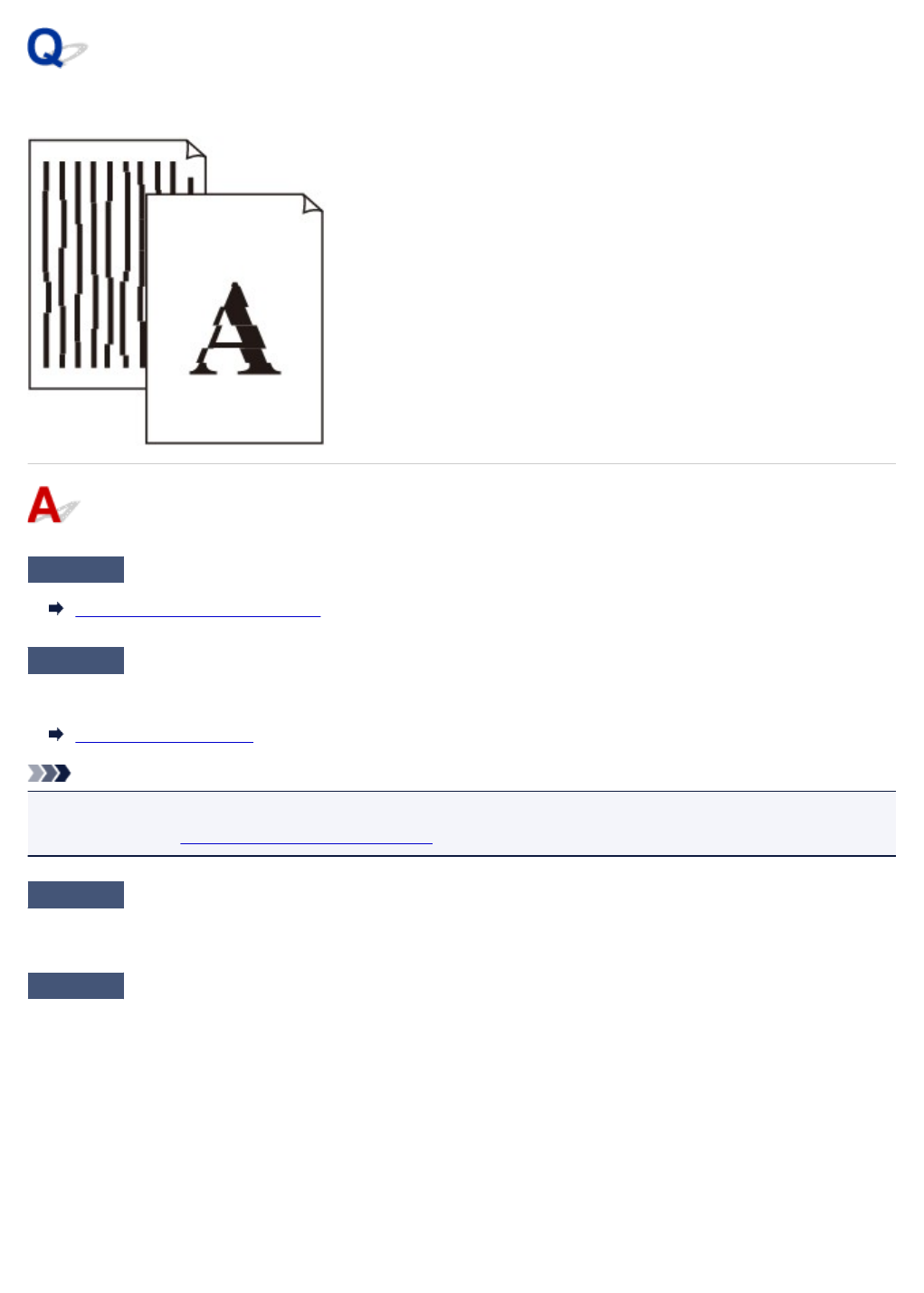
Lines Are Misaligned
Check1 Check paper and print quality settings.
Print Results Are Unsatisfactory
Check2 Perform print head alignment.
If printed lines are misaligned or print results are otherwise unsatisfactory, adjust the print head position.
Aligning the Print Head
Note
•If the problem is not resolved after performing the print head alignment, perform print head alignment
manually. See Aligning the Print Head Manually.
Check3 Increase print quality and try printing again.
Increasing the print quality using the operation panel or the printer driver may improve the print result.
Check4 If lines are misaligned with manual duplex printing, perform automatic duplex
printing. (Windows)
1119
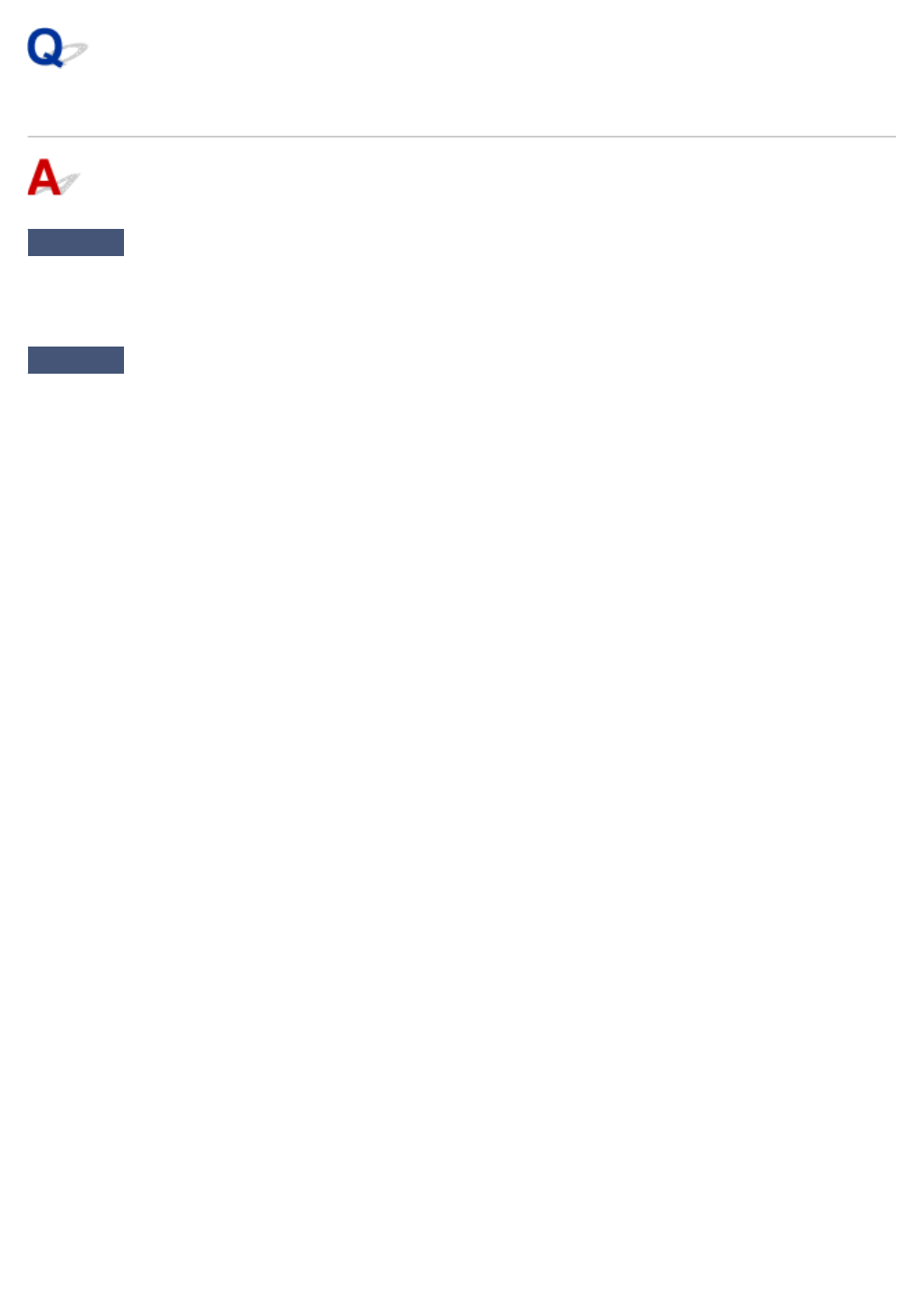
Lines Incomplete or Missing (Windows)
Check1 Are you using Page Layout Printing or Binding Margin function?
When the Page Layout Printing or Binding margin function is in use, thin lines may not be printed. Try thickening
the lines in the document.
Check2 Is print data extremely large?
Click Print Options on Page Setup sheet of the printer driver. Then set Prevention of Print Data Loss to On in
the dialog that appears.
* This may reduce print quality.
1120
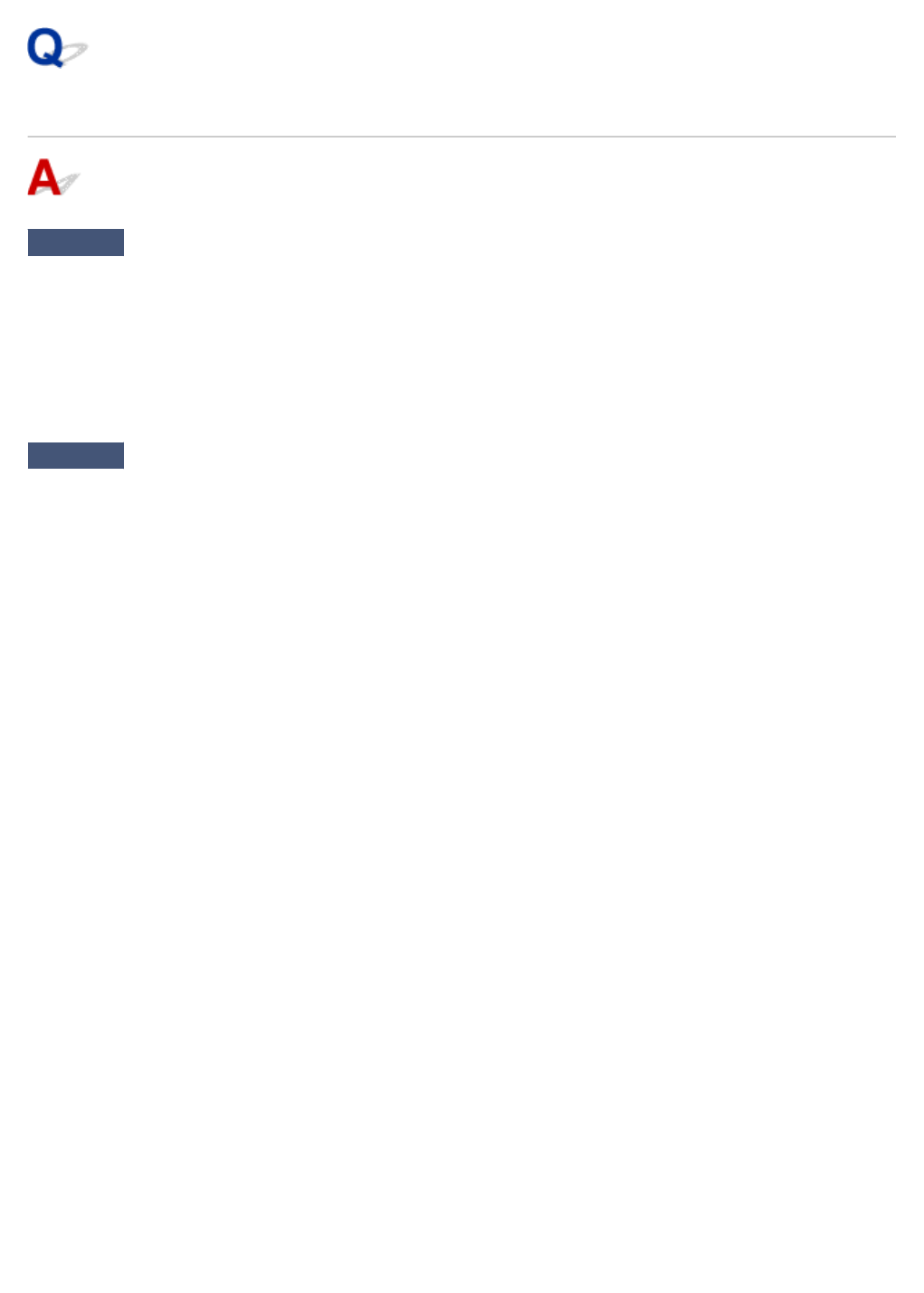
Images Incomplete or Missing (Windows)
Check1 Select setting not to compress printing data.
If you select the setting not to compress the printing data with an application software you are using, the printing
result may be improved.
Click Print Options on Page Setup sheet of the printer driver. Select Do not allow application software to
compress print data check box and click OK.
* Clear the check box once printing is complete.
Check2 Is print data extremely large?
Click Print Options on Page Setup sheet of the printer driver. Then set Prevention of Print Data Loss to On in
the dialog that appears.
* This may reduce print quality.
1121
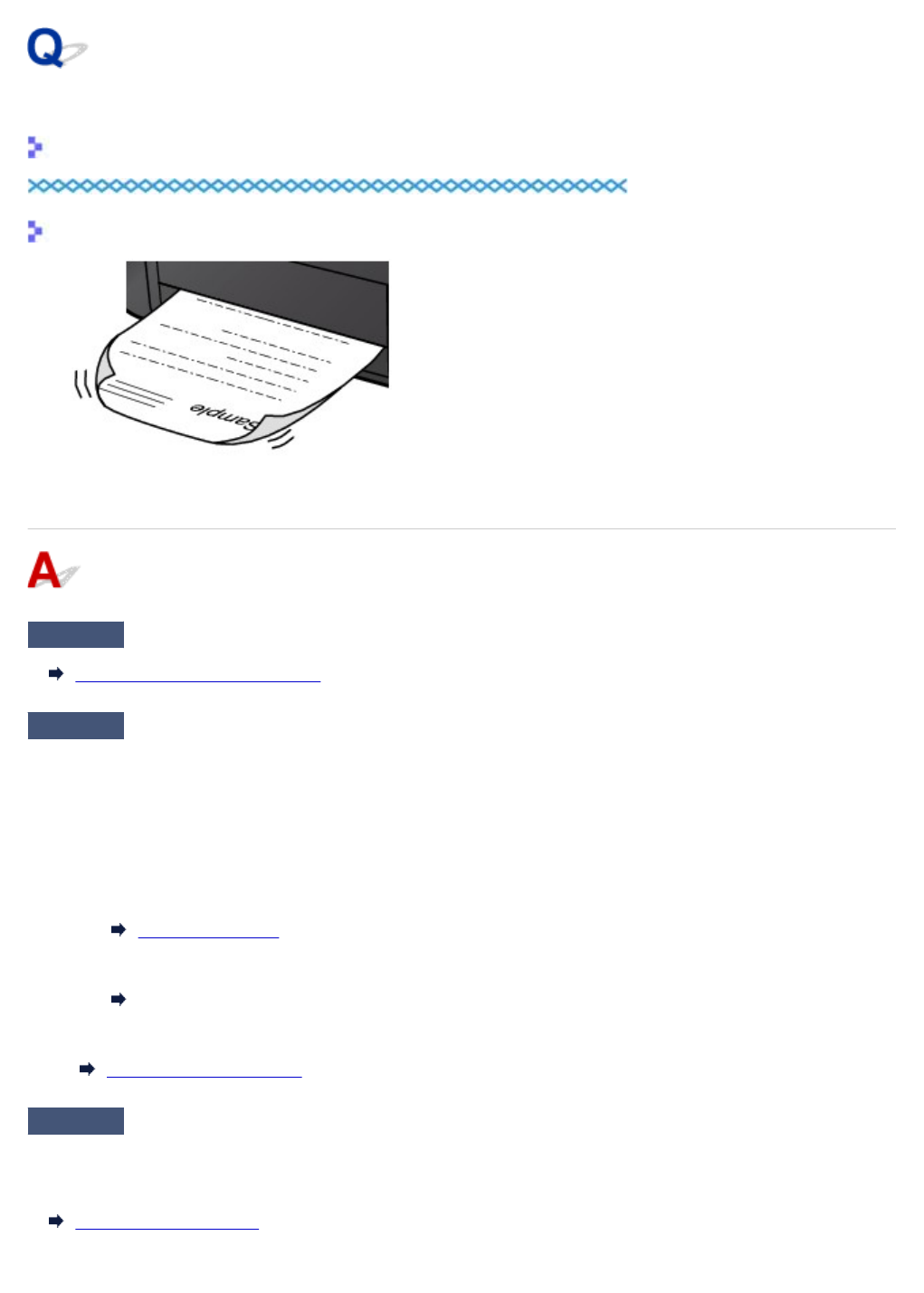
Ink Blots / Paper Curl
Ink Blots
Paper Curl
Check1 Check paper and print quality settings.
Print Results Are Unsatisfactory
Check2 If intensity is set high, reduce intensity setting and try printing again.
If you are printing with a high intensity setting on plain paper, the paper may absorb too much ink and become
wavy, causing paper abrasion.
•Printing from your computer
Check the intensity setting in the printer driver.
◦For Windows:
Adjusting Intensity
◦ For Mac OS:
Adjusting Intensity
• Copying
Setting Items for Copying
Check3 Use Photo Paper to print photos.
To print data with high color saturation such as photographs or images with dark colors, we recommend that you
use Photo Paper Plus Glossy II or other Canon specialty paper.
Supported Media Types
1122
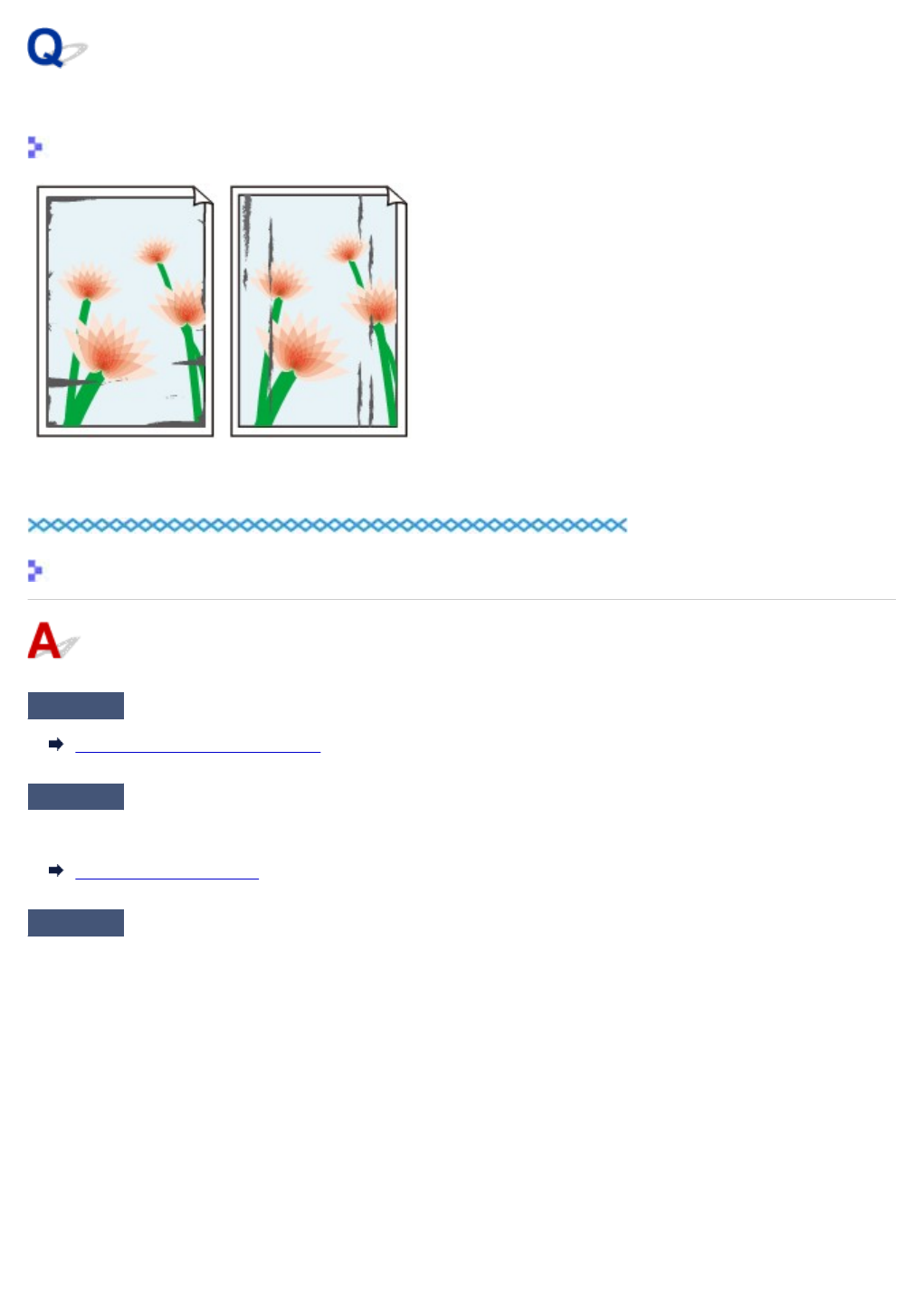
Paper Is Smudged / Printed Surface Is Scratched
Paper Is Smudged
Smudged Edges Smudged Surface
Printed Surface Is Scratched
Check1 Check paper and print quality settings.
Print Results Are Unsatisfactory
Check2 Check paper type.
Make sure you are using the right paper for what you are printing.
Supported Media Types
Check3 Correct curl before loading paper.
When using Photo Paper Plus Semi-gloss, even if the sheet is curled, load one sheet at a time as it is. Rolling
this paper in the opposite direction to flatten it may crack the paper surface and reduce the print quality.
We recommend putting unused paper back into the package and storing it flat.
• Plain Paper
Turn the paper over and reload it to print on the other side.
• Other Paper
If the paper corners curl more than 0.1 inch / 3 mm (A) in height, the paper may smudge or may not feed
properly. Follow the instructions below to correct the paper curl.
1123
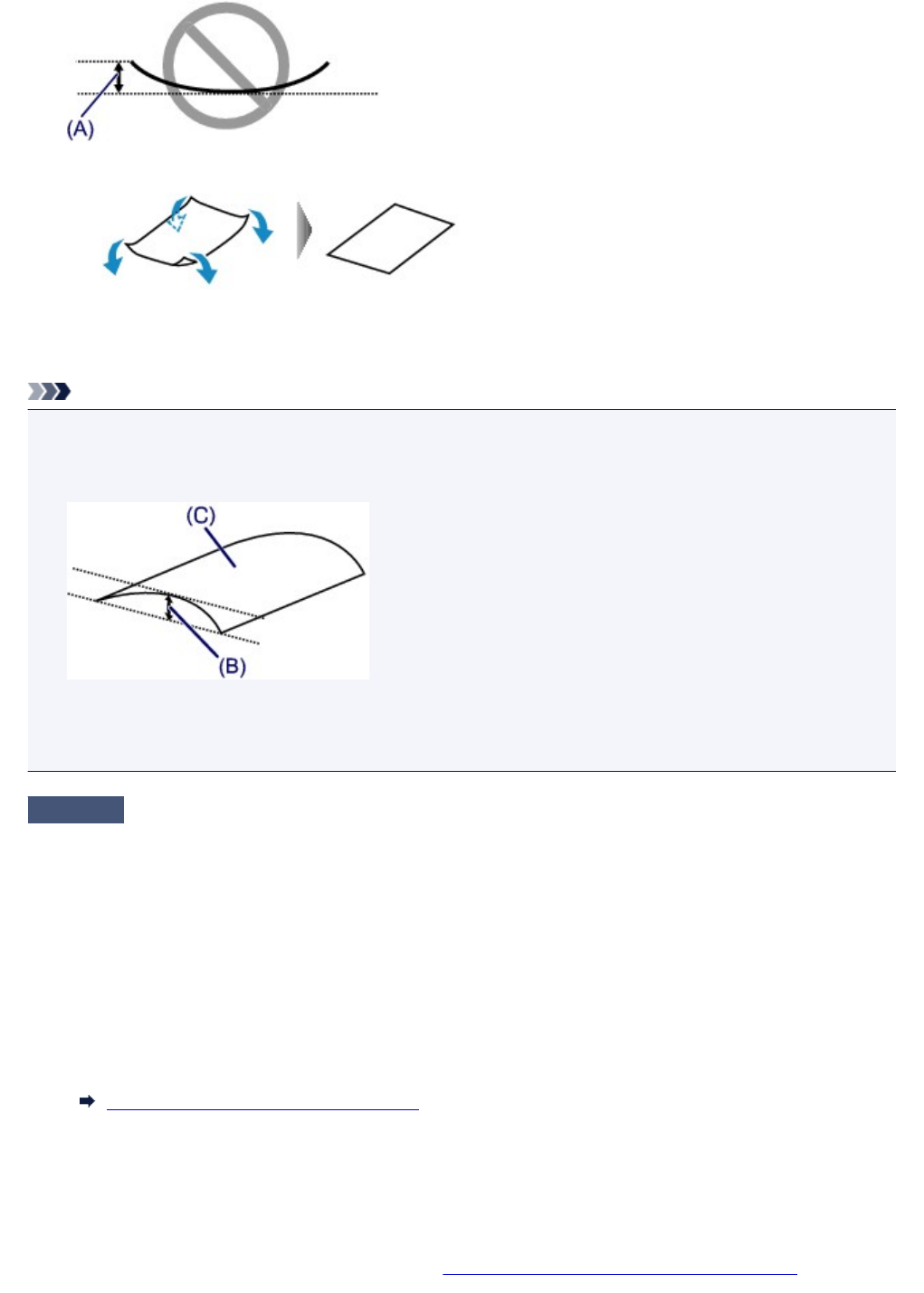
1. Roll up paper in opposite direction to paper curl as shown below.
2. Check that paper is now flat.
We recommend printing curl-corrected paper one sheet at a time.
Note
• Depending on paper type, the paper may smudge or may not feed properly even if it is not curled inward.
Follow the instructions below to curl the paper outward up to 0.1 inch / 3 mm (B) in height before printing.
This may improve the print result.
(C) Print side
We recommend feeding paper that has been curled outward one sheet at a time.
Check4 Set printer to prevent paper abrasion.
Adjusting the setting to prevent paper abrasion will widen the clearance between the print head and the paper. If
you notice abrasion even with the media type set correctly to match the paper, set the printer to prevent paper
abrasion using the operation panel or the computer.
This may reduce the print speed.
* Once you have finished printing, undo this setting. Otherwise, it will apply to subsequent print jobs.
• From operation panel
Press the HOME button, select Setup, Device settings, and Print settings, and then set Prevent paper
abrasion to ON.
Changing Settings from Operation Panel
• From computer
◦ For Windows:
Open the printer driver setup window, select Custom Settings in Maintenance sheet, select Prevent
paper abrasion check box, and then click OK.
To open the printer driver setup window, see How to Open the Printer Driver Setup Window.
1124
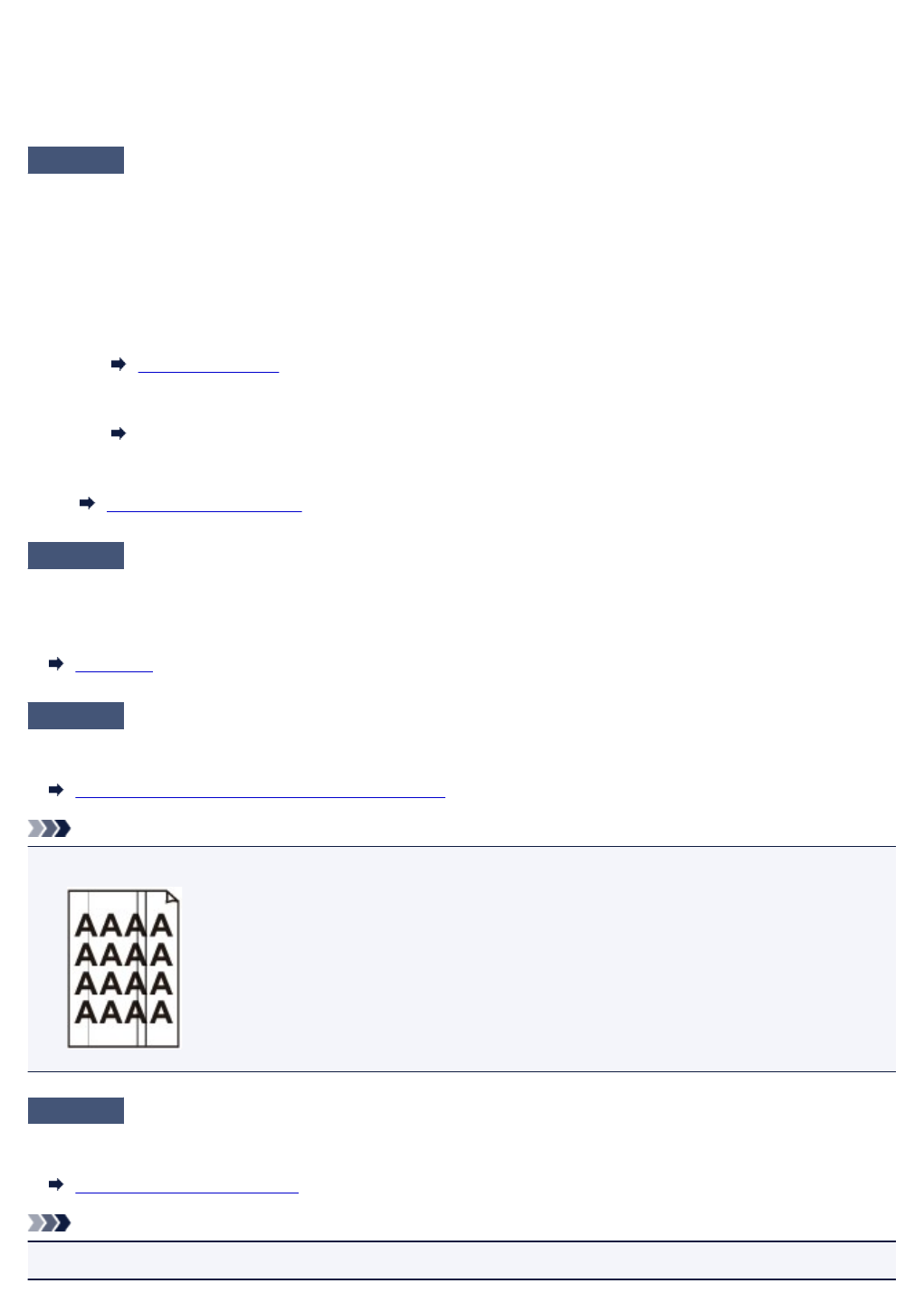
◦ For Mac OS:
In the Canon IJ Printer Utility, select Custom Settings in the pop-up menu, select Prevent paper
abrasion check box, and then click Apply.
To open the Canon IJ Printer Utility, see Opening the Canon IJ Printer Utility.
Check5 If intensity is set high, reduce intensity setting and try printing again.
If you are printing with a high intensity setting on plain paper, the paper may absorb too much ink and become
wavy, causing paper abrasion.
•Printing from your computer
Check the intensity setting in the printer driver.
◦For Windows:
Adjusting Intensity
◦For Mac OS:
Adjusting Intensity
•Copying
Setting Items for Copying
Check6 Do not print outside recommended printing area.
If you print outside the recommended printing area of your paper, ink may stain the lower edge of the paper.
Resize the document using application software.
Print Area
Check7 Is platen glass or glass of ADF dirty?
Clean the platen glass or the glass of ADF.
Cleaning the Platen Glass and Document Cover
Note
•If the glass of ADF is dirty, black streaks appear on the paper as shown below.
Check8 Is paper feed roller dirty?
Clean the paper feed roller.
Cleaning Paper Feed Rollers
Note
• Cleaning the paper feed roller abrades it, so do this only when necessary.
1125
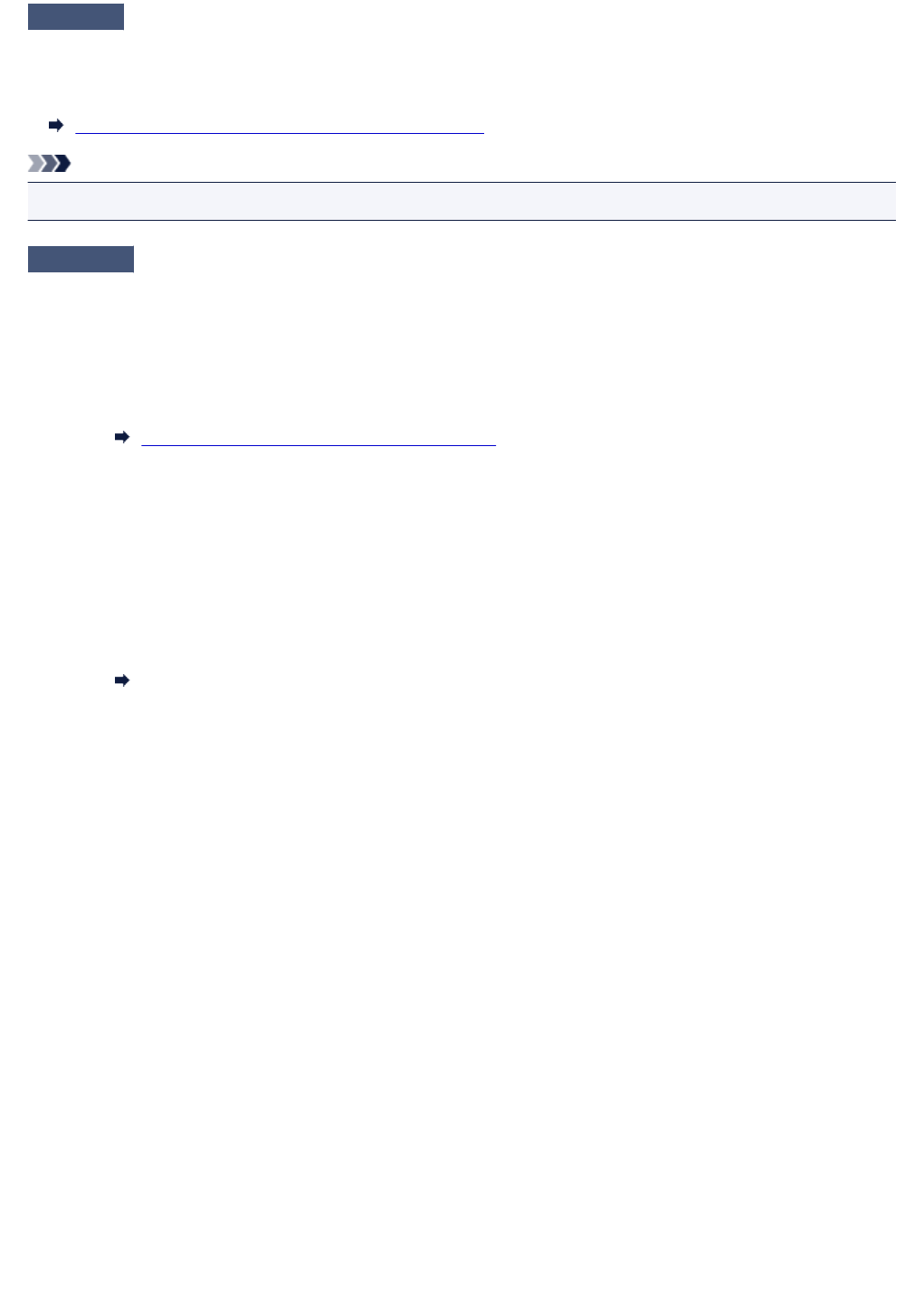
Check9 Is inside of printer dirty?
During duplex printing, ink may stain the inside of the printer, smudging the printout.
Perform the bottom plate cleaning to clean the inside of the printer.
Cleaning Inside the Machine (Bottom Plate Cleaning)
Note
• To prevent staining inside the printer, be sure to set the correct paper size.
Check10 Set longer ink drying time.
This allows the printed surface to dry, preventing smudges and scratches.
•For Windows:
1. Make sure printer is turned on.
2. Open printer driver setup window.
How to Open the Printer Driver Setup Window
3. Click Maintenance tab and Custom Settings.
4. Drag Ink Drying Wait Time slide bar to set wait time and click OK.
5. Check message and click OK.
•For Mac OS:
1. Make sure printer is turned on.
2. Open Canon IJ Printer Utility.
Opening the Canon IJ Printer Utility
3. Select Custom Settings in pop-up menu.
4. Drag Ink Drying Wait Time: slide bar to set wait time and click Apply.
5. Check message and click OK.
1126
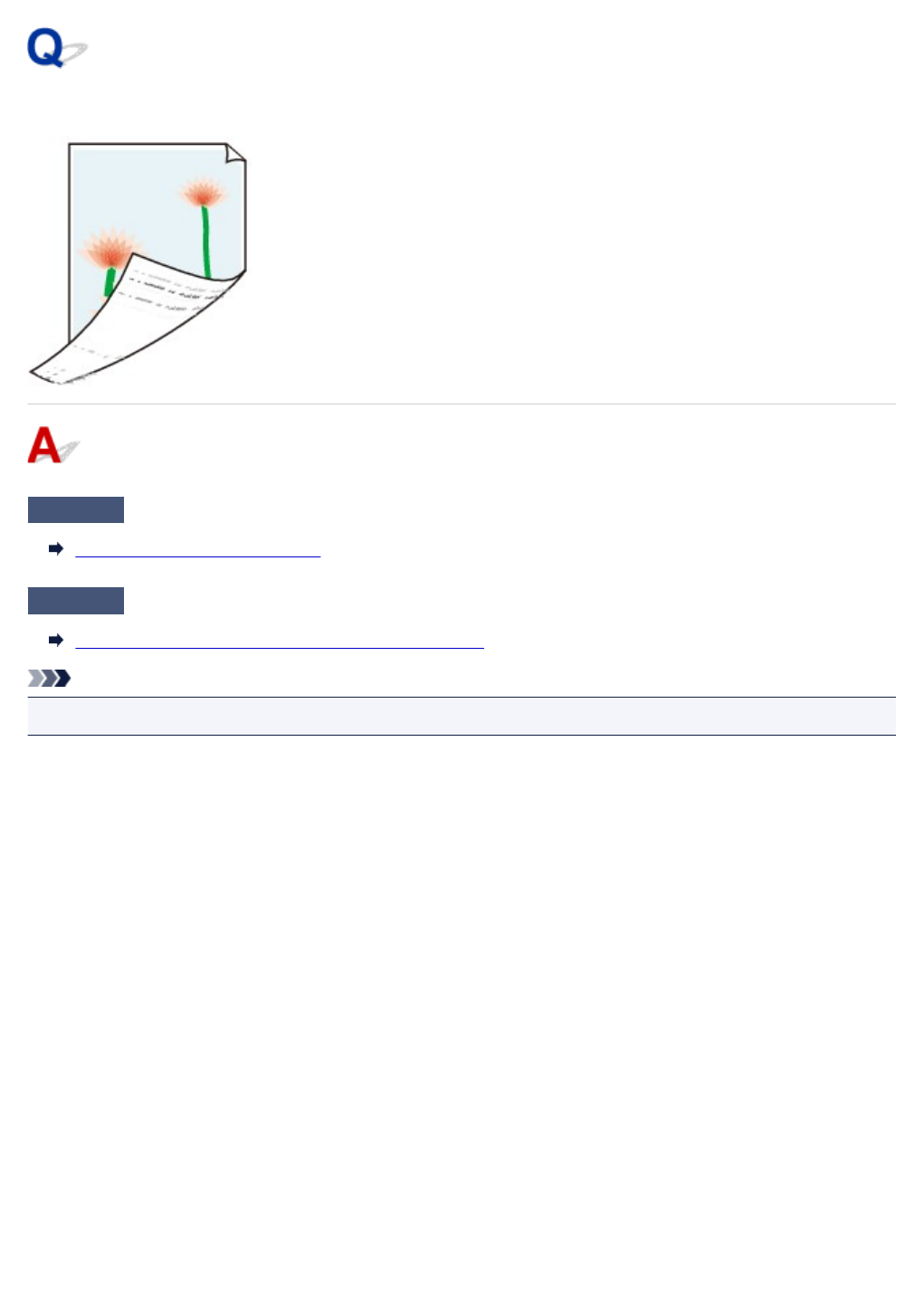
Back of Paper Is Smudged
Check1 Check paper and print quality settings.
Print Results Are Unsatisfactory
Check2 Perform bottom plate cleaning to clean inside of printer.
Cleaning Inside the Machine (Bottom Plate Cleaning)
Note
•During duplex printing or too much printing, ink may stain the inside of the printer.
1127
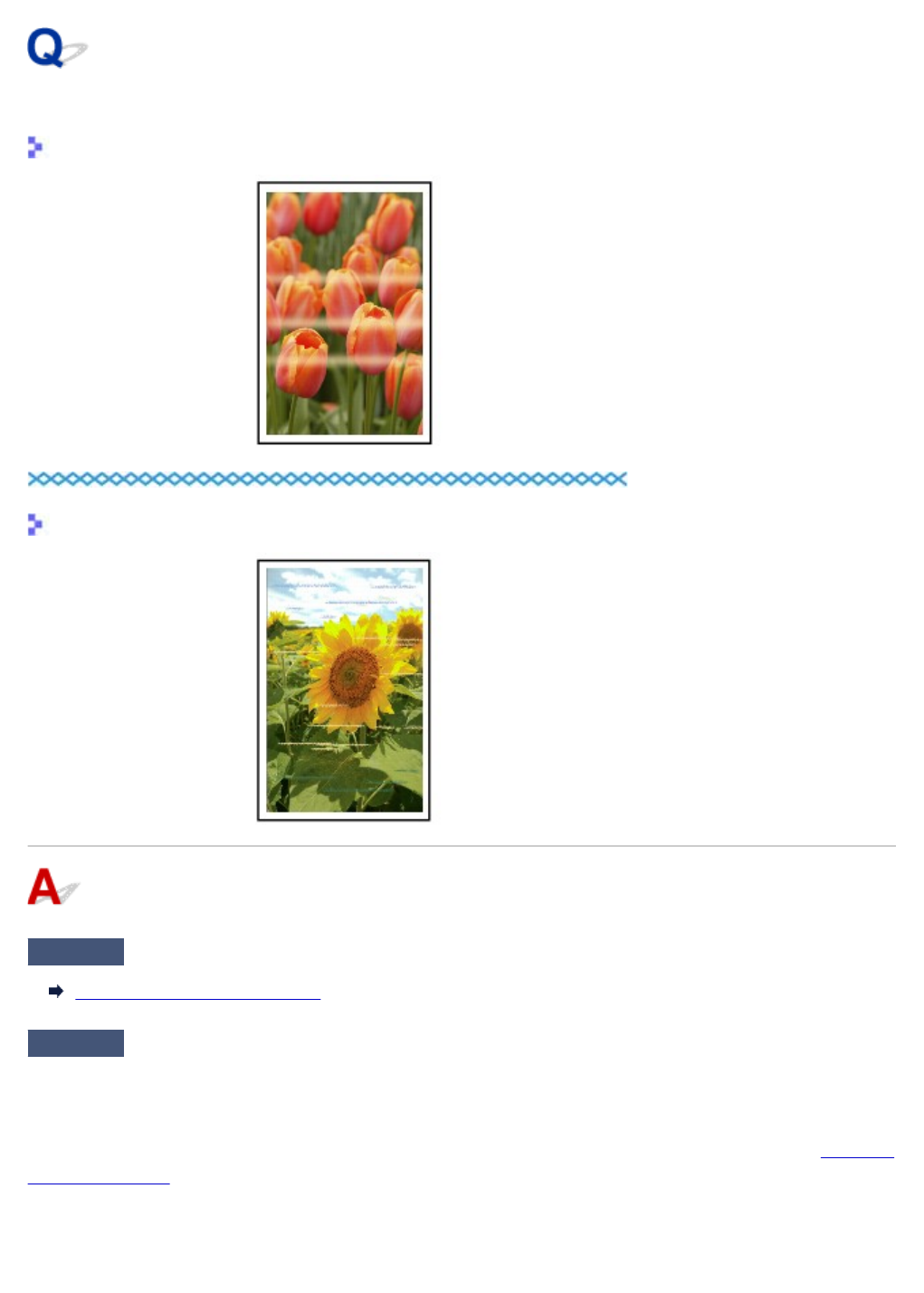
Uneven or Streaked Colors
Uneven Colors
Streaked Colors
Check1 Check paper and print quality settings.
Print Results Are Unsatisfactory
Check2 Print nozzle check pattern and perform any necessary maintenance operations
such as print head cleaning.
Print the nozzle check pattern to determine whether the ink ejects properly from the print head nozzles.
For details on printing the nozzle check pattern, print head cleaning, and print head deep cleaning, see If Printing
Is Faint or Uneven.
•If nozzle check pattern is not printed correctly:
Check if the ink tank for the problem color is empty.
1128
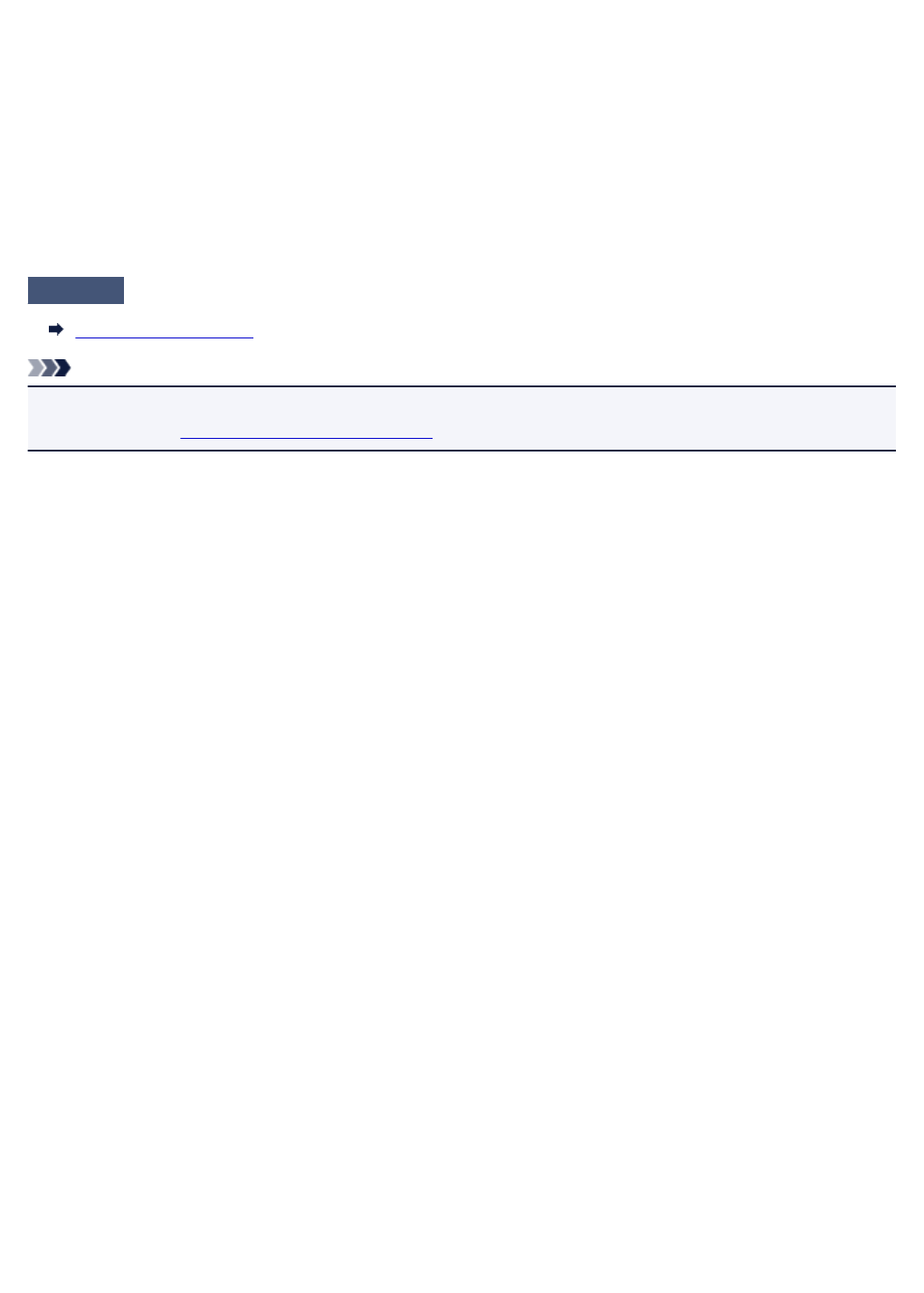
If the ink tank is not empty, perform print head cleaning and try printing the nozzle check pattern again.
• If problem is not resolved after performing print head cleaning twice:
Perform print head deep cleaning.
If the problem is not resolved after performing print head deep cleaning, turn off the printer and perform
print head deep cleaning again 24 hours later. When you turn the printer off, do not unplug it.
•If problem is not resolved after performing print head deep cleaning twice:
If print head deep cleaning does not resolve the problem, the print head may be damaged. Contact your
nearest Canon service center to request a repair.
Check3 Perform print head alignment.
Aligning the Print Head
Note
•If the problem is not resolved after performing the print head alignment, perform print head alignment
manually. See Aligning the Print Head Manually.
1129
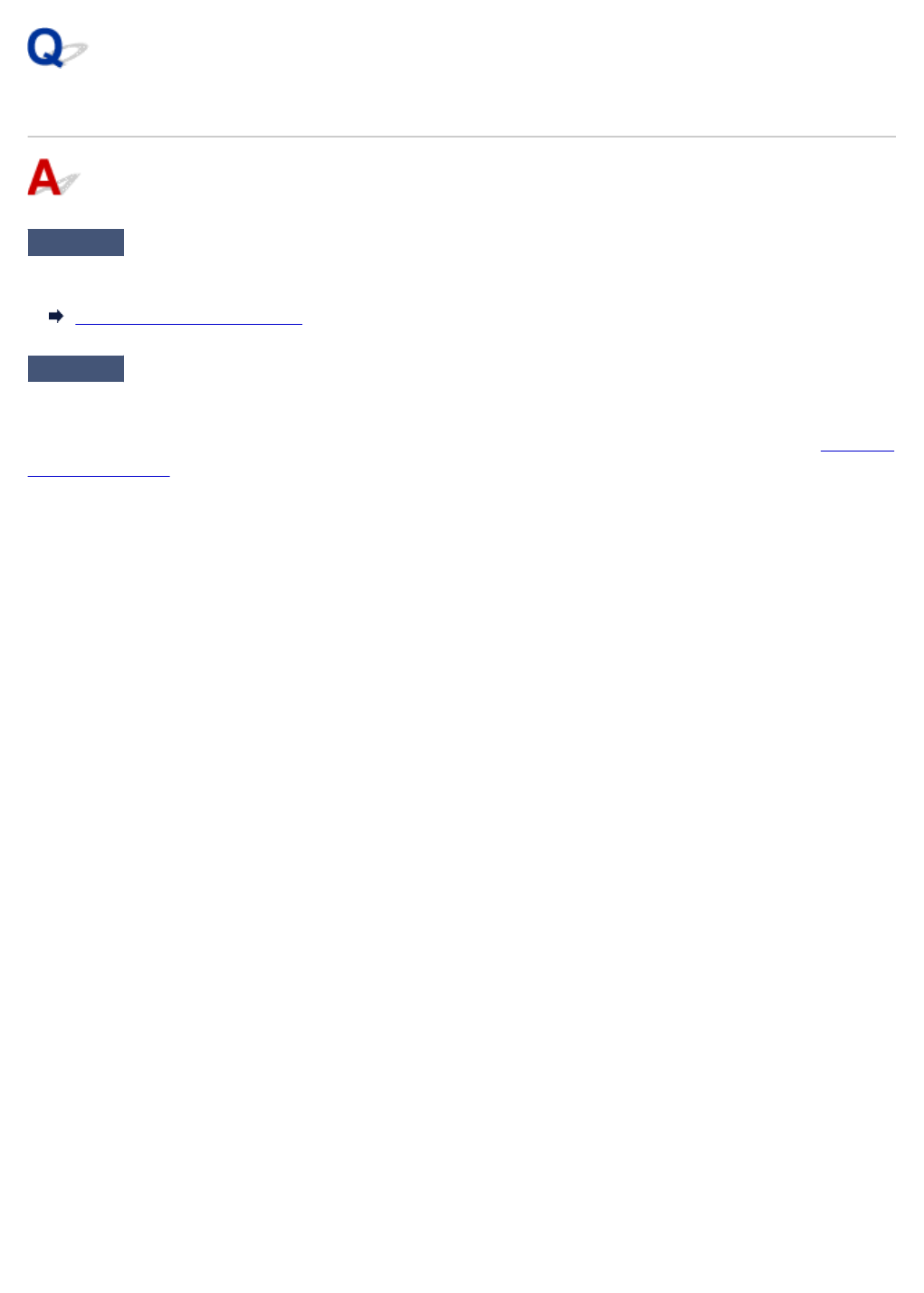
No Ink Comes Out
Check1 Has ink run out?
Check the support code on the touch screen and take the appropriate action to resolve the error.
List of Support Code for Error
Check2 Are print head nozzles clogged?
Print the nozzle check pattern to determine whether the ink ejects properly from the print head nozzles.
For details on printing the nozzle check pattern, print head cleaning, and print head deep cleaning, see If Printing
Is Faint or Uneven.
•If nozzle check pattern is not printed correctly:
Check if the ink tank for the problem color is empty.
If the ink tank is not empty, perform print head cleaning and try printing the nozzle check pattern again.
•If problem is not resolved after performing print head cleaning twice:
Perform print head deep cleaning.
If the problem is not resolved after performing print head deep cleaning, turn off the printer and perform
print head deep cleaning again 24 hours later. When you turn the printer off, do not unplug it.
•If problem is not resolved after performing print head deep cleaning twice:
If print head deep cleaning does not resolve the problem, the print head may be damaged. Contact your
nearest Canon service center to request a repair.
1130
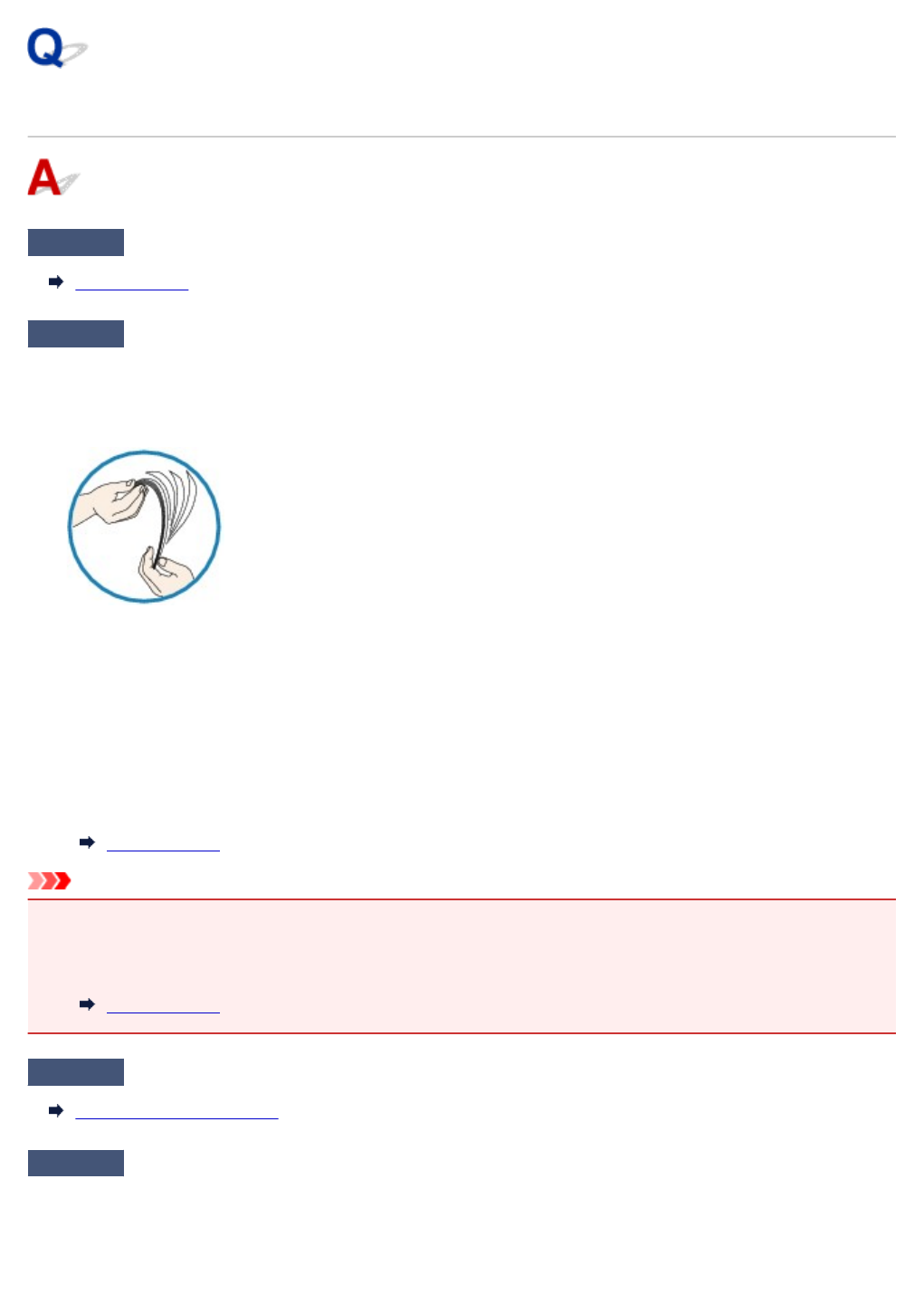
Paper Does Not Feed Properly/"No Paper" Error
Check1 Make sure paper is loaded.
Loading Paper
Check2 When loading paper, consider the following.
•When loading two or more sheets of paper, flip through the paper before loading it. In addition, when you
load paper with some paper remaining in the cassette, flip through the remaining paper and the newly
loaded paper before loading.
•When loading two or more sheets of paper, align the edges of the sheets before loading the paper.
•When loading two or more sheets of paper, make sure the paper stack does not exceed the paper load
limit.
However, paper may not feed correctly at the maximum capacity, depending on the type of paper or
environmental conditions (very high or low temperature and humidity). In such cases, reduce the amount of
paper you load at a time to less than half of the paper load limit.
•Always load the paper in portrait orientation, regardless of the printing orientation.
Loading Paper
Important
• When loading paper in the cassette, slide the paper guide on the front side to align with the corresponding
mark of page size. Load the paper with the print side facing DOWN, load the paper stack in the center of
the cassette and slide the paper guides to align with the both edges of the paper stack.
Loading Paper
Check3 Is paper too thick or curled?
Unsupported Media Types
Check4 When loading postcards or envelopes, consider the following:
• If a postcard is curled, it may not feed properly even though the paper stack does not exceed the paper load
limit.
Load Japanese postcards with their postcode column toward the far end of the cassette.
1131
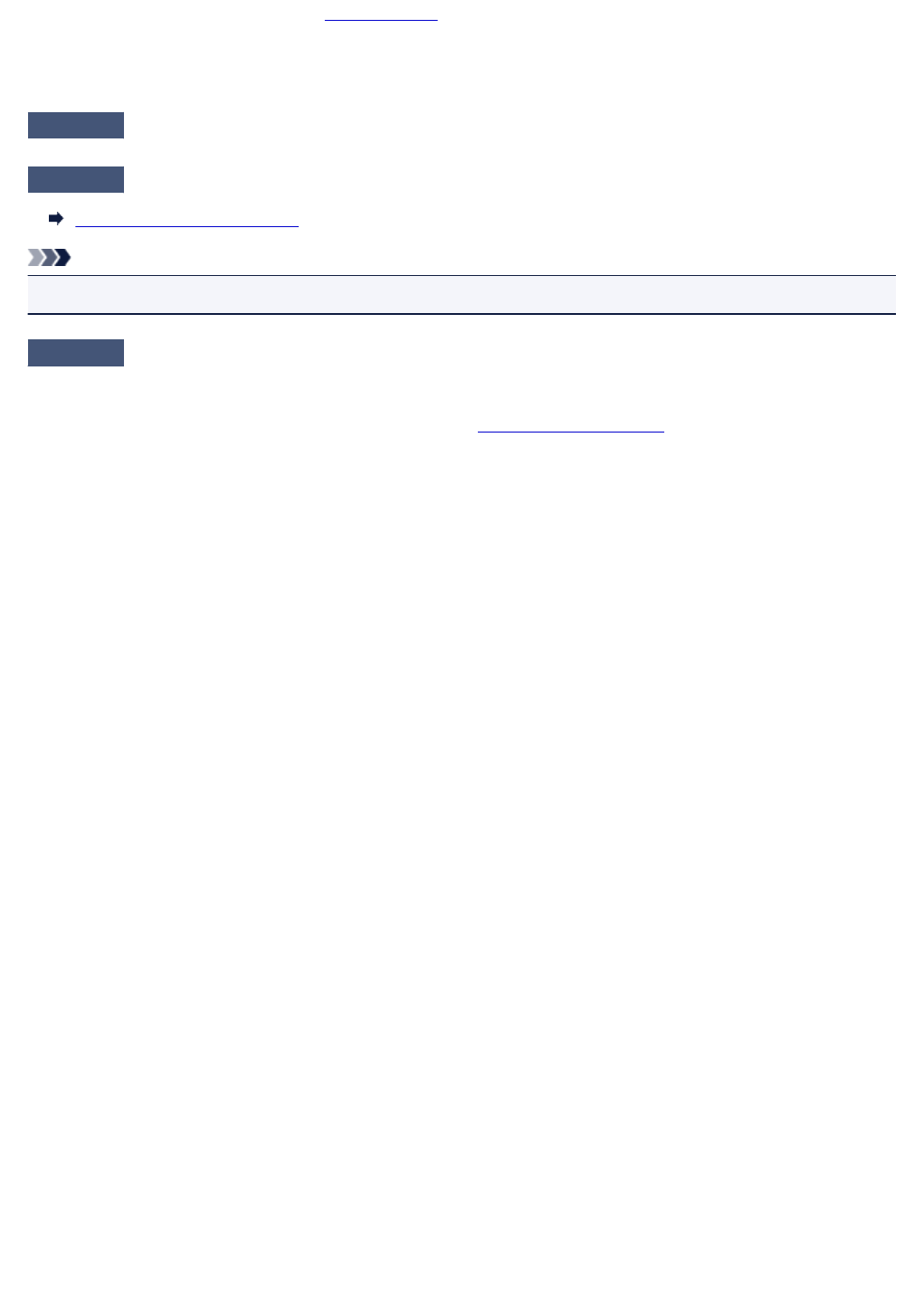
• When printing on envelopes, see Loading Paper, and prepare the envelopes before printing.
Once you have prepared the envelopes, load them in portrait orientation. If the envelopes are placed in
landscape orientation, they will not feed properly.
Check5 Make sure media type and paper size settings match with loaded paper.
Check6 Clean paper feed roller.
Cleaning Paper Feed Rollers
Note
• Cleaning the paper feed roller abrades it, so do this only when necessary.
Check7 If two or more sheets of paper feed from cassette at once, clean inside of
cassette.
For information on cleaning the inside of the cassette, see Cleaning Cassette Pads.
If the measures above do not solve the problem, contact your nearest Canon service center to request a
repair.
1132
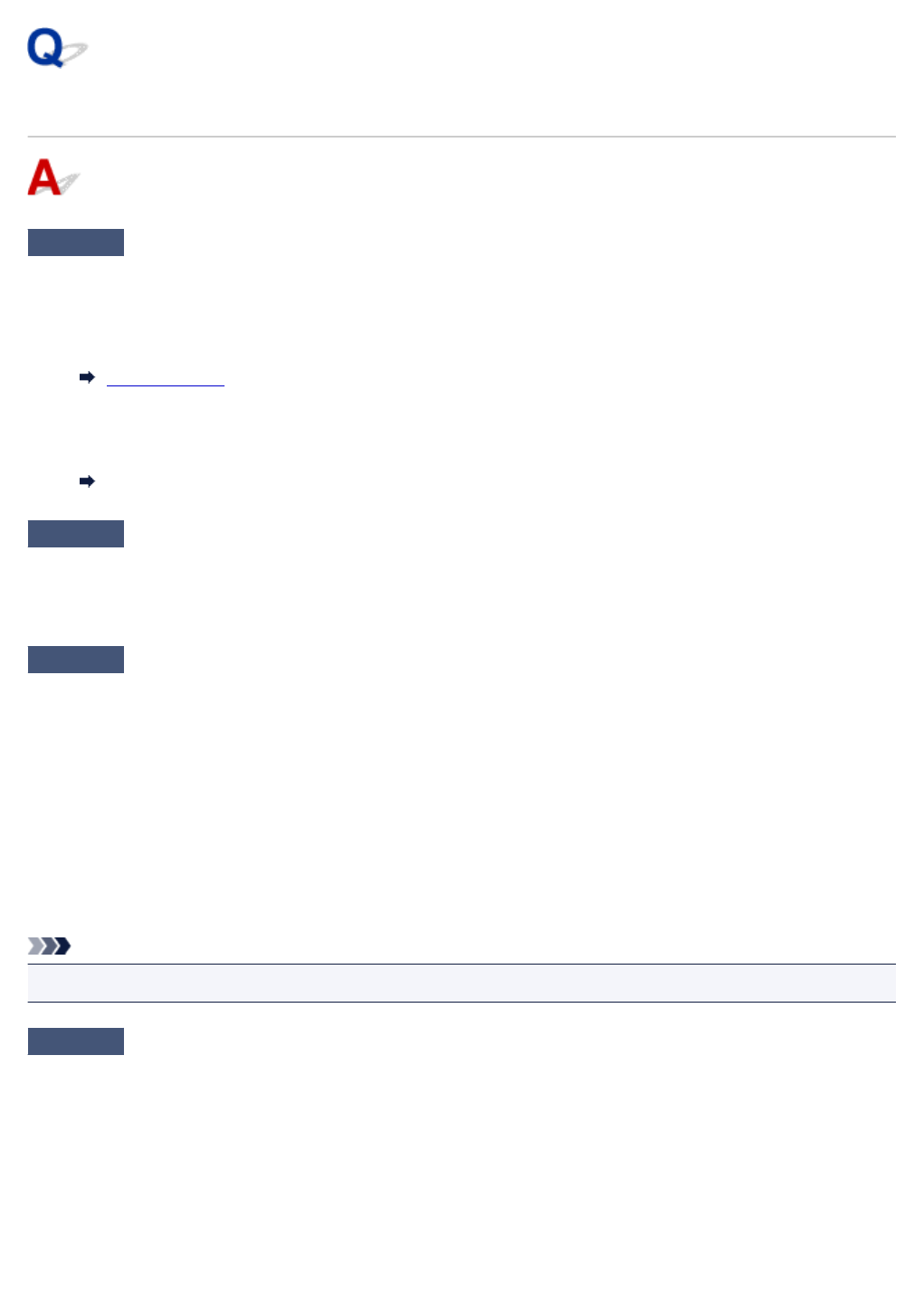
Automatic Duplex Printing Problems
Check1 Is automatic duplex printing selected?
• For Windows:
Make sure Duplex Printing and Automatic check boxes are selected on Page Setup sheet in the printer
driver setup window.
Duplex Printing
•For Mac OS:
Make sure Two-Sided check box is selected on the Print dialog.
Duplex Printing
Check2 Make sure loaded paper size is suitable for automatic duplex printing.
The paper sizes suitable for automatic two-sided printing are A4 and Letter.
Load paper of suitable size and tap OK on the touch screen.
Check3 Make sure paper size setting is correct.
Make sure the paper size setting is appropriate for automatic duplex printing.
Check the paper size setting in the application software.
Then, check the paper size setting in the printer driver.
•For Windows:
Check Page Size setting in Page Setup sheet in the printer driver setup window.
•For Mac OS:
Check Paper Size in the Page Setup dialog.
Note
• Duplex printing may not be available depending on the version of the application software.
Check4 Make sure media type setting is correct.
Make sure the media type setting is appropriate for automatic duplex printing.
• For Windows:
Make sure the loaded paper is suited to automatic duplex printing in Main sheet in the printer driver setup
window.
• For Mac OS:
Make sure the loaded paper is suited to automatic duplex printing in Quality & Media sheet in the Print
dialog.
1133
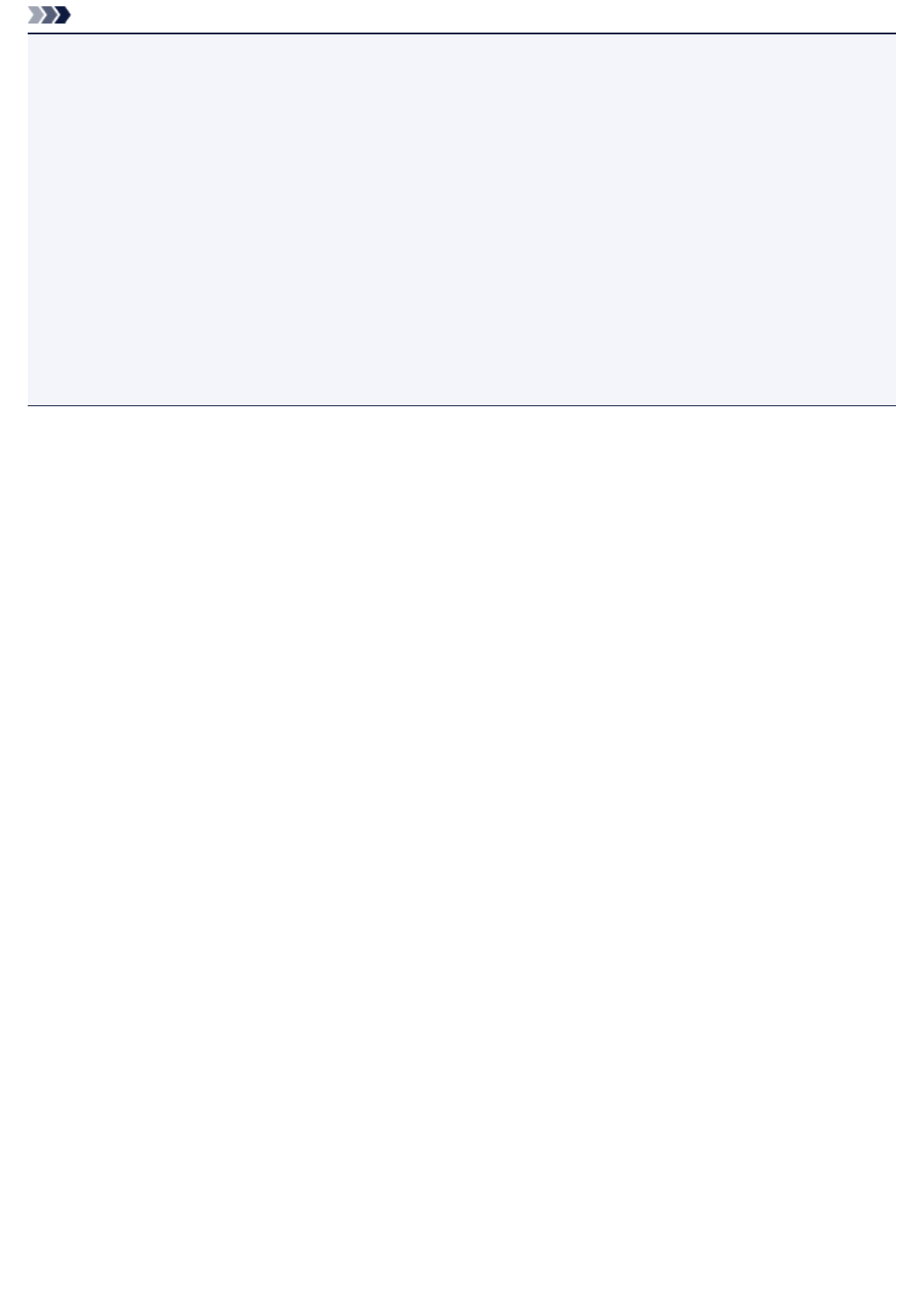
Note
• For Windows:
To switch to manual duplex printing, follow the procedure below.
Open the printer driver setup window, clear Automatic check box on Page Setup sheet, and reprint.
When performing manual duplex printing, note the following.
• If you are printing three or more pages of a document with manual duplex printing, one side of each
sheet is printed first. Turn over and reload the paper to print the reverse sides. Do not change the
order of the sheets.
• The procedure for turning the paper over varies depending on the staple side and printing
orientation. Follow the on-screen instructions.
• For Mac OS:
Manual duplex printing is not available.
1134
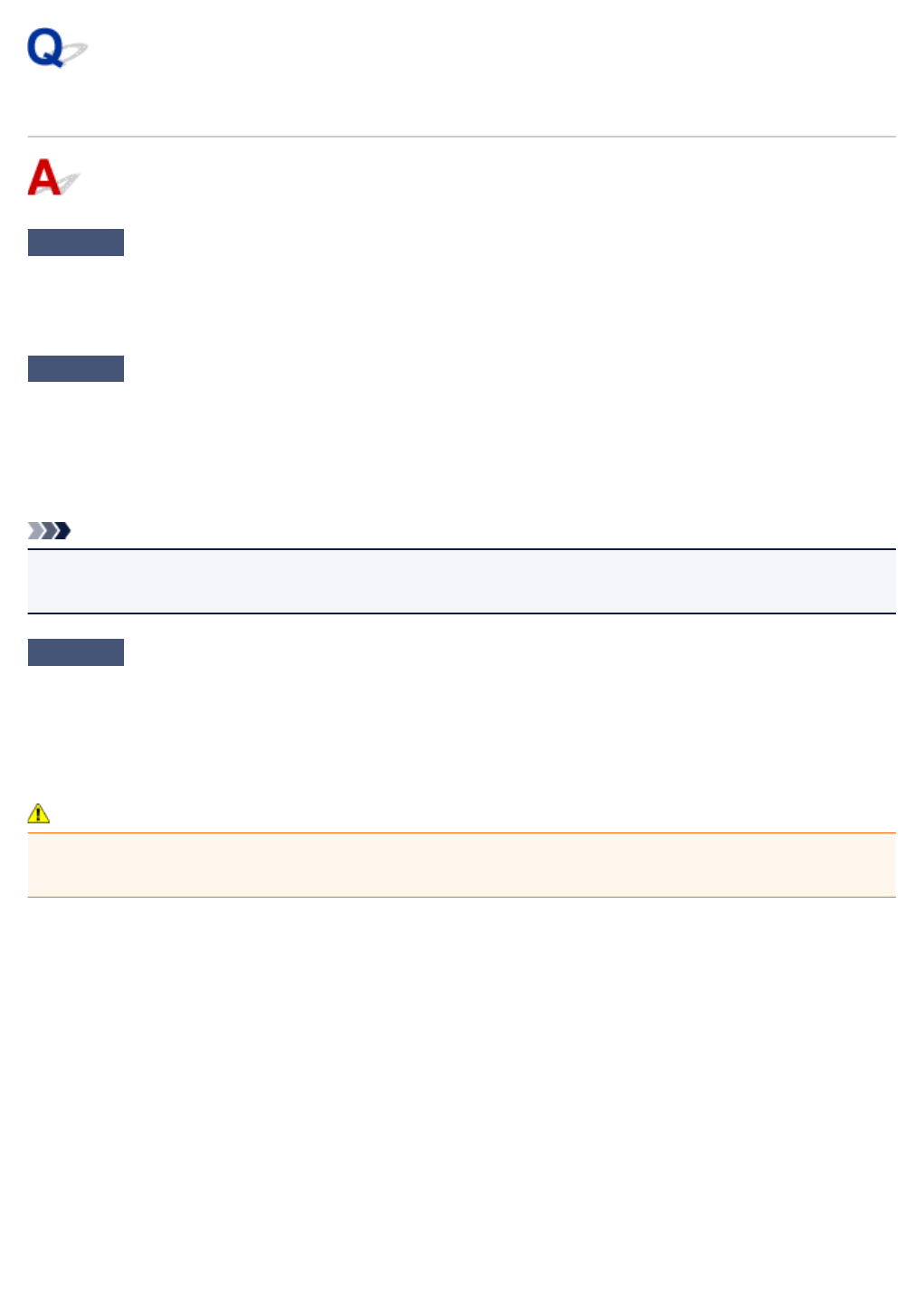
Copying/Printing Stops
Check1 Is paper loaded?
Make sure paper is loaded.
If necessary, load paper.
Check2 Do documents to be printed have many photographs or illustrations?
It takes time for the printer and the computer to process large data such as photos or other graphics, so it may
seem that the printer is not working.
Also, if you are printing data that requires a lot of ink on successive sheets of plain paper, the printer may pause
temporarily. In either case, wait until the process is complete.
Note
•If you are printing a document with a large printing area or printing several copies, printing may pause to
allow the ink to dry.
Check3 Has printer been printing continuously for a long period?
If the printer has been printing continuously for a long time, the print head or other parts around it may overheat.
The printer may stop printing at a line break for a period of time and then resume printing.
In this case, wait a while without doing anything. If the printing does not resume, interrupt your print session and
turn the printer off for at least 15 minutes.
Caution
•Print head and surrounding area can become extremely hot. Never touch print head or nearby
components.
1135
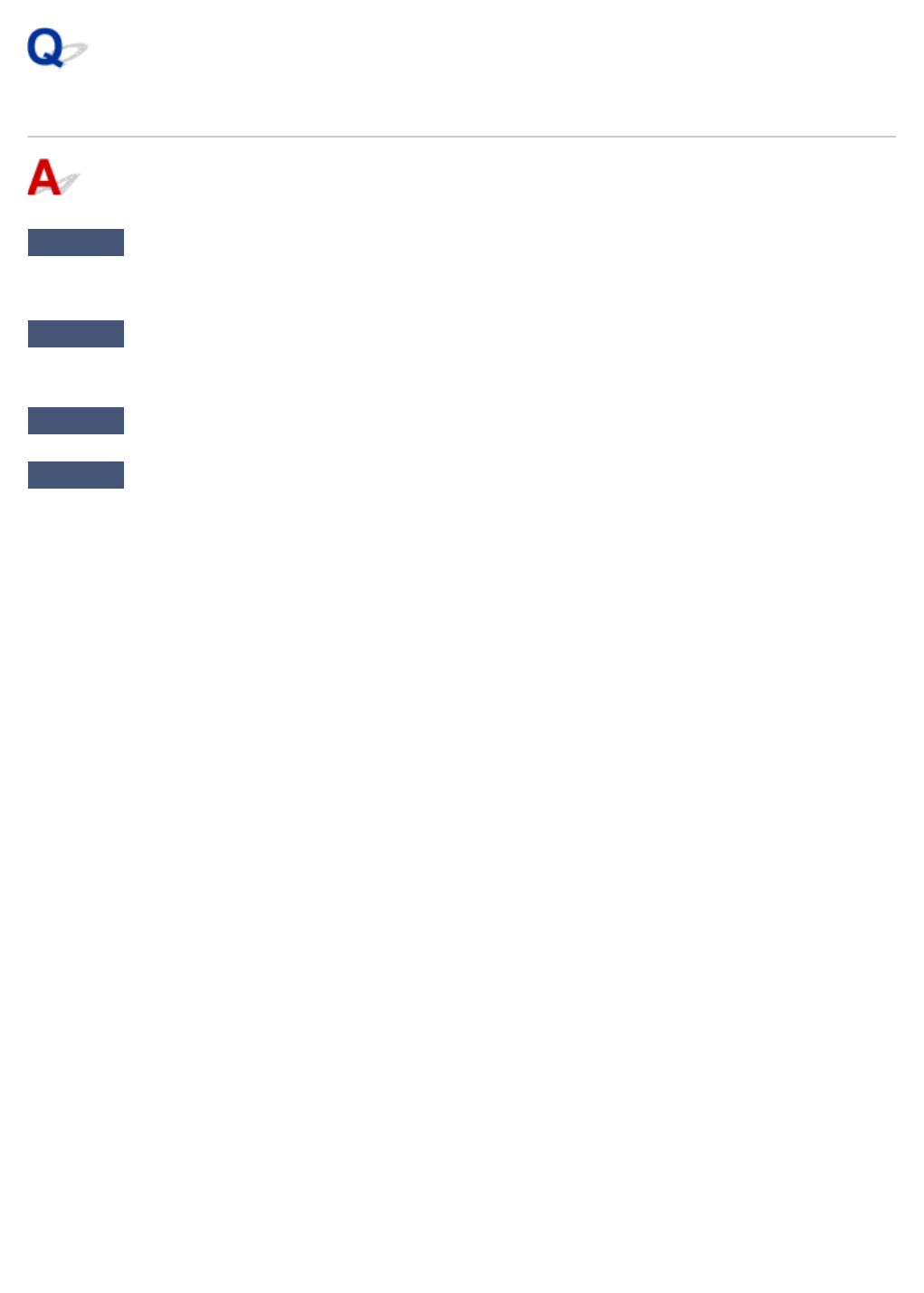
Cannot Print Using AirPrint
Check1 Make sure printer is turned on.
If the printer is turned on, turn it off and back on, and then check whether the issue is resolved.
Check2 Make sure printer is connected by LAN to same network subnet as AirPrint
compliant device when printing over LAN.
Check3 Make sure printer has enough paper and ink.
Check4 Make sure no error message is displayed on printer's touch screen.
If the problem is not resolved, use the printer driver on your computer to execute printing and check whether
the document can be printed normally on the printer.
1136
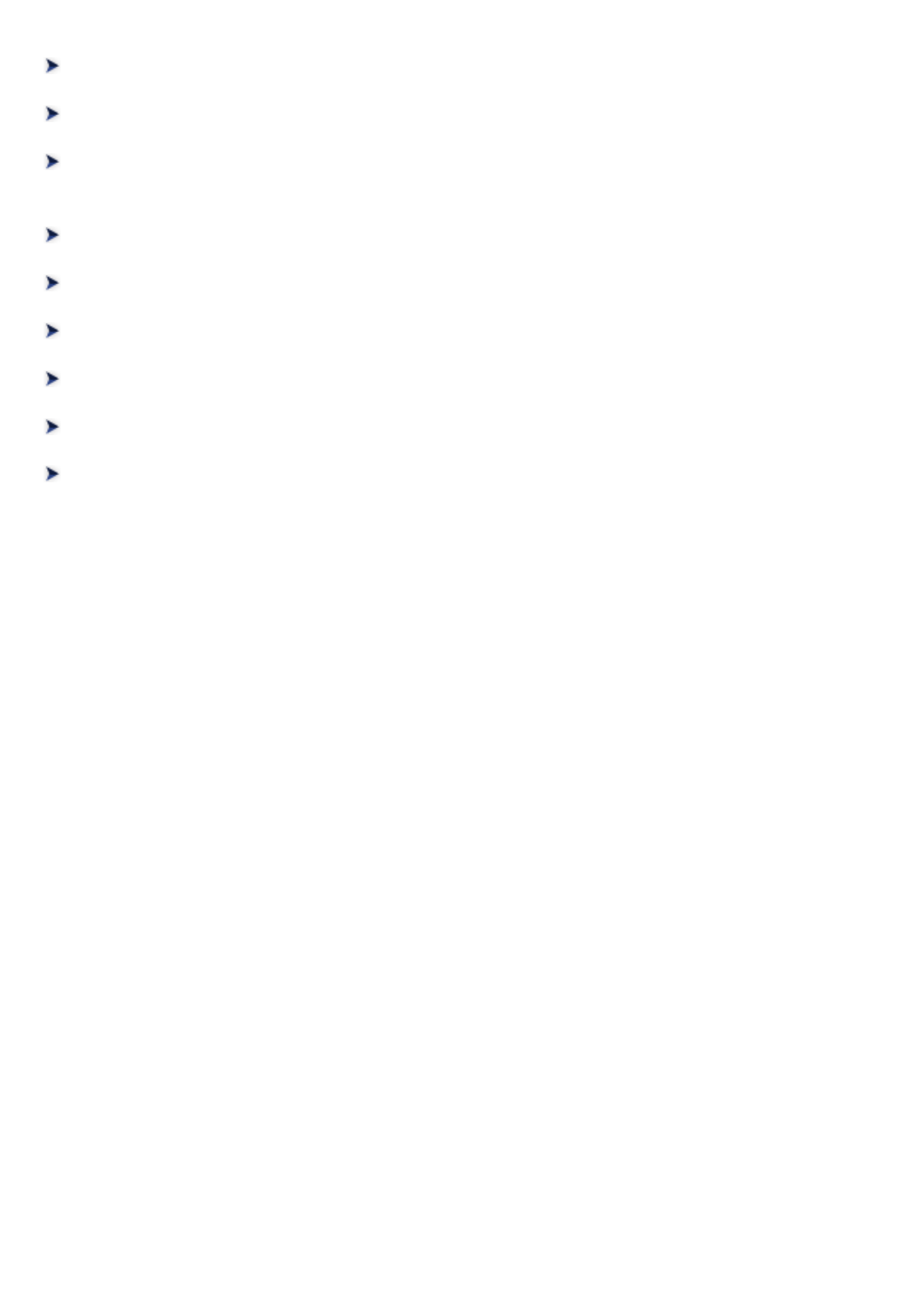
Scanning Problems
Scanner Does Not Work
ScanGear (Scanner Driver) Does Not Start
Error Message Appears and the ScanGear (Scanner Driver) Screen Does Not
Appear
Cannot Scan Multiple Originals at One Time
Slow Scanning Speed
"There is not enough memory." Message Is Displayed
Computer Stops Operating during Scanning
Scanner Does Not Work after Upgrading Windows
Scanned Image Does Not Open
1138
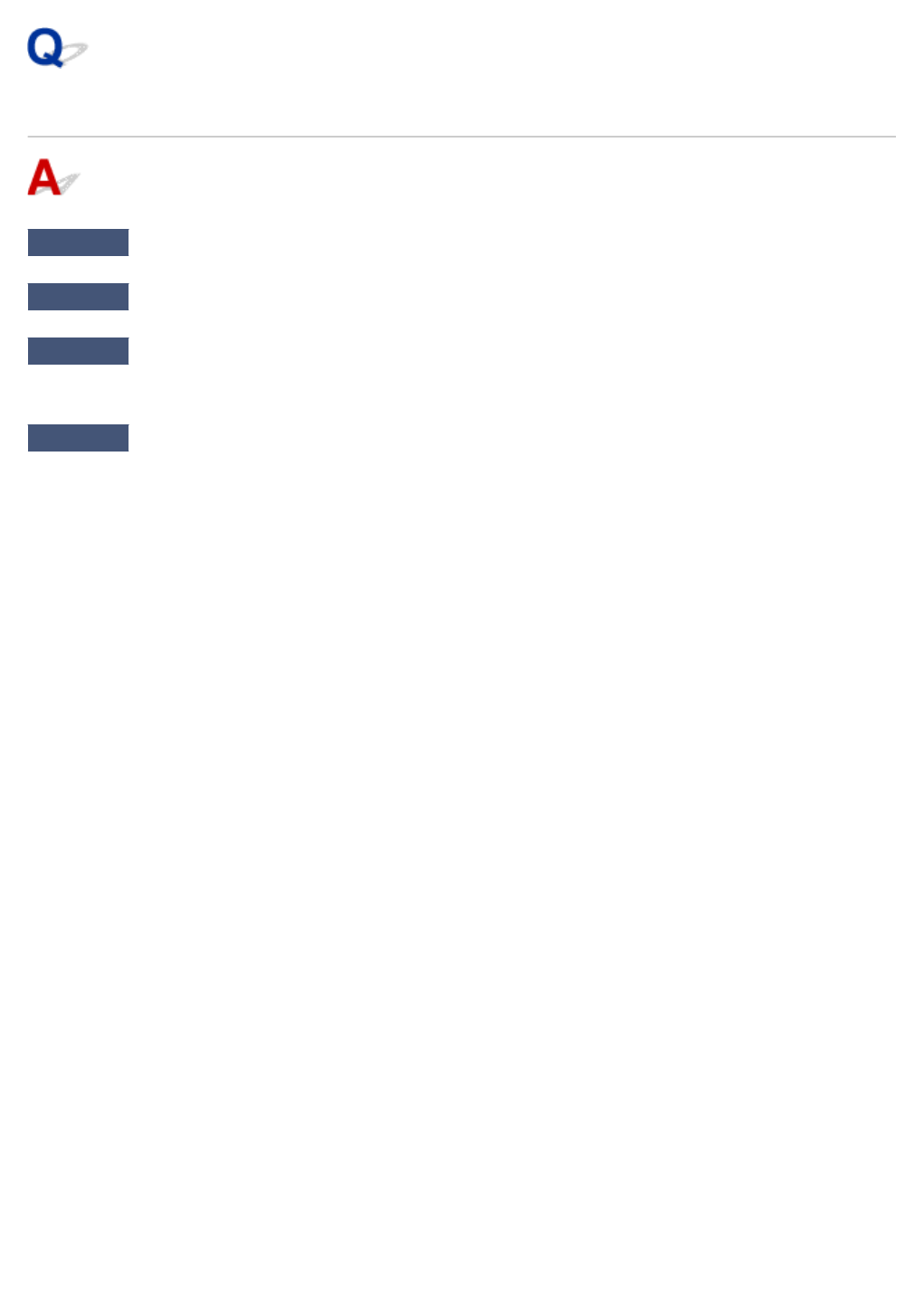
Scanner Does Not Work
Check 1 Make sure that your scanner or printer is turned on.
Check 2 Connect the USB cable to a different USB port on the computer.
Check 3 If the USB cable is connected to a USB hub, remove it from the USB hub and
connect it to a USB port on the computer.
Check 4 Restart the computer.
1139
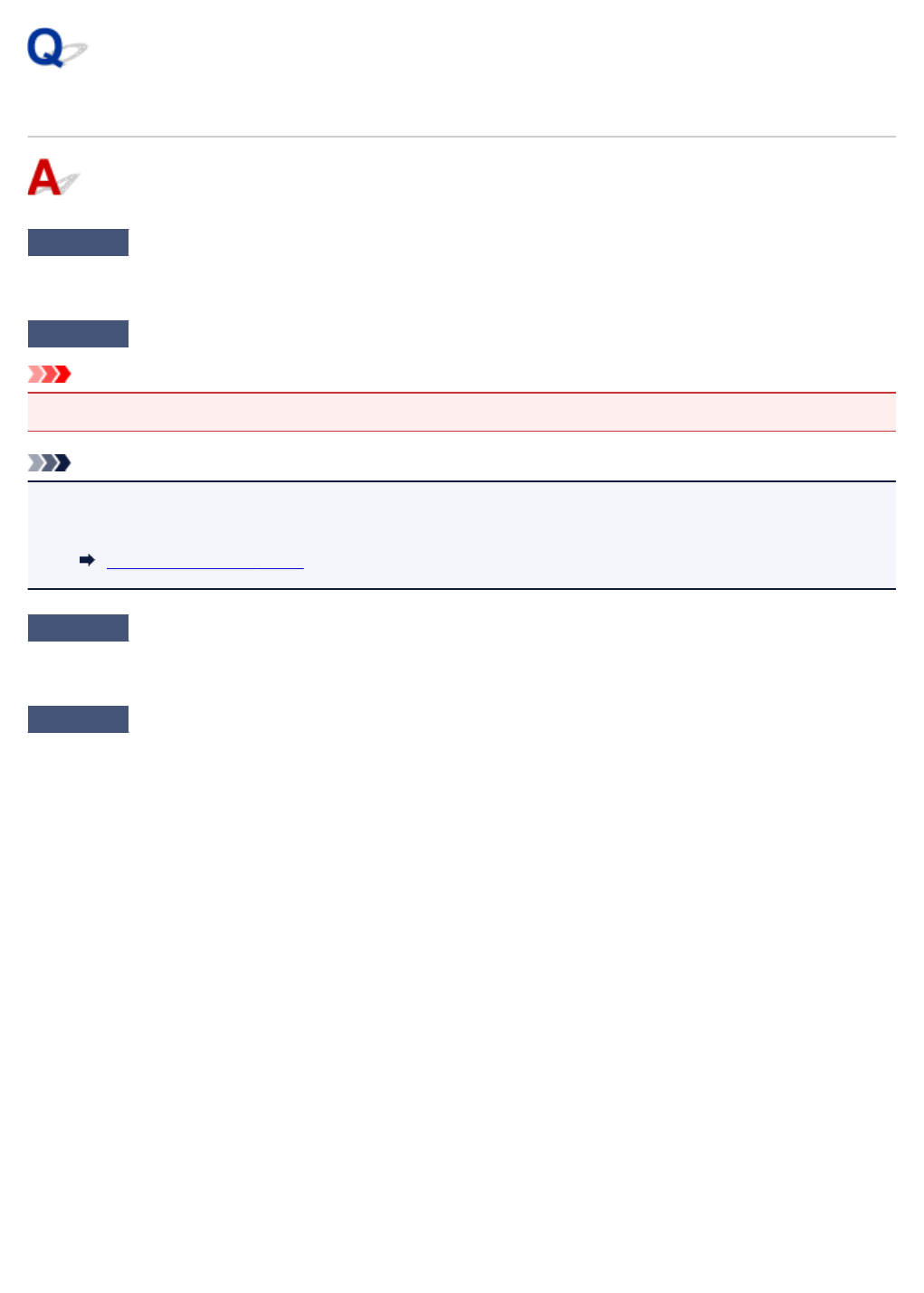
ScanGear (Scanner Driver) Does Not Start
Check 1 Make sure that MP Drivers is installed.
If not installed, install MP Drivers from the Setup CD-ROM or our website.
Check 2 Select your scanner or printer on the application's menu.
Important
•If your scanner or printer name is displayed multiple times, select the one that does not include WIA.
Note
•The operation may differ depending on the application.
•Use the WIA driver when scanning from a WIA-compliant application.
Scanning with WIA Driver
Check 3 Make sure that the application supports TWAIN.
You cannot start ScanGear (scanner driver) from applications not supporting TWAIN.
Check 4 Scan and save images with IJ Scan Utility and open the files in your
application.
1140
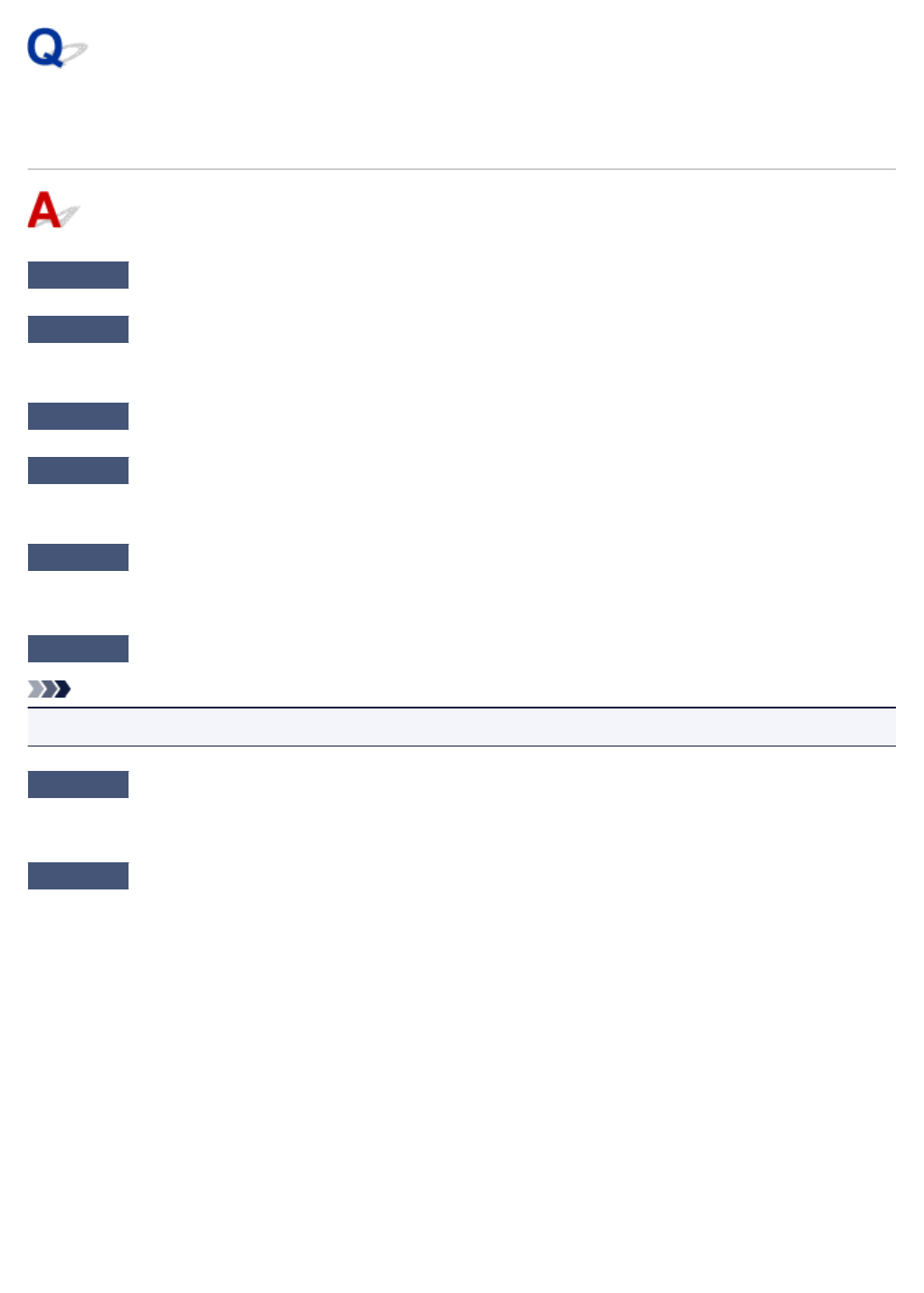
Error Message Appears and the ScanGear (Scanner Driver) Screen
Does Not Appear
Check 1 Make sure that your scanner or printer is turned on.
Check 2 Turn off your scanner or printer, then reconnect the USB cable and replug the
power cord.
Check 3 Connect the USB cable to a different USB port on the computer.
Check 4 If the USB cable is connected to a USB hub, remove it from the USB hub and
connect it to a USB port on the computer.
Check 5 Make sure that MP Drivers is installed.
If not installed, install MP Drivers from the Setup CD-ROM or our website.
Check 6 Select your scanner or printer on the application's menu.
Note
•The operation may differ depending on the application.
Check 7 Make sure that the application supports TWAIN.
You cannot start ScanGear (scanner driver) from applications not supporting TWAIN.
Check 8 Exit ScanGear if it is running on another application.
1141
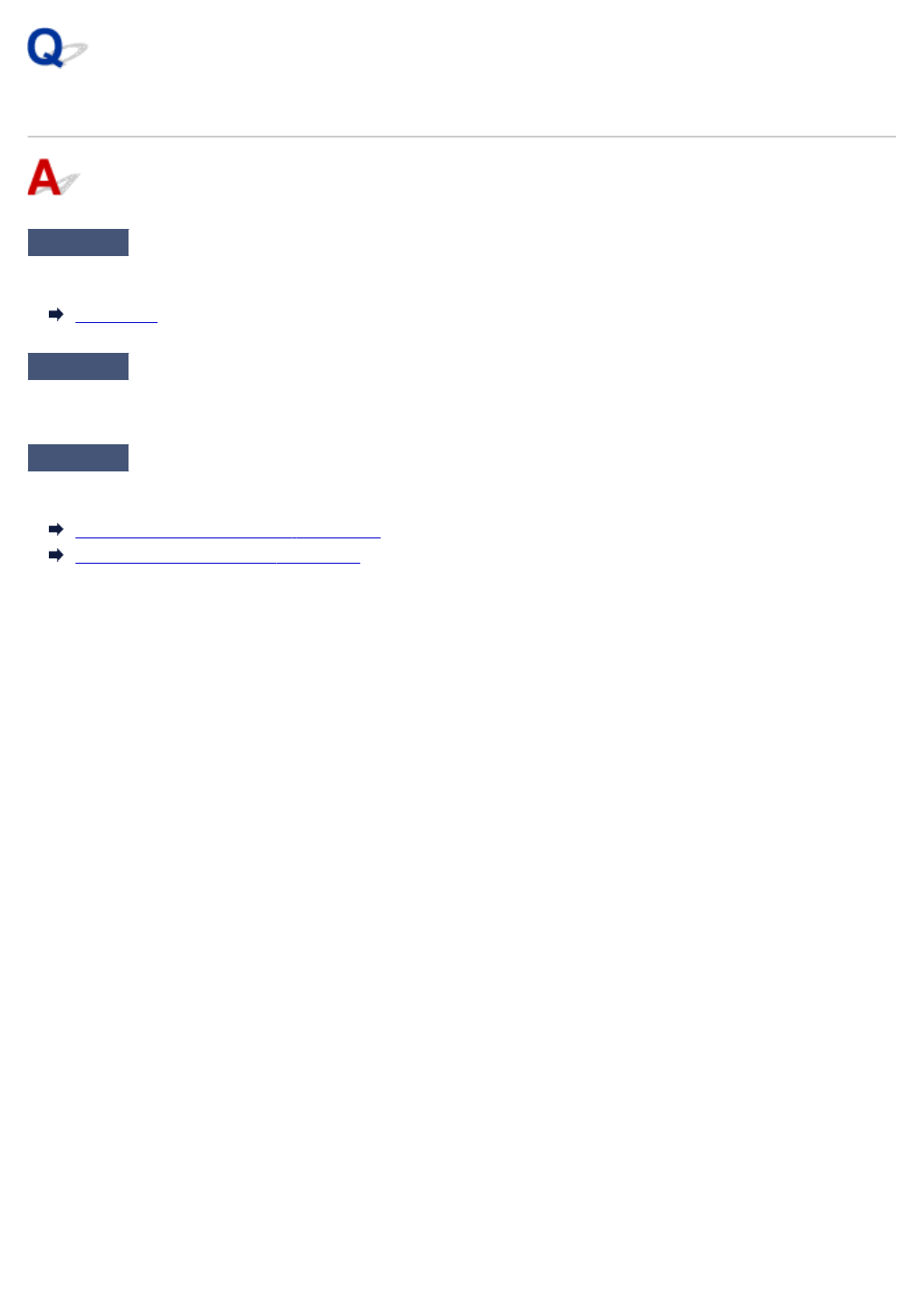
Slow Scanning Speed
Check 1 To view the image on a monitor, set the output resolution to around 150 dpi. To
print, set it to around 300 dpi.
Resolution
Check 2 Set Fading Correction, Grain Correction, etc. to None.
Refer to "Image Settings" for your model from Home of the Online Manual for details.
Check 3 In IJ Scan Utility, deselect the Correct slanted text document / Detect the
orientation of text document and rotate image checkbox and scan again.
Settings (Document Scan) Dialog Box
Settings (Custom Scan) Dialog Box
1143
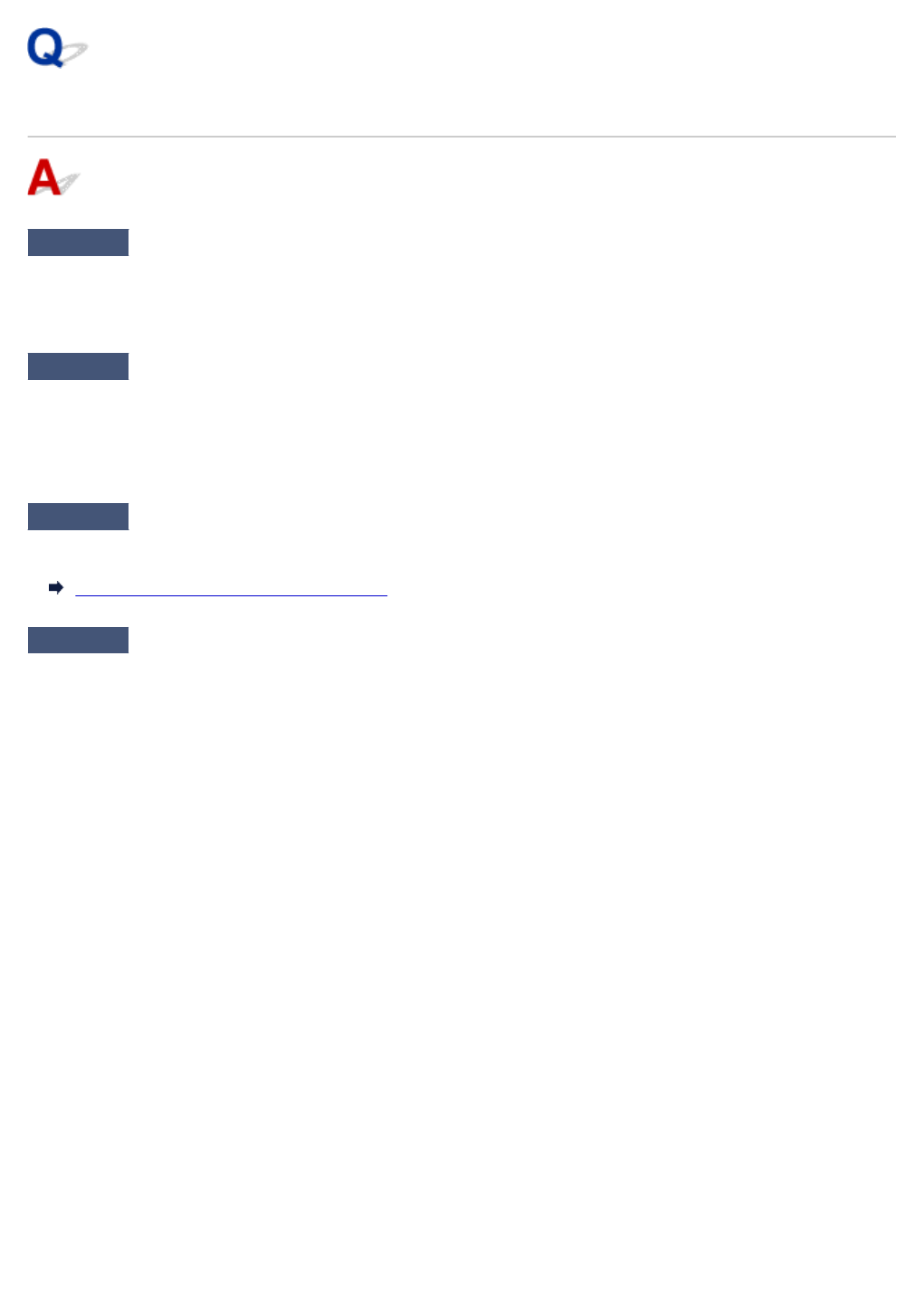
Computer Stops Operating during Scanning
Check 1 Restart the computer, reduce the output resolution in ScanGear (scanner
driver) and scan again.
Refer to "Output Settings" for your model from Home of the Online Manual for details.
Check 2 Delete unnecessary files to obtain sufficient free hard disk space, then scan
again.
Error message may appear if there is not enough hard disk space to scan and save, when the image size is too
large (such as when scanning a large item at high resolution).
Check 3 In Folder to Save Temporary Files of IJ Scan Utility, specify a folder on a
drive with sufficient free space.
Settings (General Settings) Dialog Box
Check 4 Multiple devices may be connected to USB ports.
Disconnect devices other than your scanner or printer.
1145
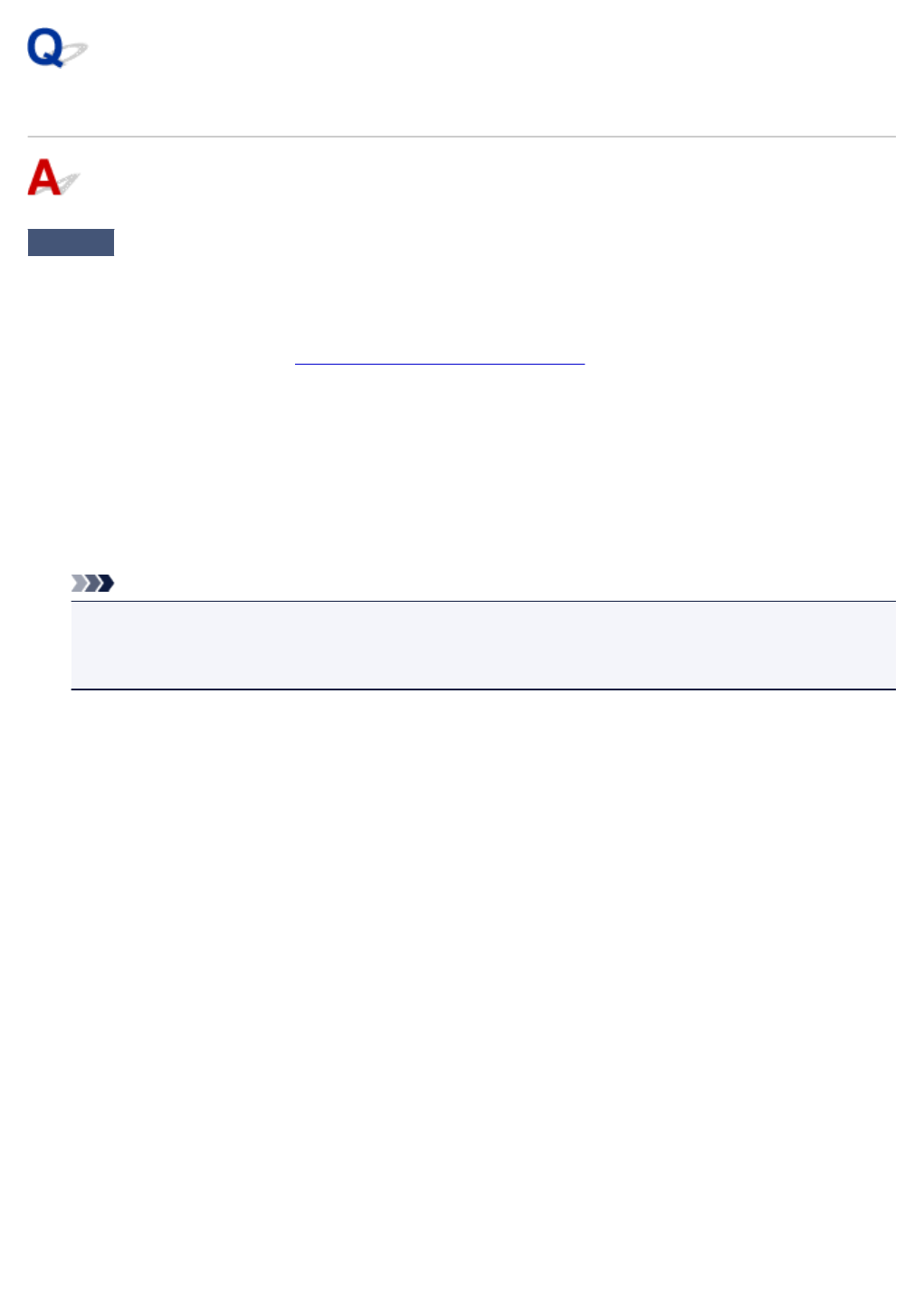
Scanner Does Not Work after Upgrading Windows
Check Disconnect the USB cable, then uninstall (delete) and reinstall MP Drivers and IJ
Scan Utility.
Step 1: Uninstall MP Drivers.
For how to delete MP Drivers, see Deleting the Unnecessary MP Drivers.
Step 2: Uninstall IJ Scan Utility.
1. Click Control Panel > Programs > Programs and Features.
2. Select Canon IJ Scan Utility and click Uninstall/Change.
3. When a confirmation appears, click Yes.
4. When uninstallation is complete, click OK.
IJ Scan Utility is deleted.
Note
•A confirmation or warning dialog box may appear when installing, uninstalling, or starting up software.
This dialog box appears when administrative rights are required to perform a task.
If you are logged on to an administrator account, follow the on-screen instructions.
Step 3: Reinstall MP Drivers and IJ Scan Utility.
Reinstall MP Drivers and IJ Scan Utility from the Setup CD-ROM or our website.
1146
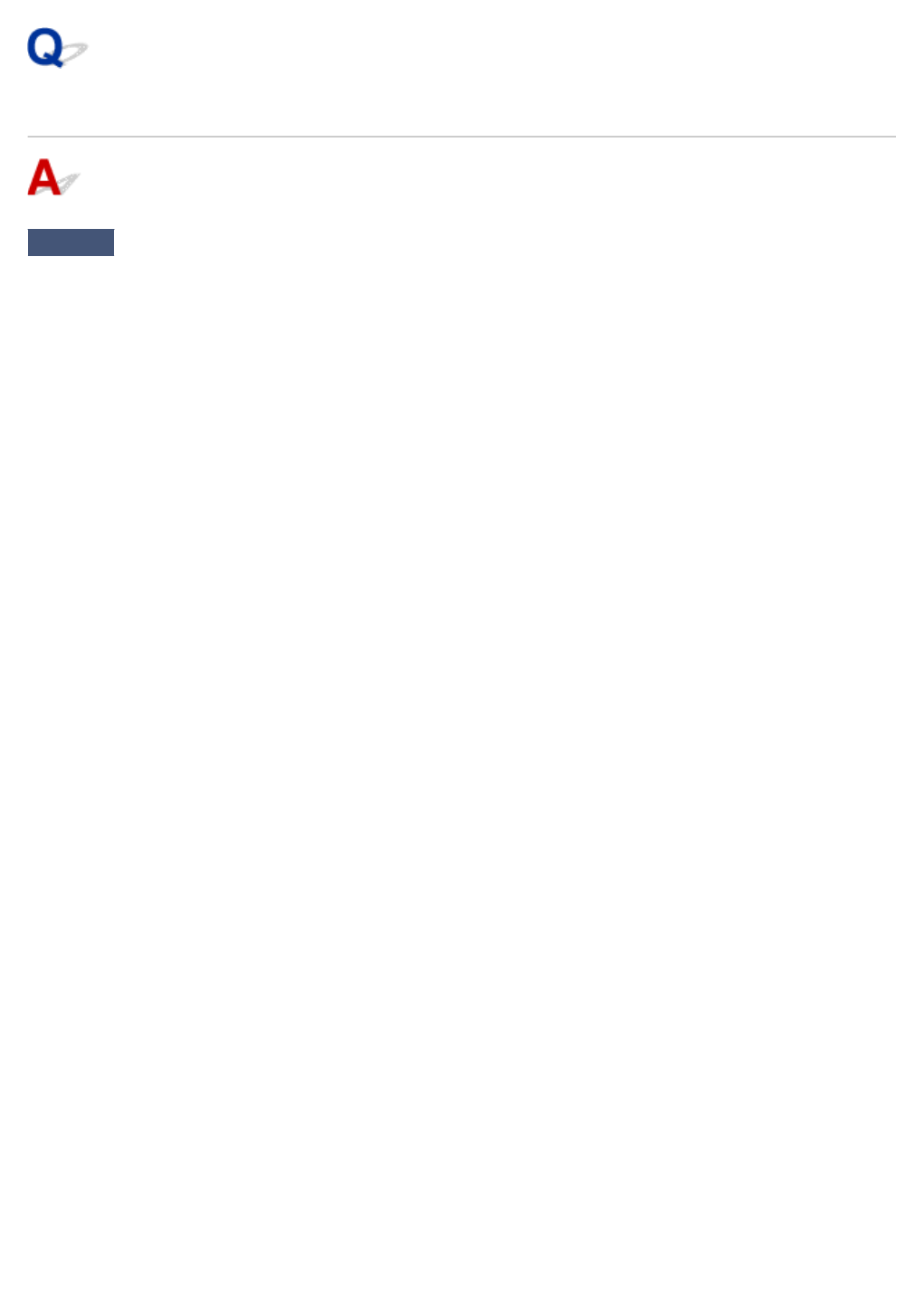
Scanned Image Does Not Open
Check If the data format is not supported by the application, scan the image again and
select a popular data format such as JPEG when saving it.
Refer to the application's manual for details. If you have any questions, contact the manufacturer of the
application.
1147
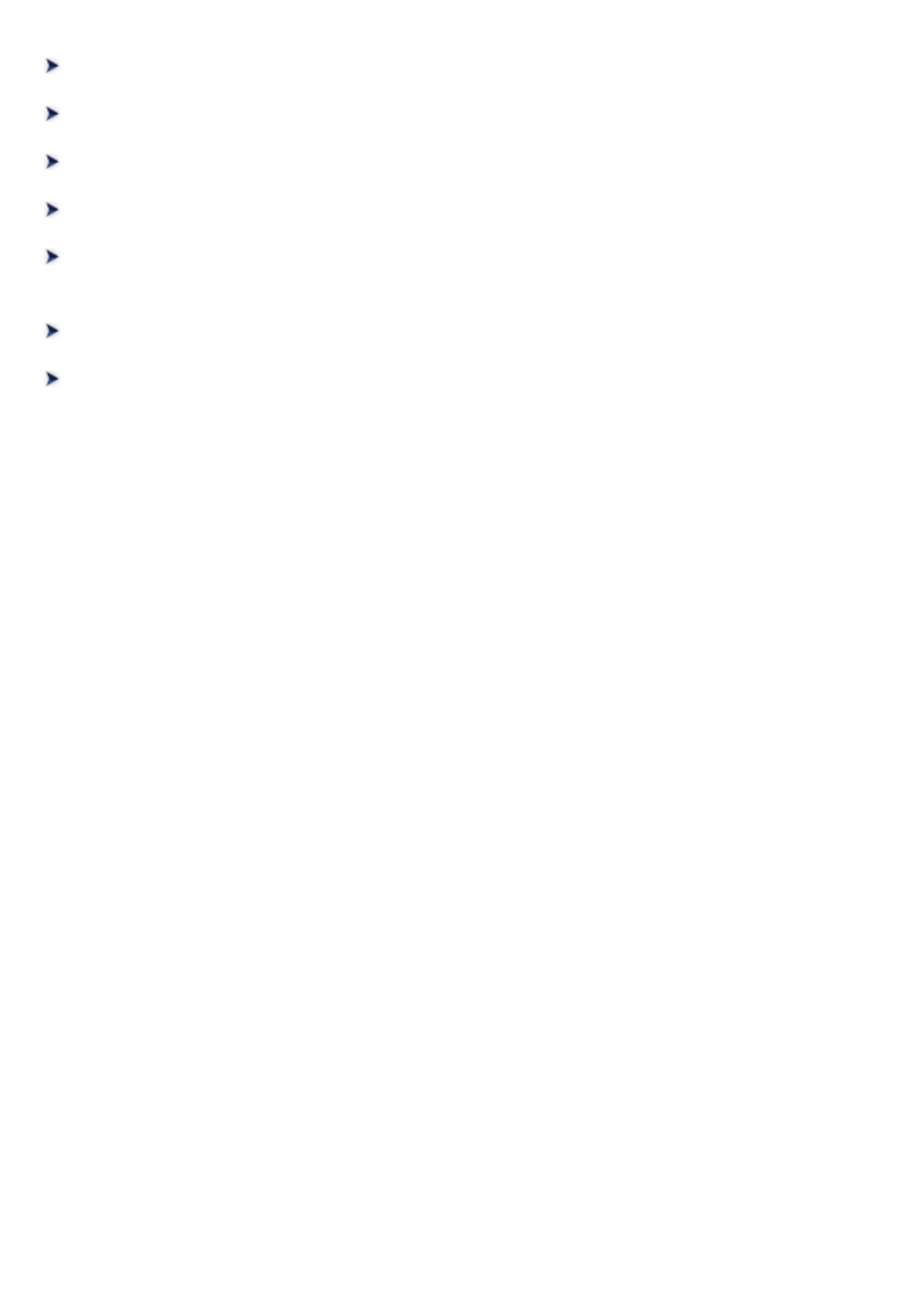
Scan Results Are Unsatisfactory
Moire Appears in Scan Results
Scan Quality (Image Displayed on the Monitor) Is Poor
Scanned Image Is Surrounded by Extra White Areas
Cannot Scan at the Correct Size
Position or Size of the Image Cannot be Detected Correctly When Scanning
from the Operation Panel
Original Is Placed Correctly, but the Scanned Image Is Slanted
Scanned Image Is Enlarged (Reduced) on the Computer Monitor
1148
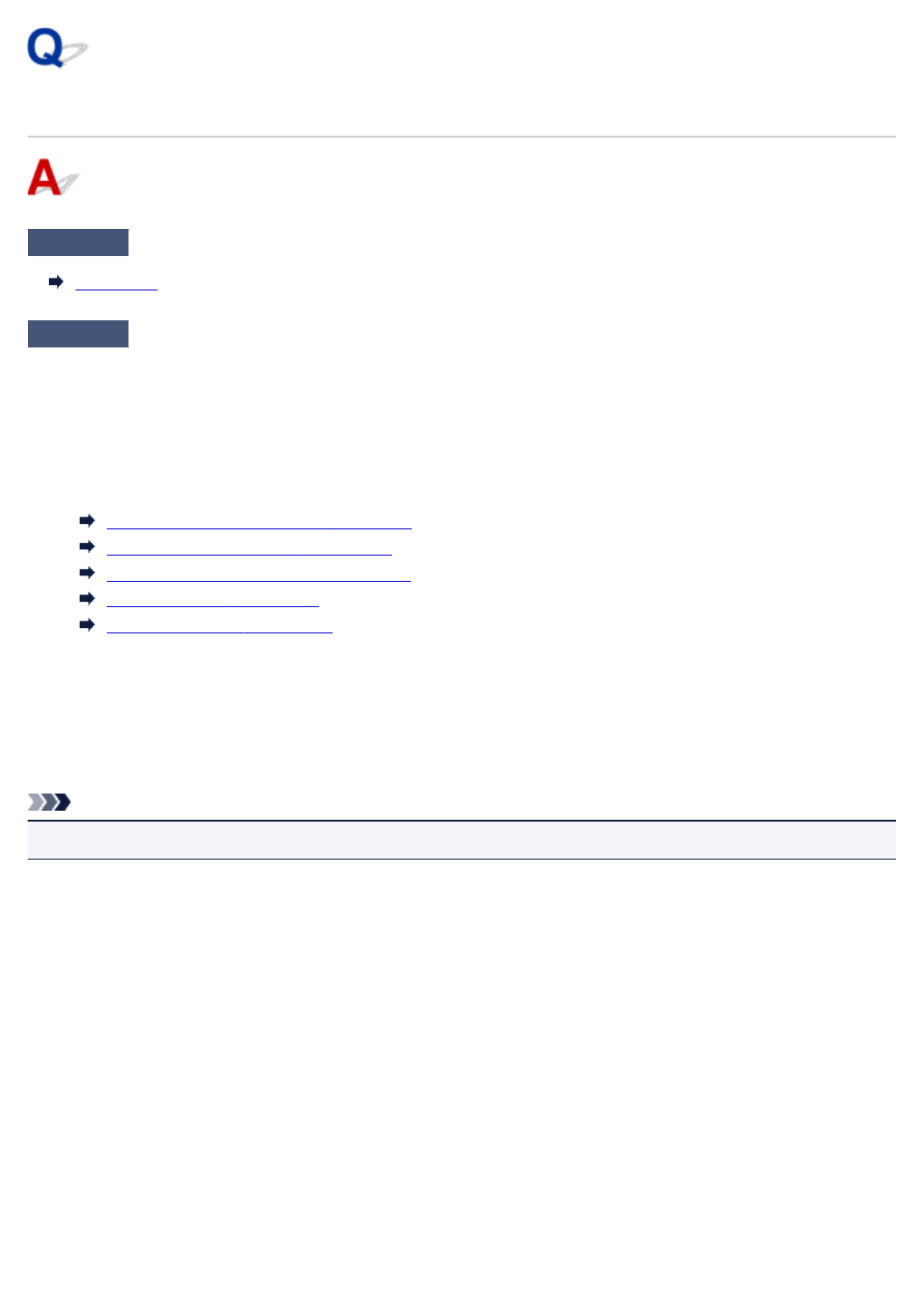
Moire Appears in Scan Results
Check 1 Increase the scanning resolution.
Resolution
Check 2 Take the following measures and scan again.
•Set one of the following settings in the Settings (Document Scan) dialog box, Settings (Custom Scan)
dialog box, Settings (Scan and Stitch) dialog box, Settings (OCR) dialog box or Settings (E-mail) dialog
box of IJ Scan Utility, then scan from the IJ Scan Utility main screen.
◦Set Select Source to Magazine and set Color Mode to Color
◦Select the Reduce moire checkbox in Image Processing Settings
Settings (Document Scan) Dialog Box
Settings (Custom Scan) Dialog Box
Settings (Scan and Stitch) Dialog Box
Settings (OCR) Dialog Box
Settings (E-mail) Dialog Box
•On the Basic Mode tab of ScanGear (scanner driver), select Magazine (Color) in Select Source.
Refer to "Basic Mode Tab" for your model from Home of the Online Manual for details.
•On the Advanced Mode tab of ScanGear, set Descreen in Image Settings to ON.
Refer to "Image Settings" for your model from Home of the Online Manual for details.
Note
•If moire appears when you scan a digital print photo, take the above measures and scan again.
1149
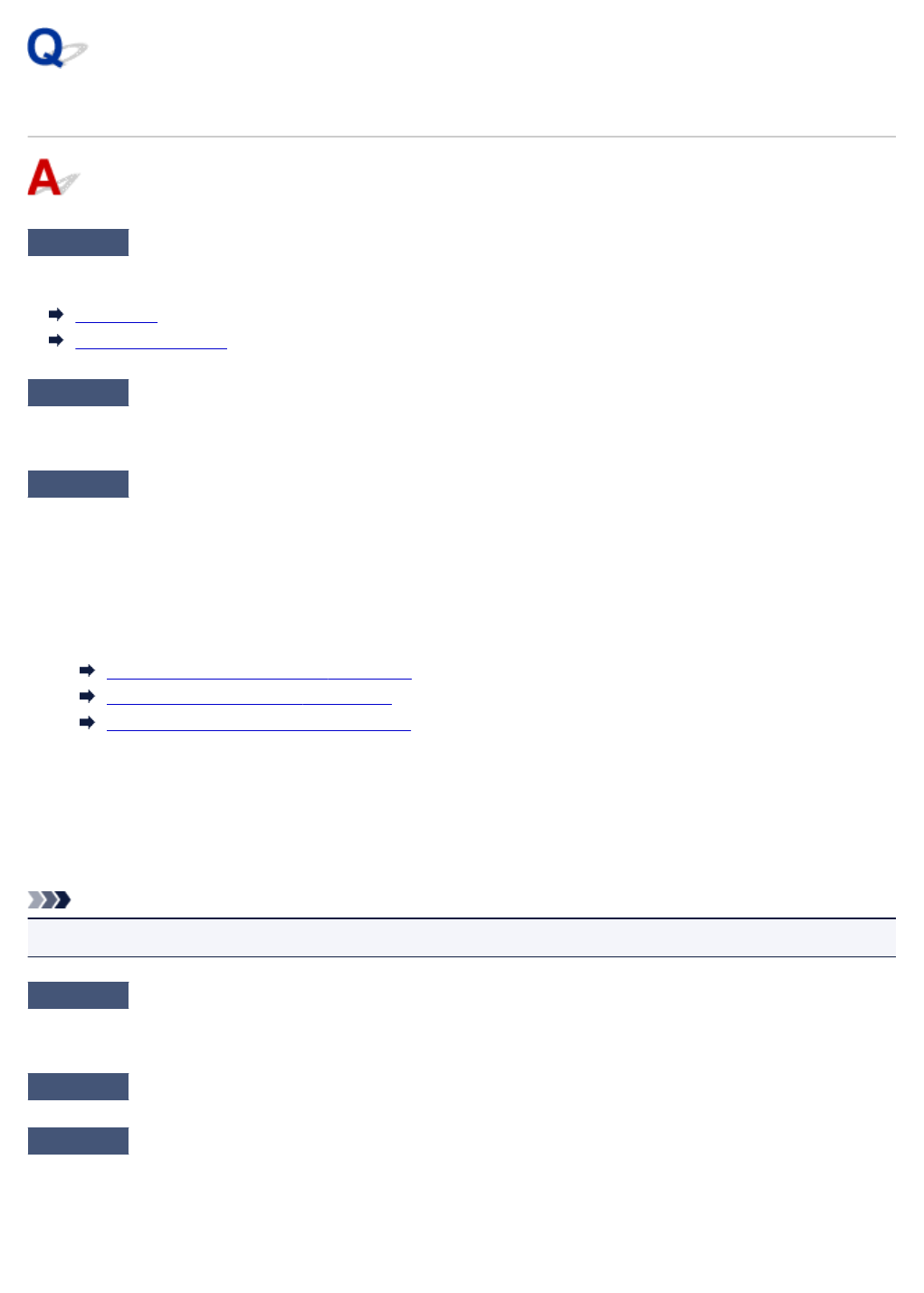
Scan Quality (Image Displayed on the Monitor) Is Poor
Check 1 If the image is jagged, increase the scanning resolution, or select TIFF or PNG
in Data Format of the Settings dialog box.
Resolution
Settings Dialog Box
Check 2 Set the display size to 100 %.
Some applications do not display images clearly if the display size is too small.
Check 3 If moire (stripe pattern) appears, take the following measures and scan again.
•Set one of the following settings in the Settings (Document Scan) dialog box, Settings (Custom Scan)
dialog box, or Settings (Scan and Stitch) dialog box of IJ Scan Utility, then scan from the IJ Scan Utility
main screen.
◦Set Select Source to Magazine and set Color Mode to Color
◦Select the Reduce moire checkbox in Image Processing Settings
Settings (Document Scan) Dialog Box
Settings (Custom Scan) Dialog Box
Settings (Scan and Stitch) Dialog Box
•On the Basic Mode tab of ScanGear (scanner driver), select Magazine (Color) in Select Source.
Refer to "Basic Mode Tab" for your model from Home of the Online Manual for details.
•On the Advanced Mode tab of ScanGear, set Descreen in Image Settings to ON.
Refer to "Image Settings" for your model from Home of the Online Manual for details.
Note
•If moire appears when you scan a digital print photo, take the above measures and scan again.
Check 4 Check the monitor's color depth.
Refer to Help of Windows or the monitor's manual for details on how to check the monitor's color depth.
Check 5 Clean the platen and document cover.
Check 6 If the document is in poor condition (dirty, faded, etc.), then set Reduce Dust
and Scratches, Fading Correction, Grain Correction, etc. in Image Settings on the
Advanced Mode tab of ScanGear.
Refer to "Image Settings" for your model from Home of the Online Manual for details.
1150

Check 7 If the color tone of images is different from the original document, take the
following measures and scan again.
• On the Advanced Mode tab of ScanGear, set Image Adjustment in Image Settings to None.
Refer to "Image Settings" for your model from Home of the Online Manual for details.
• On the Color Settings tab in the Preferences dialog box of ScanGear, set Color Matching.
Refer to "Color Settings Tab" for your model from Home of the Online Manual for details.
1151
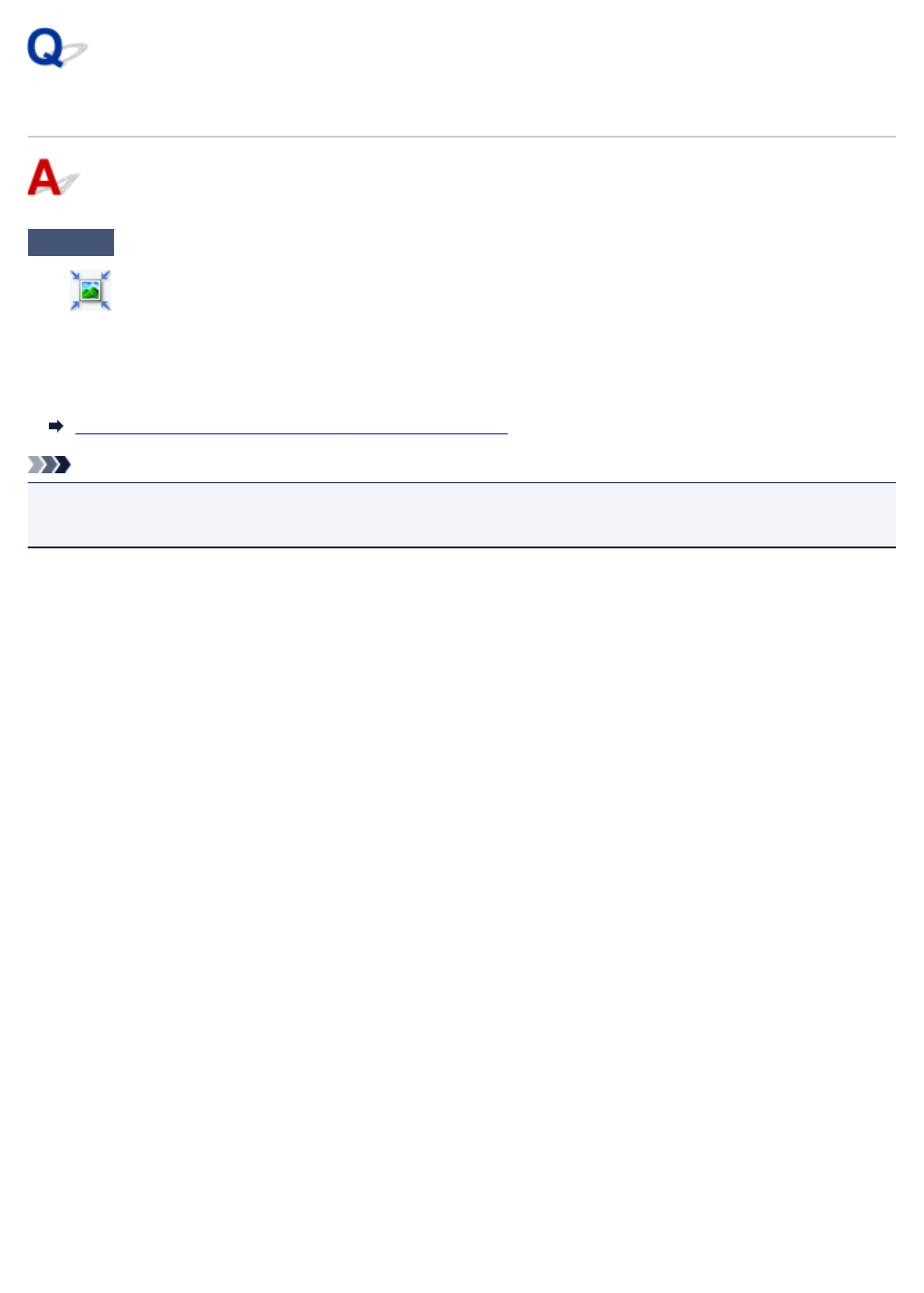
Scanned Image Is Surrounded by Extra White Areas
Check Specify the scan area.
Click (Auto Crop) in whole image view of ScanGear (scanner driver) to automatically display the cropping
frame (scan area) according to the item size.
You can also manually specify the scan area in thumbnail view or when there are white margins along the item
(for example, in photos), or when you want to create custom cropping frames.
Adjusting Cropping Frames in the Image Stitch Window
Note
•Refer to "Adjusting Cropping Frames (ScanGear)" for your model from Home of the Online Manual for how
to adjust cropping frames with ScanGear (scanner driver).
1152
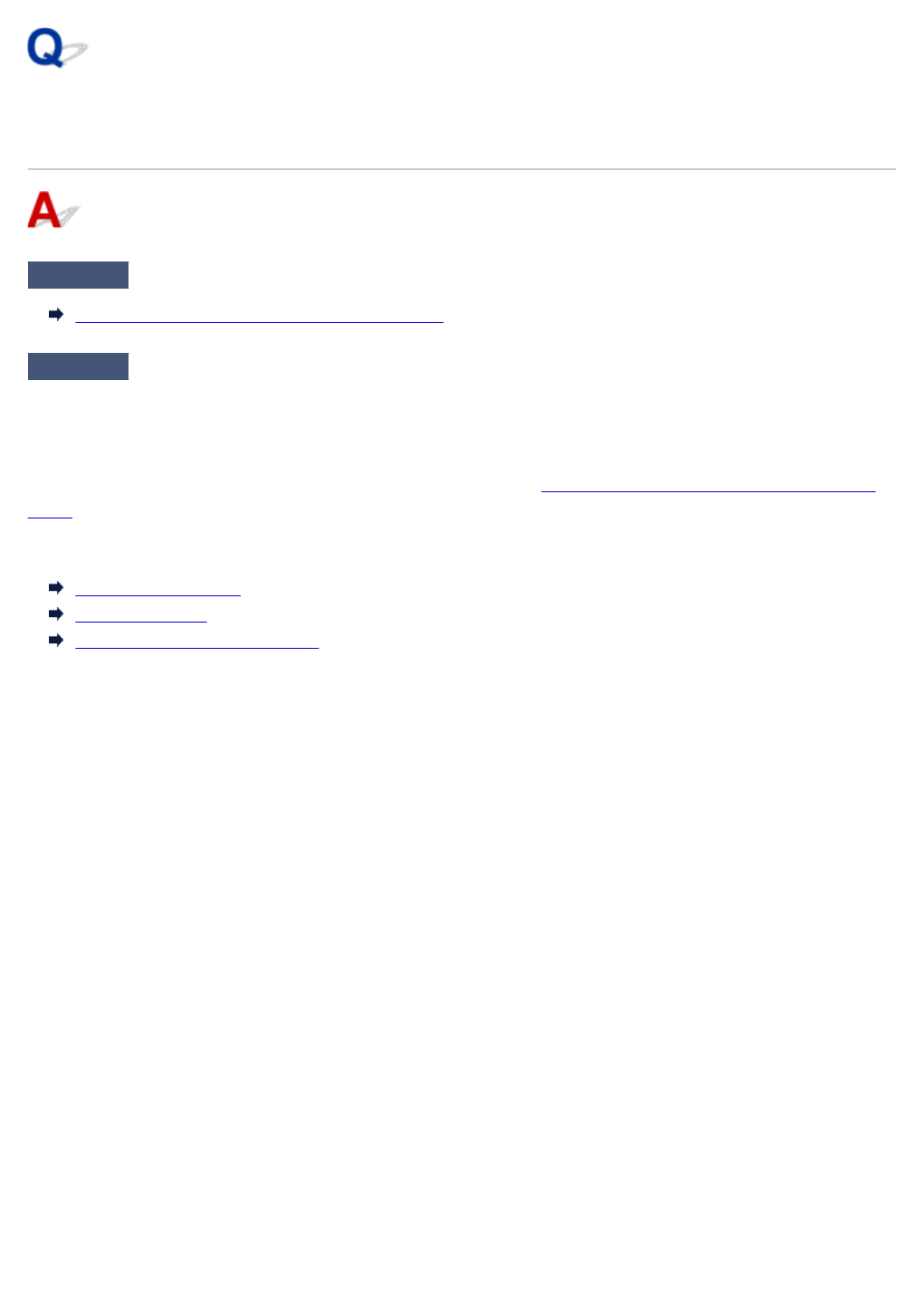
Position or Size of the Image Cannot be Detected Correctly When
Scanning from the Operation Panel
Check 1 Make sure that the items are placed correctly.
Positioning Originals (Scanning from Computer)
Check 2 Check that the settings match the item to be scanned.
If you cannot scan properly by automatically detecting the item type, specify the item type and size.
When Scanning from the Operation Panel:
For the setting items when scanning from the operation panel, see Setting Items for Scanning Using Operation
Panel.
When Scanning with IJ Scan Utility:
Scanning Documents
Scanning Photos
Scanning with Favorite Settings
1154
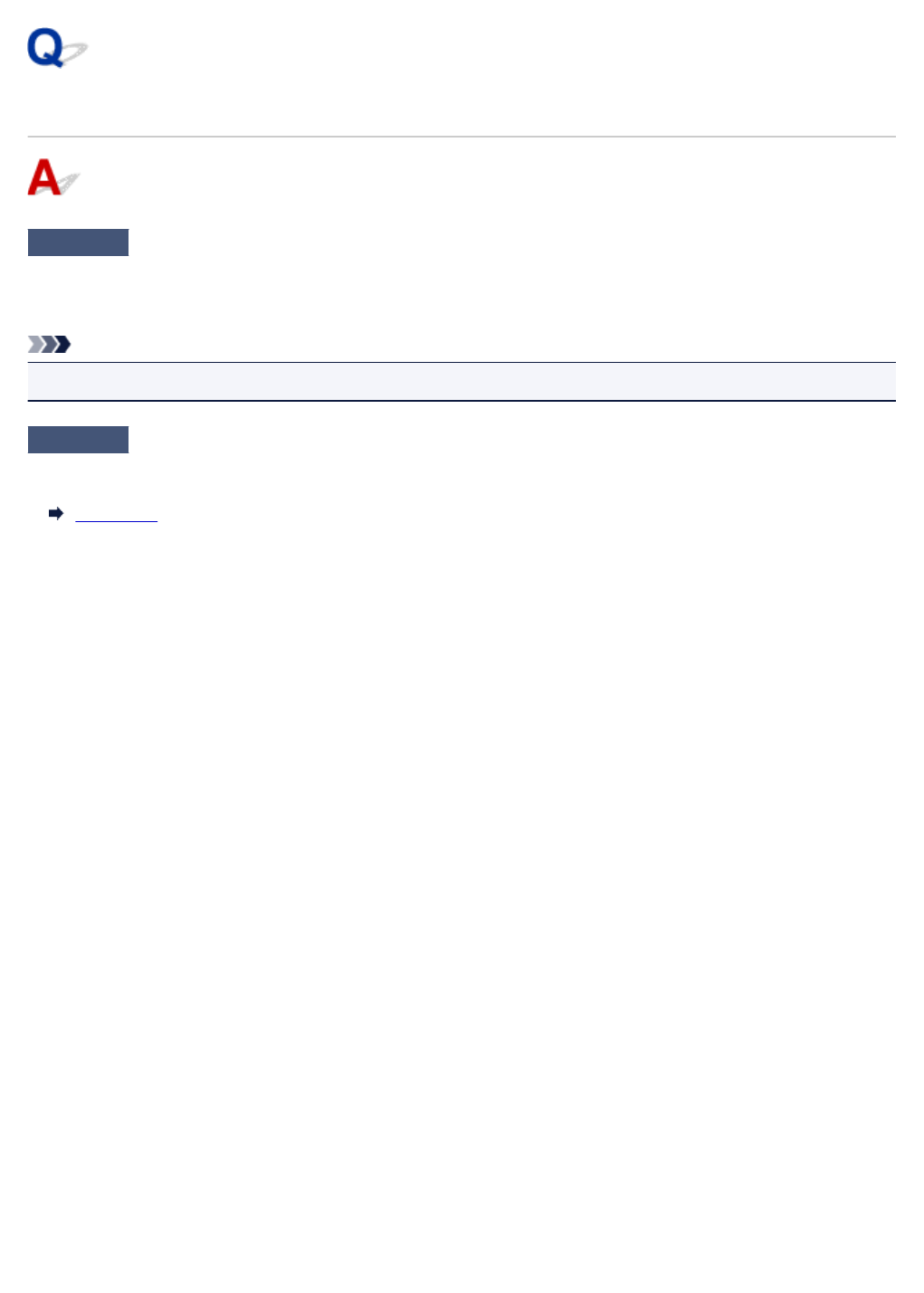
Scanned Image Is Enlarged (Reduced) on the Computer Monitor
Check 1 Change the display setting in the application.
Refer to the application's manual for details. If you have any questions, contact the manufacturer of the
application.
Note
•You cannot reduce the image size in Paint. To reduce the display size, open the images in an application.
Check 2 Change the resolution setting in ScanGear (scanner driver) and scan again.
The higher the resolution, the larger the resulting image will be.
Resolution
1156
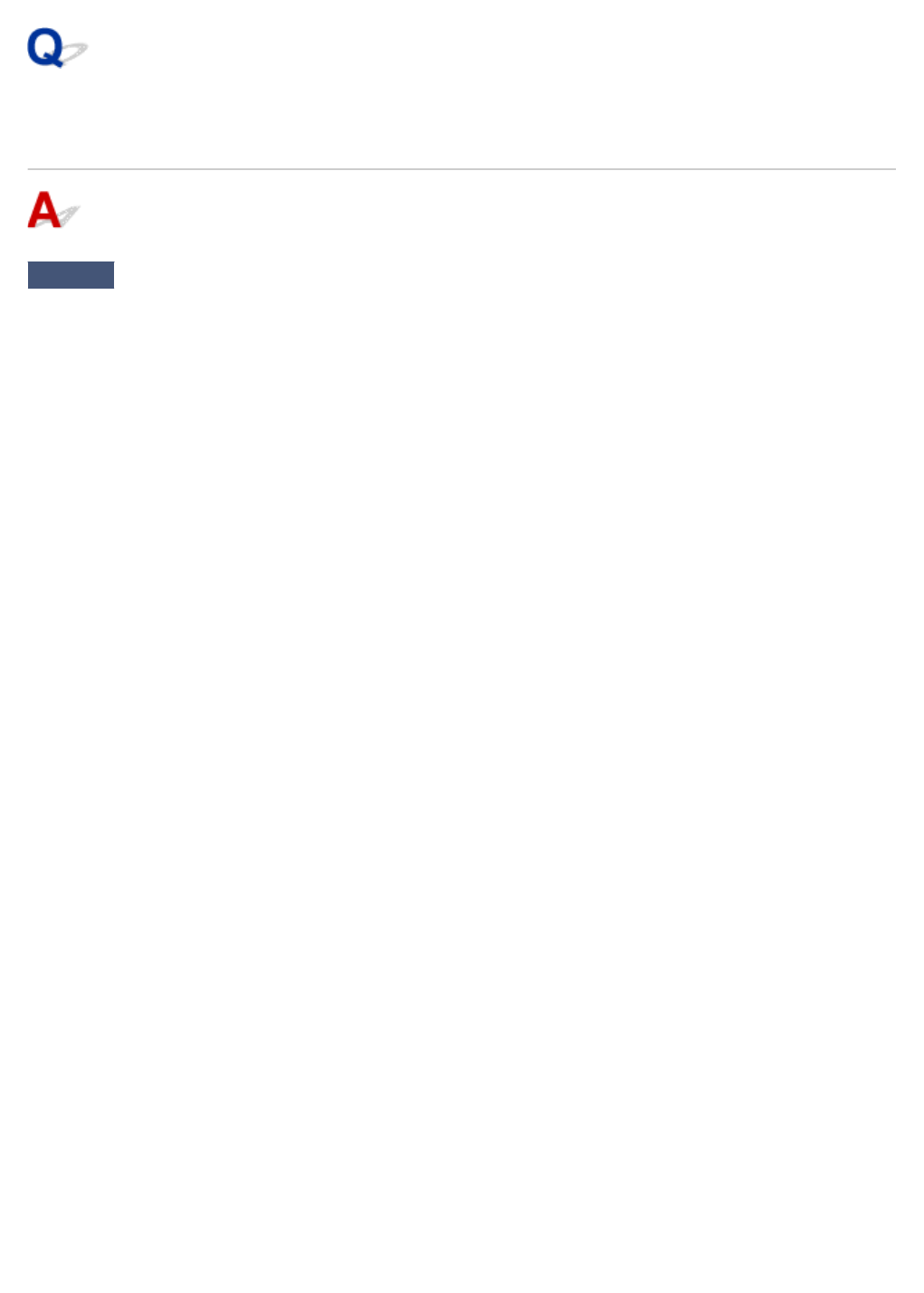
The E-mail Client You Want to Use Does Not Appear in the Screen
for Selecting an E-mail Client
Check Check that the e-mail client's MAPI is enabled.
Refer to the e-mail client's manual for how to set MAPI.
If the problem is not solved even when MAPI is enabled, select None (Attach Manually) in the screen for
selecting an e-mail client, then manually attach the image to the outgoing e-mail.
1158
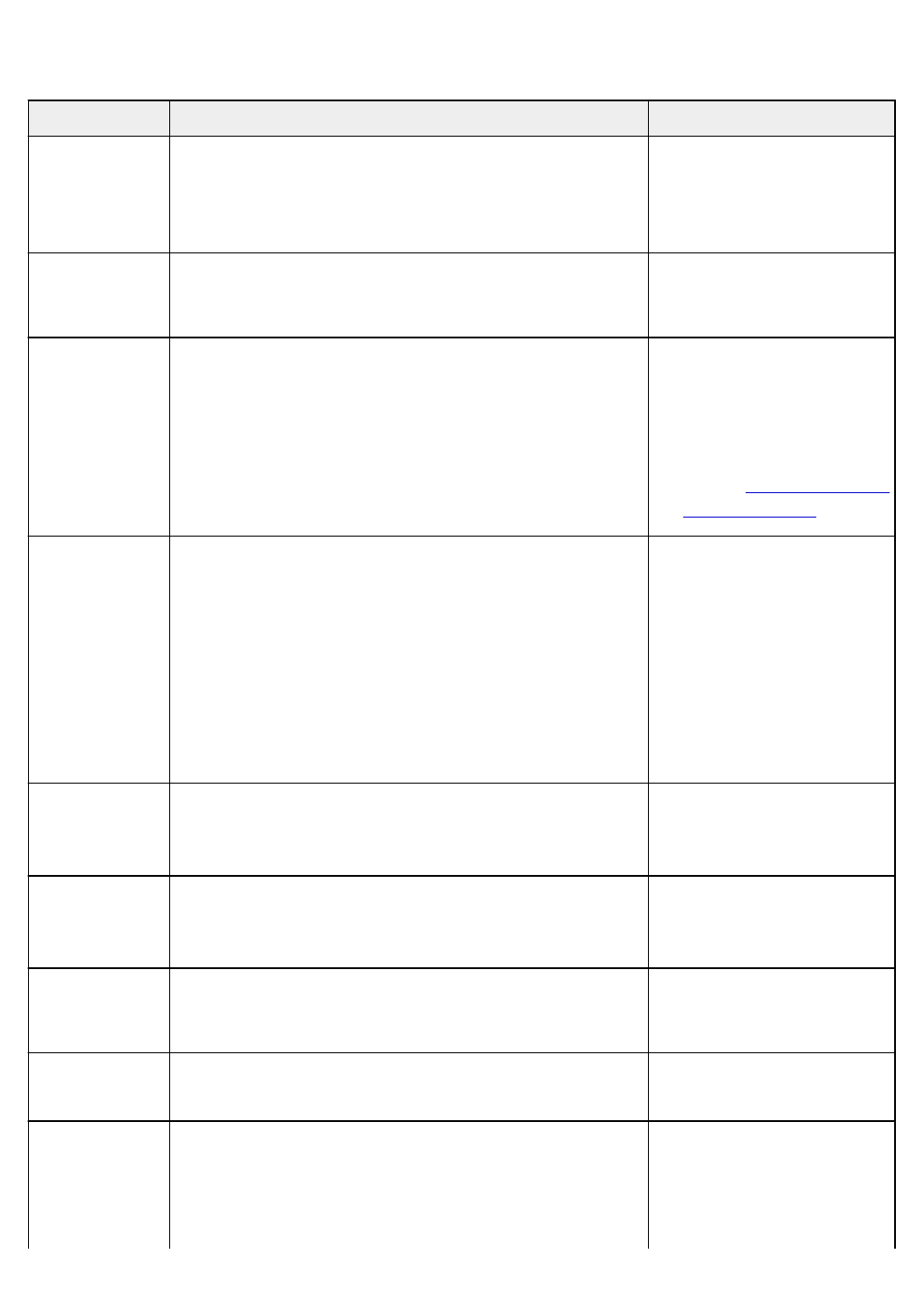
IJ Scan Utility Error Messages
If an error message for IJ Scan Utility appears, check the error code and follow the corresponding solution.
Error Code Error Message Solution
152 There is not enough memory. Exit other applications to increase
available memory.
• The memory required to
start IJ Scan Utility cannot
be obtained; exit other appli-
cations.
153 The image you attempted to scan is in a size that cannot be
opened in the specified application. Change the settings so that
the image size is reduced.
• Reduce the resolution or
output size and scan again.
201 A required file is missing or corrupted, or settings are incorrect.
Try the installation again.
• Delete MP Drivers, then re-
install MP Drivers from the
Setup CD-ROM or our web-
site.
For how to delete MP Driv-
ers, see Deleting the Unnec-
essary MP Drivers.
202 An internal error has occurred. Take the following measures.
- Check the scanner status.
- Restart the scanner.
- Restart the computer, then try again.
- Reinstall the scanner driver.
• An internal error has occur-
red. Take the following
measures.
◦ Check the scanner sta-
tus.
◦ Restart the scanner.
◦ Restart the computer,
then try again.
◦ Reinstall MP Drivers.
230 A scanner driver supporting this software is not installed. Install it
and try again.
• Reinstall MP Drivers from
the Setup CD-ROM or our
website.
231 Cannot complete the scan. The disk space is insufficient. • Delete unnecessary files on
the hard disk and scan
again.
232 Cannot save the file. The disk is write-protected.
Cancel the protection or use another disk.
• Cancel the write protection
on the disk.
234 This scan function is not supported by the selected model. Se-
lect a different scan function.
• Select a different scan func-
tion.
242 Cannot write file. • Check the access permis-
sion on the folder in Folder
to Save Temporary Files in
the Settings (General Set-
tings) dialog box or Save in
1159
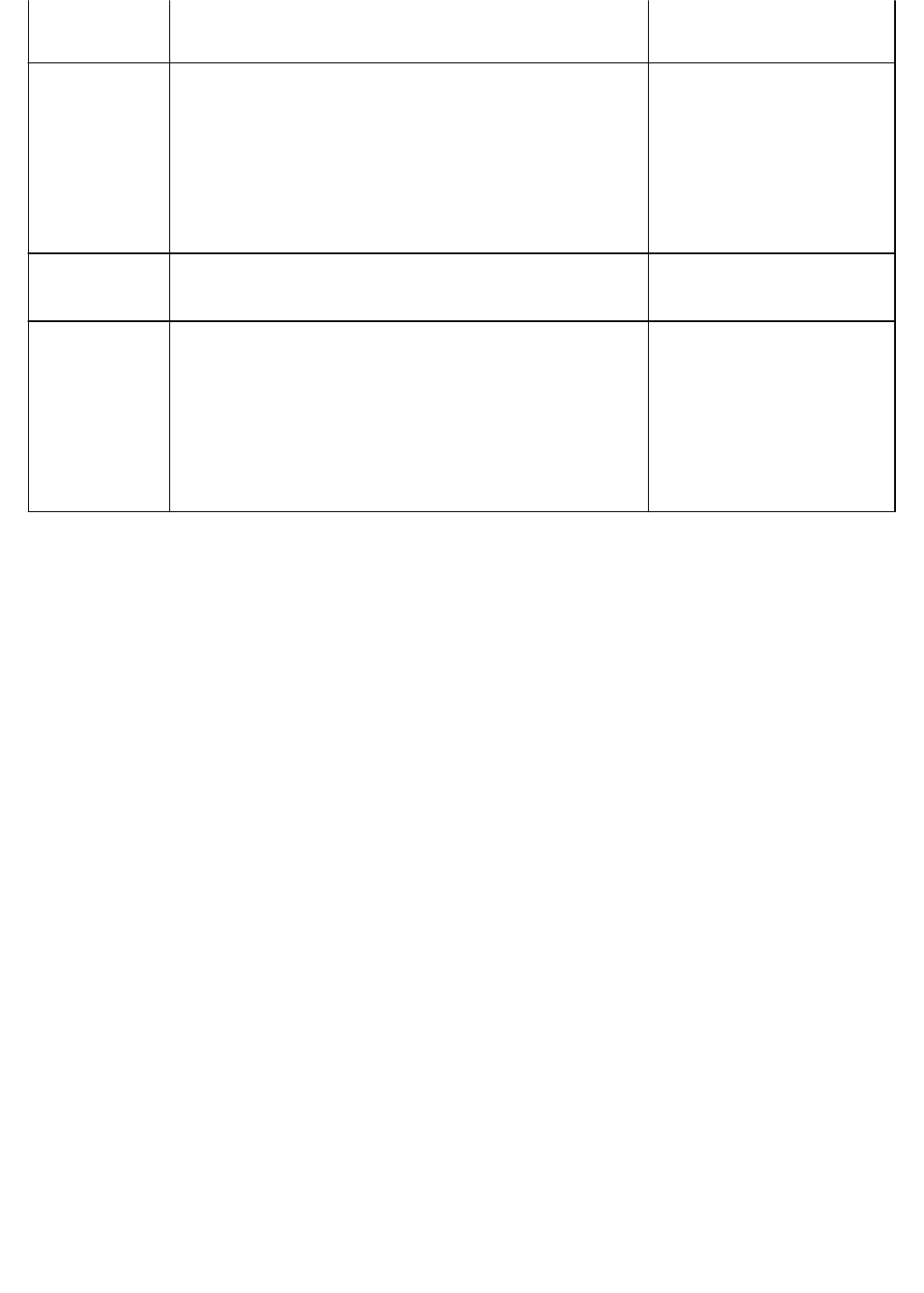
in the corresponding Set-
tings dialog box.
243 Cannot read file. • Check the access permis-
sion on the folder in Folder
to Save Temporary Files in
the Settings (General Set-
tings) dialog box or Save in
in the corresponding Set-
tings dialog box.
244 You do not have the required privileges to access the specified
folder.
• Grant access permission to
the specified folder.
245 Text could not be detected. Make sure that the following condi-
tions do not apply.
- The Document Language setting does not match the document
language.
- There is no text in the document.
- Text that is not supported for detection is scanned.
• Make sure the Document
Language in the Settings
(General Settings) dialog
box matches the document
language.
• Make sure there is text in
the document.
1160
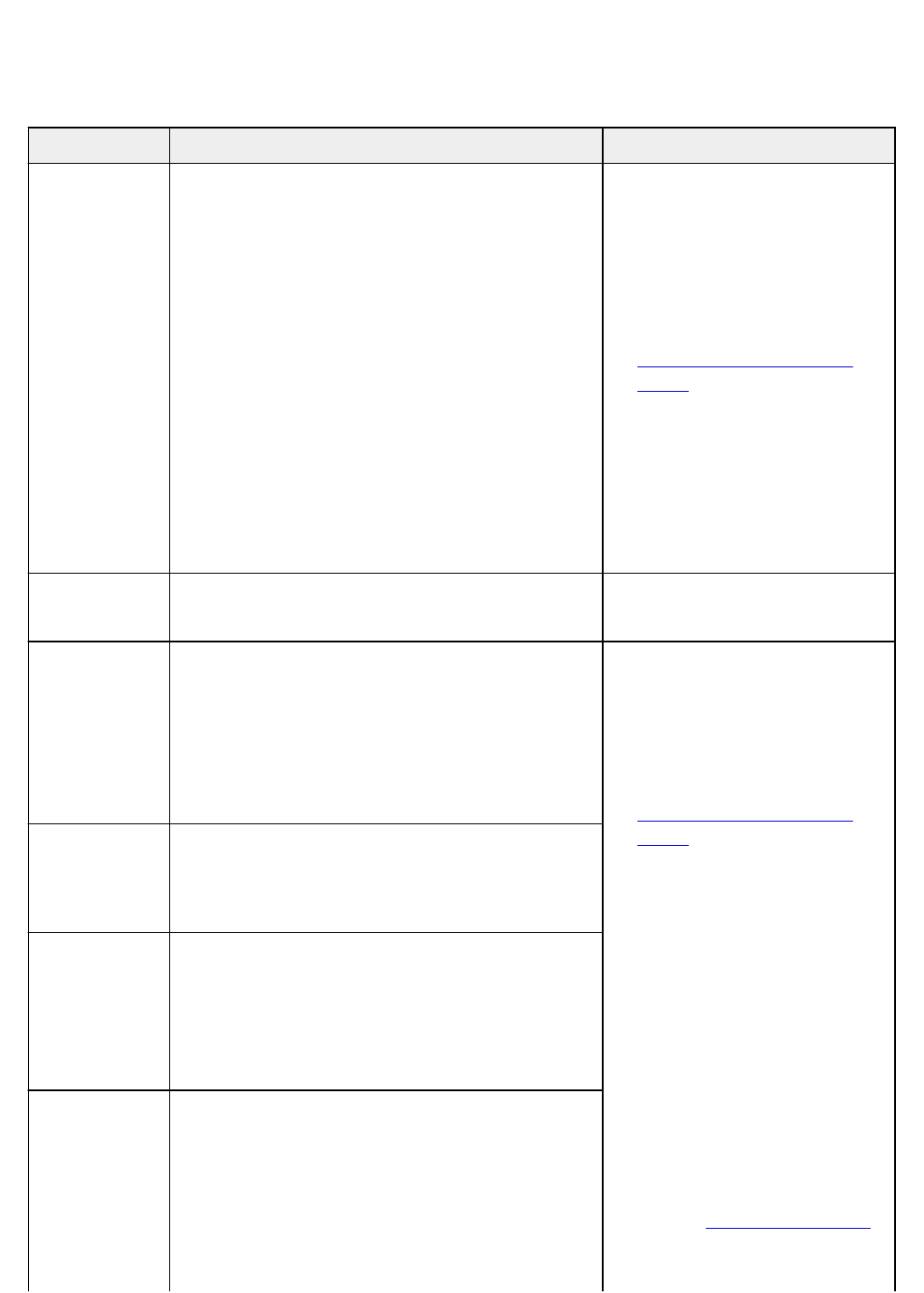
ScanGear (Scanner Driver) Error Messages
If an error message for ScanGear (scanner driver) appears, check the error code and follow the
corresponding solution.
Error Code Error Message Solution
1
4
10
122
151
175
176
177
Error in scanner.
Turn off scanner and follow instructions in User's Guide.
Scanner driver will be closed.
• Make sure that your scanner or
printer and the computer are con-
nected correctly.
• Delete MP Drivers, then reinstall
MP Drivers from the Setup CD-
ROM or our website.
For how to delete MP Drivers, see
Deleting the Unnecessary MP
Drivers.
• Your scanner or printer may be
damaged.
Restart the computer, then recon-
nect your scanner or printer. If the
same error message still appears,
contact the service center.
140 Printer is in use or an error has occurred. Check status.
Scanner driver will be closed.
• Wait for the device operation to fin-
ish, then scan.
145 Cannot communicate with scanner for these reasons:
- Scanner is turned off.
- Scanner is disconnected.
(It is disconnected from LAN, if using on LAN.)
Please check and try again.
Scanner driver will be closed.
• Make sure that your scanner or
printer is turned on.
• Delete MP Drivers, then reinstall
MP Drivers from the Setup CD-
ROM or our website.
For how to delete MP Drivers, see
Deleting the Unnecessary MP
Drivers.
• Make sure that the selected appli-
cation source is correct. Refer to
the application's manual for de-
tails.
• Check the printer status.
• With USB connection, check the
connection of the USB cable and
reconnect as required.
• With network connection, check
the connection status and recon-
nect as required.
• With network connection, specify
the scanner to use with IJ Network
Scanner Selector EX.
Refer to "Network Scan Settings"
for the setting procedure.
155 Cannot communicate with scanner.
Cable may be disconnected or scanner may be turned off.
Check status.
Scanner driver will be closed.
156 Cannot communicate with scanner for these reasons:
- Scanner is turned off.
- USB cable is disconnected.
Please check and try again.
Scanner driver will be closed.
157 Cannot communicate with scanner for these reasons:
- Scanner is turned off.
- (If using Wired LAN connection) It is disconnected from
Wired LAN.
- (If using wireless LAN connection) Signal strength is
poor due to obstructions.
- Network connection is prohibited by security software.
- Different scanner on the network is selected.
1161
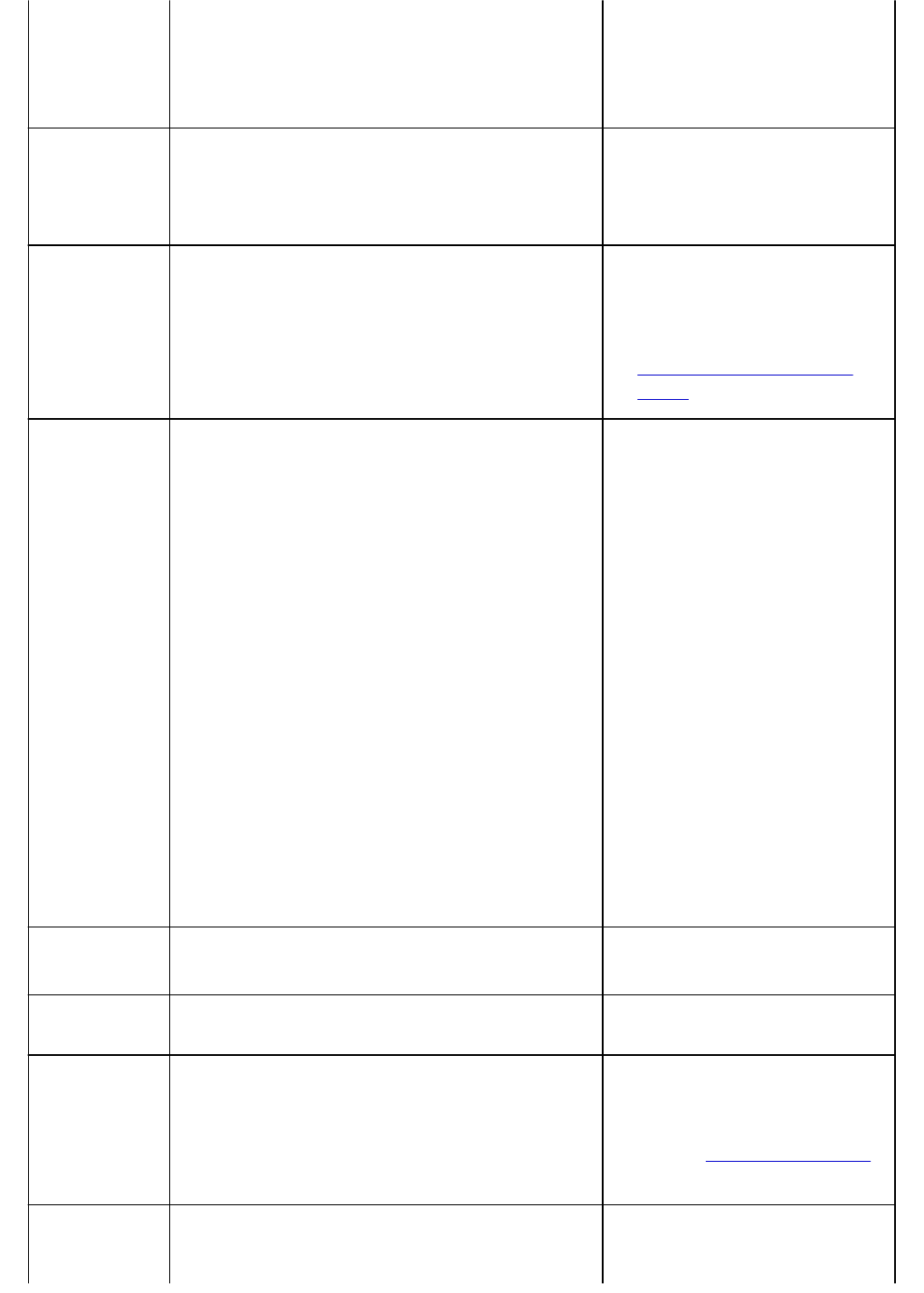
Please check and try again.
Click [Scanner Selection] if you want to select another
scanner.
Scanner driver will be closed.
152 Running out of memory.
Increase available memory.
Scanner driver will be closed.
• The memory required to start
ScanGear (scanner driver) cannot
be obtained; exit other applica-
tions.
201 A required file is missing or corrupted, or settings are in-
correct.
Try the installation again.
Scanner driver will be closed.
• Delete MP Drivers, then reinstall
MP Drivers from the Setup CD-
ROM or our website.
For how to delete MP Drivers, see
Deleting the Unnecessary MP
Drivers.
202 An internal error has occurred.
Scanner driver will be closed. Take the following meas-
ures.
- Check the scanner status.
- Restart the scanner.
- Restart the computer, then try again.
- Reinstall the scanner driver.
• An internal error has occurred.
Take the following measures.
◦ Check the scanner status.
◦ Restart the scanner.
◦ Restart the computer, then try
again.
◦ Reinstall MP Drivers.
• Click Control Panel > System
and Security > Administrative
Tools, and then double-click Serv-
ices to check if WIA (Windows Im-
age Acquisition) is running or in
started state.
• There may be interference with
other drivers; delete unnecessary
drivers.
• Your application may not properly
comply with TWAIN. Scan using
another application.
203 There is not enough free disk space to complete the scan.
Scanner driver will be closed.
• Delete unnecessary files on the
hard disk and scan again.
206 The scanner is not available while in use by another appli-
cation or user.
• Exit the ScanGear in use.
207 Scanner is not selected.
Click [Scanner Selection] to select scanner.
Scanner driver will be closed.
• With network connection, specify
the scanner to use with IJ Network
Scanner Selector EX.
Refer to "Network Scan Settings"
for the setting procedure.
208 IJ Network Scanner Selector cannot be found.
Reinstall scanner driver.
Scanner driver will be closed.
• Delete MP Drivers, then reinstall
MP Drivers from the Setup CD-
ROM or our website.
1162
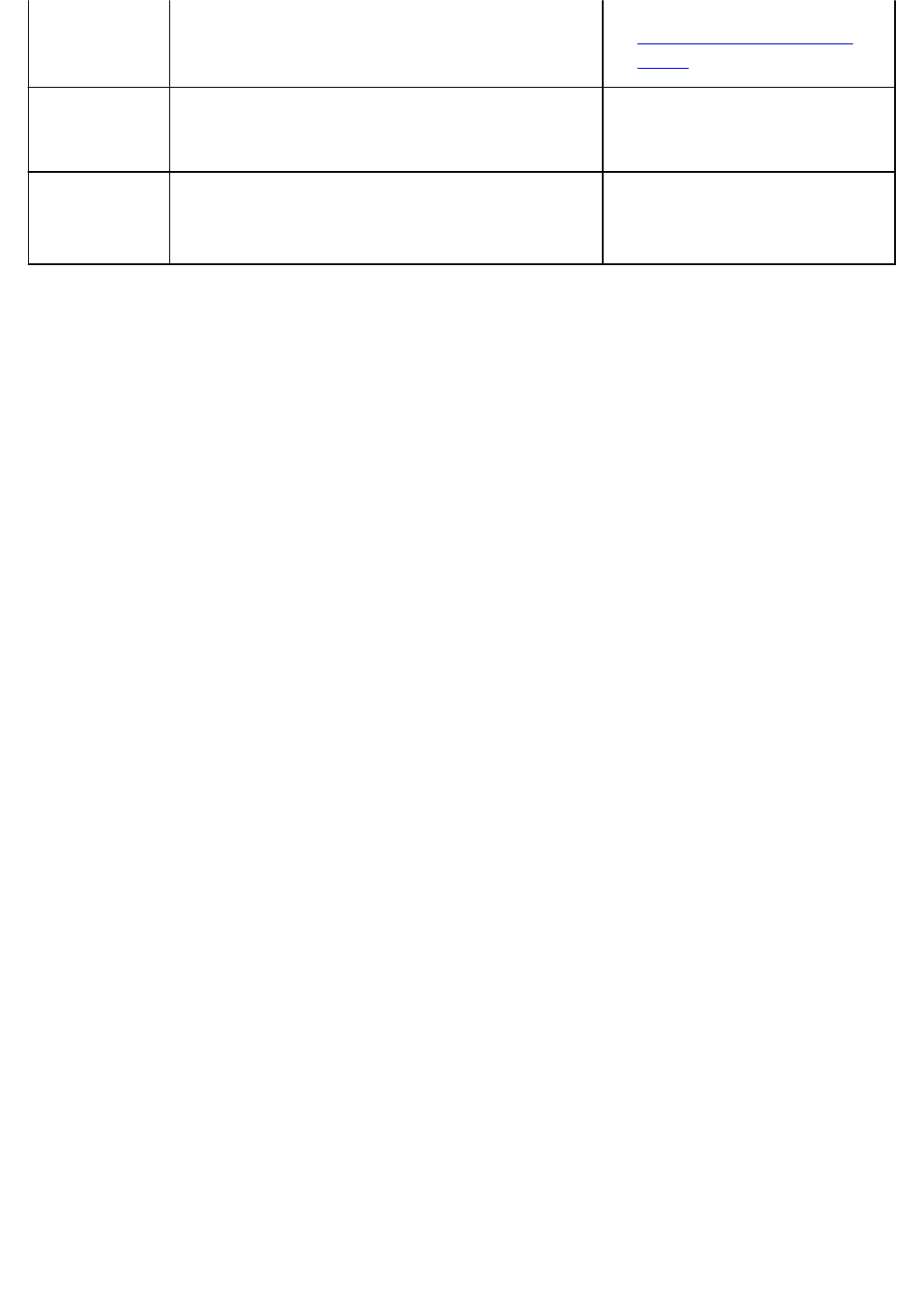
For how to delete MP Drivers, see
Deleting the Unnecessary MP
Drivers.
250 An error has occurred.
Turn the device off and then back on.
Scanner driver will be closed.
• Turn the device off and then back
on.
252 Cannot write or read file. • Exit running applications, check
that there is sufficient free space
on the hard disk, then scan again.
1163
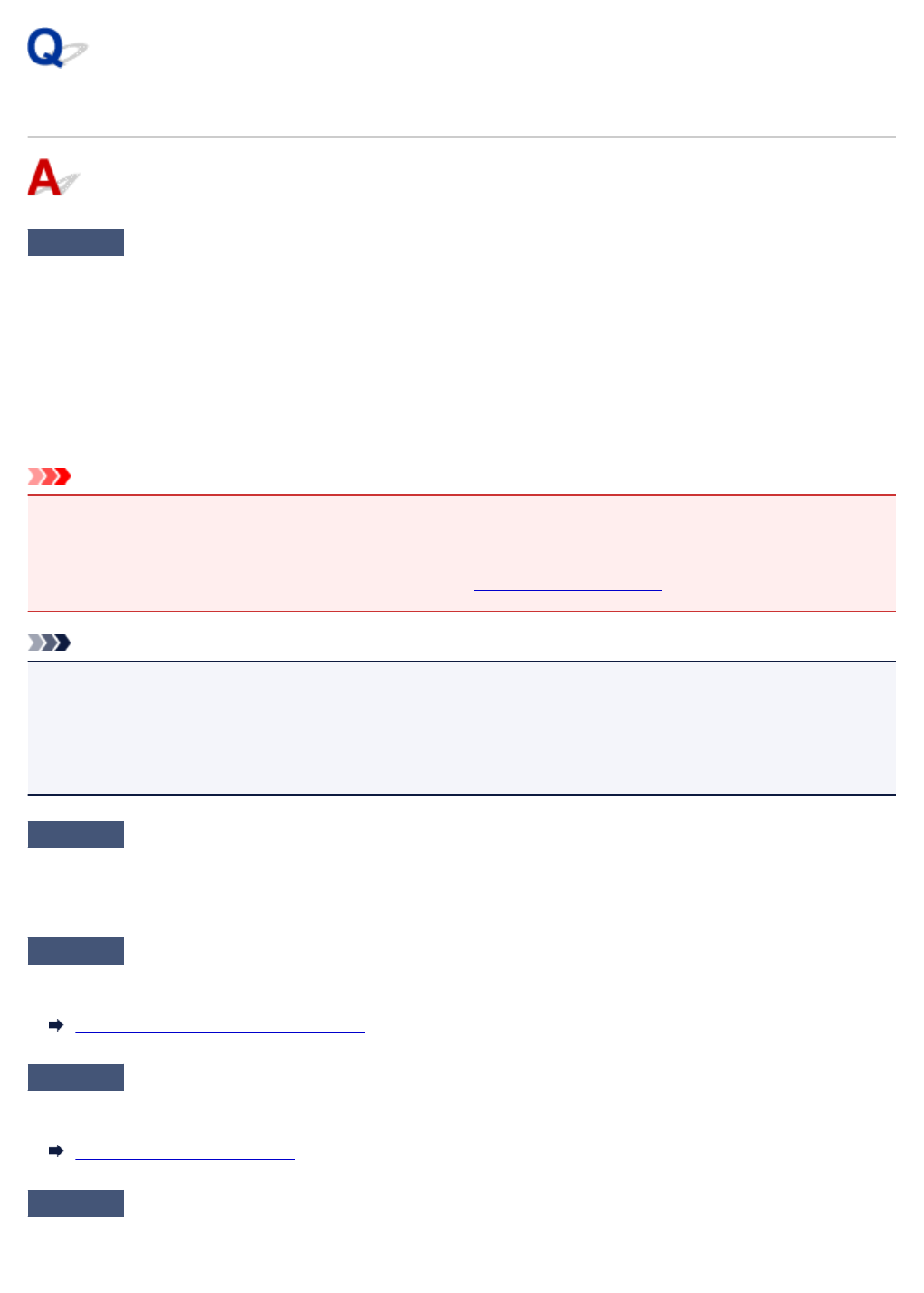
Cannot Send a Fax
Check1 Is power turned on?
• You cannot send faxes if the power is turned off. Press the ON button to turn the power on.
•If you unplugged the power cord without turning off the power (the POWER lamp is lit), reconnecting it turns
on the power automatically.
• If you unplugged the power cord after pressing the ON button to turn off the power (the POWER lamp is
off), reconnect it, and then press the ON button to turn on the power.
• If the power was turned off due to power failure, etc., the power is automatically turned on when the power
failure is resolved.
Important
•Confirm that the POWER lamp is off before unplugging the power cord, and then unplug the power cord.
If a power failure occurs or you unplug the power cord, all faxes stored in the printer's memory are deleted.
For details on how to unplug the power cord, refer to Unplugging the Machine.
Note
•If the faxes stored in the printer's memory are deleted by a power failure or unplugging the power cord, the
list of the faxes deleted from the printer's memory (MEMORY CLEAR REPORT) will be printed after turning
the printer on.
For details, see Summary of Reports and Lists.
Check2 Is document being sent from memory or the fax being received into memory?
When the message for the transmission/reception is displayed on the Fax standby screen, a fax is being sent
from/received into printer's memory. Wait until the transmission/reception is complete.
Check3 Is printer's memory full?
Delete contents in memory, and then send a fax again.
Document Stored in Printer's Memory
Check4 Is telephone line type set correctly?
Check the telephone line type setting and change it as necessary.
Setting Telephone Line Type
Check5 Is Hook key setting set to Disable?
When you send a fax manually, dial the number with Enable selected for Hook key setting in Security control
under FAX settings, or dial the number using the telephone connected to the printer.
1166
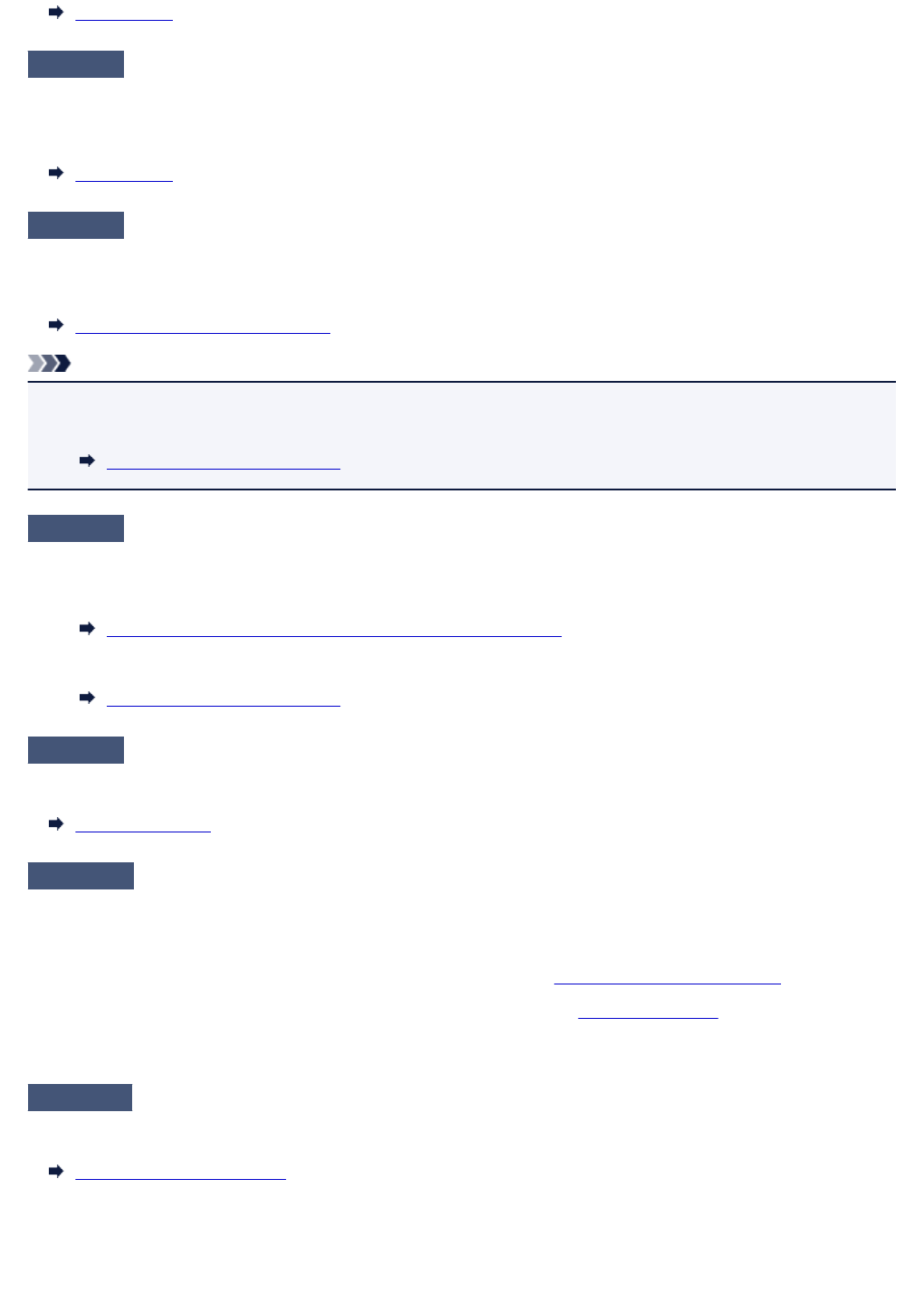
FAX settings
Check6 Is Dial tone detect set to ON?
Resend the fax after a while.
If you still cannot send the fax, select OFF for Dial tone detect in Advanced FAX settings under FAX settings.
FAX settings
Check7 Is fax number registered correctly in printer's directory?
Check the recipient's fax/telephone number, correct the fax/telephone number registered in the printer's directory,
and then send the document again.
Changing Registered Information
Note
• You can check the registered information in the printer's directory by printing RECIPIENT TELEPHONE
NUMBER LIST.
Summary of Reports and Lists
Check8 Does an error occur during transmission?
•Ensure that a message is displayed on the Fax standby screen. When a message is displayed on the Fax
standby screen, check the cause.
A Message for Faxing Is Displayed on Fax Standby Screen
•Print ACTIVITY REPORT and check for an error.
Summary of Reports and Lists
Check9 Is document loaded properly?
Remove the document, and then reload it on the platen glass or in the ADF.
Loading Originals
Check10 Does a printer error occur?
Ensure that an error message is displayed on the touch screen. When an error message is displayed on the
touch screen, check the cause.
When the error message with the support code is displayed, refer to List of Support Code for Error.
When the error message without the support code is displayed, refer to Message Appears.
If you are in a hurry, press the Stop button to close the message, and then send the fax.
Check11 Is telephone line connected correctly?
Reconnect the telephone line cable to the telephone line jack.
Connecting Telephone Line
If the telephone line is connected correctly, there is a problem with your telephone line. Contact your telephone
company and the manufacturer of your terminal adapter or telephone adapter.
1167
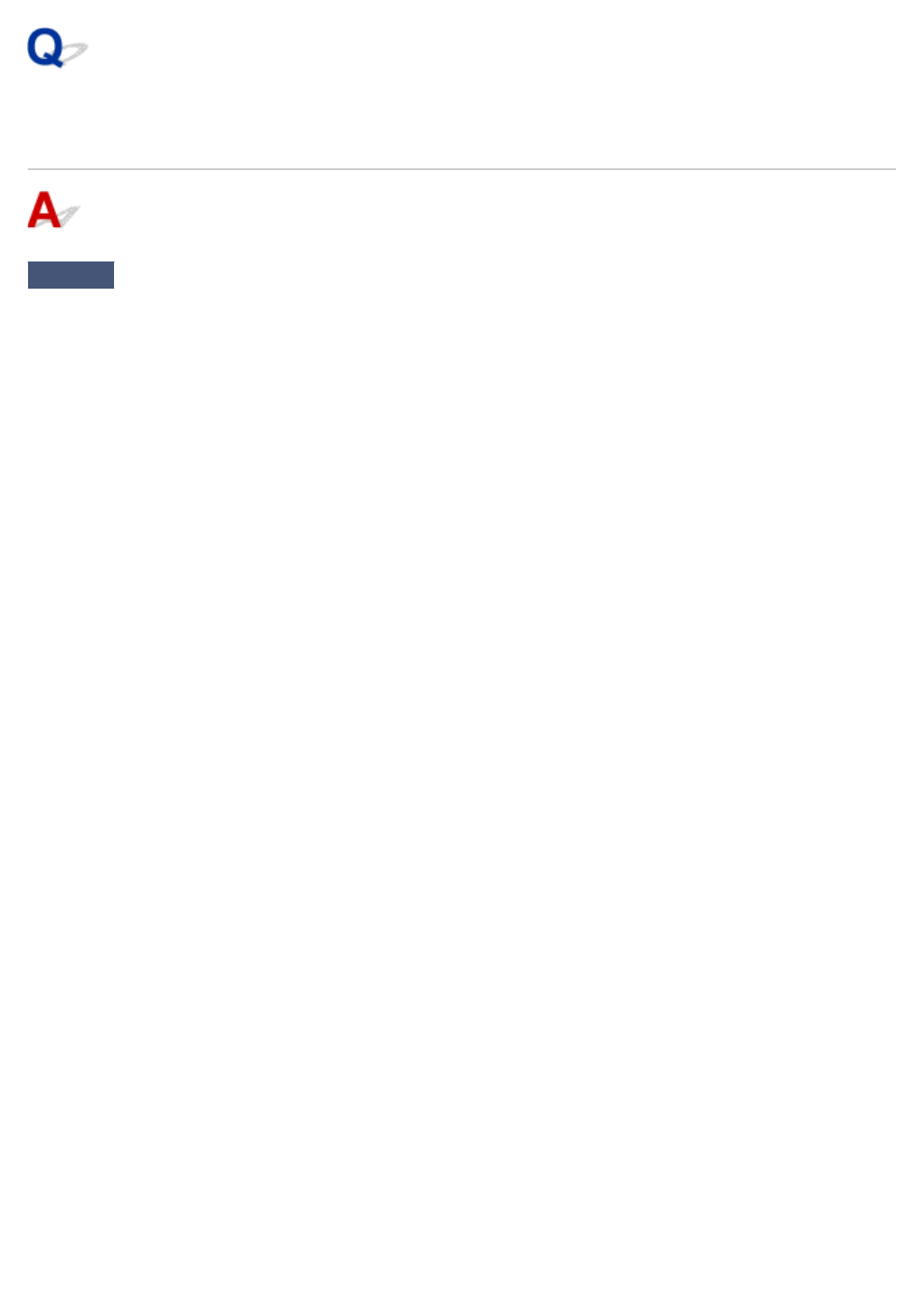
Cannot Perform Sequential Broadcasting by Redialing, or Cannot
Dial by Entering Numbers
Check Have you already selected recipient from redial history, or already dialed a
number by entering the fax/telephone numbers?
You can dial one recipient by selecting from the redial history or by entering the fax/telephone numbers as the
recipient of sequential broadcasting.
If you already have dialed by selecting from the redial history or by entering the fax/telephone numbers, select
the recipient from the printer's directory.
1168
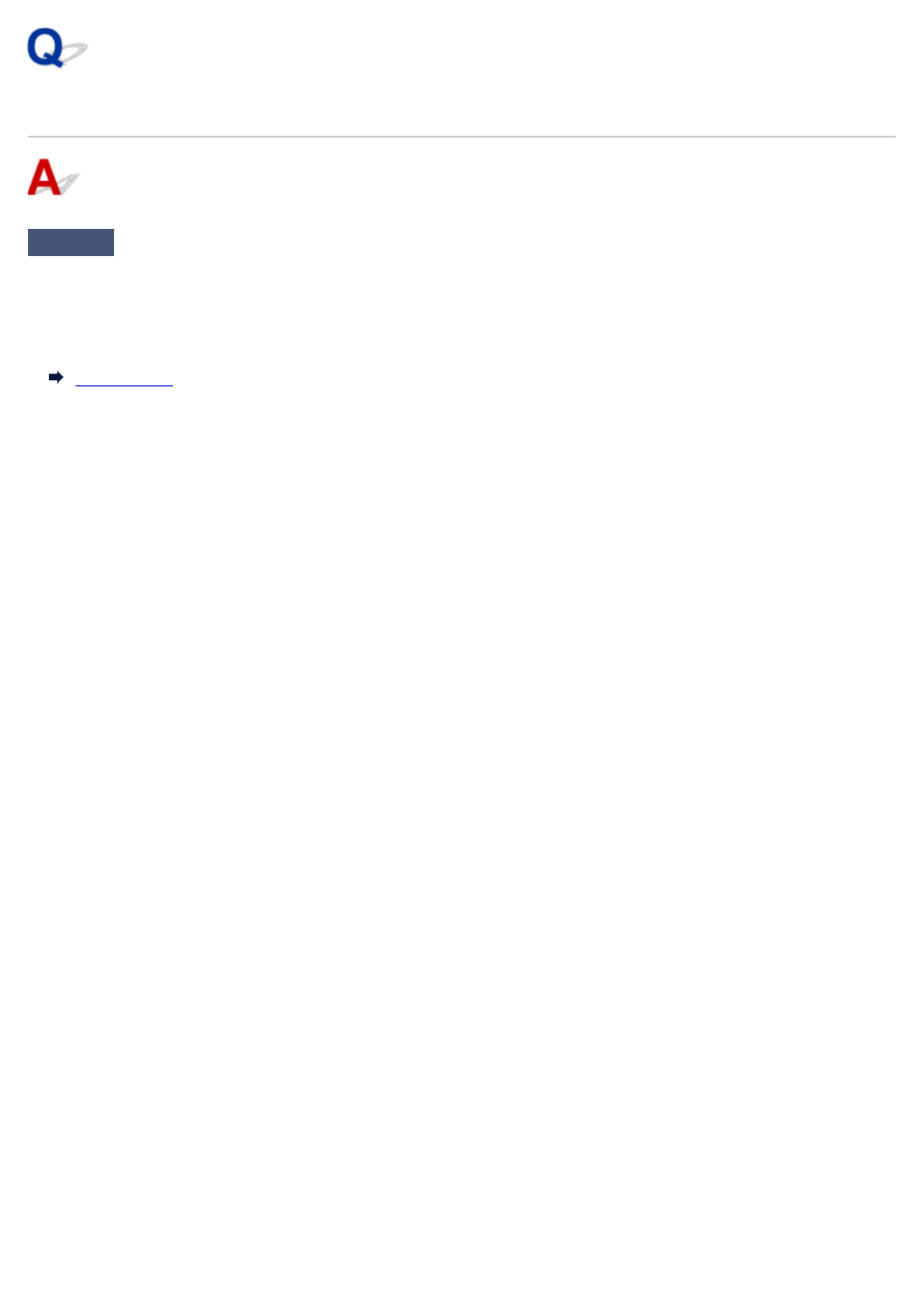
Errors Often Occur When You Send a Fax
Check Check telephone line condition or connection.
If the telephone line or connection is poor, reducing the transmission start speed may correct the error.
Reduce the transmission start speed on TX start speed in Adv. communication settings in Advanced FAX
settings under FAX settings.
FAX settings
1169
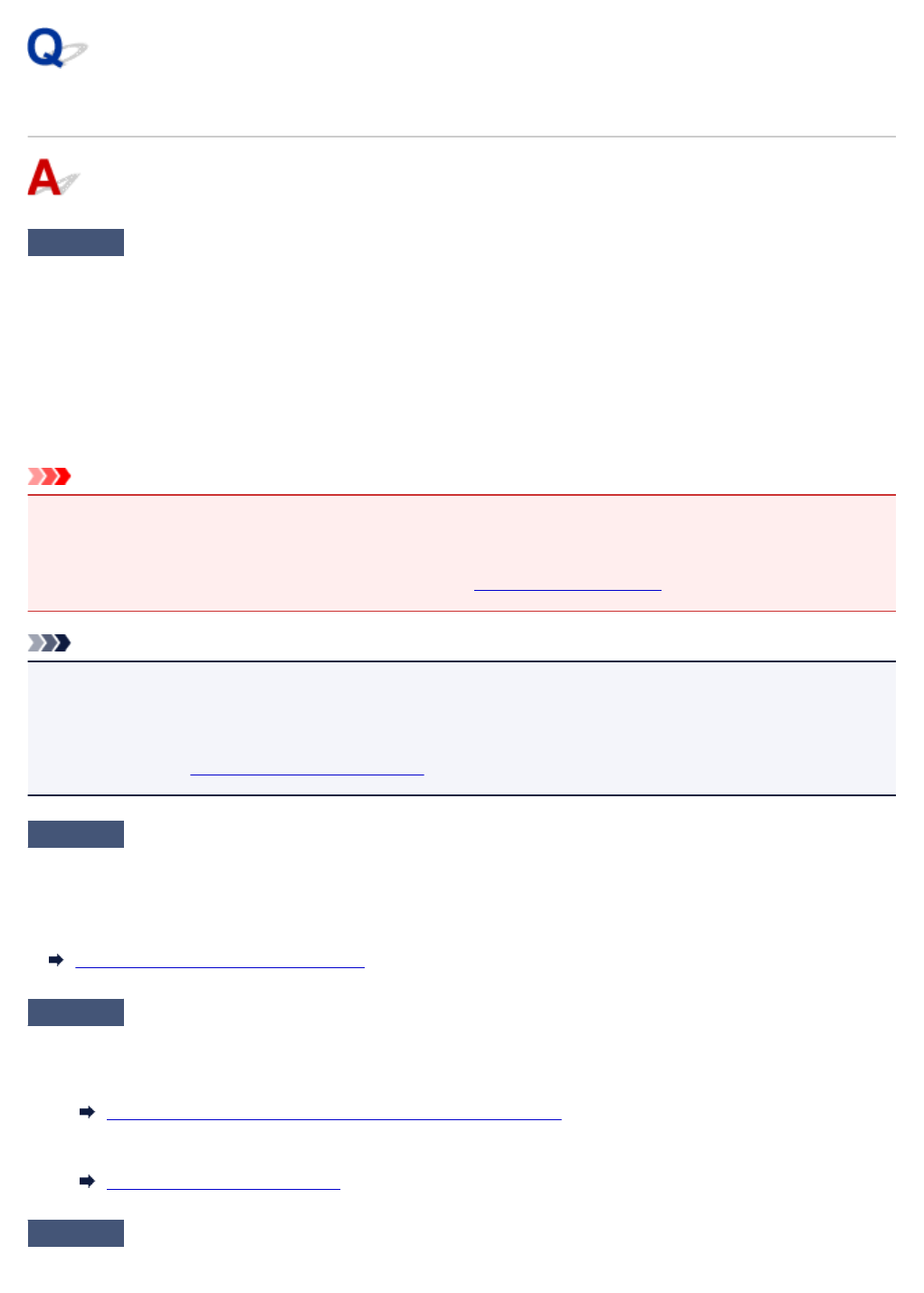
Cannot Receive a Fax, Cannot Print a Fax
Check1 Is the power turned on?
• You cannot receive faxes if the power is turned off. Press the ON button to turn the power on.
•If you unplugged the power cord without turning off the power (the POWER lamp is lit), reconnecting it turns
on the power automatically.
• If you unplugged the power cord after pressing the ON button to turn off the power (the POWER lamp is
off), reconnect it, and then press the ON button to turn on the power.
• If the power was turned off due to power failure, etc., the power is automatically turned on when the power
failure is resolved.
Important
•Confirm that the POWER lamp is off before unplugging the power cord, and then unplug the power cord.
If a power failure occurs or you unplug the power cord, all faxes stored in the printer's memory are deleted.
For details on how to unplug the power cord, refer to Unplugging the Machine.
Note
•If the faxes stored in the printer's memory are deleted by a power failure or unplugging the power cord, the
list of the faxes deleted from the printer's memory (MEMORY CLEAR REPORT) will be printed after turning
the printer on.
For details, see Summary of Reports and Lists.
Check2 Is the printer's memory full?
Print the received faxes stored in the printer's memory, save them on the USB flash drive, or forward them to the
shared folder on the computer, and then delete them from the printer's memory and have the sender resend the
faxes.
Document Stored in Printer's Memory
Check3 Does an error occur during reception?
• Ensure that a message is displayed on the Fax standby screen. When a message is displayed on the Fax
standby screen, check the cause.
A Message for Faxing Is Displayed on Fax Standby Screen
• Print ACTIVITY REPORT and check for an error.
Summary of Reports and Lists
Check4 Is telephone line cable connected to external device jack?
Reconnect it to the telephone line jack.
1171
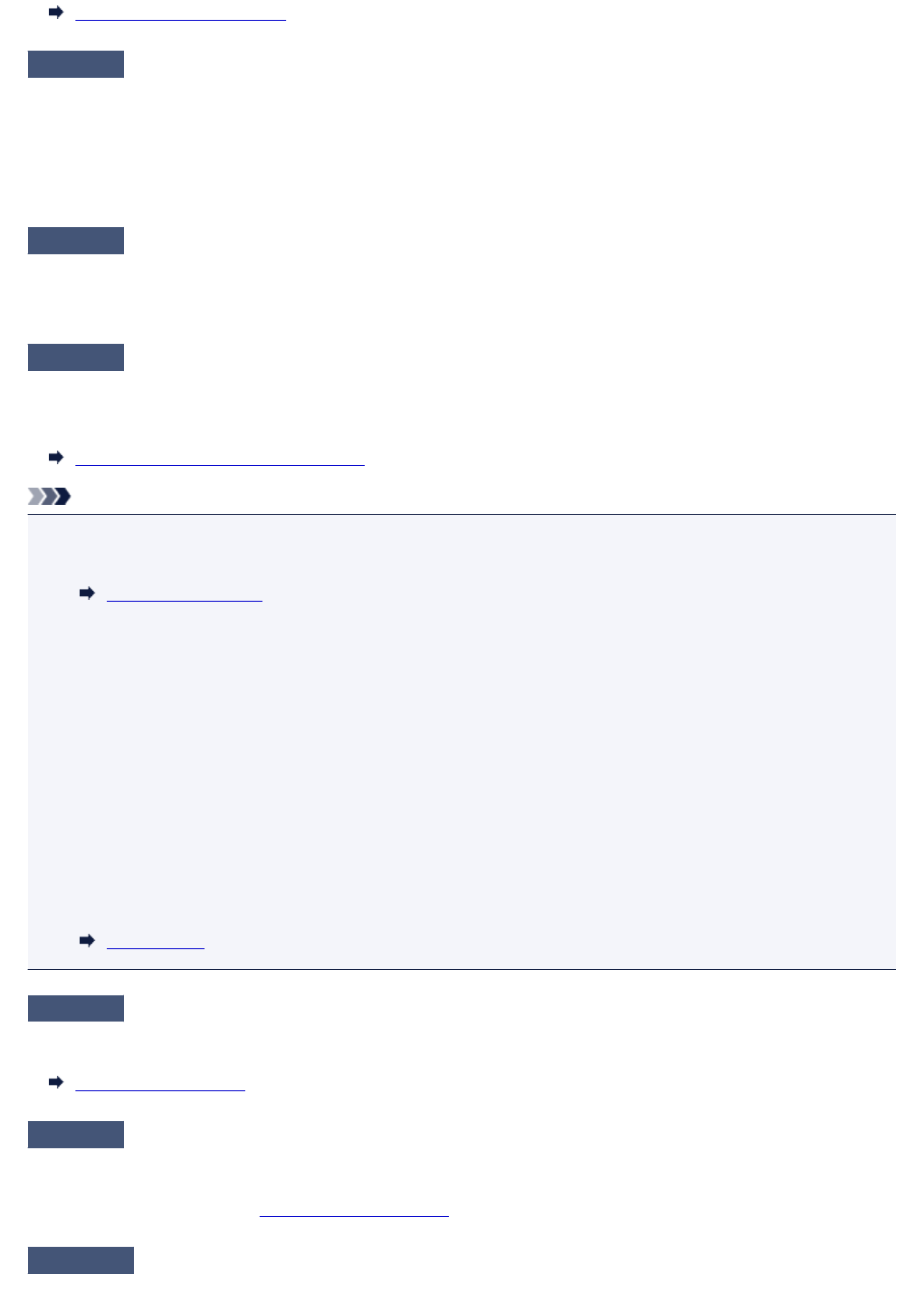
Connecting Telephone Line
Check5 Is a different size of paper from that specified by Page size in FAX paper
settings loaded?
If a different size of paper from that specified by Page size is loaded for printing faxes, the received faxes will not
be printed and will be stored in the printer's memory (Memory Reception). Load the same size of paper as that
specified by Page size, and then tap OK on the touch screen.
Check6 Is paper loaded?
If paper is not loaded, received faxes will be stored in the printer's memory without being printed (Memory
Reception). Load paper, and then tap OK on the touch screen.
Check7 Is amount of remaining ink sufficient to print a fax?
If the amount of remaining ink is insufficient to print, received faxes will be stored in the printer's memory without
being printed (Memory Reception). Replace the ink tank, and then print the faxes in the printer's memory.
Document Stored in Printer's Memory
Note
•If the printer was receiving faxes in the fax mode, printing will start automatically after the ink tank is
replaced.
Replacing Ink Tanks
•When the printer receives black & white faxes in the printer's memory, if 2-sided is selected for 2-
sidedPrintSetting in FAX paper settings, selecting 1-sided may print the faxes.
•You can set the printer to forcibly print a received fax even if the ink has run out.
Set Print when out of ink in Auto print settings under FAX settings to Print.
However, part or all of the fax may not be printed since the ink has run out.
Also, the contents of the fax will not be stored in the printer's memory.
If the ink has already run out, we recommend that Do not print be selected for Received documents in
Auto print settings under FAX settings to store the received fax in the printer's memory. After you
replace the ink tank and select Print for Received documents in Auto print settings, the fax stored in the
printer's memory will be printed automatically.
FAX settings
Check8 Is printer set to appropriate receive mode?
Check the receive mode setting and change it to a mode suited to your connection if necessary.
Setting Receive Mode
Check9 Is FAX reception reject set to ON?
Select OFF for FAX reception reject in Security control under FAX settings.
For details on how to set, see Rejecting Fax Reception.
Check10 Are there setting items set Reject in Caller rejection?
1172
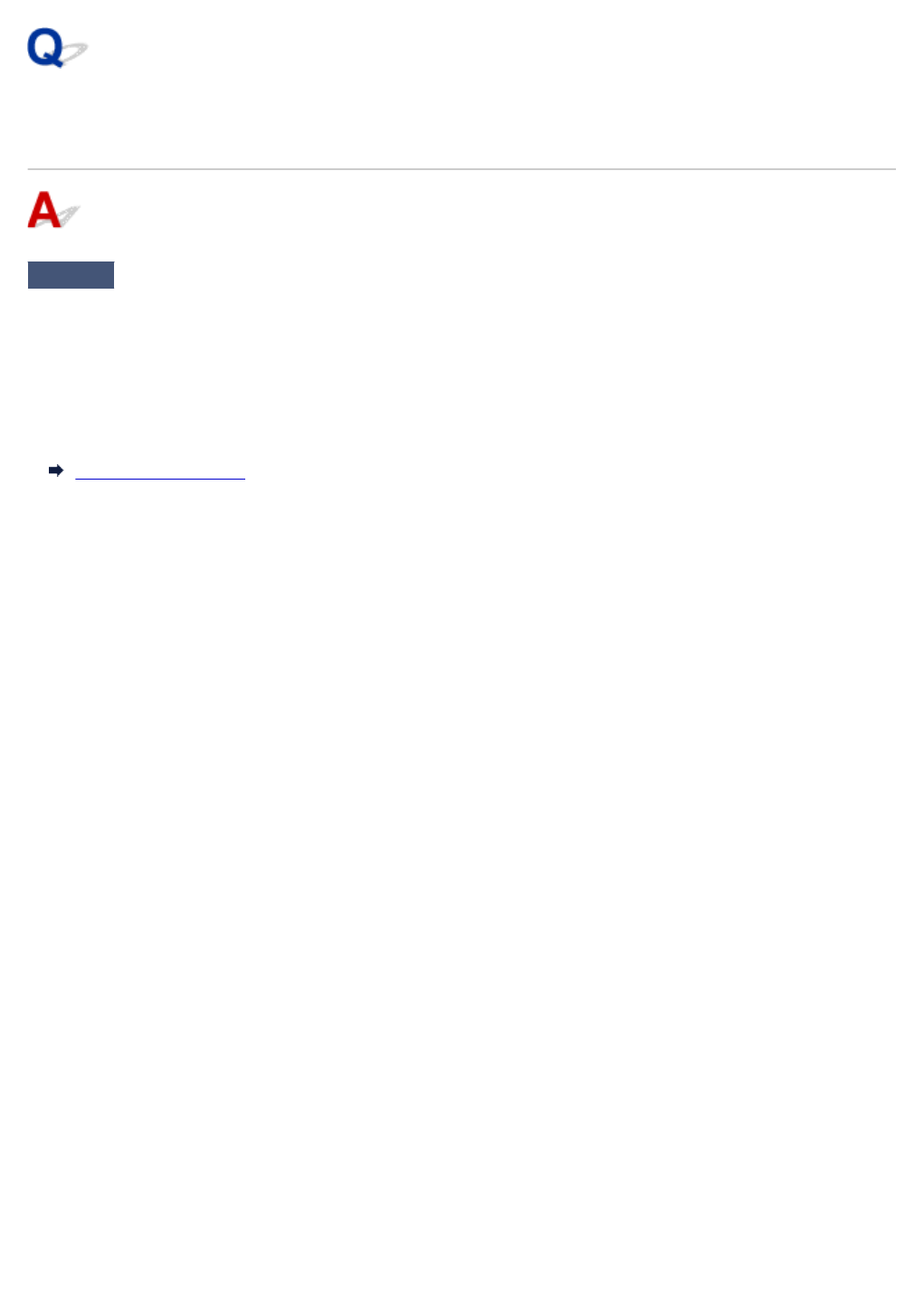
Printer Does Not Switch Automatically between Voice and Fax
Calls
Check Is receive mode set to FAX only mode?
If FAX only mode is selected for Receive mode settings, there will be no automatic switching between voice
and fax calls.
Set the receive mode to TEL priority mode, DRPD*1, or Network switch*2.
If the receive mode is TEL priority mode and an answering machine is connected to the printer, check whether
a proper message is played back when the answering machine answers.
Setting Receive Mode
*1 This setting is available only in the US and Canada.
*2 This setting may not be available depending on the country or region of purchase.
1174
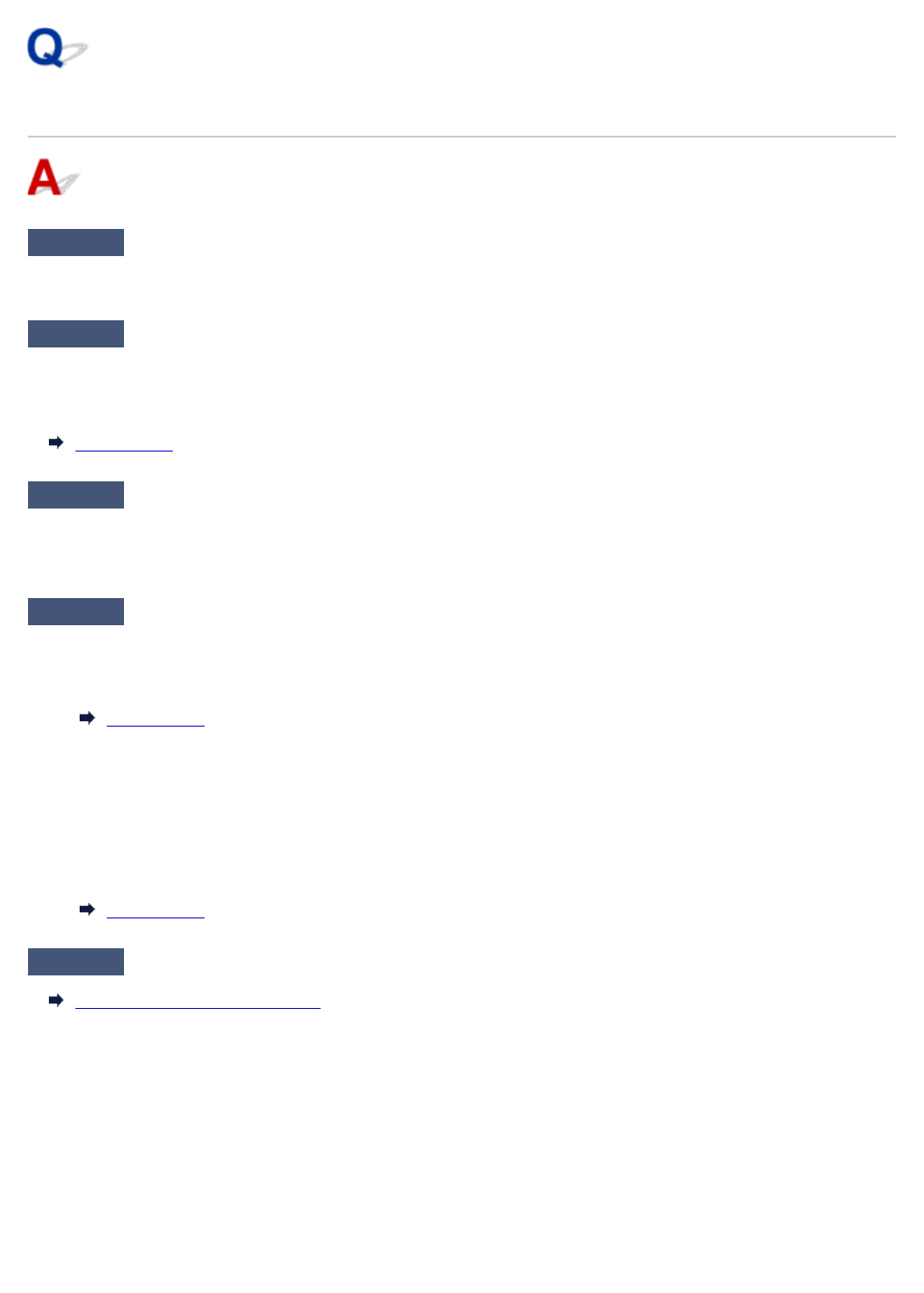
Quality of Received Fax is Poor
Check1 Check scan settings of sender's fax device.
Ask the sender to adjust the scan settings of the fax device.
Check2 Is ECM RX set to OFF?
Select ON for ECM RX in Adv. communication settings in Advanced FAX settings under FAX settings.
If ECM RX is enabled, the sender's fax device resends the fax after correcting errors automatically.
FAX settings
Check3 Is sender's original document or scanning area of sender's fax device dirty?
The image quality of the fax is mainly determined by the sender's fax device. Contact the sender and ask the
sender to check whether the scanning area of the fax device is dirty.
Check4 Is ECM transmission/reception enabled although line/connection is poor, or is
sender's fax device compatible with ECM?
•Select ON for ECM RX in Adv. communication settings in Advanced FAX settings under FAX settings.
FAX settings
•Contact the sender and ask the sender to check whether the fax device is set to enable ECM transmission.
If the sender's or recipient's fax device is not compatible with ECM, the fax will be sent/received without
automatic error correction.
•Reduce the reception start speed on RX start speed in Adv. communication settings in Advanced FAX
settings under FAX settings.
FAX settings
Check5 Did you confirm paper and print quality settings?
Print Results Are Unsatisfactory
1175
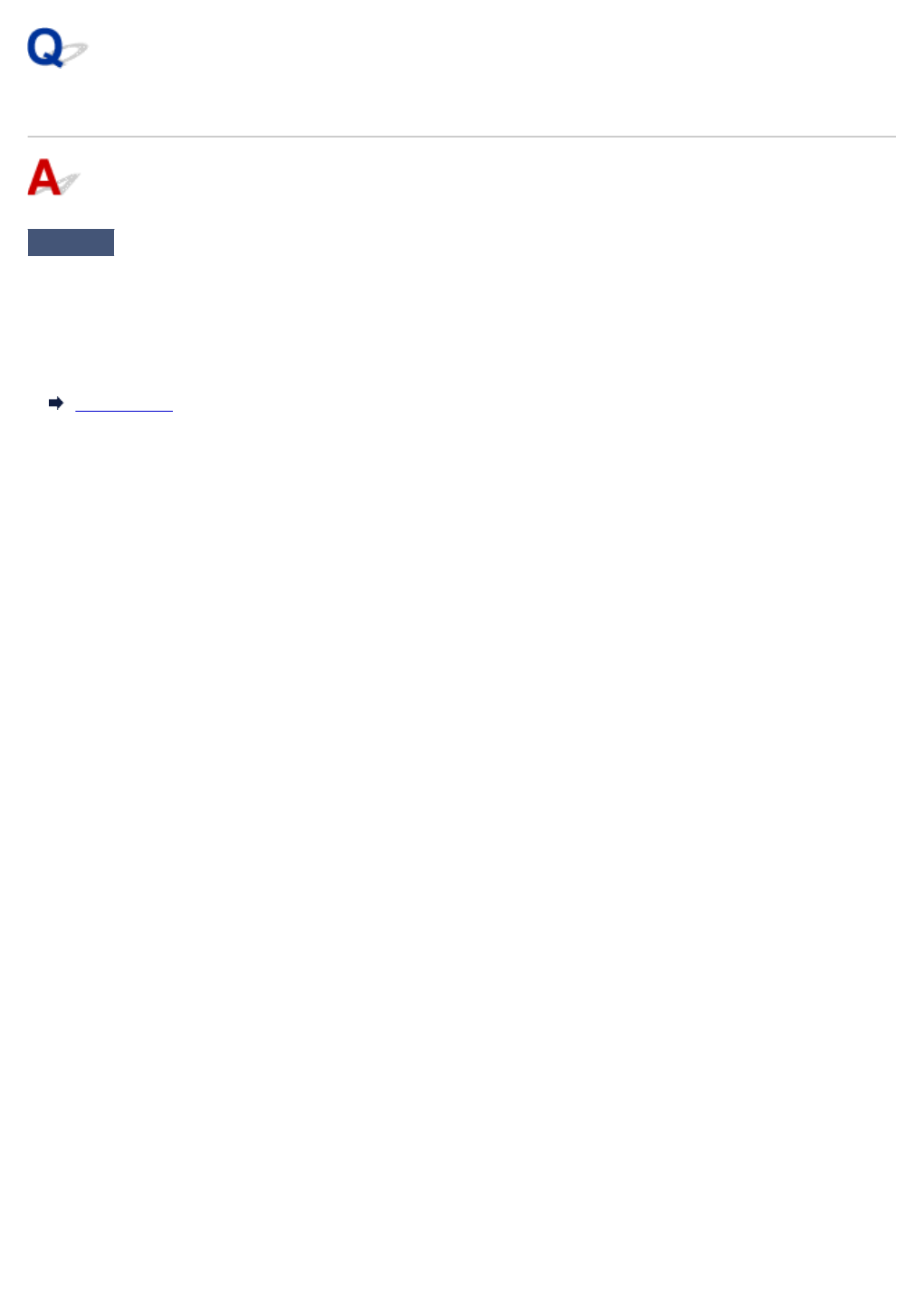
Cannot Receive a Color Fax
Check Is ECM RX set to OFF?
If OFF is select for ECM RX in Adv. communication settings in Advanced FAX settings under FAX settings,
the printer cannot receive color faxes. The printer will disconnect the telephone line or receive color faxes in
black & white according to the setting of the sender's fax device.
Set ECM RX to ON.
FAX settings
1176
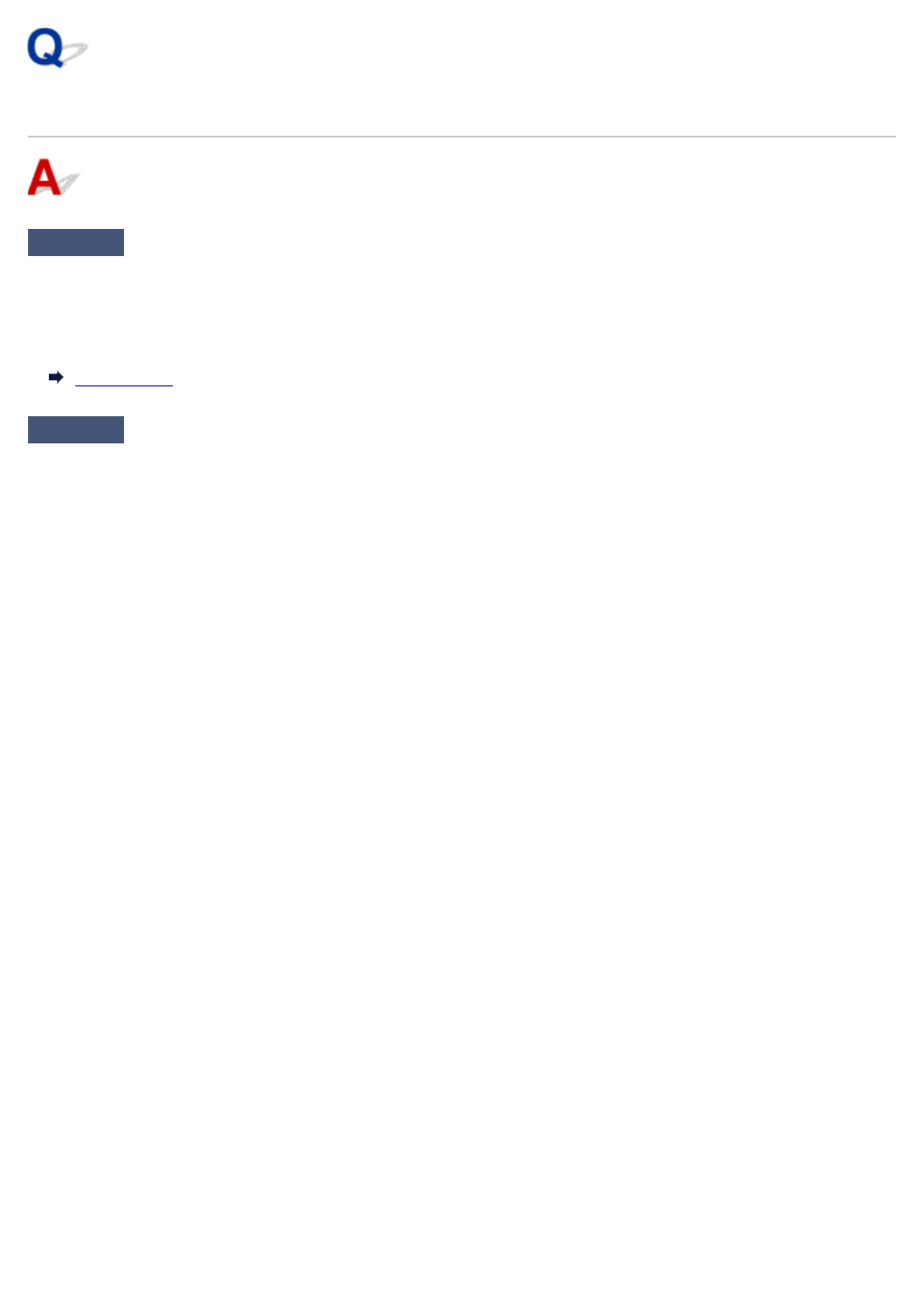
Errors Often Occur When You Receive a Fax
Check1 Check telephone line condition or connection.
If the telephone line or connection is poor, reducing the reception start speed may correct the error.
Reduce the reception start speed on RX start speed in Adv. communication settings in Advanced FAX
settings under FAX settings.
FAX settings
Check2 Is sender's fax device operating normally?
Contact the sender and ask the sender to check whether the fax device is operating normally.
1177
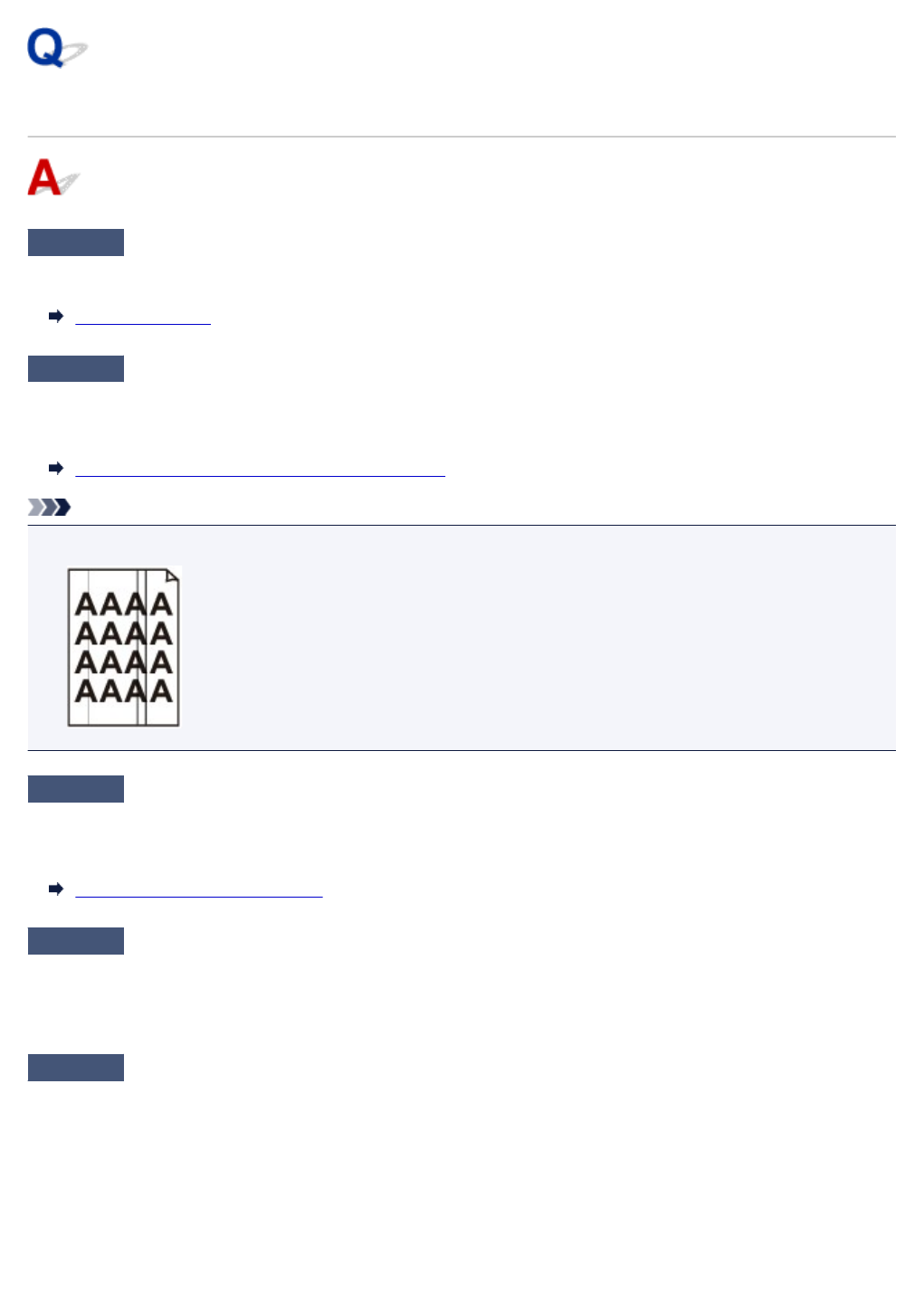
Cannot Send a Fax Clearly
Check1 Is document loaded correctly?
Remove the document, and then reload it on the platen glass or in the ADF.
Loading Originals
Check2 Is platen glass and/or inner side of document cover and/or glass of ADF dirty?
Clean the platen glass and/or the inner side of the document cover and/or the glass of ADF, and then reload the
document.
Cleaning the Platen Glass and Document Cover
Note
•If the glass of ADF is dirty, black streaks appear on the paper as shown below.
Check3 Is image quality setting or scan contrast setting suitable for document?
On the touch screen, select an image quality setting and a scan contrast setting that are suitable for the
document.
Setting Items for Sending Faxes
Check4 Is original document loaded with wrong side facing upwards or downwards?
When loading a document on the platen glass, the side to be scanned should be face down.
When loading a document in the ADF, the side to be scanned should be face up.
Check5 Are you scanning thick or curled documents?
Thick or curled documents may not be sent as good quality faxes, because of a shadow or distortion caused
when such documents are scanned.
When loading a document on the platen glass, press on the document cover with your hand when scanning.
1178
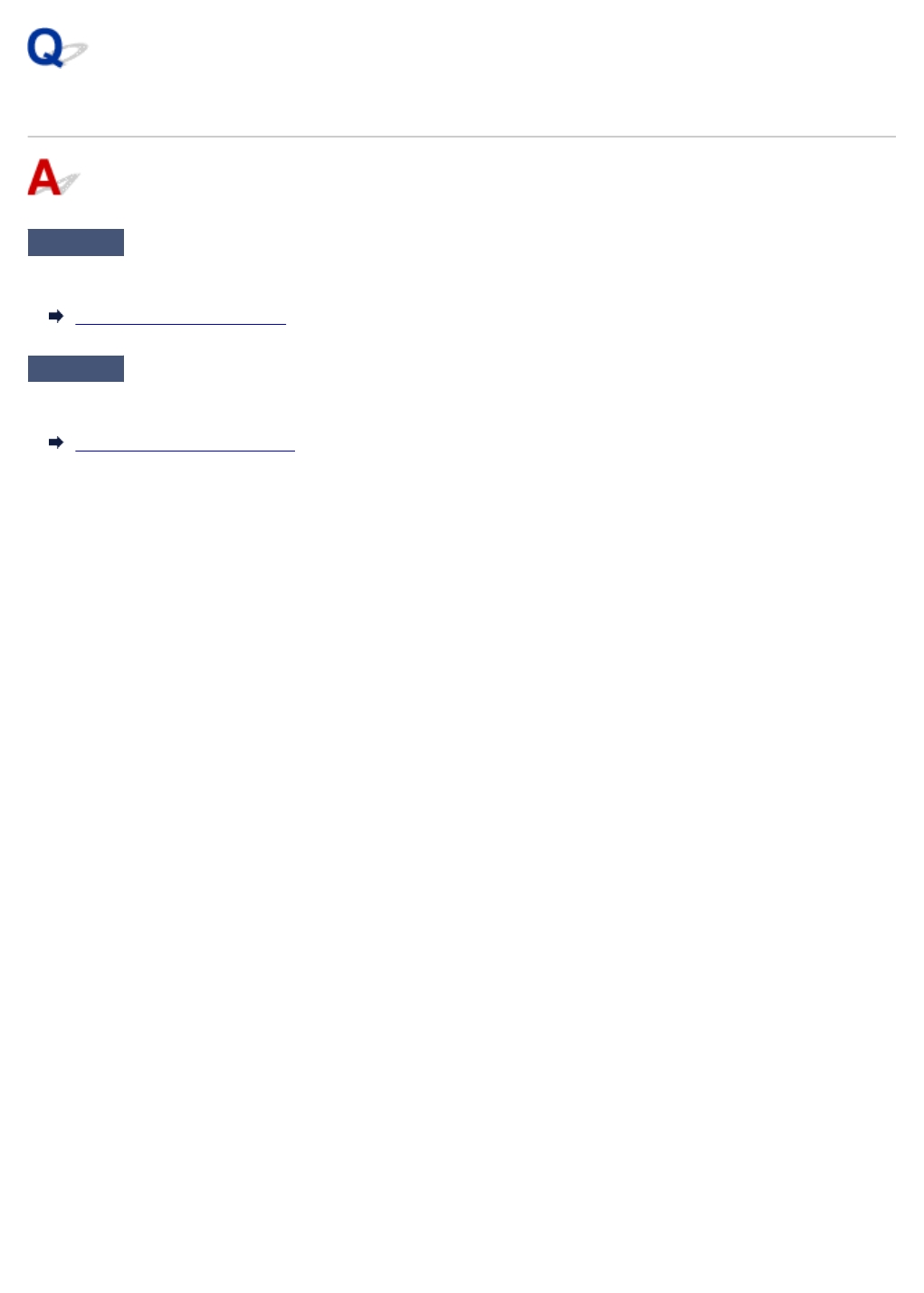
Cannot Dial
Check1 Is telephone line cable connected correctly?
Check that the telephone line cable is connected correctly.
Connecting Telephone Line
Check2 Is telephone line type of printer or external device set correctly?
Check the telephone line type setting and change it as necessary.
Setting Telephone Line Type
1180
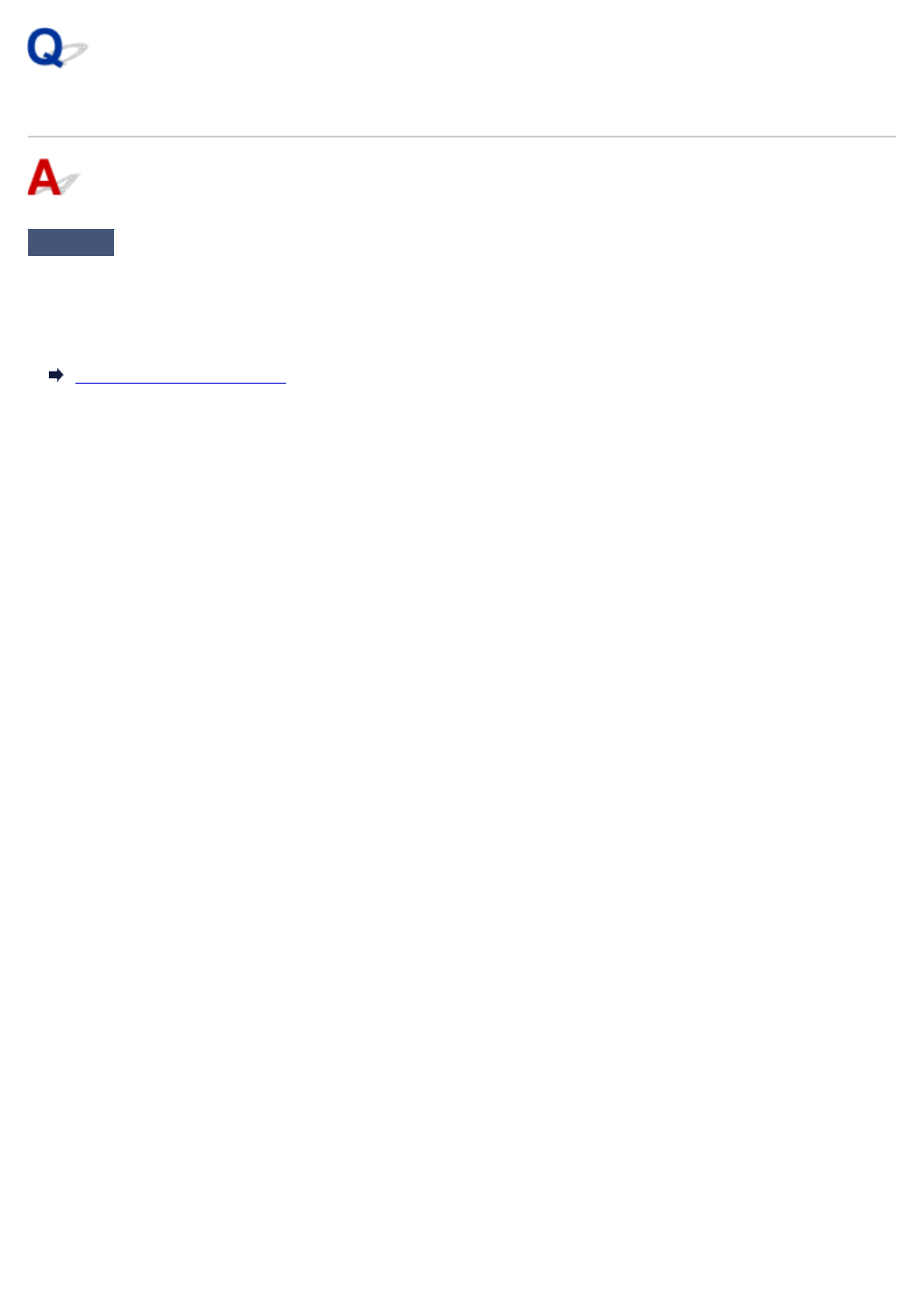
Telephone Disconnects During a Call
Check Is telephone line cable or telephone (or a peripheral device such as an external
telephone, an answering machine, or a computer modem) connected correctly?
Check that the telephone line cable and the telephone (or a peripheral device such as an external telephone, an
answering machine, or a computer modem) are connected correctly.
Connecting Telephone Line
1181
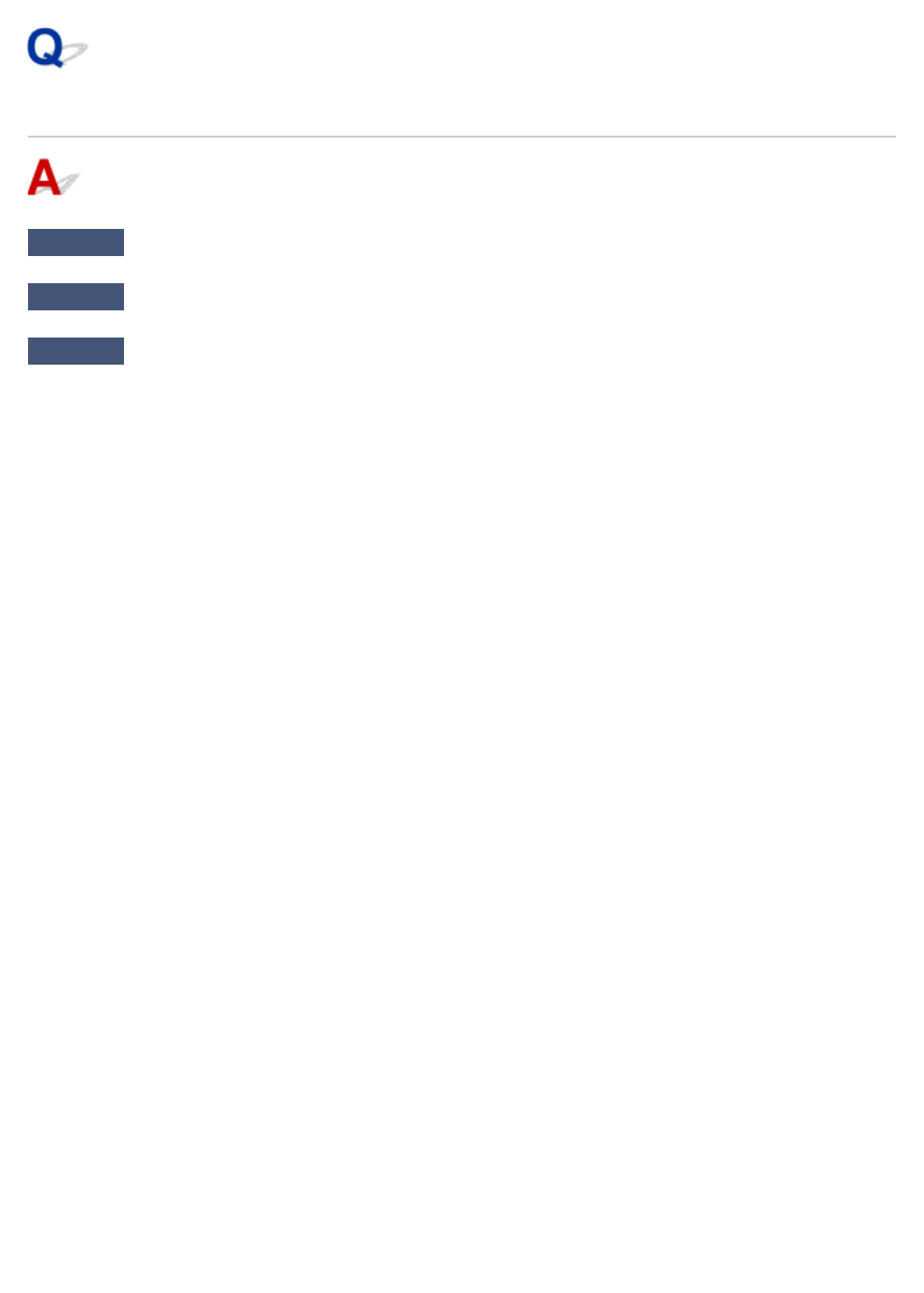
Power Does Not Come On
Check1 Press ON button.
Check2 Make sure power plug is securely connected to printer, and then turn it back on.
Check3 Unplug printer, leave it for at least 2 minutes, and then plug it back in and turn it
on again.
If this does not solve the problem, contact your nearest Canon service center to request a repair.
1183
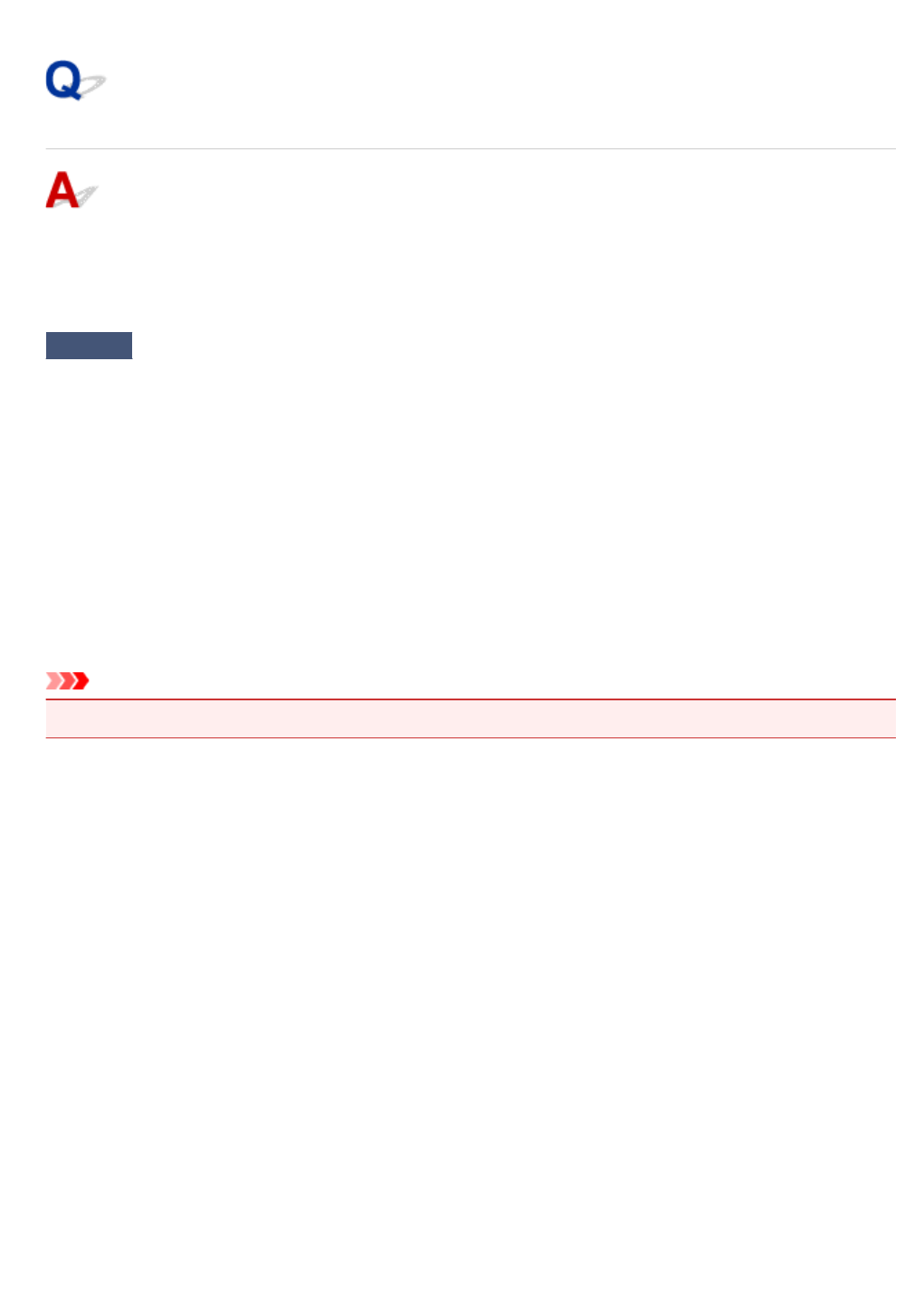
USB Connection Problems
Printing or Scanning Is Slow/Hi-Speed USB Connection Does Not
Work/"This device can perform faster" Message Appears (Windows)
If your system environment does not support Hi-Speed USB, the printer operates at the slower speed of
USB 1.1. In this case, the printer works properly but printing or scanning speed may slow down due to the
communication speed.
Check Check following to make sure your system environment supports Hi-Speed
USB connection.
• Does the USB port on your computer support Hi-Speed USB connection?
• Does the USB cable or the USB hub support Hi-Speed USB connection?
Be sure to use a certified Hi-Speed USB cable. We recommend that the USB cable be no longer than 10
feet / 3 meters or so.
•Does the operating system of your computer support Hi-Speed USB connection?
Install the latest update for your computer.
•Is the Hi-Speed USB driver working properly?
If necessary, obtain and install the latest version of the Hi-Speed USB driver for your computer.
Important
•For more information, contact the manufacturer of your computer, USB cable, or USB hub.
1184
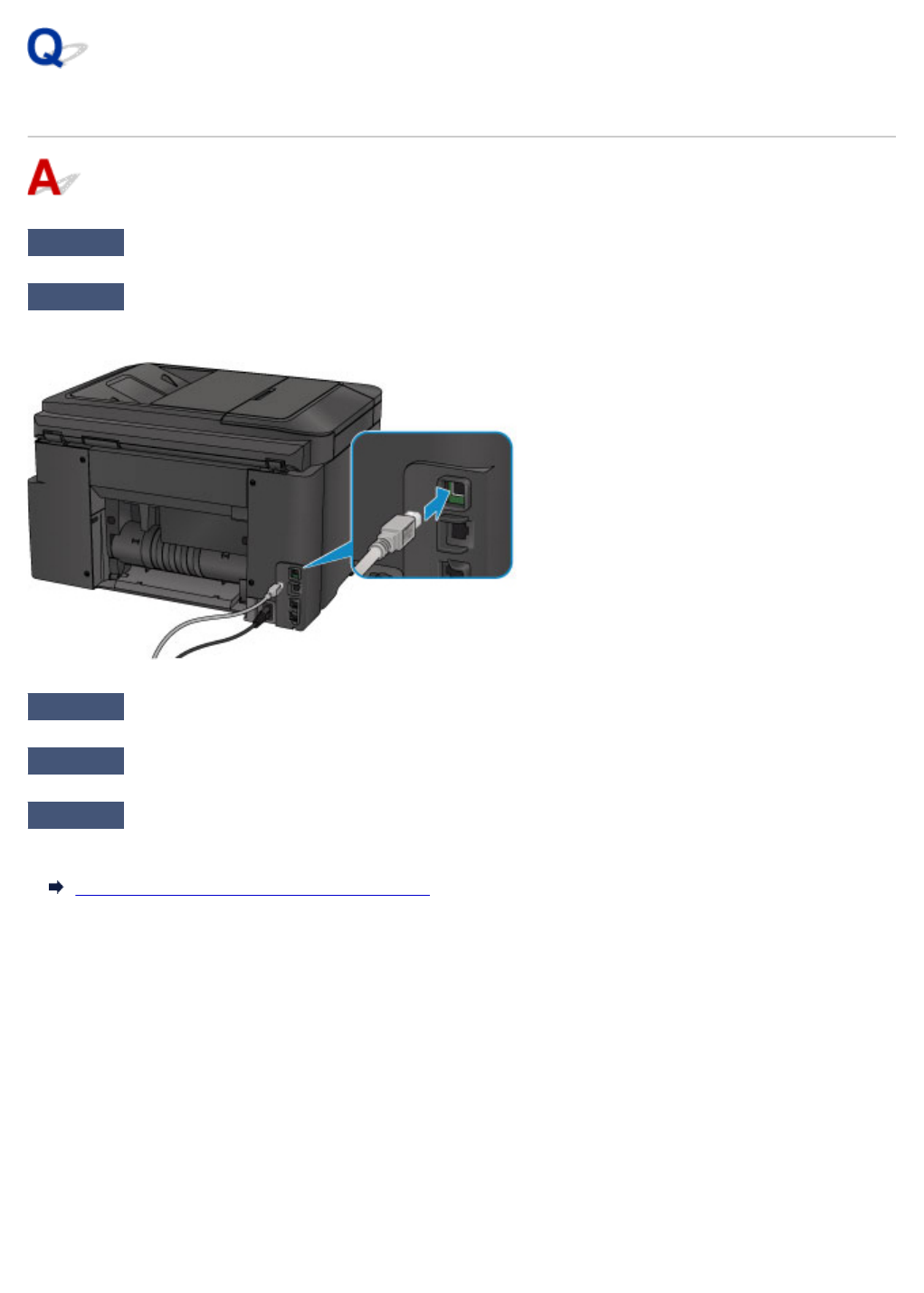
Cannot Communicate with Machine via USB
Check1 Make sure printer is turned on.
Check2 Connect USB cable properly.
As the illustration below, the USB port is at the back of the printer.
Check3 Do not start IJ Network Tool while printing. (Mac OS)
Check4 Do not print while IJ Network Tool is running. (Mac OS)
Check5 Make sure Enable bidirectional support is selected in Ports sheet of
properties dialog box of printer driver. (Windows)
How to Open the Printer Driver Setup Window
1185
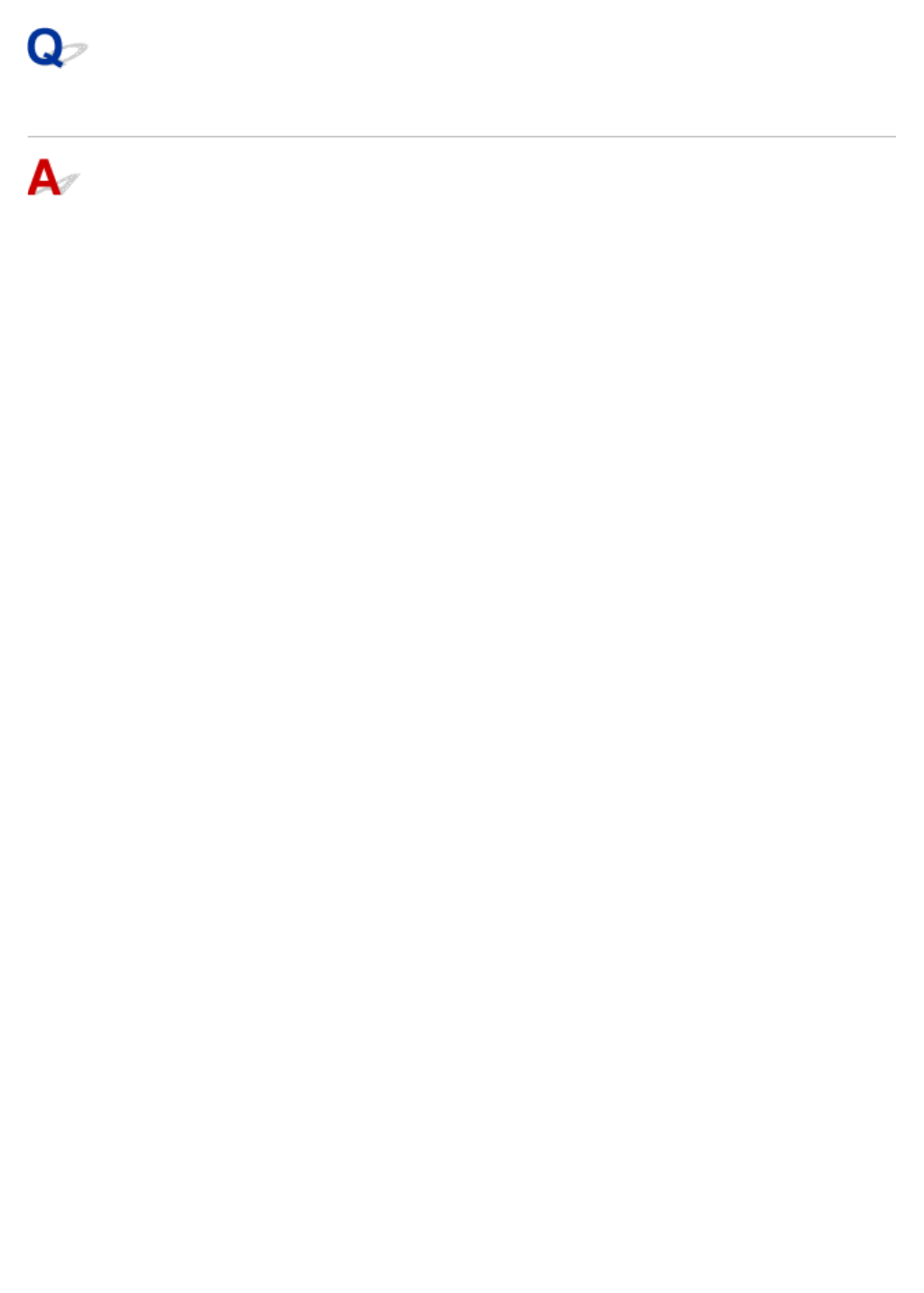
Display on Touch Screen Is Off
• If POWER lamp is off:
The printer is not on. Check that the power cord is connected and press the ON button.
• If POWER lamp is lit:
The touch screen may be in screen-saver mode. Tap the touch screen.
1186
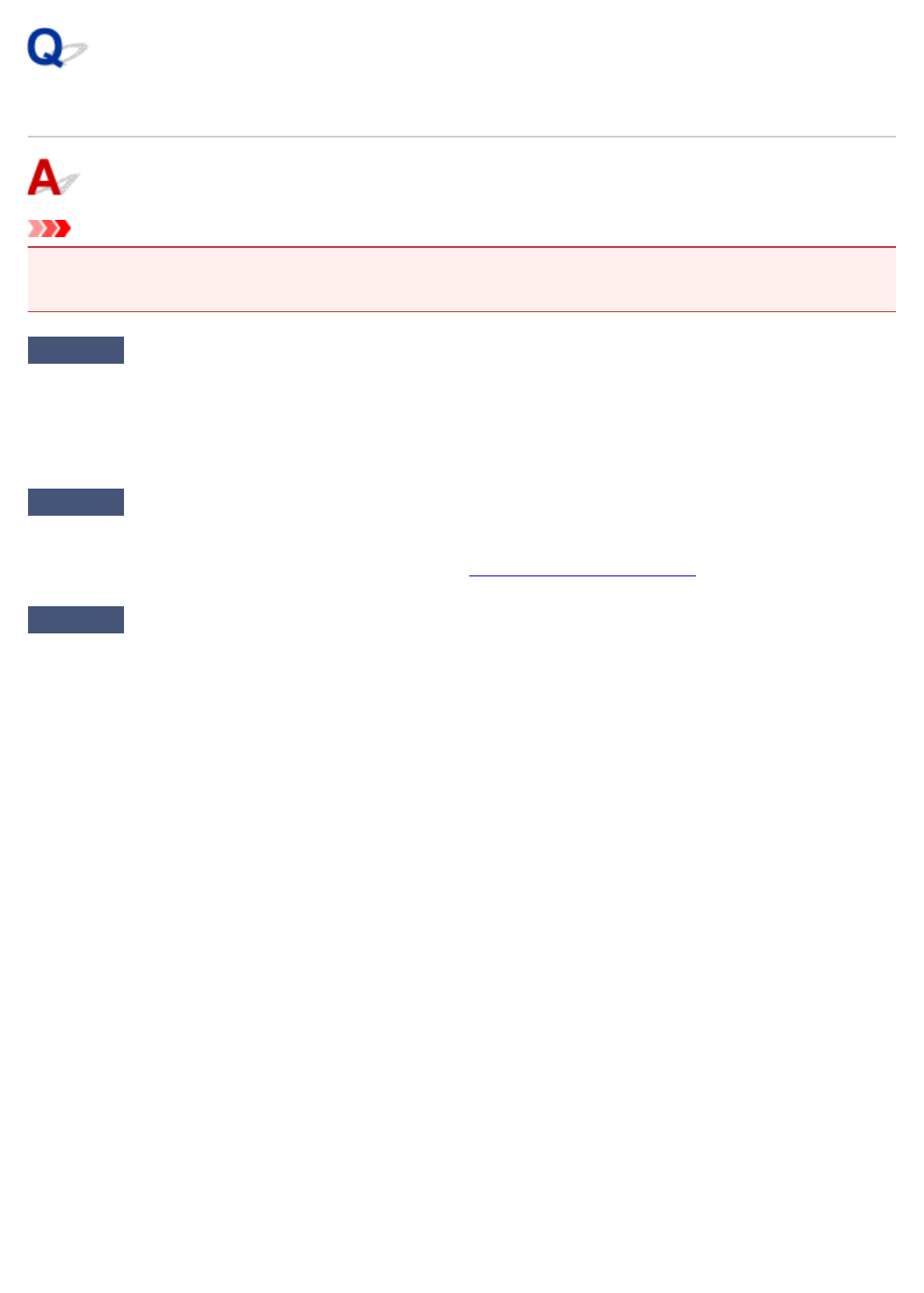
Print Head Holder Does Not Move to Replacement Position
Important
• The print head holder moves to the position for replacing only when an ink tank runs out of ink. If no ink
tanks run out of ink, the print head holder does not move even though you open the front cover.
Check1 Is POWER lamp off?
Check if the POWER lamp is lit.
The POWER lamp flashes while the printer is initializing. Wait until the POWER lamp stops flashing and remains
lit, and then open the front cover again.
Check2 Is an error message displayed on touch screen?
Close the front cover, follow the support code (error number) displayed in the error message to resolve the error,
and then reopen it. For details on resolving the error, see List of Support Code for Error.
Check3 Has front cover been left open for 60 minutes or longer?
If the front cover is left open for more than 60 minutes, the print head holder moves to the position to protect it to
prevent the print head from drying out. Close and reopen the front cover to return the print head holder to the
position for replacing.
The print head holder will not move unless the power is on. If the POWER lamp is off, close the front cover
and turn the printer on.
1188
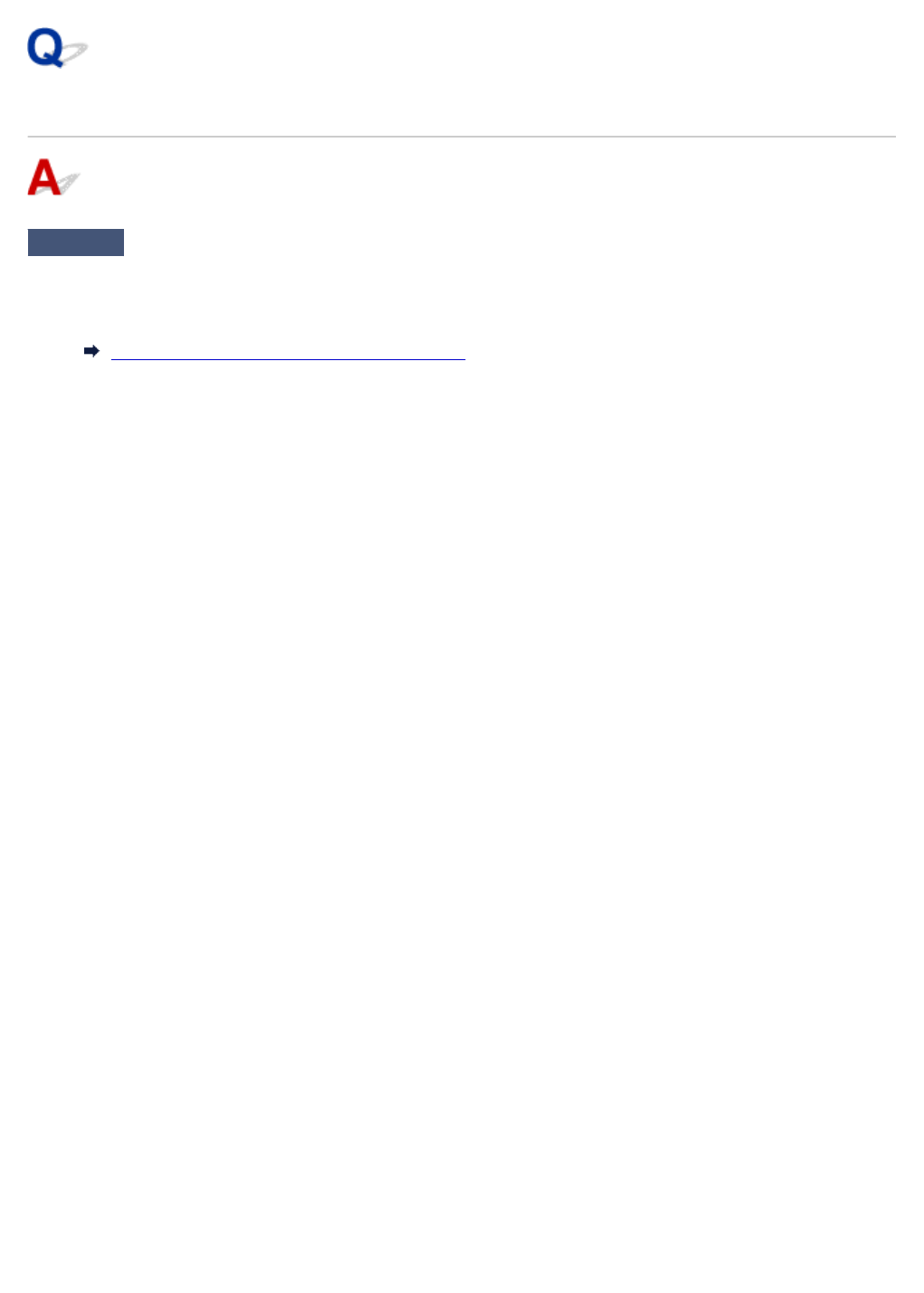
Printer Status Monitor Not Displayed (Windows)
Check1 Is printer status monitor enabled?
Make sure Enable Status Monitor is selected on the Option menu of the printer status monitor.
1. Open printer driver setup window.
How to Open the Printer Driver Setup Window
2. On Maintenance sheet, click View Printer Status.
3. Select Enable Status Monitor on Option menu if it is not selected.
1189
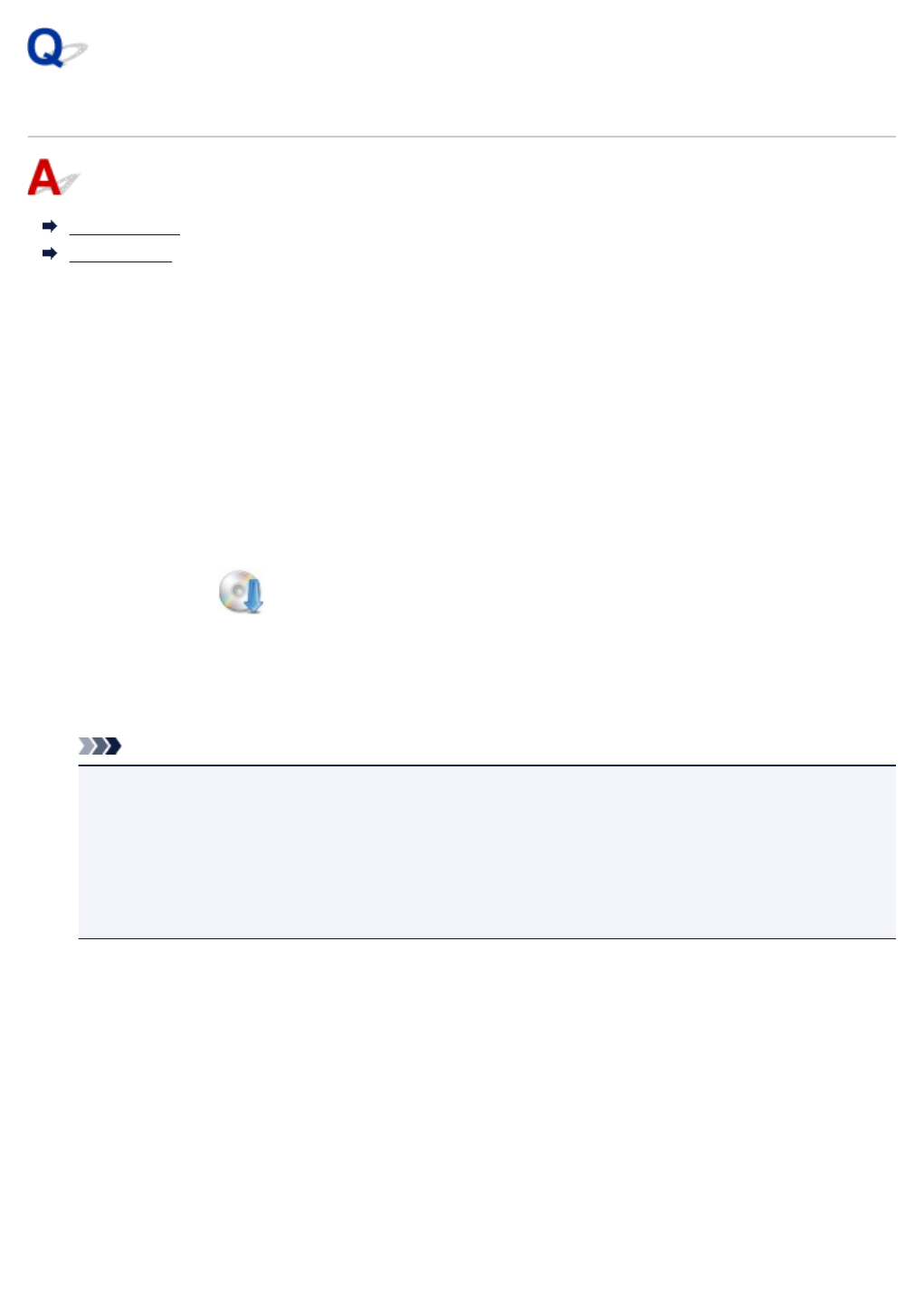
Cannot Install MP Drivers
For Windows:
For Mac OS:
For Windows:
•If installation does not start when you insert Setup CD-ROM:
Follow the instructions below to start the installation.
1. Make the following settings.
◦ In Windows 10, click Start button > File Explorer, and then click This PC from list on left.
◦ In Windows 8.1 or Windows 8, select Explorer icon in Taskbar on Desktop, and then select
This PC (Computer for Windows 8) from list on left.
◦ In Windows 7 or Windows Vista, click Start, and then click Computer.
2. Double-click CD-ROM icon in the window that appears.
If the contents of the CD-ROM appear, double-click MSETUP4.EXE.
If you cannot install the MP Drivers with the Setup CD-ROM, install them from the Canon
website.
Note
• If the CD-ROM icon does not appear, try the following:
• Remove the CD-ROM from your computer and reinsert it.
• Restart your computer.
If the icon still does not appear, try a different disc and see if it appears. If it does, there is a
problem with the Setup CD-ROM. Contact your nearest Canon service center to request a repair.
1191
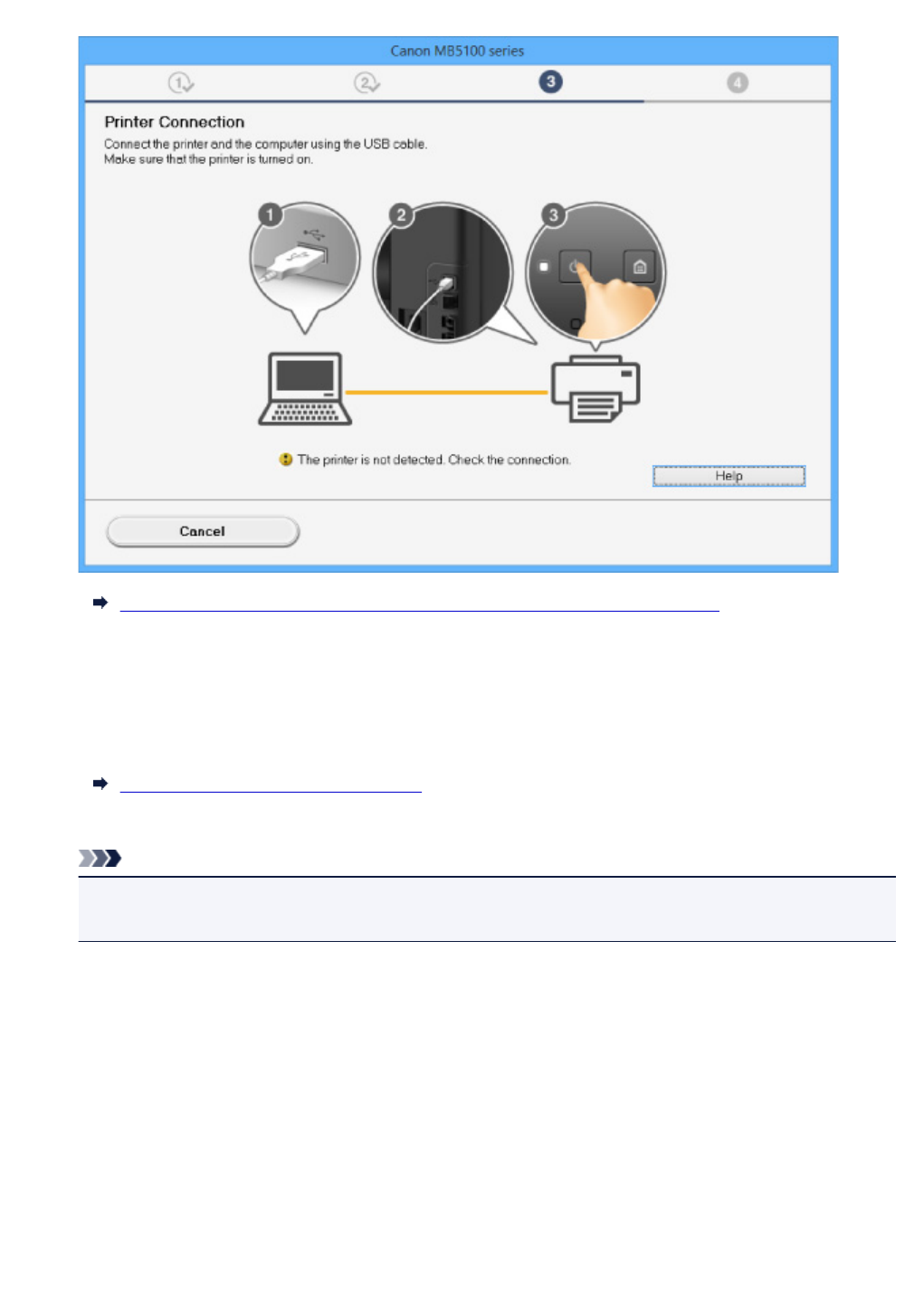
•If you cannot get past the Printer Connection screen:
Cannot Proceed beyond Printer Connection Screen/Connect Cable Screen
•Other cases:
Reinstall the MP Drivers.
If the MP Drivers were not installed correctly, uninstall the MP Drivers, restart your computer, and then
reinstall the MP Drivers.
Deleting the Unnecessary MP Drivers
Reinstall the MP Drivers with the Setup CD-ROM or install them from the Canon website.
Note
• If the installer was stopped due to a Windows error, Windows operation may be unstable, and
you may not be able to install the drivers. Restart your computer and then reinstall the drivers.
For Mac OS:
Download the driver from the support page of Canon website and reinstall it.
1192
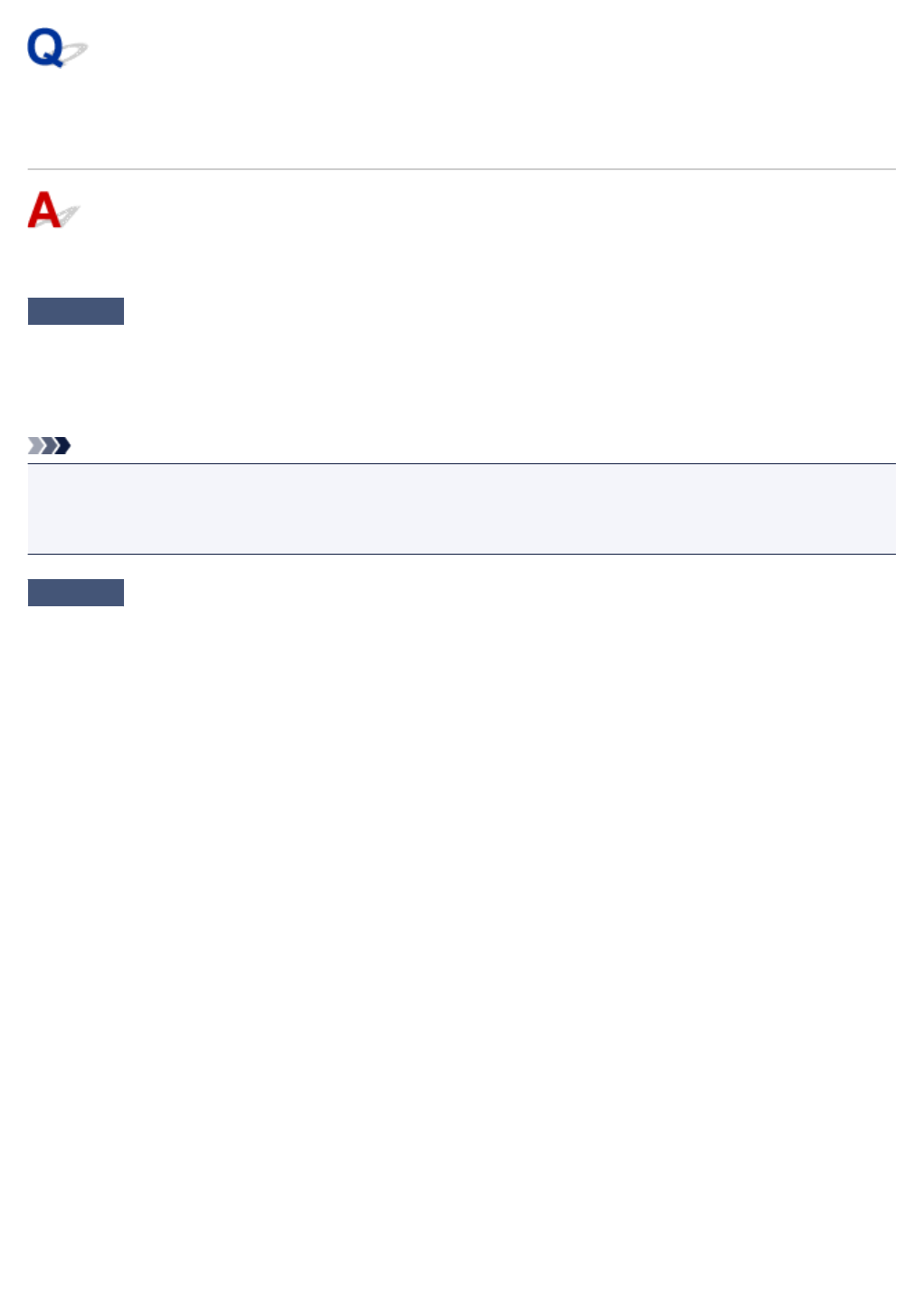
Easy-WebPrint EX Does Not Start or Easy-WebPrint EX Menu Does
Not Appear (Windows)
If Easy-WebPrint EX does not start or its menu does not appear on Internet Explorer, check the following.
Check1 Is Canon Easy-WebPrint EX displayed on Toolbars menu in Internet
Explorer's View menu?
If Canon Easy-WebPrint EX is not displayed, Easy-WebPrint EX is not installed on your computer. Install the
latest version of Easy-WebPrint EX from the Canon website.
Note
•If Easy-WebPrint EX is not installed, a message asking you to install it may appear in the notification area
on the desktop. Click the message and follow the instructions to install Easy-WebPrint EX.
•Internet access is required to install or download Easy-WebPrint EX.
Check2 Is Canon Easy-WebPrint EX selected on Toolbars menu in Internet Explorer's
View menu?
If Canon Easy-WebPrint EX is not selected, Easy-WebPrint EX is disabled. Select Canon Easy-WebPrint EX
to enable it.
1193
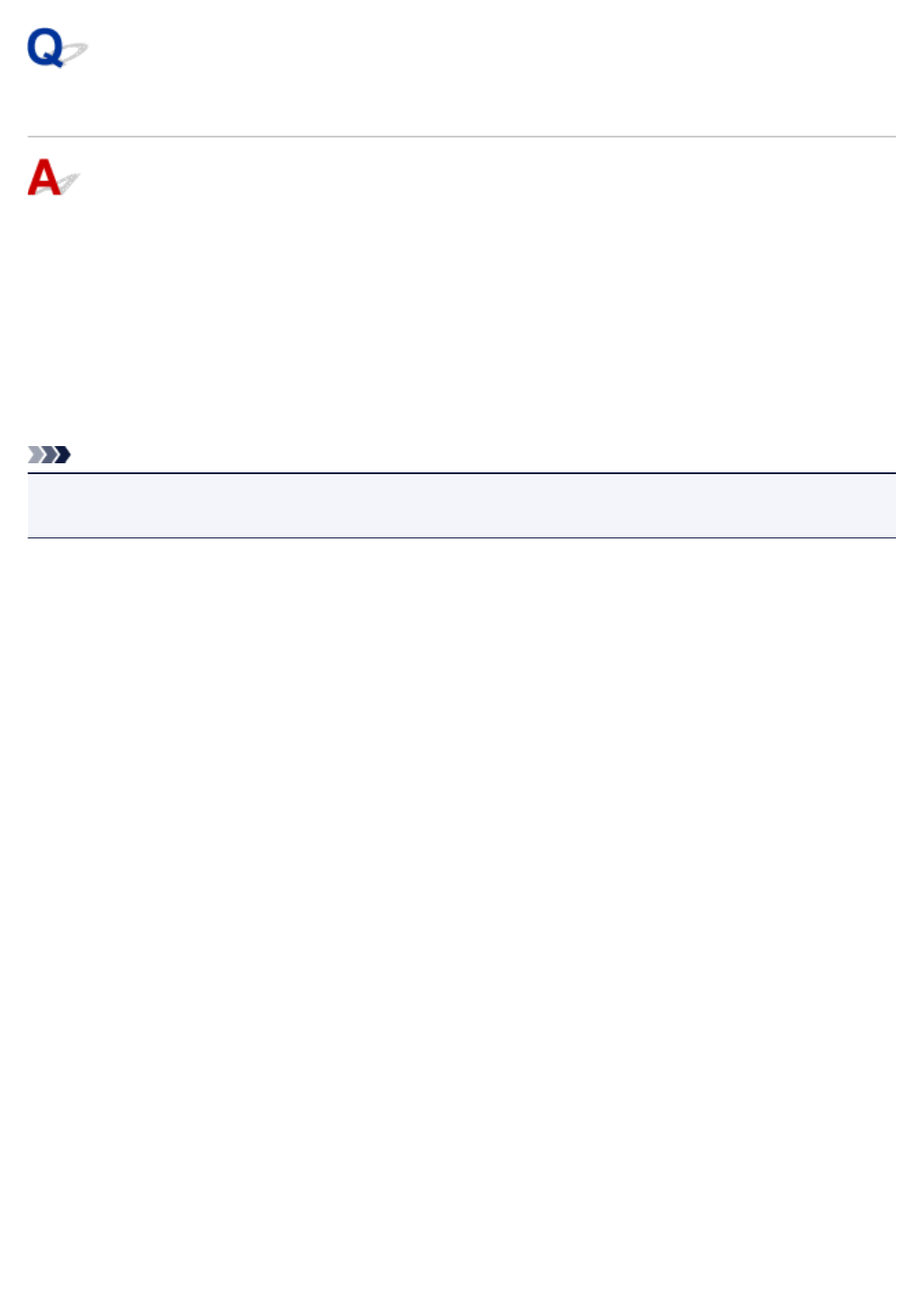
Updating MP Drivers in Network Environment (Windows)
Download the latest MP Drivers.
The latest MP Drivers for your model are available for download on the Canon website.
Uninstall the existing MP Drivers and follow the installation instructions to install the latest MP Drivers that
you downloaded. In the connection method selection screen, select Use the printer with wireless LAN
connection or Use the printer with wired LAN connection according to the connection method you use.
The printer is detected automatically in the network.
Make sure the printer was found, and install the MP Drivers following the on-screen instructions.
Note
• The network settings on the printer are not affected, so the printer can be used on the network without
redoing settings.
1194
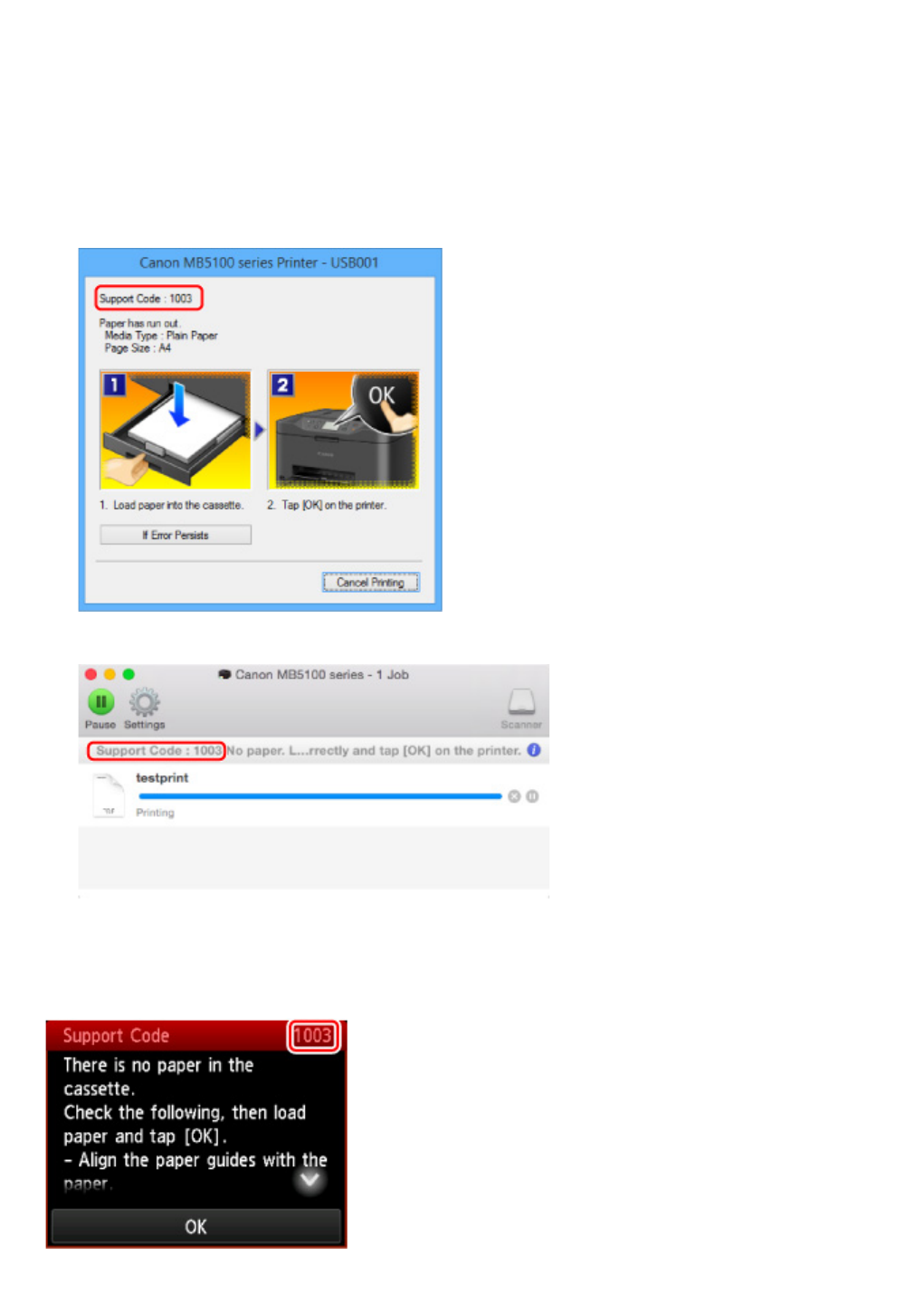
An Error Occurs
If an error occurs in printing, for example if the paper runs out or jams, a troubleshooting message appears
automatically. Take the appropriate action described in the message.
If an error occurs, a support code (error number) appears on the computer screen or the touch screen.
When a Support Code and a Message Are Displayed on Computer Screen:
•For Windows:
• For Mac OS:
* The screen differs depending on the OS you are using.
When a Support Code and a Message Are Displayed on Touch Screen:
1196
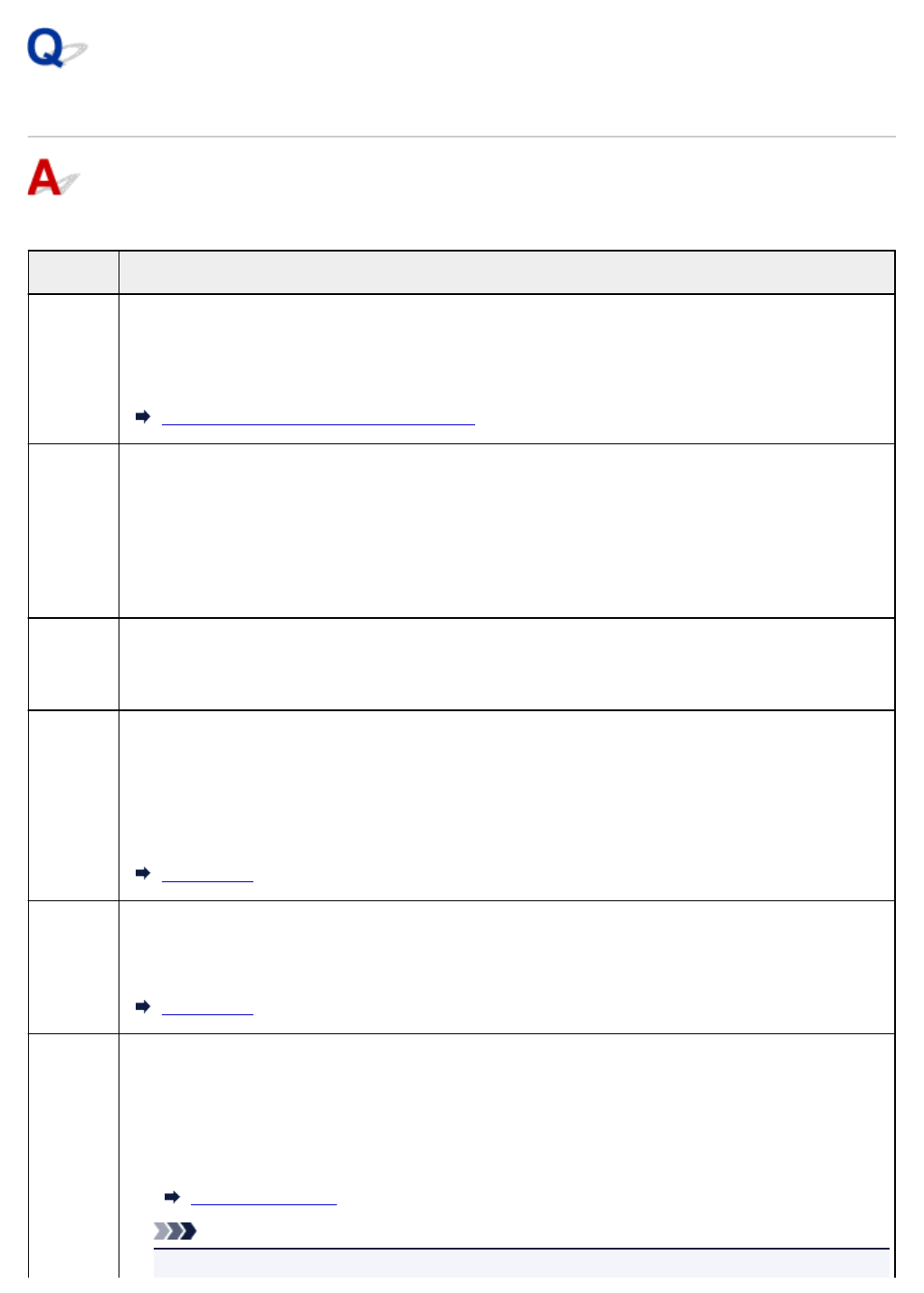
A Message for Faxing Is Displayed on Fax Standby Screen
If a message is displayed on the Fax standby screen, take the corresponding action described below.
Message Action
Auto re-
dial
The printer is waiting to redial the recipient's number because the line was busy or the recipient did not
answer when you tried to send a document. Wait for the printer to automatically redial the number. If you
want to cancel automatic redialing, wait until the printer starts dialing the number, and then press the Stop
button. You can also delete the document from printer's memory to cancel automatic redialing.
Resending Faxes (Redialing Busy Number)
This
group dial
cannot be
used.
Directory
##
* "##" represents a two-digit number.
The group dial cannot be specified in the on hook dial function.
Specify the individual recipient.
Replace
the re-
ceiver.
The handset is not placed in the handset cradle correctly.
Replace the handset correctly.
Try again
in black &
white.
The recipient's fax device is not color-compatible.
Press the Black button to resend the fax.
Alternatively, you select Send in black & white for Color transmission in Advanced FAX settings un-
der FAX settings. The printer converts color documents into black & white data if the recipient's fax de-
vice does not support color faxing.
FAX settings
Failed to
connect.
The telephone line cable with a modular plug may not be plugged in properly.
Make sure that the cable is plugged in properly, and resend the fax after a while. If you still cannot send
the fax, select OFF for Dial tone detect in Advanced FAX settings under FAX settings.
FAX settings
Received
in memo-
ry.
If the printer receives a fax under one of the following conditions, the printer will not be able to print the
received fax and will store it in the printer's memory. When the problem is resolved as described, the fax
stored in the printer's memory is printed automatically.
• The amount of remaining ink is insufficient to print a fax:
Replace the ink tank.
Replacing Ink Tanks
Note
• You can set the printer to forcibly print a received fax even if the ink has run out.
1198
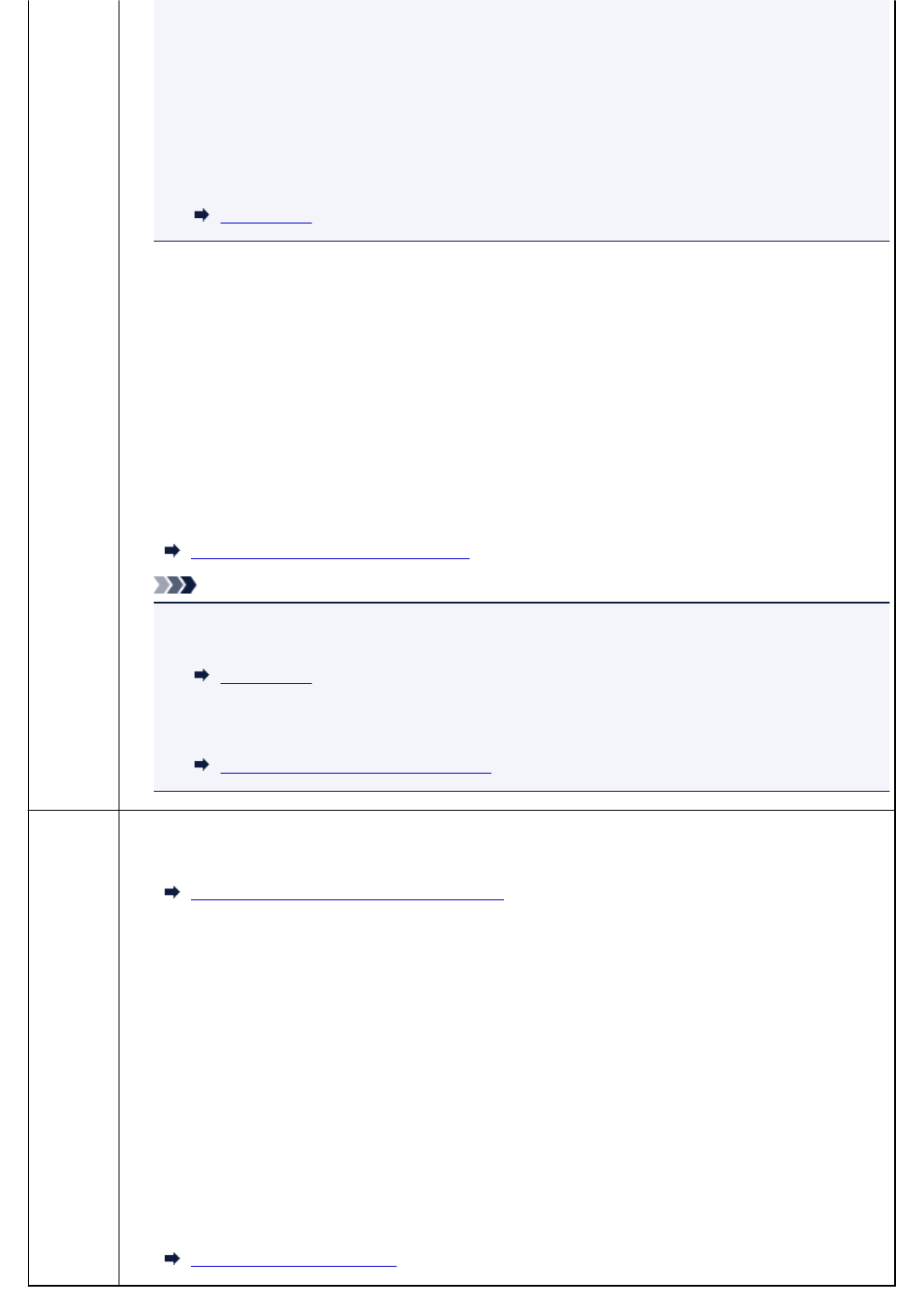
Set Print when out of ink in Auto print settings under FAX settings to Print.
However, part or all of the fax may not be printed since the ink has run out.
Also, the contents of the fax will not be stored in the printer's memory.
If the ink has already run out, we recommend that Do not print be selected for Received docu-
ments in Auto print settings under FAX settings to store the received fax in the printer's mem-
ory. After you replace the ink tank and select Print for Received documents in Auto print set-
tings, the fax stored in the printer's memory will be printed automatically.
FAX settings
• Paper has run out:
Load the paper and tap OK on the touch screen.
• A different size of paper from that specified by Page size in FAX paper settings is loaded:
Load the same size of paper as that specified by Page size, and then tap OK on the touch screen.
• You pressed the Stop button to cancel printing of a fax:
Press the HOME button and tap FAX to resume printing of the fax.
•Do not print is selected for Received documents in Auto print settings under FAX settings:
You can print the faxes stored in the printer's memory from the Memory reference screen in the Fax
menu.
Printing Document in Printer's Memory
Note
•To print the received faxes automatically, select Print for Received documents in Auto print
settings under FAX settings.
FAX settings
•If you did not print the fax stored in the printer's memory (e.g., if you did not resolve the problem
by pressing the Stop button), you can delete or print the fax stored in the printer's memory later.
Document Stored in Printer's Memory
Busy/no
signal
• The recipient's number you dialed is busy.
Try dialing again after waiting for a moment.
Resending Faxes (Redialing Busy Number)
• The fax/telephone number dialed is incorrect.
Check the fax/telephone number and dial again.
• The recipient's fax device did not respond (after all automatic redialing attempts).
Contact the recipient and have the recipient check the fax device. For an overseas call, add pauses to
the registered number.
• The recipient is not using a G3 printer.
The printer cannot send or receive documents to/from a fax device that is incompatible with the G3
standard. Contact the recipient and ask the recipient to check whether the fax device is G3 compati-
ble.
• The touch tone/rotary pulse setting on the printer is incorrect.
Set the printer to match the telephone line you are using.
Setting Telephone Line Type
1199
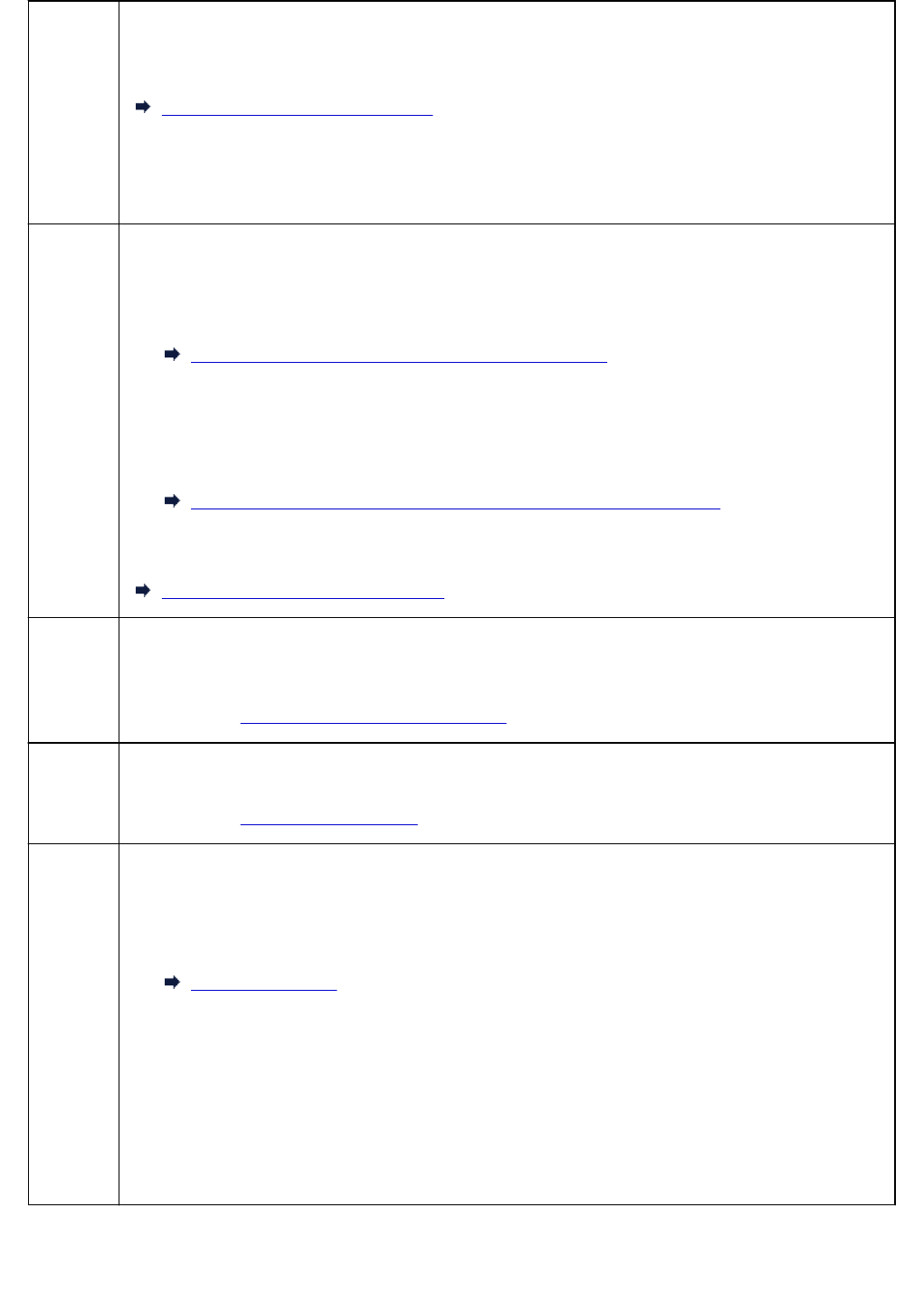
Memory
is full.
The printer's memory is full because it has sent/received too many documents, or a detailed document.
Print the faxes stored in the printer's memory or save them on the USB flash drive, and delete them from
the printer's memory.
Document Stored in Printer's Memory
When sending a fax, resend it. If this message still appears, delete the faxes stored in the printer's memo-
ry, divide the faxes for sending, and send them again.
When receiving a fax, have the sender resend the faxes.
Awaiting
document
process-
ing.
• The received faxes were not saved on the USB flash drive automatically because the USB flash drive
was not inserted or because it was not writable.
The received faxes are stored in the printer's memory. Insert the writable USB flash drive, and then
save the received faxes to the USB flash drive manually.
Saving Document in Printer's Memory to USB Flash Drive
• The received faxes were not forward to the shared folder on the computer because the printer is not
connected with the computer or because the shared folder setting is changed.
The received faxes are stored in the printer's memory. Connect the printer with the computer, and
then forward the received faxes to the shared folder on the computer manually.
Forwarding Document in Printer's Memory to Shared Folder on Computer
Delete the unnecessary fax from printer's memory after saving to the USB flash drive, forwarding to the
shared folder on the computer, or printing.
Deleting Document in Printer's Memory
FAX info
does not
match.
Transmission has been canceled because the printer could not detect the recipient's fax device informa-
tion or the information did not match the dialed number. This message is displayed when Check RX FAX
information in Security control under FAX settings is set to ON.
For details, see Preventing Mistransmission of Faxes.
Reception
rejected.
Reception has been rejected because the fax matches the fax rejection condition specified by FAX recep-
tion reject in Security control under FAX settings.
For details, see Rejecting Fax Reception.
Waiting
for report
output...
If the printer receives a fax under one of the following conditions, the printer will not be able to print the
reports. When the problem is resolved as described, the reports are printed automatically.
• The amount of remaining ink is insufficient to print a report:
Replace the ink tank.
Replacing Ink Tanks
• Paper has run out:
Load the paper and tap OK on the touch screen.
• A different size of paper from that specified by Page size in FAX paper settings is loaded:
Load the same size of paper as that specified by Page size, and then tap OK on the touch screen.
• You pressed the Stop button to cancel printing of a report:
Press the HOME button and tap FAX to resume printing of the report.
1200
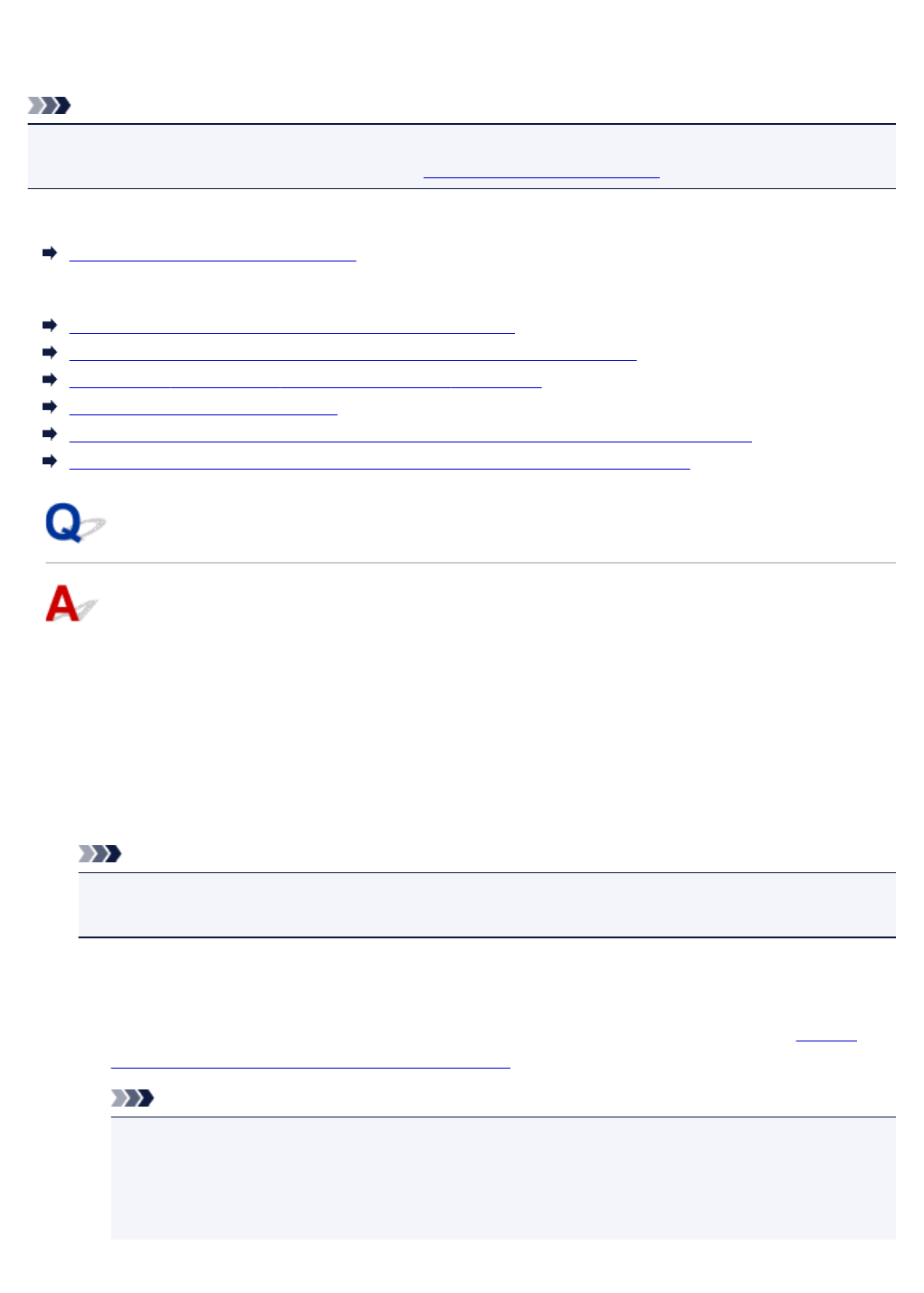
Message Appears
This section describes some of the errors and messages that may appear.
Note
• A support code (error number) is displayed on the computer or on the touch screen for some errors. For
details on errors that have support code, see List of Support Code for Error.
If a message appears on the touch screen, see below.
Message Appears on Touch Screen
If a message appears on the computer, see below.
Error Regarding Automatic Duplex Printing Is Displayed
Error Regarding Power Cord Being Unplugged Is Displayed (Windows)
Writing Error/Output Error/Communication Error (Windows)
Other Error Messages (Windows)
Inkjet Printer/Scanner/Fax Extended Survey Program Screen Is Displayed (Windows)
Inkjet Printer/Scanner/Fax Extended Survey Program Icon Appears (Mac OS)
Message Appears on Touch Screen
Check the message and take an appropriate action.
•Data of supported types are not saved.
◦ There is no image data or document saved on the USB flash drive that can be read by this printer.
◦ The printer may not recognize the file if the file name or folder path contain certain characters.
Use only alphanumeric characters.
◦ Photo data edited or processed on a computer must be printed from the computer.
Note
• When a photo which has been processed on a computer is selected, "?" is displayed on the
touch screen.
•Cannot print the specified PDF file. An error has occurred while scanning the file,
or the format is not supported, or the file is too large.
◦ Make sure the PDF file is printable from a USB flash drive. For more information, see Printing
Documents (PDF File) Saved on USB Flash Drive.
Note
• The names of the PDF files are displayed even though they cannot be printed from the USB
flash drive. We recommend that you check whether they are printable. If one of the following
conditions applies to the PDF files, they are not printable.
• The Details screen is not displayed for the PDF file you want to print.
1201
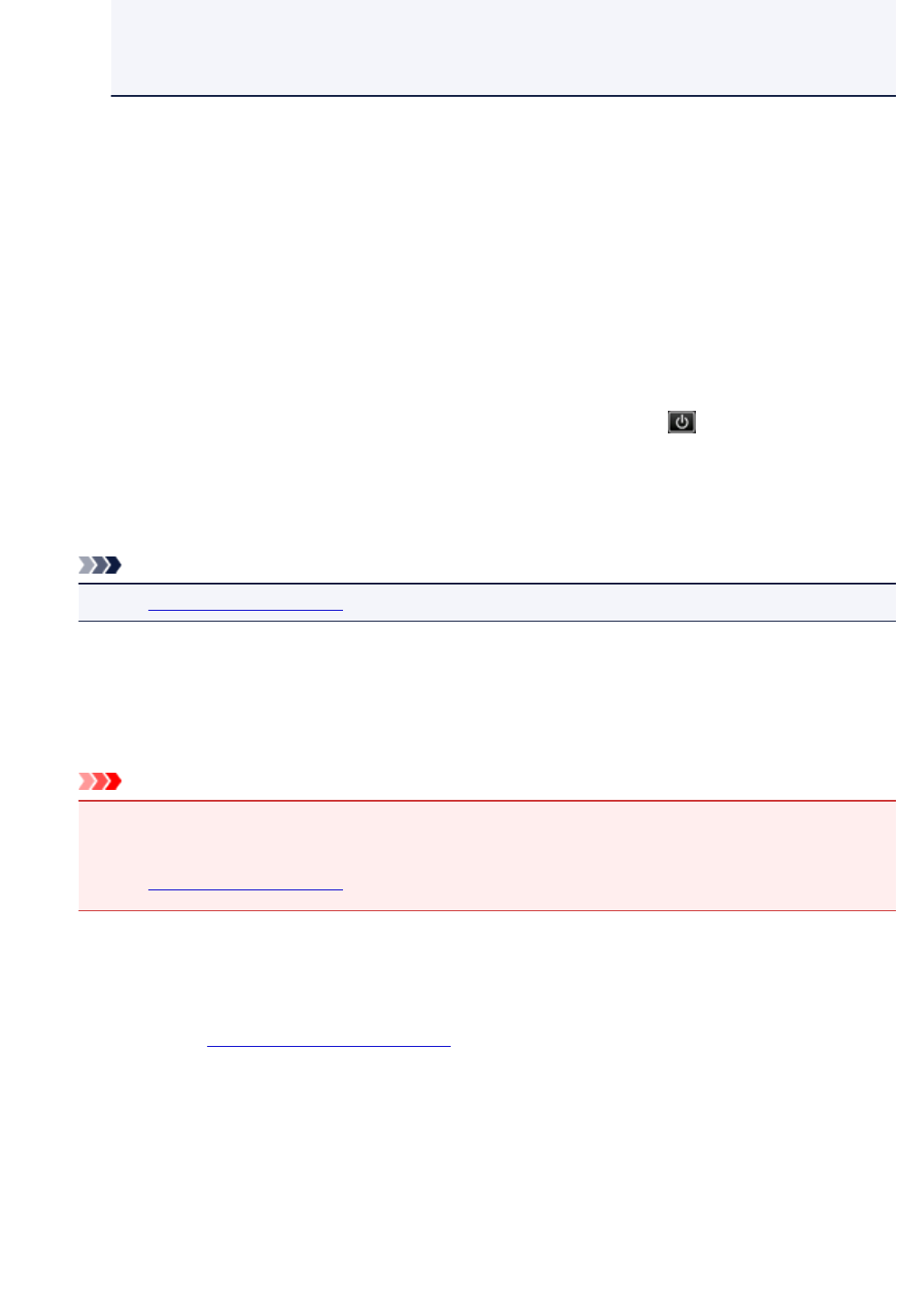
• Characters other than printer name or IJ Scan Utility are displayed on Created with on
the Details screen.
• "?" is displayed on the preview screen.
◦ Data edited or processed on a computer must be printed from the computer.
•The specified PDF file contains unprintable data. Some portions may not be
printed.
PDF file which contain lot of graphics or hi-resolution images may lose that data or stop before
printing is completed. In this case, print from the computer.
•Check the page size and tap [OK].
The size of the loaded paper is different from that specified in the paper size setting.
Load the same size of paper as that specified in the paper size setting and tap OK.
•Power was not turned off correctly the last time. Press the button when
turning power off.
The printer may have been unplugged while the power was still on.
Tap OK on the touch screen.
Note
•See Unplugging the Machine to unplug the printer correctly.
•The power cord has been unplugged and unsent/received docs in memory have
been lost.
A power failure has occurred or the power cord has been unplugged when the faxes are stored in the
printer's memory.
Important
• If a power failure occurs or the printer is unplugged, all faxes stored in the printer's memory are
deleted.
See Unplugging the Machine to unplug the printer.
Tap OK on the touch screen.
After tapping OK, the list of the faxes deleted from the printer's memory (MEMORY CLEAR REPORT)
will be printed.
For details, see Summary of Reports and Lists.
•Cannot connect to the server. Please wait a while and try again.
The printer cannot connect to the server due to a communication error.
Tap OK on the touch screen and try again after a while.
1202
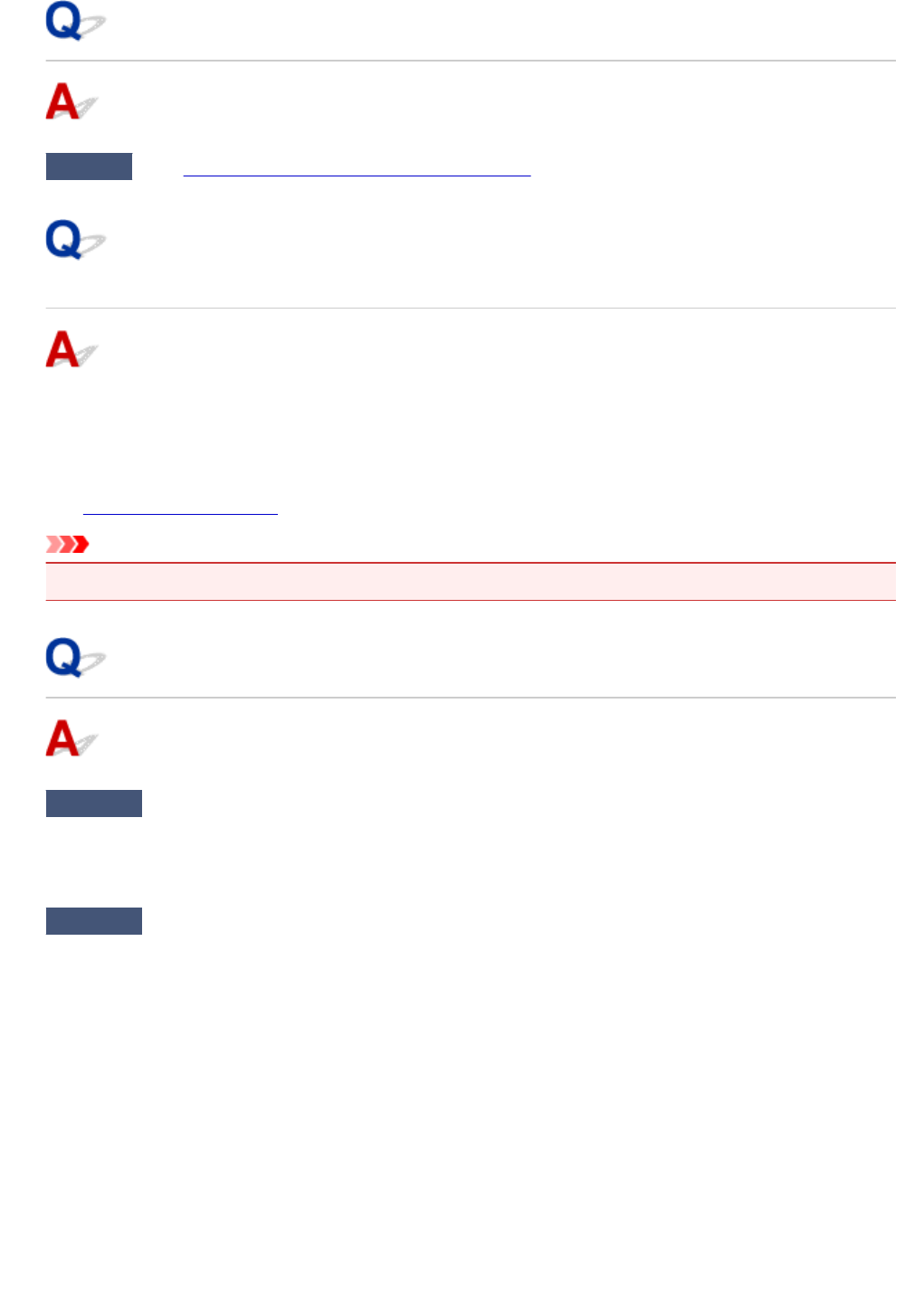
Error Regarding Automatic Duplex Printing Is Displayed
Check See Automatic Duplex Printing Problems and take the appropriate action.
Error Regarding Power Cord Being Unplugged Is Displayed
(Windows)
The printer may have been unplugged while it was on.
Check the error message that appears on the computer and click OK.
The printer starts printing.
See Unplugging the Machine for unplugging the power cord.
Important
• If the printer is unplugged, all the faxes stored in the printer's memory are deleted.
Writing Error/Output Error/Communication Error (Windows)
Check1 If POWER lamp is off, make sure printer is plugged in and turn it on.
The POWER lamp flashes while the printer is initializing. Wait until the POWER lamp stops flashing and
remains lit.
Check2 Make sure correct printer port is set in printer driver.
* In the following instructions, "XXX" signifies your printer's name.
1. Log in using an account with administrator privileges.
2. Make the following settings.
• In Windows 10, right-click Start button and select Control Panel > View devices and printers.
• In Windows 8.1 or Windows 8, select Control Panel from Settings charm on Desktop > Hardware
and Sound > Devices and Printers.
• In Windows 7, select Devices and Printers from Start menu.
• In Windows Vista, select Start menu > Control Panel > Hardware and Sound > Printers.
3. Open printer driver properties.
•In Windows 10, Windows 8.1, Windows 8, or Windows 7, right-click "Canon XXX series Printer" icon
(where "XXX" is your printer's name), and then select Printer properties.
1203
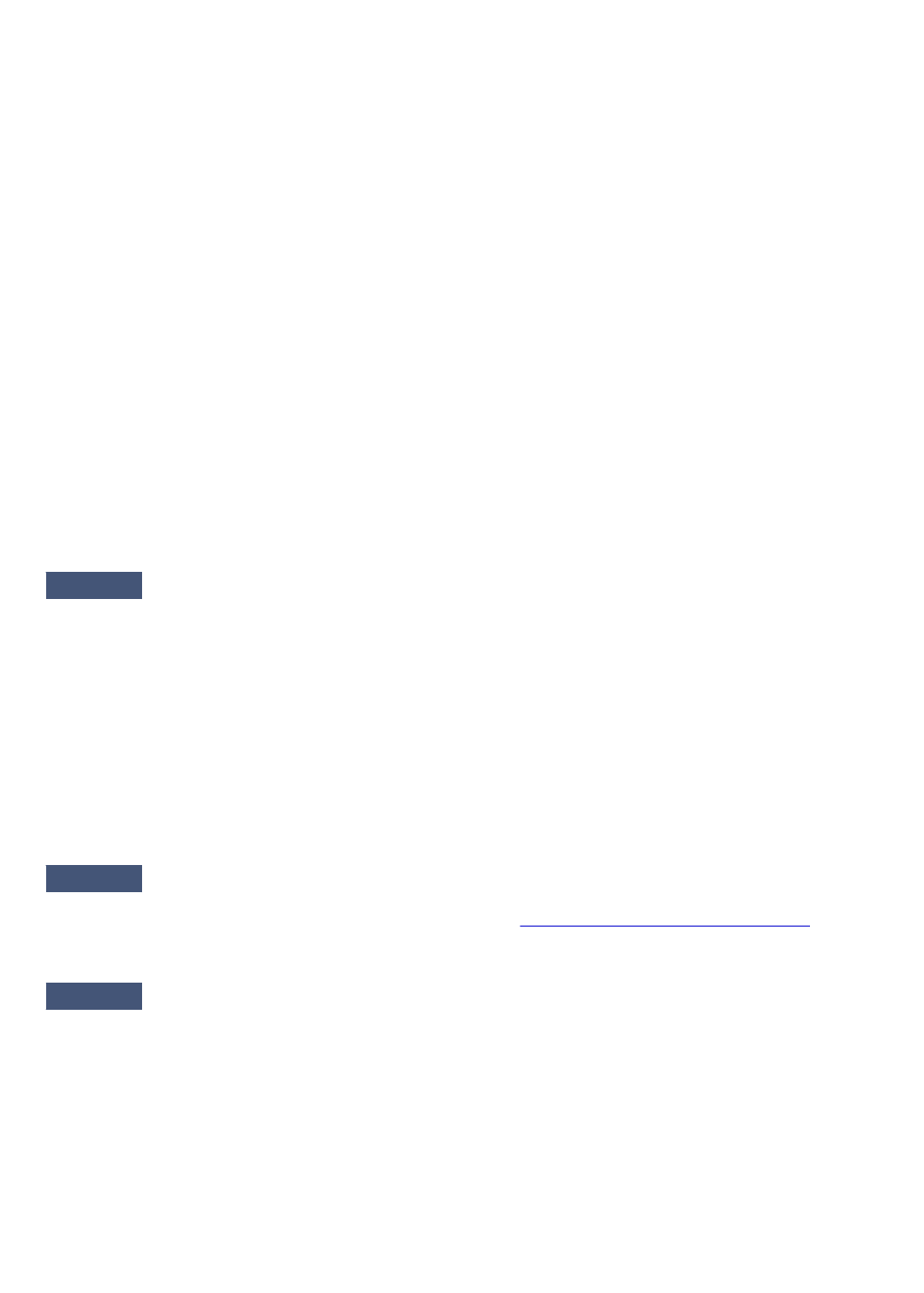
• In Windows Vista, right-click "Canon XXX series Printer" icon (where "XXX" is your printer's name),
and then select Properties.
4. Click Ports tab to check port settings.
Make sure a port named "USBnnn" (where "n" is a number) with "Canon XXX series Printer" appearing
in Printer column is selected for Print to the following port(s).
•If setting is incorrect:
Reinstall the MP Drivers from the Setup CD-ROM or the Canon website.
•If printing does not start even though the printer is connected to the computer using a USB cable and
the port named "USBnnn" is selected:
In Windows 8.1 or Windows 8, select My Printer on Start screen to start My Printer. If My Printer is
not displayed on Start screen, select Search charm, and then search for "My Printer".
Set the correct printer port on Diagnose and Repair Printer. Follow the on-screen instructions to
set the correct printer port, and then select your printer's name.
In Windows 7 or Windows Vista, click Start and select All programs, Canon Utilities, Canon My
Printer, Canon My Printer, and then select Diagnose and Repair Printer. Follow the on-screen
instructions to set the correct printer port, and then select your printer's name.
If the problem is not resolved, reinstall the MP Drivers from the Setup CD-ROM or the Canon
website.
Check3 Make sure printer is properly connected to computer.
If you are using a USB cable, make sure it is securely connected to both the printer and the computer. When
the USB cable is securely plugged in, check the following:
•If you are using a relay device such as a USB hub, disconnect it, connect the printer directly to the
computer, and retry the printing. If printing starts normally, there is a problem with the relay device.
Contact the vendor of the relay device.
•There could also be a problem with the USB cable. Replace the USB cable and retry the printing.
If you use the printer over a LAN, make sure the printer is connected to the network with a LAN cable or is
correctly set up for network use.
Check4 Make sure MP Drivers are installed correctly.
Uninstall the MP Drivers following the procedure described in Deleting the Unnecessary MP Drivers and
reinstall them from the Setup CD-ROM or the Canon website.
Check5 When printer is connected to your computer with a USB cable, check device
status from your computer.
Follow the procedure below to check the device status.
1. Open the Device Manager on your computer as shown below.
If the User Account Control screen appears, follow the on-screen instructions.
• In Windows 10, right-click Start button and select Device Manager.
• In Windows 8.1 or Windows 8, select Control Panel from Settings charm on Desktop > Hardware
and Sound > Device Manager.
• In Windows 7 or Windows Vista, click Control Panel, Hardware and Sound, and Device Manager.
1204
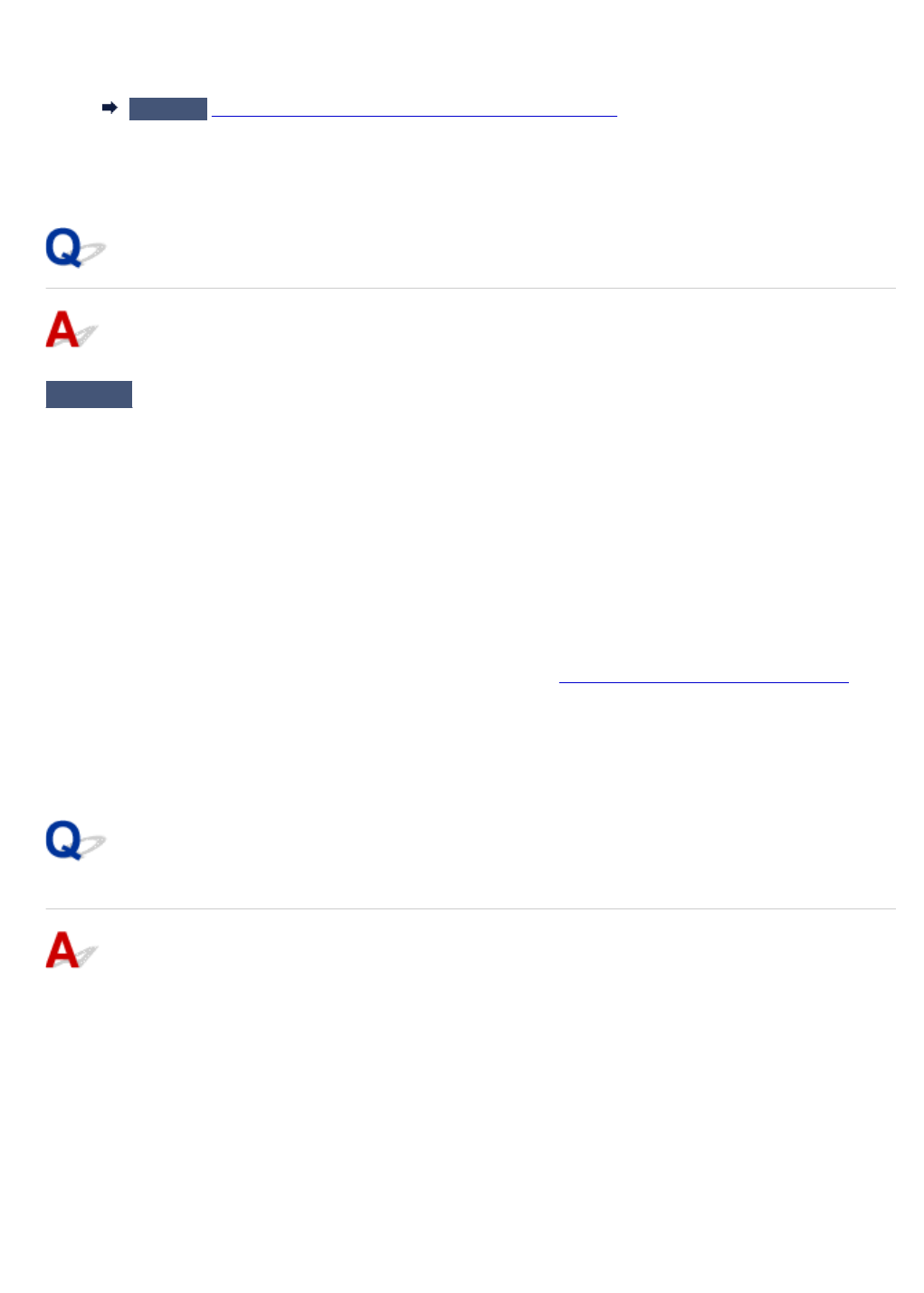
2. Double-click Universal Serial Bus controllers and USB Printing Support.
If the USB Printing Support Properties screen does not appear, make sure the printer is correctly
connected to the computer.
Check3 Make sure printer is properly connected to computer.
3. Click General tab and check for a device problem.
If a device error is shown, see Windows Help to resolve it.
Other Error Messages (Windows)
Check If an error message appears outside printer status monitor, check the
following:
•"Could not spool successfully due to insufficient disk space"
Delete any unnecessary files to increase the amount of free space on the disk.
•"Could not spool successfully due to insufficient memory"
Close other applications to increase the available memory.
If you still cannot print, restart your computer and retry the printing.
•"Printer driver could not be found"
Uninstall the MP Drivers following the procedure described in Deleting the Unnecessary MP Drivers and
reinstall them from the Setup CD-ROM or the Canon website.
•"Could not print Application name - File name"
Try printing again once the current job is complete.
Inkjet Printer/Scanner/Fax Extended Survey Program Screen Is
Displayed (Windows)
If the Inkjet Printer/Scanner/Fax Extended Survey Program is installed, a screen appears asking for
permission to send the printer and application usage information every month for about ten years.
Read the information on the screen and follow the instructions below.
1205
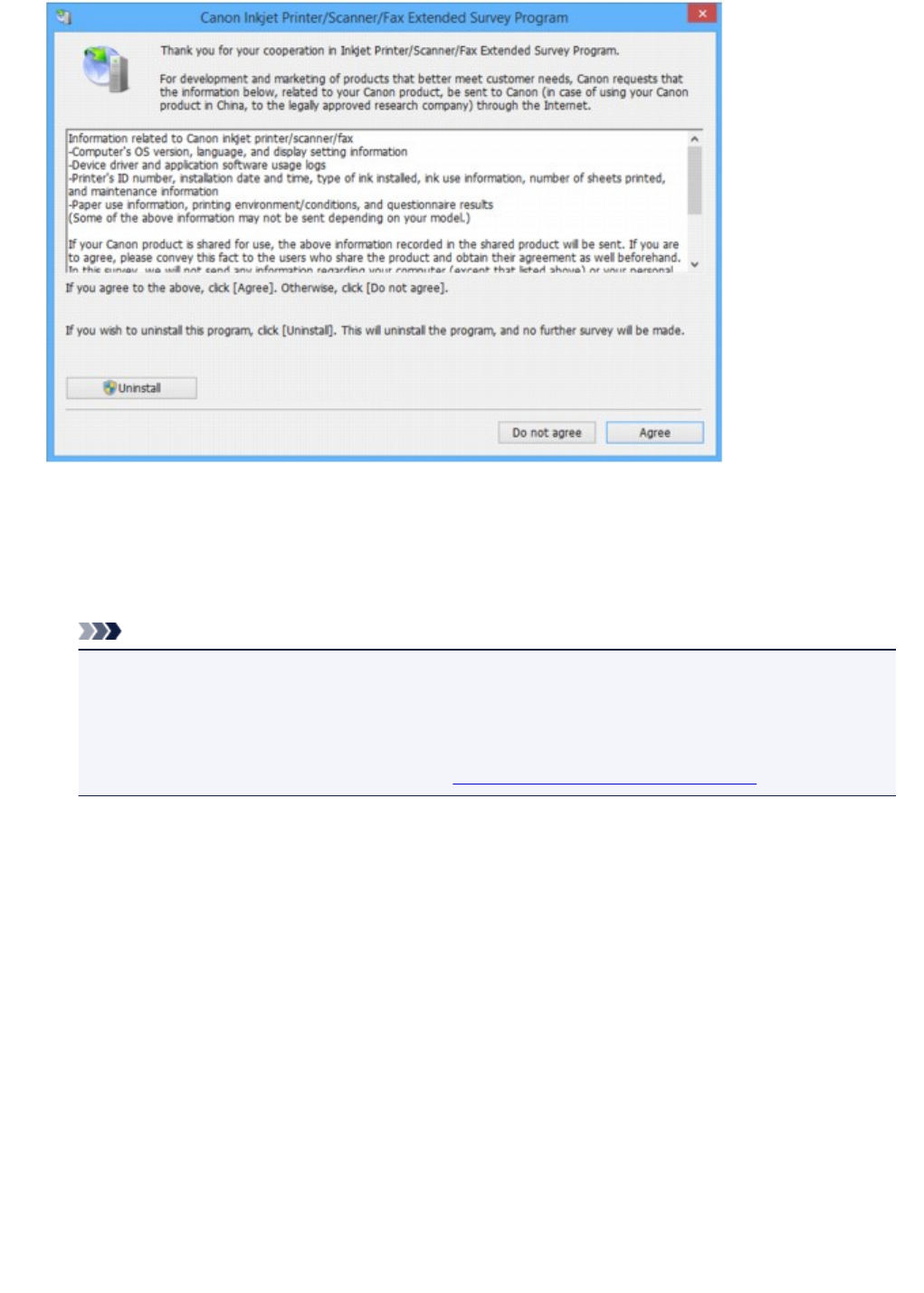
•If you agree to participate in survey program:
Click Agree and follow the on-screen instructions. The printer usage information is sent via the
Internet. Once you have completed the procedure, the information is subsequently sent automatically
and the confirmation screen does not reappear.
Note
• When the information is being sent, a warning such as an Internet security message may appear.
Make sure the program name is "IJPLMUI.exe" and allow it.
• If you clear Send automatically from the next time check box, the information will not be sent
automatically from next time and a confirmation screen will appear at the time of the next survey.
To send the information automatically, see Changing confirmation screen setting:.
•If you do not agree to participate in survey program:
Click Do not agree. The confirmation screen closes and the survey is skipped. The confirmation
screen will reappear one month later.
•To uninstall Inkjet Printer/Scanner/Fax Extended Survey Program:
To uninstall the Inkjet Printer/Scanner/Fax Extended Survey Program, click Uninstall and follow the
on-screen instructions.
•Changing confirmation screen setting:
1. Make the following settings.
◦ In Windows 10, right-click Start button and select Programs and Features.
◦ In Windows 8.1 or Windows 8, select Control Panel from Settings charm on Desktop >
Programs > Programs and Features.
◦ In Windows 7, or Windows Vista, select Start menu > Control Panel > Programs >
Programs and Features.
1206
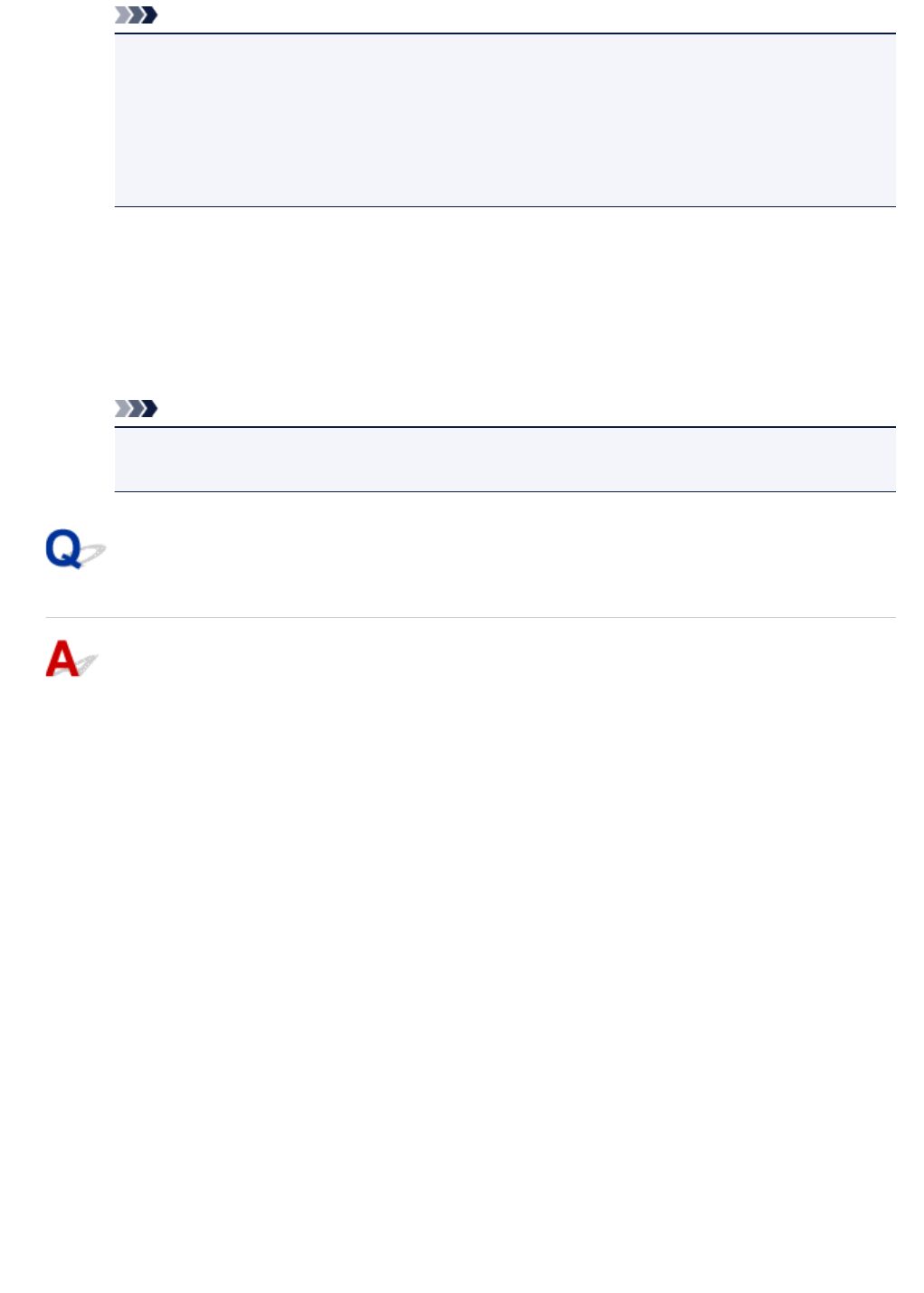
Note
• A confirmation/warning dialog box may appear when installing, uninstalling or starting up
software.
This dialog box appears when administrative rights are required to perform a task.
If you are logged in on an account with administrator privileges, follow the on-screen
instructions.
2. Select Canon Inkjet Printer/Scanner/Fax Extended Survey Program.
3. Select Change.
If you select Yes after you have followed the on-screen instructions, the confirmation screen will
appear at the time of the next survey.
If you select No, the information will be sent automatically.
Note
• If you select Uninstall, the Inkjet Printer/Scanner/Fax Extended Survey Program is
uninstalled. Follow the on-screen instructions.
Inkjet Printer/Scanner/Fax Extended Survey Program Icon Appears
(Mac OS)
If the Inkjet Printer/Scanner/Fax Extended Survey Program is installed, the printer and application
software usage information is sent every month for about ten years. The Inkjet Printer/Scanner/Fax
Extended Survey Program icon appears in the Dock when it is time to send the printer usage
information.
Click the icon, read the information that appears, and then follow the instructions below.
1207
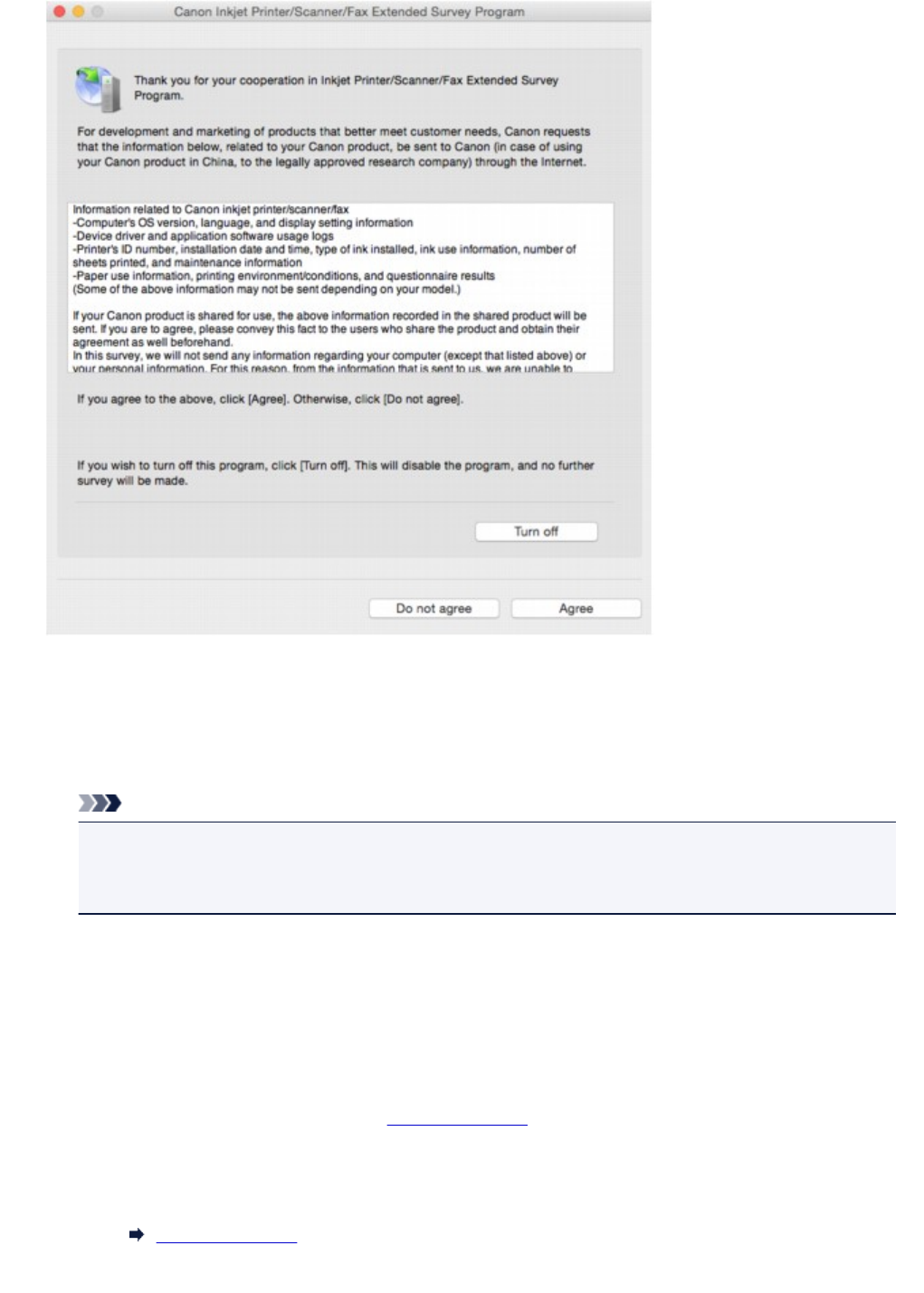
•If you agree to participate in survey program:
Click Agree and follow the on-screen instructions. The printer usage information is sent via the
Internet. Once you have completed the procedure, the information is subsequently sent automatically
and the confirmation screen does not reappear.
Note
• If you clear Send automatically from the next time check box, the information will not be sent
automatically the next time and the Inkjet Printer/Scanner/Fax Extended Survey Program icon
will appear in the dock at the time of the next survey.
•If you do not agree to participate in survey program:
Click Do not agree. The confirmation screen closes and the survey is skipped. The confirmation
screen will reappear one month later.
•To stop sending information:
Click Turn off. This stops the Inkjet Printer/Scanner/Fax Extended Survey Program, and information
is not sent. To resume the survey, see Changing setting:.
•To uninstall Inkjet Printer/Scanner/Fax Extended Survey Program:
1. Stop Inkjet Printer/Scanner/Fax Extended Survey Program.
Changing setting:
1208
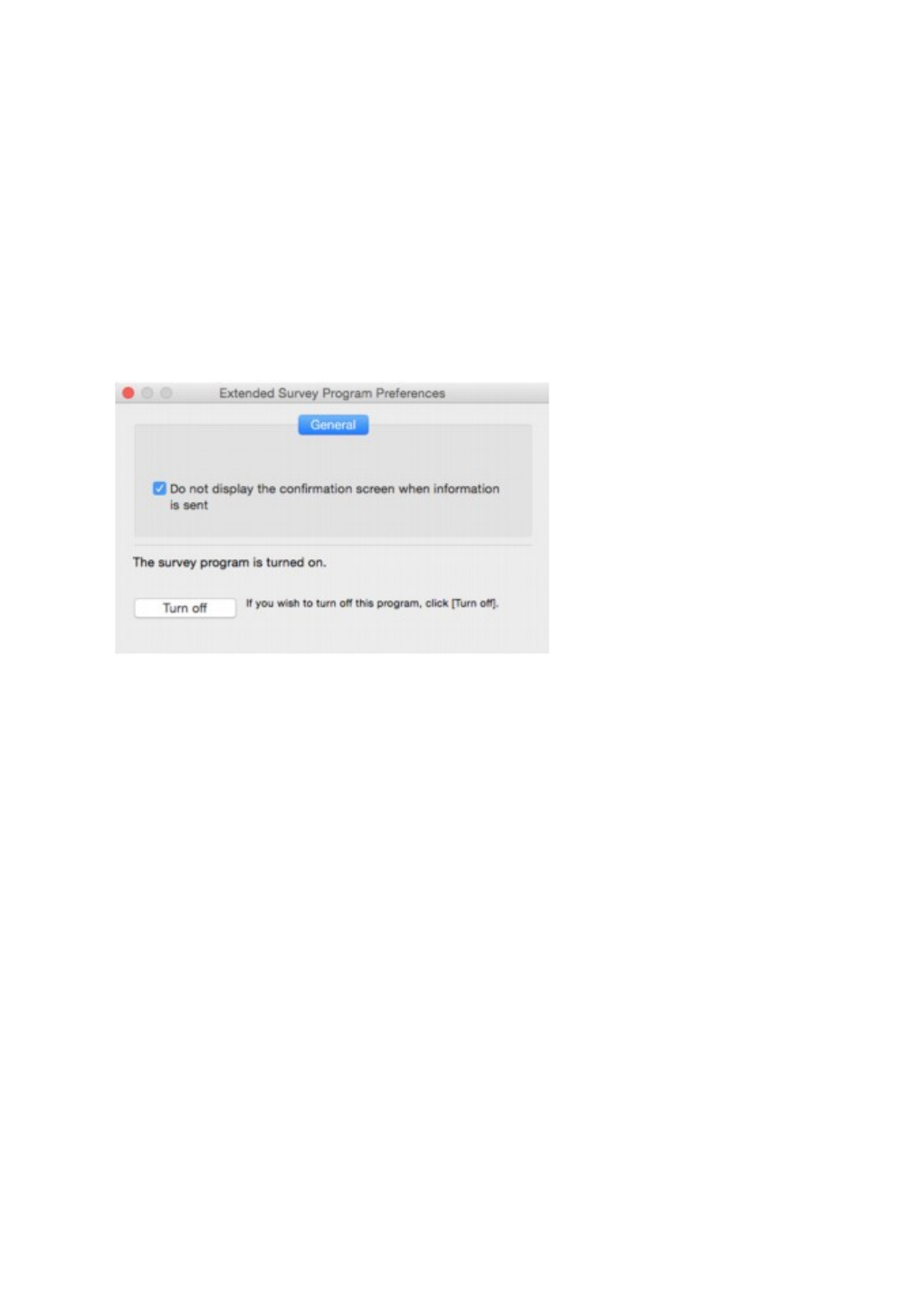
2. Select Applications from Go menu of Finder, double-click Canon Utilities folder and Inkjet
Extended Survey Program folder.
3. Move Canon Inkjet Printer/Scanner/Fax Extended Survey Program.app file to Trash.
4. Restart computer.
Empty Trash and restart your computer.
•Changing setting:
To display the confirmation screen every time the printer usage information is sent or to resume
surveying, follow the procedure below.
1. Select Applications from Go menu of Finder, double-click Canon Utilities folder and Inkjet
Extended Survey Program folder.
2. Double-click Canon Inkjet Printer/Scanner/Fax Extended Survey Program icon.
◦Do not display the confirmation screen when information is sent:
If the check box is selected, the information will be sent automatically.
If the check box is not selected, Inkjet Printer/Scanner/Fax Extended Survey Program
icon will appear in the Dock at the time of the next survey. Click the icon and follow the on-
screen instructions.
◦Turn off/Turn on button:
Click the Turn off button to stop the Inkjet Printer/Scanner/Fax Extended Survey Program.
Click the Turn on button to restart the Inkjet Printer/Scanner/Fax Extended Survey Program.
1209
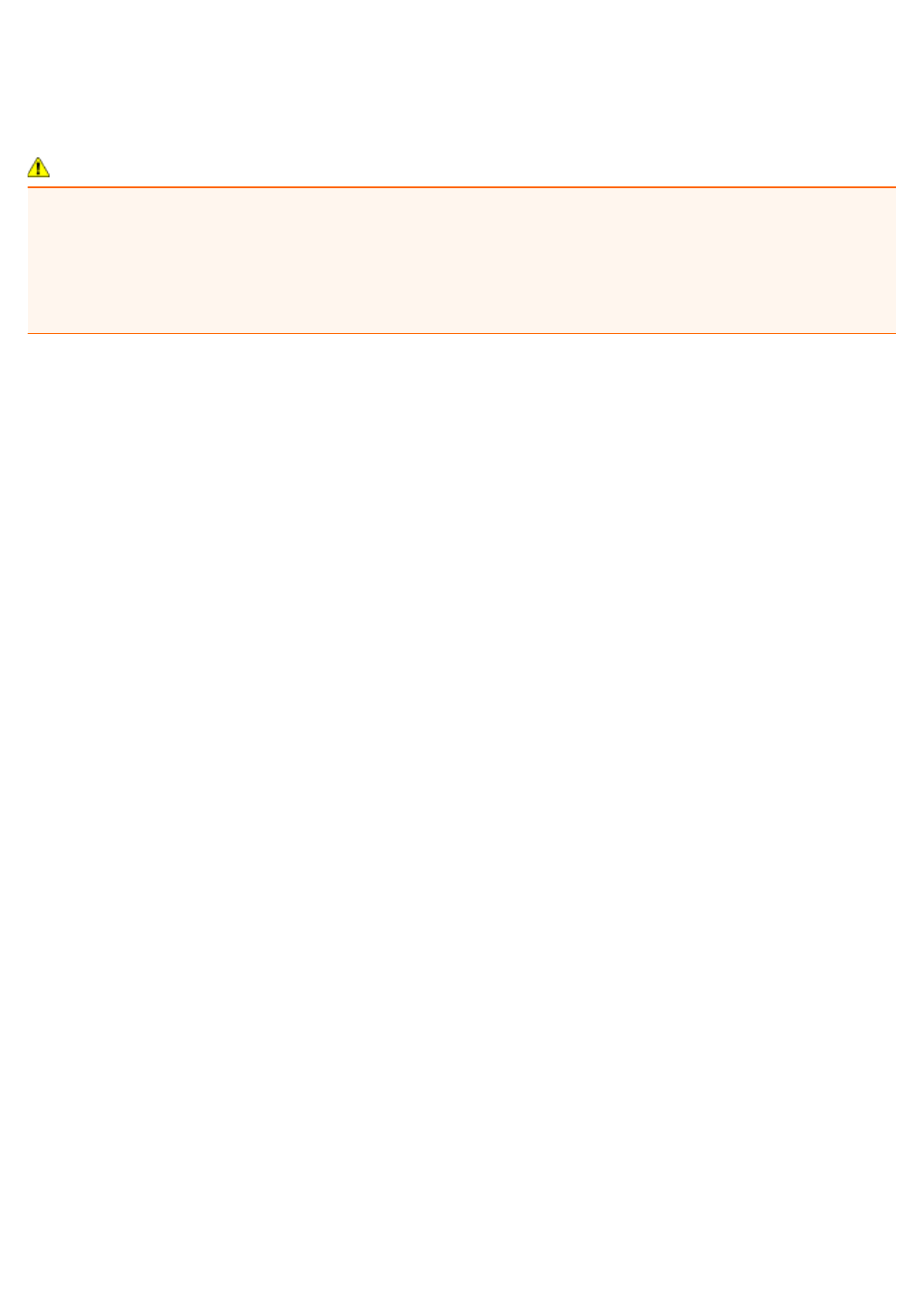
If You Cannot Solve a Problem
If there is a problem that you cannot solve following the instructions in this chapter, contact Canon through
the Support page of the Canon website or contact your nearest Canon service center.
Canon support staff are trained to be able to provide technical support to satisfy customers.
Caution
• If the printer emits any unusual sound, smoke, or odor, turn it off immediately. Unplug the printer and
contact the seller you bought it from or your nearest Canon service center. Never attempt to repair or
disassemble the printer yourself.
• If you attempt to repair or take apart the printer, your warranty will be invalidated even if it has not
expired.
Before contacting the service center, note the following:
• Product name
(Your printer's name is written on the front cover of the setup manual.)
• Serial number (see setup manual)
• Details of problem
• What you tried to solve the problem, and what happened
1210
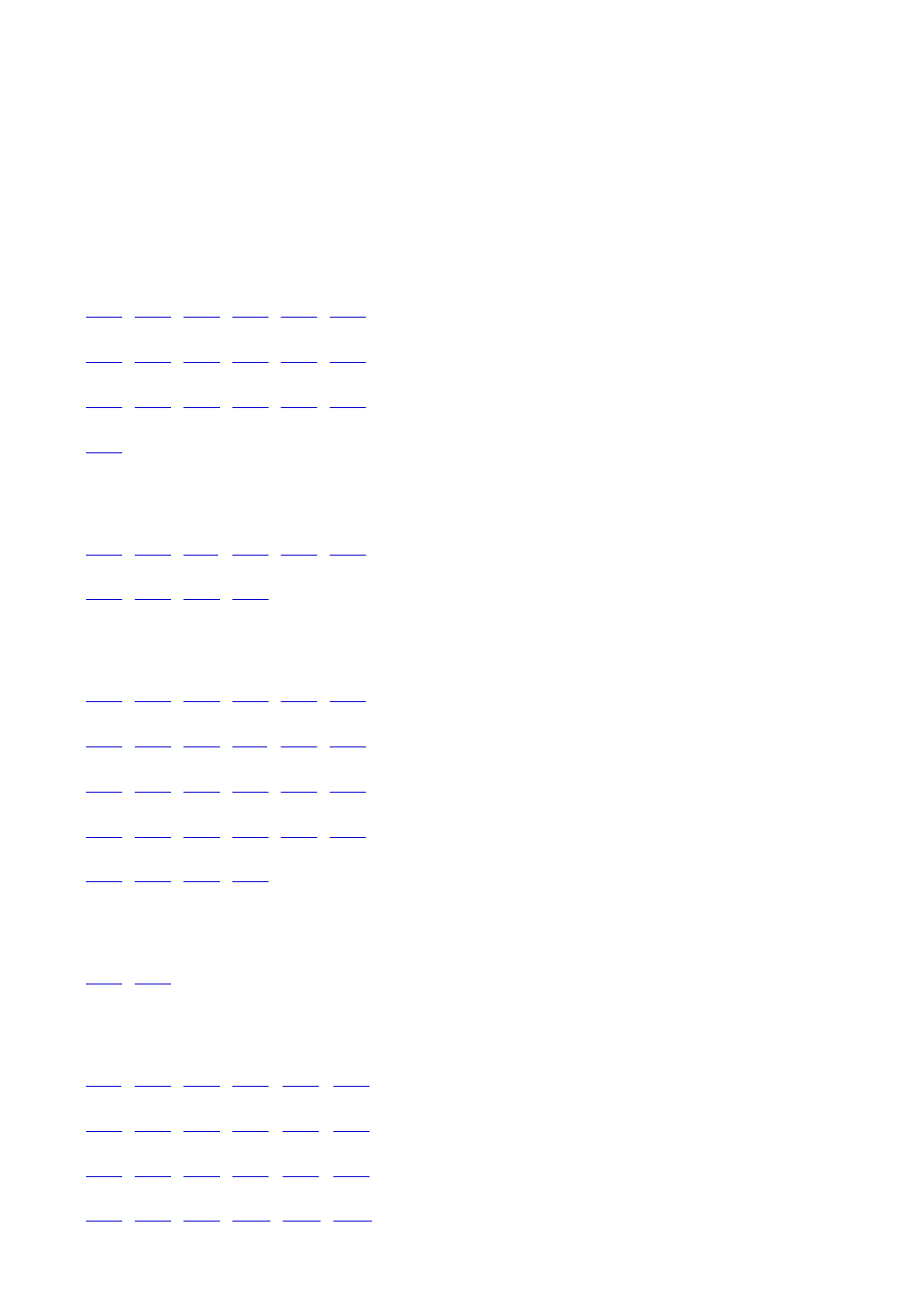
List of Support Code for Error
Support code appears on the touch screen and your computer screen when errors occur.
A "support code" is an error number, and appears along with an error message.
When an error occurs, check the support code displayed on the touch screen and computer screen and take
the appropriate action in response.
Support Code Appears on Touch Screen and Computer Screen
•1000 to 1ZZZ
1003 1200 1300 1303 1309 1310
1313 1314 1319 1575 1600 1660
1688 1700 1701 1754 1755 1871
1890
•2000 to 2ZZZ
2001 2002 2110 2120 2500 2700
2801 2802 2803 2805
•3000 to 3ZZZ
3401 3402 3403 3404 3405 3406
3407 3408 3410 3411 3412 3413
3414 3415 3416 3417 3418 3419
3420 3421 3422 3423 3424 3425
3434 3435 3436 3437
•4000 to 4ZZZ
4100 4103
•5000 to 5ZZZ
5011 5012 5040 5050 5051 5100
5102 5103 5104 5105 5200 5203
5205 5204 5206 5207 5208 5209
5400 5500 5501 5B00 5B01 5C01
1211
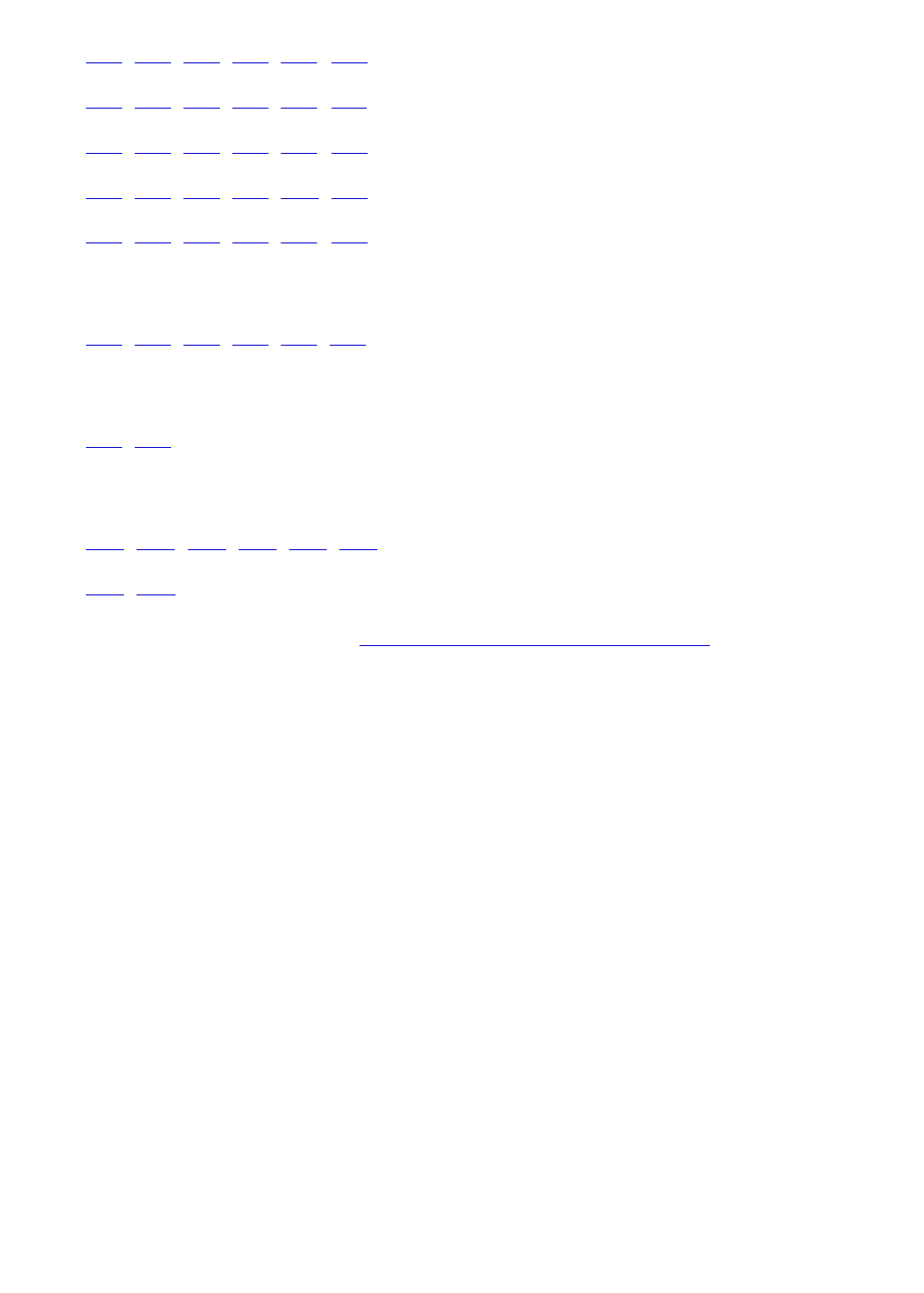
•6000 to 6ZZZ
6000 6500 6502 6700 6701 6800
6801 6900 6901 6902 6910 6911
6920 6921 6930 6931 6932 6933
6936 6937 6938 6939 693A 6940
6941 6942 6943 6944 6945 6946
•7000 to 7ZZZ
7100 7200 7201 7203 7204 7205
•9000 to 9ZZZ
9000 9500
•A000 to ZZZZ
B202 B203 B204 B205 B502 B503
B504 C000
For paper jam support codes, see also List of Support Code for Error (Paper Jams).
1212
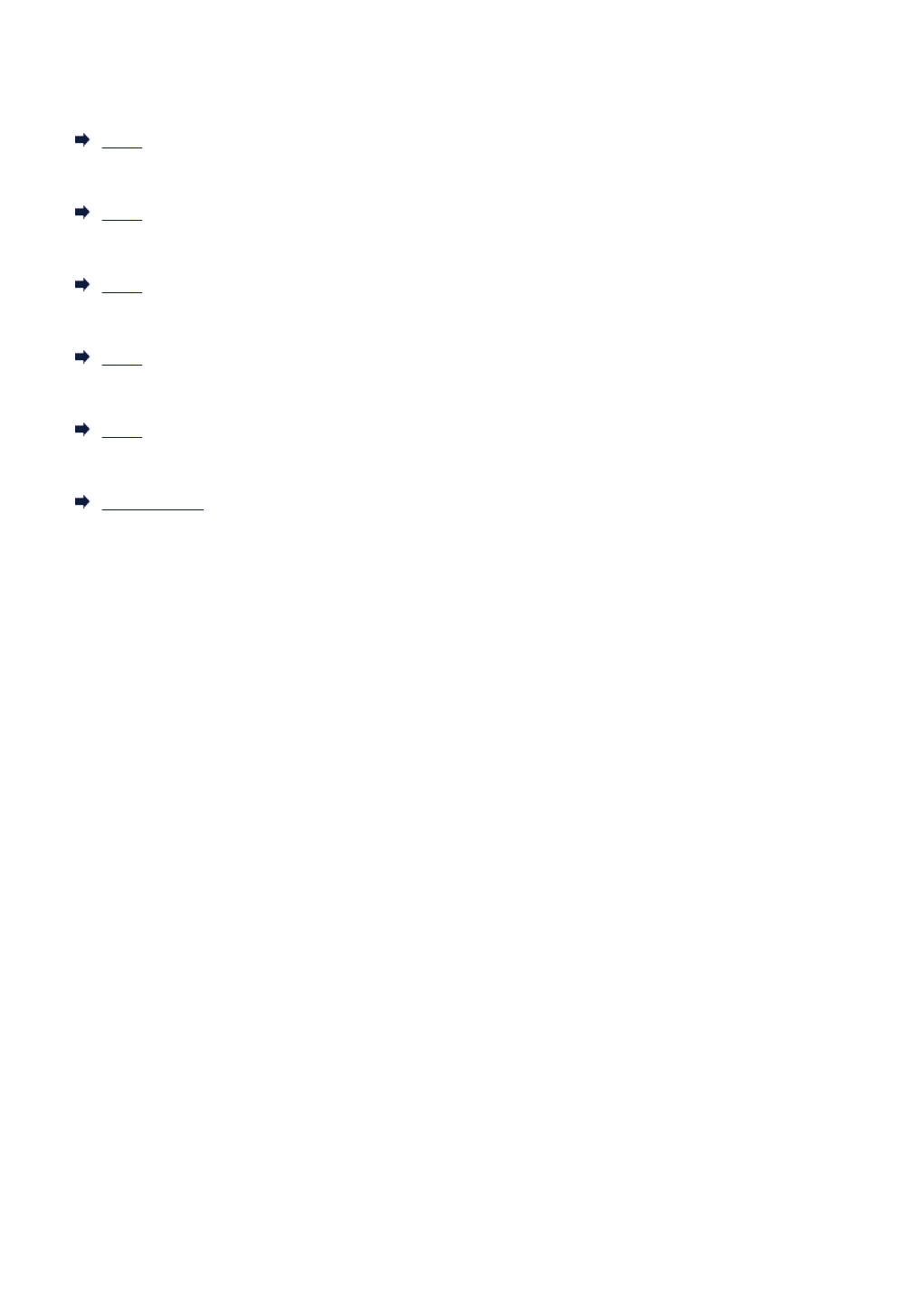
List of Support Code for Error (Paper Jams)
If paper jams, remove it following the appropriate procedure as shown below.
• If the paper is jammed inside the front cover:
1300
• If the paper is jammed inside the rear cover:
1303
• If the paper is jammed inside the rear cover as the printer pulled in the printed paper:
1313
• If the paper is jammed inside the rear cover during automatic duplex printing:
1314
• If the document is jammed in the ADF:
2801
• Cases other than above:
Other Cases
1213
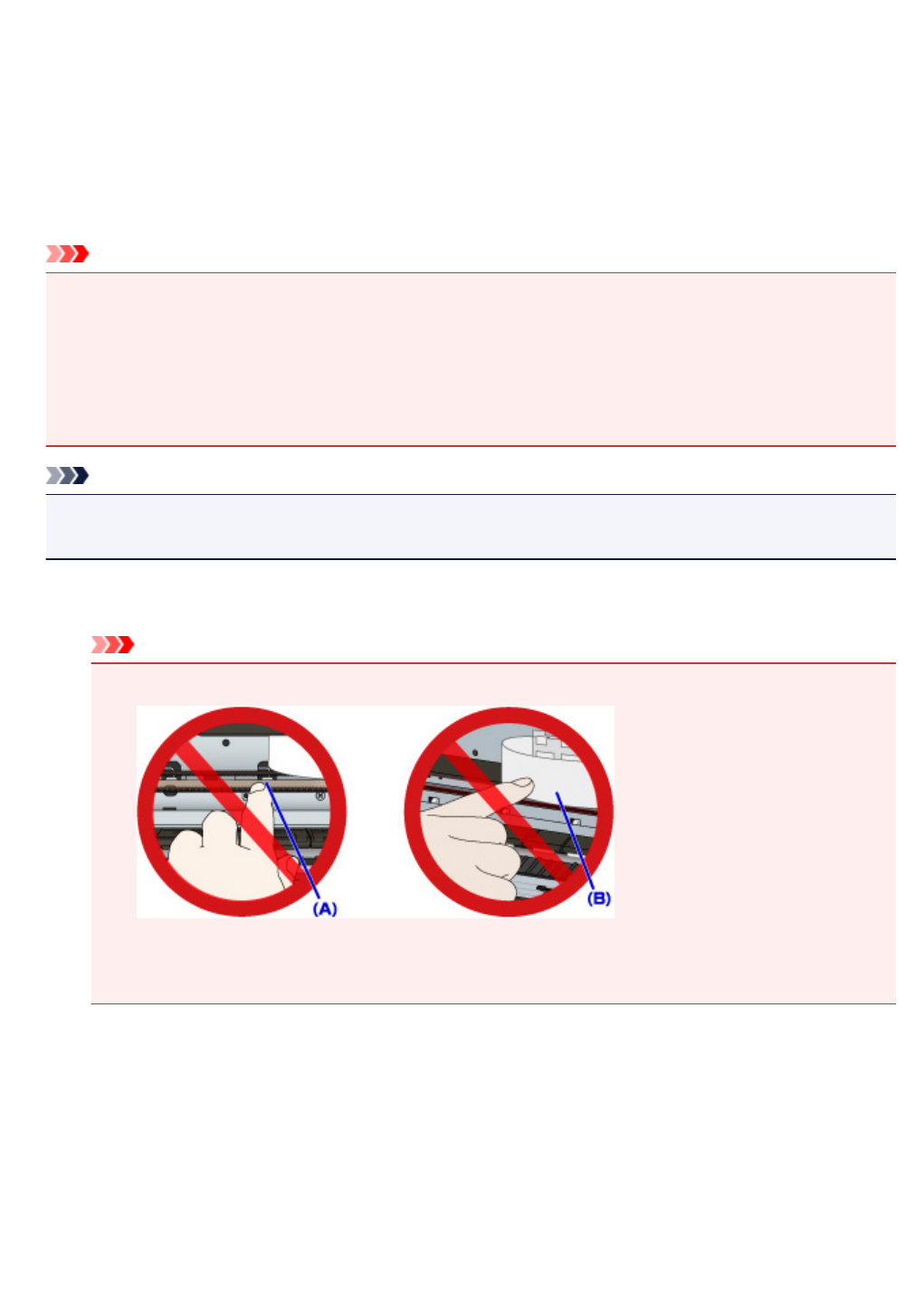
1300
Cause
Paper is jammed inside front cover.
What to Do
If the paper is jammed inside the front cover, remove the paper by following these steps.
Important
• The printer cannot be turned off while it is sending or receiving a fax, or when the received fax or the
unsent fax are stored in the printer's memory.
Turn off the printer after making sure it has completed sending or receiving all the faxes. Do not
unplug when turning off the printer.
If you unplug the power cord, all the faxes stored in the printer's memory are deleted.
Note
• If paper becomes jammed during printing and you need to turn off the printer to remove it, press the
Stop button to stop the printing before you turn off the printer.
1. Open front cover.
Important
• Do not touch clear film (A) or white belt (B).
If you soil or scratch these parts by touching them with paper or your hand, it could damage the
printer.
2. Make sure jammed paper is not under print head holder.
If the jammed paper is under the print head holder, move the print head holder to the far right or left,
whichever makes it easier to remove the paper.
When moving the print head holder, press either the right side or the left side of the print head holder
with your fingertips and slide it slowly to the far right or left.
1214
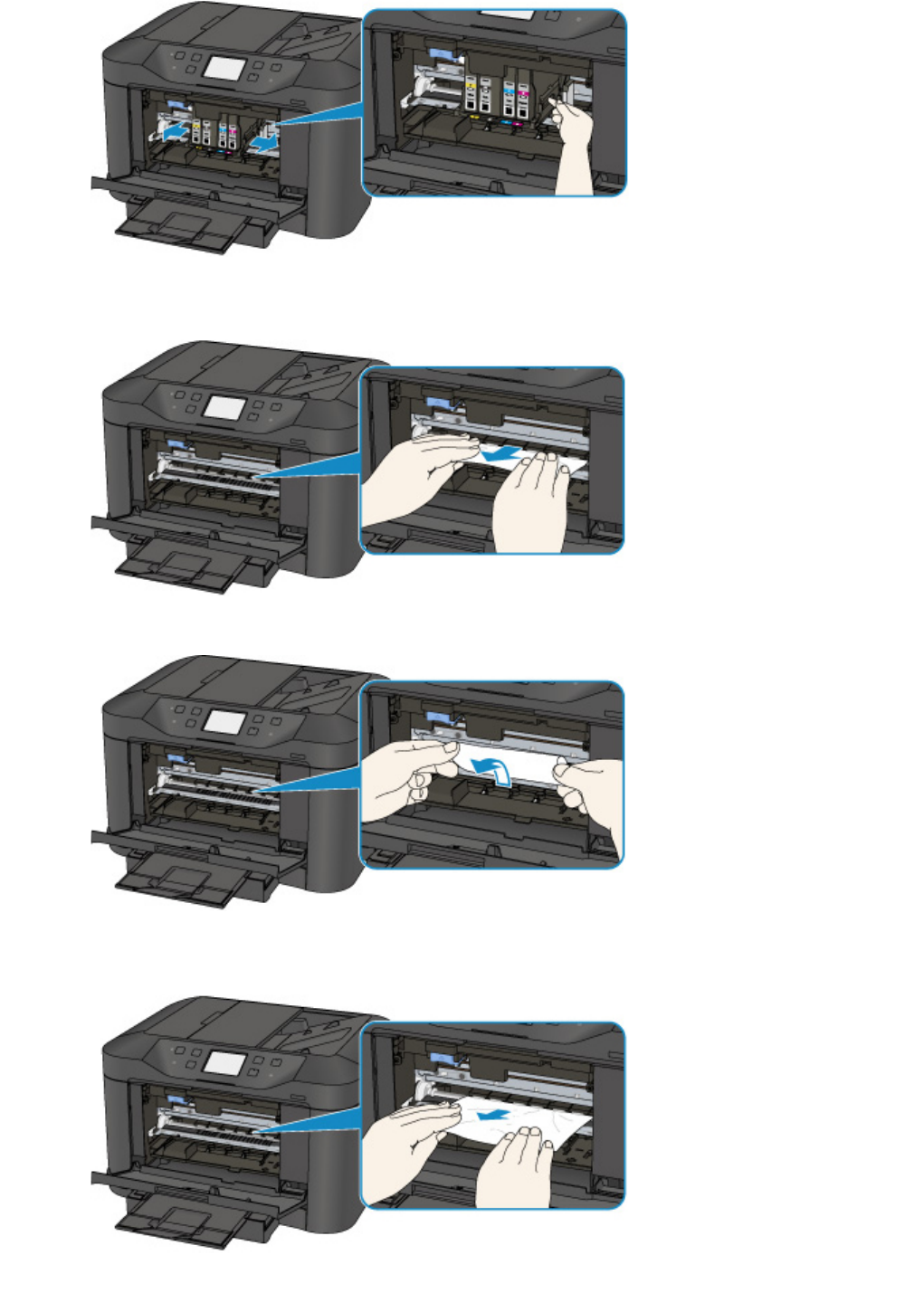
3. Hold jammed paper firmly in both hands.
If the paper is rolled up, pull out it.
4. Pull paper out slowly, so as not to tear it.
1215
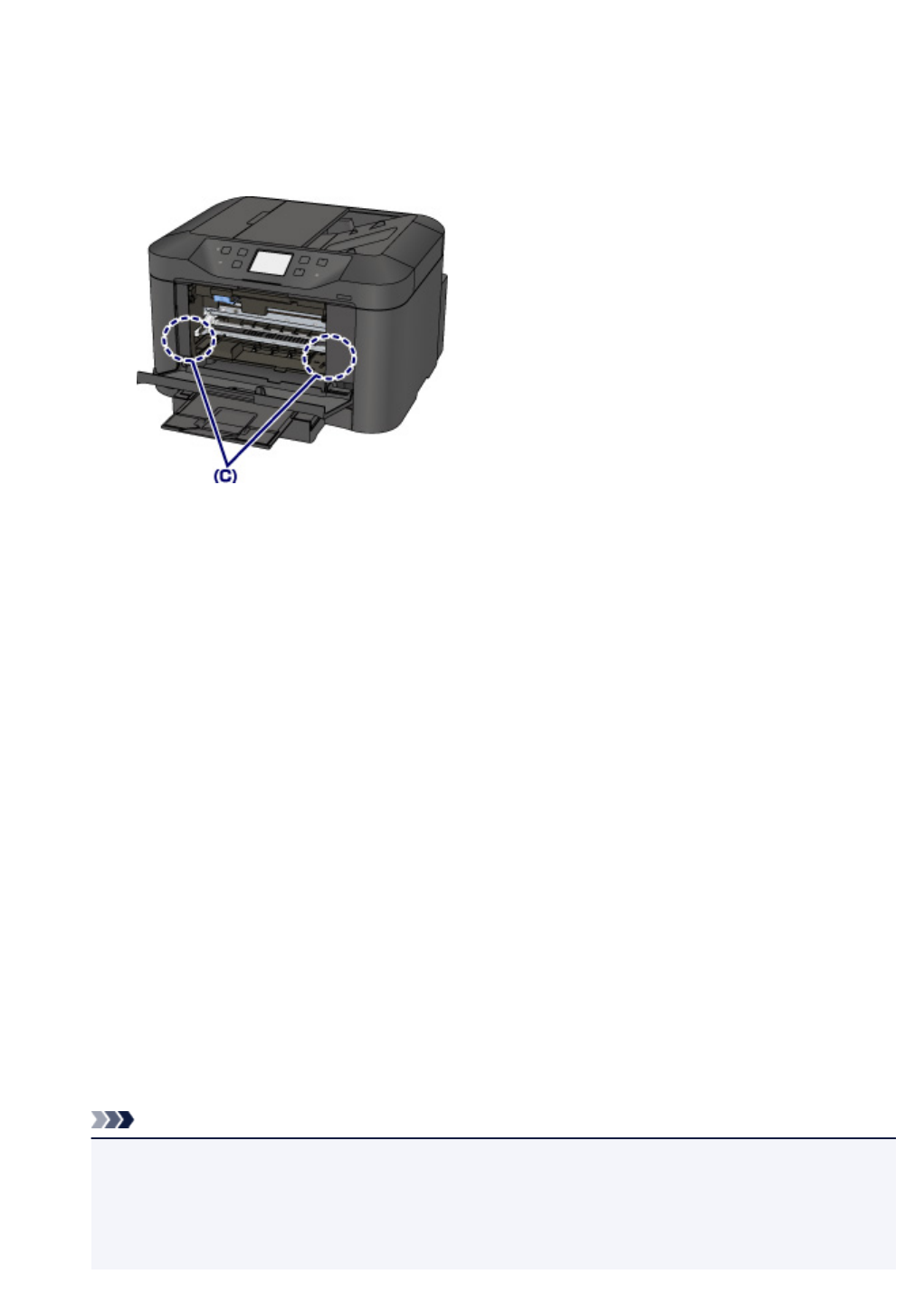
5. Make sure all jammed paper is removed.
If the paper tears when you pull out it, a bit of paper may remain in the printer. Check the following and
remove any remaining paper.
•Any paper left under the print head holder?
•Any small bits of paper left in the printer?
• Any paper left in the left and right empty spaces (C) in the printer?
6. Close front cover.
7. Tap OK on printer's touch screen.
• If the paper is jammed while printing the faxes or the fax report in progress:
After clearing the paper jam error and tapping OK on the touch screen of the printer, the printer
resumes printing from the page where the paper was jammed.
•If the paper is jammed while printing from a computer or copying in progress:
After clearing the paper jam error and tapping OK on the touch screen of the printer, the printer
resumes printing from the next page where the paper was jammed.
As the page where the paper was jammed is not printed, reprint if necessary.
When the paper is jammed while duplex printing or duplex copying is in progress, it is possible
that the printing or copying order is not as you expect if you resume printing after clearing the
paper jam error. In this case, cancel printing and reprint from the beginning.
When the paper is jammed while layout printing, 2 on 1 copying, or 4 on 1 copying is in
progress, it is possible that some pages are not printed if you resume printing after clearing the
paper jam error. In this case, cancel printing and reprint from the beginning.
•If you turned off the printer while taking the appropriate action of the paper jam error:
All jobs in the print queue are canceled. Redo the printing.
Note
•When reloading the paper, make sure you are using suitable paper and loading it correctly.
Align the paper guides with the both edges of the paper when you load paper.
•If the message about paper jam is displayed on the touch screen of the printer or on the
computer screen when you resume printing after removing all the jammed paper, a piece of
1216
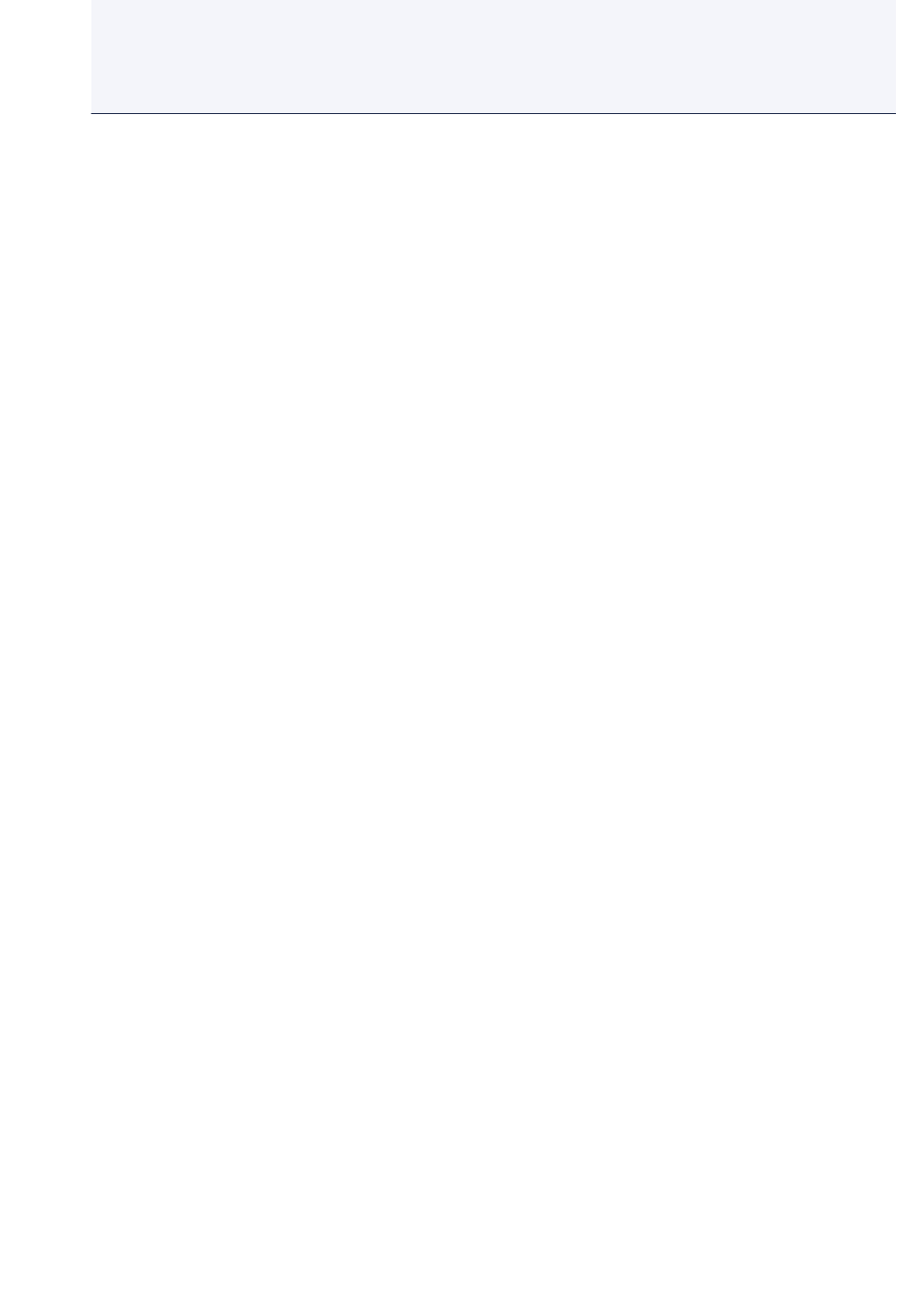
paper may remain inside the printer. In this case, make sure no piece of paper remains inside
the printer.
• We recommend using paper sizes other than A5/A6 to print documents with photos or graphics.
A5/A6 paper may curl and jam as it leaves the printer.
If the measures above do not solve the problem, contact your nearest Canon service center to request a
repair.
1217
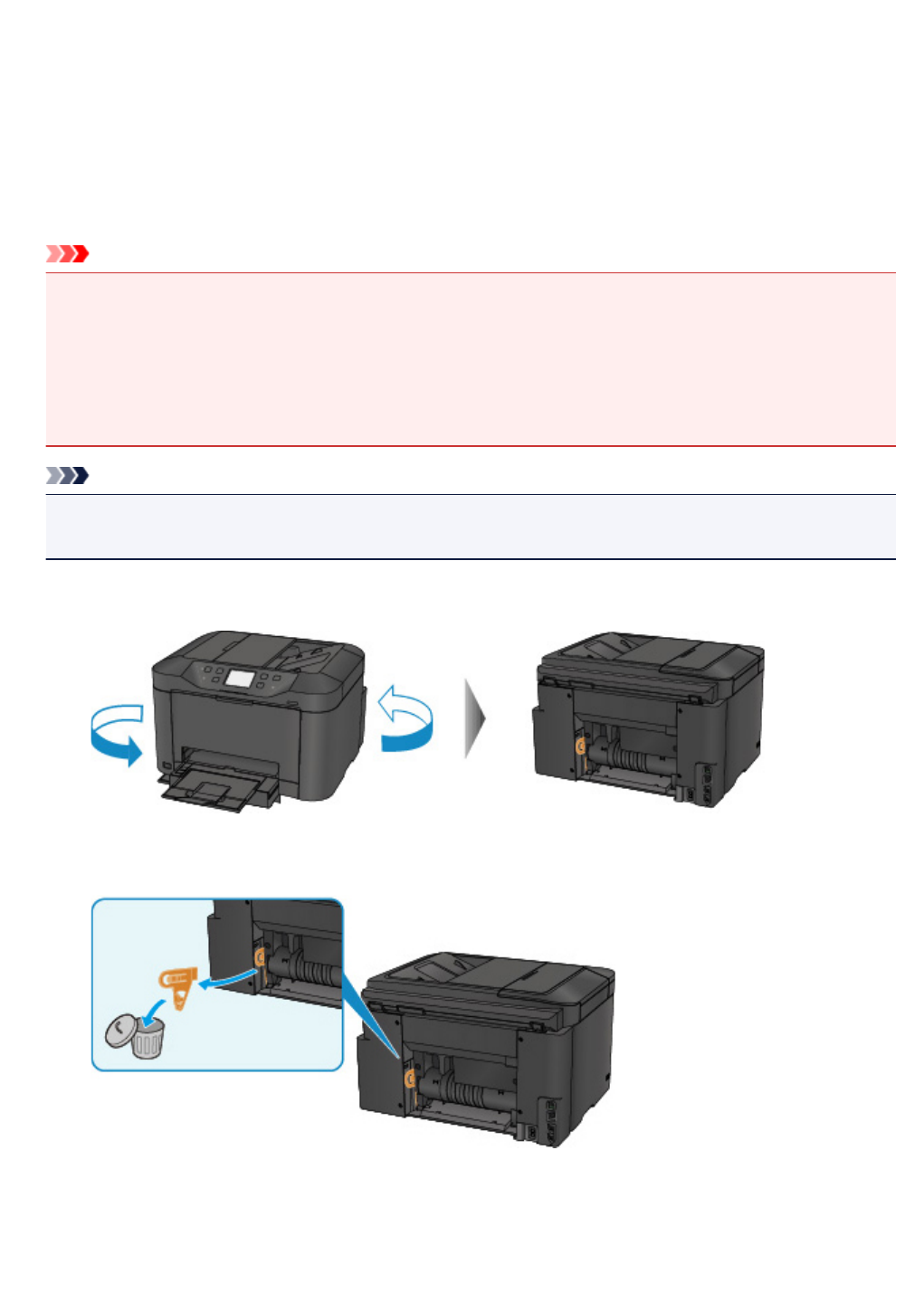
1303
Cause
Paper is jammed inside rear cover.
What to Do
If the paper is jammed inside the rear cover, follow these steps to remove the paper.
Important
• The printer cannot be turned off while it is sending or receiving a fax, or when the received fax or the
unsent fax are stored in the printer's memory.
Turn off the printer after making sure it has completed sending or receiving all the faxes. Do not
unplug when turning off the printer.
If you unplug the power cord, all the faxes stored in the printer's memory are deleted.
Note
• If paper becomes jammed during printing and you need to turn off the printer to remove it, press the
Stop button to stop the printing before you turn off the printer.
1. Rotate printer so that rear side of printer faces toward you.
2. If protective material for rear cover remains attached, remove it.
3. Open rear cover.
Slide the rear cover to the left then open it.
1218
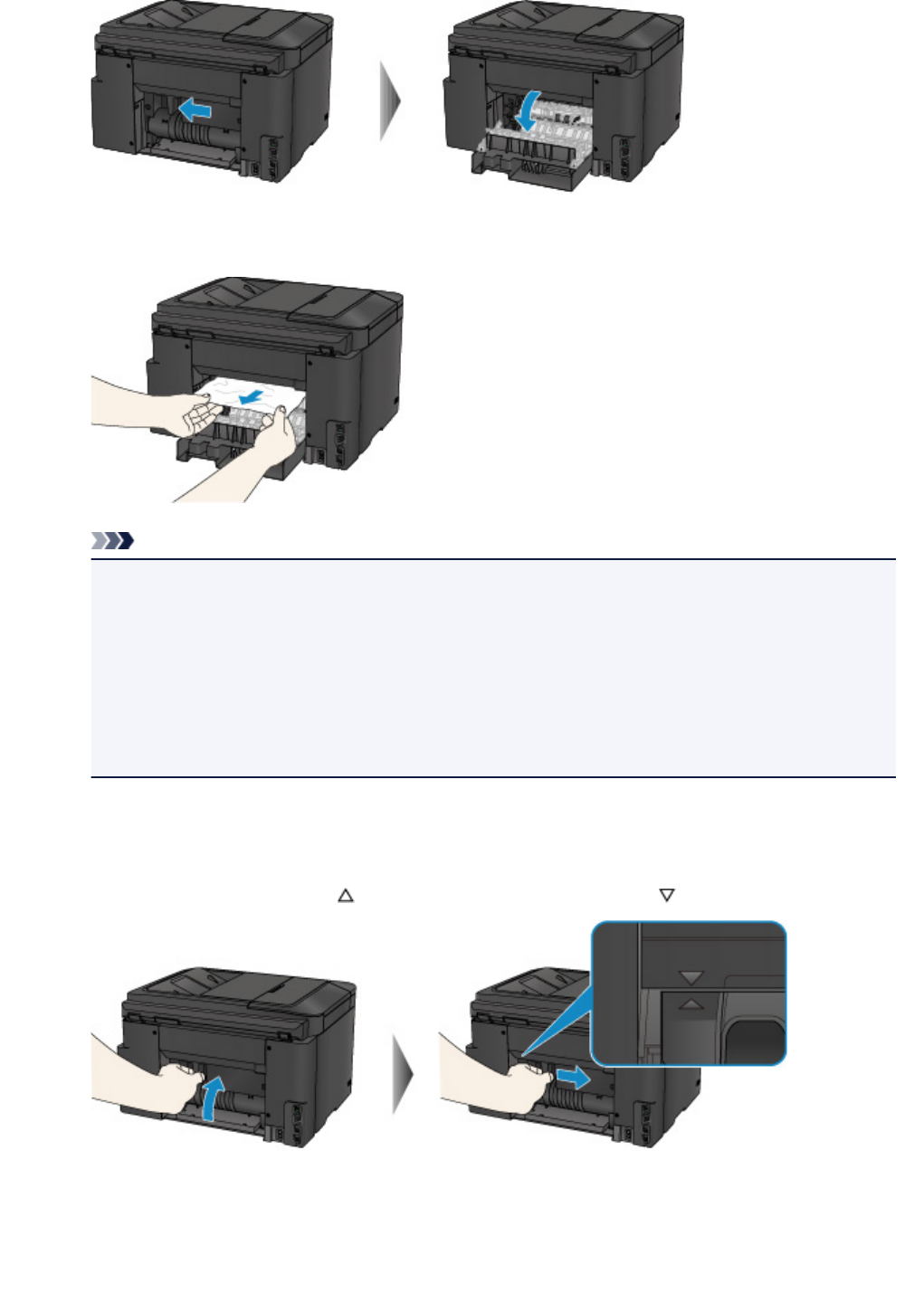
4. Pull out paper slowly.
Note
• Do not touch the inner parts of the printer.
• If you cannot pull the paper out, try the following.
• Turn the printer off and turn it back on.
The paper may be ejected automatically.
• Pull out the paper output tray.
It becomes easy to pull out the paper.
5. Close rear cover slowly.
Close the rear cover then slide it to the right.
Slide the rear cover so that the mark on the rear cover aligns with the mark on the printer.
6. Reload paper and tap OK on printer's touch screen.
•If the paper is jammed while printing the faxes or the fax report in progress:
1219
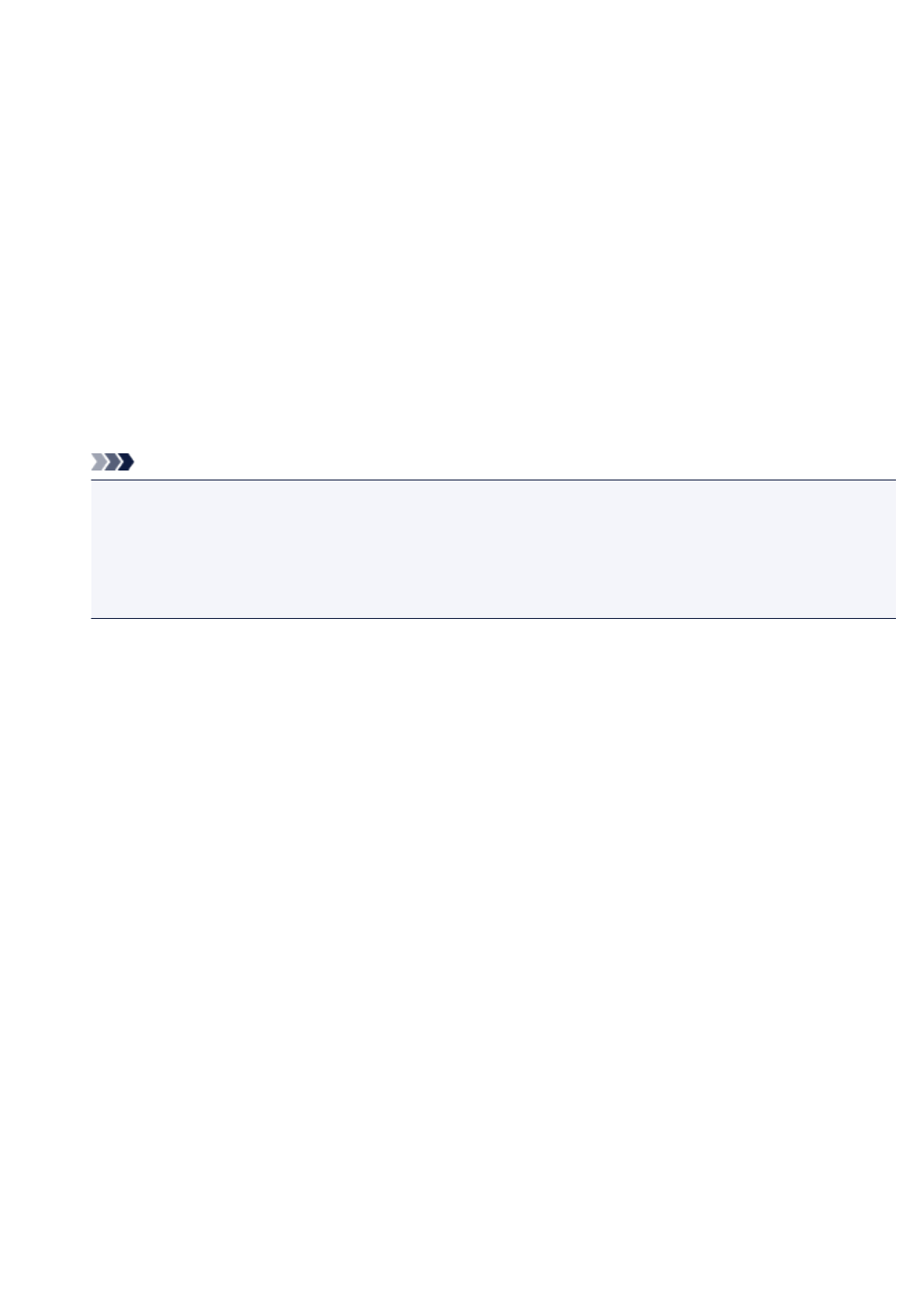
After clearing the paper jam error and tapping OK on the touch screen of the printer, the printer
resumes printing from the page where the paper was jammed.
• If the paper is jammed while printing from a computer or copying in progress:
After clearing the paper jam error and tapping OK on the touch screen of the printer, the printer
resumes printing from the next page where the paper was jammed.
As the page where the paper was jammed is not printed, reprint if necessary.
When the paper is jammed while duplex printing or duplex copying is in progress, it is possible
that the printing or copying order is not as you expect if you resume printing after clearing the
paper jam error. In this case, cancel printing and reprint from the beginning.
When the paper is jammed while layout printing, 2 on 1 copying, or 4 on 1 copying is in
progress, it is possible that some pages are not printed if you resume printing after clearing the
paper jam error. In this case, cancel printing and reprint from the beginning.
•If you turned off the printer while taking the appropriate action of the paper jam error:
All jobs in the print queue are canceled. Redo the printing.
Note
• When reloading the paper, make sure you are using suitable paper and loading it correctly.
Align the paper guides with the both edges of the paper when you load paper.
• We recommend using paper sizes other than A5/A6 to print documents with photos or graphics.
A5/A6 paper may curl and jam as it leaves the printer.
If the measures above do not solve the problem, contact your nearest Canon service center to request a
repair.
1220
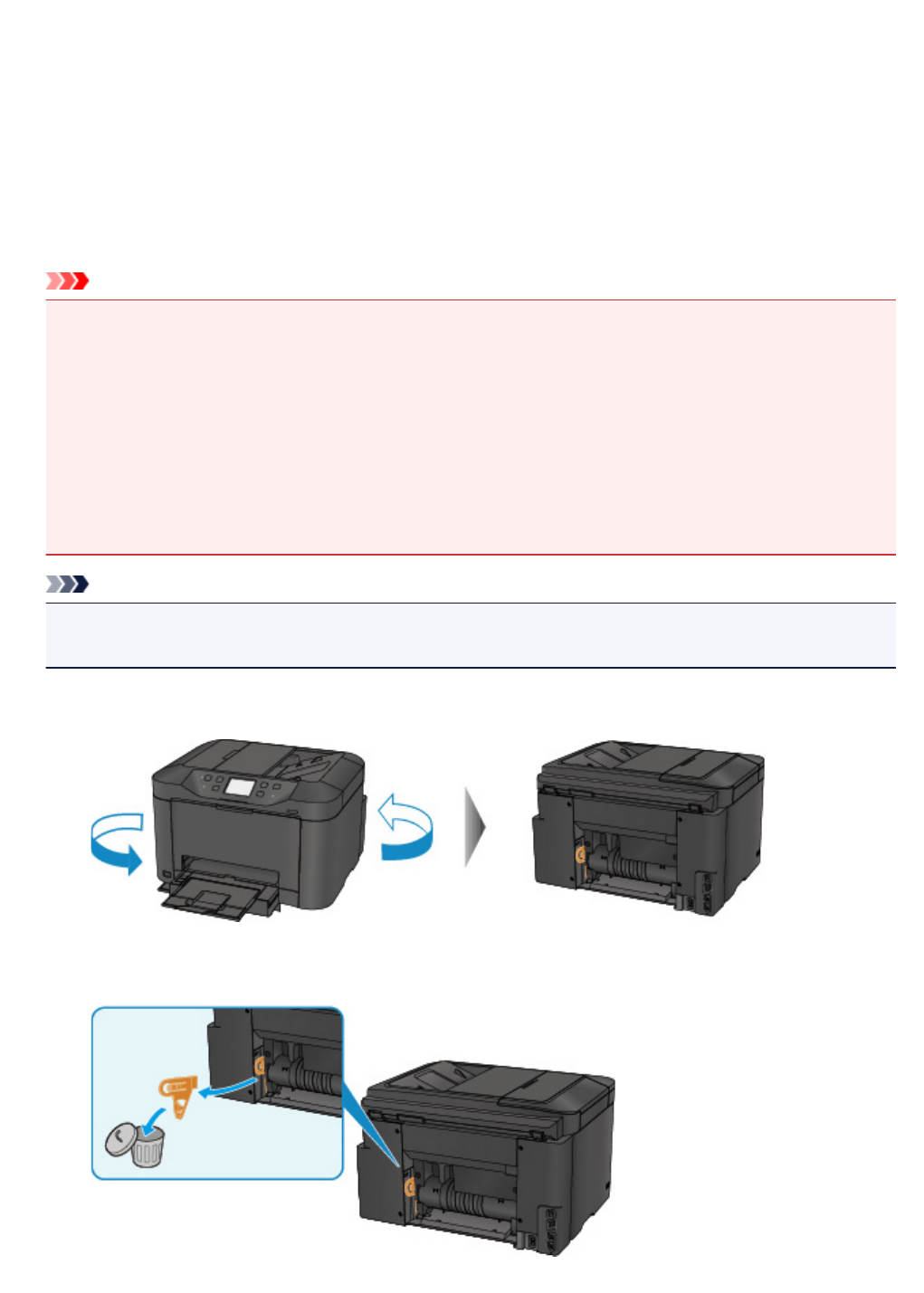
1313
Cause
Paper is jammed inside rear cover as printer pulled in printed paper.
What to Do
If the paper is jammed inside the rear cover as the printer pulled in the printed paper, remove the paper by
following these steps.
Important
• If the printed paper piles up on the paper output slot, the printer may pull it in and the paper is
jammed inside the printer. Remove the printed paper from the paper output tray before it amounts to
75 sheets.
• The printer cannot be turned off while it is sending or receiving a fax, or when the received fax or the
unsent fax are stored in the printer's memory.
Turn off the printer after making sure it has completed sending or receiving all the faxes. Do not
unplug when turning off the printer.
If you unplug the power cord, all the faxes stored in the printer's memory are deleted.
Note
• If paper becomes jammed during printing and you need to turn off the printer to remove it, press the
Stop button to stop the printing before you turn off the printer.
1. Rotate printer so that rear side of printer faces toward you.
2. If protective material for rear cover remains attached, remove it.
1221
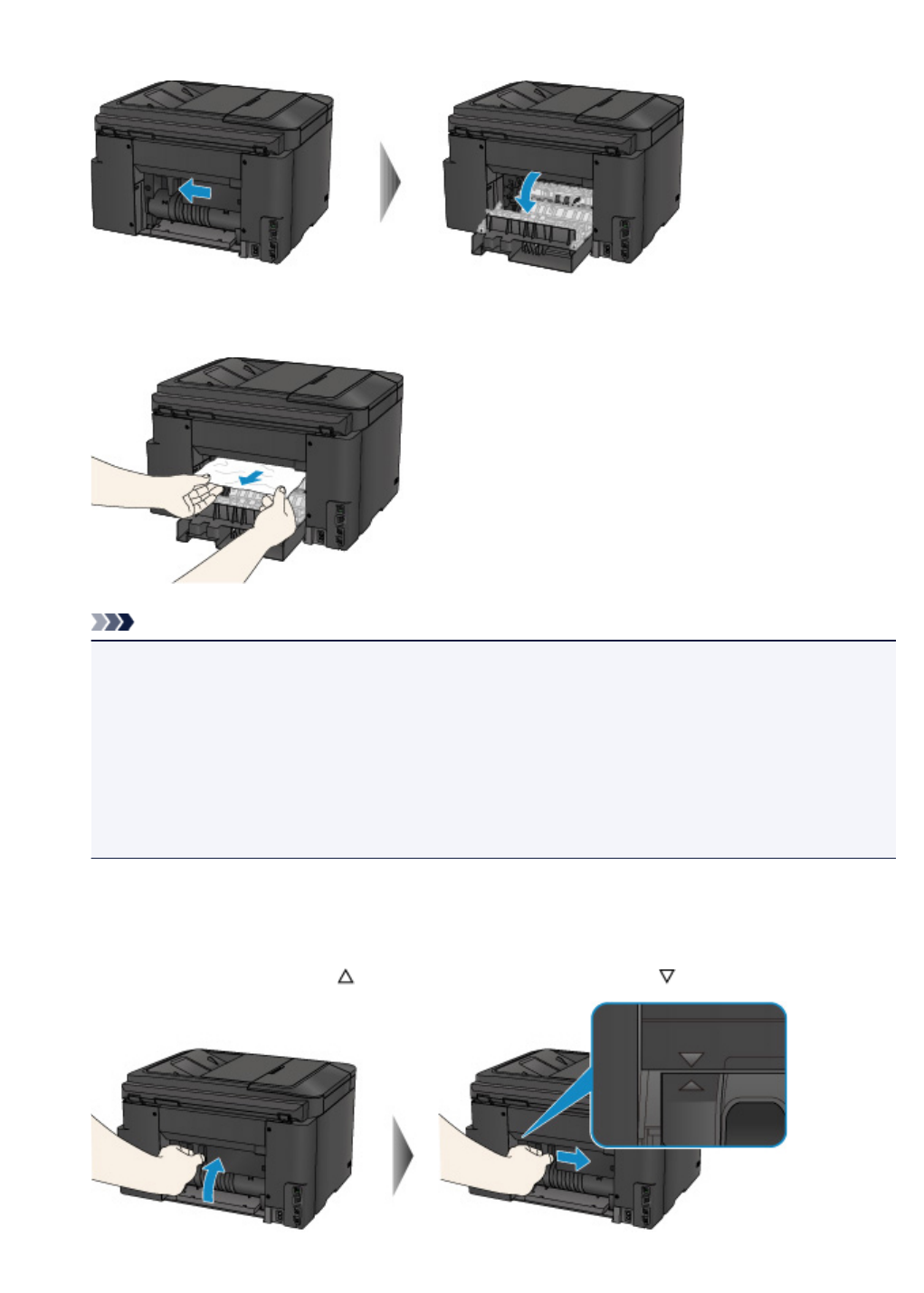
3. Open rear cover.
Slide the rear cover to the left then open it.
4. Pull out paper slowly.
Note
• Do not touch the inner parts of the printer.
• If you cannot pull the paper out, try the following.
• Turn the printer off and turn it back on.
The paper may be ejected automatically.
• Pull out the paper output tray.
It becomes easy to pull out the paper.
5. Close rear cover slowly.
Close the rear cover then slide it to the right.
Slide the rear cover so that the mark on the rear cover aligns with the mark on the printer.
1222
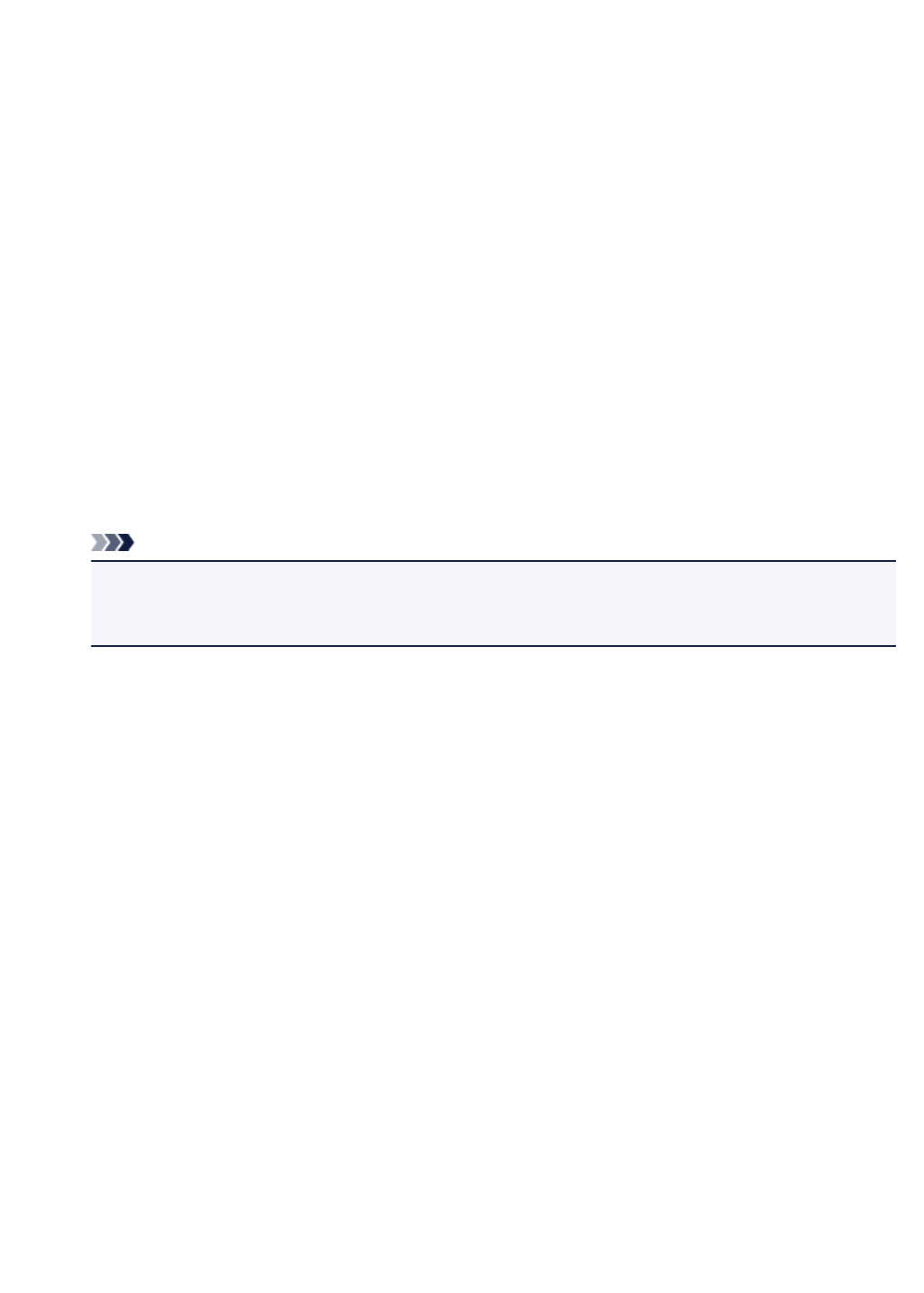
6. Reload paper and tap OK on printer's touch screen.
• If the paper is jammed while printing the faxes or the fax report in progress:
After clearing the paper jam error and tapping OK on the touch screen of the printer, the printer
resumes printing from the page where the paper was jammed.
• If the paper is jammed while printing from a computer or copying in progress:
After clearing the paper jam error and tapping OK on the touch screen of the printer, the printer
resumes printing from the next page where the paper was jammed.
As the page where the paper was jammed is not printed, reprint if necessary.
When the paper is jammed while duplex printing or duplex copying is in progress, it is possible
that the printing or copying order is not as you expect if you resume printing after clearing the
paper jam error. In this case, cancel printing and reprint from the beginning.
When the paper is jammed while layout printing, 2 on 1 copying, or 4 on 1 copying is in
progress, it is possible that some pages are not printed if you resume printing after clearing the
paper jam error. In this case, cancel printing and reprint from the beginning.
•If you turned off the printer while taking the appropriate action of the paper jam error:
All jobs in the print queue are canceled. Redo the printing.
Note
• When reloading the paper, make sure you are using suitable paper and loading it correctly.
Align the paper guides with the both edges of the paper when you load paper.
If the measures above do not solve the problem, contact your nearest Canon service center to request a
repair.
1223
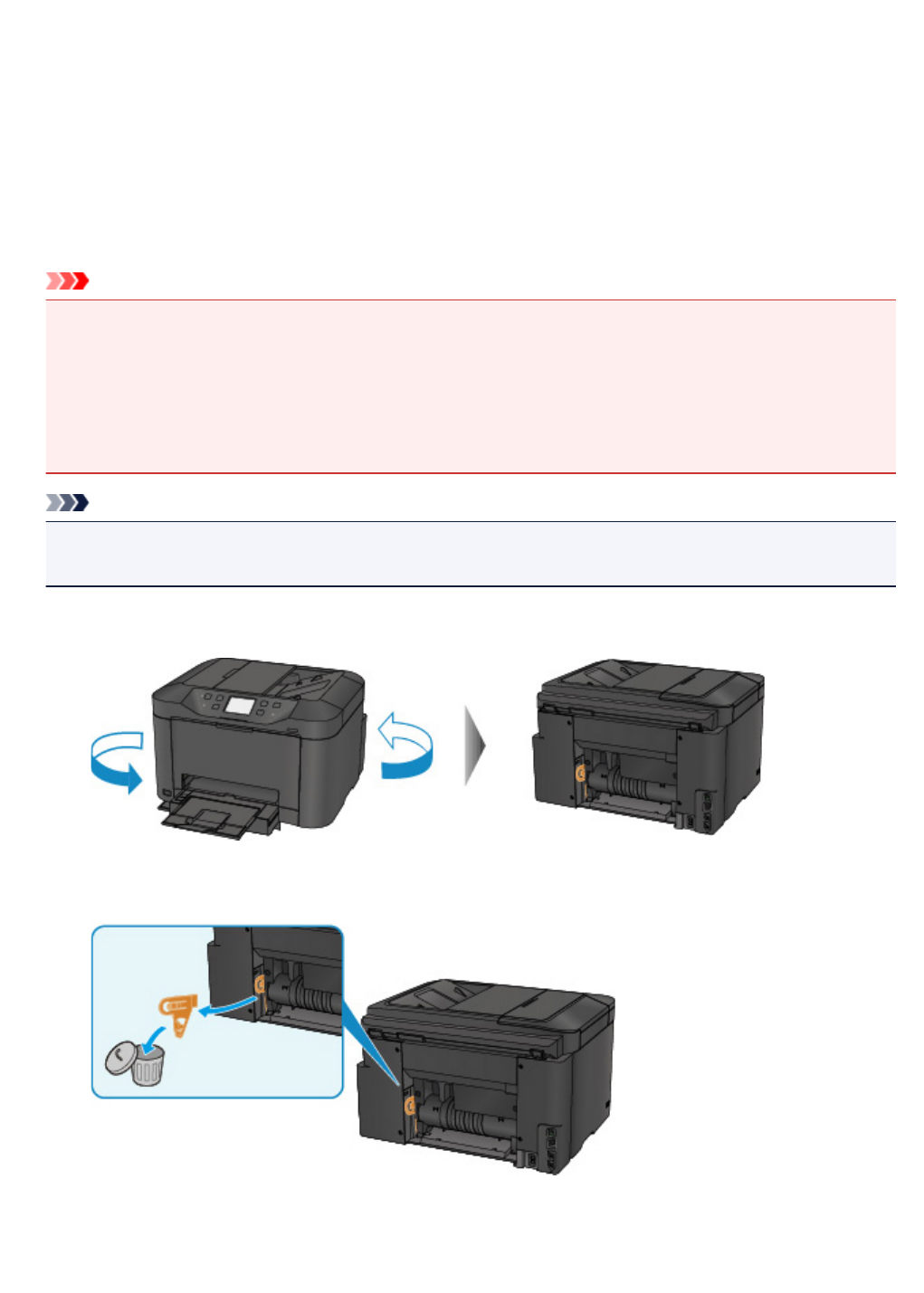
1314
Cause
Paper is jammed inside rear cover during automatic duplex printing.
What to Do
If the paper is jammed inside the rear cover when performing automatic duplex printing, remove the paper
by following these steps.
Important
• The printer cannot be turned off while it is sending or receiving a fax, or when the received fax or the
unsent fax are stored in the printer's memory.
Turn off the printer after making sure it has completed sending or receiving all the faxes. Do not
unplug when turning off the printer.
If you unplug the power cord, all the faxes stored in the printer's memory are deleted.
Note
• If paper becomes jammed during printing and you need to turn off the printer to remove it, press the
Stop button to stop the printing before you turn off the printer.
1. Rotate printer so that rear side of printer faces toward you.
2. If protective material for rear cover remains attached, remove it.
3. Open rear cover.
Slide the rear cover to the left then open it.
1224
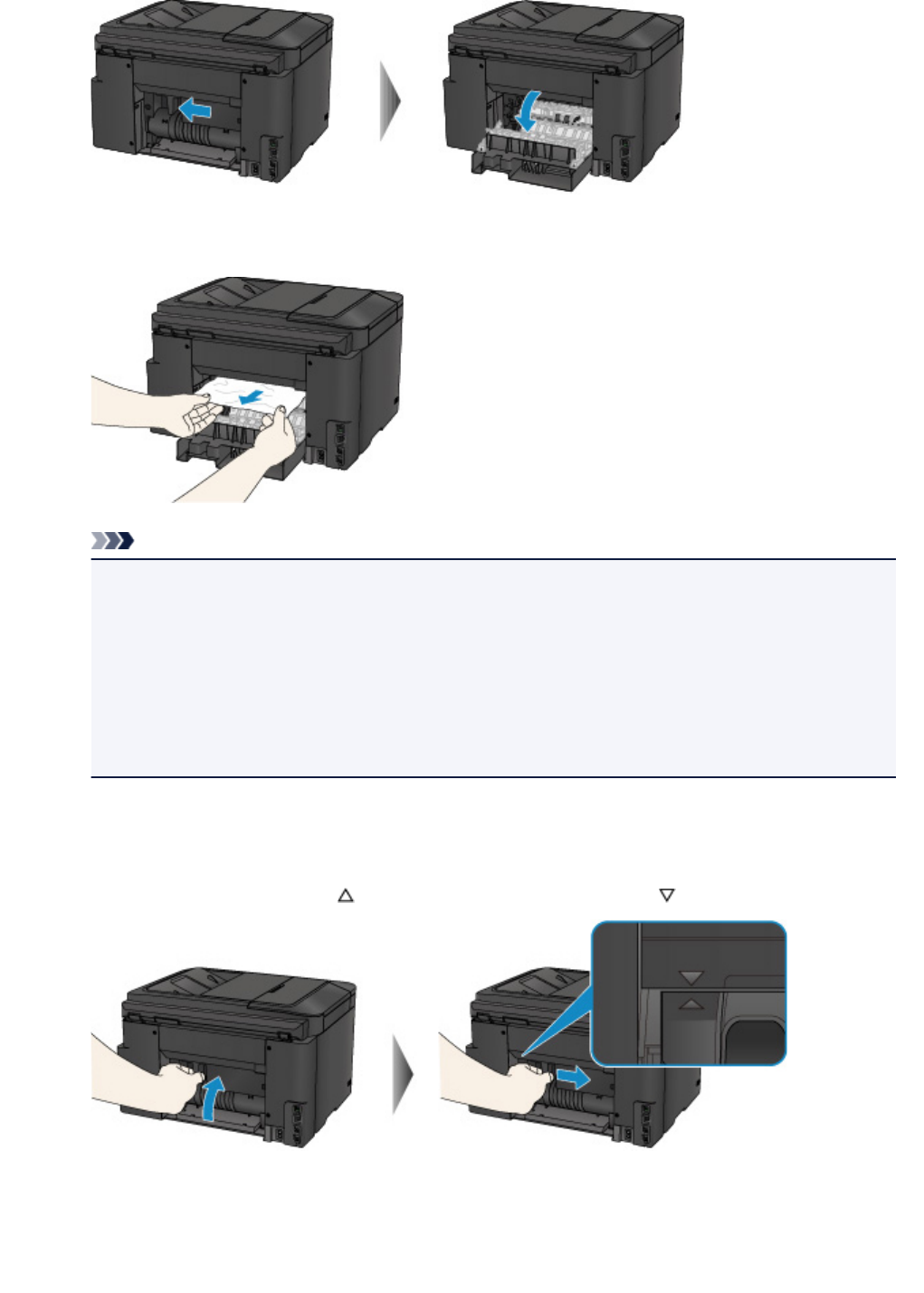
4. Pull out paper slowly.
Note
• Do not touch the inner parts of the printer.
• If you cannot pull the paper out, try the following.
• Turn the printer off and turn it back on.
The paper may be ejected automatically.
• Pull out the paper output tray.
It becomes easy to pull out the paper.
5. Close rear cover slowly.
Close the rear cover then slide it to the right.
Slide the rear cover so that the mark on the rear cover aligns with the mark on the printer.
6. Reload paper and tap OK on printer's touch screen.
•If the paper is jammed while printing the faxes or the fax report in progress:
1225
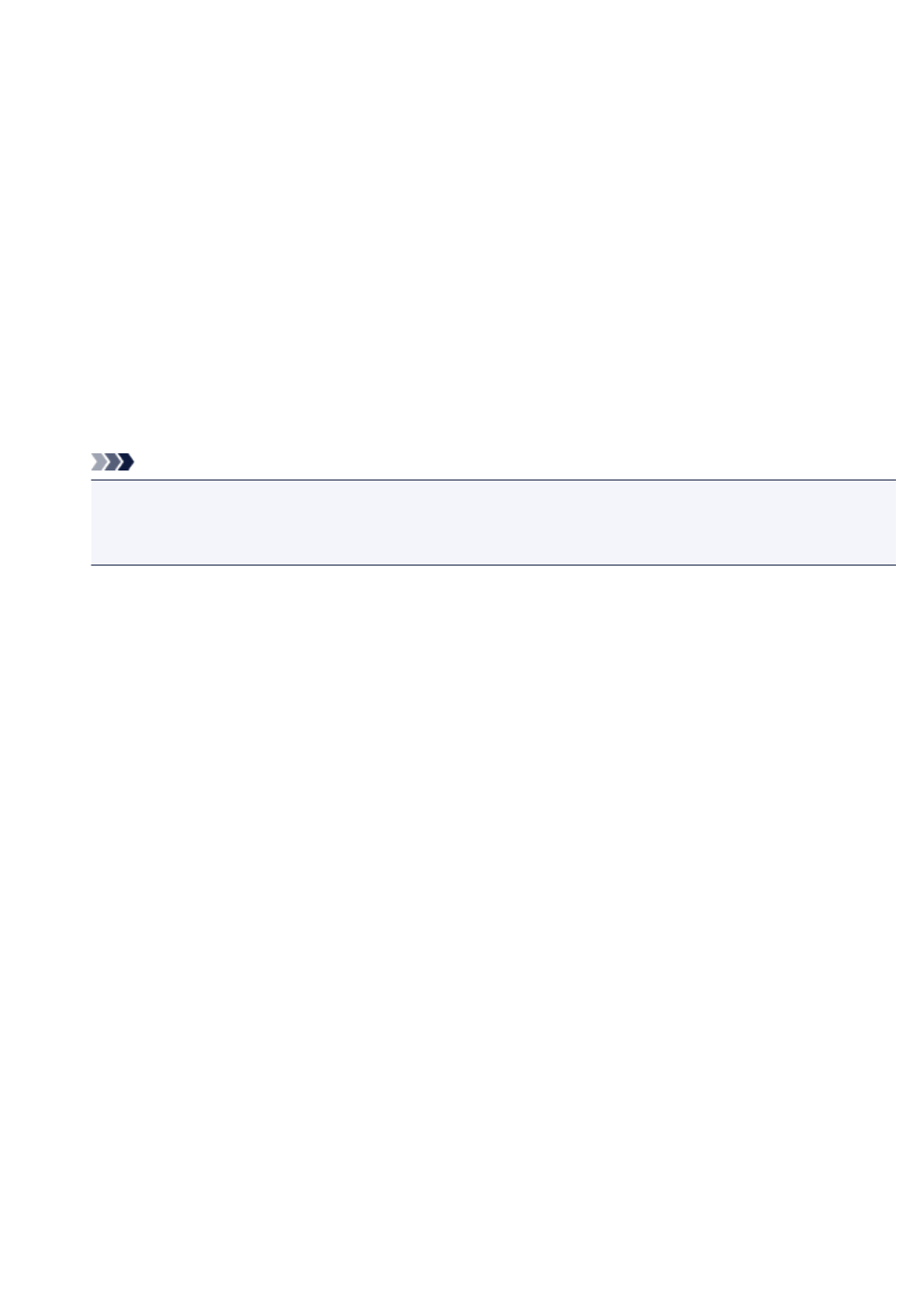
After clearing the paper jam error and tapping OK on the touch screen of the printer, the printer
resumes printing from the page where the paper was jammed.
• If the paper is jammed while printing from a computer or copying in progress:
After clearing the paper jam error and tapping OK on the touch screen of the printer, the printer
resumes printing from the next page where the paper was jammed.
As the page where the paper was jammed is not printed, reprint if necessary.
When the paper is jammed while duplex printing or duplex copying is in progress, it is possible
that the printing or copying order is not as you expect if you resume printing after clearing the
paper jam error. In this case, cancel printing and reprint from the beginning.
When the paper is jammed while layout printing, 2 on 1 copying, or 4 on 1 copying is in
progress, it is possible that some pages are not printed if you resume printing after clearing the
paper jam error. In this case, cancel printing and reprint from the beginning.
•If you turned off the printer while taking the appropriate action of the paper jam error:
All jobs in the print queue are canceled. Redo the printing.
Note
• When reloading the paper, make sure you are using suitable paper and loading it correctly.
Align the paper guides with the both edges of the paper when you load paper.
If the measures above do not solve the problem, contact your nearest Canon service center to request a
repair.
1226
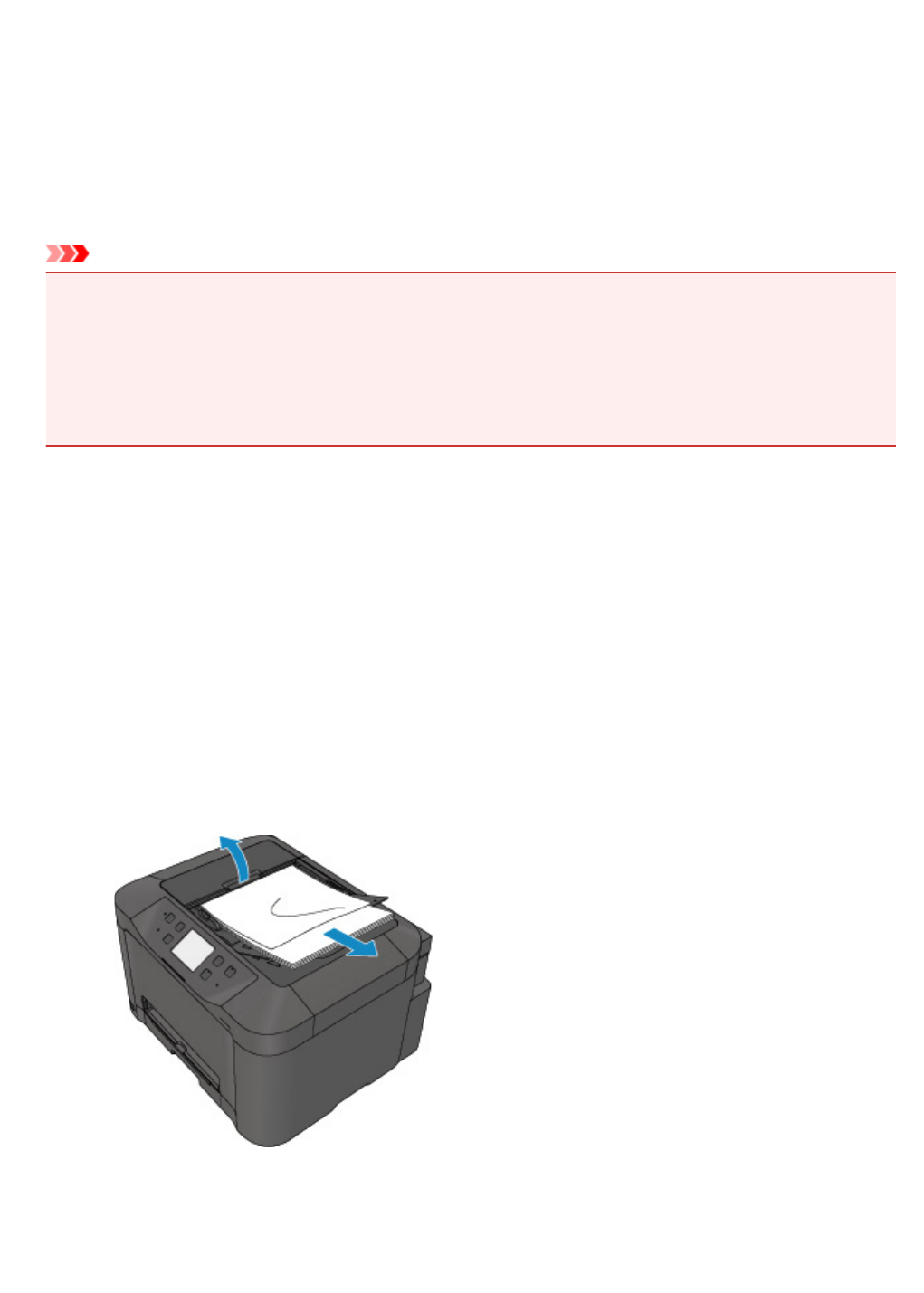
2801
Cause
Document is jammed in ADF.
What to Do
Remove the document following the procedure below.
Important
• The printer cannot be turned off while it is sending or receiving a fax, or when the received fax or the
unsent fax are stored in the printer's memory.
Turn off the printer after making sure it has completed sending or receiving all the faxes. Do not
unplug when turning off the printer.
If you unplug the power cord, all the faxes stored in the printer's memory are deleted.
•If the original remains in the ADF by pressing the Stop button while the printer is scanning the
document:
If you press the Stop button during scanning then the document remained in the ADF, the message
about the paper remained in the ADF appears on the touch screen. Tap OK so that the remaining
document is automatically fed out.
•If the original is jammed in the ADF:
Remove the document following the procedure below.
1. If printing is in progress, press Stop button.
2. Turn off printer.
3. If a multi-page document is loaded, remove any pages other than jammed page from ADF and
open document feeder cover.
4. Pull out jammed document from ADF.
1227
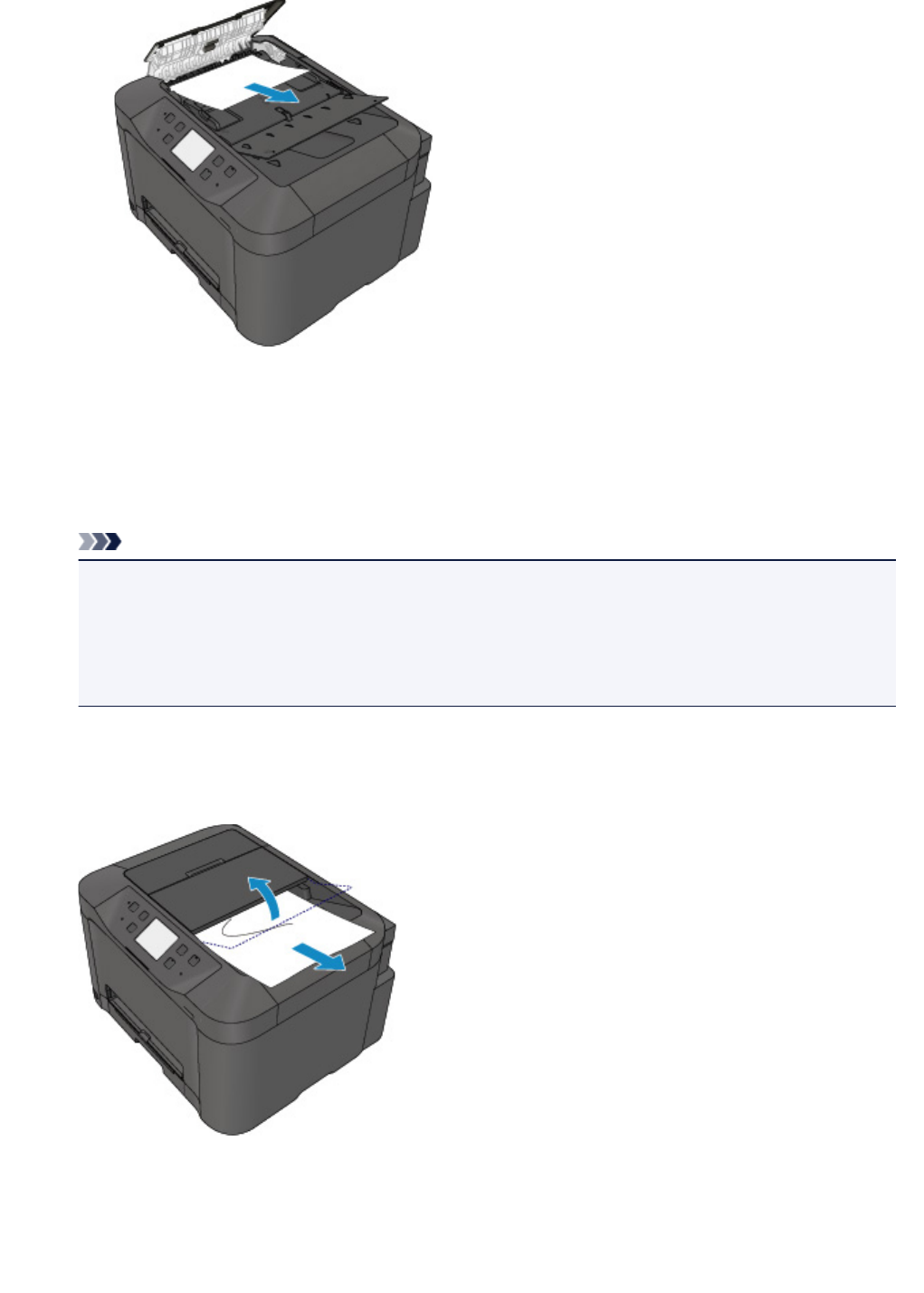
5. Close document feeder cover and turn on printer.
When rescanning the document after clearing the error, rescan it from the first page.
If you cannot remove the document or the document tears inside the printer, or if the document jam
error continues after removing the document, contact your nearest Canon service center to request a
repair.
Note
• The document may not feed properly depending on the media type, or your environment, such as
when the temperature and humidity are either too high or too low.
In this case, reduce the number of document pages to approximately half of the loading capacity.
If the document still jams, use the platen glass instead.
•If the original is jammed in the ADF (from the paper feed side):
If the document is jammed in the document output slot, close the document tray as shown in the
figure below and pull out the document.
When rescanning the document after clearing the error, rescan it from the first page.
If you cannot remove the document or the document tears inside the printer, or if the document jam
error continues after removing the document, contact your nearest Canon service center to request a
repair.
1228

Other Cases
Check the following:
Check1 Is anything blocking paper output slot?
Check2 Is rear cover attached properly?
Check3 Is paper curled?
Correct curl before loading paper.
1229
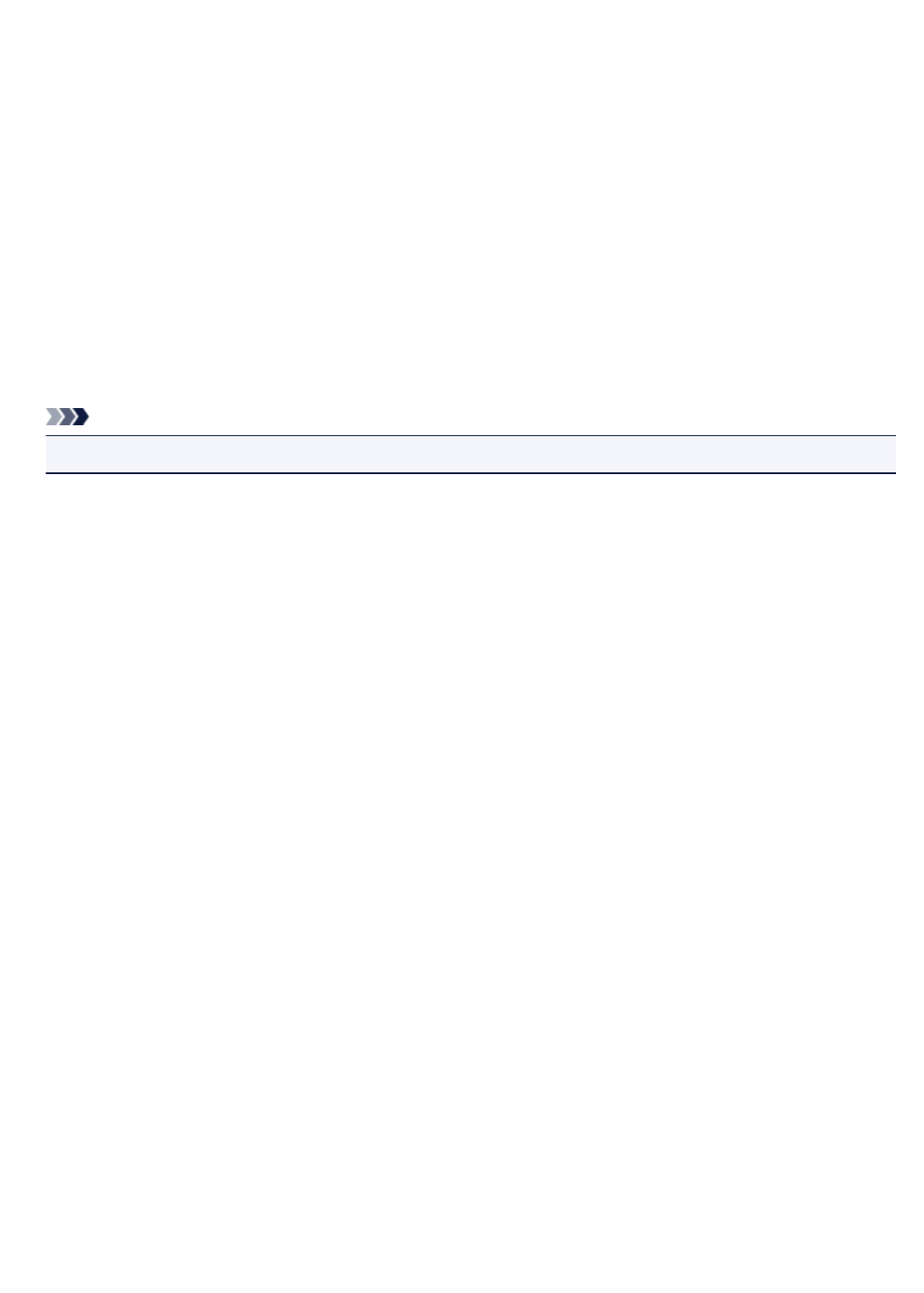
1003
Cause
Possible causes include the following.
• There is no paper in the cassette.
• Paper is not loaded in the cassette properly.
What to Do
Take the corresponding actions below.
• Load paper in the cassette.
• Align the paper guides with the both edges of the paper when you load paper in the cassette.
After carrying out the above measures, tap OK on the touch screen.
Note
•To cancel printing, press the printer's Stop button.
1230

1200
Cause
Front cover is open.
What to Do
Close the front cover and wait for a while.
Do not close it while you are replacing an ink tank.
1231

1309
Cause
Paper size that is not compatible with automatic duplex printing is specified.
What to Do
The sizes of media suitable for auto duplex printing are A4 and Letter.
Press the printer's Stop button to cancel printing.
Then change the print settings and retry printing.
1232

1310
Cause
Size of paper may not be compatible with automatic duplex printing.
What to Do
The sizes of media suitable for auto duplex printing are A4 and Letter. Make sure paper of the correct size
is loaded. Tap OK on the touch screen to eject the paper and restart printing from the front of the next
piece of paper. The reverse side of the ejected sheet is not printed.
1233

1319
Cause
Size of paper is not compatible with automatic duplex printing.
What to Do
The sizes of media suitable for auto duplex printing are A4 and Letter.
Press the printer's Stop button to cancel printing.
Then change the print settings and retry printing.
1234

1575
Cause
Ink cannot be correctly detected.
What to Do
If an ink tank becomes empty, replace it.
An ink tank cannot be replaced until it becomes empty.
Please be advised that Canon shall not be liable for any malfunction or trouble caused by continuation of
printing under the ink out condition.
1235
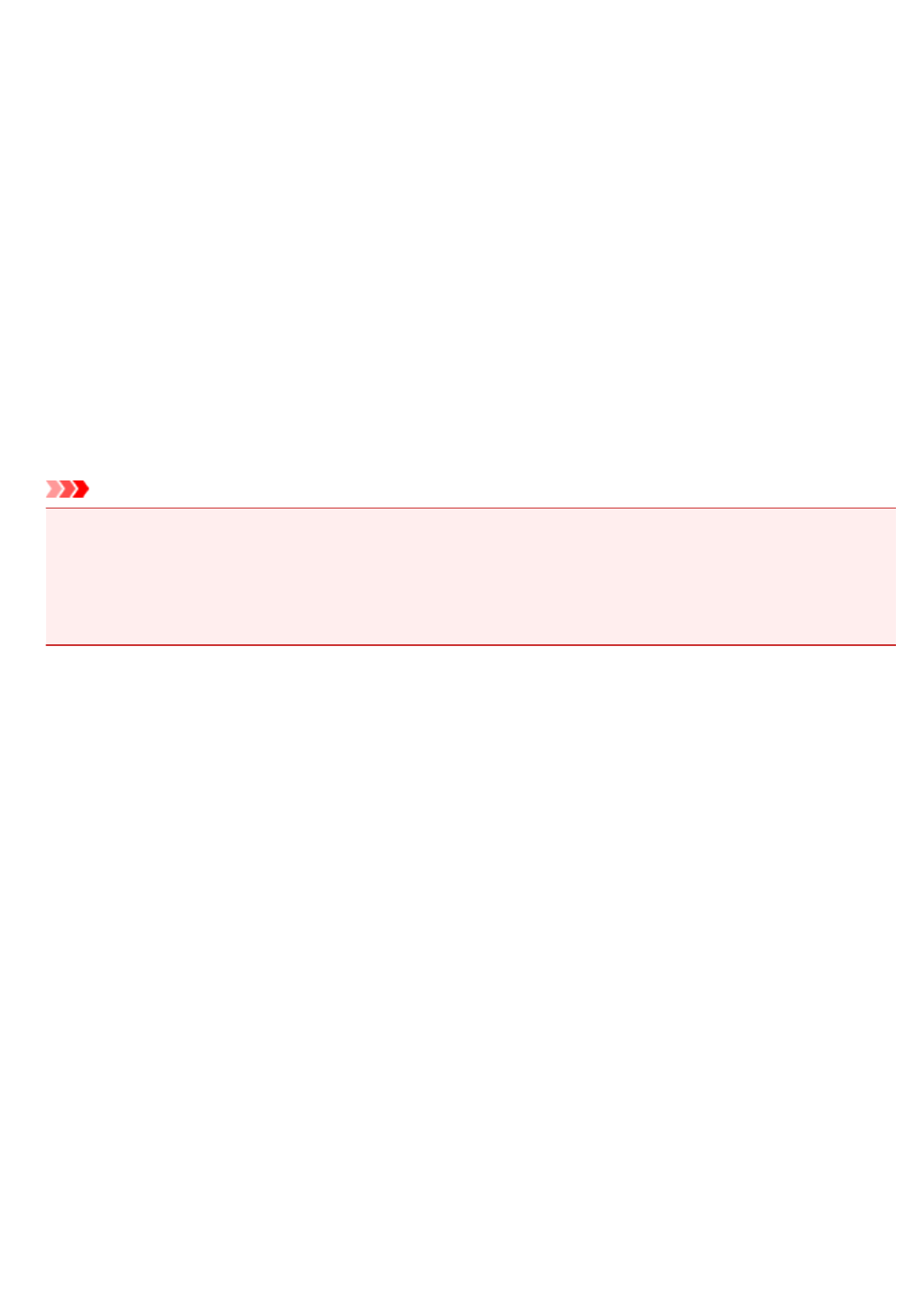
1600
Cause
Ink may have run out.
What to Do
Replacing the ink tank is recommended.
If printing is in progress and you want to continue printing, tap OK on the machine with the ink tank
installed. Then printing can continue. Replacing the ink tank is recommended after the printing. The
machine may be damaged if printing is continued under the ink out condition.
Since the information contained in the fax may be lost if it is printed in this condition, the received fax will
not be printed and will be stored in the machine's memory until the ink is replaced. You must manually
print out faxes that were stored in the memory. You can change the setting so that the received fax is
forcibly printed out instead of being stored in the memory, but all or part of the fax information may not be
printed because of the ink out condition.
Important
• Do not remove an ink tank until a new one is prepared to be installed.
• Once you remove an ink tank, the machine will not operate until a new one is installed.
• Once you remove an ink tank, the machine will not operate even if the removed ink tank is just
reinstalled.
1236

1660
Cause
An ink tank is not installed.
What to Do
Install the ink tank.
1237
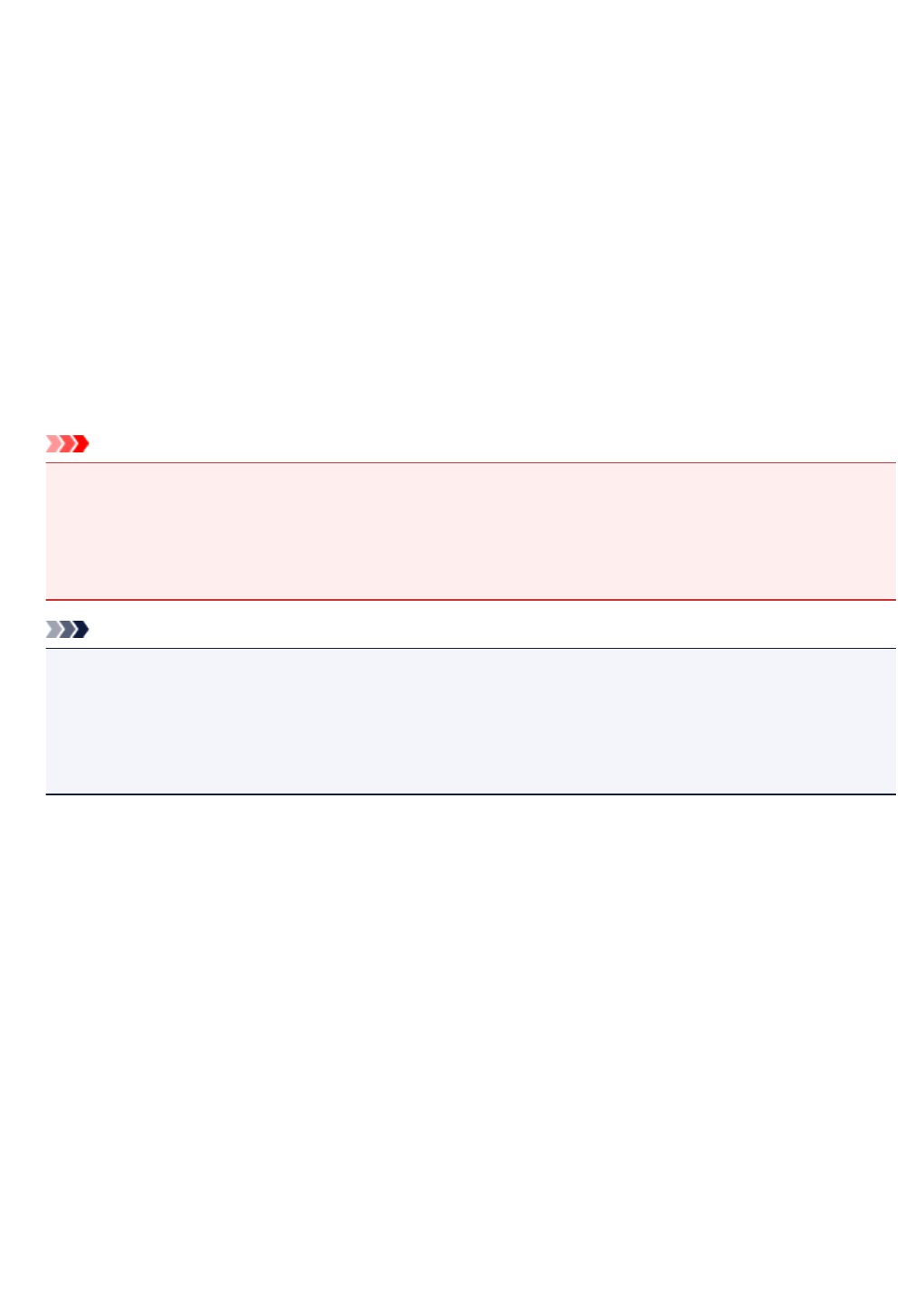
1688
Cause
The ink has run out.
What to Do
Replace the ink tank and close the front cover.
Printing under the current condition may damage the machine.
If you want to continue printing in this condition, you need to disable the function for detecting the
remaining ink level. Press and hold the machine's Stop button for at least 5 seconds, and then release it.
With this operation, disabling the function for detecting the remaining ink level is memorized. Please be
advised that Canon shall not be liable for any malfunction or trouble caused by continuation of printing
under the ink out condition.
Important
• Do not remove an ink tank until a new one is prepared to be installed.
• Once you remove an ink tank, the machine will not operate until a new one is installed.
• Once you remove an ink tank, the machine will not operate even if the removed ink tank is just
reinstalled.
Note
• Since the information contained in the fax may be lost if it is printed in this condition, the received fax
will not be printed and will be stored in the printer's memory until the ink is replaced. You must
manually print out faxes that were stored in the memory. You can change the setting so that the
received fax is forcibly printed out instead of being stored in the memory, but all or part of the fax
information may not be printed because of the ink out condition.
1238

1700
Cause
Ink absorber is almost full.
What to Do
Tap OK on the touch screen to continue printing. Contact your nearest Canon service center to request a
repair.
1239

1701
Cause
Ink absorber is almost full.
What to Do
Tap OK on the touch screen to continue printing. Contact your nearest Canon service center to request a
repair.
1240
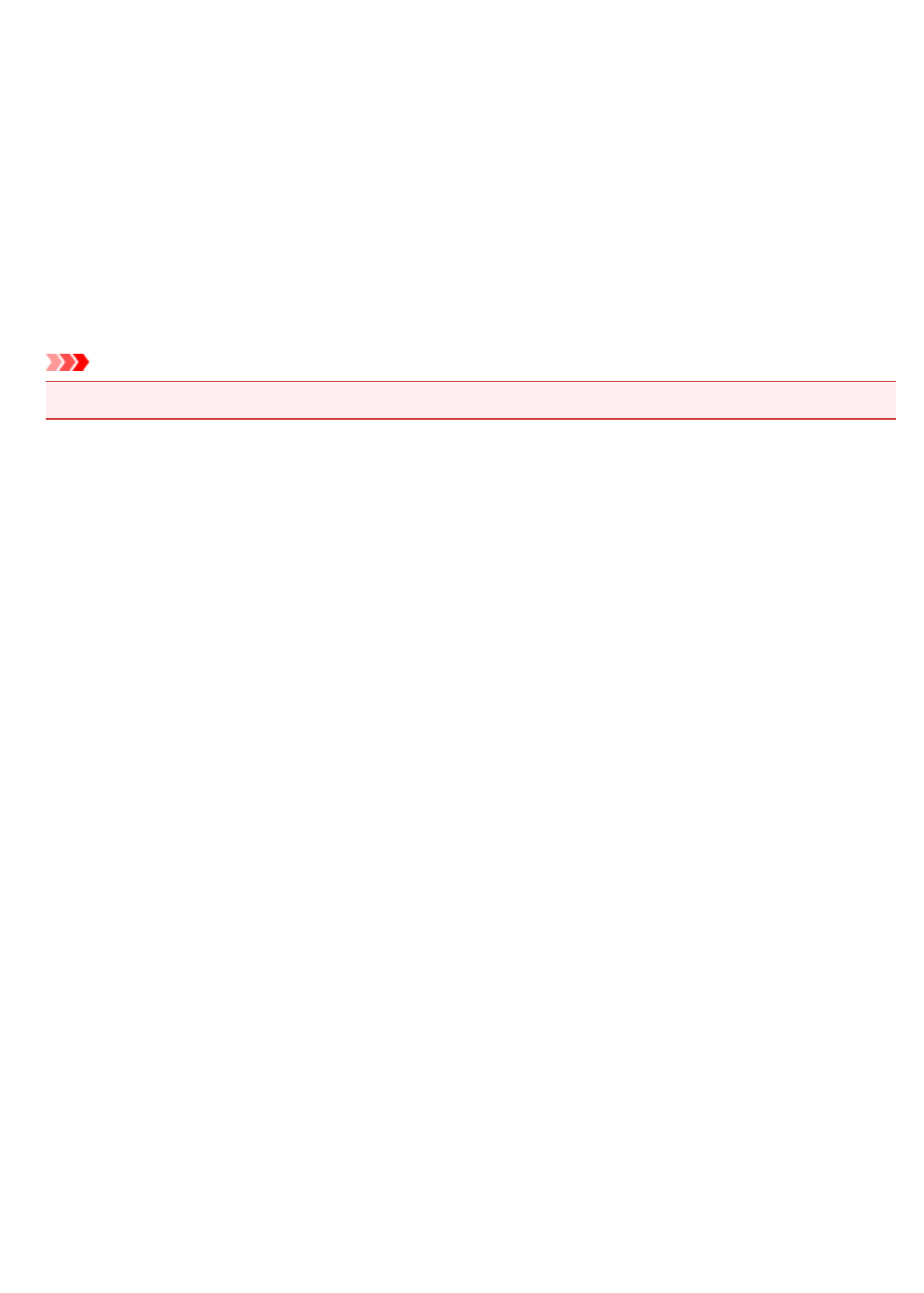
1754
Cause
The ink tank is not installed properly.
What to Do
Open the front cover.
Then push the ink tank.
After installing the ink tank properly, close the front cover.
If this does not solve the problem, contact your nearest Canon service center to request a repair.
Important
• The ink tank that was once installed cannot be removed until the ink runs out.
1241
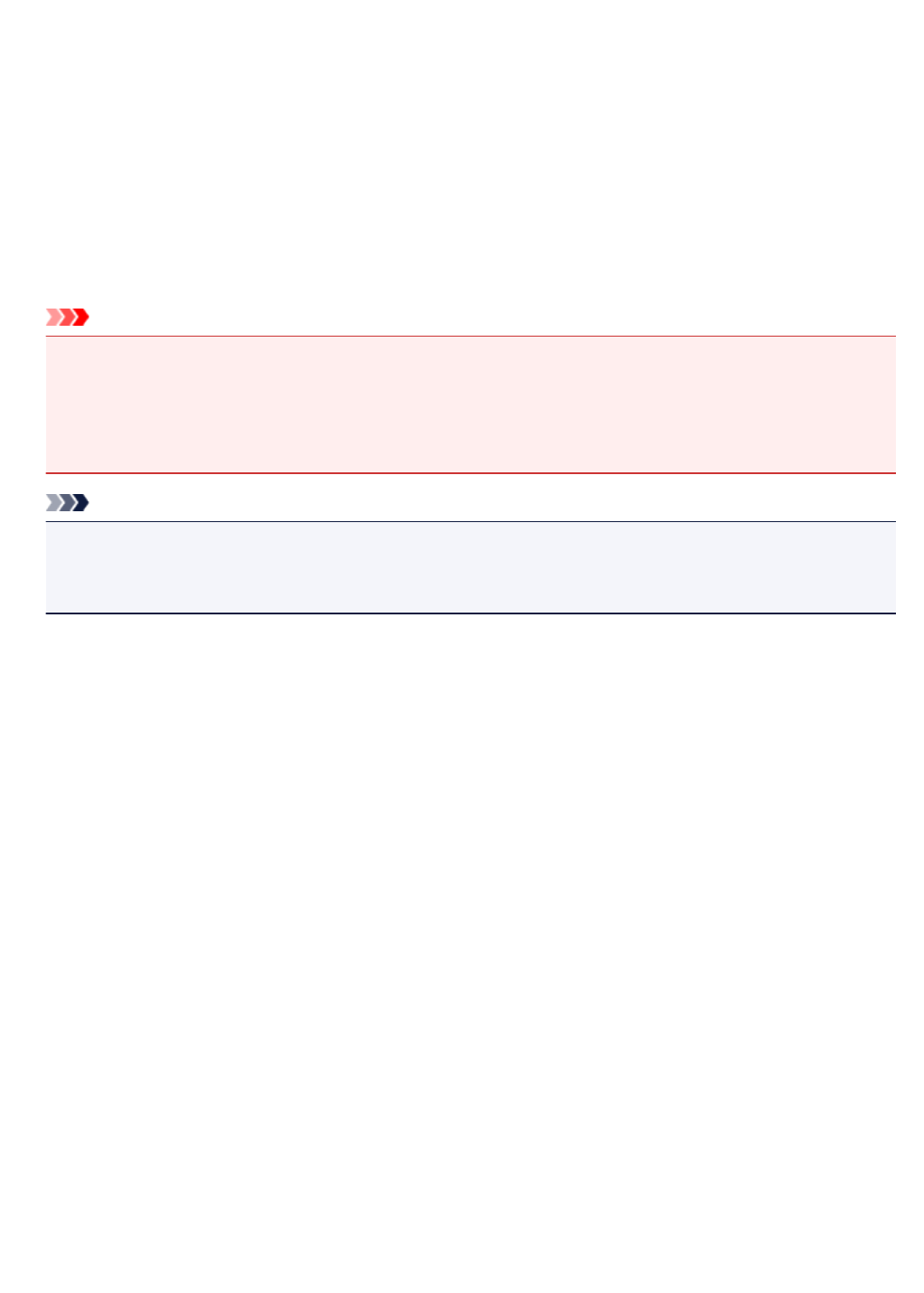
1755
Cause
The ink has run out.
What to Do
To maintain both machine and print quality, the machine cannot continue printing under the ink out
condition.
Cancel printing and replace the ink tank before printing again.
Important
• Do not remove an ink tank until a new one is prepared to be installed.
• Once you remove an ink tank, the machine will not operate until a new one is installed.
• Once you remove an ink tank, the machine will not operate even if the removed ink tank is just
reinstalled.
Note
• Since the information contained in the fax may be lost if it is printed in this condition, the received fax
will not be printed and will be stored in the printer's memory until the ink is replaced. You must
manually print out faxes that were stored in the memory.
1242
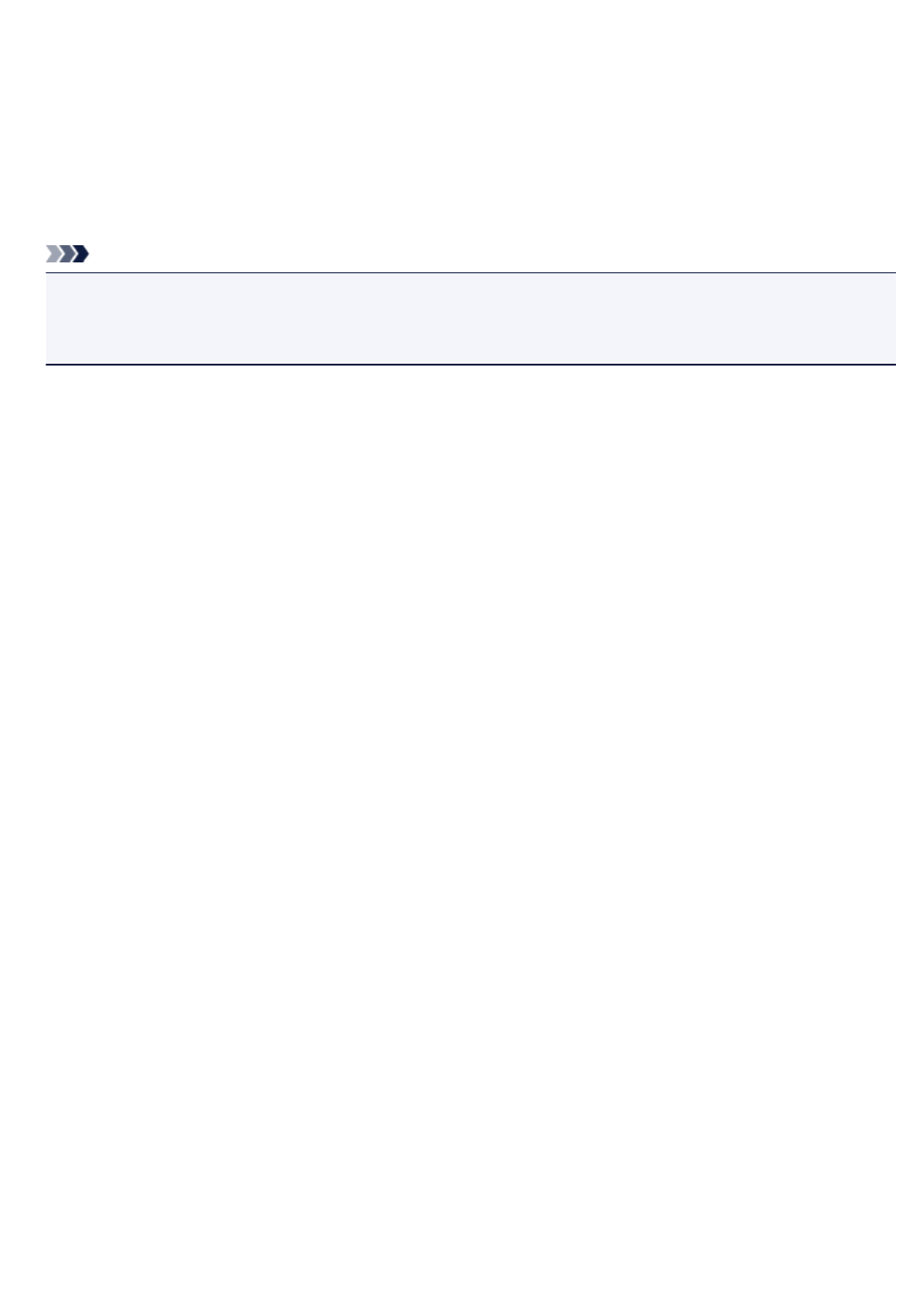
1871
Cause
Cassette is not inserted.
What to Do
Insert the cassette.
Note
• Once the cassette is installed, the screen for setting cassette paper information appears. Set the
paper information for the paper in the cassette.
• To cancel printing, press the printer's Stop button.
1243
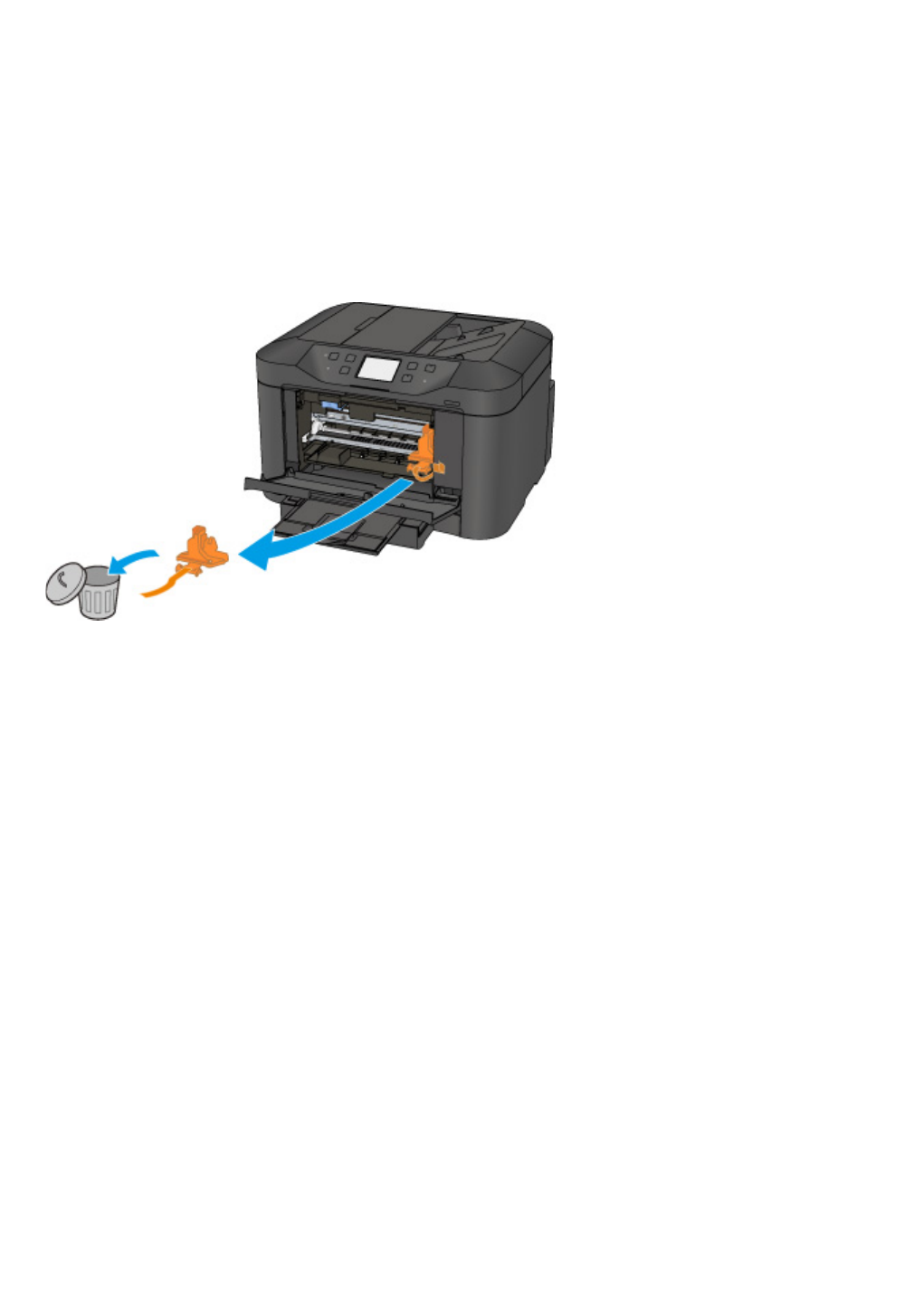
1890
Cause
Protective material or tape may still be attached to print head holder.
What to Do
Open the front cover and make sure the protective material and tape have been removed from the print
head holder.
If the protective material or tape is still there, remove it and close the front cover.
If this does not solve the problem, contact your nearest Canon service center to request a repair.
1244

2001
Cause
An incompatible device is connected.
What to Do
Check the device connected to the USB flash drive port. Printing photos directly is possible with a USB
flash drive.
1245

2002
Cause
An unsupported USB hub is connected.
What to Do
If a USB flash drive is connected to the printer through the USB hub, disconnect the hub from the printer.
Connect a USB flash drive directly to the printer.
1246
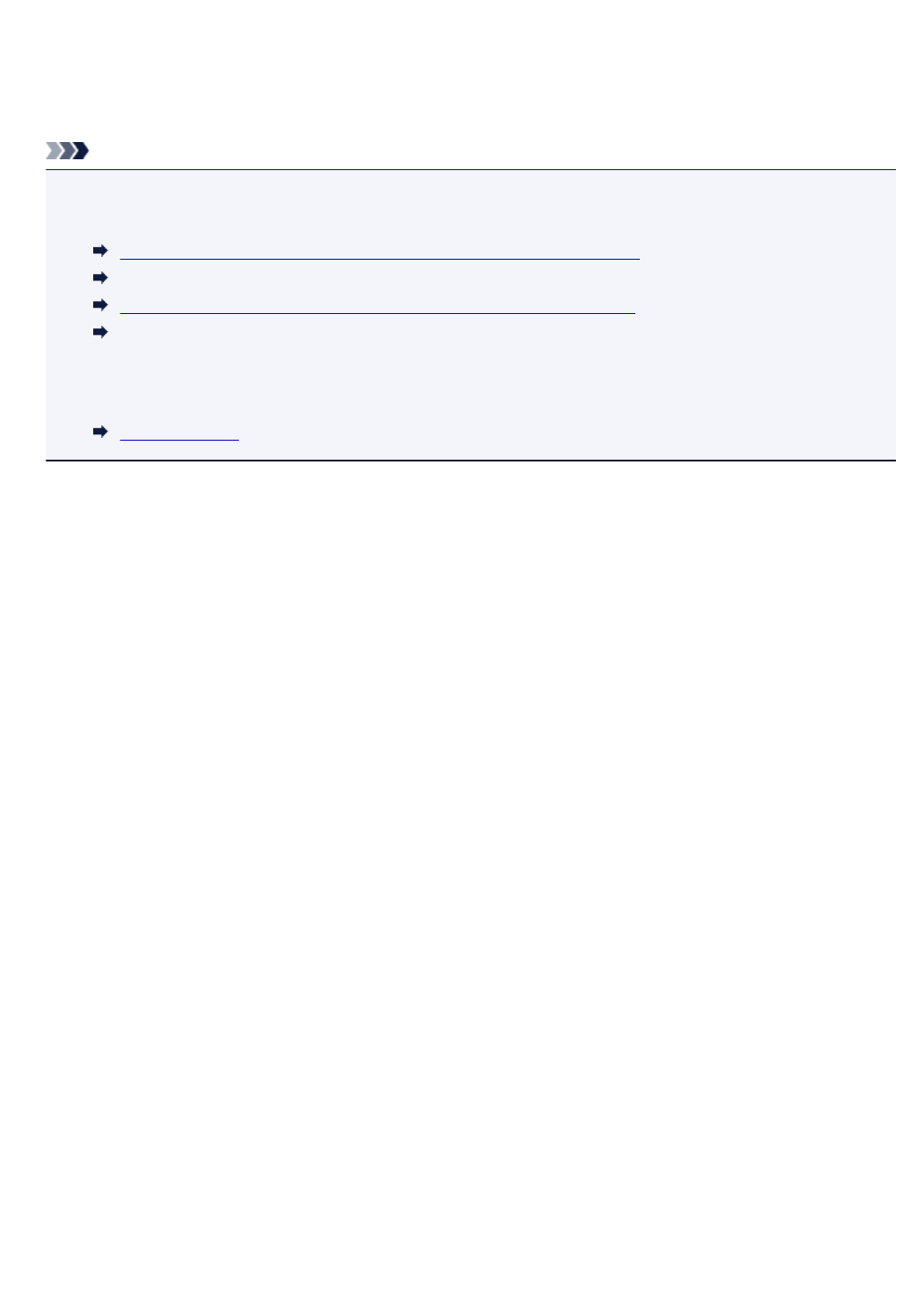
2110
Cause
Paper settings for printing or copying differ from cassette paper information set on printer.
Note
• See below for the correct correspondence between paper settings made on the printer driver or on
the touch screen.
Paper Settings on the Printer Driver and the Printer (Media Type) (Windows)
Paper Settings on the Printer Driver and the Printer (Media Type) (Mac OS)
Paper Settings on the Printer Driver and the Printer (Paper Size) (Windows)
Paper Settings on the Printer Driver and the Printer (Paper Size) (Mac OS)
• For copying, make the copy paper settings to match the cassette paper information set on the printer.
• See below for more on the cassette paper information that is set on the printer.
Paper Settings
If the print or copy paper settings do not match the cassette paper information set on the printer, as shown
below, a message appears on the touch screen.
• Print settings specified on the printer driver:
Paper size: A5
Media type: Plain paper
• Cassette paper information set on the printer:
Paper size: A4
Media type: Plain paper
After tapping OK on the touch screen, the print or copy paper settings appear below the message.
1247
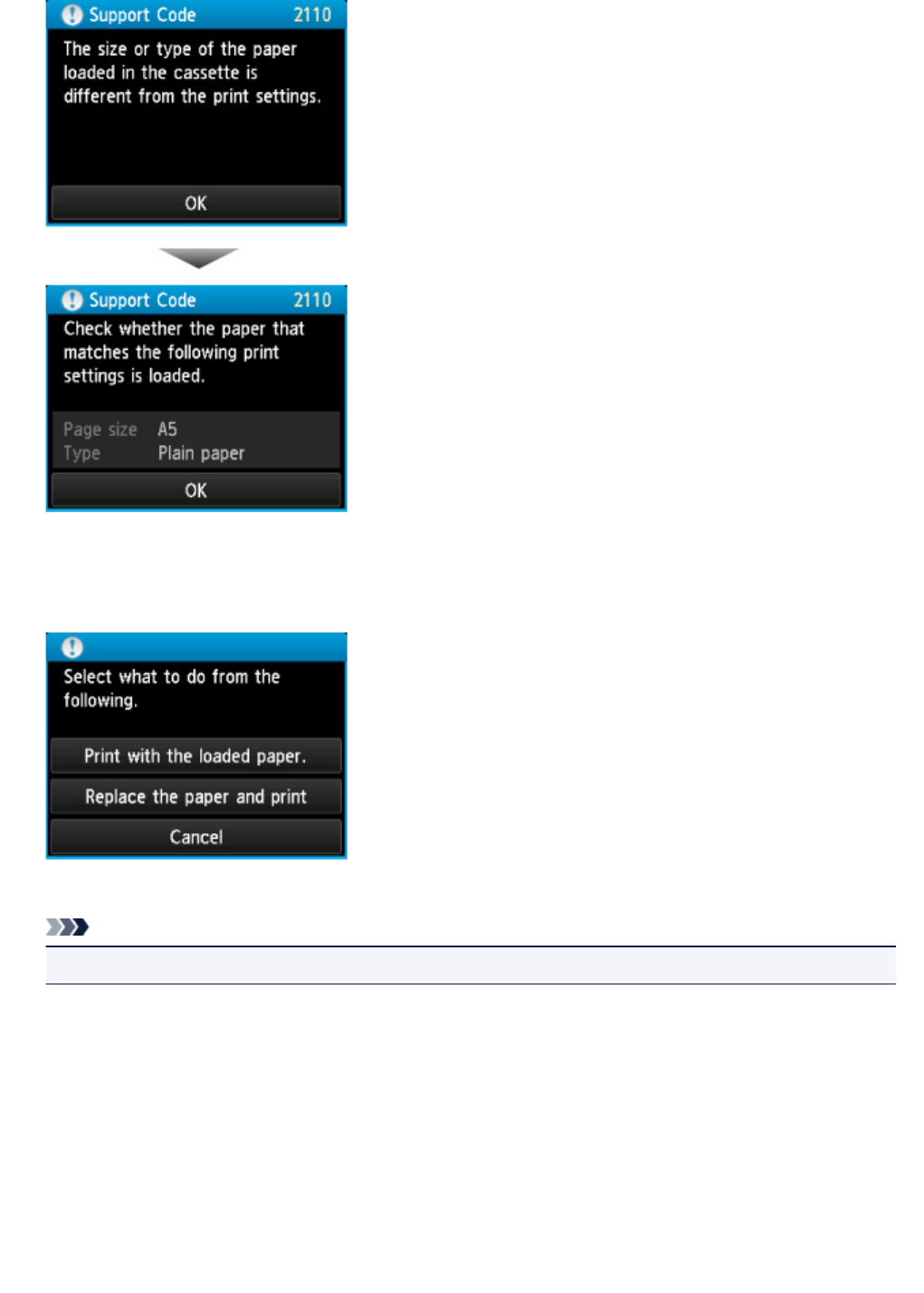
What to Do
Tapping OK on the touch screen again, the screen below appears.
Select the appropriate action.
Note
• All of the options below may not appear, depending on the setting.
Print with the loaded paper.
Select this option to print or copy on the paper in the cassette, without changing the paper settings.
For example, if the paper setting is A5, and A4 is set in the cassette paper information, the A5 size
setting is used to print or copy on the A4 paper in the cassette.
Replace the paper and print
Select this option to print after changing the paper in the cassette.
For example, if the paper setting is A5, and A4 is set in the cassette paper information, change the
paper in the cassette to A5 paper and proceed with printing or copying.
1248
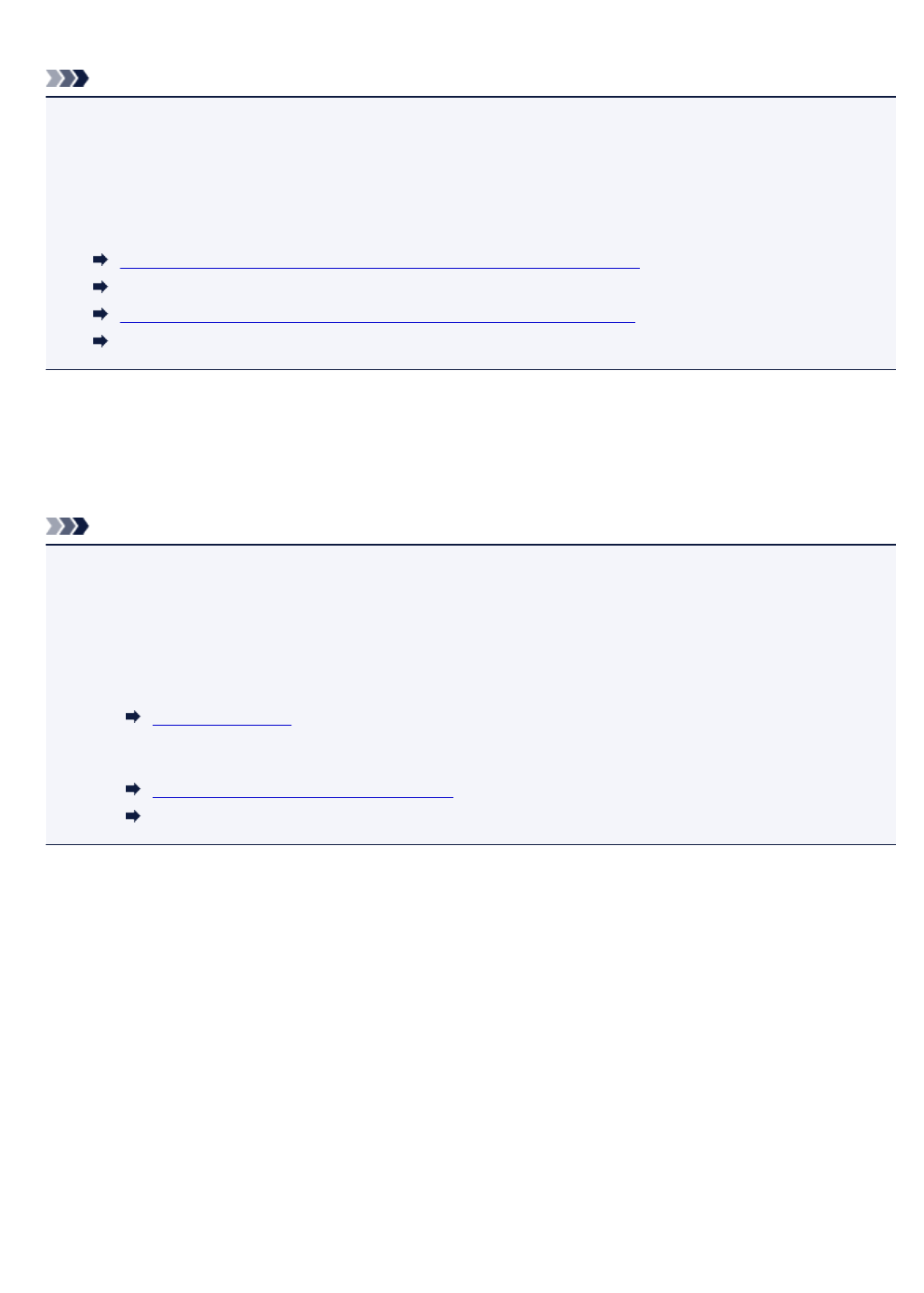
Once you have changed the paper, the screen for setting the cassette paper information appears. Set
the paper information for the paper in the cassette.
Note
• If you do not know what paper information to set, press the Back button. The previous screen
appears, showing the paper size and media type. Check the paper settings and set them as the
cassette paper information.
• See below for the correct correspondence between paper settings made on the printer driver or on
the touch screen.
Paper Settings on the Printer Driver and the Printer (Media Type) (Windows)
Paper Settings on the Printer Driver and the Printer (Media Type) (Mac OS)
Paper Settings on the Printer Driver and the Printer (Paper Size) (Windows)
Paper Settings on the Printer Driver and the Printer (Paper Size) (Mac OS)
Cancel
Cancels printing.
Select this option to change the print or copy paper settings. Change the paper settings and retry the
printing.
Note
• To suppress the misprint prevention message, change the setting as described below. When you
suppress the message, the printer uses the paper settings to print or copy on the paper in the
cassette, even if the paper does not match the settings.
• To change the message view setting when printing or copying using the operation panel of the
printer:
Cassette settings
• To change the message view setting when printing using the printer driver:
Changing the Printer Operation Mode (Windows)
Changing the Printer Operation Mode (Mac OS)
1249
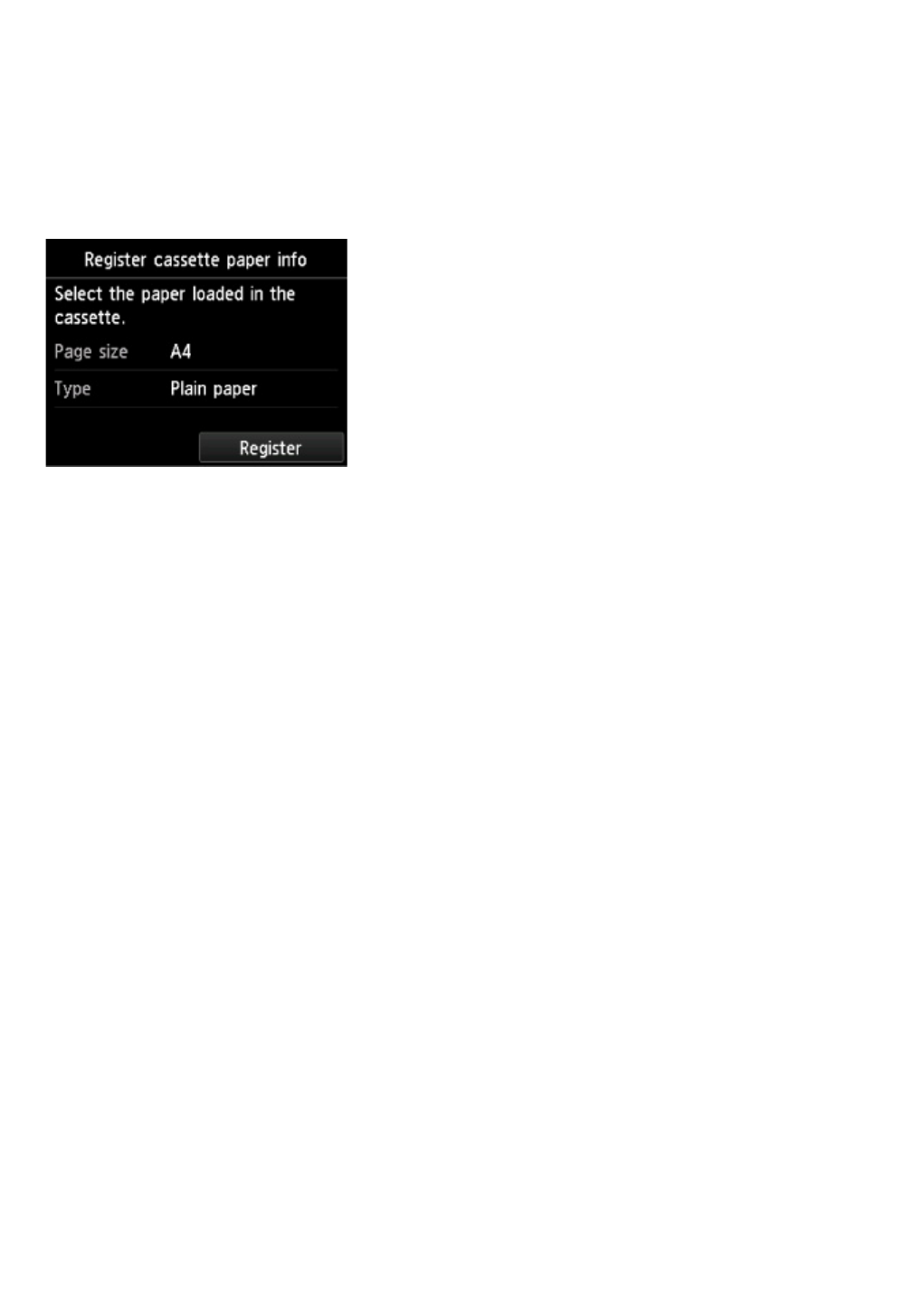
2120
Cause
Cassette paper settings are incomplete.
What to Do
If screen below is shown, the cassette paper settings are incomplete.
Tap Register on the touch screen of the printer to finish setting the cassette paper settings.
1250

2500
Cause
Cause of following may have occurred failure of automatic print head alignment.
• Print head nozzles are clogged.
• Paper of size other than A4 or Letter is loaded.
• Paper output slot is exposed to strong light.
What to Do
Tap OK on the touch screen and take the corresponding actions below.
• Check the print head condition by printing the nozzle check pattern.
• Load one sheet of A4/Letter-sized plain paper and perform automatic print head alignment again.
• Adjust your operating environment and/or the position of the printer so that the paper output slot is not
exposed directly to strong light.
After carrying out the above measures, if the problem continues after aligning the print head again, tap
OK on the touch screen, and then perform manual print head alignment.
1251

2700
Cause
Possible causes include the following.
• An error occurred during copying and some time elapsed.
• Document is remained in ADF.
• An error occurred during scanning and the document is remained in ADF.
What to Do
Take the corresponding actions below.
• When you copy, tap OK on the touch screen and retry copying.
• When the document is remained in the ADF, tap OK on the touch screen to feed out the document.
• When you scan, press the Stop button to cancel the scanning, and try to scan again.
1252

2802
Cause
No document in ADF.
What to Do
Tap OK on the touch screen to resolve the error and operate again after loading documents.
1253
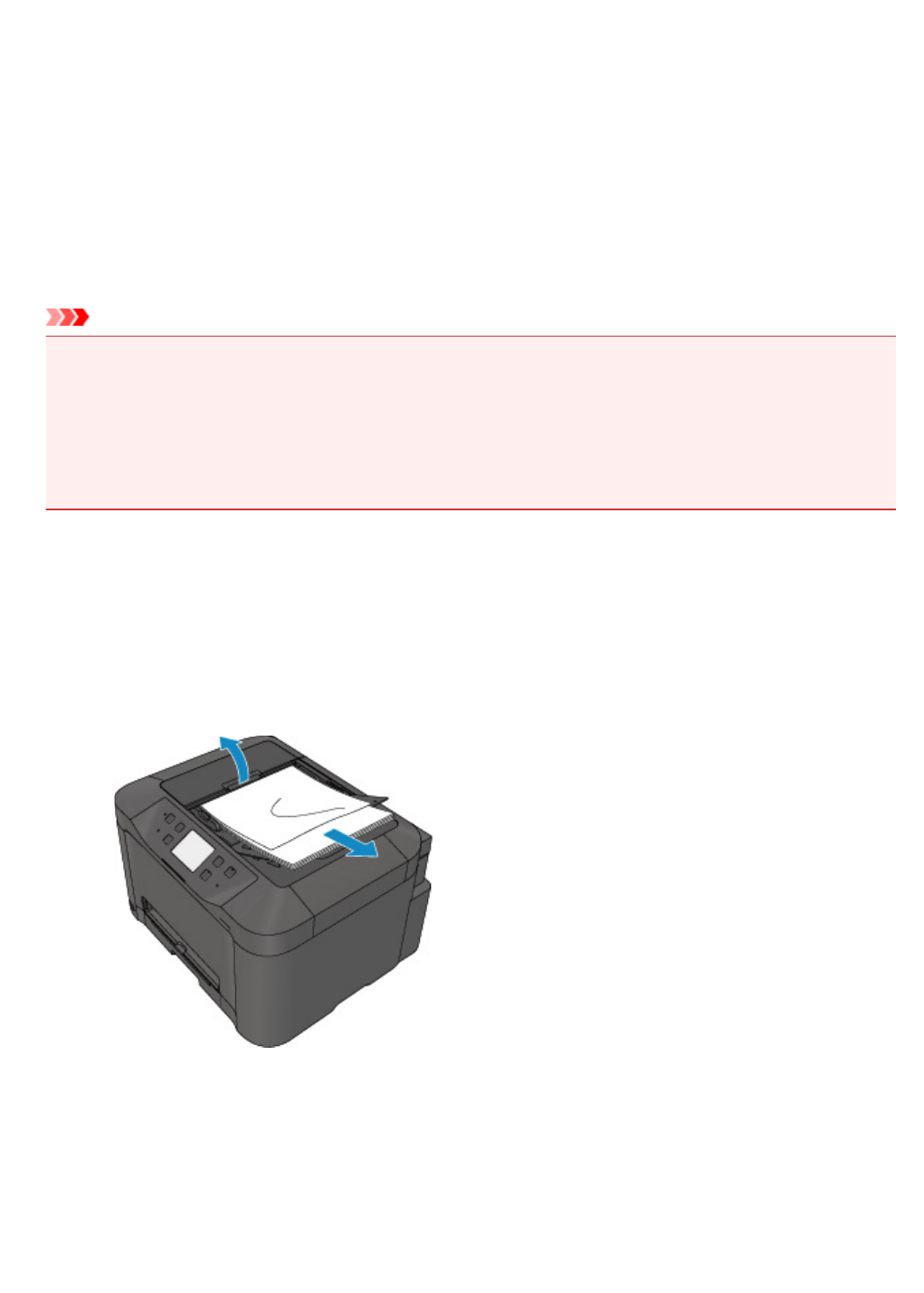
2803
Cause
Document is too long or is jammed in ADF.
What to Do
Tap OK on the touch screen. Then make sure the document you are loading meets the printer's
requirements before redoing the operation.
If the document is jammed, remove the jammed document following the procedure below.
Important
• The printer cannot be turned off while it is sending or receiving a fax, or when the received fax or the
unsent fax are stored in the printer's memory.
Turn off the printer after making sure it has completed sending or receiving all the faxes. Do not
unplug when turning off the printer.
If you unplug the power cord, all the faxes stored in the printer's memory are deleted.
•If the original is jammed in the ADF:
Remove the document following the procedure below.
1. If printing is in progress, press Stop button.
2. Turn off printer.
3. If a multi-page document is loaded, remove any pages other than jammed page from ADF and
open document feeder cover.
4. Pull out jammed document from ADF.
1254
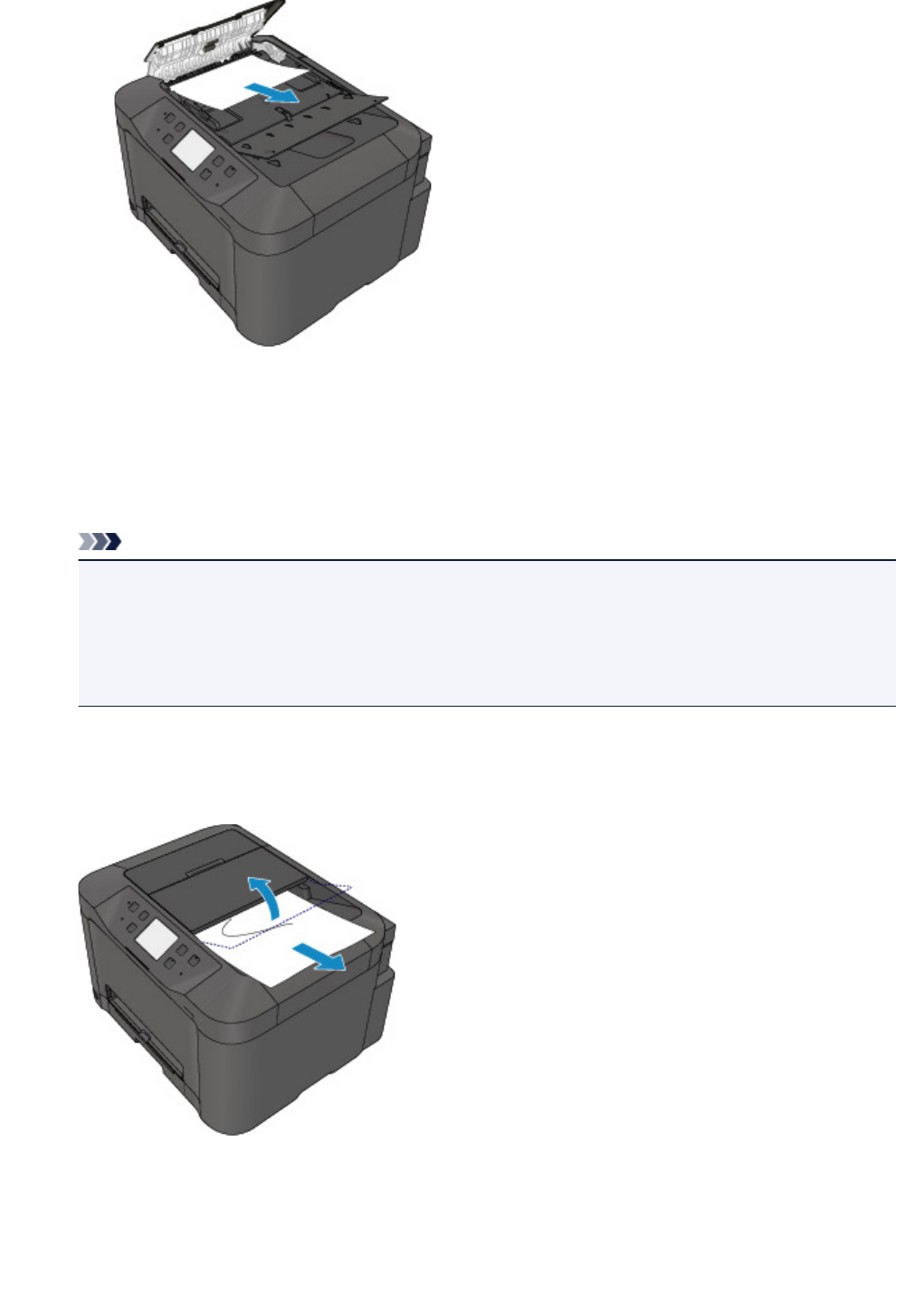
5. Close document feeder cover and turn on printer.
When rescanning the document after clearing the error, rescan it from the first page.
If you cannot remove the document or the document tears inside the printer, or if the document jam
error continues after removing the document, contact your nearest Canon service center to request a
repair.
Note
• The document may not feed properly depending on the media type, or your environment, such as
when the temperature and humidity are either too high or too low.
In this case, reduce the number of document pages to approximately half of the loading capacity.
If the document still jams, use the platen glass instead.
•If the original is jammed in the ADF (from the paper feed side):
If the document is jammed in the document output slot, close the document tray as shown in the
figure below and pull out the document.
When rescanning the document after clearing the error, rescan it from the first page.
If you cannot remove the document or the document tears inside the printer, or if the document jam
error continues after removing the document, contact your nearest Canon service center to request a
repair.
1255

2805
Cause
Document cover is open.
What to Do
Close the document cover and tap OK on the touch screen of the printer.
1256

3401
Cause
Reserve copy is canceled.
What to Do
Tap OK on the touch screen of the printer.
1257

3402
Cause
Printer could not make copies because its memory is full.
What to Do
Tap OK on the touch screen of the printer.
Wait for a while and retry copying.
1258

3403
Cause
Printer could not make copies because its memory is full.
What to Do
Tap OK on the touch screen of the printer.
Wait for a while and retry copying.
1259

3404
Cause
Document is remained in ADF.
What to Do
Wait for a while. Copying will start.
1260

3405
Cause
Printer could not make copies because its memory is full.
What to Do
Tap OK on the touch screen of the printer.
Wait for a while and retry copying.
1261

3406
Cause
Printer could not make copies because its memory is full.
What to Do
Tap OK on the touch screen of the printer.
Wait for a while and retry copying.
1262

3407
Cause
Loading next sheet is required.
What to Do
Load the next sheet and tap OK on the touch screen of the printer.
1263

3408
Cause
Preview screen is displayed on printer's touch screen.
What to Do
After seeing the preview, tap OK on the touch screen of the printer.
1264

3410
Cause
Cannot reserve copying job because printer is scanning a sheet.
What to Do
Wait for a while and reserve copying job.
1265

3411
Cause
You can reserve copying job.
What to Do
If you reserve a copying job, load the original and press the printer's Color button for color copying or the
printer's Black button for black & white copying.
1266
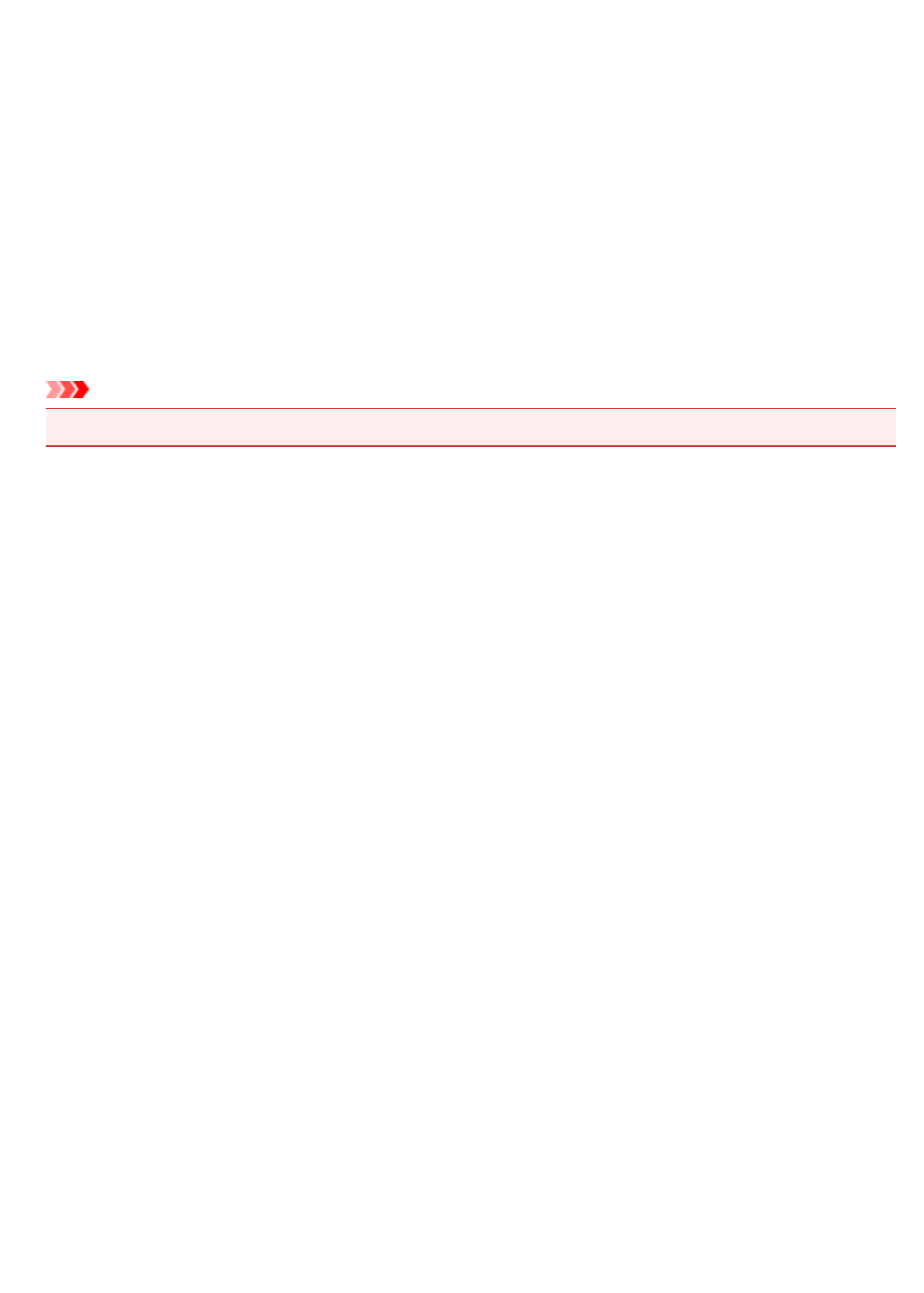
3412
Cause
Scanning original has failed.
What to Do
Tap OK on the touch screen of the printer, and then follow the actions below.
• Make sure that the original is placed on the platen glass.
• Make sure that the original is set in the correct position and orientation.
After carrying out the above actions, retry scanning or copying.
If the error is still not resolved, specify the size of the original.
Important
• The original that is smaller than 1.2 inches (3 cm) square may not be scanned correctly.
1267

3413
Cause
Prevent paper abrasion has been set.
What to Do
If you continue printing in the current setting, tap Yes.
Prevent paper abrasion may reduce the print speed.
If you disable this setting, tap No. Touch the HOME button, select Setup, Device settings, and Print
settings, and then set Prevent paper abrasion to OFF.
1268
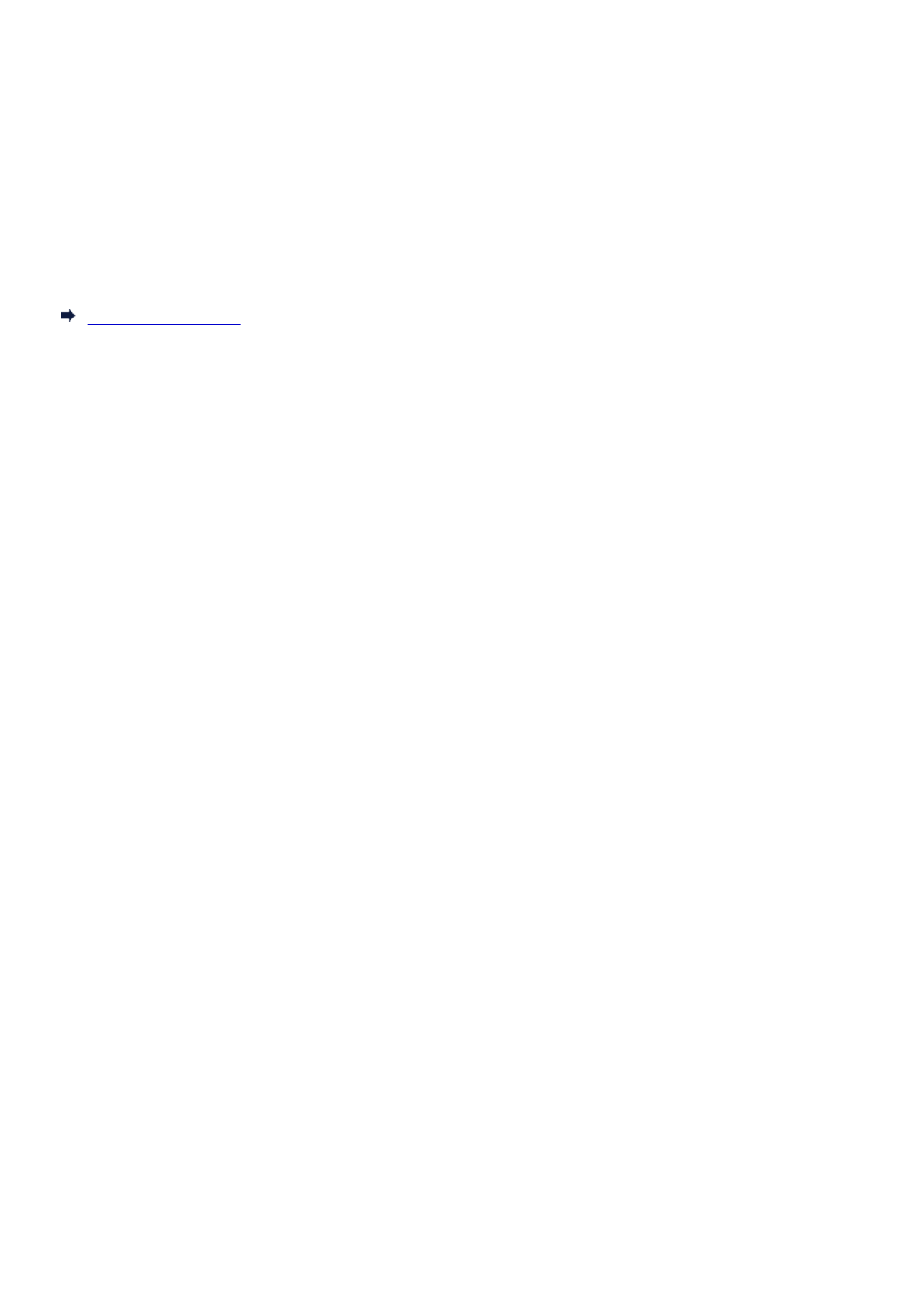
3414
Cause
Communication with mail server failed.
What to Do
Tap OK on the touch screen of the printer.
Make sure that the address and port number of the outgoing mail server (SMTP server) in mail server
settings are correct with Remote UI.
Setting Mail Server
If the error is not resolved, check your mail server condition.
For settings and condition of your mail server, contact the administrator of mail server.
1269
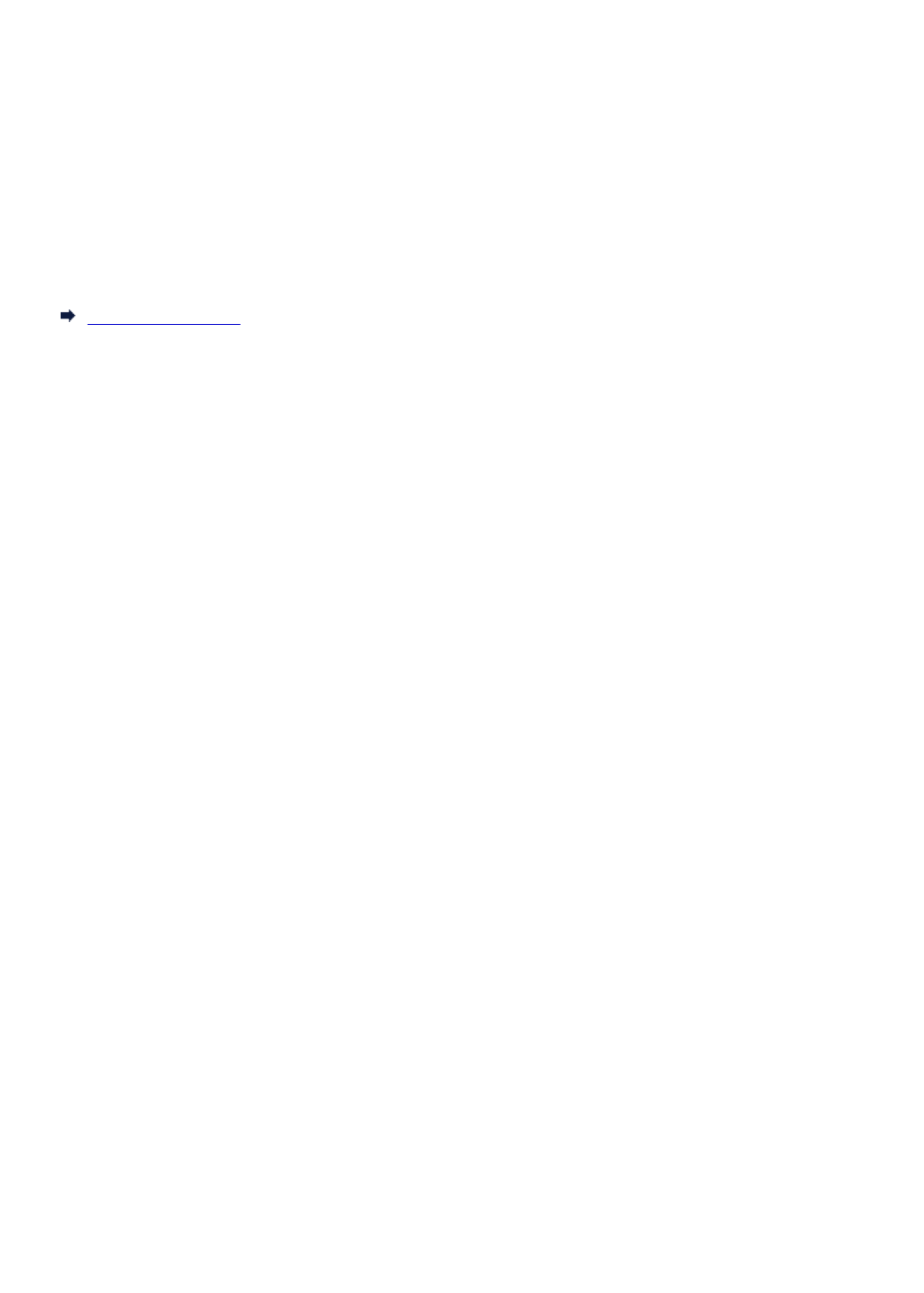
3415
Cause
Communication with mail server failed.
What to Do
Tap OK on the touch screen of the printer.
Make sure that the address and port number of the incoming mail server (POP3 server) in mail server
settings are correct with Remote UI.
Setting Mail Server
If the error is not resolved, check your mail server condition.
For settings and condition of your mail server, contact the administrator of mail server.
1270
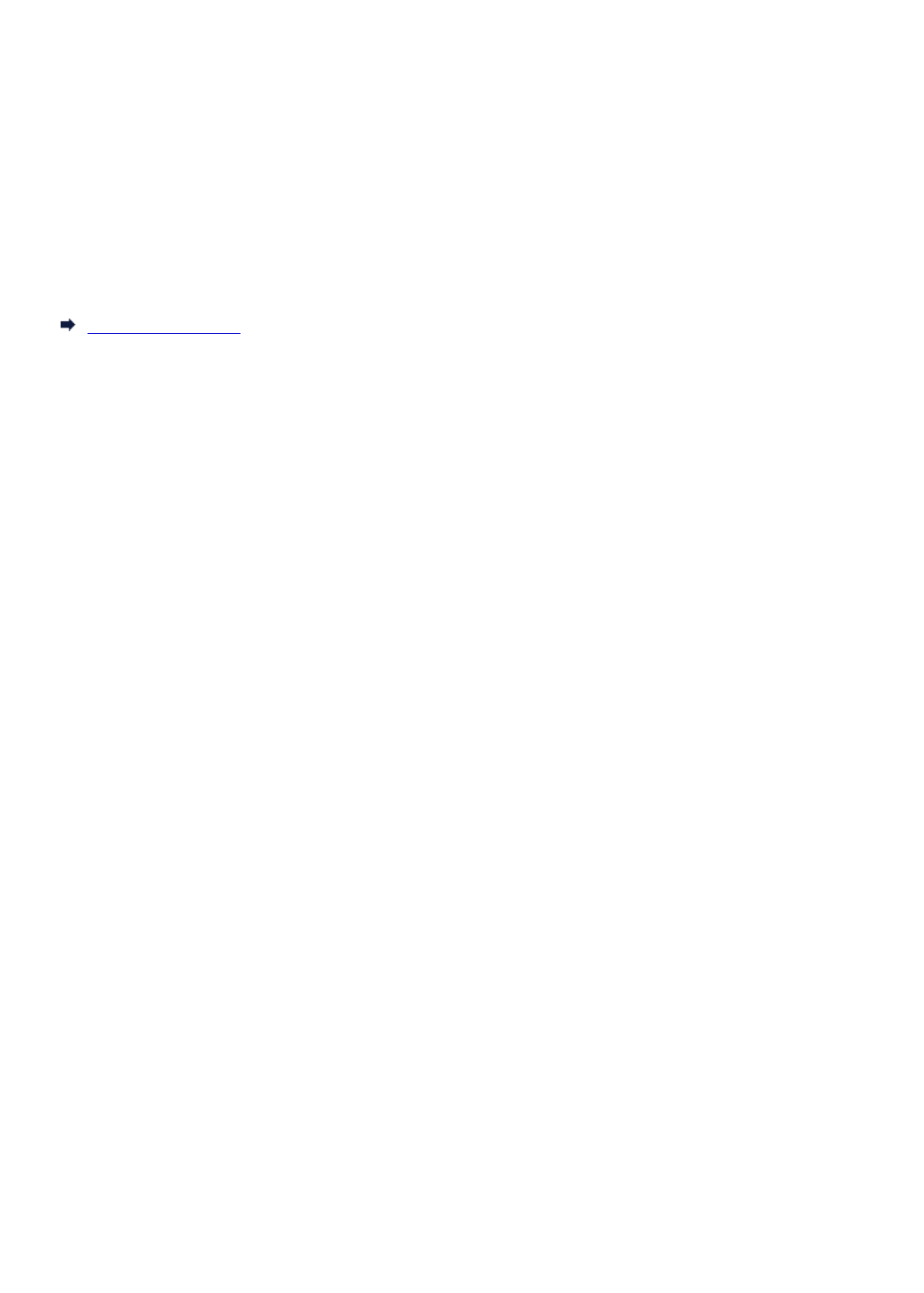
3416
Cause
Communication with mail server failed.
What to Do
Tap OK on the touch screen of the printer.
Make sure that the settings for secure connection (SSL) of your mail server and printer are match.
For printer's settings for secure connection (SSL), use Remote UI.
Setting Mail Server
For setting for secure connection (SSL) of your mail server, contact the administrator of mail server.
1271
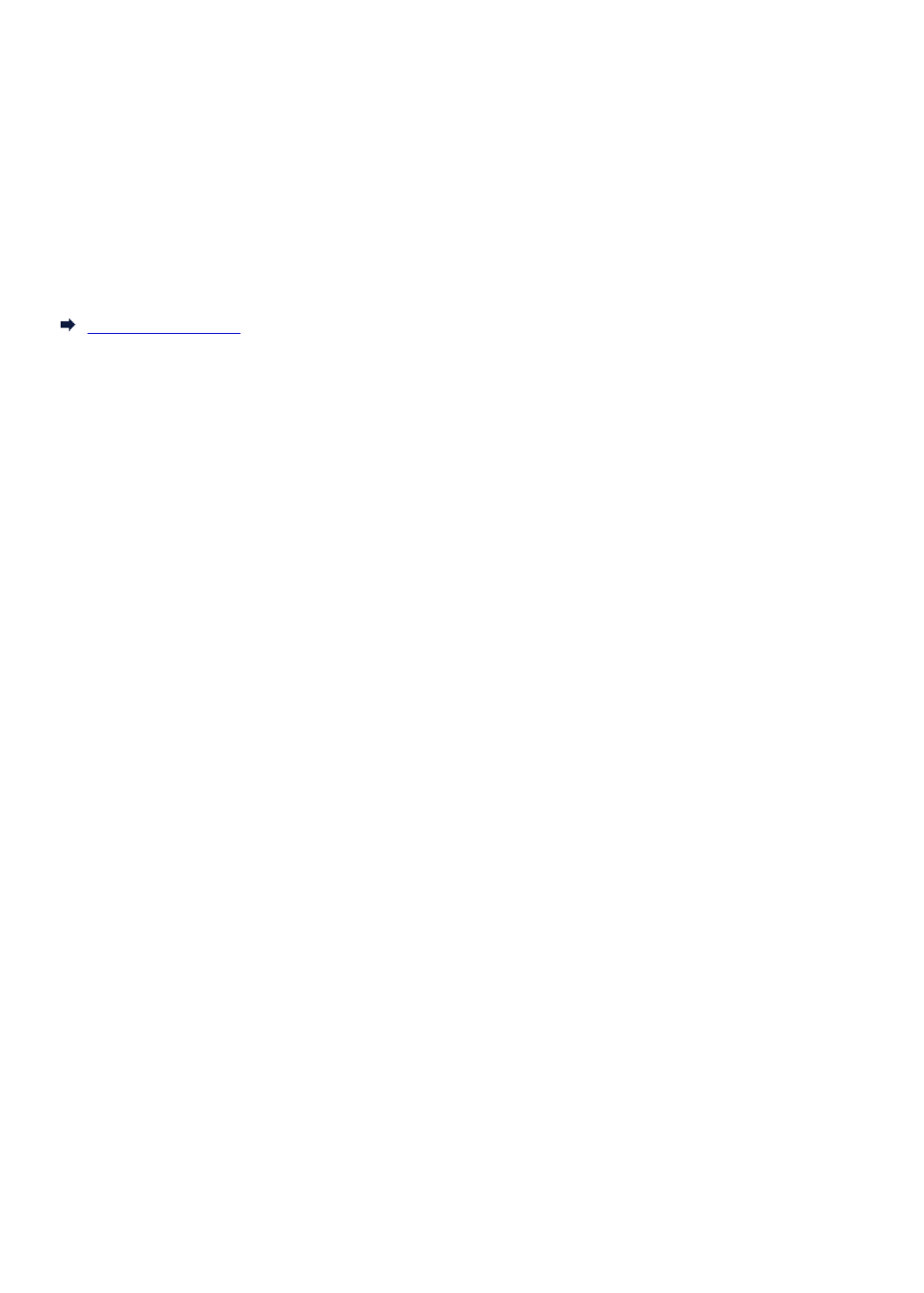
3417
Cause
Communication with mail server failed.
What to Do
Tap OK on the touch screen of the printer.
Make sure that the settings for secure connection (SSL) of your mail server and printer are match.
For printer's settings for secure connection (SSL), use Remote UI.
Setting Mail Server
For setting for secure connection (SSL) of your mail server, contact the administrator of mail server.
1272
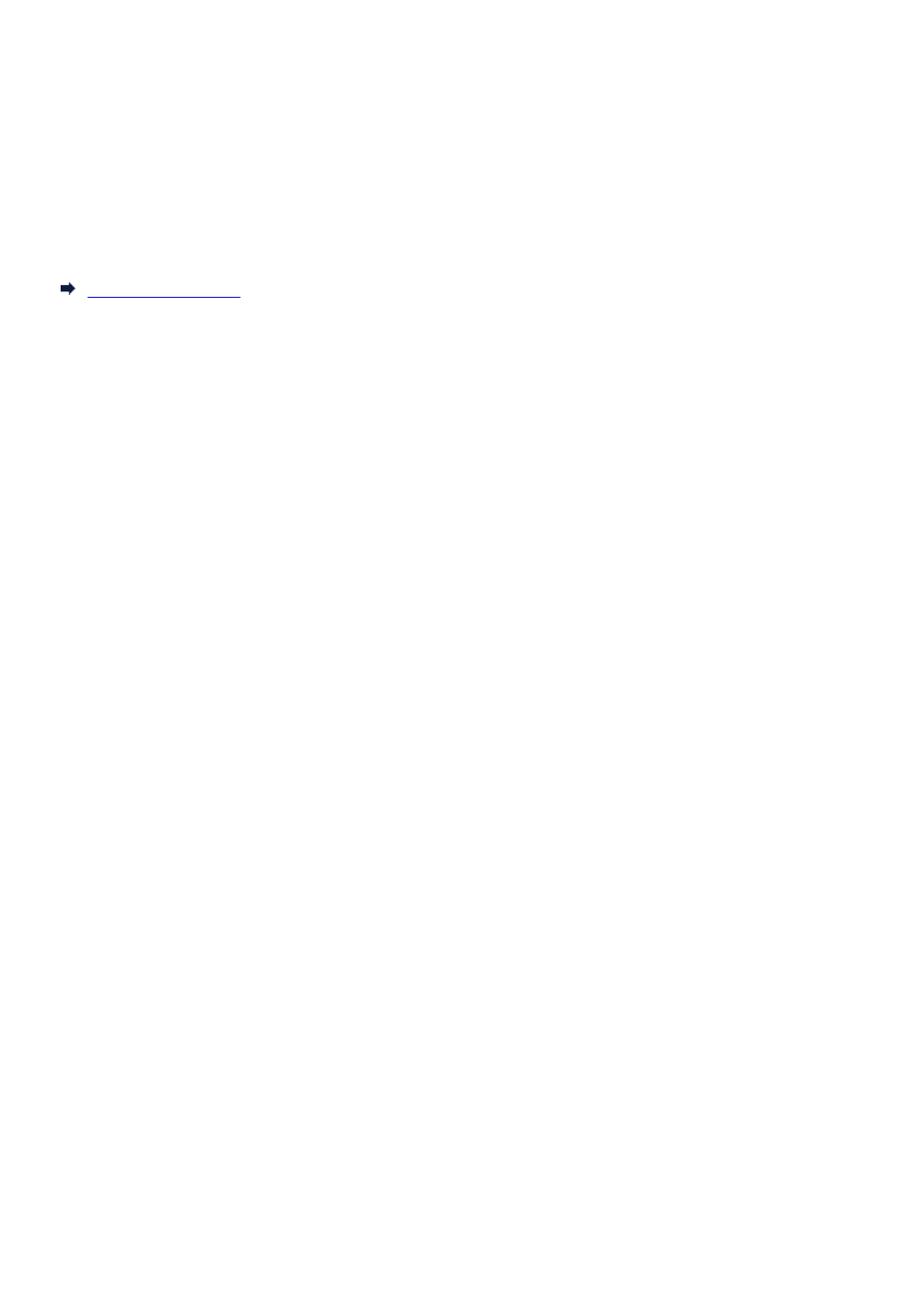
3418
Cause
Communication with mail server failed.
What to Do
Tap OK on the touch screen of the printer.
Make sure that the settings item for the outgoing mail server (SMTP server) are correct with Remote UI.
Setting Mail Server
If the error is not resolved, check your mail server condition.
For settings and condition of your mail server, contact the administrator of mail server.
1273
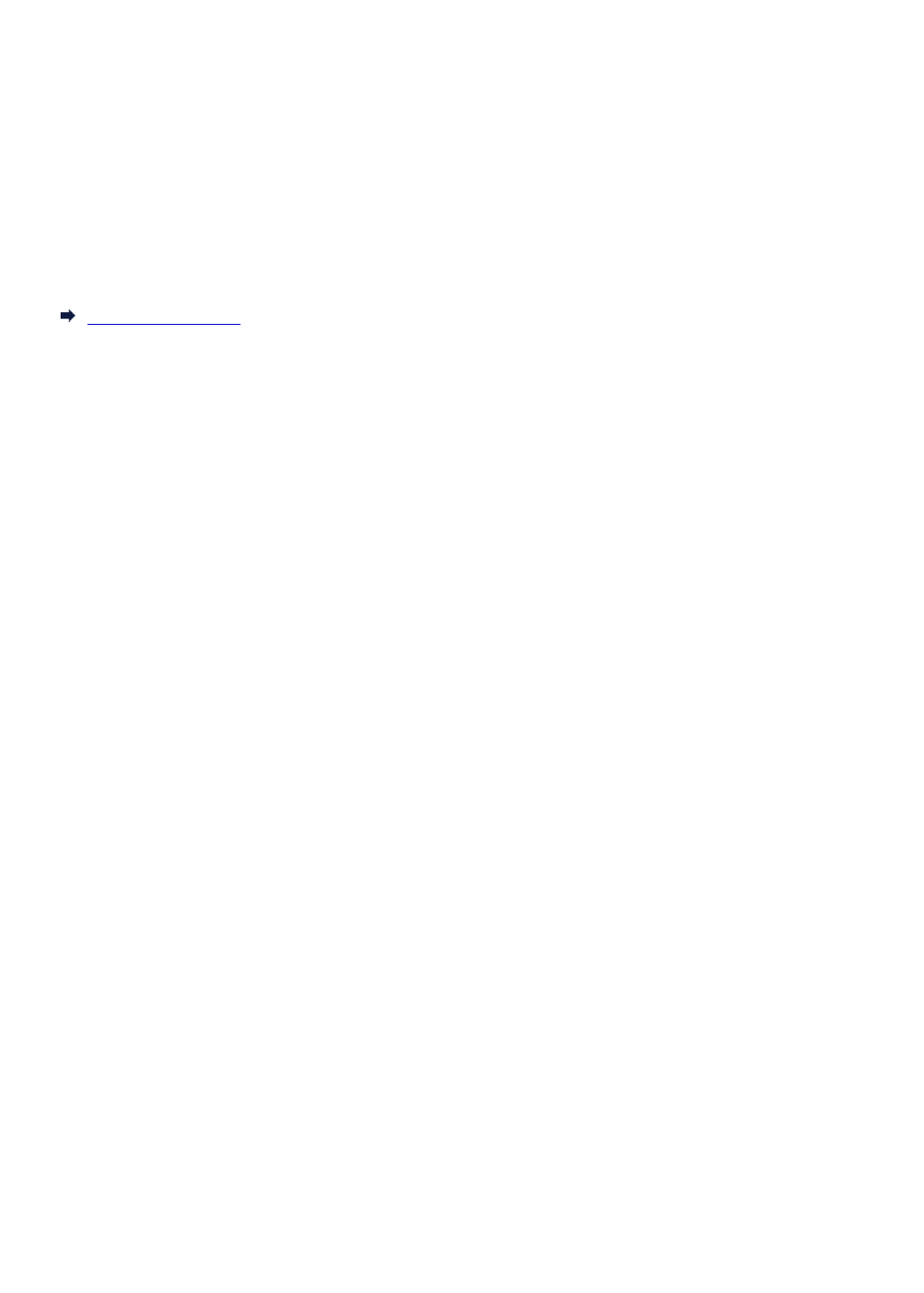
3419
Cause
Communication with mail server failed.
What to Do
Tap OK on the touch screen of the printer.
Make sure that the outgoing account and outgoing password in mail server settings are correct with
Remote UI.
Setting Mail Server
If the error is not resolved, check your mail server condition.
For settings and condition of your mail server, contact the administrator of mail server.
1274
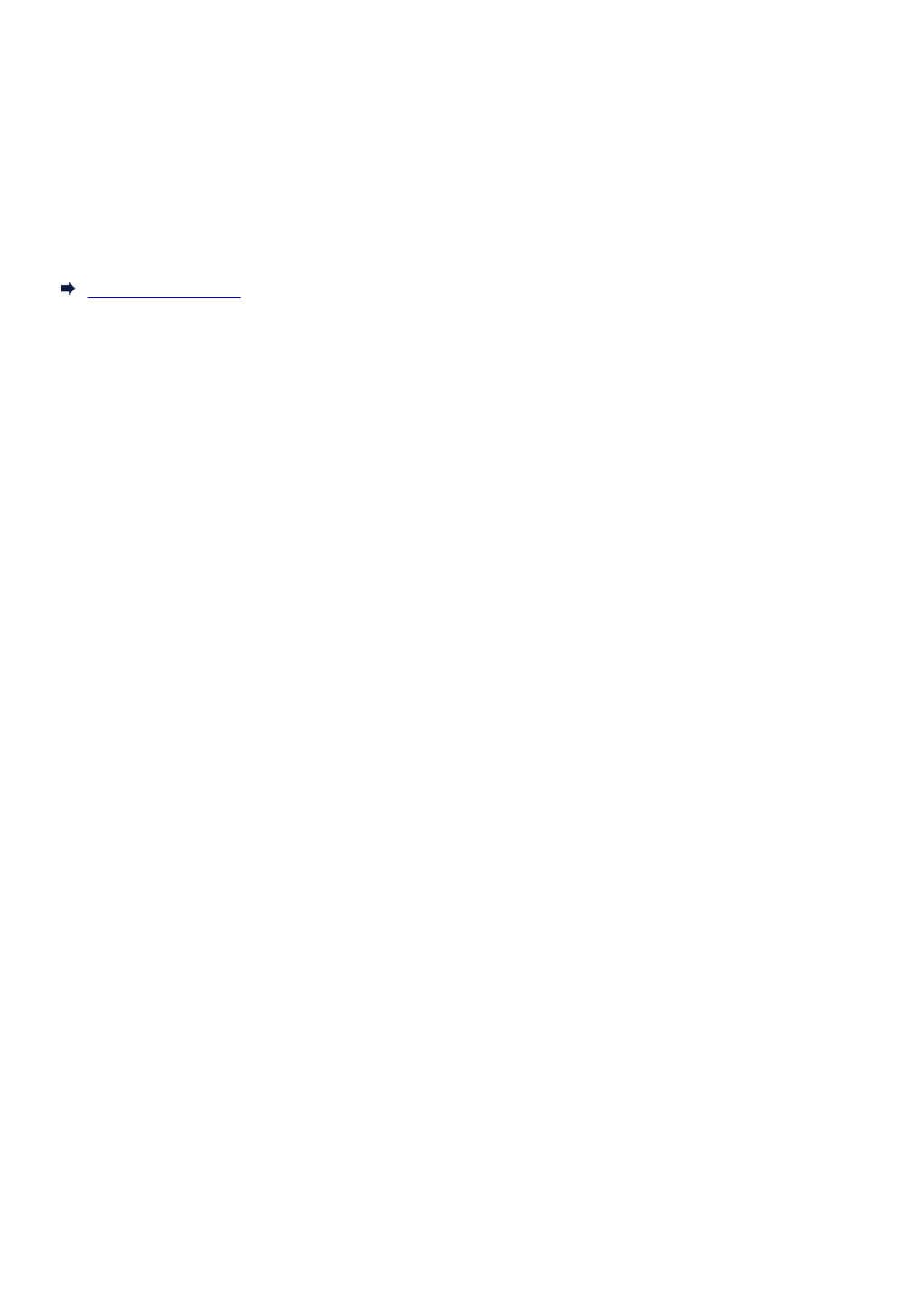
3420
Cause
Communication with mail server failed.
What to Do
Tap OK on the touch screen of the printer.
Make sure that the settings item for the incoming mail server (POP3 server) are correct with Remote UI.
Setting Mail Server
If the error is not resolved, check your mail server condition.
For settings and condition of your mail server, contact the administrator of mail server.
1275
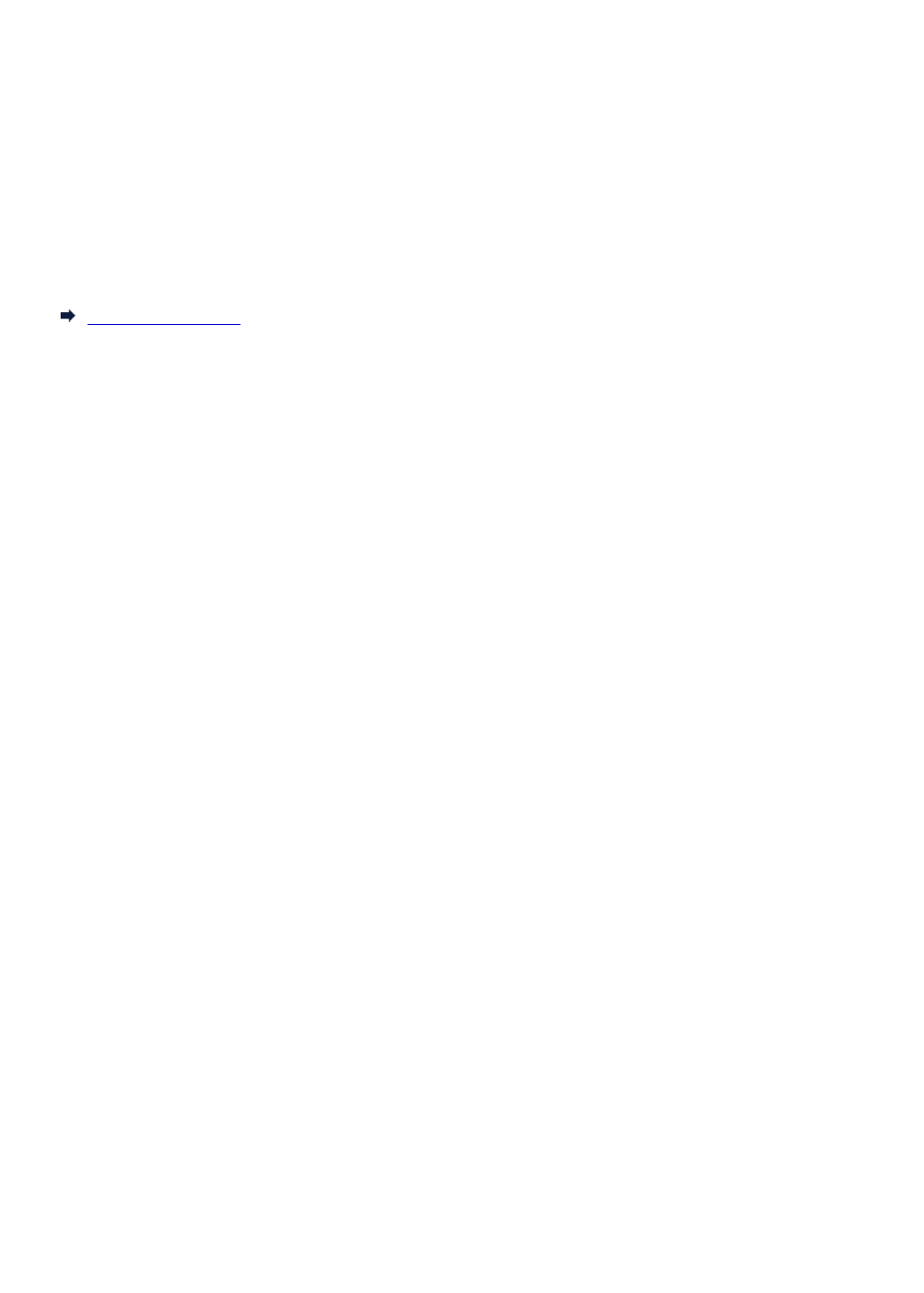
3421
Cause
Communication with mail server failed.
What to Do
Tap OK on the touch screen of the printer.
Make sure that the incoming account and incoming password in mail server settings are correct with
Remote UI.
Setting Mail Server
If the error is not resolved, check your mail server condition.
For settings and condition of your mail server, contact the administrator of mail server.
1276
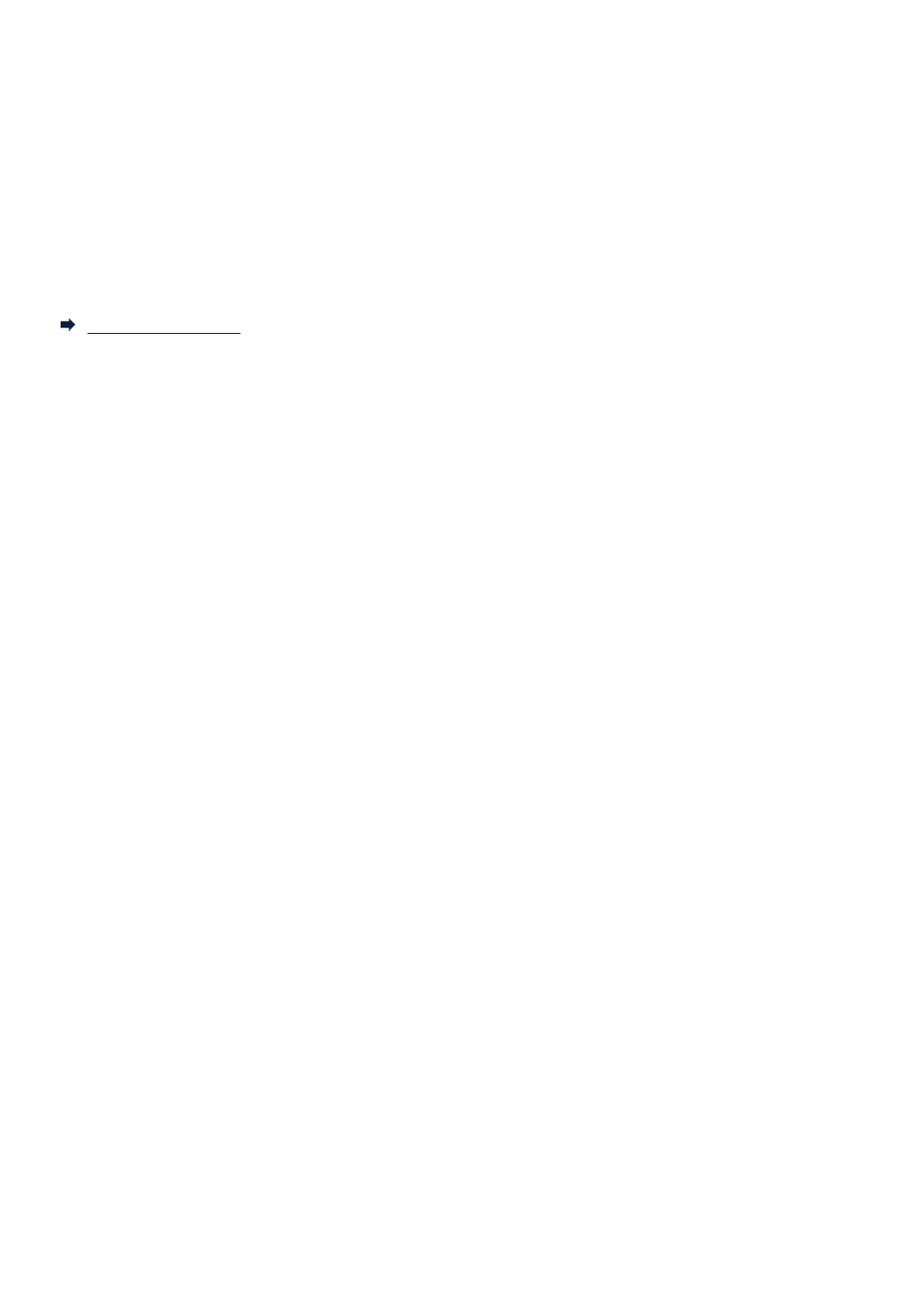
3422
Cause
Communication with mail server failed.
What to Do
Tap OK on the touch screen of the printer.
Make sure that the APOP authentication settings of your mail server and printer are match.
For printer's APOP authentication setting, use Remote UI.
Setting Mail Server
If the error is not resolved, check your mail server condition.
For APOP authentication setting of your mail server, contact the administrator of mail server.
1277
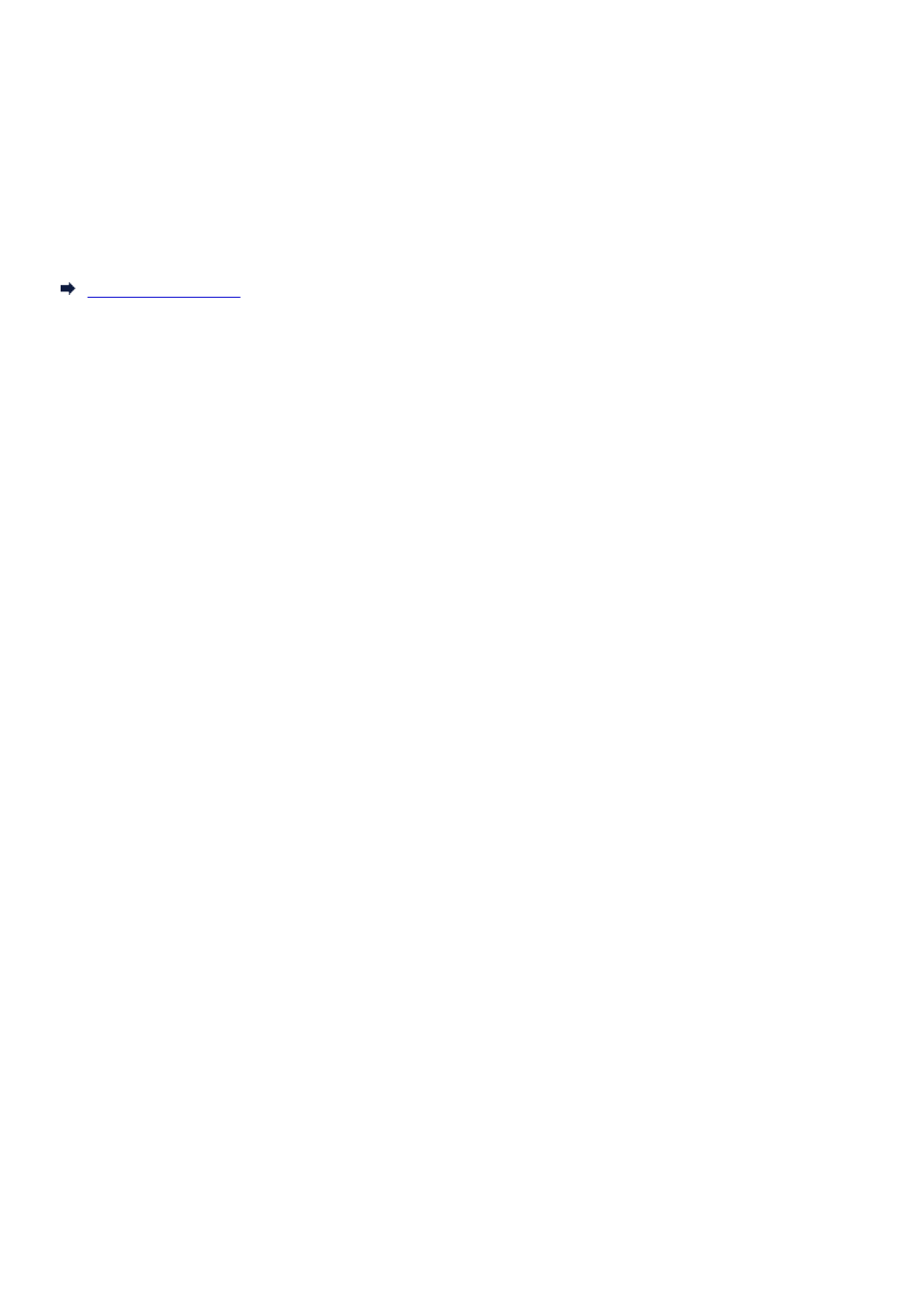
3423
Cause
Communication with mail server failed.
What to Do
Tap OK on the touch screen of the printer.
Make sure that the mail server settings are correct with Remote UI.
Setting Mail Server
If the error is not resolved, check your mail server condition.
For settings and condition of your mail server, contact the administrator of mail server.
1278

3424
Cause
Sending mail failed.
What to Do
Tap OK on the touch screen of the printer.
Specify the correct destination's mail address, and then retry sending mail.
1279
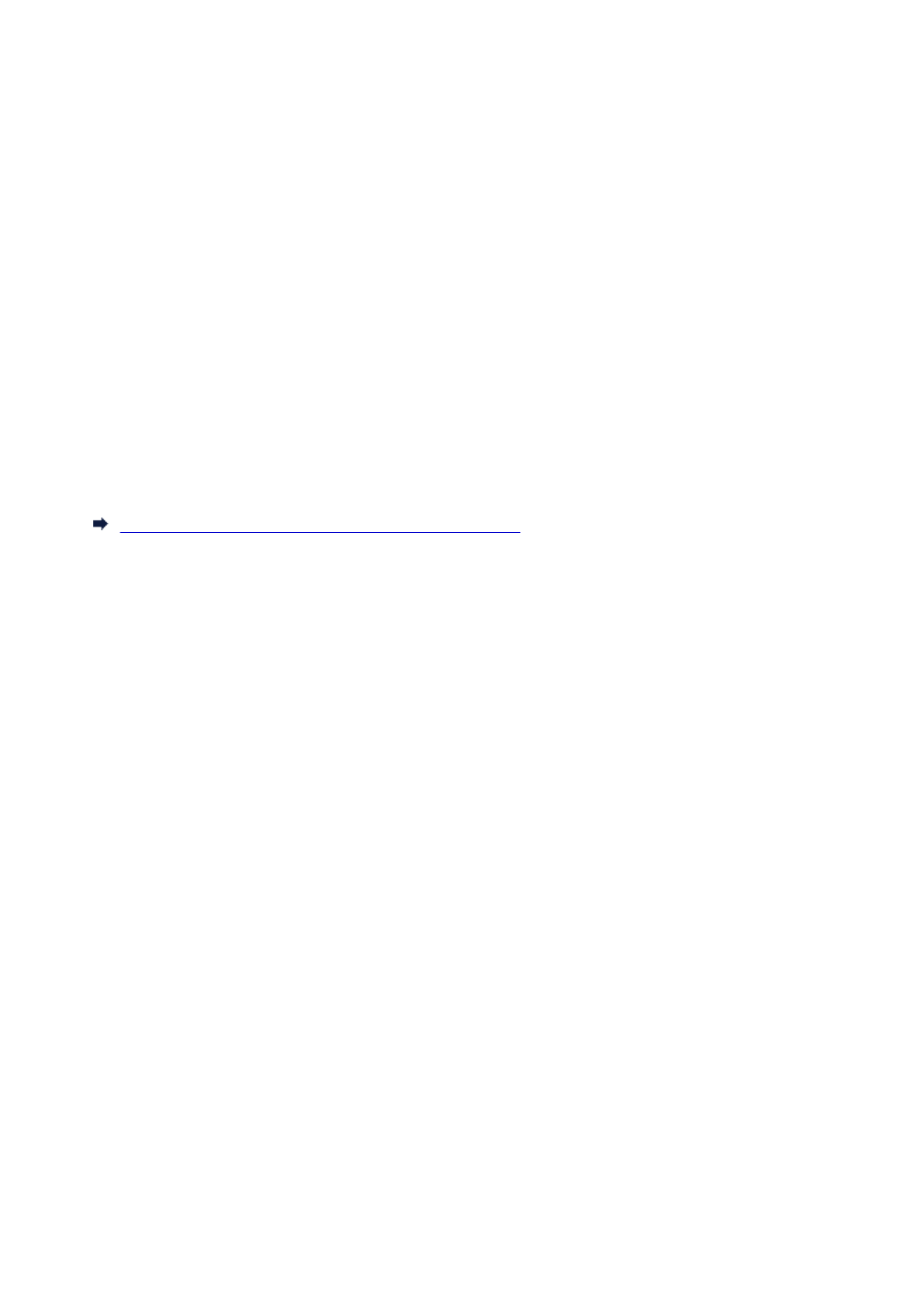
3425
Cause
Cause of following may have occurred failure of sending mail.
• File size of scanned data is too large.
• Printer's memory is full.
What to Do
Tap OK on the touch screen of the printer.
Take the corresponding actions below.
• Lower the resolution and retry to scanning.
• Reduce the documents and retry to scanning.
If the error is not resolved, take the corresponding actions below.
•Check the maximum attachment file size for sending the scanned data.
You can set the maximum attachment file size with Remote UI.
Specifying Mail Setting for Sending Scanned Data
• Check your mail server condition.
1280

3434
Cause
First side printing is complete when manual duplex printing.
What to Do
Prepare to print the other side.
Keeping the printed side facing up, rotate the paper 180 degrees so that the front edge of the printed
paper faces away from you and fit the paper back into the cassette.
When ready, tap OK on the touch screen of the printer.
1281

3435
Cause
First side printing is complete when manual duplex printing.
What to Do
Prepare to print the other side.
Keeping the printed side facing up, fit the paper back into the cassette without changing its orientation.
When ready, tap OK on the touch screen of the printer.
1282

3436
Cause
First side printing is complete when manual duplex printing.
What to Do
Prepare to print the other side.
Keeping the printed side facing up, fit the paper back into the cassette without changing its orientation.
When ready, tap OK on the touch screen of the printer.
1283

3437
Cause
First side printing is complete when manual duplex printing.
What to Do
Prepare to print the other side.
Keeping the printed side facing up, rotate the paper 180 degrees so that the front edge of the printed
paper faces away from you and fit the paper back into the cassette.
When ready, tap OK on the touch screen of the printer.
1284

4100
Cause
Specified data cannot be printed.
What to Do
If you are printing CREATIVE PARK PREMIUM contents, check the message shown your computer, make
sure genuine Canon ink tanks are installed properly for all colors, and retry the printing.
1285

4103
Cause
Cannot perform printing with current print settings.
What to Do
Press the printer's Stop button to cancel printing.
Then change the print settings and retry printing.
1286
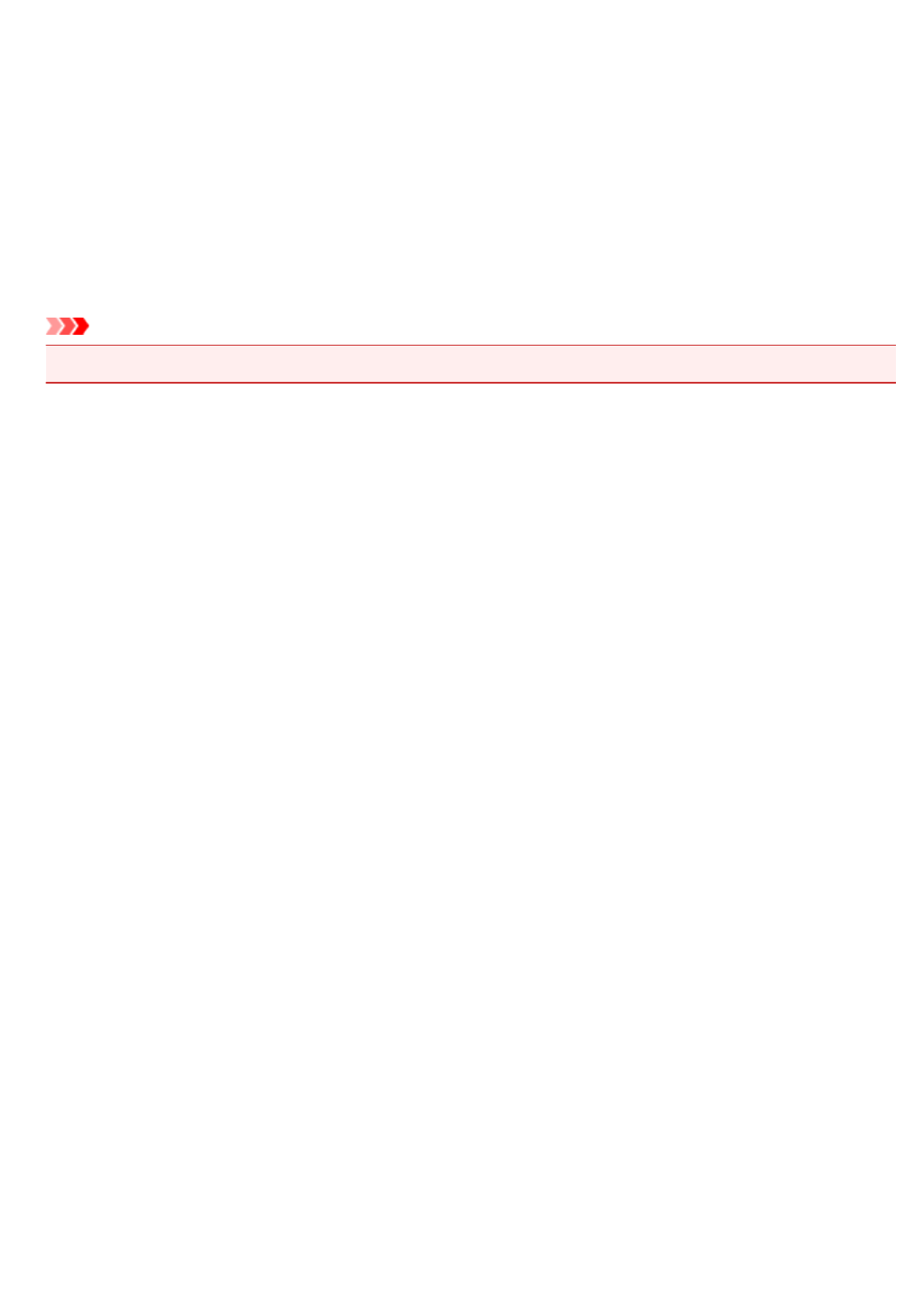
5011
Cause
Printer error has occurred.
What to Do
Turn off the printer and unplug it.
Plug in the printer again and turn it back on.
If this does not solve the problem, contact your nearest Canon service center to request a repair.
Important
• If you unplug, all the faxes stored in the printer's memory are deleted.
1287
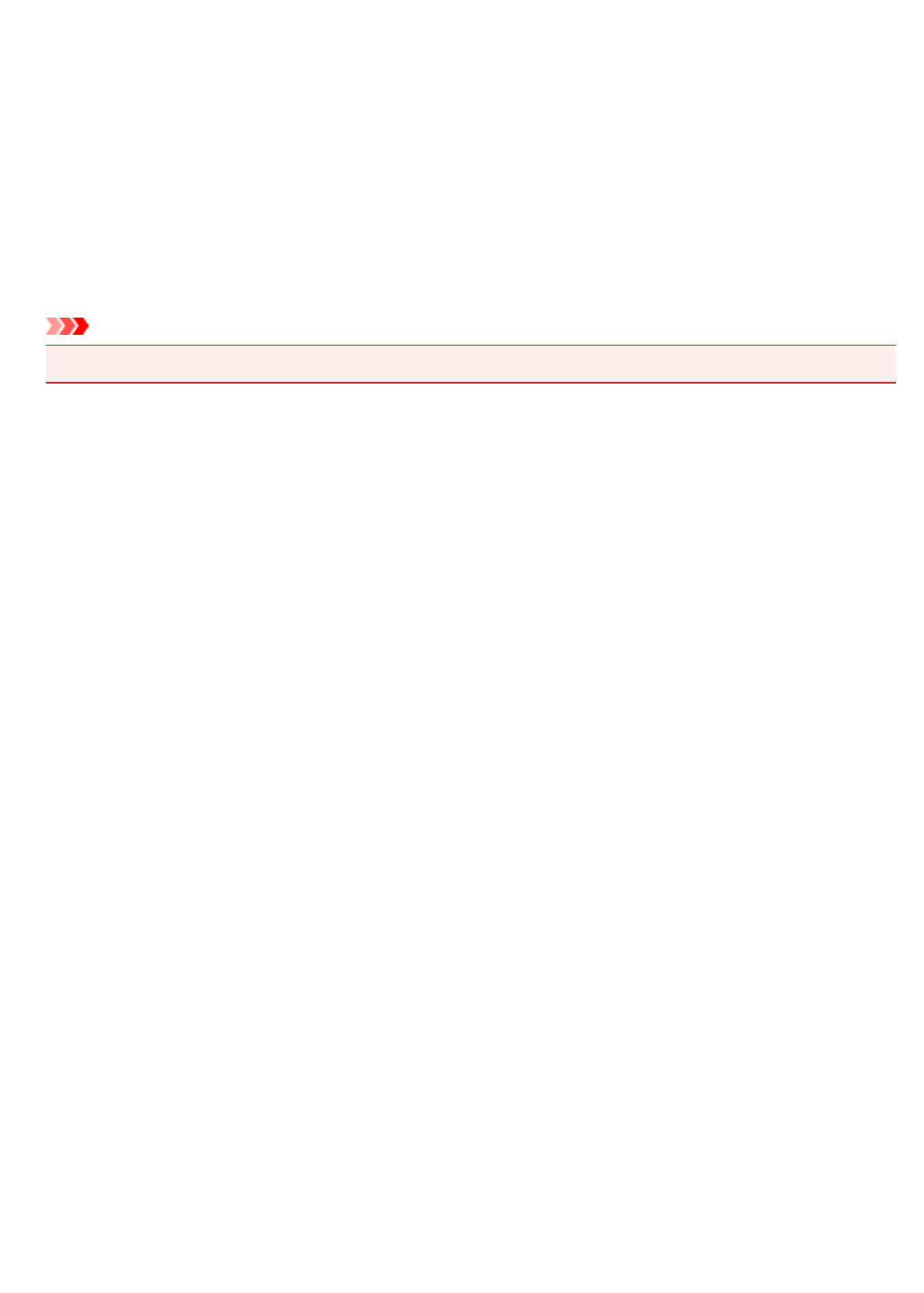
5012
Cause
Printer error has occurred.
What to Do
Turn off the printer and unplug it.
Plug in the printer again and turn it back on.
If this does not solve the problem, contact your nearest Canon service center to request a repair.
Important
• If you unplug, all the faxes stored in the printer's memory are deleted.
1288
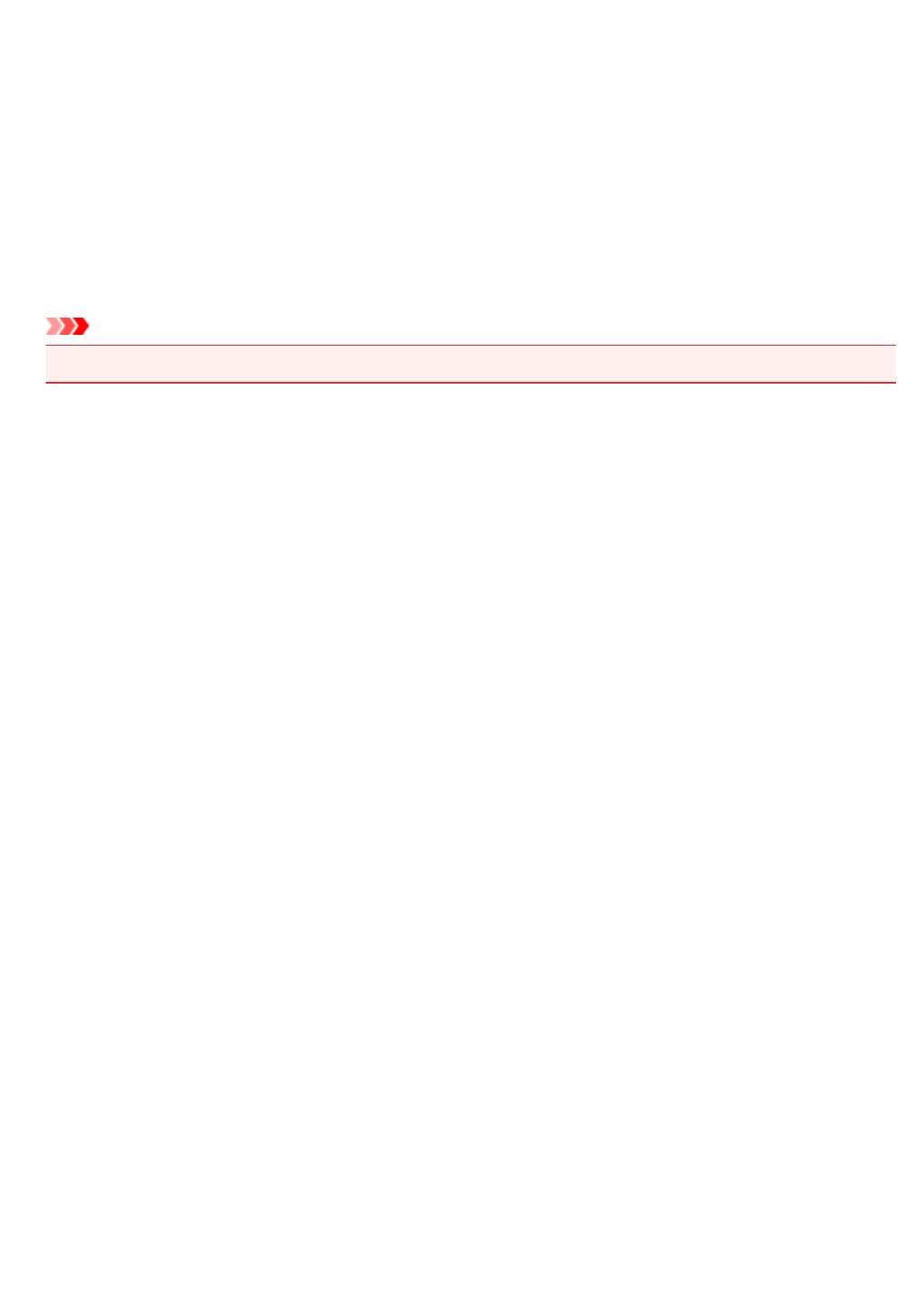
5040
Cause
Printer error has occurred.
What to Do
Turn off the printer and unplug it.
Plug in the printer again and turn it back on.
If this does not solve the problem, contact your nearest Canon service center to request a repair.
Important
• If you unplug, all the faxes stored in the printer's memory are deleted.
1289
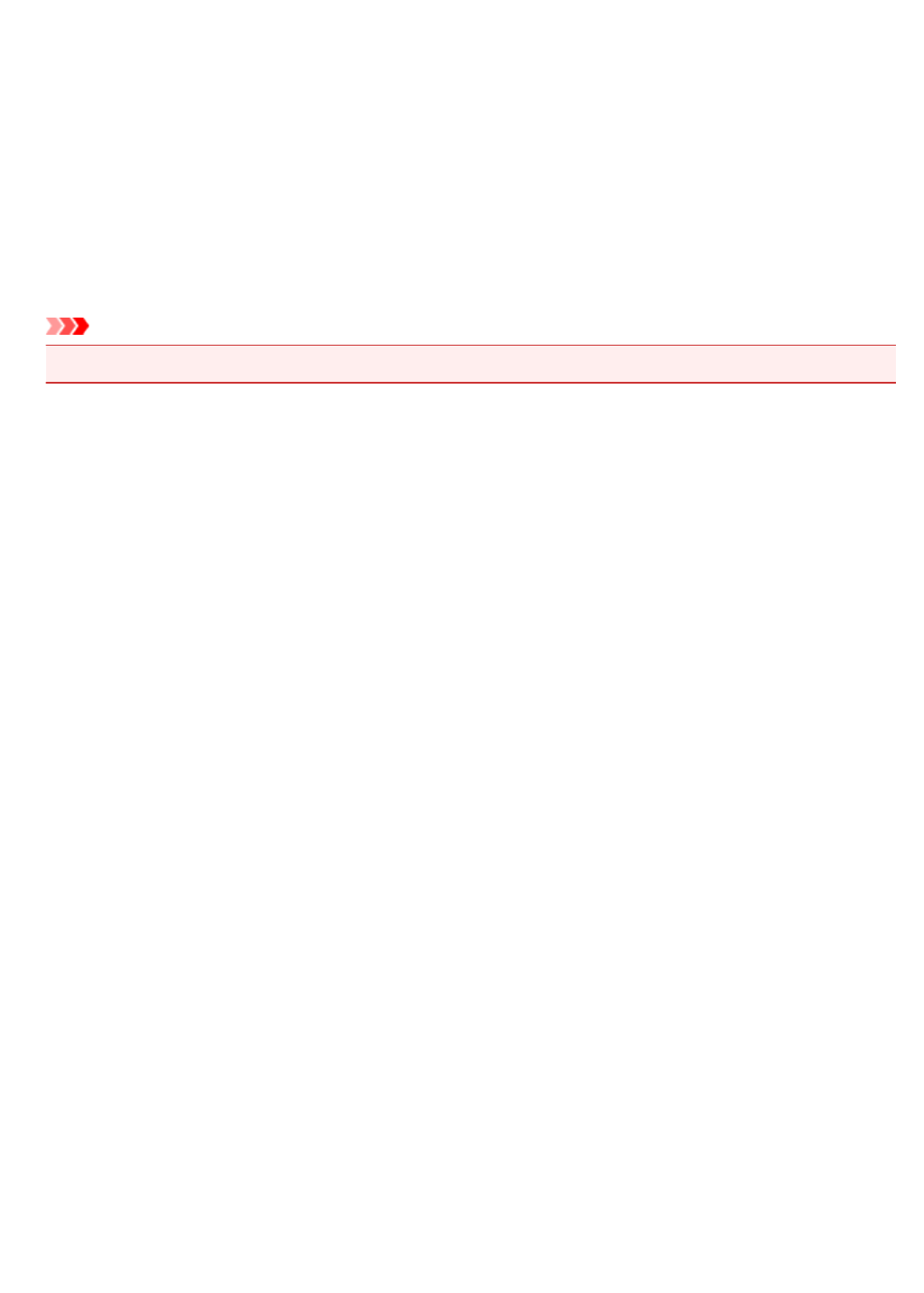
5050
Cause
Printer error has occurred.
What to Do
Turn off the printer and unplug it.
Plug in the printer again and turn it back on.
If this does not solve the problem, contact your nearest Canon service center to request a repair.
Important
• If you unplug, all the faxes stored in the printer's memory are deleted.
1290
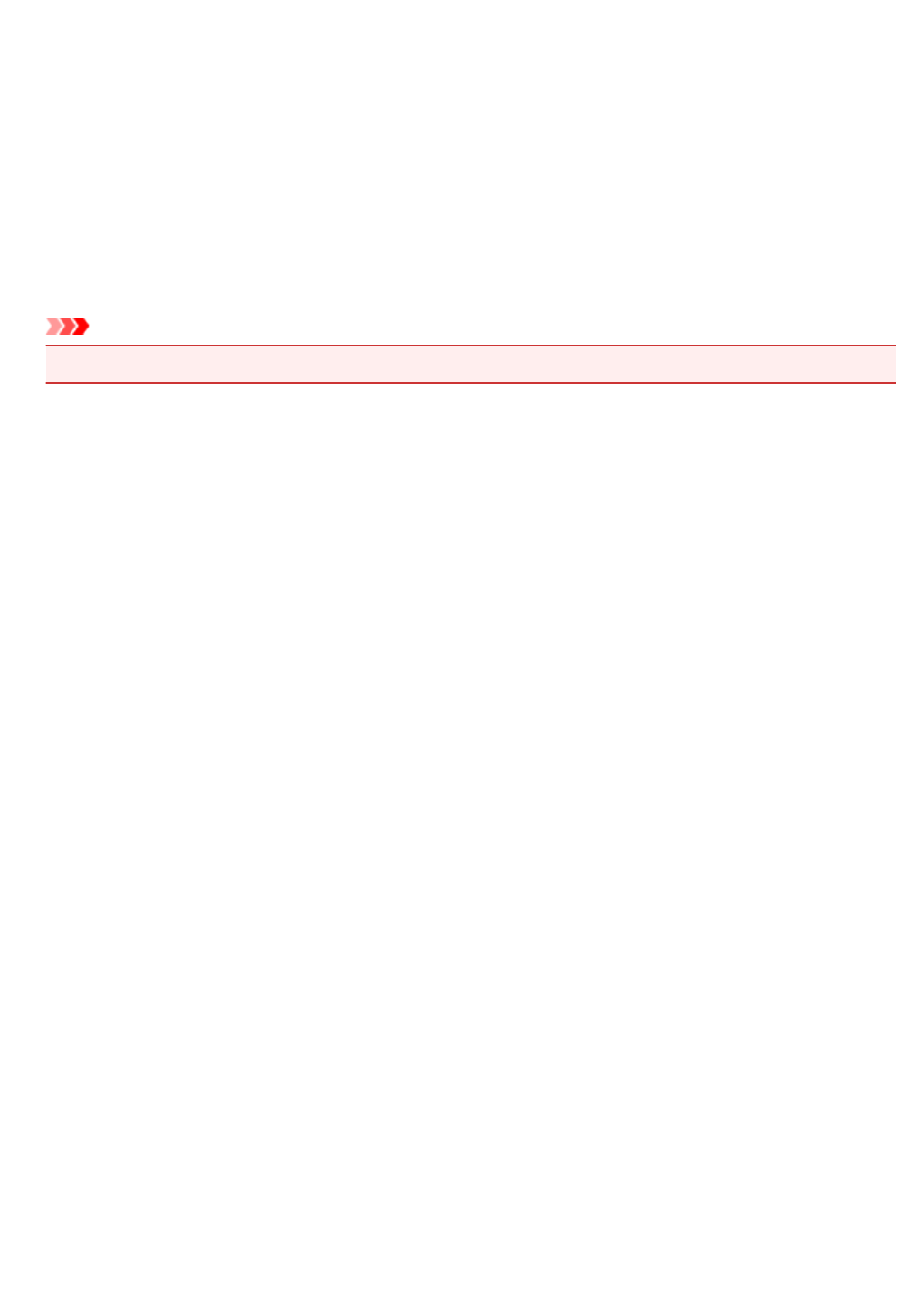
5051
Cause
Printer error has occurred.
What to Do
Turn off the printer and unplug it.
Plug in the printer again and turn it back on.
If this does not solve the problem, contact your nearest Canon service center to request a repair.
Important
• If you unplug, all the faxes stored in the printer's memory are deleted.
1291
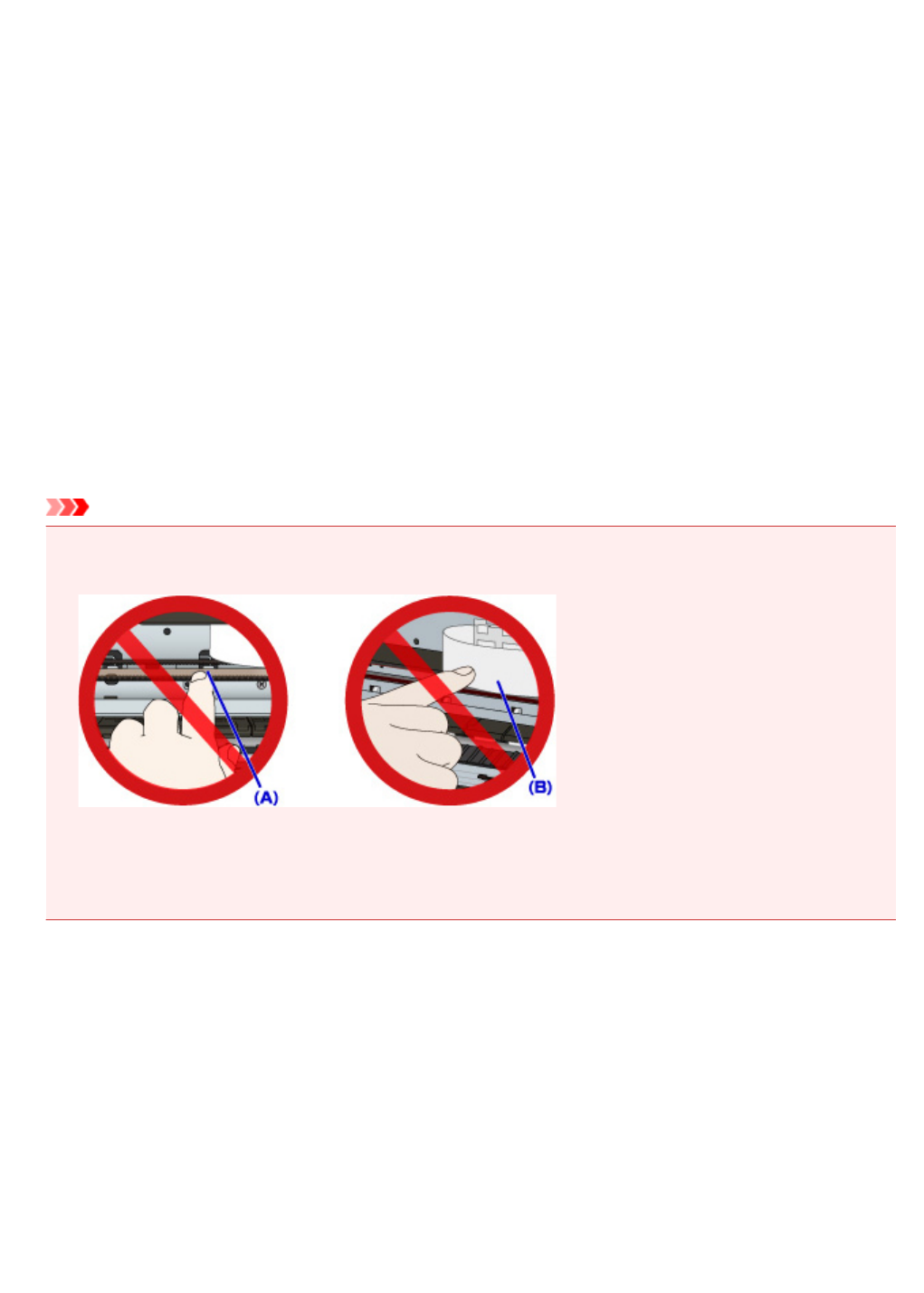
5100
Cause
Printer error has occurred.
What to Do
Cancel printing and turn off the printer.
Check the following:
• Make sure print head holder motion is not impeded by stabilizer, jammed paper, etc.
Remove any impediment.
• Make sure the ink tanks are properly installed.
Press ink tanks until they click into place.
Turn the printer back on.
If this does not solve the problem, contact your nearest Canon service center to request a repair.
Important
• When clearing an impediment to print head holder motion, be careful not to touch clear film (A) or
white belt (B).
If you soil or scratch these parts by touching them with paper or your hand, it could damage the
printer.
• If you unplug, all the faxes stored in the printer's memory are deleted.
1292
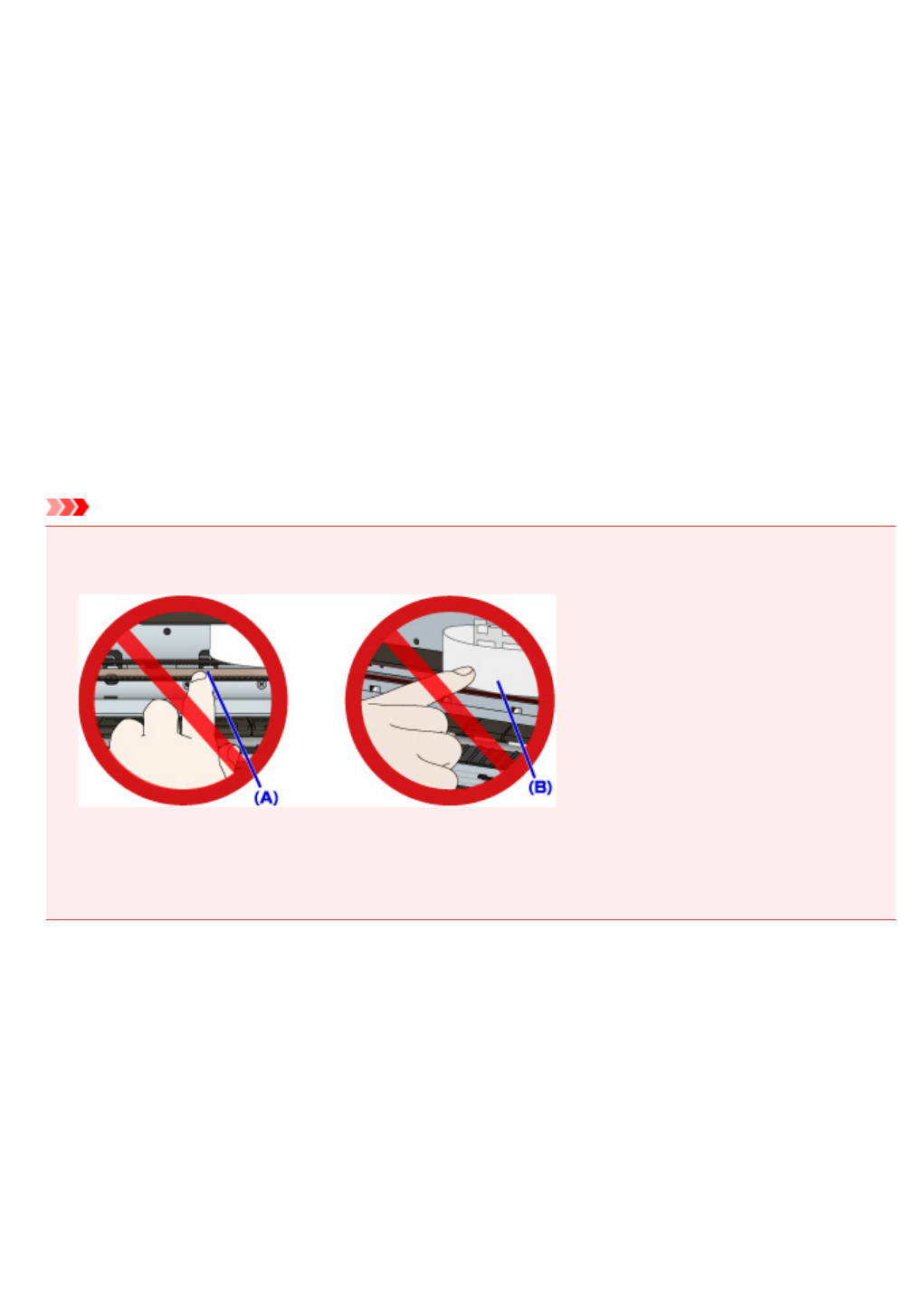
5102
Cause
Printer error has occurred.
What to Do
Cancel printing and turn off the printer.
Check the following:
• Make sure print head holder motion is not impeded by stabilizer, jammed paper, etc.
Remove any impediment.
• Make sure the ink tanks are properly installed.
Press ink tanks until they click into place.
Turn the printer back on.
If this does not solve the problem, contact your nearest Canon service center to request a repair.
Important
• When clearing an impediment to print head holder motion, be careful not to touch clear film (A) or
white belt (B).
If you soil or scratch these parts by touching them with paper or your hand, it could damage the
printer.
• If you unplug, all the faxes stored in the printer's memory are deleted.
1293
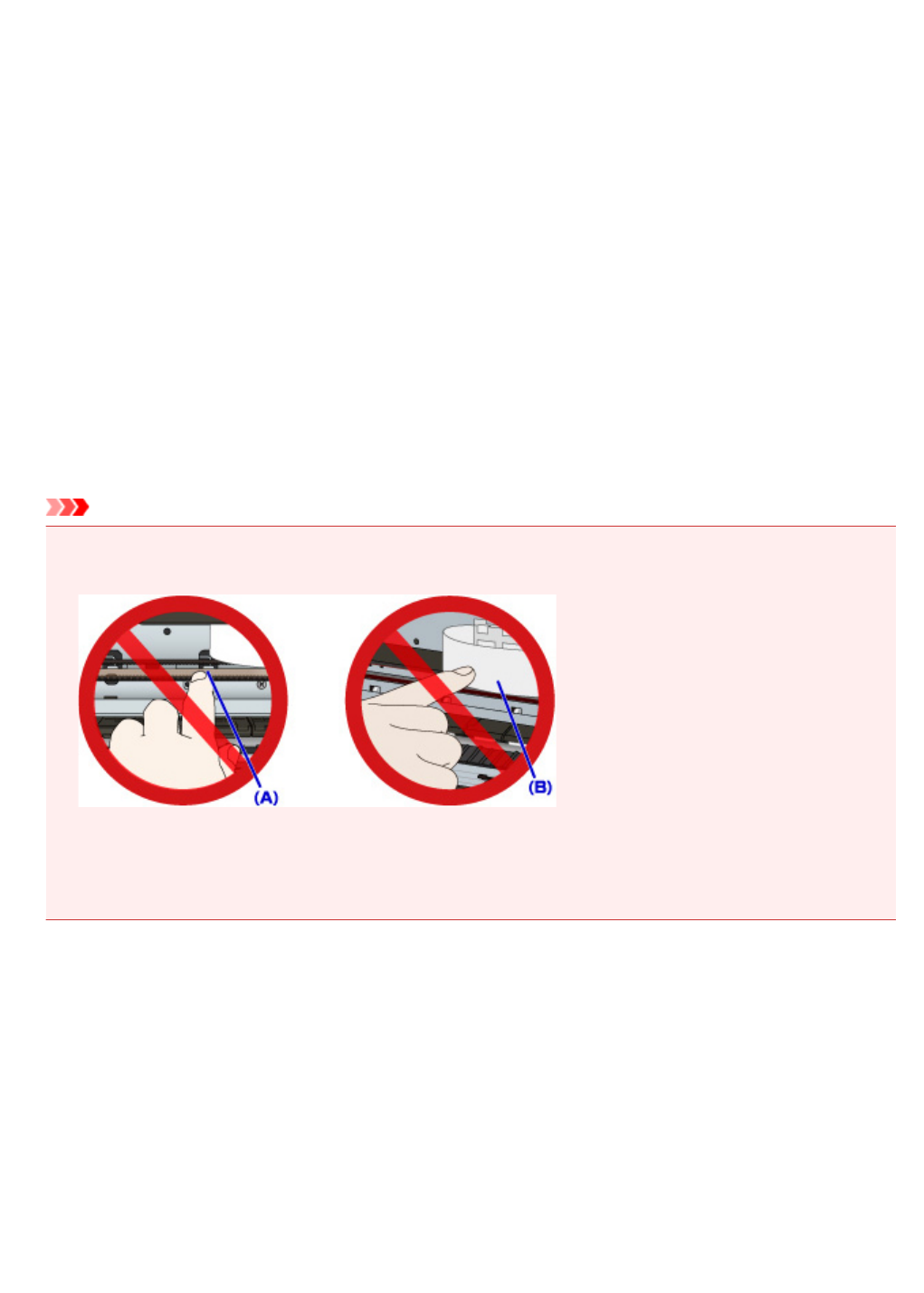
5103
Cause
Printer error has occurred.
What to Do
Cancel printing and turn off the printer.
Check the following:
• Make sure print head holder motion is not impeded by stabilizer, jammed paper, etc.
Remove any impediment.
• Make sure the ink tanks are properly installed.
Press ink tanks until they click into place.
Turn the printer back on.
If this does not solve the problem, contact your nearest Canon service center to request a repair.
Important
• When clearing an impediment to print head holder motion, be careful not to touch clear film (A) or
white belt (B).
If you soil or scratch these parts by touching them with paper or your hand, it could damage the
printer.
• If you unplug, all the faxes stored in the printer's memory are deleted.
1294
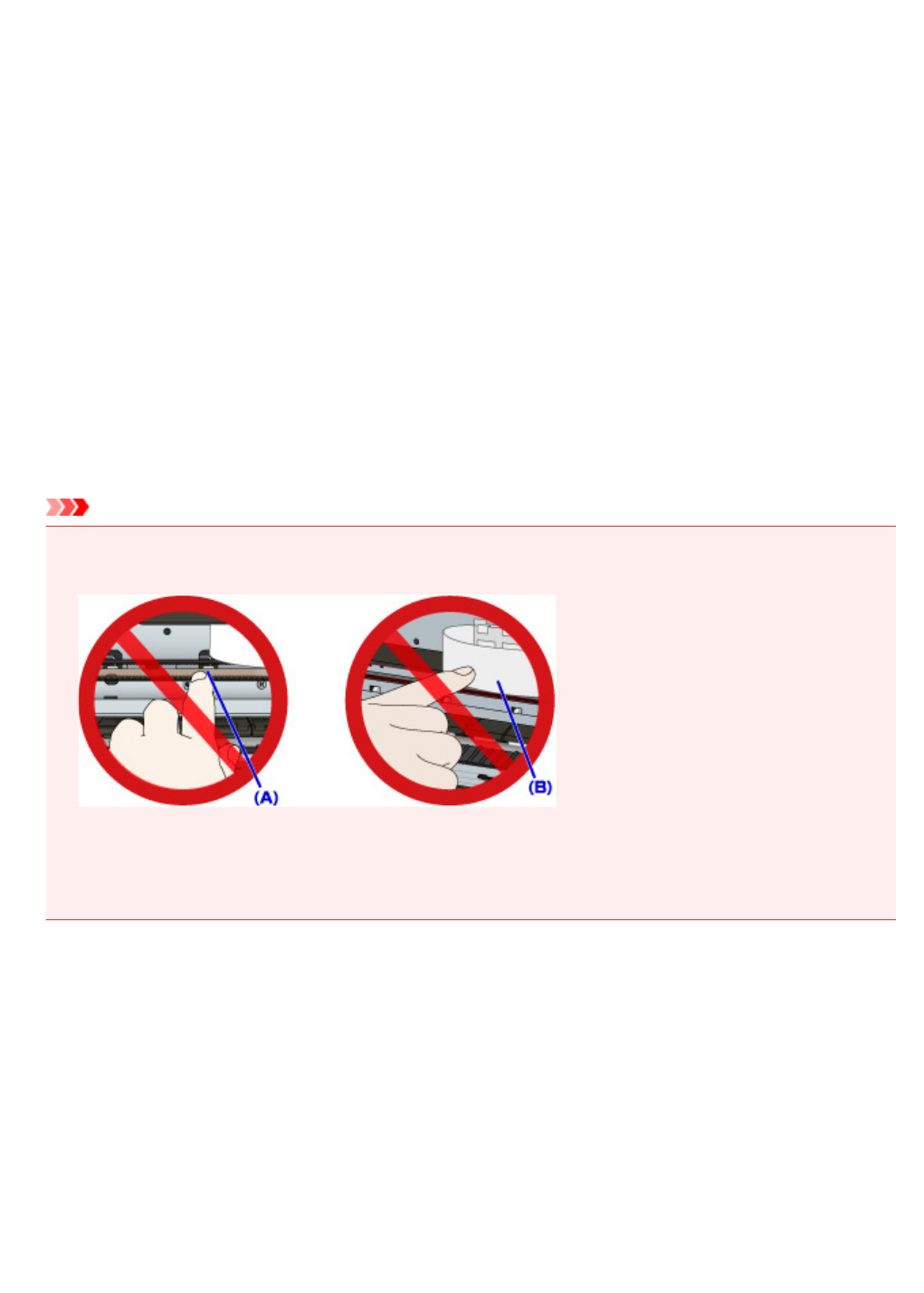
5104
Cause
Printer error has occurred.
What to Do
Cancel printing and turn off the printer.
Check the following:
• Make sure print head holder motion is not impeded by stabilizer, jammed paper, etc.
Remove any impediment.
• Make sure the ink tanks are properly installed.
Press ink tanks until they click into place.
Turn the printer back on.
If this does not solve the problem, contact your nearest Canon service center to request a repair.
Important
• When clearing an impediment to print head holder motion, be careful not to touch clear film (A) or
white belt (B).
If you soil or scratch these parts by touching them with paper or your hand, it could damage the
printer.
• If you unplug, all the faxes stored in the printer's memory are deleted.
1295
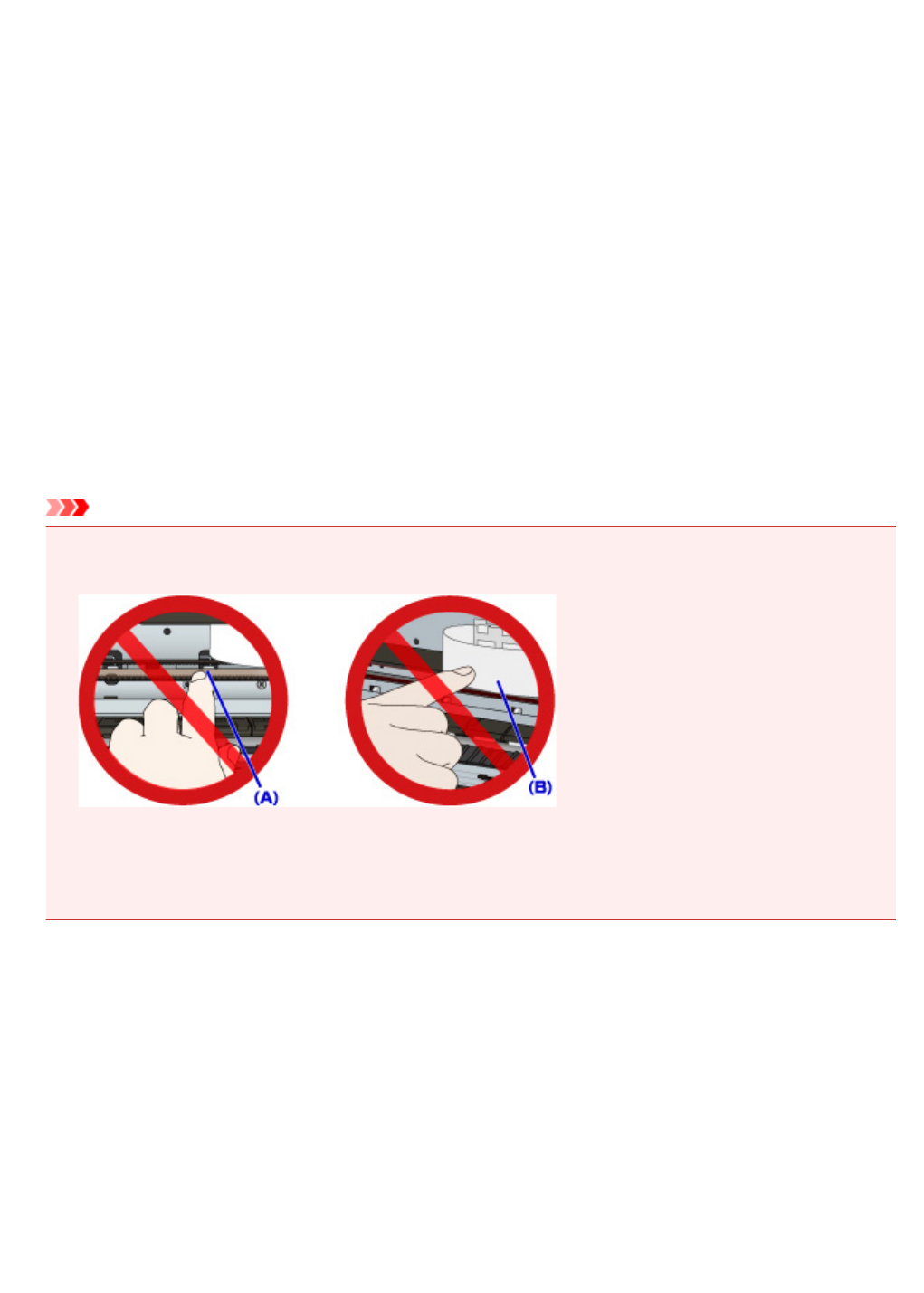
5105
Cause
Printer error has occurred.
What to Do
Cancel printing and turn off the printer.
Check the following:
• Make sure print head holder motion is not impeded by stabilizer, jammed paper, etc.
Remove any impediment.
• Make sure the ink tanks are properly installed.
Press ink tanks until they click into place.
Turn the printer back on.
If this does not solve the problem, contact your nearest Canon service center to request a repair.
Important
• When clearing an impediment to print head holder motion, be careful not to touch clear film (A) or
white belt (B).
If you soil or scratch these parts by touching them with paper or your hand, it could damage the
printer.
• If you unplug, all the faxes stored in the printer's memory are deleted.
1296

5200
Cause
Printer error has occurred.
What to Do
Turn off the printer and unplug it.
Plug in the printer again and turn it back on.
If this does not solve the problem, contact your nearest Canon service center to request a repair.
Important
• If you unplug, all the faxes stored in the printer's memory are deleted.
1297
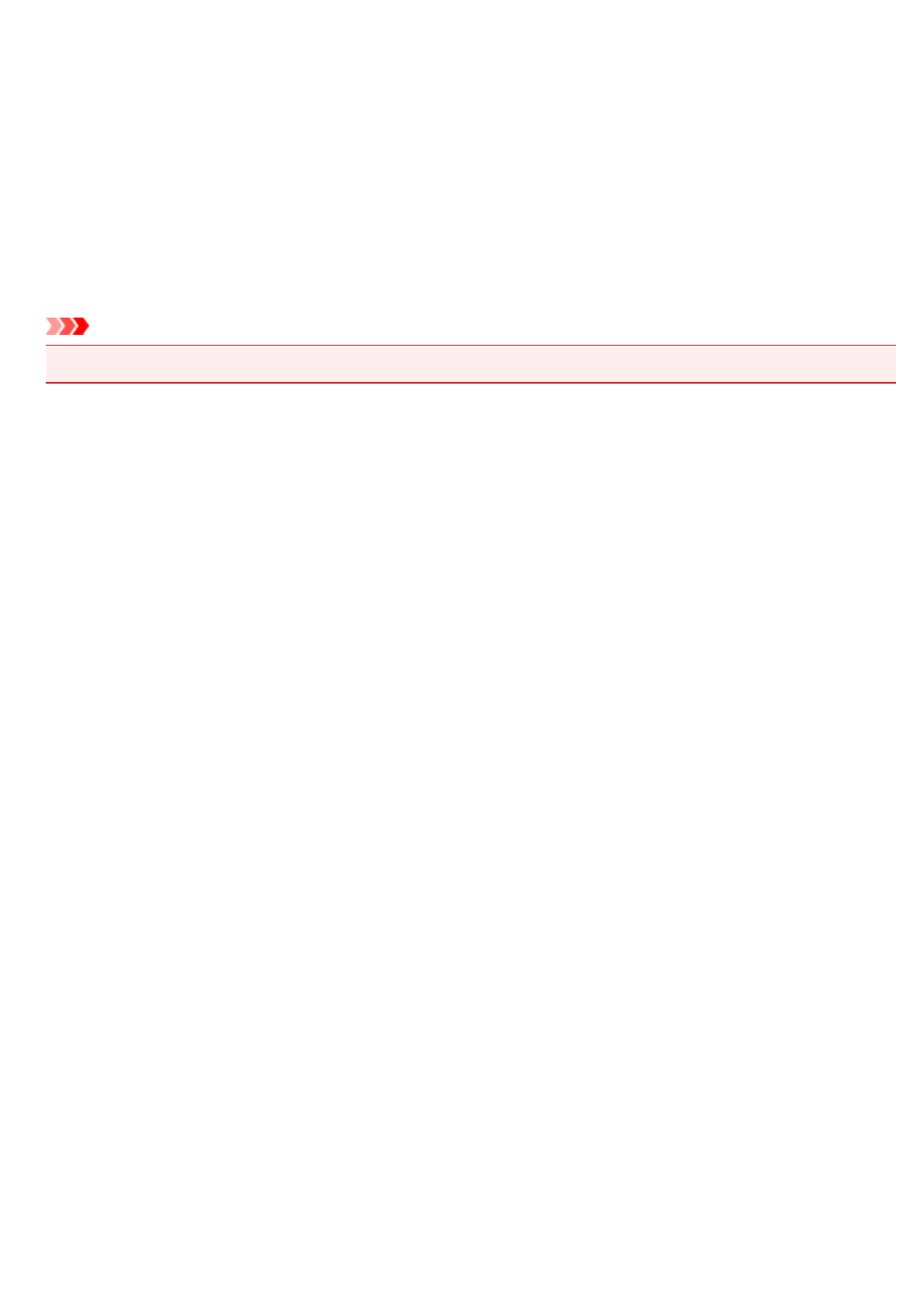
5203
Cause
Printer error has occurred.
What to Do
Turn off the printer and unplug it.
Plug in the printer again and turn it back on.
If this does not solve the problem, contact your nearest Canon service center to request a repair.
Important
• If you unplug, all the faxes stored in the printer's memory are deleted.
1298
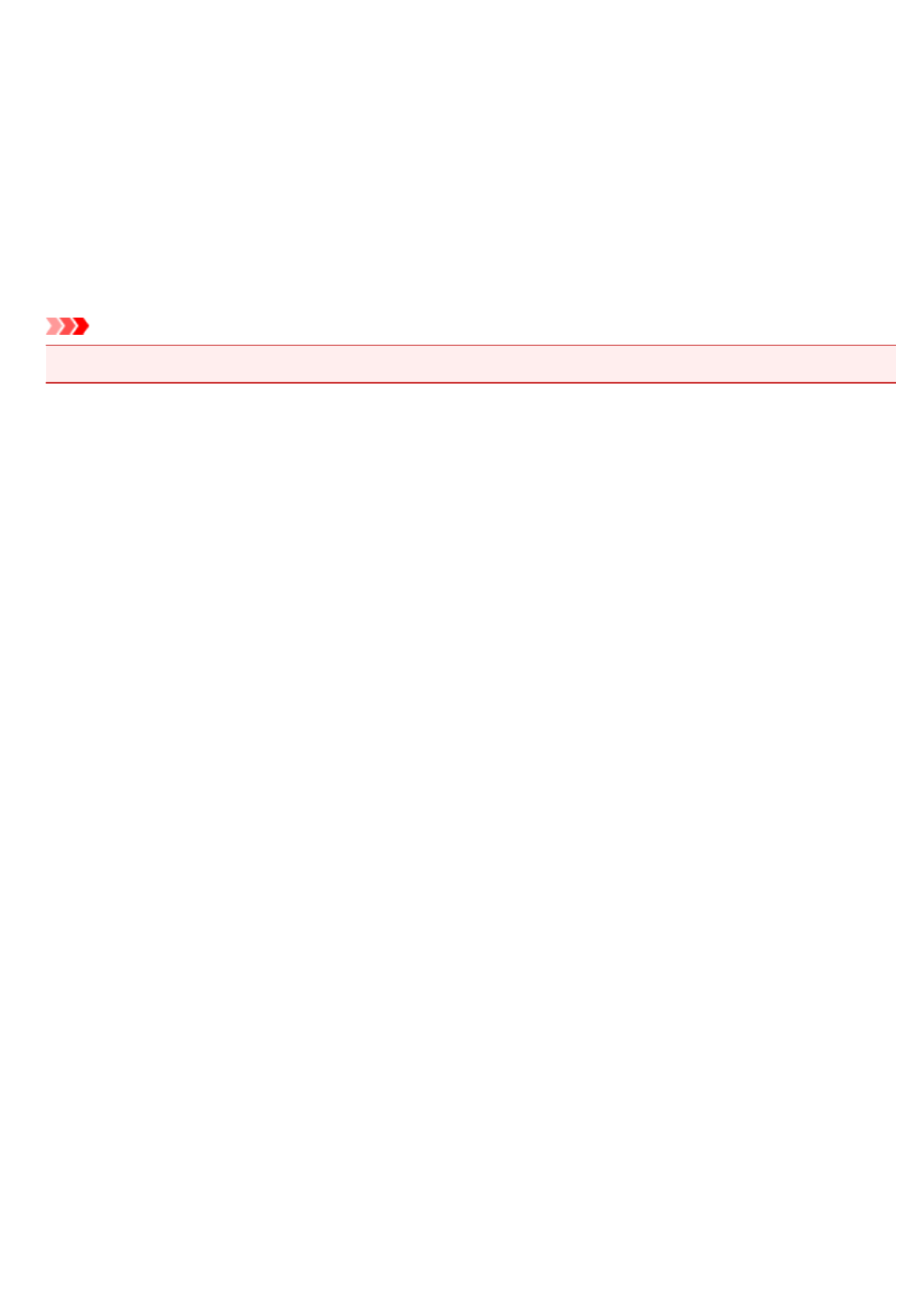
5204
Cause
Printer error has occurred.
What to Do
Turn off the printer and unplug it.
Plug in the printer again and turn it back on.
If this does not solve the problem, contact your nearest Canon service center to request a repair.
Important
• If you unplug, all the faxes stored in the printer's memory are deleted.
1299
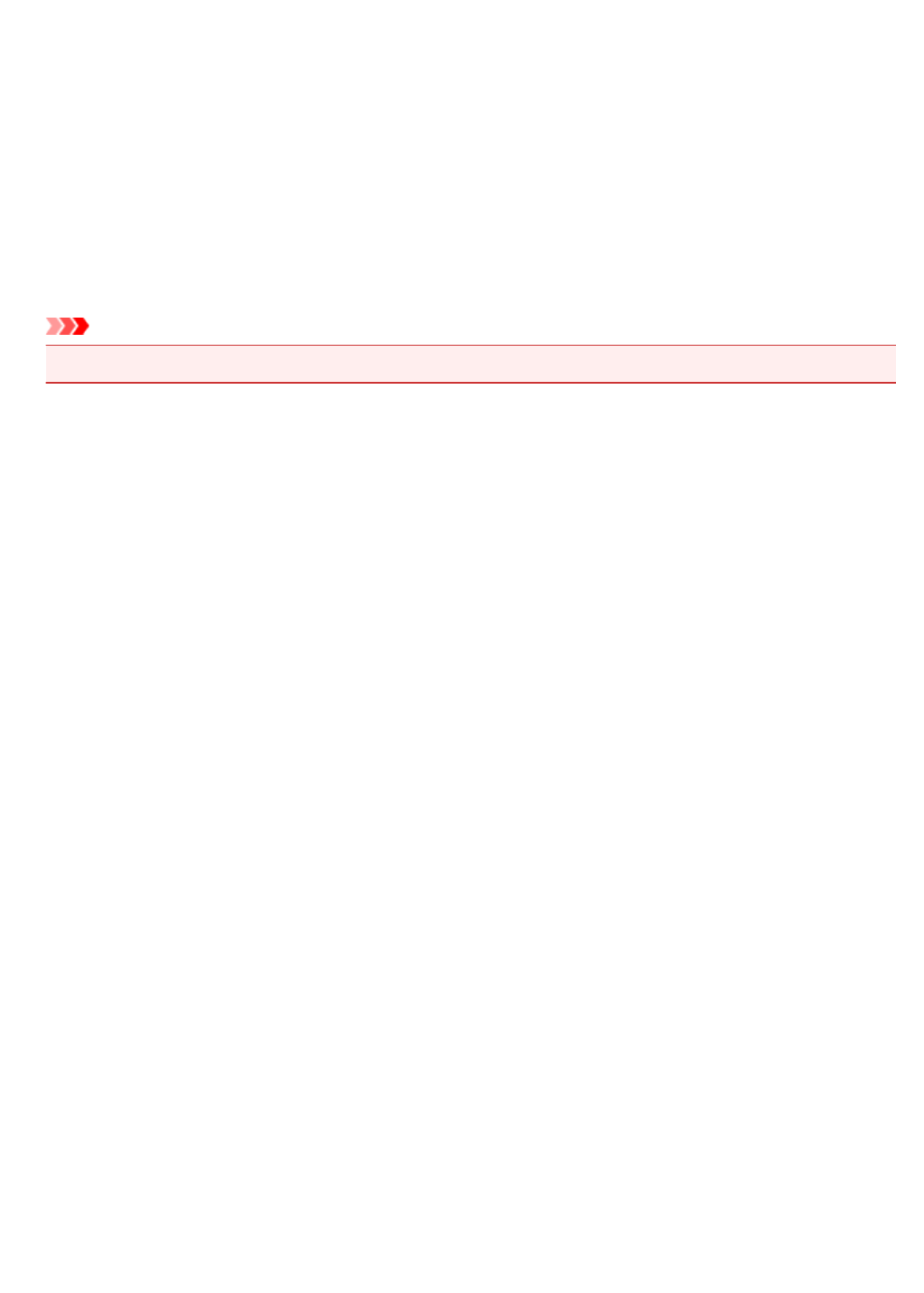
5205
Cause
Printer error has occurred.
What to Do
Turn off the printer and unplug it.
Plug in the printer again and turn it back on.
If this does not solve the problem, contact your nearest Canon service center to request a repair.
Important
• If you unplug, all the faxes stored in the printer's memory are deleted.
1300
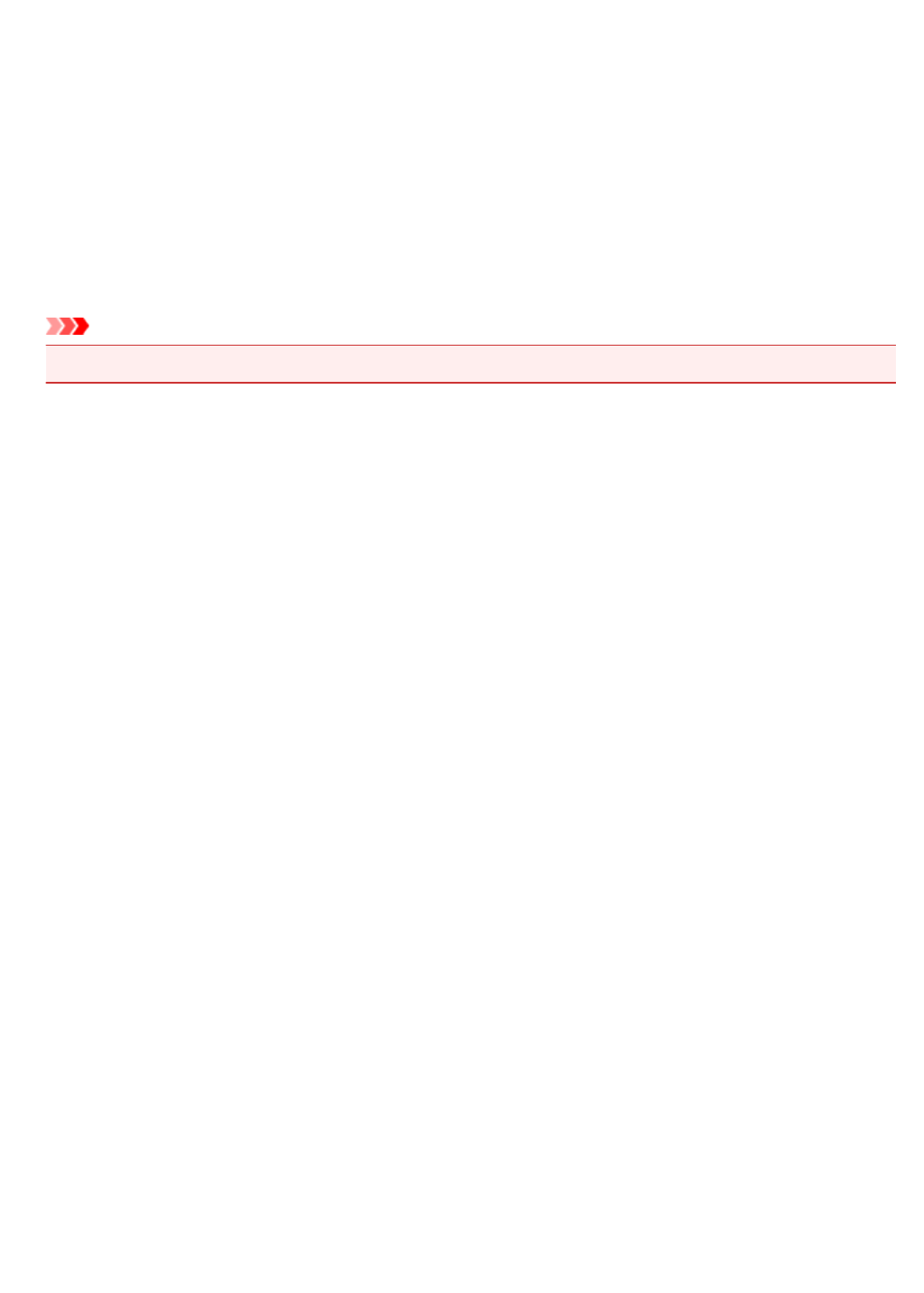
5206
Cause
Printer error has occurred.
What to Do
Turn off the printer and unplug it.
Plug in the printer again and turn it back on.
If this does not solve the problem, contact your nearest Canon service center to request a repair.
Important
• If you unplug, all the faxes stored in the printer's memory are deleted.
1301
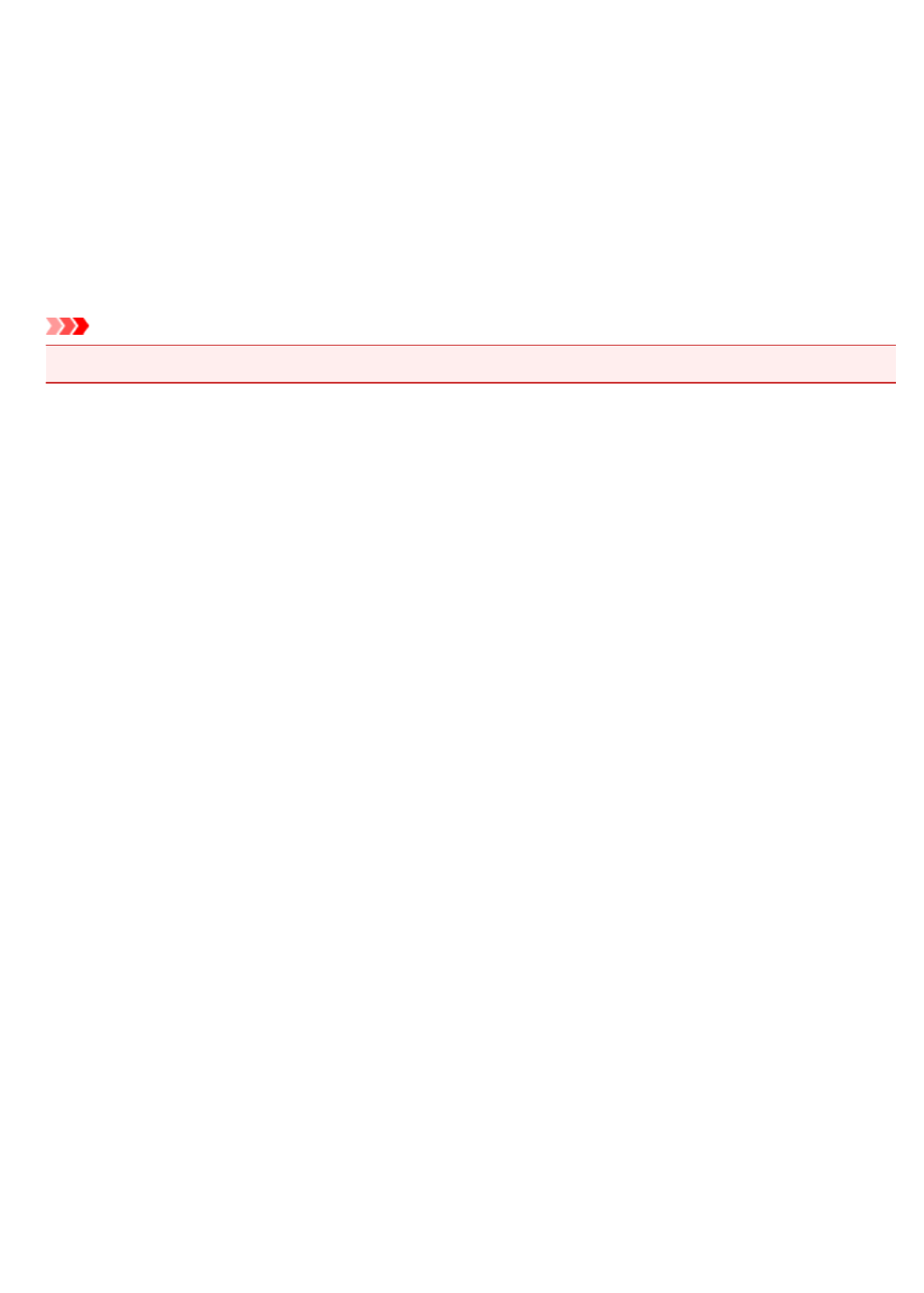
5207
Cause
Printer error has occurred.
What to Do
Turn off the printer and unplug it.
Plug in the printer again and turn it back on.
If this does not solve the problem, contact your nearest Canon service center to request a repair.
Important
• If you unplug, all the faxes stored in the printer's memory are deleted.
1302
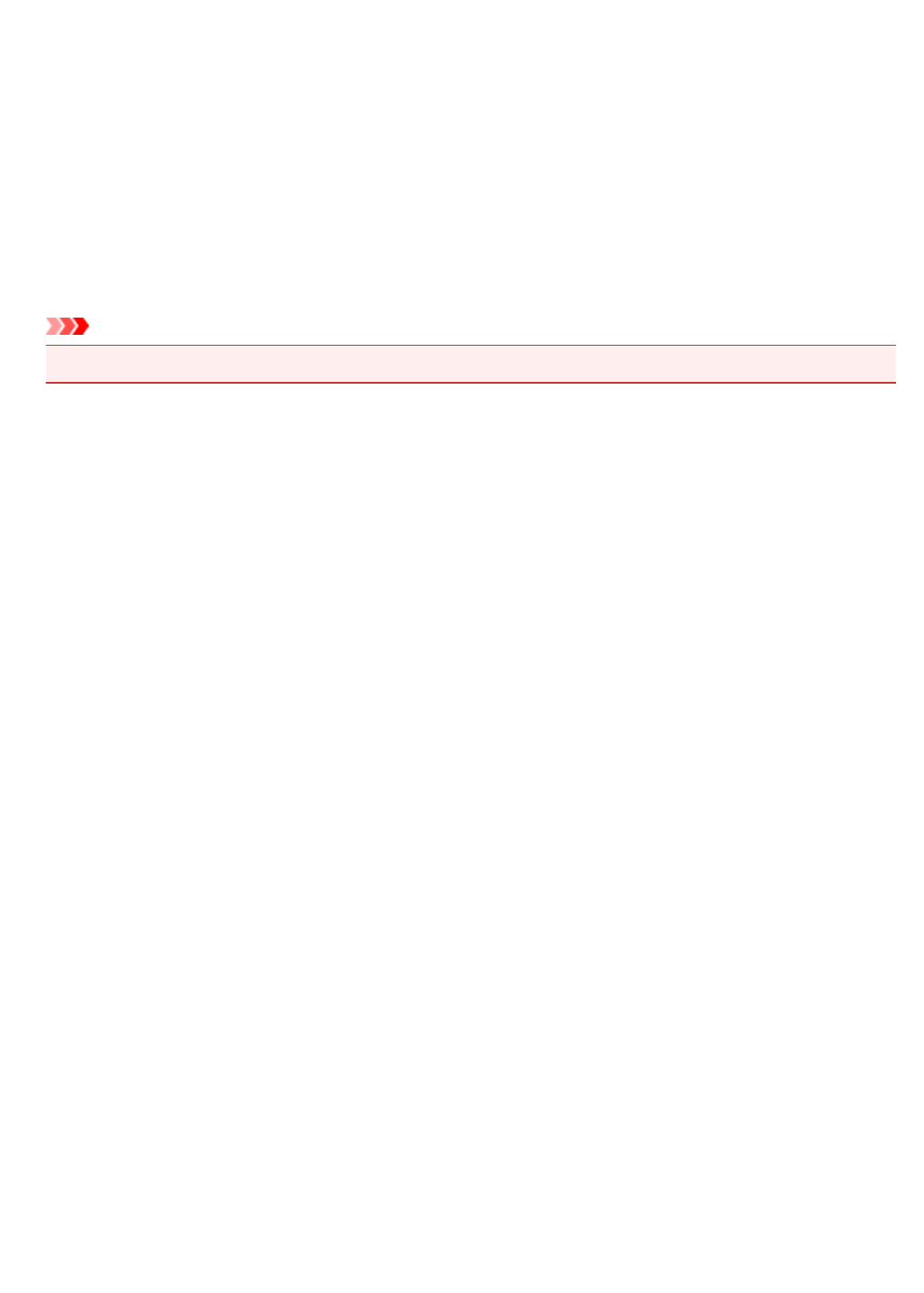
5208
Cause
Printer error has occurred.
What to Do
Turn off the printer and unplug it.
Plug in the printer again and turn it back on.
If this does not solve the problem, contact your nearest Canon service center to request a repair.
Important
• If you unplug, all the faxes stored in the printer's memory are deleted.
1303
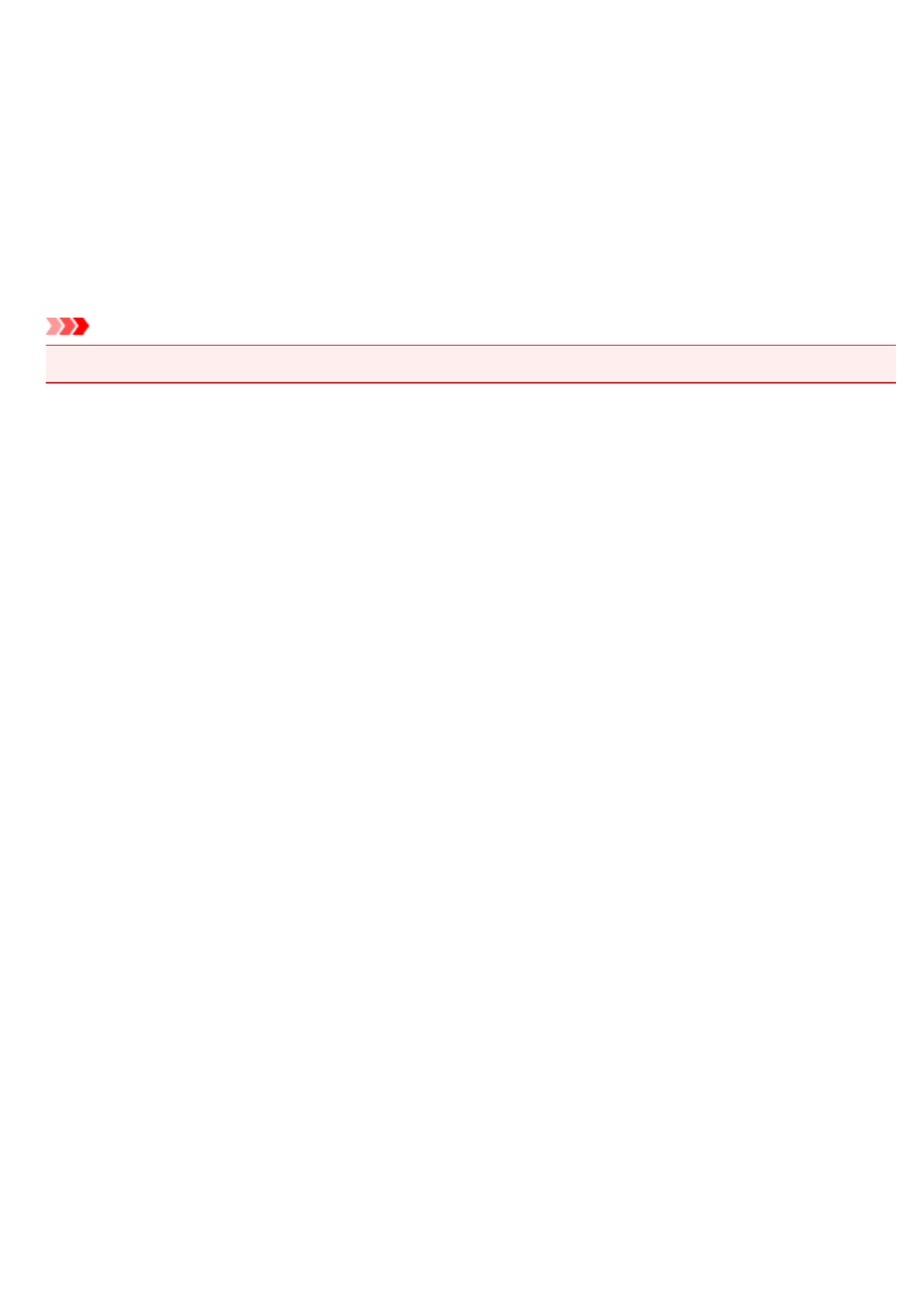
5209
Cause
Printer error has occurred.
What to Do
Turn off the printer and unplug it.
Plug in the printer again and turn it back on.
If this does not solve the problem, contact your nearest Canon service center to request a repair.
Important
• If you unplug, all the faxes stored in the printer's memory are deleted.
1304
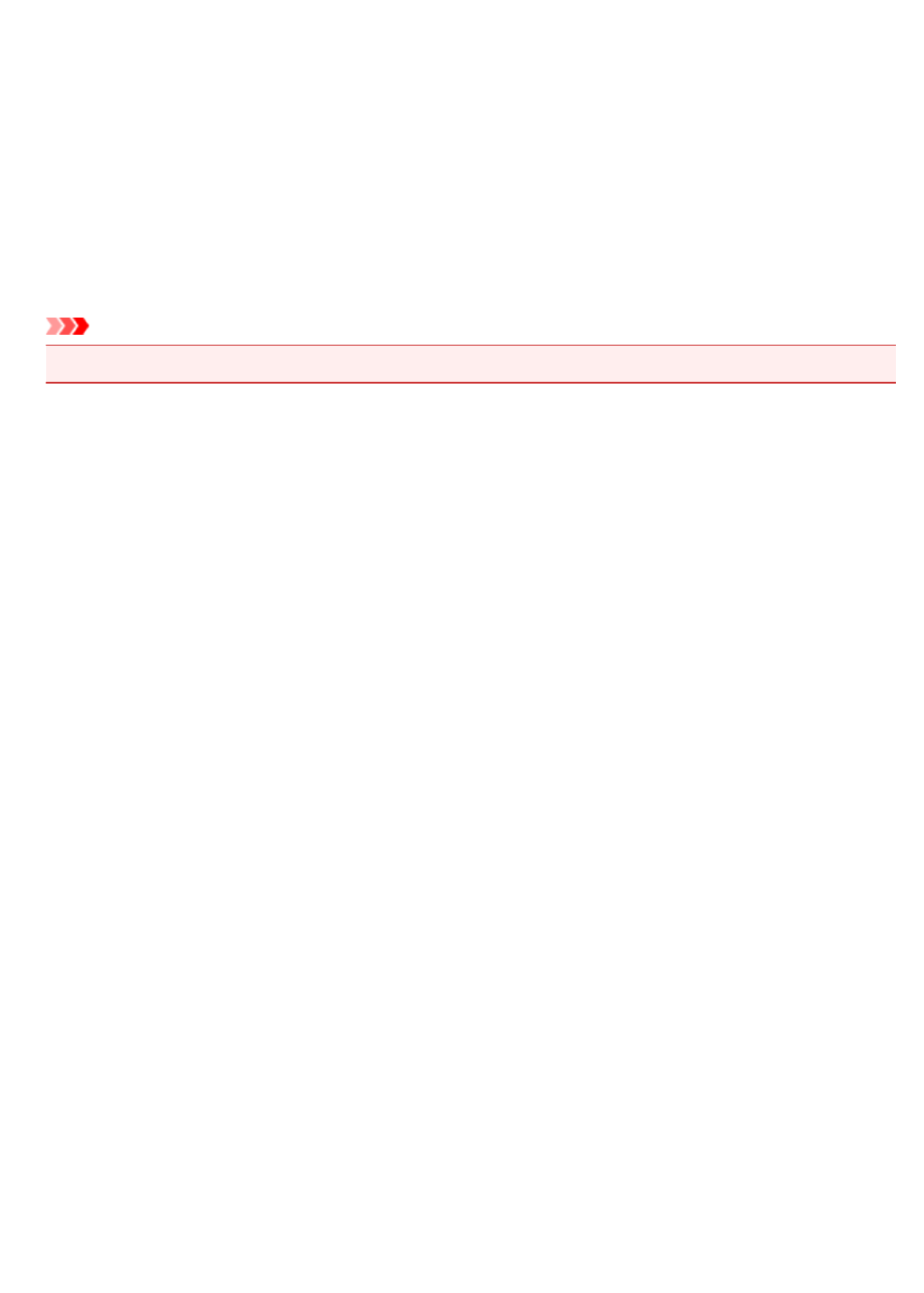
5400
Cause
Printer error has occurred.
What to Do
Turn off the printer and unplug it.
Plug in the printer again and turn it back on.
If this does not solve the problem, contact your nearest Canon service center to request a repair.
Important
• If you unplug, all the faxes stored in the printer's memory are deleted.
1305

5500
Cause
Ink tank has not been properly recognized.
What to Do
Contact the service center.
1306

5501
Cause
Ink tank has not been properly recognized.
What to Do
Contact the service center.
1307

5B00
Cause
Printer error has occurred.
What to Do
Contact your nearest Canon service center to request a repair.
1308

5B01
Cause
Printer error has occurred.
What to Do
Contact your nearest Canon service center to request a repair.
1309
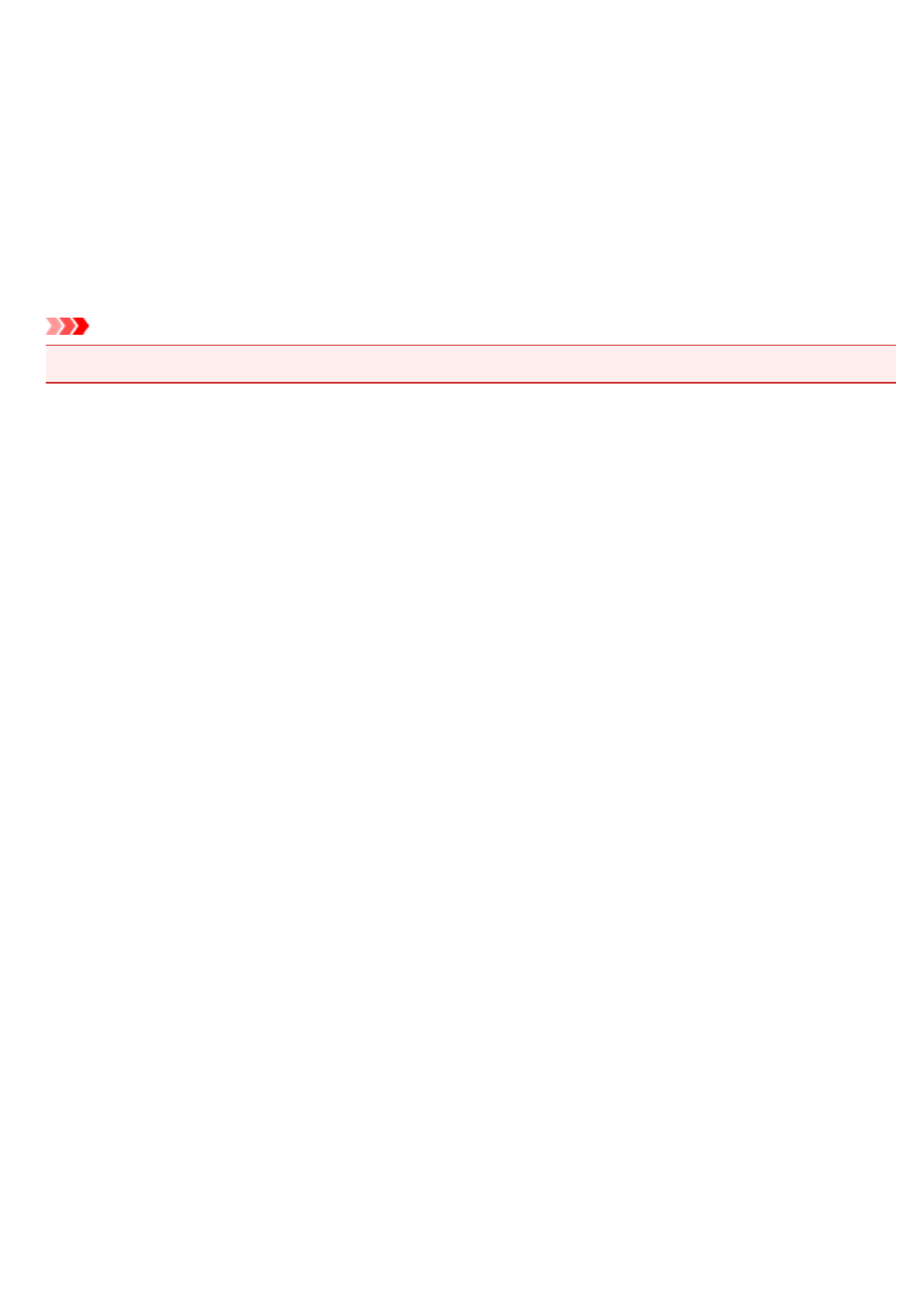
5C01
Cause
Printer error has occurred.
What to Do
Turn off the printer and unplug it.
Plug in the printer again and turn it back on.
If this does not solve the problem, contact your nearest Canon service center to request a repair.
Important
• If you unplug, all the faxes stored in the printer's memory are deleted.
1310
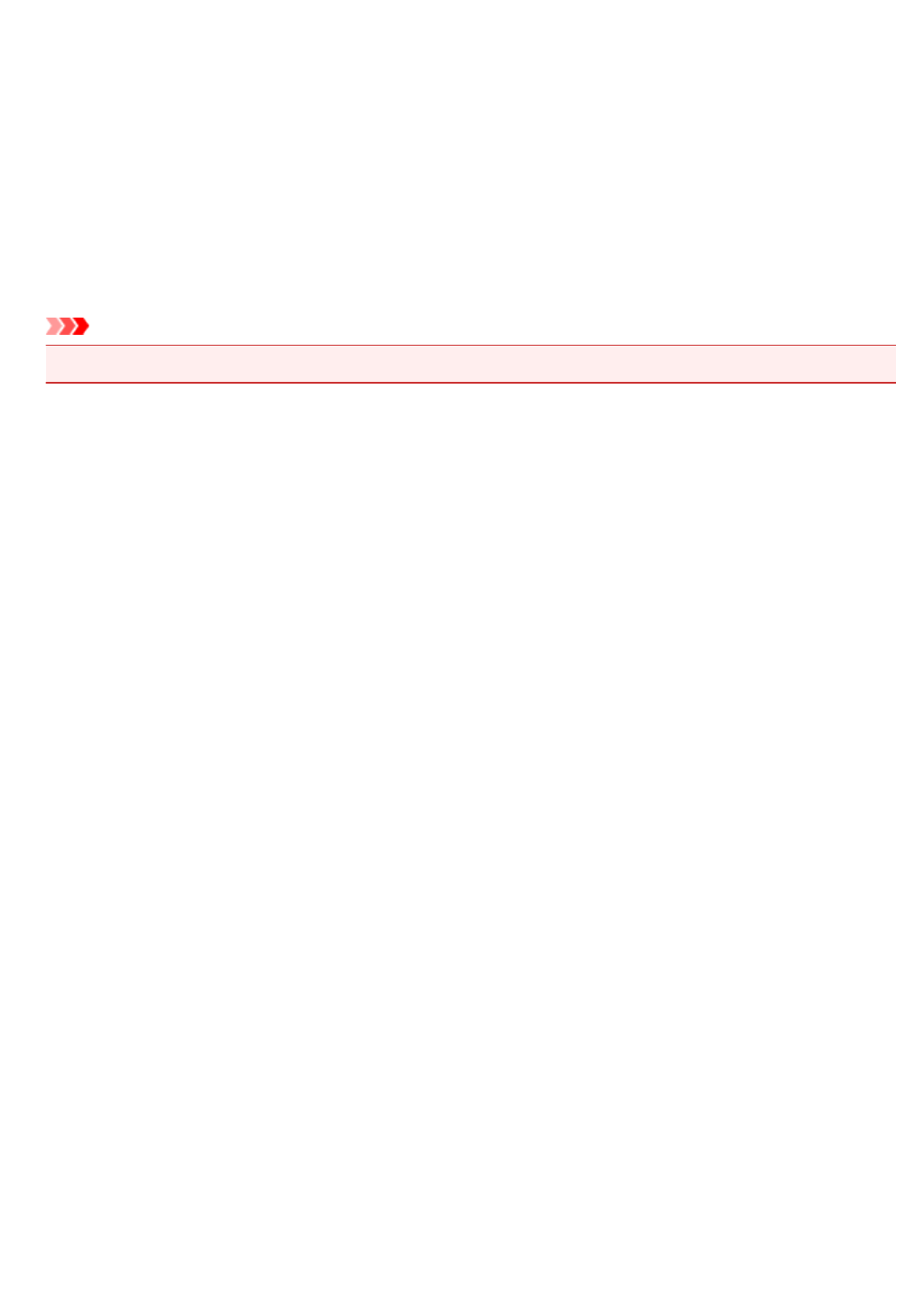
6000
Cause
Printer error has occurred.
What to Do
Turn off the printer and unplug it.
Plug in the printer again and turn it back on.
If this does not solve the problem, contact your nearest Canon service center to request a repair.
Important
• If you unplug, all the faxes stored in the printer's memory are deleted.
1311
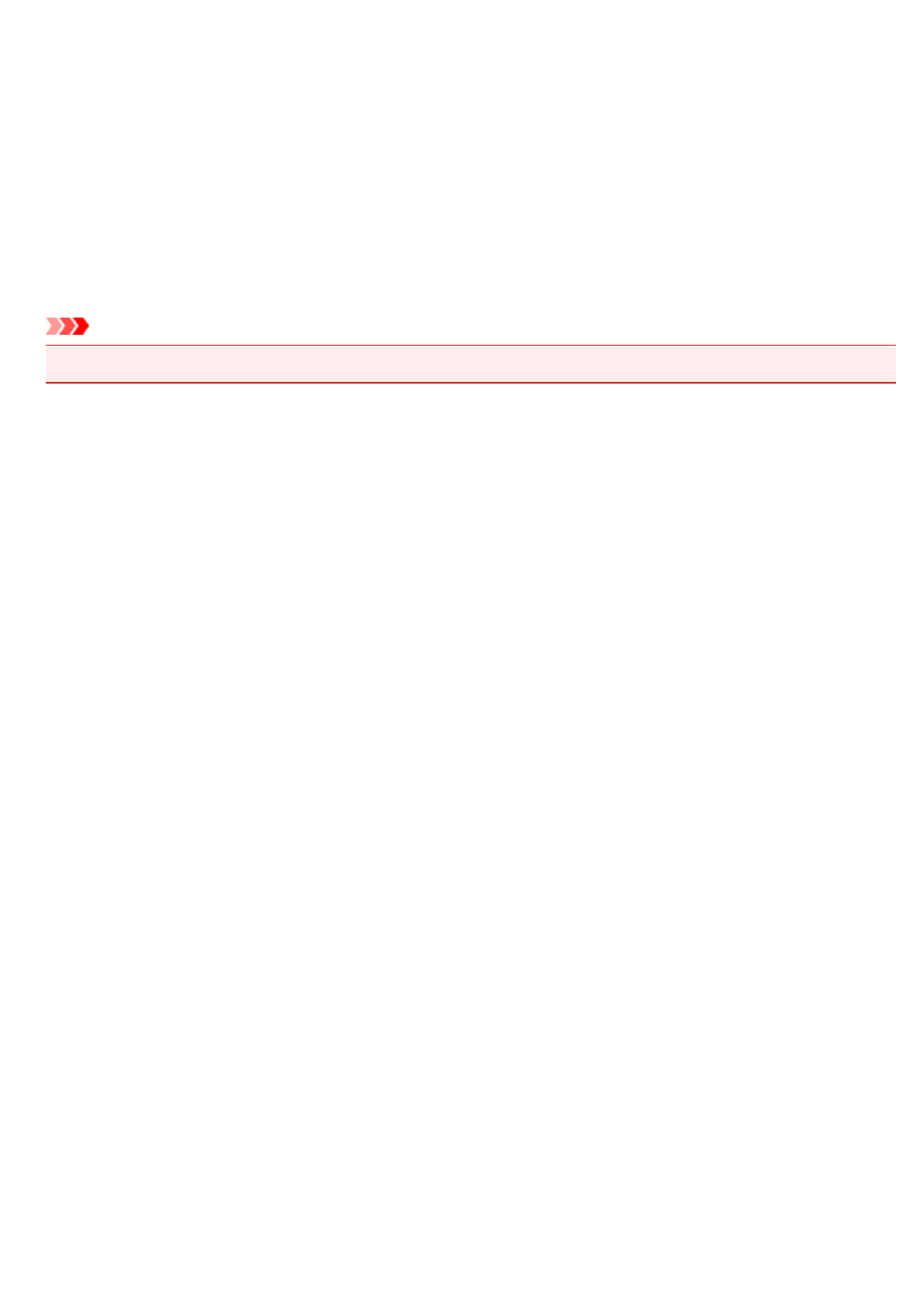
6500
Cause
Printer error has occurred.
What to Do
Turn off the printer and unplug it.
Plug in the printer again and turn it back on.
If this does not solve the problem, contact your nearest Canon service center to request a repair.
Important
• If you unplug, all the faxes stored in the printer's memory are deleted.
1312
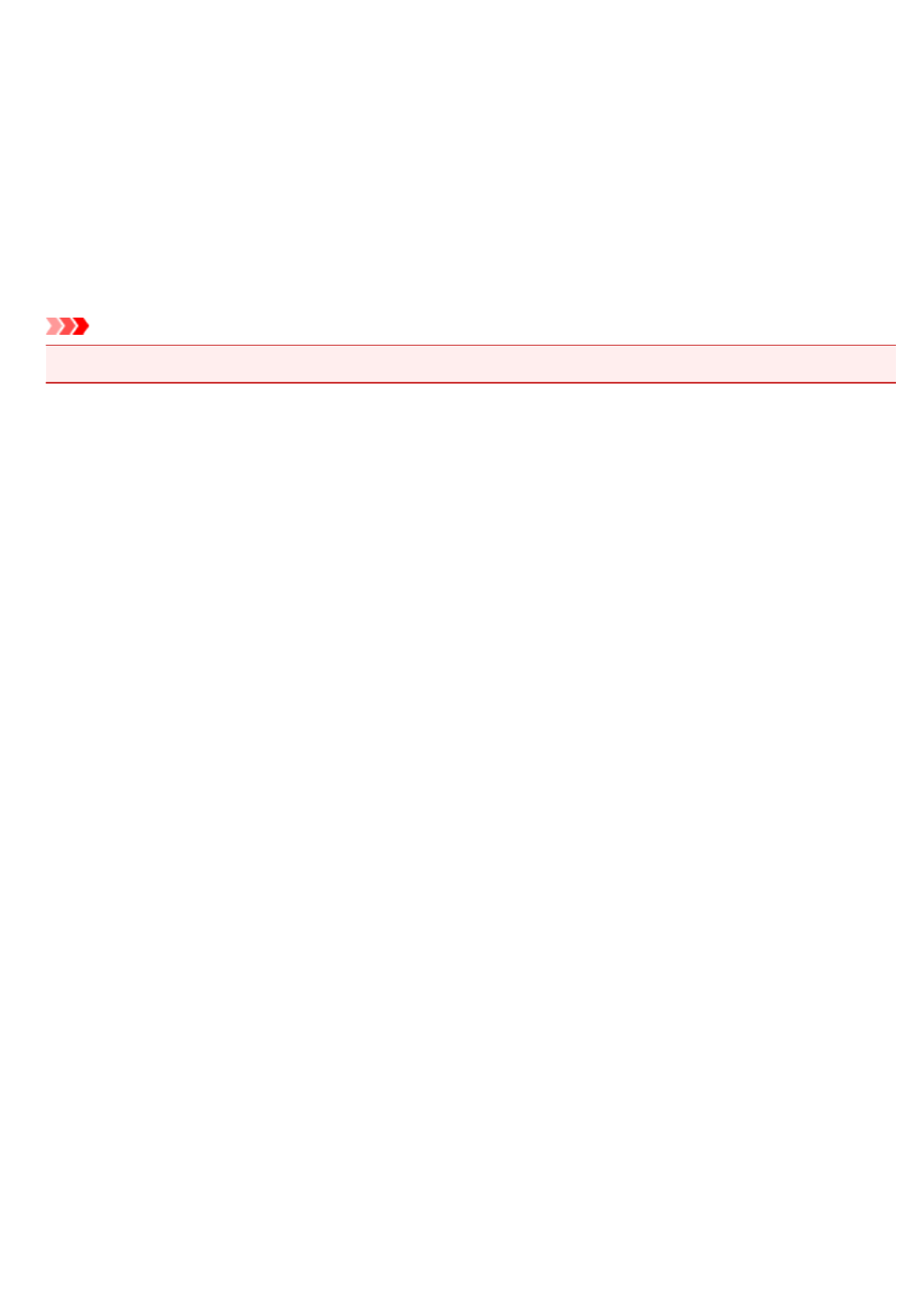
6502
Cause
Printer error has occurred.
What to Do
Turn off the printer and unplug it.
Plug in the printer again and turn it back on.
If this does not solve the problem, contact your nearest Canon service center to request a repair.
Important
• If you unplug, all the faxes stored in the printer's memory are deleted.
1313
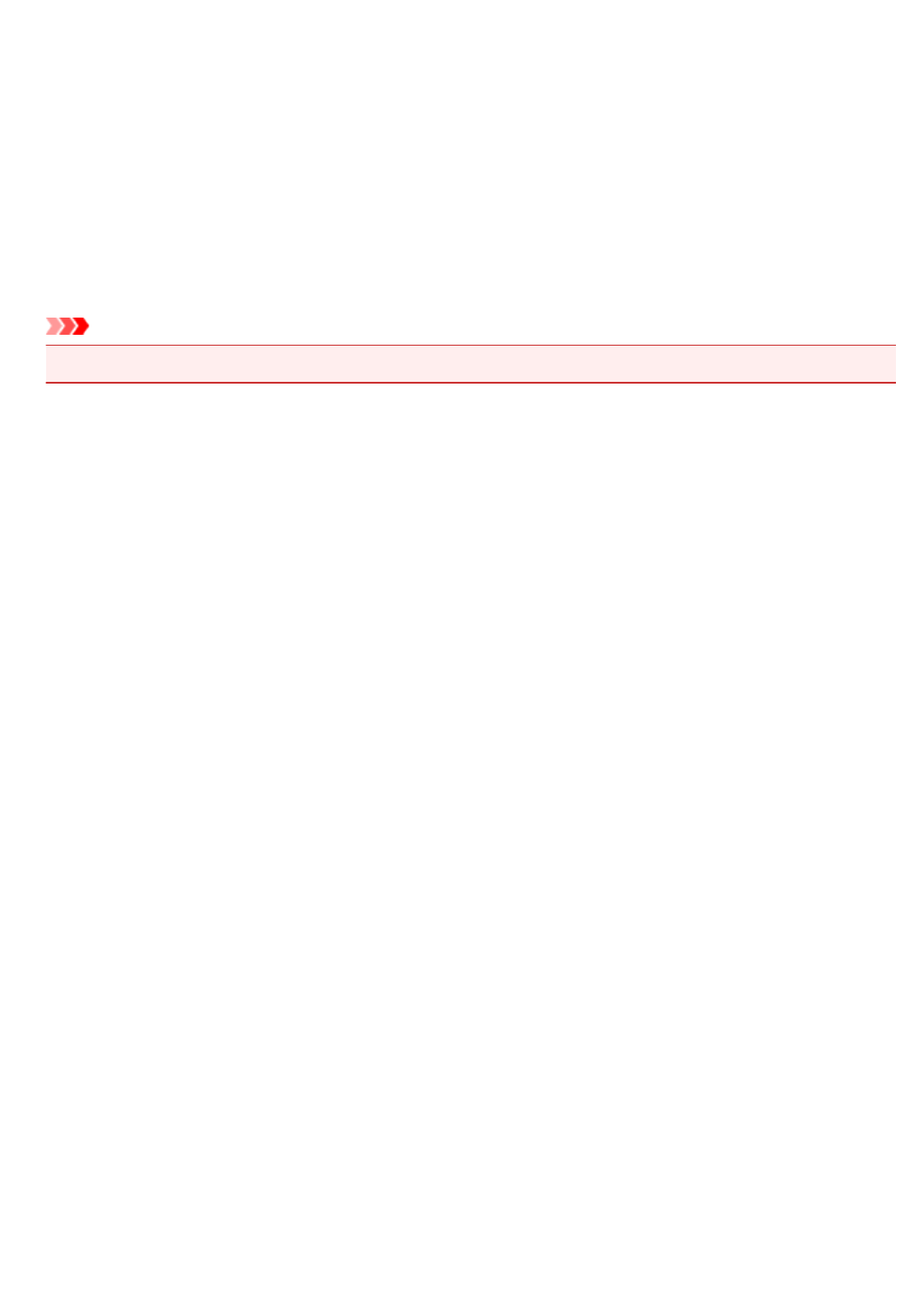
6700
Cause
Printer error has occurred.
What to Do
Turn off the printer and unplug it.
Plug in the printer again and turn it back on.
If this does not solve the problem, contact your nearest Canon service center to request a repair.
Important
• If you unplug, all the faxes stored in the printer's memory are deleted.
1314
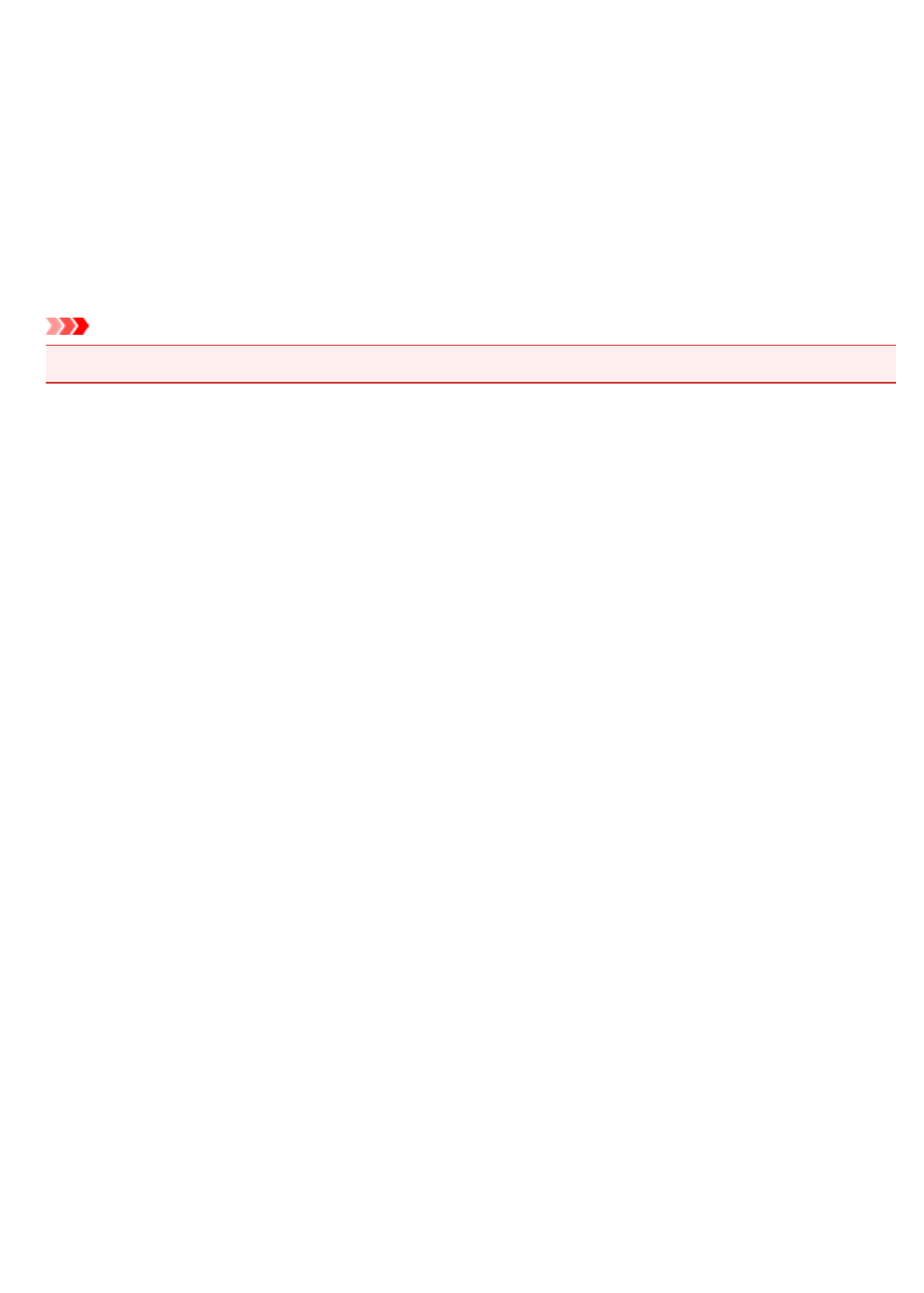
6701
Cause
Printer error has occurred.
What to Do
Turn off the printer and unplug it.
Plug in the printer again and turn it back on.
If this does not solve the problem, contact your nearest Canon service center to request a repair.
Important
• If you unplug, all the faxes stored in the printer's memory are deleted.
1315
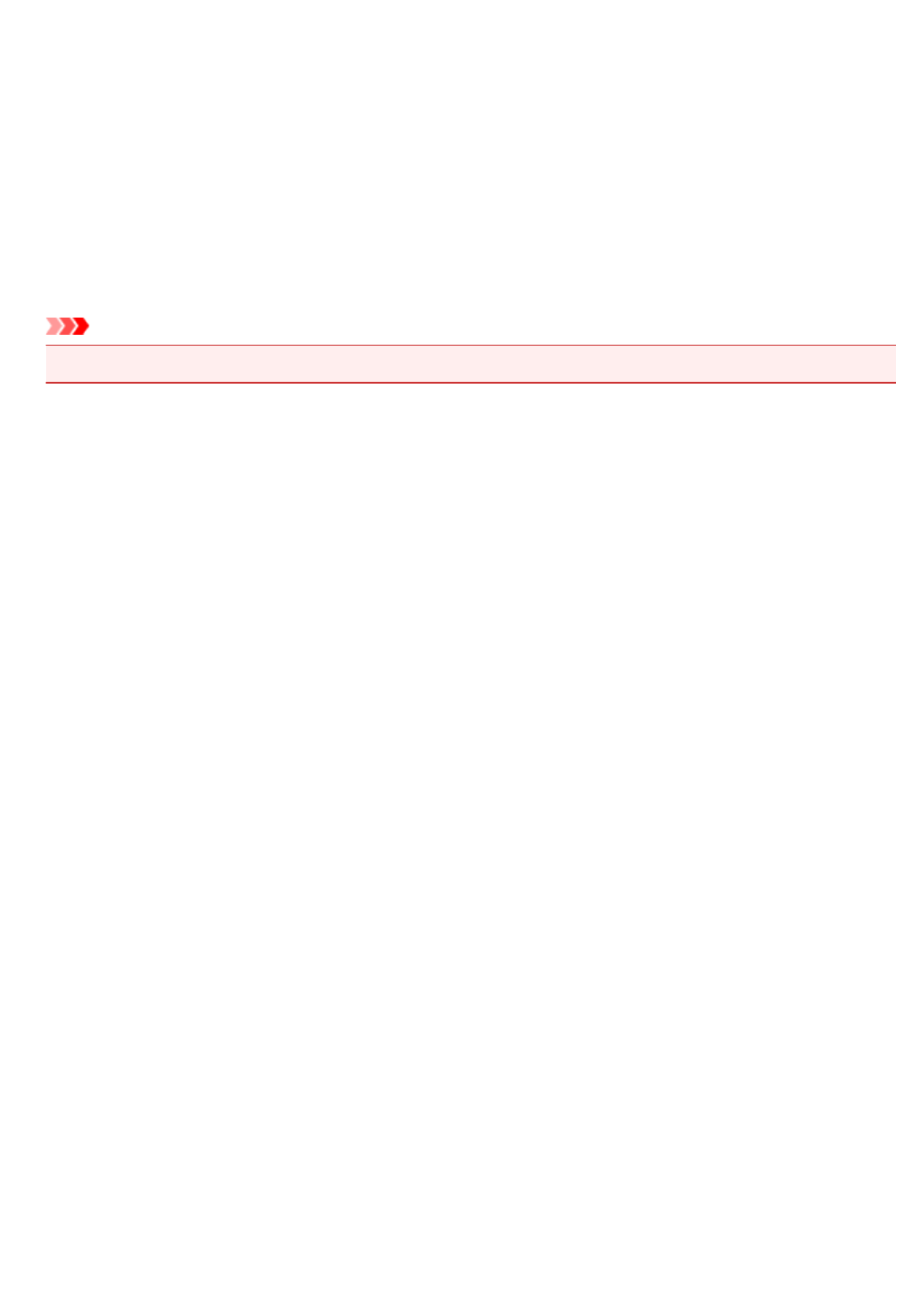
6800
Cause
Printer error has occurred.
What to Do
Turn off the printer and unplug it.
Plug in the printer again and turn it back on.
If this does not solve the problem, contact your nearest Canon service center to request a repair.
Important
• If you unplug, all the faxes stored in the printer's memory are deleted.
1316
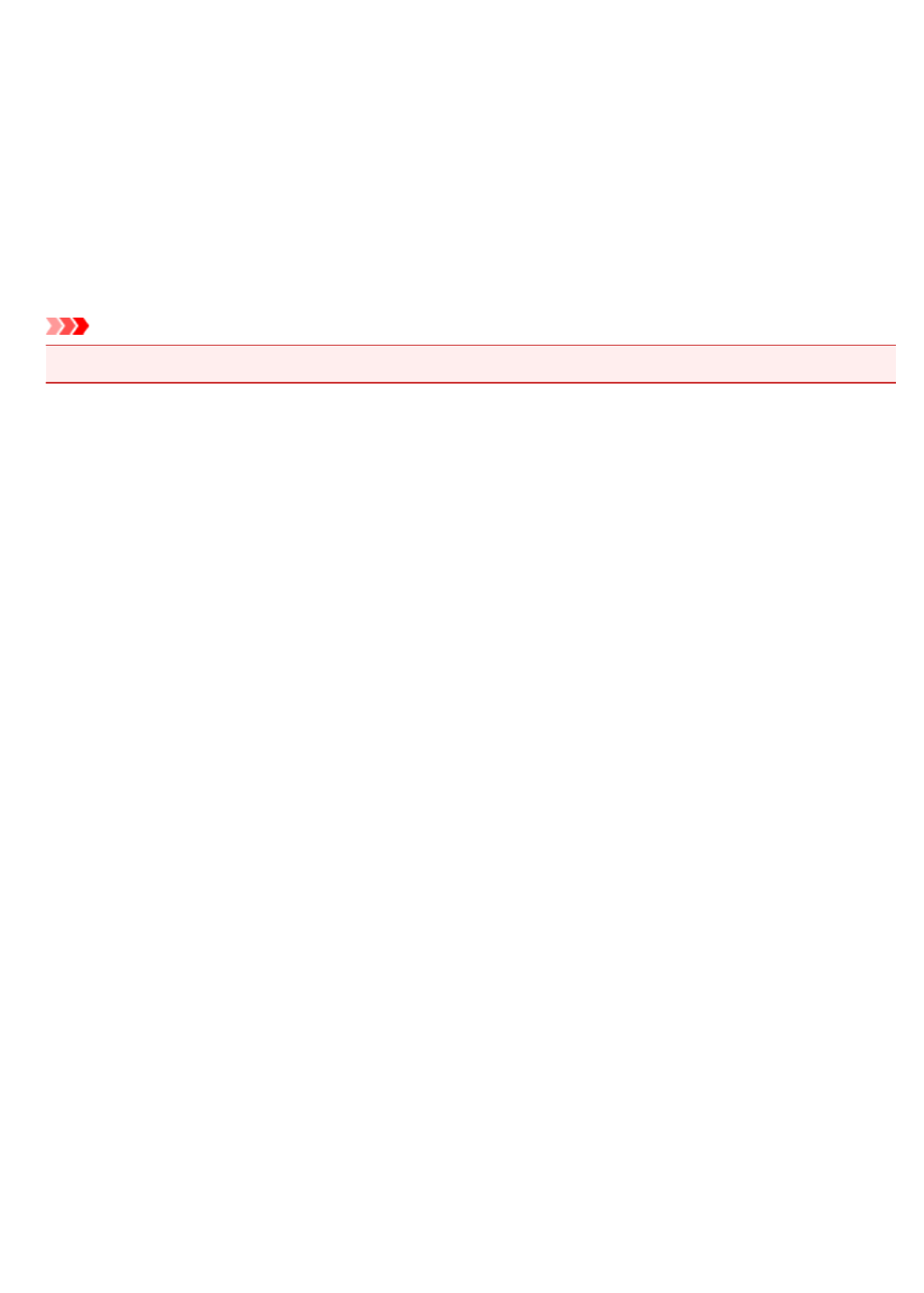
6801
Cause
Printer error has occurred.
What to Do
Turn off the printer and unplug it.
Plug in the printer again and turn it back on.
If this does not solve the problem, contact your nearest Canon service center to request a repair.
Important
• If you unplug, all the faxes stored in the printer's memory are deleted.
1317
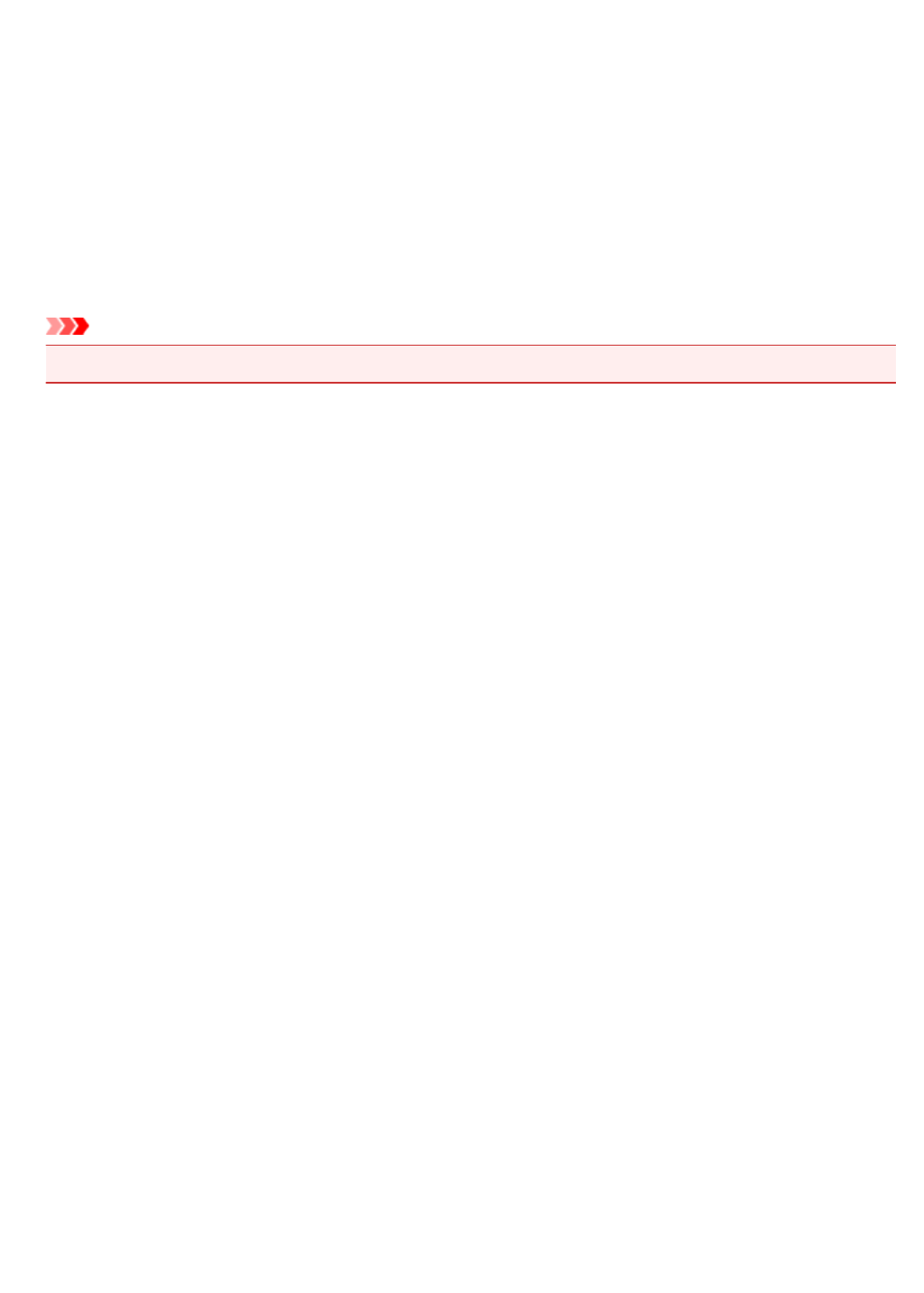
6900
Cause
Printer error has occurred.
What to Do
Turn off the printer and unplug it.
Plug in the printer again and turn it back on.
If this does not solve the problem, contact your nearest Canon service center to request a repair.
Important
• If you unplug, all the faxes stored in the printer's memory are deleted.
1318
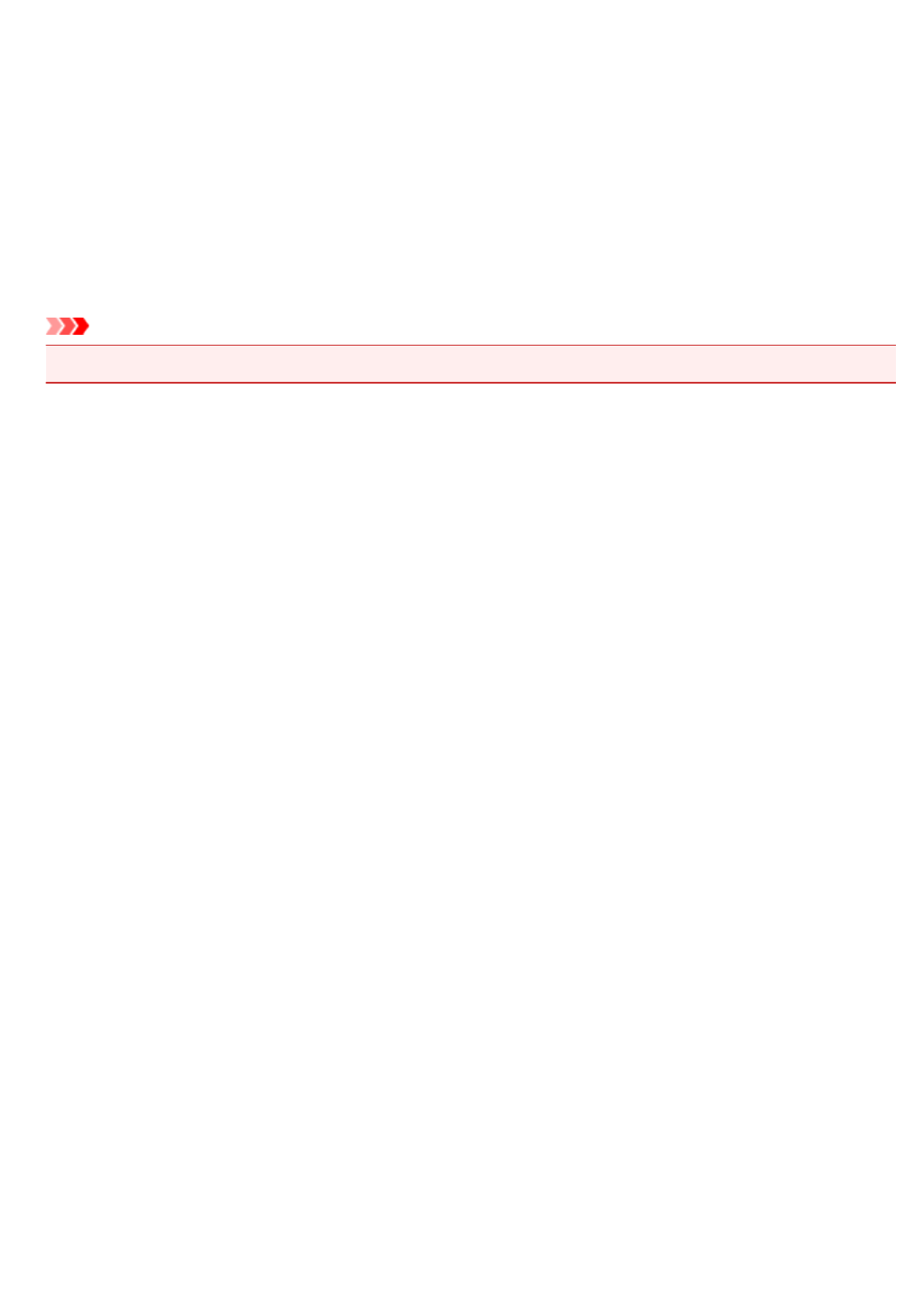
6901
Cause
Printer error has occurred.
What to Do
Turn off the printer and unplug it.
Plug in the printer again and turn it back on.
If this does not solve the problem, contact your nearest Canon service center to request a repair.
Important
• If you unplug, all the faxes stored in the printer's memory are deleted.
1319
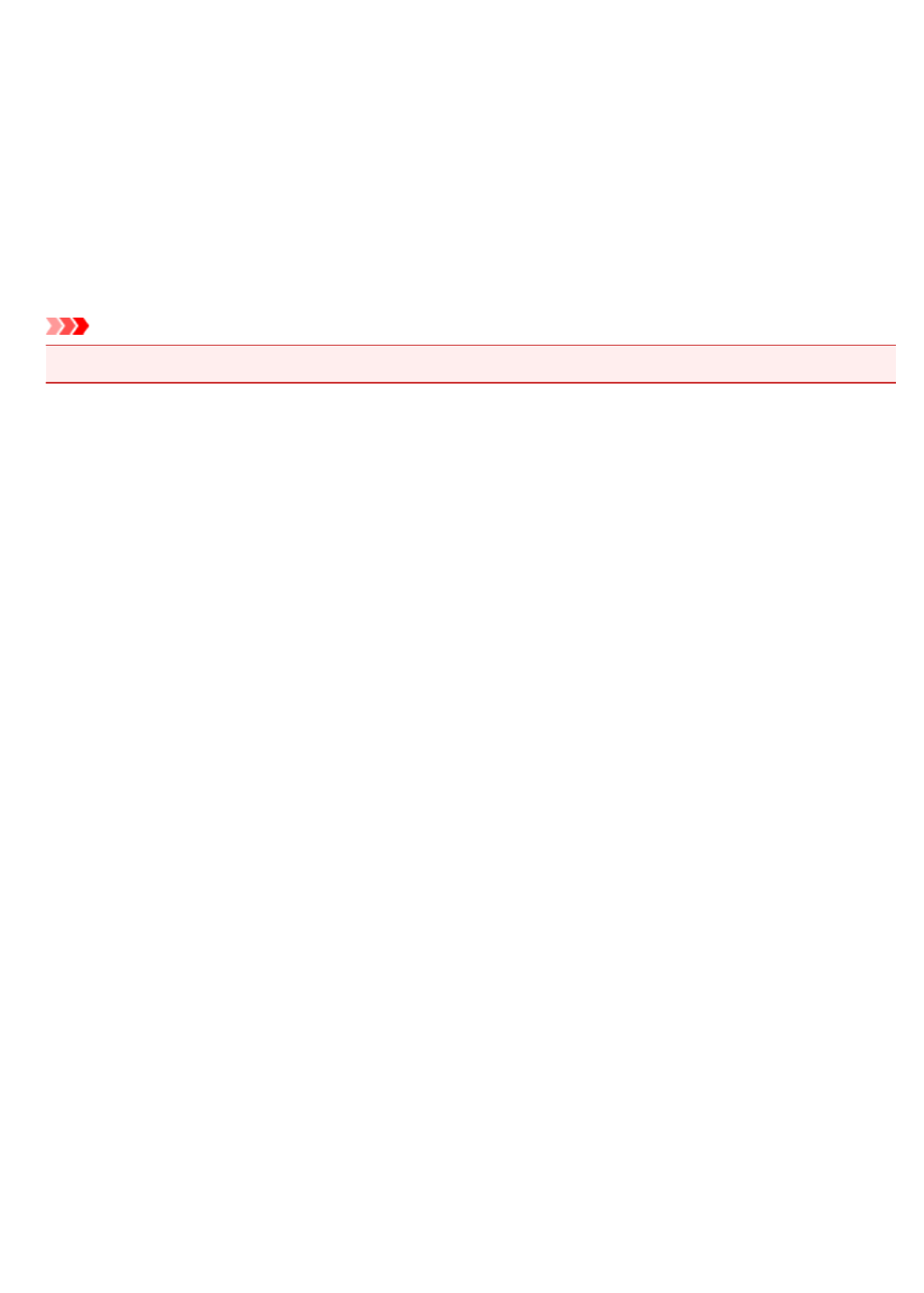
6902
Cause
Printer error has occurred.
What to Do
Turn off the printer and unplug it.
Plug in the printer again and turn it back on.
If this does not solve the problem, contact your nearest Canon service center to request a repair.
Important
• If you unplug, all the faxes stored in the printer's memory are deleted.
1320

6910
Cause
Printer error has occurred.
What to Do
Turn off the printer and unplug it.
Plug in the printer again and turn it back on.
If this does not solve the problem, contact your nearest Canon service center to request a repair.
Important
• If you unplug, all the faxes stored in the printer's memory are deleted.
1321
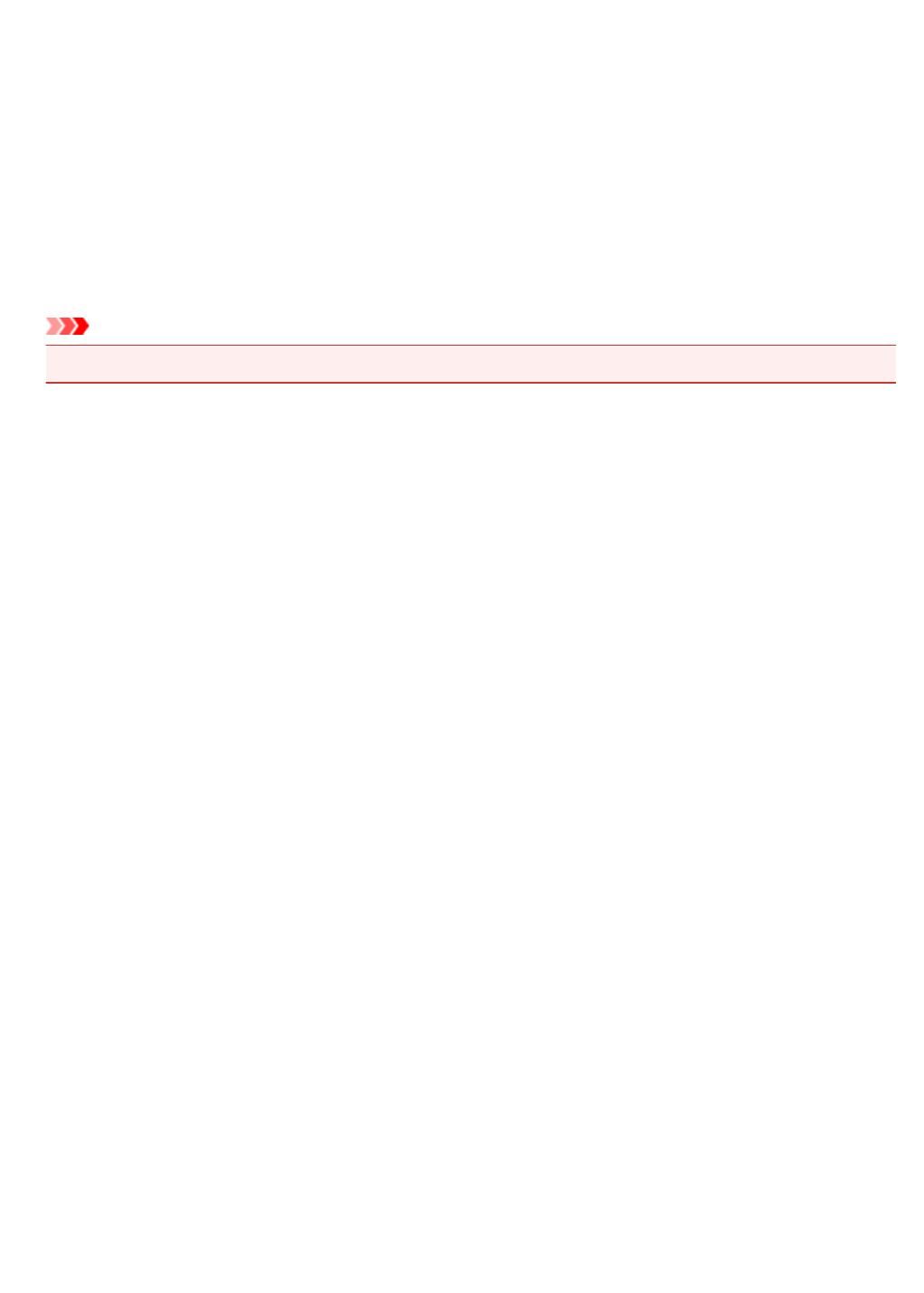
6911
Cause
Printer error has occurred.
What to Do
Turn off the printer and unplug it.
Plug in the printer again and turn it back on.
If this does not solve the problem, contact your nearest Canon service center to request a repair.
Important
• If you unplug, all the faxes stored in the printer's memory are deleted.
1322
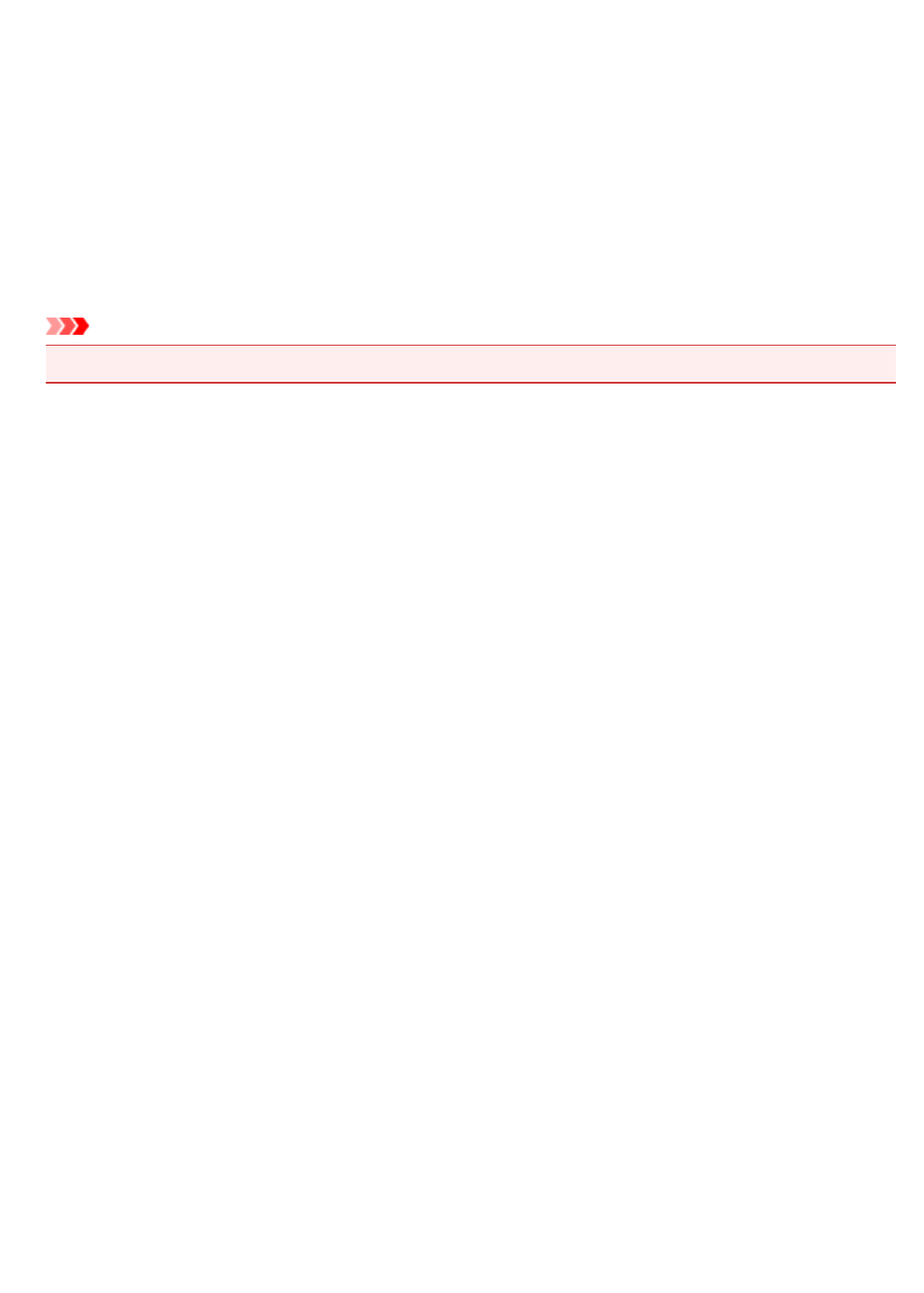
6920
Cause
Printer error has occurred.
What to Do
Turn off the printer and unplug it.
Plug in the printer again and turn it back on.
If this does not solve the problem, contact your nearest Canon service center to request a repair.
Important
• If you unplug, all the faxes stored in the printer's memory are deleted.
1323
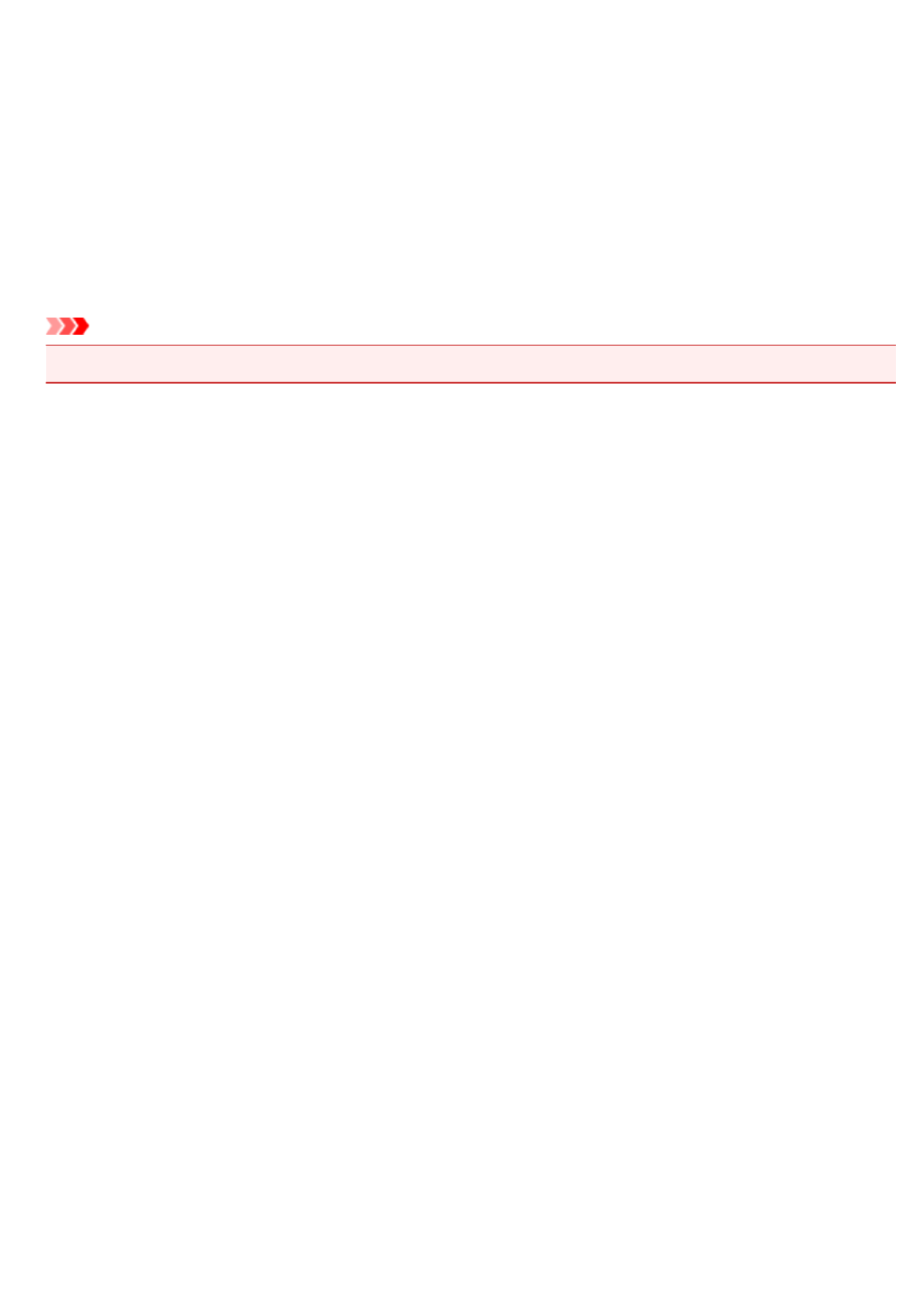
6921
Cause
Printer error has occurred.
What to Do
Turn off the printer and unplug it.
Plug in the printer again and turn it back on.
If this does not solve the problem, contact your nearest Canon service center to request a repair.
Important
• If you unplug, all the faxes stored in the printer's memory are deleted.
1324
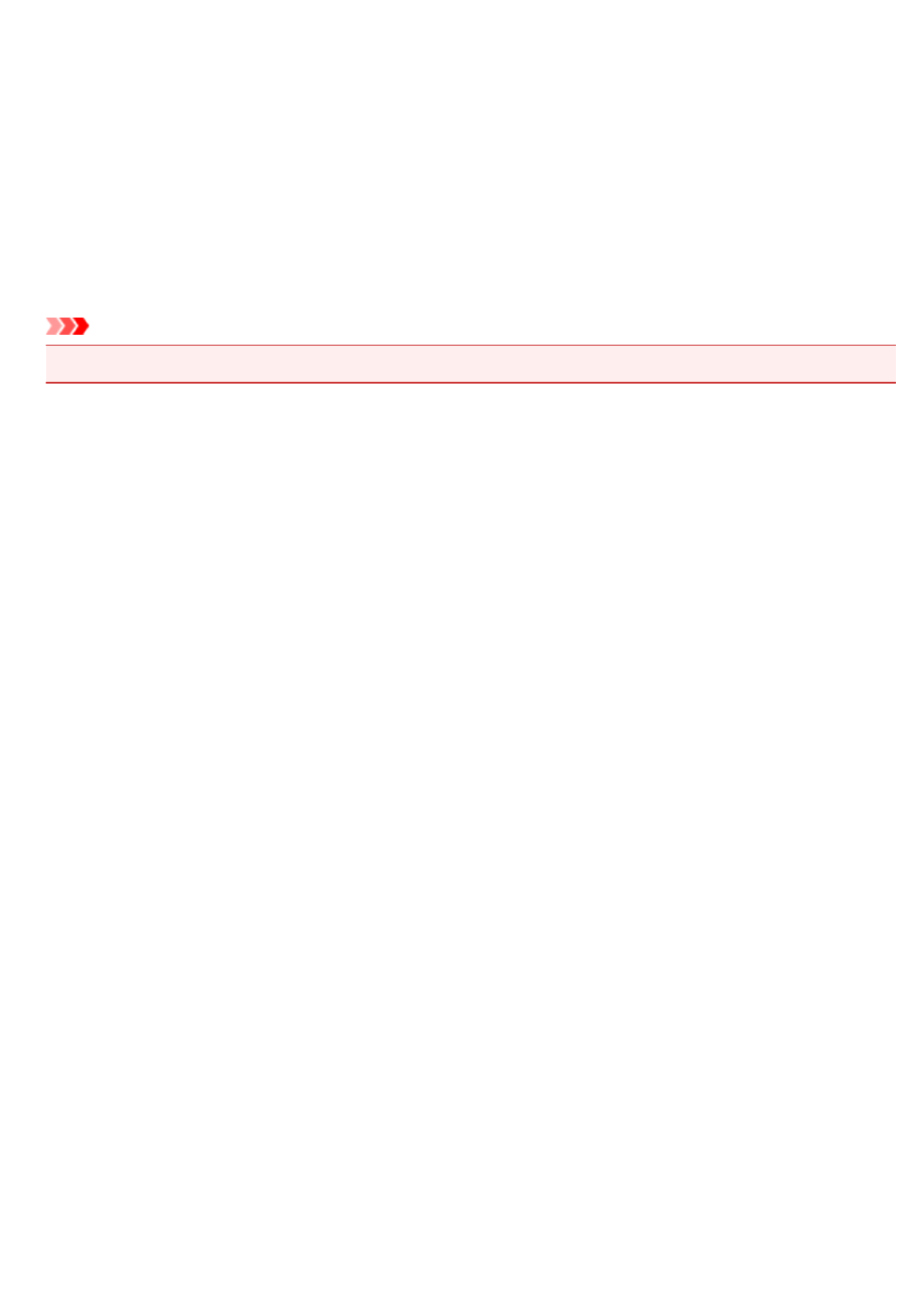
6930
Cause
Printer error has occurred.
What to Do
Turn off the printer and unplug it.
Plug in the printer again and turn it back on.
If this does not solve the problem, contact your nearest Canon service center to request a repair.
Important
• If you unplug, all the faxes stored in the printer's memory are deleted.
1325
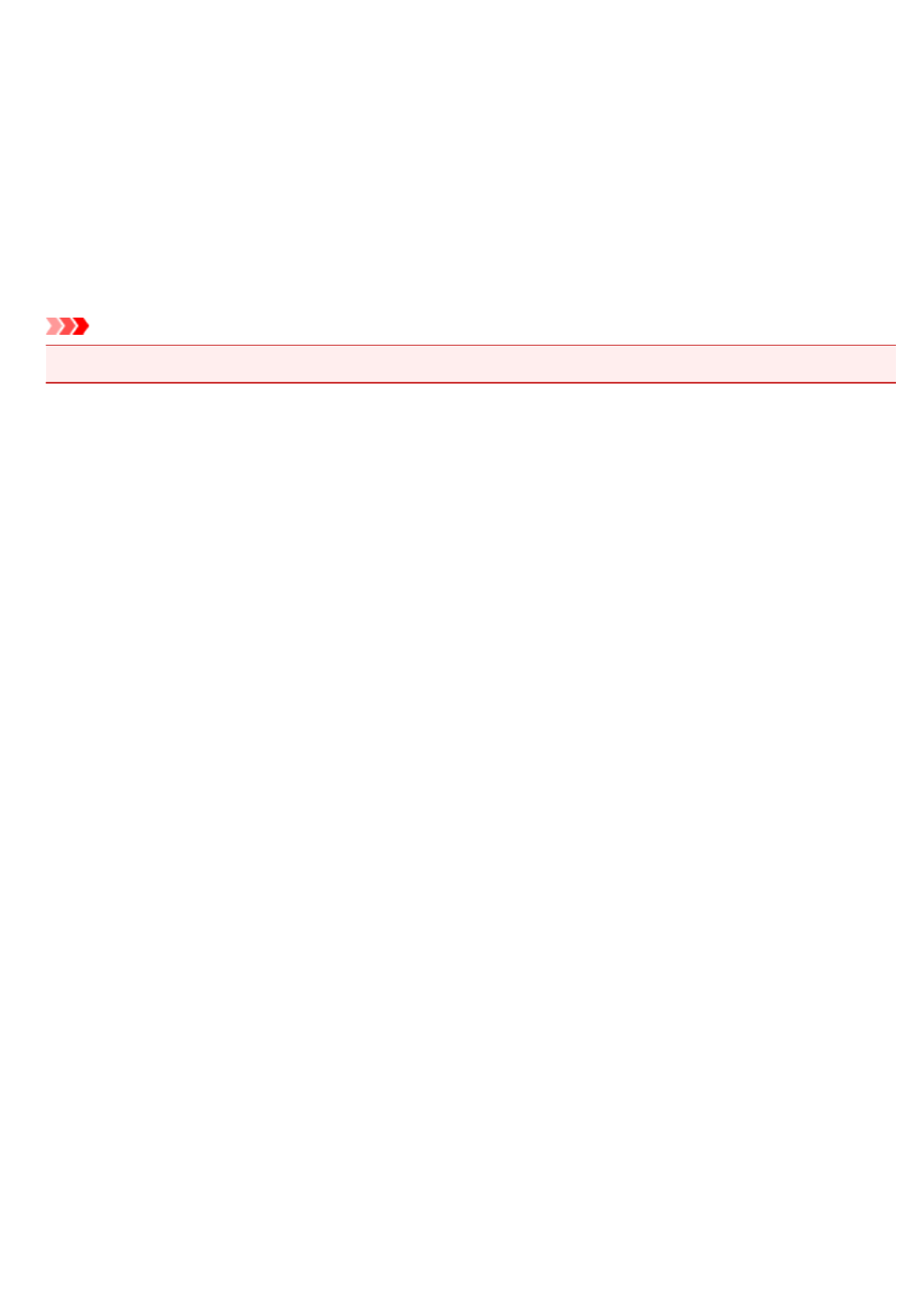
6931
Cause
Printer error has occurred.
What to Do
Turn off the printer and unplug it.
Plug in the printer again and turn it back on.
If this does not solve the problem, contact your nearest Canon service center to request a repair.
Important
• If you unplug, all the faxes stored in the printer's memory are deleted.
1326
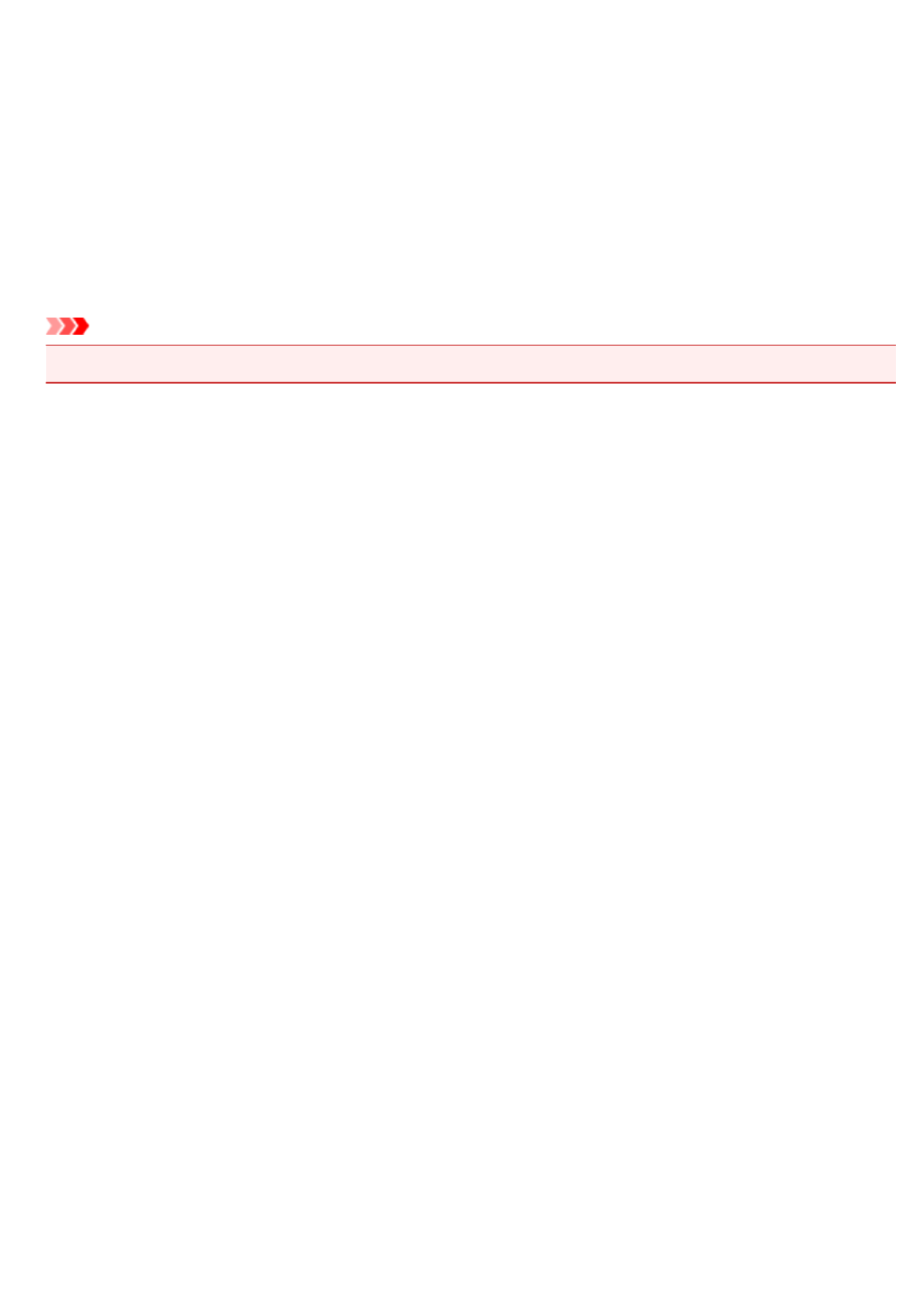
6932
Cause
Printer error has occurred.
What to Do
Turn off the printer and unplug it.
Plug in the printer again and turn it back on.
If this does not solve the problem, contact your nearest Canon service center to request a repair.
Important
• If you unplug, all the faxes stored in the printer's memory are deleted.
1327
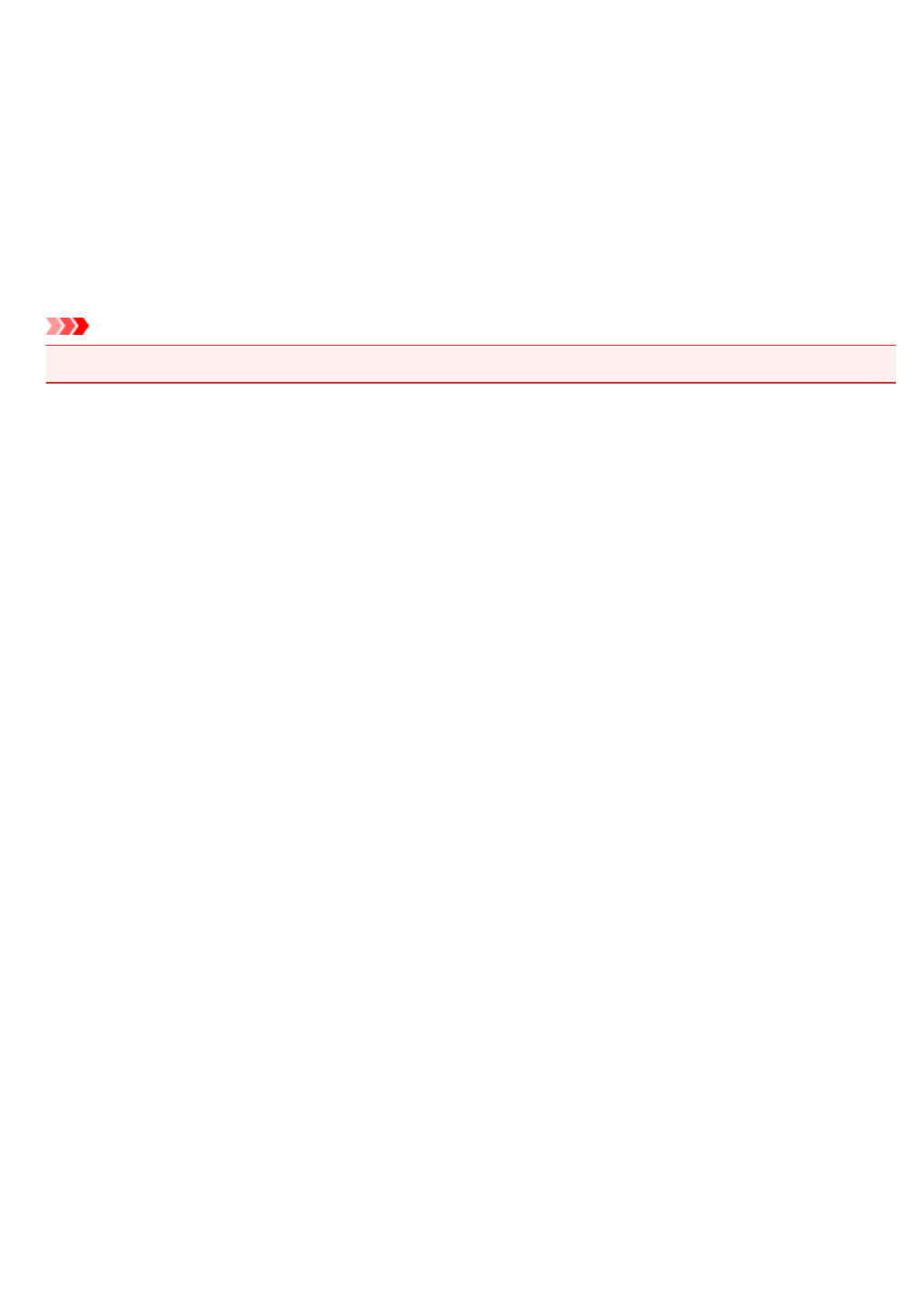
6933
Cause
Printer error has occurred.
What to Do
Turn off the printer and unplug it.
Plug in the printer again and turn it back on.
If this does not solve the problem, contact your nearest Canon service center to request a repair.
Important
• If you unplug, all the faxes stored in the printer's memory are deleted.
1328
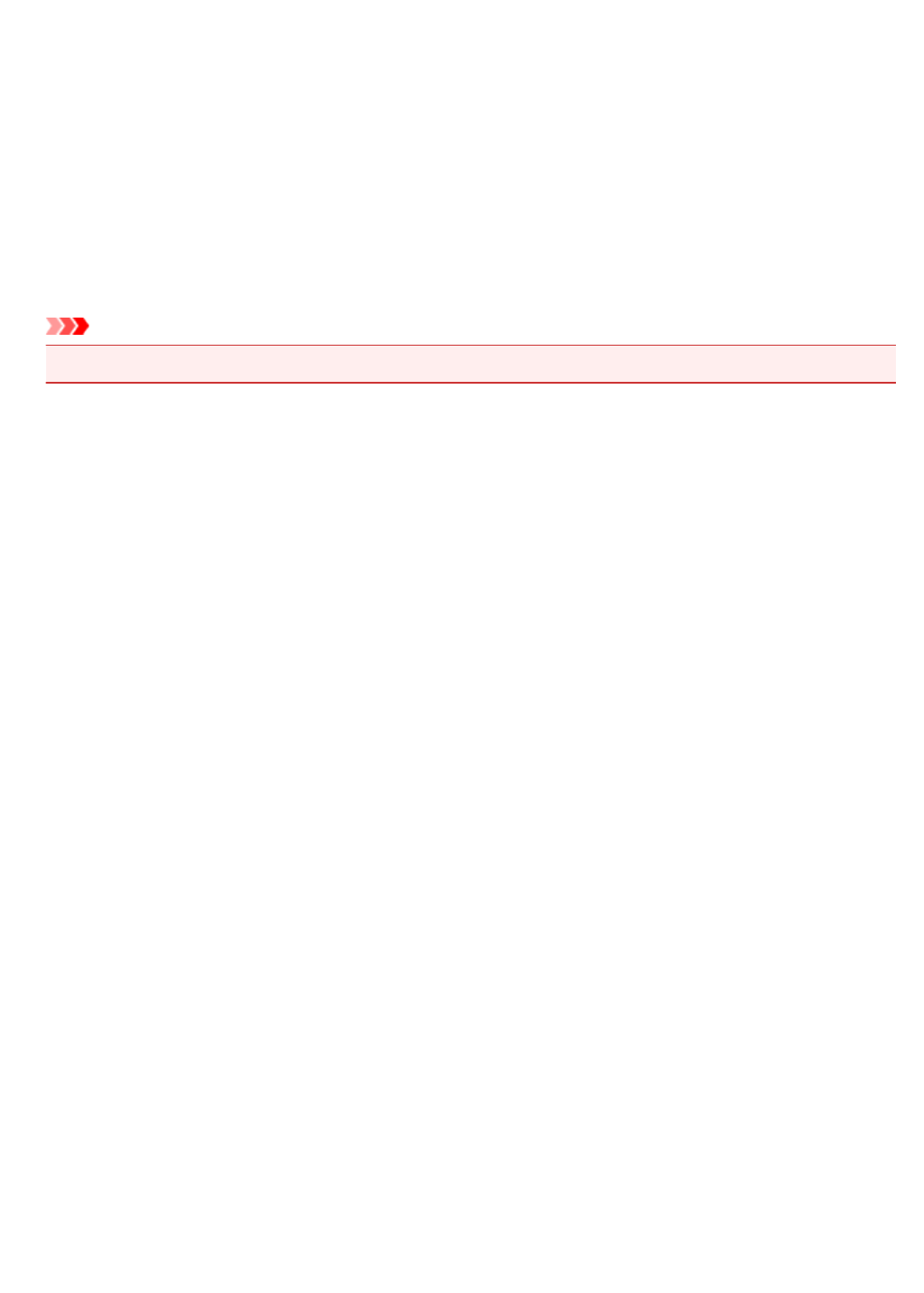
6936
Cause
Printer error has occurred.
What to Do
Turn off the printer and unplug it.
Plug in the printer again and turn it back on.
If this does not solve the problem, contact your nearest Canon service center to request a repair.
Important
• If you unplug, all the faxes stored in the printer's memory are deleted.
1329
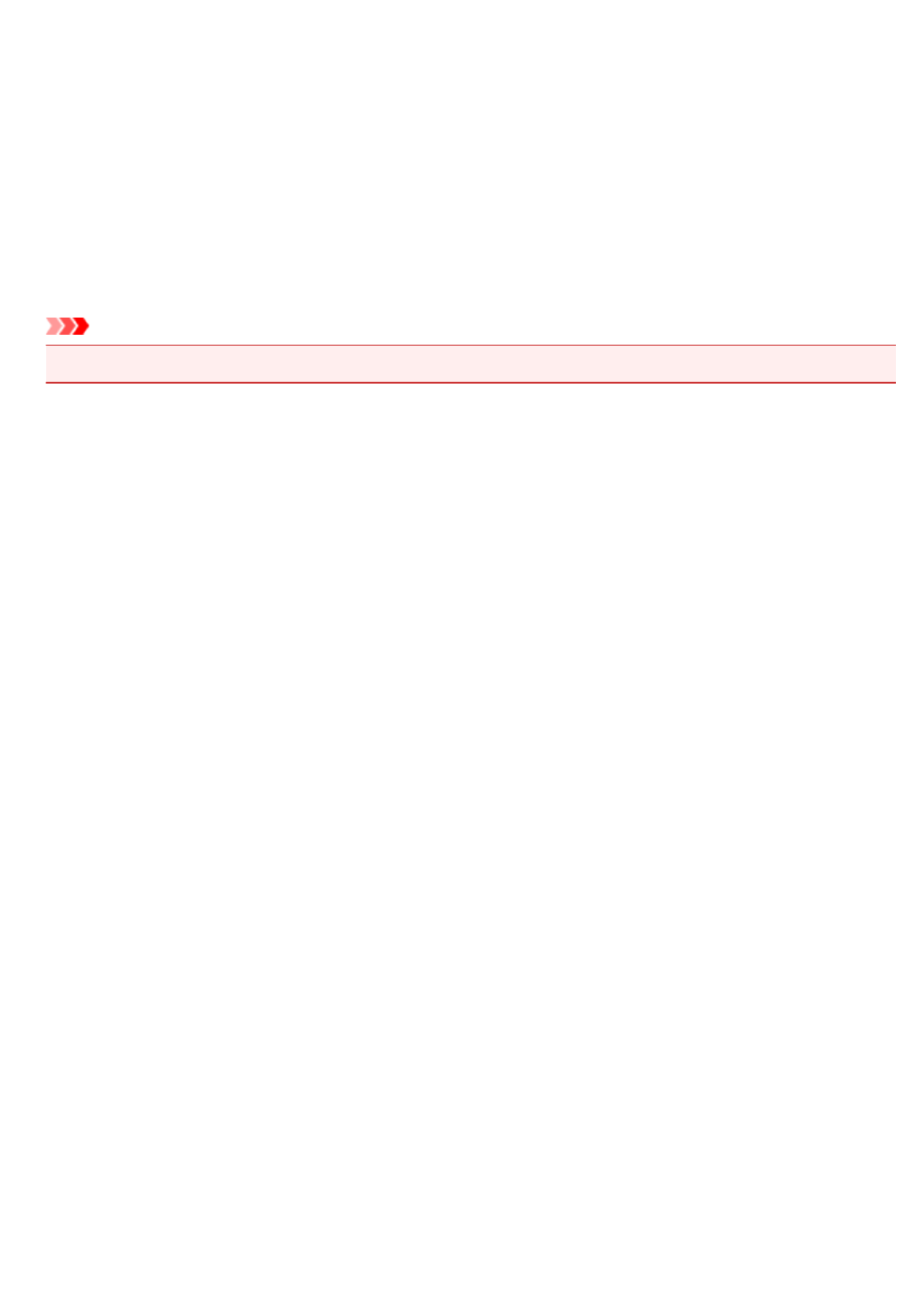
6937
Cause
Printer error has occurred.
What to Do
Turn off the printer and unplug it.
Plug in the printer again and turn it back on.
If this does not solve the problem, contact your nearest Canon service center to request a repair.
Important
• If you unplug, all the faxes stored in the printer's memory are deleted.
1330
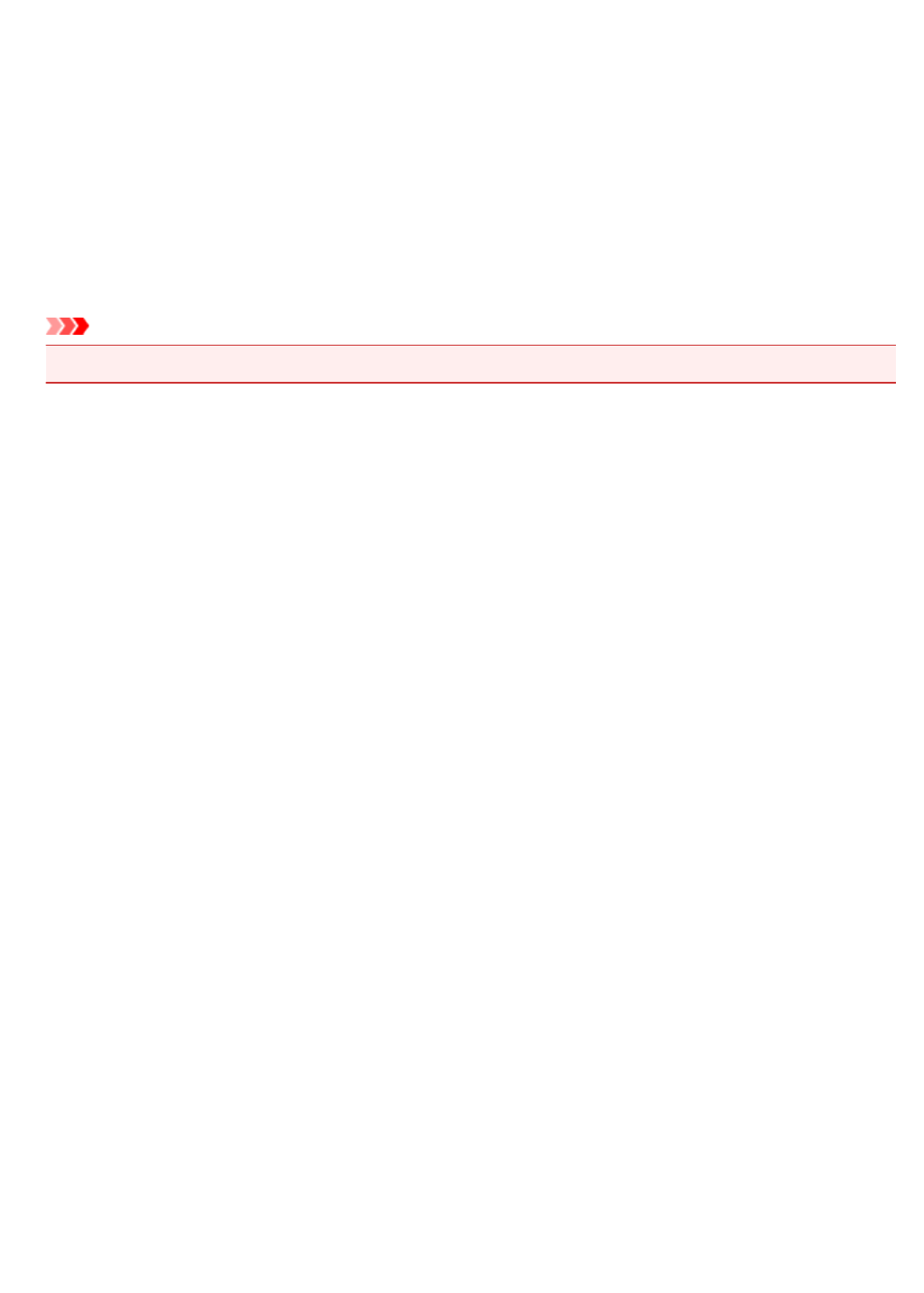
6938
Cause
Printer error has occurred.
What to Do
Turn off the printer and unplug it.
Plug in the printer again and turn it back on.
If this does not solve the problem, contact your nearest Canon service center to request a repair.
Important
• If you unplug, all the faxes stored in the printer's memory are deleted.
1331

6939
Cause
Printer error has occurred.
What to Do
Turn off the printer and unplug it.
Plug in the printer again and turn it back on.
If this does not solve the problem, contact your nearest Canon service center to request a repair.
Important
• If you unplug, all the faxes stored in the printer's memory are deleted.
1332
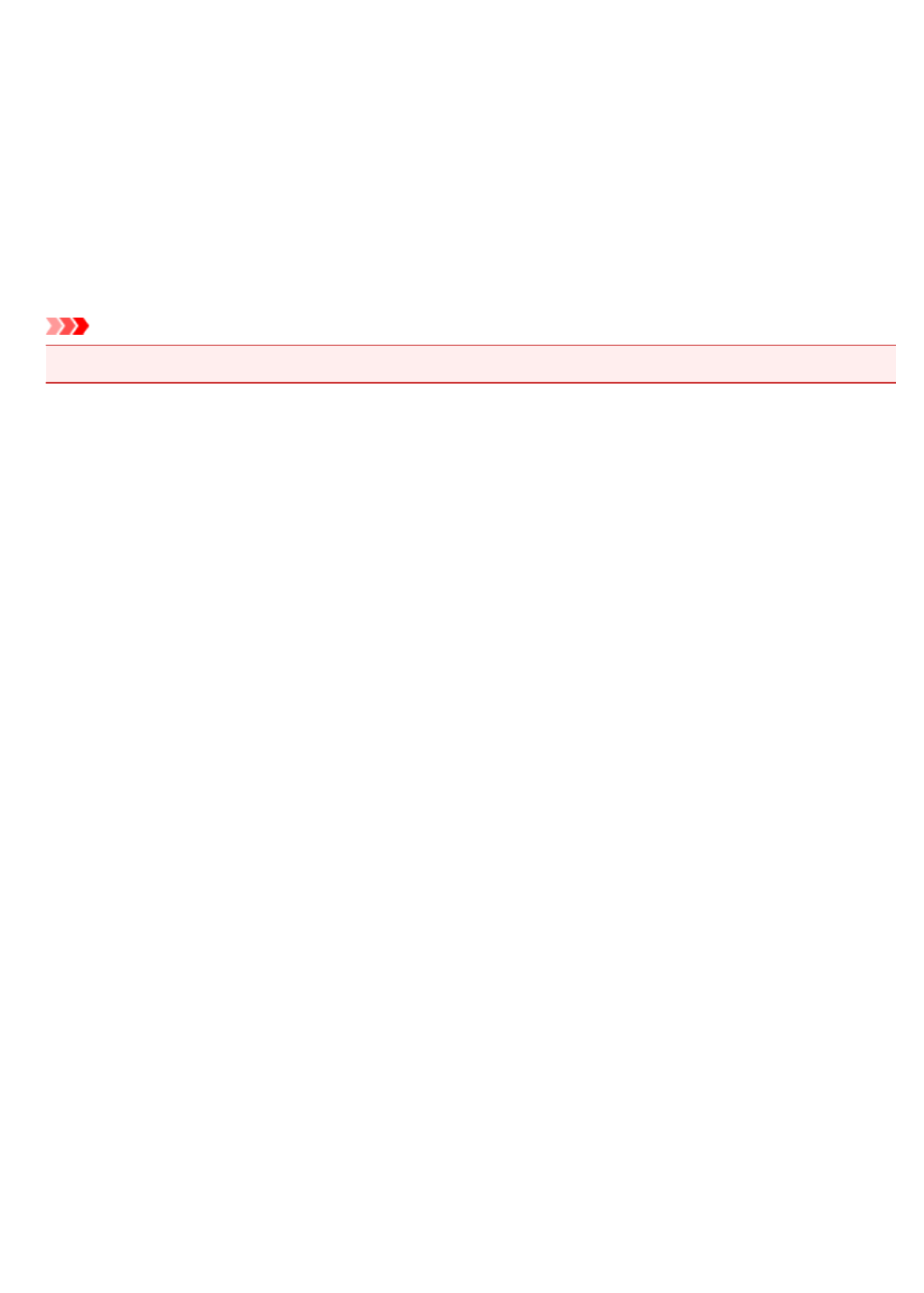
693A
Cause
Printer error has occurred.
What to Do
Turn off the printer and unplug it.
Plug in the printer again and turn it back on.
If this does not solve the problem, contact your nearest Canon service center to request a repair.
Important
• If you unplug, all the faxes stored in the printer's memory are deleted.
1333
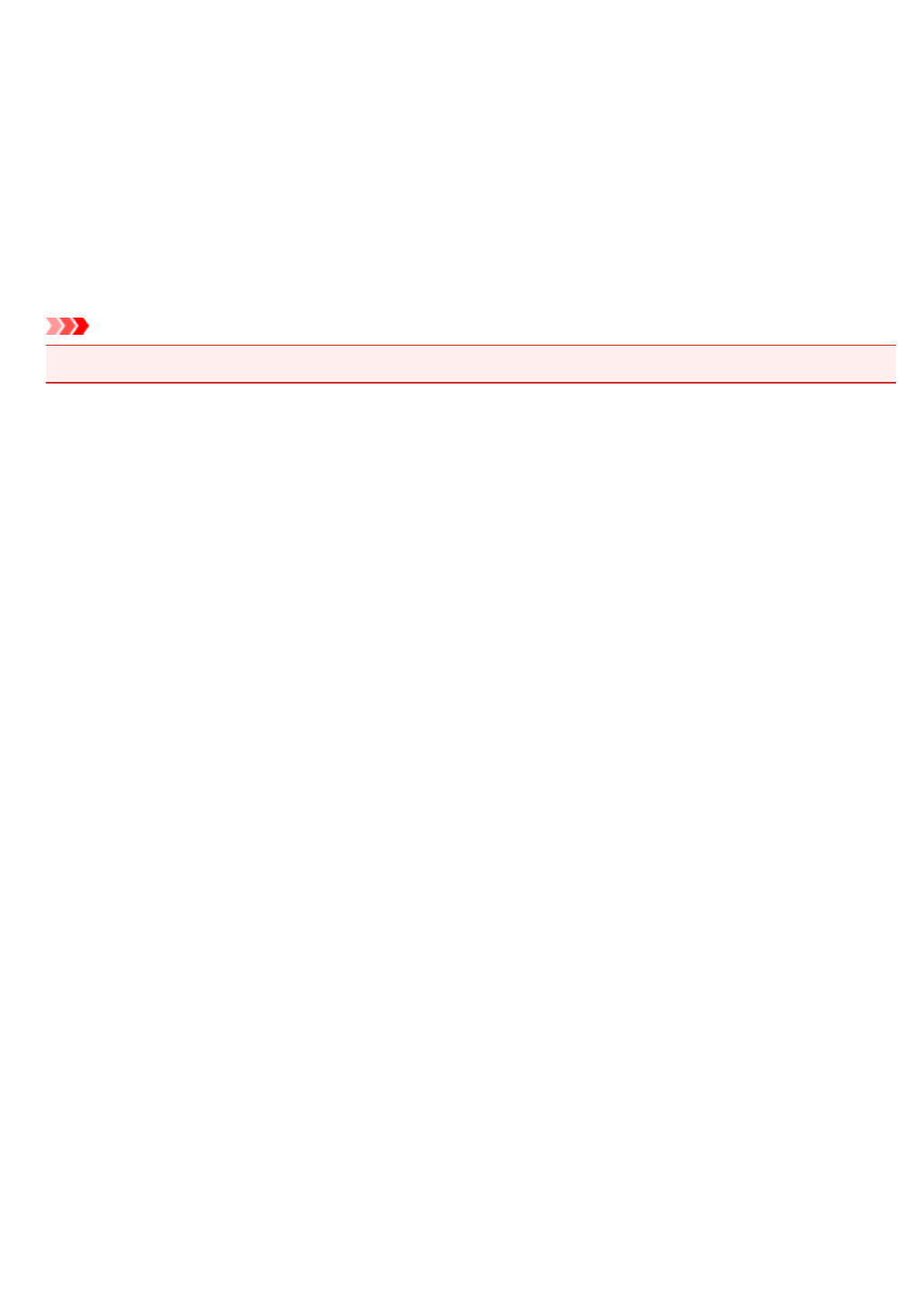
6940
Cause
Printer error has occurred.
What to Do
Turn off the printer and unplug it.
Plug in the printer again and turn it back on.
If this does not solve the problem, contact your nearest Canon service center to request a repair.
Important
• If you unplug, all the faxes stored in the printer's memory are deleted.
1334
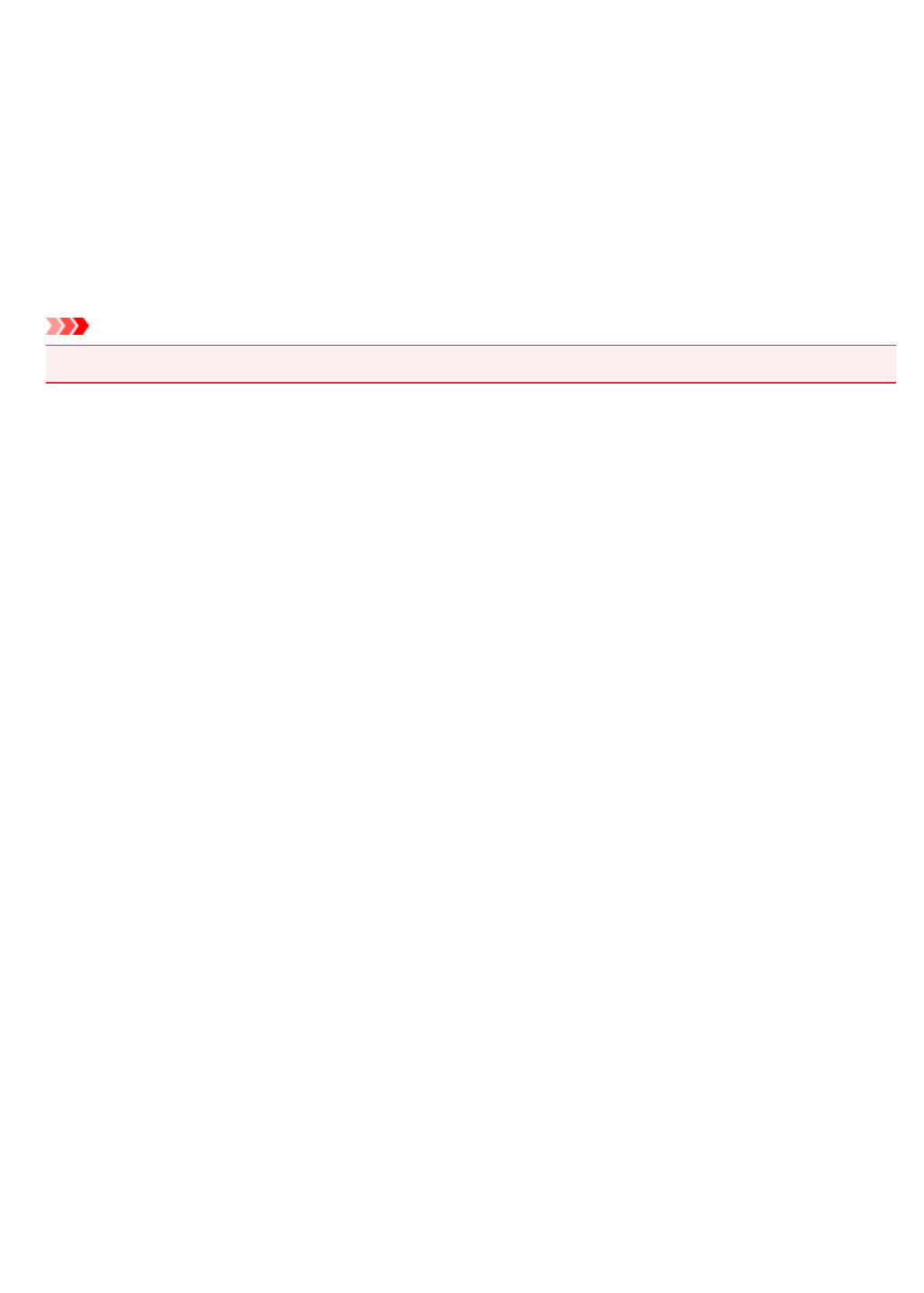
6941
Cause
Printer error has occurred.
What to Do
Turn off the printer and unplug it.
Plug in the printer again and turn it back on.
If this does not solve the problem, contact your nearest Canon service center to request a repair.
Important
• If you unplug, all the faxes stored in the printer's memory are deleted.
1335
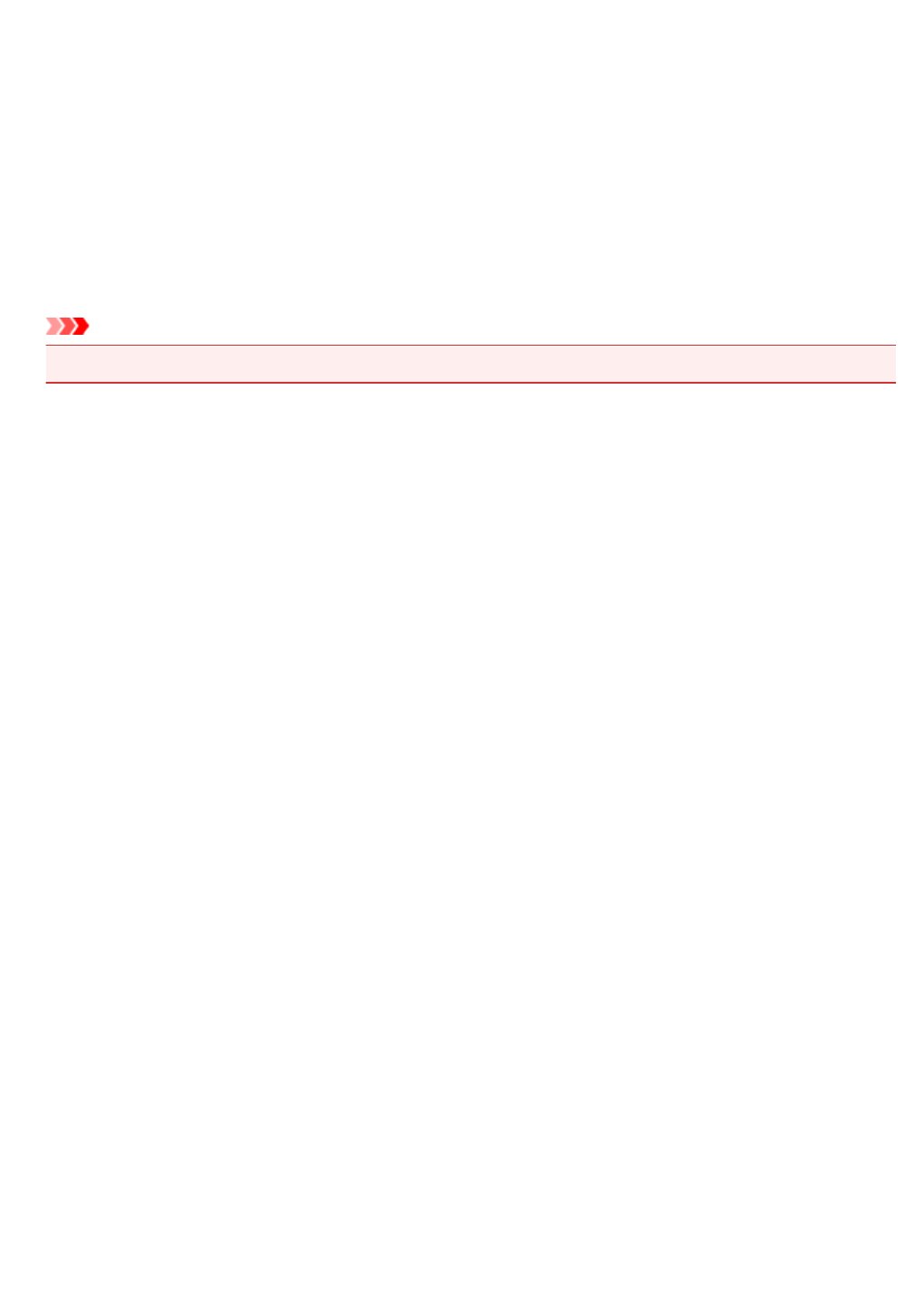
6942
Cause
Printer error has occurred.
What to Do
Turn off the printer and unplug it.
Plug in the printer again and turn it back on.
If this does not solve the problem, contact your nearest Canon service center to request a repair.
Important
• If you unplug, all the faxes stored in the printer's memory are deleted.
1336
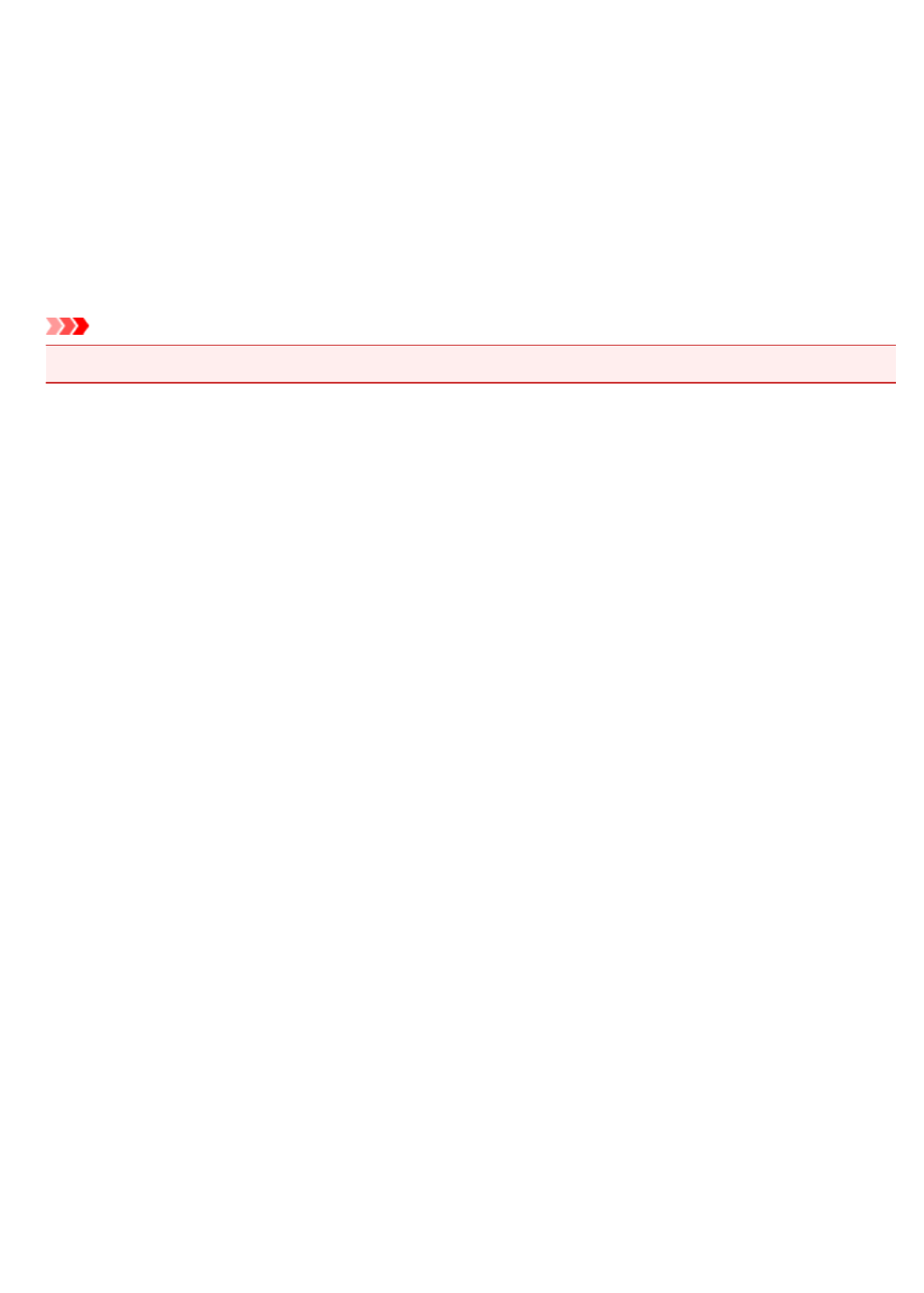
6943
Cause
Printer error has occurred.
What to Do
Turn off the printer and unplug it.
Plug in the printer again and turn it back on.
If this does not solve the problem, contact your nearest Canon service center to request a repair.
Important
• If you unplug, all the faxes stored in the printer's memory are deleted.
1337
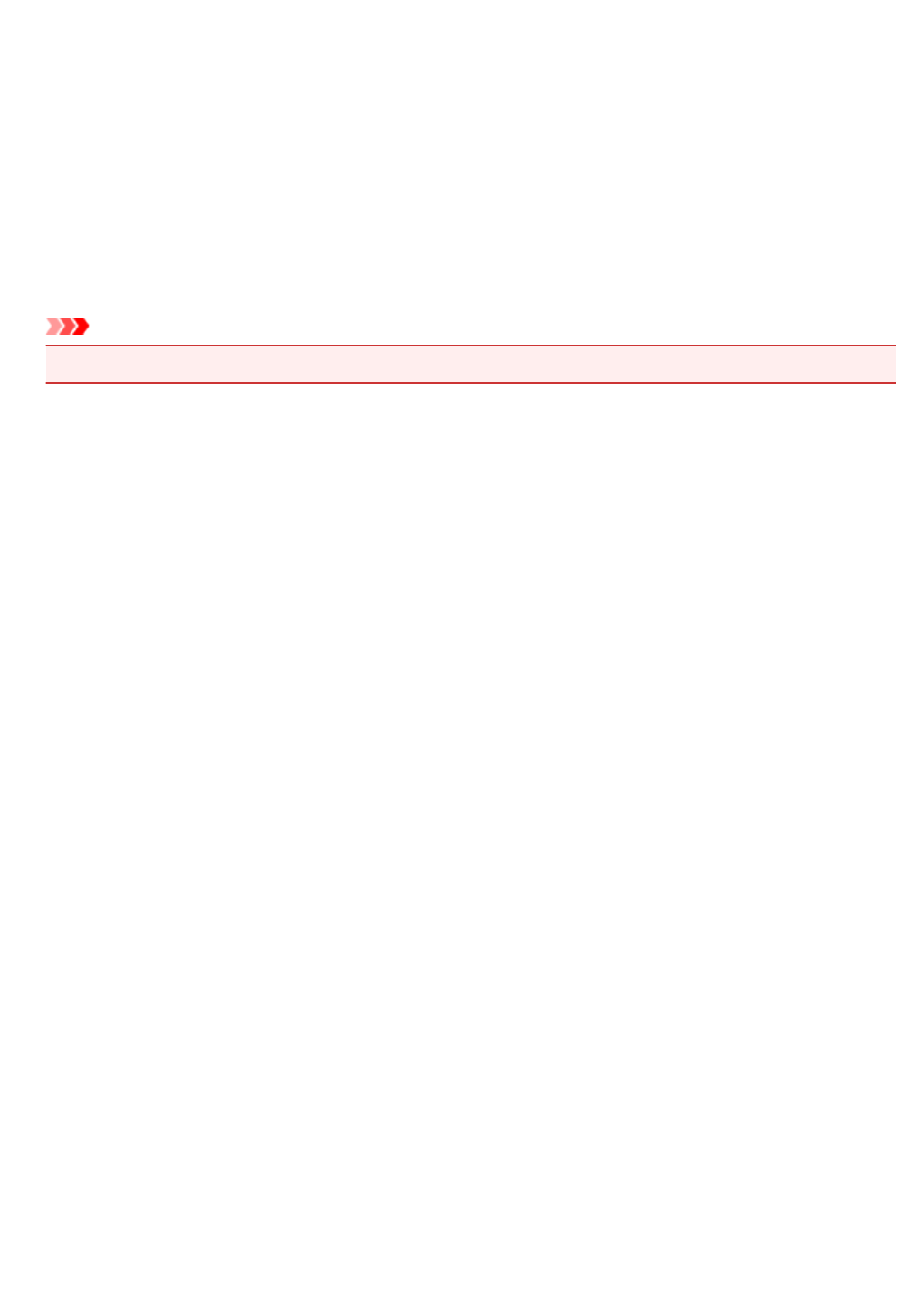
6944
Cause
Printer error has occurred.
What to Do
Turn off the printer and unplug it.
Plug in the printer again and turn it back on.
If this does not solve the problem, contact your nearest Canon service center to request a repair.
Important
• If you unplug, all the faxes stored in the printer's memory are deleted.
1338
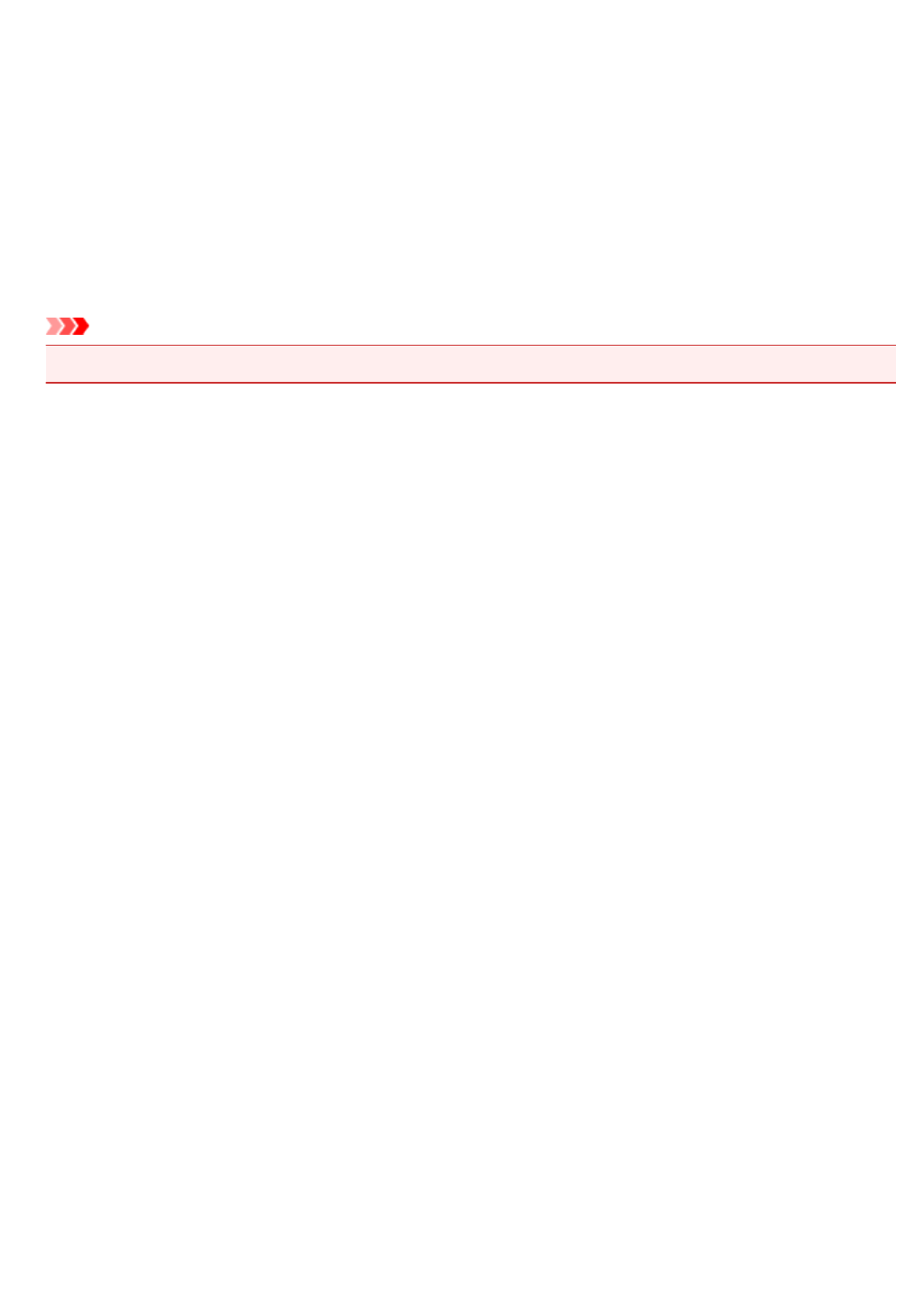
6945
Cause
Printer error has occurred.
What to Do
Turn off the printer and unplug it.
Plug in the printer again and turn it back on.
If this does not solve the problem, contact your nearest Canon service center to request a repair.
Important
• If you unplug, all the faxes stored in the printer's memory are deleted.
1339
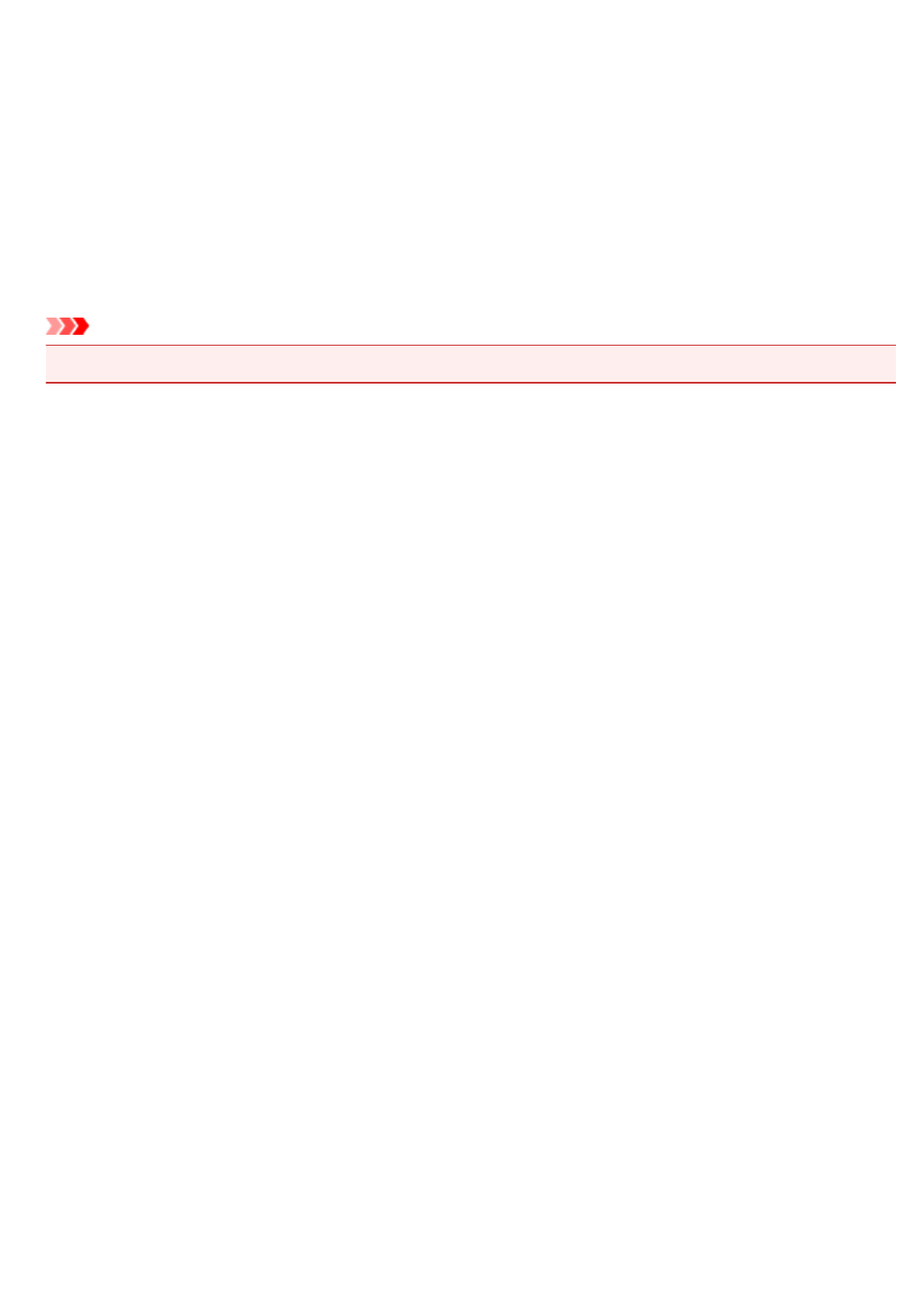
6946
Cause
Printer error has occurred.
What to Do
Turn off the printer and unplug it.
Plug in the printer again and turn it back on.
If this does not solve the problem, contact your nearest Canon service center to request a repair.
Important
• If you unplug, all the faxes stored in the printer's memory are deleted.
1340
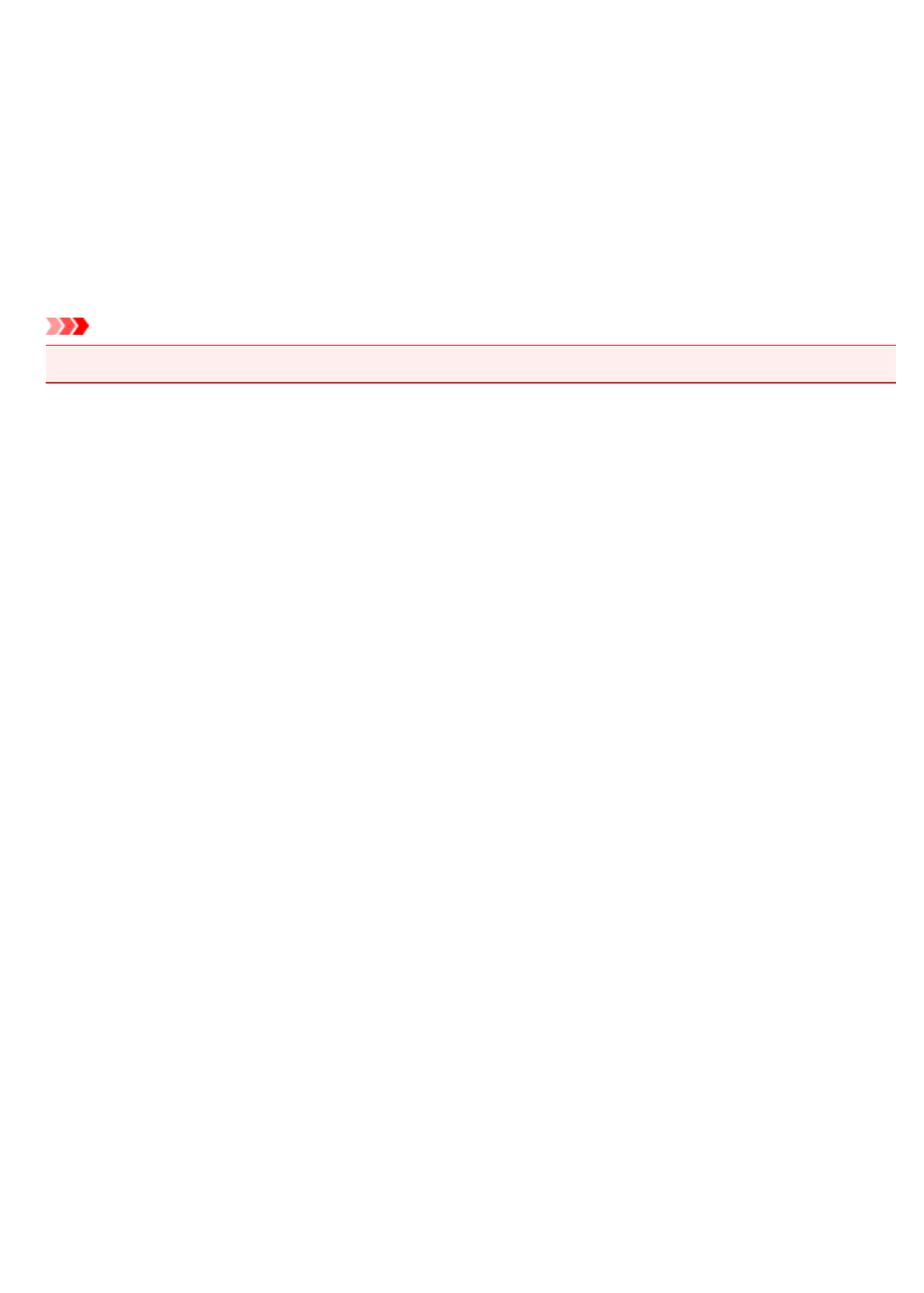
7100
Cause
Printer error has occurred.
What to Do
Turn off the printer and unplug it.
Plug in the printer again and turn it back on.
If this does not solve the problem, contact your nearest Canon service center to request a repair.
Important
• If you unplug, all the faxes stored in the printer's memory are deleted.
1341
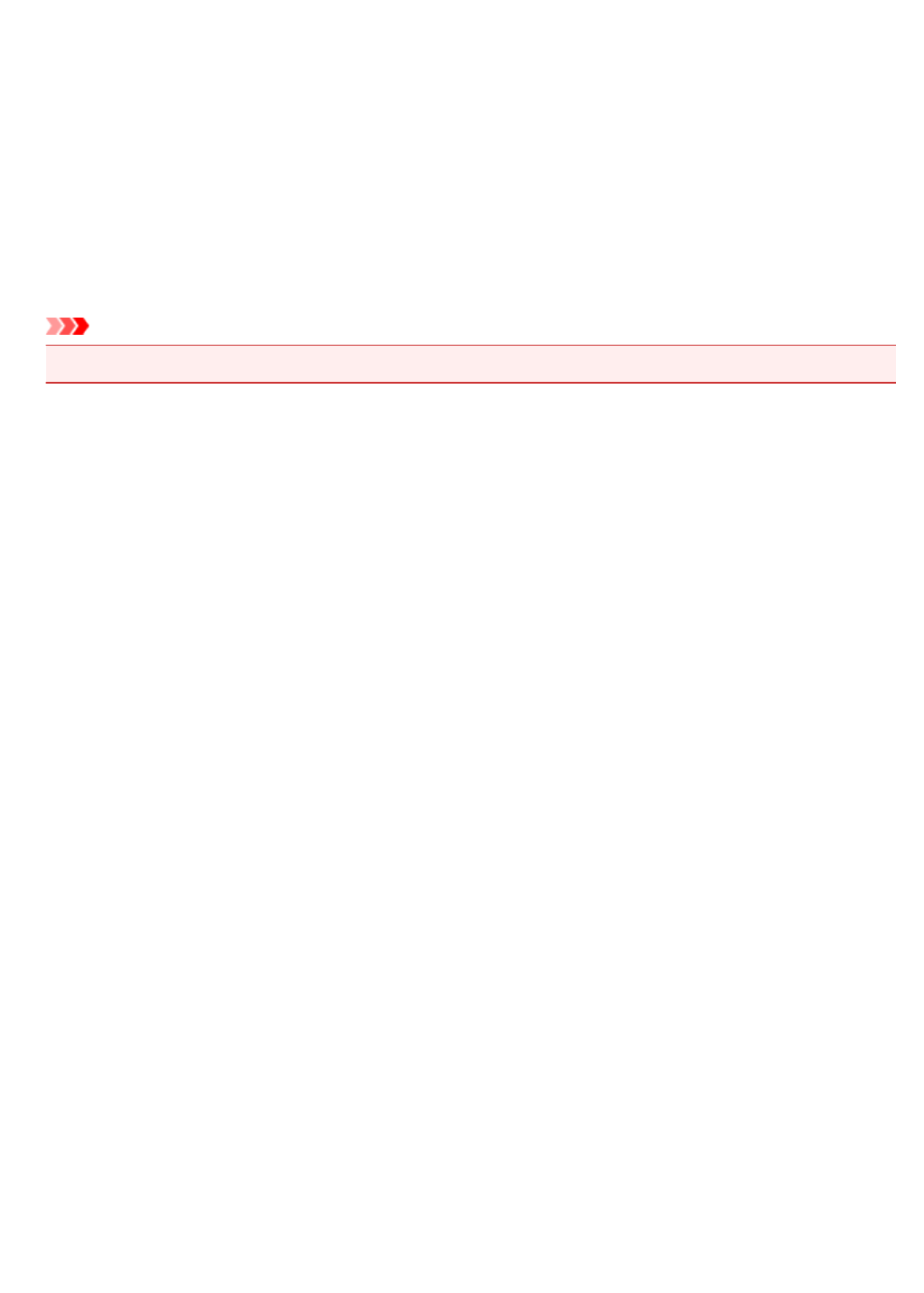
7200
Cause
Printer error has occurred.
What to Do
Turn off the printer and unplug it.
Plug in the printer again and turn it back on.
If this does not solve the problem, contact your nearest Canon service center to request a repair.
Important
• If you unplug, all the faxes stored in the printer's memory are deleted.
1342
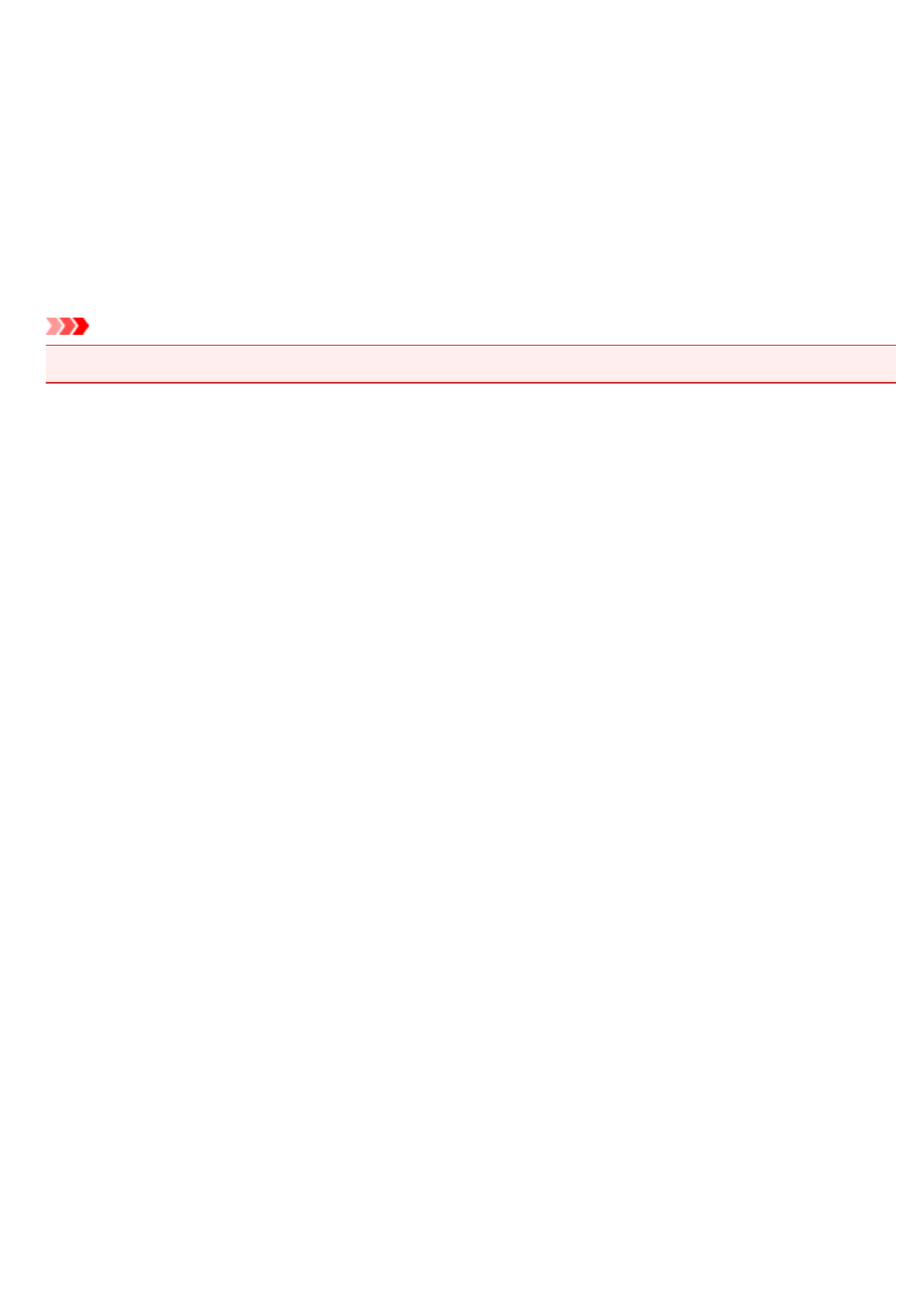
7201
Cause
Printer error has occurred.
What to Do
Turn off the printer and unplug it.
Plug in the printer again and turn it back on.
If this does not solve the problem, contact your nearest Canon service center to request a repair.
Important
• If you unplug, all the faxes stored in the printer's memory are deleted.
1343
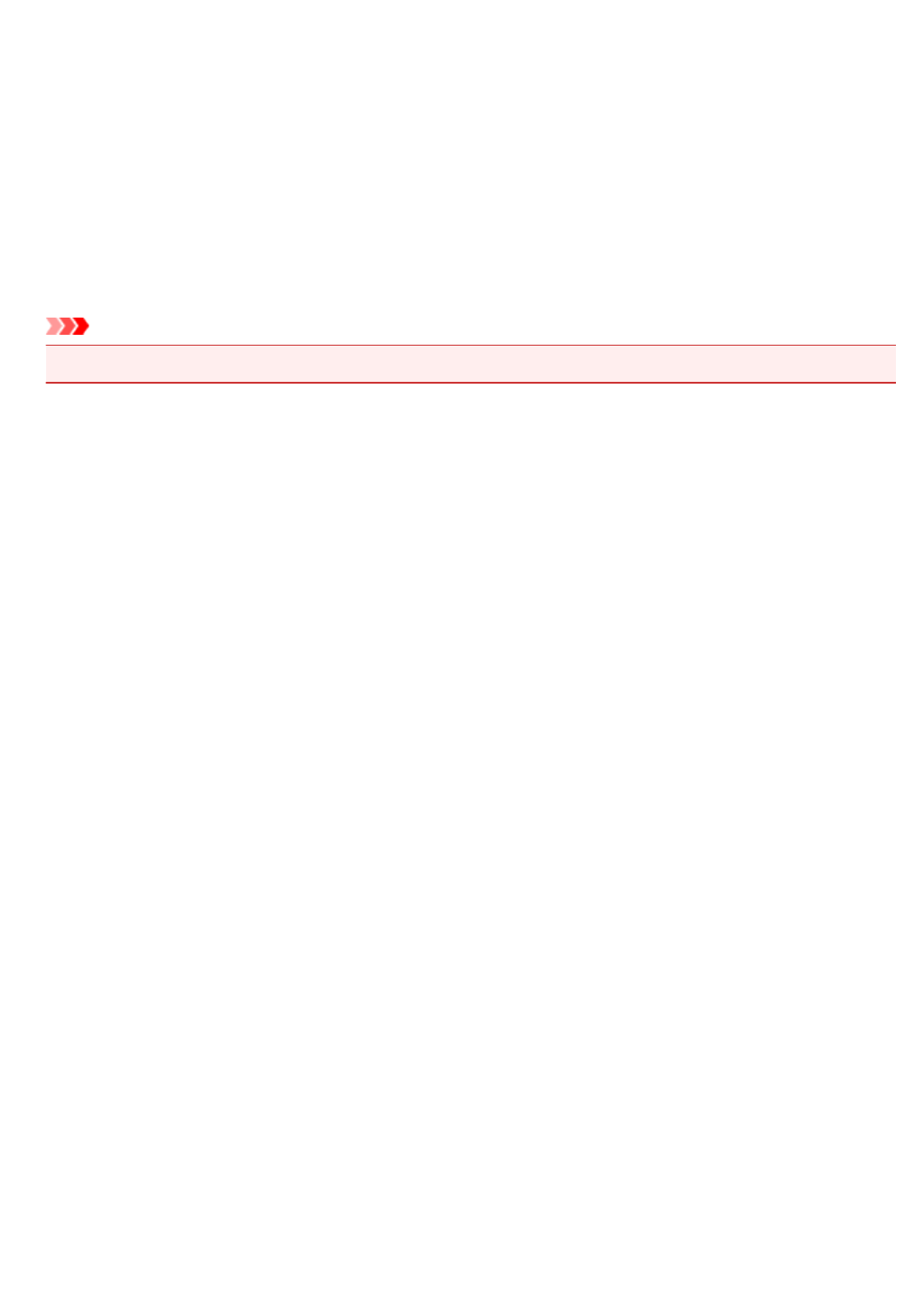
7203
Cause
Printer error has occurred.
What to Do
Turn off the printer and unplug it.
Plug in the printer again and turn it back on.
If this does not solve the problem, contact your nearest Canon service center to request a repair.
Important
• If you unplug, all the faxes stored in the printer's memory are deleted.
1344
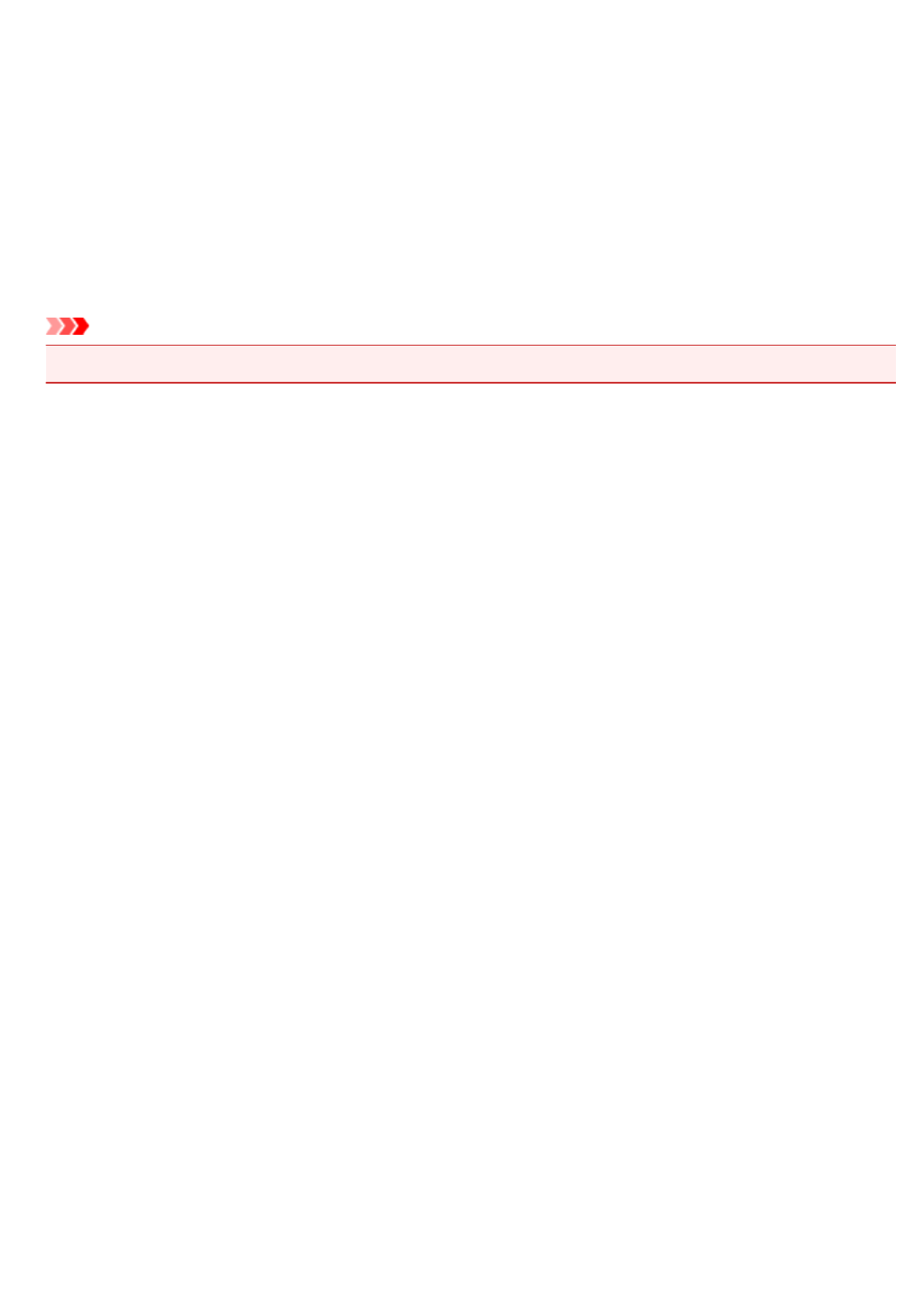
7204
Cause
Printer error has occurred.
What to Do
Turn off the printer and unplug it.
Plug in the printer again and turn it back on.
If this does not solve the problem, contact your nearest Canon service center to request a repair.
Important
• If you unplug, all the faxes stored in the printer's memory are deleted.
1345
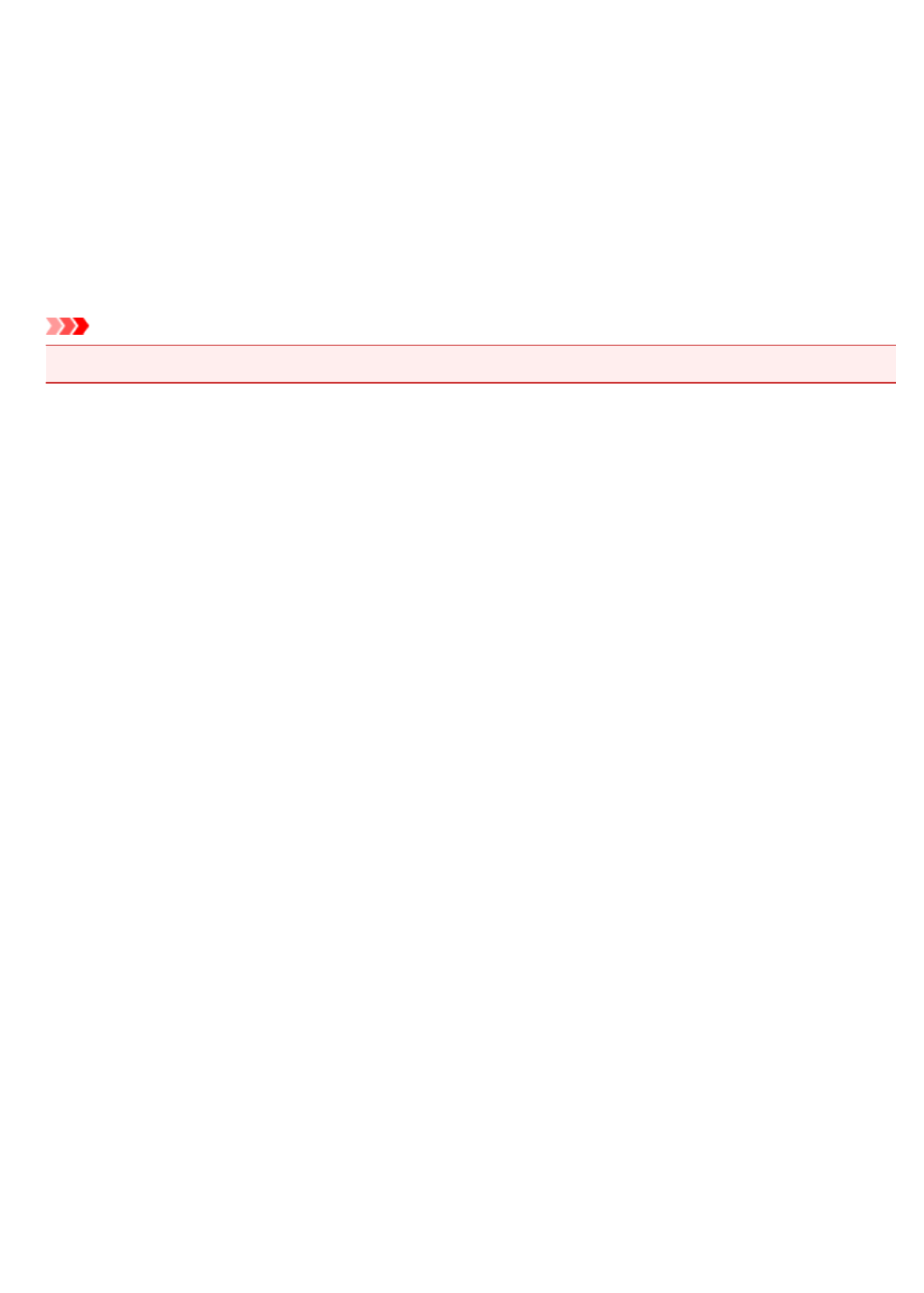
7205
Cause
Printer error has occurred.
What to Do
Turn off the printer and unplug it.
Plug in the printer again and turn it back on.
If this does not solve the problem, contact your nearest Canon service center to request a repair.
Important
• If you unplug, all the faxes stored in the printer's memory are deleted.
1346
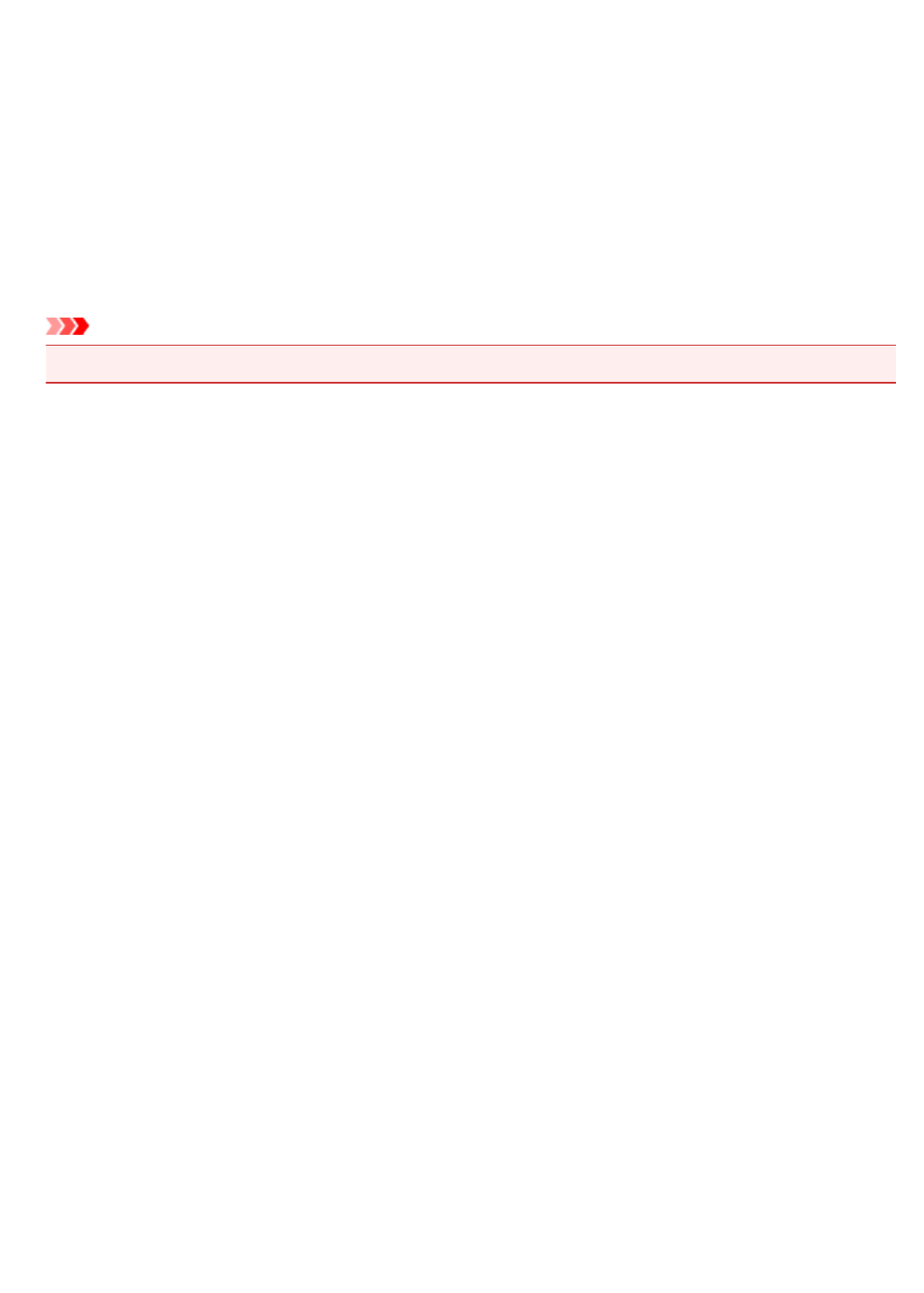
9000
Cause
Printer error has occurred.
What to Do
Turn off the printer and unplug it.
Plug in the printer again and turn it back on.
If this does not solve the problem, contact your nearest Canon service center to request a repair.
Important
• If you unplug, all the faxes stored in the printer's memory are deleted.
1347
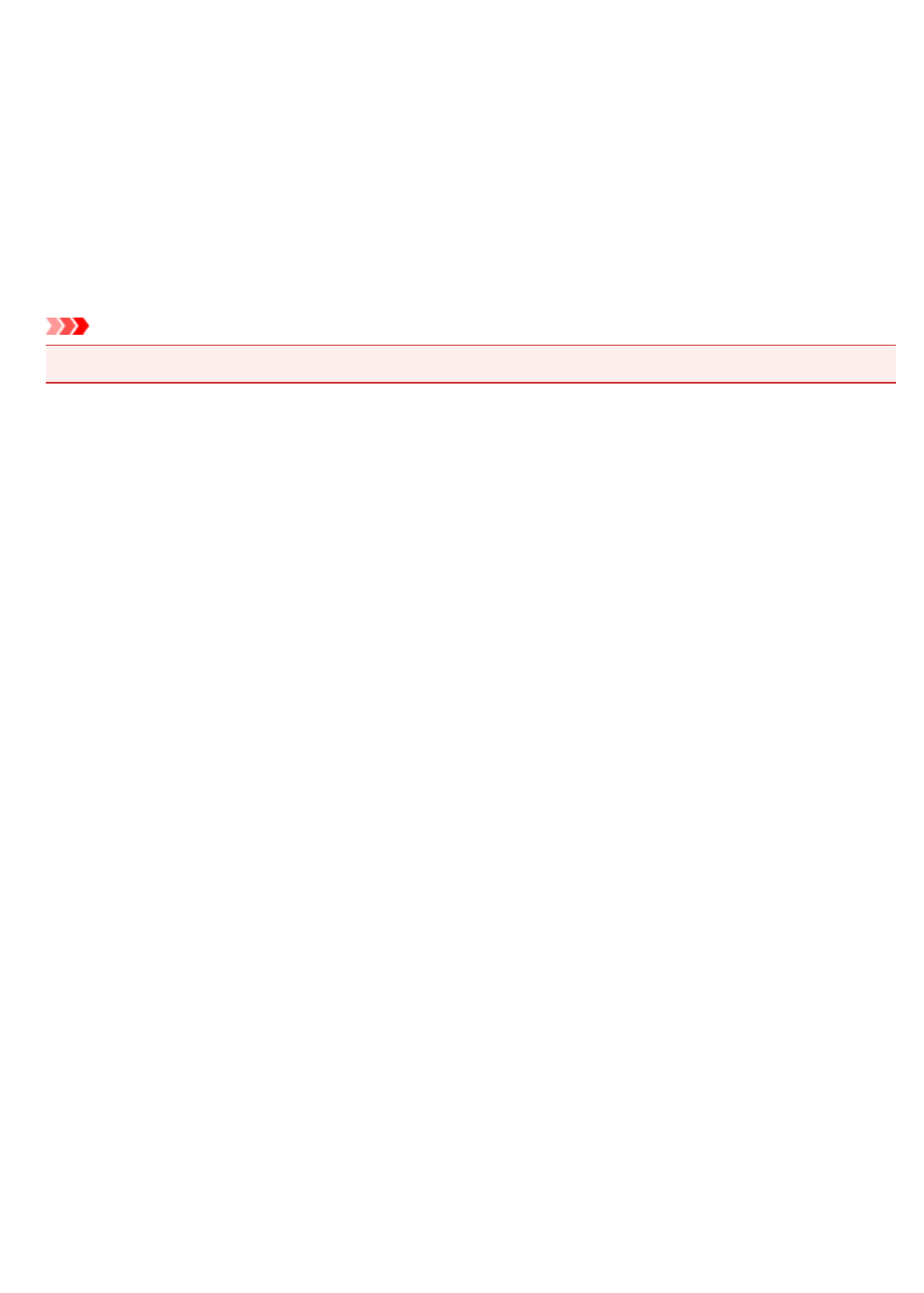
9500
Cause
Printer error has occurred.
What to Do
Turn off the printer and unplug it.
Plug in the printer again and turn it back on.
If this does not solve the problem, contact your nearest Canon service center to request a repair.
Important
• If you unplug, all the faxes stored in the printer's memory are deleted.
1348
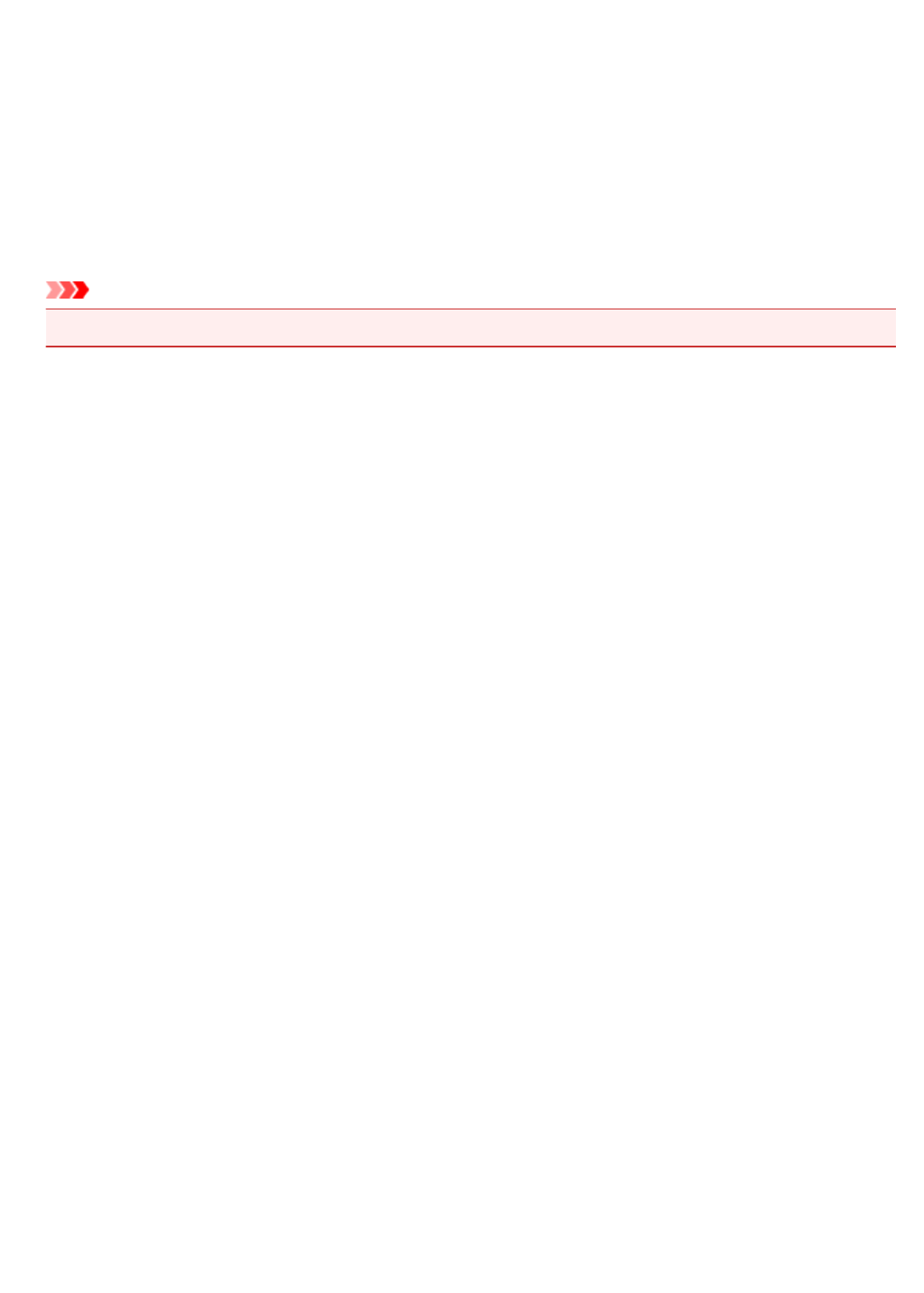
B202
Cause
An error requiring a repair has occurred.
What to Do
Turn off the printer and unplug it.
Contact your nearest Canon service center to request a repair.
Important
• If you unplug, all the faxes stored in the printer's memory are deleted.
1349
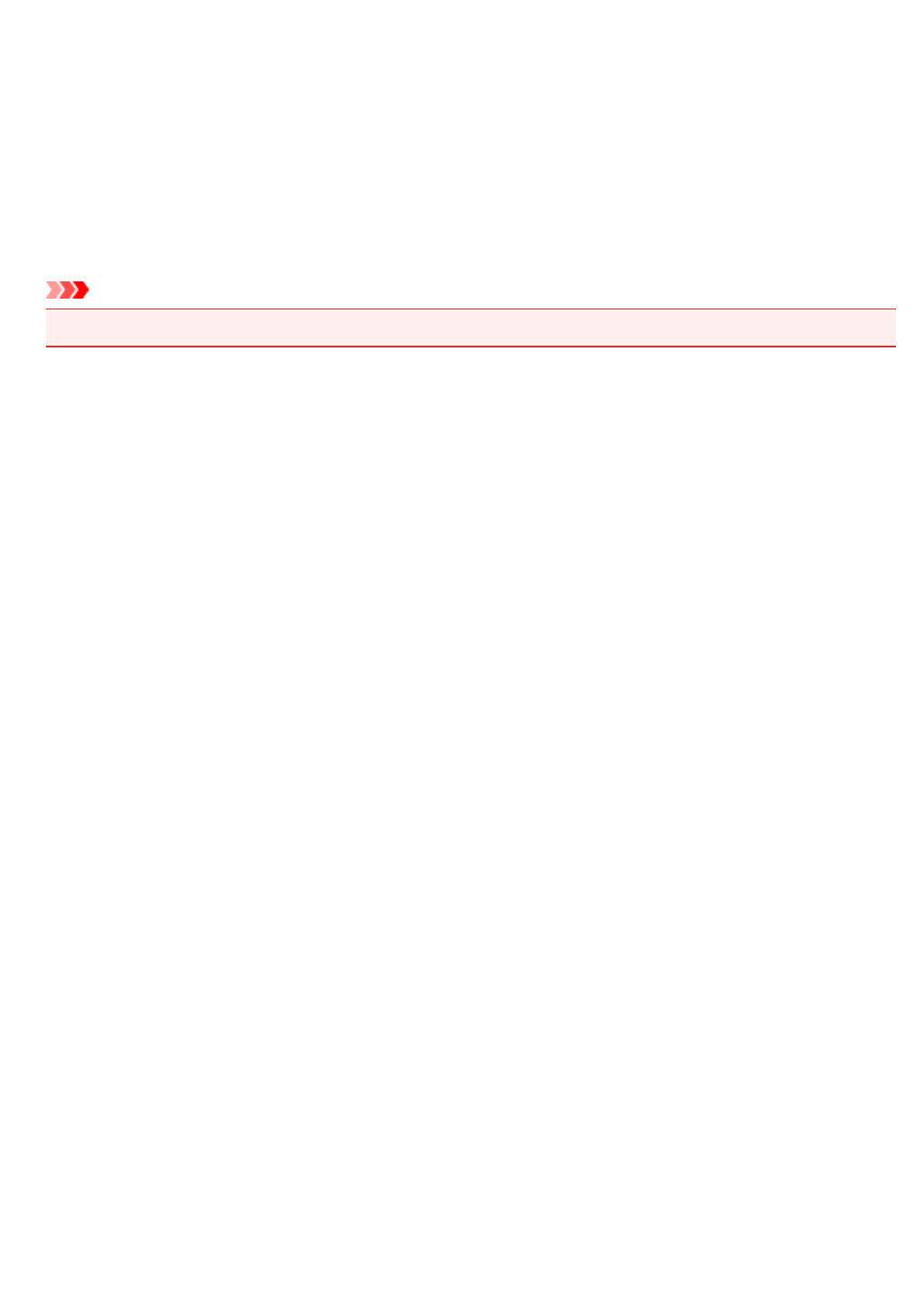
B203
Cause
An error requiring a repair has occurred.
What to Do
Turn off the printer and unplug it.
Contact your nearest Canon service center to request a repair.
Important
• If you unplug, all the faxes stored in the printer's memory are deleted.
1350
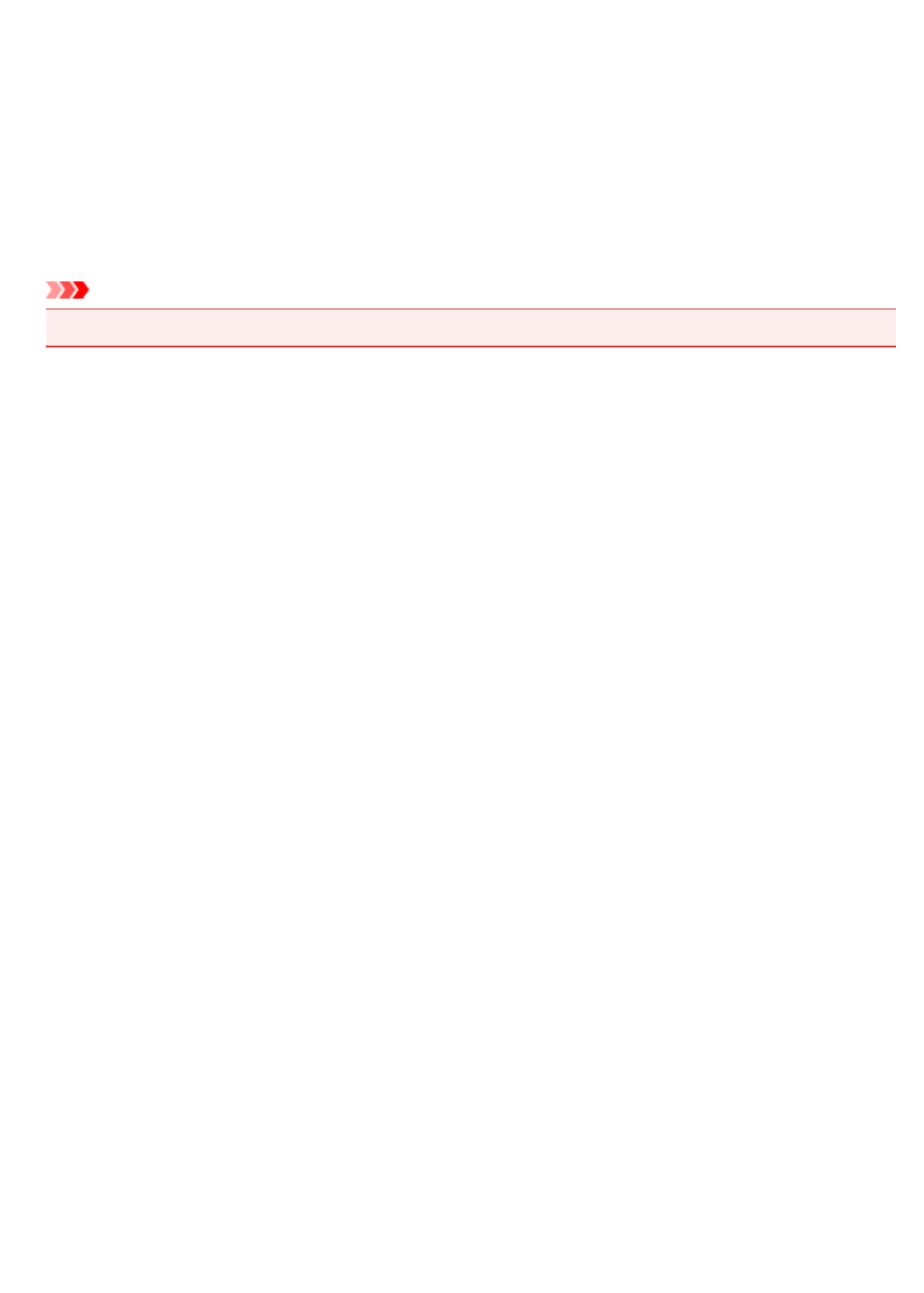
B204
Cause
An error requiring a repair has occurred.
What to Do
Turn off the printer and unplug it.
Contact your nearest Canon service center to request a repair.
Important
• If you unplug, all the faxes stored in the printer's memory are deleted.
1351
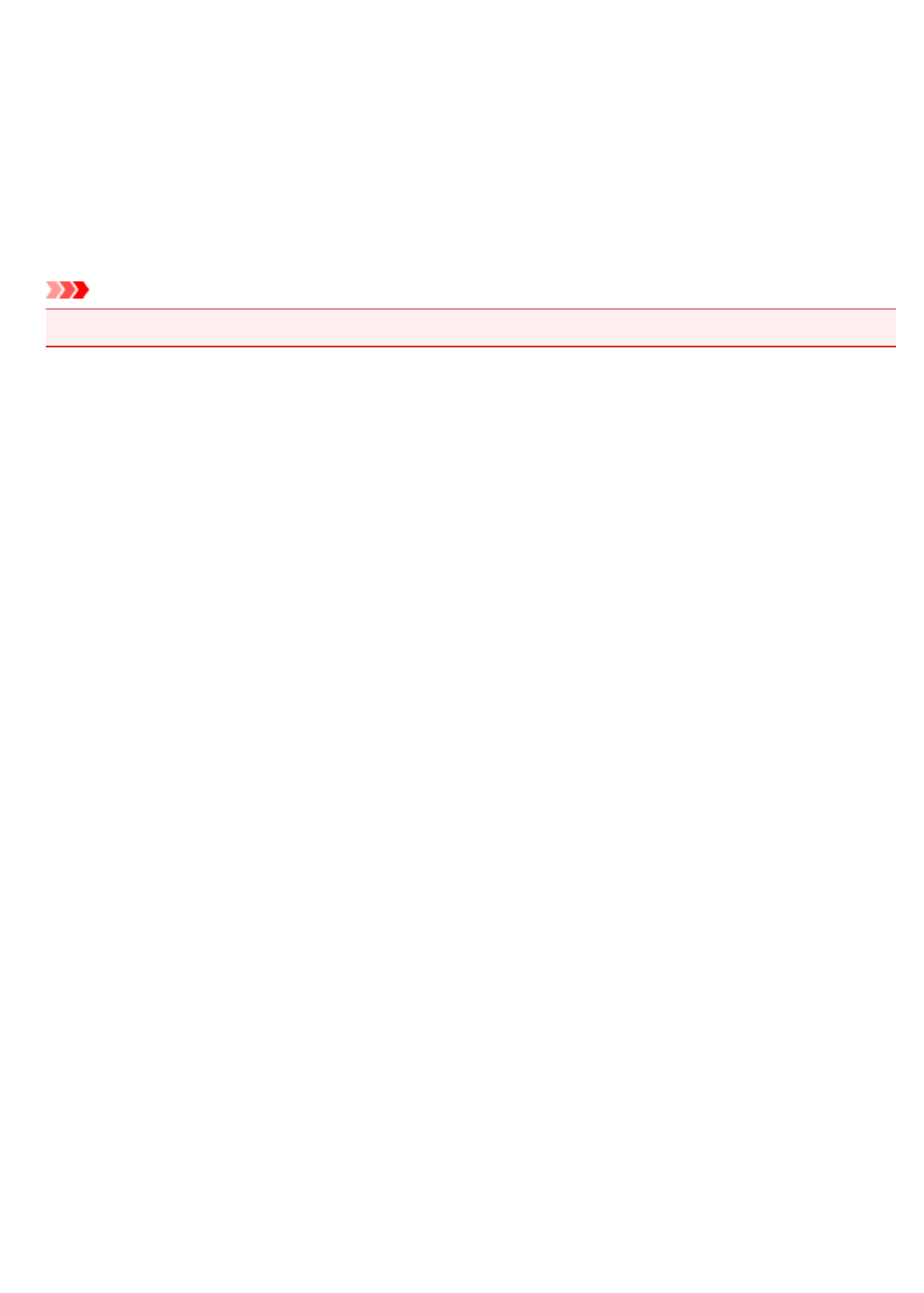
B205
Cause
An error requiring a repair has occurred.
What to Do
Turn off the printer and unplug it.
Contact your nearest Canon service center to request a repair.
Important
• If you unplug, all the faxes stored in the printer's memory are deleted.
1352
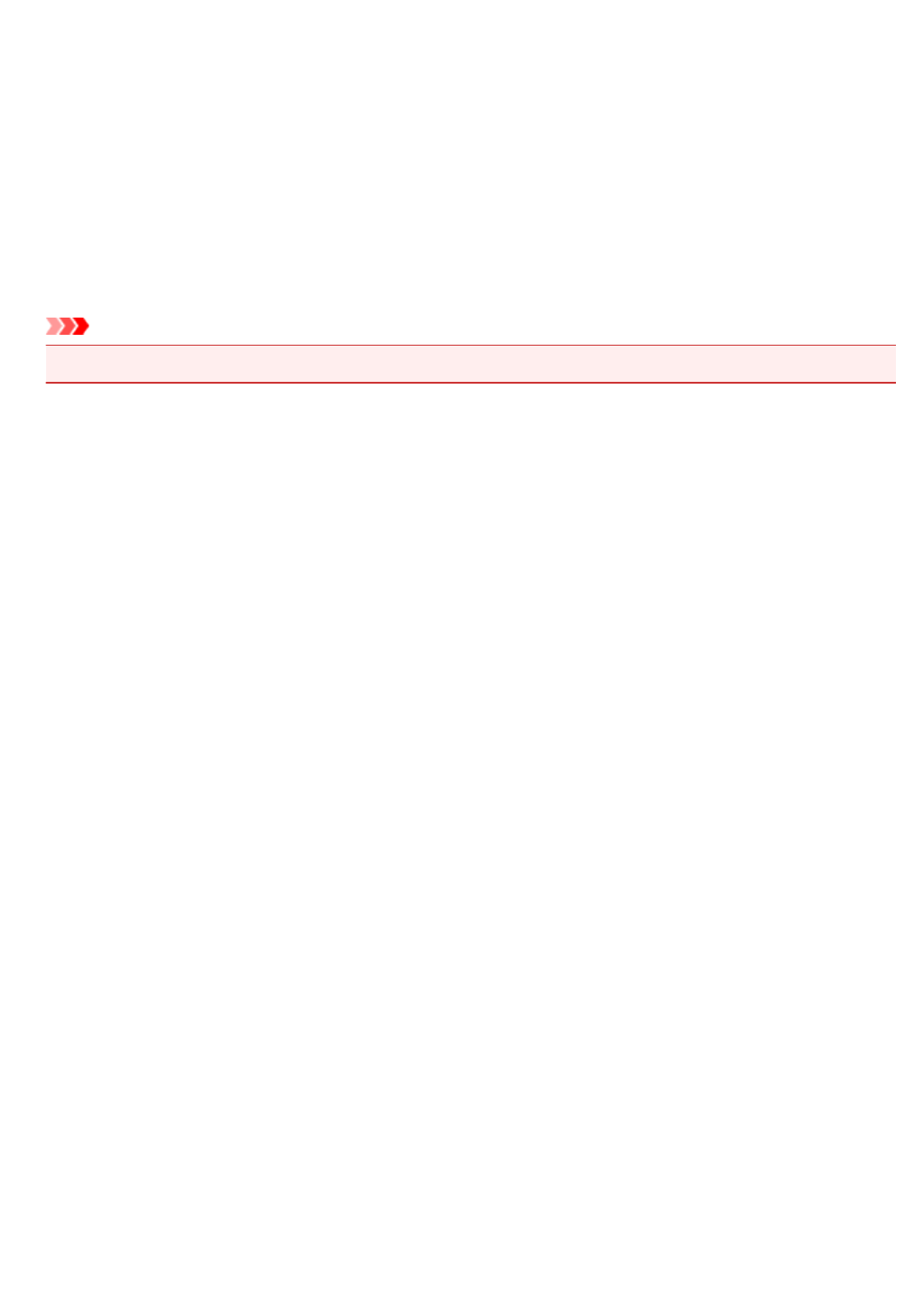
B502
Cause
Printer error has occurred.
What to Do
Turn off the printer and unplug it.
Plug in the printer again and turn it back on.
If this does not solve the problem, contact your nearest Canon service center to request a repair.
Important
• If you unplug, all the faxes stored in the printer's memory are deleted.
1353
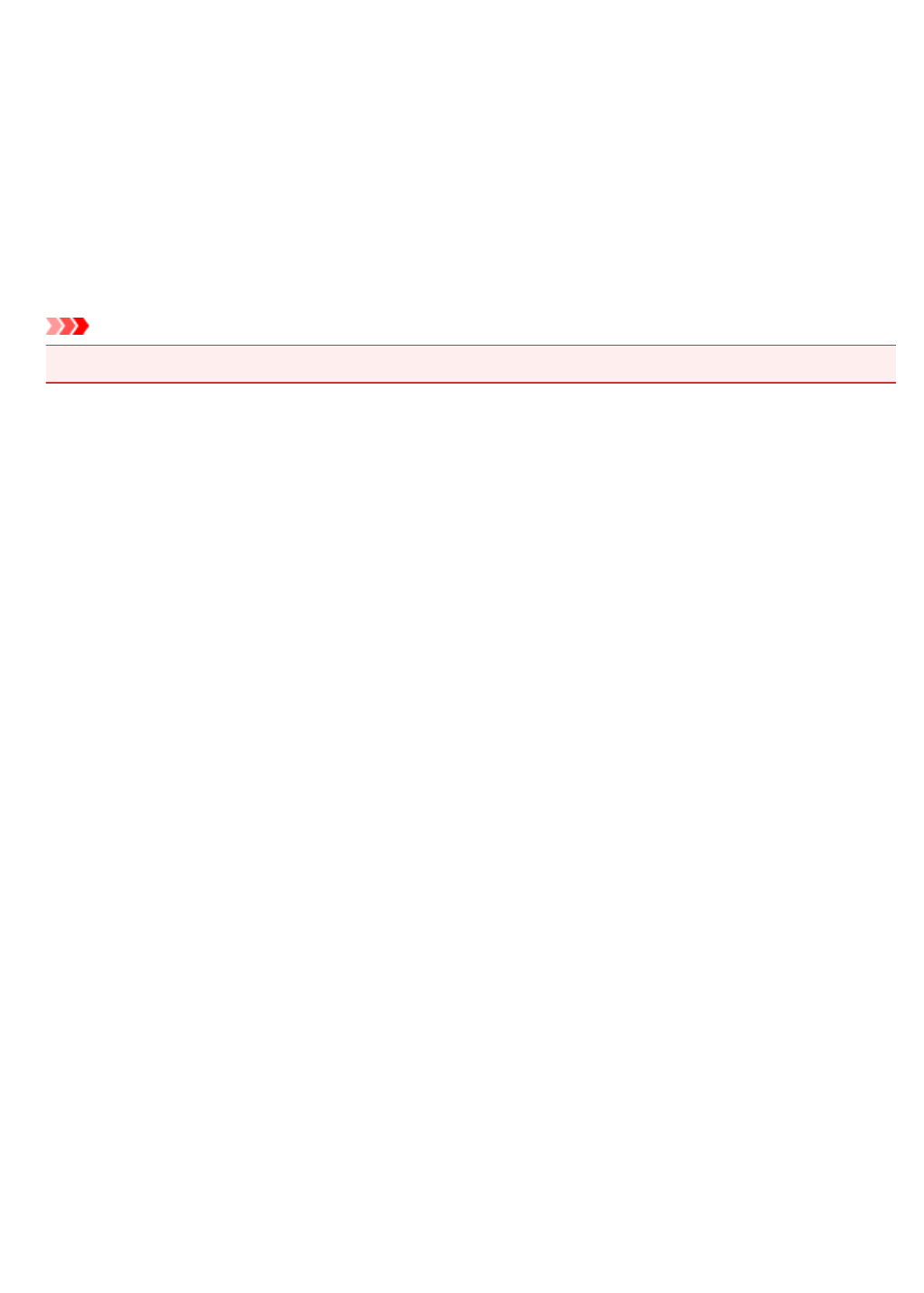
B503
Cause
Printer error has occurred.
What to Do
Turn off the printer and unplug it.
Plug in the printer again and turn it back on.
If this does not solve the problem, contact your nearest Canon service center to request a repair.
Important
• If you unplug, all the faxes stored in the printer's memory are deleted.
1354
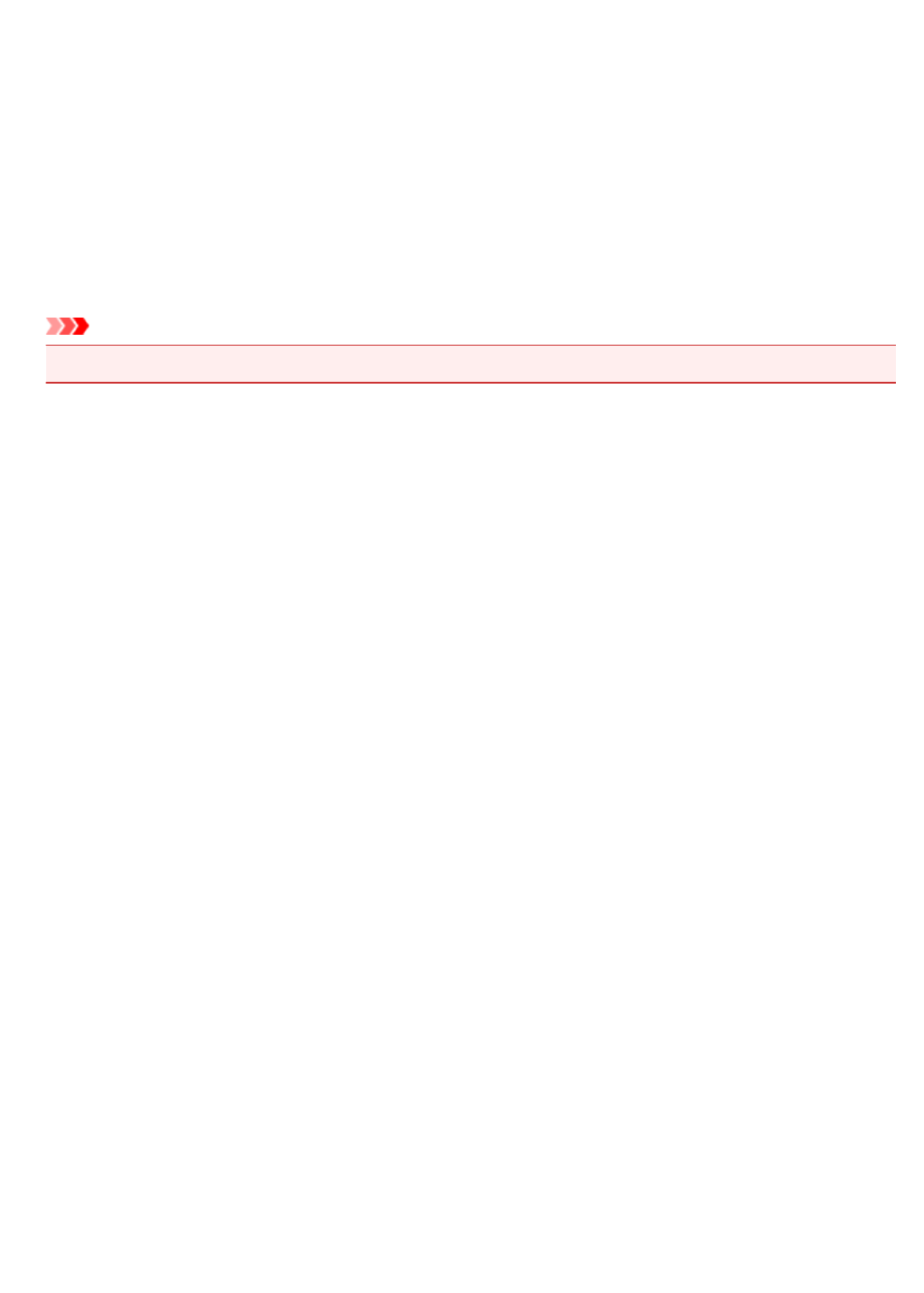
B504
Cause
Printer error has occurred.
What to Do
Turn off the printer and unplug it.
Plug in the printer again and turn it back on.
If this does not solve the problem, contact your nearest Canon service center to request a repair.
Important
• If you unplug, all the faxes stored in the printer's memory are deleted.
1355
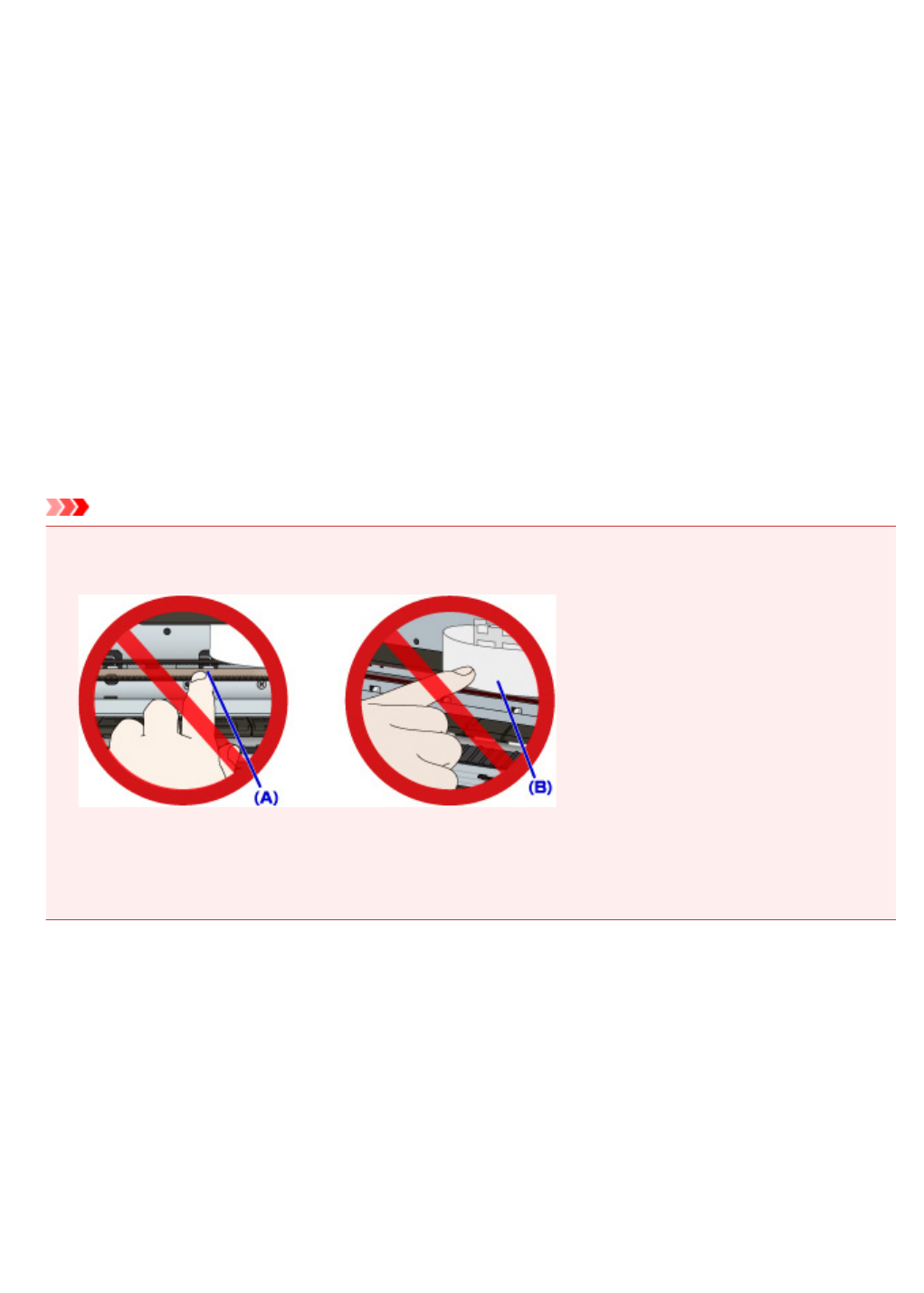
C000
Cause
Printer error has occurred.
What to Do
Cancel printing and turn off the printer.
Check the following:
• Make sure print head holder motion is not impeded by stabilizer, jammed paper, etc.
Remove any impediment.
• Make sure the ink tanks are properly installed.
Press ink tanks until they click into place.
Turn the printer back on.
If this does not solve the problem, contact your nearest Canon service center to request a repair.
Important
• When clearing an impediment to print head holder motion, be careful not to touch clear film (A) or
white belt (B).
If you soil or scratch these parts by touching them with paper or your hand, it could damage the
printer.
• If you unplug, all the faxes stored in the printer's memory are deleted.
1356



































































